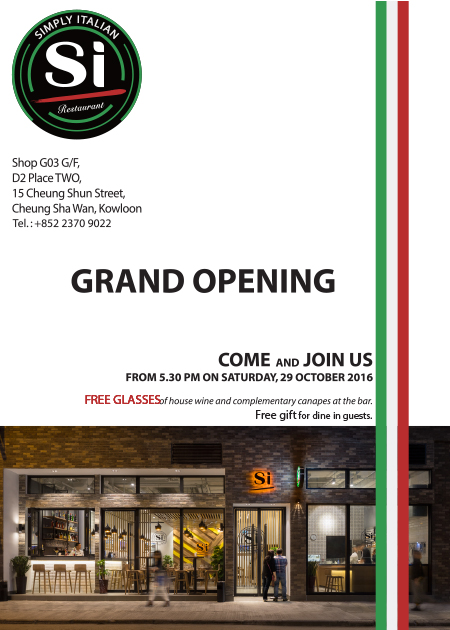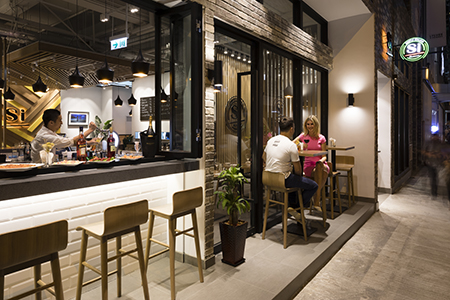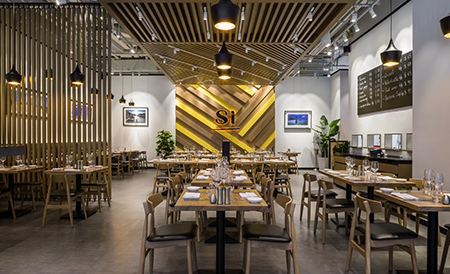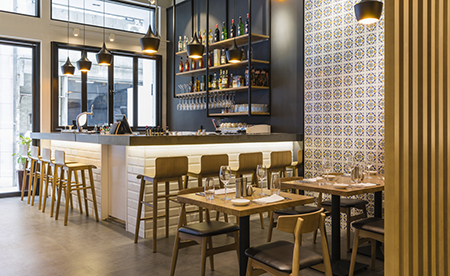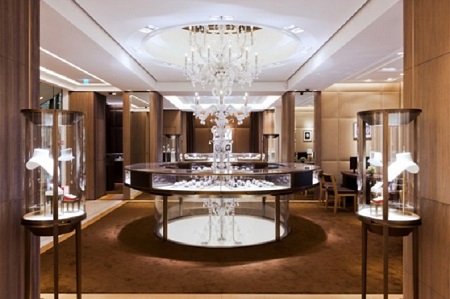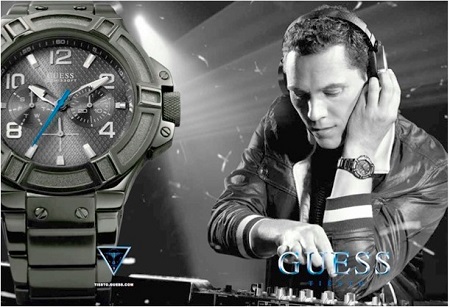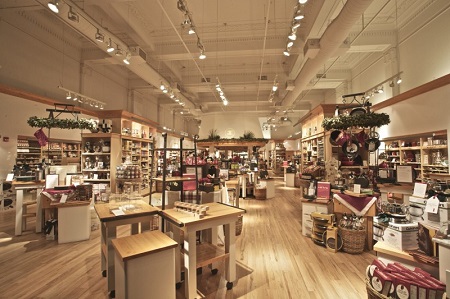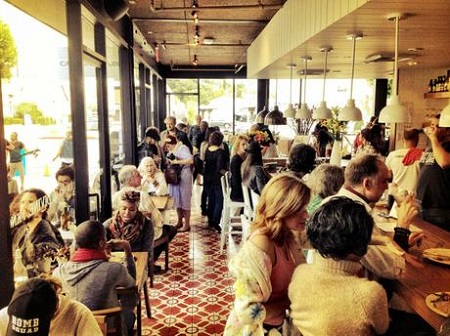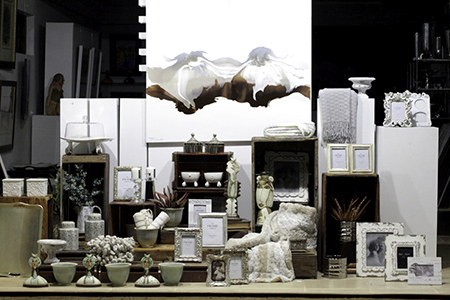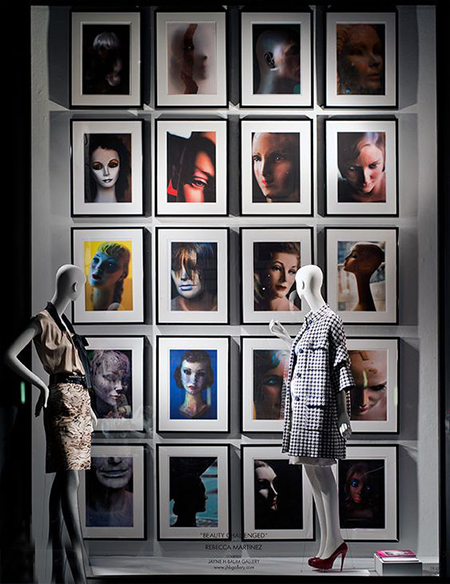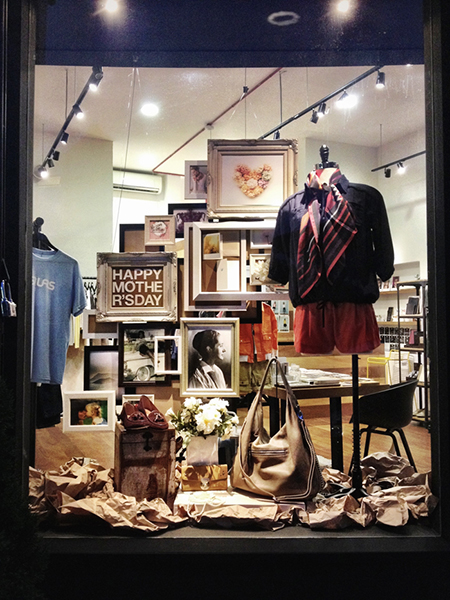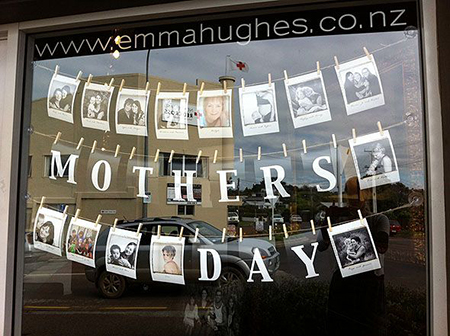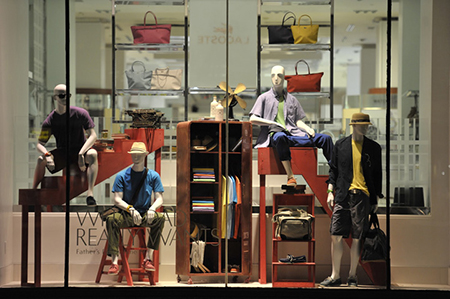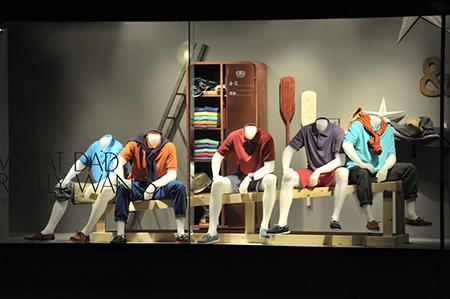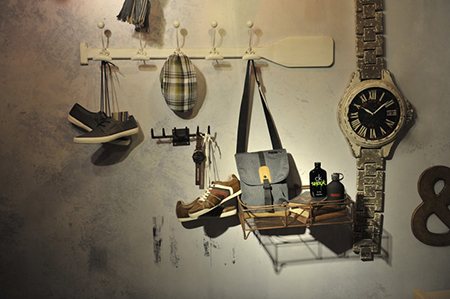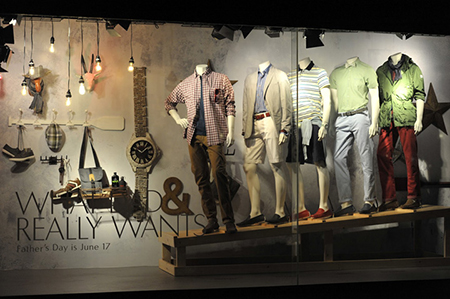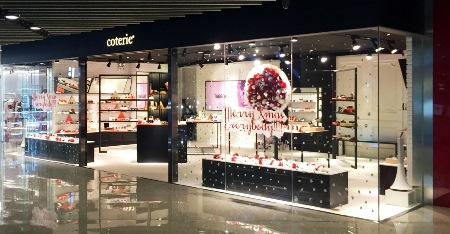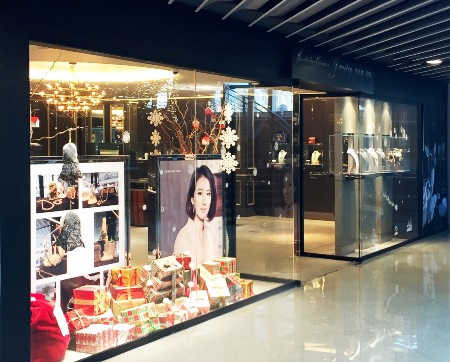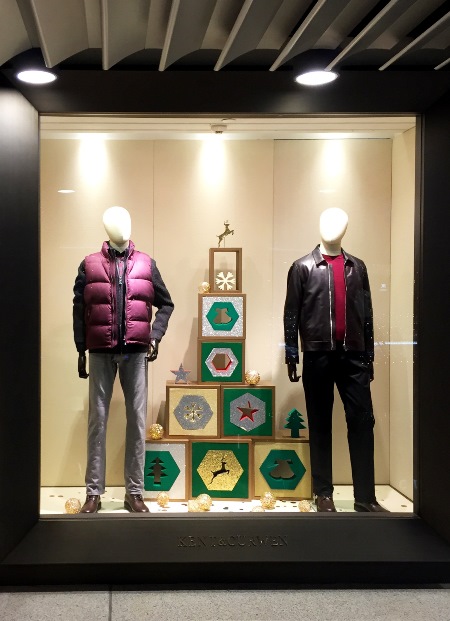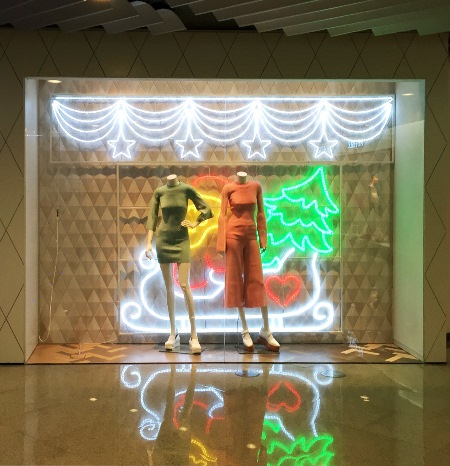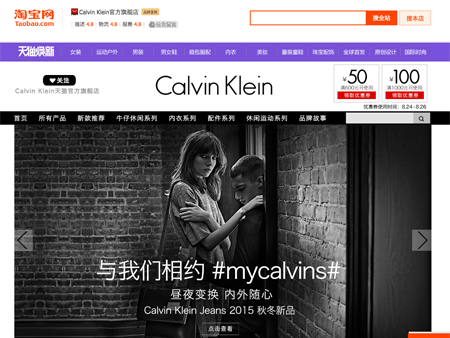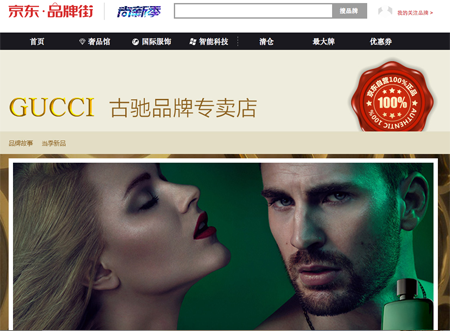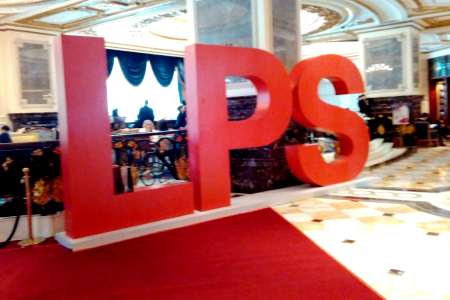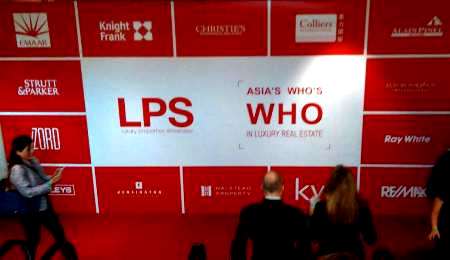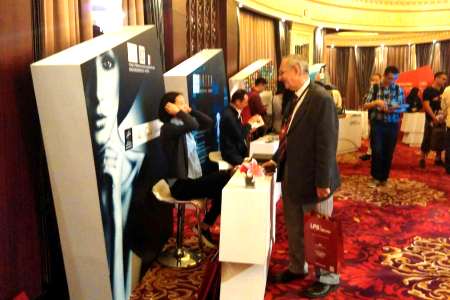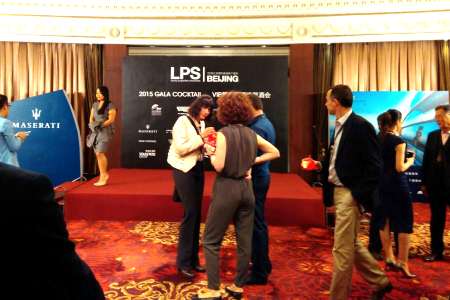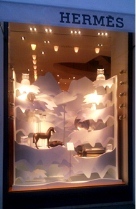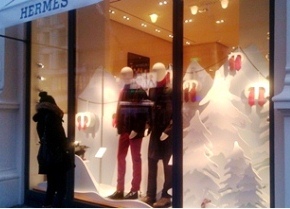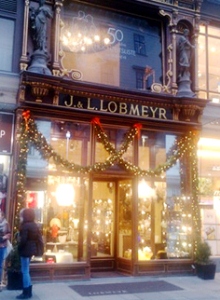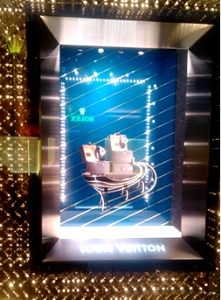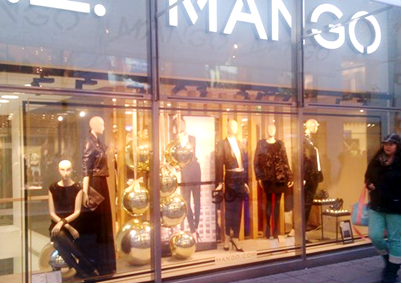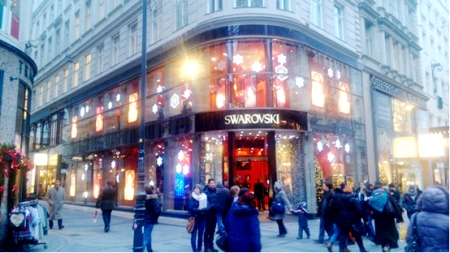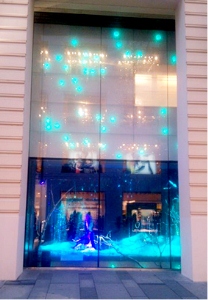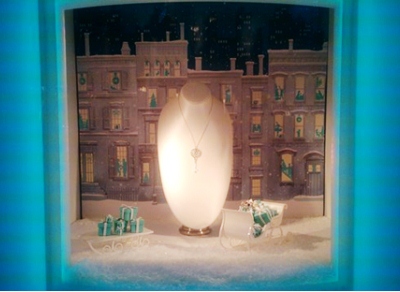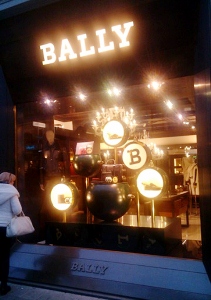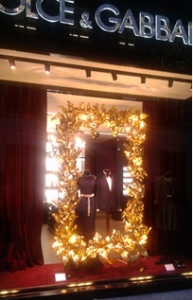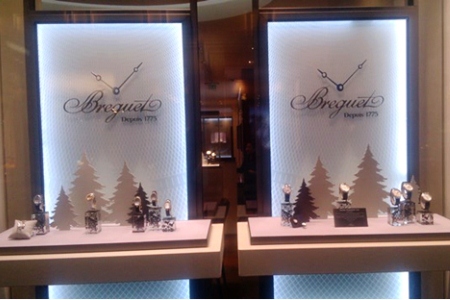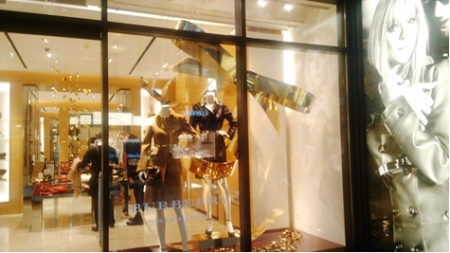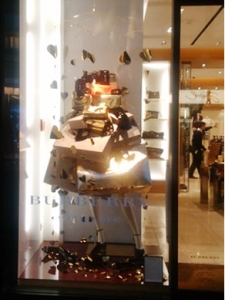How Light and Color Shape Office Productivity
August 18th, 2025
At 5 Star Plus Design, we transform workspaces into high-performance environments using light and color psychology. Unlike traditional design firms, we combine neuroscience, branding, and ergonomic principles to create offices that look good and work smarter.
Our projects, such as Melchers Office and Advantage Austria, demonstrate the direct impact of strategic design on productivity.
1. Light as a Driver of Well-Being and Performance
According to research from The Executive Centre (2025), optimized lighting (natural and artificial) can increase productivity by up to 23%. This figure rises to 32% when paired with biophilic elements, such as greenery.
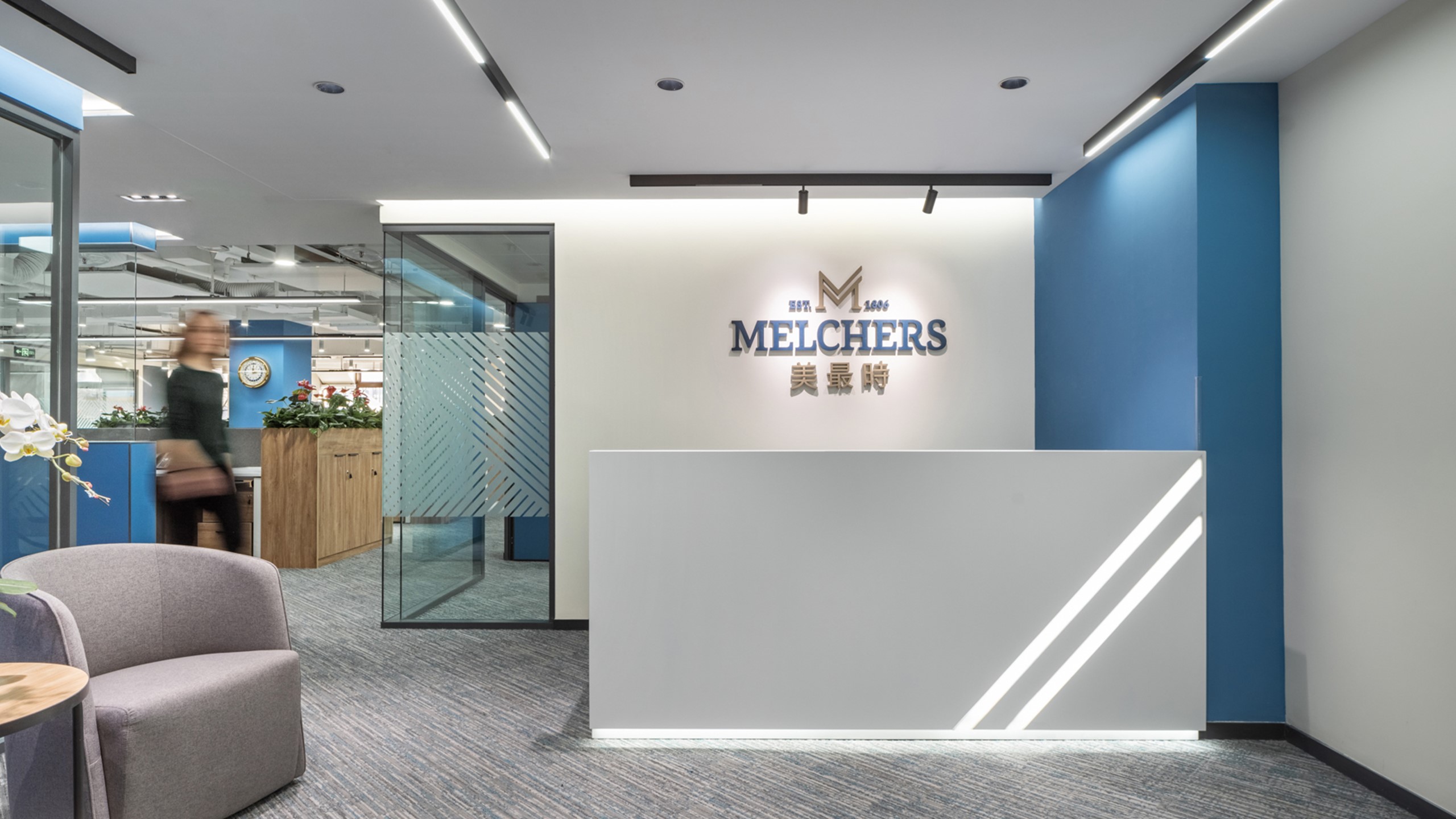
Image Source: 5 Star Plus Retail Design – Melchers Office Project
Our approach:
- • Circadian lighting systems that adjust color temperature to sync with natural rhythms.
- • Accent lighting to highlight brand elements. For example, in Melchers Office, we used focused lighting to emphasize corporate identity zones.
- • Dynamic solutions, such as AI-controlled brightness, for personalized comfort.
2. Color as a Silent Brand Ambassador
According to the study "The Impact of Workplace Lighting on Employee Well-Being and Productivity: A Measurement Study" by Belany et al. (2024), optimal lighting design — including illuminance and color emperature — significantly improves employees’ mood, concentration, and job satisfaction.
- • Blue and green promote calmness and concentration, making them ideal for focus zones.
- • Yellow promotes creativity and optimism, making it perfect for brainstorming areas.
- • Red evokes energy and attention, making it great for dynamic spaces.
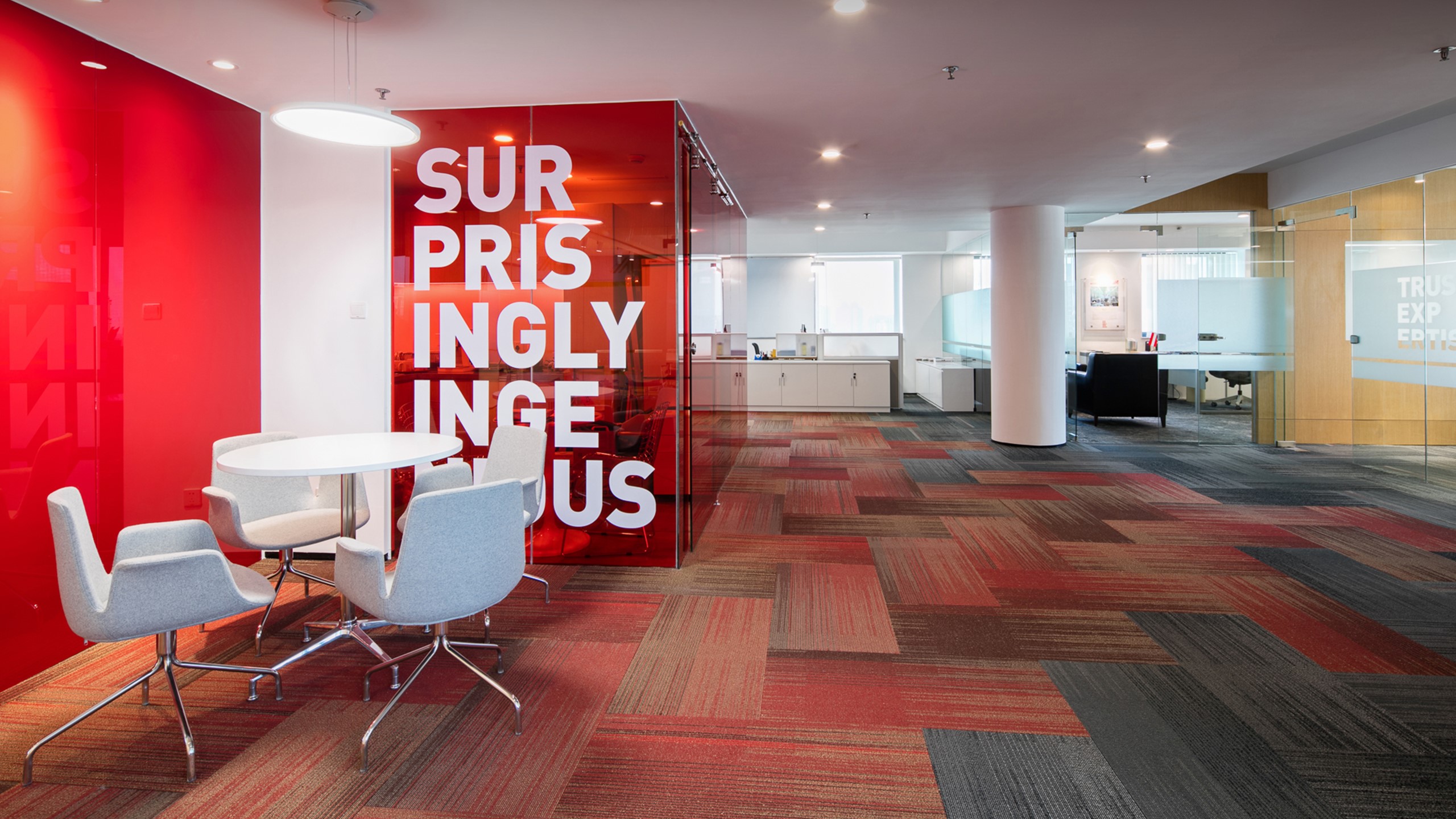
Image Source: 5 Star Plus Retail Design – Advantage Austria Project
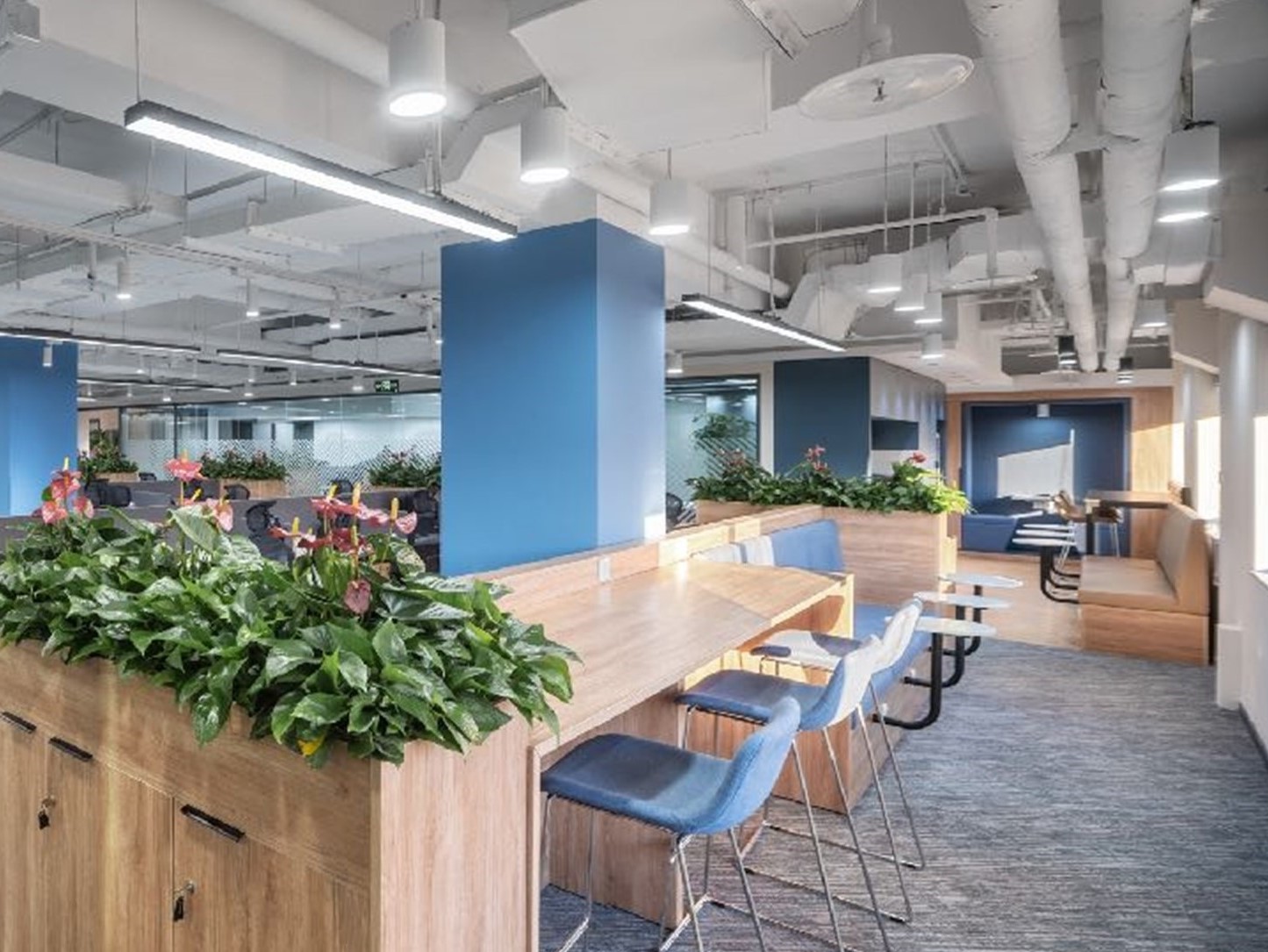
Image Source: 5 Star Plus Retail Design – Melchers Office Project
How We Apply It:
For the Melchers Office project, we incorporated neutral blue tones — also part of the company’s branding identity — together with warm wood finishes to highlight Melchers’ precision and natural elegance while boosting cognitive performance.
3. Integrating Light and Color for Maximum Impact
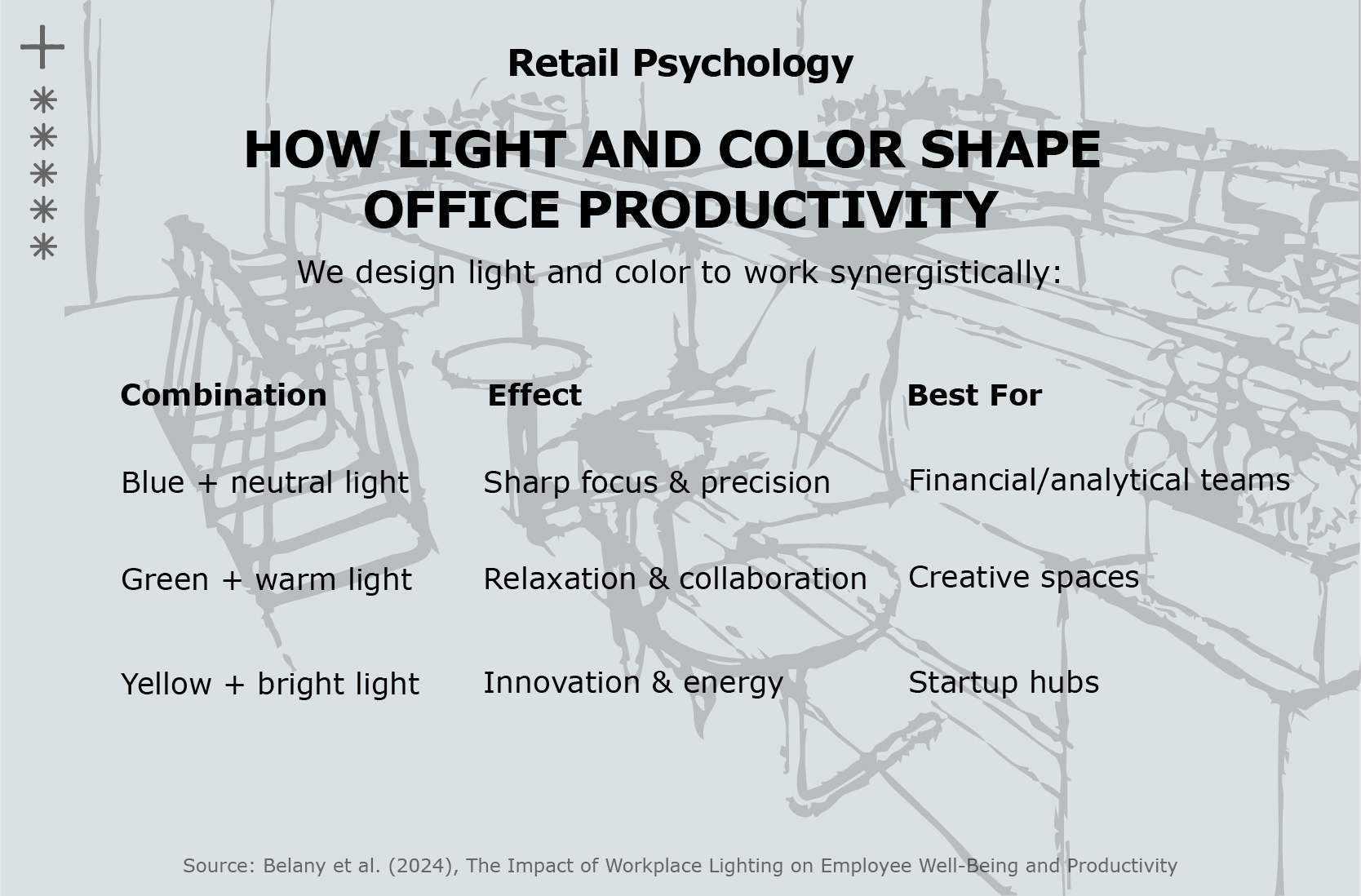
Image Source: 5 Star Plus Retail Design
These pairings create a subconscious narrative that aligns spaces with brand values.
Conclusion: Design that works as hard as your team.
An office is more than just a workspace; it’s a strategic asset. At 5 Star Plus Design, we create environments where light, color, and brand identity converge to produce results.
Ready to transform your space?
Browse our projects or contact us for a free consultation.
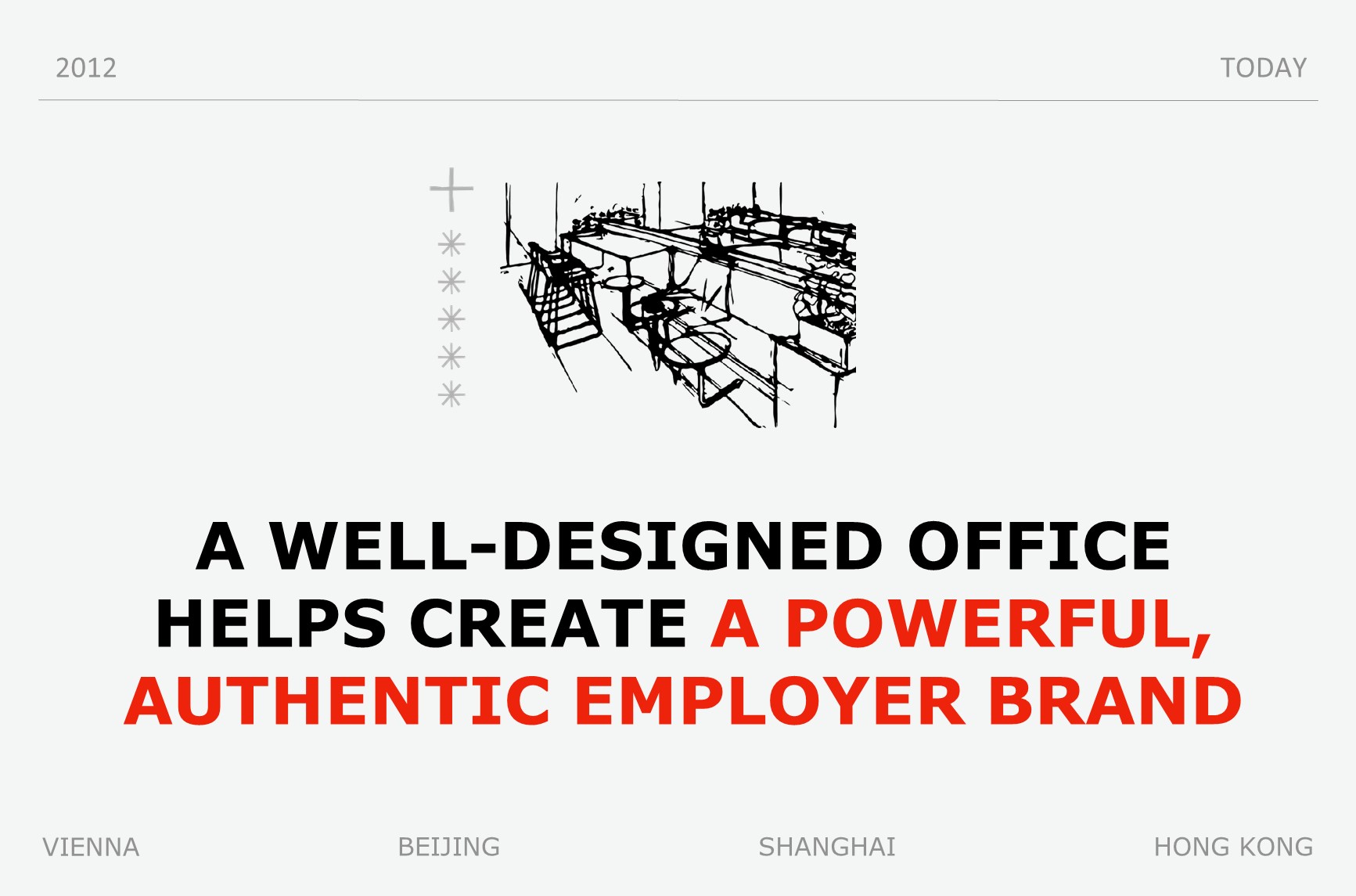
Image Source: 5 Star Plus Retail Design
> back to top of page

The 5 Most Common Retail Design Mistakes—and How to Turn Them Into Sales
July 23, 2025
Retail store design is one of the most powerful tools brands have to attract, engage, and convert customers—but only when it's done right. A visually appealing space isn’t enough. If your store layout or display strategy disrupts the shopping journey, you might be unintentionally losing sales. Even subtle design mistakes can quietly push customers away.
In this article, we reveal the top 5 retail store design mistakes that could be costing your business and how to fix them for better performance, stronger brand storytelling, and higher sales.
1. Confusing Store Layouts Disrupt the Shopping Flow
Why it’s a problem:
A disorganized or hard-to-navigate store layout can make customers feel disoriented. If shoppers can’t find what they’re looking for quickly, they’re more likely to leave without making a purchase.
Solution:
Use a clear and intuitive store layout that supports natural customer flow. Consider how different layout styles (like loop, grid, or free-form) guide movement and highlight key product zones. Strategic signage, floor markers, and focal points should gently guide customers through the space without overwhelming them.
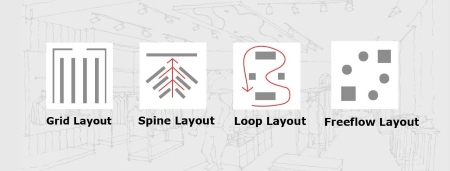
2. Poor Lighting Reduces Product Appeal
Why it’s a problem:
Lighting plays a critical role in retail store design. When it’s too dim, too harsh, or poorly placed, it can distort how products look and drain energy from the space—making even premium goods appear cheap or unappealing.
Solution:
Invest in layered lighting:
- • Ambient lighting creates overall atmosphere
- • Task lighting supports functionality and customer interaction
- • Accent lighting spotlights key displays and product features
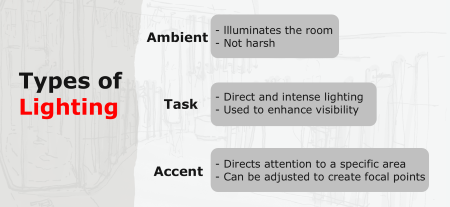
Great lighting makes products pop, improves mood, and draws attention to your most profitable items.
3. Lack of Visual Storytelling Weakens Brand Impact
Why it’s a problem:
Without a clear brand story woven into the physical space, stores can feel generic. Today’s customers are experience-driven—they want to connect with the brands they shop.
Solution:
Use your retail interior design to reflect your brand identity. Visual storytelling should be present throughout the store—from the materials and colors you choose to the way collections are displayed. Showcase your brand values, mission, and product origins with curated displays, themed zones, and digital integrations.
4. Overcluttered Displays Overwhelm the Senses
Why it’s a problem:
Displaying too many products at once creates visual noise. This overload makes it hard for customers to focus, often leading to indecision or disengagement.
Solution:
Curate your displays carefully. Use negative space to let products breathe and create visual hierarchy. Highlight one key product per display area, supported by complementary items or subtle props. The best retail environments feel calm, intentional, and well-edited.
5. Ignoring the Checkout Area Wastes Final Sales Opportunities
Why it’s a problem:
A messy, awkward, or under-designed checkout area can sour the final moments of the shopping experience—and hurt last-minute purchases.
Solution:
Design the checkout space with as much care as the rest of your store. Keep the layout efficient, clean, and branded. Feature small, high-margin items near the register for impulse buys, and use lighting and signage to keep it welcoming. Make the final interaction seamless and positive.
Conclusion: Great Retail Store Design Drives Results
Each of these design mistakes—no matter how small—can have a direct impact on your store’s performance. Avoiding them means creating a space that’s not only beautiful but also functional, profitable, and memorable.
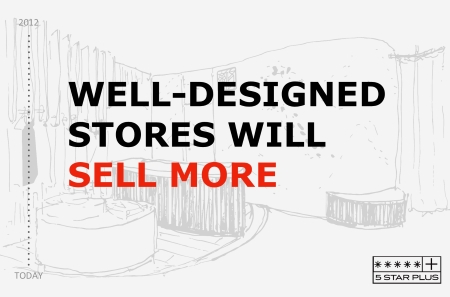
At 5 Star Plus Retail Design, we help brands transform their spaces with smart, strategic retail store design that captures attention and drives conversions. Whether you’re rethinking your layout, refreshing your brand story, or launching a new concept, we’re here to help you design for success.
> back to top of page

Feast for the Eyes: How Restaurant Design Shapes Appetite and Experience
July 23, 2025
When it comes to restaurant success, taste isn’t everything. Today’s diners are looking for more than a meal — they want an experience. That experience starts the moment they walk in the door, long before the first bite. At 5 Star Plus Design, we understand that restaurant interior design plays a crucial role in shaping how people feel, behave, and ultimately, what they order.
Let’s explore how restaurant interior design shapes the dining experience — and ultimately, your bottom line.
1. Design Psychology: Triggering Appetite and Emotion
Restaurant interior design directly impacts customer behavior. Every element from table placement to wall color — plays a role in shaping how your guests feel.
Warm tones like terracotta and rich reds stimulate the appetite and encourage a cozy, indulgent atmosphere. Cooler tones, on the other hand, can calm energy and promote quicker table turnover.
Design Insight: Thoughtful use of color, spacing, and layout encourages longer stays and larger orders, especially in upscale or experiential dining settings.
2. Lighting: More Than Ambiance
Lighting affects more than mood — it enhances the way food looks and tastes.
- • Soft, ambient lighting creates intimacy and warmth, perfect for fine dining.
- • Natural daylight gives a fresh, honest feel, ideal for brunch or café settings.
- • Accent lighting draws attention to key design elements, open kitchens, or signature dishes.
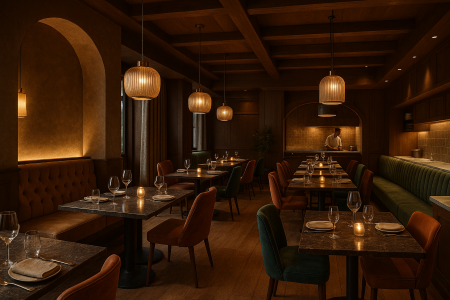
3. Acoustics: Controlling the Sound of Dining
Few things ruin a meal faster than noise overload. Smart acoustic design reduces echo, softens sound, and creates a more comfortable environment.
Techniques we use include:
- • Upholstered seating
- • Acoustic ceiling panels
- • Wall textures like wood or fabric
The soundtrack matters, too. Slow, classical music can encourage customers to spend more, while upbeat tracks speed up turnover in casual settings.
4. Layout: Designing for Flow and Function
An experienced restaurant design company knows that effective layout balances aesthetics with function. It guides guests naturally from entry to seating, to service, and out without friction. A well-zoned space includes:
- • A welcoming entryway
- • Flexible seating zones (intimate corners, group tables)
- • Smart pathways for staff efficiency
We create layouts that support both brand identity and smooth operations.
5. Materials & Texture: The Silent Storytellers
Material choice shapes how customers perceive your brand. Smooth marble might say “luxury,” while rustic wood feels casual and earthy.
We consider:
- • Durability for high-traffic areas
- • Comfort and touchability
- • Visual contrast and storytelling
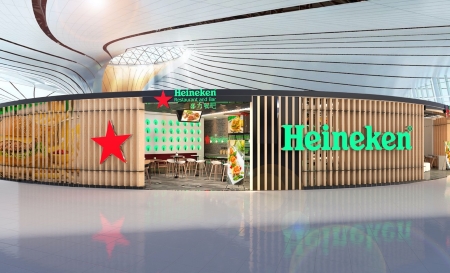
Every surface tells a story a detail top restaurant design companies never overlook.
6. Shareability: Designing for Digital Moments
In today’s social media era, your restaurant is also your stage. Guests don’t just eat — they snap, share, and tag.
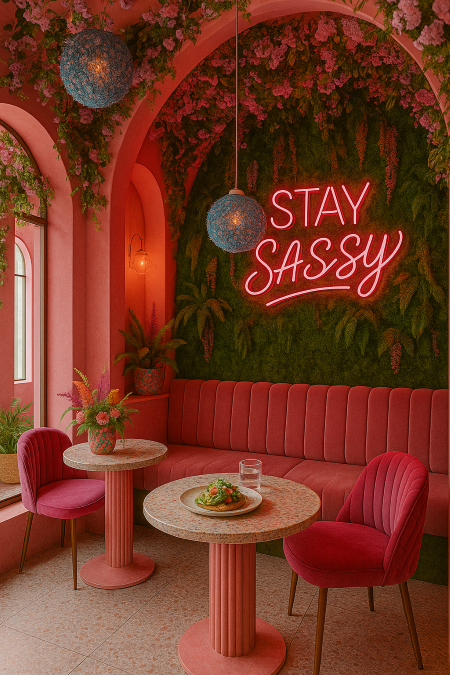
We help clients design:
- • “Instagrammable” corners that align with their brand
- •Visual storytelling through materials, lighting, and graphics
- •Spaces that encourage user-generated content (UGC)
A strong restaurant interior design strategy turns your space into a digital marketing asset.
Conclusion: Design That Feeds More Than Hunger
Interior design isn’t just decoration — it’s a strategic business tool. From lighting to layout, every detail contributes to the customer’s perception, satisfaction, and loyalty.
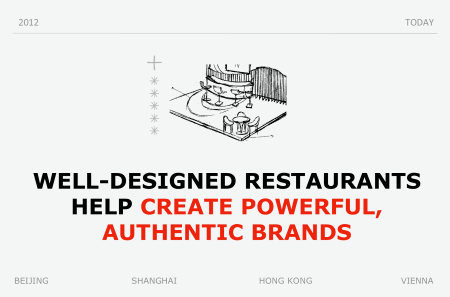
At 5 Star Plus Design, we bring together psychology, branding, and spatial strategy to craft restaurant interiors that look beautiful and perform even better.
> back to top of page

Exhibition Stand Design & Execution for AZO China at ProPak Exhibition 2025 in Shanghai
Juli 9 , 2025
5 Star Plus Retail Design executed a modular exhibition stand for AZO China at PROPAK Expo 2025 in Shanghai, held from June 24–26. The past three years, the design team developed a modular concept focused on delivering a clean, powerful visual presence that captures attention from a distance and leaves a lasting impression. Central to the design was AZO China's strong commitment to sustainability, driving the reuse of as many components as possible to align with the company’s environmental principles.
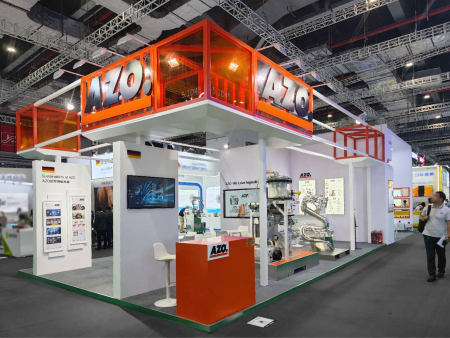
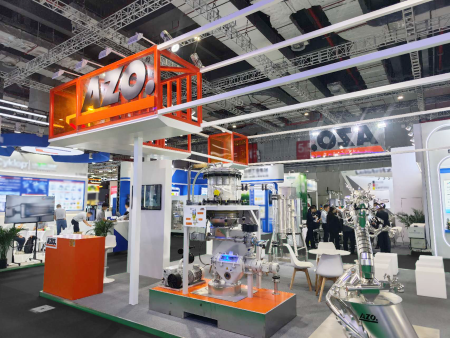
The stand needed to mirror the high standards of AZO China’s products and corporate culture through a minimalist yet visually appealing aesthetic. Drawing inspiration from the brand’s industrial roots, the design embraced a high-tech, contemporary feel, incorporating elements reminiscent of modern factories and warehouses.
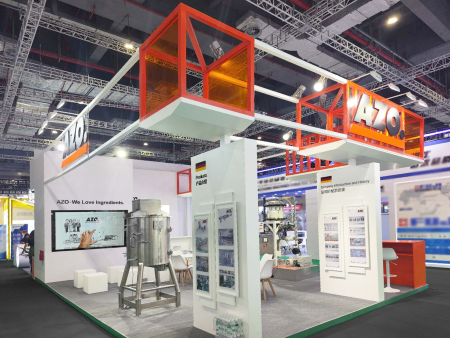
In line with previous AZO China exhibition stands, this concept featured simple, clean lines to guide visitors through three primary zones: the story walls, the product showcase area, and the experience zone. Together, these elements created a cohesive and engaging brand experience.
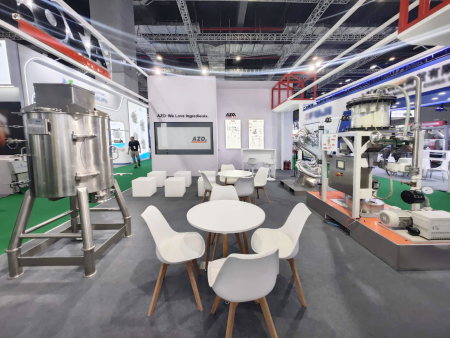
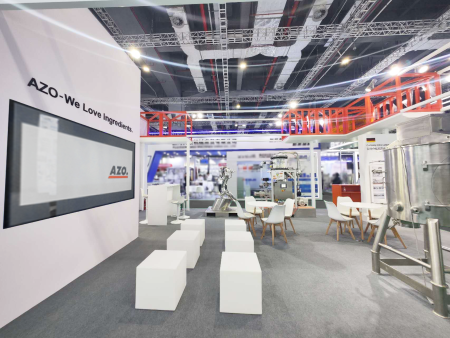
Exhibits with Purpose
Exhibition stands have evolved into powerful platforms for purpose-driven storytelling, helping brands communicate their mission, values, and societal impact. These designs are increasingly focused on showcasing sustainability initiatives, social responsibility, and the broader contributions a brand makes to the world. For conscious consumers, this approach builds trust and emotional connection.
AZO China’s exhibition stand embraced this shift by integrating themes of technological innovation, industrial excellence, modernity, and sustainability. The result was a flexible, modular design that reflected AZO China’s global identity while remaining adaptable to various booth sizes across exhibitions in China. A core design principle was the reusability of components—reinforcing the company’s dedication to sustainable practices. Altogether, the stand conveyed the quality of AZO China’s products and the integrity of its brand, all through a sleek, modern design language.
> back to top of page

Retail Design Aesthetics in 2025: Color, Texture, and Style That Inspire
June 30, 2025
In 2025, retail store design continues to evolve into a fusion of sensory storytelling and functional innovation. As consumers seek more than just products, retail interior design is being reimagined to create immersive, emotionally resonant environments.
Color Trends: Muted Tones, Clay Hues & Soft Neons
Soft, natural colors are dominating retail interiors. Think terracotta, dusty rose, olive green, soft browns, and sandstone beige. These hues create warm, inviting atmospheres that speak to authenticity and sustainability—key goals in modern brand experience design. Why it works: Earth tones psychologically ground customers, encouraging them to linger longer and explore.
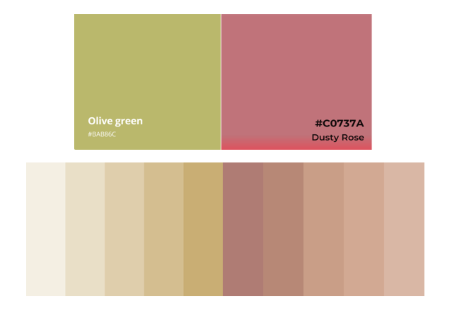
Texture Combinations: Industrial Meets Organic
The latest retail store design expertly balances raw, organic materials with polished finishes, creating visually striking yet inviting spaces. Retail spaces in 2025 are no longer one-dimensional. Designers are pairing raw natural materials like wood, jute, or stone with polished surfaces such as chrome, lacquered wood, or brushed metal.
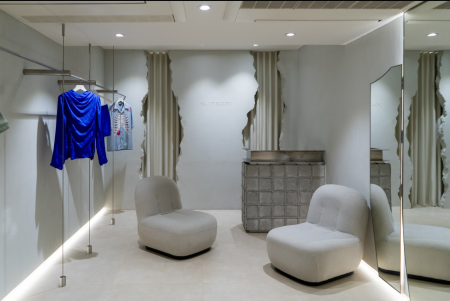
Image Source: AI
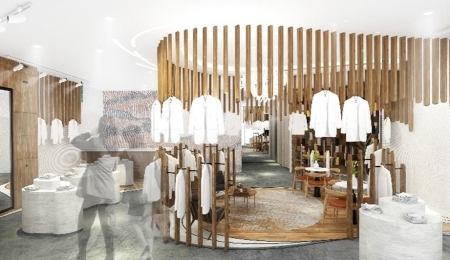
Furniture & Fixture Design: Biophilic, Minimalist, and Adaptive
Biophilic Design
Greenery is no longer just décor—it’s structure. Fixtures now include living walls, plant-lined shelving, or herb garden displays. This trend enhances mental well being and brings nature into modern retail.
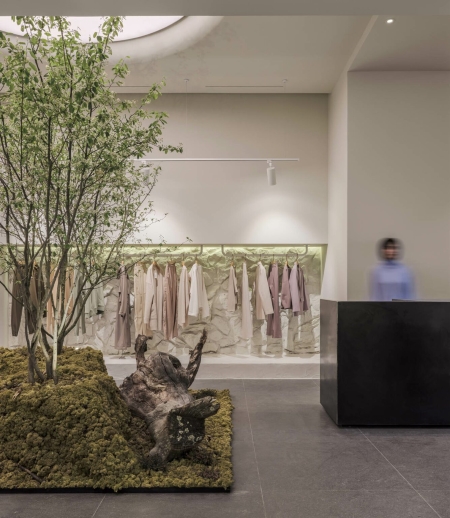
Minimalist & Modular Forms
Clean lines, open shelving, and modular furniture allow for flexible reconfiguration. As product lines change, so can the space—seamlessly.
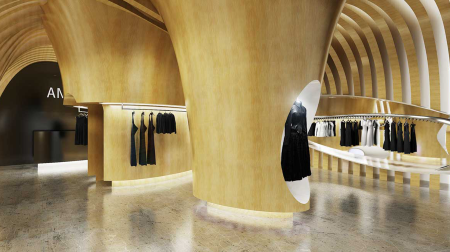
Adaptive Elements
Fixtures with built-in storage, adjustable heights, or multi-use functions make layouts smarter and more efficient. Perfect for pop-ups and brand activations.
Retail design in 2025 is about more than appearance—it’s about emotion, connection, and adaptability. By blending earthy tones with futuristic accents, combining natural with refined materials, and using intelligent furniture systems, retail store design becomes a powerful tool for brand experience design, reflecting both brand identity and the evolving lifestyles of today’s consumers.
> back to top of page

Concept Description – Exhibition Stand Design for Saudi Arabia
June 17, 2025
Saudi Exhibition Design is not just about building a functional space—it is about telling a story. A story rooted in a rich cultural heritage, reimagined through a modern lens. Saudi Arabia stands at a unique intersection of tradition and transformation; it is a land of ancient patterns, golden deserts, spiritual symbolism, and, today, bold visions for the future.
In this booth concept, we aimed to express this duality: the elegance of history and the clarity of modernity.
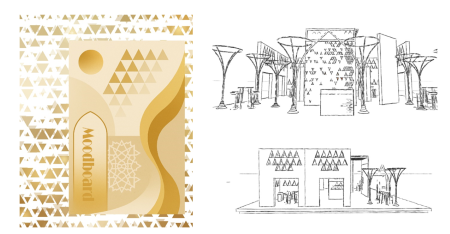
This exhibition booth was designed with a focus on merging Saudi Arabia’s rich cultural heritage with modern aesthetics. The goal was to create a space that is welcoming, cohesive, and symbolically powerful—reflecting both brand identity and regional essence. The use of golden tones, geometric Arabic patterns, and a thoughtful lighting scheme are key highlights of this design.
Concept
Cultural Inspiration
The triangular patterns seen throughout the booth are inspired by traditional Arabic architecture—particularly the geometric mashrabiya (latticework) and decorative motifs found in historic Islamic designs. These patterns have been reinterpreted with a modern touch to maintain a clean, minimalistic, and contemporary look while honoring the cultural roots.
Color Palette
White was chosen as the primary base color to convey purity and elegance, while gold accents emphasize luxury, prestige, and tradition. Gold holds deep symbolic value in Arabic design, representing strength, prosperity, and timeless beauty.

Booth Entrance and Exterior View
The entrance is defined by an arch-like element highlighted with golden outlines, symbolizing traditional Arab gateways and Islamic architecture. Surrounding this are unique light installations that resemble modern abstract trees, serving both as artistic elements and functional lighting.
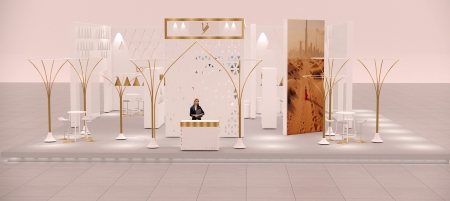
Reception Area
At the center front stands a sleek reception desk. The surface features perforated geometric motifs, echoing the wall behind it. This space acts as the initial touchpoint for visitors, providing clear orientation and an inviting ambiance.

Meeting Zone
A semi-private area for discussions is located at the heart of the booth. Vertical linear slats above create a sense of focus and spatial definition. A large digital artwork depicting a futuristic desert scene with crystal-like structures draws attention, symbolizing Saudi Arabia’s forward-looking vision and innovation rooted in its natural landscape.
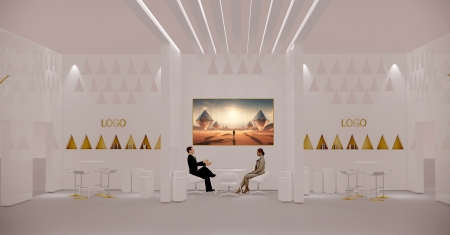
Side Walls and Display Shelves
The side walls are decorated with recessed triangular shelves lit with warm golden lighting. These are ideal for showcasing small products, souvenirs, or promotional items. The repetition of the triangle form reinforces the visual identity and maintains design unity.

Furniture and Layout
Round white tables with golden base accents are strategically placed throughout the booth to encourage interaction and casual conversations. The furniture is minimalist and ergonomic, keeping the attention on the spatial experience and architectural features.
Conclusion
Saudi Exhibition Design successfully brings together traditional Arabic elements and contemporary design language, creating an immersive space that reflects Saudi Arabia’s identity in a sophisticated and memorable way. Through the thoughtful use of form, color, and lighting, the booth becomes more than a display—it becomes a story and a statement of cultural pride and modern vision.
> back to top of page

UK Pavilion exhibition Design concept for International Exhibitions: Showcasing British Premium Brands
May 20, 2025
This UK pavilion exhibition design concept was developed as a creative proposal for a national exhibition stand. The goal: to create a premium, high-impact environment that highlights British lifestyle, innovation, and craftsmanship across multiple consumer sectors. As a standout example of country pavilion design, the concept merges heritage architecture with contemporary exhibition stand aesthetics. It blends tradition with innovation to elevate the visitor experience.
Pavilion Design Language and Inspiration
The architectural identity of the pavilion is rooted in British design traditions, specifically the use of arches and geometric squares seen in upscale retail spaces and historic landmarks. These features were reinterpreted into a clean, modern aesthetic, reflecting the UK’s values of prestige, creativity, and quality.
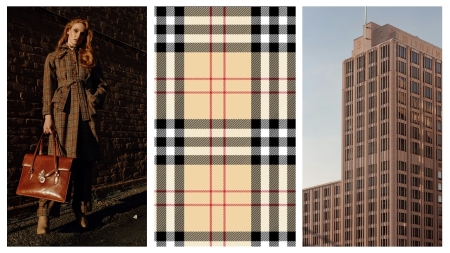
Material choices such as powder-coated 3D white tiles, acrylic logos, and light-integrated displays enhance the pavilion’s premium appeal while offering flexibility for diverse product presentations.
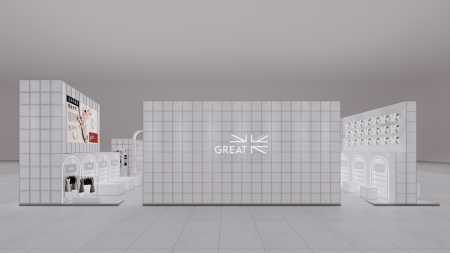
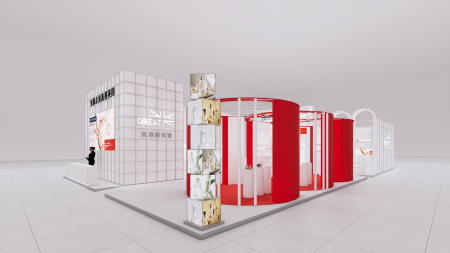
Functional Zoning and Visitor Flow
The pavilion was structured into multiple functional zones, each tailored to specific product categories:
Beauty & Skincare
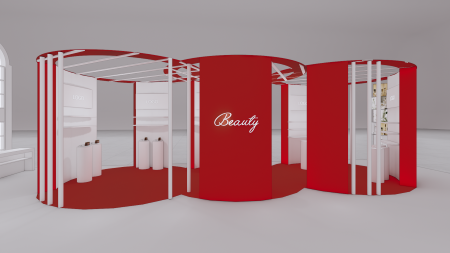
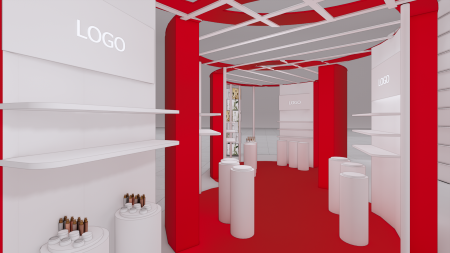
Lifestyle and Kitchenware

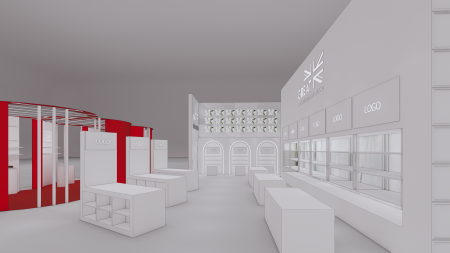
Each area uses bespoke display modules with powder-coated shelving, lockable storage, and acrylic branding. LED screens and digital signage are integrated to elevate brand storytelling, while lightboxes offer flexible space for logos or promotional imagery.
Fashion & Jewellery
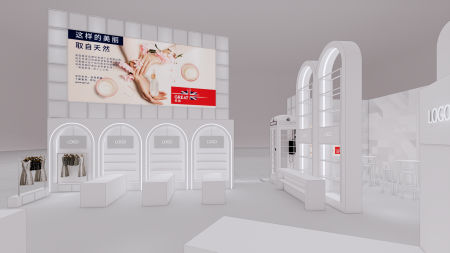
Food Drinks Area and Event & Networking Space
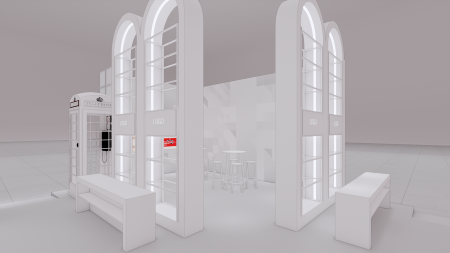
Rotating LED cubes and media displays. These elements are designed to attract attention from a distance and offer dynamic, content-rich engagement once visitors enter the space and Dedicated photo zones and interactive corners make the pavilion visually engaging and socially shareable, supporting marketing and brand exposure efforts.
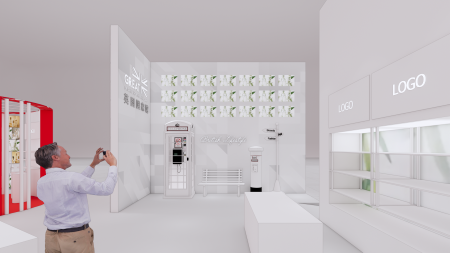
This UK pavilion concept is more than an exhibition layout—it is a versatile platform for storytelling and connection. As a thoughtfully crafted pavilion exhibition design, it provides participating brands with the tools to stand out in a competitive global environment, while reflecting Britain’s values of creativity, premium quality, and global leadership.
> back to top of page

Concept Description – Café Design for Saudi Arabia
May 13, 2025
This cafe design is inspired by the rich cultural heritage of the Arabian Peninsula, aiming to create a unique and pleasant space by blending traditional and contemporary elements.
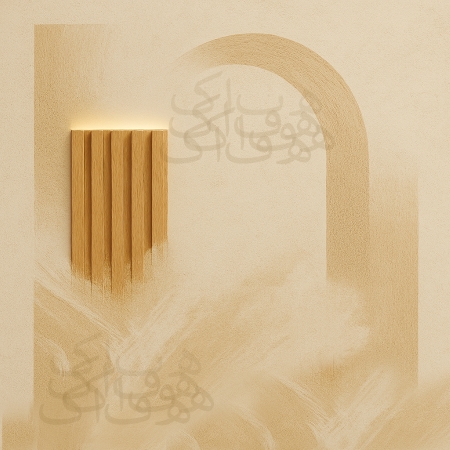
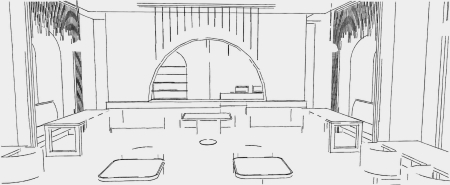
Moodboard: A Fusion of Timeless Arab Tradition and Contemporary Elegance ,Image Source: 5 Star Plus Retail Design
Key Design Elements:
- •Textured Walls & Wood Fusion: One of the standout features of the design is the use of textured walls, which add depth and warmth to the space. The combination of natural wood and textured walls fosters a sense of warmth and authenticity, while hidden lighting in the arches enhances the modern feel.
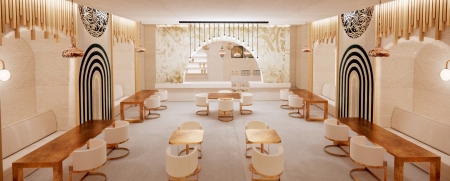
- •Arabic Calligraphy (Nastaliq Style): The artistic use of Nastaliq calligraphy not only serves a decorative purpose but also establishes a deep connection with the region's language and culture. This artistic element brings a poetic and soul-soothing atmosphere to the space.
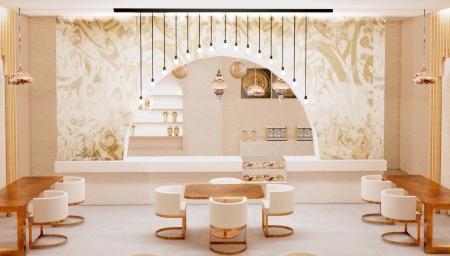
- •Arch Forms: The frequent use of arch-like shapes in the space, whether in wall decorations or structural elements, is a reference to traditional Islamic architecture, reinterpreted in a modern context. These forms create a soft and pleasing visual rhythm in the space.
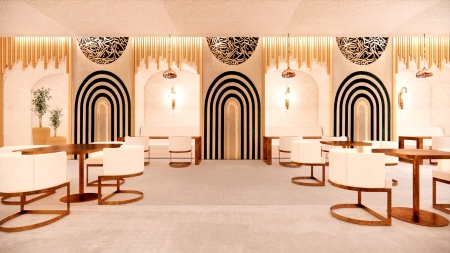
- •Hidden Lighting: The discreetly placed hidden lighting above the vertical wooden slats casts a soft, uniform light on the walls, enhancing the warmth and spatial depth. This subtle lighting highlights textures and creates beautiful visual layers.
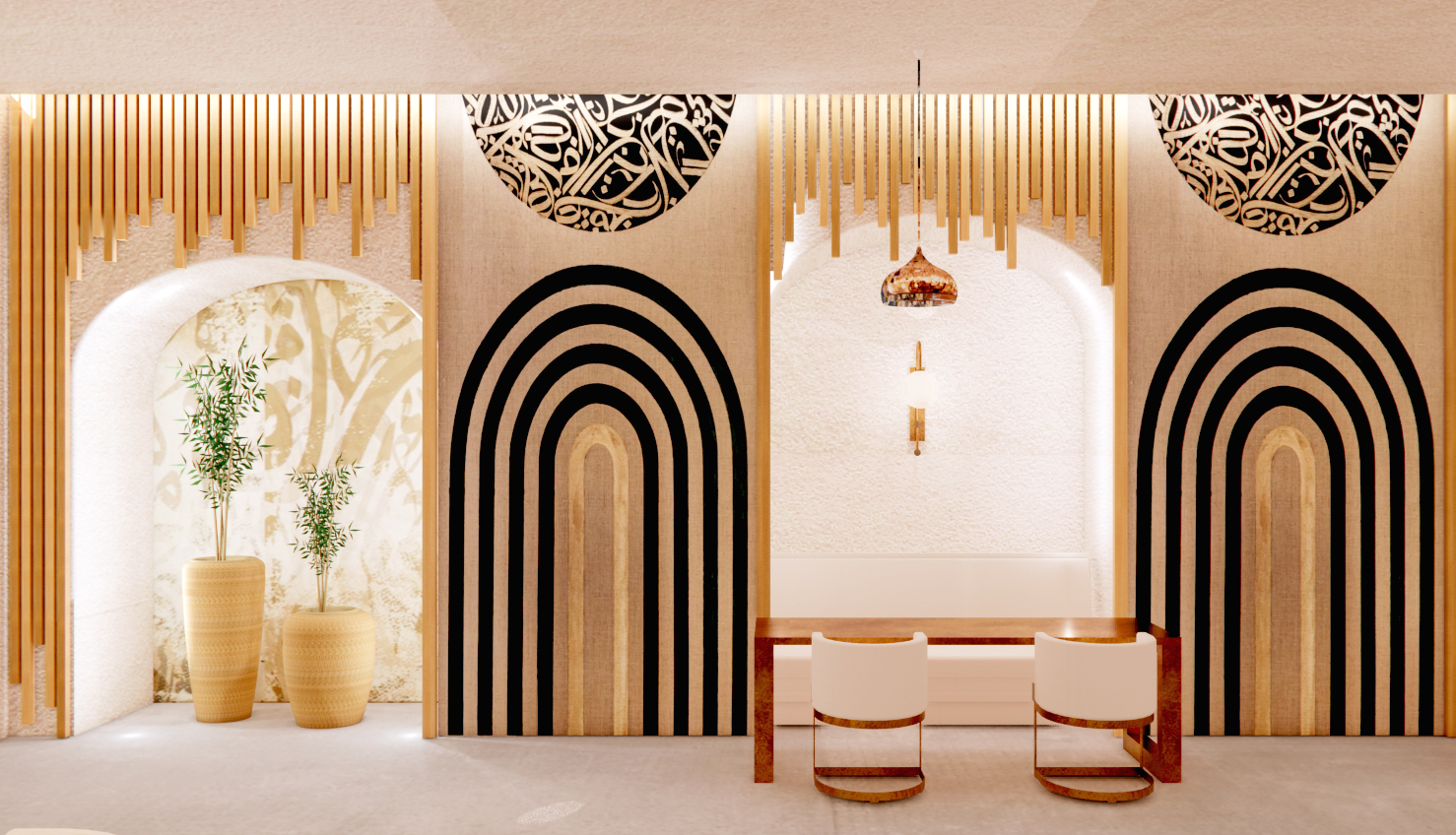
Conclusion
This design is not merely a visual aesthetic; it is a spatial experience that intertwines tradition, form, and emotion. Every corner of this cafe tells a story, taking the viewer on a journey through the heart of contemporary culture and design.
> back to top of page

Why Retail Design Matters More Than Ever in China’s Evolving Market
April 29, 2025
China’s retail market is evolving faster than anywhere else in the world. From luxury boutiques to lifestyle brands, businesses face rapidly shifting consumer behaviors, fierce competition, and rising expectations for physical spaces. In this dynamic environment, retail design in China has become a critical factor for brand success.
At 5 Star Plus Retail Design, we specialize in creating strategic, experience-driven spaces. In today’s China, a well-executed retail interior design is not just about aesthetics—it’s a powerful business tool for building customer loyalty, increasing sales, and elevating brand identity.
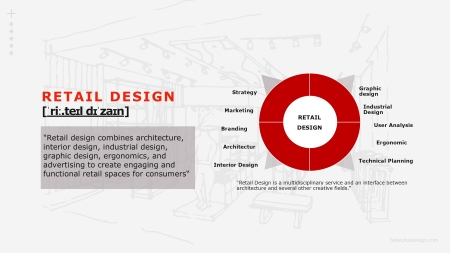
China’s Retail Market: Key Insights
- •Retail sales in China reached over ¥48.79 trillion in 2024, marking a 3.5% year-on-year increase, according to the National Bureau of Statistics of China (NBS 2024 Report).
- •Physical stores still account for approximately 73% of retail sales, while e-commerce represents about 27% (NBS 2024 Report).
- •Experiential retail is rising: more than 60% of Chinese consumers prefer shopping environments that offer interaction, personalization, and entertainment (CBRE 2023 Report).
- •Localization drives success: Brands that adapt store design concepts to Chinese cultural and consumer preferences achieve up to 30% higher customer engagement (CBRE 2023 Report).
The trends are clear: physical retail is not disappearing in China—it’s being transformed. Brands that invest in retail design China strategies will lead the next generation of growth.
Three Reasons Retail Design Is a Business Necessity in China
1. Building Trust and Emotional Connection
Chinese consumers place a high value on experience. They want to physically interact with products and immerse themselves in a brand story before making purchasing decisions. A well-designed retail interior fosters trust, connection, and brand loyalty.
Tip: Integrate storytelling into your retail store design in China. Localized themes, cultural elements, and technology like AR (Augmented Reality) can help create emotional engagement with Chinese shoppers.
2. Differentiating in a Crowded Marketplace
From Beijing and Shanghai to emerging cities like Chengdu and Hangzhou, brands face intense competition. A distinctive and memorable retail design in China can turn an ordinary visit into an extraordinary experience, making your store a destination.
Tip: Stand out through bold architecture, immersive displays, and localized design elements that reflect the spirit of each Chinese city.
3. Supporting Omnichannel Retail Strategies
Chinese consumers expect a seamless blend between online and offline. Modern retail stores must be hubs for shopping, content creation, social engagement, and loyalty programs.
Tip: Integrate digital features like QR codes, livestream areas, and mobile engagement points into your retail interior design to enhance the omnichannel journey.
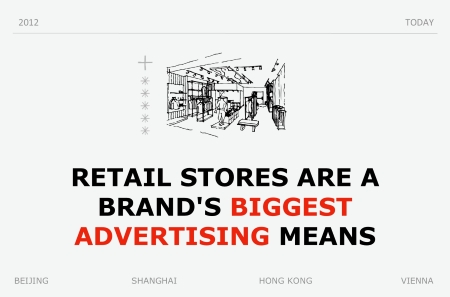
How 5 Star Plus Retail Design Helps Brands Succeed in China
As a leading retail store design company in China, 5 Star Plus Retail Design brings together global design expertise and deep local market knowledge.
Our services are tailored to help brands thrive in China's competitive landscape.
We offer:
- •Retail Space Planning: Smart layouts that optimize traffic flow and product visibility.
- •Visual Identity Development: Translating your brand into impactful physical experiences.
- •Localized Concept Design: Adapting your store design to resonate with local consumer tastes and cultural nuances.
- •Project Management: Handling every step from concept development to construction, ensuring consistent execution.
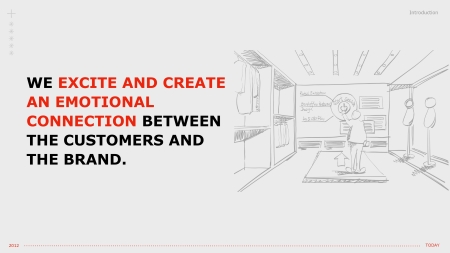
At 5 Star Plus Retail Design, a leading retail store design company in China design your brand's future through expert retail interior design and localized innovation. Let's work together to create iconic retail spaces in China.
> back to top of page

Swiss Pavilion Stand Design: A Minimalist Pavilion Concept for International Exhibitions
April 17, 2025
The Swiss exhibition Pavilion design concept is rooted in clarity, structure, and refined minimalism—core values that reflect Switzerland’s national identity. Designed within a compact 90 sqm footprint, the space is more than an exhibition stand: it is a curated experience that merges brand presence with architectural elegance, setting a high benchmark in Swiss country pavilion design.
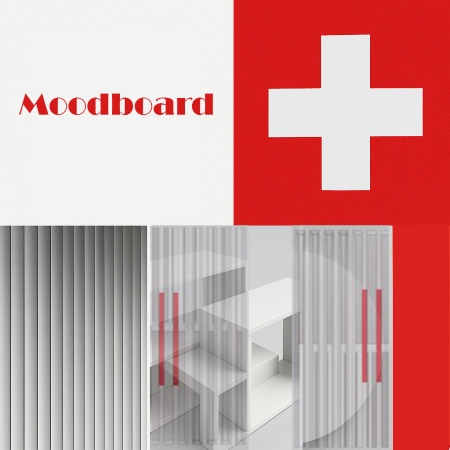
Inspired by structured forms, minimalism, and the confident presence of the Swiss identity. Image Source: 5 Star Plus Retail Design
The architectural language is defined by vertical slats, creating a rhythmic façade that evokes modernist Swiss design while suggesting transparency and openness. A subtle interplay between white surfaces and red graphic accents—echoing the Swiss flag—translates national identity into a clean, contemporary design gesture. The result is a spatial signature that is instantly recognizable yet elegantly understated.
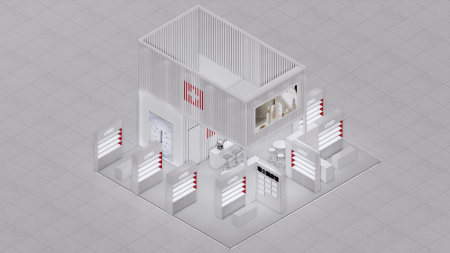
A modern exhibition design using vertical slats and white and red accents to reflect Swiss national identity. Image Source: 5 Star Plus Retail Design
Inside, the layout is optimized for both visibility and flow within the exhibition stand. Each participating brand is given a distinct presentation zone within illuminated display modules, offering a premium "showroom" experience. These display units not only highlight products but also invite storytelling, sensory interaction, and brand immersion.
As part of our wider expertise in exhibition stand design in China, this pavilion reflects our commitment to delivering design solutions that respect cultural nuance while achieving maximum brand impact in competitive international settings.
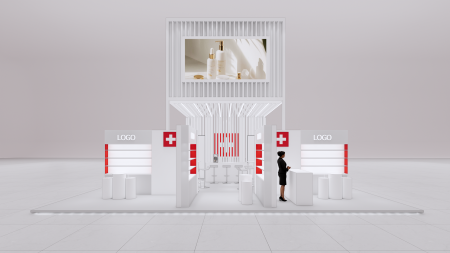
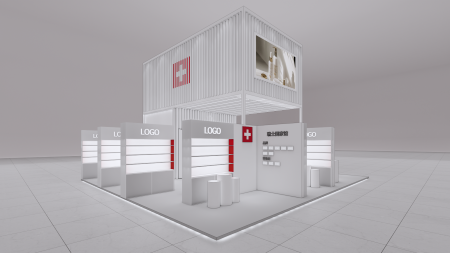
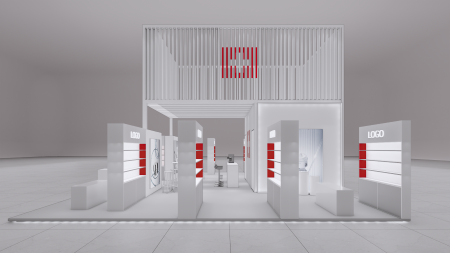
Immersive showroom modules fuse product display with storytelling, sensory engagement, and brand identity. Image Source: 5 Star Plus Retail Design
Complementing the display zones are strategically positioned areas for VIP meetings, business networking, and informal exchanges. These areas retain the same design language, ensuring consistency while supporting functional versatility.
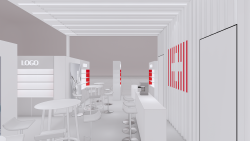
VIP and networking areas enhance the exhibition stand design with design consistency. Image Source: 5 Star Plus Retail Design
A large LED screen on the pavilion’s exterior animates the structure, drawing attention and providing a dynamic communication platform. Combined with the prominent logo wall and thoughtful lighting design, these features enhance brand impact and reinforce Switzerland’s image as a hub of innovation and premium quality.
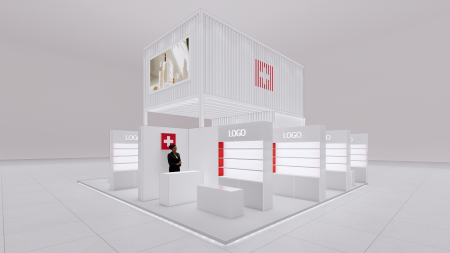
The LED screen and lighting boost the brand impact of this country Exhibition pavilion Design. Image Source: 5 Star Plus Retail Design
This Swiss country pavilion design is a physical embodiment of Swiss values: precision, excellence, and quiet confidence. It offers a space not only to display—but to connect, impress, and inspire.
> back to top of page

Retail Design in Saudi Arabia: The Impact of Cultural Values on Modern Spaces
April 4 , 2025
Designing stores and other commercial spaces for the Saudi market requires a deep understanding of the region’s culture, visual aesthetics, and values. In recent years, Saudi Arabia has experienced significant transformations in the retail and interior design industries, with international brands seeking ways to adapt their spaces to meet the expectations of local consumers. One of the most effective approaches in this regard is the integration of traditional elements with modern design—a strategy that aligns with Saudi cultural values while maintaining a luxurious and contemporary feel in the design of retail stores.
Saudi Arabia, renowned for its desert landscapes and palm trees, provides a natural inspiration for creating serene and authentic commercial spaces. Incorporating elements such as palm leaf patterns on walls, the use of natural plants, and warm materials can evoke a sense of tranquillity and cultural connection. This approach not only enhances the aesthetic appeal but also creates an emotional link with the local audience, making it an essential component of Saudi Retail Design.

Mood board: The harmony of palm leaves and golden accents reflects the essence of Arabic Retail Design. Image Source: 5 Star Plus Retail Design
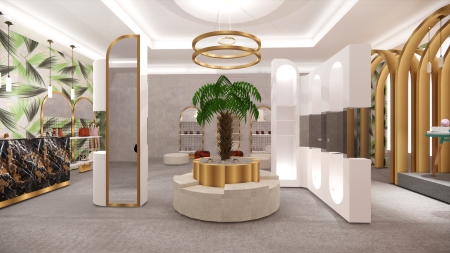
A palm tree in the center is a focal point, bringing a natural and relaxing feel to this Arabic Retail Design concept. Image Source: 5 Star Plus Retail Design
The color gold holds immense significance in Arabic culture, symbolizing wealth and grandeur. By incorporating gold accents throughout the space - such as in display units and lighting - designers can elevate the luxurious atmosphere of the Arabic store design concept, delivering an upscale shopping experience. Additionally, combining this color with materials such as black marble creates a balance between classic and modern design, a key feature in Retail Design in the Middle East.
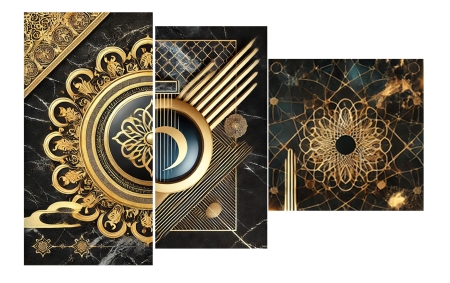
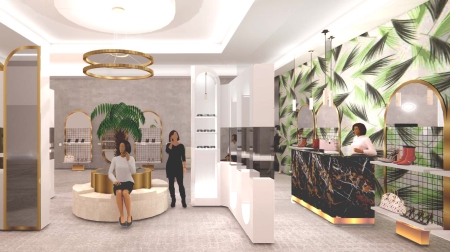
A Fusion of Gold and Black Marble in Saudi Retail Design. Image Source: 5 Star Plus Retail Design
By mixing curved arches, textured materials, and marble surfaces, the space combines tradition and modern style, creating a pleasant and elegant atmosphere.

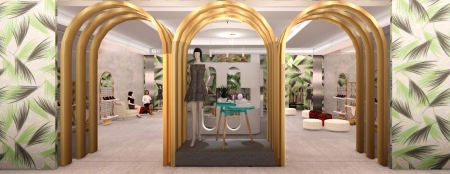
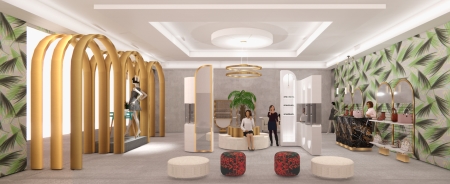
Retail Design in the Middle East: Curved arches, rich textures, and marble surfaces create elegance. Image Source: 5 Star Plus Retail Design
Moreover, Saudi Arabian culture places great importance on social and communal spaces. Creating a central area for conversation and relaxation, with comfortable seating like fabric poufs adorned with rich Arabic patterns, enhances the customer experience. These spaces not only encourage interaction among customers but also provide a welcoming environment where individuals can connect with both the products and each other.
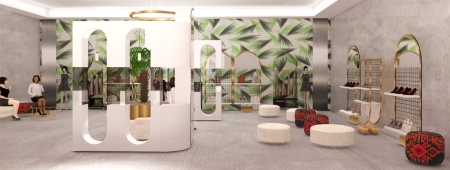
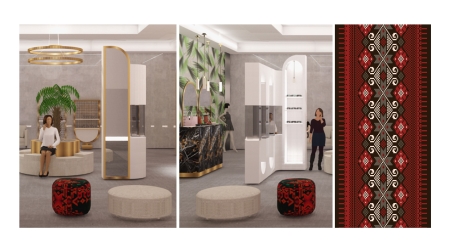
Rich Arabic patterns in the seating elevate social interaction, enhancing Arabic Store Design concepts.
Image Source: 5 Star Plus Retail Design
Conclusion
Designing spaces for the Saudi Arabian market requires a deep understanding of the local culture, lifestyle, and tastes of the target audience. Combining natural elements, luxurious colors, social spaces, intelligent lighting, and traditional architectural details can create a unique and memorable experience for customers.
By adhering to these principles, brands can create an environment that is not only luxurious and attractive but also in harmony with the cultural values of Saudi Arabia. This approach is key to success in creating impactful stores and other commercial spaces in one of the most dynamic global markets, especially within Retail Design in the Middle East.
> back to top of page

ITB 2025: A Journey Through 10 Stunning Country Exhibition Pavilions
March 25 , 2025
The world’s leading tourism fair, ITB, returned to Berlin this March, attracting countries and tourism-related businesses from around the world. Many exhibitors showcased impressive pavilions, and we've selected some of the most outstanding country presentations for a quick review.
As highlighted in one of our previous articles, storytelling is a critical element in the design of country stands. While incorporating national positioning and even some stereotypes, effective stands also highlight modern and innovative aspects.
https://www.5starplusdesign.com/blog.html#NationBranding
This year, Arabic countries especially stood out with their large-scale, highly immersive, and experiential exhibition pavilions. Check out our photos below!
Saudi Arabia
Saudi Arabia boasted the largest stand at the exhibition, occupying nearly an entire hall. The exhibition pavilion featured double-sided, circular LED screens suspended from the ceiling, creating a captivating visual experience. Distinct areas were designed in various styles, ranging from traditional architectural motifs to modern, innovative designs, each reflecting the culture of specific regions on display. The space also featured a vibrant bazaar, a café, live music with dancers, and even a race car.

The Saudi country pavilion with differently designed areas for each region,Image Source: 5 Star Plus Retail Design
UAE
In the adjacent hall, several UAE emirates also captivated attention with striking exhibition designs.
Sharjah’s exhibition stand embraced rectangular forms with LED screens integrated into the floor, ceiling, and some walls. This immersive setup surrounded visitors with scenic landscapes as they walked through a custom-designed corridor.
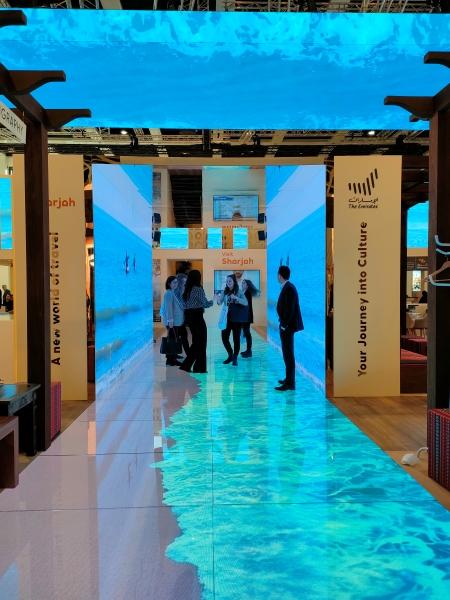
Abu Dhabi presented an impressive multi-dimensional pavilion with distinct spaces. Traditional corners showcased local artisans in costumes working on handicrafts, while an LED immersive corridor and walk-through area added a futuristic touch. Several creatively designed islands facilitated meetings and company presentations.

Ajman highlighted the emirate's unique offerings through an exhibition pavilion design inspired by local architectural patterns and forms.
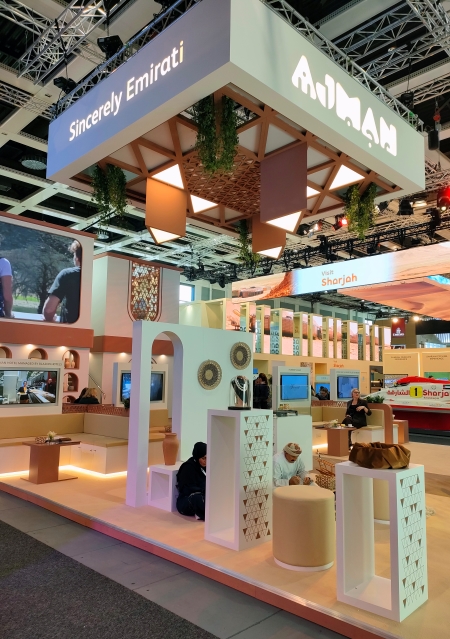
Similarly, Jordan and Egypt embraced iconic historic architectural elements in the design of their exhibition pavilions, ensuring instant recognition of their countries.
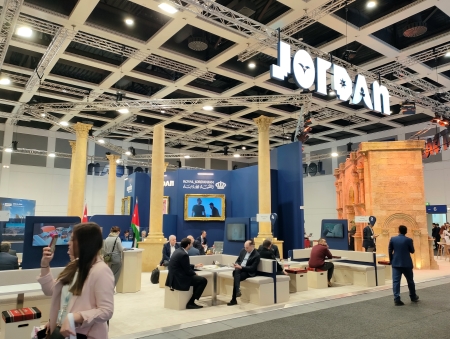
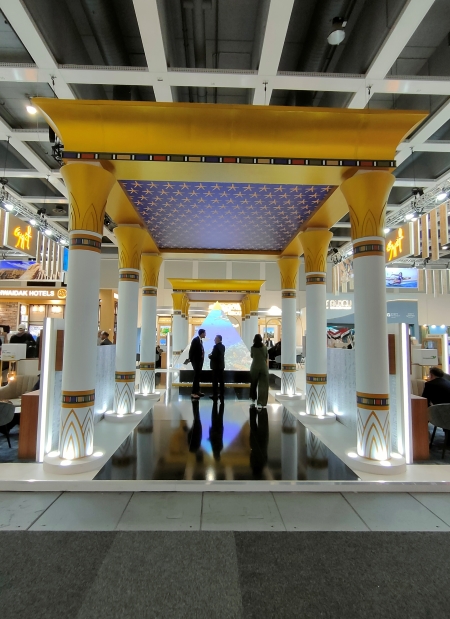
Two European countries stood out among their peers: Austria and Spain.
Austria utilized a ribbon-like design inspired by the national flag. This unifying element tied the pavilion’s entire space together, creating a striking branded effect visible from afar. The red-white-red ribbon motif also extended to graphic elements on walls and freestanding panels.

Several regions of Spain presented independent exhibition stands with creative concepts:
Andalusia featured a dark, event-like atmosphere enhanced by LED strips and translucent fabric screens. Architectural arches, highlighted by modern finishes, set a dramatic tone. Columns displaying historically inspired yet contemporary busts completed the look of the exhibition pavilion.
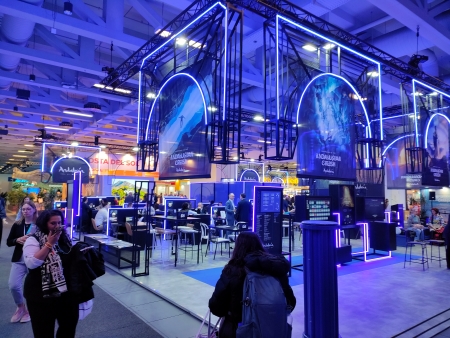
The exhibition pavilion of Andalusia, Image Source: 5 Star Plus Retail Design
The Canary Islands employed a multi-sensory approach for their exhibition pavilion, featuring sculptural ceiling elements with color-changing LED lights. These dynamic structures simulated wave movements and moods of the underwater world. Full-wall LED screens with abstract visuals, touchscreens, and ambient sound further enriched the experience.

The exhibition stand of Canary Islands, Image Source: 5 Star Plus Retail Design
The Maldives stood out prominently in the Asia-Pacific section with an exhibition pavilion design resembling a traditional wooden architectural structure set by the shore. Real wood and straw elements lent authenticity, creating a warm, immersive experience.
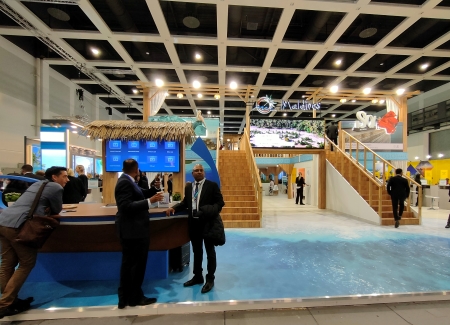
The exhibition pavilion of the Maldives,Image Source: 5 Star Plus Retail Design
Conclusion
While some country pavilions emphasized traditional cultural and architectural elements, others adopted innovative, contemporary approaches to reinterpret local heritage. The most compelling stands effectively combined strong design concepts, immersive content, multi-sensory features, and storytelling to deliver unforgettable visitor experiences.
> back to top of page

What Younger Consumers Want from Retail Spaces: 4 Key Elements of Retail Design for Gen Z
March 10 , 2025
In an era where digital convenience is at an all-time high, retailers must rethink their physical spaces to attract and engage Gen Z consumers. Born between the late 1990s and early 2010s, Gen Z is reshaping retail with their demand for immersive, tech-integrated, and socially conscious shopping experiences. To remain competitive, brands need to design stores that resonate with this generation’s expectations—spaces that feel less like traditional shops and more like destinations for discovery, creativity, and community.
1. Experience Over Transaction
Unlike previous generations, Gen Z shoppers don’t just visit stores to make purchases—they seek engaging experiences. Retail spaces should incorporate interactive elements such as:
- •Augmented Reality (AR) and Virtual Reality (VR) to allow virtual try-ons and immersive product demonstrations.
- •Instagram able moments with aesthetically pleasing store designs that encourage social media sharing.
Imagine walking into a clothing store where you can virtually try on outfits using Augmented Reality (AR) mirrors or explore a brand’s story through interactive digital displays. Retailers can also create ‘Instagrammable’ moments by incorporating visually stunning design elements—a neon-lit tunnel, an artistic mural, or a themed corner designed for social media snapshots. These experiential features attract foot traffic and encourage shoppers to share their visits online, amplifying brand exposure.
One example of an eye-catching and shareable retail space is our Beauty Retail Concept. The bold red-and-white color scheme curved architectural forms create a dive a unique look. Open shelves and interesting displays make the space more dynamic and perfect for social media content. This design can be a dedicated area within a store or a standalone pop-up, offering an interactive and visually appealing shopping experience.
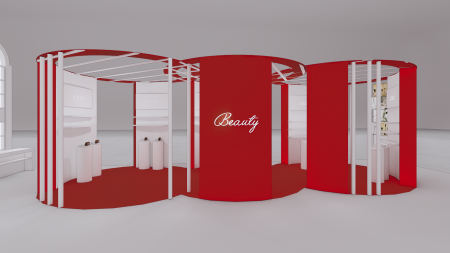
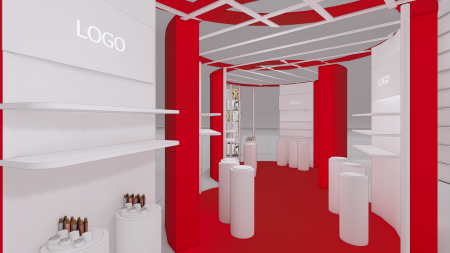
The millennial pink of Aesop’s Chelsea store effortlessly attracts the Instagram-savvy crowd. The cult Australian skincare brand, already garnering widespread attention for its luxury, cruelty-free skincare range, now has a store that reflects its ethos. From the street, the warm interiors offer an inviting contrast against the otherwise grey neighborhood.
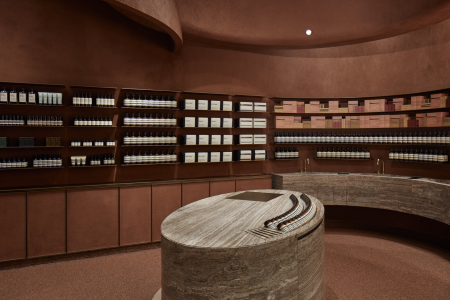
Image Source: Aesop
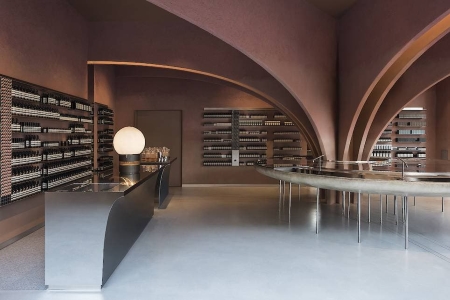
Image Source: Aesop
2. Seamless Integration of Technology
Gen Z has grown up in a digital world, so they expect a seamless blend of online and offline shopping. Key tech integrations include:
- •Mobile-friendly experiences, such as QR codes for instant product information or self-checkout through apps.
- •Smart mirrors and AI-powered styling assistants to enhance personalization.
- •Omnichannel shopping options, allowing customers to browse in-store and complete purchases online or vice versa.
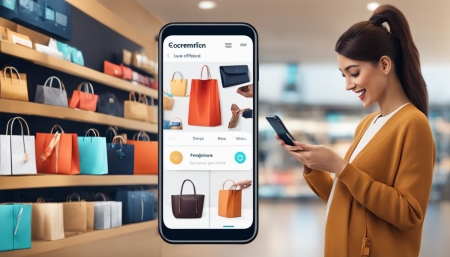
Image Source: AI
Picture a store where QR codes are placed alongside products, allowing shoppers to instantly access reviews, styling tips, or sustainability details on their smartphones. Imagine AI-powered smart mirrors suggesting outfits based on past purchases or digital self-checkout systems that eliminate long lines.
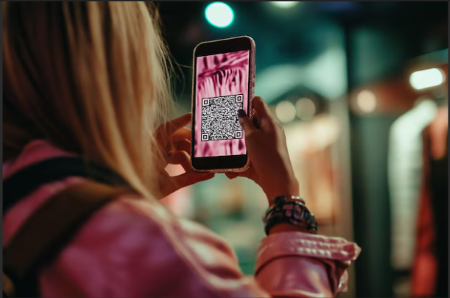
3. Community and Social Connection
For Gen Z, shopping isn’t just a solo activity—it’s a shared experience. Whether browsing with friends or connecting with like-minded individuals, they appreciate spaces that foster community and interaction. Ways to achieve this include:
- •Creating lounge areas where customers can relax, work, or socialize.
- •Hosting local pop-ups featuring emerging brands or artists.
Think of a store that includes a cozy lounge area where customers can hang out, work remotely, or even attend creative workshops. Hosting pop-up events featuring emerging designers, artists, or influencers also adds an element of exclusivity and cultural relevance. By transforming stores into social hubs, brands can build deeper relationships with their audience and create spaces that feel welcoming and authentic.
4. Personalization and Customization
Gen Z values individuality and enjoys personalized shopping experiences. Retailers can cater to this by:
- •Offering customization options, such as personalized products or DIY design stations.
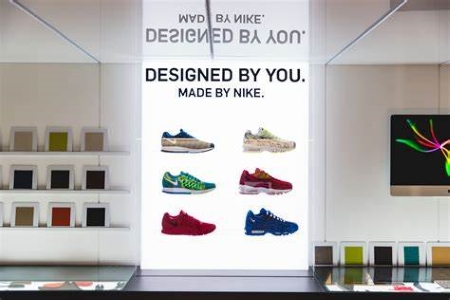
Image Source: NIKE
- •Using data-driven insights to provide tailored recommendations and exclusive in-store deals.
- •Creating membership or loyalty programs that reward engagement beyond just purchases.
Imagine a sneaker store where customers can customize their designs in real-time or a beauty brand that offers personalized skincare recommendations based on AI-driven analysis. Retailers can also leverage data-driven insights to provide tailored product suggestions, exclusive in-store discounts, or membership perks that reward engagement beyond just purchases. By making each visit feel personalized, brands can create a sense of belonging and exclusivity that resonates deeply with Gen Z shoppers.

Image Source: NIKE
Conclusion
To capture Gen Z’s attention, retail spaces must be more than just places to shop—they need to be dynamic environments that foster connection, creativity, and sustainability. By blending technology, ethical practices, and immersive experiences, brands can transform their stores into destinations that truly resonate with this new generation of shoppers.
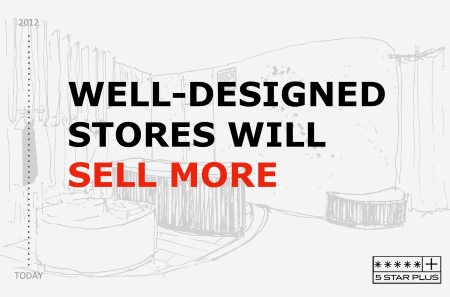 > back to top of page
> back to top of page

Design Execution of Austrian Winter Sports Days in China 2025
Febraury 25, 2025
In February, Yanqing, China, came alive with the Austrian Winter Sports Days—an annual event for businesses and government representatives. This annual event, organized by ADVANTAGE AUSTRIA, the Yanqing government, and the Austrian National Tourist Office, serves as a platform to showcase Austrian products, services, and solutions in the winter sports sector.
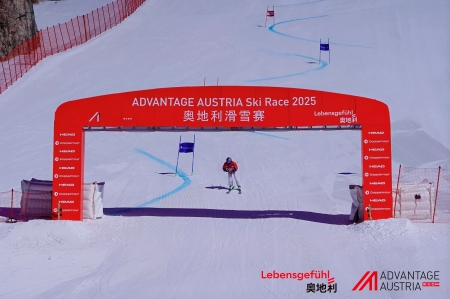
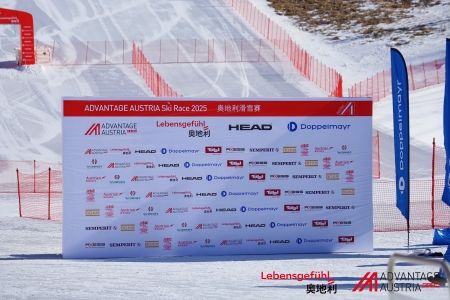
The event drew sponsorship and attendance from a wide range of companies, including well-known names such as Head, Doppelmayr, BG , ADG, Austrian Airlines, Freywille, Gebruder Weiss, Radskier, LionK, Atomic, Fischer, Asic Snow Star, Blizzard, Nordica, Halti, Mozart, C Y, 拾雪川, Hipp, Wartburg, Westin, St Regis and Hilton.
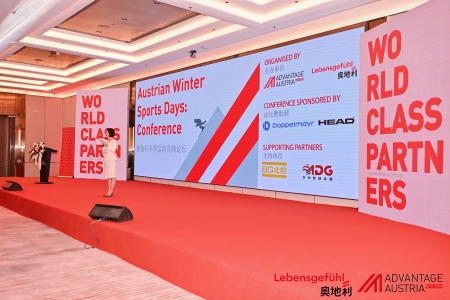
5 Star Plus Retail Design was honored to support this event with comprehensive design and execution services. Our scope of work included the creation and implementation of visual designs across multiple components, such as the conference, welcome reception, ski race, ensuring a seamless and memorable experience for all attendees.
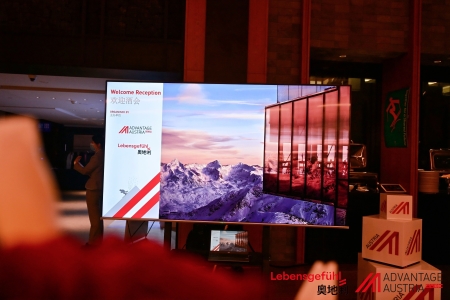
We are proud to have participated in this exhibition and look forward to future opportunities for collaboration.
> back to top of page

Minimalist vs. Maximalist Retail Spaces: Which Design Approach Works Best?
February 12, 2025
In today’s competitive retail environment, the design of your store isn’t just about aesthetics—it’s a strategic tool that can influence customer behavior, boost sales, and define your brand identity. With the ongoing debate between minimalist and maximalist design philosophies, retailers are challenged to choose the approach that best aligns with their brand values and appeals to their target audience.
In this article, we examine both design strategies, back them with industry facts, and explain how our company, 5 Star Plus Retail Design, can help you create a retail space that stands out.
The Essence of Minimalism in Retail
1. Simplicity as a Strategic Advantage:
Minimalist design is marked by clean lines, open spaces, and a focus on essential elements. By eliminating clutter, minimalist spaces allow customers to focus on the products. Research from the Journal of Consumer Research indicates that environments with less visual noise can increase customer focus and satisfaction, often leading to a 15–20% boost in sales.
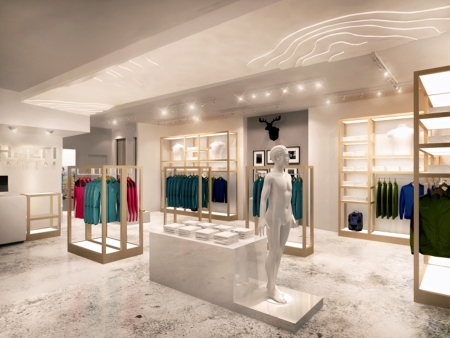
2. Enhancing Product Visibility and Flexibility:
The extensive use of white space and neutral colors not only creates a calm atmosphere but also highlights key merchandise. This approach makes it easy to update store layouts, ensuring that your retail space can adapt to changing trends and seasonal demands. According to a study by the National Retail Federation, over 70% of shoppers are more likely to purchase in environments where products are displayed clearly and attractively.
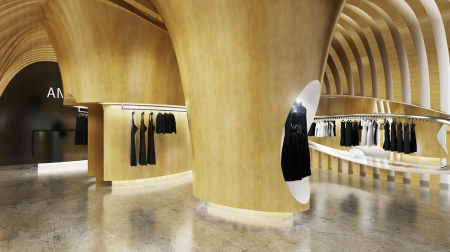
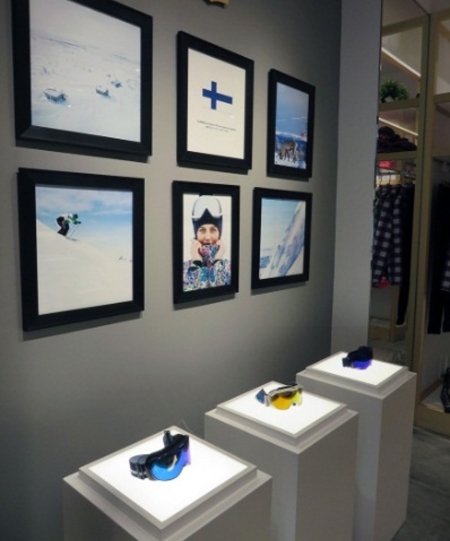
3.Aligning with Modern Brand Identities:
Minimalism is particularly effective for brands emphasizing quality, sophistication, and modernity. This design style communicates clarity and purpose, resonating with customers who appreciate simplicity and order. However, minimalism may not fully capture your desired emotional impact if your brand’s story relies heavily on rich visual narratives.
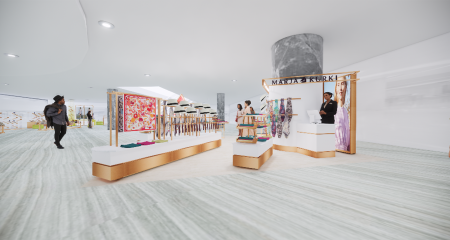
The Vibrancy of Maximalism in Retail
1. Bold, Engaging, and Immersive Experiences:
Maximalist design is characterized by vibrant colors, intricate patterns, and layered décor elements that invite exploration. Retailers employing this approach create dynamic environments that spark curiosity and drive customer engagement. Studies, such as one published in the Harvard Business Review, have shown that immersive store designs can increase customer dwell time by up to 30%, which often translates into higher sales.
2. Creating a Story Through Design:
Maximalism thrives on its ability to tell a brand’s story through its environment. By layering diverse visual elements, retailers can evoke strong emotions and leave lasting impressions. This approach is particularly effective for lifestyle brands and boutiques that target a younger, trend-conscious audience seeking memorable and Instagram-worthy experiences.

3. Navigating the Complexity:
While maximalist environments are visually exciting, they can sometimes overwhelm the customer if not carefully curated. The key challenge is to balance energy with navigability—ensuring that while the décor stimulates the senses, it doesn’t hinder the shopping experience.
Conclusion
Choosing between minimalist and maximalist design approaches ultimately depends on your brand identity, product offering, and target audience. Minimalism offers clarity and focus, ideal for brands that value simplicity and modern elegance. Maximalism, with its layered, engaging aesthetic, creates immersive experiences that can captivate and retain customers. In many cases, a thoughtfully curated blend of both styles yields the most compelling results.
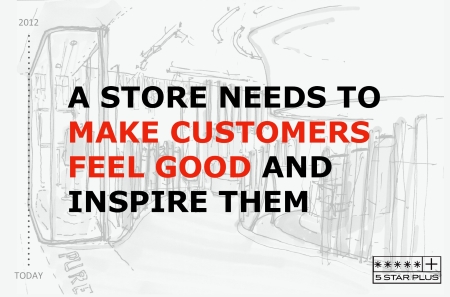
At 5 Star Plus Design, we believe that the perfect retail environment is one that tells your brand’s story while driving customer engagement and sales. Let us help you navigate the exciting world of retail design, ensuring that your store not only looks amazing but also functions as a powerful business asset.
> back to top of page

Micro-Retail: Creating Impact in Compact Spaces
January 27 , 2025
In an era where urban density is on the rise and consumers are craving personalized experiences, small-format retail—sometimes called “micro-retail”—is emerging as a powerful trend. These diminutive spaces can deliver outsized impact when designed thoughtfully, from pop-up kiosks in city centers to compact storefronts in busy neighborhoods. This article explores how strategic design choices can transform smaller footprints into memorable retail experiences that drive sales.
1. Functionality Over Footage
When it comes to designing small retail spaces, functionality and efficiency take priority. Here are a few strategies to help each square foot pull its weight:
Modular Fixtures
Modular shelving, display racks, and furniture that can be folded, stacked, or rearranged are essential. This allows retailers to quickly change layouts for new collections, special events, or seasonal displays.
Strategic Zones
Even a small space can benefit from “zoning” to guide customers from entry to checkout. For example:
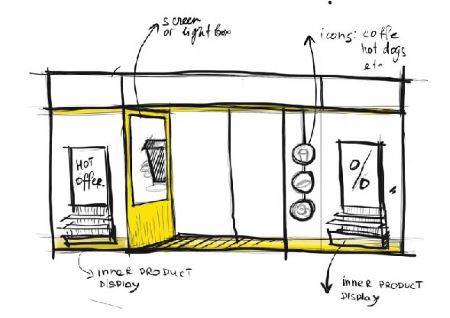
- •A feature wall or focal display near the entrance to capture attention.
- •A mini-showroom or interactive product area in the center for engagement.
- •An efficient checkout or consultation corner tucked along a side or near the back.
Smart Storage
- •Storage often becomes the biggest challenge in tight footprints. Consider hidden storage options under display tables, within benches, or behind wall panels to keep the retail floor uncluttered.
2. Visual Tricks to Enlarge Perception
When designing micro-retail, perception is everything. Certain visual and architectural techniques can make a small space feel larger and more inviting:
Light & Color
- •Bright, neutral color palettes (white, beige, soft pastels) can open up the environment visually.
- •Incorporating vertical lighting, mirrored surfaces, or even glass partitions can help bounce light around, making the space feel airy.
Vertical Emphasis
- •In smaller footprints, vertical elements are your friend. Consider floor-to-ceiling shelves, hanging installations, or tall, narrow signage.
Drawing the eye upward creates a sense of spaciousness and can become a striking visual statement.
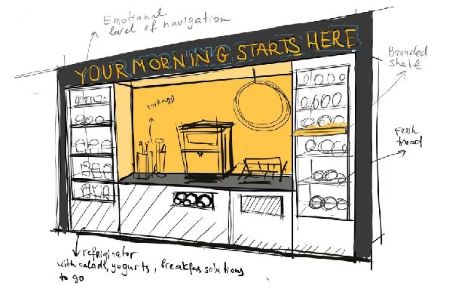
Seamless Flow
- •Avoid heavy dividers or bulky furniture that break up the space. Instead, use open shelving, translucent panels, or see-through displays to maintain a sense of continuity and flow.
3. Crafting an Engaging Brand Narrative
A micro-retail setting doesn’t mean you have to compromise on brand storytelling. In fact, smaller spaces can amplify your story by making it more immersive and personal:
Focused Storytelling Elements
- •Highlight a single brand theme or hero product in your main display. This laser focus can create a powerful memory for customers.
- •Integrate brand elements (colors, logos, slogans) in subtle yet consistent ways—through accent walls, signage, or product packaging displays.
Interactive Touchpoints
- •Let customers touch, test, and explore your products. Whether it’s an interactive digital screen or a simple, well-curated product sampling station, these hands-on experiences can leave a lasting impression.
Atmospheric Details
- •Use ambient soundscapes or subtle scents (e.g., freshly brewed coffee if you’re a café, or a signature fragrance for a fashion boutique) to enhance the shopper’s sensory experience.
4. Technology & Data in Small Spaces
Size isn’t a barrier to innovation. Technology can streamline operations and enhance the customer journey in a micro-retail format:
Smart Checkouts
- •Compact spaces benefit from mobile POS systems or self-checkout kiosks that reduce checkout queues and free up valuable floor area.
- •Digital receipts and contactless payments speed up transactions while offering a modern customer experience.
Real-Time Inventory Tracking
- •In a small store, out-of-stocks are highly visible and can frustrate customers. Automated inventory monitoring ensures popular items are replenished quickly or flagged when running low.
- •Pairing real-time inventory with online channels also facilitates click-and-collect services, letting customers reserve items before they visit.
Data-Driven Layout Adjustments
- •Use foot traffic analytics (via in-store sensors or cameras) to gauge how customers move within the compact space.
- •Continuously refine layout and product placement to maximize engagement and sales.
5. Case Example: Chic Pop-Up Kiosk
Imagine a chic pop-up kiosk in a bustling mall corridor or outdoor festival setting:
- •Modular Display Counters that snap together to form product shelves or sampling stations, then fold flat for transport.
- •Bold Graphics on a collapsible wall to convey brand personality while grabbing passersby’s attention.
- •A small interactive corner with a tablet or AR mirror for virtual try-ons if it’s a fashion or beauty brand.
The pop-up’s flexibility and clear brand storytelling make it stand out among larger, more traditional storefronts, illustrating how micro-retail spaces can be both cost-effective and impactful.
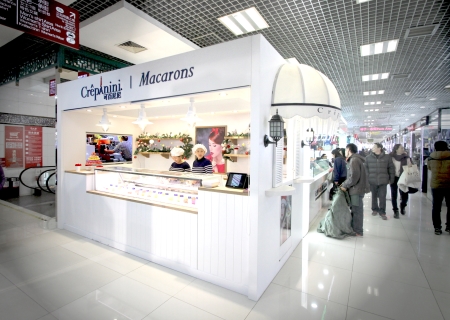
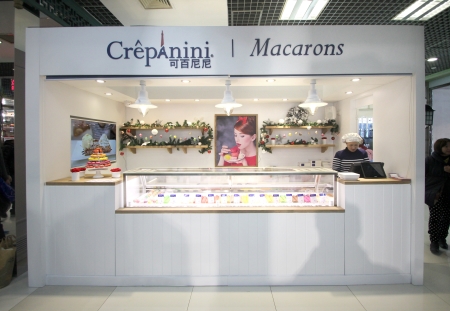
The 5 Star Plus Retail Design Approach
We understand that size isn’t everything—it’s the experience you create. Our team is committed to optimizing compact environments, ensuring every inch of your retail footprint supports your brand’s story, enhances product visibility, and delights your customers.From conceptualization and layout planning to technology integration and brand-centric design, we help you transform micro-retail spaces into big brand statements that resonate with today’s urban consumer.
Reach out to our team at 5 Star Plus Retail Design to learn more about crafting impactful micro-retail experiences that enhance your brand presence.
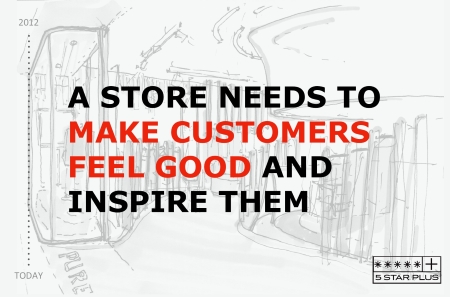 > back to top of page
> back to top of page

Retail Trends to Watch in 2025: The Future of Shopping Experiences
January 24, 2025
The retail industry is set to experience transformative change in 2025. With advancements in technology, shifting consumer expectations, and an increasing desire for personalized and immersive experiences, the retail landscape is rapidly evolving. Retailers must adapt to these shifts to remain competitive. Here’s a closer look at the trends that will shape the future of retail in 2025.
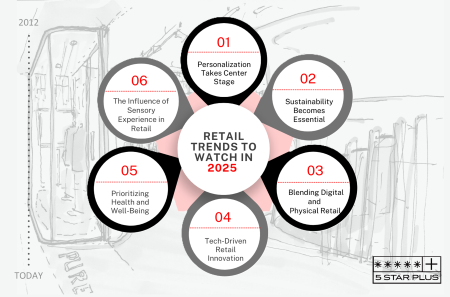
Personalization Takes Center Stage
Personalization will be at the forefront of retail strategies in 2025. According to a recent study, 73% of consumers consider personalized rewards programs important, but only 60% believe that current personalization efforts are sufficient. This highlights a significant opportunity for brands to improve how they tailor experiences for their customers. AI technologies enable retailers to offer personalized recommendations based on customer data. However, they must be transparent about data usage to gain customer trust.
Sustainability Becomes Essential
Sustainability will become a core value for retailers in 2025, and consumers will continue to favor eco-conscious stores. In fact, 79% of consumers say they prefer shopping at stores that prioritize sustainability.
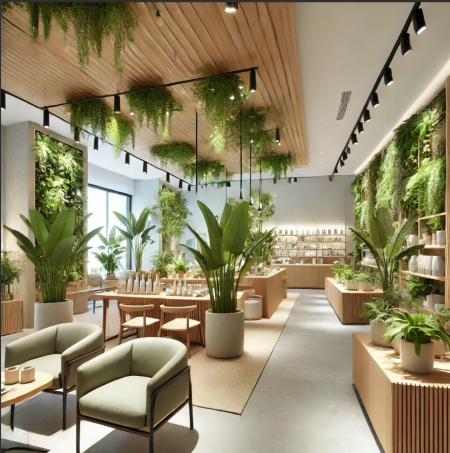
Image Source: AI
Omnichannel Shopping: Blending Digital and Physical Retail
In 2025, omnichannel shopping will be a fundamental expectation. Research shows that shoppers often use different shopping channels for various purposes. Many may research products online but prefer to experience them in-store. This underscores the need for seamless integration between digital and physical touchpoints.To meet these expectations, retailers will enhance their click-and-collect services by adding features like dedicated drive-through lanes and smart lockers for round-the-clock access to purchases.
Augmented reality (AR) and virtual reality (VR) will also play a larger role in enhancing the shopping experience. Studies show that 71% of consumers would shop more frequently with brands offering AR experiences. Retailers will allow customers to virtually try on clothes or preview how products, like furniture, will look in their homes before making a purchase.
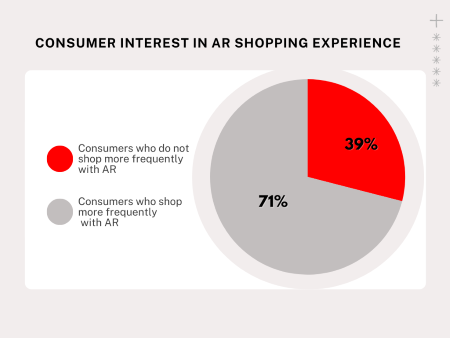
Tech-Driven Retail Innovation
Technology will continue to revolutionize the retail industry in 2025. From cashier-less checkout systems to AI-driven inventory management, tech innovations will streamline operations and improve customer satisfaction. Companies like Amazon Go have already set the stage with their cashier-less stores, and more brands will follow suit by integrating RFID technology and self-checkout systems.
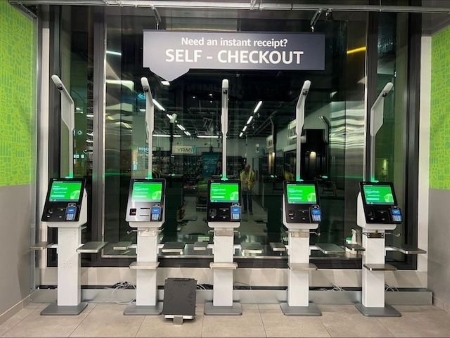
Image Source: Amazon
Prioritizing Health and Well-Being
In 2025, health and well-being will be integral to the retail experience. Consumers are increasingly looking for shopping environments that promote relaxation and stress relief. Retailers will design stores with wellness in mind—featuring improved air quality, calming lighting, and layouts that foster a soothing shopping experience.
Biophilic design, which incorporates natural elements like indoor plants and natural lighting, will be key to creating spaces that promote well-being.
The Influence of Sensory Experience in Retail
The role of music and ambiance in influencing consumer behavior will become more sophisticated by 2025. A recent survey found that 66% of adults believe the type of music in a store affects their purchasing decisions. Retailers will increasingly fine-tune the in-store atmosphere based on customer demographics, time of day, and even the weather. For instance, more upbeat tunes may be played during busy weekends, while soothing music could encourage longer visits during quieter times.
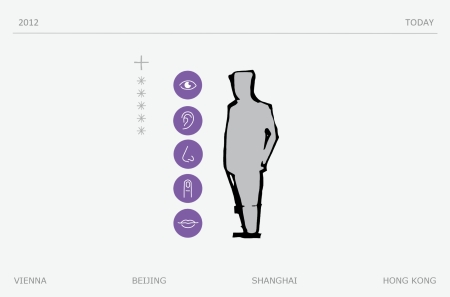
It’s not just music that will matter—lighting, scent and even temperature will be carefully curated to create an inviting environment. Retailers who master this multi-sensory approach will find an edge in attracting and retaining customers.
Conclusion: The Future of Retail
Retail in 2025 will be characterized by innovation, personalization, and sustainability. To stay competitive, brands will need to embrace technological advancements while creating tailored experiences that resonate with customers. The shift towards omnichannel retail, sustainable practices, and health-conscious environments will redefine the shopping experience, blending convenience with a greater focus on customer well-being. Retailers who adapt to these trends will be best positioned to thrive in an increasingly complex and customer-driven marketplace.
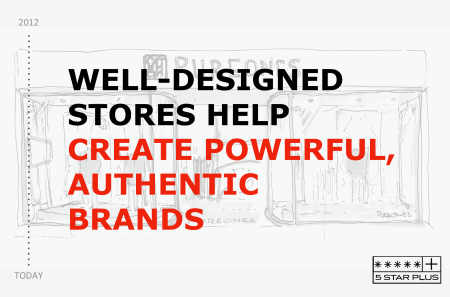 > back to top of page
> back to top of page

The Mystery of the Store Design Process uncovered
December 31, 2024
For many people, it is neither obvious nor traceable how designers create a store design for a brand. The whole underlying design approach is a mystery to them. There is, in fact, a standard process which we have outlined in the following paragraphs. It is important to note that for a store design project to be successful, all of the below stages are imperative and equally important.
1. The Client Brief
A project generally starts with a client brief. This is a document created by the brand listing the background, expectations, and limitations of the store design project. Sometimes, the design team meets with the client several times before writing all information up into one document becoming the client brief. The client brief usually needs to be signed by the brand and becomes the basis for all future design and project related work.
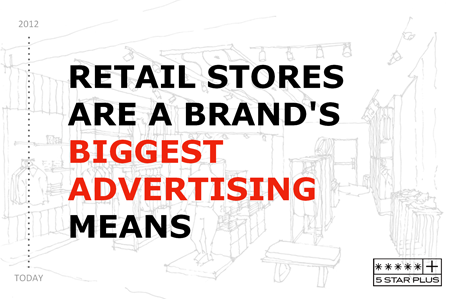
2. The Information Gathering & Analysis Phase
During this phase, the design team collects information about the background of the client and project, does a site survey and analysis, conducts market research about the products and competitors, and looks for potential inspirations which could be suitable for the store design project. Sometimes, the designers will ask the brand to provide additional information or fill out a questionnaire. This allows them to better understand the client company's strategic and marketing objectives, and involve stakeholders from different client departments. The analytical work done at this stage usually also includes a space analysis, evaluation of the work flow in the store, as well as diverse charts and visual representations.
It is very important that the brand's marketing goals and strategic objectives are well understood by the designers considering a store's design is as important as advertising in communicating a message to customers. Therefore, sufficient time needs to be spent by both the design team and the client on discussing the brand identity, heritage and proposed values.
3. The Preliminary Design
Based on the collected information and analysis, the designers create potential spatial layouts and concept development sketches. The goal is to better understand the properties of the store space, the brand characteristics, and create possible concept directions by bringing the various factors together.

Space planning also includes identifying strategically important areas in the store. This can include positions for signage, the logo, a brand story wall, and/or a featured product display.
Once the conceptual direction of the store design project becomes more concrete, the designers create a preliminary design scheme. This includes the proposed style, color scheme, as well as some preferred materials and finishes to be used in the project. This preliminary design concept then needs to be discussed and agreed on between the brand and the design team. Everything to be designed from here on should be according to the agreed design concept.
4. The Detailed Design
After the design concept is confirmed, the design team can start with the detailed design development: the creation of 3D visuals, technical drawings, and selection of products.

3D renderings (visuals) are usually created of views of the fa?ade and different interior perspectives. Technical drawings include different floor plans with furniture, elevations with fixtures and furniture, detail drawings and furniture specification drawings. The design team will select suitable materials and compose a sample board, as well as producing prototypes of fixtures when required.
A very important part of a store's design is the lighting scheme which has to be confirmed at this stage. The designers will create a lighting plan and select suitable products. At the same time, the amount and positioning of light switches, electrical power outlets, telephone and internet ports, speakers, and alarm systems have to be confirmed and marked on the respective plans.
To complete the set of technical drawings required for a design submission to the retail landlord or fire protection department, a set of electrical and fire protection plans also needs to be prepared.
Summary
As in most cases, frequent communication between the brand and the design team is key to the success of the project. It is important that both parties understand the steps of the store design process and are aware of each other's expectations. In addition, designers need to ensure that sufficient time is spent during the information gathering and analysis phase to guarantee that all options are considered and that the client is presented with the best possible store design solution.
> back to top of page

2024 in Review: Celebrating the Best Moments at 5 Star Plus Retail Design
December 31, 2024
2024 has been a transformative year for many, including us at 5 Star Plus Retail Design. It has also been a year filled with exciting projects, activities, and opportunities for which we are extremely grateful. Here’s a snapshot of our highlights:
Our Project Highlights in 2024
Our favorite exhibition stand design and production projects include stands and pavilions for the UK at the China International Consumer Products Expo and China Beauty Showcase, a stand design for Vienna Airport, and the execution of the Austrian Pavilion at FHC and Prowine, and AZO China.
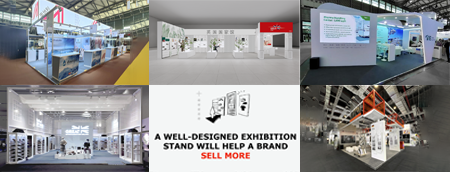
Brand design and design standard development projects included work for Swiss Alps Mall, SIKA, and two other international clients.
We also enjoyed executing a number of event projects such as the Highland Games, Christmas Market, and Christmas Gala organized by the British Chamber of Commerce, as well as an event with a small exhibition for UNICEF.
Awards & Celebrations
In February 2024, we were awarded Bronze in the category POS & Exhibition Architecture at the prestigious Austriacus Award ceremony, Austria’s Federal Advertising Awards.
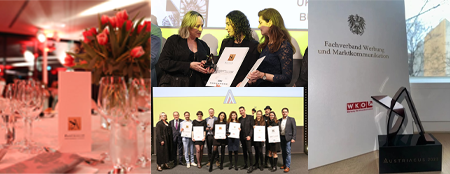
The awarded project was the design of the UK Pavilion at the China Beauty Expo. Over 2500 projects had been submitted in 12 categories across the different Austrian federal states. A jury selected the best works in two rounds. We feel absolutely thrilled and privileged to have received this prize among such a large number of high-quality design works.
Team Activities
Our teams in Beijing, Shanghai, and Vienna met several times during project executions and team activities. Here are a few selected pictures.
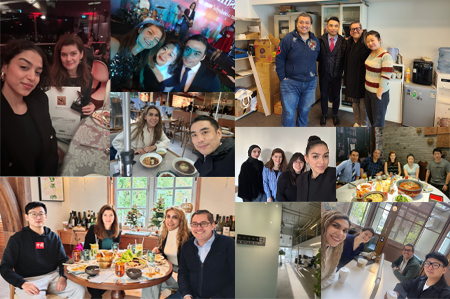
We look forward to 2025 and what the new year will bring. We would like to wish our clients, partners, and friends a year full of prosperity, happiness, and good health!
> back to top of page

Success Factors for Events: Production of the British Chamber’s Christmas Market and Gala
December 30, 2024
For the 5th time, 5 Star Plus Retail Design had the privilege of executing BritCham’s immensely popular Christmas Market and Christmas Gala events. As in past years, both events sold out within a few days after ticket sales started.
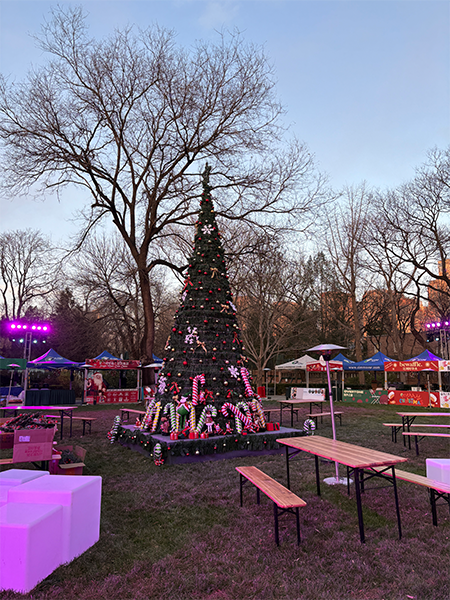
The desire to celebrate Christmas with the community in a festive environment, coupled with the exceptional organization and community-building skills of the BritCham team, are the two key factors that make these events so successful. Additionally, several other aspects are crucial from an event production standpoint.
1. Customer Flow
From a spatial perspective, it's important to balance the placement of key areas throughout the layout and identify hot spots. Such areas can include photo backdrops, entrance and ticket check points, food and beverage stalls or counters, stages, or key feature items where people are likely to gather and take photos.
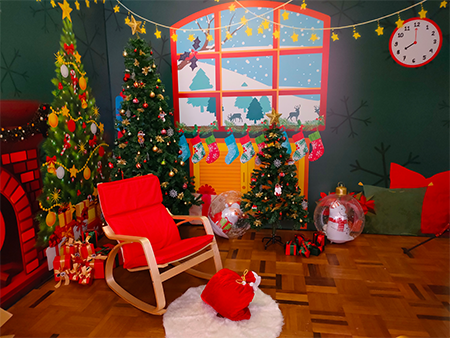
The flow of movement should feel natural, with always another element or area to discover. Effective layouts draw people toward the back, ensuring enough space for attendees to move around. It's crucial to be aware of legal requirements, safety routes, and fire protection regulations.
2. Lighting
An event will only feel lively and successful if the lighting concept is well-designed. Lighting designers distinguish general lighting, ambient lighting, task lighting, and accent lighting. All these lighting needs must be considered for a successful event project. Visitors should be able to see adequately, with contrasts between brighter and darker areas, and key features usually highlighted. Especially in events, color-changing and slowly moving ambient lights create the right mood and help people relax. Areas like stages with choirs require functional and flexible lighting.
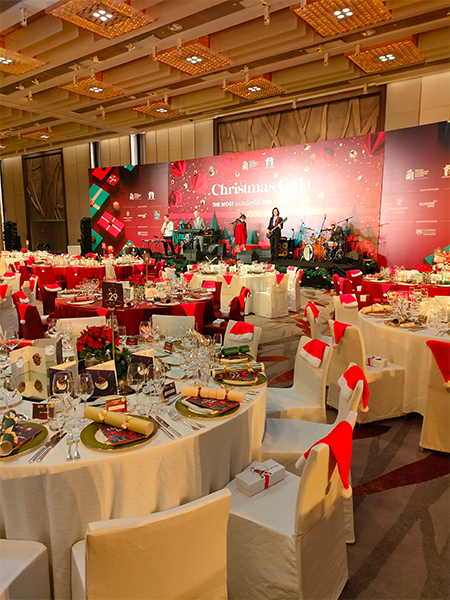
3. Sound System and Music
In addition to lighting, having a good sound system is key. The quality of the sound system is important, as is background music in all areas where people gather, creating a great and relaxing atmosphere.

4. Access to Beverages and Food
Visitors arriving at an event are often stressed due to bad traffic conditions, lines at the entrance, or nervousness about attending a formal event alone. Providing access to beverages near the entrance can alleviate this challenge and give visitors a great first impression. This also applies to food for certain types of events.
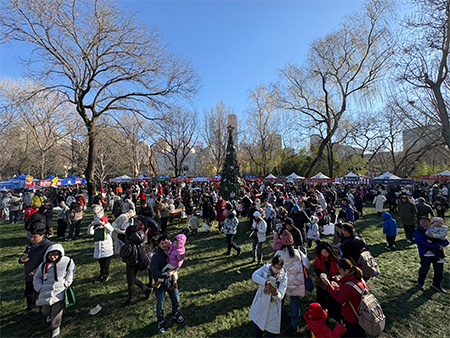
5. Rundown and Dynamics
Finally, planning and controlling the mood and dynamics of the event overall are key aspects in ensuring its success. Creating a rundown with program points distributed throughout the event duration is crucial. It's also important to ensure that visitors are aware of the program and where activities will take place.
In summary, creating a great dynamic and an environment where people feel enticed to relax are key to the success of any event projects. We look forward to sharing more information with our next event projects soon!
> back to top of page

Showcasing Our Work: A Visual Journey Through Our Store Designs
November 28, 2024
This article explores some of our favourite store design projects, showcasing the innovative and bespoke solutions we’ve crafted for brands. Each project exemplifies our commitment to translating brand identities into captivating physical spaces that leave a lasting impression.
1. HLA
HLA is an international retail chain brand based in China with over 6,000 stores worldwide. 5 Star Plus Retail Design was tasked with developing a 600 sqm store de-sign concept for HLA’s main fashion brands in Kuala Lumpur’s newly built, luxury-positioned TRX tower. The store design concept had to include new conceptual, high-impact elements besides upgraded looks for HLA. It also serves as a new standard for large-format stores in Malaysia. It was key to maintaining the HLA signature feel while creating a modern and dynamic look with depth. Aluminum, wood, acrylic, and metal mesh were used to achieve this.
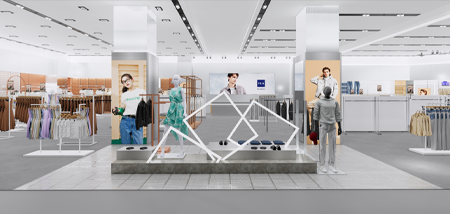
For the female zone, the core of the original design language was maintained, updated, and extended with rose gold, mauve-colored elements, stone, and intricate patterns. The feel is premium, warm, and elegant.
To set the store apart from other locations, a locally-inspired 3D-printed signature element with concealed, color-changing LED lighting was designed for the façade. High-impact, engaging displays were created for the 3-meter-deep welcome zone. The store opened in December 2023.
2. KJUS
KJUS is a Swiss-based, luxury sportswear brand with stores in over 30 countries. The brand opened their first flagship store in Beijing, China, in December 2019. 5 Star Plus Retail Design created a store identity design concept that fits the future-oriented vision of the brand and the high-tech clothing. We wanted to create a futuristic, high-tech and luxurious design concept. To achieve this, we used cool, modern, and high-end materials such as metal and stone. Special lighting effects and technological advancements highlight product features, key products and collections. The design result successfully positions KJUS and its products as a luxury brand.
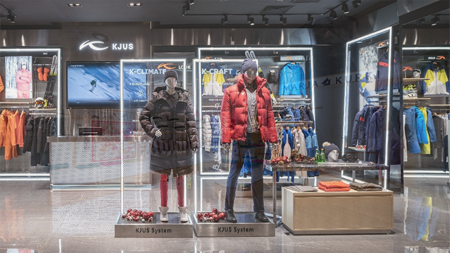
3. Marja Kurki concept store design Marja Kurki
Marja Kurki is a lifestyle brand from Finland that focuses on providing high-quality and minimalistic accessories. For their first store in Nanjing’s Golden Eagle Plaza, During the Covid outbreak, 5 Star Plus Retail Design created a concept design for the 25 sqm space that was inspired by a unique and timeless design of Marja Kurki scarfs, incorporating a minimalistic and light design to match brand identity. The use of artificial marble and bronze textures combined with modular fixtures help to shift the store design from more traditional feeling to a lighter modern one. Elegant equip-ment drives the customer’s attention to the product itself.
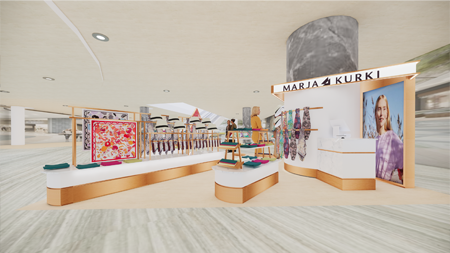
4. Pureones concept store design Pureones
5 Star Plus Retail Design created a concept design for the luxury Chinese clothing brand, PUREONES. Considering the brand’s identity of forward thinking Chinese luxury clothing, tied to the traditional roots of Chinese culture was of high priority when coming up with the concept design. This retail concept design was inspired by the curves found in Chinese rice fields, rivers, mountains and forests that follow the Taoism way, allowing the retail store design flows naturally from one part to the next. Using high-quality wood and stone materials and metals to tie natural elements to the physical space and creates the feeling of a natural oasis, transporting the customer to a calming, open environment.
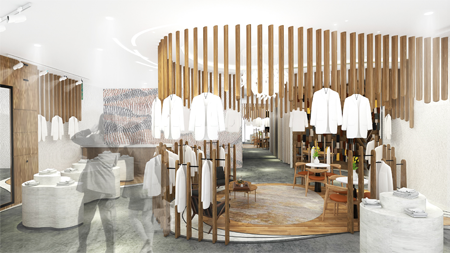
Conclusion
Each of these store design projects reflects our passion for seamlessly blending design innovation with brand identity to craft unique and immersive retail experiences. From creating high-impact, locally inspired elements for HLA to infusing natural and cultural motifs into Pureones’ design, we have successfully brought diverse brand vi-sions to life in distinct and memorable ways.
Whether it's embracing futuristic and high-tech elements for KJUS or channeling minimalistic elegance for Marja Kurki, our work consistently prioritizes capturing the essence of each brand while enhancing customer engagement.
If you’re interested in collaborating with us to create a visually stunning and im-pactful retail space for your brand, contact us to discuss how we can help bring your ideas to life.
> back to top of page

Showcasing Our Work: A Visual Journey Through Our Exhibition Stands
November 11, 2024
This article highlights some of our recent exhibition Stands projects, showcasing the creative designs we’ve developed for global brands. Each project reflects our approach to bringing brand identities to life and creating memorable experiences.
1. UK Department for International Trade
Inspired by the “English rose”, a flower well-known everywhere in the world, 5 Star Plus Retail Design developed and executed an exhibition stand design concept for the UK Pavilion at China Beauty Expo in Shanghai featuring 12 UK brands. This project was honored with the Austriacus Bronze Award, recognizing the creativity and impact of the stand's design.
The English rose was also one of late Queen Elisabeth’s favorite flowers, and inspired a whole make-up trend with the same name. In the pavilion design, the rose is featured as an abstract, three-dimensional watercolor sculpture that also serves as a background for photos and events. Black-and-white sketches of plants like daffodils, clovers, and thistles are applied on the wall, the floor, and the furniture throughout the stand to underline the strength of UK beauty brands, which lies in organic, local, and high-quality plant-based ingredients.
The layout of the exhibition stand was divided into two main areas (exhibitor and business discussion area) with a branded main ally lined by LED strips along the floor and ceiling.
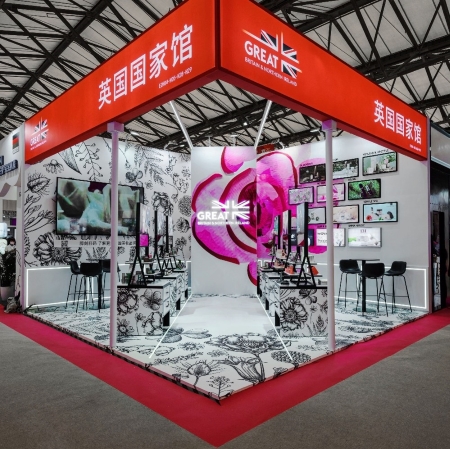
2. Schulthess
Schulthess, the Swiss brand with the inspiring slogan „Dreht vor Freude” („Turn for Joy”) has brought their unique vision to life. The event happened at the highly anticipated Design Shanghai trade fair, and 5 Star Plus Retail Design was thrilled to be a part of it! As interior architects and project managers, we were tasked with executing the client's design concept and managing the production and installation to ensure a seamless process. The entire exhibition stand is modern and open, perfectly representing the brand's philosophy. Carefully selected high-quality materials, a stunning lighting concept, and luxurious furniture all come together to create an atmosphere of elegance and sophistication. Hula hoops made of solid wood serve as eye-catchers, adding a playful touch to the stand and drawing visitors in.
The entire booth concept creates a fitting backdrop to emphasize the uniqueness of Schulthess' products and showcase them perfectly. We are proud to have been a part of this fantastic project and to have helped bring Schulthess' vision to life by creating their first exhibition stand in China.
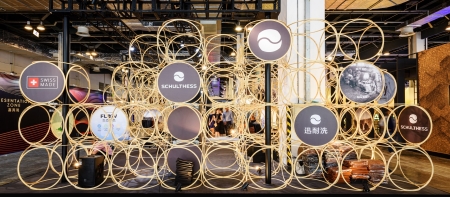
3. AZO China
created a high-impact exhibition stand design standard for AZO China. The objective was to develop a flexible and modular stand design based on the global brand identity that could be adapted to different stand sizes at exhibitions in China. Reusing as many components as possible was crucial for AZO China to meet their sustainability principles. The concept had to showcase the quality of AZO’s products and their corporate culture through an aesthetically impressive yet minimalist design. Inspired by the company’s background, the design concept features a high-tech industrial feel with design elements resembling modern factories and warehouses.
The brand colors orange and white were combined with aluminum and stainless-steel surfaces to reflect the industrial sector. The AZO logo and warehouse structures served as inspiration for the cubes - the feature elements of the stand design. The exhibition stand design is based on simple, clean lines that draw the focus to the stand’s most important areas: the story walls, the product showcase area, and the experience zone, which provide maximum customer experience. Orange platforms were used to highlight the products and attract attention. The result is an exhibition stand design where the atmosphere, messages, information visuals, multimedia, and points of interest are aligned to provide an authentic “AZO experience”.
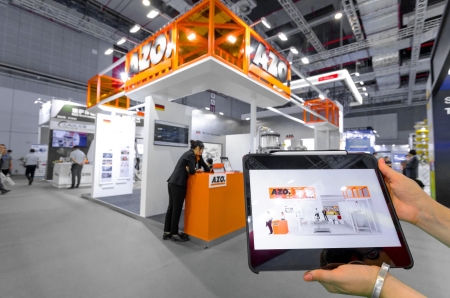
4. UK's Department for Business and Trade
From April 14-18, 2024, the UK’s Department for Business and Trade hosted a UK Pavilion at China International Consumer Products Expo showcasing 14 British premium fashion and lifestyle brands. After winning the project tender, we were commissioned to design and build the pavilion.
The pavilion design concept, a well-balanced fusion of the classic and the modern, was based on UK architectural inspirations and aimed to create a contemporary design aesthetic. Drawing inspiration from the elegant lines of UK Georgian architecture, the design team developed a showroom-style space with a premium look. The use of semi-transparent mesh fabric on the walls lent a stylish high-end fashion feel, while LED strip lighting around architectural key features added a touch of innovation and strengthened the visual impact.
The pavilion design was open towards the front and featured entrances on all sides. A multi-category feature display island in front of a branded backdrop with the GREAT logo served as a key visual focus to attract people into the exhibition stand. Along the walls and in the center of the space, the 14 brands displayed their fashion, lifestyle, and accessory products. The UK pavilion was executed in a white-only color scheme for a clean and minimalist look to reflect both the country's position and sector of the project.
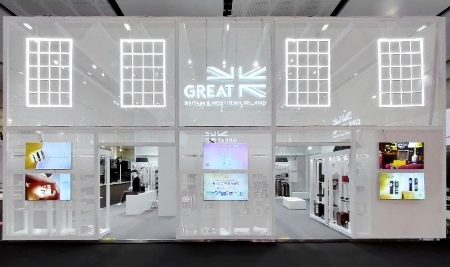
5. Vienna Airport
We are proud to have contributed to the booth development for Vienna Airport at the Transport Logistic China / Air Cargo China expo in Shanghai from June 25-27, 2024. Together with the lead agency, Moyo Creative, we crafted an impactful exhibition stand design. Our goal was to create a design that embodies the brand's DNA and draws in visitors.
The 36 sqm stand featured a clean, minimalist aesthetic with modern and innovative elements. At its core was a large LED screen displaying a video of Vienna Airport City's infrastructure, developed by Moyo Creative. LED strip lighting highlighted the stand's shapes, inspired by the angles of airplane take-offs and landings, as well as the brand's logo. The overall ambiance was warm and inviting, encouraging visitors to explore.
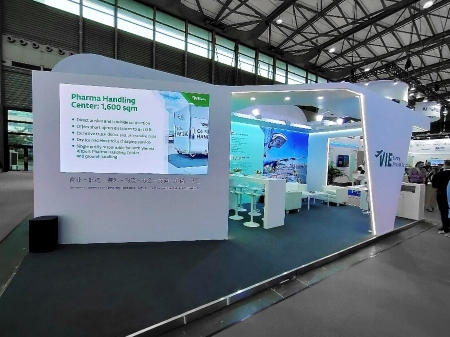
6. UK's Department for Business and Trade
In August 2024, the UK’s Department for Business and Trade presented British beauty brands at the Beauty Showcase in Hangzhou, China. The 40.5 sqm Pavilion, designed by 5 Star Plus Retail Design, was created to promote the natural, clean, and ethical values of UK beauty products. The Pavilion featured display spaces for 14 brands, designed to attract and engage the rapidly growing Chinese market.
Inspired by traditional British apothecaries, the design combined classic elements with modern aesthetics. White surfaces, black metal accents, and foliage-inspired graphics created a clean, sophisticated space. Strategically placed greenery added a touch of vitality, connecting with both British and Chinese cultural elements. This thoughtful design made the Pavilion a key highlight of the showcase, effectively representing the quality and innovation of British beauty brands.
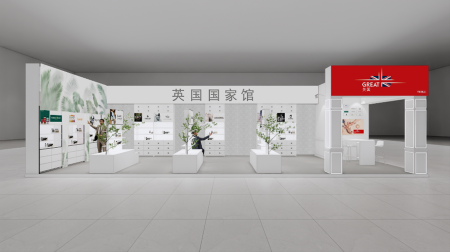
Conclusion
Each of these projects showcases the unique synergy between design innovation and brand identity, brought to life through our commitment to creating memorable and immersive experiences. From embracing elements of cultural heritage, as seen in the UK Pavilion, to capturing brand philosophy with minimalism and elegance in the Vienna Airport stand, we’ve had the privilege of bringing these diverse visions to life in distinctive and impactful ways.
Our journey through these exhibition stands demonstrates the power of well-crafted design to capture attention, convey values, and create lasting impressions. As we continue to work with global brands to bring their visions to reality, we are excited to keep pushing creative boundaries and setting new standards in exhibition design.
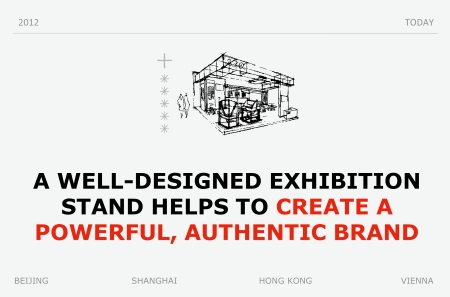
If you're interested in collaborating with us to create a unique, impactful exhibition stand for your brand, contact us to discuss how we can bring your vision to life.
> back to top of page

Brick and Mortar Revival: How Innovative Approaches Are Bringing Physical Stores Back to Life
October 30, 2024
As digital shopping continues to thrive, one might assume traditional stores are a thing of the past. Yet, a PwC report from 2024 found that 57% of consumers still prefer to see, touch, and feel items before buying them, indicating a strong preference for physical stores. This point is also evidenced by a Statista report highlighting that 72% of consumers shop in stores on a weekly basis, emphasizing the importance of engaging in-store experiences.
Brick-and-mortar stores are not only surviving but are finding fresh, innovative ways to thrive. Retailers have adapted, evolving their spaces and integrating technology and experiences beyond online shopping.
Here’s how modern approaches are breathing new life into physical stores and reshaping the future of retail.
1. Blending Physical and Digital: The Omnichannel Experience
One main way brick-and-mortar stores stay relevant is by merging physical and digital experiences, creating a seamless “omnichannel” approach. Today’s customers expect flexibility: they want to browse online, try in-store, and have options for delivery or pick-up.
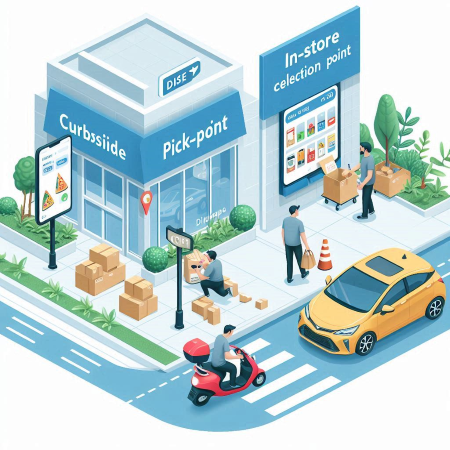
Examples:
Stores like Target and Walmart have expanded “buy online, pick up in-store” services, allowing customers to order from the comfort of their homes and pick up the same day.
Technology integration:
QR codes and augmented reality (AR) apps enable shoppers to visualize products in their own space before making a purchase.
By combining online convenience with the tactile experience of a physical store, retailers are bridging the gap between e-commerce and traditional shopping.
2. Experiential Retail:
Creating an In-Store Experience Worth the Trip
Experiential retail focuses on turning a simple shopping trip into a memorable experience, encouraging customers to interact with products in a way they can’t online. By adding activities, workshops, and brand events, stores are becoming more than just places to buy—they’re destinations.
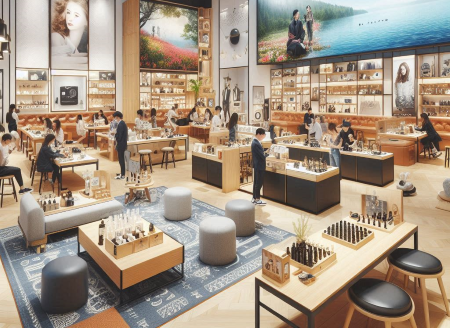
Brand examples:
Apple has long embraced this with “Today at Apple” sessions, where customers can learn new skills related to Apple products. Similarly, outdoor brands like REI offer in-store classes and events, from hiking workshops to yoga sessions.
Results:
Customers are more likely to spend time and, ultimately, money in stores that offer them something unique, fun, or educational.
By creating an immersive experience, stores are building stronger brand loyalty and drawing customers away from their screens.
3. Leveraging Technology for Enhanced Customer Engagement
Technology is playing a transformative role in how physical stores operate. Beyond self-checkout kiosks and digital price tags, cutting-edge tech is being used to personalize shopping experiences and streamline operations.

Personalization through AI:
Some stores use artificial intelligence to provide tailored product recommendations, much like online shopping platforms do. Sephora, for example, uses AI-powered Color IQ technology to recommend makeup shades to match customers' skin tones.
Augmented Reality (AR):
IKEA and other furniture retailers use AR in-store and online so customers can see how furniture would look in their own homes before buying.
Smart Mirrors and Virtual Fitting Rooms:
Clothing brands like H&M and Nike are experimenting with smart mirrors that allow shoppers to “try on” clothing digitally, speeding up the process and enhancing convenience.
These technologies not only improve the customer experience but also give retailers valuable insights into their shoppers' preferences and behaviors.
4. Sustainable Retail Practices: Meeting the Demand for Eco-Conscious Shopping
As consumers become more environmentally conscious, many brick-and-mortar stores are adopting sustainable practices to attract these shoppers. This trend is also helping to build a positive brand reputation and drive customer loyalty.

Eco-friendly practices:
Brands like Patagonia and The Body Shop prioritize sustainable materials, offer recycling programs, and educate customers on reducing waste.
Secondhand and Resale Initiatives:
Some retailers, such as Urban Outfitters, have begun offering secondhand and vintage sections in-store, appealing to eco-conscious shoppers and the growing resale market.
These environmentally focused efforts not only meet customer demand but also reinforce a brand's commitment to social responsibility.
5. Smaller, Targeted Stores and Pop-Ups: Expanding Reach without Oversaturating
In response to changing customer habits, many brands are exploring smaller, strategically located stores or pop-up locations to reach a wider audience while controlling overhead costs.
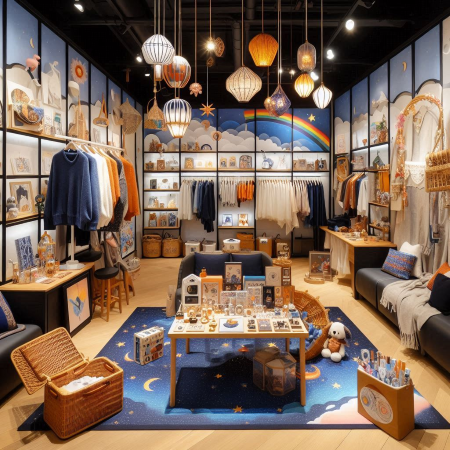
Pop-ups for quick engagement:
Seasonal pop-ups and limited-time stores allow brands to create urgency, excitement, and exclusivity. Companies like Glossier have successfully used pop-ups to create a buzz, testing markets before committing to a permanent location.
Localizing product selection:
Smaller stores allow brands to focus on carrying products specifically tailored to local demographics, maximizing appeal and reducing waste. With the flexibility of smaller formats, brands are keeping customers engaged in fresh ways, regardless of geographic limitations.
Conclusion
Brick-and-mortar stores are no longer just about transactions; they’re about creating memorable experiences, fostering community, and meeting the evolving demands of modern shoppers. By blending digital convenience with tactile, personalized experiences and sustainable practices, today’s physical stores are thriving in ways unimaginable even a decade ago.
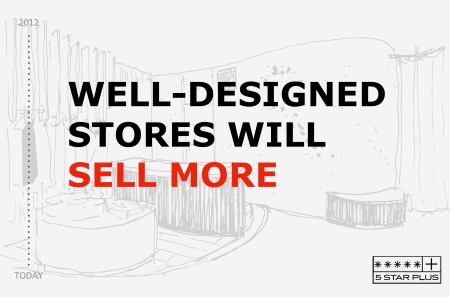
The physical store revival shows how resilience, adaptability, and innovation can keep traditional retail spaces not only relevant but central to the shopping experience.
> back to top of page

The Growth of AI in Retail: Streamlining Operations, Enhancing Customer Experiences, and Personalizing Shopping
October 25, 2024
Artificial Intelligence (AI) has rapidly emerged as a transformative force in retail, revolutionizing how businesses operate and engage with customers. Retailers leverage AI to streamline operations, enhance customer experiences, and offer highly personalized shopping experiences. our article explores how AI shapes the retail industry and drives significant growth.
Streamlining Operations with AI
One of the primary ways AI is transforming retail is by optimizing operations. AI-powered systems can automate various aspects of inventory management, supply chain logistics, and demand forecasting, significantly reducing manual work and human error. For instance, AI algorithms can predict inventory needs with high accuracy, ensuring that stores are stocked appropriately to meet customer demand while minimizing excess inventory. This reduces the costs associated with overstocking and stockouts.
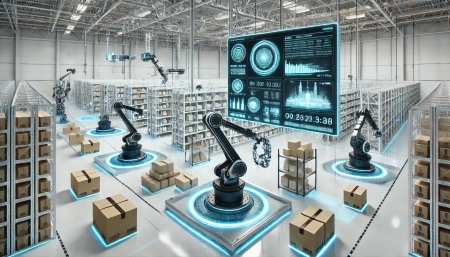
Image Source: created with AI
Additionally, AI is improving supply chain efficiency by providing real-time insights into shipping and logistics. Machine learning models can predict potential disruptions and recommend alternative routes or modes of transport, allowing companies to respond quickly to unforeseen issues. This real-time adaptability enhances the overall efficiency of the supply chain, leading to faster delivery times and increased customer satisfaction.
Enhancing Customer Experiences
AI plays a pivotal role in enhancing the in-store and online shopping experiences. Chatbots and virtual assistants powered by AI can provide instant customer support, answering common queries and assisting with purchases at any time of day. This 24/7 availability increases customer convenience and helps retailers save on staffing costs. By understanding how customers move through the store, retailers can optimize store layouts, improve product placement, and create targeted marketing campaigns. Some stores are even using AI to enable cashier-less checkouts, where customers can simply grab items and leave the store, with purchases automatically charged to their accounts.
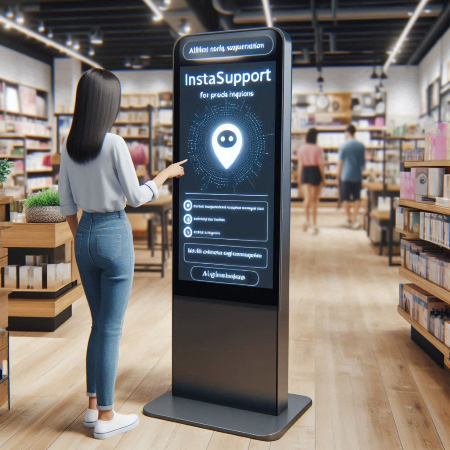
Image Source: created with AI
Personalizing the Shopping Experience
Personalization is a significant trend in retail, and AI is at the heart of it. Retailers are using AI to analyze customer data, such as browsing history, past purchases, and social media activity, to create highly personalized shopping experiences. This can manifest in personalized product recommendations, tailored promotions, and individualized marketing messages that resonate with customers on a personal level.
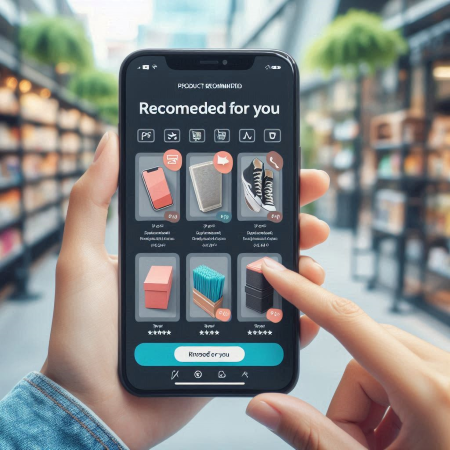
Image Source: created with AI
AI algorithms can also predict future buying behavior by analyzing patterns and trends in the data. For example, if a customer frequently buys skincare products, the retailer might send personalized offers on new skincare lines or related products. This level of personalization not only improves the customer experience but also increases sales by encouraging repeat purchases.
Challenges and Considerations
While AI offers many benefits for retailers, some challenges must be addressed. Privacy concerns arise as AI systems require access to large amounts of customer data, making compliance with data protection regulations essential.
Algorithmic bias is another issue, as AI algorithms trained on biased or non-inclusive datasets may produce discriminatory outcomes, especially against underrepresented groups like LGBTQ+ individuals. For example, facial recognition technology in retail may struggle to accurately identify transgender or non-binary customers, potentially leading to uncomfortable experiences. To address these issues, retailers should use inclusive datasets, audit algorithms regularly, and involve diverse perspectives in AI development.
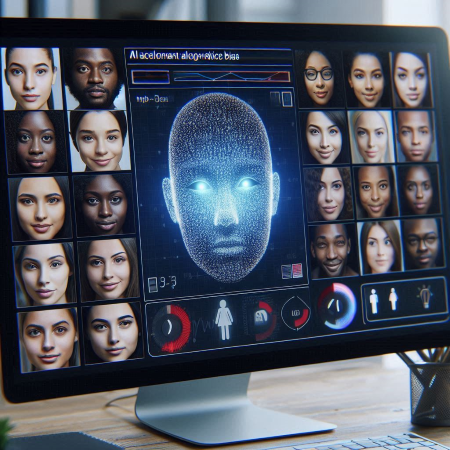
Image Source: created with AI
Aside from discrimination risks, the initial cost of implementing AI technologies can be a barrier, especially for smaller retailers. Though AI offers long-term savings and potential revenue growth, the upfront expenses for developing, deploying, and maintaining these systems can be prohibitive. Moreover, AI systems require ongoing updates and maintenance to continue functioning optimally and to address any emerging biases or discriminatory behaviors.
The Future of AI in Retail
The future of AI in retail looks promising, with the potential to drive even more innovation. As AI technologies continue to evolve, retailers can expect more sophisticated tools for predicting customer behavior, managing inventory, and automating tasks. The integration of AI with other emerging technologies such as augmented reality (AR) and the Internet of Things (IoT) will further transform the shopping experience, creating new growth opportunities.
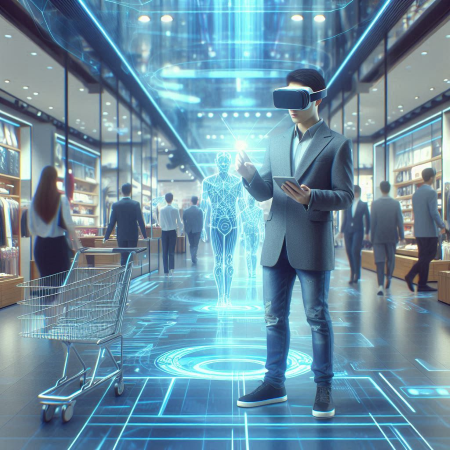
Image Source: created with AI
> back to top of page

The Art of Storytelling in Retail Design: Creating Immersive Shopping Experi-ences
October 11, 2024
In a world where online shopping offers endless convenience, physical retail spaces have evolved into destinations that invite customers into a brand’s story. This transformation shows the power of storytelling in retail design, where every detail—from layout to materials—creates a narrative that resonates with visitors and deepens their connection to the brand.
At times, brands opt to tell their story in traditional retail stores. At other times, they may choose a temporary format like a pop-up store or an exhibition stand. We have selected three projects from this year that showcase a specific angle of storytelling.
1. The Brand Story and Retail Sector Positioning
A great example is the UK Pavilion at the Beauty Showcase in Hangzhou, where visitors stepped into a world that captures the essence of British beauty and craftsmanship. The design is a fusion of classic British apothecary aesthetics and modern elegance, with clean white surfaces and detailed wooden touches that evoke a sense of both heritage and innovation. This isn’t accidental—each design choice tells a piece of the story behind British beauty brands, emphasizing values like purity, naturalness, and ethical production under the "Made in Britain" banner.
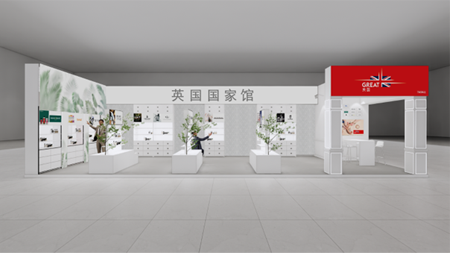
Much like how a beautifully designed retail store can immerse customers in a brand’s world, the UK Pavilion at the Beauty Showcase was more than just an exhibition stand; it was a narrative space. The carefully curated layout guided visitors through each display, inviting them to explore the unique stories of up to 14 different brands. This wasn’t simply a place to view products; it was an experience that made visitors feel like they were exploring the traditions and innovations of British beauty itself. The strategic use of greenery throughout the space, for example, wasn’t just decorative—it connected the theme of natural beauty to the Pavilion’s design, reinforcing the values of sustainability and wellness that are central to the brands on display.
2. Country Branding and Culture
Similarly, the design concept for a Swiss Pavilion drew inspiration from the Rubik’s Cube, symbolizing the diverse aspects of Swiss culture. Red and white cubes evoked the Swiss identity, while mirrored surfaces invited visitors to engage and share their experiences on social media. The slogan “This is Swiss Quality” reinforced the country’s reputation for excellence, while the open structure and iconic Swiss flag made the space inviting and memorable and a perfect basis for Swiss brands to display their products.
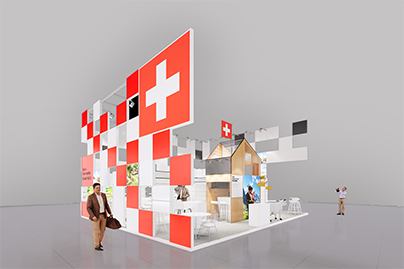
3. Country Branding and Sector Branding
The Austrian Pavilion concept design shown below told its story through shapes inspired by the snowy Alps mountains, and with a modern twist on traditional hut roofs. This unique feature drew visitors in, offering a blend of Austria’s natural beauty and contemporary style. It created a space that felt distinctly Austrian, inviting exploration and deeper engagement with the exhibiting winter sports brands.
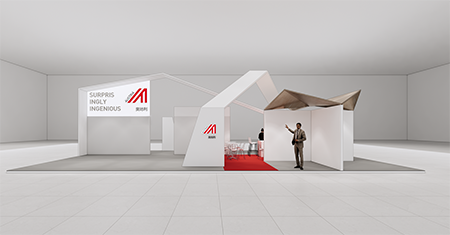
These examples show how storytelling in retail design can transform a space from a mere showcase into a meaningful journey. By creating an experience that resonates emotionally, brands can leave a lasting impression that draws visitors back time and again, turning each visit into a new chapter of their story.
> back to top of page

Shopping is Dead: How to Find Solutions to Low Shopping Enthusi-asm
September 30, 2024
Retail is in crisis. A key factor behind this is the changing consumer behavior and preferences, which several studies have attempted to analyze and map out. The study "Going Shopping is Dead" by Gianluca Scheidegger, Johannes Bauer, and Jan Bieser, published by the Gottlieb Duttweiler Institute, is likely the most comprehensive analysis of current shopping behavior in Central Europe. In this article, we’ll present the key findings and recommended solutions to address the issue. In recent years, shopping has shifted from being an enjoyable activity to a mundane task that many people view as a chore. Time stress, the rise of online shopping, and changing consumer behaviors have all contributed to this shift, leaving retailers grappling with declining enthusiasm and foot traffic. The excitement of browsing, discovering new products, and even the social aspects of shopping seem to be fading.
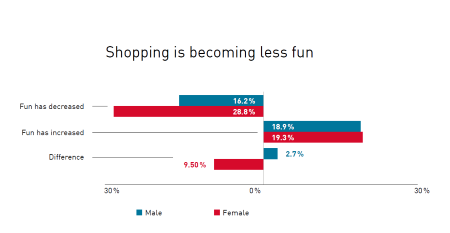
Image Source: GDI
In response to this, the retail industry must reimagine the shopping experience, making it faster, more convenient, enjoyable, and meaningful. By focusing on four key areas—Promptness, Proximity, Pleasure, and Purpose retailers have the opportunity to breathe new life into shopping and restore its appeal in the modern consumer landscape.
Problem: Time Stress and Shopping as a Chore
Most consumers experience time stress, as time has become a scarce resource due to the increasing demands of work, family, and leisure.
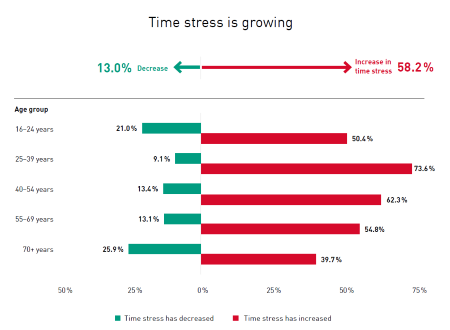
Image Source: GDI
For today's shoppers, shopping is no longer fun. For the majority, it feels more like obligatory housework rather than an enjoyable experience.
According to a survey, 85% of individuals generally prefer a quick and pleasant shopping experience rather than leisurely, aimless browsing. In general, people rather spend their time engaged in other activities than shopping. Only 15% enjoy shopping "purely for pleasure.”
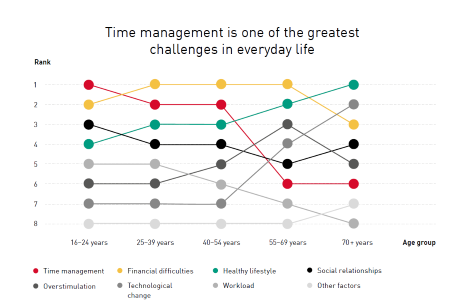
Image Source: GDI
Changing Consumer Behavior
Consumers prioritize flexibility, serviceability, and convenience in shopping as part of a busy lifestyle. Consumers have increasingly turned to online shopping, avoiding the time spent in brick-and-mortar stores. Overall, the time people spend shopping has declined in recent years.
A Crisis of Fun and Meaning
Shopping has lost its fun and meaning because of challenges like a tight budget, and shopping being perceived as repetitive & boring, taking all the joy out of enjoying innovative retail experiences. The increased sustainability awareness and conscious consumption are also leading to fewer shopping trips.
Resolution
The study proposes four solutions to reinvigorate shopping, referred to as the 4 Ps: Promptness, Proximity, Pleasure, and Purpose.
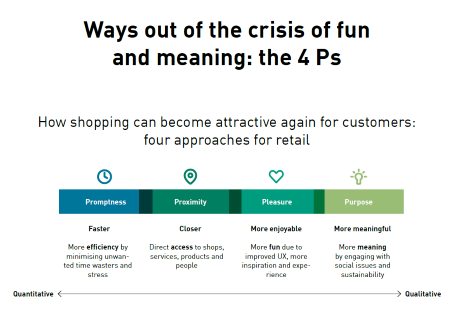
Image Source: GDI
Promptness (Faster Shopping)
Retailers must focus on speed and efficiency, minimizing waiting times and reducing stress. By streamlining the customer journey, retailers can make the process faster and more satisfying.Innovations like improved layouts, better logistics, and simplified digital experiences can cater to the modern consumer’s desire for efficiency.
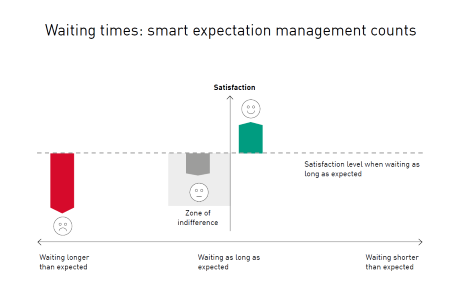
Image Source: GDI
Proximity (Closer Shopping)
Accessibility is key. Simply put, consumers just want the convenience of going shopping to places near them or ordering online and getting it almost immediately.
The expansion of local networks of stores and the development of urban logistics will make shopping more attractive, reducing the time needed for it.
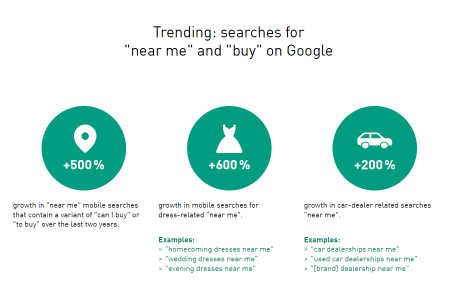
Image Source: GDI
Pleasure (More Enjoyable Shopping)
Retail experiences need to be more enjoyable to combat the crisis of fun. This can be achieved through better user experiences, inspirational store designs, and more engaging shopping environments.
Retailers should strive to bring back the joy of discovery and browsing through creative merchandising and personalized experiences.
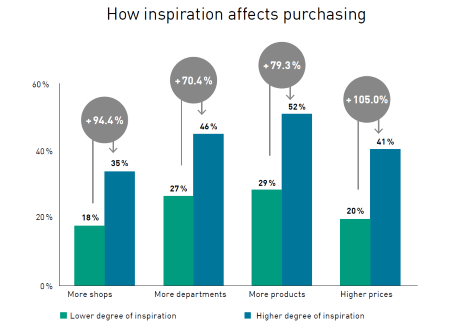
Image Source: GDI
Purpose (More Meaningful Shopping)
Meaningful consumption is on the rise. Retailers can align with consumer values by promoting sustainability and social responsibility, creating a sense of purpose in shopping.By focusing on meaningful experiences—whether through eco-friendly products or community-driven initiatives—retailers can attract conscientious shoppers.
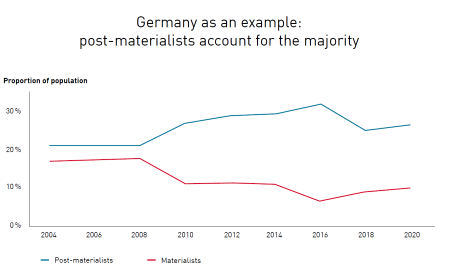
Image Source: GDI
Conclusion
The retail industry must act fast and adapt to modern consumers' changing needs. This needs to be done by offering faster, more convenient, enjoyable, and purposeful shopping experiences. By adopting the 4 Ps, retailers can restore the lost fun and meaning in shopping, making it relevant again in today’s fast-paced world.
Please click here to read the full article
> back to top of page

The Story Behind: Inspirations and Design of the UK Pavilion at Beauty Showcase in Hangzhou 2024
September 17, 2024
Entrusted by the UK’s Department for Business and Trade, 5 Star Plus Retail Design designed and executed the UK Pavilion at Beauty Showcase in Hangzhou 2024. The design concept drew heavily from a blend of traditional British apothecary aesthetics and modern design principles, creating a space that was both rooted in heritage and forward-looking. The initial mood board set the stage by emphasizing themes such as nature, cleanliness, and high-quality craftsmanship, all of which are integral to the identity of the British brands being showcased. The design team drew inspiration from classic British apothecaries, characterized by wooden cabinetry details, full-height rows of drawers, and an overall atmosphere of timeless expertise.
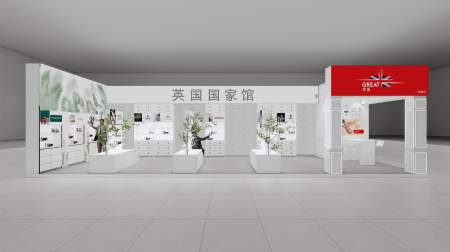
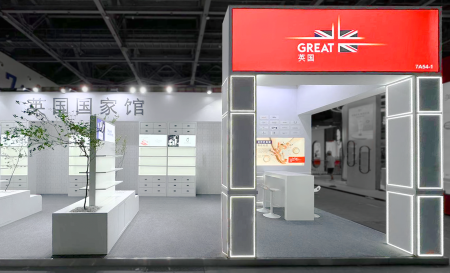
Executed in a minimalist color scheme of white surfaces accented with black metal details, the Pavilion exuded sophistication and modernity. White brick décor walls created a clean, polished look, while the shelving units, designed with powder-coated wooden units and integrated lighting, ensured that each brand’s products were prominently displayed. A foliage graphic was integrated into a lightbox above the display units, adding an artistic element that reinforced the Pavilion’s natural theme. The strategic placement of greenery throughout the space brought in a touch of vitality, connecting the design to both British and Chinese cultural aesthetics and enhancing the overall visitor experience.
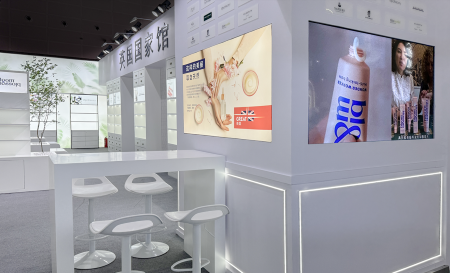
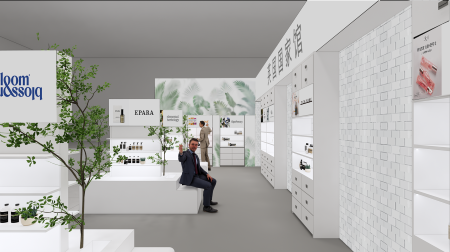
This thoughtful design approach resulted in a Pavilion that effectively communicated the quality and innovation of British beauty brands. The space was not only visually appealing but also functionally designed to encourage exploration and engagement, making it a standout feature at the Beauty Showcase and a powerful representation of the UK’s beauty industry in a global context.
> back to top of page

Online Retail Design Training for Professionals by the Managing Director of 5 Star Plus Retail Design
August 30, 2024
In a comprehensive six-week online course, Barbara Seidelsmann, Managing Director of 5 Star Plus Retail Design, will guide you through a 10-module program designed to equip retail brands with the essential tools to create compelling store concepts and enhance the in-store customer experience, ultimately driving business growth. The course begins in the third week of September.
For more information please contact us at: academy@5starplusretaildesign.com
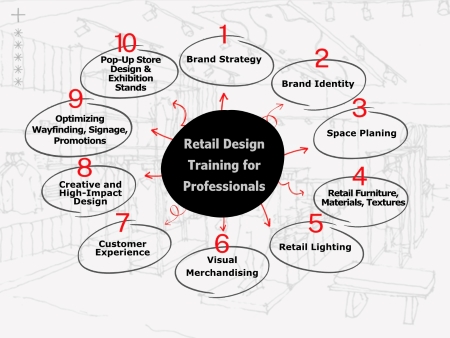
What You Will Learn:
- •This course will teach you how to develop high-impact store design concepts tailored to powerful, authentic brands. You’ll gain insights into strategies that not only resonate with customers but also boost sales.
Who This Training Is For:
- •Marketing Professionals: Those looking to deepen their understanding of store concept design, including key aspects such as customer flow planning, customer experience, and visual merchandising.
- •Designers and Architects: Individuals interested in brand strategy, target customer focus, and storytelling as fundamental elements in store planning.
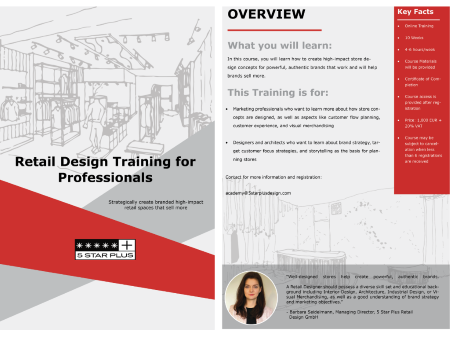
Program Modules
Module 1: Brand Strategy
Delve into market research and target customer definition. Learn to address customers' functional, emotional, and psychological needs, and explore the 12 brand archetypes approach for effective brand positioning and equity creation.
Module 2: Brand Identity
Build on brand strategy to examine brand personalities and DNA. Understand how corporate identity influences store design and how social and community engagement can shape a compelling store concept. Define your design strategy for the project.
Module 3: Space Planning
Analyze and prioritize different functionalities and their interdependencies. Learn space planning requirements based on product categories, create effective layouts, and plan customer flow to optimize store efficiency.
Module 4: Retail Furniture, Materials, Textures
Discover the types of furniture needed for various product categories and their functional requirements, such as safety, flexibility, and integrated lighting. Understand suitable materials for different furniture types and learn best practices for retail furniture design.
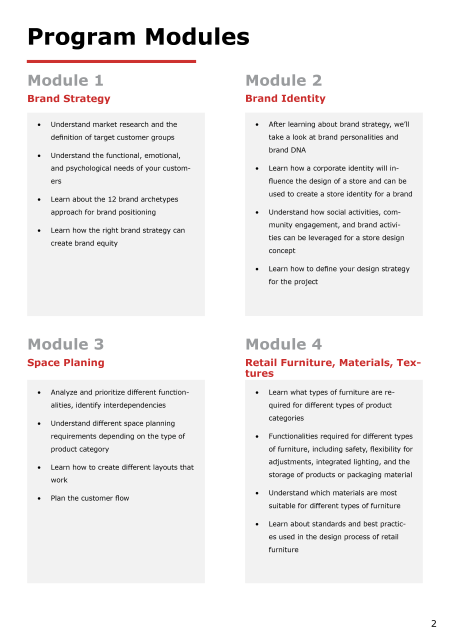
Module 5: Retail Lighting
Explore general, task, accent, and decorative lighting. Learn how lighting affects consumer behavior and mood, and create effective lighting plans based on brand personality and marketing goals.
Module 6: Visual Merchandising
Master techniques for visual display and merchandising. Understand display requirements for different product categories and plan seasonal and new product displays in alignment with brand positioning.
Module 7: Customer Experience
Examine trends in store design like technology integration and "living room" concepts. Learn about the impact of omnichannel retail and personalization, and explore how virtual and concept stores can enhance customer experiences.
Module 8: Creative and High-Impact Design
Learn design principles such as Balance, Repetition, Hierarchy, and Dominance. Apply these principles to create impactful store designs that reflect brand personality and guide customer movement and flow.
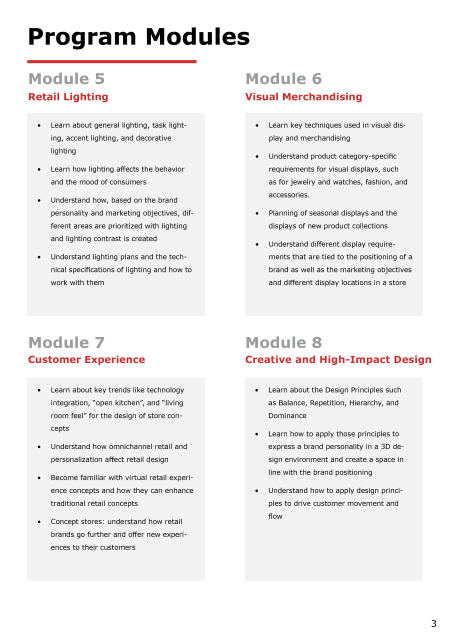
Module 9: Optimizing Wayfinding, Signage, Promotions, Discounts
Learn the principles of wayfinding and different types of signage design. Explore effective design solutions for in-store promotions and discounts to boost impulse purchases. Understand the signage, product information, and design elements needed for new collections and discount areas.
Module 10: Pop-Up Store Design & Exhibition Stands
Apply your skills to temporary retail formats such as pop-up stores and exhibition stands. Understand the specific functional requirements and challenges of designing these formats. Learn about modular design and sustainability considerations for temporary retail spaces.
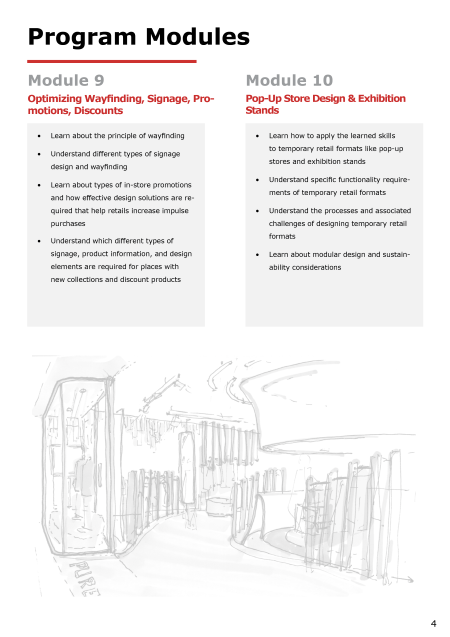
Meet Your Trainer

Barbara Seidelmann is the Founder and Managing Director of 5 Star Plus Retail Design, an award-winning firm specializing in commercial architecture and interior design with a strong presence in Europe and China. With over 12 years of experience, Barbara leads a team that delivers innovative design solutions for retail stores, restaurants, franchise chains, pop-up stores, and exhibition stands. Her firm also develops visual identities and offers consulting and project management services. Barbara's work has supported renowned brands like UGG, Swatch, and Huawei, as well as government and non-profit organizations. Her projects have been featured in international media and have received numerous design awards.
“Simply selling products is not enough: a brand must know where it wants to go in the next five years and how it should be presented,” says Barbara Seidelmann. “Successful retail spaces shine at the interface between marketing strategy and interior design. Austrian retail companies have incredible potential in retail design, especially when it comes to increasing sales and brand experience.”
> back to top of page

Top 5 Eco-Friendly Materials Revolutionizing Retail Stores - Why It's Important That You Use Them
August 27, 2024
In today’s retail landscape, sustainability is no longer a mere trend but a necessity. As consumers become more environmentally conscious, retailers are increasingly turning to eco-friendly materials to reduce their environmental impact and meet customer expectations. However, it's crucial to remember that natural materials might not inherently meet fire safety standards, so you have to arrange additional treatments for making them fire-rated proof. Here, we explore the top five eco-friendly materials revolutionizing retail stores and why their adoption is crucial.
1. Reclaimed Wood
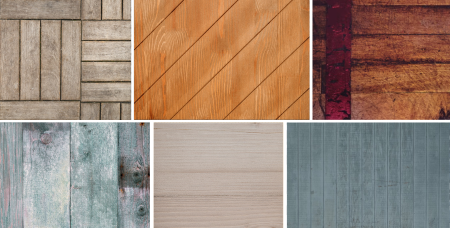
- •Sustainability: Reclaimed wood is sourced from old buildings, barns, and factories, reducing the need for new timber and minimizing deforestation.
- •Aesthetic Appeal: Reclaimed wood adds a rustic and unique look to retail spaces, creating a warm and inviting atmosphere that resonates with customers seeking authenticity and character.
- •Environmental Impact: By reusing existing wood, we conserve forests and reduce waste, contributing to a more sustainable and circular economy.
2. Bamboo
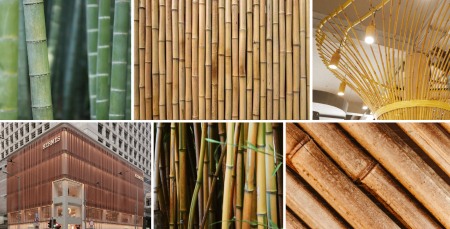
- •Rapid Growth: Bamboo grows much faster than traditional timber, making it a highly renewable resource. It can be harvested in just a few years, compared to decades for most hardwoods.
- •Versatility: Bamboo is used for flooring, shelving, and even furniture, offering a durable and attractive alternative to conventional materials.
- •Carbon Sequestration: Bamboo absorbs more CO2 compared to other plants, helping to combat climate change by reducing greenhouse gases in the atmosphere.
3. Cork

- •Renewable Resource: Cork is harvested from the bark of cork oak trees, which regenerate their bark, making it a sustainable choice. This process does not harm the trees, allowing them to continue growing and absorbing CO2.
- •Insulation Properties: Cork provides excellent thermal and acoustic insulation, enhancing the energy efficiency and comfort of retail spaces.
- •Biodiversity: Cork oak forests support diverse ecosystems, promoting biodiversity and protecting wildlife habitats.
4. Recycled Metal
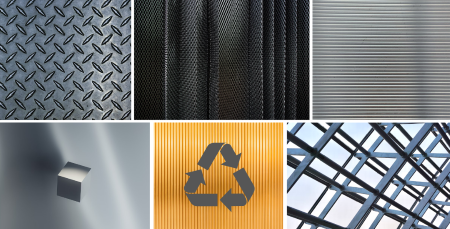
- •Durability: Recycled metal is strong and long-lasting, reducing the need for frequent replacements and lowering overall material consumption.
- •Eco-Friendly: Using recycled metal helps reduce mining and conserves natural resources, minimizing the environmental impact of metal production.
- •Energy Efficiency: Recycling metal uses significantly less energy than producing new metal from ore, leading to substantial energy savings and reduced greenhouse gas emissions.
5. Recycled Plastic
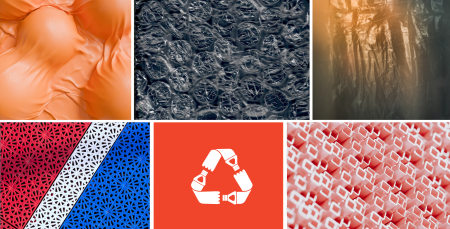
- •Waste Reduction: Recycled plastic repurposes waste materials, reducing landfill impact and promoting a circular economy.
- •Versatility: It can be molded into various shapes and used for fixtures, fittings, and even furniture, providing a flexible and sustainable solution for retail design.
- •Circular Economy: By keeping plastic in use and out of the environment, recycled plastic supports a circular economy, where materials are continuously reused and repurposed.
Why We Should Pay Attention to and Use Eco-Friendly Materials
Environmental Benefits
- •Reduction in Carbon Footprint: Eco-friendly materials often require less energy to produce and transport, leading to lower greenhouse gas emissions and a smaller carbon footprint.
- •Conservation of Natural Resources: By using sustainable materials like bamboo and reclaimed wood, we reduce the need for new raw materials, preserving forests and other natural resources.
- •Waste Reduction: Materials like recycled plastic and metal help divert waste from landfills, promoting a circular economy and reducing environmental pollution.
Health and Safety
- •Non-Toxic: Many eco-friendly materials, such as natural paints and organic textiles, are free from harmful chemicals and VOCs, creating a healthier indoor environment for both employees and customers.
Economic Advantages
- •Cost Savings: While some eco-friendly materials might have a higher upfront cost, they often lead to long-term savings through durability, reduced maintenance, and energy efficiency.
- •Consumer Demand: Increasingly, consumers prefer to shop at stores that prioritize sustainability.
Innovation and Aesthetics
- •Unique Design: Eco-friendly materials often offer unique textures and aesthetics that can set a retail space apart, creating a distinctive and appealing shopping experience.
- •Innovation: Embracing sustainable materials encourages innovation in design and construction, leading to new and creative solutions in retail environments.
By integrating eco-friendly materials into retail stores, we can make a positive impact on the environment, improve health and safety, achieve economic benefits, fulfill social responsibilities, and enhance brand image. It’s a win-win situation for businesses, consumers, and the planet.
> back to top of page

Design and Execution of UK Pavilion at Beauty Showcase in Hangzhou 2024
August 27, 2024
From the 15th to the 17th of August 2024, the UK’s Department for Business and Trade organized a UK Pavilion at the Beauty Showcase in Hangzhou, China. This event was strategically planned to elevate the presence of British beauty and personal care brands in a market known for its rapid growth and increasing demand for high-quality, natural products. The Pavilion served as a key platform to highlight the strengths of the UK’s beauty industry, focusing on brands committed to natural, clean, organic, and ethical values, all under the esteemed "Made in Britain" banner.

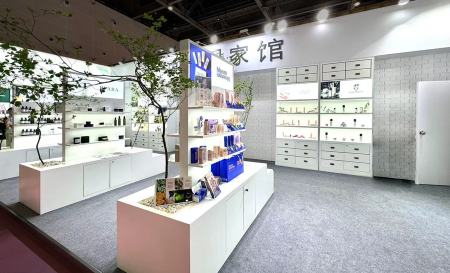
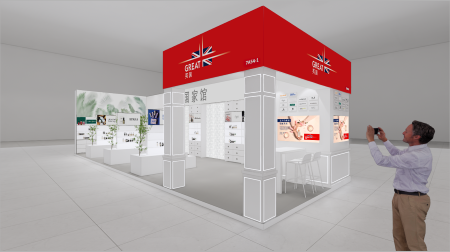
5 Star Plus Retail Design was entrusted with the design and execution of this 58.5 sqm Pavilion, following their successful bid for the project. The goal was to create a space that not only captured the essence of British beauty brands but also resonated with the expectations of the Chinese audience. The design had to be functional, providing ample display areas for 14 UK brands, while also being visually compelling to attract and engage visitors. The layout was carefully crafted to guide visitors through the Pavilion, offering a seamless flow that culminated in a central meeting area, ideal for business discussions and networking opportunities. The overall aim was to foster deeper connections between UK brands and potential partners in the Chinese market, positioning British beauty products at the forefront of consumer attention.
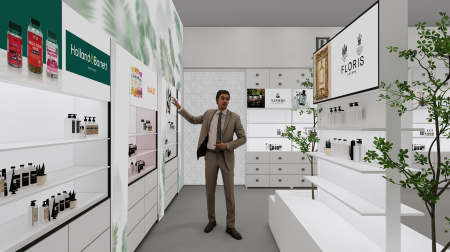
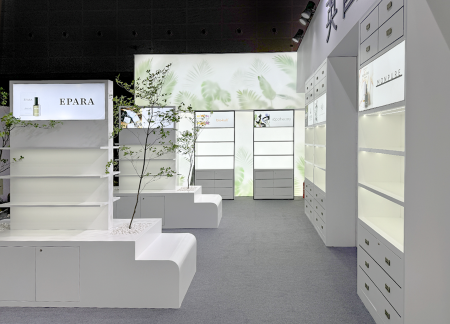 > back to top of page
> back to top of page

Trends Report Part 2: Innovative Retail Design Concepts in Beijing’s Sanlitun District
July 24, 2024
The Box: A Multi-Sensory Retail Destination
The Box shopping mall in Sanlitun sets a new standard for retail design, offering a diverse range of shopping options within a visually captivating and multi-sensory environment.
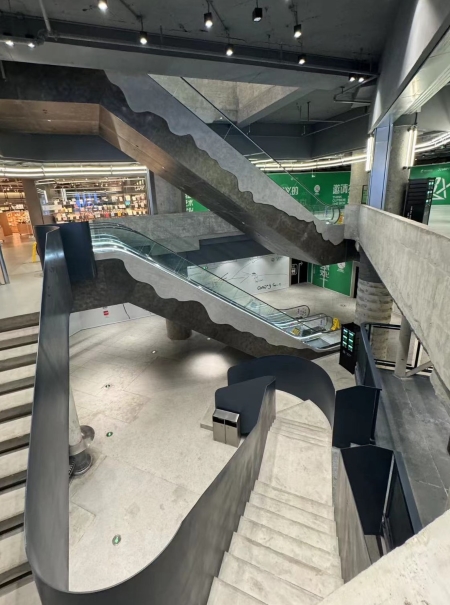
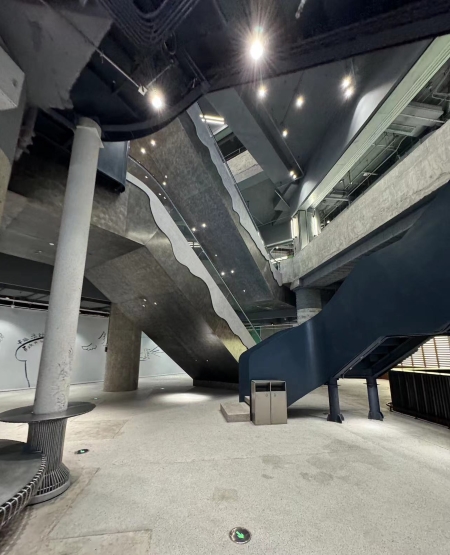
What is Special About the Concept Design of The Box:
•Geometric Façade: The building’s exterior features dynamic geometric patterns and extensive use of glass and steel, creating a futuristic and eye-catching look.
•Central Atrium: The multi-story atrium serves as a central gathering point, with a stunning skylight that floods the space with natural light, creating a bright and welcoming atmosphere.
•Green Spaces: Indoor gardens and vertical green walls add a touch of nature, enhancing the aesthetic appeal and creating a relaxing and inviting environment.
•Interactive Lighting: Dynamic lighting solutions respond to visitor movement, creating an engaging and immersive shopping experience.
•Digital Integration: Information displays, interactive kiosks, and augmented reality installations blend the physical and digital shopping experiences, offering visitors a seamless and enriched experience.
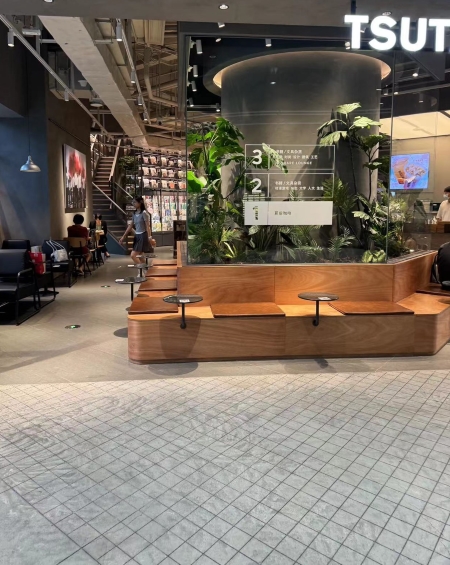
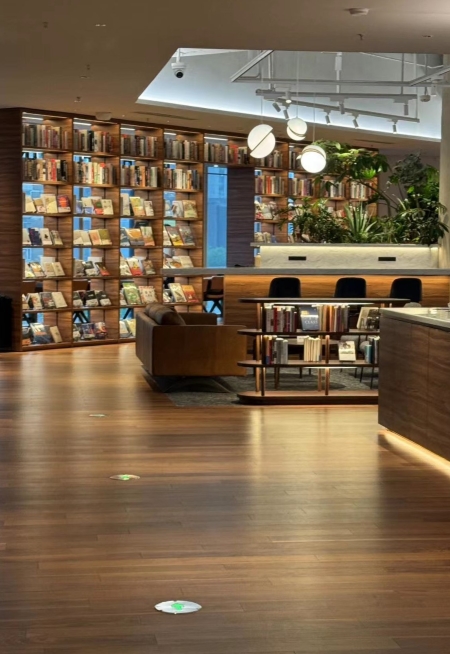
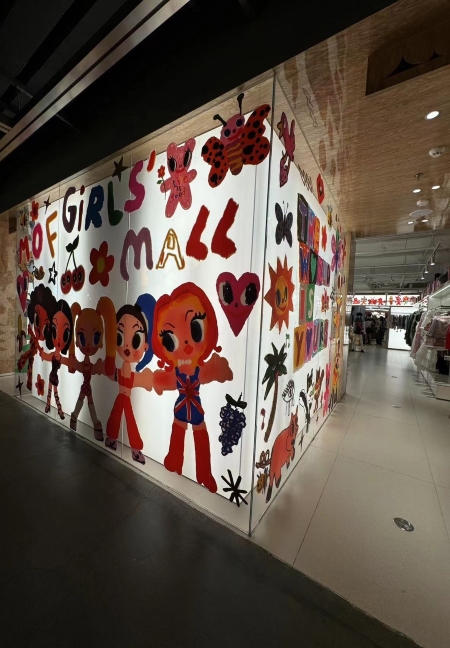
Key Trends Shaping Retail Design
The design concepts of these standout stores in Beijing’s Sanlitun district reveal several key trends that are shaping the future of retail:
1, Integration of Art and Retail: Stores like Gentle Monster are blurring the lines between retail and art, creating immersive environments that engage customers on multiple sensory levels.
2, Sustainable Design Practices: Retailers such as Adidas and Harmay are incorporating eco-friendly materials and sustainable practices, reflecting a growing commitment to environmental responsibility.
3, Technological Enhancements: Advanced technologies, including augmented reality, smart mirrors, and interactive displays, are enhancing the shopping experience by providing personalized and immersive interactions.
4, Open and Flexible Layouts: Spacious and flexible interior designs facilitate easy navigation and adaptability, allowing stores to remain dynamic and responsive to evolving trends.
5, Multi-Sensory Experiences: Innovative use of lighting, interactive elements, and thematic zones create multi-sensory shopping environments that captivate and inspire visitors.
Exploring the Future of Retail in Sanlitun Beijing
The retail landscape in Beijing’s Sanlitun district is a vibrant showcase of innovative design and cutting-edge trends. These stores are not merely places to shop; they are destinations where art, technology, and community converge to create unforgettable experiences. From Adidas’ blend of sport and sustainability to Gentle Monster’s fusion of retail and art, Harmay’s minimalist elegance, and The Box’s multi-sensory allure, each of these stores offers a glimpse into the future of retail design.
Sanlitun is setting the stage for a new era of retail, where shopping transcends traditional boundaries to become an art form that delights and inspires. As these trends continue to evolve, they promise to redefine the retail experience, making it more immersive, engaging, and environmentally conscious. For those looking to experience the forefront of retail innovation, Sanlitun is undoubtedly the place to be.
> back to top of page

Trends Report Part 1: Innovative Retail Design Concepts in Beijing’s Sanlitun District
July 15, 2024
Beijing’s Sanlitun district is a thriving epicenter of retail innovation, home to some of the most cutting-edge and immersive shopping experiences. This trends report highlights the design concepts of four standout retail spaces: Adidas Sanlitun, Gentle Monster Sanlitun, Harmay Sanlitun, and The Box shopping mall. Each of these stores showcases unique and forward-thinking design principles that are shaping the future of retail.
Adidas Sanlitun: Merging Sport, Style, and Sustainability
The Adidas flagship store in Sanlitun exemplifies a harmonious blend of sports and lifestyle elements, creating a dynamic and engaging shopping environment.

Concept Design:
•Architectural Brilliance: The store features a sleek, angular façade with expansive glass panels, making a striking visual statement and inviting natural light into the space.
•Open and Airy Layout: The spacious interior with wide aisles and strategically placed display units promotes easy navigation and an immersive shopping experience.
•Dynamic Product Displays: Modular shelving and interactive displays allow for flexible and adaptive product presentations, accommodating new collections and promotions seamlessly.
•Sustainability: The store’s design incorporates eco-friendly materials and sustainable construction practices, aligning with Adidas’ commitment to environmental responsibility.
•Technological Integration: Smart fitting rooms with interactive mirrors and augmented reality displays provide personalized and engaging interactions, enhancing the overall shopping experience.



The Adidas Sanlitun store in Beijing, China, stands out due to its flagship status, offering a broader range of products, including exclusive and limited-edition items. The store's design is innovative, featuring advanced architecture, interactive displays, and unique installations for an immersive shopping experience. It also integrates advanced technologies like virtual fitting rooms and augmented reality, providing a cutting-edge and engaging retail environment. These elements combined make the Adidas Sanlitun store a unique and enhanced retail environment compared to standard Adidas stores.
Gentle Monster Sanlitun: Where Art Meets Retail
Gentle Monster’s Sanlitun store transcends traditional retail design by merging high-fashion eyewear with an art gallery atmosphere, creating a unique and immersive shopping experience.

Concept Design:
•Bold Exterior: The store’s futuristic façade features sleek metal elements and large glass panels, making a bold architectural statement that draws in visitors.
•Thematic Zones: The interior is divided into various thematic zones, each presenting a distinct narrative or concept, encouraging exploration and discovery.
•Dynamic Installations: Regularly changing art installations integrate seamlessly with retail displays, making each visit a unique and engaging experience.
•Contrasting Textures: The use of polished metals, textured concrete, and sustainable wood creates a visually stimulating and aesthetically pleasing environment.
•Interactive Elements: Interactive displays and kinetic art installations engage visitors, transforming shopping into a multi-sensory experience.
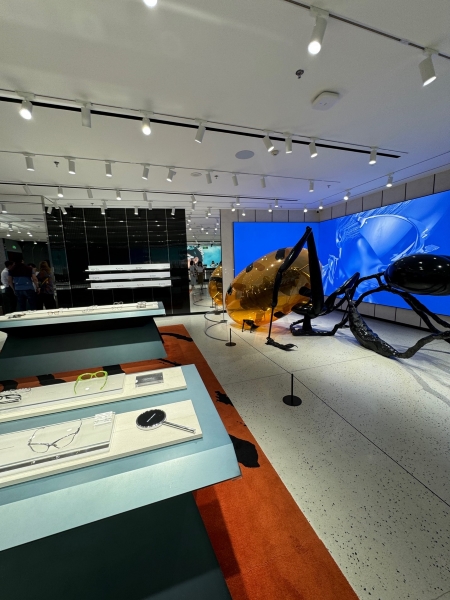
The Gentle Monster Sanlitun store in Beijing distinguishes itself through its artistic and immersive design, featuring unique themes and creative installations that resemble art rather than traditional retail space. It offers exclusive and limited-edition eyewear collections, integrating innovative technology to enhance the shopping experience. The store emphasizes a luxurious customer journey with personalized services and attentive staff, making it a memorable and engaging destination for shoppers. These elements collectively make the Gentle Monster Sanlitun store a special and standout location, setting it apart from other retail stores.
Harmay Sanlitun: Beauty in Simplicity and Elegance
Harmay’s Sanlitun store offers a sophisticated and minimalist environment for beauty retail, characterized by its elegant design and thoughtful spatial planning.
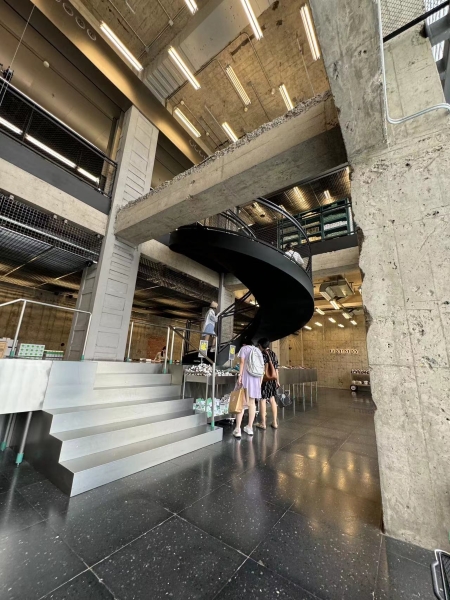
Concept Design:
•Modern Façade: The store’s sleek, minimalist exterior with large glass panels creates a seamless connection with the outside world and invites natural light into the space.
•Open Floor Plan: The spacious interior with wide corridors and expansive atriums promotes easy navigation and a sense of freedom, enhancing the overall shopping experience.
•Modular Displays: Flexible shelving and display units allow for easy reconfiguration, keeping the store dynamic and responsive to current trends.
•Natural and Industrial Elements: A blend of natural materials like wood and stone with industrial elements such as metal and concrete creates a warm yet contemporary atmosphere.
•Ambient Lighting: Soft, ambient lighting enhances the relaxing and welcoming environment, making the shopping experience enjoyable and comfortable.
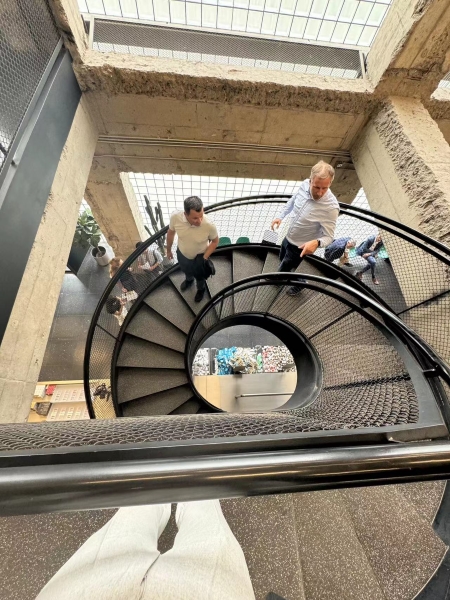
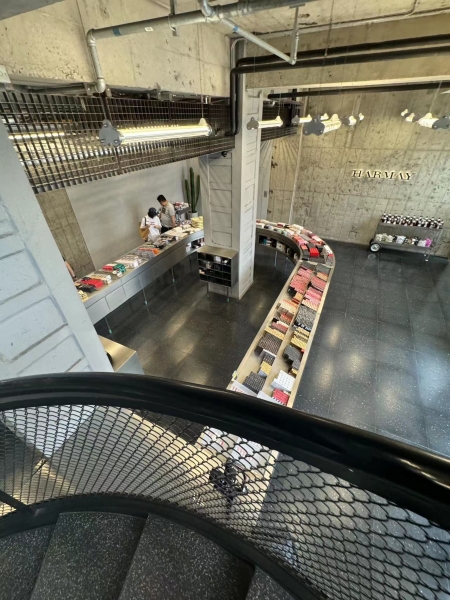
Harmay's Sanlitun store in Beijing sets itself apart from traditional retail through its curated product selection, innovative and artistic interior design, and community-oriented spaces. It emphasizes a unique shopping experience by hosting events, integrating digital elements, and maintaining a limited distribution strategy to create exclusivity. Harmay's strong brand identity, focused on modern aesthetics and cultural influences, offers a niche, community-focused approach that differentiates it from mass-market retailers.
> back to top of page

Highland Games Britcham 2024 and the Importance of Working with the Community
July 2, 2024
June 2nd, the Highland Games took place in Beijing, China. Organized by the British Chamber, Scottish Government Office in China, Scottish Development International, and Beijing Scottish Society, the event was all about community building and the promotion of Scottish culture. With a great understanding of how beneficial community building and customer engagement can be for brands, the chamber collaborated with various organizations to promote the Scottish lifestyle, culture, and products. The Highland Games were attended by over a thousand guests from the Scottish, British, Chinese, and international communities. This year had even more Scottish elements in the specially expanded Scottish Pavilion, as well as even more sports on the day, like five-a-side football, rugby, and the all-important tug-of-war competition.
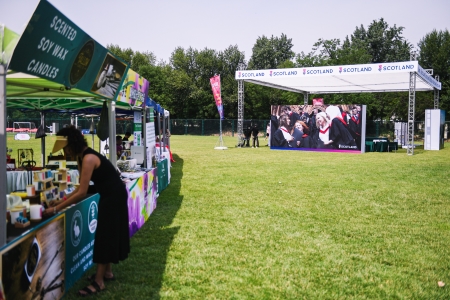
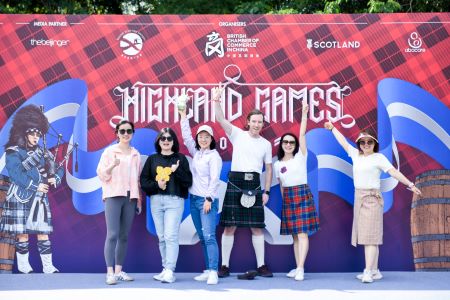
5 Star Plus Retail Design has a long history of working with the British Chamber on various occasions. Our team was a proud partner at this well-planned event and provided execution and project management services.
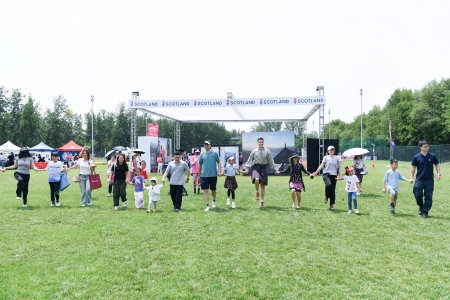
How can Brands Leverage Events and Community Marketing?
Community marketing is vital because it helps businesses build strong relationships with their customers by keeping in touch and engaging with them regularly. This builds trust and makes customers more loyal to the brand, which can encourage them to tell others about it and lower the costs of advertising. It also provides a way to get feedback from customers, which can lead to new ideas and keep customers coming back. Community marketing makes the customer experience better, helps the brand stand out, and allows businesses to quickly adjust to changes in the market. In the end, it creates a group of loyal supporters who help the business grow and succeed over the long term.
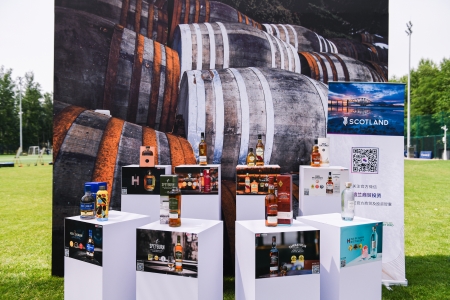
This marketing strategy has a unique allure that sets it apart from other marketing strategies. It is the opportunity to create real, immediate connections and involve customers in an experience.
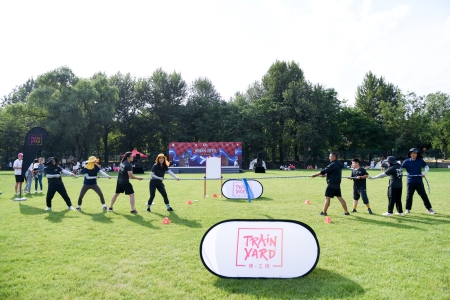 > back to top of page
> back to top of page

Exhibition Stand Design & Execution for AZO China at PROPAK Exhibition 2024 in Shanghai
June 27, 2024
5 Star Plus Retail Design executed a modular exhibition stand for AZO China at PROPAK Expo 2024 in Shanghai. The modular design concept, which was developed by the designers over a year ago, focuses on a clean and powerful display that attracts visitors from afar and leaves a lasting impression. A core aspect of AZO China is sustainability, necessitating the reuse of as many components as possible to align with its principles. The design needed to reflect the quality of AZO China’s products and corporate culture through an aesthetically pleasing yet minimalist approach. Inspired by AZO China’s industrial background, the design concept incorporates a high-tech feel, with elements echoing modern factories and warehouses.
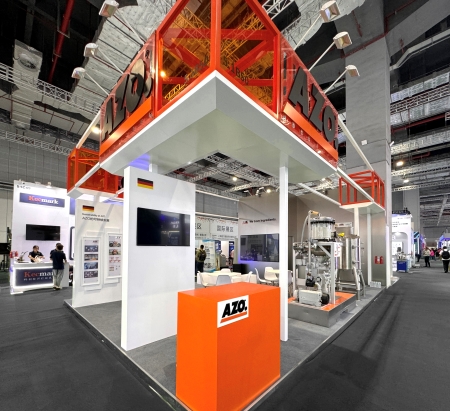
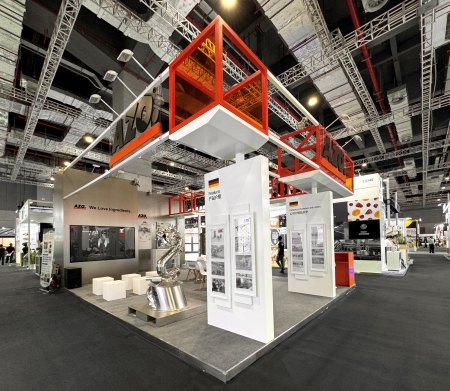
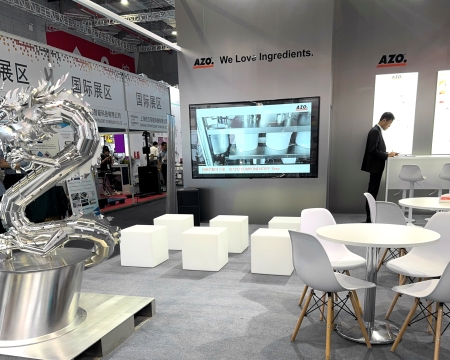
Consistent with previous AZO China exhibition stands, the design relied on simple, clean lines that directed attention to three key areas: the story walls, the product showcase area, and the experience zone. Together, these areas offered a rich customer experience.
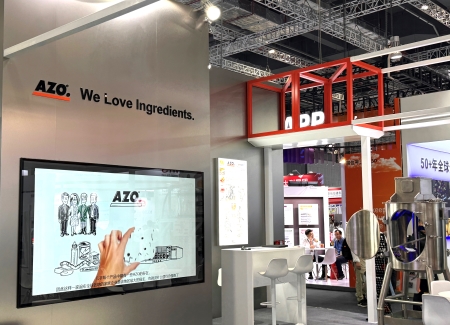
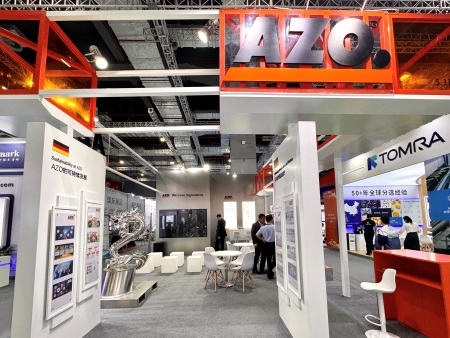
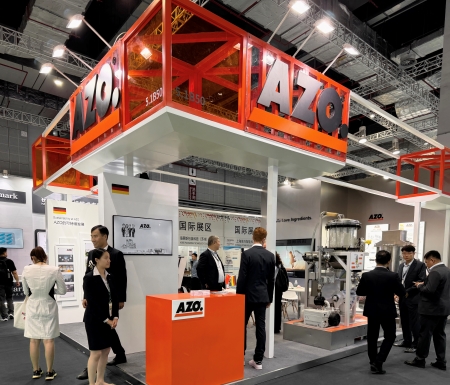 > back to top of page
> back to top of page

“Future of Retail 2024” Delegation Trip to China
Juni 19, 2024
At the beginning of June, the Trade Division of the Austrian Federal Economic Chamber, together with Advantage Austria Shanghai and Peking, organized “Future of Retail 2024" , a retail delegation of Austrian brands visiting China.
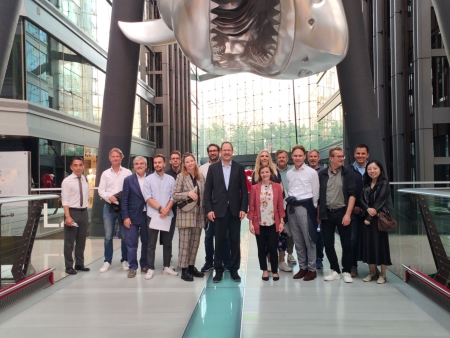
Howard Zhang, 5 Star Plus Retail Design’s Client Director in Beijing, and Nas Parvaz, Senior Designer and PMP, had the pleasure of meeting the delegation on Jun 6th to introduce Chinese brands and retail concepts Harmay, Gentle Monster, and the latest Adidas concept store in Sanlitun Taikooli. The objective was to explore innovations, new retail concepts, and interesting approaches toward design in each store. The team also explained the strategy of those brands that led them to great commercial success.
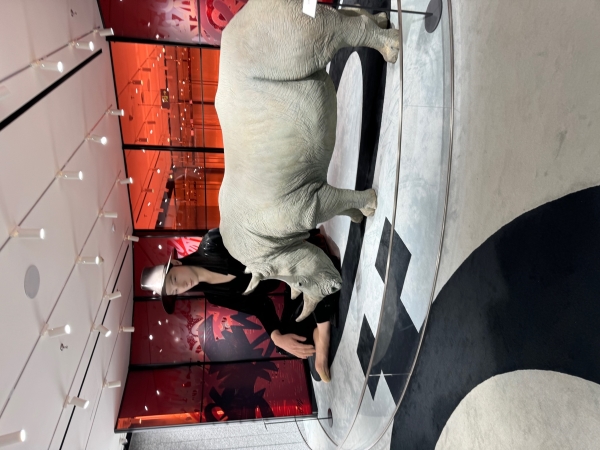
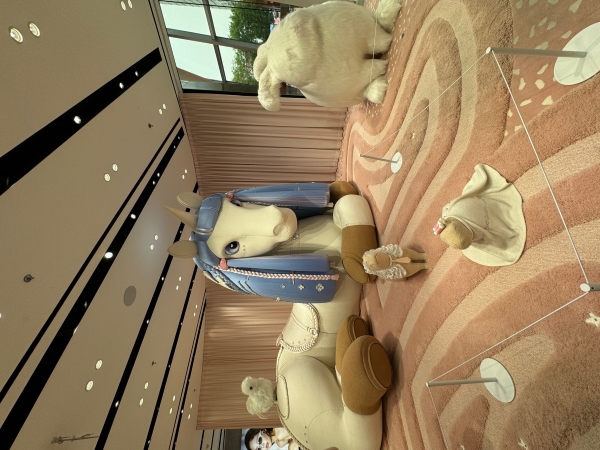
On June 7th, Howard Zhang and Nas Parvaz accompanied the delegation to The Box and the world-famous Parkview Green Mall to provide objective insights into retail design.
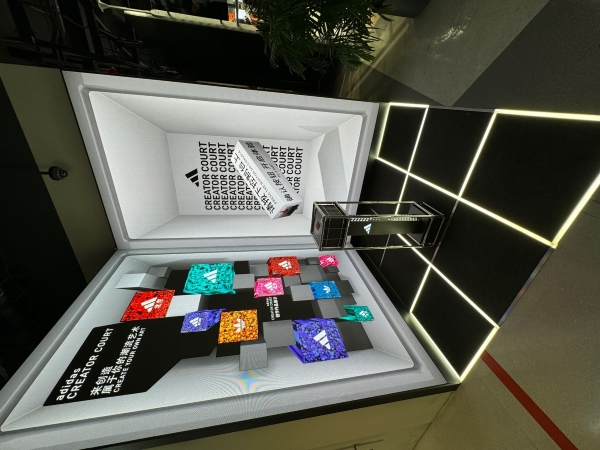
Before arriving in Beijing, from June 3rd to 5th, the delegation visited selected stores and brands in Shanghai with a focus on E-commerce with different platforms, including Nike, Lego, M&M, Raffles Mall, Conrad Bus Charging, Vacheron, and Roasters.
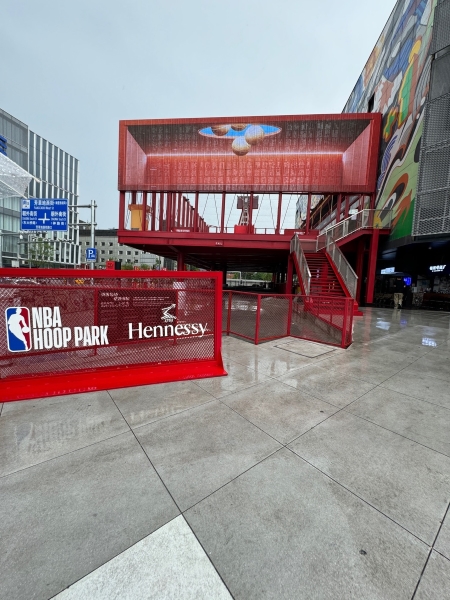
Stay tuned for our next article where we will introduce some of the latest retail concepts and store designs in China.
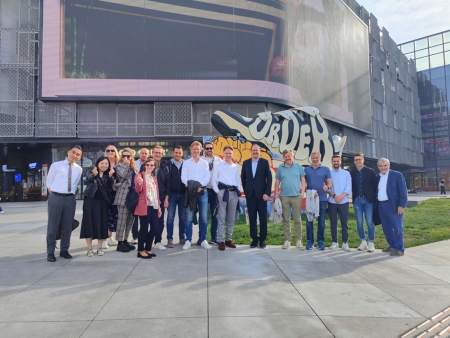 > back to top of page
> back to top of page


Role of Color Psychology in Office Design
May 27, 2024
In the realm of interior design, color is a powerful tool. It can evoke emotions, influence behavior, and set the tone for a space. Nowhere is this more evident than in office design, where the right color choices can have a significant impact on productivity, creativity, and overall well-being. Let’s delve into the world of color psychology and explore how it shapes our work environments.
Understanding Color Psychology
Color psychology studies how different colors affect human emotions and behavior. It’s a field that has been extensively researched, and applications have been found in various aspects of life, including marketing and retail design. The idea is that different colors can evoke specific emotional responses and even influence physiological reactions.
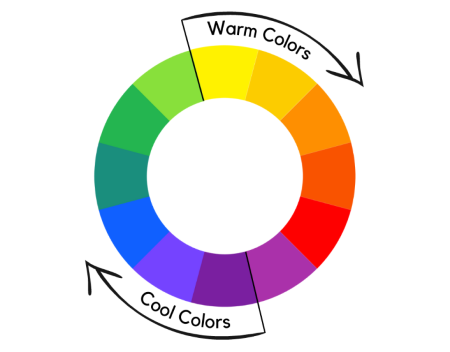
The Impact of Color on Productivity
Productivity is a top priority in any office setting, and the choice of colors can significantly affect an employee’s ability to focus and get work done. Here are some key considerations for using color psychology to enhance productivity:
•Blue for Focus: Blue is often associated with calmness and concentration. It can help employees stay focused on tasks and reduce stress levels. Consider incorporating shades of blue in areas where concentration and productivity are essential, such as meeting rooms and workstations.
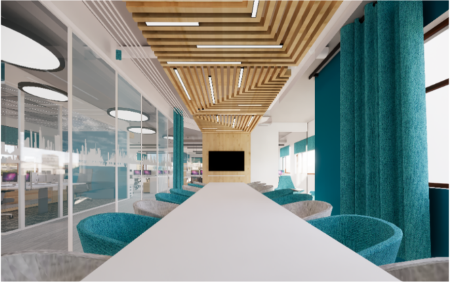 •Yellow for Creativity: Yellow is a bright and cheerful color that inspires creativity and innovation. It’s an excellent choice for spaces where idea generation takes place, such as creative studios or collaborative work areas.
•Yellow for Creativity: Yellow is a bright and cheerful color that inspires creativity and innovation. It’s an excellent choice for spaces where idea generation takes place, such as creative studios or collaborative work areas.
•Green for Balance: Green, associated with nature, can be calming and balancing. It’s a great choice for common areas and breakout spaces where employees can relax and recharge during their breaks.
•Red for Energy: Red is powerful and energizing. While too much red can be overwhelming, using it as an accent color in small quantities can boost energy levels.
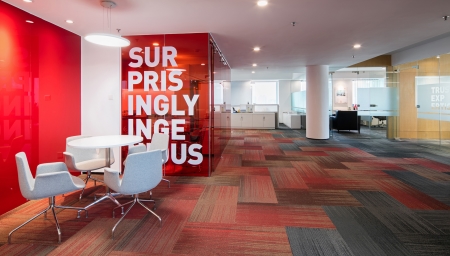
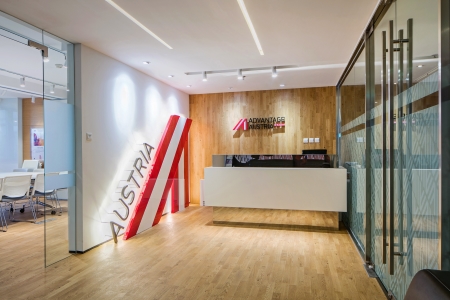
Considerations for Office Size and Layout
The size and layout of your office also play a role in color selection. In smaller spaces, avoid overwhelming colors, while larger areas can handle bolder choices and balance warm and cool tones to create harmony.
Conclusion
Color psychology in office design is not just about aesthetics; it directly impacts employee well-being, creativity, and overall morale. By strategically using color, companies can create workspaces that align with their goals and foster a positive, productive environment. So, when you’re choosing the color scheme for your office, think beyond aesthetics. At 5 Star Plus Retail Design, we can help you design your office space to align with your goals.
> back to top of page

Barbara Seidelmann's Insights in Retail Association Austria's Latest Magazine
May 23, 2024
We are excited to share our Managing Director, Barbara Seidelmann's insights in the Handelsverband Österreich - Retail Association Austria's latest #Retail magazine.
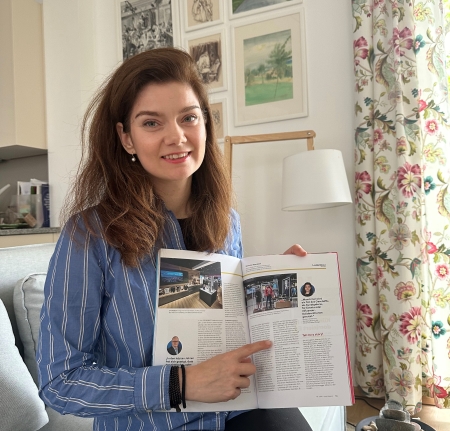
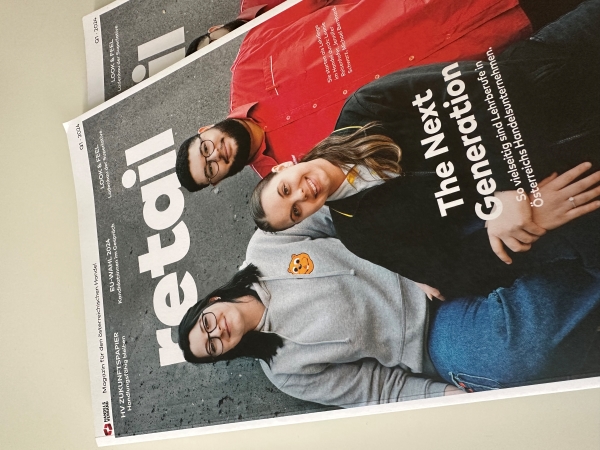
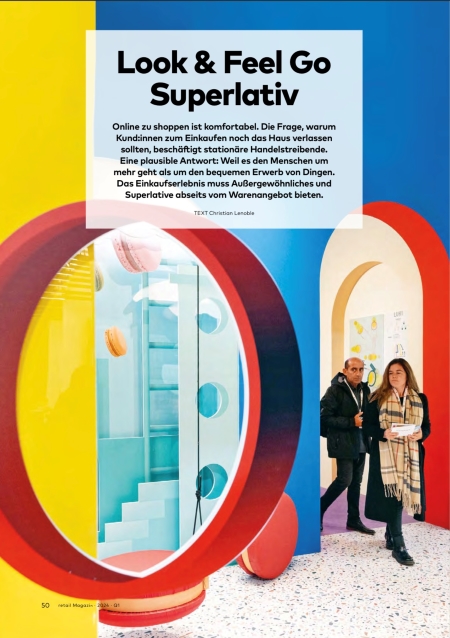
Barbara Seidelmann, Managing Director at 5 Star Plus Retail Design, emphasizes the importance of flexibility and customization in retail. She advocates for larger chains to develop varied store formats tailored to different target groups, such as concept stores with coffee shops or bars. Customization corners for personalized products and incorporating technology for enhanced customer experiences are also key strategies.
She highlights successful implementations by international luxury and premium brands, noting that stores often use space creatively, such as for art galleries, events, or influencer collaborations. Technology plays a crucial role, with brands using virtual, augmented, and mixed reality to engage customers and encourage social media sharing. Apps in stores help generate shareable content, while 360-degree product scans enhance both in-store and online shopping experiences.
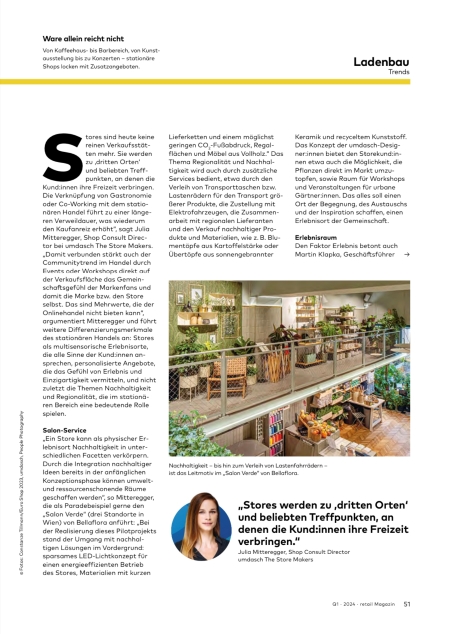
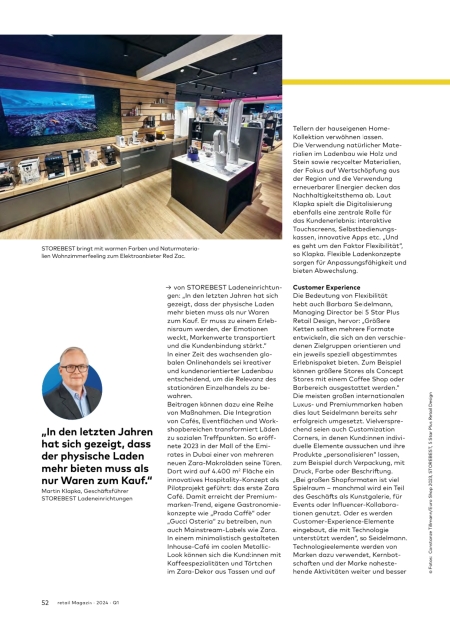
In Asia, live-streaming events hosted by Key Opinion Leaders (KOLs) or shop managers are popular. These events foster instant online purchases and strengthen customer relationships. Barbara Seidelmann advises considering space allocation for these events in stores from the beginning when live-streaming forms part of the brand’s retail strategy.
Authentic storytelling is vital, as exemplified by English shoe manufacturer Tricker's, which focuses on the longevity and quality of its products by opening international service centers.
Barbara Seidelmann's key message is that retailers should not blindly follow trends but implement strategies and technologies that align with their goals and target audience to create authenticity and build strong, successful brands.
 > back to top of page
> back to top of page

How Retail Design Can Impact In-Store Consumer Engagement?
April 28, 2024
In the ever-evolving landscape of retail, the design of a store is not just about aesthetics; it’s a critical factor that can significantly influence consumer behavior and engagement.
Here are some key points on how retail design influences in-store consumer behavior:
The Strategic Role of Layout and Aesthetics
The journey of a consumer through a store is meticulously crafted by the strategic layout of the retail space. A well-thought-out design guides customers seamlessly from the entrance to the checkout, subtly influencing their purchasing decisions along the way. The placement of products, the flow of foot traffic, and the visibility of key items are all elements that require careful consideration.
Aesthetics play a pivotal role in creating an inviting atmosphere that resonates with the target audience. Elements such as lighting, color schemes, and signage must work in harmony to evoke the desired emotional response from consumers.
Embracing Digital Integration
In today’s digital age, integrating technology into the retail environment is no longer optional; it’s imperative. Incorporating digital signage and targeted displays can keep customers informed during their visit. These digital touchpoints not only engage customers but also provide valuable data that retailers can use to enhance the shopping experience.
Sensory Engagement: Beyond Sight
Retail design extends beyond visual elements; it’s a multi-sensory experience. Music, scent, and tactile experiences are carefully curated to align with the brand’s identity and appeal to consumers on a deeper level.
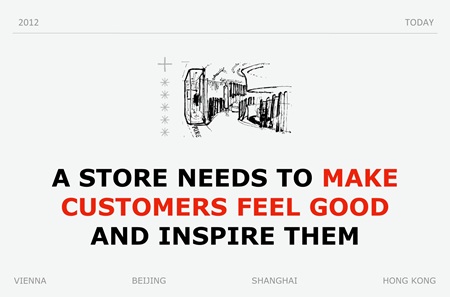
Conclusion:
Investing in retail design is not just about creating a beautiful space; it’s about understanding and responding to consumer behavior. A well-designed store can lead to increased dwell time, higher conversion rates, and stronger brand loyalty. In the competitive world of retail, businesses that prioritize design will find themselves at the forefront, capturing the hearts and wallets of consumers.
> back to top of page

Technological innovations for store design and stand Design
March 29, 2024
Our Managing Director, Barbara Seidelmann, was at EuroCIS 2024 in Düsseldorf, while our Client Manager, Diego Lopez, in Shanghai, participated in the APPP Digital Future, CIIF-EXPO / Digital Economy & Industrial Decarbonization, Tech G Expo - Smart City and CHIC Exhibition Spring 2024.Their experiences provided us with valuable insights into the Latest technology trends, helping us stay informed about what's happening in the retail industry.
USE OF LIGHTBOXES
•Perspective Effects: Lightboxes can be strategically positioned to create depth and perspective within a store. For example, placing a lightbox at the end of an aisle can make the space appear longer, emphasizing the perspective.
•Background Enhancement: Lightboxes serve as dynamic backgrounds for displays. Retailers can use them to showcase lifestyle imagery, brand stories, or thematic visuals and reinforce the brand identity.
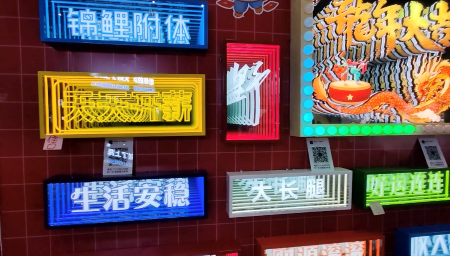
New lighting elements as seen at APPP Digital Future in Shanghai,Image Source: 5 Star Plus Retail Design
Moving Surfaces - Texture Simulation
The captivating arrangement features a multitude of metallic cylinders, each with a concave hollow at one end. These cylinders are meticulously aligned in neat rows and columns, creating a mesmerizing pattern.
•Visual Merchandising: Retail spaces could incorporate similar metallic elements for visual impact. Imagine a boutique with walls adorned by reflective cylinders, creating a dynamic shopping experience.
•Interactive Displays: Imagine customers exploring textures, triggering animations, or revealing product information.
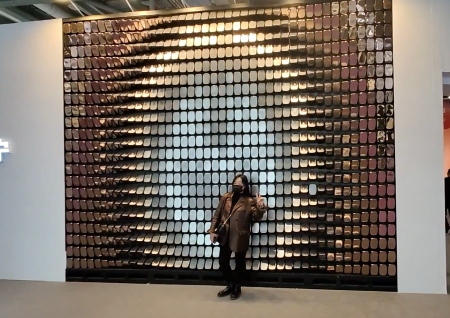
New lighting elements as seen at APPP Digital Future in Shanghai,Image Source: 5 Star Plus Retail Design
3D corner screens for Perspective generation
•Virtual Try-Ons and Interactive Product Demos: For fashion and accessories, customers could virtually try on items using 3D perspectives. Imagine a 3D corner screen showcasing a new gadget—customers can rotate it, zoom in, and explore features.
•Product Displays: In retail exhibitions, 3D corner screens showcase products dynamically.
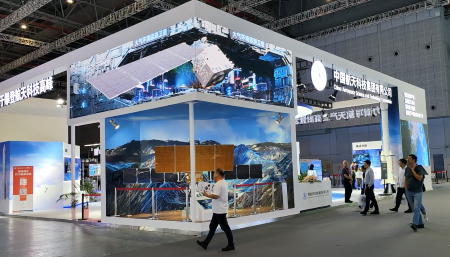
New lighting elements as seen at APPP Digital Future in Shanghai,Image Source: 5 Star Plus Retail Design
Holograms through blade movements and videos
The futuristic exhibition where holographic images materialize through the motion of blade-like structures. These structures serve as dynamic canvases for projecting three-dimensional illusions.
Unlike traditional holograms, which rely on static surfaces, blade-based holography introduces movement and fluidity.
•In-Store Displays: Retailers use blade movement holograms for eye-catching product displays. These displays attract attention, engage customers, and enhance brand perception.
•Exhibition Stands: At trade shows and exhibitions, companies set up elaborate stands to showcase their offerings. A car manufacturer might display a holographic car engine, dissecting its components or an electronics brand could demonstrate the inner workings of a smartphone using holograms.
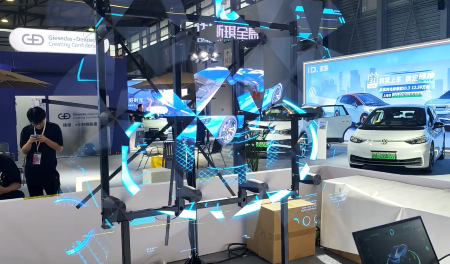
New lighting elements as seen at APPP Digital Future in Shanghai,Image Source: 5 Star Plus Retail Design
•touch-responsive holographic videos: Hologram videos that interact based on touch and you can move and zoom products, place orders that are displayed from the shop window.
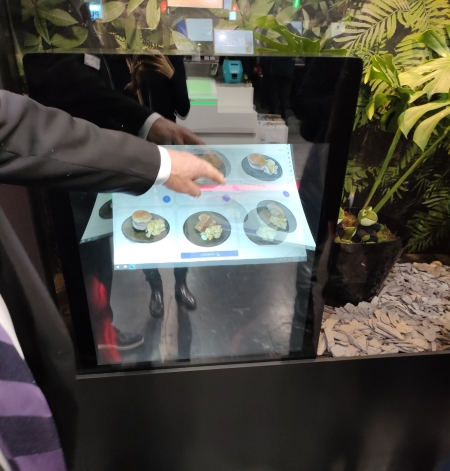
New lighting elements as seen at APPP Digital Future in Shanghai,Image Source: 5 Star Plus Retail Design
use of virtual showcases:
Virtual showcases have become increasingly popular in retail environments due to their ability to enhance the shopping experience and provide numerous benefits for both customers and retailers.
Virtual showcases allow customers to visualize products in a realistic and immersive way. This can include 3D models, augmented reality (AR), or virtual reality (VR) experiences that provide a lifelike representation of the product, helping customers make informed purchase decisions.
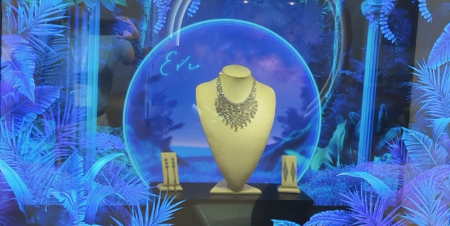
New lighting elements as seen at APPP Digital Future in Shanghai,Image Source: 5 Star Plus Retail Design
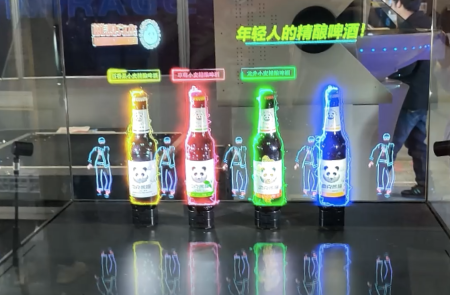
New lighting elements as seen at APPP Digital Future in Shanghai,Image Source: 5 Star Plus Retail Design
Use of interactivity at the point of sale - touch screens - product information / Use of Artificial Intelligence technology in store design
•Interactive Advertising Screens: These screens, serve as powerful tools to engage passers-by. A large vertical touchscreen showcasing a virtual mannequin adorned in various clothing items. Shoppers can select and visualize different outfits on the mannequin, all at the touch of a finger.
•Effects of Interactivity:
Research has explored the impact of interactive screens on consumer behavior, particularly in terms of impulse buying. When users engage with interactive content, activating their sense of self-agency, they are more likely to make spontaneous purchases.
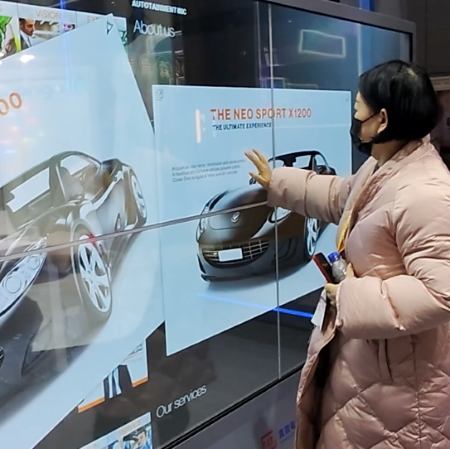
New lighting elements as seen at APPP Digital Future in Shanghai,Image Source: 5 Star Plus Retail Design
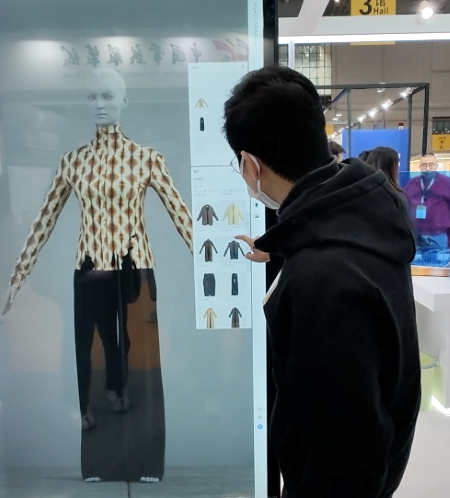
New lighting elements as seen at APPP Digital Future in Shanghai,Image Source: 5 Star Plus Retail Design
> back to top of page

Top 8 Retail Industry Technology Trends and Innovations for 2024
March 19, 2024
The retail landscape is undergoing a transformative journey, with technology leading the way to an innovative future. In 2024, several trends are set to redefine the way shopping is done, improve customer experiences, and optimize business operations. Let's take a look at these advanced retail technology trends, and explore what they are, how they work, and why they matter in shaping the retail landscape.
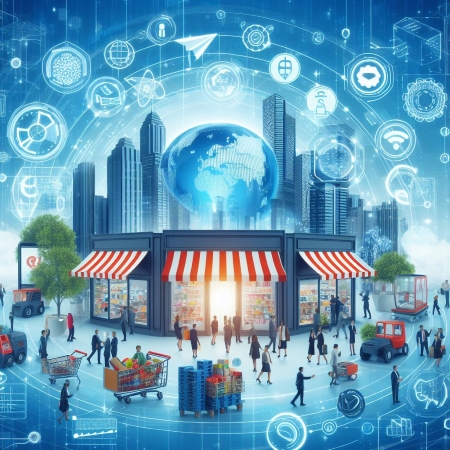
- 1.Algorithmic Retail – AI, ML, Smart Store, Immersive Tech:
- Algorithmic retail leverages artificial intelligence (AI) and machine learning (ML) to enhance various aspects of retail. It powers smart stores, automates processes, and creates immersive shopping experiences.
Why is it important? It helps retailers make data-driven decisions, optimize inventory, and personalize customer interactions.
- 2.Diversification of the Customer Experience (CX):
- CX goes beyond just buying products. It includes pre-purchase, purchase, and post-purchase interactions. Retailers focus on seamless experiences across online and offline channels.
Why is it important? Happy customers lead to repeat business and positive word-of-mouth.
- 3.Unified Commerce: Beyond Omnichannel:
- Unified commerce integrates all channels (online, in-store, mobile) into a seamless experience. Customers can start shopping on one channel and continue on another without disruptions.
Why is it important? It reduces friction, improves customer satisfaction, and boosts sales.
- 4.AI-based Personalization, Pricing, Marketing, Promotions, and Loyalty:
- AI tailor’s recommendations, pricing, and marketing based on individual preferences. Algorithms analyzed data to create personalized offers and loyalty programs. Why is it important? Personalization drives engagement and customer loyalty.
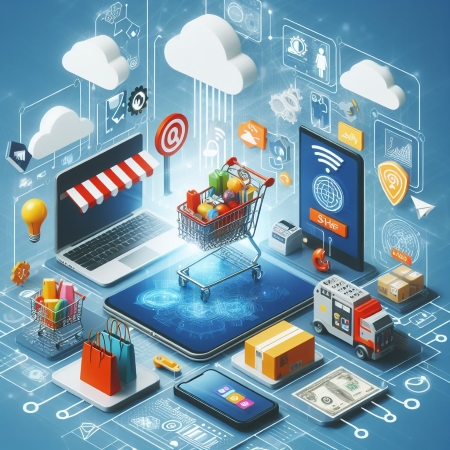
- 5.Operationalizing Sustainability:
- Retailers focus on eco-friendly practices, from sourcing to packaging. Sustainable supply chains, energy-efficient stores, and waste reduction.Why is it important? Consumers care about sustainability, and it’s good for the planet.
- 6.Composable Architecture:
- Flexibility for Retail Innovation: Composable architecture allows retailers to build flexible systems using modular components. It enables quick adaptation to changing market needs. Why is it important? Retailers can innovate faster and stay competitive.
- 7.Financial Planning Tools:
- Navigating Market Volatility:
Tools that help retailers manage finances, budgets, and investments. Real-time data analysis for informed decision-making.Why is it important? Volatile markets require agility and smart financial planning.
- 8.Mobility Matures: Empowering Sales Associates for Enhanced Customer Service:
- Equipping sales associates with mobile devices for better customer interactions. Associates access product information, inventory, and customer history on the go.Why is it important? Improved service leads to higher sales and happier customers.
As the retail landscape evolves, embracing technology is no longer a choice but a vital necessity. These technologies are infiltrating the retail industry, enhancing personalization, inventory management, and demand forecasting. Retailers need to craft a retail environment that not only embraces innovation but also reflects the essence of the brand in the digital age.
> back to top of page

The Role of Design in Successful Pop-Up Design Marketing and Impact of Pop-Up Stores for Businesses
February 29, 2024
In the ever-evolving landscape of retail, businesses are continually seeking innovative ways to connect with their audience and create memorable brand experiences. One such strategy that has gained significant traction in recent years is the utilization of pop-up stores. These temporary retail spaces serve as a unique and engaging channel for businesses to interact with consumers.
The Power of Pop-Up Stores
Pop-up stores have emerged as powerful tools for businesses to break through the clutter of traditional retail and connect with consumers on a more personal level. These temporary spaces provide a sense of exclusivity and urgency, driving consumers to explore and engage with the brand in a way that traditional retail spaces may not achieve. Pop-Up stores are a cost-effective way to test innovative formats, reach new audiences, and explore potential locations.
The Role of Design in Pop-Up Success
Creating Immersive Experiences:
Successful pop-ups are not just about selling products; they are about creating immersive brand experiences. Design plays a pivotal role in transforming a temporary space into a captivating environment that reflects the brand's personality and resonates with the target audience. From the layout to the visual elements, every aspect of design contributes to the overall experience.
Brand Consistency and Recognition:
Consistency in design is crucial for reinforcing brand identity. A well-designed pop-up store should seamlessly align with the overall brand image, ensuring that customers can instantly recognize and connect with the products and messaging. This consistency builds trust and reinforces brand loyalty.
Adaptability and Flexibility:
Pop-up stores, by nature, are temporary, and their success often depends on their ability to adapt to different locations and themes. Design should be flexible enough to accommodate various spaces while maintaining a cohesive brand narrative. Portable and modular design elements enhance the adaptability of pop-up stores.
Impact of Pop-Up Stores on Businesses:
Increased Brand Visibility:
Pop-up stores generate a buzz that extends beyond the temporary physical space, helping brands capitalize on new trends and niche markets at a low cost while enabling them to go viral.
Market Testing and Product Launches:
Businesses can use pop-up stores as a testing ground for new markets or products. The direct interaction with customers provides valuable feedback, allowing companies to refine their strategies before a full-scale launch.
Staying Relevant and Adaptive:
In a rapidly changing retail landscape, businesses that embrace the pop-up concept demonstrate adaptability and a willingness to explore new avenues. This innovative approach keeps the brand relevant, attracting attention from consumers and industry peers alike.
Conclusion:
In the realm of modern retail, the role of design in the success of pop-up marketing cannot be overstated. The well-executed design transforms temporary spaces into memorable brand experiences, contributing to increased visibility, brand loyalty, and market expansion. Businesses that strategically leverage pop-up stores as part of their marketing arsenal stand to gain not only short-term success but also long-term brand growth through meaningful customer connections.
> back to top of page

Introduction of New Team Member: Diego Lopez, Client Director Shanghai
February 26, 2024
Today we are delighted to introduce Diego López Suárez. Diego, originally from Colombia and with extensive experience in marketing and communication, joined 5 Star Plus in spring 2023. He leads business development, project management, and client relations in Shanghai. Diego’s professional journey began with organizing events and concerts in Colombia, followed by marketing roles in Spain. His leadership spans cities like Bogota, Caracas, Madrid, and Miami. Diego holds degrees in Advertising and Public Relations, as well as a master’s in digital business from ESIC. He reinvented himself through digitalization and now forms part of the 5 Star Plus Retail Design China team as the Client Director in Shanghai.

Diego's Super Skills:
Diego is like a Duracell Bunny who keeps going and going. He is extremely organized and proactive and has impressive self-motivation and self-management skills. With his remarkable energy, Diego visits many trade fairs and industry-related events in China each week, always looking for the latest trends and ready to build new connections. With his very international background, building networks comes easy to him. Diego’s interests span travel, history, photography, and dancing to Latin music.
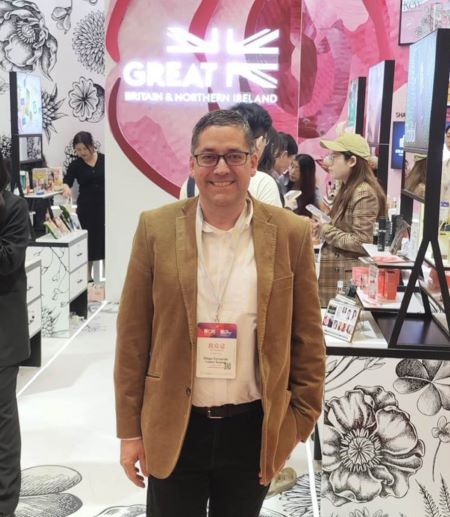
What we love about Diego:
Diego is a person who always smiles and radiates energy. Our team greatly appreciates his enthusiasm, proactiveness, reliability, and positive attitude in every situation. He is a very people-oriented person and knows how to make others feel safe and welcome. We know that we can always count on Diego.
What is Diego’s favorite project?
Diego looks back fondly on his early professional experiences, particularly his time in the press office of Colombia's leading entertainment company, years before joining 5 Star Plus Retail Design. He happily recalls his participation in organizing concerts for artists such as Guns N' Roses, Elton John, Pet Shop Boys, Celia Cruz, and Luciano Pavarotti, among many other artists. These experiences instilled in him a deep appreciation for large-scale events' dynamics and media management's intricacies.
At 5 Star Plus Retail Design, Diego’s project highlights include the large-scale International Children's Day 2023 event organized for Unicef in Beijing and the award-winning design and build of the UK Pavilion at the 2023 China Beauty Expo in Shanghai.
> back to top of page

Bronze for 5 Star Plus Retail Design at the Austrian Federal Advertising Awards
February 06, 2024
We are thrilled to announce that 5 Star Plus Retail Design has won the bronze award in the POS | Exhibition Architecture category of the prestigious Austriacus Austrian Federal Advertising Awards.
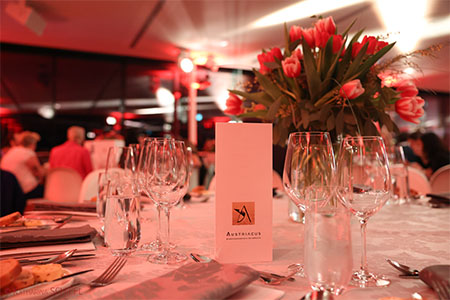
Our project, the design of the UK Pavilion at the China Beauty Expo, had entered the nationwide competition as the bronze winner of the Austriacus Vienna edition (see our article from December 13!). Over 2500 projects had been submitted in 12 categories in the different Austrian federal states in 2023. In the countrywide round, the works of the finalists from the nine federal states were then evaluated and ranked by a jury.

The suspense came to a climax at the award ceremony at the headquarters of the Austrian Federal Economic Chamber in Vienna on February 1. Moderated by star host Silvia Schneider, the various categories were presented by key representatives from the creative industry.
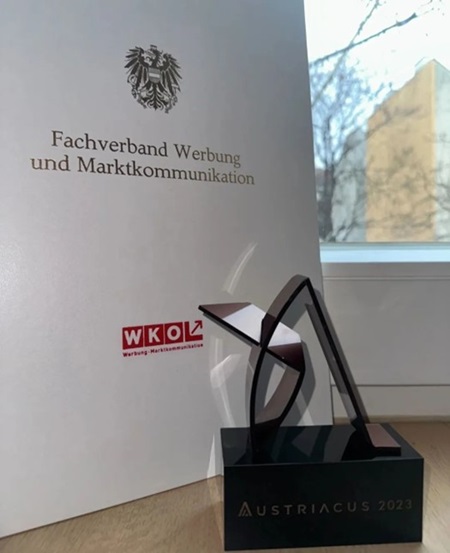
Our awarded project was the design and execution of the UK Pavilion at the China Beauty Expo, an assignment concluding a tender by the UK’s Department for Business and Trade in 2022. Inspired by the “English rose”, a flower well-known everywhere in the world, the developed exhibition stand design concept featured 12 UK brands from the beauty sector and their products.
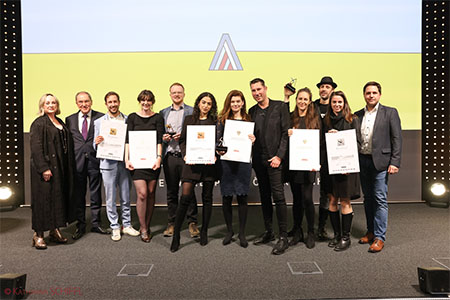
We are proud to have been recognized for our work and are grateful to our team for their hard work and dedication. We would also like to thank our client for their trust and support.
> back to top of page

Introduction of New Team Member: Nas Parvaz, Senior Designer & PMP
January 30, 2024
Today, we would like to present another colleague who recently joined the team at 5 Star Plus Retail Design: Nas Parvaz, Senior Designer, PMP based in Shanghai.

Nas, originally hailing from Iran and shaped by an international upbringing, commenced her role with the 5 Star Plus Retail Design Team in late 2023. Before this, she served as an Architect Designer, and Engineer with a prominent international company in China. Nas holds a bachelor’s degree in interior design from Iran's esteemed Sooreh Art University and earned her master’s in architectural engineering from Korea University, which is recognized as one of the top three universities in South Korea. In addition to her academic achievements, Nas holds a certificate in project management and proudly possesses a Project Management Professional (PMP) certification.
Nas’s Super Skills:
Nas is an empathetic and responsible person with a diverse international experience. This background enables her to handle any design and project management challenge with ease. She loves traveling, road trips, and nature, plays tennis, practices kickboxing, and goes running in her spare time.
What we love about Nas:
At 5 Star Plus Retail Design, we love Nas’ very positive spirit and friendly, supportive attitude. We also appreciate her curiosity and commitment to continuous learning. Nas radiates kindness and inner calmness and is always ready to lead or support a project and deliver perfect results together with the team.
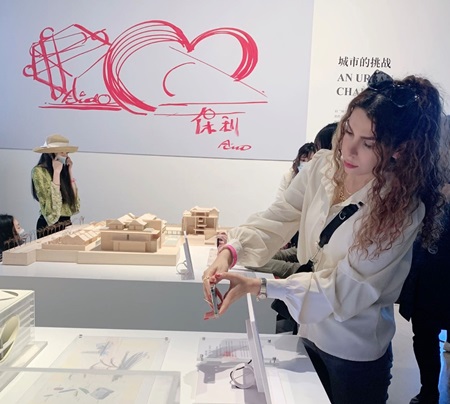
What is Nas’ favorite project?
One project that holds a special place in Nas’ heart hails from her time working in South Korea—a massive 50,000-unit residential complex. Nas was intricately involved in crafting the interior design of individual units and played a pivotal role in shaping the overall urban design. Given the project's location in Turkmenistan, the incorporation of Islamic design elements became a priority, and she found great joy in designing the gardens and urban spaces with a harmonious blend of traditional Islamic style and modern architecture. It's the seamless fusion of heritage and contemporary design that makes this project my absolute favorite.
> back to top of page

Introduction of NewTeam Member: Howard Zhang, Client Director Beijing
January 24, 2024
We are delighted to announce that from January 1st, 2024, Howard Zhang has joined 5 Star Plus Retail Design as the new Client Director in Beijing. Howard will work alongside Denise Chen, also the Client Director in Beijing, and manage a major part of the company’s projects and client relationships in the future.
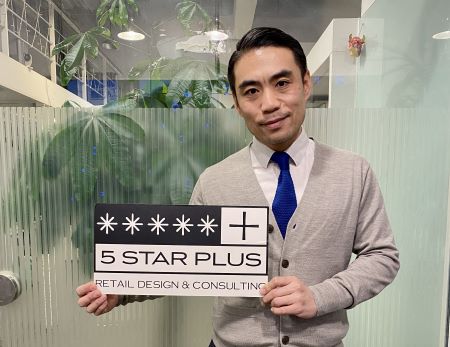
Howard has over 15 years of experience in the marketing and communications industry. Before joining 5 Star Plus Retail Design, Howard led the marketing and corporate communications team at the China-Britain Business Council (CBBC).
With experience in editing and a solid knowledge of media management, Howard worked for several well-known real estate and PR firms including Savills, Jones Lang LaSalle (JLL), Havas China, and East-West Public Relations.
Howard’s Super Skills:
Howard is an excellent communicator and proficient at engaging externally with clients and business partners. His super skill is to stay calm and always very polite in times of stressful work. Outside work, Howard impresses with his tennis and expert tango dancing skills, likes mountain biking, and collects old telephones.
What we love about Howard:
Our team loves that Howard has a great sense of humor and is always in a good mood and ready to support. We also appreciate Howard’s remarkable well-groomed style and strong hands-on work attitude.
What is Howard’s favorite project?
Howard’s favorite projects include high-profile and international projects like work for the British Chamber of Commerce and the James Bond Movie Pre-Screening Event.
> back to top of page

Design Execution of Austrian Winter Sports Days in China 2023
January 11, 2024
In December, Tonghua, China, came alive with the Austrian Winter Sports Days—an annual event for businesses and government representatives. This annual event, organized by ADVANTAGE AUSTRIA, the Tonghua government, and Österreich Werbung / Austrian National Tourist Office, serves as a platform to showcase Austrian products, services, and solutions in the winter sports sector.


The event drew sponsorship and attendance from a wide range of companies, including well-known names such as Head, Doppelmayr, Axess, Semperit, Red Bull, Gebrüder Weiss, Fürst Carl Biere, Julius Meinl, Blizzard, Sölden, Fischer, Atomic, Tecnica, ADG, Wartburg, Conrad Shenyang, Regent Beijing, The Opposite House, Hilton Beijing, hohes C, Botzeit, Hotel Eclat, The Ritz-Carlton Beijing, Suki, and Mesos Beijing.

5 Star Plus Retail Design had the privilege of supporting this event with design and execution services, marking a joyous reunion after years of pandemic restrictions.
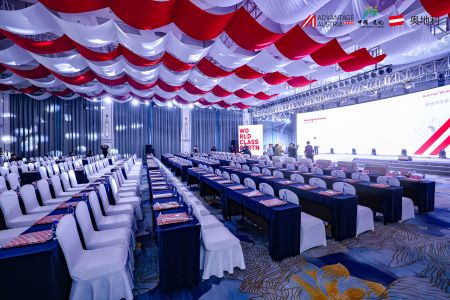
The scope of work for this project encompassed event visual design and implementation and spanned across various components including the conference, welcome reception, ski race, and gala dinner.

5 Star Plus Retail Design is proud to have contributed to this showcase and eagerly anticipates future opportunities for collaborations.
> back to top of page

2023 Review: Highlights at 5StarPlusRetailDesign
January 10, 2024
With the start of the new year, we want to take a look back and review the most significant milestones achieved in 2023, underscoring our dedication to excellence and growth within the industry.
In the course of the past year, we completed exhibition stands, store concept designs, and event projects for British, Austrian, Chinese, German, Swiss, and global clients in China, Southeast Asia, and Europe.
In june 5 Star Plus Retail Design achieved certification and registration as an Engineering Office for Interior Architecture in Austria in addition to the existing licenses as an Advertising Architect and Advertising Agency. This enables us to take on more complex technical work and large-scale projects besides the existing service offering within the European Union.

Finally, we are honored to share our success at the Austriacus Awards 2023 in Vienna in November, where our Company secured the bronze award in the #POS – Exhibition Architecture category. Looking ahead, we are enthusiastic about the opportunities that the various markets will bring for us in 2024. We want to express our sincere gratitude to our clients, partners, and the dedicated team at 5 Star Plus Retail Design. Your trust and support have allowed us to persevere and succeed over the past decade.
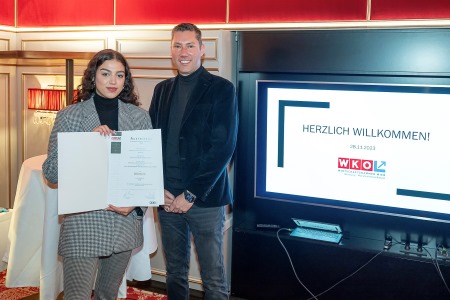 > back to top of page
> back to top of page

Austriacus Award 2023
December 13, 2023
We're beyond thrilled to announce that 5 Star Plus Retail Design has secured the bronze award in the prestigious #AustriacusAwards 2023 Vienna edition, specifically in the #POS – Exhibition Architecture category.
Project: UK Pavilion at China Beauty Expo | Client: UK’s Department for Business and Trade
Inspired by the “English rose”, a flower well-known everywhere in the world, 5 Star Plus Retail Design developed and executed an exhibition stand design concept for the UK Pavilion at the China Beauty Expo in Shanghai featuring 12 UK brands.
The English rose was also one of late Queen Elisabeth’s favorite flowers and inspired a whole make-up trend with the same name. In the pavilion design, the rose is featured as an abstract, three-dimensional watercolor sculpture that also serves as a background for photos and events. Black-and-white sketches of plants like daffodils, clovers, and thistles are applied on the wall, the floor, and the furniture throughout the stand to underline the strength of UK beauty brands, which lies in organic, local, and high-quality plant-based ingredients.
The layout of the exhibition stand was divided into two main areas (exhibitor and business discussion area) with a branded main ally lined by LED strips along the floor and ceiling.
At 5 Star Plus Retail Design, our team is genuinely delighted to witness the acknowledgment of our creative design services in this form. We sincerely thank everyone involved in this remarkable journey, our client #DBT, #WerbungWien and #Austriacus for valuing our work!
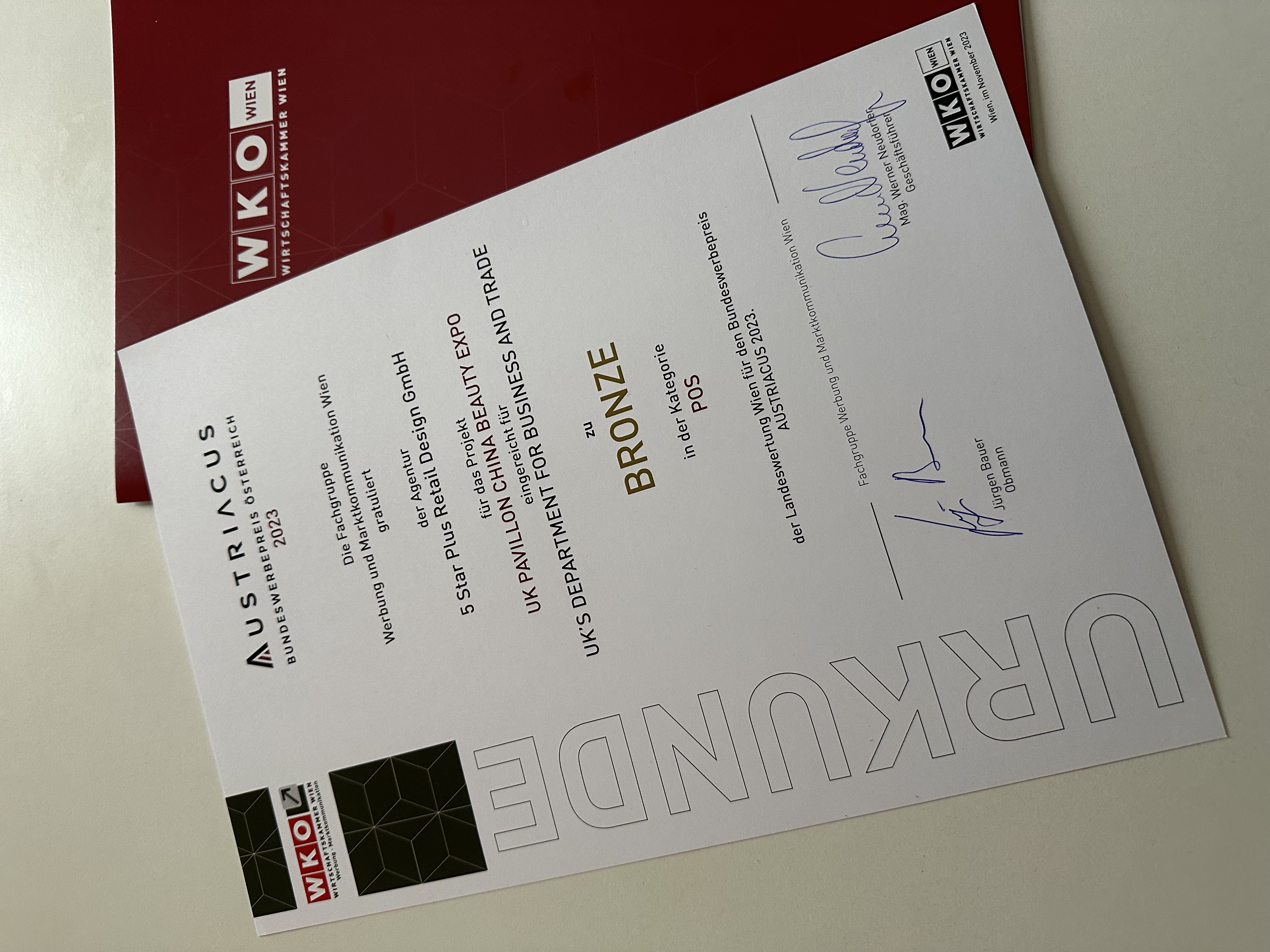
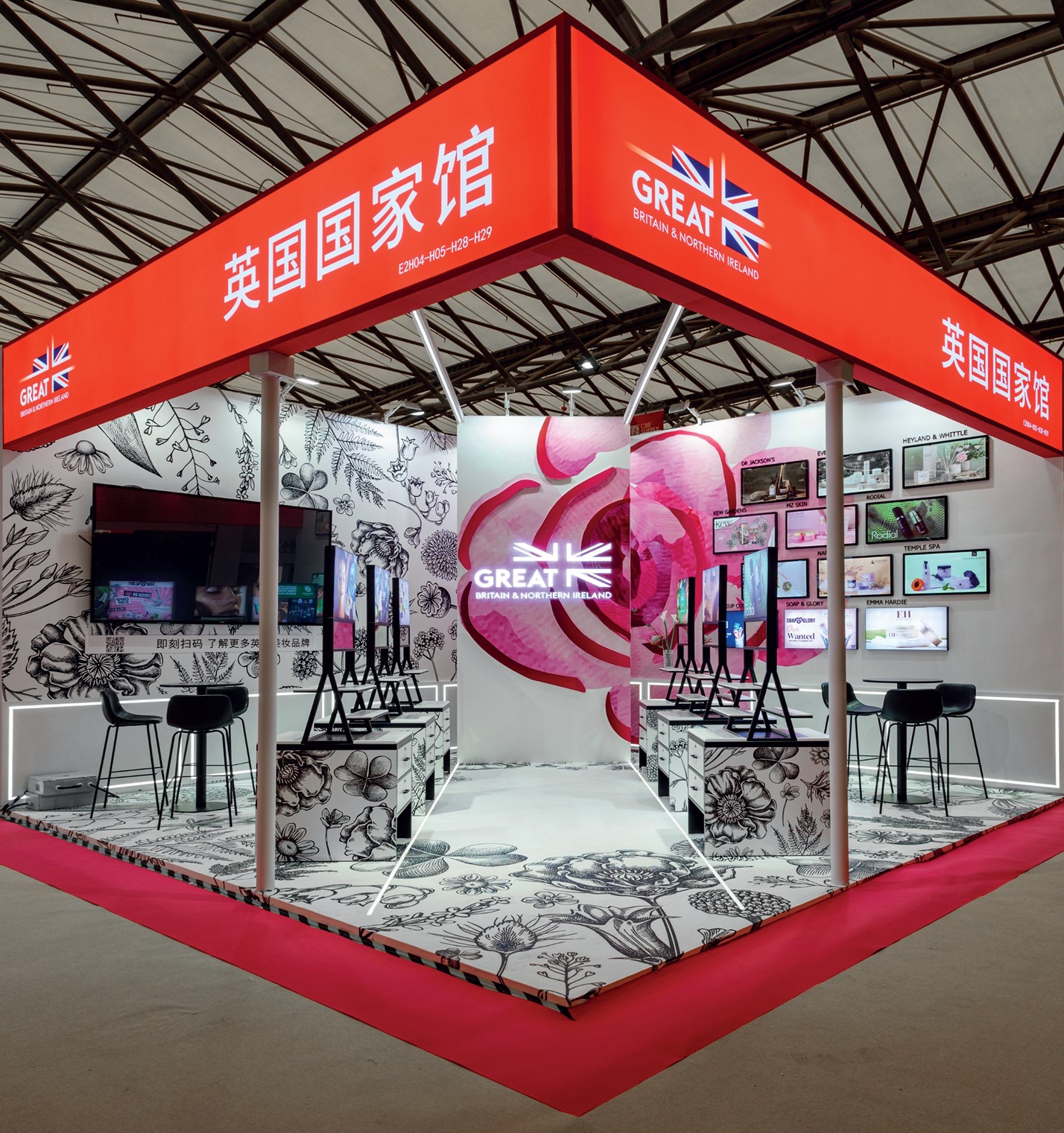
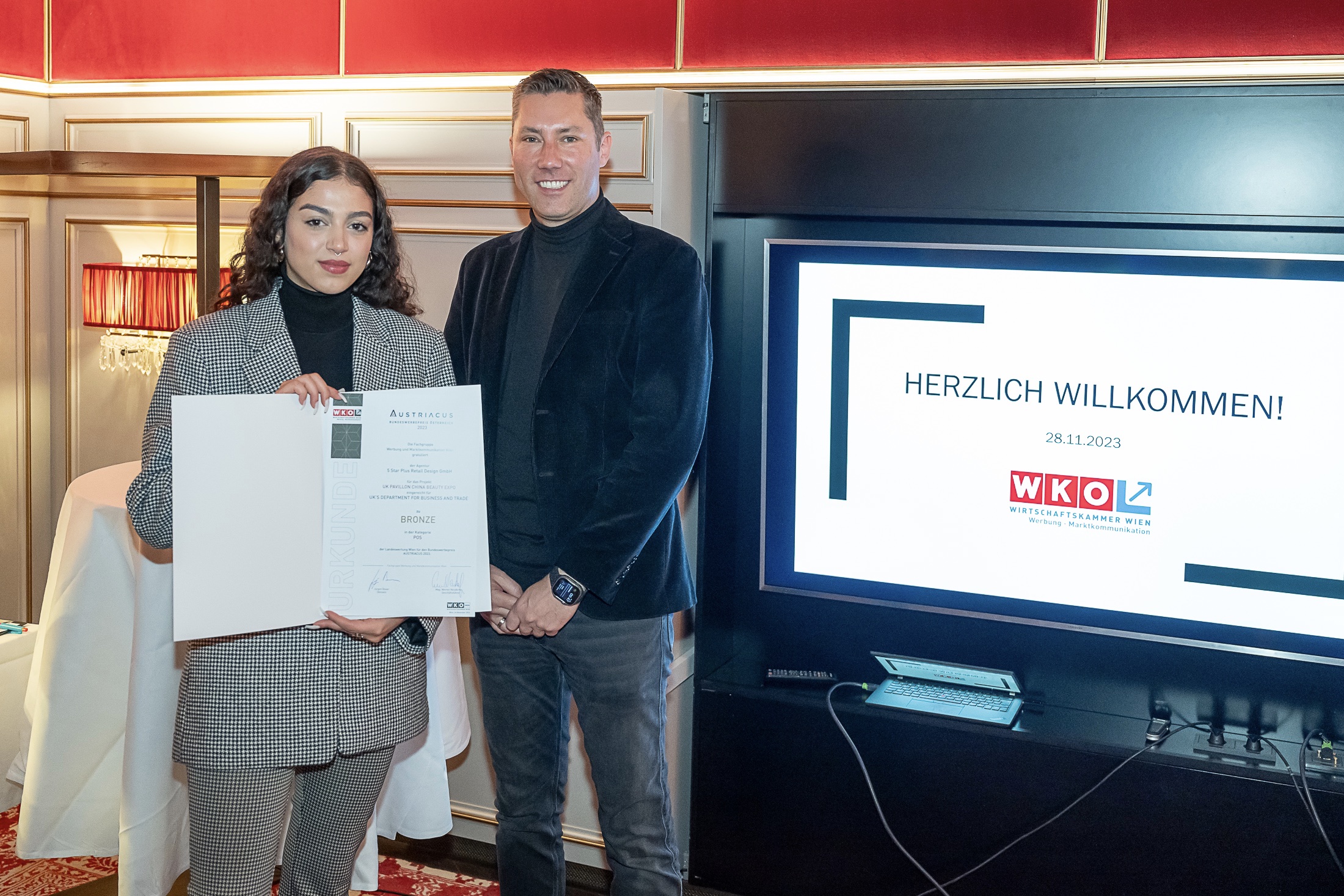 > back to top of page
> back to top of page


How to Craft an Innovative and Sustainable Office Design: A Case Study
October 30, 2023
Designing an office space that embodies a company's core values and brand identity is a creative endeavor that requires careful thought and planning. In this article, we will explore how 5 Star Plus Retail Design successfully transformed a client’s new office in Beijing into a hub of sustainability, speed, and innovation. By delving into this case study, we will uncover valuable design insights that can be applied to your own projects.
Understanding the Company and Its Values
Before diving into the design process, it is essential to comprehend the company's mission, core values, and objectives to ensure a design that resonates with its brand identity. In this case, the client’s commitment to providing intelligent, reliable, and environmentally friendly intermodal transport solutions via rail was at the forefront of the design process.
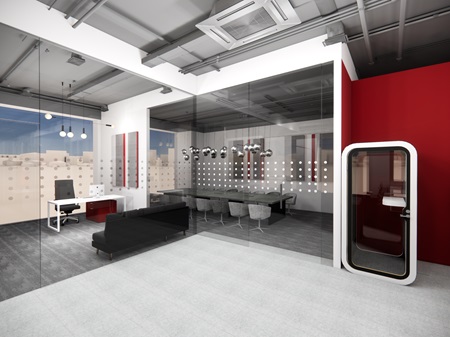
Choosing the Ideal Location
Selecting the right location for your project is critical. In our case study, the client chose Fengtai, an emerging financial district in Beijing, to house their new office. The choice of location can significantly impact the accessibility and overall atmosphere of the space.
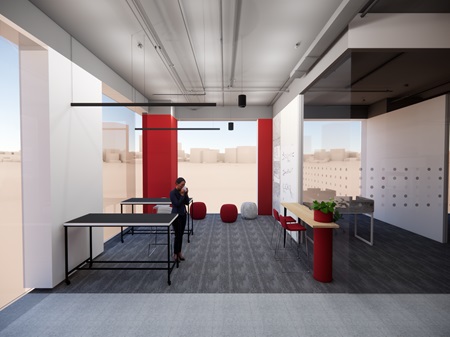
Encouraging Creativity and Teamwork
The primary design goal for us was to create a space that encourages creativity and teamwork. This objective can be achieved by incorporating both formal and informal work and meeting spaces. 5 Star Plus Retail Design implemented an open area, ergonomic standing tables, note boards, and a multipurpose kitchen to foster collaboration and efficient communication within the team.
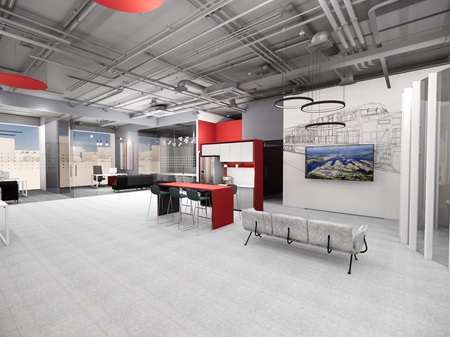
Embracing Sustainability
Sustainability was a core value for our client, and it needed to be reflected in the office design. The kitchen in the office was inspired by the idea of metal containers and incorporated metal mesh, achieving a modern industrial look. This design choice not only contributed to the office's sustainability but also reflected the company's commitment to environmentally friendly practices.
Innovative Lighting Solutions
Innovation is a key aspect of this brand, and this is exemplified by the multiple hanging spotlights in the office. These spotlights not only provide effective illumination but also serve as a highly innovative design solution, adding a touch of uniqueness to the space.
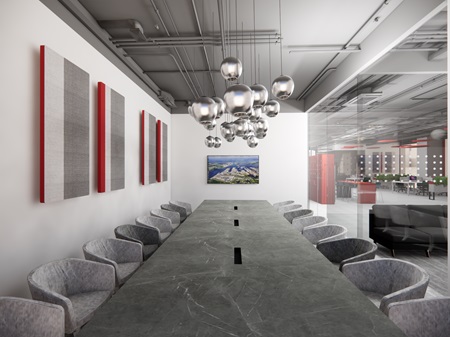
Modern and Visionary Design
Finally, the overall design of the office aligns seamlessly with the company's brand identity, values, and long-term vision. The stylish, clean design reflects the company's commitment to innovation and sets the tone for a forward-thinking workspace.
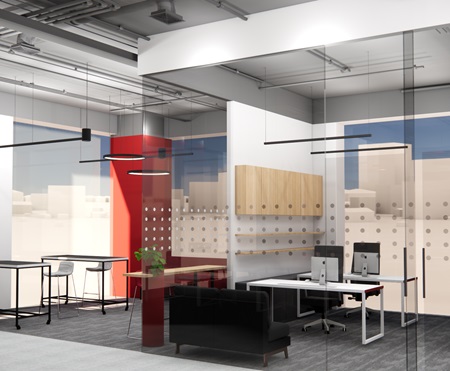
The design work above was developed as part of a project for Cargo Beamer. Designing an office that encapsulates a company's core values and fosters sustainability, creativity, and innovation is a multifaceted process. By examining the successful transformation of our example Beijing office, we've gained valuable design insights that can be applied to any project. Remember to understand the company's values, choose the right location, encourage teamwork and creativity, embrace sustainability, incorporate innovative design elements, and maintain a modern and visionary design to create an inspiring workspace that reflects the company's identity.
> back to top of page

AZO China's Exhibition Stand: More Visibility for an Authentic Brand Through Storytelling
October 25, 2023
As businesses compete for the attention of attendees and seek to make a lasting impact, effective storytelling is emerging as a key trend in exhibition stand design. Through our exhibition stand design created for AZO China, let's explore how storytelling is transforming the trade show field and captivating audiences in this dynamic landscape.
Narrative Environments – Focus on Core Values and Brand Personality Aspects:
Today, design is about creating narrative environments that immerse visitors in a story. They convey the brand's message or product story. By transporting visitors into a carefully crafted narrative, brands can forge emotional connections and leave a lasting impression. In order to create powerful, authentic brands, these stories need to be based on the brand’s identity and the real value a brand creates for its customers.
For instance, in the case of the exhibition stand design for the well-known German brand AZO, the objective was to deliver a visual reference to the environment where AZO China products are in use, which are often warehouses or factories. This was skillfully achieved through shapes inspired by containers and storage units and the incorporation of stainless steel accents, harmoniously blended with the brand's distinctive colors, resulting in a powerful and immersive experience that resonated with attendees.
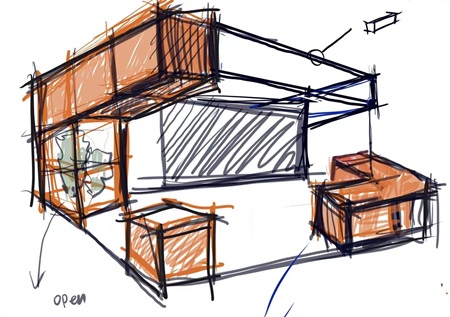
To establish a deeper connection with visitors, the exhibition stand design incorporates five strategically positioned storyboards. These modular elements are designed for easy installation and de-installation, ensuring flexibility in their placement. The storyboards serve as informative pillars, delivering engaging narratives that encompass the company's history, product introductions, noteworthy achievements, corporate news updates, sustainability initiatives, and comprehensive after-sales services.
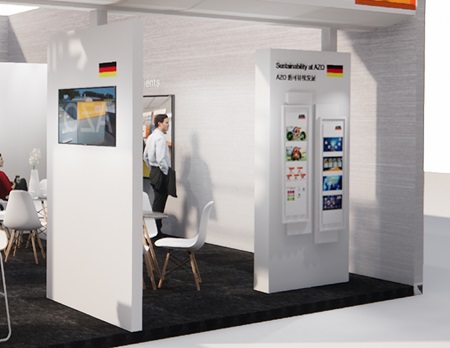
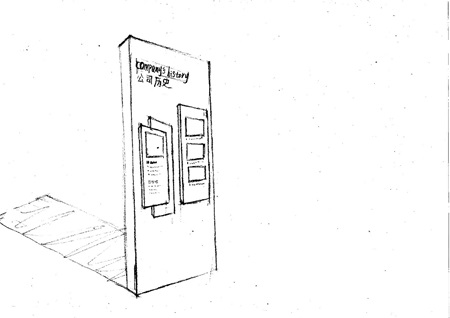
Interactive Storytelling:
Brands are employing touchscreen displays, augmented reality (AR), and virtual reality (VR) experiences to engage visitors. Through interactive storytelling, attendees can explore a brand's story, product features, or corporate values at their own pace. This hands-on approach not only enhances engagement but also allows for data collection and personalized follow-up interactions.
In the context of immersive experiences, the AZO China exhibition stand design places great emphasis on creating a dedicated "AZO experience" area. Here, visitors can fully immerse themselves in the world of AZO China, staying aligned with the brand's position at the forefront of the market. This space offers a unique opportunity to engage with AZO China's products, environment, story, and overall essence through the use of pre-existing content. Furthermore, it serves as an ideal venue for hosting media events or customer presentations, providing a platform to showcase interactive company presentations, captivating 3D factory videos, and even a virtual exhibition stand experience that embodies the essence of AZO China's brand narrative.
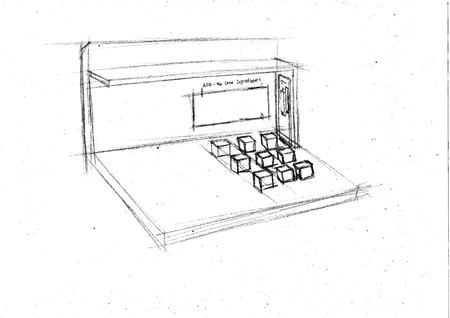
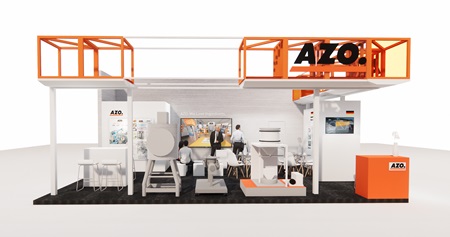
Purpose-Driven Exhibits:
Aligned with the broader trend of purpose-driven storytelling, exhibition stands have increasingly become focal points for conveying a brand's mission, values, and real-world impact. These stands are designed to captivate visitors by prominently showcasing sustainability efforts, social responsibility initiatives, and the broader positive contributions a brand makes to society. In doing so, purpose-driven storytelling serves as a powerful means not only to communicate a brand's core values but also to strike a chord with conscious consumers who prioritize such values.
In this context, AZO China's exhibition stand design drew inspiration from the themes of high-tech, industrial innovation, modernity, and sustainability. The overarching objective was to craft a flexible and modular stand design firmly rooted in the global brand identity, adaptable to various stand sizes for exhibitions in China. A key focus was maximizing component reusability, aligning with AZO China's commitment to sustainability principles. This concept aimed to showcase both the exceptional quality of AZO China's products and the essence of their corporate culture, all encapsulated within an aesthetically striking yet minimalist design.
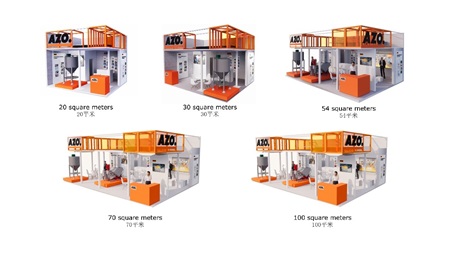
Storytelling in exhibition stand design has evolved into a multifaceted and dynamic practice in 2023. Brands that effectively harness the above-mentioned aspects, and are poised to leave a lasting impression on trade show attendees. As the competition for attention continues to intensify, storytelling will remain a cornerstone of successful exhibition stand design, connecting brands with their audiences in meaningful and memorable ways.
> back to top of page

High-Impact Retail Design: Crafting Authentic Brand Stories for Immersive Customer Engagement
October 23, 2023
In the fast-paced world of retail, where competition is fierce while consumer expectations continue to evolve, high-impact retail design has emerged as a critical component of success. High-impact retail design is the strategic fusion of art and science. It solves the challenges of modern retail by creating immersive, customer-centric spaces that boost sales, enhance brand perception, and adapt seamlessly to evolving consumer preferences.
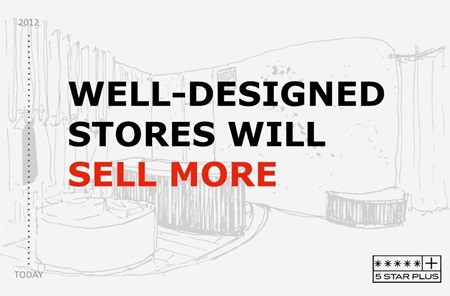
The Impact of High-Impact Retail Design
Consumers, armed with ever-evolving expectations, demand more than just products; they seek experiences and authenticity. The rise of e-commerce further intensifies the pressure. High-impact retail design offers a solution to these challenges. It transforms stores into destinations, drawing in customers and fostering emotional connections by creating immersive and authentic brand experiences. The artful integration of technology, thoughtful layout design, and compelling storytelling captivates audiences, elevates brand perception, and ultimately bolsters sales.
Investing in high-impact retail design is worth it when we look at all the advantages they can bring:
- •Enhanced Customer Loyalty: Immersive, authentic experiences foster emotional connections with customers. When shoppers feel a genuine bond with a brand, they are more likely to return and become brand advocates.
- •Increased Sales and Average Transaction Value: Engaging retail spaces not only attracts foot traffic but also encourages shoppers to linger and make purchase decisions. The result is increased sales and higher average transaction values.
- •Differentiation in a Crowded Market: In a sea of competitors, a store that offers a unique, immersive experience stands out. It becomes a destination, drawing both loyal customers and curious newcomers.
- •Adaptability to Changing Trends: High-impact retail design is agile and flexible. It can be adjusted to accommodate evolving retail trends and consumer preferences, ensuring that a store remains relevant over time.
The Essence of High-Impact Retail Design
Here are some fundamental elements that are essential parts of the high-impact retail design:
Customer-Centric Approach: High-impact retail design starts with a deep understanding of the target audience to be able to create spaces that engage, captivate, and convert visitors into loyal customers.
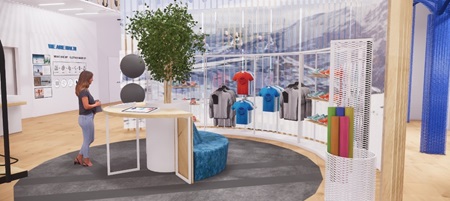
Seamless Integration of Technology: From interactive displays and augmented reality to contactless payment systems, technology enhances the shopping experience, making it more convenient and enjoyable.
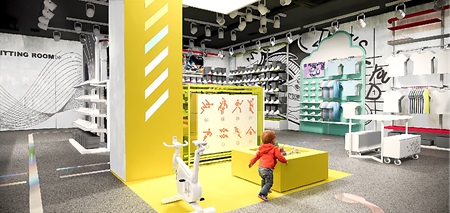
Storytelling and Branding: Great retail spaces are not just stores; they are platforms for storytelling. Through carefully curated visuals, displays, and interactive elements, high-impact design transforms a brand's story into a captivating journey for customers. Storytelling reinforces a brand's identity, creating an emotional connection with customers.
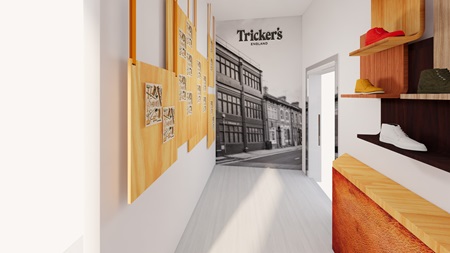
Sustainability: Eco-conscious consumers are demanding more sustainable retail practices. High-impact design often includes sustainable materials, energy-efficient lighting, and eco-friendly store layouts to align with this growing trend.
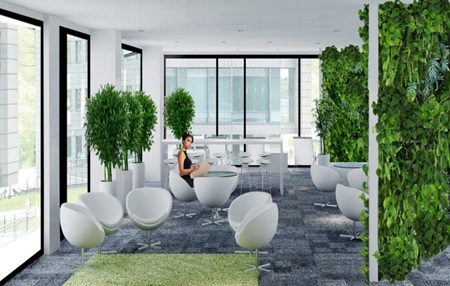
In an era where consumers seek meaningful connections with brands, high-impact retail design is the key to unlocking authentic, engaging, and immersive experiences. By crafting retail spaces that tell compelling brand stories, engage the senses, and transport customers into unique worlds, retailers can forge lasting connections and create brand loyalists. In essence, high-impact retail design isn't just about aesthetics; it's about shaping the future of retail itself.
> back to top of page

The Effect on Consumer Behavior of Chinese and Western Social Media
September 28, 2023
In the dynamic landscape of contemporary retail, the symbiotic relationship between social media and consumer behavior has become an undeniable force. Any comprehensive marketing strategy today must include a robust social media component, as it wields unparalleled influence over purchasing trends. However, it's essential to recognize that the utilization of social media platforms diverges significantly between Western countries and China, despite the overarching globalization of digital culture. This article explores the intricate web connecting social media and the retail sector, exhibiting differences and similarities between the West and East.
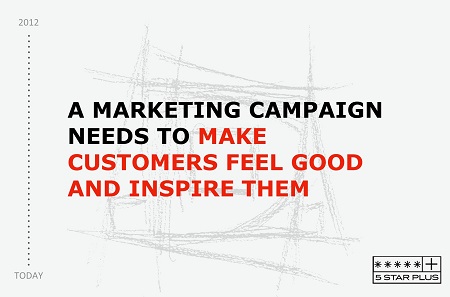
The Distinctive Social Media Landscape: West vs. East
In the Western hemisphere, social media is harnessed primarily for personal communication, content sharing, and networking. Companies here channel their efforts towards crafting compelling content and narratives that captivate users, often enlisting influencers and bloggers for collaborative works. Paid advertising options, connected with targeted ad campaigns, are integral elements of their marketing strategies.
For instance, in 2022, Fenty Beauty, the cosmetics brand founded by Rihanna, embarked on a highly successful social media campaign. This campaign centered around inclusivity and diversity and featured user-generated content celebrating individuals of diverse skin tones and ethnic backgrounds using Fenty Beauty products. The hashtag #FentyFamily became a rallying point for users to share their experiences. The campaign resonated powerfully on platforms like Instagram and Twitter, generating organic reach and promoting a positive brand sentiment.
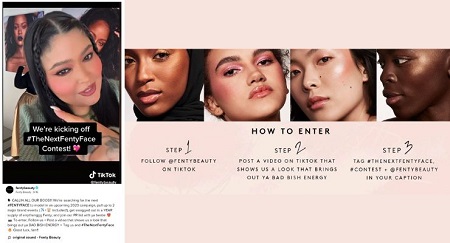
In contrast, China integrates social media with shopping activities at a profoundly interactive level, creating an immersive shopping experience. Here, the basic elements of social media marketing are Key Opinion Leaders (KOLs) and WeChat, an all-encompassing platform that supports personalized marketing messages, loyalty programs, and direct sales. KOLs employ live-streaming, short videos, and product reviews to promote products, while WeChat functions as a multifaceted hub for brand engagement.
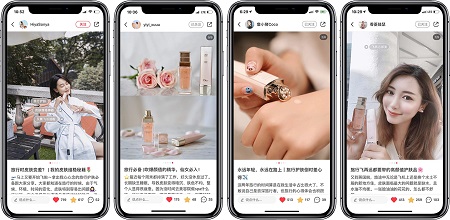
Huawei regularly conducts product launch events via livestream on Weibo and Douyin. These events not only introduce new products but also allow viewers to pre-order them directly within the livestream. This approach integrates brand promotion with e-commerce seamlessly.
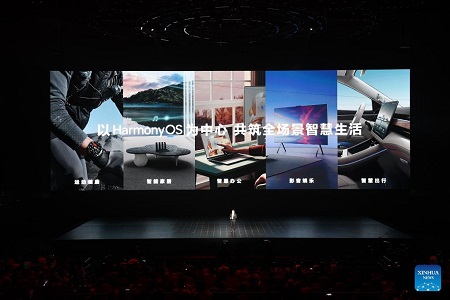
Xiaomi leveraged WeChat for flash sales campaigns. They used their official WeChat account to announce limited-time discounts and sales events, encouraging users to make quick purchases directly through the platform.
Mutually Interdependent Trends: A Globalized Exchange
Despite the distinctions, the influence of social media knows no borders. China has long been a pioneer in social media trends, with practices like influencer marketing and livestream shopping gaining popularity and crossing over into Western markets. The latter, in particular, saw significant prominence during the COVID-19 pandemic when in-person shopping experiences were reduced. China's integration of e-commerce features within social media apps inspired Western platforms to explore similar functionalities, enabling users to purchase directly through their preferred social media channels.
This kind of effect works both ways. Western social media platforms have popularized user-generated content (UGC), the importance of authenticity, personal branding, and the showcasing of lifestyles. These trends have entered China, prompting Chinese companies to adopt UGC and emphasize authenticity. Consumers gravitate towards products that align with their personal brand and lifestyle choices.
The Imperative of Understanding
While mutual influence between Chinese and Western social media trends exists, it is crucial to note that each market has unique characteristics, cultural influences, and consumer preferences. Crafting localized content that resonates with the target audience, and aligns with cultural norms is non-negotiable. Overall, the key to success in social media marketing lies in understanding the target audience, tailoring strategies accordingly, and leveraging the unique features and cultural nuances of each platform. In the ever-evolving realm of social media and retail, this understanding remains the ultimate key to triumph.
> back to top of page

Immersive Experience in Exhibition Stand Design through the Example of the UK Pavilion Concept
September 26, 2023
Strong storytelling and an immersive experience were at the core of our concept when designing the UK Pavilion for the CIFTIS 2023 exhibition stand. Although our design was not selected, we firmly believe it serves as an excellent example of how to lead visitors through a mesmerizing journey of immersive exploration into the "Architecture of the Future" while showcasing various UK sectors and excellence. Guided by the message "See Things Differently," we've woven together a tapestry of inspiration to transport guests into a realm where innovation meets imagination. By creating an environment that immerses attendees in the heart of the UK’s story, immersive design fosters a deeper connection and leaves a lasting impression.
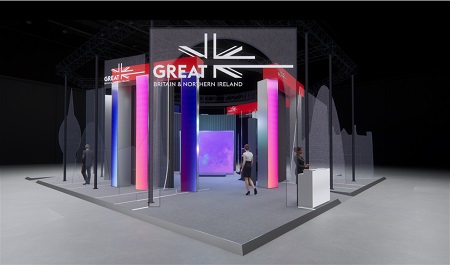
At the heart of our concept, visitors encounter a breathtaking panorama—a dazzling fusion of iconic UK architectural marvels. Here, they witness the physical manifestations of progress and the intricate web of thoughts, information, and services that underpin our modern world.

Standing as the centerpiece of this awe-inspiring landscape is a tribute to the ageless essence of progress—an abstract structure inspired by an ancient UK landmark. However, here, it's reimagined as a masterpiece of dynamic design. The color-changing columns transform into a mesmerizing abstract composition, symbolizing the ever-shifting nature of progress itself.
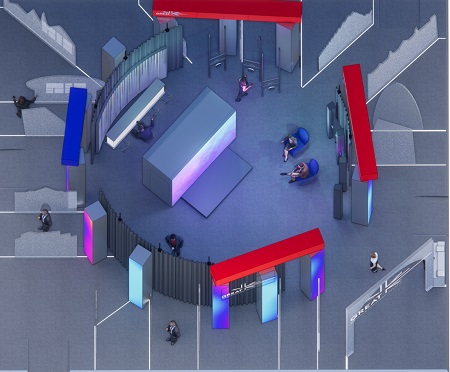
As guests explore further, they’ll be surrounded by translucent, abstract architectural shapes that offer a glimpse into the future. These shapes symbolize the trajectory of state-of-the-art sectors, digitalization, futuristic cities, and the global pathways paved by UK companies, products, and services. Each sector possesses its set of shapes, which are also transparent LED screens. The intricate interplay between these shapes and the central structure creates a seamless blend of form and function.
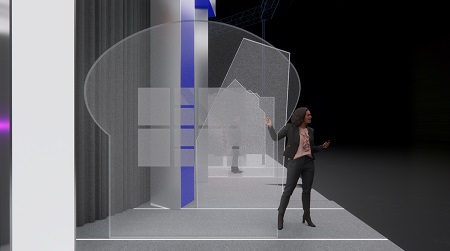
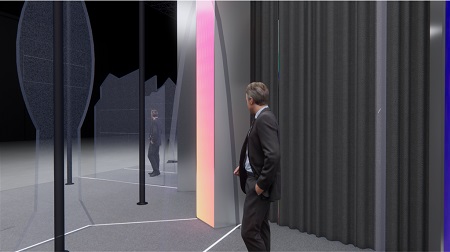
The immersive event area offers an exciting opportunity for guests to experience the best that the UK can offer through VR glasses, headsets, and touchscreens. An immersive art wall displays animated contemporary UK artworks or can be individually controlled via VR equipment for events.
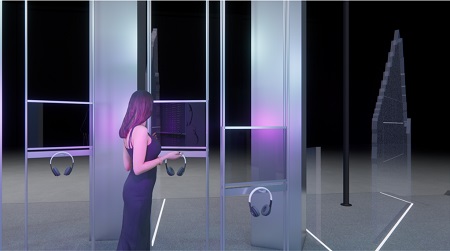
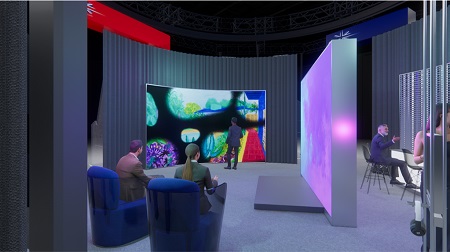
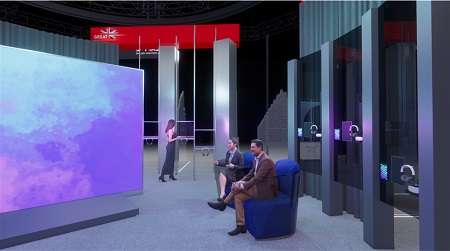
Branding is an integral part of the experience. Illuminated logos, acrylic panels, and LED screens serve as dynamic canvases that narrate compelling stories.
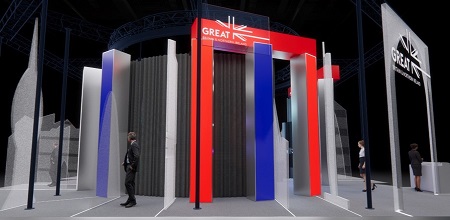
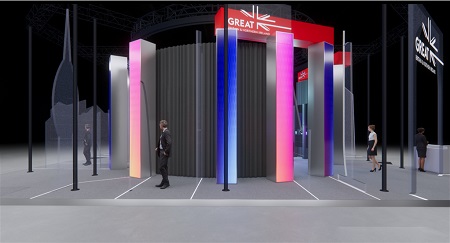
In this combination of inspiration and immersive experience, 5 Star Plus Retail Design redefines the very essence of exhibition design. Such experiences not only enhance brand recognition but also provide an opportunity to convey complex information in a memorable and accessible manner. In an increasingly competitive marketplace, the ability to forge emotional connections through immersive design is a strategic advantage that can significantly impact a brand's success in the exhibition field.
> back to top of page

Nation Branding through Storytelling – Design Proposal for the Austrian Pavilion at the World Expo 2025 in Osaka
August 29, 2023
We are proud to present the work that we have developed as part of the design competition for the Austrian Pavilion at the World Expo 2025 in Osaka. While this pavilion design concept was not successful, it is an excellent example of how storytelling can be applied during the creative design process.
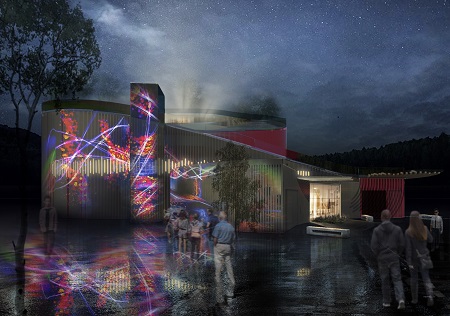
The Expo’s theme “Designing Future Society for Our Lives” includes focal points such as “Co-Creation”, “Robotics” and “AI”. Exhibiting countries are invited to present projects and technologies that are suitable for achieving the Sustainable Development Goals set by the United Nations by 2030.
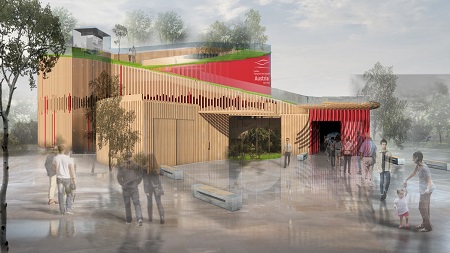
When storytelling is done correctly during the design process, story concepts or values intrinsically linked to the country’s positioning are abstracted and woven into the overall design of a structure or space. On a large scale, applying the story inspirations should happen subtly and abstractly to avoid cliches and tacky designs. When applied to areas where visitors interact directly, the execution can be more concrete. We will explain how we did that for this project below.
Resonance as the Core Idea
As humans, we are responsible for shaping our future; each individual's actions impact this world. If, for example, many people work to implement the idea of sustainability, a kind of positive resonance, insight, and agreement is created, and the idea gains energy and impact. “Resonance” is also an essential concept in music, thus a reference to Austria’s image as the “Country of Music”.

The architectural design concept is inspired by flowing musical shapes and the infinity symbol.
- -The bass and violin clefs provide space for the individual low and high voices of music and unite them into an artistic, grand whole – into “harmony”. This is a reference to the individual voices we have as humans, and collaboration being an important aspect in creating a shared and harmonious, yet multi-layered future.
- -Resonance waves are a sequence of curves. A synchronized resonance pattern from sustainable and coordinated actions creates overall harmony and balance.
- -The architectural forms are inspired by flowing, musical shapes. At the same time, the curves of the pavilion bend into an implied "Infinity" symbol, the sign of unity and infinity
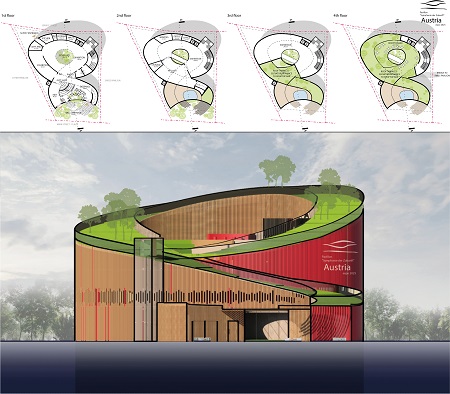
The final architecture perfectly fits into the available lot and maximizes space.
Story keywords: Music, flowing lines, resonance, future, infinity
Austrian Signature Landscape
The pavilion's design is also an abstraction of Austrian landscape forms: It’s a modern interpretation of the Austrian pre-Alpine region's mountains, hills, and valley landscapes. Wood is a significant local resource and is used as a building material.

While the front and left sections of the building's exterior are kept in natural wood color, the facade transitions into a rich red tone towards the right side. Here, the red color represents the multicultural influence and diversity, hospitality, and the well-known Austrian charisma – in short, the qualities for which Austria is renowned worldwide.
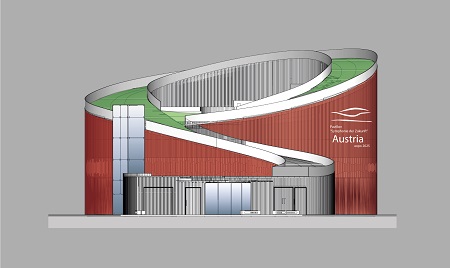
East Asian Philosophy: The Earth, Human, and Sky Trilogy
Embedded within the spatial design is the trinity principle: The pavilion is divided into three thematic areas in the interior, inspired by the East Asian philosophy of "Earth - Human - Sky."

The ground floor, with the thematic area "Earth", showcases exhibition content such as: What is Austria? Clichés are questioned. The second floor, "Human," showcases technologies that people will be able to use in everyday life in the future: at work in a wide variety of industries, in education, and in private life. The top floor, "Sky," deals with more abstract topics and visionary projects. An open space, the "Echo Hall" in the center of the building was designed to confront visitors with themselves and encourage them to reflect.
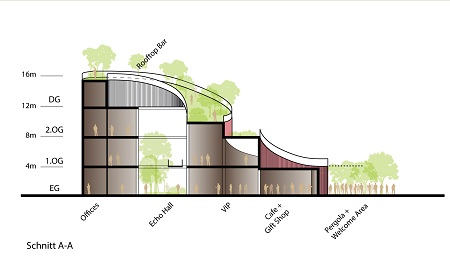
Why is Nation Branding Important?
Nation branding is important for countries to attract more investment and a high-skilled workforce, support the export of products of local companies, and promote tourism. Companies that export products will also benefit considerably from a strong country image – a Nielson study found that over 70% of global consumers believe that the location of a product is important and affects their purchase decision.
Storytelling helps to build an emotional connection with visitors and creates a lasting impression.
Read our previous article about Nation Branding for more information.
> back to top of page

From Screen to Store: The Impact of Retail Design on Live Streaming
June 28, 2023
Retail design meets live streaming - what's the connection? It's all about creating an unforgettable and immersive experience for viewers, bringing the best of online and offline shopping together! Livestreaming events have taken the e-commerce industry by storm, allowing brands to showcase products, interact with customers in real time, and boost sales. But what makes these events truly stand out? That's where effective retail design comes in, enhancing the visual appeal and user experience to increase customer engagement. In this article, we gathered all the reasons why retail design is a must-have for any successful live-streaming event!
Visual Appeal: This reason is the most obvious when it comes to design elements during live streaming. Set design, lighting, props, and backdrops can significantly enhance the visual appeal of live-streaming events. An aesthetically pleasing and well-designed set creates a captivating atmosphere, capturing the attention of viewers and making the event more memorable.
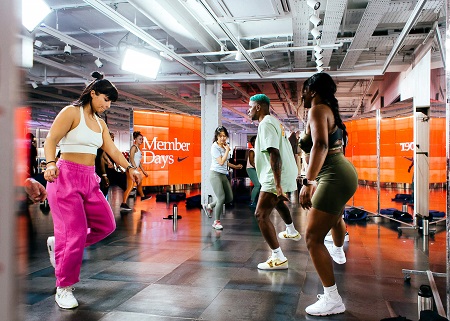
Nike embraced live streaming by introducing "Nike Live" concept stores. Large screens showcased live athletic events, product launches, and interactive sessions with athletes and trainers. Customers could participate in real-time workouts or engage in Q&A sessions with experts.
Branding and Storytelling: Livestreaming events provide an opportunity for retailers to strengthen brand identity and convey the brand's story. Retail design elements can be used strategically to showcase brand logos, colors, and messaging, reinforcing brand recognition and creating a consistent brand experience for viewers.
Product Presentation: Livestreaming events are an excellent platform for showcasing products in an interactive and dynamic way. Retail design plays a crucial role in presenting products effectively, highlighting their key features and benefits, and demonstrating their usage. Creative display setups, product placements, and staging techniques can help capture viewers' interest and generate excitement about the products being showcased.
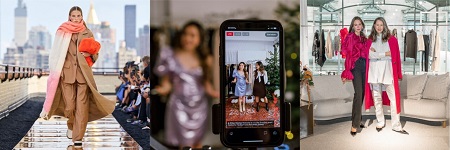
H&M has held live-streaming fashion shows directly from their stores. By setting up catwalks and incorporating interactive elements, they allow customers to experience the excitement of a fashion show while being able to purchase the featured items immediately.
User Experience: Livestreaming events with well-thought-out retail design can provide a seamless and enjoyable user experience for viewers. Attention should be given to factors like camera angles, transitions, and audiovisual effects to ensure that the live stream is visually engaging, easy to follow, and immersive. A positive user experience encourages viewers to stay engaged for longer periods and increases the chances of making a purchase.
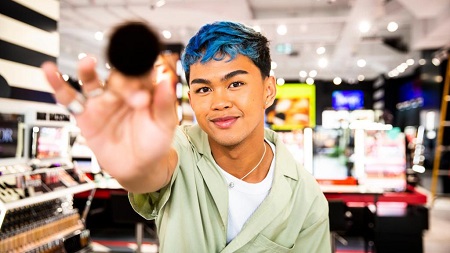
Sephora incorporated live streaming into its in-store experience by hosting live makeup tutorials and product demonstrations. Customers can watch these live streams in-store on designated screens, allowing them to learn new techniques, explore product recommendations, and make informed purchasing decisions.
Call to Action: Livestreaming events are ultimately aimed at driving sales and conversions. Effective retail design can support this objective by strategically placing call-to-action elements throughout the live stream, such as on-screen banners, overlays, or interactive links. These can encourage viewers to take immediate action, such as making a purchase or signing up for exclusive offers.
In summary, retail design plays a vital role in live-streaming events by enhancing the visual appeal, supporting branding efforts, effectively presenting products, improving the user experience, fostering social interaction, and driving conversions. By creating an immersive and engaging environment, retail design helps businesses leverage the power of live streaming to reach and connect with their target audience in impactful ways.
> back to top of page

Must-Have: Customer Experience in Retail
April 30, 2022
Customer experience is not something new to the retail industry however there are still places to improve. Deconstructing Delight report shows that 77% of consumers are willing to exchange personal data for a superior experience and 80% of buyers are more likely to make a purchase when brands offer personalized customer experiences.
The Negative Outcome of Neglecting Customer Experience
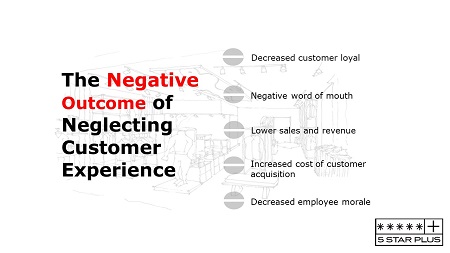
First, let’s see what negative consequences can a brand suffer when they neglect customer experience:
- 1. Decreased customer loyalty: Customers are more likely to switch to competitors if they have a negative experience with a retailer.
- 2. Negative word of mouth: Customers who have a poor experience with a retailer are likely to share their negative experiences with others which can harm the retailer's reputation.
- 3. Lower sales and revenue: Neglecting customer experience can lead to lower sales and revenue. Customers who have a poor experience with a retailer are less likely to make future purchases.
- 4. Increased cost of customer acquisition: Retailers need to spend more on advertising and marketing to attract new customers if they lose existing customers due to poor customer experience.
- 5. Decreased employee morale: Employees who receive negative feedback from customers may become demotivated and disengaged, leading to decreased productivity and quality of work.
Retailers should prioritize improving customer experience to avoid these unwanted outcomes. Knowing what can happen when neglecting customers helps brands act in time and build customer experience into their brand strategy.
How to Improve Customer Experience
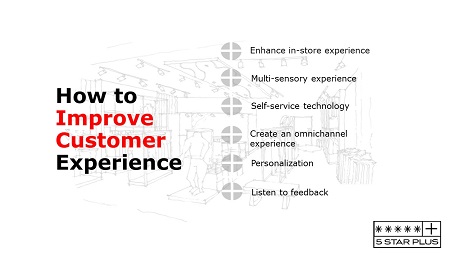
Improved customer experience can be achieved through several approaches, including:
- 1. Enhance in-store experience: Retailers can improve the in-store experience by providing a clean, organized, and visually appealing store layout. A knowledgeable staff who is able to provide excellent customer service and offer personalized assistance is also essential.
- 2. Multi-sensory experience: By catering to every sense, brands can make the store environment more dynamic. This includes sound, contrast in lighting and lighting schemes, projections, screens, smell, and materials.
- 3. Self-service technology: The Future of CX 2022 report suggests that 78% of leaders in the US are investing more in self-service, allowing customers to help themselves with self-help portals and AI-powered chatbots. Solutions such as self-checkout, mobile payment options, and digital signage to reduce wait times, streamline the checkout process, and provide relevant information to customers.
- 4. Create an omnichannel experience: Providing a seamless shopping experience across different channels like online, mobile, and in-store can improve customer satisfaction. Customers should be able to access product information and inventory availability across channels.
- 5. Personalization: Retailers can leverage customer data to offer personalized recommendations, tailored promotions, and customized product offerings that meet the needs of individual customers.
- 6. Listen to feedback: Collecting and acting on customer feedback is essential to improving customer experience. Retailers should actively seek feedback from customers and take necessary actions to address concerns and improve the shopping experience.
By implementing these approaches, retailers can create a positive customer experience, build customer loyalty, and drive repeat business. When brands differentiate on customer experience, they are setting themselves apart from the competition on more than just pragmatic elements such as price or convenience. They are building and strengthening a relationship with the customer that’s built on positive emotion as customers naturally gravitate towards businesses that make them feel good and meet their expectations.
> back to top of page

Why and How to Build an Authentic Brand
April 28, 2023
Customers worldwide are overloaded with information and advertising making it hard for brands to stand out. Providing a quality product or service is no longer enough. Companies need to listen to what customers want and people strive for authenticity, honesty, and genuine and transparent experiences. According to recent Stackla data (via SocialMediaToday), 90% of shoppers cited authenticity as an important factor in deciding which brands they like and support. Authentic brands have a unique point of view that resonates with their customers, who see themselves in the brand's values. The brand speaks directly to its audience and makes them feel understood.
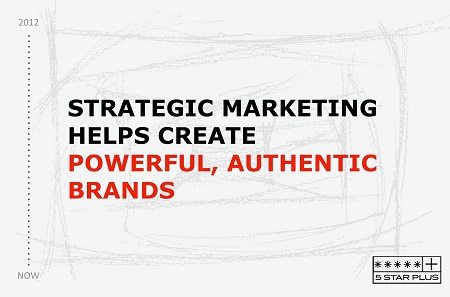
Is it really that important for brands to be authentic?
The answer is a resounding yes. Here are three reasons why:
- 1. The new generation: Gen Z consumers are relatively sensitive to social issues reflected in their brand choice process. Research from DoSomethingStrategic (via MarketingDive) shows that two-thirds of this generation have an increase in positive feelings about a brand because of an association with a social cause, and 58% say that such a relationship can encourage purchase.
- 2. Emotional connection: The emotional connection between consumers and brands is worth more than just being very satisfied with them. According to research covered in a 2015 Harvard Business Review article, “fully connected” customers are worth 52% more than “highly satisfied” customers. These clients are more likely to return due to their emotional attachment to the brand.
- 3. Too much noise: Consumers are overwhelmed by website ads and influencers on social media; as a result, they turn away from advertising and turn to authenticity and credibility. In Bazaarvoice's 2022 Shopper Experience Index, 53% of consumers said that user-generated content (UGC), like reviews and photos, gives them more confidence in their purchasing decisions.
But How to be Authentic?
Authenticity is something brands need to work on actively. Here are five actionable strategies to strengthen your brand’s authenticity:
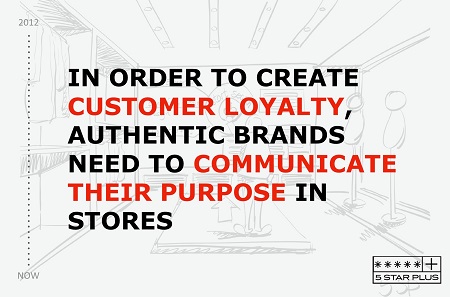
- 1. Define your purpose: What is the purpose of your business? What do you want to accomplish with it? Why should people choose you over another company?
- 2. Identify and understand your audience: Who are they exactly? What do they want from their products or services? What pain points do they experience in their daily lives? What kind of messaging will resonate with them the most?
- 3. Connect your brand to your audience by building a social media presence and using social proof: positive comments, reviews, and posts about your brand will help build trust between you and your customers.
- 4. Share your story: the About Us page should tell the story of who you are as a company, including what makes it unique or different from other brands in its space. That can include the brand’s history, mission statement, values, employees’ bios, etc. These pages help humanize the brand by making it more relatable and personable to consumers.
- 5. Long-term game: building authenticity doesn’t happen overnight. Brands need to be consistent about their messages in the long run.
Authenticity is all about being real and genuine, not just trying to be something you're not. Being transparent about who you are, what you do, and why you do it, is the key. The good news is that creating an authentic brand doesn't have to be difficult or expensive—it just requires that you're willing to put in the time and effort required to get started.
> back to top of page

The Versatility of Interactive Experiential Points
5 Star Plus Series: Adaptable Retail Design
April 26, 2023
Adaptable retail design is part of brands’ excellent strategies to maximize the effect of seasonal promotions. Brands benefit from using adaptable retail design to engage loyal customers and attract new ones with eye-catching new designs, new themed experiential points, and on-brand exciting temporary elements.
The key importance of adaptable retail design becomes crystal clear in the context of Chinese retail market, where brands are constantly competing to attract customers’ attention and provide long-lasting shopping experiences.
The four main elements that can be easily customized in-line with brands’ promotion are:
- 1) Fa?ade Design
- 2) Interactive Experiential Points
- 3) Product Displays
- 4) Pop-up Stores
Part one of this series presented three examples of excellent customized fa?ade executions for the Chinese market by globally famous luxury brands. Part two will dive into the topic of interactive experiential points, as temporary in-store spaces invite customers to engage with a new product line in a more personal and impactful way.
Benefits of Experiential Retail
Experience-based retail has been affirming its role more and more in today’s crowded global marketplace thanks to its customer centric approach. Experiential retail focuses on building a closer connection between customers and brands, as well as, providing strong inputs to develop an emotional connection to the product. Customers have been increasingly valuing the in-store and online experiences brands can provide, thanks to the high level of personalization and long-lasting impressions of new products and services.
Experiential retail can help brands optimize and enhance three fundamental steps:
- ? Customers’ participation: experiences increase both duration and quality of customers’ visits, as well as customers’ participation levels.
- ? Product knowledge: engaging customers in experiencing the product’s features firsthand helps educate customers on product qualities and brand-new features.
- ? Brand awareness and brand loyalty: experience-based interactions can enhance the customers’ brand awareness, as well as increase trust and service satisfaction to build brand loyalty.
Interactive Experiential Points
Interactive experience points are spaces in the store offering customers experiences that are both functional and entertaining. These spaces can engage with customers’ senses and stimulate curiosity towards seasonal products or launches of new lines and designs, but also offer a deeper level of interaction and go beyond immediate needs and wishes.
Especially in China, experiential points have proven themselves to be a useful tool to remain relevant and to adapt brick-and-mortar stores to the latest trends and innovations. Creating interactive experiential points can provide an in-store space to host popular Key Opinion Leaders (KOLs) events that will draw online fans and curious by-passers in the store, or digital immersive experiences that will impress tech-savvy Chinese customers.
WeChat integrations – Burberry 2020 “Social Retail Store” Opening
In July of this year, Burberry opened their new “social retail store” in Shenzhen with an exclusive partnership with Tencent. The store tech integrations are powered by a WeChat mini-program that allows customers to book fitting rooms, access exclusive items and additional on-brand experiences as “The Trench Experience”, as well as scan QR codes on items to gain more information on the product. This new store’s integrations render the store incredibly flexible and will grant the seamless adaptation of the space for any of the brand’s future collections and new designs.
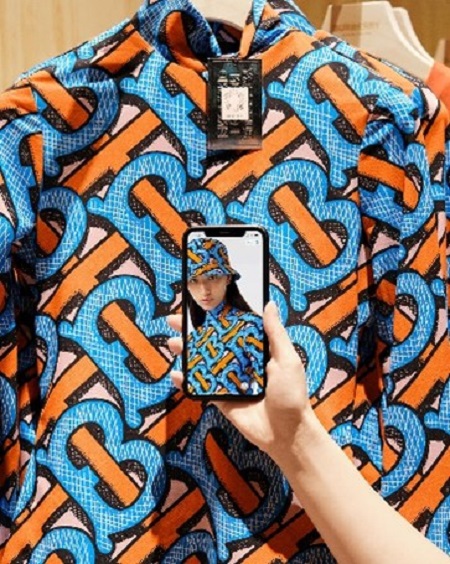
Image Source: Frame
AR Smart Mirrors – Swarovski 2019 Chinese New Year
In 2019, Swarovski Store in Chengdu opened its doors to customers with new interactive experience points. The store displayed interactive screens, presented as Swarovski crystal framed mirrors and equipped with front cameras and control panels. Through these interactive mirrors, customers could “try on” any piece from the brand’s jewelry new collection appropriately themed for the Chinese New Year. In addition, the interactive mirrors allowed customers to take pictures with Swarovski stickers and share them with friends.
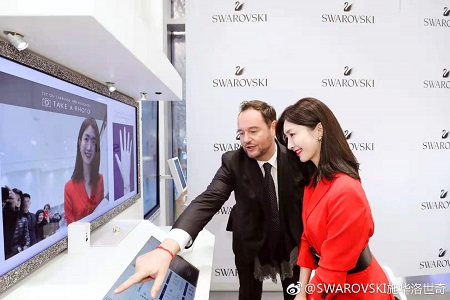
KOLs/Brand Ambassador Events – KAPPA 2018 Autumn/Winter Collection
In 2018 Kappa presented their new 222 Banda Autumn/Winter collection with a live event in their Xi’an store. The event saw the participation of the brand ambassador and popular actress Zhu Xudan, who interacted with customers with quizzes and other entertaining activities, rewarding the fans of the brand with gifts and prizes. The brand’s strategy for the new collection launch also included a live event in their Beijing location, which saw the participation of various popular KOLs and reached 39.7 Million views on Weibo, boosting the brand’s online presence and driving in-store traffic.
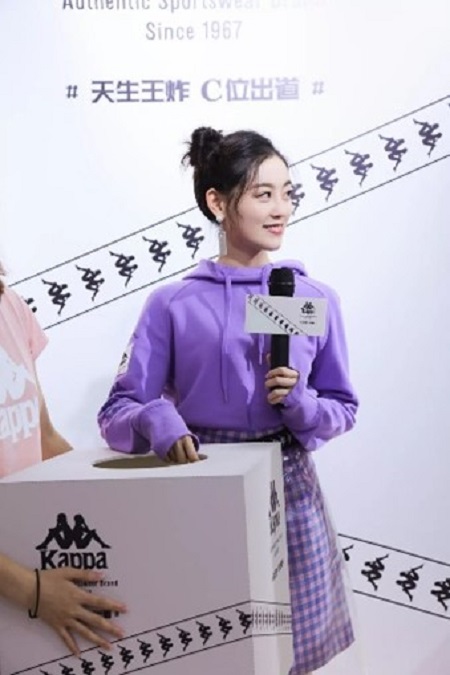
Image Source: Sohu
Exposition Displays – Huawei 2020 Smart House Floor
For the opening of their new Shanghai flagship store, Huawei has adapted an entire floor to showcase their latest innovations in Smart House technologies. On the second floor, customers can live the experience of various domestic settings, including a home gym where they can monitor their heart rate on the treadmill connected to a Huawei smartwatch. The exposition is fully immersive and provides a truly personalized experience, which will allow customers to picture themselves in the environment and guide their purchase decisions.
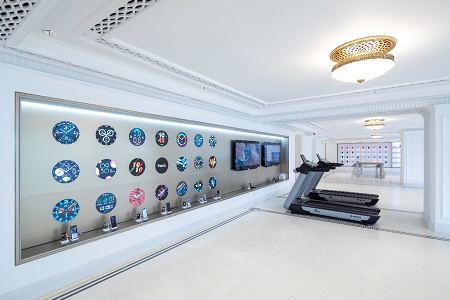
Image Source: Huawei
Key Benefits for Brands
Brands can benefit from creating interactive experiential points to promote new launches and seasonal products in three ways:
- ? Create reusable stations: interactive experiential points can be temporary or permanent, and they can be used to draw attention to one or more seasonal promotions and new launches.
- ? Connect with key market segments: brands can showcase their tech affinity and attract key target groups like Gen-Z and Millennials. KOLs and Brand ambassador events can also help connect with younger generations and drive both online and in-store sales.
- ? Expand promotions reach: customers will share their experiences through their social media channels, creating a loudhailer effect and maximizing promotions’ reach.
Outlook
Interactive experience points are highly adaptable ways to display different collections and seasonal promotions throughout the year. WeChat integrations, smart mirrors, KOLs events, and exposition displays can bring all the benefits of experiential retail customer-brand connection and increase brand loyalty.
In the next article of this series dedicated to adaptable retail design, we are going to focus on ways brands can magnify the impact of their products on customers using adaptable product displays.
> back to top of page

Omnichannel Retail Strategy Best Practices from Libro and Pagro Diskont CEO Ulrike Kittinger
March 31, 2023
Libro is a brand that many Austrians have been growing up with. The specialty retailer selling school and office supplies, books, and entertainment products has over 190 physical stores and is one of the strongest, most well-known brands in the country. According to Austria’s Retail Association, Libro is the market leader in the office supplies segment and ranks 24th place in the list of Austrian retailers.
What’s most impressive about Libro is that it has been operating based on a stable and powerful brand for over 20 years with a well-proven concept that local consumers are familiar with. The same applies to its sister company Pagro Diskont, another specialty retailer offering office and creative supplies.
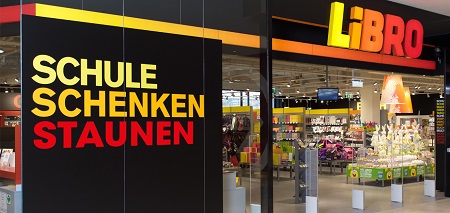
Libro Store
Image Source: Libro
Testimony to its brand strength and successful anchoring in the minds of Austrian consumers is the fact that Libro’s most successful advertising tool is still the traditional flyer that is sent regularly to 2.5 million Austrian households.
With this in mind, it might come as a surprise to some that the Libro and Pagro Diskont brands are also successful omnichannel retailers that have not only implemented a number of innovative features in their online stores but are also proactively using social media for a number of clearly defined purposes. According to the Retail Association’s “Omnichannel Readiness Index 2022”, Libro is the leading innovative omnichannel retailer in the sector of books and office supplies.
Both Libro and Pagro Diskont have their own online stores and proactively use platforms like Instagram, Pinterest, Tiktok, and Facebook for new customer acquisition, traffic channeling, personalized ads, and community building. According to reports published by the Austrian Retail Association, some customers research online and then purchase offline, whereas some browse the products in the physical store before buying the chosen items online. While Libro and Pagro Diskont still make most of their revenue in their physical stores, the online stores and the activities on social media channels fulfill an important, complementary purpose.
We spoke to Ulrike Kittinger, CEO Libro and Pagro Diskont at MTH Group, to learn more about the omnichannel strategy that the brands are using.

Ulrike Kittinger, CEO of Libro and Pagro Diskont at MTH Retail Group
Photo Credit: Daniel Bointner
Ms. Kittinger, please tell us about your omnichannel strategy for both brands. What channels are you using for which purpose?
The backbone of our operations is still our brick-and-mortar stores, where most of the sales transactions take place. Both brands, Libro and Pagro Diskont, have well-developed online stores that serve an important objective. Some customer groups visit our online store with the main objective of browsing products before purchasing offline, others have a clear preference to buy online. Both channels complement each other. Online we offer features like “click and collect” and “click and reserve”.
Customer experience is something we value, and there are a number of services that are only offered in either our physical stores or in our online shops. For example, teenagers who do not own a credit card can reserve and purchase tickets for basically all events and concerts in our brick-and-mortar stores. Customers can order a book and pick it up in one of our stores.
We also work with social media, including Instagram, Pinterest, Facebook, and TikTok.
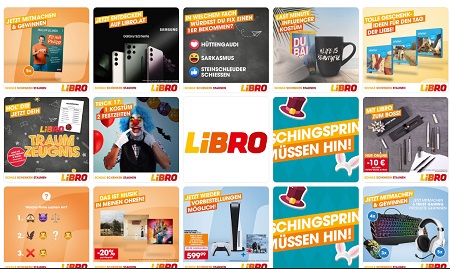
Libro’s Facebook page
Image Source: Facebook
We use Facebook and Instagram to attract new customers, and we have started to work with Instashopping. We also use these platforms for community building. Our content can include creative inspirations, editorials, or ideas on how to use our products. In order to engage and interact with our customers, we design voting challenges or lucky draws. In addition, we collaborate with influencers to strengthen our positioning and increase our reach and work with personalized ads.
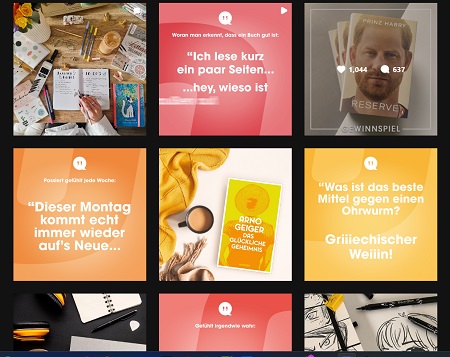
Libro’s Instagram page
Image Source: Instagram
For our brand Pagro Diskont, which has a strong positioning in creative and handicraft work, we built and engage with a creative community on Pinterest. Here, most content is creative ideas and inspirations.
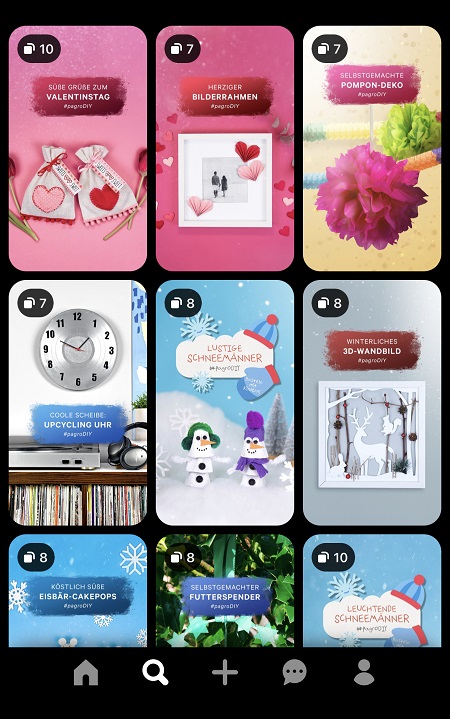
Creative ideas on the Pinterest account of Pagro Diskont.
Image Source: Pinterest
To further support our creative community at Pagro Diskont, we also publish a quarterly print and online magazine called “Ideenwerk” (“idea factory”).
Finally, TikTok is a platform any brand needs to work with when they want to engage with younger consumer groups. What’s amazing about TikTok is that you can reach a very big audience for a comparatively small budget. One fun thing that we do on TikTok are “trend challenges”.

A short video on TikTok.
Image Source: TikTok
We also work with automated, personalized ads. After a customer has browsed a theme, he or she will later receive ads from us offering related products.
At 5 Star Plus Retail Design, we believe that authentic brands are powerful brands that sell more. Throughout your stores and all of your online channels, there are core values and messages that are consistently implemented. What are they?
Yes, our beliefs and messages are implemented in everything we do; you can feel them whenever you are in one of our stores or get in touch with us:
We have our finger on the pulse. We represent openness and enthusiasm for new ideas. Efficiency. And fun using our products. And finally, we are reliable – you can find everything you need at Libro, particularly in the sectors of school and office, paper and writing utensils.
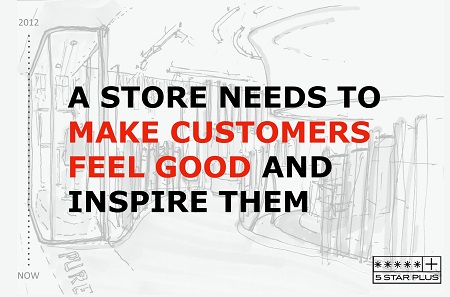
Image Source: 5 Star Plus Retail Design
How are you able to compete with global low-cost e-commerce players like Amazon?
One of our competitive advantages is the “local factor”. Many of our products are produced in Austria. For example, our exercise books are all 100% produced in Austria. Thanks to extensive and continuous customer research, we understand that this aspect is something our customers care about. We have our own line of products, Novooo, which is mainly produced in Europe.
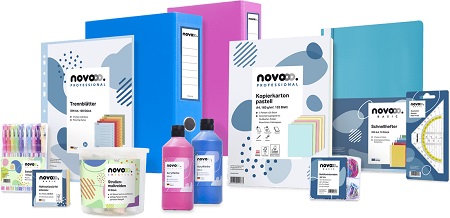
The Novooo product line, produced in Austria and Europe.
Image Source: Libro
We are also part of the Jö Bonus Club, which is a multi-partner system with which customers can collect bonus points. After you buy with us at Libro, for example, you may use your collected points and choose to buy with a 20% discount at partner grocery retailer Billa. This loyalty program is very effective and an advantage that our customers do appreciate.
What are your most effective means of advertising at Libro and Pagro Diskont?
Most effective are still traditional flyers which we send to 2.5 million Austrian households. Thanks to our data analytics, we know that they have the strongest pull effect and best result in terms of sales conversions.
The second most powerful tool is the earlier mentioned Jö loyalty program. We use print mailing and emailing through the platform for an extended reach.
Third, radio ads are very effective in strengthening our positioning and communicating seasonal product offerings and promotions: school start, Easter, carnival, and similar.
You work a lot with customer analytics in your company. Can you tell us what exactly it is you are doing?
We work with customer count and customer flow analysis. Online ads measure customer satisfaction. We do regular market research. Two of our most important KPIs of the online store are the NPS (Net Promoter Score) and the Trusted Shop score. Both provide essential customer feedback that we use for analysis and as the basis for changes and improvements. We have also standard KPIs like customer frequency and sales transactions that we measure in our physical stores and online shops and check and report on every day.
Other customer data is checked once or twice a month and compared with previous months or the previous year. What we want to analyze and understand is: how did certain marketing measures and promotions work?
We evaluate our RFM (Recency, Frequency, Monetary Value) scores to review customer value and segmentation. And we compare the achieved results with our targets.
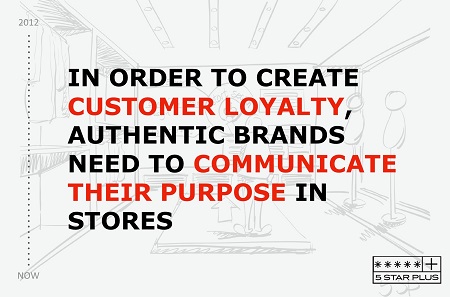
Image Source: 5 Star Plus Retail Design
It’s inspiring to see that two of Austria’s most well-known brands are led by a woman. Tell us about topics like Gender Balance, Diversity & Inclusion, and Corporate Social Responsibility at Libro and Pagro Diskont.
I’ll start with our social activities: We support SOS Kinderdorf, an Austrian charity sheltering orphaned kids. For each returned used printer ink cartridge 1 Euro goes to this charity. We also donate learning materials, books and games.

Cash and book donations to SOS Kinderdorf.
Image Source: Libro
When a customer buys a “red nose”, a symbol to support the Rote Nasen Clowndoctors organization, we match the amount to double the donation.
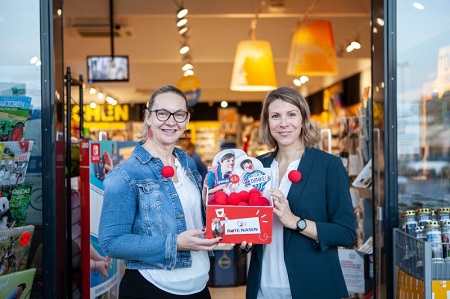
Sales of “Red Noses” in Libro stores.
Image Source: Libro
Another charity we support, besides a number of smaller charitable organizations, is Caritas with their “Lerncafe” (“learning cafe”) program. We provide a significant number of learning materials and donate a part of the sales return of selected novooo products to Caritas.
In terms of diversity, we are a team of three CEOs and two of us are women. More than 60% of our middle management are female. Having said that, there is room for more mixed leadership balance in the advisory board.
Personally, I believe in the empowerment and support of all of my employees. We also offer shared leadership positions.
What have you planned for the future?
We will launch our new brand positioning and branding for Libro this June. The future will be more digital – more virtual reality, but also more digital school.
I believe that sustainability will be a huge topic. This is important for many customers, and we will work increasingly in the direction of eco-certification and recycling of our products.
Thank you for the interview!
> back to top of page

2023 Relaunch- How Customized Facade Design Maximizes Seasonal Promotions
5 Star Plus Series: Adaptable Retail Design
March 26, 2023
The core strength of adaptable design is flexibility. Adaptability in retail design allows for a quick and agile implementation of strategic changes, reshaping the space with new designs in-line with the promotion and leaving long-lasting impressions of the brand and products. The elements of an adaptable retail design give the possibility to put hands back at any moment to the appearance and conformation of the space after its realization.
Goals of Adaptable Retail Design
The goal of adaptable retail design is to provide brands with the possibility to expand the reach of their seasonal promotions and effectively maximize their effects:
- - Attract customers: brands can effectively engage loyal customers by reshaping an already familiar space in new ways. It also allows for implementing high-impact designs that help attract new customers.
- - Provide experience: setting up temporary experiential points can expand the range of entertaining activities customers can engage in while visiting the store.
- - Promote new products and designs: eye-grabbing new elements complementing the main design help focus the attention on the new lines and seasonal items.
Elements of Adaptable Retail Design
In this four-part series we are going to explore the possibilities of the main elements in adaptable retail design. The four main elements that can be easily customized in-line with the brand’s promotion are:
- 1. Facade Design
- 2. Interactive Experiential Points
- 3. Product Displays
- 4. Pop-up Stores
These four adaptable design elements enable brands to achieve key goals. While these elements can be combined, it is important to see how some brands successfully implement them separately. Part one of this series will examine how to execute facade design adaptation for seasonal promotions and new product launches.
Customized Facade Design Execution
Changes in the facade designs are often one of the first indicators for prospective customers of the brand’s new products and seasonal lines. The facade of the store has to enhance brand recognition through its best representation of the brand’s new concept and complement the main design of the store while revamping its image altogether.
A simple but effective way to signal novelty in facade design is the use of temporary window decal stickers in line with the collection promoted. While windows stickers used to be applied by lower cost retailers in the past, a number of luxury brands have adopted this customization technique in creative and exciting ways in recent years.
Gucci – Qixi Festival
For this year’s Chinese Valentine’s Day, or Qixi Festival, Gucci unveiled a new limited-edition line inspired by the English saying “Apple of my Eye.” The new design of the two interlocking GG in red print introduced an apple motif used to revamp the monogrammed accessories and apparel, but also the facade design of key locations. The stickers of the GG apples and the winged hearts covered the facade of the store two floors, with larger-sized stickers for the top floor allowing the brand to expand the promotion’s visual reach and to catch the eye of pedestrians even at a distance.
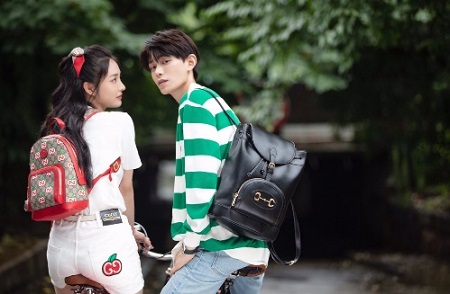
Image Source: QQ
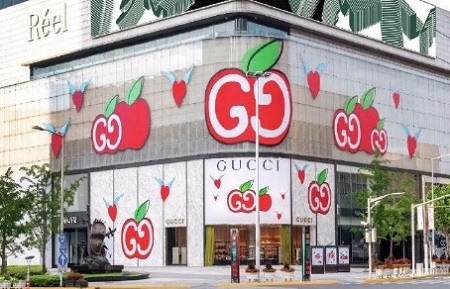
Image Source: Cunman
Dior - 2018 Autumn/Winter Collection
On occasion of their 2018 Autumn/Winter collection launch, the French brand opted for a hyper-visual and very stimulating facade design. Their collection, renamed “Youthquake”, took inspiration from the 1960s French youth cultural movements and used various slogans of the time as design elements. The collection’s new design visually translated in impactful stickers shouting the campaign slogans in large letters, as well as in a collage of black and white old-style photos and splashes of color. The vinyl decal stickers allowed the brand to present their new collection globally from avenue Montaigne in Paris to Beijing Shin Kong Place, easily adapting the concept to the facade conformation of different locations.
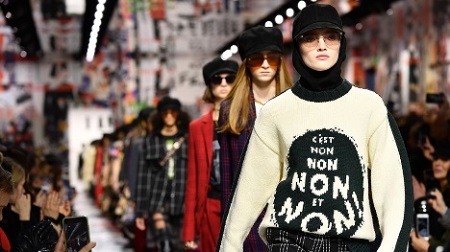
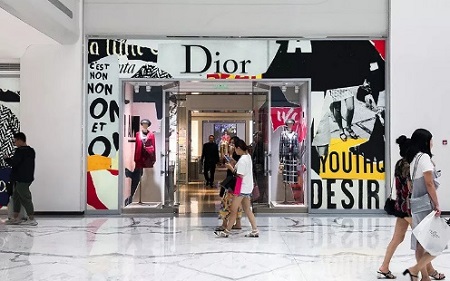
Image Source: Xuehua
Montblanc – 2020 Re-opening Campaign
For their Shanghai Grand Gateway re-opening and for stores across the country, Montblanc has adapted their global brand campaign “What Moves You Makes You” in a new monogrammed pattern in fluorescent blue. The location’s facade glass windows and glass doors are covered in decal stickers arranged in diagonal lines. The stickers thin format allows them to keep the storefront transparency, while creating a well-ordered rhythm that gives movement to the store facade. The new campaign design maintains the classic and high-end appearance of the Montblanc Maison, but also manages to successfully spin its looks and add exciting new elements.
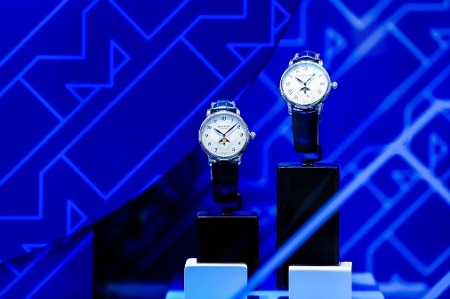
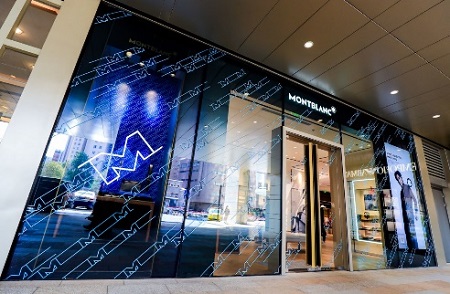
Key Benefits for Brands
Brands can benefit from customizing their storefront facade to launch seasonal promotions in three ways:
- - Catch Chinese customers’ attention: the most important benefit of facade adaptation is the possibility to signal to customers that there is something new in store for them. This is particularly relevant for Chinese consumers, who expect certain special feasts and seasons to be celebrated with products specifically tailored for the occasion.
- - Implement omnichannel strategy: excellent facade designs drive in-store traffic and increase online engagement with the brand. In an omnichannel promotional strategy, eye-catching decal stickers will impress customers and bring them to engage with brands also online.
- - Cost-effective design adaptations: decorative elements like window stickers in vinyl are a practical and cost-effective solution to adapt the brand’s new collection concept and designs to its physical space. They allow modifying the entire facade of the store without the need for complex structural changes.
Outlook
Adaptable retail design integrates the brand’s core visual identity with exciting new elements and theme-variations on the design. Facade design adaptation provides the possibility to customize relevant elements of the storefront, like the front entrance and glass windows, without impacting or changing the main architecture.
In the next article of this series dedicated to adaptable retail design we are going to present another way to impress tech-savvy Chinese customers and invite them to interact with a new product line: Interactive Experiential Points.
> back to top of page

2023 Relaunch- Introducing Environmental Psychology
5 Star Plus Series: How Can Psychological Effects of Architecture Benefit Your Business?
March 18, 2023
We spend most of our lives inside buildings: at home, at the office, in restaurants and other facilities. Our general well-being, thoughts, and mood are shaped by the walls and features of these buildings. In this new series, we introduce environmental psychology, how to consider it when designing a retail space as well as the positive and negative effects of architecture on humans. In the first article, we commence with the fundamentals of environmental psychology, how people form their preferences and how architecture impacts our stress levels.
Environmental Psychology
The field of Environmental Psychology is dedicated to understanding how people interact with the buildings and the spaces around them. In the past, a trend was to include psychologists in the design process with a peak during the 70s. Soon after, companies lost interest in working with them because they thought that architects had enough understanding about the end-users and their needs. That means that most buildings are designed with an intellectual approach instead of an emotional one. In China, where Feng shui originated, experts think that architecture is disconnected from other disciplines and the rest of humanity.
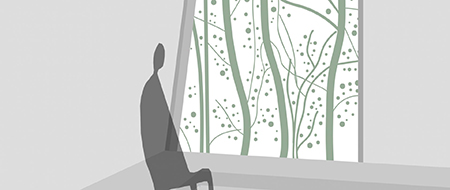
Preferences
There are multiple reasons why someone would like one space or building while someone else would dislike it. From an evolutionary point of view, human brains have been encoded to associate a sense of pleasure with objects and places that increased our chances for survival. That included food, water, shelter, and to be more specific, the layout of the savanna. Modern humans still associate shelter with pleasure but in a more subjective manner.
Environmental psychologists look at different categories when it comes to understanding people’s preferences. That includes how people perceive design elements, how intrinsic factors influence their mood, and if any social things happen in the space.
Researchers found out that people tend to prefer clean environments with less ornamentation, uncluttered spaces with an open view, and good illumination. Well-balanced, good designs do not require too much attention from people and make it easy for them to move around while promoting wellbeing in an overarching way. Researchers have also found that natural-looking patterns, naturalistic architectural spaces may evoke similar psychological benefits as interacting with nature itself.
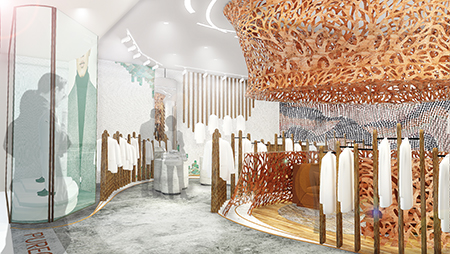
"PUREONES concept store design with high-end wood and stone flooring and ceiling in a naturally balanced interior. The colors, shapes and materials were chosen to create harmony with Chinese culture and values."
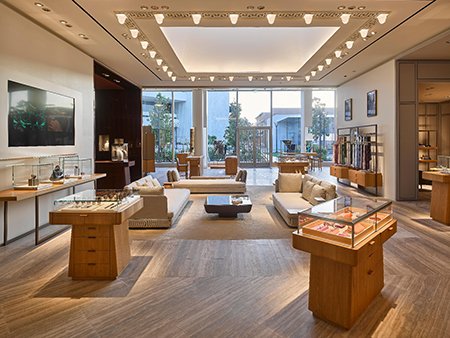
"Natural dark flooring resembles the dark surface of the earth while the brighter ceiling corresponds with the sky. This helps to create a feeling of being grounded in the natural environment."
What is Beauty in Design?
We all know that the word “beautiful” is fundamentally subjective however, the feeling associated with it is universal. When we see something that we define as beautiful, it causes us to feel pleasure. This feeling of pleasure is a result of oxytocin, endorphins, and DHEA being released inside the brain.
Buildings with similar features as the shelters of our human ancestors, provide us with a sense of pleasure. Therefore, to incorporate these elements into the design, we need to identify and understand these characteristics and patterns our brain associates with survival attributes. These elements are mostly taken from nature. To mention a great example; Sagrada Familia by Gaudí who was influenced by his religious and metaphysical views. The treelike structures and flower-like canopies make it clear for visitors that the inspiration for the cathedral came from the forest.
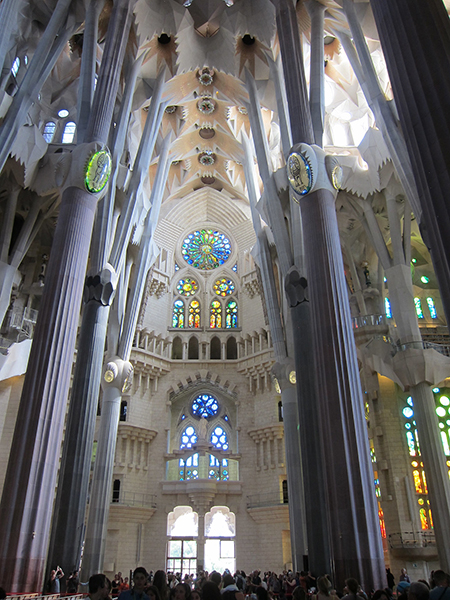
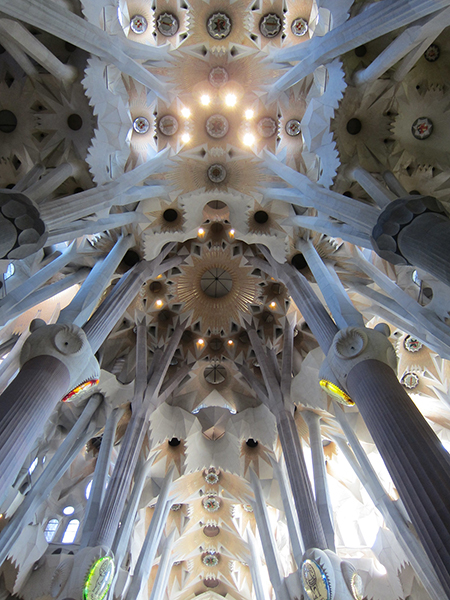
Image Source: Flickr
Almost every ancient civilization incorporated environmental psychology in their unique way: Feng shui in China, Vastu Shastra in India, geometric patterns in the Arab, Roman, Druid, Aborigine, and Native American architecture. Their designs were in harmony with their life and their natural environment.
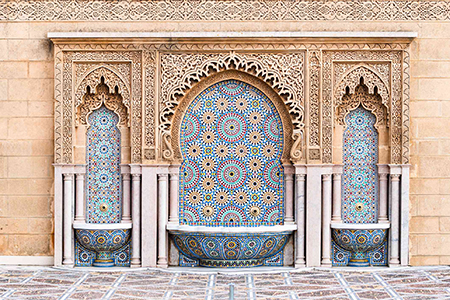
" Arab architecture features repeated patterns and non-figurative geometric or vegetal motifs. These patterns are inspired by the guidance of the Quran.."
Architecture as a Form of Stress Release?
Is it possible to use design and architecture to improve the stress level and mood of people? Nowadays, we experience stress in a very different way compared to our ancestors. For us, stress can be caused by multiple reasons and differs from person to person, ranging from traffic to a job, relationships, or seemingly trivial things. Unfortunately, stress has become a prominent factor in our modern life with an effect on our health. That is where architectural and interior design and their positive psychological effects come to the picture. The built environment has direct and indirect effects on human psychology with an impact on senses, mood, emotions, motivations, judgments, decisions, health, and participation in physical activity and community life. With the use of the right colors, shapes, patterns, and materials, retail designers can calm down, motivate and inspire visitors.
Apple, one of the retail giants always combined human emotions when designing an intelligent store experience for their customers. They emphasized creating a genuinely relaxed in-store experience, a sales-free, pressure-free place to relax and absorb. In every store, there are a lot of details to serve customers, to induce their sense of trust, relaxation, positive reinforcement, and their general mood: the layout, the decor, the pressure-free environment.
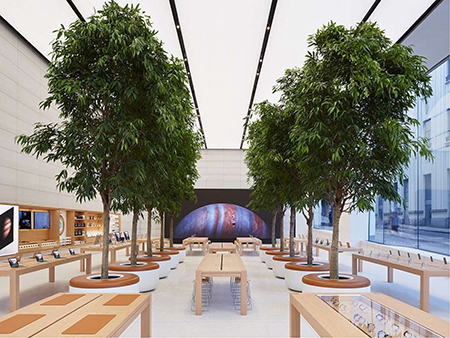
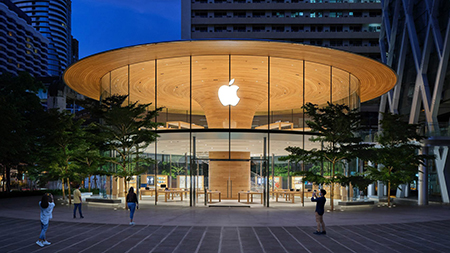
Image Source: Dezeen
In our next article, we will further explore the field of environmental psychology and its role in our everyday, modern life. We also think that it's essential to discuss potential mistakes as well. Besides the good cases, we will write about examples that have questionable or even contradictory effects on people.
> back to top of page

2023 Relaunch - Contrast and Details
5 Star Plus Series: Design Principles in Store Design
February 24, 2023
We have come to our last article on the Retail Design Principles; Contrast and Details. In the previous three articles, we introduced eight topics as the basic elements of interior design. If you missed them, we suggest reading them to fill yourself in:
- - Harmony & Unity, Gestalt, and Space
- - Dominance, Hierarchy, and Balance
- - Scale & Proportion, Rhythm & Repetition
Contrast
Contrast is not just an aesthetic tool to make things look nicer, prettier, it is also highly functional. The definition for it is when two elements with opposing characteristics are placed together. It can be achieved easily when these two things are different regarding a common principle or aspect such as color, size, texture, style, and the use of positive and negative spaces. It has a psychological effect on people since the existence of contrast is why we can see and identify things.
The level of contrast can vary from subtle differences to extreme ones. A high level of contrast may appear aggressive, bold, dynamic, energetic, or attention-seeking. On the other hand, a low level may create the opposite effect, a more static, blended, and more peaceful environment. The appropriate level of contrast depends on the desired effect or impact. The chosen level of contrast affects how things appear; some items will be contrasted while others won’t be within one composition.
We can differentiate different types of contrasts in interior design:
- - masculine versus feminine
- - geometric versus organic
- - plain versus ornate
- - small versus big
- - dull versus bright
- - dark versus light
- - old versus new
- - textured versus smooth
- - light versus heavy
- - fragile versus sturdy
The whole design concept for the Swiss National Pavilion evoked around contrast. The objective was to represent both traditional and modern aspects of Switzerland. For that 5 Star Plus Retail Design used various types of contrast. Playing with contrasting colors (white and red) and materials (red metal structure and natural wood) helped to create the desired feeling. The back wall of the bar and chalet element evoked a slightly traditional feel, the enwrapping counter desk was designed to set a modern contrast in white with LED lighting accents.
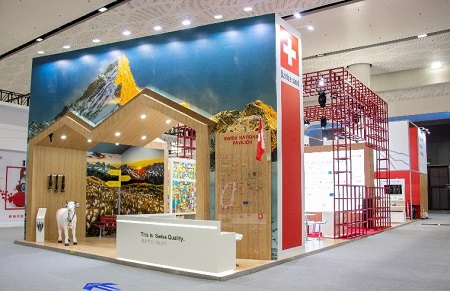
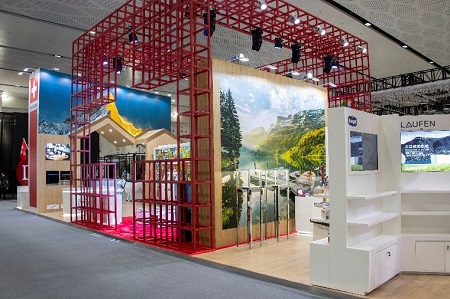
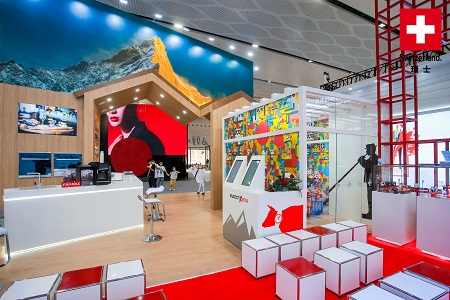
Image Source: Photos are the courtesy of Swiss Business Hub China
Details
Details are one of the most important interior design principles. It means that the designer pays attention to the project's smallest details in the interior. Everything from the material choice to light switches, the handles on the cupboards, lighting fixtures, wall finishing, and other decorative elements are all classified as details in the interior. Details should be in line with the overall design concept, the artistic inspiration, and the positioning of the brand. It also serves as a display of the quality of the project.
Details enhance the overall theme of the space and need to be just right. Small details might not have a huge impact by themselves but when they are grouped together, they are the perfect tool for composing a perfectly-finished retail environment. Small details should not be overlooked as they can create a sensation of unfinished space, where people feel that something is lacking.
For Marja Kurki, details were one of the most vital aspects. Because of the floor plan restrictions and the absence of walls, they needed unique displays to grab visitors' attention. Modular structures, circular tables make the product representation more attractive. Artificial marble and bronze textures were used to help shift the store design from a more traditional to a lighter, modern one. The “Scarves Tree” fixture is aimed not only to display the brand’s most recent pieces but also to enforce their statement – “Fashion accessories made of natural materials”.
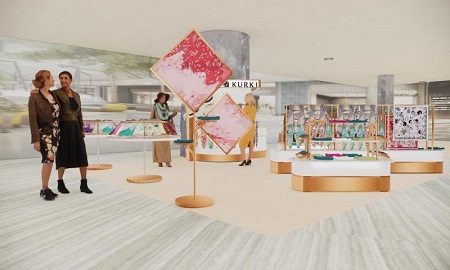
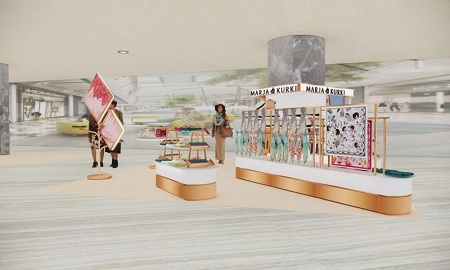
The interior design principles that we introduced in this series are the base and foundation of every design project. Every great interior designer will know how to incorporate some or all of these to enforce the message and strengthen the brand. We hope you have enjoyed our glimpse into the principles of interior design. Using these guidelines in a precise yet creative way will give places a character and identity.
> back to top of page

Viva Magenta - Color of 2023 or a Unique Trend of the Centuries?
January 31, 2023
We are passionate about colors at 5 Star Plus Retail Design. As designers and branding experts, we strive to see beyond the surface and decode the meaning of colors and their connection to the brand. It has become our tradition to introduce Pantone Color of the Year at the beginning of each year. The star of 2023, Viva Magenta - a mix of purple and red - will be introduced through its origin colors, historical occurrence, and meanings.
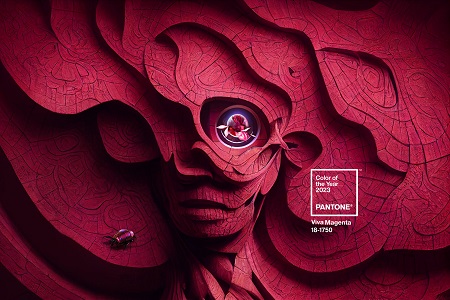
Viva Magenta, an Unconventional Shade for an Unconventional Time
First, let’s see what we know about PANTONE 18-1750 Viva Magenta. After three years of adjusting to the pandemic, facing war and economic instability, people worldwide had to learn how to balance their digital and physical lives. They now have a different way of looking at work, hobbies, travel, and nature. There is a greater emphasis on authentic, honest, natural elements in our lives, where individuals are welcome to express themselves while feeling accepted. That is where Viva Magenta comes into the picture, an expression of fierce grace, inspiring us to show up with confidence and humanity. As a nuanced crimson-red tone representing a balance between warm and cool, magenta is the perfect metaphor for the physical and virtual in our multi-dimensional world.
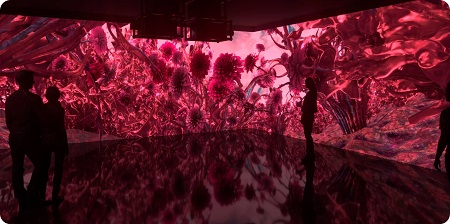
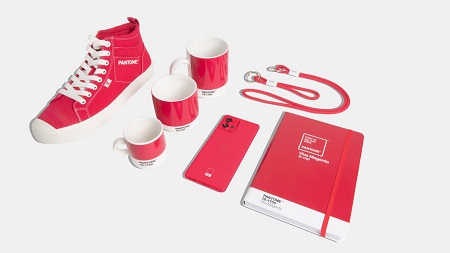
Image Source: dezeen
Red Side of Magenta
Red is a visual storyteller throughout history, one of its first appearances was in the cave paintings discovered in Lascaux Caves. As its importance began to grow, various associations with red began to surface. Romans used red to adorn their villas and tombs to symbolize wealth and power. In many Asian countries, it became the color of luck and happiness. In Iran, it represents good fortune; in Europe, it was connected with power and prestige and worn only by noble families.
Vermilion
Chinese were the first to produce synthetic vermilion, perhaps as early as the 4th century BC. Also called Chinese red is thought to be symbolic of life and good fortune and was used to paint temples and the Emperor’s carriage.
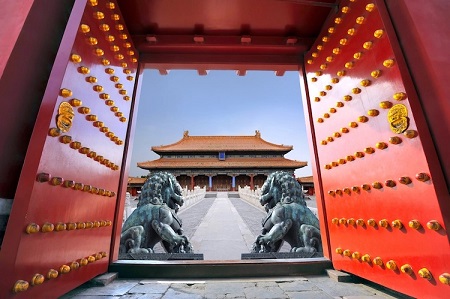
Carmine
Viva Magenta is a vibrant, truly unique red-based color rooted in nature as its organic origins hail from the cochineal beetle. This insect produces carmine dye, one of the most precious, strongest, and brightest of the natural dye family that became the symbol of wealth. Cochineal insects were a valuable European import in the 16th century, the third after gold and silver.

Purple Side: Tyrian Purple
In history, one of the most famous and celebrated colors have been purple, specifically Tyrian purple. At the time of the Roman Empire, colors had an immense significance, expressing not only taste but also a universal social hierarchy and status. This shade of purple was the color of the noble and imperial family. It wasn’t allowed to be worn by anyone, as it required a tremendous amount of snails - eight thousand mollusks - to produce a single gram of the substance.
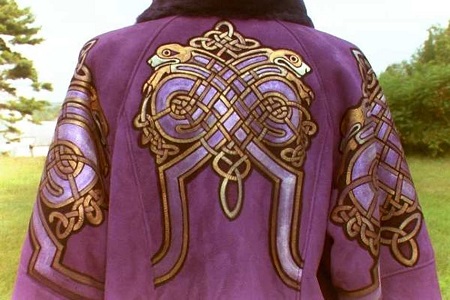
The importance of these colors remained in our modern store design as well. Red, purple, and magenta are all excellent choices in retail design when brands want to highlight a specific area. Red is used to grab the attention of and prompt quick decisions, purple is perceived as aristocratic by the customers, and this year’s star magenta can convey energy and fun in the store.
While the ancestors of magenta - red and purple - were only available to and represented a specific class of people, in a progressive leap forward, magenta itself is a fully inclusive color that everyone can experiment with and find their own voice in, whether clothing, interior design, or products.
> back to top of page

Using Design Strategy to achieve Marketing Objectives:
UK Country Pavilion at Guangzhou Design Week
January 25, 2022
“Design” is defined as a solution that is developed to fulfill both aesthetic and functional needs. In retail, and in sales and marketing environments, design has to be built on the marketing objectives of the client and satisfy technical requirements.
In this article, we share our recent project, the design of the UK Pavilion for Guangzhou Design Week (note: this concept was not selected, and Guangzhou Design Week 2022 was postponed to 2023), to showcase the most important questions and success factors that need to be considered during a retail design project. We call this stage of the project Design Strategy.
Project Background and Positioning of the Brand
Guangzhou Design Week is a yearly trade fair in China where brands from the design, lifestyle, and home décor sectors exhibit products. Designers, interior designers, and consumers usually flock to the exhibition in masses. Brands take part in the show for the prestige image, to create visibility, and to increase local market share.
The pre-defined objective was to create a high-quality UK country pavilion based on the theme of “sustainability”. Selected as a key trade fair, the pavilion design needed to serve country image-building purposes while also hosting seven brands from the UK.
As the first step, we researched what sustainability meant in and for the UK. How is the UK different in this area? How could the pavilion look sustainable in a British way and not random? We found that, among other interesting aspects, wind power is quite established in the UK. The UK is Europe’s largest offshore wind power producer, and 26% of the UK’s energy was produced by wind power in Q4 in 2021.
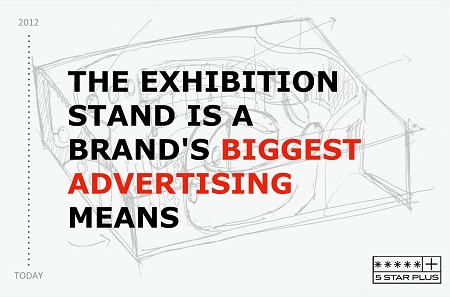
Inspirations and Storytelling
In the next step, we researched and brainstormed aspects and elements that would represent British lifestyle and sustainability. Lifestyle, because this was a lifestyle and home decoration trade fair, and these factors needed to be considered in the design. We asked ourselves a range of questions and took the following approach to identify, analyze and then select inspirations:
1. What is UK lifestyle? What is UK home design? Where is UK high-quality craftsmanship visible?
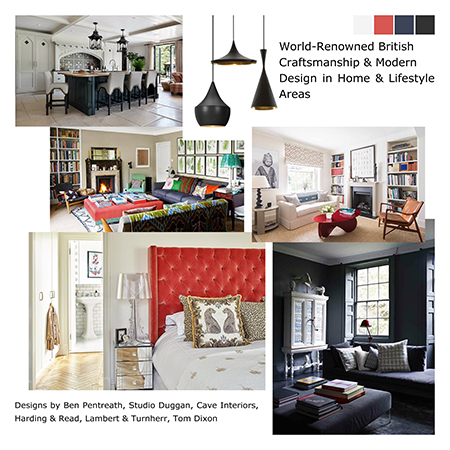
Image Source: Collage by 5 Star Plus Retail Design, Images from Pinterest
2. One specific aspect, that British design is well-known for, and that appears repeatedly in the design of soft furnishings (wallpaper, textiles, carpets) and furniture, is the motif of plants and flowers.
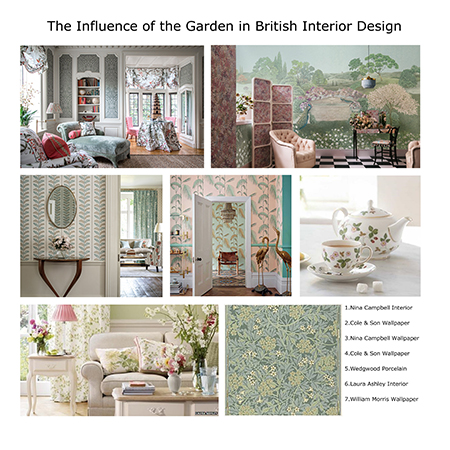
Image Source: Collage by 5 Star Plus Retail Design, Images from Pinterest
3.UK Garden Design: What are the most well-known and recognizable aspects? Are there elements that can be connected to the theme of sustainability?
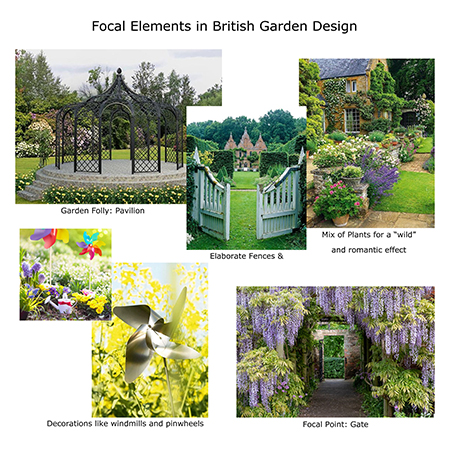
Selected elements that typical for English gardens
Image Source: Collage by 5 Star Plus Retail Design, Images from Pinterest
4.Sustainability: What does sustainability actually mean? In theory, this would require that no new elements would be produced and that all elements would be reduced to the bare minimum in order to save CO2 emissions during transportation. Everything else should be either rented, re-purposed, or produced in an environmentally friendly manner and reused afterward.
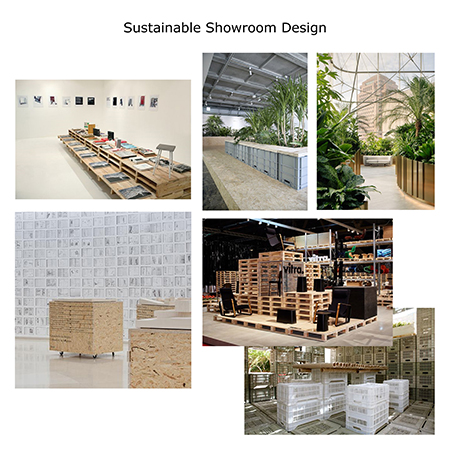
Inspirational sustainable projects completed by various designers and brands
Image Source: Collage by 5 Star Plus Retail Design, Images from Pinterest
We selected the wind wheel as key inspiration since it is a power-generating tool and represents sustainable energy in the UK. In a smaller, often colorful version, it is a well-known British lifestyle accessory, often used in gardens or given to children. In both versions, the purpose and effect of the windwheel are powered by wind. Both types are connected with nature and a cleaner, better environment.
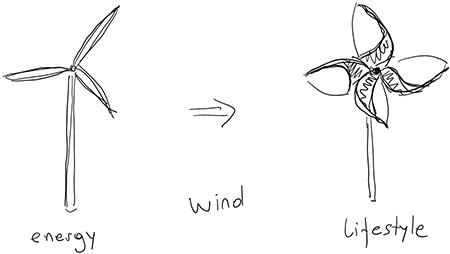
Inspiration for the stand design
The windwheel element also helped to lighten up the overall concept and made it more playful and relatable to consumers. Media usually like concepts that are interesting and playful, thus allowing the exhibition stand design to maximize marketing exposure.
The Design Concept
The design concept can be summarized as combining a strong theme (the windwheel and elements inspired by British craftsmanship, lifestyle, home decoration, and garden design), sustainable furniture and materials, and innovative branding and lighting elements.
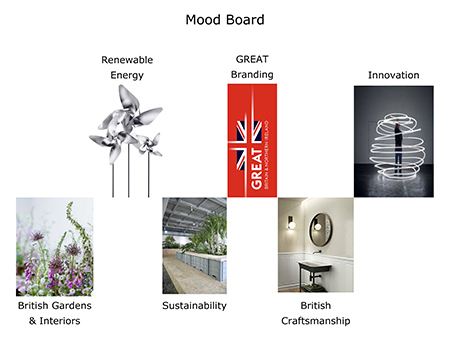
Mood Board
Image Source: Collage by 5 Star Plus Retail Design, Images from Pinterest, DIT
We envisioned a long bar table made of repurposed palettes in front of a sculpture with large windwheels in red, the country’s brand color. We wanted to enclose the meeting space with a garden pavilion-like structure. And cover the storage space with living plants and romantic flowers, bringing to mind English gardens. Plenty of display space and branding surfaces were designed for the seven exhibiting high-quality lifestyle brands.

Exhibition stand floor plan and perspective image with key focus elements
The final exhibition pavilion design has several areas for different types of events, including an opening ceremony, media events, brand events, and live streaming. Through the application of QR codes and online stories, the design concept integrated digital information into the physical stand. We also designed a photo filter with which visitors could take fun pictures and share them on social media.
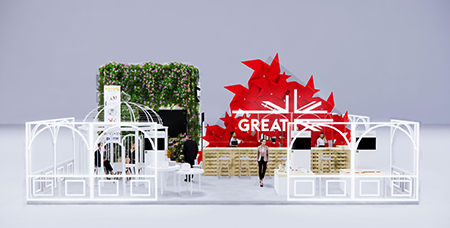
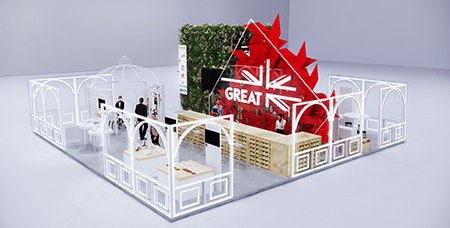
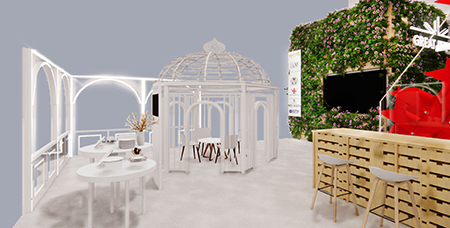
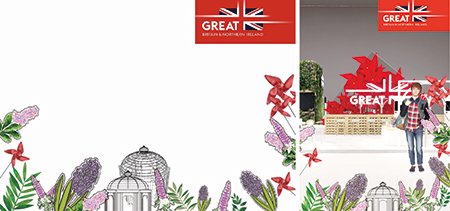
Photo filter for social media
> back to top of page

2023 Relaunch - Innovative Growth in the COVID-era
5 Star Plus Series: Customer Centric Strategy
January 20, 2023
In one of the world’s fastest moving markets, the ability to quickly adapt strategy is crucial for continued growth in China. The impacts of the outbreak have led to a shift in consumer values for Chinese consumers. In order for a brand to successfully adapt its strategy, it needs to know and understand its consumers.
Brands who were successful at staying in-touch with their customer’s changing values, were able to adapt their strategies quickly, thus enabling them to recover faster in China’s market compared to those that didn’t. Customer-centric elements that were adapted by brands focused on creating meaningful engagement with their consumers both online and offline, creating a stronger overall omni-channel strategy.
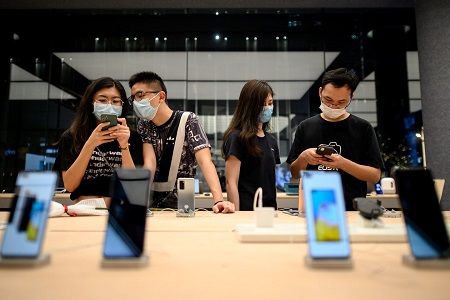
Huawei serves as a great example of a domestic brand that was able to create success in China over their other operating markets. Continuous innovation and adaptation of their strategy to cope with the difficulties in China’s market, leading them to surpass their other competitors to become one of the top selling brands in the world despite challenges brought on by the global pandemic.Their strategy focused on three key elements:
- - Consumer Engagement
- - Offline expansion
- - Innovation
Consumer Engagement
Engaging consumers in a time of social distancing and physical restrictions proved to be no challenge for Huawei. Through their philosophy driven by continuous innovation and partnerships used to expand the knowledge and capabilities of others, Huawei focused its efforts on hosting events virtually.
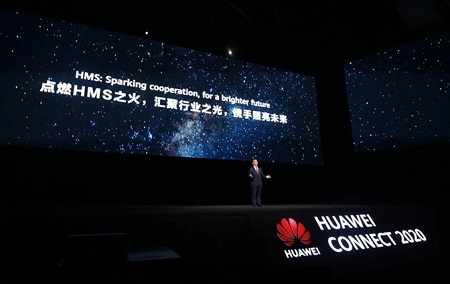
Image Source: Huawei
Throughout 2020, the brand hosted multiple events online for selected attendees and audiences. Most of the events that took place were held in a conference style format, with a few others featuring product launches designed to create excitement for the new technology. Other events featured notable KOLs, targeted toward a younger Chinese audience to showcase new features of products.
Offline Expansion
Given the constraints presented by the pandemic, it may come as a surprise that Huawei actually opened its largest flagship store in the world in 2020. Right in the heart of the city of Shanghai sits a 5000sqm retail space on East Nanjing Road. The new flagship store overshadows the likes of Apple and other tech flagship stores on the same road. The multi-story space provides ample room for consumer engagement and interaction through an on-site gym, kitchen, and product display areas utilizing the technology products of Huawei.
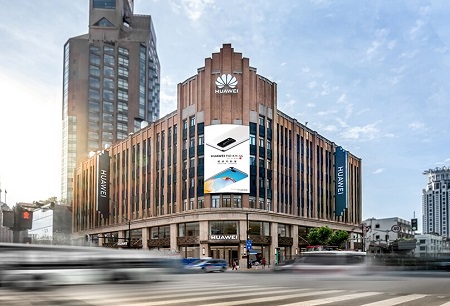
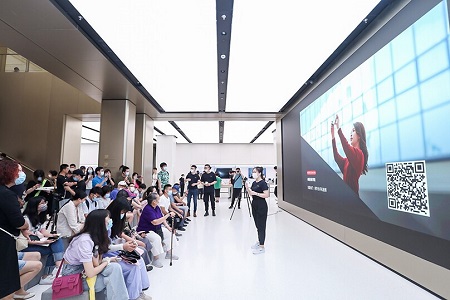
Image Source: Huawei
In Wuhan, they also opened a pop-up store with an eye-catching focal point that featured a robotic arm sorting products. Guests could interact with the robot by purchasing goods at the store. While the use of robotics is not as exciting to consumers as it used to be, the pop-up store served as a great way to engage consumers in a non-physical way.
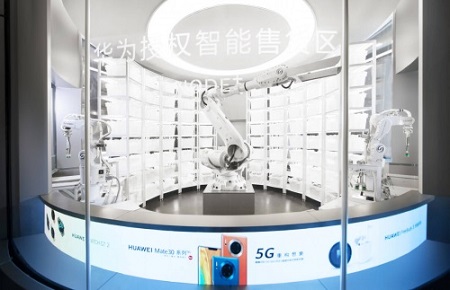
Image Source: Huawei
Innovation
Huawei continually creates engagement with their consumers by providing innovative new products and technology. Despite the challenges brought on by the pandemic and other political factors, the brand saw positive growth in 2020. Huawei was also named the 6th most innovative company in the world. They shared their “All-Scenario AI Life strategy” in September 2020, which focuses on providing products most centered around the user’s experience.
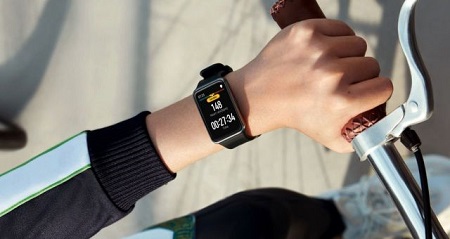
New products such as their latest smart watch “Huawei Smart Fit” can switch between different specified workout modes to ensure the health metrics are more accurately tracked during the user’s workout. Their new watch serves as a small example of how the brand seeks to continue providing their customers with a personalized experience best suited to their lifestyle needs.
Results
By focusing on driving growth in their home market through events, offline expansion, and innovation, Huawei was able to create growth during a year filled with hardships. Keeping a fine-tuned strategy that focuses on providing their consumers with lifestyle centric products and services, allowed them to strengthen the relationship with their customers.
Looking forward, it’s apparent that a customer-centric driven strategy is an important part of a successful retail strategy for brands. The true winners are those who can act quickly and focus on the immediate needs of their consumers that continually change. Having a timely response, connecting with consumers at all parts of their shopping journey, and providing them with an experience that matches the quality of products provided.
> back to top of page

2022 Relaunch - Scale & Proportion, Rhythm & Repetition
5 Star Plus Series: Design Principles in Store Design
December 29, 2022
Our previous Design Principles in Store Design blog post introduced the principles of design with a focus on dominance, hierarchy, and balance. We discussed how to create a focal point with drama, how-to guide the customers’ eyes from one element to another, and how to create a visually pleasing and balanced space. This post will focus on the importance of scale, proportion, rhythm and repetition.
Scale & Proportion
Scale refers to the relationship between two or more objects when one of these objects has a commonly known size. On the contrary, proportion relates to the general size of two objects without any information about their actual sizes. This makes scale more absolute and proportion a more relative element. The latter one requires the designer to understand the interactions between objects within a 3-dimensional space. Changing the proportion can alter the way our spaces look and feel, and also affect other design principles like balance, hierarchy and dominance.
The following aspects affect the design of the most appropriate scale or proportion of objects:
- -Sufficient breathing space
- -Balanced lines and areas within the space
- -Golden ratio: Objects that contain this ratio are thought to be more pleasing aesthetically, more beautiful and perfect.
Designers can always play with the size and scale of objects to create some fun, but in the end, they have to ensure that the space looks balanced.
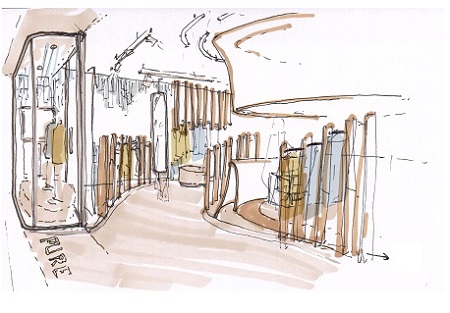
For the store design concept development of Pureones, scale and proportion was an important consideration. The size and proportion of all interior fixtures was balanced carefully in order to create harmony and achieve the required “flowing” effect inspired by Chinese rice fields.
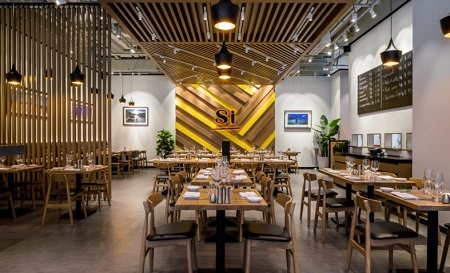
Simply Italian had a six meters high space available. In order to take advantage of this and emphasize the feeling of space, we created strong vertical lines and a central ceiling structure. These are the defining elements in the space that set the standard in terms of scale and proportion for all other furniture and fixtures.
Rhythm & Repetition
Rhythm is considered a pattern in movement. It is utilized to guide the customers’ eyes in moving around within a space in an organized manner. This principle helps introduces order, interest and focus while leading people’s eyes. Rhythm also plays a huge role in the way customers perceive a store interior, both in terms of aesthetic and in terms of functionality.
An important point to keep in mind is that the design principles don’t work alone. When designers aim to achieve balance, they determine the perfect combination of contrast, rhythm and scale for the project. All principles are tightly interrelated.
Repetition creates visual continuity and ties different aspects of a design concept together. Complex looks can be simplified with repetition up to ‘maximum sameness/minimum difference’. The simplest way to reach rhythm is by applying repetition of design elements (color, texture and pattern, scale and proportion). It also gives structure within a design concept due to the consistency of the design elements used. Repetition does not only refer to placing the same object, pattern, color or texture again at several locations in a space, but more importantly, design elements are either designed or selected in such a way that one dimensions (color, pattern, shape, size, style or texture) matches with the rest of the design concept. In this way, all elements are tied together and make one whole. Certain patterns, colors, or textures can be found repeating themselves but with some sort of variation within a space when one looks closely.
Rhythm and repetition help to create a smooth transition for the customers’ eyes. The design concept looks “whole”, well tied together and visually pleasing, while providing enough visual interest and variety.
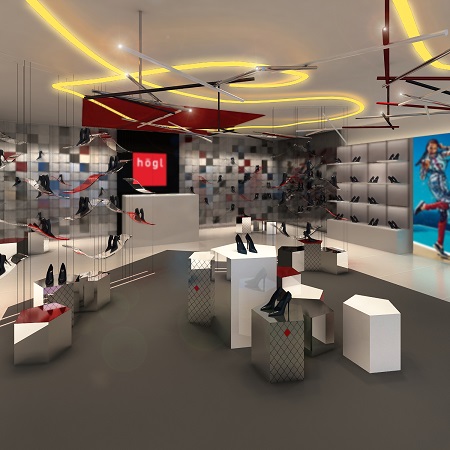
The design concept for Austrian shoe brand Hoegl shows how rhythm and repetition and be applied within an interior space. Inspired by the brand’s logo, the square is an integral basic shape that is repeated in different sizes and patterns, with different textures and materials throughout the store. A variation of it is the pentagon shape as a further abstraction that creates further dynamic and interest.
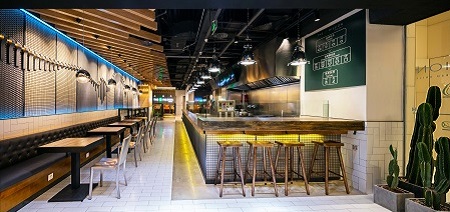
At The Mission restaurant in Beijing, wooden and industrial accents were repeated throughout the space for a unified, slightly rustic yet modern look. Repeating these materials, though varied and not exactly the same, ties together the design concept and creates visual interest.
Although understanding the ideas behind scale and proportion, rhythm and repetition is important, a successful retail design concept requires the careful consideration of every design principle. The interaction and relationship between elements will effectively deliver the brand’s message and effect the feel of a space. In our next and final design principles article, we will introduce Contrast and Details.
> back to top of page

Retail Strategy Best Practices, Paloma Sanchez Jewelry, from Paloma Sanchez, Founder and Owner of the Brand
December 20, 2022
Paloma Sanchez, mother to a son of 8 years, left her stable and promising career in luxury jewelry to start her own brand in Beijing, China, in 2008. With beautiful, unique products, Paloma Sanchez Jewelry serves a very special niche in the global market. We sat down with Paloma to talk about how passion fuels the continuous quality promise and how courage, adventures, and empowerment are all important aspects of the brand.

Paloma Sanchez, founder and owner of Paloma Sanchez Jewelry
When did you start your brand and what was your vision?
I started the brand in Beijing, China, in 2008. A trained gemologist, I had worked in the luxury jewelry industry for thirty years and knew what customers in the luxury market segment were looking for. At that time, China was incredibly dynamic. The local luxury market, which had only emerged a decade before, was dominated by mainstream luxury brands and traditional products. Their jewels were used as a symbol of convergence for the emerging Chinese elite with their global peers.
I wanted to do things differently. I saw that the Chinese cultural elite was quickly transitioning back to the core values of Chinese luxury, to what “luxury” has always meant traditionally in Chinese culture: tailored service, irreproducible art, and consistent luxury experience. I set myself the task to be the first to cater to that niche and create a brand based on innovation with products that people would not get anywhere else. My vision for the brand was to focus on this niche market of sophisticated, courageous, self-confident women and men who were looking for one-of-a-kind jewelry products to express themselves. I wanted to create products with a story and meaning.
How would you describe the positioning of your brand? What are the core values?
The Paloma Sanchez Jewelry collection has a luxury positioning. The core characteristics and values of the brand are art, courage, empowerment, authenticity, and self-confidence. All designs are created with rare, one-of-a-kind, hand-selected museum-quality stones. The value of the jewelry pieces comes from the preciousness of the stone and the unique design. As a professional scientist, my attention is naturally drawn to the uniqueness of gemstones; however, creativity is essential to my identity. For that matter, the inspiration for each piece changes: some collections are the result of an exquisite selection of personal favorite stones; others are the result of months of creative research and design to capture the essence of an ideal.
Commitment and empowerment are very important to me personally and are a big part of the brand. All our products are child-labor-free. I can say this with absolute confidence because I regularly travel to the mines where I source gemstones and get to establish personal relations with the miners involved. I have lifelong relations with all my suppliers.
In 2016, the African Women Miners Association, of which I am a member, and Paloma Sanchez Jewelry, built a production line to integrate outcast wives and mothers from mining regions into our sourcing network. Today, most of the gemstones we source in the country have been cut or faceted by one of these women.
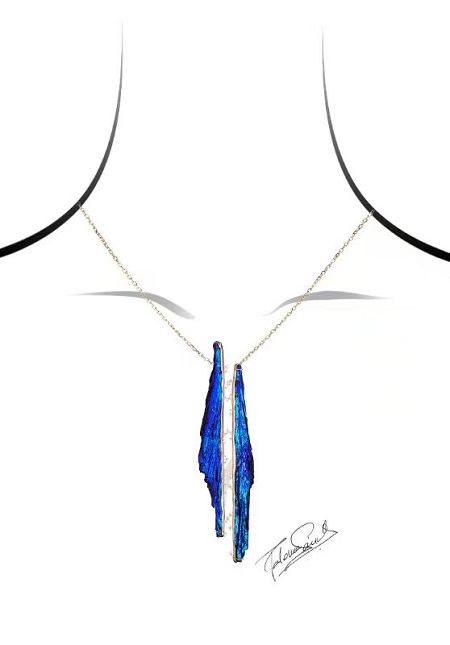
Design for kyanite and diamonds necklace
You also have a more accessible line, the Marina Collection. How is this brand positioned?
The Marina line is our more accessible jewelry line, we have five collections. Designed by myself, the products are based on gold or silver. This allows scaling the brand by producing a larger quantity of the same pieces as opposed to Paloma Sanchez Jewelry which is all one-of-a-kind pieces. The consumers of this line are typically younger since these pieces are more versatile and. can be worn on all types of occasions, in elegant and casual situations.
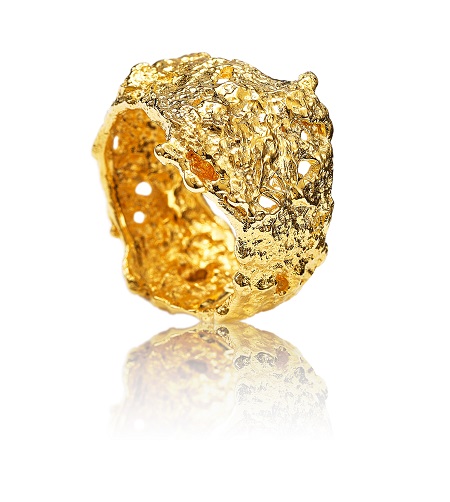
“Texture” Ring, Marina Collection
You design all collections yourself. What are your inspirations?
The influences of my creative process are very abstract, and the way in which they flow into my jewelry designs is mostly subconscious. My inspirations come from all kinds of life experiences: Music, art, conversations, books, and basically everything I see and hear. Every experience shapes me, and many things move me. The idea for a new jewelry piece may appear spontaneously or come after a long process of trial and error with other ideas.
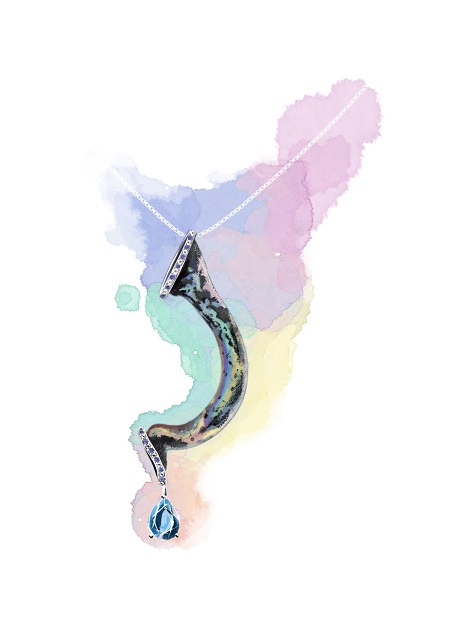
Design for Roman glass vase handle from Afghanistan, pear shape cut blue topaz set in 18kts white gold, and sapphires from Sri Lanka
You are a gemologist and passionate gem hunter. What do adventures of finding the most beautiful pieces around the world look like?
My life combines the thrills of adventure and also the most exquisite cosmopolitan lifestyle - I believe this contrast deeply permeates every aspect of the brand. A French journalist in Toronto once referred to me as the Indiana Jones of Gemstones, my son prefers Lara Croft. I travel to some of the most remote areas of the globe, from the red sands of Madagascar to the green mountains of the Colombian Sierra, through the wet Sri Lankan jungle to the dry deserts in Arizona, on the quest to find those hidden treasures nature holds for us. During these trips to the mines being a woman is often a burden that one needs to deal with. Mines tend to be run by men, and rural populations often regard women as unworthy of their trust, especially if foreign. For that matter, I have to keep pushing my knowledge and expertise.
When I return to Beijing, I combine my most elegant attire with delicate jewelry and attend the “chicest” events in town.
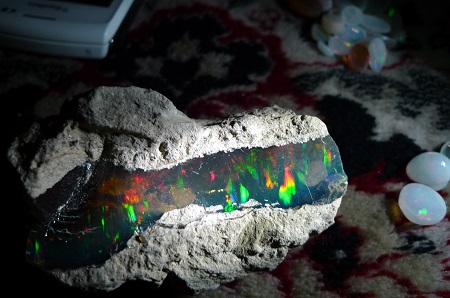
Exceptionally huge opal with an amazing play of color, unique in the world
You mentioned once that gemology is a man’s world. What does that mean exactly, and what were some of the challenges that you have encountered?
The career trajectory for men and women in the trade is usually very different. While men who graduate as gemologists usually have immediate access to core positions in the trade, women are often expected to climb the ladder from the bottom. This is exacerbated when you do not belong to a family already established in the gem business. As a woman and industry outsider, I started my professional career as a sales consultant in a jewelry store despite holding a degree with honors from the most prestigious institution in the field. It took me ten years of hard work in international luxury firms to demonstrate my capabilities as a gemologist and manager to finally hold a directing position in an international firm. Ten years later I was able to establish my own brand and accomplish my dream.
There are regions where women are traditionally seen as inferior or expected to be uneducated. In Ethiopia, a miner assumed I could not count and wanted to explain to me how to pay with banknotes. As a woman in this industry, you have to be ready not to be taken seriously, and repeatedly demonstrate your skills to earn your place. As a man, you go for drinks with your local business partners after work to strengthen the relationship. As a woman, this is not possible.
Moreover, there are countries like Colombia where women are not allowed to work inside the mines because this is seen as bringing bad luck.

Outside an opal mine in Ethiopia with the miners
Despite these challenges, what were some of the advantages that you being a woman, brought to your business?
I think that as a woman, I am in a better position to channel my passion into my work. I am absolutely uncompromising in terms of quality. Inspiring and empowering other women comes natural to me and are values that are close to my heart. And, of course, being a woman, I can wear my pieces, pull off a glamorous look, showcase my brand and encourage other women.
What are your favorite gemstones?
I love all types of gemstones. Opals are addictive because they come in so many different colors and shades. I also really like emeralds, tanzanite, and tourmalines.
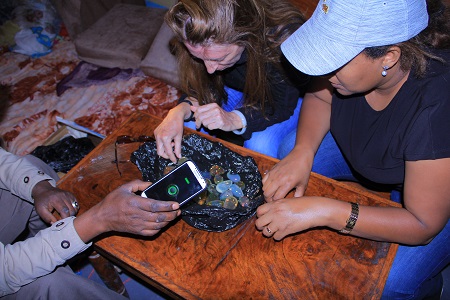
Choosing opals at a miner's home in Ethiopia
What are you doing to uphold your promise of quality over time?
For me, the promise of quality comes from my passion for the work. I could never compromise on quality, and I will deliver this level of quality forever.
On a practical level, we invest a lot into the training of our staff to ensure we can uphold our promise of quality. Our retail staff is exclusively composed of trained gemologists, and our skillful artisans follow regular training seminars from some of the best masters in the world.
Establishing strong communities that value design, art, and private events worked extremely well for your brand. What is your strategy for working with your VIP customer community?
I have three types of customer groups. The first group is very knowledgeable; they grew up surrounded by jewelry and tend to know exactly what they are looking for. They are sophisticated and self-confident while remaining humble. This customer tends to have demanding needs but truly appreciates the jewels they buy. They are most loyal. Most of these customers through time have become some of my closest friends.
The second type of customers are newcomers to the luxury scene. they are eager to be part of it but need to acquire the knowledge that will bring the self-confidence required for my jewelry.
The third category is made of investors; some of them fall into either of the previous categories. I organize many private events for all customer groups and private dinners and concerts to award my VIP customers for their loyalty. In addition, I organize short gemology courses to give our customers the opportunity to understand the rich world of gemstones and jewelry design.
You have opened stores in some of the most buzzing cities like Beijing, Dubai, and Paris. What do your customers in different parts of the world have in common?
Our customers around the world do have similar characteristics. First, they are usually highly educated and very self-confident. Second, they are very loyal to our brand and appreciate our spirit of innovation. Something that I have seen emerge through time is that there seems to be a group of customers that likes to travel to several of my stores to collect pieces from each part of the world. It is always interesting to see Beijing customers sharing pictures of their visit to our showroom in Paris or vice-versa.
You have organized some impressive collection launch events and shows, and have been mentioned in the Louis Vuitton and Mercedes-Benz City Guides for Beijing. What are your favorite and most successful marketing activities?
I organize a very large show with a specific theme each year. One of my favorite shows is probably “Senses”, a sensorial experience that we created twice, first in Beijing, then in Vancouver. We took 400 guests onto a sensorial journey. Sound, smell, touch, taste, and sight were stimulated to create an experience of the five senses in the world of gemstones.
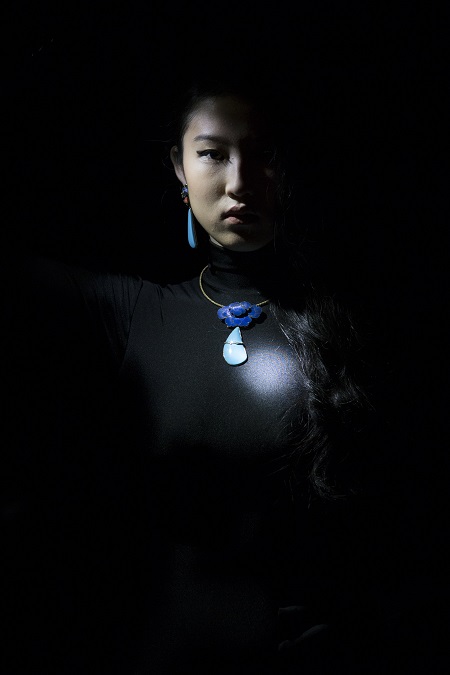
“Senses” Show in Vancouver
Another event I really love is the fashion show we organized in Europe´s largest solar power plant at the time in Seville. This was the first time a jewelry brand showed its commitment to sustainable energy.
In the autumn of 2020, when there was a lot of frustration and loneliness after the first half year of living with Covid, we organized a jewelry show called “Hope” at the Temple of Heaven. We emphasized the concept of uniqueness and used a beautiful, philosophical excerpt from the Little Prince to inspire our audience. The Little Prince´s relationship with his rose, which he saw not only as unique in the whole world, but also as the only truly valuable he had on his planet, was used as a metaphor to express how uniqueness can only be determined by ourselves and is essential to anyone´s existence, particularly in times of struggle and solitude. Therefore, the jewels we hold must be something that we cherish, and that support our specific vision of the world.
What are some of the biggest challenges that you have overcome?
I have chosen to build up the brand on my own in order to realize every aspect without compromises. This means, however, that I need to rely on my own and have no one for advice or support, which is not always easy.
Another challenge is the maintenance of a stable team. We invest several years of training into each person on our team. Unfortunately, it is very common for employees in China to change their job every few years. I also have to admit that cultural differences sometimes make communication more challenging.
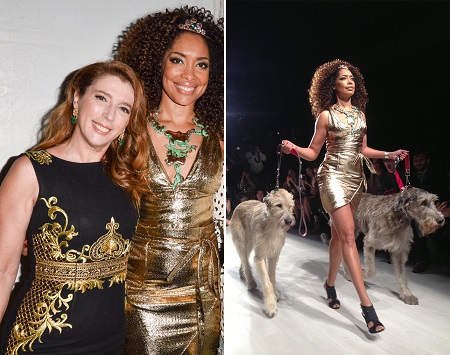
Paloma Sanchez with Actress Gina Torres (Suits) wearing Paloma Sanchez Jewelry at Toronto Fashion Week
What would be your recommendations for other brands?
My recommendation is simple and very much the cliché: You need to have passion for what you do and know your goals. Don’t doubt, don’t overthink, and go ahead with courage and confidence. If you are young, it is ok to fail, you will learn and grow out of it stronger. If you are an experienced professional, you have probably spotted gaps in the market so put your expertise to work. In any case, keep your eyes open and remain flexible while never losing sight of your goal and remaining loyal to your core values.
What are your plans for the future? How do you envision Paloma Sanchez Jewelry in 5 years?
We are currently working on scaling up the brand so its potential can be fully unleashed. We plan to open a showroom in Aranya (by the end of next year´s Q1. We are also finalizing our new online platform where our customers from around the world can receive tailored services and access our new online collections. In addition, we are looking to expand the production of our Marina line to meet global post-pandemic growing demand.
In terms of brand positioning, we expect Paloma Sanchez Jewelry to increase its share of the luxury tailored-made jewelry market in Beijing, Paris, and Aranya. We are also expanding the retail pret-a-porter brand, Marina collection, through our new online platform and distributors around the world. Concerning the company´s organization, we are working towards automatization and team development in order to allow myself to retire from active work in the firm by 2030.
> back to top of page

10 Years of Retail Design
Year-End Reflections on Authenticity and How to Create a Powerful Brand
December 14, 2022
No matter whether we talk about sustainability, the value that we provide to society, or the brand promise, the past years have shown that authenticity is a skill that brands need to master in order to survive.
With Christmas around the corner, this is a time to reflect on the past year and analyze what we can do better. It is a call to be more “real”. A call to go back to the roots and evaluate our business operations, our strategy, and most importantly, what has become of our brand.
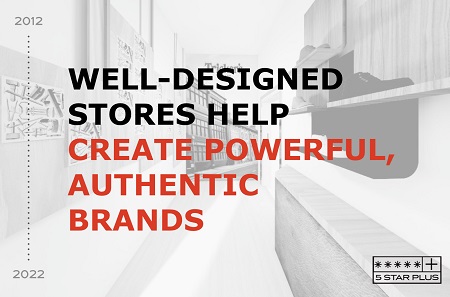
Sometimes, a brand changes or becomes diluted over time. A brand personality needs to be carefully developed and regularly checked – it needs to be based on the market positioning, to have values and characteristics, and communicate these consistently through all channels. This also includes areas that for many, do not come to mind immediately, such as retail stores, showrooms, pop-up stores, exhibition stands, events, packaging, and even office space.
And this is where our value proposition at 5 Star Plus Retail Design lies: In evaluating the brand together with our clients, in identifying core messages and storylines that are real, authentic, and transparent, and that we can then apply in the design. Our brand promise is to help companies create a powerful, authentic brand. As retail designers, we also know that such brands sell more.
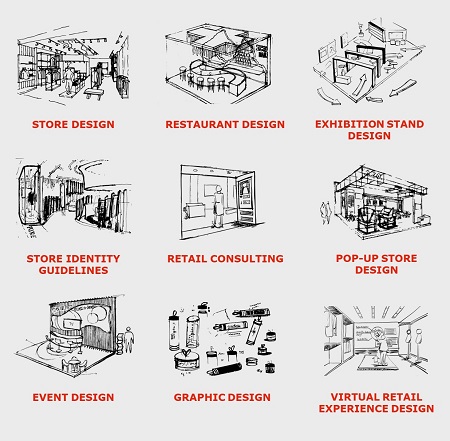
But what is retail design exactly? Retail design is a mixed discipline that combines strategy, marketing, architecture, interior design, and graphic design to translate a brand into a physical environment. This could be a store, a showroom, or a restaurant. It could be a pop-up store, an exhibition stand, or an event.
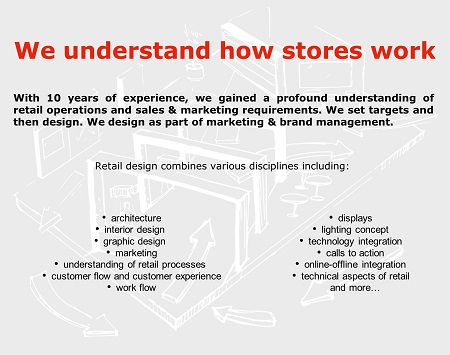
Customers want to purchase from brands that are clear about who they are, their value proposition, and who can communicate this authentically and consistently. Authentic brands that can convey their mission and value clearly in words and through visual means therefore become powerful brands.
Despite the challenge that today’s brands are expected to deliver constantly novel and exciting customer experiences, it is important to stay true to the brand and remain recognizable. Authenticity and a clear value proposition also produce trust and customer loyalty.
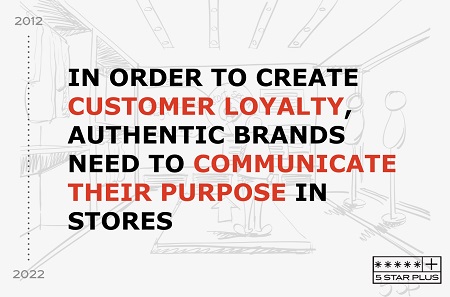
Taking the time for reflection and recollection is important. Investing a few moments of quiet time at the end of the year enables us to check and re-confirm our strategy, steer back on course, and push ahead with full strength at the beginning of the new year.
5 Star Plus Retail Design is a one-stop solution providing a full range of retail design and marketing services in China, Europe, the Americas, and the Middle East.
For more information, please get in touch with us at office@5starplusdesign.com
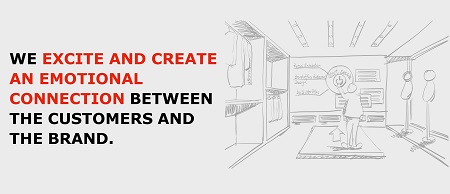 > back to top of page
> back to top of page

2022 Relaunch - Dominance, Hierarchy, Balance
5 Star Plus Series: Design Principles in Store Design
November 29, 2022
Design principles in retail design help to enforce the brand and communicate it to their clients. These guidelines are used to inform and influence and can be achieved through the application of various design elements. In this series, we are providing instructions on how to apply these correctly and influence customers’ mood and first impression. In our previous article, we covered the first three design principles: Harmony, Gestalt, and Space how they contribute to the perception of the retail space. In this article, we present Dominance, Hierarchy, and Balance and their most important role in retail design.
Dominance
As mentioned before, the first impression is the most important aspect for brands to attract customers. Adding a factor of Dominance to the space creates interest and drama for those that enter the space. This is usually done by featuring on key focal point or two emphasized areas that pull the attention of customers from all directions, guiding the customers' eyes to focus on key elements within the retail space. Designers can create clear focal areas, like product displays, a customer service counter, visual identity and branded elements while hiding the less important areas like storage. After choosing the focal point, emphasis can be created by adjusting the size, position, color, style, or shape of the specific object.
PUREONES is a Chinese luxury clothing brand with a strong brand’s forward-thinking identity, tied to the traditional roots of Chinese culture. The retail concept design was inspired by the curves found in Chinese rice fields, rivers, mountains, and forests that follow the Taoism way, allowing the retail store design to flow naturally from one part to the next. Using these curved lines, we created a dominant display area in the middle of the store that is visible from outside as well. The installation grabs the attention of customers immediately because of its unique shape and color. Using high-quality wood and stone materials and metals to tie natural elements to the physical space and creates the feeling of a natural oasis, transporting the customer to a calming, open environment.
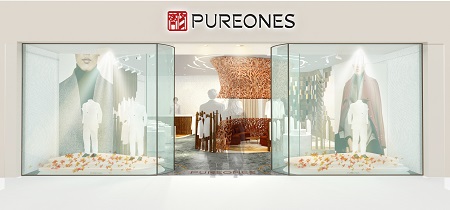
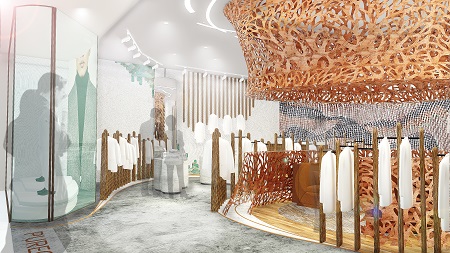
Hierarchy
Hierarchy helps to communicate the importance of elements in the overall design compared to the other elements. Using this design principle is another way to guide customers’ eyes towards key elements of focus. It is important to keep in mind that the recommended maximum of hierarchy in in any kind of design is three levels: the most important, less important, and everything else.
Hierarchy can be modified with adjusting the following elements:
- ?Size: Larger objects seem more important.
- ?Shape: If every object has a regular shape except for one irregular one, people tend to look at the irregular one first.
- ?Position: The center of a circle is the most hierarchical, and in the case of a line, the end of the axis is the most hierarchical rather than the points along the line.
- ?Color: Using different hues of a tint of a certain color can also guide customers’ eye to key focus areas.
H?gl is an Austrian shoe brand that also sells jewelry, accessories, and bags. 5 Star Plus Design created a new design concept for the Chinese market that is based on the brand identity - feminine, high quality, and comfortable, as well as the incorporation of the white and red brand colors. The design concept also fulfills the targeted positioning within the Chinese market, defined as stylish, chic, cool, sexy, and powerful. A lot of thought was given to the flexibility of the product display shelves and to the possibility of creating various combinations of space’s different elements. Playing with the different shapes and colors of display elements helps to guide customers and features the most important products.
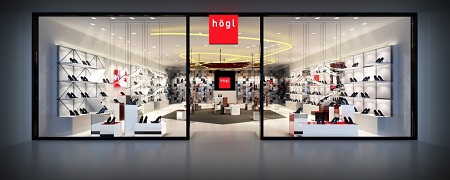
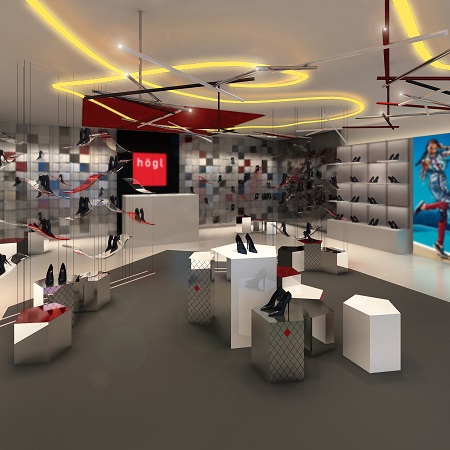
Balance
This principle refers to the equalization of tension in the composition and contributes greatly to the gestalt of the design. The majority of retail spaces aim to reach visual balance. This can be achieved by distributing the visual weight of objects within a space. The visual weight of an element can be changed by changing its size, color, texture, or shape. An object that is darker, larger, brighter, or more complex usually feels heavier. We can differentiate four different types of balance: symmetrical, asymmetrical, radial, and mosaic.
Symmetrical balance creates a more formal and quieter atmosphere. It is achieved when elements are repeated or mirrored along a central axis, as well as the use of patterns, arrangement of furniture, fixtures, and through the application of color. This type of balance communicates a stable, calm message with dignity.
With asymmetrical balance, interior designers can form a more relaxed and casual environment. They tend to feel more dynamic and less rigid because in these spaces a variety of object types are working together to create balance. Asymmetrical balance is centered around the visual weight of an object and uses the similar perceived weight of elements on the opposite axis. This type of balance is not as straightforward as the symmetrical balance, it often requires an “eye for design”.
When using radial balance, objects are arranged around a central point either extending outward or inward. It helps to create focus on a central item and drags customers' attention towards that. When applied correctly every other element should radiate in circular symmetry around the focal point.
Mosaic balance results from balanced chaos. In this case, the composition lacks distinct focal points, and the hierarchy of the elements leads to visual noise at first glance. Somehow it works together after all.
In our last example from Halti, it’s easy to observe how symmetrical balance can create a premium feel, calm yet strong atmosphere that fits the brand’s Scandinavian persona. Halti is a “light-luxury” positioned, Finnish outdoor fashion brand well known for its ski wear. 5 Star Plus Retail Design created a store identity design concept for both flagship stores and shop-in-shops in China. While the store design had to have a clean, balanced look, a dynamic feel was achieved with added cool features such as island furniture with white, backlit strips.
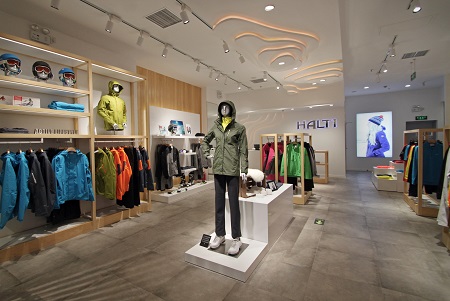
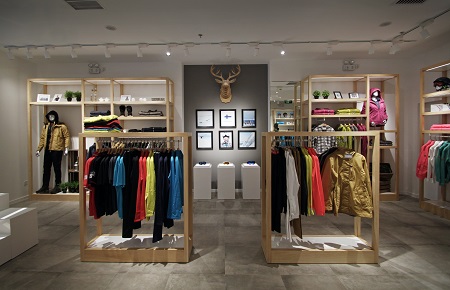
With the ever-growing online sales market, retailers face the constant challenge of increasing their in-store sales. To create visually appealing spaces, interior designers apply various elements of design to grab the customers’ attention and pull them into the stores. In the next article of our Design Principles in Store Design Series, we will introduce the role of Color, Proportion, and Repetition.
> back to top of page

"Nation Branding"
"How to Tell Stories through Physical Touchpoints like Exhibition Stands"
November 23, 2022
Nation branding is important for countries to attract more investment and a high-skilled workforce, support the export of products of local companies, and promote tourism. Companies that export products will also benefit considerably from a strong country image – a Nielson study found that over 70% of global consumers believe that the location where a product comes from is important and affects their purchase decision.
Brand Positioning of a Nation
What is the positioning of a country? Ideally, this is the well-planned and consistently promoted image that the name of a country then evokes in people’s minds. It is very much about differentiation and how the country sets itself apart from others. When we think about Germany, we think about reliable, high-quality products that are often technically advanced. Italy stands for lifestyle, good design, and high-quality fashion. Switzerland stands for precision, focus on details, and safety. A lot of work and time is required to create a powerful and authentic nation brand. Several organizations regularly measure the strength of country brands.
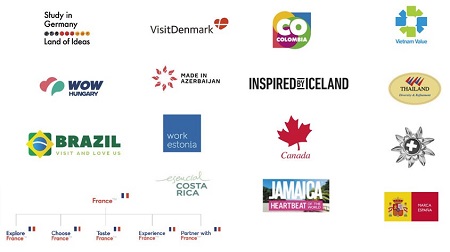
Examples of the logos of a number of nation branding campaigns
Visibility
Some country names are well-known worldwide and are clearly associated with their positioning. In other words, people in different geographies have the same, consistent, and positive image of a certain country. This means that those countries have done a successful job in positioning and marketing themselves consistently and effectively around the world. Some of these countries are Switzerland, Canada, and Netherlands. What are some of the images that come to your mind when you think about these countries?
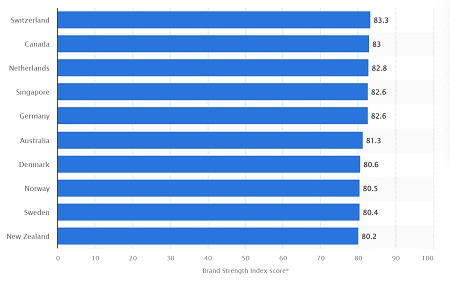
The Strongest Nation Brands in 2022
Storytelling
Storytelling is a crucial element of nation branding. Only through stories, an audience will learn what a country is about, what it offers, and how it is different from other places. There are many areas that stories can revolve around, some of them being: Industries, products and services; people; projects; landscapes and cities; achievements, scientific advancements, vision and objectives. Professional national storytellers work with all of them and combine them into several series of stories that emphasize the country’s positioning.
Here are some examples of what nation branding can look like:
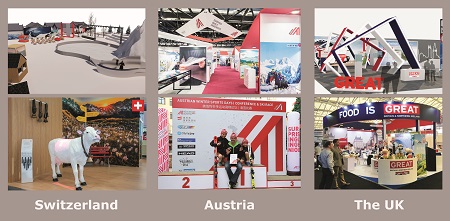
The tone and pace of telling the story are important as well, i.e. the degree of formality, the speed and level of detail, the positivity of the language, and whether there are elements of humor.
Stereotypes versus Modern Positioning
To increase brand recognition and build on what already exists, many countries have successfully used stereotypes as a basis for marketing themselves (think of the Swiss cross, the mountains or cows in Switzerland, the red maple leaves in Canada, or the Eiffel Tower in France) and then added the more modern elements like innovation, science, or information about market leadership.
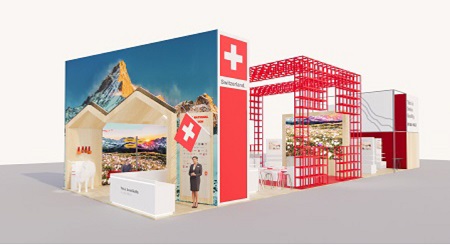
The Swiss National Pavilion at China International Consumer Products Expo in 2021: Stereotypes of the Swiss mountains and a cow were used in the front to maximize the recognition effect. The well-known Swiss cross was abstracted into a sculptural structure that framed the event space.
Conclusion
In order to promote their image and create a tangible outcome, countries have to apply tools that in the past, were predominantly used by big commercial brands. Creating a powerful nation brand will not only result in increased investment and tourism but also lead to higher exports and directly support local companies.
> back to top of page


5 Trends that Shaped Post-Pandemic Retail Worldwide
October 26, 2022
Trends are constantly changing within the retail industry. It was especially true in the past two years when brands and customers quickly had to adapt to the new rules. 2022 was all about getting back to our pre-pandemic life, however, it’s already safe to say that some retail trends will remain with us. In this article, we will briefly introduce five trends that have been shaping the retail industry since 2020.
1. Agility
Retailers are used to changing layouts regularly between seasons or weekly promotions. The pandemic has once again shown the need to extend agility to new challenges such as inflation, labor changes, or supply chain disruptions.
Retailers must invest in agility and flexibility to adapt quickly to change. This skill partially depends on having the right technology and processes to help identify, track and respond to issues. That includes quickly changing products displayed on websites and effortlessly using all available online and offline channels.
Retailers must make agility a central part of their business strategy and ensure that their internal structures do not delay their ability to adapt by creating storage, sharing information across the enterprise, or approving changes at too many layers.

2. Authenticity
Consumers are tired of being sold to. From social media influencers to website ads, consumers are overwhelmed, and as a result, they seem to be turning away from advertising and toward authenticity. Authenticity is how a consumer perceives a brand to be faithful to itself. In Bazaarvoice's 2022 Shopper Experience Index, 53% of consumers said that user-generated content (UGC), like reviews and photos, gives them more confidence in their purchasing decisions. Brands and retailers must embrace authenticity to continue to attract consumers and make them feel confident in their purchases.

3. Social Commerce
Social commerce is an extension of e-commerce where consumers use social media to make direct purchases while scrolling. Bazaarvoice found that 69% of consumers were inspired by social media. 54% said they would be more likely to purchase social media if they could click on posts to get information about the product. Bridging the gap between inspiration and purchase is becoming increasingly important as consumers adopt an "I see it, I want it" mentality.
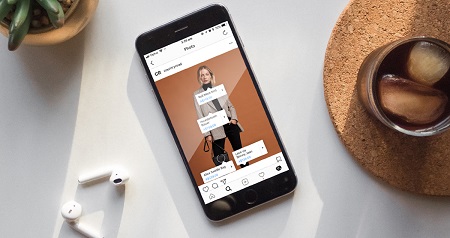
4. Phygital
The world of online and digital retail is no longer the only platform for online startups and businesses. Phygital or omnichannel shopping, which combines online and offline channels, is increasingly becoming the default shopping method for consumers. According to a massive global survey by the IBM Institute for Business Value, hybrid shopping is the primary shopping method for 27% of consumers. Many consumers expect phygital's basic implementations, such as online shopping and in-store pickup, or the ability to check stock levels online before visiting a store. The discovery of phygital in new ways will continue with the emergence of augmented and virtual reality, the metaverse, and other digital channels.
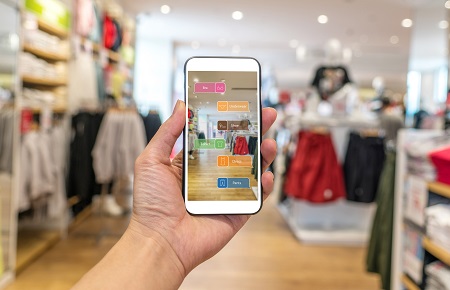
5. Upcycling and Traceability in Demand
Upcycling is on a fantastic growth course with the second-hand clothing sector expected to grow faster than fast fashion. Besides purchasing sustainably, traceability is critical too. Customers favor brands that deliver on climate promises and meet science-based targets for emissions reductions.
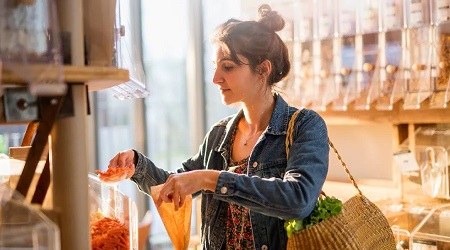 > back to top of page
> back to top of page

2022 Relaunch - Harmony, Unity, Gestalt and Space
5 Star Plus Series: Design Principles in Store Design
October 21, 2022
Visitors of retail spaces often think that the result of the interior design looks good by coincidence, however, there is much more behind a finished interior design than one can see at the first gasp. The artistic composition of spaces is based on a number of technical considerations that are referred to as the principles of design. When these principles are applied successfully, they evoke unconscious emotions from visitors of the spaces. These emotions can help to reinforce the brand message and corporate identity using various visual techniques. In this first article of our design principles series, we introduce examples for the first three design principles: harmony, gestalt, and space.
Design Principle 1: Harmony and Unity
Harmony is described as sameness, which means one thing belongs or corresponds to the other. The elements in an interior space create a composition that feels comfortable and is pleasing to the eye. Unity is when the parts of the space form a balanced, harmonious complete whole. The interior feels right when everything works well collectively. The unit of a design can be affected by the contrast, repetition, alignment, and proximity of the elements. The key is to find a balance between unity and variety so that the design is visually impressive and well-balanced. Harmony and unity can provide a sense of calmness while limiting chaos and adding to the comfort level of a space.
KJUS is a luxury sportswear brand based in Switzerland. For their first Chinese store, 5 Star Plus Retail Design created a futuristic, high-tech, and luxurious design concept that evolves around unity. KJUS sportswear products stand for a mixture of state-of-the-art craftsmanship and the latest material technology. To express this abstract positioning, cool, modern, and high-end materials such as metal and stone were used throughout the store. To achieve a harmonious, luxurious feeling, the interior includes enough empty space without displaying too many SKUs to let the concept breathe. Special lighting effects and high-tech elements are incorporated to convey messages from the brand including product features, essential products, and new collections.
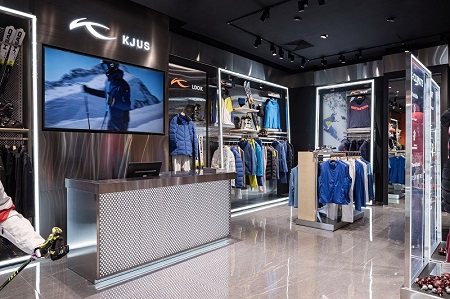
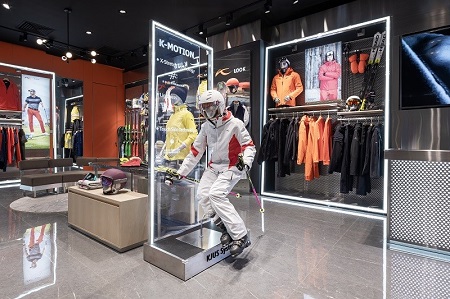
Design Principle 2: Gestalt
Gestalt means that an organized whole is perceived as more than the sum of its parts. The idea behind this concept is that people can instantly judge whether or not a design works. Small changes in single components can affect how other elements in a design are perceived. Gestalt takes into consideration that viewers have the natural tendency to complete unfinished forms in their minds. Those then lead their sight and direct the flow of a designed space.
Simply Italian’s restaurant design incorporates core values of the brand like honesty, transparency, hospitality, and happiness. 5 Star Plus Retail Design created a bright and open environment with abundant natural wood, light colors, and patterns that represent Italian traditions. Key inspirations used for the project were Italian pasta, in particular – spaghetti, and colorful natural ingredients like vegetables. When customers enter the restaurant, the whole design comes together and makes one feel at home.
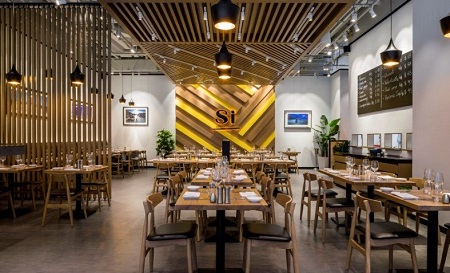
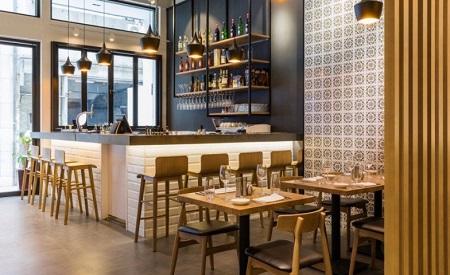
Design Principle 3: Space
Space can be split into two categories: positive and negative space. Positive space is space containing design elements such as objects. Negative space or white space is the area between these objects. The latter is just as, if not even more, important than the used space. It is also one of the most neglected components of visual design. Finding balance between positive and negative space is crucial in order to create a harmonious feeling and to avoid overcrowding the space.
The concept store design for the French avant-garde fashion brand, Angelique, incorporates a lot of empty space to let the store and its unique design features breathe. Most of theproducts are black and white clothing so the design was built around their elegant brand identity referencing the style of the garments. The white space creates a subconscious sense of visual comfort by allowing visitors to rest a bit and have a clear focus on the products.
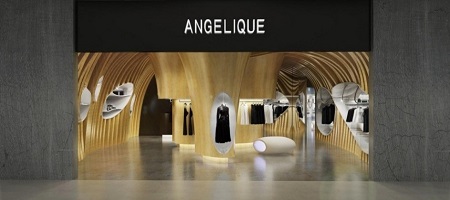
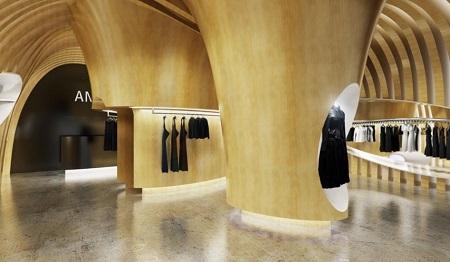
In our next article of our Design Principles in Store Design Series we will write about the role of dominance, hierarchy and balance.
> back to top of page


2022 Relaunch - Understanding China: Strategic Retail Design
September 23, 2022
International retail brands that come to China have high expectations. Unfortunately, they often also have a couple of misconceptions. The retail market in China is different from Europe, North America, as well as all other countries. Retail design concepts need to be adapted accordingly. The local market presents its own challenges and brands need to adapt. Consumers are more sophisticated then brands often anticipate, and retailers have to outcompete other brands through a strong brand identity that is promoted together with an associated lifestyle. In this article we line out the most important points that you need to know when planning to open retail stores in China.
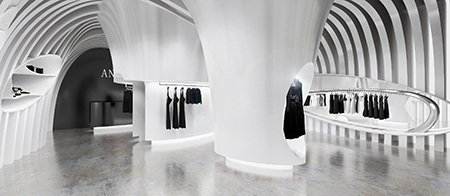
" Store Design Concepts in China need to make a strong statement "
1. Financial Investment
China is not a cheap country any more. Some of the costs associated to entering and operating in the country’s tier 1 cities like Beijing or Shanghai (store rents, salaries, advertising) are close to those brands would have to pay in Europe and the US. Retailers who want to come to China do have to make a certain financial commitment and invest for the long term.
2. Sophistication of Retail Consumers
The days where companies can sell anything and products are bought just because they are European or American – the period often also named the “Golden Age” for foreign companies in China - are over. Consumers are smart, compare choices, and travel abroad. Chinese do not pay a premium price for products and brands that are not well known and do not succeed in communicating superior value that justifies a higher price.
3. Importance of the Brand
In China, a strong brand is everything. We are often surprised that some of the retail brands we work with cannot answer basic questions about the brand positioning and brand personality. What is your brand message? What is your unique value proposition as compared to competitors? Do whom do you want to sell?
Products without a clearly defined brand that is communicated consistently throughout all marketing channels (retail design, advertisements, editorials, print material, etc.) will not sell. In China, more than anywhere else, consumers purchase products because they like a brand, not because they like the product or its functionalities. If the brand is perceived as “cool”, the products will sell.
4. Promotion of Lifestyle and High Impact Retail Design:
In addition to the importance of the development of a strong brand image, brands often forget that while consumers might be familiar with the products and the associated lifestyle in their home country, Chinese consumers might know nothing about it. This applies especially to all non-traditional retail products, like bijoux (trendy jewelry that has no investment value and is made of less expensive materials other than precious metals or precious stones), and lifestyle related products (binoculars, pens, travel accessories), for example. Since locals have not grown up with these “hobbies” (the majority of people was suffering hunger 30 years ago and the government-controlled market only opened up to international retail products in 2005), extensive education and promotion of the respective lifestyle are required before consumers understand how the mentioned products can be used and why they should be bought.
Retail design in China therefore has to be essentially different from more traditional retail concepts that are successful in the West: Store design concepts have to focus on the customer experience and showcase the attractiveness of the brand and the related lifestyle. Stores should never look traditional and conservative; instead they have to be bright, modern, dynamic and “cool”. Chinese consumers like to enter spaces that are different and have a high visual appeal; they aspire the lifestyle that a certain store communicates. If the store design is right, the product will be purchased.
5. Technology, Continuous Redefinition and Change
A last, very important point to acknowledge and integrate into a brand’s strategy for China is the constant, advanced use of new technologies of Chinese as well as the fast pace with which the market changes. LED screens, monitors, and technologic support has become the standard in stores in China. Brands have to continue to develop, grasp the trends and changes in the market and adapt their retail concept. While the core of the brand should remain the same, facets of the identity that are also expressed in the latest retail design concepts have to evolve. Brands are like people – they have a complex personality and are required to become more mature with experience.
> back to top of page

2022 Relaunch - 5 Star Plus Storytelling Series: Senses
September 19, 2022
Now that we have an understanding of the impact emotion and colors can have when it comes to storytelling, let’s examine the impact sensory storytelling can have on consumers. Incorporating sensory elements such as light, smell, and textures into retail design helps to enhance the brand story of a retailer while also effecting the customers’ thinking and ultimately their decision making.
Importance of Sensory Storytelling for Brands
The psychology behind storytelling is that the natural instinct of the human mind craves for meaning. Storytelling helps us to process information and remember it. Even though this is a benefit, it’s important to remember that a common fault of the mind is to forget some of the facts. When this happens, the mind will invent connections so that the information can still be processed by others. This innate human error is exactly why sensory storytelling becomes very important for brands. While engaging with stories, the sensory cortex in the brain is light up, allowing the listener to feel, hear, taste, and even smell the story.
Zara, one of the world’s leading fashion retailers and proud to be a high fashion, yet affordable Spanish brand. The story behind Zara’s success is that they are seen as a company with great style and fashion consciousness. To express that in their physical stores, Zara uses black and white on the walls, and to make them look even more elegant they utilize a very minimalistic design with monochromic fixtures and shelves. Another added detail to enhance their story are the characteristic spicy scent used in every store, and the relaxing yet trendy background music in order to create an upbeat environment.
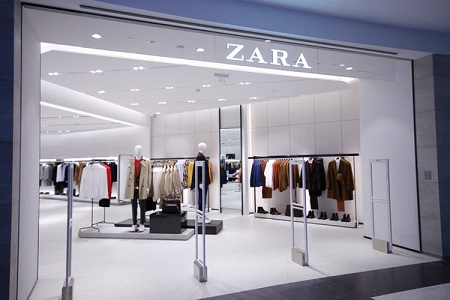
When customers make decisions, they are based on impulses, gut feelings, or force of habit. Not every decision can be rational due to limited amount of time. Quite often it is a design element, like size or color that gives the final push to customers when it comes to choosing a product. Even tiny design decisions can influence customer’s choices at an unconscious level.
Abercrombie & Fitch is another good example to show how a brand can build up a certain personality and incorporate the different senses to their brand’s story. The image they want to show towards their customers is a “cool and good-looking teenager”. Their fragrance for men they use in the men section is a clean scent of citrus and warm dusk. They are also known for their loud music in the stores which makes them able to maintain a more youthful clientele. Apart from building up their brand image, the dimmed lights, loud and vibrant music also encourage impulse shopping.
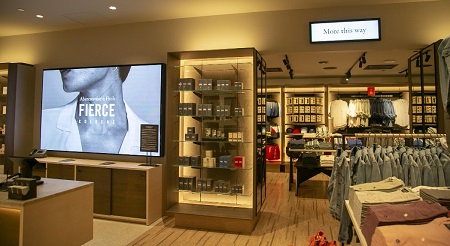
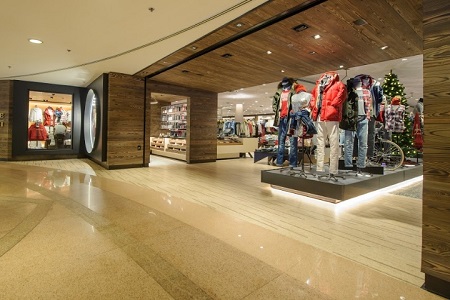
Storytelling Design Tools
1. Rule of Three
The logic behind rule of three comes down to the way the mind processes information. Humans are very good at recognizing patterns and three is the smallest number of elements required to create a pattern. Consumers are not only able to build a pattern with three elements but are also able to break it. In this case the last item is something unexpected and breaks the pattern that was set by the first two. The aim is to surprise and satisfy at the same time.
The magical number can appear in various elements of the storytelling. It can be three facts about the brand, three mannequins grouped together, three words as a catchy slogan or three different product lines placed next to each other.
Steve Jobs applied the rule or three in almost every presentation he held about Apple. When announcing the first iPhone in 2007, he built his whole presentation around it. He claimed Apple would introduce three revolutionary products: a new iPod, a phone, and an internet communication device. He repeated each of them slowly until the audience figured out he was talking about one device, the iPhone, which was the third revolutionary product category after Macintosh and iPod.
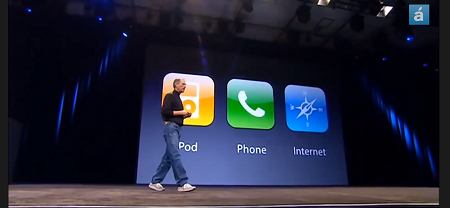
2.Gaze
For designers it’s essential to understand how the target consumer’s vision works. What makes them look at certain things longer, what determines the order in which they look at objects? Can this wandering, searching movement of the vision be influenced? Without a deeper knowledge of this activity, designers won’t be able to create an impactful retail design to successfully tell the brand’s story. Colors, borders, words, pictures and shapes like arrows are used in order to control vision and to attract the gaze of users. Certain graphic elements can captivate the eye while others help the vision to wander along a path. This constant search for change moves the gaze from one point to another, constantly changing the focus.
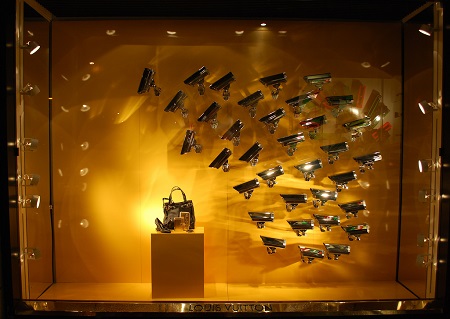
3.Guide through Your Story
The Swedish brand, IKEA doesn’t only sell furniture to their customers, they also tell them a story which is about ‘loving where we live’. The key brand goal is to make their customers feel understood. IKEA showrooms are like labyrinths which means they are designed in a way to carry along customers on a controlled journey. The customer journey through the store brings guests through different room examples to show how their homes can look like, how it would smell and how it would feel living there. Guests can try out every piece of furniture, sleep in the beds, and relax on the sofas. The unique design of different showrooms allow guests to their senses of sight, touch, to envision what IKEA products could look like in their own home.
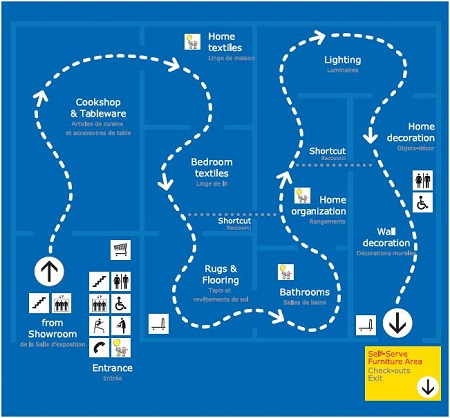
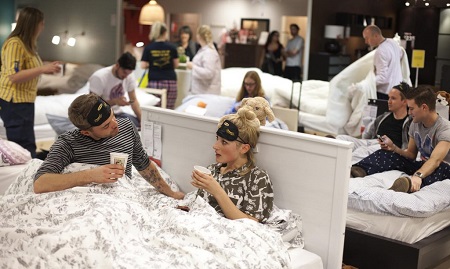
Image Source: Fohlio
What Comes Next
The right brand story has the power to increase the value of your business’s product or service. After accessing their brand identity, brick and mortar stores have a huge advantage over their online competitors by communicating across five senses. The key is to trigger an emotional response by building up a multi-sensory in-store experience.
> back to top of page

Highland Games where Brands can Express Themselves
Event Marketing in China
August 30, 2022
In our fast-paced world, where we are constantly under the influence of advertising, it's hard to know what type of information is credible and what brands really stand for. Event marketing is a perfect method for brands to engage with customers directly and should be a significant part of the brand’s marketing strategy. Events provide an opportunity to promote products in a physical and experiential manner, leaving a lasting positive impression in the customer's mind.


Image Source: British Chamber of Commerce in Beijing
On the last Sunday in August, the Highland Games took place for the fourth time in Beijing, China. Organized by the British Chamber of Commerce in Beijing, the event was all about community building and the promotion of Scottish culture. With a great understanding of how beneficial community building and customer engagement can be for UK brands, the chamber collaborated with various organizations to promote the Scottish lifestyle, culture, and products. The Highland Games were attended by over a thousand guests from the Scottish, British, Chinese, and international communities. The event provided a great opportunity for brands to create an immersive experience, promote their products, connect with guests and generate interest in their company. Amongst a number of companies, Tricker's and Loch Lomond were present to make the most of the unique occasion.
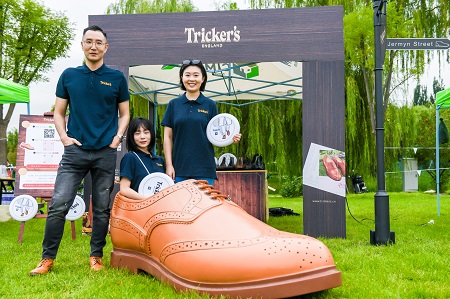
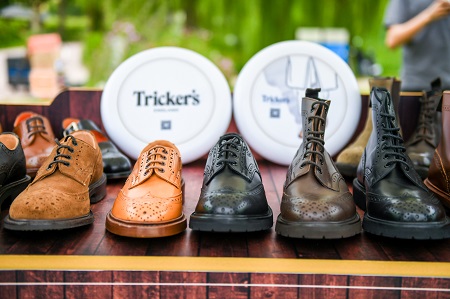
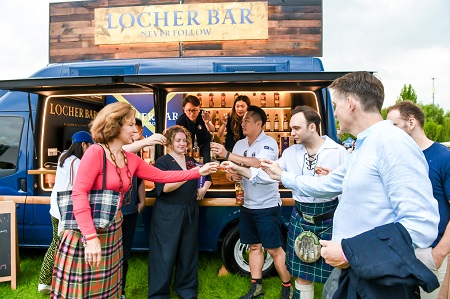
Image Source: British Chamber of Commerce in Beijing
The event featured Scotland and its traditional games like shot put, tyre flip, farmers’ walk, tug-of-war showdown, and other activities including university collaborations, a charity raffle, and projects in aid of the Migrant Children's Foundation.
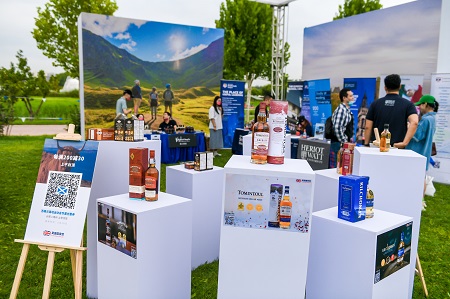
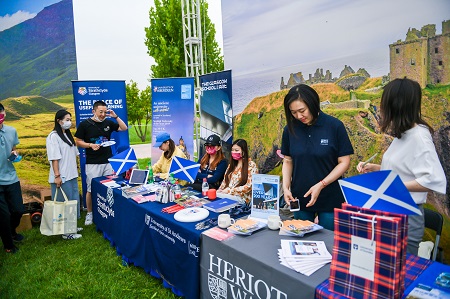
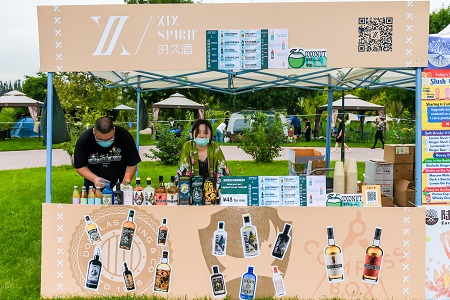
Image Source: British Chamber of Commerce in Beijing
5 Star Plus Retail Design has a long history of working with the British Chamber on various occasions. Our team was a proud partner at this well-planned event and provided execution and project management services. The Highland Games were highly successful and tickets were sold out days in advance, showing genuine interest from the community towards Scottish culture, traditions, and associated experiences.
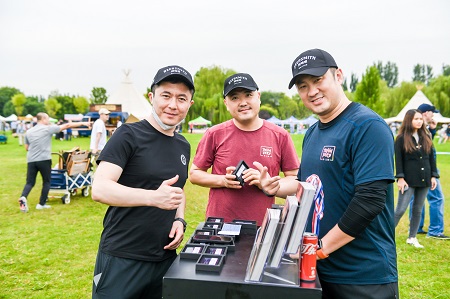
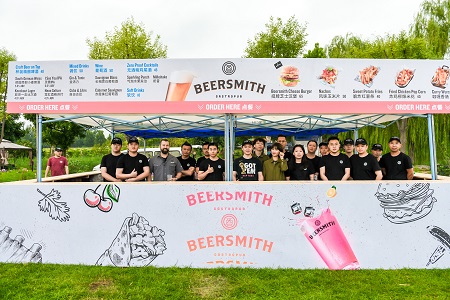
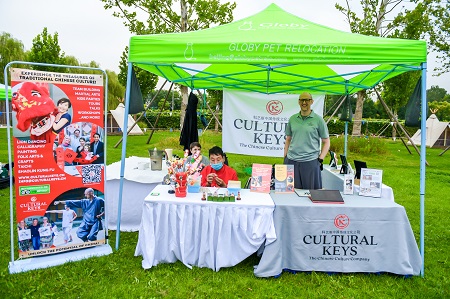
Image Source: British Chamber of Commerce in Beijing
> back to top of page

Light as a Miracle Tool
5 Star Plus Series: Retail Design 101
August 29, 2022
In our everyday lives, we do not give much importance to the elements around us that are free. Daylight is just like that. Without noticing, it’s a source of health and well-being, an infinite form of energy, and a component of our architecture. With the right design, light becomes almost solid, cutting into existing walls and creating new spaces. However, natural light often has limited availability when designing a retail space. In such cases, designers seek to create interiors that appeal to all the senses, where they can manipulate natural light, shadows, and artificial light to create a unique atmosphere.
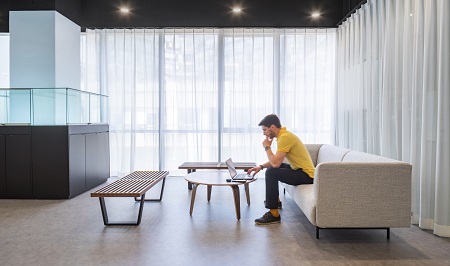
The combination of natural light and artificial light creates a well-lit, engaging environment at Cooke’s Beijing Office
In today's world of retail design, the design of artificial lighting is just as important as the proper planning of spaces or the choice of materials. Light as an interior design tool can be used to create a particularly diverse sense of space, so it is important to understand which light sources can be used to create a certain effect or to direct customers. Moreover, poor lighting in a store can affect sales negatively. The optimal light depends on two aspects: the products that the brand sells as different light is needed for different products, and the feeling that the brand wants to convey to customers. Materials are also affected by light. The sparkle of the glass, the glitter of gold elements, the depths of dark wood, and the shadows on white walls all hold emotional messages to the customers.
Types of Lighting
Ambient
Ambient lighting is typically the store’s primary lighting that provides light to the space evenly and helps customers to navigate through the space without accidents. When customers enter the store, the atmosphere needs to be welcoming. In order to reach that, indirect, diffused light can be used to create a pleasant ambiance. The level of brightness will be determined by the size of the space, the height of the ceilings, and the amount of natural light it receives. This is usually done in the center of the store or above walkways or corridors, and can also be implemented along walls for a wall-washing effect.
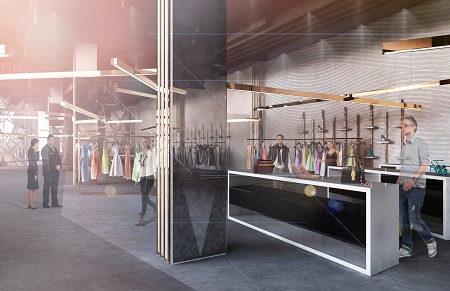
Ambient lighting at an outlet store in China
Accent Lighting
Accent lighting is a distinctive, attention-grabbing form of lighting used to highlight a specific area in the store and aims to draw customers towards a defined point. Brands typically use accent lighting in their window displays and for branding to get the attention of passers-by.
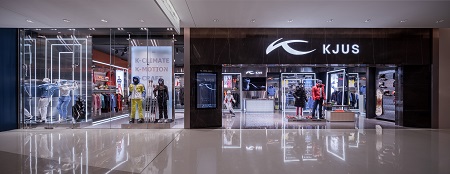
Accent lights in the window display of the KJUS flagship store in Beijing
Decorative Lighting
Its importance lies in its aesthetic function, which is purely decorative. The focus is more on the visual design instead of properly illuminating the area. The best examples of decorative lighting are the festive lights during the holidays.
Task Lighting
Task lighting is lights used in parts of the space that require more brightness for the completion of specific tasks or to enhance comfort and safety. These areas are typically the changing room, the storage area, and the cash desk. Task lighting also plays a role in the functional separation of different spaces.
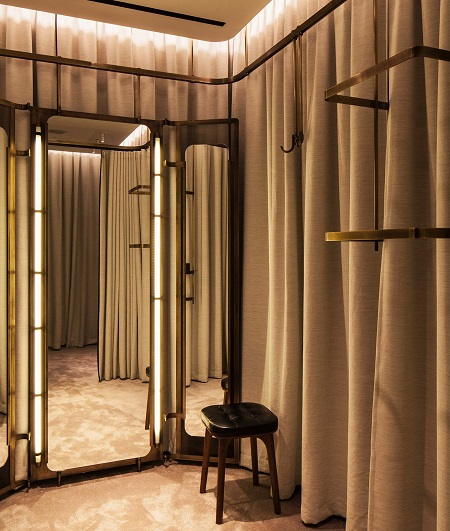
The light in the changing rooms is designed to make garments put on look appealing to customers.
Lighting is one of those aspects that most customers do not perceive at first glance. However, unconsciously, good lighting improves both the retail design and the atmosphere of the store. It can considerably improve the quality of a space and is the one singular aspect in retail design that can either make or break a store design concept.
> back to top of page

2022 Relaunch - 5 Star Plus Storytelling Series: Colors
August 23, 2022
Storytelling with Colors
In the second part of our storytelling series we will discover the effect of colors as a powerful storytelling tool. By using colors we can create any mood and ultimately stories. As humans, our minds instantly respond to these stories.
The psychology of each color depends on the personal experience of the customer as well as the “personality” of the brand. A mix of perceptual and cultural factors combined with the right colors helps create a dynamic environment that ties to a brand’s story and speaks to their consumers’ emotions.
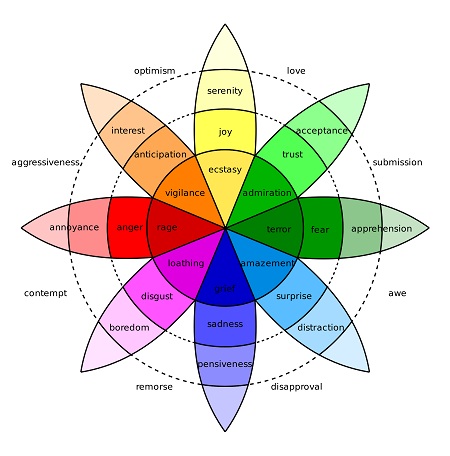
"Visualization of Robert Plutchik’s Wheel of Emotions "
Influencing the Mood with Colors
Colors serve as an important storytelling tool, because they create a sensory impression that reflects mood and emotion of a retail space. Psychological studies have shown that feelings of joy and happiness are often associated with warm and bright colors, where as cool hues and dull shadowy tones are more downbeat.
Before brands choose the respective colors for their stores, it is important to decide which hues represent the brand identity in the best way. Brands have to be aware who they are, who their target audience is, what story they want to tell and ultimately what mood they want to create for their customers. Designers also have to think about how the color is used with other elements like text or photos.
The Concept of ‘The Color of the Year’
Every December ‘The Pantone Color of the Year’ is awaited with much excitement and anticipation by designers, branding experts and the creative society as a whole. When the Pantone Color Institute first announced the color of the year in 2000 as a trendsetting concept, it was not known how influential their decision would become for the retail industry.
The Institute does not just randomly choose any color. They follow a very strict evaluation method during the decision making process that takes the current fashion and marketing trends, social media status and even politics into consideration. Their ultimate goal for each year is to select a color that reflects the current global mood. The result is a color that is inspired by us meant to inspire us for the coming year.
Classic Blue
Let’s examine the color of this year and see what its story is! The chosen brand new Color of the Year is Classic Blue. As we entered to a whole new decade, Pantone Institute wanted to pick a color that gives everyone the feeling of good foundation of faith and peace. The main idea behind choosing such a well-known, familiar color is to give us a sense of reassurance.
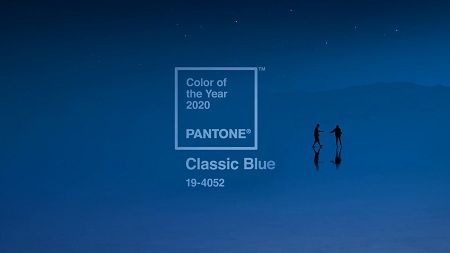
If this color was a person, it would be someone who is reliable and creates a calming environment that also brings sense of tranquility to the human spirit. This person would also be able to bring clarity, help with the concentration and ultimately re-center other people’s thoughts.
Classic Blue’s Story
Since 2007 Pantone not only picks a color but also creates a lifestyle, and a whole story around it. As part of their marketing campaign, in collaboration with partners across industries, Pantone created a multi-sensory Classic Blue experience that they showcased at their color reveal ceremony. To help people experience the personality and story of the color, they developed the smell, sound, taste and texture of Classic Blue.
Classic Blue in Retail Design Storytelling
Since colors need to be able to show and tell a brand’s story, spark interest and also inform customers they have to be carefully selected. We would like to show some examples where Classic Blue was incorporated into the retail space storytelling.
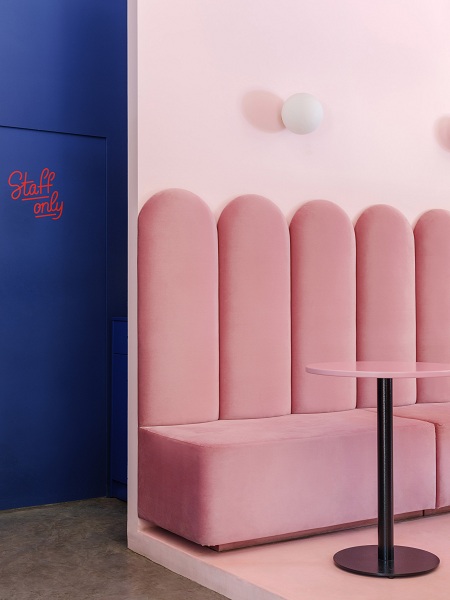
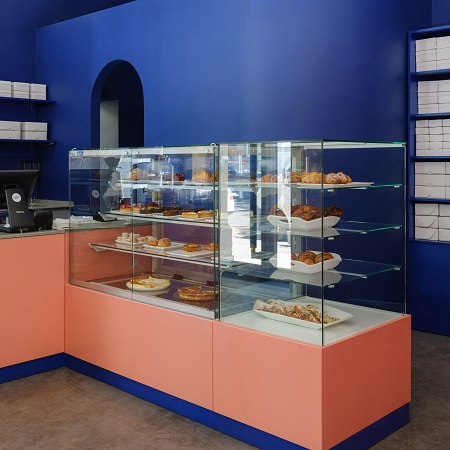
Image Source: Dezeen
The images above are good examples of ‘Past meets present’. When designing this café and bakery in Ukraine the designer used Classic Blue and the very contrasting Living coral, the color of 2019, as an accent color to put emphasis on the takeaway area. The color concept is based on the cold shades of pink, blue and grey, which emphasizes the warm color of bread.
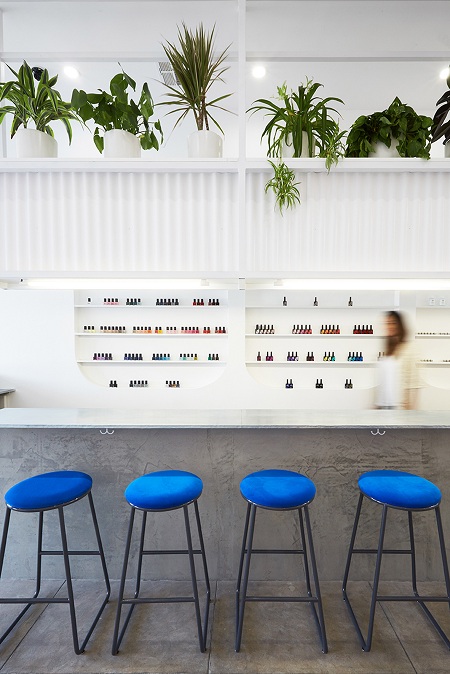
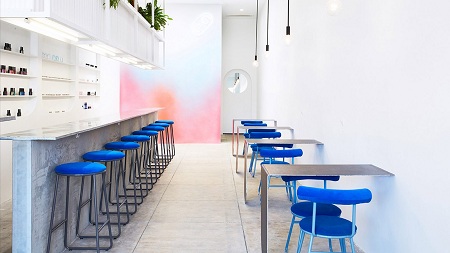
Image Source: Dezeen
The nail salon above, located on the Beverly Boulevard in Las Angeles, is surrounded by hip coffee shops and clothing stores. Their uniqueness is in the Japanese style gel that they use. The designer wanted to create a coffee shop style interior with industrial-style surfaces and pops of blue that help represent a sense of discovery while also avoiding the predictable design style to reinforce the fact that this place is everything but an ordinary nail salon.
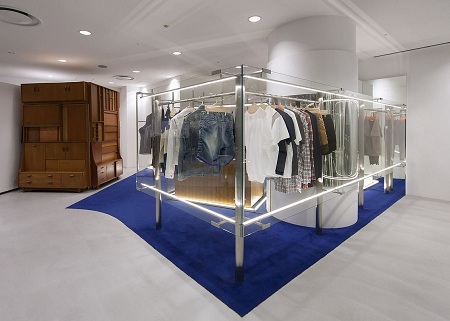
The clothing store design above creates sections of different items with use of Classic Blue flooring. It’s a symbolical piece that defines and characterizes the space as a minimal setting in a calm environment.
In general, when it comes to using Classic Blue as part of the retail storytelling, brands express a sense of calm and the feel of luxury with it. Usually it reminisces of the ocean and sky and these elements provoke a sense of peace which is the perfect choice when brands want to create a slow shopping experience.
Finally, let’s not forget that color is about much more than just a nice hue or the perfect shade. In fact, studies have shown that 90 percent of impulse judgments about brands and impulse purchasing are based on colors alone. It’s never the color itself that has this effect, but how well that color complements the brand story.
> back to top of page

2022 Relaunch - 5 Star Plus Storytelling Series: Emotions
July 28, 2022
About our Storytelling Series
Storytelling is a powerful tool that make audiences relate to brands through content. If brands utilize it correctly, it can educate, entertain, and engage customers. It is a great tool for building a strong brand reputation. But what is storytelling exactly? This is what we will explore in this series of articles. In the first one we would like to show how storytelling can effect emotions and through these emotions build stronger brand loyalty.
How to Connect to Consumers?
Storytelling can bring the brand to life, humanizing it through all aspects of the physical world that appeals to each of the five senses. Consumers can not only see the brand’s story, but also hear, smell or touch it. To go one step further, brands build a deeper connection to their brand story through emotions.
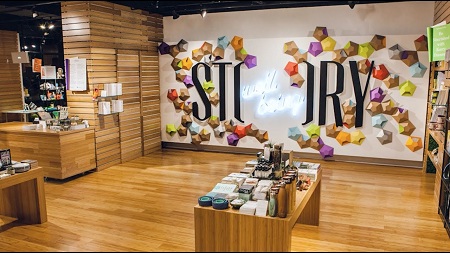
"Reinventing Retail"
The ultimate goal of storytelling for retailers is to forge a strong emotional bond between the brand and its customers. Once they connect to a consumer’s heart and mind, the consumer feels this and holds a sense of loyalty making it harder for other brands to tempt them with a single offer. Using this engagement and retention tool, companies can easily communicate their brand values. Brand values can communicate a brand’s origin, objective, and distinct qualities about the ingredients and components of their products. To achieve this they have to be able to answer the following questions. What is the exact message they want to convey? Is there a statement they want consumers to believe in or a heritage they want them to be proud of? Is there anything special, or unique about the product or its ingredients? Is there a mission that the brand is striving to achieve? Are there any additional services included and is there anything interesting about the store design and merchandising?
When it comes to luxury brands, their ultimate goal is to establish connection with the customer on three different levels. The first is the connection to the brand itself, the second level is to the product, and the third level is with the sales consultant.
Best Practices
Let’s first explore some really good examples from the Chinese market starting with Starbucks. Their brand advantage is that they don’t make a story about products; they make the story about people. They make sure to connect with their customers in all possible ways from the lingo of the beverage sizes to writing customer names on the cups. By writing the names of the customers the cashier indicates a more personal contact. In the largest Starbucks in Shanghai, customers get an amusement park-like experience all while drinking their favorite Starbucks drink. Customers can walk through the store and see many processes of how their favorite coffee drink comes together. From viewing areas of fresh beans being roasted to the tubes that transport the beans directly to a barista for packaging and roasting. A large retro board displays what type of beans are currently being roasted that also shows information about taste and origin. Customers can also experience French and Italian style food and pastries that pair well with their coffee. Every aspect of the design is about creating experience through entertaining and educating customers.
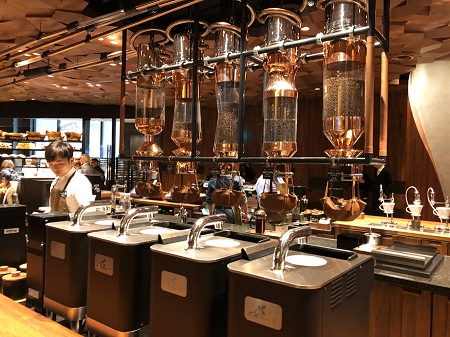
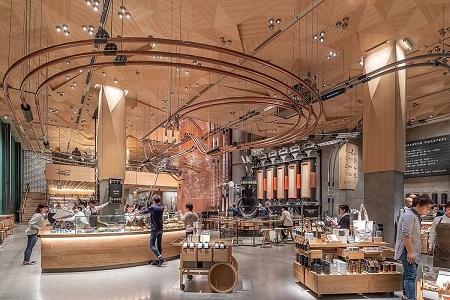
"Starbucks Reserve Roastery Shanghai"
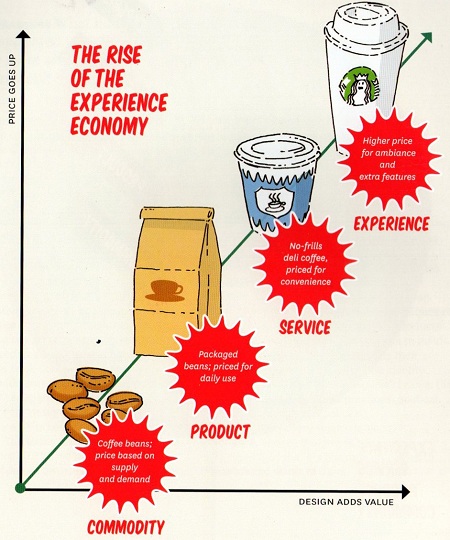
"The Rise of the Experience Economy"
Image Source: Ellen Lupton: Design is Storytelling, 2017
Lush, a cosmetics brand from the UK, builds their whole story around the following words: fresh, handmade, ethical, transparent and honest. These statements come to life in every detail of their stores. Customers connect to their values through sight, smell, sound, touch and even taste. Shop assistants are called “happy people.” Customers are invited to refresh themselves before exploring the store and trying out the products. Some of the fresh ingredients used to make the products, such as plants can be found in the stores as well. Their goal is not only selling products, but educating people about being environmentally conscious. They don’t try to hide anything, rather proudly show off that they fight against animal testing, and that all the ingredients in their products are 100% vegan, ethically purchased and handmade. They even place a drawn image of the employee who created that specific product. All of these elements combined help tell the story of their brand as exposed, raw and honest.
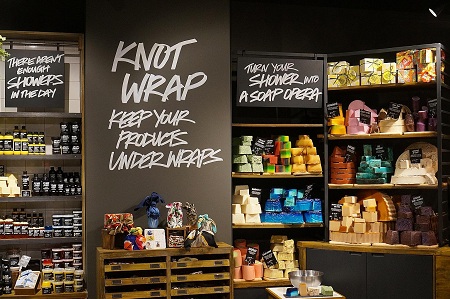
" Largest Lush store opens in Singapore"
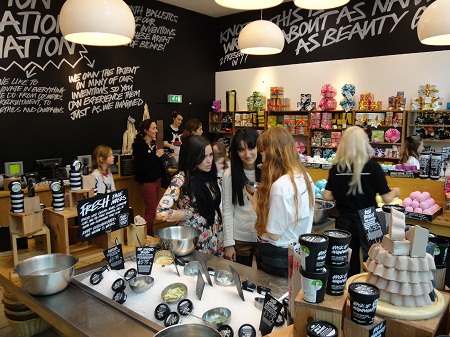
" Demonstrating and Storytelling in Retail"
Emotional Journey
A customer’s relationship to a certain product or service changes and evolves over time. The customer’s energy rises and falls as they feel curiosity, pleasure and satisfaction. They may also hit negative stages with frustration, anger or doubt. Their emotions towards a brand can be shown visually using journey maps. The difference between a simple plot and an emotional journey map is that a plot shows a series of events that make up a story, while an emotional journey map shows the feelings that inspire those events. Emotional journey maps help designers to think like the customers, and anticipate the potential lows and highs they encounter on their journey. This tool helps brands to understand and improve their customer’s relationship with a product or service.
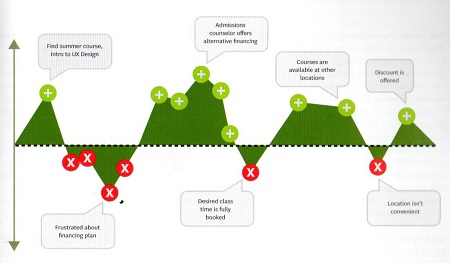
"Emotional Journey of Finding a Summer Course"
Image Source: Ellen Lupton: Design is Storytelling, 2017
Building a Deeper Story
Retail brands keep discovering how to move from a more product-centric focus to a consumer-centric retail model through storytelling. They make use of the fact that stories help consumers remember things. They have control over the flow of information and when done right, they engage emotions. Once consumers are emotionally involved there is a significant impact on purchase decision-making. In the next article we will explore the different techniques that influence the human mind through design. We will show how utilizing these techniques can have an effect on customers.
> back to top of page

Store Design Preferences of Gen Z
July 26, 2022
According to Bain & Company, Gen Z will make up 40% of the luxury market by 2035. The next generation of consumers has a spending power of about 140 to 350 billion dollars, but marketing to this generation will be a challenge for many companies. Appealing to this generation will be crucial to brand longevity because the younger generation influences the older generation and because of the need to have a multigenerational consumer base.
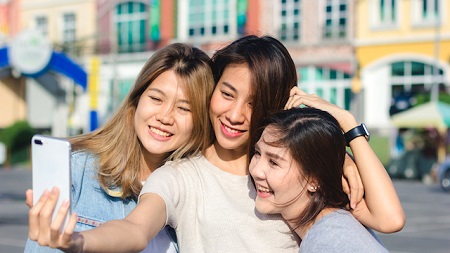
Who is Gen Z?
Gen Z consists of people born from 1997 to 2012. They are an internet-dependent generation. This dependency on technology makes this generation largely influenced by social media. Life online and offline blends into each other. Overexposure to the internet makes this generation deeply care about the world and change. The internet gives this generation endless options and knowledge. They want products, experiences, and services that align with their values. Self-expression is crucial to this generation.
What is their attitude towards companies & buying
When it comes to buying, traditional marketing is not enough for this generation. It is not enough for a product to be good or to have a famous brand name, they need something more than these. The experience when purchasing matters. They have very high expectations and expect extraordinary service and crave authenticity. Gen Z cares about brand identity and what they stand for. They look for values such as sustainability, inclusivity, social responsibility, social consciousness, and authenticity. Brand storytelling that expresses clear values is essential. This generation also does a lot more product research before buying, using social media platforms such as Weibo, Douyin, TikTok, WeChat, Instagram, Bilibili, and many more to decide if a product is worth buying.
Bloomberg states, “But what truly sets China’s Gen Z apart from previous generations, and poses the greatest threat for multinationals from Sony Group Corp. to Christian Dior SE and Nike Inc. is their growing nationalism, fueled by Beijing’s desire to flex the country’s rising global clout”. Gen Z is not easily impressed by foreign brands and has been turning towards domestic brands which creates a serious challenge for all foreign brands wanted to reach this generation in China.
Gen Z will cancel brands and influencers. They are aware that they have countless options to choose from, so one negative experience will make them move on to the next. Recently, Dior has come under fire for cultural appropriation for a skirt design for their Fall 2022. The design is identical to the mǎmiànqún (horse face skirt). Dior has not yet responded but took down the item from their website. That shows how the younger generations are more culturally sensitive to brands.
What companies have done to appeal to them
Gen Z is pushing for more e-commerce. Products and brands that have cultural value are appealing. If something is popular within the generation, collectible, rare, or limited edition, it boosts up its desirability. Collaborations with relevant people like influencers, celebrities, and KOLs have helped brands market to Gen Z since they highly hold online recommendations. User-generated content is used as a signifier if the product or store is worth buying or visiting. The shopping experience in stores and online should be technology driven. An intriguing store design is crucial, just like social media worthiness with QR codes and WeChat mini-programs. For example, the brand Randomevent uses 1990s nostalgia as inspiration for its clothing and a museum-like store design. Randomevent has created collaborations with brands that are popular with Gen Z, like Vans, Dickies, and Reebok.
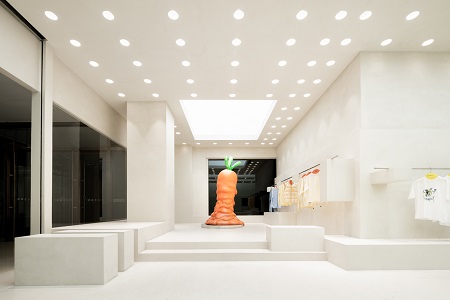
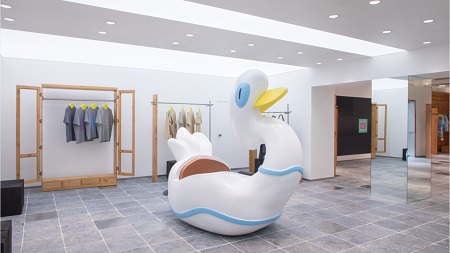
Randomevent store design tailored to Gen Z
Another unique concept is the ENG (Explore, Navigate, Generate) stores. ENG stores and the website carry designers like Mugler, Telfar, Ludovic de Saint Sernin, Didu, and many more. ENG does a great job of creating a retail experience by directly targeting Gen Z. Using futuristics motifs, the stores have turned into must-see locations, especially because of the many events hosted in stores.
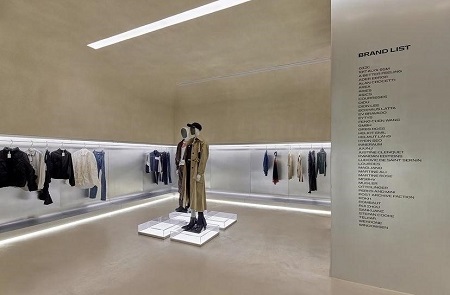
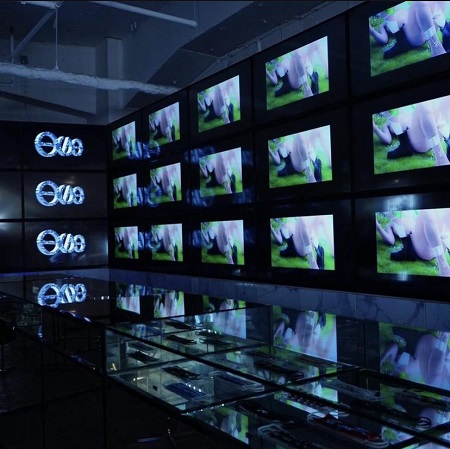
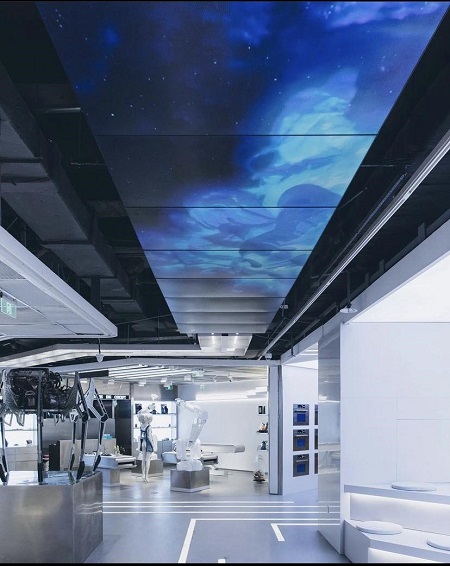
ENG Store Design
Mac Cosmetics spent six months on consumer research to target Gen Z with their store in Shanghai, China. The store’s focus is to blend technology into the store design to make the shopping experience more personalized. The store has a WeChat mini program and smart mirrors for customers to try on makeup virtually.
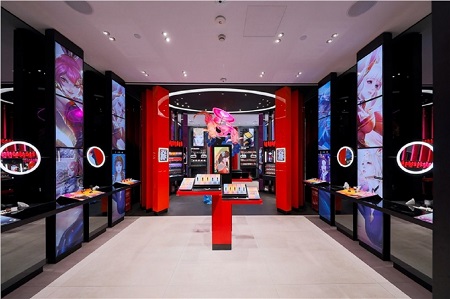
Mac Cosmetics Store Design
X11, a toy store, is trying to appeal to Gen Z parents. X11 uses their store design to attract Gen Z by making social media-worthy backgrounds for photos and appealing to Gen Z’s passion for exploring and fun.
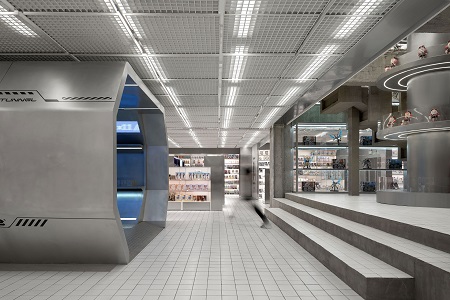
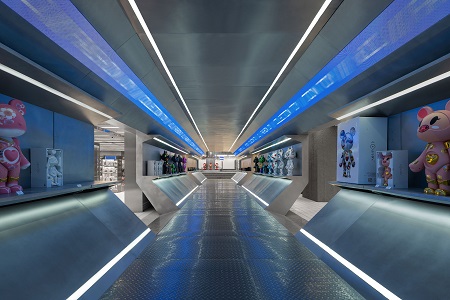
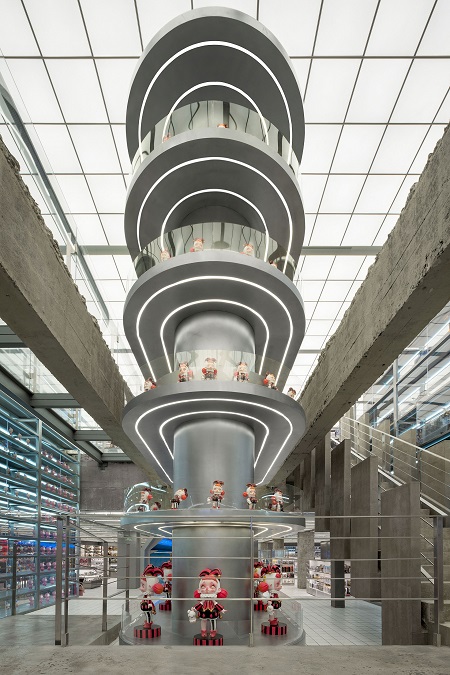
X11 Toy Store Design
This digitally native generation spends quite some time online but when it comes to their shopping, they’re more likely to prefer physical stores with real experience. GenZ is also exposed to more new brands on digital channels (social media, ads, etc), which makes them less loyal to brands. All these are resulting in brands having to work harder, and have a better strategy to hold onto Gen Zs as customers.
> back to top of page

A Taste of Luxury
Luxury Brands Expansion into Hospitality
July 22, 2022
There are many reasons why a luxury brand would want to expand into other non-fashion-related industries. According to Bain and Company, the luxury market will reach €360-380 billion by 2025. Having branded cafés and restaurants can serve as an extension of the luxury experience and connect with existing and new brand audiences.
These branded restaurants and cafes are usually located near a boutique or flagship store, allowing for an immersion into the brand through picturesque decor and cuisine. People are willing to spend money if they think the experience is worth it. This is especially important when wanting to build client loyalty with Gen Z and Millennials as they are already one of the main consumer bases. The younger generations have shifted their focus towards more experience-based goods that help build emotional connections, further cementing client loyalty to the brand.
Chinese Market and Audience
According to Bain and Company, China is will be the largest luxury goods market in the world by 2025. To be competitive, a brand needs to offer the Chinese consumers something unique to appeal to the audience. The Chinese audience has high expectations when it comes to luxury so brands have to adapt their business models and designs. China is a popular destination for branded cafes, restaurants, and hotels. However, this trend can lead to the over-saturation of these types of spaces. With more options given to them, Chinese consumers strongly consider the quality of service and food before visiting these venues, mainly located in major cities such as Shanghai and Beijing.
Bulgari Hotels, Beijing and Shanghai
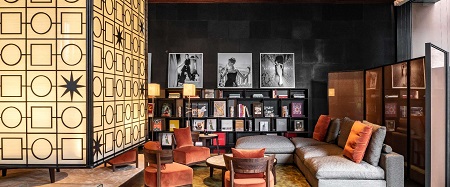
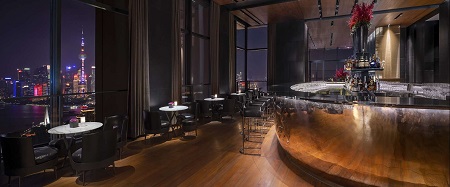
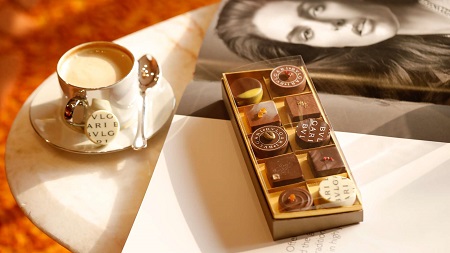
The interior fuses classic and contemporary Chinese and Italian design
Bulgari’s stores, hotels, and bars are styled in the infamous Art Deco and Italian designs the brand is known for. The hotels in Shanghai and Beijing contain luxurious rooms, restaurants, Bulgari boutiques, bars, spas, and chocolatiers. Based on reviews from TripAdvisor, the hotels are well received and commended for excellent service and luxurious decor.
Vivienne Westwood Cafe, Hong Kong
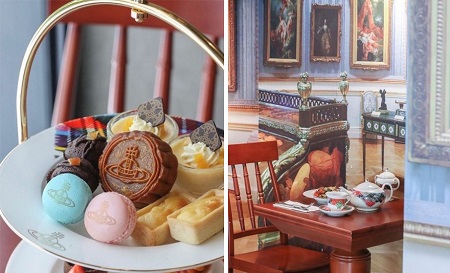
Vivienne Westwood Cafe is widely popular with Gen Z
Vivienne Westwood has some clear design details. The Saturn orb logo, plaid print, punk elements, and Rococo imagery are all present in this cafe. Westwood is known for mixing punk and traditionally feminine details into her fashion design, which is a no-brainer that the brand is widely popular with Gen Z. The brand rose to popularity with this generation through social media, especially on TikTok and Instagram during the pandemic. Gen Z influencers advertising the brand on social media have made it a cult favorite.
Cafe Madang Hermes, Seoul
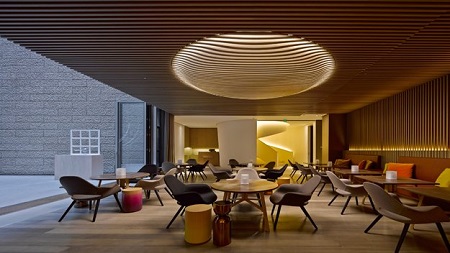
Cafe Madang Hermes with branded Hermes motifs
This cafe is directly connected to the Hermes store in Dosan Park, one of the wealthiest neighborhoods in Korea. The venue follows the brand's theme of elegance and sophistication through a carefully curated atmosphere. The cafe creates a comfortable and intimate space for afternoon tea. All of the tableware and the food are branded with Hermes motifs.
Cafe Dior, Seoul
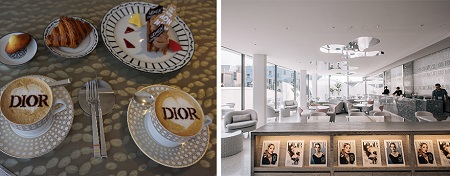
Cafe Dior design
This cafe is designed to be a great stop for shoppers to momentarily rest and catch up with friends and family while enjoying afternoon tea. The deserts are designed by famous French chef Pierre Herme. The food and tableware are very aesthetically pleasing with items such as coffee with the Dior logo latte art.
Art Residence Armani/Casa, Chengdu
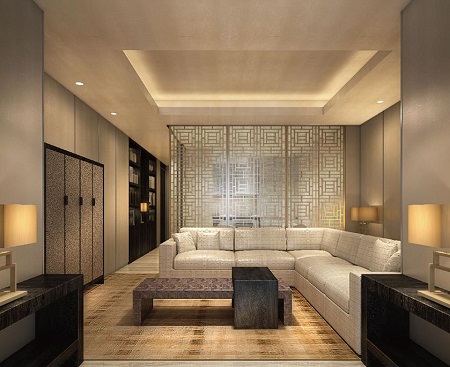
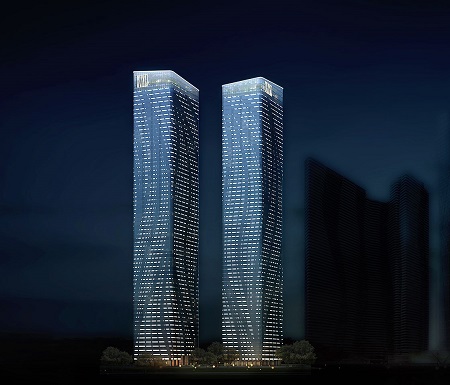
Art Residence Armani designed by Giorgio Armani
Giorgio Armani himself designed these luxury flats located in China. Armani infuses his known style into this residence creating two buildings full of the sophisticated motifs known in his fashion designs. The buildings are livable art. The outside of the buildings is designed to look like swaying orchids and bamboo, showing a clear design inspiration for the Chinese location.
Key Takeaways
When designing branded cafes, restaurants, hotels, and residential homes, brands should carefully consider how these places can serve as an extension of their luxury and brand design. These venues must be photo-worthy, have perfect service, and delicious food. Customer service can make or break client relationships with the brand based on the experience they have. Understanding the local culture of the location also adds to the consumer experience, for example, by creating menus of fusion cuisine or adding traditional design motifs. Giving people a taste of luxury through branded extensions is a rewarding challenge.
> back to top of page

Adapt to Survive
Western Brands on the Chinese Market
June 30, 2022
Before brands enter a market in a new country, it is essential to assess what store design strategy they should follow. The original store design is created to fit within its environment, but future locations in other countries may not have the same style. Some companies do not change their well-established look due to maintaining a consistent identity, such as IKEA, H&M, Apple, and Muji. On the contrary, many companies decide to modify their existing design for cultural and legal reasons or accelerate market expansion. There is a hybrid approach too, where brands maintain a core identity but change a few details. As the Chinese retail market is our area of expertise, we will focus on brand design adaptations to the Chinese market in this article.
Failure or Success in the Chinese Market
China has always been a complex market where deep knowledge of luxury retail and an understanding of the local expectations is needed. The first step is the same in every case: brands need to understand the challenges that the local market holds:
- ?Operational costs are quite high
- ?China has the fastest rise in Gen Z clientele
- ?Luxury must cope with a fundamentally different, rapidly evolving customer expectations
- ?An increasingly strong national sentiment appeared towards domestic premium and luxury brands.
- ?Brands are expected to have a unique, authentic story to tell
- ?The market responds very quickly to the latest innovations
- ?Retail stores should also act as an expansion of the e-commerce platform to support the brand and build communities.
- ?Global leadership receives little to no training in developing empathy towards the Chinese partner, while the local teams are often not trained well enough about the fundamentals of luxury.
Despite all these challenges, China is and will remain a key market for luxury brands. However, the more brands want to get out of the opportunities this market has, the more they need to adapt their structures and capabilities to succeed.
Bulgari
Bulgari opened its immersive Shanghai flagship store in 2021. The main inspiration for the design was the Art Deco style, a theme that Bulgari and Shanghai have in common. To create a more unique, tailored design for the Chinese market, their flagship store features a green, jade-like fa?ade made from brass and recycled glass bottles. The result is a complex design with multiple layers of cross-cultural references; Art Deco architecture with a jewelry-like quality, combining the best of Eastern and Western culture.
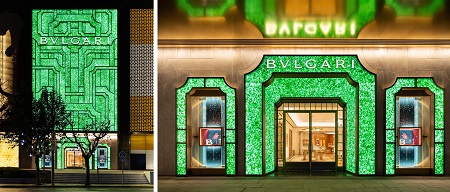
Bulgari flagship store in Shanghai
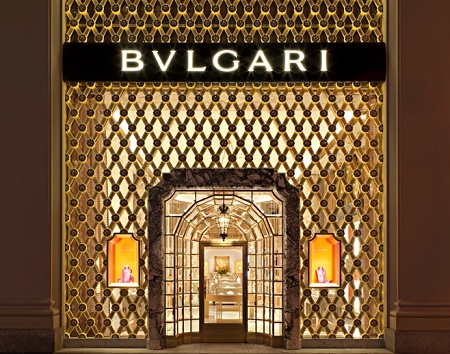
Bulgari Store in New York
KJUS
KJUS is a Swiss-based, internationally operating premium sports brand. Their existing design incorporates bright materials, and wood structures that embody the Nordic origin and are reminiscent of the ski slopes and golf landscapes while drawing attention to the colorful collections. However, a concept that works well in a specific region might be considered boring in the other. 5 Star Plus Retail Design created a design concept tailored for the Chinese market. The main differences can be seen in the store colors and materials as their existing design style would not be considered a premium brand. We had to create a futuristic, high-tech, and luxury feel and to achieve this, we used cool, modern, and high-end materials such as metal and stone. Special lighting effects and technological advancements are utilized in-store to explain product features, key products, and collections.
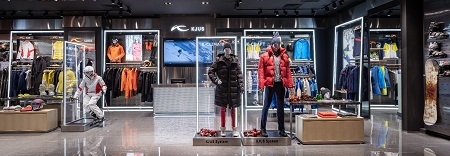
KJUS Store design adapted to the Chinese Market
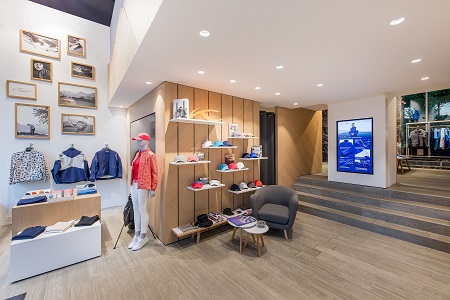
KJUS Brand Store in Switzerland
Burberry
When Burberry planned their first social retail store in Shenzhen, they had to keep in mind that China is home to some of the most digitally savvy luxury customers therefore they had to adapt their concept to this environment. Together with Tencent, they created a new concept with higher technology integration to fit the local expectations of luxury retail. In the store, the physical and social worlds are blended in a digitally immersive retail experience where visitors can use Tencent's WeChat app to interact with the window display and play their music in fitting rooms.
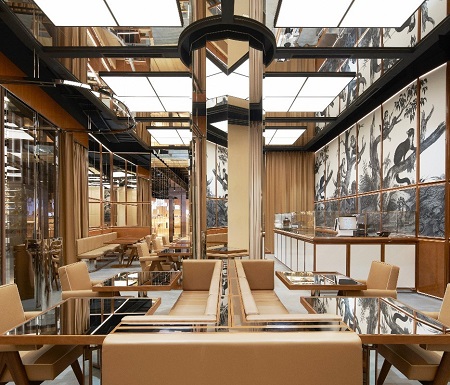
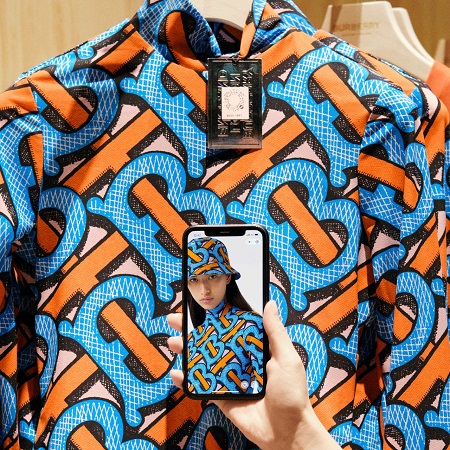
Burberry’s new social retail store in Shenzen
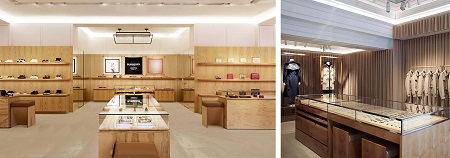
Burberry store in the US
Tricker's
We developed a store concept for Tricker’s that expresses the brand’s DNA while modernizing the look to suit the particular requirements of the Chinese market. Design elements reflecting the heritage and manufacturing process are balanced with clean surfaces and a lot of white. The existing international store design standard focused exclusively on heritage and tradition and was not modern and trendy enough for China.
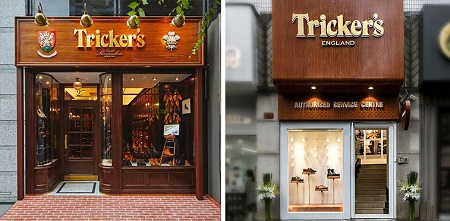
Fa?ade of Tricker’s store in Japan (left) and authorized service centre in Shanghai
Even though globalization plays an important role in our everyday life, the world is still quite diverse, each country has its preferences. Adapting the store design and retail strategy is essential for brands when entering a new market. However, the level of adaptation must be carefully considered on a case-by-case basis after a thorough analysis. Some designs require adaptation, while others may fit seamlessly into a new environment.
> back to top of page

Queen’s Birthday Party
Celebrating 70 years jubilee of the Queen
June 28, 2022
On 6th February 2022, Her Majesty the Queen became the first British monarch to celebrate a Platinum Jubilee, with 70 years of service. To mark this milestone, events and initiatives took place this year all around the world. Last week, the British Embassy in Beijing organized a special event to celebrate the Queen’s birthday and to honor the 70-year jubilee at the Ambassador’s Residence in Beijing.
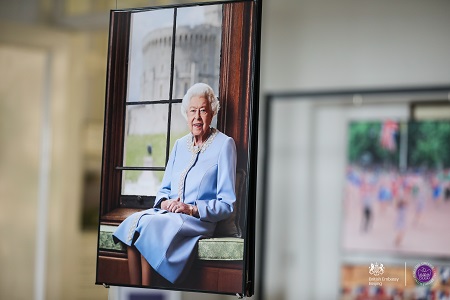
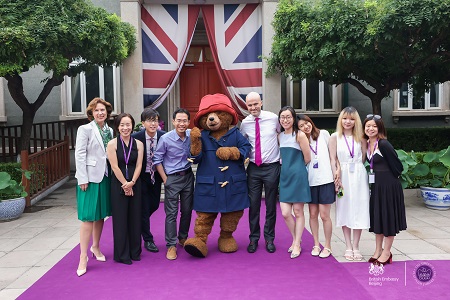
Image Source: British Embassy in Beijing
5 Star Plus Retail Design was assigned to create the event design concept, which included graphic design elements, event layout, and design execution. When creating the design, we aimed to pay a tribute to Her Majesty’s service to the British people. A 3D photo backdrop at the residence's entrance allowed guests to experience what it feels like to wave from the royal balcony of the Buckingham Palace. The royal purple color was chosen for the long carpet at the entrance welcoming every guest who entered the premises and leading them towards the marquee.
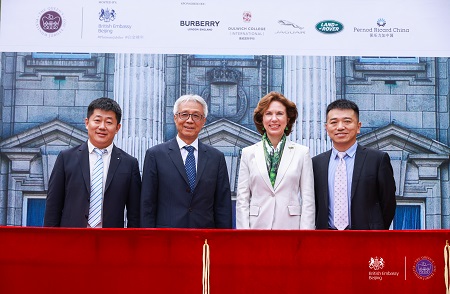
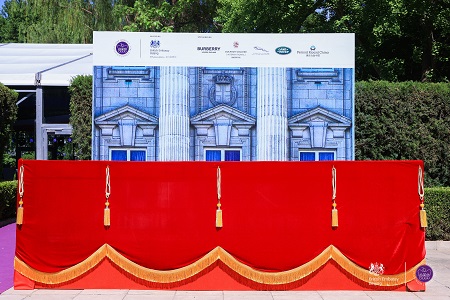
Image Source: British Embassy in Beijing
Inside the Ambassador’s Residence took place an indoor exhibition featuring photos of Her Majesty Queen Elizabeth II's State Visit to China in October 1986 and the Official Platinum Jubilee Celebrations held in London in June 2022. The exhibition layout resembled a maze to guide visitors and let them travel back in time.
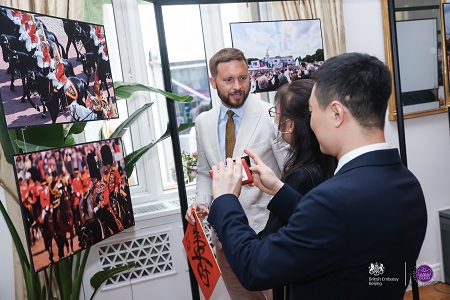
Image Source: British Embassy in Beijing
The marquee was set up in the courtyard with the Union Jack as the main visual element. The flag ran along the marquee's ceiling creating an unmistakable British feel from the first moment guests entered. Besides the Union Jack, special British finger food and drinks were served among which guests could try out the special Queen’s Birthday Party Platinum celebration cocktail created especially for this occasion. The marquee also gave space to Chevening, the UK government’s international scholarships and fellowships programs with a backdrop and a stand promoting British education.
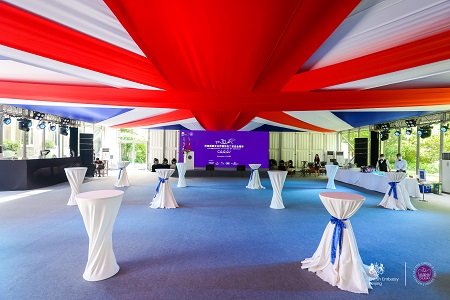
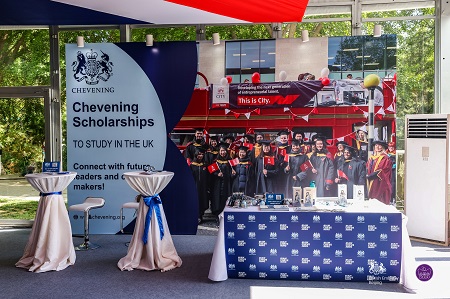
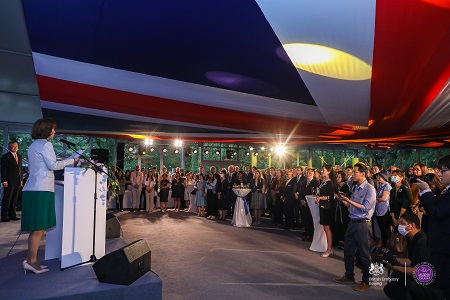
Image Source: British Embassy in Beijing
Inside the building, Burberry had a dedicated stand exhibiting their exclusive commemorative scarf created to honor The Queen’s Platinum Jubilee. The display served as a celebration of the brand’s British heritage and is rooted in exploration and the outdoors. The scarf is hand-illustrated with motifs inspired by ancient British woodlands and the flora and fauna that live there.
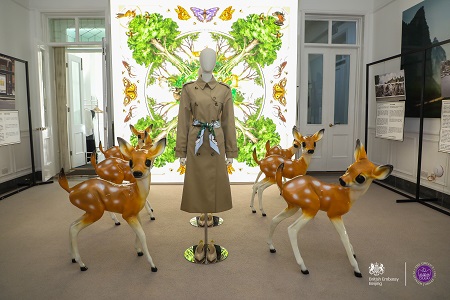
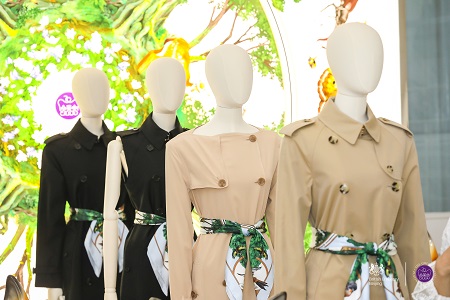
Image Source: British Embassy in Beijing
With over 300 guests attending the remarkable event and three adorable corgis, the residence was alive with a vibrant atmosphere that was not even spoiled by a bit of rain resembling the British weather.
> back to top of page

Workplace Transformation
Before & After: Melchers Transforms their Beijing Office into an Employee-Centered Space That Feels Good
June 24, 2022
As lined out in our article about resimerical design , designing office spaces that incorporate flexible and comfortable areas, materials with varying, soft textures, and soft, warm lighting, has a proven positive effect on the happiness, productivity, and general wellbeing of employees. The right design can evoke a sense of warmth and comfort, while overall being branded and in line with the brand’s positioning.
Melchers China has done a tremendous job in upgrading their Beijing offices, which had last been renovated over two decades ago, to provide this sense of comfort and wellbeing to its employees. The current office is bright and flooded with daylight, feels more spacious, and offers a number of areas and corners with varied seating for informal work and recharge. It is quite the transformation when compared with the prior office design and facing challenges that seemed quite daunting at the time: A low ceiling that was only 2.2 meters high in certain areas, air-conditioning ducts and fire safety equipment that was installed throughout the space at a very low level, and a number columns all made the office feel tight and too cramped. This impression was further increased by most of the natural lighting being blocked off by private offices and the large number of desks placed in the open office area. Employees had only their assigned desks to work at and use two formal meeting rooms. There were no communal spaces or informal work areas.
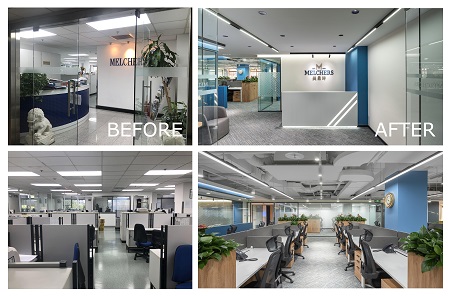
The Melchers Beijing Office Before Renovation
This makes it clear why everyone was motivated and got excited when Melchers decided to completely re-design and renovate the Beijing office. The whole team was involved during the analysis, design strategy and the various design stages. A detailed survey was conducted face to face with most of the employees in order to understand the requirements, needs, preferences and ideas of every individual. The defined objectives included:
- ?Creation of a design with a lasting design language viable for the next 10 years
- ?Maximization of light and better use of space for current needs
- ?Optimization of workflows and communication ways
- ?Replacement of furniture and development of a modern feel in line with the company’s desired image and new global Corporate Identity
- ?Functional, flexible, and easy-to-be-maintained areas
- ?Area with high tables to enable employees to work standing
- ?More informal work spaces that allow people to shift around and work from different places
- ?A relaxing, comfortable pantry space, ideally located beside the windows, where employees can take a break from work
And this is the result. The first thing employees and visitors experience is the new Melchers entrance space. The entrance area feels brighter, more spacious, and welcoming. While offering a strong branded look, what makes this space feel so open and welcoming is the fact that the area opens up towards the inside of the offices and maintains a certain level of lightness and transparency.
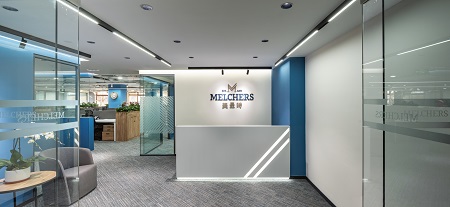
The spacious, bright, and welcoming branded entrance of the Melchers Beijing office
In Melchers spirit, the office was inaugurated in style with a ribbon cutting ceremony and welcome back celebration for the employees in January 2022. The reopening ceremony was blessed by the good fortune of the first snowfall of the year. A Chinese idiom says瑞雪兆丰年, which literally means "A timely snow promises a good harvest" and reflects wealth and prosperity. The team was very excited about this and saw it as a good sign for the future development of the company.
Since then, the team has been excited to work from the different zones provided – and experience a new level of freedom, inspiration, and engagement during work hours. In addition, the team feels that interdepartmental collaboration and workflow efficiency have increased. ”It was important to use the office design to promote unplanned encounters and exchanges. Because that is where the magic happens. The pantry, common areas and open spaces have sparked interdepartmental spontaneous exchanges and increased communication” , says the Managing Director of Melchers in Beijing, Mike Hofmann.
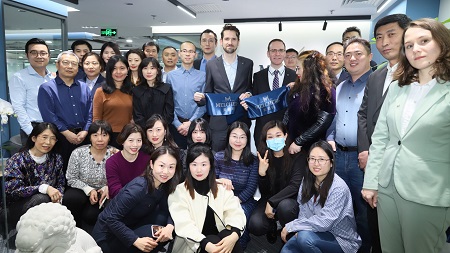
Opening of the Melchers Beijing office with a ribbon cutting ceremony in early 2022
Back to the adjustment of the space. The feeling of lightness could be incorporated throughout the office by opening up the ceiling and moving all non-essential equipment to areas close to the walls. Communal spaces and the open office area are now located along the windows to maximize daylight and wellbeing. This also makes sense economically considering that views of nature from office windows are proven to lead to higher job satisfaction and stress reduction.
Employees can now also work in a dedicated area with high tables or in a lounge zone with sofas in front of the windows. Wooden furniture and plants make the space feel cozier and healthier. Relaxation areas and informal workspaces are important as changes in location stimulate concentration and creativity and increase the overall feeling of wellbeing.
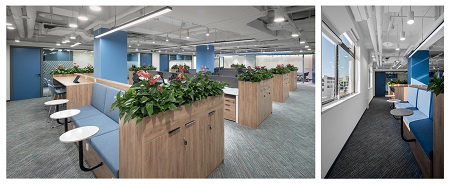
Screens, high cabinets, and plants create privacy in the open office
Research shows that humans can only achieve deep concentration for four hours in total and need to take breaks and recharge to be able to concentrate again. With the pantry now being located alongside the windows and featuring a view towards the South with trees, this has become another prime space to relax and restore energy. The soft-furnished benches in the blue niche are usually the first seating space that is occupied during lunch breaks.
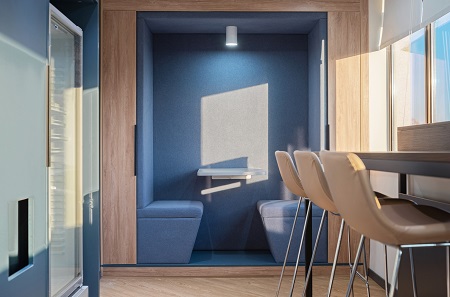
The pantry is flooded with warm daylight
Employees are a company’s most important asset. Well-designed offices need to make employees feel good and inspire them. In addition, a well-designed office helps build a powerful, authentic employer brand. By providing an environment that fosters mental and physical health, Melchers is not only creating a motivated and highly productive team but is also leading the path by thinking sustainably and building a strong work culture with clear values.
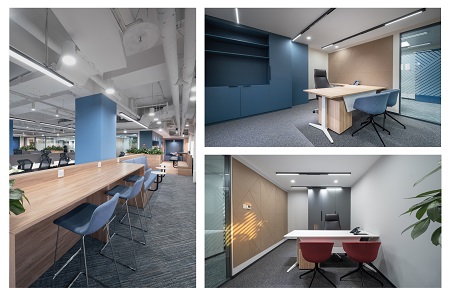
Maximization of space and natural light in offices creates a sense of wellbeing
To learn more about employee wellbeing in office spaces, read our previous articles on resimerical design , and office design .
> back to top of page

2022 Relaunch - Enhancing your Brand Image through Brand Story
5 Star Plus Series: Excellent Retail Design in China
May 31, 2022
Retail stores are an important tool for marketing a retail brand to consumers. By creating a strong first impression from the outside, consumers can enter the retail space to experience and learn more about a brand’s story. Facilitating a smooth consumer journey through retail design increases the purchase likelihood, brand loyalty, and overall sales.
Key Goals of Retail Design
Retail design starts with a concept that achieves key goals for the brand. While the specific goals vary for brands, there are four key design goals that should be keep in mind of retailers which include:
- ? Brand Story
- ? Attractive retail window displays
- ? Retail experience
- ? Technology integration
When combined into retail design, achievement enables retailers to successfully increase brand awareness and sales.
Telling your Brand Story Increases Brand Awareness
As the well-known saying goes, “knowledge is power.” This is certainly true when it comes to educating customers about a brand, its story, and products. The power behind the knowledge gained by the consumer is that they gain better insight of the brand heritage, realize the quality of the brand’s products, and clearly understand the brand’s core message. These three factors build a stronger awareness of the brand. According to 5W Public Relation’s 2020 consumer report, 71% of consumers prefer to shop with a brand if a brand’s core values align with their personal values.
Our next case study takes a closer look at the American shoe brand, Timberland. In the past 5 years, the brand has undergone a restructure of the visual identity design to highlight key marketing messages of sustainability. Tied to the story of Timberland, the design style of the retail space incorporates interactive elements to provide customers unique experiences that are also tied to their strong CSR message: “Nature Needs Heroes.”

The background of Timberland is a shoe company that set out to provide high quality functional work boots. They had one of the first waterproof shoes on the market. This original function evolved footwear brand into a pop-culture icon as many famous rappers wore and referenced their products in their music.
In recent years the brand listened to their core target consumers by putting a larger focus on sustainable fashion. Over the past decade, the brand further evolved that put sustainability at the forefront of their product design, marketing, and general strategy. At the end of 2019, the brand made an aggressive goal to plant 50 million trees by 2025. As their CSR strategy continues to evolve, the brand needed to adapt the design of their retail stores to better tell their brand story.
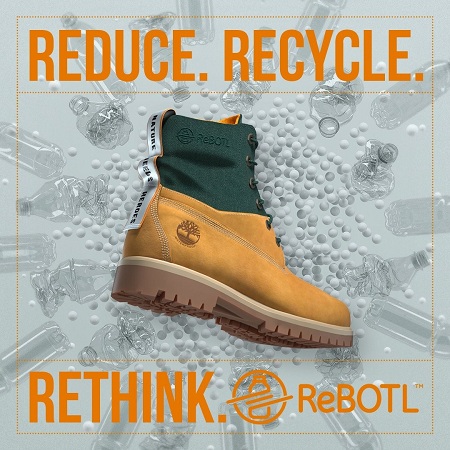
Timberland created a unique concept idea called “Flex Retail” this allows them to adapt the store design every six weeks to best fit the theming and products for the season. This concept started with their first “Tree Lab” store at the King of Prussia Mall (PA) back in 2017.
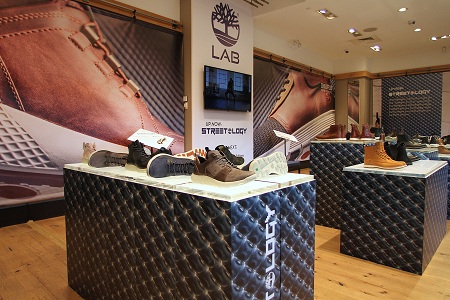
"Timberland’s First Tree Lab Store"
Image Source: WWD
With their latest campaign “Nature Needs Heroes”, the brand decided to focus more on product education and interactive experience points that help educate consumers on the global environmental impact of the brand. Educational table displays help to showcase different materials that are sourced and the sustainable efforts behind the material makeup themselves. This can be found at their flagship store in London.
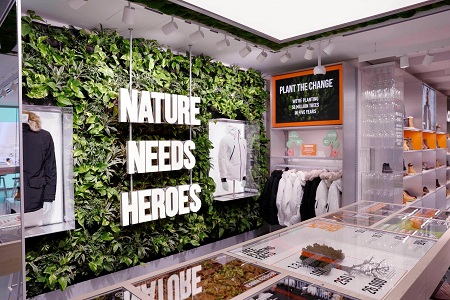
"Timberland Flagship store in London, England"
This design concept really helps the brand to be able to better show their brand story and help customers to better understand the brand’s core motives and global impact on the environment.
Following the campaign, the brand also launched a series of pop-up stores in New York City to showcase the brand’s CSR efforts and provide local consumers with immersive spaces that allow them to learn more about the products and brand story of Timberland.
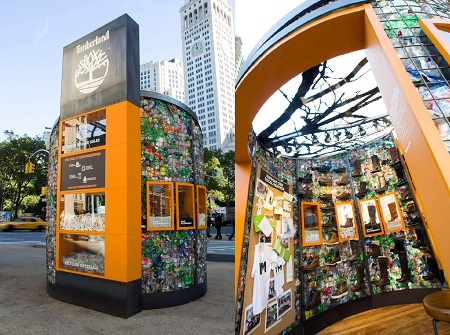
"Timberland Pop-up Store in NYC showcasing products made from recycled materials"
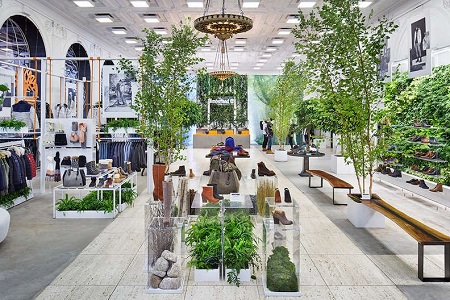
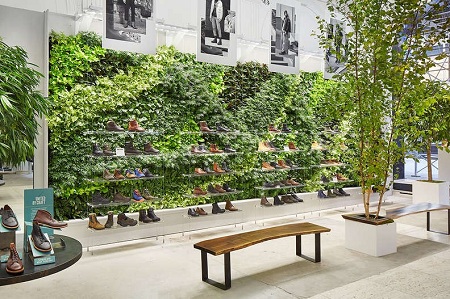
"Timberland Experience Space in NYC brings Nature to Urban Customers"
In China the brand took a slightly different approach. While nature and sustainability is still the core message behind Timberland’s brand story, the brand adapted their name in 2016 to be more suitable for Chinese consumers. The campaign changed the name to: “Timberland - It's Really Teeboolang” which means “Unbreakable” in Chinese.
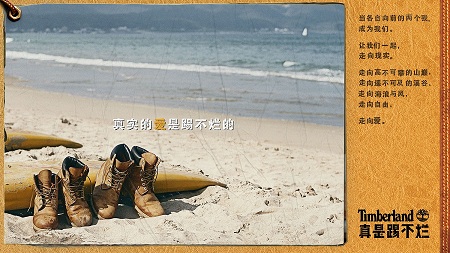
"Marketing poster used in Chinese markets (China, HK, Macau, Taiwan)"
Image Source: effie
Much of the retail and marketing strategy in the Chinese market focuses on the high quality and reliability of the shoes themselves. Most of Timberland’s retail locations in China reflect this by large product displays focused most on their classic shoe design, and strong brick décor. Tying to the brand’s global marketing message, their stores incorporate a slight touch of greenery and put a larger focus on the sustainable materials used within the products themselves.
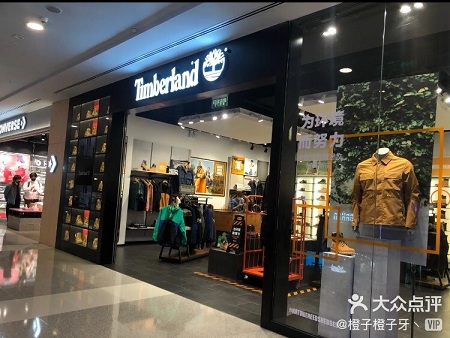
" Timberland Retail Store in Shanghai, China"
Overall, Timberland has found success globally by sharing their brand story with their consumers in a creative way that is strongly reflected in the retail design of their many locations worldwide. As the brand continues to grow and evolve, they will likely deepen their brand story and continue sharing it with their consumers in thoughtfully creative ways to further build stronger brand loyalty. Regardless of where their story takes consumers, it will sure be interesting to see the impact they make if they achieve their goal to plant 50 million trees by 2025!
> back to top of page

10th Anniversary Articles Series: May
Generating Value: 3 Brand Challenges and How to Solve Them
May 27, 2022
Today’s brands face numerous obstacles: What is the correct positioning of my brand? How do I reflect my positioning correctly with high impact across a variety of marketing and sales channels? How can I balance high quality with the total investment cost? We’d like to share a couple of project examples that showcase how we solve these problems together with our clients.
Challenge #1: How can a brand express its DNA, its positioning, and its core values, while creating a look and feel tailored to the particular target market to engage local consumers?
Showcase 1: KJUS Store Concept for China
- Challenge: A great, luxury-positioned brand with products that are made of high-tech textiles. The international store concept was not suitable for the Chinese market and did not reflect the price positioning. Chinese consumers are sophisticated, are offered a large choice of competing brands, and are expecting to be engaged on all levels.
+ Approach: We developed a store design concept that used the high-tech aspect of the textiles and the unique approach towards product design as inspiration and feel for the space. The core competitive advantage of the products was extended to the store design concept to distinguish KJUS visually from other competing brands in the premium outdoor sports fashion market. Click here for more details on the project.
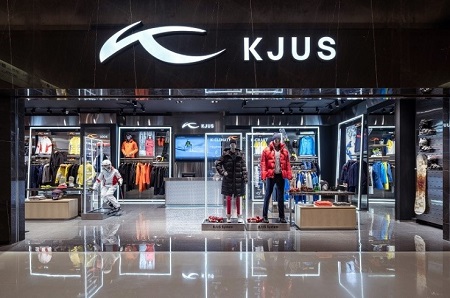
KJUS Store Design Concept for China, designed by 5 Star Plus Retail Design
Showcase 2: Tricker’s Store Concept for China
- Challenge: An inspirational English brand with great products and a strong focus on sustainability. The existing international store design standard focused exclusively on heritage and tradition and was not modern and trendy enough for China.
+ Approach: We developed a store concept for Tricker’s that expresses the brand’s DNA while modernizing the look to suit the particular requirements of the Chinese market. Design elements reflecting the heritage and manufacturing process are balanced with clean surfaces and a lot of white. Click here for more details on the project.
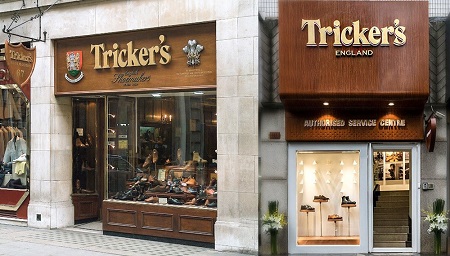
Fa?ade of Tricker’s store in Japan (left) and authorized service centre in Shanghai, designed by 5 Star Plus Retail Design
Challenge #2: How can a brand leverage a high-traffic location with a challenging layout without damaging the brand image?
Showcase 1: Hanna Trachten
- Challenge: The latest store of Austrian traditional clothing brand Hanna Trachten was to be located in a listed building in the heritage city center of Vienna. Six individual rooms spread out over 100 square meters, with limited height and arched walls all with different dimensions, making the planning of retail fixtures and the placement of large numbers of SKUs very difficult.
+ Approach: We started with a careful analysis of strategically important areas for the placement of branding and feature displays and then planned the ideal customer flow. This ensured a great branded, professional feel of the store. Retail fixtures in rooms with big arches were designed to emphasize vertical lines to counterbalance the effect of the low ceiling. As a result, the space feels more experiential, and different areas are clearly defined. The six small rooms were integrated into a concept of a journey of discovery - customers enter a magical forest and venture towards the deeper woods. Each room has its own product categories and theme. Click here for more details on the project.
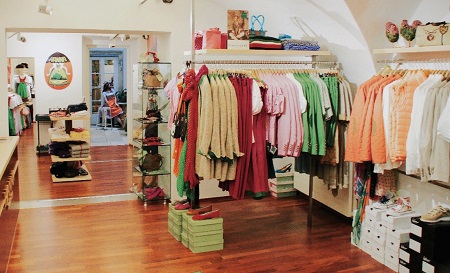
Design of Hanna Trachten Store in Vienna, Austria, by 5 Star Plus Retail Design
Showcase 2: Melchers Beijing Office Re-Design
- Challenge: Located in Beijing’s city center in the prestigious Chang’An Club building, the office space had a low ceiling and not ideally placed equipment like ducts and air condition systems. The requirement was to create a space that felt spacious and airy, opened up the views to the outside, and had several well-being spaces with high tables and sofas.
+ Approach: We took out all original walls and re-organized the layout to maximize public space and natural lighting and created additional informal work areas. The ceiling in the open workspace was opened up to generate a more generous room feeling, and engineering equipment in the wrong places was moved to the sides. Click here for more details on the project.
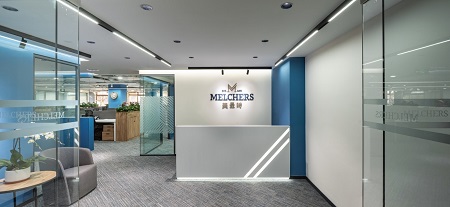
Melchers Beijing Office, designed by 5 Star Plus Retail Design
Challenge #3: How can Storytelling and Customer Experience Elements be integrated into the Design to Make the Brand more Relevant and Engaging?
Showcase 1: Swiss National Pavilion at China International Consumer Products Expo
- Challenge: Switzerland participated as Country of Honor at the 2021 China International Consumer Import Expo and required enough space for exhibiting Swiss brands, yet also needed to showcase both traditional aspects and Swiss innovation in a dedicated country area. Key challenge here was to integrate all the different positioning factors and required functionalities into one harmonious, powerful concept, develop visitor experience areas, and design an intuitive customer flow.
+ Approach: We knew that we had to create an impressive visitor experience and many engaging stories throughout the space. We separated the floor plan into two main areas, the first one being an “animation area” with a Swiss bar, a kitchen space, a Swiss landscape photo area with a cow, an event space and a Swatch pop-up store. The second part was the exhibitor area with more than 40 brands. We developed a strategic customer flow and placed branding elements like the Swiss cross at important locations to attract visitors from afar and draw them into the stand. Typical Swiss stereotype elements were placed at the entrance to increase country recognition and increase the experience factor. Click here for more details on the project.
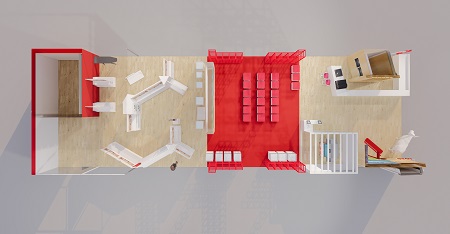
Customer Journey and Experience at the Swiss National Pavilion
Stay tuned - We will explore some of these brand challenges in more detail in our next articles.
What challenge is your brand facing? Send an email to office@5starplusdesign.com and we’ll share best practice examples or help you to develop a solution.
> back to top of page

Introducing 5SP Marketing:
Brand Insights from PROCOLOMBIA
April 28, 2022
Creating an effective marketing strategy in line with a brand’s positioning and purpose has become more and more essential for companies in China, ours included in the past years. We believe that marketing and retail design cannot be separated, but rather complement each other to serve the strategic objectives of the brand. There has been a growing demand for our marketing consultancy services in recent years so we have launched the 5SP Marketing sub-brand for easier identification. Today, we want to showcase two recent projects we worked on with our client PROCOLOMBIA, both highly branded and which achieved a powerful media impact.
What is 5SP Marketing?
5SP Marketing is a team within 5 Star Plus Retail Design offering marketing strategy, content & social media management, and storytelling; among other services to our existing clients.
With our 10 years of experience in the Chinese market, we know what consumers want and how brands need to act. Our strong competency in building brands over the long term is rooted in our strategy, brand management, storytelling, and design capability. We are experts in cross-marketing projects involving online and offline channels and strategic partners.
PROCOLOMBIA's Marketing Projects
At the end of last year, PROCOLOMBIA, the Colombian country brand that supports tourism, export, and investment launched two campaigns with our support: the Colombian Coffee Festival and Colombian Brands Week. The campaigns were designed to raise awareness of Colombia's high-quality products and to increase sales.
Colombian Coffee Festival
The first campaign, the Colombian Coffee Festival, focused on premium quality Colombian coffee. Selected cafes and restaurants received free coffee beans for one week and agreed to promote the event in return with online and offline marketing materials. The design used for the promotion was tailored to the Chinese market by the 5 Star Plus team.
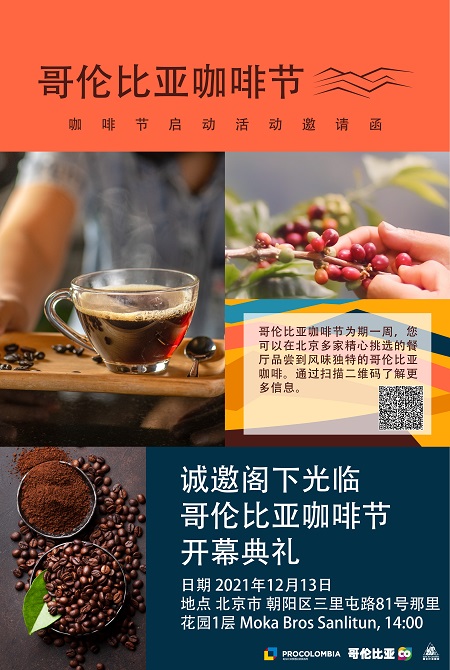
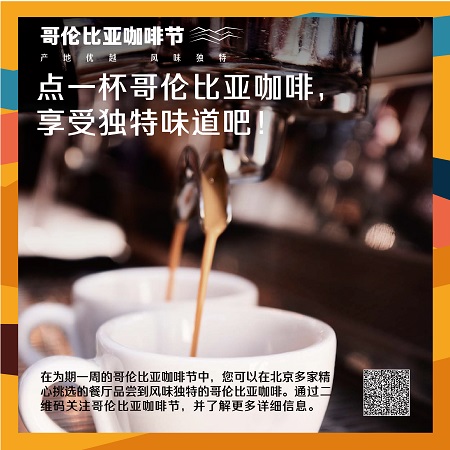
Colombian Coffee Festival design
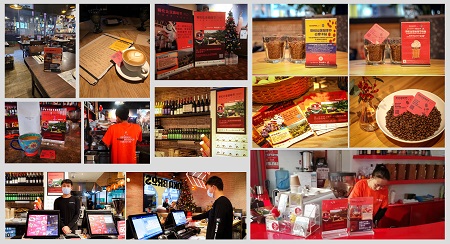
Promotional materials at the venues
The festival started with a launch event at one of the participating venues where media representatives, VIP guests, and a Chinese KOL, Mei Li Shi Zu (妹莉十足) were invited. The event’s main speakers were Luis Diego Monsalve, Ambassador of Colombia to China, and Natalia Tobón Tobón, Commercial Counsellor at the Embassy of Colombia and Director of ProColombia China.
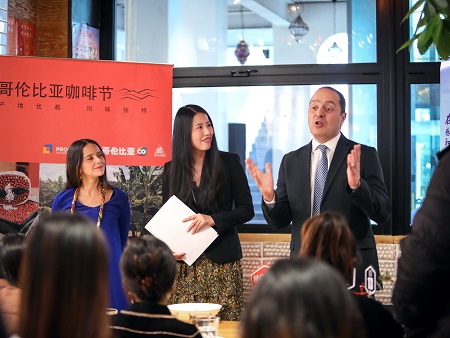
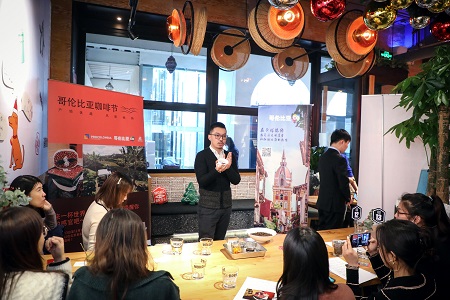
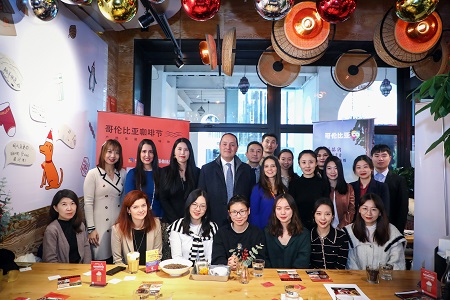
Launch event
The festival’s press release appeared in various Chinese and International magazines (printed and online) as well as on the KOL’s social media platform; resulting in more than 76 million reaches.
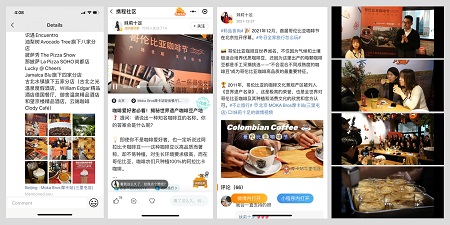
KOL video highlights and social media postings
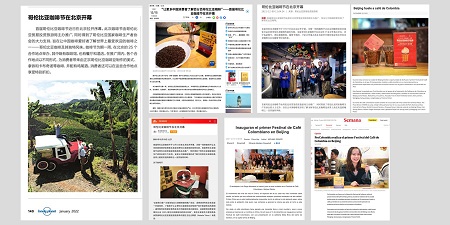
Press release in Chinese and international media
Colombian Brands Week
The one-week-long e-commerce festival featured Colombian brands and promoted their products on TMall, JD, Taobao, and WeChat mini-program. The ultimate objective was to promote the high-quality Colombian products in China, increase brand recognition of the 19 participating brands, and build customer loyalty resulting in increased sales.
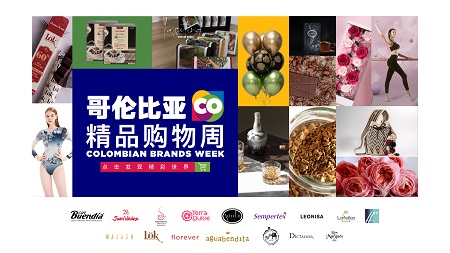
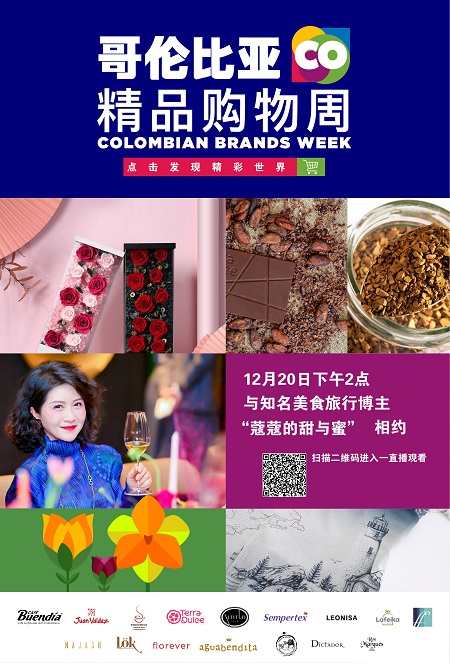
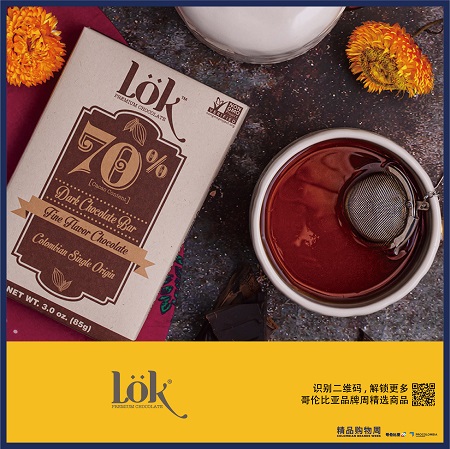
Colombian Brands Week design
The majority of the festival took place online, starting with live streaming on the festival's first day. During almost 2 hours of live streaming, the brands presented their products to the audience of the well-known Chinese KOL COCO 蔻 蔻.
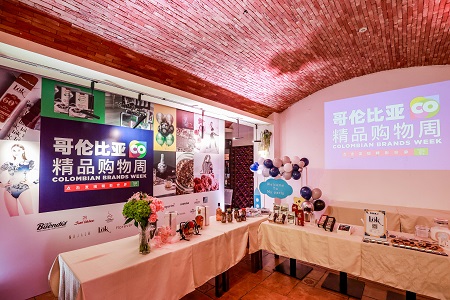
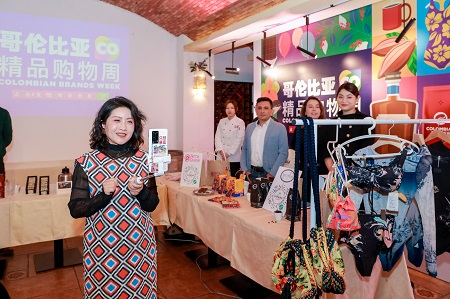
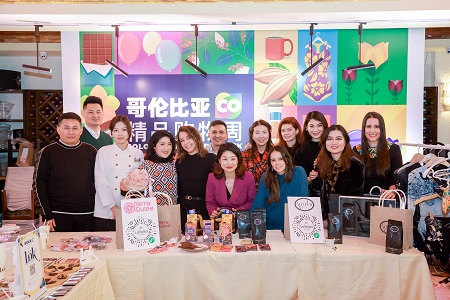
Live streaming highlights
Another KOL GAOYANG 高阳-朝阳 created a short video about the event and the Colombian products. The festival received great media coverage on various Chinese websites and KOL social media platforms with almost 4 million reaches.
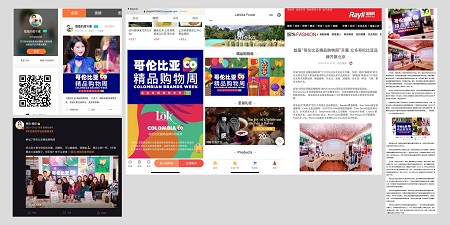
Press release and KOL social media postings
As these examples show, marketing in China requires a unique approach tailored to the mobile-first consumer who looks for unique content and brands they can connect with. Involving KOLs, creating shareable, viral content, and being present on dominant media platforms are the key. In addition, the impact of powerful, well-designed visual content cannot be underestimated. It is a fast, ever-changing scenery but that’s exactly why we love to work on projects like these.
> back to top of page

2022 Relaunch - How Conceptual Design Process Makes Brands Win or Fail
April 28, 2022
In today’s retail environment, offline retail remains an efficient way to communicate and connect with consumers when compared to online retail. Whether it’s a retail store, pop-up store, or exhibition stand, the design of offline stores must be a clear representation of the brand. It includes much more than choosing the right piece of furniture or lighting fixture. It has to speak for the brand’s mission, values and vision. A key part of successful retail design starts by taking the client’s requirements into consideration at the early stages of the design process and prioritizing the brand’s values in the design stages that follow. This process is something we take pride in at 5 Star Plus Retail Design. This article takes a case study of our design process for a professional camera production brand needing an exhibition stand design.
Step 1: Analysis
Regardless of project type or brand, 5 Star Plus begins by conducting a thorough research and analysis of the client company and its competitors. This research includes a deep understanding of the brand, its products and history as well as the position of the company in the local market. Communication between the client and the designers is essential in order to identify the strategic brand goals and creatively brainstorm the best visual way to represent them.
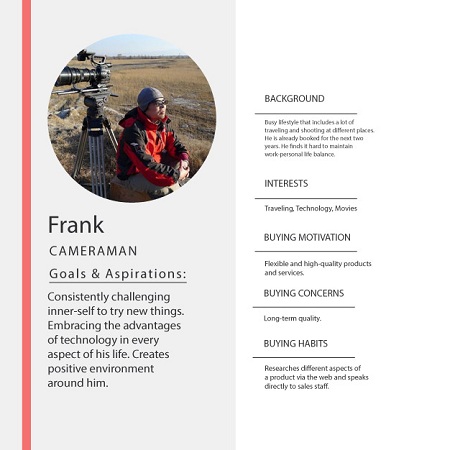
"Creating Customer Persona Profile during the Analysis"
Additionally, during this step of the design process, our team focuses on research about the project location. The designers have to know the exact location of the stand within the exhibition area, the orientation, the general customer flow direction and the special requirements of the exhibitor. Depending on the scope of the project, the research and analysis step can take up to one week. In the case of the Camera brand, we utilized four designers to complete step one within three days.
Step 2: Mood Board
A mood board is a collection of ideas that set the mood and general aesthetic of the future store, restaurant or exhibition stand based on the brand values and guidelines. It is created by the designers to provide the client with a guiding abstract design direction before beginning the actual conceptual design. The mood board then serves as a transition between the initial design thoughts and the first drafts. Mood boards are an effective tool for visual organizing, setting the scene and establishing a point of reference. The images used for the board represent the brand or just illustrate a certain feeling or aesthetic.
Having this kind of visual plan will provide a ready-made roadmap for the designers and help to speed up the designer’s work when it comes time to start the conceptual design phase.
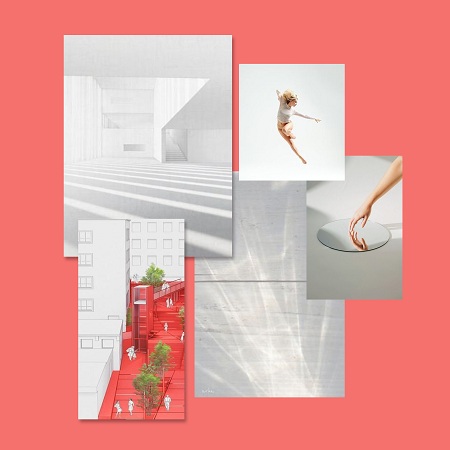
"Moodboard Expressing Infinity"
Step 3: Zoning Based on Customer Flow
The layout of a retail space is strategically important because it gives the brand the ability to influence the customer experience. This step of the conceptual design process can be done in parallel with the previous, mood board phase. Within every exhibition stand as well as in a retail store, there are zones for different product categories or services. After understanding the product categories and the clear goal of the client, the designers have to create a logical connections between these zoning areas. Each zone is meant to evoke a different reaction from the visitor, either rational or emotional.
The two main components for the layout are the customer flow and the overall design. The design includes the strategic floor plan, while the customer flow is the pattern of behavior and the way visitors go through a store or exhibition stand. Creating zones using merchandise displays, interactive experience points, and signage develops semi-separate areas. All three types of design elements act as speed bumps to keep the customer in the zone and slow down. The main idea is to grab the attention of the visitors and entice them inside the stand by using different attraction points. Within the zones, secondary attraction points keep the visitors movement throughout the space fluid and maintain the customer flow in the stand. The design of the stand incorporates interactions at every point.
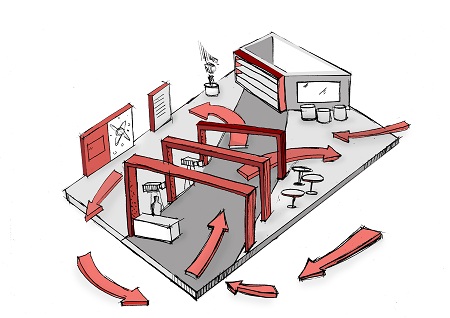
"Customer Flow within the Exhibition Stand"
The above design example introduces the brand’s history of camera production by using a tunnel that attracts the visitors into the stand while also showcasing different products. During their journey through the tunnel, they stay interested and excited while learning about the products.
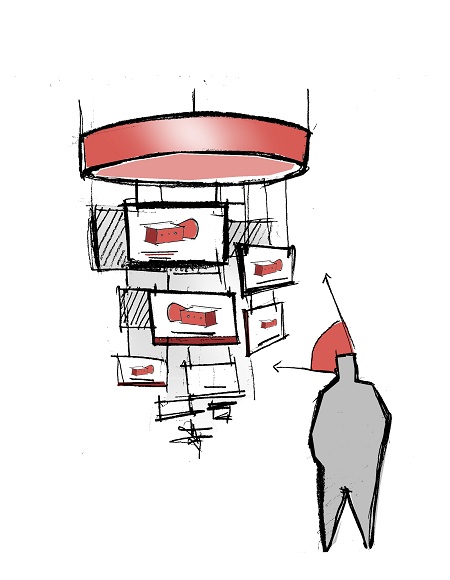
"Short Movie Clips are Displaced using Hanging Screens from the Ceiling"
The other main zones are two different experience points. The broadcasting zone showcases the quality of their live streaming control system and cameras. The movie shooting area showcases the different features of their most popular cameras and allow guests to learn more about them. The background for both areas are very visual, unique and eye-catching in order to grab the visitor’s attention even from the distance. By creating a story for each zone and tying it all together through design, the entire stand builds a connection between the brand and its visitors.
Outcome of Conceptual Design
As the result of this stage of the design process, we can create a clear design direction which is easy to understand and interpret. A strong conceptual design serves as a solid ground for the next phases of the design development when the designers work on the details, draw the precise floor plan and elevations and later on create the 3D model of the space.
By investing into this creative part, we are able to achieve the best possible branding result for increased brand awareness and brand loyalty which, ultimately, is expected to translate into a higher sales turnover.
> back to top of page

10th Anniversary Articles Series: April
The People Who Are 5 Star Plus Retail Design: Our Core Team
April 25, 2022
No company could be successful without a strong team. This month’s article is dedicated to our people. Since introducing each member with all of their amazing abilities would require a quite long read, we have decided to introduce the core team who directly works with our clients in more detail.
Olga Gubynska, Senior Designer
Originally from Ukraine, Olga started to work for 5 Star Plus Retail Design in 2018 and came to China in early 2019. A trained architect and designer, she owes it to her consistent commitment to learning and hard work that she has been selected as a master’s student for Tsinghua University’s prestigious EPMA (English Program Masters in Architecture), said to be the fifth-best in the world (BAM Ranking 2021).
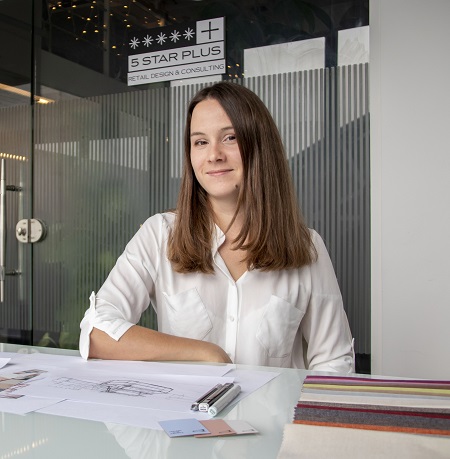
"Olga Gubynska"
Olga’s super skills:
Creating beautiful, high-impact design concepts based on even the most challenging project conditions to build powerful and authentic brands.
What we love about Olga:
Her positive spirit and ability to laugh in every situation. And knowing that we can always count on her.
What has been your favorite project so far and why?
I want to highlight three projects I like that represent the values and principles that the team and I apply in everyday work. 1) Store design for KJUS: This project was about creating a high-impact design concept and reflecting the brand values – high-tech, modern, and innovative. I believe that we have achieved these objectives. 2) Office design for Melchers: This was a great opportunity to create a healthier, more inspiring space for people and improve their daily wellbeing. 3) The Swiss National Pavilion at CIIE: The exhibition stand we developed was a representation of traditional values combined with new creative and open design elements. All three projects were created in collaboration between the client and the design team making the results possible.
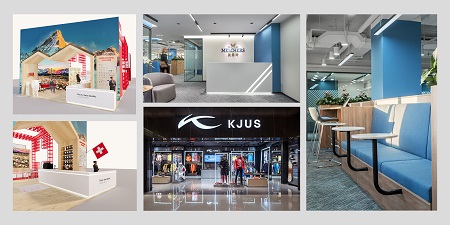
"Olga’s Favorite Projects"
Some of the projects that Olga has worked on:
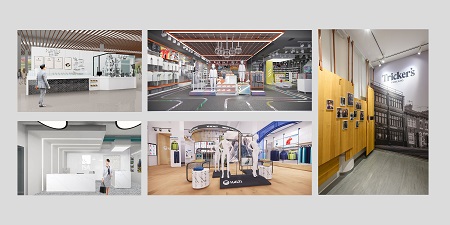
Jacky Li, Senior Designer
Jacky has been with 5 Star Plus Retail Design for four years bringing with him earlier experience from large Chinese retailers like Gome and Aiyihang Automotive.
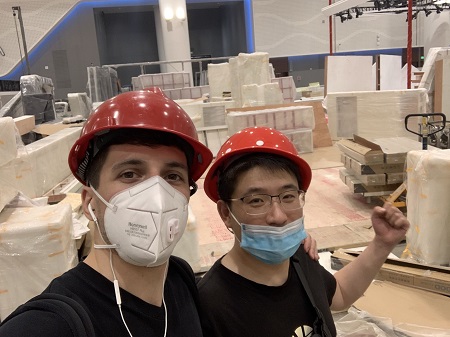
"Jacky Li"
Jacky’s super skills:
High-speed design and technology integration to help retail brands stay relevant by creating stores that make customers feel good and inspire them. Finding a technical solution to any problem during a project. Ensuring concepts are built the way they were designed to guarantee a powerful, high-quality store experience.
What we love about Jacky:
His jokes. His speed and guidance during projects. His relaxed and professional nature.
What has been your favorite project so far and why?
My favorite projects are the design of Heineken Restaurant and Bar and the showroom for China State Grid because the clear definition of the clients’ objectives allowed me to develop a perfect design solution for their functional and branding needs. I really like the look of the two spaces that we created.
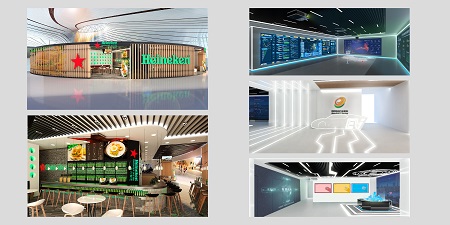
"Jacky’s Favorite Projects"
Here is a collage of some of the projects that Jacky has worked on:
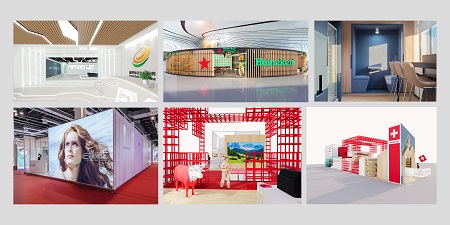
Tim Sozashvili, Project Manager
Well-known already in Beijing and Shanghai, Tim has been handling project management for 5 Star Plus Retail Design for the past five years. His specialty is exhibition and event projects. Having lived in China since 2009, Tim is fluent in Georgian, Russian, English, and Chinese.
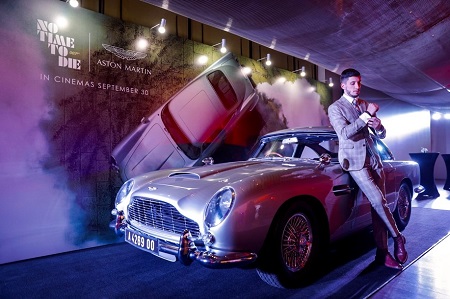
"Tim Sozashvili"
Tim’s super skills:
Working tirelessly day and night, often without sleep for days, to realize powerful, high-impact exhibition and event projects that have a great advertising effect.
What we love about Tim:
Tim is a great entertainer and keeps our team engaged. We love his kindness and warm-hearted, supportive approach toward everything.
What has been your favorite project so far and why?
The James Bond pre-screening event in 2021 was the biggest highlight of my 5 years working with 5SP. There was a lot of energy surrounding the project, generated by the people involved. Sponsored by many very cool brands, the whole atmosphere and look of the event were quite impressive and very different from the numerous projects I’ve worked on before. Being a huge 007 fan, I even had the opportunity to drive the legendary DB5. Who wouldn’t want to feel like an MI6 agent in a tailor-made suit for a day, right?
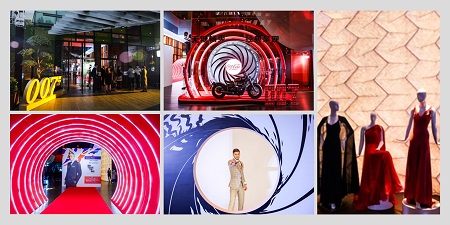
"Tim’s Favorite Project"
Here is a collage of some of the projects that Tim has worked on:
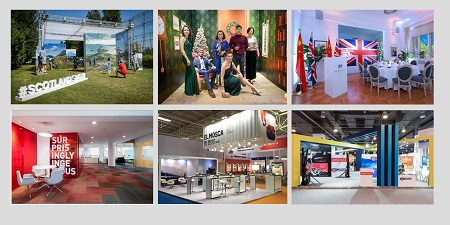
Viktoria Telkes, Design & Marketing Consultant
With her educational background and work experience in both marketing and design, Viktoria has the perfect skill set to advise clients with project needs that require both design and marketing work. A Hungarian national, Viktoria supports China and the European market for the company since 2019.
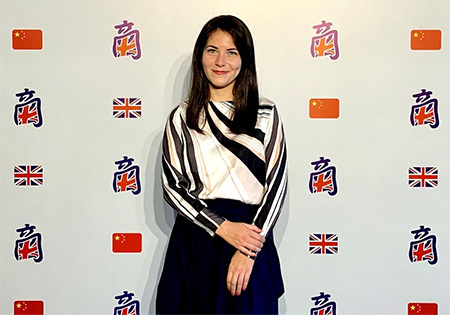
"Viktoria Telkes"
Viktoria’s super skills:
Analytical thinking and professional client management. Planning and executing marketing campaigns for companies that lost traction and helping position them into powerful, authentic brands that sell more.
What we love about Viktoria:
Her very professional work attitude and great team spirit. Her eagerness to walk the extra mile and create value.
What has been your favorite project so far and why?
My favorite project was Instituto Cervantes's Marketing Research and Strategy Project. We worked as a strategic marketing partner of the Institute for one year. Our team's task was to produce an in-depth report about the current marketing situation and develop strategic recommendations. After evaluating their existing approach and the feedback of students and stakeholders, we created a China-specific strategy. It consisted of writing and adapting content suitable to the Chinese market, identifying new target customer groups, and ideating strategic initiatives to build brand awareness and reach new students.
The experience was very rewarding and an opportunity to grow as I was involved in the whole process working through the problem from research to solution and implementation.
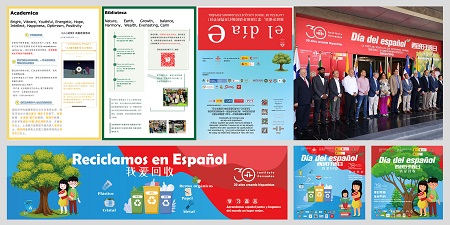
"Viktoria’s Favorite Project"
Here is a collage of some of the projects that Viki has worked on:
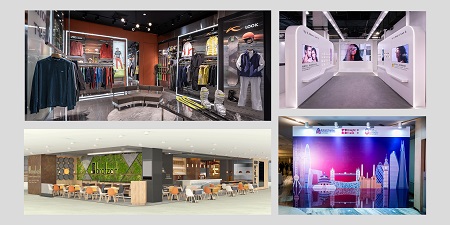
What about everyone else?
The rest of the team is pretty amazing too! Tom Zhang, for example, has been taking care of our Beijing office and handling finances for over five years. Lily Liu and Ayu Li, our junior designers, are working in the background creating and executing design work to support all of our projects. Sophie Li and Denise Chen are creating content, supporting events, and handling media relations. Alena Olasyuk is making sure that all of our clients and our marketing applications fulfill a high artistic standard. And Barbara Seidelmann, our managing director, is everywhere and guiding everyone.
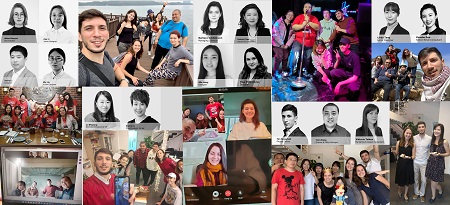
"The Team"
> back to top of page

10th Anniversary Articles Series: March
Behind the Scenes - Talking to the Founder
March 31, 2022
Every company’s culture is strongly influenced by its founder. This month, we sat down and talked to Barbara Seidelmann, Founder and Managing Director at 5 Star Plus Retail Design, to better understand her background and how she came to found the company.
Barbara, for how long have you lived in China and why did you come to China in the first place?
I have been living in Beijing for 17 years now. I grew up with Taiwanese neighbors in Vienna, Austria, with whom my sister and I spent a lot of time as kids and teenagers. During this time we ate Chinese food and watched Chinese TV series together on an almost daily basis, and even traveled to Taiwan together once. Very impressed by the energy and dynamic of the place, I decided that I wanted to come back to East Asia one day. And so I did in early 2005 when moving to Beijing for work. I speak Mandarin Chinese fluently and I still love it here.

"Barbara Seidelmann"
Why did you start 5 Star Plus Retail Design?
Before starting 5 Star Plus, I was working in different marketing, strategy, and retail management roles. In my last job when working for an Austrian jewelry company in China, I realized that there was a lack of retail design agencies – we basically could not find anyone who understood how stores work and then designed and built them. With an educational background in business administration and interior design, it felt right to put everything I had previously learned together and open up a retail design firm. Retail design is not the same as interior architecture, in fact, it combines various disciplines including architecture, interior design, graphic design, marketing, as well as a good understanding of retail processes and technical aspects. All of this is necessary to create store concepts that work.
I have to say that I still love what we do – every project is unique and it’s exciting every single time to learn about a client’s background, unique journey, and future plans. I see it as our responsibility to deeply understand a brand and then translate the brand personality and essence into a physical store environment that works commercially.
What was different 10 years ago compared to now?
10 years ago we didn’t have any competitors and nobody knew what retail design was. Today, we have many local and international competitors and the market has become more transparent. At the same time, our clients, especially large Chinese brands, have become much more sophisticated. They appreciate the value of defining a clear brand DNA and executing it throughout all channels.
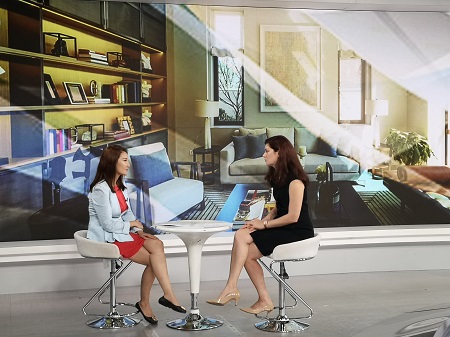
"中国环球电视网的采访"
How has Retail Design changed over the past 10 years?
When we started, technology in stores was not very common. Retail stores were about looking premium, maximizing the number of product displays, the efficiency of customer flow and workflows, creating beautiful feature displays, strategically placed marketing material, and a good lighting concept. Today the above points are still important, but at the same time concepts also need to consider technology integration, customer experience elements, implemented calls to action, online-offline integration, and flexibility within the space to allow for different types of uses (e.g. events, live streaming in the store). In summary, retail design has become more complex and it takes more time to create new concepts. This is because many strategic aspects like the future plans of a brand need to be discussed with the client.
You work with both Western and Chinese clients, how do you see the difference in work approach?
A few years ago it seemed like Western brands put more emphasis on building a strong brand and aligning everything to it. Now I can see that many large Chinese companies have understood that a powerful brand is the basis for successful long-term development and invest accordingly into brand strategy, brand building, and retail design. I find Chinese brands in general to be very ambitious, good at defining a strong vision, and super fast and consistent in the implementation. I have seen big Chinese companies plan a new brand concept, design and build the stores all in 2 months only. The same type of work usually takes at least a year in Western countries, but more often even 2-3 years when new product lines are involved.
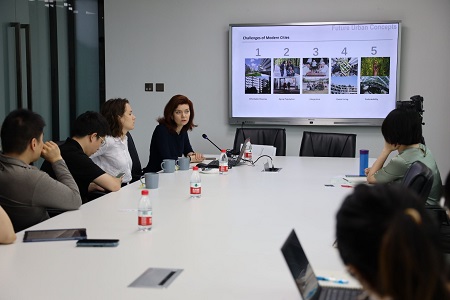
"在联合国教科文组织国际创意与可持续发展中心的活动上发言"
What specifics do you see in the Chinese market? Was it hard for you to adapt to it?
As mentioned before, the Chinese market for retail design was behind the Western market 10 years ago. Meanwhile, the local market has caught up and surpassed other countries – projects are bigger, more ambitious, and more creative. The unique environment here allows designers often to create concepts from scratch. The market requires novelty and innovation, and in many fields, local designs lead the way on a global scale. Many international brands have already recognized this and started to launch new product collections or store concepts in China where the market is hungry for originality and high-quality design. It’s a great place to be for a designer.
What are your plans for the future?
My plans are to use the period of the pandemic to review what we can do better, strengthen our base, and then expand with full force in China and internationally.
> back to top of page

Exhibition Technology Trends to Implement this Year
March 30, 2022
This year holds great potential for the exhibition industry as it faces high attendee expectations in a post-pandemic era. In the past 2 years, all the events that weren’t canceled had to move to some kind of online platform. However, involving visitors online to learn about and experience a brand’s products will never be the same as in real-life. This year’s exhibition industry trends involve creating event experiences that feel fresh and new to visitors who worked from home and couldn’t travel. Now, they want to feel entertained and educated. As technology is constantly evolving, incorporating advanced technologies in the exhibition industry has taken the customer experience to a significant level. In this article, we will show some of the latest industry trends.
Use Your Senses
The five senses (sight, sound, touch, taste, and smell) already have been combined by exhibitors to appeal to visitors. And today’s technology makes it easy for them. A distinctive lighting design, AR and VR technology, interactive displays, touch-panel interfaces, soothing background music, and gamification help to strengthen the visitors' sensory abilities to meet the main objective, connect with the brand.
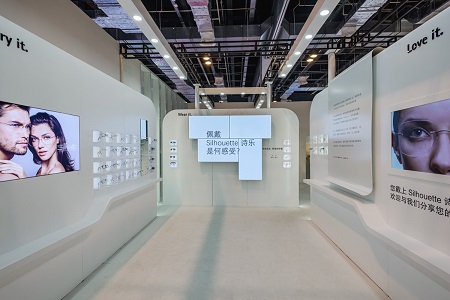
Must See: Dubai Expo
The Dubai 2020 expo was postponed due to the pandemic and opened its doors on 1 October 2021 and ends on 31 March 2022. The incredible, 438 hectares exhibition features country and branded stands in 3 themes: Opportunity, Mobility, and Sustainability.
The latest technological creations play a key role in Dubai Expo. Throughout the expo, small robots are used for various purposes. The more than 150 robots were created by a Chinese company, Terminus, and were equipped with multi-touch screens and powered with 5G capabilities. They were created with innovative robotic technology to interact with guests from all over the world by welcoming and helping them. The Robots monitor social distancing and with an AI system, they help with queue control on the site.
Adventure-seeking guests can try out a new experience at Emirates' "learn to fly" simulator. They can get an exciting glimpse into the future of aviation through interactive multisensory installations and virtual reality. To top this up, they can even design their aircraft.
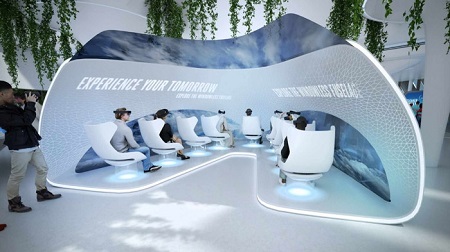
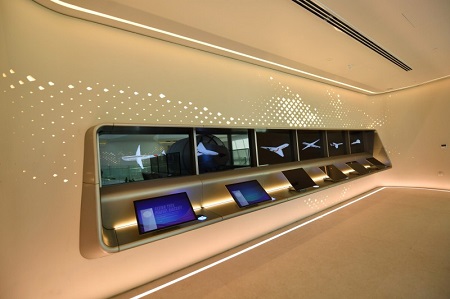
The UK Pavilion is also known as Poem Pavilion was designed by the leading artist and designer Es Devlin. The exciting characteristic of the pavilion is that it uses advanced machine learning algorithms to create collective poems from words written by visitors. The result illuminates the twenty-meter diameter fa?ade.
Latest Trends in China
The China International Import Expo is one of the most prestigious exhibitions in China setting a high standard every year for all exhibitors when it comes to the design and technological features. In November 2021 the CIIE was held for the 4th time and served as a great opportunity to promote the Beijing 2022 Winter Olympics as well.
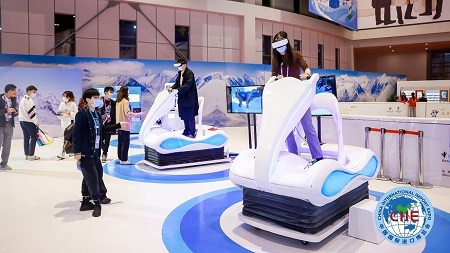
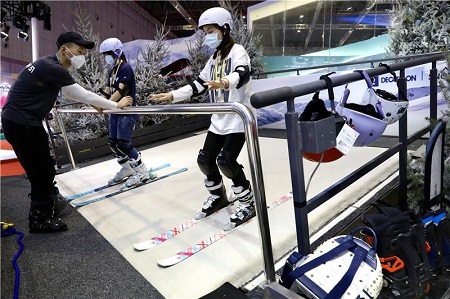
Image Source: CIIE
Attendees could try VR headsets to experience skiing for their winter Olympic-themed activity. Many sporting goods retailers such as Decathlon provided ski simulator experiences while Fila, a sportswear manufacturer came up with a snowboarding simulator at their booth.
A landscape-inspired Burberry exhibition stand was an immersive experience presenting the latest textile and design innovations. The incredible physical experience stretched to the online field with the help of on-site QR codes where visitors could unlock exclusive WeChat content like digital wallpapers and shareable stickers inspired by their campaign.
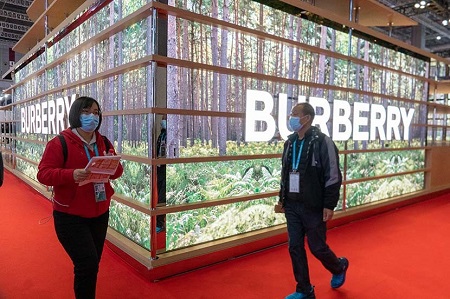
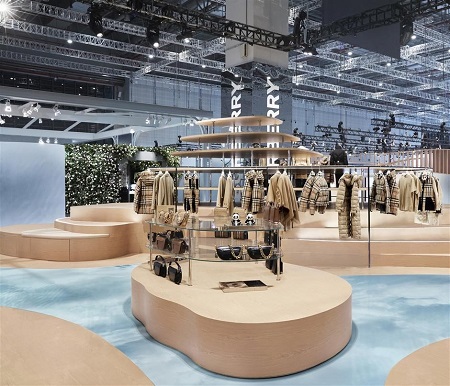
Image Source: Shine
The exhibition and event industry serves as one of the best demonstrations of the transformation society has undergone over the last two years. However, this is still not the end of the route. The rise in technology and increase in data capture will be key drivers in the next years. Using data means gaining a better understanding of customer needs. As technology evolves, collecting this data will be easier which will result in the scope to give visitors exactly what they want.
> back to top of page

2022 Relaunch - Importance of Customer Centric Strategy in Retail Design
5 Star Plus Series: Customer Centric Strategy
March 25, 2022
The needs of consumers continually shift in China’s retail market. It’s important for brands to pay attention and adjust their strategies to maintain their hold of the market. Brands need to think about how they can meet the needs and expectations of their consumers in a way that is adaptable in order to provide the brand stability in an ever-changing retail environment.
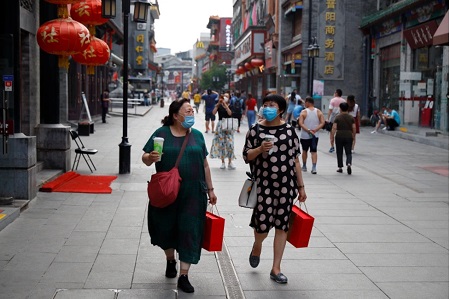
Moving one year since the start of the outbreak in China, it is quite apparent to see the impact the pandemic had for consumers. Studies indicate that consumers have shifted their priorities which is reflected through the amount of overall consumption and the consumer’s shopping journey.
Why it’s important:
- ?A study by McKinsey showed that 14% of Chinese consumers will not shop at the same stores and 6% will not shop with the same brands that they used to prior to the outbreak.
- ?Offline sales in China fell by 50% at the peak of the outbreak and only recovered 37% in 2020 (Mckinsey, 2021).
- ?Customers have higher expectations and are more demanding after an economic downturn. Chinese consumers expect a customer centric shopping experience.
- ?Chinese consumers make up 35% of the luxury retail sector consumed globally(FW, 2020).
What this Means for Brands:
Chinese consumers have become a lot more self-aware after the initial impacts of a socially distant society were experienced in 2020. Their typical consumer journey was heavily impacted as a result. Suddenly consumers had to rely mainly on the digital end of retail to fulfill their daily needs. The key values of a brand that shifted in the beginning parts of the pandemic are as such:
- ?Experimenting: Some consumers started shopping online from different brands that they had not tried before. Due to the inability to go out and shop, consumers sought after available brands they could order from online. This expanded the reach of some brands, while other brands suffered for lack of digital presence. Overall, consumers continue to act less brand loyal than before.
- ?Quality: Consumers still demand high-quality items. Being able to try and return items worked for some. Seeing live-streams of real products allowed more consumers to see the quality. Ability to experiment using AI technology allowed consumers to virtually test the look and quality of items.
- ?Lifestyle: The outbreak caused many consumers to be more conscious of their health, which led to more purchases in certain sectors of the retail market.
- ?Purchases: Prior to the pandemic, many GenZ and young Millennial consumers did not pay much attention to their monthly spending habits. In fact, Chinese GenZ and Millennial consumers have the highest monthly disposable income in the world when compared to other consumers in the same age category. Most Chinese consumers in this age category live paycheck to paycheck. After experiencing the economic hardship caused by the outbreak, many consumers shifted their priorities to focus on spending less and saving more for the future.
- ?Time: Due to a high reliability on delivery services as a way to receive goods, the amount of time needed for delivery increased in the level of importance for purchase decisions. A consumer is more likely to order something for a brand that can deliver on the same day than a brand that needs more than 48 hours to deliver their order.
Understanding the Consumer Journey
The first step in providing a more customer centric approach requires the brand to understand the consumer journey in-depth. Understanding which journey its consumers are more likely to take in order to purchase from the brand, enables the brand to enhance the journey at the most important parts for their consumers.
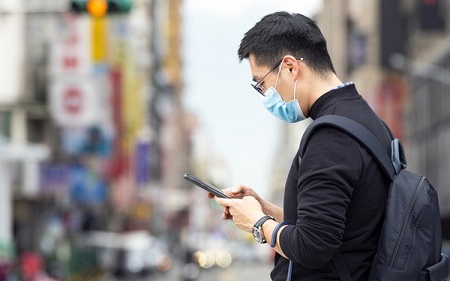
Tracking and analyzing up-to-date data of consumers is how a brand can begin to know more about its consumers. Real time data from social media, online sales channels, and offline sales channels, helps to gauge the overall level of customer engagement with the brand.
Brands that actively pay attention to customer engagement are able to adapt more readily when there are shifts in the market. They are also able to do it quickly, which creates a stronger customer engagement with their consumers compared to brands who don’t adapt as fast.
What this Means for Offline Retail
In an ever-growing digital world, it may seem as though offline retail is no longer an important part of the consumer journey. This is actually not the case when looking at China’s market. The total volume of offline sales have still not returned to pre-pandemic levels. However, it’s expected that these numbers will continue to recover in 2021 as the number of cases in China continues to remain relatively low.
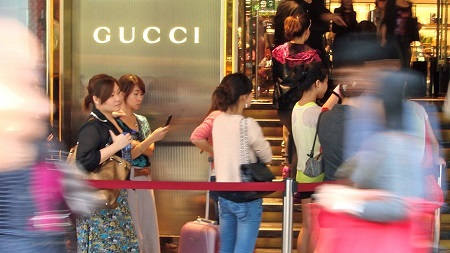
Consumers still desire an experience that uniquely defines their consumer journey from others. Interaction with the brand, sensory engagement, and storytelling are just a few ways that consumer engagement can be increased. These ways are executed within the retail design of the store, pop-up space, and online channels. The main goal in mind is to provide their consumers with an engaging experience regardless of their overall consumer journey.
A Recent study by KPMG indicated high performing retail brands effectively utilizing a customer centric approach in their retail strategy (KPMG, 2021).
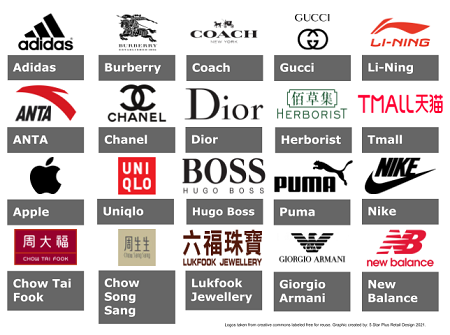
These brands utilize different methods to drive the engagement of their consumers throughout the consumer’s journey both online and offline.
Customer Centric Retail Design
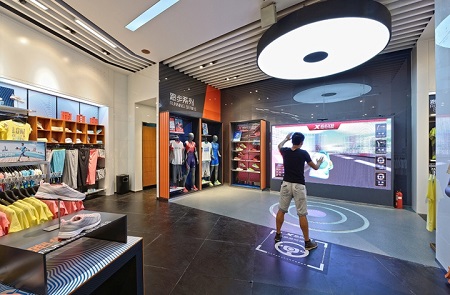
A successful retail store design in China includes a thoughtful layout of the customer flow, storytelling elements that create engagement with the brand and its products, interactive points that connect to other online channels of the brand. In the next article, we want to highlight some global brands that are ahead of the game when it comes to providing an excellently designed consumer centric retail environment.
> back to top of page

Implementing Psychology into Architecture
5 Star Plus Series: How Can Psychological Effects of Architecture Benefit Your Business?
February 28, 2022
In the previous two articles, we have introduced the basic concept of environmental psychology. We have shown through examples that living and working in a place where design is done with the users in mind would produce positive psychological benefits. On the other hand, we have covered how people’s moods and stress levels can be negatively affected by their surroundings. In this last article, we approach the topic from a more practical angle. We write about the process of integrating human factors as well as traditional and modern methods to enhance the positive effects of architecture on humans.
Integrating Human Factor
To create spaces where people feel well, designers should integrate the psychological criteria of the design already before the planning starts. During the planning phase, the project should be constantly monitored and optimized so that inadequacies can be found and corrected. To gather know-how from different perspectives, various interest groups such as health managers, city planners, psychologists, and physicians should be integrated. When designing for people, it’s essential to hear their opinion and implement their feedback. However, when witnessing the history of architecture, we can see that human preferences have changed over the centuries. This creates the question, of whether to follow evergreen rules or rather the momentary preferences of the present-day users.
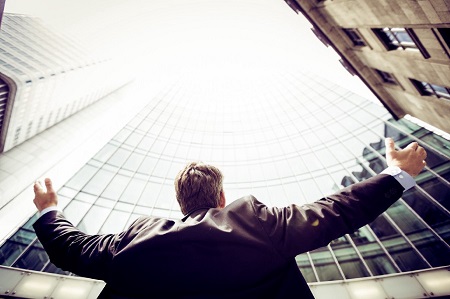
Image Source: Medium
Architecture trends have changed over the centuries. New materials and building processes have been discovered, some styles have come and gone, while others have stayed and been around for centuries, influencing present-day architecture. Architects might wonder how they should take into consideration the psychological effect of their design on the public. The most important question might be this: What feelings, emotions, and states of mind triggered by the building should the occupiers have?
The Nine Square
One classic approach, the nine square is not a recently discovered architectural phenomenon. Various nations and cultures used it throughout history. In ancient Asian cultures, they believed it to have cosmological significance. In the Middle East, it represented primordial and perfect form. It was also excessively used during the Renaissance and neoclassical eras.
Don Ruggles who is an architect and a writer has spent an excessive amount of time in Europe and Asia observing and analyzing buildings to find the answer for what makes them beautiful. In his book, Ruggles emphasizes the timeless pattern of the nine-square grid. The root pattern of the nine-square consists of a 3 x 3 grid, with a center surrounded by 8 squares as an exterior zone. The pattern can be applied to all levels of design: city plans, exteriors of buildings, and floor plans. The pattern overlays each pyramid of Giza, the center of it has been utilized in the Basilica of St. Peter in Rome. Other great examples are Greek Parthenon, Roman Pantheon, and the Taj Mahal in India.
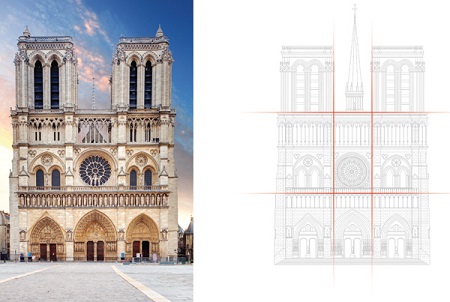
Image Source: Arbus
When recognizing visual patterns like the nine-square, the human brain subconsciously activates pleasure responses. This confirms that architecture has an important role in our health and well-being.
Modern Day Elements
Light
Light makes space alive and defines its meaning. Light plays a massive role in architecture and our psychological behaviors. That is why designers need to study the effect of lighting on humans.
A research group under Dr. Roger Ulrich discovered that natural light optimally regulates our body rhythms and can even increase people’s productivity and comfort. When designing for lighting, the support of circadian health should be considered. For example, electric tunable lights, tailored to specific circumstances provide physiological and functional aspects.
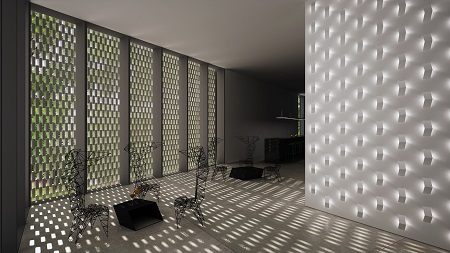
Space
Space control people’s movements by creating a flow and leading people where to look, where to go. When designing interior spaces, the function of the space, the time people will spend in it, and the mood you want the space to evoke should be taken into consideration. Generally speaking, open spaces are more positive and inviting and can boost creativity, while on the other hand, closed or tight spaces have a more negative impact.
Colors
Colors convey sentiment, memories in people. Our body, organs, skin cells, and nerves get affected by them. Colors not only influence our moods but also change architectural perspectives by making us sense the space differently. Choosing the right color for both interior and exterior architecture mainly depend on the emotions we want to evoke. In an article from last year, we wrote about how restaurants choose colors and designs according to their profile. They can encourage customers to stay and enjoy the evening by the use of dark colors and low lighting or with bright colors they boost quick consumption in fast food restaurants.
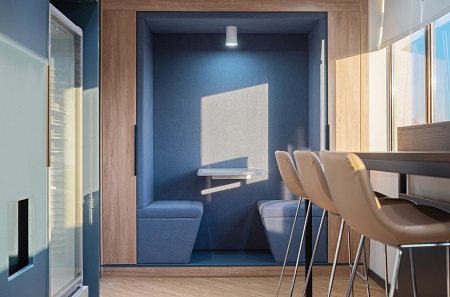
When implementing psychology into architecture, there is no single good solution. Architecture will always have a different effect on everyone, because of our different patterns of perception, personalities, and cultural imprints. It will always be difficult to define what would work for everyone but taking into consideration how people might be affected will help to define clear directions for buildings that inspire and evokes a good mood.
> back to top of page

Brand Insights from Mosto Restaurant Group: Interview with Eva Biorck, Co-Founder and Managing Director
February 25, 2022
What is your role at Mosto Restaurant Group and how do you bring value to the whole organization?
I am one of the co-founders and managing directors with a focus on business and organization development. Since the founding of our first restaurant, Mosto, we have opened eighteen restaurants, of which some were closed and others reshaped or relocated. As of today, we have a total of 10 restaurants and two bars in operation. From the start-up to now, my role in the company has taken many shapes. In the early days, running one restaurant, I was mainly in charge of marketing and administration. As our company grew, we could employ a larger team and have a better structure and teams dedicated to these areas. My focus has since been on shaping and structuring the business and organization so that it runs smoothly and is resource-efficient. It includes being the bridge between the finance, administration & HR department and the operations. Together with the team I look at our processes and work on changes or refinements that need to happen to improve our overall performance. I negotiate contracts with landlords and investors and handle all sorts of internal and external communication to our stakeholders.

"Eva Biorck"
Image Source: Eva Biorck
Can you please explain the different brand concepts you have built up (Mosto, MOKA, etc), how they are different and why each of them works so well?
We founded Mosto back in 2008 just before the summer Olympics. The focus was casual fine dining - subtle elegance in terms of both food and beverage and atmosphere. At that time, we were one of the first restaurants in Nali Patio, and certainly the oldest in the building now. There were a lot fewer Western restaurants and the offering was mostly either 5-star hotel restaurants or fast food. We felt that there was a need for more “casual fine dining” restaurants with an emphasis on both food quality and atmosphere. Today of course the offer in Beijing on non-Chinese food is endless and the scene is very different. In 2010 we opened Modo Urban Deli in then newly opened Taikooli in Sanlitun. This restaurant was more like a European Deli with a focus on charcuterie plates, cold cuts, sandwiches, and salads – “easy on the go food”. This concept eventually gave birth to the idea behind our fast-casual café chain Moka Bros. We wanted to create a lifestyle brand with a focus on healthy eating that we could more easily replicate. So we refined the operations processes and worked on a menu that focused on “power bowls”, wraps, sandwiches and smoothies. The menu is of course key, but we believe that the atmosphere we create in terms of design, lighting, music, is equally important to build a community and strong brand. When we first launched this brand in 2013 there was a lot of space in the market for this type of concept. Now there are plenty of Western and Chinese brands in this niche and the competition is fiercer. This keeps us on our toes and motivates us to keep updating and renewing ourselves.
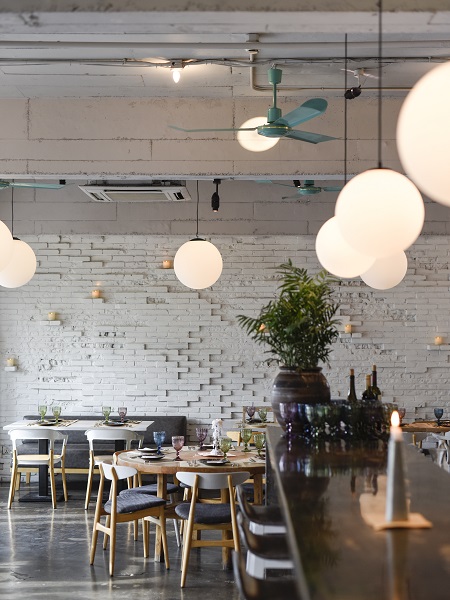
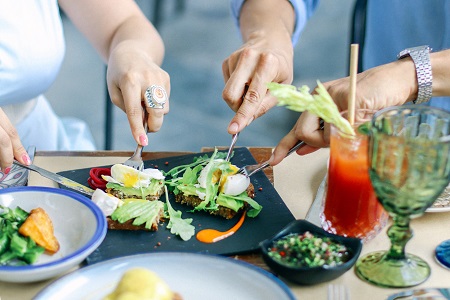
"Mosto Beijing"
Image Source: Mosto Group
La Social was born in 2016 when a night out among my South American business partners ended with an inspired idea. Together, we transformed an unused storage closet into a Latin American style bar – equal parts passion, aguardiente, and insanity. In 2018, La Social grew, opening in Shanghai and, once again in 2019, with the introduction of La Social Taqueria in Chengdu.
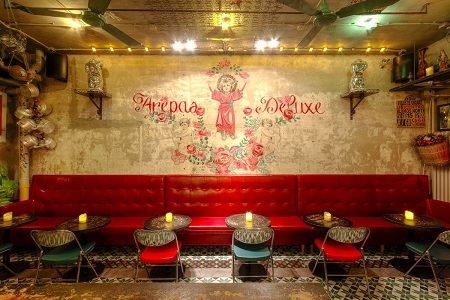
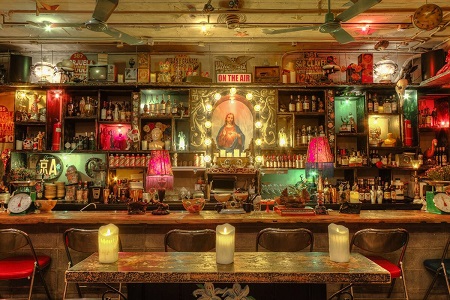
"La Social Beijing"
Image Source: Mosto Group
While the concept of La Social might have been conceived on a wild night out, the final experience leaves no detail to chance. Filled with delightful details and vibrant décor that combines Latin American flair, vintage Chinese memorabilia, and all things over the top; La Social transports you to the Latin Bars that our owners grew up loving.
What is the story behind each of the concepts? How have you positioned the brands in the market and what are your target customer groups?
In terms of positioning, Mosto has traditionally been focused on the expat market that was quite large at the time of opening in 2008. We have during the years continuously done facelifts to the restaurant to stay afresh, but primarily Mosto has always attracted the Western crowd and diplomatic community. We have in recent years put a lot of focus on bringing in more Chinese customers and we see steady growth. Our Chinese customers are familiar with Western food, have traveled the world, and have been well-exposed to Western culture. So, there is curiosity and interest there.
How do your marketing activities differ for the concepts? What are the main objectives for the marketing activities and how do they support your business?
I think for each brand, community building has been a big part of our marketing and our main objective. For Mosto, we do wine dinners and pop-up events, charity fundraisers, and of course create celebratory set menus for important holidays. We have also collaborated with chefs from other restaurants in the F&B community and we like to host various community-building lunches and dinners. The key to a successful restaurant is consistency in food quality, service, and atmosphere. These three pillars need attention and care and that is what ultimately creates word of mouth and brings in new customers and creates brand loyalty.
For Moka Bros, the customer mix and profile look a little different. 90% of our customers are Chinese and they are much younger, around 18-30. They are typically new graduates or middle managers and they take pride in self-care, whether it is food, fashion, or health.
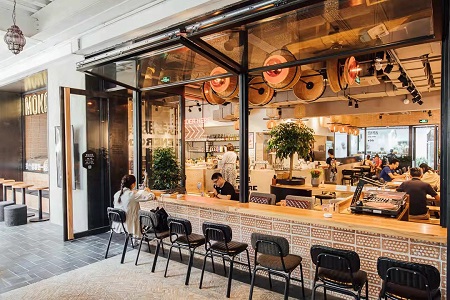
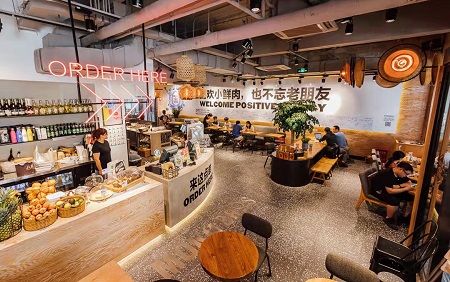
"Moka Bros Beijing"
Image Source: Mosto Group
We set off creating Moka Bros as a lifestyle brand with a lot of personality - upbeat music, interactive wall art, guerilla events such as tattoo parties, street graffiti, DJ events, women empowerment, and LGBT and environmental activities. The aim is to attract people that connect to our values beyond the power bowls and smoothies to a larger purpose of leading a healthy and open-minded lifestyle.
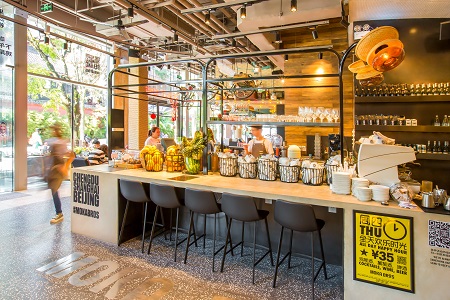
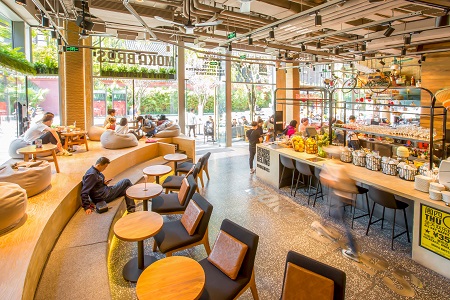
"Moka Bros Chengdu"
Image Source: Mosto Group
In La Social we do all things fun – special DJ guests, themed parties, and bartender collaborations. We attract a mixed crowd of young professionals – both Chinese and foreigners.
Across the brands, our customers are very tech-savvy and use Dianping and RED as resources for choosing where to go out. Discount schemes and loyalty programs are important tools to keep our Chinese customers coming back.
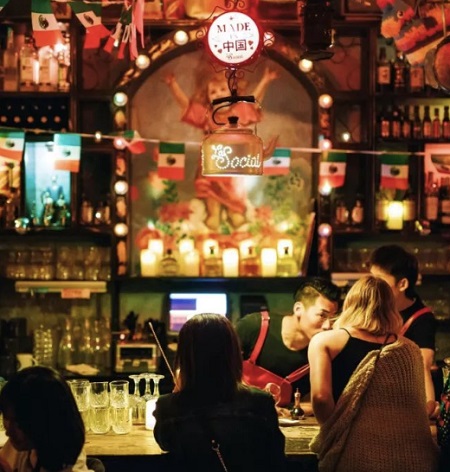
"La Social Beijing"
Image Source: Mosto Group
In a highly competitive market, what would you say is your key selling point? What makes your restaurants so unique and attractive for customers?
Mosto’s USP: “Our house is your house. We are here to make you feel good.”
Moka’s USP: “The trendy, edgy hangout spot. Relentlessly delivering healthy, flavorful fare for the hip urban crowd.”
La Social’s USP:” A place sought for wonder, intimacy, and fun.”
The last two years have been a difficult time for many sectors worldwide, especially also the restaurant industry in China. Please explain how you have coped with the situation and how you were able to persevere? What tips can you share with other restaurant owners?
I think there are two aspects to this question. One is technical and practical and will depend on the type of business you have. For example, during the height of COVID and when many restaurants had to close temporarily or simply had zero customer flow, you might need a cash injection and seek new investment to survive. Some of the measures we took were to reduce our opening hours – in Moka we closed for breakfast and thereby cut out one shift to support our staff, in Mosto when we re-opened after four months we only opened for dinner. We made our menus temporarily shorter, we tried to negotiate rents with our landlords and negotiate payment terms with our suppliers. We did not want to cut staff and did our best to keep their jobs.
The other aspect is how we deal with times of change and difficulties emotionally. As a business owner and manager, I had the feeling of being on a sinking ship and quite frankly it was very challenging and scary to navigate through the unknown territory. There were many contradictory emotions. I was jumping from feeling hopeless to hopeful, from discouraged to encouraged, to feeling sad and grateful all at the same time. I think it was helpful doing hands-on work in the operations as that created a sense of control and to be “doing something”. Most importantly though, was the amazing support of friends, colleagues, and the community.
I think for almost all of us, these past two years have presented very sudden and unanticipated changes. I know for myself, many of my life goals didn’t go as planned. I’ve learned firsthand that a crisis can feel overwhelming and isolating, and that taking time for self-reflection is essential. The change will always be certain and constant in life, and navigating through times of change is something we must always prepare for. So, while goals are important I have come to understand that maintaining a flexible attitude, embracing the need to keep on learning, and striving towards progress is the essence of fulfillment.
As a restaurant group, design plays an important role too. How have you integrated design within the restaurants and how does it represent your identity and values?
The interior design and music are key to the type of atmosphere you want to create. The kind of lighting, the materials, accessories, plants – it’s all in the details. Both my husband and I value design and it is something we pay attention to around us. I used to run an interior accessories retail business and my husband and business partner come from a theatre background, so he thinks of it as “setting the stage” every night. I’m from Sweden and my husband is from Colombia, so I’d like to think it’s the perfect combination of colorful yet simplistic design values.
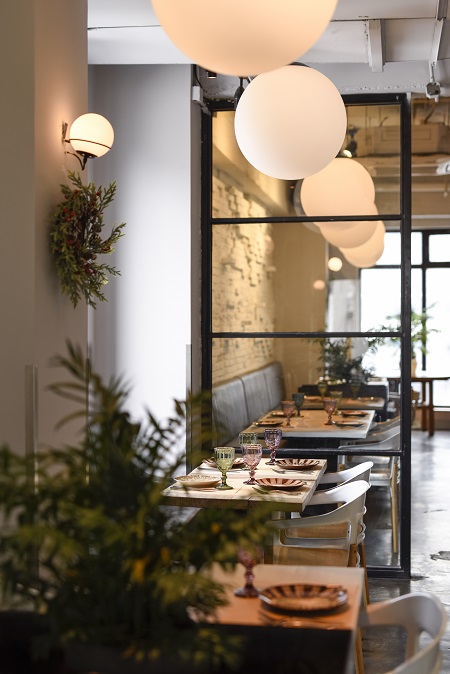
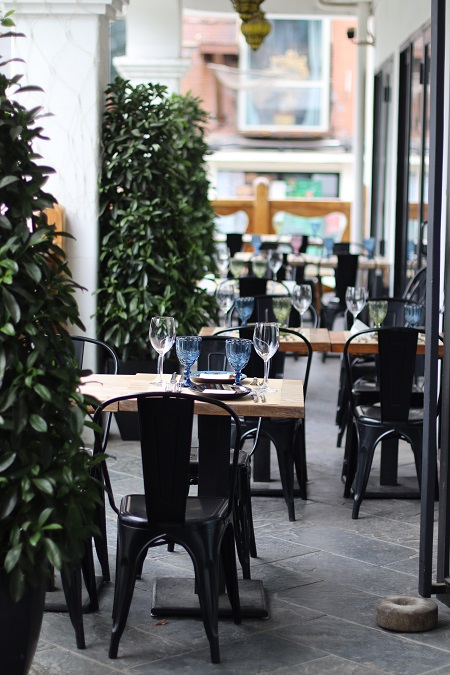
"Mosto Beijing"
Image Source: Mosto Group
Staff retention is a difficult topic for many companies. What are your tips for building loyalty and a stable team?
I think there is a belief that as an organization you are either good at retention or not, that there is a formula you can simply follow, or some company values you plaster on the wall. While I think defining values is an important exercise and even helpful to have them visibly on display, it is not the recipe for retaining staff. In my experience, it is a constant work in progress, and depending on where you are in the business cycle, both the temperament and needs may look different within your organization.
When I (we) employ key staff, it’s a chemistry meeting first of all, and secondary (for us) is skills and knowledge. Competency is of course highly important, but first of all, we need to know that we can work together. We know that the different job functions can be exciting and rewarding but they can also be messy and stressful and we make mistakes along the way. So, whether you are a new company just starting on the journey or a more mature organization, you want to get along with your people and have them excited about your goals and a willingness to learn. For us, this frame of mind has been key to driving the business forward. So going back to values, I think our team spirit is built on a foundation of trust, empowerment, to keep on learning, and a belief that there’s always a way.
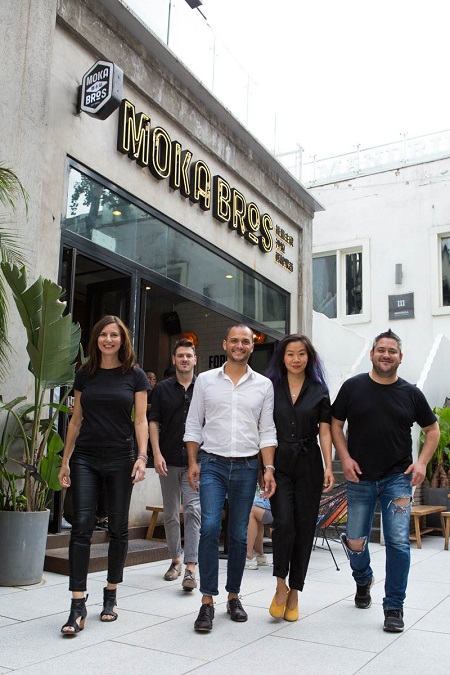
Image Source: Mosto Group
Are there things that have not worked for you? What are your biggest lessons learned?
Yes of course. We chose two locations that did not work at all. Big expensive learnings. It’s important to take your time and do extensive research before committing to a new location. We learned to never go into completely new developments and to focus the development of the brand in Beijing and Shanghai first and foremost. It’s ok to grow slowly.
On a personal level, trusting myself and “owning my power” has been, and still is, part of my learning journey.
What other tips would you like to share with the readers?
Some of these are very specific to running a restaurant business.
- ●Setting up a shareholder agreement between partners saves a lot of potential trouble and misery.
- ●Make sure you are on the right side of the law in terms of labor contracts, fire, hygiene, and environmental license.
- ●Set short-term, medium-term, and long-term goals. It helps to prioritize your work.
- ●Always review and refine your standard operating procedures, but make the changes swiftly and move on. Don’t get stuck in processes and administration.
- ●Employ people that fit your organization in spirit as well as merit. I would say, surround yourself with doers.
- ●Do not over-analyze decisions. It’s particularly difficult making decisions that will have a huge impact on your business. It might be the wrong decision, but then you change and you keep moving forward.
- ●Have disciplined accounting practices and a solid financial plan in place. Cash flow and budget forecasting are key.
- ●Keep on learning. Whatever field or discipline contributes to growth that inevitably will influence your business too.
- ●Don’t underestimate the power of guanxi and losing face.
- ●Don’t let yourself get side-tracked or insecure about other people’s opinions. Stay focused.
- ●Finally, building your own business is challenging but it should make you happy. If the pressure is too hard and you lose the spirit it’s ok to stop. From failure comes new opportunities to grow.
How did you choose the names of the restaurants and what do they mean?
Meaning of Mosto (in Latin, Spanish and Italian) = The juice of freshly pressed grapes before or during fermentation into wine. In Chinese, Mosto is 摸石头. Figuratively, what it means is "to figure things out as you go along" as if you were wading through a river by feeling the stones on the riverbed with your feet. Moka is from Moka coffee with a simple spelling. Dani our chef has always liked this name and this particular spelling. We felt it matched well with a fast-casual cafe concept.
How do you see the future of the different concepts?
Mosto has been around for fourteen years already and now we have just opened up in Shanghai. Long in the waiting! I feel it’s a classic concept that almost matures and gets better with time. I think the healthy food segment is growing and here to stay so I see Moka Bros as one of the main players. And although bars tend to come and go, I’d like to think that people want to have fun and dance to Latin tunes! So, the conclusion is that the brands are keepers and here to stay. But as I said, the key to a successful restaurant is consistency in food quality, service, and atmosphere. These three pillars need attention and care and that is what ultimately brings customers back for more. So, there is always plenty of work to do!
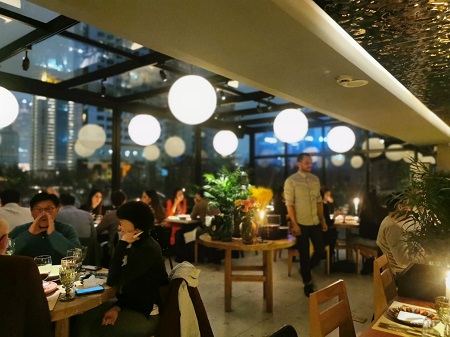
"Mosto Shanghai"
Image Source: Mosto Group
> back to top of page

10th Anniversary Articles Series: February
Celebrating 10 Years of 5 Star Plus Retail Design
February 18, 2022
We are proud to announce that 5 Star Plus Retail Design is celebrating its 10th anniversary this year! We have a unique story to tell, and we are looking forward to sharing one part with you each month. A lot has changed since the beginning: In China, a market where retail design did not exist in 2012, retail brands have become aware of its advertising power and direct impact on sales.

"Rendering of Hanna Trachten, Vienna, Austria, 2012; and Trickers, Shanghai, China, 2021."
Despite the many changes, we are happy that many things have stayed the same over the past years: a large part of our fantastic team, many of our valuable clients, and the core services that we offer have not changed. While each project has completely different needs and requires a custom-designed solution, our team gets passionate at every opportunity to understand and express the brand better. Our designers give everything to create store designs that excite and deliver commercial results. For us, it is essential to help brands stay authentic and connect with their customers.
What are we most proud of?
That many of our clients repeatedly work with us over the years. That we create entirely newly designed store design concepts that help create authentic brands. This authenticity can be felt by customers and creates engagement and loyalty.
Besides having completed hundreds of projects in mainland China, we are proud of having worked on retail design stores and exhibition stands in Europe and the US over the past eight years. And we are proud of having the opportunity to work with the world’s leading brands in fashion, accessories, shoes, jewelry, watches, cosmetics, eyewear, automotive, restaurants, coffee shops, and consumer goods. Every design concept is part of a wider strategy to fulfill marketing and sales targets and is based on the brand’s positioning.

"Rendering of SHE Bar, US, 2014, and Hanna Trachten, Austria, 2016."
Much of our work has been published in international architecture and design media. We have been present at China’s national TV to talk about the trends in interior design, and we have received awards for our work. While this serves as additional evidence of our achievements, we understand that real value comes from dedication and the willingness to do our best every day. Our service promise to clients includes a commitment to authenticity, strategic thinking, excellent customer service, and exceptional design.
With excitement, we look forward to the changes and opportunities that are yet to come in the next ten years. In the shorter term, we will stay in touch and guide you along with our stories during our anniversary year!
> back to top of page

Chinese New Year 2022: Year of the Tiger
January 29, 2022
Chinese New Year is determined by the lunar calendar and is the most important festival in China. It is also known as the Spring Festival. It is the time of the year when people travel back to their hometowns to celebrate the holiday with their families and loved ones.
This year, according to the Chinese zodiac, we celebrate the year of the tiger. Decorations in every retail space strongly depend on the representation of the tiger. Fashion and retail brands adjust their product and store design as well as their visual campaigns according to the celebrated animal. When applied correctly in shops, Chinese New Year’s decorations have a positive impact on sales. The windows of high-end and fashionable stores are dressed in red and rich golden motives.
At 5 Star Plus, we know that creative design is crucial for retailers to communicate the perfect festive mood during the Chinese New Year. We have collected some great examples from China and other countries as well.
Tiger Tails
The much-anticipated Louis Vuitton House in Taiyang Taikoo Li Chengdu opened in January with a remarkable art installation for the Year of the Tiger. The unique design includes a gigantic tiger's tail that stretches horizontally through the glass to the entrance hall and vertically spirals over two floors. The tiger tail design adds spirit and affinity to the space. The fur material of the tail feels like suede or other soft fabric like plush.
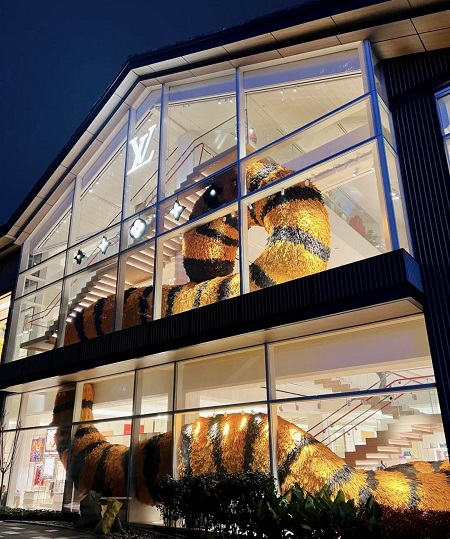
Image Source: Adquan
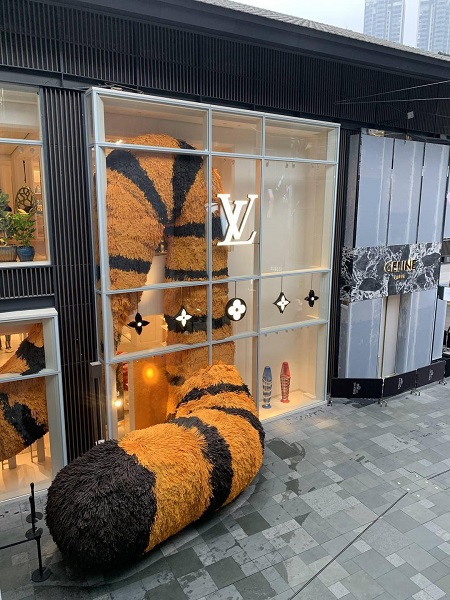
Image Source: Sohu
The 751 Design Store in Beijing created an exceptional installation celebrating the year of the tiger. In their interpretation, the tiger tail is made of the same materials as the decorative air ventilation pipes. They employed the well-known tiger orange color with uniques metal rings as stripes. Their version shows that implementing a tiger tail into the store design has no limits.
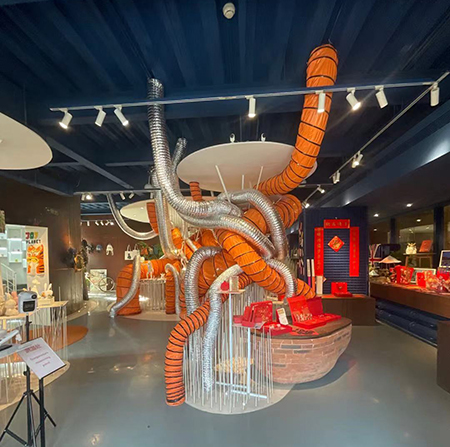
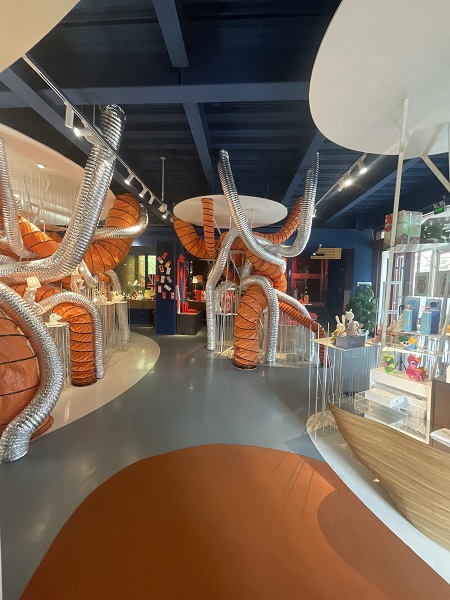
Tigers Around the World
We invite our readers on a quick tour around the world to discover how the famous tiger appears in other countries where the lunar new year is celebrated.
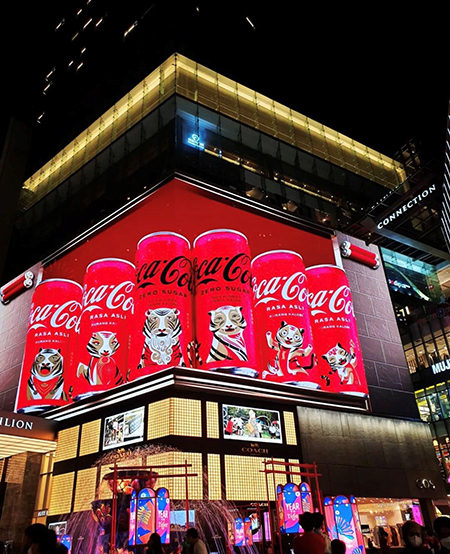
"Coca Cola branding in Kuala Lumpur"
Image Source: Instagram @cssdays
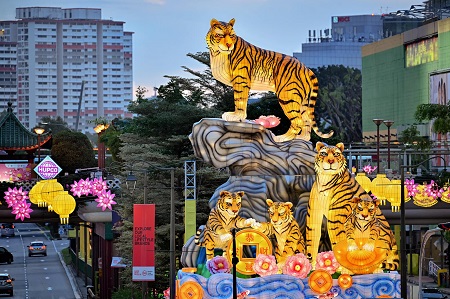
"In Singapore’s Chinatown, the centerpiece showcases a family of five tigers that signify reunion, harmony, and prosperity"
Image Source: Sina
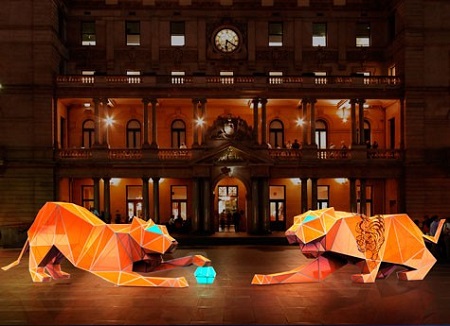
"Two origami truck-sized tigers took over the forecourt of Sydney’s Customs House in celebration of the Chinese New Year"
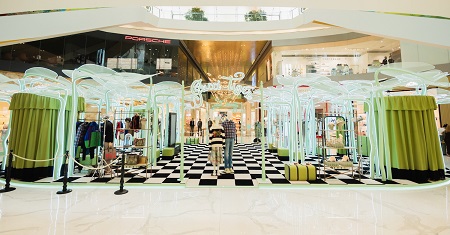
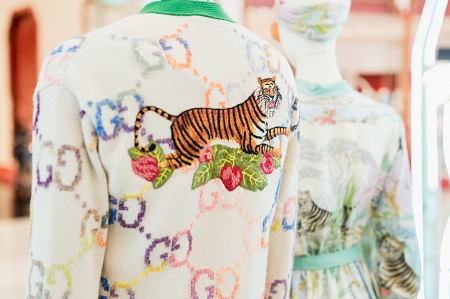
"Gucci in Thailand celebrates the Year of the Tiger with a new pop-up store dedicated to the Gucci Tiger collection"
This season is all about tigers with a combination of gold and red. It is always exciting to see how retailers use the same elements and create a design in a unique way perfectly fitting to their brand image.
> back to top of page

Color of the year 2022: Very Peri
January 28, 2022
At the end of every year, the famous color institute Pantone announces the feature color of the upcoming year. The lucky color is dominant in the newest trends throughout the year and it can be seen everywhere: fashion, home, retail, and product design. The chosen color for 2022 is PANTONE 17-3938 Very Peri.
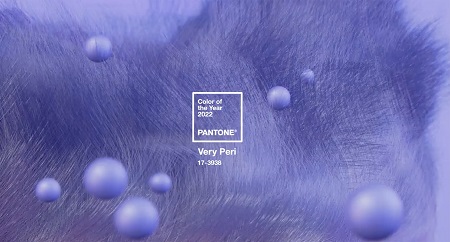
Image Source: Today
Introducing Veri Peri
It is the first time in the history of Pantone Color of the Year to create a new hue instead of choosing an existing one. Very Peri embraces the qualities of blues and violet-red colors. This unique shade represents the expansive possibilities waiting for us and acts as a symbol of the transition we are going through now. As the past two years made humans face incredible challenges and isolation all around the world, it also widened our perspective and made us more open to new visions.
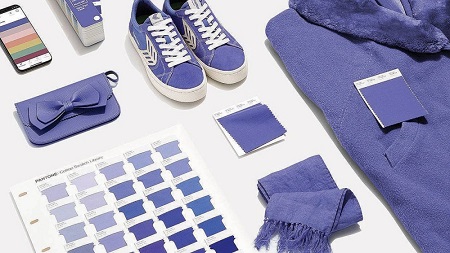
According to Laurie Pressman, Vice President of the Pantone Color Institute, the color reflects what happens in our global culture, expressing what people are looking for as an answer.
In Interior Design
Very Peri has the power to create an unworldly reality as it is a bold color to use in your retail spaces. Integrating this color into the design will refresh and revitalize any area. Depending on the aesthetic you aim to design, the color can create a modern or formal vibe. When integrating Very Peri, one thing’s for sure: it’s a hue that will set a retail space apart from everyone else’s. There are an endless amount of possibilities for how to incorporate this color into a retail space: from painted walls, furniture, wall arts to window displays.
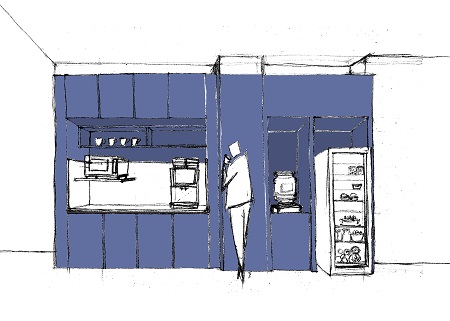
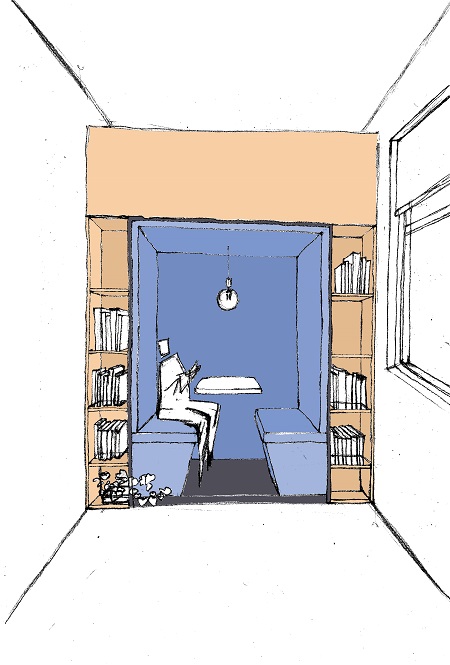
"One of our latest office design projects, Melchers office design in Beijing includes this bold color in the common areas."
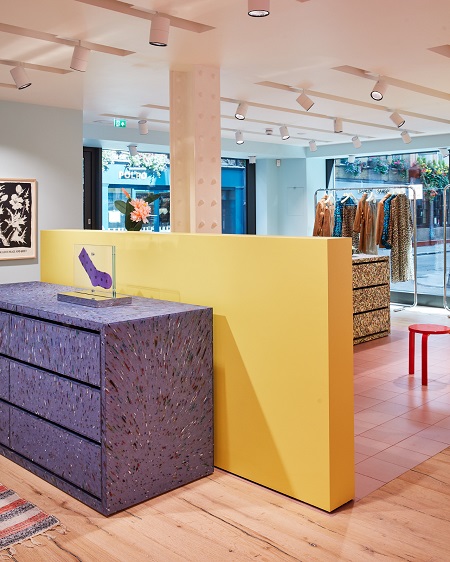
Even though it was designed to embrace the future and its opportunities, Very Peri can also revive a feeling or a memory. It is associated with happiness and comfort. After a period of what’s behind us, it’s essential to prompt good memories of the past and evoke hopes for the future.
> back to top of page

"Undesirable Psychological Effects of Poorly Designed Architecture"
"5 Star Plus Series: How Can Psychological Effects of Architecture Benefit Your Business?"
"December 30, 2021"
In the previous article of our "How Can Psychological Effects of Architecture Benefit Your Business?" series, we defined environmental psychology and its basis. We described what human preferences are, what beauty is and how architecture can serve as a form of stress release. With some examples from all around the world, we took a glimpse at factors that have a positive effect on the human mind and soul. However, we also think that it's essential to discuss potential mistakes. In this article, we will write about architectural styles that have questionable or even contradictory effects on people.
Trading Beauty for Utility
Nowadays, it’s commonly recognized that architecture has a psychological effect on people. However, there were times when these effects were ignored. After World War II, during the time of the baby boom, there was an increased demand for housing. That created a need for a fast, more efficient building process which - combined with the lack of behavioral insights - resulted in less detailed, smaller houses. These buildings focused on form, utility, and craft instead of beauty. In the US, Suburbia was born with endless rows of same-looking houses situated as close together as possible to make space for more buildings. This development also influenced the industrial side of the built environment. The primary materials used in these box-like, futuristic buildings were glass, concrete, aluminum, synthetics, and steel. This trend resulted in a lack of intellectual stimulation, it removed every aspect of human touch by creating a cold, unwelcoming environment. The style lacked the ability to produce a positive physiological response or a sense of well-being in humans. Fortunately, the need for individual, unique and creative architecture appeared soon after.
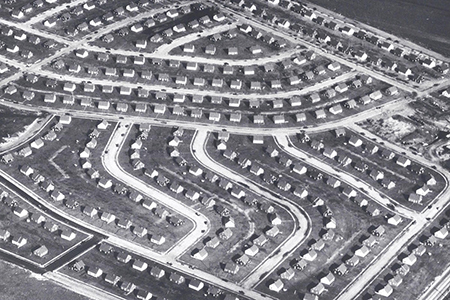
"The stressful, overcrowded, and repetitive neighborhoods that characterized suburbia"
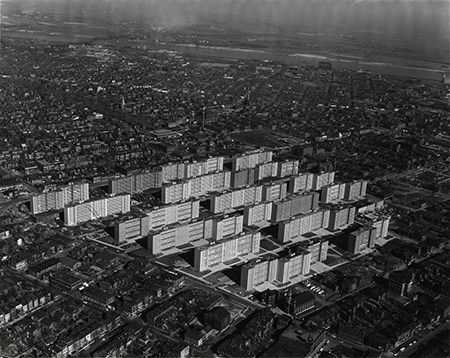
"Pruitt-Igoe housing complex in St Louis, Missouri was demolished in 1972. Critics argued that the wide open spaces between the blocks of modernist high-rises discouraged a sense of community, particularly as crime rates started to rise"
Undesirable Effects of Design and Architecture
People’s mood is strongly affected by the design of the fa?ade of the buildings they pass by every day. When the fa?ade is complex and engaging, it positively affects people. On the contrary, it has a negative effect if it is simple and monotonous. Colline Ellars and Charles Montgomery conducted continued research in this area. The scientists made groups of people wear a device on their wrists that monitored their vitals. The people were asked to walk along a specific route in Lower Manhattan. When the group walked past the long, smoked-glass frontage of buildings, their states of mood dived according to the wristband. They also started to walk faster in order to hurry out of that area. When they reached a stretch of nicely designed restaurants and stores, they reported feeling livelier and more engaged. This experience shows that buildings, fa?ades that employ beauty and patterns can stand the test of changing styles over time and the preferences of society.
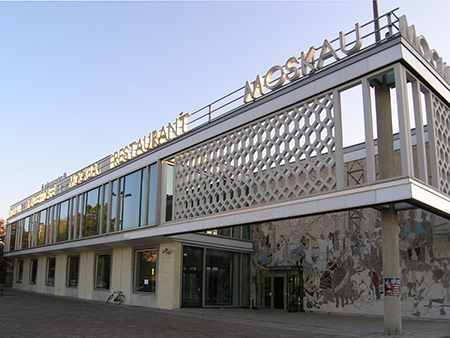
"Simple and monotonous fa?ade has a negative effect on passer-bys"
Not only the design itself, but poorly constructed buildings and surroundings have a considerable negative impact on our wellbeeing. Studies have shown that ruined houses, neighborhoods, and abandoned buildings make us feel unsafe. Poorly maintained establishments make us nervous and fearful by activating our sympathetic nervous system. Constant exposure to negative characteristics, like dull, repetitive chain stores can be harmful to health since they can be a source of chronic stress. Ideally, the construction of new buildings and urban areas should not simply avoid these negative features, but work to balance them by incorporating the methods of beautiful design. When the built environment contains a great variety of independent shops and unique areas it can stimulate our minds.

"Abandoned buildings make us feel unsafe"
Retail Store Interiors
When it comes to store interiors, some elements can make humans feel less relaxed: the lack of greenery, too many straight lines, and darkness. Dark areas can make people feel gloomy and depressed, while cramped and closed areas can promote a sense of claustrophobia. On the other hand, well-lit spaces with good ventilation make people feel welcome. Large, open spaces can provide the freedom to move around and feel more limitless.
Architects and designers should always design with a clear purpose in their minds. They should keep in mind that customers seek to surround themselves with colors, objects, and feelings that portray positivity, safety, pleasure, and health. The good retail design provides an easily navigable space, and an experience creating unique memories that inspire brand loyalty based on positivity. Furthermore, store environments also have to express the brand personalities and positioning accurately, and those spaces that are not well designed reflect negatively back onto the brand image. We have covered the most important aspects that positively influence customers in our Design Principles in Store Design series.
In the upcoming last article of this series, we will describe the importance of human interaction with the environment. We will show how the field of environmental psychology studies the environment’s impact on human behavior and the consequences of our behavior on that environment.
> back to top of page

Retail Strategy Best Practices, Tricker’s in China, from Mike Hofmann, Managing Director at Melchers in Beijing
December 28, 2021
We talked to Mike Hofmann, Managing Director at Melchers China, about why and how the company decided to choose Tricker’s – an English brand with over 190 years of history – as one of the latest additions to their portfolio for the Chinese market.
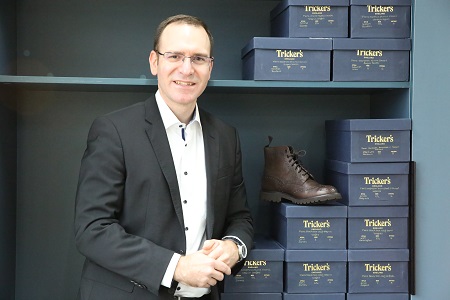
"Mike Hofmann, Managing Director at Melchers China"
Image Source: Mike Hofmann
Melchers is a German company that has been operating in China for over 155 years. Part of the services include retail and operations management for luxury and premium brands. Since recently, Melchers is also representing and selling Tricker’s products. The premium-positioned English shoe brand excites consumers with its beautiful signature designs, craftsmanship and commitment to sustainability. All products are handmade in the brand’s factory in Northampton in England using special yarn and stitching. Shoemaking still follows the original processes and customers can expect to wear their shoes for 20-30 years. A core philosophy of the brand is that products should be made to last: When damaged, all products will be repaired in the brand’s selected service centres. And finally, the shoes are so comfortable that “You never forget your first pair of Tricker’s!”.
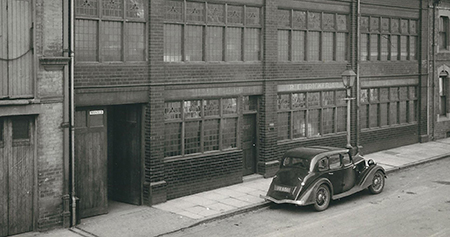
"Tricker’s Factory in Northampton"
Image Source: Melchers China
We wanted to understand how Tricker’s journey in China started, how the strategy based on craftsmanship and sustainability was adapted to the local market and how Melchers was able to pull off such an impressive local launch of the brand.
Why did you choose Tricker’s as a brand to represent in China? How did you make this choice and what potential did you see?
Melchers has been successfully operating and selling luxury brands such as watches for many years and has been on the lookout for new brands with potential to expand the product portfolio. At the same time, Tricker’s was already being sold in Hong Kong and parts of China and was searching for a reliable distribution partner. From our experience at Melchers with the watch brands we knew that there was a strong local demand for handcrafted premium products. We also did respective market research and looked at the comments consumers were making online about the shoes. We evaluated the product and characteristics, and were convinced of the potential. It was a good match for both sides, also in terms of values of the two companies. The collaboration started formally in summer 2020 and has been built up step by step since then.
Tricker’s is a niche product, it is not a mass product like a sneaker. We know that consumers in general and a big enough market segment in China are very interested in handcrafted products with a premium positioning and focus on sustainability. We observed this market need with our watch brands over the past years.
Did you have to adapt the product for China?
In general the shoe fits Chinese feet very well. Our most popular shoe styles are Bourton and Stow, which are based on the lasts created in 1937 to celebrate the coronation of King George VI. While the anatomy of Chinese feet is different compared to that of consumers in other parts of the world and we were aware of that being a potential risk, the current styles fit well and are very popular. What is adapted sometimes with seasonal collections are the leather and the color, but all products are still handmade based on the original product design in the factory in England.
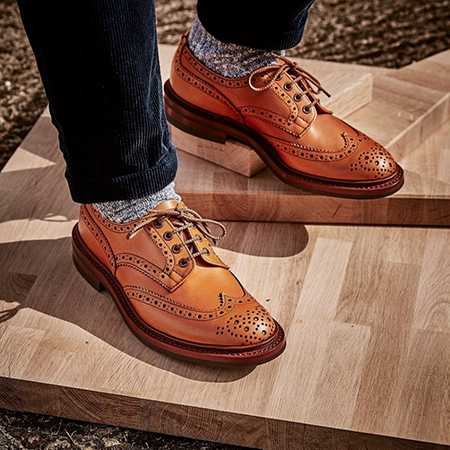
"Bestseller Product Bourton Brogue"
Image Source: Melchers China
What is Tricker’s marketing strategy, and how will it be different in the Chinese market?
We use the same marketing messages and positioning as in the UK. What we adapt are the channels and methods to deliver the messages. In China, the focus is much more on digital including the local platforms WeChat, Xiaohongshu and extensive KOC (Key Opinion Consumer) collaborations, also called influencer marketing. Our most important task at the moment is to build brand equity and brand awareness. Our key foci in the messaging is on educating the consumer about the English origin, the production process and the value of the product. In the UK, the brand is very well known and has been recognized with the Royal Warrant, awarded by His Royal Highness the Price of Wales, which is a testament to the quality of our products. Celebrities like Prince Charles, Daniel Craig and David Beckham wearing the products certainly helps us in China as well.
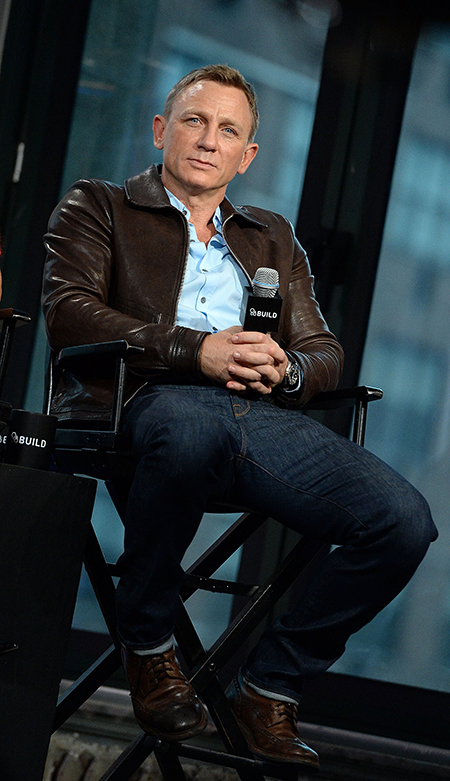
"Daniel Craig wearing Tricker’s"
Image Source: Melchers China
As next step, we will promote our made-to-order and bespoke services, which we are also offering in China in our authorized service centre in Shanghai. For the future, we are considering brand collaborations for joint shoe collections or a specially designed shoe style for China.
What distribution strategy do you plan to use?
We just opened our first authorized service centre in China – located in Shanghai – in October 2021. This centre will provide repair and maintenance services to our existing customers and also sell our most popular shoe styles. We chose Shanghai because of the large local demand for this type of products, purchase power of local consumers and because we found the perfect partner there. We also work with multi-brand retailers all over China and sell Tricker’s shoes online. In the next 3-5 years we plan to open a flagship store. The location has yet to be defined but it will most likely be either Shanghai or Beijing. In smaller cities, we plan to open more service centres to reach consumer groups there as well.
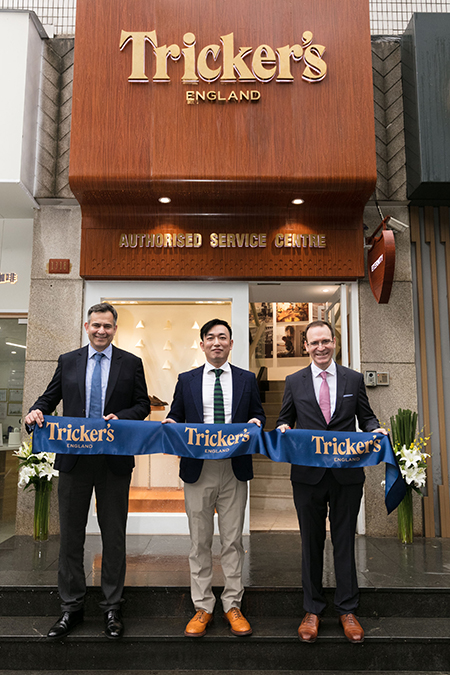
"Opening of the authorized service centre in Shanghai in October"
Image Source: Melchers China
In summary, we have a clear distribution strategy which focuses on slowly building up the network. We target bigger Tier 1 cities but if we observe demand or inquiries in smaller tier cities we might decide to expand there too. We are collecting and evaluating a lot of data to observe trends and stay close to the market. Our distribution strategy follows an omnichannel model with both online and offline points of sales. Having said that, we believe that our product is rather an “offline product”, customers need to try the shoes, understand the quality, uniqueness and sizes, before a purchase decision is made. Our online channel strategy is very important for marketing in China, it is not ROI driven but rather supports the offline channels and drives traffic. Only in real stores we will be able to engage customers on a five senses level, for example by feeling the softness of the material or the lightness of the shoe.
What is Tricker’s design language?
Tricker’s uses a clean design language emphasizing the quality, comfort and durability of the products. The brands want to focus on the craftsmanship and functionality aspects of the shoes. In our branding we use a limited number of muted colors as well as both colored and black & white photographs of the products, people, production process and lifestyle topics.
Sustainability is at the core of the brand. Can you explain more about this aspect, and how it is so relevant in today’s times?
Tricker’s and we at Melchers believe that people would like to keep the things they love for as long as possible. This is why Tricker’s is crafting shoes that last 20-30 years if well maintained. With our products consumers purchase something unique, with a history, yet timeless, a product that becomes part of your lifestyle. In addition, we hope that in today’s fast changing world where the lifecycle of many products spans a single season only, Tricker’s products can bring stability and support through their comfort and quality commitment to the live of individuals.
Tricker’s executes sustainability on several levels: economic, ecological and social sustainability. The brand contributes to ecological sustainability by recycling and waste reduction through its shoe repair services that are offered in many locations worldwide, such as in Shanghai and Beijing. Almost all elements of Tricker’s shoes can be repaired or replaced. Tricker’s also works with Olivia leather, which uses olive leaves for the tanning of leather rather than chemicals. The brand also believes in producing, sourcing talent and services locally where possible in order to reduce emissions caused by long transports.
What were the store design requirements for the first service centre in Shanghai?
We knew that this was a very important project for us since the authorized service centre would be Tricker’s first physical location in China. This store would affect the perception consumers would have of us, influence our positioning, and set the tone for further design activities which would have to be aligned. While it was important to showcase the heritage and uniqueness of the product, we also needed to appear modern and timeless. We wanted to keep the clean look of the existing repair store and make it a good fit for the local, very dynamic neighborhood. And we imagined drawing references to the craftsmanship, materials and unique production process we are so proud of by using wood, leather, stainless steel, as well as stitching and handcrafted details throughout the retail store. We feel that we have achieved a very good balance and are really pleased with the clean yet high impact effect. The store is bright and the customer flow is well planned and natural. The team in the store has reported that the window design is in fact very effective and constantly attracting passers-by into the store. The sales and service numbers of the first months look very promising as well and we look forward to further growth over the next months.
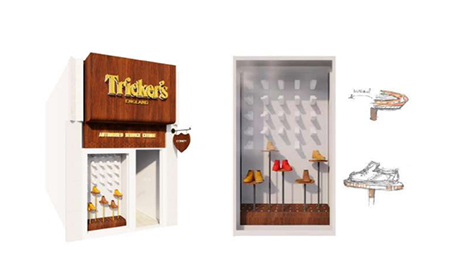
"Fa?ade design for Tricker’s authorized service centre in Shanghai"
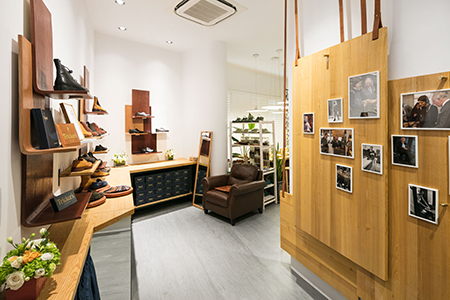
"Clean lines and natural materials characterize the repair and retail store"
Image Source: Melchers China
> back to top of page

2021 Relaunch - The Evolution of Mannequins in Visual Merchandising
December 24, 2021
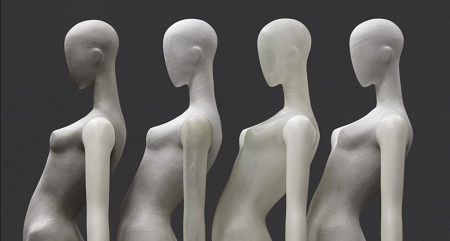
As most of you will know, a mannequin is typically an artificial doll used by retailers to display their merchandise. For the most part, they are plain bodies that require dressing and accessorising and do not tend to possess any distinct features aside from this.
Mannequins have been around since the opening of the first stores and have long been recognized as important tools of retail business. Different items are usually paired together so customers can visualize which pieces work well together and take inspiration from the store’s latest trends. Furthermore, mannequins also function as a primary feature in window displays and are often the first thing a customer sees when they approach a store. Therefore, mannequin displays serve as a showcase of the best merchandise a store has to offer in a bid to attract potential buyers.
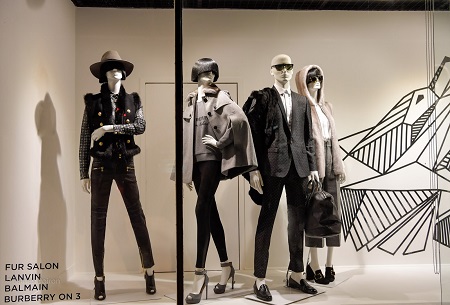
However, whilst mannequins have always been a key feature of store design, it is perhaps important to explore how they can also be used to represent much more. Over the years, mannequins have evolved beyond existing as static objects to become something that can add real value to a brand’s message.
More and more retailers have challenged typical mannequin ‘standards’ to make their retail design stand out and represent something different. Therefore, this article will focus specifically on the evolution of mannequin use in the modern retail world and innovative ways many retailers have brought their mannequin displays to life.
Building Characters
Diverting away from using idle figures, many retailers have opted to create fun and animated characters to showcase their merchandise.
H&M
This window display was featured in Columbus Circle, New York back in 2013 used many attention-grabbing figures to promote H&M’s denim collection.
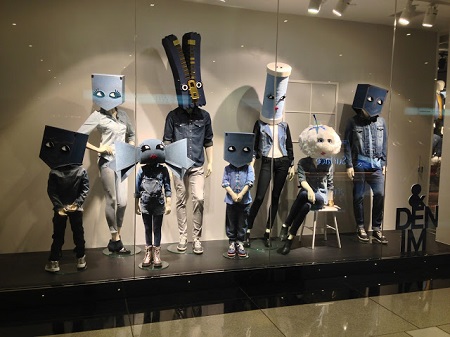
"H&M Insider: What to Expect During an H&M Interview"
Image Source: MOM.ME
The H&M Columbus Circle Visual Team created quirky characters to liven up the entire display and each individual character was brought to life through amusing facial expressions, granting them their own unique personas. Furthermore, the oversized heads served as an enhancement to the entertainment value of this window design.
Most importantly, the window display effectively draws attention to the merchandise H&M is promoting. The denim theme is evident as the display is predominantly blue, and the white only serves to complement it. Moreover, all of the mannequins are physically dressed in denim items, even the mannequin heads look as though they are made from denim and this additional feature really brings the theme to fruition.
Tanni
The Tanni store in Taikoo Li Sanlitun mall in Beijing places cute, larger than life dolls at the forefront of their take on mannequin displays.
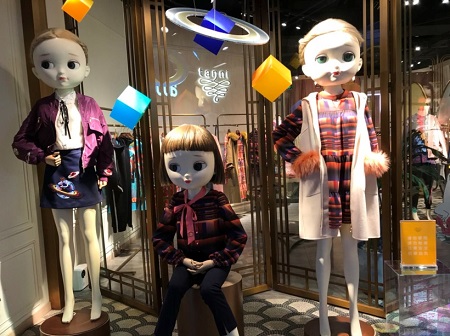
The sizes of these characters are magnified in a way that is sure to generate an element of surprise and fascination for nearby shoppers because at first glance, they do not appear as though they are actual mannequins. As well as this, the dolls also appear to evoke a sense of nostalgia and childhood innocence, as they appear to be very child-like in both their dress and demeanour. This seems to be in keeping with the general theme of the whole store, which features lots of fun, floral prints and patterned pieces.
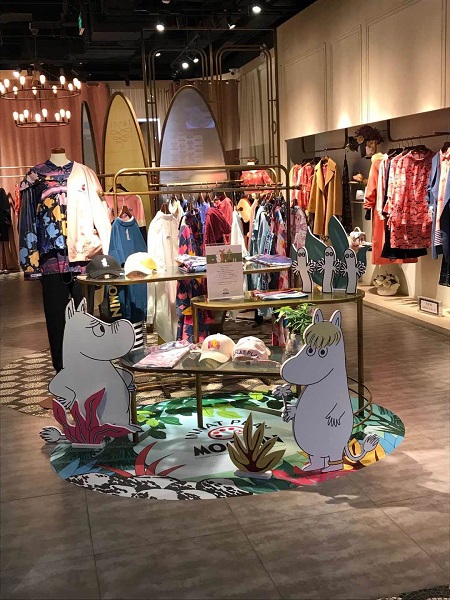
The zeitgeist of their retail store design is very light and playful and is reflected in the colour palette as well as the décor around the shop. Therefore, the mannequin display provides a playful teaser of what the retail store has to offer.
Mannequins in Motion
Activewear is currently a lucrative industry which shows no signs of slowing down. Consequently, how Activewear is presented to consumers can really impact its appeal. In particular, ‘active’ mannequins can really help to bring a brand to life in both a physical and symbolic way.
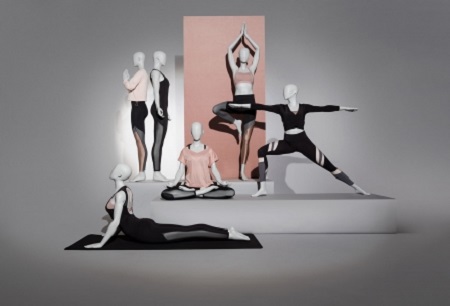
"Hans Boodt Introduces 'Yoga Sports' Collection"
Image Source: VMSD
Shown above is Hans Boodt’s most recent Yoga Sports Collection which features mannequins doing impressive yoga poses. This not only proves how mannequins can be just as flexible as humans but more importantly, overturns the pre-conceived notion that mannequins can only be still figures with certain limitations to their movement.
Lululemon
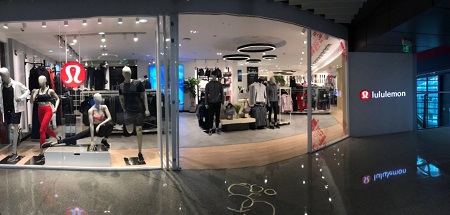
The Lululemon store in the Parkview Green Shopping Mall in Beijing is bursting with life and showcases how ‘active’ mannequins can be incorporated within retail store design. The store features a mannequin display on both the outside and inside of the store, to ensure that they are easily seen and noticed by customers in the shopping mall.
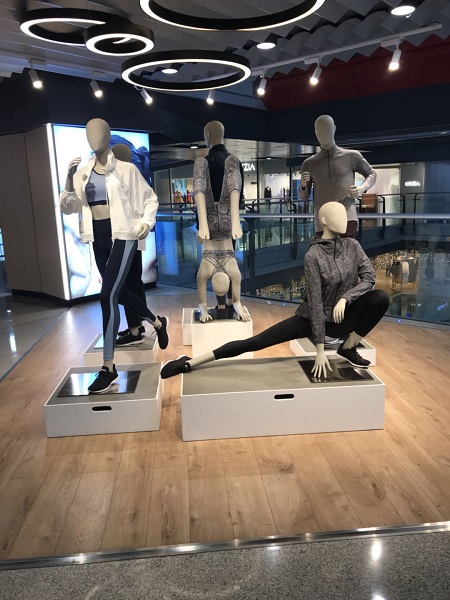
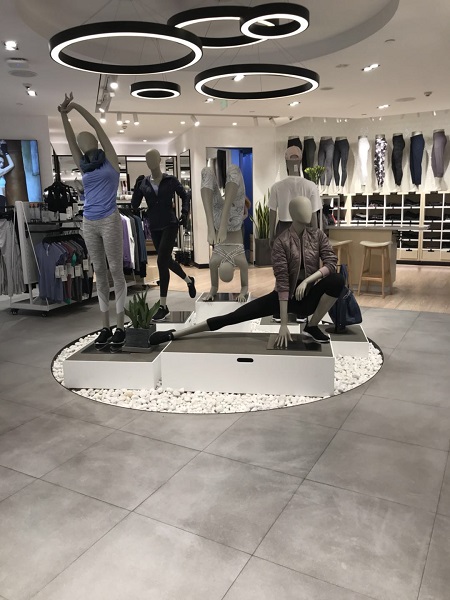
The mannequins showcase a diverse set of athletic poses, as some are warming up, stretching and running, illustrating the sheer range of movement these mannequins possess.
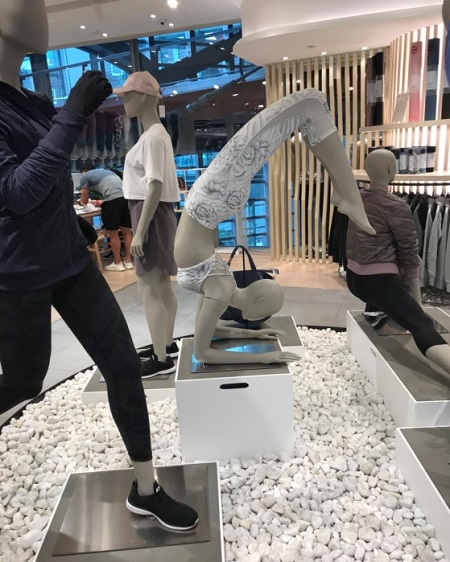
This is especially true of the mannequin who is mid back flip, showing how mannequins are able to bend in positions like never before. The balance and precision which has gone into the placement of these mannequins is a testament to how far sports brands are willing to go in order to experiment with mannequins and create new boundaries.
The Bigger Message
Perhaps the most notable aspect in the evolution of mannequin use lies in their capacity to represent something more. In particular, realistic mannequin figures can not only more accurately represent and relate to customers but can also promote powerful messages of individuality, diversity and inclusivity.
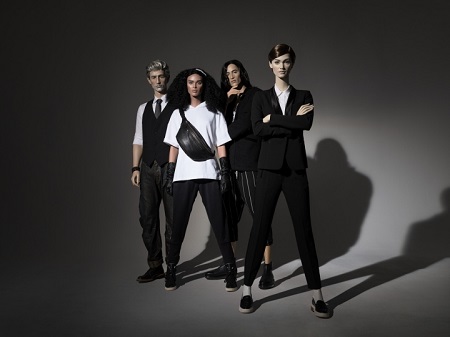
"Hans Boodt Mannequins Creating Characters campaign"
Hans Boodt
As with the Yoga collection, Hans Boodt also proves to be ahead of the game in the Creating Characters campaign. The collection had the specific aim of bringing awareness of individuality through 3D sculptured, realistic characters. These figures are so life-like they could be mistaken for real people, as each individual mannequin appears to have their own unique identity. Therefore, the collection displays a true dedication to represent different sectors of society, transcending barriers of race and age.
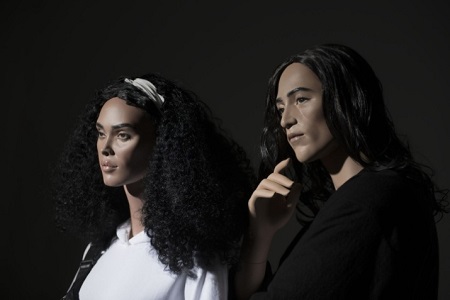
"Hans Boodt Mannequins Creating Characters campaign"
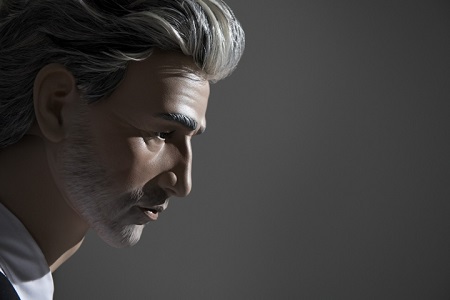
"Hans Boodt Mannequins Creating Characters campaign"
Missguided
Missguided made headlines back in February with their brave decision to incorporate diverse mannequins in their Bluewater, Westfield and Stratfield UK stores as part of their #MakeYourMark campaign.
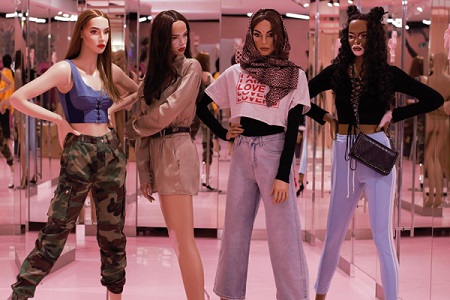
Part of what made this such a milestone in visual merchandising is the fact that not only do the stores feature mannequins of different ethnicities, religions and skin tones, they also acknowledge and celebrate women’s differences by including mannequins with what some women would perceive to be ‘flaws’ in their bodies. This selection of mannequins includes models with freckles, stretch marks and even skin conditions such as vitiligo have been given representation.
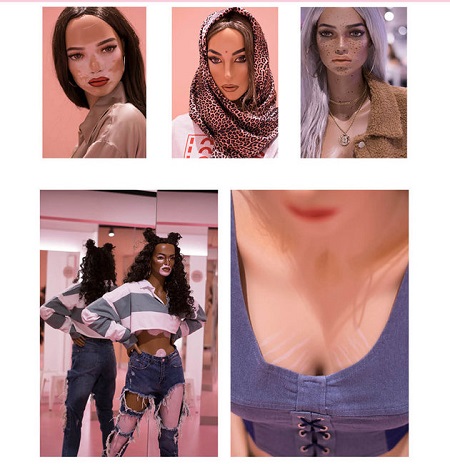
"Missguided Mannequins Now Have Stretch Marks But Are Still One Body Shape"
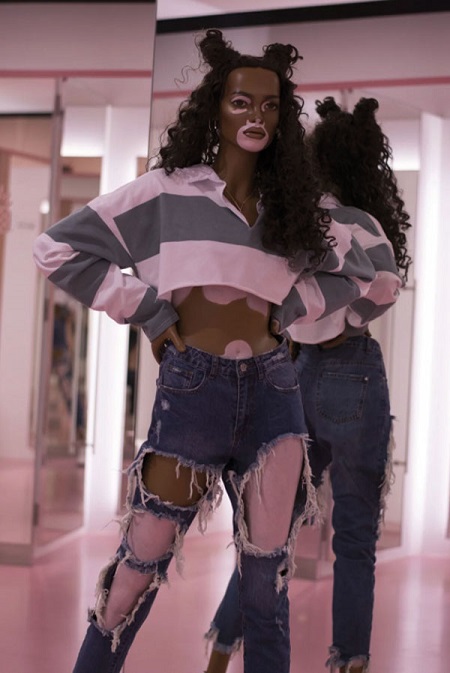
In doing this, Missguided have taken a momentous step towards becoming more representative of all women, whilst also encouraging them to be their natural and authentic selves without pressure to conform to societal standards of beauty. These mannequins speak out to a larger demographic of women by not only allowing representation for different groups but also bringing awareness to what real women look like. This promotes an important message about inclusivity and how shopping should be a relatable experience for all women.
Whilst there is still progress to be made within visual merchandising, especially regarding representation of women of different body sizes, Missguided have still paved the way for real difference to be made. They have displayed their ability to adapt their approach to evolve with the times through incorporating what can be seen as ‘progressive’ mannequin displays as part of their store design.
Conclusion
In conclusion, an awareness of the value mannequins can hold can have a real impact on a brand’s appeal. Mannequins have evolved into much more than just objects, therefore, an effective mannequin display can not only add to the overall ambience of a store to create customer intrigue but can also become something customers can actually relate to. Moreover, as fashion and society are ever evolving, this can also be translated into your mannequin displays so to actually speak out to customers and make a lasting impression.
> back to top of page

Multi-Brand Stores, the New Leaders in Retail
October 22, 2021
Nowadays, it is well known that Chinese people cherish luxury brands. They can make Chanel and Louis Vuitton boutiques as swarmed as H&M are in other parts of the world. Although the costs of luxury brands are higher in China than in Europe because of import taxes and tariffs, this doesn't prevent luxury stores in China from being full of shoppers each day.
Due to the uncertain economic climate triggered by the pandemic, there has been a sharp fall in demand in 2020. However, a resurgence in Chinese spending and the increasing dominance of millennials and Generation Z is expected to drive the market in the medium term.
In recent years, with the development of the Chinese fashion industry, influenced by Western-style fashion magazines, websites, and social media, young people are very educated on all aspects of fashion.
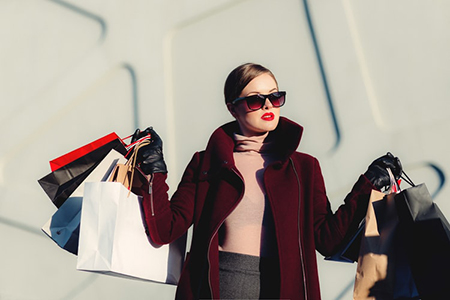
According to 10,000 consumers questioned in a survey conducted by The Boston Consulting Group (BCG), quality, craftsmanship, and exclusivity remain the main values in the criteria sought in a luxury product, but new elements are emerging that provide an additional reason and drive purchases: the "fun and extravagant" or the "current and sexy" style. Both values are close to the taste of millennials.
Multibranding is the development of marketing two or more similar and competing products by the same company under different and unrelated brands. While these brands feed of reciprocal sales, the multi-brand strategy has advantages as a means of:
- ? Getting more shelf space and leaving little room for competing products.
- ? Saturating a market by filling all the gaps in price and quality.
- ? Catering to brand switch users who like to experiment with different brands.
According to Mike Roberts, a former chief creative officer at the retail design consultancy Green Room, the reason for the rise of popularity of multi-brand stores is due to the “the increase of luxury brand awareness and desire in the Chinese market.” He also stated that “Pre-pandemic Chinese consumers were traveling on a global scale, being exposed to new brands, and bringing back their influences to the thriving local market. A lot of multi-brand boutiques in China are simply led by a ‘cultural curator’, often a well-traveled individual with specific tastes.”
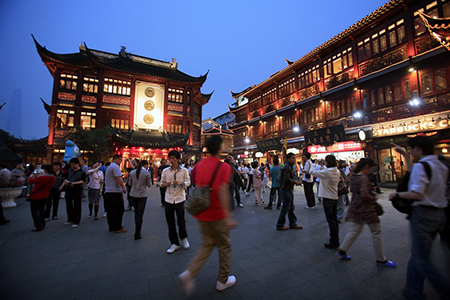
A clear example of the multi-brand phenomenon in China is that in five years (between 2014 and 2019), the department store and footwear businesses in China dropped from 38.6 percent to 26.3 percent, according to a report conducted by Fung Business Intelligence. Nevertheless, Mike Roberts said that the main key for succeeding in the fashion industry is the personal touch of the founders. Also, “Multi-brand retail communication ‘feels’ more personal and less corporate, and, ultimately, this form of communication builds trust and credibility, which is highly desirable to the modern Chinese consumers,” Roberts says.
The reason the largest multi-brand retailers are online is due not only to the ease they provide to customers when buying from home or due to the COVID-19 pandemic measures but to the fact that shopping malls and department stores are still implementing their old formula of getting many brands onboard without a clear-cut strategy, which is weakening their position in the market.
Since the late 2000s, independent multi-brand boutiques have surged in number across China and the rest of the world. Yoox Net-A-Porter (YNAP) and Farfetch are considered the two world's largest online luxury clothes retailers. The former one is the product of a 2015 merger between Yoox and Net-A-Porter, two digital pure-play retailers that have revolutionized the luxury apparel business, with over 3 million clients visiting one of its websites regularly. The latter one was founded in 2007 and allows customers in over 190 countries to find items from over 1300 of the best brands, boutiques, and stores from more than 50 countries, ensuring a unique shopping experience.
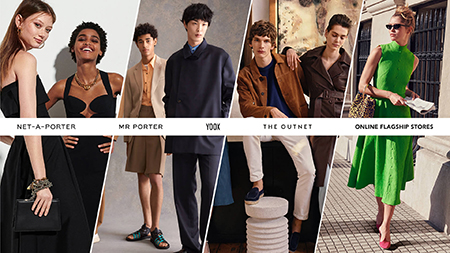
Dongliang
According to Vogue Business, it is estimated that more than 1,000 stores have joined pioneers such as Alter and Dongliang, two boutique businesses that have expanded from single stores in Beijing and Shanghai.
Dongliang is a retail multi-brand concept store committed to promoting new, talented Chinese designers in China and abroad. Launched in Wudaoying Hutong, Beijing in 2009. They collaborate with the most talented local designers and engage in artistic and cultural activities as well as business and charity events. It now has two stores in mainland China.
This is not only a retail store but a talent incubator, curator, event organizer, multimedia platform, and even a music and arts festival. Whatever its definition, its goal is clear: to disrupt the fashion world and launch Chinese designers onto the world stage.
ALTER
ALTER is a concept boutique store located in Shanghai. The superstore includes ALTER Showroom, ALTER Cube café, and the Rolling Acid design label.
ALTER is an unconventional and playful space that wants to convey a nexus between fashion art design food, and unveils lifestyle as culture. Also, It leads to a unique fashion Discovery: a cutting-edge collection and “editorial selection” of top leading designer label clothes and accessories from all over the world, displayed inside modular repeated cubes as back-to-back installations.
ALTER is arguably the most prominent and influential fashion boutique in China today. It was also nominated for FARFETCH’s 2014 Superstore Awards as one of the top six boutiques in the world. In the same year, the Louis Vuitton Shanghai City Guide featured it as a landmark of Shanghai high fashion.
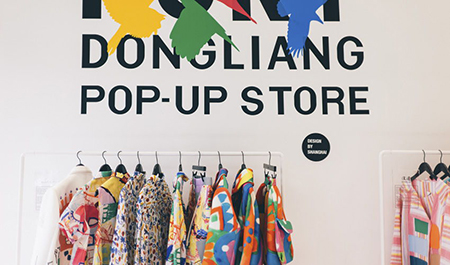
Competitive market
With the rise in popularity of the multi-brand boutique and the added challenge of online shopping, competition in the market has become fierce. It's especially difficult for smaller brick-and-mortar stores of all kinds to make a profit, due to the cost of spiraling rentals for prime locations in big cities.
The increase in the number of multi-brand boutiques entering the Chinese market is a good thing for consumers as this encourages more choice and better shopping experiences. But these boutiques need to find the right market position, target the right group of customers, and employ the right designers if they want to succeed in China. No matter how good or interesting the shopping environment is, selling the products is always the ultimate goal of brands.
> back to top of page

Introducing Environmental Psychology
5 Star Plus Series: How Can Psychological Effects of Architecture Benefit Your Business?
October 18, 2021
We spend most of our lives inside buildings: at home, at the office, in restaurants and other facilities. Our general well-being, thoughts, and mood are shaped by the walls and features of these buildings. In this new series, we introduce environmental psychology, how to consider it when designing a retail space as well as the positive and negative effects of architecture on humans. In the first article, we commence with the fundamentals of environmental psychology, how people form their preferences and how architecture impacts our stress levels.
Environmental Psychology
The field of Environmental Psychology is dedicated to understanding how people interact with the buildings and the spaces around them. In the past, a trend was to include psychologists in the design process with a peak during the 70s. Soon after, companies lost interest in working with them because they thought that architects had enough understanding about the end-users and their needs. That means that most buildings are designed with an intellectual approach instead of an emotional one. In China, where Feng shui originated, experts think that architecture is disconnected from other disciplines and the rest of humanity.

Preferences
There are multiple reasons why someone would like one space or building while someone else would dislike it. From an evolutionary point of view, human brains have been encoded to associate a sense of pleasure with objects and places that increased our chances for survival. That included food, water, shelter, and to be more specific, the layout of the savanna. Modern humans still associate shelter with pleasure but in a more subjective manner.
Environmental psychologists look at different categories when it comes to understanding people’s preferences. That includes how people perceive design elements, how intrinsic factors influence their mood, and if any social things happen in the space.
Researchers found out that people tend to prefer clean environments with less ornamentation, uncluttered spaces with an open view, and good illumination. Well-balanced, good designs do not require too much attention from people and make it easy for them to move around while promoting wellbeing in an overarching way. Researchers have also found that natural-looking patterns, naturalistic architectural spaces may evoke similar psychological benefits as interacting with nature itself.

"PUREONES concept store design with high-end wood and stone flooring and ceiling in a naturally balanced interior. The colors, shapes and materials were chosen to create harmony with Chinese culture and values."

"Natural dark flooring resembles the dark surface of the earth while the brighter ceiling corresponds with the sky. This helps to create a feeling of being grounded in the natural environment."
What is Beauty in Design?
We all know that the word “beautiful” is fundamentally subjective however, the feeling associated with it is universal. When we see something that we define as beautiful, it causes us to feel pleasure. This feeling of pleasure is a result of oxytocin, endorphins, and DHEA being released inside the brain.
Buildings with similar features as the shelters of our human ancestors, provide us with a sense of pleasure. Therefore, to incorporate these elements into the design, we need to identify and understand these characteristics and patterns our brain associates with survival attributes. These elements are mostly taken from nature. To mention a great example; Sagrada Familia by Gaudí who was influenced by his religious and metaphysical views. The treelike structures and flower-like canopies make it clear for visitors that the inspiration for the cathedral came from the forest.


Image Source: Flickr
Almost every ancient civilization incorporated environmental psychology in their unique way: Feng shui in China, Vastu Shastra in India, geometric patterns in the Arab, Roman, Druid, Aborigine, and Native American architecture. Their designs were in harmony with their life and their natural environment.

" Arab architecture features repeated patterns and non-figurative geometric or vegetal motifs. These patterns are inspired by the guidance of the Quran.."
Architecture as a Form of Stress Release?
Is it possible to use design and architecture to improve the stress level and mood of people? Nowadays, we experience stress in a very different way compared to our ancestors. For us, stress can be caused by multiple reasons and differs from person to person, ranging from traffic to a job, relationships, or seemingly trivial things. Unfortunately, stress has become a prominent factor in our modern life with an effect on our health. That is where architectural and interior design and their positive psychological effects come to the picture. The built environment has direct and indirect effects on human psychology with an impact on senses, mood, emotions, motivations, judgments, decisions, health, and participation in physical activity and community life. With the use of the right colors, shapes, patterns, and materials, retail designers can calm down, motivate and inspire visitors.
Apple, one of the retail giants always combined human emotions when designing an intelligent store experience for their customers. They emphasized creating a genuinely relaxed in-store experience, a sales-free, pressure-free place to relax and absorb. In every store, there are a lot of details to serve customers, to induce their sense of trust, relaxation, positive reinforcement, and their general mood: the layout, the decor, the pressure-free environment.


Image Source: Dezeen
In our next article, we will further explore the field of environmental psychology and its role in our everyday, modern life. We also think that it's essential to discuss potential mistakes as well. Besides the good cases, we will write about examples that have questionable or even contradictory effects on people.
> back to top of page

2021 Relaunch - Designing with a Purpose
September 29, 2021
What makes us unique?
At 5 Star Plus Retail Design our main focus is brand identity. This makes us competent when it comes to luxury design and branded design in China. We start every project with a thorough research about the brand, its competitors, target market, local regulations, and its surrounding environment. Once we have gathered all the necessary information we can provide unparalleled designs, retail consulting and project management services to international luxury and design brands. Our multinational team is a mix of international and local designers, consultants and project managers. Their designs are based on international standards while taking the local market and its requirements into consideration.
Retail design is without a doubt our passion. We do not only understand retail operations in China but we’re also able to create a design in a most effective way to maximize sales. Our extensive background in Chinese retail operation makes our team experienced in both the in-store operation and the local regulations. 5 Star Plus creates designs that can fulfill marketing targets like visibility, brand exposure, marketing leverage and visitor experience.
What makes our design process unique?
During our design process we always keep in mind what the client would like to express, how the brand is positioned and what the brand message is. Thanks to this we are able to achieve increased brand awareness and brand loyalty which, ultimately, is expected to translate into a higher sales turnover. Here are a few examples from our portfolio to show how it works in real life.
When creating two restaurant designs for THE MISSION at two different locations in Beijing, one key strategy that we utilized was to design every restaurant with a slightly different approach, in order to create novelty and adapt to the local environment. For the first location in China World Mall, 5 Star Plus created a modern flagship store design. We wanted to express their healthy, fresh cuisine through the design so it inspired both the color set and the materials that were chosen for the projects. The flagship store at China World Mall resulted in an artistic restaurant design that conveys a cool vibe that can attract the younger generation. We achieved this effect with an open stainless steel kitchen that promotes cleanliness by allowing customers to view the preparation process. We integrated custom-designed metal elements, a wall sculpture and intelligent lighting.
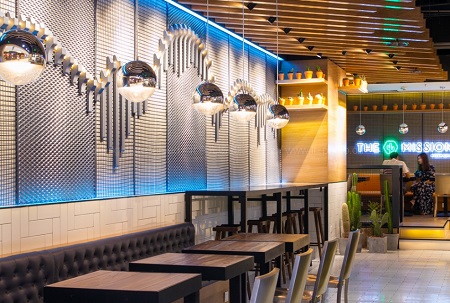
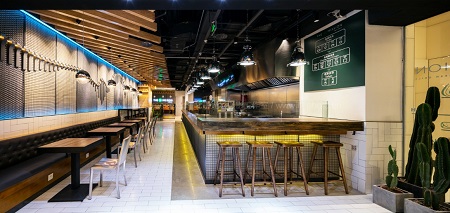
THE MISSION Flagship Store Design, Beijing
In comparison, the second location at Central Park Plaza puts more emphasis on feeling good and being healthy. Located beside Chaoyang Park in a residential area, families are the most important target customers in the area, so the design needed to be inviting for them. It had to reflect the wholesome, nutritional value of the food so we have created a fresh and bright restaurant emitting a healthy feel. With an open kitchen taking center-stage as the key feature, the important design elements that support it are the use of bright woods for the walls, polished concrete, natural foliage, and seating designed for different numbers of people.
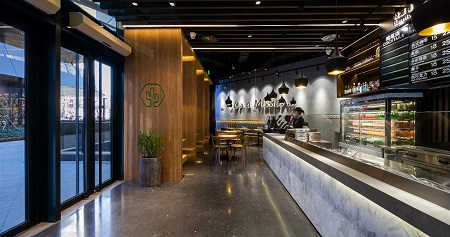
MISSION store identity design, Beijing
ORA Creation is chain of multi-brand stores selling different European designer fashion and accessory brands. The store in Solana Mall in Beijing had to be designed to use a reduced budget for maximal impact in order to increase sales. The ultimate goal was to attract passersby and entice them into the store. With this in mind, the 5 Star Plus Retail Design team created a light, conceptual store design that is easily transformable with seasonable changes and other requirements of the brand.
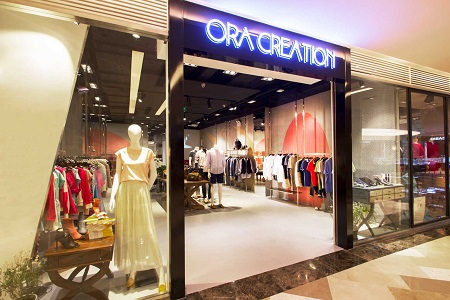
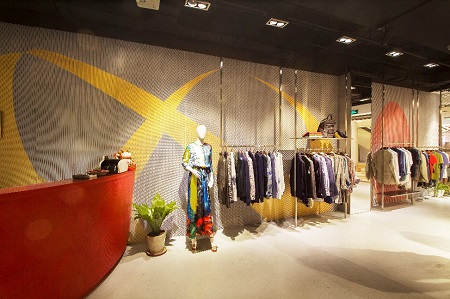
ORA Store Window Display, Beijing
For our client, Ti-Capital (Taixin), a Chinese private bank, the team developed a visual design identity concept. The company's name consists of the Chinese characters "Titanium" and "Trust". This meant the visual design identity had to represent the organization as high-end, stable, trustworthy, safe, and secure. The logo had to be suited to the Chinese market, appear masculine and strong, and communicate power and heritage. How did all these elements appear in the design? How did we reach brand awareness? The designers used light grey, dark red and white colors with a lion as the logo's key element to express trust, authenticity, and a certain formality.
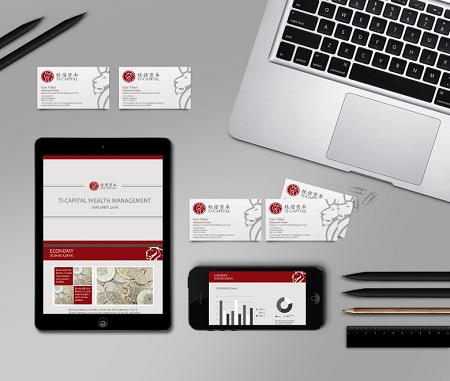
TI-Capital Visual Identity Design
During the World Winter Sport Expo in 2018, the International Biathlon Union covered 108sqm of exhibition space with 7 exhibitors. They were promoting the sport as a whole to China, providing knowledge to those unfamiliar with the sport. Our design concept received "Excellent Design Awards" during the expo. 5 Star Plus Design utilized energy green and ice blue as the main color scheme. With this color combination and structural design we were able to attract maximum attention to the stand and bring out the space.
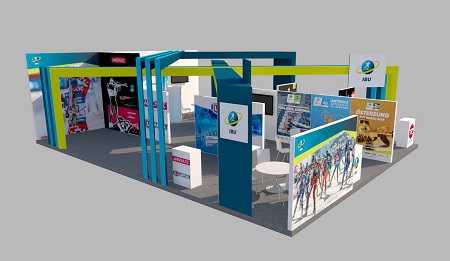
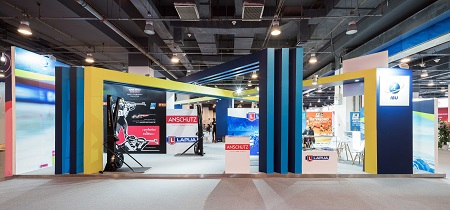
International Biathlon Union Exhibition
Our Future
Based on the examples mentioned above, it is clear that 5 Star Plus Retail Design understands what it means to build up a brand identity and strategically use our services to create a maximum benefit for our customers through creating emotional connections between the customers and the brand.
As for the future, our goal is to maintain an up to date knowledge of the Chinese retail market, regulations and the relevant design trends that help us understand the market development.
> back to top of page

Outlook for Luxury Retail
September 23, 2021
In an environment of continuous travel restrictions, store closings, global restructuring, goal review, and omnichannel sales, luxury brand executives must stay one step ahead of competitors to streamline sales and distribution processes, retain high-value loyal customers and reach out to new ones in new markets. Brands must prepare to serve customers wherever they are while ensuring compliance with local regulations and best practices while maintaining their hard-earned reputation.
Remote Luxury, Local Luxury
Neither catwalks nor large product presentation events. In 2020, the intense activity of the luxury industry had to reconvert its main windows to a remote and digital blended environment. Brand news was launched in mixed events streamed across the globe, thus reaching a growing number of people. The figure of the virtual assistant has reached luxury retail stores and these initiatives have been very favorably received by consumers.
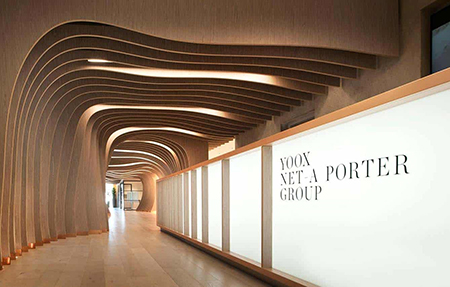
Some examples of this trend are the actions of prestigious luxury retail brands.
- ? Lexus promotes its IS 2021 model through the Augmented Reality application “Lexus AR Play”, which allows you to see the characteristics and variations of the product.
- ? Gucci has established a collaboration with Wildlife Studios, a mobile game developer, creating digital gamification that requires the use of the brand's clothing to participate.
- ? Chanel has launched an avatar platform that allows users to virtually try on digital clothing created expressly for this by its most cutting-edge designers.
- ? Yves Saint Laurent Beauty organized a virtual room through Zoom for 1,000 VIP guests.
- ? Dior has focused its marketing efforts on the development of virtual shows, webinars, and exclusive sales.
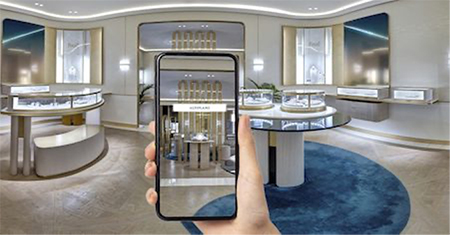
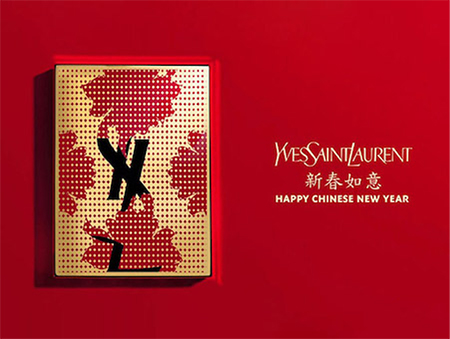
Image Source: YSL
Finally, we want to highlight a growing trend that derives from the impossibility of traveling around the world. Travel for luxury shopping disappeared however the demand for high-end products grew during 2020. According to the Deloitte report, the great fortunes worldwide have grown by 9% since the beginning of the pandemic and the turnover of the luxury retail sector has remained.
Due to the shift from global to local, this has also affected a notable shift in terms of buyer sentiment, including luxury consumers, where factors such as the country of origin can be key drivers in the affinity of the brand. That is why CEOs and CFOs should consider the local process and sales adaptations to maintain healthy balance sheets.
That implies that many luxury brands are considering opening new physical points of sale where their consumers are. Specifically, China is leading this trend and concentrates the most extensive number of luxury store openings in 2020.
China, the Place to be
According to a 2019 McKinsey study, young Chinese consumers (pre-pandemic) were expected to drive growth in the luxury fashion and accessories sector by 65% globally. And while Europe and the United States remain largely out of reach for this high-value customer segment, global smart luxury brands should bring their products to them.
The Director of Worldwide Sales and International Operations at Cegid, Sylvain Jauze states that some European retail brands are facing store closures in Europe and the United States. Meanwhile, they are looking to develop their businesses in Asia and mainland China. In addition to the omnichannel presence, Sylvain Jauze points out that physical stores are also vital for the establishment of brands that are new to the Chinese market.
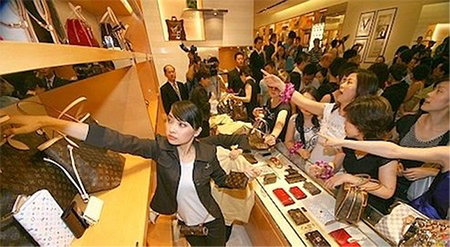
Sylvain Jauze adds that a single store is not enough to establish a reputation in a country the size of China and that investing in social media and the right influencers - people who know the market and who know how to sell luxury in that market - is as important.
In terms of business practices, operating in China is very different from operating in Europe or the United States, says Sylvain Jauze. It points out that consumers are pushing “O to O” - from online to offline - as a major trend in China, and retailers understand that large online marketplaces such as TMall (formerly Alibaba-owned Taobao Mall) constitute a vital part of the sales ecosystem. Although Chinese consumers like to shop in the store, they also rely on “fast platforms”.
Several exclusive luxury platforms, such as TMall's Luxury Pavilion, JD.com, and even WeChat, offer e-commerce storefronts for hundreds of luxury brands to mainly young and digitally-focused Chinese consumers.
Global Becomes Local
A powerful example of the convenience of the Chinese market is the recent acquisition of Shang Xia, the 10-year-old China-based brand founded by Hermès and Chinese designer Jiang Qiong Er, by the Agnelli family's Exor holding company. Although Hermès itself has been established in China since 1996, the company saw an opportunity to take advantage of Chinese crafts and techniques, Chinese traditions, and Chinese materials. Sylvain Jauze says that even though the Chinese are very focused on money and value, they are also very focused on quality, which is why Hermès as a brand works so well in China. The brand uses premium leather, makes premium handbags, and employs the best artisans. The Hermès flagship store in Guangzhou's Taikoo Hui Mall was very successful with $ 2.7 million in sales on the day it reopened after the first lockdown in 2020.
For brands that are considering the possibility of expanding in China, it is advisable to allocate a budget and make large investments in social networks and influencers to achieve the correct positioning. The fact that a luxury brand has a reputation for quality in Europe does not mean that it can enter the Chinese market in the unknown. Ensuring that locally relevant advocates understand your brand and know your target consumer requires a clear strategy and sustainable investment.
Until the current crisis is fully resolved, brands have to embrace customers where they live and to do that, they have to go where they live. The Chinese market, self-sufficient and with a growing economy, could become the new headquarters of luxury.
> back to top of page

5 Star Plus Retail Design Creates Concept for Beijing Hutong Renovation Project
August 31, 2021
Located in an ancient temple area in Beijing’s South, Fayuansi Hutong was selected to be part of a larger renovation and urban revival project. The buildings were to be stripped back into their original state and assigned new functions to attract a younger, modern crowd. 5 Star Plus Retail Design was assigned to create a mixed use commercial interior combining a shared workspace function, a coffee shop and book store into one space. Shared workspaces in combination with mixed use designs are a current social trend and very popular among millennials and younger generations. This type of space creates flexibility and a certain dynamic as it allows users to work in a coffee shop, socialize, and have lectures and events all in the same space.
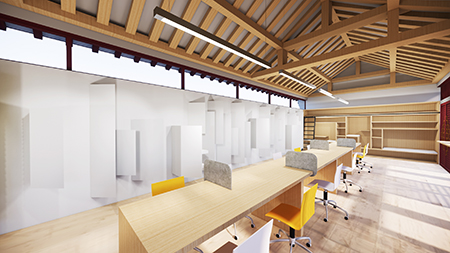
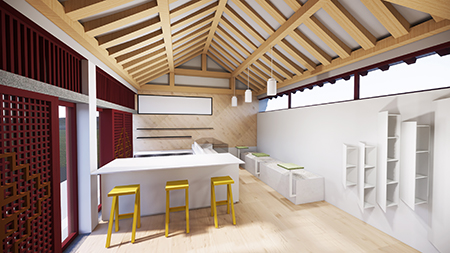
In order to contrast with the traditional structure, 5 Star Plus Retail Design created a very modern, sleek design concept based on the color white. Light wood is used to emphasize the old ceiling and a feature book shelf at the far end. As an eye catcher and to play with the length of the building, angular shelving with a triangular base was designed along the long wall. From one side, the shelves are almost invisible, closed and blend with the white wall. Seen from the other side, the elements open up and attract attention with their bright yellow color. This creates a certain dynamic as visitors walk through the space. Yellow is also a reference to the original name, Fayuansi, and history of the space.
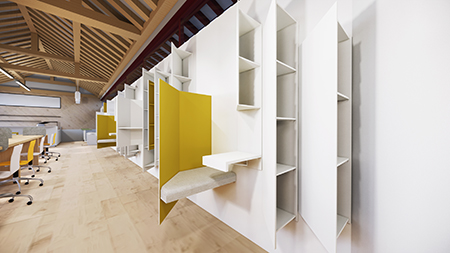
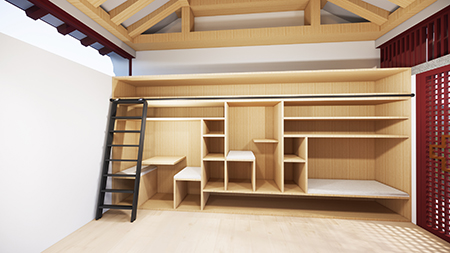
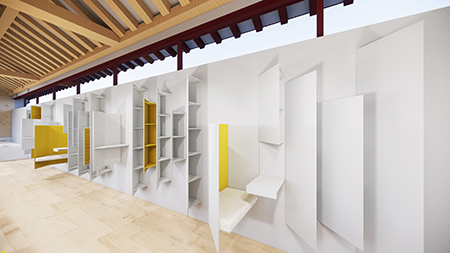 > back to top of page
> back to top of page

Resimercial Design after Covid-19
August 26, 2021
The phrase resimercial design might not sound familiar to everyone. This made-up expression is a combination of the words 'residential' and 'commercial'. The style implements elements of home design into contemporary work and retail spaces. It has a proven effect on the happiness, productivity, and general wellbeing of the employees. The reason behind that can be the overlapping of design styles from different markets that creates a combination of diverse feelings, creativity with logic and precision. The design style has received attention in retail and commercial design for a few years now. However, since Covid-19 it has gained momentum, especially in office design.
The Effect of Covid-19
But what has resimercial design have to do with Covid-19? For most office workers worldwide, the past 1,5 years meant working partially or full-time from home. These employees got used to working from the comfort of their homes, therefore convincing them to return to the office will require some creativity. They seek comfortable, inspiring spaces that create a calm sensation and can put people at ease. All these components help people to stay creative and motivated while it reduces stress and increases productivity.
Even though historically commercial spaces had more bulky and monolithic furniture, the current trend shows that companies need to satisfy the requirements of high traffic while providing a home-like atmosphere where people feel comfortable and inspired.
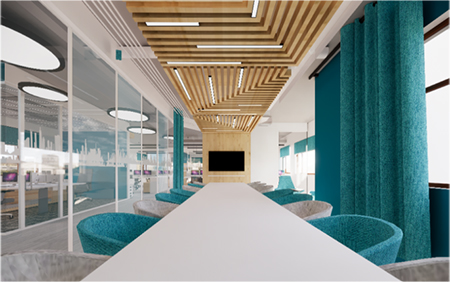
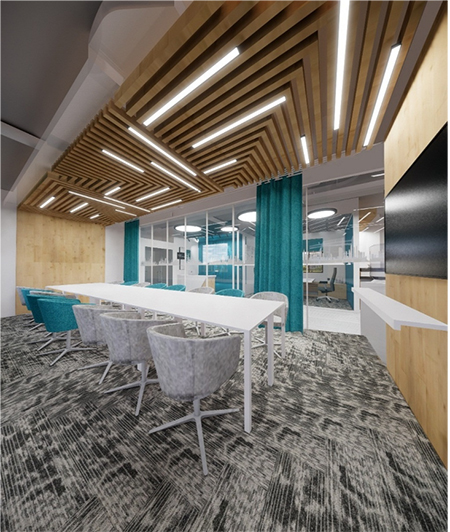
The example above is an office design that 5 Star Plus created for ISA last year. Experimenting with different materials and letting in as much natural light as possible allowed us to create a warm, welcoming atmosphere where employees feel inspired and creative.
Features of Resimercial Design
In their detailed analysis about resimercial design trends, Work Design Magazine advises that in order to reach the needed effect designers should incorporate tactile textures, materials, and accessories that evoke a sense of warmth, comfort, and familiarity. They also recommend integrating human-centric, multi-sensory elements. Comfortable seating, soft ambient lighting, flexible spaces, materials with a handcrafted feel, and residential-inspired accessories like rugs and lamps help to establish the desired atmosphere.
An important point to consider is that resimercial design should look authentic while layering the space with familiar, home-feel elements. The result should be aligned with the brand’s culture and design guidelines otherwise, it might look frivolous. The main idea is to make employees feel more secure, valued, and connected.
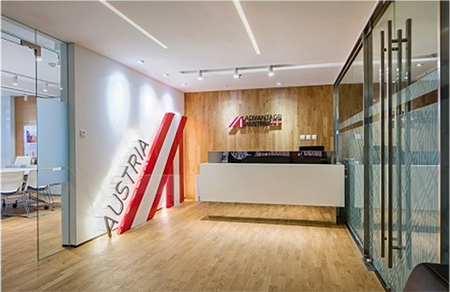
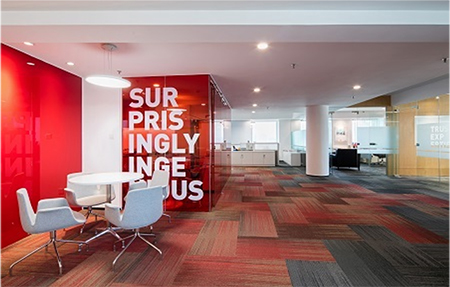
When designing the office for Advantage Austria and Austrian National Tourist Office, two of our objectives were to create an identity and achieve a powerful professional impact for representative functions. In order to make employees feel comfortable and motivated, we optimized the layout for improved work efficiency, opened up the space for a maximum of daylight, and created a beautiful branded work environment.
The 3 key aspects of resimercial design are the following:
- ?Materiality: The mix of materials, colors, and surfaces can help make an office more welcoming and feel less like a sterile corporate environment. When it comes to lighting, traditional overhead fluorescent lights can be too harsh and make the space feel washed out. On the contrary, accent lighting can have a positive influence on employees’ wellbeing.
- ?Natural Elements: Bring in the outdoor world and embrace more plants or elements like wood that is reminiscent of nature. Including as much natural light and fresh air as possible is a great way to connect people with the outdoors and nature.
- ?Flexibility: Employees nowadays engage in several different types of work activities during their work time which means that they need a variety of flexible spaces. One very practical benefit of resimercial design is that you can mix-and-match furniture, just as in your home.
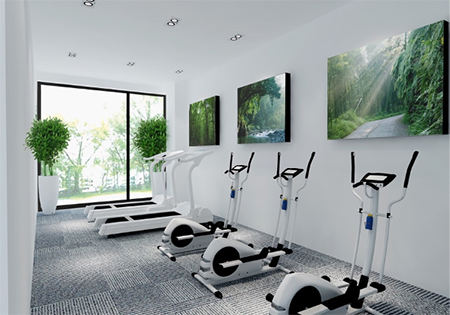
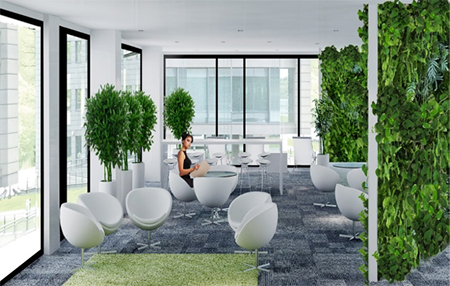
The office design concept for NuCloud’s office in Poland holds all three key aspects that are the main characteristics of resimercial design. The office is in direct contact with nature, has multipurpose areas, and the wide range of materials creates a home feel and comfortable working environment.
Future of Resimercial Design
Last year has changed our perception of work environments. The implementation of resimercial design that provides comfort, familiarity, and informality increases our motivation for leaving the safety of our homes each day. Considering all these changes, as well as the growth of the freelance economy, and complex expectations of Millennials and GenZ, the only way forward is to plan for flexible working solutions and creative interior design concepts that include areas for working relaxing, eating, and socializing.
> back to top of page

How Concept Stores Strengthen the Brand
July 29, 2021
Concept stores have become one of the most prominent tools in the past years to accelerate brand growth and boost awareness. Traditionally these stores were a natural extension to the brand by presenting a lifestyle feeling and inspiring customers to turn that lifestyle into a reality. Nowadays, concept stores have often become a brand experiment with spaces that stand out from the retail portfolio and reinvent the brand. Partially, this is the answer from brands to the ever-changing shopping habits of consumers. In this article we will introduce the idea behind concept stores, how they can be an integrated as part of the retail strategy and present some examples from our previous projects.
How To Define the ‘Concept’ of Concept Stores?
A concept store is a retail experience that seeks to engage with customers through a branded environment with excellent service and storytelling. Customers can not only learn about the products but they are also invited onto a journey. They can see what the brand can offer, what the brand values are, and what those values stand for. When done correctly, concept stores can bring new ideas to life while creating an inspiring customer journey and shopping experience. They can appear in many different sizes, formats, and styles whether it is with the integration of an immersive art display, unique design, theatre, cinema, events, cafés or, the application of AI.
Communication is the key for the brand as they have to communicate their values through this medium. Usually, there is an objective at the center of the concept store, like sustainability, food & drink, design, games, sports, or creativity. That serves as the heart of the message and is used to create a strong association with the brand. It can produce a competitive advantage and differentiate the brand from the competitors or even from earlier values.
When it comes to luxury brands, creating an engaging and immersive customer experience is even more important because consumer expectations are higher than in any other sector. In-store customer experience, service, home delivery, and the complete online journey must be perfect and exceed customers’ expectations.
Our first example is a store identity design concept for both flagship stores and shop-in-shops in China for the Finnish brand Halti. The space had to subtly showcase the brand’s Scandinavian origins and long history. To achieve that, a central brand wall was created to tell the story of Halti origins. Inside the flagship store, a suspended ceiling with backlit topographic lines was placed since this topographic imagery is an essential part of Halti’s brand identity.
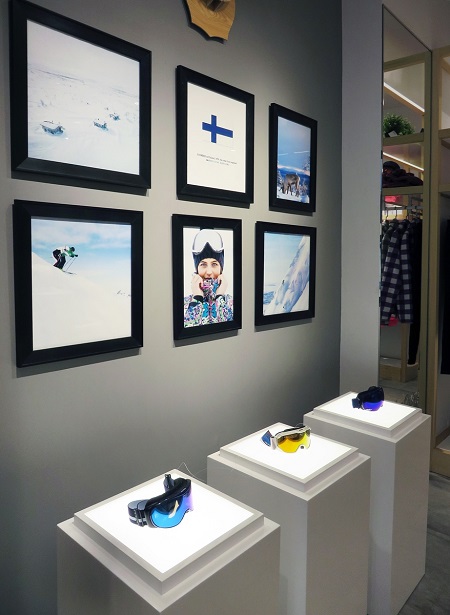
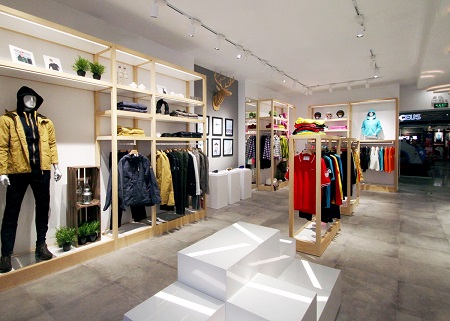
Another example from China is the KJUS flagship store where we used a completely different style and approach compared to the existing stores in Europe and the US. Originally, KJUS stores use a large amount of wood but for China, we wanted to create a more modern, technological feel. We did apply wood on a smaller scale like back panels and high-rack equipment help to draw a connection to the Swiss-born brand. Another important aspect to create a luxurious touch was to ensure that there was enough space in the store and display only a selected amount of SKUs. To feature the key products, collections, and their characteristics we used special lighting effects and technological advancements. The flagship store includes multiple areas such as a VIP lounge area serving high-quality coffee, a display space, storage, fitting rooms, and more.
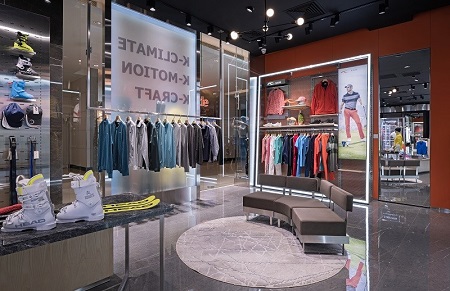
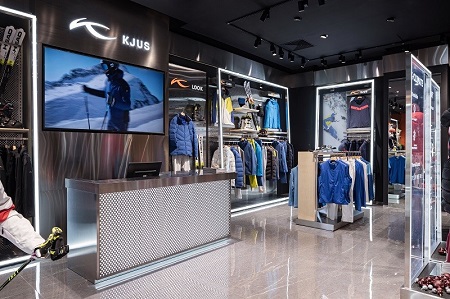
What Speaks Against Concept Stores?
With the rise of online sales and the following decline of brick-and-mortar stores, brands face a significant challenge: how to engage with the most demanding generation of consumers, how to use their physical stores to support their online sales, and how to build loyalty.
From a traditional sales-driven point of view, since concept stores present a smaller product range (this is, a smaller amount of SKUs), they generate less direct sales transactions and income. It is also difficult to measure the ROI. How do you prove that the ‘concept’ is working if sales aren’t higher? Brands require testing following the concept store’s opening to see if anything has changed the perceptions of the brand, which adds an extra cost to the project.
The Connection Between Online and Offline, and the Halo Effect
A well-known approach is that online and offline must blend into one, offering an on-brand experience wherever the customer is. The brand has to make sure that they have enough engagement touchpoints with their customers online and offline.
According to a study by the International Council of Shopping Centres (ICSC) from a few years ago, there is an interaction between online and offline channels, which is called ‘The Halo Effect'. The key outcome of the study was the realization that bricks-and-mortar stores serve as the hub of a brand feeding and supporting the rest of the online channels. They found out that every time a new store opens, its brand’s website traffic increases by 37%, and when a store closes, website traffic falls accordingly. That shows how strong the connection between online and offline sales is.
Our third example is Hanna Trachten, an Austrian traditional clothing brand. We created a store design concept for their three-story flagship store in Salzburg. Providing a journey of brand discovery, its heritage, and local nature was the key requirement when developing the retail design concept. While the brand is positioned in a traditional retail sector, the fabrics are innovative, the in-house designed patterns are colorful, and the cuts are modern and stylish. The result is a concept store that is welcoming, elegant and has a modern feel to it.
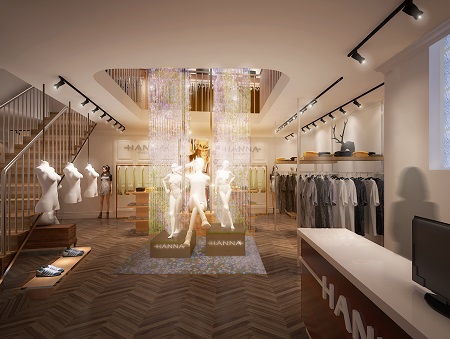
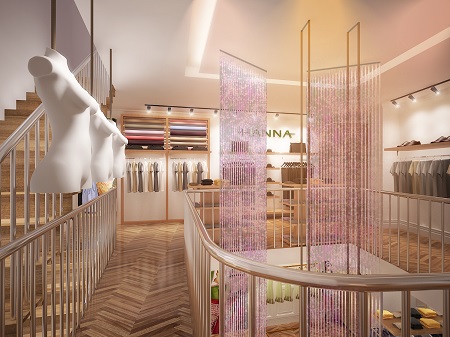
Our last example is a design concept that we created for H?gl for the Chinese market. The design was based on the brand identity - feminine, high quality, and comfortable, as well as the incorporation of the white and red brand colors. The design concept also fulfills the targeted positioning within the Chinese market, defined as stylish, chic, cool, sexy, and powerful. The developed concept identity design was also used for the design for flagship stores, boutiques, and shop-in-shops.
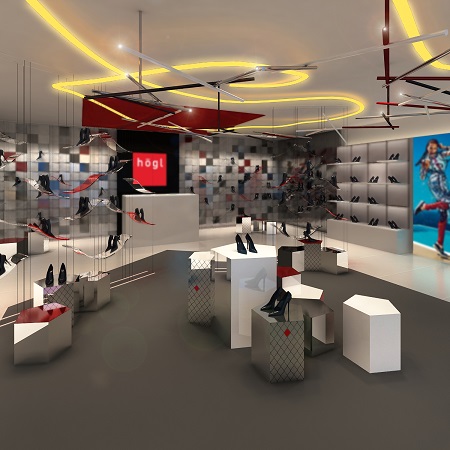
When looking at the advantages and difficulties of concept stores, it’s safe to say that they have an essential role in the retail universe and still have a lot of potential when it comes to engaging, educating, and entertaining their visitors. Concept stores provide customers with the opportunity to have an experience that they cannot have anywhere else, and particularly not online.
> back to top of page

Psychology of Colors in Restaurant Design
July 27, 2021
Choosing the perfect color for a bar or restaurant is an essential step during the interior design process. It is crucial to keep in mind what our goal is, what type of space we would like to create, what the guests should think, how they should feel, and what actions we want them to take while they are dining at the establishment. As discussed in our most recent 'Interior Design Principles' series, designers should pay careful attention when applying the different principles and elements of design. Colors are equally important as they play a significant role in influencing customer perception and purchase decisions.
Studies have demonstrated that colors can have a psychological effect on customers, making them subconsciously react to what they see, whether it is their food choices or the amount of money they spend at the restaurant. Different colors stimulate different emotions and can impact feelings of hunger, thirst, and comfort in people.
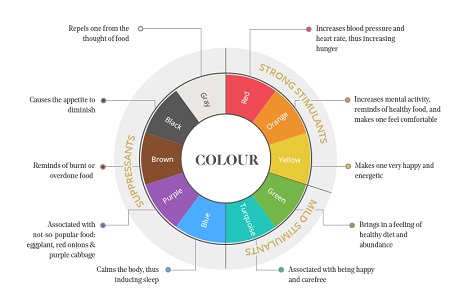
High-End Restaurants
Green is and always has been the color to be associated with nature, and it creates a relaxed atmosphere in the restaurant. It can decrease anxiety and can make visitors happier. The color scheme of green makes customers feel comfortable and encourages them to stay at the restaurant for a while, which is often why high-end dining restaurants incorporate these colors into their design. Another aspect of painting the restaurant green or using green-colored decor is that the color is associated with fresh produce and healthy foods and connected with organic, healthy, and quality life.
Using green with different shades of brown creates an earthy, natural color scheme. Restaurants with a healthy food focus are recommended to use these colors to create a tranquil and relaxing environment for prospective customers. There can be a calm tone of green on their walls with a hint of woody brown to complement the colors. It is quite common to see potted plants, either hanging or suitably placed in eateries as they can make customers feel more relaxed and influence an increase in their appetite.
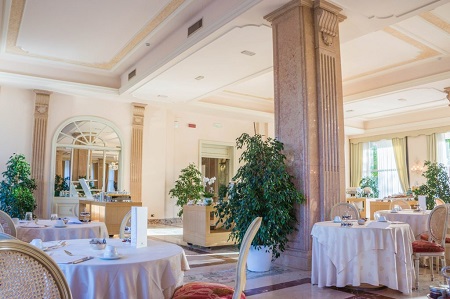
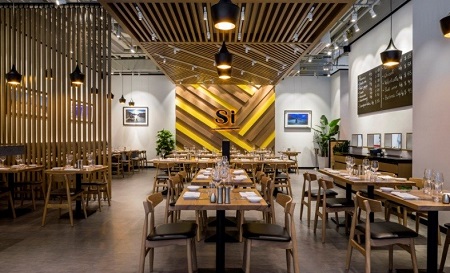
Bars and Seafood Restaurants
Since blue and purple are suppressants and evoke a feeling of thirst, they are best to use in drinking environments like bars. The colors blue and purple are rarely used in restaurants because they can decrease customers' appetite since they are often associated with toxins or foods that are not enjoyed like eggplant, red onions. While it is best to avoid blues and purples in restaurant interiors, these two colors typically work well in seafood-focused restaurants.
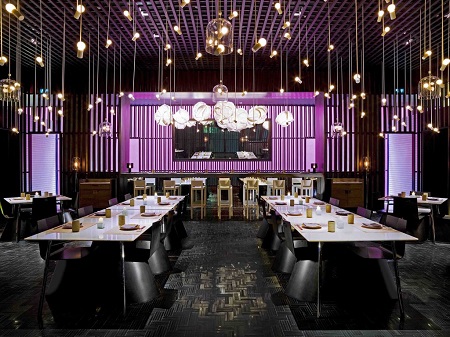
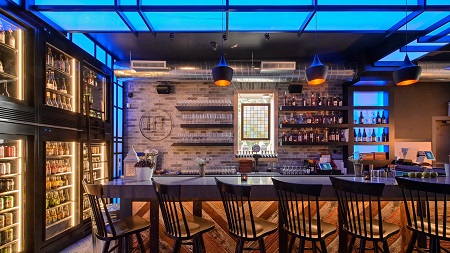
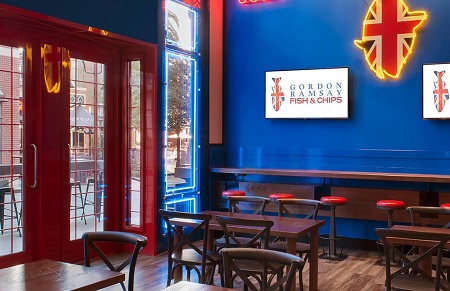
Fast Food Color Scheme
Bold, primary colors such as red and yellow are typically used for casual dining restaurants or fast food establishments as they encourage quick turnover. That stems from the psychology that red and yellow colors elevate the heart rate and blood pressure of the customers and create a new emotion, which makes them eat fast and leave. Most fast-food restaurants have either red or yellow logos, walls, or have accessories such as cups and menus of the same color displayed.
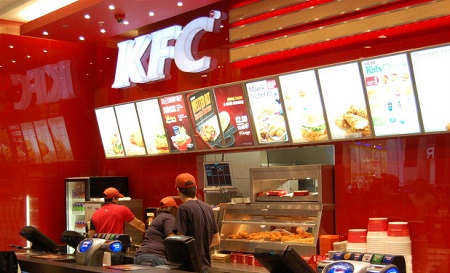
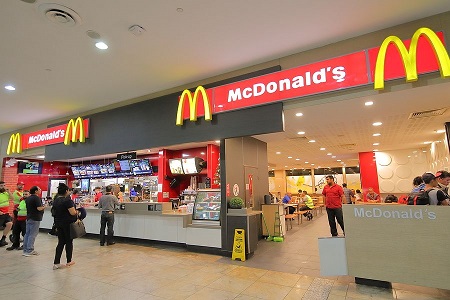
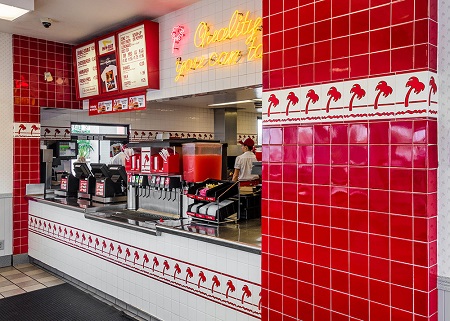
We should never forget that what we see influences what we think, and eventually what we do. Color is one of the most significant factors in the elements of interior design. But just like with every other aspect of interior design, choosing the perfect color for a restaurant is never 'black and white'. Finding the balance and the most suitable combination is the essence of it. Restaurant colors should be chosen with care and they should be in sync with the restaurant’s theme and concept while taking their impact on customers into consideration.
> back to top of page

ICCSD Event Highlights: Applying a User-Centric Approach When Designing for Future Society
July 23, 2021
On July 6th, 2021, our Managing Director, Barbara Seidelmann gave a presentation at the International Center for Creativity and Sustainable Development (ICCSD), where she spoke on the topic of “Applying a User-Centric Approach When Designing for Future Society.”
Originally from Vienna, Austria, Barbara has been working in China since 2005. Her background includes experience in various marketing, strategy, and luxury retail management functions, as well as a decade of designing commercial architecture. At 5 Star Plus Retail Design, she advises brands on the specifics of the Chinese retail market, design of store concepts, and marketing and brand strategies. With many years of experience and amazing accomplishments, Barbara had the pleasure of speaking at the ICCSD event.
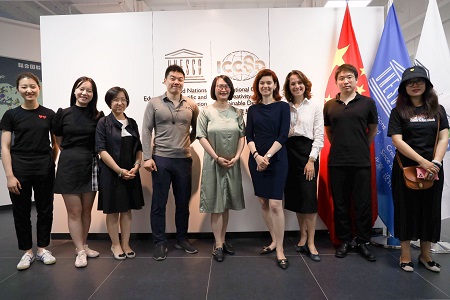
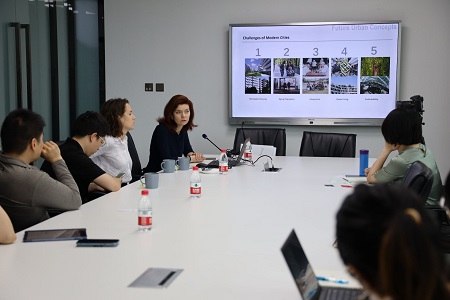
The event was hosted by ICCSD, the world’s first UNESCO Category 2 Center founded by the People's Government of Beijing Municipality and UNESCO in 2017. Throughout the presentation, she touched on various topics including the importance of user-centered design, the interaction between the user, the environment, and society, the customer journey mapping, and understanding the society.


Design differs from Art in that it needs to fulfill both functional and aesthetic needs. As designers, we need to deeply understand the user and their known and unknown requirements for using a space or product. Only in this way, and by observing the changes in society and therefore changes in the usage of architectural environments, we can successfully design for the future. By applying a user-centric, integrated approach, design and architecture become tools that positively influence and better the life of society.

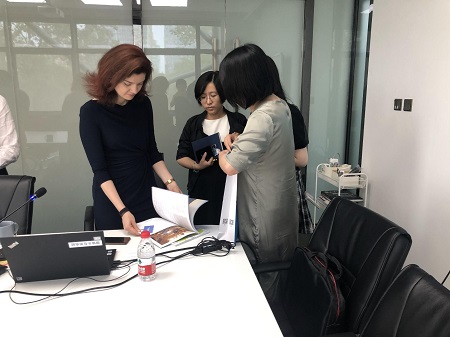
Below were some of the key concepts that were covered:
1. Purpose of Future Architecture & Design
- ● Design not as “the planning of a house”, but rather the planning for the best possible life of a person. Product versus integrated concept including lifestyle and health aspects
- ● Improvement of life, physical and mental health, inspiration, and better energy rather than just “functional spaces”
2. New Approach – Challenge Everything
- ● Challenge all previous approaches on a concept and detail level, start from zero to address each issue in the best possible way
- ● Invest time into in-depth research and development of the concept rather than quick design and build
3. Understanding is Key
- ● Understanding current and upcoming underlying problems of particular groups in society, as well as their future needs, is important
- ● This understanding can only be developed by continuous research and observation, engaging those groups in conversations and possibly in the design process
> back to top of page

Contrast and Details
5 Star Plus Series: Design Principles in Store Design
June 30, 2021
We have come to our last article on the Retail Design Principles; Contrast and Details. In the previous three articles, we introduced eight topics as the basic elements of interior design. If you missed them, we suggest reading them to fill yourself in:
- ?Harmony & Unity, Gestalt, and Space
- ?Dominance, Hierarchy, and Balance
- ?Scale & Proportion, Rhythm & Repetition
Contrast
Contrast is not just an aesthetic tool to make things look nicer, prettier, it is also highly functional. The definition for it is when two elements with opposing characteristics are placed together. It can be achieved easily when these two things are different regarding a common principle or aspect such as color, size, texture, style, and the use of positive and negative spaces. It has a psychological effect on people since the existence of contrast is why we can see and identify things.
The level of contrast can vary from subtle differences to extreme ones. A high level of contrast may appear aggressive, bold, dynamic, energetic, or attention-seeking. On the other hand, a low level may create the opposite effect, a more static, blended, and more peaceful environment. The appropriate level of contrast depends on the desired effect or impact. The chosen level of contrast affects how things appear; some items will be contrasted while others won’t be within one composition.
We can differentiate different types of contrasts in interior design:
- ?masculine versus feminine
- ?geometric versus organic
- ?plain versus ornate
- ?small versus big
- ?dull versus bright
- ?dark versus light
- ?old versus new
- ?textured versus smooth
- ?light versus heavy
- ?fragile versus sturdy
The whole design concept for the Swiss National Pavilion evoked around contrast. The objective was to represent both traditional and modern aspects of Switzerland. For that 5 Star Plus Retail Design used various types of contrast. Playing with contrasting colors (white and red) and materials (red metal structure and natural wood) helped to create the desired feeling. The back wall of the bar and chalet element evoked a slightly traditional feel, the enwrapping counter desk was designed to set a modern contrast in white with LED lighting accents.



Image Source: Photos are the courtesy of Swiss Business Hub China
Details
Details are one of the most important interior design principles. It means that the designer pays attention to the project's smallest details in the interior. Everything from the material choice to light switches, the handles on the cupboards, lighting fixtures, wall finishing, and other decorative elements are all classified as details in the interior. Details should be in line with the overall design concept, the artistic inspiration, and the positioning of the brand. It also serves as a display of the quality of the project.
Details enhance the overall theme of the space and need to be just right. Small details might not have a huge impact by themselves but when they are grouped together, they are the perfect tool for composing a perfectly-finished retail environment. Small details should not be overlooked as they can create a sensation of unfinished space, where people feel that something is lacking.
For Marja Kurki, details were one of the most vital aspects. Because of the floor plan restrictions and the absence of walls, they needed unique displays to grab visitors' attention. Modular structures, circular tables make the product representation more attractive. Artificial marble and bronze textures were used to help shift the store design from a more traditional to a lighter, modern one. The “Scarves Tree” fixture is aimed not only to display the brand’s most recent pieces but also to enforce their statement – “Fashion accessories made of natural materials”.


The interior design principles that we introduced in this series are the base and foundation of every design project. Every great interior designer will know how to incorporate some or all of these to enforce the message and strengthen the brand. We hope you have enjoyed our glimpse into the principles of interior design. Using these guidelines in a precise yet creative way will give places a character and identity.
> back to top of page

Innovative Growth in the COVID-era
5 Star Plus Series: Customer Centric Strategy
June 29, 2021
In one of the world’s fastest moving markets, the ability to quickly adapt strategy is crucial for continued growth in China. The impacts of the outbreak have led to a shift in consumer values for Chinese consumers. In order for a brand to successfully adapt its strategy, it needs to know and understand its consumers.
Brands who were successful at staying in-touch with their customer’s changing values, were able to adapt their strategies quickly, thus enabling them to recover faster in China’s market compared to those that didn’t. Customer-centric elements that were adapted by brands focused on creating meaningful engagement with their consumers both online and offline, creating a stronger overall omni-channel strategy.

Huawei serves as a great example of a domestic brand that was able to create success in China over their other operating markets. Continuous innovation and adaptation of their strategy to cope with the difficulties in China’s market, leading them to surpass their other competitors to become one of the top selling brands in the world despite challenges brought on by the global pandemic.Their strategy focused on three key elements:
- ? Consumer Engagement
- ? Offline expansion
- ? Innovation
Consumer Engagement
Engaging consumers in a time of social distancing and physical restrictions proved to be no challenge for Huawei. Through their philosophy driven by continuous innovation and partnerships used to expand the knowledge and capabilities of others, Huawei focused its efforts on hosting events virtually.

Image Source: Huawei
Throughout 2020, the brand hosted multiple events online for selected attendees and audiences. Most of the events that took place were held in a conference style format, with a few others featuring product launches designed to create excitement for the new technology. Other events featured notable KOLs, targeted toward a younger Chinese audience to showcase new features of products.
Offline Expansion
Given the constraints presented by the pandemic, it may come as a surprise that Huawei actually opened its largest flagship store in the world in 2020. Right in the heart of the city of Shanghai sits a 5000sqm retail space on East Nanjing Road. The new flagship store overshadows the likes of Apple and other tech flagship stores on the same road. The multi-story space provides ample room for consumer engagement and interaction through an on-site gym, kitchen, and product display areas utilizing the technology products of Huawei.


Image Source: Huawei
In Wuhan, they also opened a pop-up store with an eye-catching focal point that featured a robotic arm sorting products. Guests could interact with the robot by purchasing goods at the store. While the use of robotics is not as exciting to consumers as it used to be, the pop-up store served as a great way to engage consumers in a non-physical way.

Image Source: Huawei
Innovation
Huawei continually creates engagement with their consumers by providing innovative new products and technology. Despite the challenges brought on by the pandemic and other political factors, the brand saw positive growth in 2020. Huawei was also named the 6th most innovative company in the world. They shared their “All-Scenario AI Life strategy” in September 2020, which focuses on providing products most centered around the user’s experience.

New products such as their latest smart watch “Huawei Smart Fit” can switch between different specified workout modes to ensure the health metrics are more accurately tracked during the user’s workout. Their new watch serves as a small example of how the brand seeks to continue providing their customers with a personalized experience best suited to their lifestyle needs.
Results
By focusing on driving growth in their home market through events, offline expansion, and innovation, Huawei was able to create growth during a year filled with hardships. Keeping a fine-tuned strategy that focuses on providing their consumers with lifestyle centric products and services, allowed them to strengthen the relationship with their customers.
Looking forward, it’s apparent that a customer-centric driven strategy is an important part of a successful retail strategy for brands. The true winners are those who can act quickly and focus on the immediate needs of their consumers that continually change. Having a timely response, connecting with consumers at all parts of their shopping journey, and providing them with an experience that matches the quality of products provided.
> back to top of page

Scale & Proportion, Rhythm & Repetition
5 Star Plus Series: Design Principles in Store Design
June 18, 2021
Our previous Design Principles in Store Design blog post introduced the principles of design with a focus on dominance, hierarchy, and balance. We discussed how to create a focal point with drama, how-to guide the customers’ eyes from one element to another, and how to create a visually pleasing and balanced space. This post will focus on the importance of scale, proportion, rhythm and repetition.
Scale & Proportion
Scale refers to the relationship between two or more objects when one of these objects has a commonly known size. On the contrary, proportion relates to the general size of two objects without any information about their actual sizes. This makes scale more absolute and proportion a more relative element. The latter one requires the designer to understand the interactions between objects within a 3-dimensional space. Changing the proportion can alter the way our spaces look and feel, and also affect other design principles like balance, hierarchy and dominance.
The following aspects affect the design of the most appropriate scale or proportion of objects:
- ?Sufficient breathing space
- ?Balanced lines and areas within the space
- ?Golden ratio: Objects that contain this ratio are thought to be more pleasing aesthetically, more beautiful and perfect.
Designers can always play with the size and scale of objects to create some fun, but in the end, they have to ensure that the space looks balanced.

For the store design concept development of Pureones, scale and proportion was an important consideration. The size and proportion of all interior fixtures was balanced carefully in order to create harmony and achieve the required “flowing” effect inspired by Chinese rice fields.

Simply Italian had a six meters high space available. In order to take advantage of this and emphasize the feeling of space, we created strong vertical lines and a central ceiling structure. These are the defining elements in the space that set the standard in terms of scale and proportion for all other furniture and fixtures.
Rhythm & Repetition
Rhythm is considered a pattern in movement. It is utilized to guide the customers’ eyes in moving around within a space in an organized manner. This principle helps introduces order, interest and focus while leading people’s eyes. Rhythm also plays a huge role in the way customers perceive a store interior, both in terms of aesthetic and in terms of functionality.
An important point to keep in mind is that the design principles don’t work alone. When designers aim to achieve balance, they determine the perfect combination of contrast, rhythm and scale for the project. All principles are tightly interrelated.
Repetition creates visual continuity and ties different aspects of a design concept together. Complex looks can be simplified with repetition up to ‘maximum sameness/minimum difference’. The simplest way to reach rhythm is by applying repetition of design elements (color, texture and pattern, scale and proportion). It also gives structure within a design concept due to the consistency of the design elements used. Repetition does not only refer to placing the same object, pattern, color or texture again at several locations in a space, but more importantly, design elements are either designed or selected in such a way that one dimensions (color, pattern, shape, size, style or texture) matches with the rest of the design concept. In this way, all elements are tied together and make one whole. Certain patterns, colors, or textures can be found repeating themselves but with some sort of variation within a space when one looks closely.
Rhythm and repetition help to create a smooth transition for the customers’ eyes. The design concept looks “whole”, well tied together and visually pleasing, while providing enough visual interest and variety.

The design concept for Austrian shoe brand Hoegl shows how rhythm and repetition and be applied within an interior space. Inspired by the brand’s logo, the square is an integral basic shape that is repeated in different sizes and patterns, with different textures and materials throughout the store. A variation of it is the pentagon shape as a further abstraction that creates further dynamic and interest.

At The Mission restaurant in Beijing, wooden and industrial accents were repeated throughout the space for a unified, slightly rustic yet modern look. Repeating these materials, though varied and not exactly the same, ties together the design concept and creates visual interest.
Although understanding the ideas behind scale and proportion, rhythm and repetition is important, a successful retail design concept requires the careful consideration of every design principle. The interaction and relationship between elements will effectively deliver the brand’s message and effect the feel of a space. In our next and final design principles article, we will introduce Contrast and Details.
> back to top of page

5 Star Plus Retail Design Designs Swiss National Pavilion at the First Hainan Expo (China International Consumer Products Expo)
May 26, 2021
The first ever China International Consumer Products Expo CICPE (Hainan Expo) presented Switzerland as the exclusive official Guest Country of Honor. 5 Star Plus Retail Design was assigned to design and execute the 200m2 Swiss National Pavilion which showcased 26 Swiss companies with more than 40 brands.
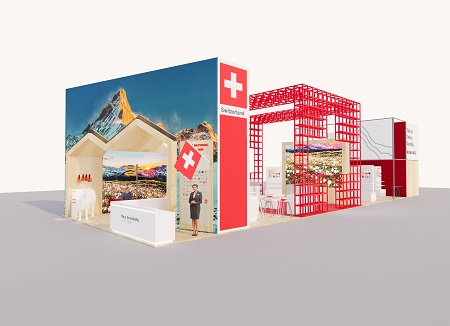
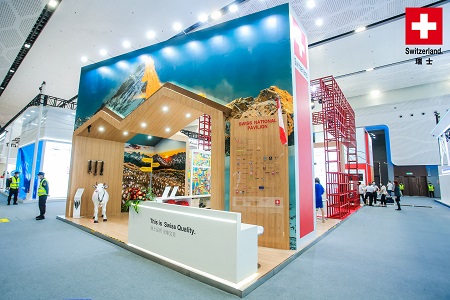
Image Source: Photos are the courtesy of Swiss Business Hub China
The objective of the design concept for the exhibition pavilion was to represent both traditional and modern aspects of Switzerland. Based on the unique, elongated floor plan, the space was divided into two main areas (animation area, exhibitor area) integrating three cubes with different functions and unique architectural features. The whole front space of the pavilion was planned as an experience resp. animation area, where visitors could experience different facets of Switzerland.
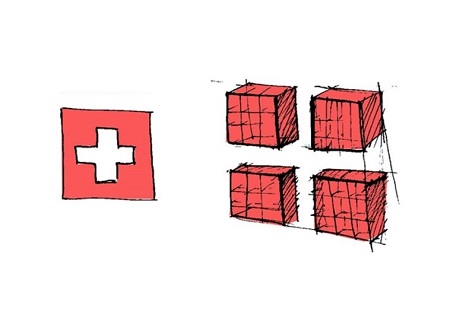
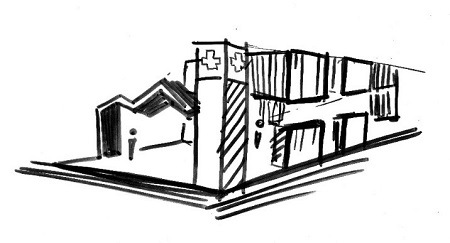
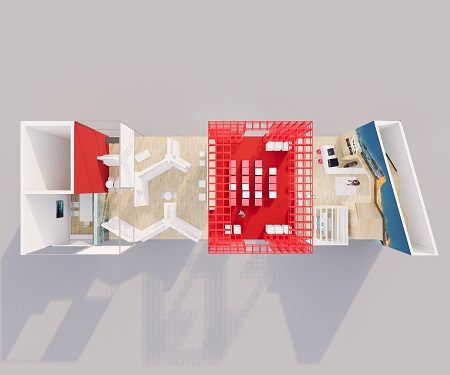
From far away, visitors were “greeted” and attracted towards the space by a beautiful Swiss Alpine landscape and a modern interpretation of wooden chalets which are found on Swiss mountain tops. When coming closer, people were encouraged to write a message of Sino-Swiss friendship onto a Swiss white cow that was branded with a projected Swiss flag logo. The cow sculpture and wall besides were decorated with original Swiss cow bells. In addition to the animal being a well-recognized icon of Switzerland, 2021 is also the Year of the Cow in China and is said to bring stability and prosperity. Directly behind, a photo backdrop with another beautiful Swiss landscape including a 3D bench and sign post invited visitors to sit down and take selfies.
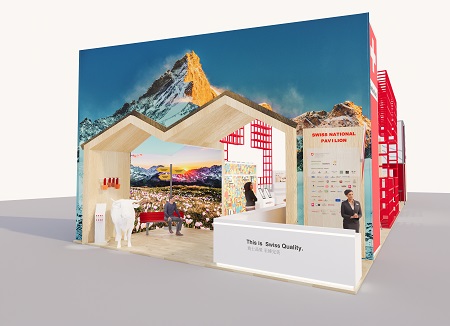
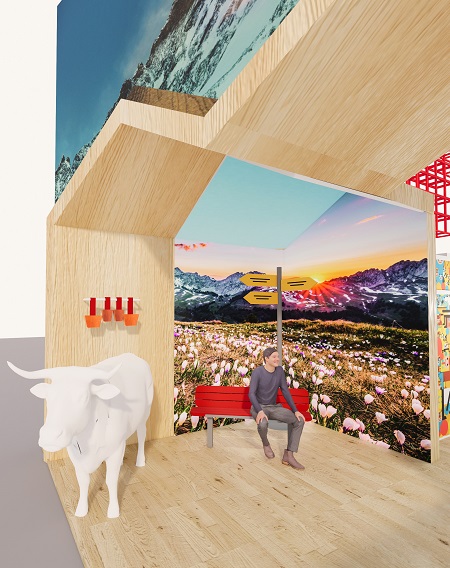
The right side of the entrance of the pavilion was designed as a welcome area with a large welcome desk, Swiss flag and logos of the exhibiting Swiss brands. Flowing in a “C”-shape, the desk turned into a bar area below the chalet structure and an open kitchen space farther behind. While the back wall of the bar and chalet element evoked a slightly traditional feel, the enwrapping counter desk was designed to set a modern contrast in white with LED lighting accents. With the support of Swiss brands, the Swiss bar and kitchen area were created to become lively interaction points where food and beverage tastings could take place.
Further inside the Swiss National Pavilion, a pop-up store of Swatch created excitement. Six art canvases were designed by artists from Switzerland and China specifically for this event and visitors could select a part of a canvas and custom-print in order to create their own unique Swatch watch.
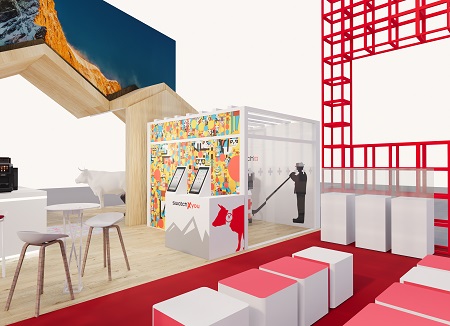

Image Source: Photos are the courtesy of Swiss Business Hub China
The core architectural design element of the exhibition pavilion was the event space enclosed by a custom-designed, 6 meters tall and abstract red metal structure, the “Swiss Cross Cube”, which was inspired by the Swiss national flag. From far away and the side alleys, people were greeted by the huge red sculpture with a cut out cross which allowed visitors to see inside the space. Transparency throughout the pavilion was a key consideration to remove psychological barriers and ensure that visitors can see what is happening inside different areas.
While most of the pavilion was finished with a beautiful wooden flooring, the event space was carpeted in red and supported by a high tech light & sound system and an LED screen to create dynamic and facilitate different event formats ranging from an opening ceremony to B2B meetings, media events, brand presentations and live streaming. This space was designed to be the most modern and dynamic part of the pavilion and to attract and retain both media and visitors.
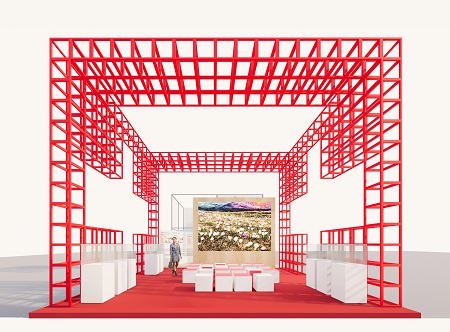
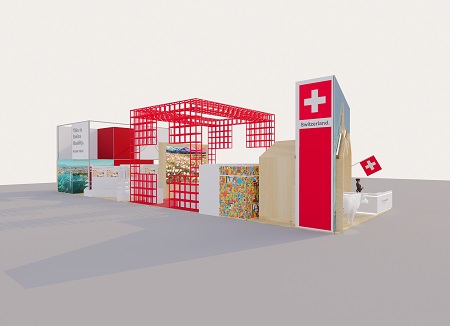
The third cube behind the event space was designed as exhibitor area. 26 Swiss top companies from areas such as cosmetics, watches, luxury, art, fashion, home appliances, chocolate and beverages all took part in the event and exhibited their companies and products. Architecturally, this part of the pavilion was inspired by well-known typical Swiss mid-century architecture as created by Le Corbusier and Peter Zumthor. Cubic shapes, clean and minimalist lines, as well as large open glass and branding surfaces were features of this part of the exhibition stand design. In strategic areas, the event’s slogan “This is Swiss Quality. 瑞士品质 至臻完美”, the logo displaying the Swiss national flag, and stylized mountain shapes were applied for a modern and branded effect.
In addition to branding and storytelling aspects, much emphasis was given to visibility of the Swiss design from different sides as well as a certain openness to draw people inside and through the various areas. The color scheme of the pavilion included white, red, and some light grey accents. Key materials chosen for the project included natural wood for floor, chalet and selected branding areas, power coated clean surfaces for most of the furniture, steel and carpet in the event area, and branded glass shells for the VIP room and Swatch pop-up store.
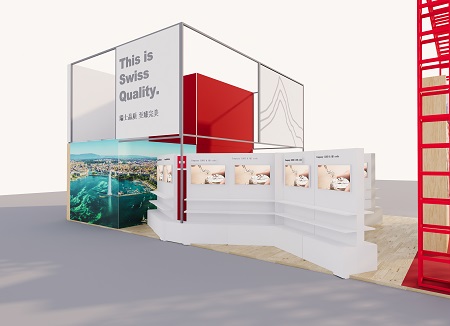
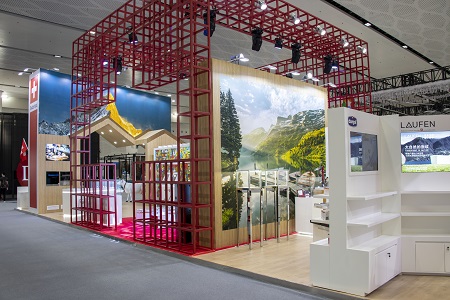
Overall, it was an honor for 5 Star Plus Retail Design to take part in designing a national pavilion at the first-ever Hainan Exhibition. The four-day exhibition had more than 3,500 participating companies from 70 different countries and attracted more than 20,000 professional buyers. With tourism and duty free shopping increasing in Hainan province, the result of the Hainan Exhibition could be the first of many to come.
> back to top of page

Sustainable Trends in Retail Design
April 25, 2021
The month of April marks the annual celebration of Earth Day. After an unexpected year of social challenges, it was surprising to see the positive impact it had on the global environment. With a reduction of more than 7% globally in CO2 emissions due to stay at home orders issued by governments around the world, factories saw a decrease in their production levels which adversely created a positive impact on pollution levels, drastically improving the overall air quality in major cities around the world including, Beijing, Paris, and Mumbai among others. Seeing such a significant improvement in a matter of weeks proves that sustainable measures taken by retailers can also prove to have a positive impact on achieving a better environmental standard globally.
While it is quite obvious that the redesign of products utilizing sustainable materials is the first step that brands typically take towards higher environmental standards, sustainable retail design is another important factor that can have an impact on being more environmentally conscious as a brand.
Key design elements of sustainable retail design include the following:
- ? LED & Natural lighting
- ? Reclaimed materials
- ? Recycled materials
- ? Store layout and schematic design
- ? Technology integration
Every market has different standards of sustainability which are strongly influenced by governmental policy. These measures aren’t anything super new to the retail design world. One noticeable difference is an increased focus on opening stores with LEED certification. In many markets around the world, having a LEED certification, shows that a brand continually meets the environmental standards and regulations within that market. LEED stands for Leadership in Energy and Environmental Design which provides different levels of certification requirements depending on the type of building, construction regulations, material specifications, and local regulations into account throughout the construction and design process.
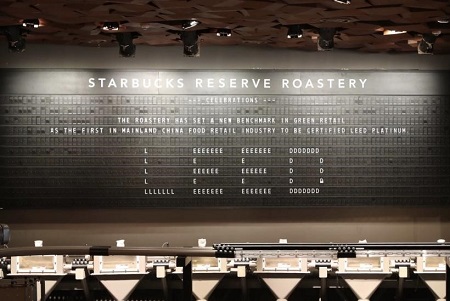
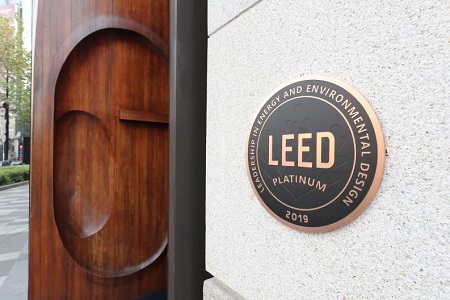
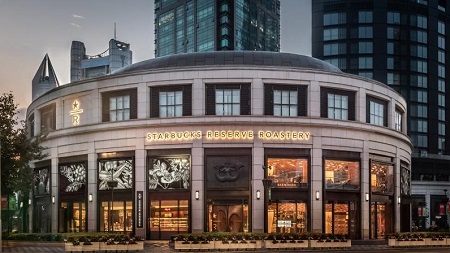
"Startbucks pledged to open 10,000 LEED Certified stores globally by 2025"
In addition to having a LEED certification, brands need to consider how they can achieve environmentally sustainable retail designs while also ensuring customer safety during their shopping experience. During the pandemic there were a few different design trends that became more common practice for retail brands to follow, most of which are expected to become a new standard for future retail developments. Some things brands implemented included socially distanced experiences, additional partitions between customers, and disinfectant methods of different products and in-store surfaces.
A thoughtful step that retail brands in China can take to become more sustainable and reduce waste can also include the production of pop-up stores, exhibition stands and furniture for events for the long term, including the storage in warehouses while not in use. While such practices are the standard in Europe and the US, these practices are not only uncommon but also completely unpractical in China. It is typically cheaper to reproduce new exhibition stand designs than to reuse existing ones in China. This is due to a combination of factors including, a less skilled workforce in the exhibition production sector as well as the use of different materials available and regulations from exhibition organizers. Other factors of added costs for reuse of materials fees transportation and warehouse costs and adverse climate conditions which damage wooden furniture over time.
However, at 5 Star Plus Retail Design, we have started to receive increasing inquiries for the design and production of temporary retail space concepts that are planned to be used in the long term at different times and locations. For some of our clients, quality and sustainability have already become more important that cost considerations only.
Additional technology incorporation provides consumers with an experience without physically interacting with others and products. The flexibility of technology allows the brand to continually adjust the products customers interact with without the reconstruction of an existing space. Small format retail stores continued to grow in popularity due the limitations for large numbers of people. It made more sense for some brands to utilize a smaller space more experienced focused for consumers. With a smaller retail space available, product selections must be prioritized based on the demand of that location. Layout and customer flow is another aspect that must be considered in the overall design. Keeping a small-format retail store reduces the level of energy and waste produced by the outlet when compared to a much larger retail space. The reduction in operational cost for a smaller store is truly a sustainable benefit to the brand.
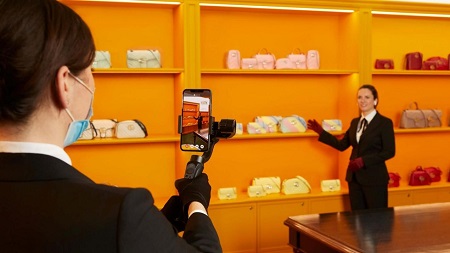
Live-streaming events with KOLs and personal shoppers is another way brands added to a safer experience for guests. Gucci experimented with the use of faux-shops where personal shoppers could guide their clients through the ‘store’ while showing them only hand selected products. Personal sessions allowed shoppers to ask their guide questions about the products before purchasing them for delivery to their homes. Faux stores are constructed with less materials than a pop-up or retail store and can be easily refitted to suit the aesthetic of new product lines and VI design. It also ensures that live-stream sessions convey a similar VI design to other sales channels of the brand.
Outlook
The future of retail is sustainable, and sustainable means it’s here to stay. Moving forward, brands will continue to consider how they can reduce their overall green impact towards the environment. Innovative product and packaging design, thoughtful use of sustainable design elements, health & safety measures, and technology integration are the key to achieving sustainable retail goals to satisfy consumers and local governments.
> back to top of page

Dominance, Hierarchy, Balance
5 Star Plus Series: Design Principles in Store Design
April 23, 2021
Design principles in retail design help to enforce the brand and communicate it to their clients. These guidelines are used to inform and influence and can be achieved through the application of various design elements. In this series, we are providing instructions on how to apply these correctly and influence customers’ mood and first impression. In our previous article, we covered the first three design principles: Harmony, Gestalt, and Space how they contribute to the perception of the retail space. In this article, we present Dominance, Hierarchy, and Balance and their most important role in retail design.
Dominance
As mentioned before, the first impression is the most important aspect for brands to attract customers. Adding a factor of Dominance to the space creates interest and drama for those that enter the space. This is usually done by featuring on key focal point or two emphasized areas that pull the attention of customers from all directions, guiding the customers' eyes to focus on key elements within the retail space. Designers can create clear focal areas, like product displays, a customer service counter, visual identity and branded elements while hiding the less important areas like storage. After choosing the focal point, emphasis can be created by adjusting the size, position, color, style, or shape of the specific object.
PUREONES is a Chinese luxury clothing brand with a strong brand’s forward-thinking identity, tied to the traditional roots of Chinese culture. The retail concept design was inspired by the curves found in Chinese rice fields, rivers, mountains, and forests that follow the Taoism way, allowing the retail store design to flow naturally from one part to the next. Using these curved lines, we created a dominant display area in the middle of the store that is visible from outside as well. The installation grabs the attention of customers immediately because of its unique shape and color. Using high-quality wood and stone materials and metals to tie natural elements to the physical space and creates the feeling of a natural oasis, transporting the customer to a calming, open environment.


Hierarchy
Hierarchy helps to communicate the importance of elements in the overall design compared to the other elements. Using this design principle is another way to guide customers’ eyes towards key elements of focus. It is important to keep in mind that the recommended maximum of hierarchy in in any kind of design is three levels: the most important, less important, and everything else.
Hierarchy can be modified with adjusting the following elements:
- ?Size: Larger objects seem more important.
- ?Shape: If every object has a regular shape except for one irregular one, people tend to look at the irregular one first.
- ?Position: The center of a circle is the most hierarchical, and in the case of a line, the end of the axis is the most hierarchical rather than the points along the line.
- ?Color: Using different hues of a tint of a certain color can also guide customers’ eye to key focus areas.
H?gl is an Austrian shoe brand that also sells jewelry, accessories, and bags. 5 Star Plus Design created a new design concept for the Chinese market that is based on the brand identity - feminine, high quality, and comfortable, as well as the incorporation of the white and red brand colors. The design concept also fulfills the targeted positioning within the Chinese market, defined as stylish, chic, cool, sexy, and powerful. A lot of thought was given to the flexibility of the product display shelves and to the possibility of creating various combinations of space’s different elements. Playing with the different shapes and colors of display elements helps to guide customers and features the most important products.


Balance
This principle refers to the equalization of tension in the composition and contributes greatly to the gestalt of the design. The majority of retail spaces aim to reach visual balance. This can be achieved by distributing the visual weight of objects within a space. The visual weight of an element can be changed by changing its size, color, texture, or shape. An object that is darker, larger, brighter, or more complex usually feels heavier. We can differentiate four different types of balance: symmetrical, asymmetrical, radial, and mosaic.
Symmetrical balance creates a more formal and quieter atmosphere. It is achieved when elements are repeated or mirrored along a central axis, as well as the use of patterns, arrangement of furniture, fixtures, and through the application of color. This type of balance communicates a stable, calm message with dignity.
With asymmetrical balance, interior designers can form a more relaxed and casual environment. They tend to feel more dynamic and less rigid because in these spaces a variety of object types are working together to create balance. Asymmetrical balance is centered around the visual weight of an object and uses the similar perceived weight of elements on the opposite axis. This type of balance is not as straightforward as the symmetrical balance, it often requires an “eye for design”.
When using radial balance, objects are arranged around a central point either extending outward or inward. It helps to create focus on a central item and drags customers' attention towards that. When applied correctly every other element should radiate in circular symmetry around the focal point.
Mosaic balance results from balanced chaos. In this case, the composition lacks distinct focal points, and the hierarchy of the elements leads to visual noise at first glance. Somehow it works together after all.
In our last example from Halti, it’s easy to observe how symmetrical balance can create a premium feel, calm yet strong atmosphere that fits the brand’s Scandinavian persona. Halti is a “light-luxury” positioned, Finnish outdoor fashion brand well known for its ski wear. 5 Star Plus Retail Design created a store identity design concept for both flagship stores and shop-in-shops in China. While the store design had to have a clean, balanced look, a dynamic feel was achieved with added cool features such as island furniture with white, backlit strips.


With the ever-growing online sales market, retailers face the constant challenge of increasing their in-store sales. To create visually appealing spaces, interior designers apply various elements of design to grab the customers’ attention and pull them into the stores. In the next article of our Design Principles in Store Design Series, we will introduce the role of Color, Proportion, and Repetition.
> back to top of page

Harmony, Unity, Gestalt and Space
5 Star Plus Series: Design Principles in Store Design
March 31, 2021
Visitors of retail spaces often think that the result of the interior design looks good by coincidence, however, there is much more behind a finished interior design than one can see at the first gasp. The artistic composition of spaces is based on a number of technical considerations that are referred to as the principles of design. When these principles are applied successfully, they evoke unconscious emotions from visitors of the spaces. These emotions can help to reinforce the brand message and corporate identity using various visual techniques. In this first article of our design principles series, we introduce examples for the first three design principles: harmony, gestalt, and space.
Design Principle 1: Harmony and Unity
Harmony is described as sameness, which means one thing belongs or corresponds to the other. The elements in an interior space create a composition that feels comfortable and is pleasing to the eye. Unity is when the parts of the space form a balanced, harmonious complete whole. The interior feels right when everything works well collectively. The unit of a design can be affected by the contrast, repetition, alignment, and proximity of the elements. The key is to find a balance between unity and variety so that the design is visually impressive and well-balanced. Harmony and unity can provide a sense of calmness while limiting chaos and adding to the comfort level of a space.
KJUS is a luxury sportswear brand based in Switzerland. For their first Chinese store, 5 Star Plus Retail Design created a futuristic, high-tech, and luxurious design concept that evolves around unity. KJUS sportswear products stand for a mixture of state-of-the-art craftsmanship and the latest material technology. To express this abstract positioning, cool, modern, and high-end materials such as metal and stone were used throughout the store. To achieve a harmonious, luxurious feeling, the interior includes enough empty space without displaying too many SKUs to let the concept breathe. Special lighting effects and high-tech elements are incorporated to convey messages from the brand including product features, essential products, and new collections.


Design Principle 2: Gestalt
Gestalt means that an organized whole is perceived as more than the sum of its parts. The idea behind this concept is that people can instantly judge whether or not a design works. Small changes in single components can affect how other elements in a design are perceived. Gestalt takes into consideration that viewers have the natural tendency to complete unfinished forms in their minds. Those then lead their sight and direct the flow of a designed space.
Simply Italian’s restaurant design incorporates core values of the brand like honesty, transparency, hospitality, and happiness. 5 Star Plus Retail Design created a bright and open environment with abundant natural wood, light colors, and patterns that represent Italian traditions. Key inspirations used for the project were Italian pasta, in particular – spaghetti, and colorful natural ingredients like vegetables. When customers enter the restaurant, the whole design comes together and makes one feel at home.


Design Principle 3: Space
Space can be split into two categories: positive and negative space. Positive space is space containing design elements such as objects. Negative space or white space is the area between these objects. The latter is just as, if not even more, important than the used space. It is also one of the most neglected components of visual design. Finding balance between positive and negative space is crucial in order to create a harmonious feeling and to avoid overcrowding the space.
The concept store design for the French avant-garde fashion brand, Angelique, incorporates a lot of empty space to let the store and its unique design features breathe. Most of theproducts are black and white clothing so the design was built around their elegant brand identity referencing the style of the garments. The white space creates a subconscious sense of visual comfort by allowing visitors to rest a bit and have a clear focus on the products.


In our next article of our Design Principles in Store Design Series we will write about the role of dominance, hierarchy and balance.
> back to top of page

Luxury Brand Success in the COVID-era
5 Star Plus Series: Customer Centric Strategy
March 24, 2021
In one of the world’s fastest moving markets, ability to quickly adapt strategy is crucial for continued growth in China. The impacts of the outbreak have led to a shift in consumer values for Chinese consumers. In order for a brand to successfully adapt its strategy, it needs to know and understand its consumers.
Brands who were successful at staying in-touch with their customer’s changing values, were able to adapt their strategies quickly, thus enabling them to recover faster in China’s market compared to those that didn’t. Customer-centric elements that were adapted by brands focused on creating meaningful engagement with their consumers both online and offline, creating a stronger overall omni-channel strategy.
Burberry serves as a great example for a foreign brand in China that was able to create success in China over their other operating markets. Actively adapting their strategy to cope with the difficulties in China’s market, led to an uptake in sales boosting overall revenue of sales higher than pre-covid levels by Q3 of 2020; significantly higher than Burberry’s revenue in other markets that were still slowly recovering from the initial impacts of the pandemic.Their strategy focused on three key elements:
- ?Consumer Engagement
- ?Seamless Connection to all Sales Channels
- ?KOL Collaboration
Consumer Engagement
With 60% of offline stores in China closed for the first half of 2020, sales fell significantly. To overcome these challenges, Burberry kept their consumers engaged by offering online shopping appointments with a personal sales clerk. They also increased their efforts to provide an engaging experience online by use of Virtual spaces and pop-up stores. In the spring, they participated in TMall’s SuperBrandDay which resulted in a record breaking 28 million viewers and the highest volume of sales in a single day on the application. The livestream also led to increased appointment requests for personal shopping consultants.
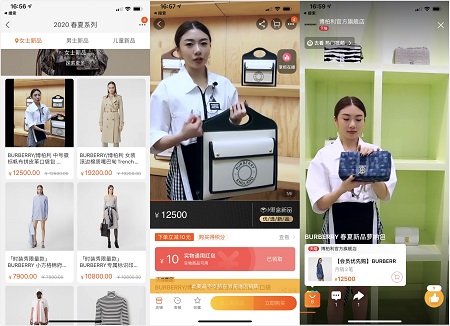
Image Source: WWD
Seamless Connection to all Sales Channels
As policies allowed for the reopening of malls and stores, offline engagement needed a boost. Burberry focused on highlighting new product segments starting with leather goods. New collections were promoted in stores and via pop-up stores. The brand partnered with Tencent to enable consumers to connect their experience online while shopping in person. Their “Social Retail” store in Shenzhen opened in July 2020. The design focused on incorporating interactive technology points to create a ‘social experience’ for their customers.
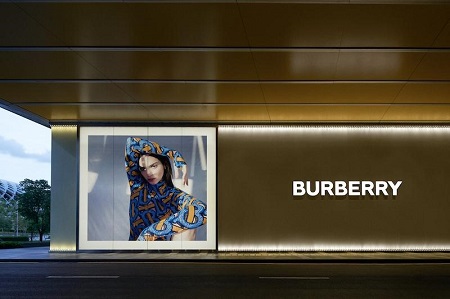
The roughly 540 sqm space is thoughtfully designed to create a slow-shopping experience that allows the guest to engage with the brand and its products, learn more about the brand’s story, and interact with other online touchpoints via their newly created WeChat mini-program. The store consists of 10 rooms in total, each one themed to a different product or other brand elements that tell more about the brand story of Burberry.
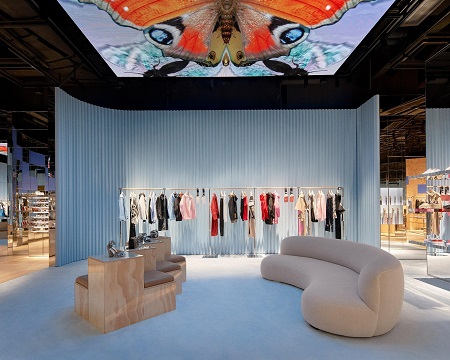
The wechat mini-program was developed as a way to create a more interconnected shopping experience with online channels. Use of the mini-program and its various AI features and other features such as appointment bookings, can only be accessed by guests inside of the store.
In addition to their new “Social Store” and WeChat mini-program, the brand focused on allowing consumers to experience their new leather products in person by creating sustainable pop-up stores. Many retailers focused on getting consumers back into stores after restrictions surrounding the pandemic started to ease up in April, 2020 for Chinese consumers. Festivals, pop-up stores, and other temporary exhibits were thoughtfully made to encourage consumers to come into offline stores again. Safety was maintained by use of temperature checks, health codes, mask mandates, and socially distance experiences. The use of WeChat mini-programs and AR technology also added to the overall experience for guests.
KOL Collaboration
Other collaborations with KOLs helped to promote the launch of new products and create more engagement.Notable actress, Zhou Dongyu, promoted new products through adverts and social media videos on social media. Her brand representation reached more than 100 million consumers and more than 4 million users engaged more actively with Burberry’s channels online.
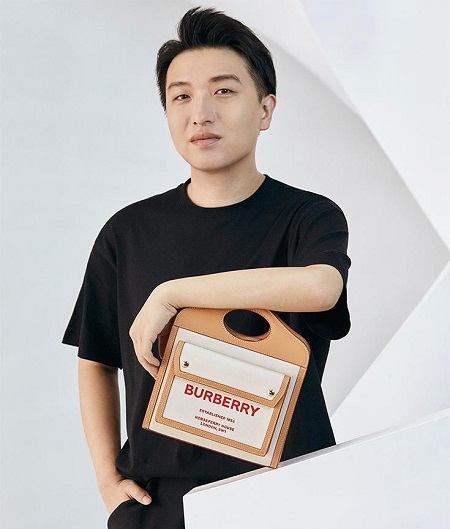
The brand was able to gain further popularity by collaborating with Mr.Bags to create a unique product line to appeal to younger consumers. The fashion influencer has grown in popularity in China after collaborating with other luxury brands and influencing the opinion of handbag trends on social media. The collaboration was well received by consumers, with all of the Mr.Bags designed bags selling out within the first minute of its launch. This was the second successful collaboration between Burberry and Mr.Bags.
Results
By focusing on maintaining the engagement of their consumers, Burberry was able to create growth during a year filled with hardships. Keeping a fine-tuned strategy that puts consumers at the central part of the brand allowed them to strengthen the relationship with their customers. Having a customer-centric focus, drives overall engagement, increases interaction at all points of the consumer’s journey, and creates positive growth of sales.
After reviewing the successful recovery of a foreign-luxury brand in China, part three will take a look at local brands that are putting their customers at the center of their retail strategy. Consumer values shifted in stronger favor of local brands during the course of the pandemic. It’s important for brand managers to understand how local brands are successful in building stronger brand loyalty for local consumers.
> back to top of page

The Rise of Chinese Domestic Brands
March 16, 2021
Domestic products (国货 guo huo) and local brands have experienced a revival in recent years. Netizens even coined the term “guo chao”, a neologism formed by the words “country” and “fashionable”, first used to identify Li Ning’s streetwear collection after its launch at the 2018 Paris Fashion Week. The collection featured many recognizable symbols for Chinese culture, including the Chinese flag’s colors (red and yellow), and the four characters “中国李宁” (meaning: “China” and “Li-Ning”).
Chinese cultural references and symbols have become increasingly popular, so much so that Chinese country and cultural branding are now part of the visual identity of many domestic brands. For example, in 2020 Anta launched its new “Li Bai Series”, inspired by the famous Tang dynasty poet. The series feature traditional cloud visuals in white and ink black, as well as the Chinese “red character” seal on the shoes’ tongue.
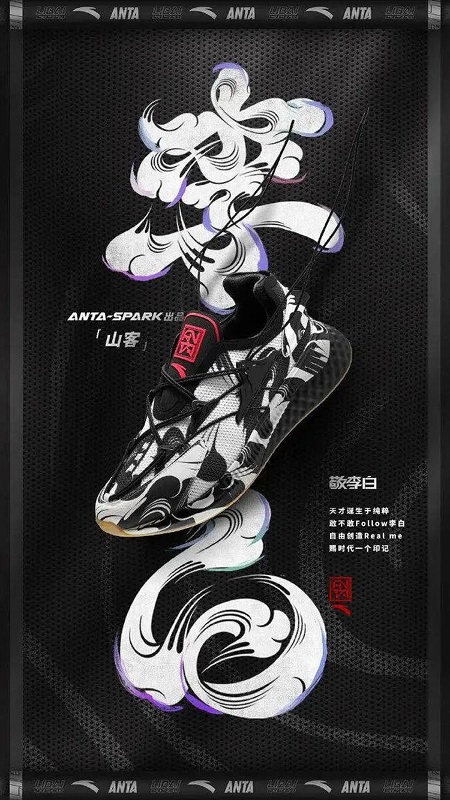
Image Source: DoNews
Data shows that online users between 20-29 years pay the most attention to domestic brands, with Gen-Zers (young people born after 1995) representing the largest consumer group of new domestic brands. (Xinhua, 2020) However, the endorsement of Chinese brands is not limited to the younger and trendier segments of the Chinese population: a recent report by American consulting firm Mc Kinsey & Company revealed that between 33% and 57% of the surveyed Chinese consumers prefer local brands in numerous product categories, including food, household appliances, and electronic devices.
Domestic Brands’ Online Celebration
Chinese brands’ promotion travels fast online: in 2019 e-shopping giant Alibaba officially launched the “New Domestic Product Plan”, which was subsequently upgraded in 2020 to help sellers face pandemic-related difficulties. The goal? Help Chinese consumers include at least three Chinese brands in their online shopping carts.
Domestic brands were also the protagonists of 2020’s “Double-Products Online Festival”, held between the 28th and the 10th of May. During this period, consumers were encouraged to go on a shopping spree for high-quality Chinese products, to help stimulate the recovery of the Chinese local retail economy.
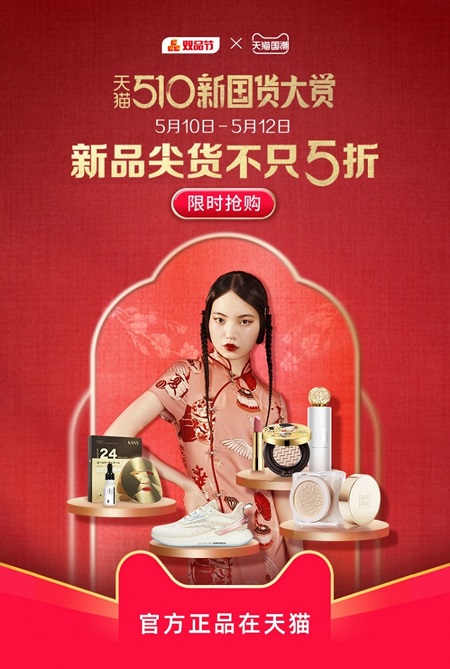
DOS and DON’TS for Foreign Brands
Foreign brands must try new strategies to revamp their presence and make their customers feel more understood. But what are the right strategies to adopt and what are the ones to avoid, when trying to represent China?
DOS
Some of the successful strategies used by foreign brands to adapt their products and message in China include:
- 1) Collaborating with Local Cultural Entities
- 2) Partnering up with Local Designers
L’Oréal and National Museum of China
In Spring 2018, beauty brand L’Oréal partnered with the National Museum of China to launch a limited collection of five lipsticks, inspired by the figures of five classical beauties of the Chinese ancient world. The concept for the campaign resembled visual themes of the Hanfu trend, an online born cultural movement that celebrates the splendour of classical China. The collaboration with a prestigious museum allowed the brand to be meticulous in its campaign design, avoiding dangerous historical misrepresentations.
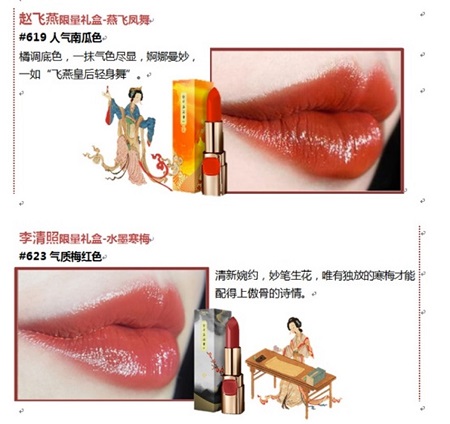
Angel Chen X Adidas Capsule Collection
In 2020, Adidas chose to partner with an upcoming Chinese brand designer Angel Chen. The 2020 Angel Chen X Adidas capsule collection incorporated references to Chinese martial art disciplines, as well futuristic shapes and strong chromatic combinations. The collection featured bumblebee yellow as one of the main colors, taking inspiration from martial arts trainees’ robes. For Adidas, partnering up with a young Chinese designer who was praised on international runways, and who starred in a popular Netflix show, meant being able to catch both Chinese and non-Chinese consumers’ attention without exclusions. The first collaboration between the designer and Adidas proved to be so successful both in China and abroad, that a second capsule collection recently launched in February 2021.
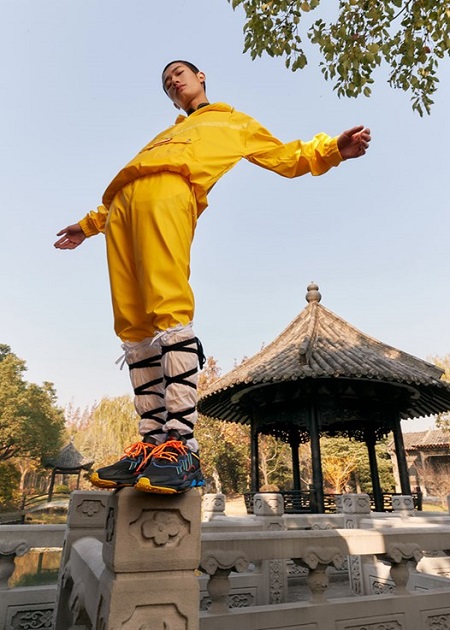
DON’TS
Putting a spin on local trends and traditions is more difficult than foreign brands might suspect. Some of the strategies that proved to be not to so successful include:
- 1) Using non-Mainstream Local Trends
- 2) Being Tone-Deaf to Traditions
Balenciaga and the “Tu Ku” Visual Reference
In August 2020, Balenciaga released four limited-editions bags for Chinese Valentine’s Day. The campaign visually reminded Chinese consumers of the “Tu Ku” style (土酷, literally “earth” and “cool”), a trend loosely based on rural population’s fashion. While the “Tu Ku” style is popular with a small part of Gen-Zers consumers, the majority still considers it “tacky”: hence the criticism of the flowery backdrops featured in the campaign’s images, but also of the bags’ front characters design.
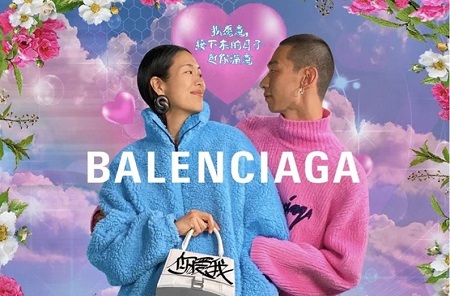
Burberry’s 2019 Spring Festival Campaign
In 2019, the British brand Burberry came under fire for proposing a non-traditional Spring Festival campaign. The campaign, which featured a Chinese family in front of a urban background, was judged to be “out of touch” and not representative of the joyful spirit of the Spring Festival.
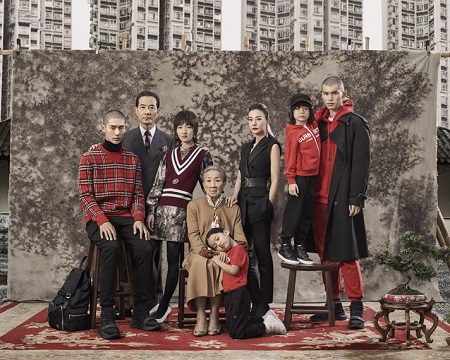
Outlook
Chinese brands have been rising in popularity with their domestic audience for the last years, acquiring a following in the younger segment of the population. The popularity of Chinese local brands is also proven by users’ engagement with online shopping festivals celebrating Chinese products.
While local brands have the advantage of mastering Chinese cultural and country branding, foreign brands have been often accused of not understanding Chinese tastes. However, several high-profile campaigns have shown that consumers reward foreign-local collaborations.
> back to top of page

Importance of Customer Centric Strategy in Retail Design
5 Star Plus Series: Customer Centric Strategy
February 25, 2021
The needs of consumers continually shift in China’s retail market. It’s important for brands to pay attention and adjust their strategies to maintain their hold of the market. Brands need to think about how they can meet the needs and expectations of their consumers in a way that is adaptable in order to provide the brand stability in an ever-changing retail environment.

Moving one year since the start of the outbreak in China, it is quite apparent to see the impact the pandemic had for consumers. Studies indicate that consumers have shifted their priorities which is reflected through the amount of overall consumption and the consumer’s shopping journey.
Why it’s important:
- ?A study by McKinsey showed that 14% of Chinese consumers will not shop at the same stores and 6% will not shop with the same brands that they used to prior to the outbreak.
- ?Offline sales in China fell by 50% at the peak of the outbreak and only recovered 37% in 2020 (Mckinsey, 2021).
- ?Customers have higher expectations and are more demanding after an economic downturn. Chinese consumers expect a customer centric shopping experience.
- ?Chinese consumers make up 35% of the luxury retail sector consumed globally(FW, 2020).
What this Means for Brands:
Chinese consumers have become a lot more self-aware after the initial impacts of a socially distant society were experienced in 2020. Their typical consumer journey was heavily impacted as a result. Suddenly consumers had to rely mainly on the digital end of retail to fulfill their daily needs. The key values of a brand that shifted in the beginning parts of the pandemic are as such:
- ?Experimenting: Some consumers started shopping online from different brands that they had not tried before. Due to the inability to go out and shop, consumers sought after available brands they could order from online. This expanded the reach of some brands, while other brands suffered for lack of digital presence. Overall, consumers continue to act less brand loyal than before.
- ?Quality: Consumers still demand high-quality items. Being able to try and return items worked for some. Seeing live-streams of real products allowed more consumers to see the quality. Ability to experiment using AI technology allowed consumers to virtually test the look and quality of items.
- ?Lifestyle: The outbreak caused many consumers to be more conscious of their health, which led to more purchases in certain sectors of the retail market.
- ?Purchases: Prior to the pandemic, many GenZ and young Millennial consumers did not pay much attention to their monthly spending habits. In fact, Chinese GenZ and Millennial consumers have the highest monthly disposable income in the world when compared to other consumers in the same age category. Most Chinese consumers in this age category live paycheck to paycheck. After experiencing the economic hardship caused by the outbreak, many consumers shifted their priorities to focus on spending less and saving more for the future.
- ?Time: Due to a high reliability on delivery services as a way to receive goods, the amount of time needed for delivery increased in the level of importance for purchase decisions. A consumer is more likely to order something for a brand that can deliver on the same day than a brand that needs more than 48 hours to deliver their order.
Understanding the Consumer Journey
The first step in providing a more customer centric approach requires the brand to understand the consumer journey in-depth. Understanding which journey its consumers are more likely to take in order to purchase from the brand, enables the brand to enhance the journey at the most important parts for their consumers.

Tracking and analyzing up-to-date data of consumers is how a brand can begin to know more about its consumers. Real time data from social media, online sales channels, and offline sales channels, helps to gauge the overall level of customer engagement with the brand.
Brands that actively pay attention to customer engagement are able to adapt more readily when there are shifts in the market. They are also able to do it quickly, which creates a stronger customer engagement with their consumers compared to brands who don’t adapt as fast.
What this Means for Offline Retail
In an ever-growing digital world, it may seem as though offline retail is no longer an important part of the consumer journey. This is actually not the case when looking at China’s market. The total volume of offline sales have still not returned to pre-pandemic levels. However, it’s expected that these numbers will continue to recover in 2021 as the number of cases in China continues to remain relatively low.

Consumers still desire an experience that uniquely defines their consumer journey from others. Interaction with the brand, sensory engagement, and storytelling are just a few ways that consumer engagement can be increased. These ways are executed within the retail design of the store, pop-up space, and online channels. The main goal in mind is to provide their consumers with an engaging experience regardless of their overall consumer journey.
A Recent study by KPMG indicated high performing retail brands effectively utilizing a customer centric approach in their retail strategy (KPMG, 2021).

These brands utilize different methods to drive the engagement of their consumers throughout the consumer’s journey both online and offline.
Customer Centric Retail Design

A successful retail store design in China includes a thoughtful layout of the customer flow, storytelling elements that create engagement with the brand and its products, interactive points that connect to other online channels of the brand. In the next article, we want to highlight some global brands that are ahead of the game when it comes to providing an excellently designed consumer centric retail environment.
> back to top of page

Chinese New Year 2021: Creative Window Displays for the New Year
February 18, 2021
Spring Festival is a time to rejoice with one’s family and look forward with hope to the exciting opportunities of the New Year.
Celebrations for the Year of the Ox are also one of the most expected retail opportunities of this season, and big brands have carefully crafted their visual campaigns. In Beijing, like in the rest of the country, the windows of high-end and popular stores have dressed in a triumph of red and rich golden motives.
At 5 Star Plus, we know that creative windows design is crucial for retailers to communicate the perfect festive mood during Chinese New Year. Our design team has scouted popular shopping locations to bring you a gallery of exciting and creative window design examples.
Paper-inspired Designs
With historians dating the invention of paper around the second century BC in China, paper decorations hold a special place in traditional aesthetic. Paper decorations for the Spring Festival include symmetrical pattern paper flowers and red paper lanterns.
GAP
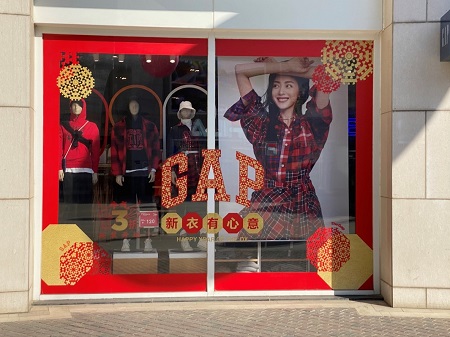
"Gap window display at SOLANA Blue Harbour Shopping Mall in Beijing"
The decal stickers remind of symmetrical paper cutting decorations to glue on house windows for good luck.
BOSS
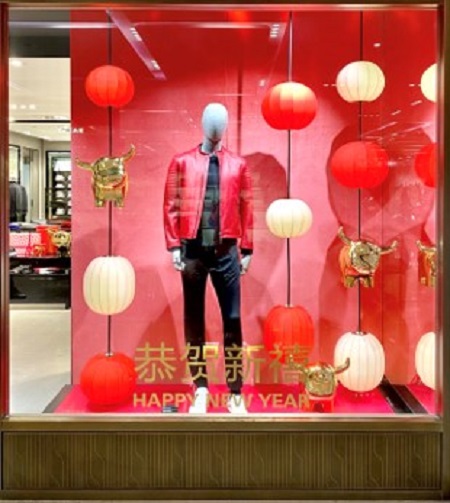
"BOSS window display at China World Shopping Mall"
Lanterns originated in the Western Han Dynasty, more than 1,800 years ago. During the Spring festival people hang up red lanterns, which symbolize reunion, to create a festive atmosphere.
Fan-inspired Designs
Fans have a long tradition in China, dating back to the Shang Dynasty. Fans symbolize "kindness" and "good deeds", because the words "fan"扇 and "good" 善are both pronounced “shan”.
Chow Tai Fook
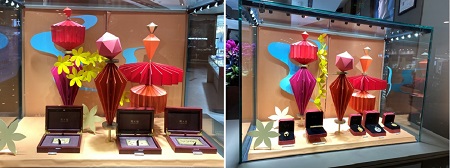
"Chow Tai Fook window display at SOLANA Blue Harbour Shopping Mall in Beijing"
Chow Tai Fook windows display is playful, with small size props in folded material that remind of Chinese folded fans.
Elegant Prosper
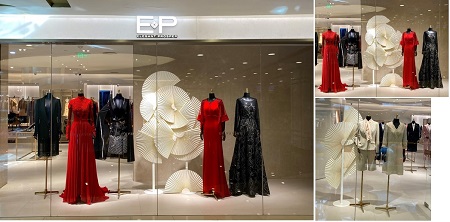
"Elegant Prosper at SOLANA Blue Harbour Shopping Mall in Beijing"
Folding white fans create the elegant structures making the background for EP festive red gowns.
Characters-inspired Designs
The designs inspired by lucky wishes for the New Year combine the beauty of Chinese calligraphy with the festive meaning associated with the words. Auspicious characters are usually written in black or golden ink on a red background, and often hanged to inside the house or at main doors.
Lacoste
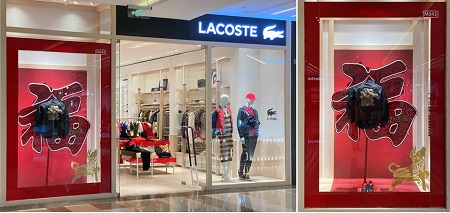
"Lacoste Window Display at SOLANA Blue Harbour Shopping Mall in Beijing"
Lacoste celebrates the Year of the Ox with a blow-up of the character 福 (fú) signifying good fortune, blessings, and happiness.
Swarovski
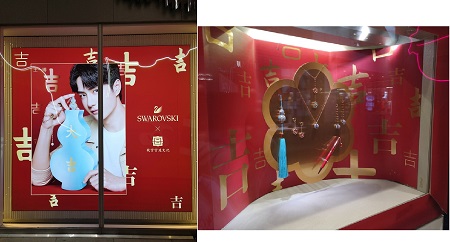
"Swarovski Window Display at Taikooil Li Sanlitun in Beijing"
Swarovski chooses to incorporate the character 吉 (jí) to their Spring Festival campaign featuring Chinese actor Wang Yibo.
Spring-inspired Designs
Spring Festival also celebrates the natural recurrence of seasons, welcoming the vitality of Spring and leaving Winter behind. For this reason, flowers and fruits are often present in New Year designs: peonies, peach blossoms, and tangerines signify good fortune and represent future growth.
Ai Mer
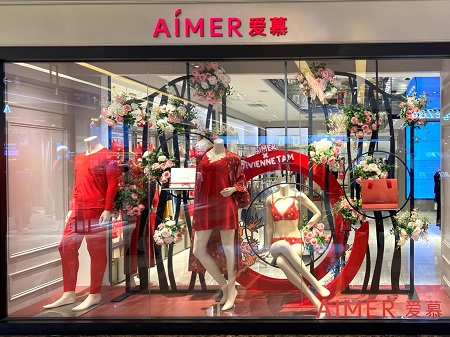
"Ai Mer window display at SOLANA Blue Harbour Shopping Mall in Beijing"
The white and pink flowers give a festive and vivacious look to Ai Mer window design.
Atelier Cologne
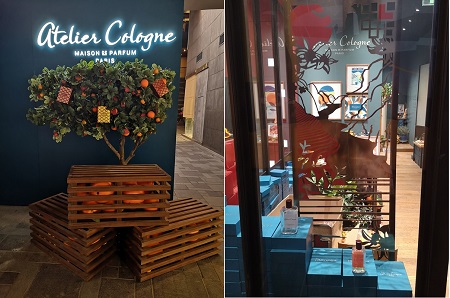
"Atelier Cologne window display at Taikooil Li Sanlitun in Beijing"
The mandarins and tangerine plants decorating the space at Atelier Cologne are symbols of fertility and future prosperity.
Prosperity inspired Designs
Symbols for money and prosperity are a not so subtle but very auspicious decoration. Red envelopes are usually gifted during times of celebration, but during Spring Festival they are particularly dear to children (because they are said to keep them safe from the terrible Nian monster).
Cartier
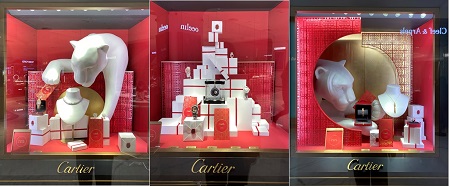
"Cartier window display at China World Shopping Mall"
Cartier window display includes narrative elements of the brand’s representative panther playfully trying to catch one of the Red Envelops of the display.
Canali
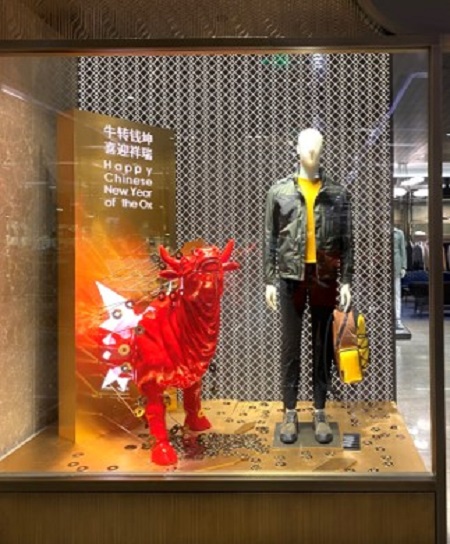
"Canali window display at China World Shopping Mall"
Canali chooses to decorate their store windows copper coins, a traditional Chinese element that symbolizes wealth and prosperity.
> back to top of page

Chinese New Year 2021: 3 Major Trends in Consumer Spending Behavior
February 9, 2021
The Chinese celebrations for the New Lunar Year attract unmatched attention from the rest of the world, and with the revenue of retail sales reaching 1005 billion yuan in 2019 it is not difficult to see why. Changes in Chinese spending habits during the Spring Festival can help foresee or confirm the next big consumer trends, as well as test the feelings of Chinese consumers towards specific products.
While limited parts of the country still endure virus-containing measures, experts have signaled that Chinese consumers still manifest a high spending desire for these holidays.
Three continuous trends that have attracted the interest of Chinese consumers during the last years:
- ?Food and Beverage
- ?Gifts and Decorations
- ?Foreign Luxury Fashion
Food and Beverage Products
Health and origin awareness have established themselves as major selling points for domestic and imported food products in the last years, with the Covid-19 pandemic accelerating this trend. In fact, many recent publications state that Chinese consumers are willing to pay more for “Farm-to-Table” healthy ingredients for their family reunion dinners.
Cherries: Thanks to various factors, this years’ cherries have dropped to half of their usual prices and provoked a shopping spree in Chinese consumers. Cherries, which are a common Spring Festival gift and signify prosperity, were declared in mid-January as the No.1 bestselling festive product on Tmall. However, the trend abruptly stopped, and fruit sales in general plummeted after imported cherries were found to have traces of the Covid-19 virus.
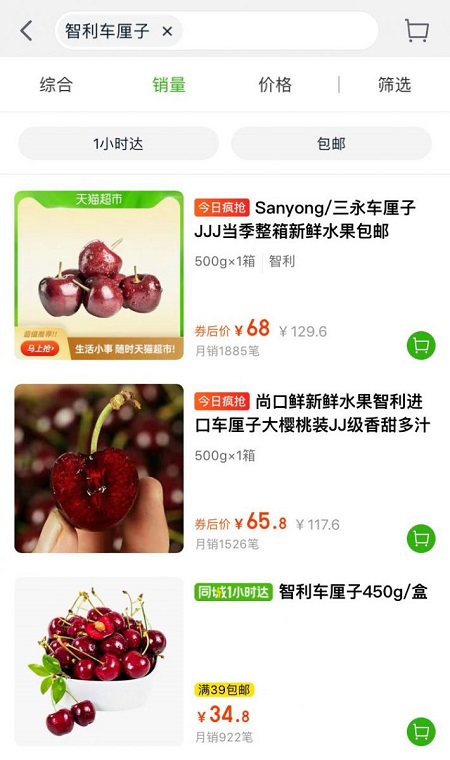
Dongbei meat products: Always according to the JD List “100 Flavours of the New Year”, traditional meat products of the North East (Dongbei) seem to experience the favor of Chinese foodies. Consumers’ choices include the Harbin Red sausage and grassland mutton meat.
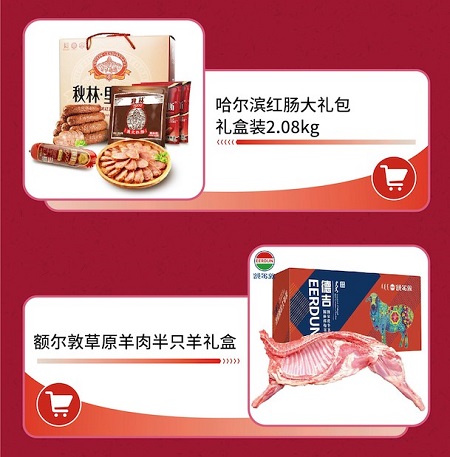
Gifts and Decorations
To exchange gifts during Spring Festival is one of the core practices that make the occasion special. While both traditional and digital Red Envelopes remain the preferred gift to exchange between family members, consumer trends for gifts vary consistently according to the degree of acquaintance between people outside the family circles. However, traditionally festive items like the ones selected in the examples below could appear as timeless and always desirable.
Fresh Flowers: Due to a drop in prices, this year’s fresh flower markets have started their activities earlier in many Chinese cities. Flowers and plants to gift or to decorate one’s home have been reported to generate 800 million dollars last year only in Guangzhou, but with this year’s Covid-19 preoccupations the situation remains uncertain for the numerous flower markets opening all around China.
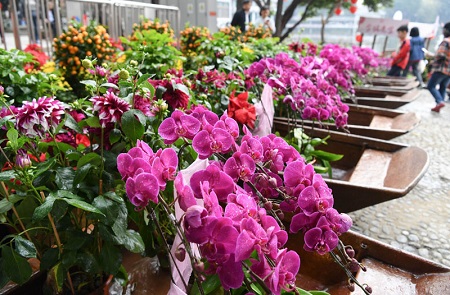
Forbidden City Press Almanac: According to JD, already in December almanacs and calendars launched by museums were enjoying a 450% increase in sales compared to the previous year. The Forbidden City almanac, printed by the Palace Museum in Beijing as a collectors’ edition, combines traditional Chinese prints of the Ox with the popularity of the product.
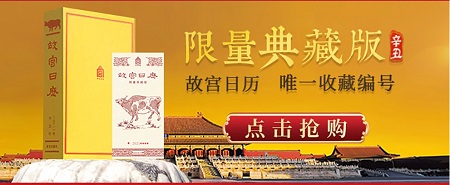
Image Source: JD
Foreign Luxury Fashion
Foreign luxury brands might still struggle to be recognized as genuine in their representation of the Spring Festival celebrations. In recent years, many brands have made efforts to localize their brand image through exclusive capsule collections and visual identity designs.
Gucci: The DORAEMON X Gucci collection taps into the nostalgia-driven cartoon imaginary of their Millennials and Gen-Zers consumers. The collection features the Manga character in either its usual blue or in a light brown ox costume to maintain this year’s theme.
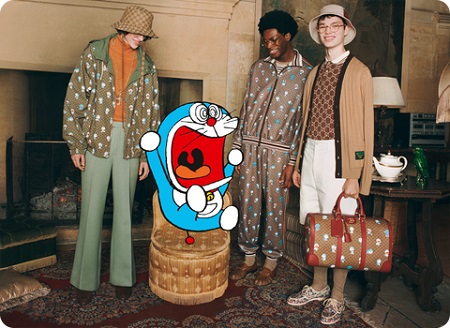
Estée Lauder: The packaging and style of the new Estée Lauder capsule collection for Chinese New Year include golden peonies on a red background, as well as small customary gifts like keychains and an ox-shaped mini purse. The collection includes limited edition items, as well as some all-time favorites repackaged for the occasion.
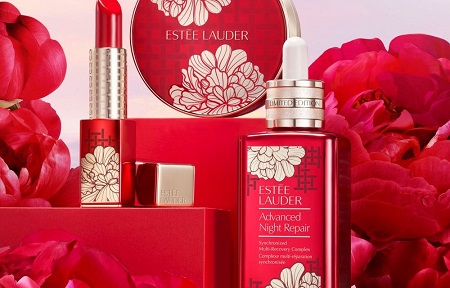
Changing Times
In the last decade, people have reported the feeling of Spring Festival traditions being diluted by the intense rhythms of modern life. So much so that the impossibility to go back home for the New Year celebrations and the longing to see one’s family has become a popular theme in seasonal advertising.
Apart from the hardships endured in 2020, this feeling might just increase during the celebrations for the arrival of the Year of the Ox. With many Chinese people deciding not to return to their native cities and villages due to the Covid-19 persistence in 2021, the question of how Chinese consumers are going to spend this year's Spring Festival is all but obvious.
Partial References
> back to top of page

Importance for Luxury Brands in China to Adapt their Strategy Quickly
January 28, 2021
Covid-19 created an economic downturn that ultimately exposed the weaknesses of some retail brands in China. It also brought opportunity for brands to explore new avenues of retail storytelling and create a stronger digital presence. It’s important for luxury brands to understand the changing ecosystem in China and how they can adapt their strategy to stay stable in China’s market in the long run.
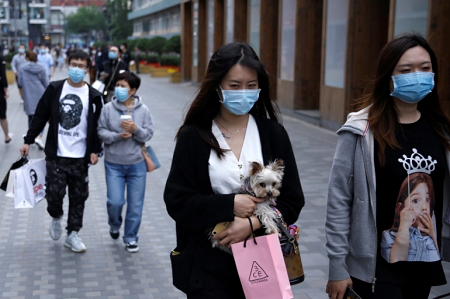
Throughout 2020, many brands in the luxury sector experienced significant growth in China. In fact, the luxury sector had a consistent level of growth compared to other global markets. This is something that is expected to continue over the next decade. Spending power of GenZ consumers accounted for more than 40% of the luxury sector (Chozan, Statista). This spending power is due to half of all consumers in this age category holding a university degree and strong confidence for the future, enabling them to spend a large portion of their monthly income. Though, Covid may have shaken their confidence, they still hold a strong presence in the luxury sector.
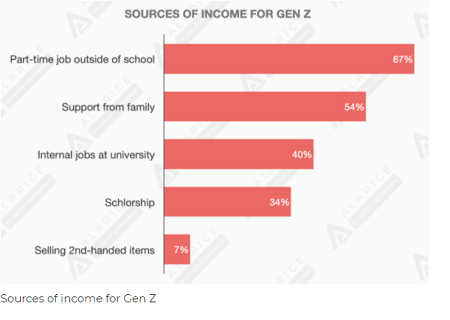
Image Source: Chozan
Understanding how to connect with these consumers can be a challenge for some brands. When looking at China’s market, it should be understood that Chinese consumers are different from Western consumers. Their understanding of a brand and its products goes deeper. They look at the whole picture to understand a brand and highly value the story behind a brand and its products. If the consumer does not feel a connection to the brand they will not buy its products.
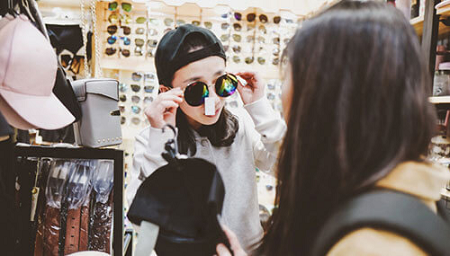
One of the biggest shifts in China over the past year is mainly due to a stronger focus in domestic spending. With strict requirements for exit and entry, international travel is not an option for most consumers. Due to this, local tourism and travel saw a boost throughout the second half of 2020 as the number of cases continued to stay at a very low number. Destinations like Sanya, in Hainan province saw a huge uptake in domestic travel. Special administrative duty-free shopping zones enabled consumers to buy luxury goods at tax exempt prices. This led to an overall increase of more than 90% in luxury consumption in Sanya since October 2020 (Bain & Company).
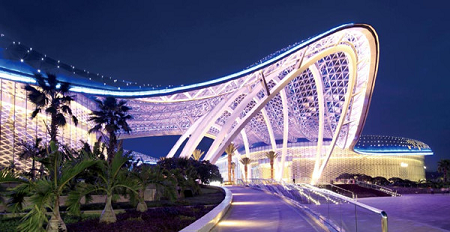
"International Duty Free Shopping Complex in Sanya, Hainan Providence, China"
While the world continues to wait for things to go back to ‘normal’ or pre-covid shopping habits, it’s important for brands to make the changes needed to be successful in China’s market. As it’s been written many times before, brands need an omni-channel strategy, and more importantly at the present, a strong overall digital strategy. There are four key points that are important to building an effective digital strategy for Chinese consumers.
- ? Brand Storytelling
- ? Consumer Engagement
- ? Relevant Content
- ? KOL Strategy
The most important factor that will help bring brands success in their digital strategy is adaptability. Trends can come and go quite quickly, therefore, it is extremely important to find a strategy that can be adapted easily and fast. Having a strategy that enables the brand to have real time brand and ROI management is important for being able to adapt. As for the other basics, a well researched plan and a clear understanding of target consumers and their characteristics is an important factor in building this plan.
In order to integrate online channels into a strong overall digital strategy, it is also important to connect these strategic points to the physical retail store. Consumers want experience, they want to feel unique and stand out in a mass market, and they want it to feel personal to them. There are four key ways to achieve this in retail design.
- ? Digital integration points that connect to online channels
- ? Pop-up stores
- ? Customizable products in stores
- ? Storytelling elements
Omnichannel shopping is shifting retail strategy in China. A study by McKinsey in 2019 showed that 85% of consumers utilized both online and offline channels to purchase from a brand. Making further adjustments to adapt the overall strategy quickly is an important factor for creating long-term stability and success in China’s market.
> back to top of page

Color of the Year 2021
January 25, 2021
Last month, Pantone announced their pick for 2021’s color of the year. Ultimate Gray paired with Illummante, a soft and inviting yellow. The two colors paired together symbolize strength, optimism and overall positivity after a year that was filled with challenges beyond expectation.
”Illuminating & Ultimate Gray” – Pantone
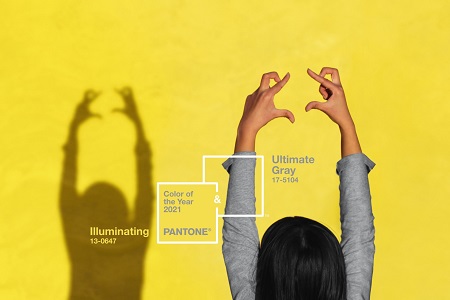
Ultimate Gray symbolizes the connection to strong materials found in nature. Rocks, pebbles and other stones help us to build structures with a solid foundation, which provides a place for mankind to seek shelter, find protection, and build a community. On the other hand, Illuminating yellow complements Ultimate Gray bringing in an added warmth to the space. This warmth helps to create a cheerful atmosphere meant to inspire creativity, bring joy and an overall feeling of hope. The main theme behind these “ultimate” and “illuminating” colors are to bring people together and feel renewed as we embark through the unpredicted events that will unfold later in the year.
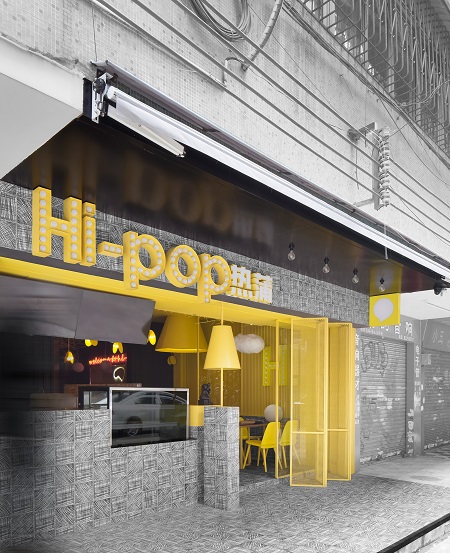
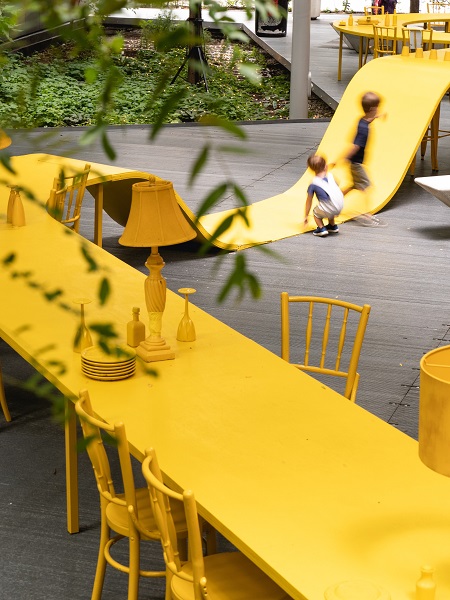
Complementary to Pantone’s color of the year, PPG recently identified their colors of the year full of neutral tones. The three colors they chose, “Transcend”, “Big Cypress”, and “Misty Aqua” are meant to draw a bigger focus on the mind, body, and spirit of consumers by putting a stronger focus on embracing mindfulness, and intention. The neutral tones of their 2021 palette are meant to create a comfortable environment and reinforce the ideas of sharing compassion and optimism. Benjamin Moore chose “Aegean Teal” as their color of the year. Again, they too also hope to create a nourishing environment for the spirit with this comforting balanced mid-tone.
”2021 Color Palette” – PPG
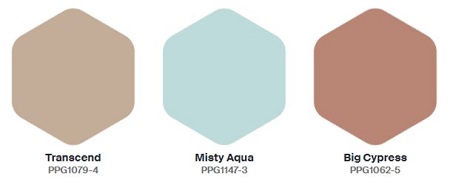
Image Source: PPG
”Aegean Teal” – Benjamin Moore
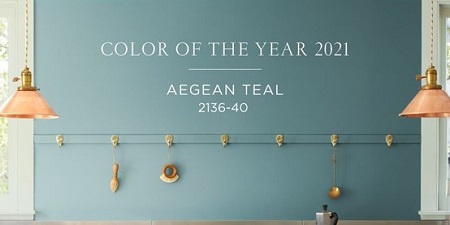
As we enter into 2021, shoppers can expect to see these colors appear in stores across the world, from products that line the shelves, to window display design, to retail store design itself. After a year filled with unexpected scenarios, creating comfort in an uncertain environment is just one thing these colors promise to bring consumers.
> back to top of page


Singles’ Day vs Black Friday
December 25, 2020
Singles’ Day and Black Friday are without a doubt the biggest online shopping campaigns in November. Singles’ Day targets Chinese consumers while Black Friday, originally from the US, now reaches consumers across the globe.
Both campaigns rely on online marketing in order to further engage their existing and potential customers. Regarding digital marketing platforms, brands have to know their target audience, what platforms they use and what content resonates with them the most. Brands also have to be aware of the limitations huge online campaigns can have. Even though Singles’ Day promotions sound like the perfect occasion for foreign brands to promote their products in China, there are a lot of requirements that are important to consider, from having a sufficient amount of the product, to ensuring perfect logistic and local customer services.
Singles’ Day, the Celebration of Being Single
Singles’ Day takes place on 11.11 or double 11 to represent solo living or being single. In 2009, Alibaba’s Tmall promoted Singles’ Day for the first time by creating a connection between Singles Day and online shopping. Consumer spending grew 0.83 billion USD to 74.1 billion USD on Singles’ Day between 2011 and 2020 making Singles’ Day the biggest online shopping campaign in the world.
In China brands need to begin preparation for major ecommerce holidays like Singles’ Day, approximately 2 months prior the campaign. 2 weeks before the big day brands start to create buzz.
In the recent years, live-streaming featuring KOLs were very popular on Taobao Live. This year more than 15 million USD in sales were generated by only 30 live-stream channels. The two biggest KOL names are Viya, a queen of Chinese live-streaming, who reached a record breaking 37m views and Austin Li, who sold 15,000 lipsticks only within 5 minutes last year. Global stars also participated in this year’s promotions. Taylor Swift collaborated with Viya to launch her exclusive collection on Tmall while Miranda Kerr promoted her own skincare products with Chinese KOL Cherrie. Another huge sensation was Cartier’s first live-streaming where they showcased a necklace worth 28.3m USD, and reached over 800k viewers.
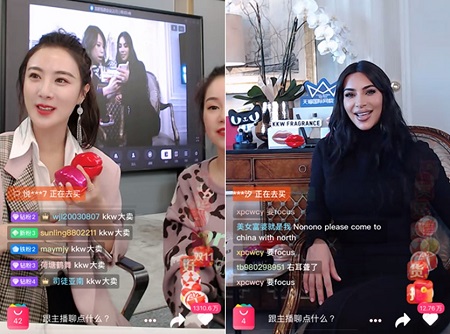
" Kim Kardashian collaboration with Viya in 2019 "
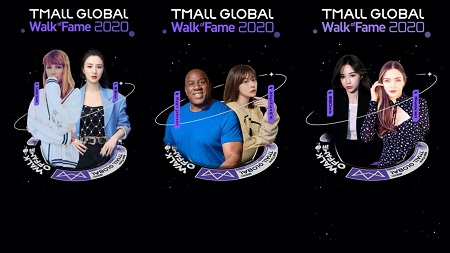
" Tmall Global Walk of Fame "
Not only Chinese and worldwide famous stars could generate views this year. Some of the most unexpected live streamers were: farmers, blacksmiths and chefs who promoted their products and companies.
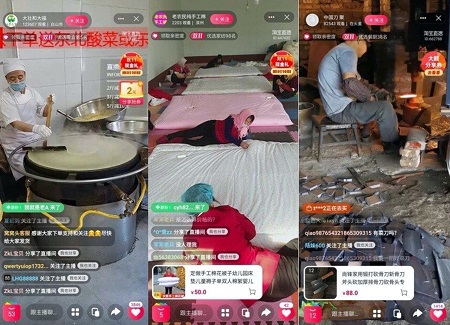
" Unlikely live streaming stars. The lady on the left made huge pancakes for hours to showcase her company’s corn flour. "
Black Friday, the Start of the Holiday Season
Black Friday is one of the most profitable days of the year for retailers and businesses. However, the pandemic had an effect on shopping habits of US consumers. During this year’s Black Friday people stayed at home, avoiding large crowds and used the more convenient online purchasing options. According to Adobe Analytics, consumers spent 9 billion USD online which was an 21.6% increase compared to last year. Curbside pickup increased by 52% as well.
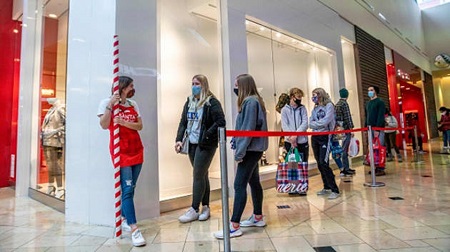
" Customers queue outside Bath&Body Works during Black Friday "
Image Source: CNBC
Retailers knew it way before November that revenues wouldn’t be the same if they stuck to their typical strategy for Black Friday. Instead of door-busting discounts, major players in the industry spread discounts throughout November and launched online sales events in October.
When it comes to digital marketing platforms, Western users love Instagram Stories. GAP resized its Facebook advertisement video to fit the Stories format. The result was an attention-grabbing video with dynamic movement and happy people showcasing GAP clothes.
Another trendy twist was the cross-platform nods, where brands took a specific format of a platform and posted it on a different one. Blenders eyewear smartly used a popular TikTok “Wipe It Down” challenge and then posted the video on Facebook.
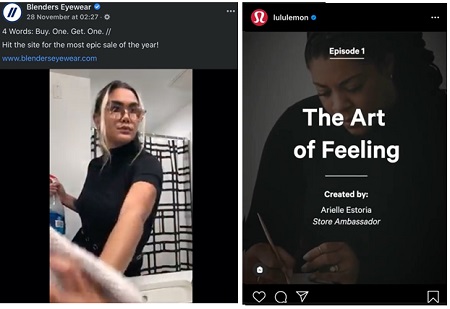
Image Source: Blender’s Facebook page (left) and Lululemon’s Instagram (right)
Lululemon posted an unconventional yet very strong and emotional video on Instagram right before Black Friday. Instead of colorful ads and promotions they decided to let their brand ambassador to create a video reflecting to the difficulties of this year with soft background music and narrative.
Singles’ Friday
Ecommerce sales is all about highs and peaks both in China and in the West. The goal for every retailer is to make the most of the highs and prepare everything according to the marketing strategy in the peaks or as this very challenging year showed us, adapting to the situation quickly. Knowing the latest digital marketing trends, creating unique content, and featuring influential people in the advertisements are the main ingredients for a successful online shopping campaign everywhere.
> back to top of page

Visual Merchandising and New Adaptable Displays
5 Star Plus Series: Adaptable Retail Design
December 22, 2020
Highly adaptable elements in retail design can be a constant source of attraction for customers. They can amplify the novelty effect of new products or seasonal promotions, catching customers’ attention from afar with excellent fa?ade adaptations, or increasing their level of engagement with the brand using interactive experiential points.
The four main elements that can be easily customized in-line with brands’ promotion are:
- 1) Fa?ade Design
- 2) Interactive Experiential Points
- 3) Product Displays
- 4) Pop-up Stores
Part one of this series has introduced how excellent fa?ade designs can help attract customers from the street into the store. Part two has focused on how brands have improved customers’ participation and in-store experiences through interactive points.
In this third part of the Adaptable Retail Design Series, we are going to re-focus our attention on the products and provide excellent examples of adaptable product displays.
Putting Adaptability in Product Display
Product displays come in various formats and with the ability to fulfill various needs in the retail space. The two types of product displays used to fulfil different needs are exterior and interior displays. Exterior displays provide customers with a clear signal that new products are available. Interior displays enhance the retail space providing consumers with a pleasant visual experience.
While the main composition techniques have maintained their best practices throughout the past century, innovations -such as artificial lighting, new materials, and new promotion channels- have shaped the development of product displays. Modern product displays are adaptable to the fast-pacing retail calendar and easier to customize following the brand’s identity and aesthetics.
Goals of Adaptable Product Display
The strength of visual display strategies is that they communicate with the customers in a “silent” but effective way:
- ? Showcase the product at its best: make the products shine and highlight their details.
-
- ? Change the conformation of the store: impress customers in a time/cost-effective way.
- ? Highlight brand aesthetics: communicate the brand values and aesthetics through visual channels.
Window display – 2020 Autumn/Winter Collection, Yang Maoyuan with ST. JOHN
In November of this year, American luxury brand ST. JOHN unveiled their latest seasonal window display for the Shanghai boutique. The display, designed in collaboration with Chinese artist Yang Maoyuan, interprets in visual terms the concept of “Venus” and embodies the modern elegance of the brand’s last collection. The display uses black and gold colors that complement the new collection’s bold animalier print.
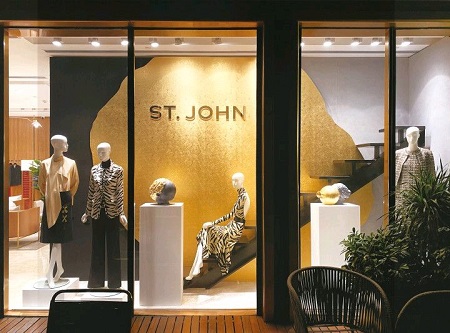
Interior Modular Components – Hermes 2020 Autumn/Winter Collection
The Hermes 2020 Autumn/Winter collection display for their Shanghai location combines minimalist design with colorful backdrops. The tables and modular components are equipped with semi-visible wheels, allowing for a quick reshaping of the space at need. The display format communicates the artistic value of the product, as well as the high quality and the refined image associated with the brand’s identity.
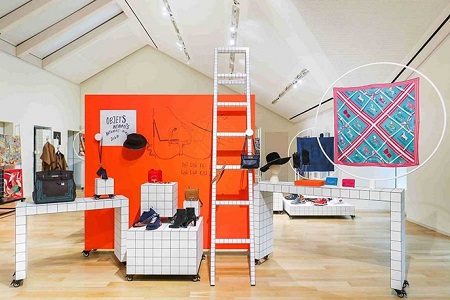
Mannequins – Hiroshi Fujiwara for Moncler’s “Genius Collection”
Livestreams are a new promotional channel for brands in China, and product displays are becoming important to add tridimensionality to these events. As part of the ongoing “Genius Collection”, in June 2020 Moncler launched its new line designed by Hiroshi Fujiwara in a one-week marketing campaign. The launch included a livestreaming event for the Chinese public, welcoming attendees in various settings including a white futuristic room. The presence of Moncler’s ambassador Song Qian helped viewers connect with the brand, but the mannequins displaying the new Moncler fragment line helped customers envision the outfits, getting a clearer idea of how the products would fit.
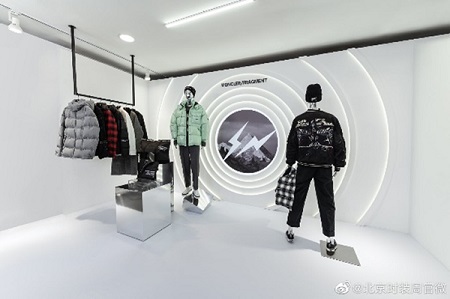
"Understanding your target customers for successful online lead generation"
Point of Purchase Display – Bulgari “Serpenti” Prelaunch for China Duty Free Group and Luxottica
In 2019 Luxottica partnered with China Duty Free Group to host the prelaunch of Bulgari’s sunglasses line “Serpenti” in various locations. The collection featured a tailor-made point of purchase display perfectly sized to fit the limited retail space. The display’s area was emphasized by a small black rug, and the campaign’s signature colors made the POP display stand out from its surroundings. The crystal encrusted sunglasses were orderly arranged on three asymmetrical table displays, while a small mirror invited customers to try on the new line.
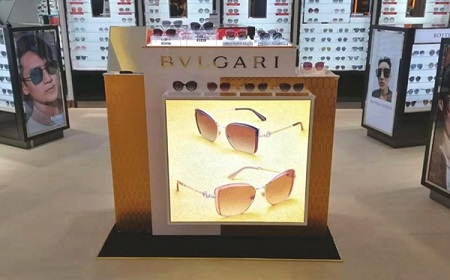
Image Source: Hunter
Whether presenting a new line, a prelaunch, or the opening of a new store, adaptable product displays have several benefits for brands: Key Benefits for Brands
- ? Increase foot traffic: adaptable product displays can help drive more traffic to the store and draw customers in from the streets.
- ? Boost excitement for new products: excellent examples of product displays can increase the appeal of the products and leave a long-lasting first impression on customers.
- ? Increase sales: product displays can their capacity to envision themselves using the product and enhancing the likelihood of a successful purchase.
Outlook
Visual merchandising practices have been part of retail strategy since the birth of modern brick-and-mortar stores. Product displays have curbed a role for themselves, putting products under a spotlight: the right product display calls for customers’ attention on specific products and lines, but also complements the interior design of a store beyond functionality.
In the last article of this series dedicated to Adaptable Retail Design, we are going to focus on one of the protagonists of the last ten years: Pop-Up stores.
> back to top of page


The Versatility of Interactive Experiential Points
5 Star Plus Series: Adaptable Retail Design
November 30, 2020
Adaptable retail design is part of brands’ excellent strategies to maximize the effect of seasonal promotions. Brands benefit from using adaptable retail design to engage loyal customers and attract new ones with eye-catching new designs, new themed experiential points, and on-brand exciting temporary elements.
The key importance of adaptable retail design becomes crystal clear in the context of Chinese retail market, where brands are constantly competing to attract customers’ attention and provide long-lasting shopping experiences.
The four main elements that can be easily customized in-line with brands’ promotion are:
- 1) Fa?ade Design
- 2) Interactive Experiential Points
- 3) Product Displays
- 4) Pop-up Stores
Part one of this series presented three examples of excellent customized fa?ade executions for the Chinese market by globally famous luxury brands. Part two will dive into the topic of interactive experiential points, as temporary in-store spaces invite customers to engage with a new product line in a more personal and impactful way.
Benefits of Experiential Retail
Experience-based retail has been affirming its role more and more in today’s crowded global marketplace thanks to its customer centric approach. Experiential retail focuses on building a closer connection between customers and brands, as well as, providing strong inputs to develop an emotional connection to the product. Customers have been increasingly valuing the in-store and online experiences brands can provide, thanks to the high level of personalization and long-lasting impressions of new products and services.
Experiential retail can help brands optimize and enhance three fundamental steps:
- ? Customers’ participation: experiences increase both duration and quality of customers’ visits, as well as customers’ participation levels.
- ? Product knowledge: engaging customers in experiencing the product’s features firsthand helps educate customers on product qualities and brand-new features.
- ? Brand awareness and brand loyalty: experience-based interactions can enhance the customers’ brand awareness, as well as increase trust and service satisfaction to build brand loyalty.
Interactive Experiential Points
Interactive experience points are spaces in the store offering customers experiences that are both functional and entertaining. These spaces can engage with customers’ senses and stimulate curiosity towards seasonal products or launches of new lines and designs, but also offer a deeper level of interaction and go beyond immediate needs and wishes.
Especially in China, experiential points have proven themselves to be a useful tool to remain relevant and to adapt brick-and-mortar stores to the latest trends and innovations. Creating interactive experiential points can provide an in-store space to host popular Key Opinion Leaders (KOLs) events that will draw online fans and curious by-passers in the store, or digital immersive experiences that will impress tech-savvy Chinese customers.
WeChat integrations – Burberry 2020 “Social Retail Store” Opening
In July of this year, Burberry opened their new “social retail store” in Shenzhen with an exclusive partnership with Tencent. The store tech integrations are powered by a WeChat mini-program that allows customers to book fitting rooms, access exclusive items and additional on-brand experiences as “The Trench Experience”, as well as scan QR codes on items to gain more information on the product. This new store’s integrations render the store incredibly flexible and will grant the seamless adaptation of the space for any of the brand’s future collections and new designs.

Image Source: Frame
AR Smart Mirrors – Swarovski 2019 Chinese New Year
In 2019, Swarovski Store in Chengdu opened its doors to customers with new interactive experience points. The store displayed interactive screens, presented as Swarovski crystal framed mirrors and equipped with front cameras and control panels. Through these interactive mirrors, customers could “try on” any piece from the brand’s jewelry new collection appropriately themed for the Chinese New Year. In addition, the interactive mirrors allowed customers to take pictures with Swarovski stickers and share them with friends.

KOLs/Brand Ambassador Events – KAPPA 2018 Autumn/Winter Collection
In 2018 Kappa presented their new 222 Banda Autumn/Winter collection with a live event in their Xi’an store. The event saw the participation of the brand ambassador and popular actress Zhu Xudan, who interacted with customers with quizzes and other entertaining activities, rewarding the fans of the brand with gifts and prizes. The brand’s strategy for the new collection launch also included a live event in their Beijing location, which saw the participation of various popular KOLs and reached 39.7 Million views on Weibo, boosting the brand’s online presence and driving in-store traffic.

Image Source: Sohu
Exposition Displays – Huawei 2020 Smart House Floor
For the opening of their new Shanghai flagship store, Huawei has adapted an entire floor to showcase their latest innovations in Smart House technologies. On the second floor, customers can live the experience of various domestic settings, including a home gym where they can monitor their heart rate on the treadmill connected to a Huawei smartwatch. The exposition is fully immersive and provides a truly personalized experience, which will allow customers to picture themselves in the environment and guide their purchase decisions.

Image Source: Huawei
Key Benefits for Brands
Brands can benefit from creating interactive experiential points to promote new launches and seasonal products in three ways:
- ? Create reusable stations: interactive experiential points can be temporary or permanent, and they can be used to draw attention to one or more seasonal promotions and new launches.
- ? Connect with key market segments: brands can showcase their tech affinity and attract key target groups like Gen-Z and Millennials. KOLs and Brand ambassador events can also help connect with younger generations and drive both online and in-store sales.
- ? Expand promotions reach: customers will share their experiences through their social media channels, creating a loudhailer effect and maximizing promotions’ reach.
Outlook
Interactive experience points are highly adaptable ways to display different collections and seasonal promotions throughout the year. WeChat integrations, smart mirrors, KOLs events, and exposition displays can bring all the benefits of experiential retail customer-brand connection and increase brand loyalty.
In the next article of this series dedicated to adaptable retail design, we are going to focus on ways brands can magnify the impact of their products on customers using adaptable product displays.
> back to top of page

SSEF 2020 in Review: 5 Star Plus Retail Design Highlights
November 25, 2020
At this year’s 10th Sino Swiss Economic Forum 2020, the topic focus was called Together for a better future – smart & sustainable and highlighted the efforts of businesses in the Sino-Swiss community. 5 Star Plus Retail Design participated in the forum to add to the discussions and share about the company’s sustainability efforts.
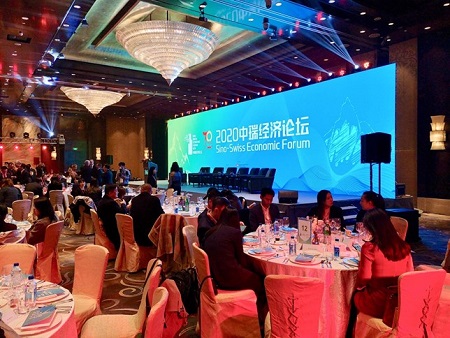
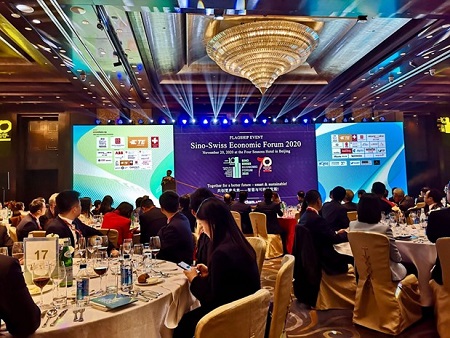
The forum took on a different focus and format due to the unusual situation faced around the globe. This enabled the participating companies to partake in more in-depth conversations throughout the year on a multitude of topics. The final event took place on November 20th at the Four Seasons Hotel in Beijing with a Panel discussion and gala dinner.

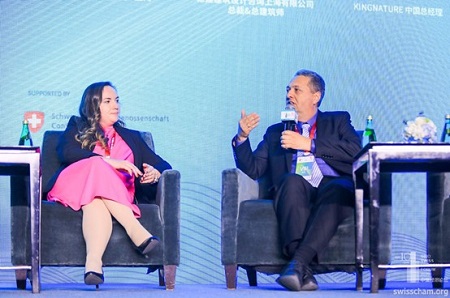
Our Client Manager & Marketing Coordinator, Samantha Chalmers, was invited to be a part of the SME panel and share insights on sustainable efforts in the retail design industry. She also touched on the sustainable efforts of 5 Star Plus Retail Design and the key sustainable considerations we take into account when it comes to design and execution of our projects. The panel discussion was led by China’s leading anchorwoman for international broadcasting for CGTN, Tian Wei.

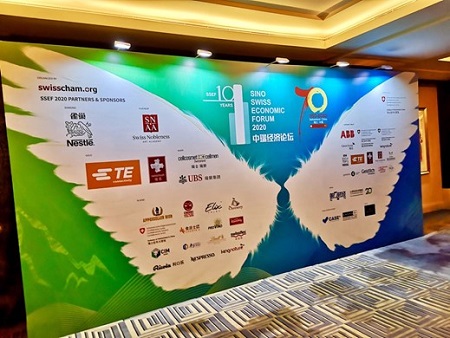
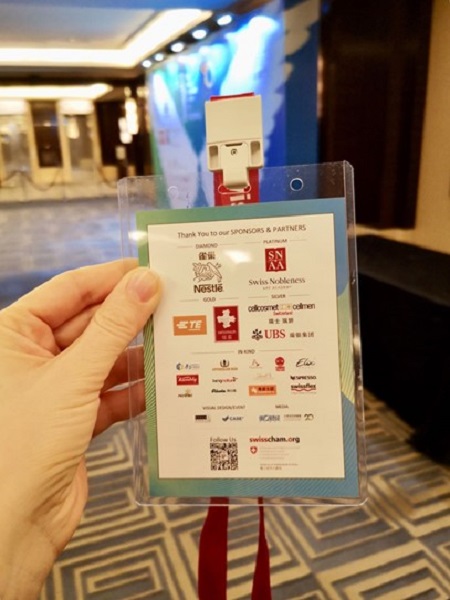
5 Star Plus Retail Design also acted as proud visual sponsor at the event. As visual sponsor, 5 Star Plus Retail Design developed the event's visual identity including the design of the key visual, backdrop, menu, tickets, and signage, among others. The creation of a festive atmosphere was important; further inspiration for the event design concept was the optimistic outlook for a better future. Overall, it was inspiring to hear from other companies and share our insights towards future sustainable goals in China’s market.
> back to top of page

CIIE, FHC and ProWine 2020 in Shanghai: Review by 5 Star Plus
November 19, 2020
November is a busy month for events in Shanghai. It marks the kick-off of the China Internal Import Export (CIIE) Exhibition. This was the 3rd year for the expo to take place and it was quite different from previous formats due to the safety pandemic prevention measures.
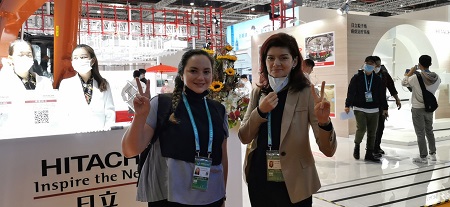
CIIE featured an impressive turnout of both Chinese and international companies coming from a variety of sectors including consumer goods, technology, and food products. Apart from brands that have exhibited in years past, there were a number of new brands eager to showcase new products ready to enter the Chinese Market.
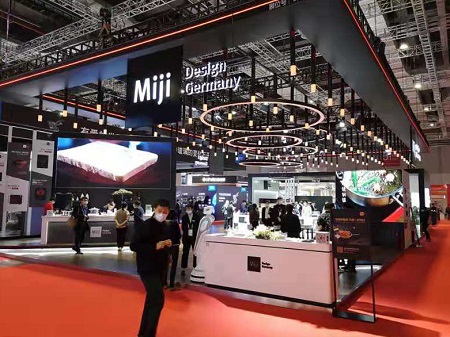
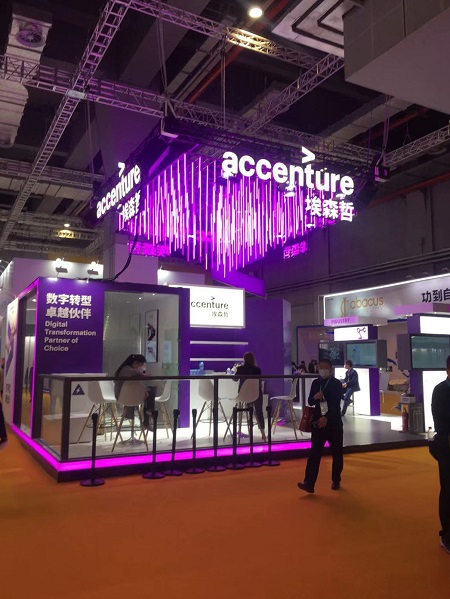
Following CIIE, is the annual China Hotel and Food (FHC) exhibition, which takes part in conjunction with the ProWine exhibition. These expos feature F&B products and other industrial goods related to F&B. While the show was slightly smaller from last year, there was positive growth in the presence of domestic brands.
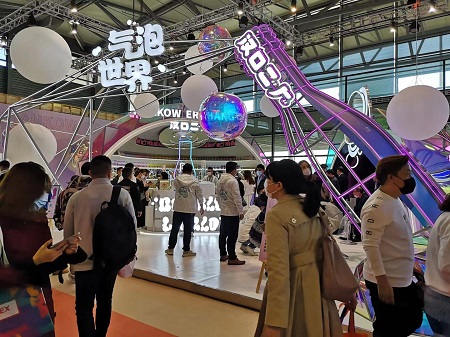
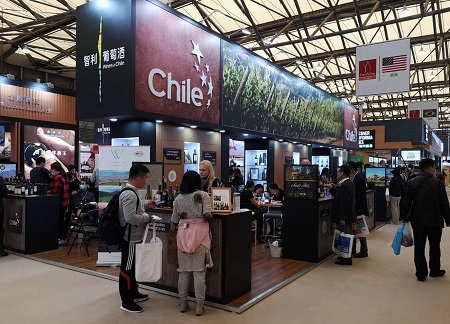
Overall these three exhibitions served as a valuable opportunity to bring global companies and industry experts together in order to better share insights, exchange information, and showcase their latest products and services.
> back to top of page

Closing the Circle with Technology Integration
5 Star Plus Series: Excellent Retail Design in China
October 29, 2020
Retail stores are an important tool for marketing a retail brand to consumers. From the outside in, consumers need to be attracted to a retail store in order to effectively have an experience that will resonate and entice them to purchase more goods, and become more loyal to the brand as a whole. Incorporating technology into the design of retail store can enhance design elements, while also bringing customer experience to the next level as they explore the retail space. Technology integration also helps to close the circle in the omnichannel ecosystem.
Key Goals of Retail Design
Retail design starts with a concept that achieves key goals for the brand. While the specific goals vary for brands, there are four key design goals that should be keep in mind of retailers which include:
- ? Technology integration
- ? Brand Story
- ? Attractive retail window displays
- ? Retail experience
When combined into retail design, achievement enables retailers to successfully increase brand awareness and sales.
A Connected Retail Experience
Technology has become an integral part of daily life, and even more so in the retail landscape. It’s important for brands to utilize this daily dependence of their consumers as a way of building a deeper connection to their brand as a whole. Technology integration can be used in many ways from a stronger and dynamic display, interactive store elements, and eye-catching, movable design elements. Designers can play with technology integration as a way of attracting the eyes of consumers to key focal points that help to better market a brand and its story.
Other points of technology integration are a bit more obvious, and can tie more strongly towards having a strong new retail design. This type of technology integration enhances the consumer’s overall retail experience, and can also allow them to learn more about a brand’s story in a more unique way.
A great example of this is the American footwear brand, Nike. This brand has a strong presence worldwide, from retail stores to integrated omni-channel experience, customers follow a complete brand journey regardless of market. Today we highlight one of their recent most innovative retail design concepts that focuses on new retail strategy. Nike ‘House of Innovation’ is their latest concept that has three locations around the world in New York City, Shanghai, and their most recent opening in Paris.
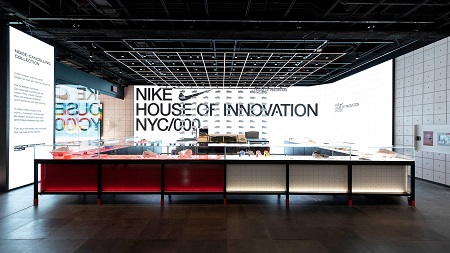
Image Source: Frame
Nike ‘House of Innovation’ started in 2018 with the opening of their new flagship store in New York City with the launch of their House of Innovation 000 marking it as the first location in the world to follow their new retail model. The large flagship store features the latest products and customizable experience zones with a unique Nike ‘Speed Shop’ stocked with items that are in high demand for that particular location, which is based on their data sources.
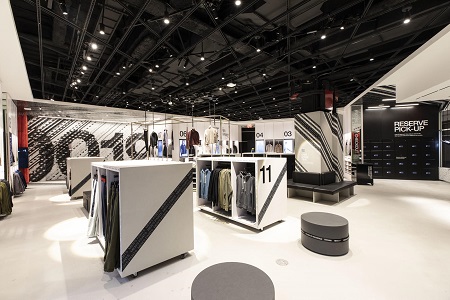
Image Source: Nike
Seamless connectivity with Nike’s mobile app allows customers to scan mannequins, view products and available sizes, try them at a reserved dressing room, and even purchase online for delivery later. Instant check out stations located throughout the store enable customers to make faster purchases as well.
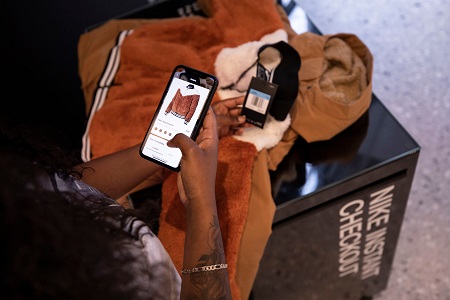
Image Source: Frame
Their second house of innovation opened last year in Shanghai. This three story flagship store features a pretty similar set up to their House of Innovation 000.
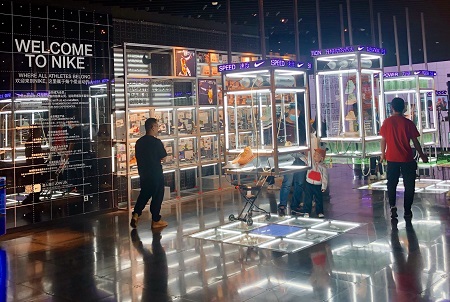
Adaptable displays allow them to adjust the design style depending on the promotion of goods. As of October 2020, Nike’s Shanghai store is focused on the promotion of their shoe line worn by famous basketball player Lebron James.
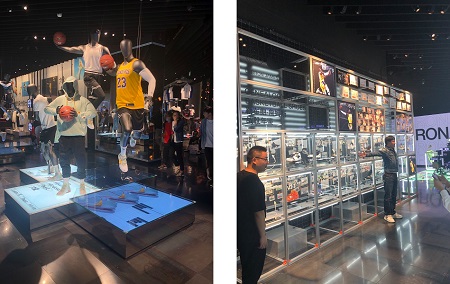
Many displays break down the physical make up of each material that goes into making the shoe perfect. Other displays create excitement by relating it back to Lebron. The central experience point incorporates technology into a hybrid experience by enabling customers to try on a pair of the shoes in their size and take the challenge on an LED enhanced basketball court. If the customer successfully completes the challenge, their stats are displayed periodically between promotional videos on a screen that can be seen from every level of the store.
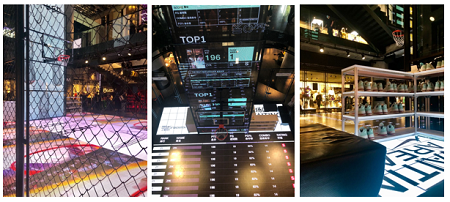
Other technologically enhanced points include dynamic lighting elements added to the mannequin platforms, shelving, mirrors, and store map itself. Other interactive features can be accessed by use of the Nike app while shopping in the store.
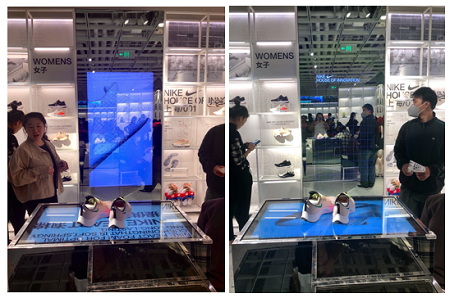
The year 2020 has put a strain on many industries, including the retail industry. This did not stop Nike from opening their House of innovation 002 in Paris this past July. Though the method behind shopping in-stores has changed, Nike’s retail strategy was unknowingly capable of undertaking such a change. Technology interaction points that allow customers to control how much physical interaction they have with clerks, and merchandise enables the customers to control their shopping environment while also complying with new safety measurements required post-pandemic.
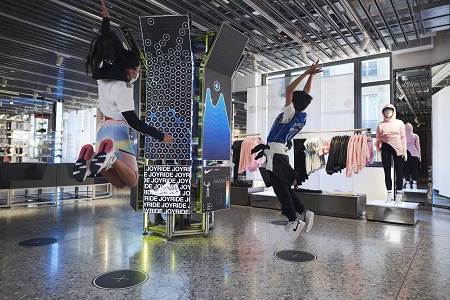
Image Source: Nike
Overall, Nike’s House of Innovation concept design is just one of many concepts they have rolled out in recent years to better meet the needs of their consumers in a new retail age.
Excellent Retail Design in Review
Throughout the series we have taken a look at four retailers with a presence in the global market to see how they successfully implement the 4 key goals of achieving an excellent retail design.
- ? Adidas: Attractive window displays are an important factor of grabbing the attention of consumers and getting them through the door to experience, learn about the brand, and purchase products.
- ? Hermes: Providing consumers with a tailored, memorable, and unique experience is an important part of creating a strong brand loyalty of consumers.
- ? Timberland: Expressing the story of the brand enables consumers to better understanding of the quality of the brand and its products.
- ? Nike: Integrating technology into retail design allows for the combination of all three elements and creates a shopping experience most desired by consumers.
Achievement of the key design goals creates success for brands in a highly competitive global market.
> back to top of page

Digital Content Marketing in China
October 28, 2020
The key for successful digital marketing is having quality content that is both informative and entertaining. In China, it plays a particularly huge part in influencing potential new customers as well as keeping the existing ones. Brands usually expect a high and fast return on their digital marketing investment and in order to reach that goal they have to create personalized content for each specific market, suitable for each different platform.
What is the Goal for Content Marketing?
There are 3 target points when developing a digital marketing strategy:
- ? Generating a buzz for the brand or product.
- ? Driving sales to online and offline channels.
- ? Promote specific products.
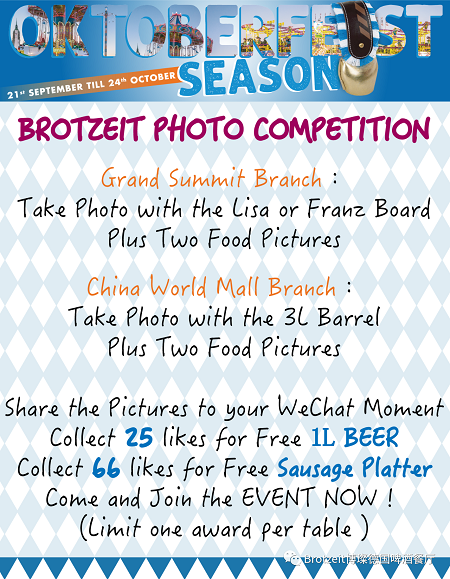
Image Source: Brotzeit official Wechat Channel
Content created by brands needs to be in line with their existing positioning of brand elements. This means that content connects to the brand story, builds from consumer experience with the brand, and ultimately increases brand recognition and visibility on the platform. A digital marketing strategy needs to connect to the overall retail strategy. The most successful international brands create their content around a positive, strong message, like the happiness of Coca Cola, the independent, unique mindset of Apple, or the hard work and dedication of Huawei.
Social Media Platforms in China
The platforms that can be used for digital marketing campaigns are completely different from the Western ones; instead of Facebook, Twitter, Instagram, or Google, brands utilize WeChat, Weibo, and Douyin. They all have their own specifics and the content posted on them varies regarding the style and their target audience.
- ? WeChat: This is one of the most useful apps in China. Users can chat, browse, pay, and read about their favorite brands and updates. Brands can publish their company details, articles with text, video, and pictures, share promotions throughout their official accounts, mini-programs and moments feed.
- ? Douyin: Originally, the app was used among millennials to share fun, short videos but nowadays brands can make the most out of this platform as well by creating brand-specific challenges, using product placement and KOL promotion in their videos. This platform is similar to its Western counterpart, TikTok.
- ? Weibo: Literally translates to microblog that allows users to share short updates with a 140 character limit. The platform offers similar functions as the combination of Twitter and Facebook and allows brands to host their official account, connect with other users while promoting the brand.
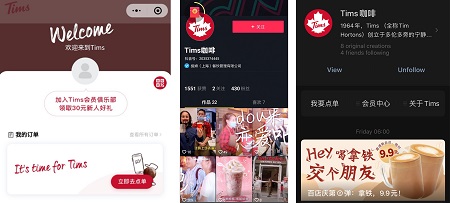
Image Source: Tim Hortons
Marketing Platforms in Use
One example of a successful WeChat campaign was Yves Saint Laurent’s ‘Kissing Habits’ survey. It captured users’ star sign and gender and then it created a personalized lipstick recommendation from their latest collection. The second part of the campaign was ‘A Time To Kiss’ mini-films. These short films featured the love stories of couples with a theme of lipstick color. In order to encourage proactive participation in the campaign, they extended its reach by letting customers tag their friends for a chance to win a lip gloss.
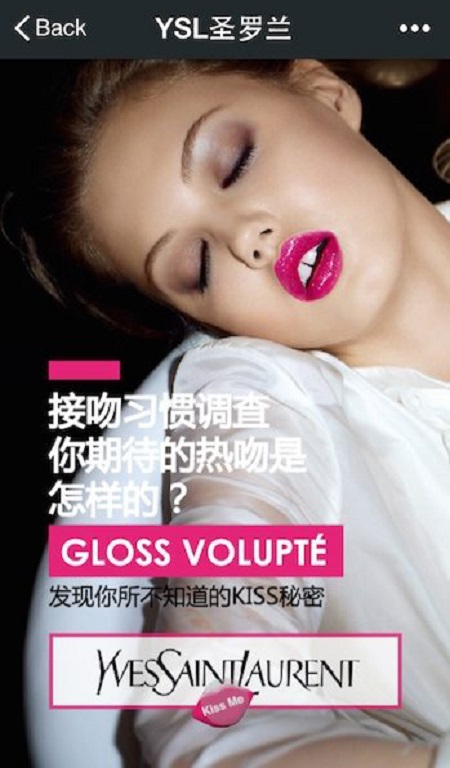
"China: This Week In Digital Luxury Marketing"
The general direction for successful marketing campaigns on Douyin is to create an innovative, trendy video and to participate in challenges. Haidilao, a hotpot chain restaurant successfully combined elements of offline and online marketing. When Douyin users order their special DIY recipes, the delivery staff bring a special hot pot set to change up their hot pot experience. Users posted their hot pot videos on Douyin together with a number of KOLs to boost the campaign. The result was more than 2,000 videos and more than 50 million views in total.
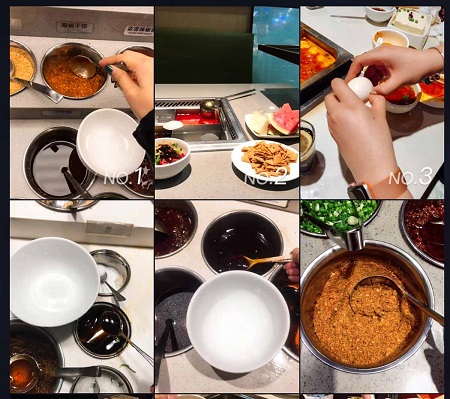
"Douyin Marketing Guide: 7 Examples of Successful Douyin Marketing Campaigns"
When Starbucks released its special limited edition “Cat paw” cups, they used Douyin, Weibo, and Xiaohongshu as a marketing tool for the pre-launch. The social media presence generated high discussion volume and excitement for the actual launch.
Wagas is a Western-style restaurant serving healthy food. It was founded in Shanghai and has restaurants in more than 10 cities all over China. Their social media presence is remarkable. They are consistent in building up their healthy lifestyle brand both on WeChat and Douyin. Aside from their more informative postings, they never forget about their younger followers and create videos with dancing challenges.
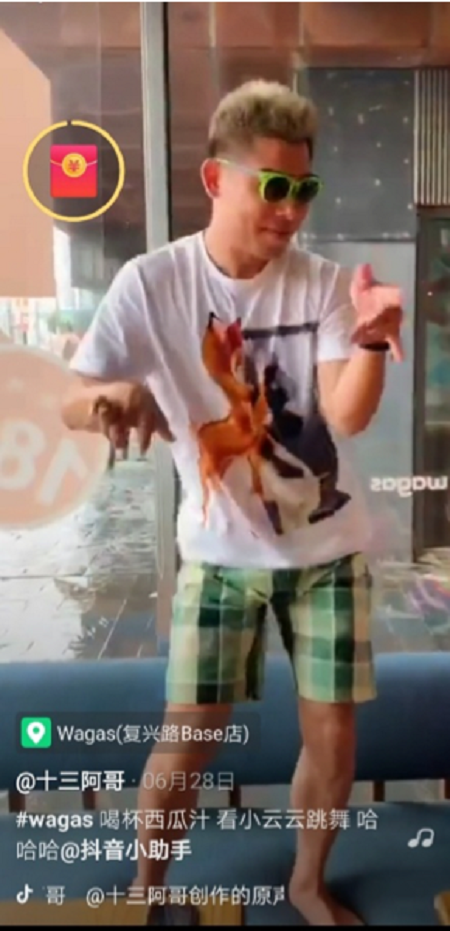
Image Source: Wagas
Challenges of Content Creation
Content creation is not always a smooth process and requires a lot of research and analysis. The ultimate goal of content creation is to reach the target audience. This means understanding the type of content they want to see and providing it to them in the right format. In addition to this, the content presented on platforms needs to fit within the ecosystem of the social platform seamlessly. Understanding trends in the fast-changing environment of these platforms becomes an important factor.
The core is to find the best style that resonates with the target audience:
- ? Written content (articles and reports) is a great way to convey logical information and analysis to the reader.
- ? Influential content featuring KOLs, trending discussions, and hashtags are great tools when it comes to connecting with Millennials and GenZ.
- ? Video content either short or long, video is the most effective tool for visual messages and to get the attention of the viewer.
- ? Gamification has also become increasingly important within the past 5 years. Chinese consumers love to participate in interactive promotions especially if it is incorporated into online games.
When it comes to content, the general expectations in China are quirky, engaging, fun, and interesting digital marketing campaigns. Social media users prefer to take part in games, challenges, and competitions.
> back to top of page

How Customized Fa?ade Design Maximizes Seasonal Promotions
5 Star Plus Series: Adaptable Retail Design
October 26, 2020
The core strength of adaptable design is flexibility. Adaptability in retail design allows for a quick and agile implementation of strategic changes, reshaping the space with new designs in-line with the promotion and leaving long-lasting impressions of the brand and products. The elements of an adaptable retail design give the possibility to put hands back at any moment to the appearance and conformation of the space after its realization.
Goals of Adaptable Retail Design
The goal of adaptable retail design is to provide brands with the possibility to expand the reach of their seasonal promotions and effectively maximize their effects:
- - Attract customers: brands can effectively engage loyal customers by reshaping an already familiar space in new ways. It also allows for implementing high-impact designs that help attract new customers.
- - Provide experience: setting up temporary experiential points can expand the range of entertaining activities customers can engage in while visiting the store.
- - Promote new products and designs: eye-grabbing new elements complementing the main design help focus the attention on the new lines and seasonal items.
Elements of Adaptable Retail Design
In this four-part series we are going to explore the possibilities of the main elements in adaptable retail design. The four main elements that can be easily customized in-line with the brand’s promotion are:
- 1. Fa?ade Design
- 2. Interactive Experiential Points
- 3. Product Displays
- 4. Pop-up Stores
These four adaptable design elements enable brands to achieve key goals. While these elements can be combined, it is important to see how some brands successfully implement them separately. Part one of this series will examine how to execute fa?ade design adaptation for seasonal promotions and new product launches.
Customized Fa?ade Design Execution
Changes in the fa?ade designs are often one of the first indicators for prospective customers of the brand’s new products and seasonal lines. The fa?ade of the store has to enhance brand recognition through its best representation of the brand’s new concept and complement the main design of the store while revamping its image altogether.
A simple but effective way to signal novelty in fa?ade design is the use of temporary window decal stickers in line with the collection promoted. While windows stickers used to be applied by lower cost retailers in the past, a number of luxury brands have adopted this customization technique in creative and exciting ways in recent years.
Gucci – Qixi Festival
For this year’s Chinese Valentine’s Day, or Qixi Festival, Gucci unveiled a new limited-edition line inspired by the English saying “Apple of my Eye.” The new design of the two interlocking GG in red print introduced an apple motif used to revamp the monogrammed accessories and apparel, but also the fa?ade design of key locations. The stickers of the GG apples and the winged hearts covered the fa?ade of the store two floors, with larger-sized stickers for the top floor allowing the brand to expand the promotion’s visual reach and to catch the eye of pedestrians even at a distance.

Image Source: QQ

Image Source: Cunman
Dior - 2018 Autumn/Winter Collection
On occasion of their 2018 Autumn/Winter collection launch, the French brand opted for a hyper-visual and very stimulating fa?ade design. Their collection, renamed “Youthquake”, took inspiration from the 1960s French youth cultural movements and used various slogans of the time as design elements. The collection’s new design visually translated in impactful stickers shouting the campaign slogans in large letters, as well as in a collage of black and white old-style photos and splashes of color. The vinyl decal stickers allowed the brand to present their new collection globally from avenue Montaigne in Paris to Beijing Shin Kong Place, easily adapting the concept to the fa?ade conformation of different locations.


Image Source: Xuehua
Montblanc – 2020 Re-opening Campaign
For their Shanghai Grand Gateway re-opening and for stores across the country, Montblanc has adapted their global brand campaign “What Moves You Makes You” in a new monogrammed pattern in fluorescent blue. The location’s fa?ade glass windows and glass doors are covered in decal stickers arranged in diagonal lines. The stickers thin format allows them to keep the storefront transparency, while creating a well-ordered rhythm that gives movement to the store fa?ade. The new campaign design maintains the classic and high-end appearance of the Montblanc Maison, but also manages to successfully spin its looks and add exciting new elements.


Key Benefits for Brands
Brands can benefit from customizing their storefront fa?ade to launch seasonal promotions in three ways:
- ? Catch Chinese customers’ attention: the most important benefit of fa?ade adaptation is the possibility to signal to customers that there is something new in store for them. This is particularly relevant for Chinese consumers, who expect certain special feasts and seasons to be celebrated with products specifically tailored for the occasion.
- ? Implement omnichannel strategy: excellent fa?ade designs drive in-store traffic and increase online engagement with the brand. In an omnichannel promotional strategy, eye-catching decal stickers will impress customers and bring them to engage with brands also online.
- ? Cost-effective design adaptations: decorative elements like window stickers in vinyl are a practical and cost-effective solution to adapt the brand’s new collection concept and designs to its physical space. They allow modifying the entire fa?ade of the store without the need for complex structural changes.
Outlook
Adaptable retail design integrates the brand’s core visual identity with exciting new elements and theme-variations on the design. Fa?ade design adaptation provides the possibility to customize relevant elements of the storefront, like the front entrance and glass windows, without impacting or changing the main architecture.
In the next article of this series dedicated to adaptable retail design we are going to present another way to impress tech-savvy Chinese customers and invite them to interact with a new product line: Interactive Experiential Points.
> back to top of page

2020 Relaunch - The Beginner’s Guide to Retail Store Design
September 29, 2020
You’ve got your products; you’ve got your brand; you’ve even had success selling online. So much success, in fact, that you are looking to open a bricks and mortar store. You’re looking for a place to showcase your products and entice new customers, somewhere that sells the idea and principles behind your brand. Opening a flagship store sounds easy in principle, but a lot of work goes in to making sure the retail store design is right for you. 5 Star Plus Retail Design are experts at design and have decided to share a few helpful hints for you to consider when opening a new retail store.
1. Budget
Rather than thinking ‘how much does this cost?’ think about ‘how much do I want to spend?’ If you approach a designer with an unlimited budget, they can carve out a little piece of heaven, but the same effect can be achieved with a smaller budget. Designers are adept at making cheap look chic and using low-cost alternatives achieve the same effect as high-end. They can come up with creative solutions, using ingenious design to make an impact. For example, using perspective to make the store appear larger and more open.
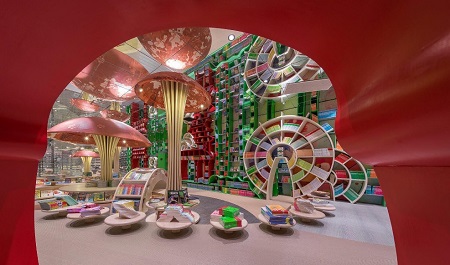
" Li Xiang’s Zhongshuge bookstore is stacked full of wonder "
Image Source: Frame
The use of tall mushrooms in the Zhongshuge flagship bookstore design makes the customer see the store as a big, wondrous place full of possibilities.
2. Store Layout
When designing a store, it is important to think about how your customers will move around. When they enter a store, most people turn right, so this space should be filled with exciting retail displays that draw people in. Through clever unit placement, the customer’s journey can be plotting so that they will spend more time instore browsing. Other things to consider include where to place the till, how to include storage on the shop floor, and providing additional facilities for guests such as seating.
It is important to consider your own store needs, as the layout must be functional. If products have to be stored on the shop floor, then storage space must be integrated into the design. If staff members have to carry goods or require equipment out front, then there has to be enough space to allow for its use and clear access paths.
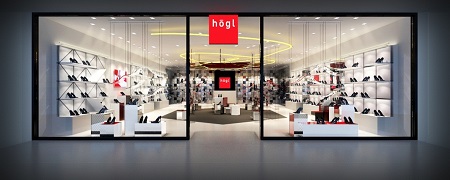
"Shoe & Accessories Store Concept Design, H?gl"
Our H?gl store design China created a path for customers to walk around the store, with interesting displays in the center. The till was placed at the back of the store so that customers were required to walk past the products to make a purchase, whilst also being close to the employee space.
3. Materials
Design materials are often split into natural and man-made, each giving off a different feeling. For example, a natural material such as wood can feel more welcoming and wholesome than man-made plastic. The properties of different materials conjure different mental images, which can impact on how your brand is perceived. To appear traditional, the use of bamboo can tie a space together. If you want to appear industrialized, metal is a good choice.
Texture is also very important for adding depth and warmth to a store design. Shiny, reflective surfaces are used for bold, clean, futuristic atmospheres, whereas using fabrics can create a sense of warmth and comfort.

"Old Fiberboard Ceiling Tiles"
With expert handling, even cheap materials such as fiberboard can be made to seem sumptuous. These fiberboard ceiling tiles can be used to create a rich, traditional atmosphere.
4. Shapes and Colors
Think about what feeling you want your brand to represent. Are you a healthy, nurturing brand? Then use soft lines, bright lights and colors such as green and yellow that induce a feeling of happiness and growth. Shapes, colors and lighting all combine to create a subtle, often subconscious set of cues that impact on the overall mood of a store. Knowing what each color or shape represents will help you to align the store design with your brand. Also, consider the gender of your audience. Soft curves are traditionally considered feminine, whereas sharp edges and right angles are more masculine.
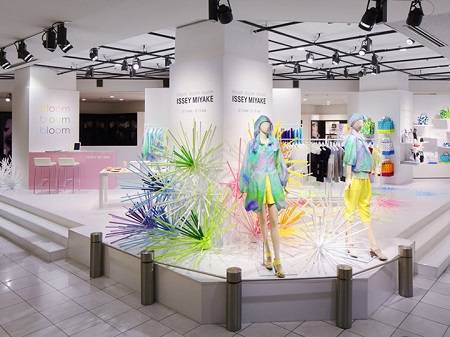
"Bloom Bloom Bloom Pop-up Shops by Emmanuelle Moureaux"
Colors have been kept to a minimum in Issey Miyake’s retail store in order to bring out the contrasting bright colors of the products. The use of white surfaces with bright lighting and soft shadows draws the customer towards the products.
5. Lighting
Lighting is important to draw attention to the product displays, grabbing the customers’ attention and highlighting the products. Ensuring a well-lit, bright display helps to showcase products and results in more sales. Generally, the brighter the store, the more products will be sold. Integrating well-designed lighting into a retail design can be challenging, as it combines placing the lights in the right location, integrating the lights themselves with the store design, considering wiring in the store infrastructure, and ensuring the light quality is in-keeping with the store displays.
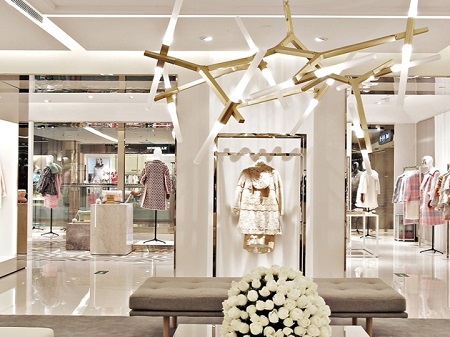
"Diamond Dazzle Stores by Reggiani, Beijing & Shanghai – China"
Diamond Dazzle’s Store Design Beijing & Shanghai: both stores use bright lighting, integrated into the design itself. Spotlights on the ceiling and behind mannequins help to highlight products and eliminate shadows. The large light, shown above, incorporates lighting into a piece of art.
6. Windows and Instore Displays
A captivating window display helps a store to stand out in a crowded marketplace and brings in new customers. It’s a great place to get creative and show the brand concept, emphasising the personality of the brand. Instore displays are also a very good way to emphasise the brand concept whilst displaying the products. It is a useful way to highlight the benefits of products and can include information on the benefits of a product in a visually appealing way.
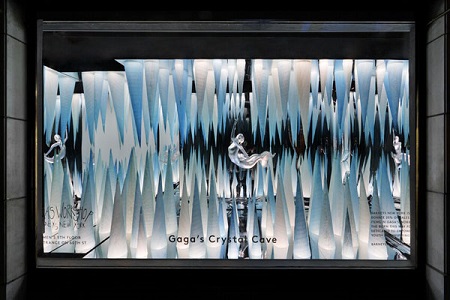
"GAGA'S WORLD(S) AT BARNEYS"
Barney’s window displays designed by Lady Gaga brought to life surreal scenes designed to entice and inspire.
7. Digital and Interactive Elements
Modern retail design should try to incorporate interactive elements in order to engage the customer. Having something to do within the store turns shopping into an experience and encourages them to spend more time getting to know the brand. Including digital elements in the design is a great way to promote omni-channelling and provide more information, specialist options and include an element of imagination. AR technology in particular is helping to revolutionise the shopping experience and can be applied in many ways.
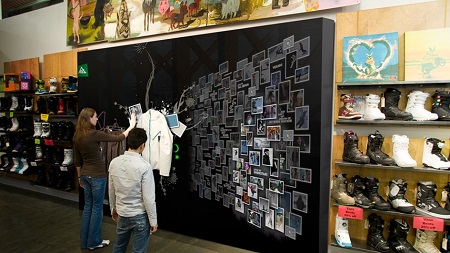
"The Shifting Role of Retail"
8. Trusting an Expert
Working with 5 Star Plus Retail Design makes this process a lot easier. Our team of designers understand how all the above elements work together to create an impressive, unique retail store design, realising your vision in an efficient and timely manner. Working within your budget, we know how much materials cost, how long construction will take, and can manage the creation of your store from start to finish. Opening a new retail store needn’t be stressful; making use of experts’ time and knowledge will save you a lot of stress and help to create a lasting impression.
> back to top of page

Offline Retail Reclaiming its Presence Thanks to Online-to-Offline Strategy
September 27, 2020
The epidemic has prompted brands worldwide to rely heavily on their online channels, bringing e-commerce at the forefront of retail spaces. However, as the situation in China keeps normalizing at a faster pace than the rest of the world, some brands have already started resuming their Online-to-Offline (O2O) strategy.
Online-to-Offline is not a novelty. Born in the second half of the 2010s, the term used to raise eyebrows for its confusing definition. Online-to-Offline used to signify e-commerce or online stores that could drive consumers to physical stores and motivate their offline purchases, and vise versa. With the introduction of Alibaba’s “New Retail” in 2016, O2O has taken the expanded meaning of a seamless and mutual integration between a brand’s online and offline channels. Nowadays, O2O has become an integral part of the omnichannel retail strategy and a necessary step to bridge offline and online environments, especially for those brands who were born online and now wish to create an all-round experience for their customers. The purpose of new O2O strategy is to offer a consistent level of interaction with the brand by way of experience and retail design.
In 2020 this process was partially disrupted, with offline retail enduring the consequences of social distancing norms and post lock-down regulations. Despite the difficulties, O2O strategy is appearing to be making a come-back in the Chinese retail ecosystem.
Planning for a Future O2O
One of the last examples of Online-to-Offline strategic implementation comes from Alibaba Group, which has confirmed its investment in Helijia (a Chinese booking-platform for beauty services) and has resumed the efforts to bring the start-up′s offer of on-demand manicures and beauty treatments in its TMall Beauty kiosks around China.
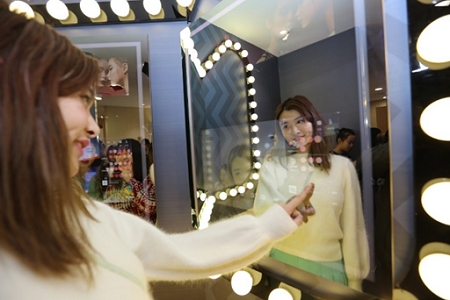
After a fall of 10% in retail sales during the first quart of the 2020 (National Bureau of Statistics of China), the Beauty Industry in China has experienced a faster recovery than other sectors. While international players like Sephora were still aggressively promoting their online retail spaces, domestic beauty brands like Harmay, The Colorist, and Perfect Diary were laying out their O2O strategy to create or expand their offline network. According to CBN Data, The Colorist has opened more than 100 offline stores in benchmark shopping malls and has plans to open 200 by the end of 2020, and Perfect Diary has planned to open 600 stores in Chinese lower-tier cities over the course of the next three years. O2O planning is also extending beyond the Beauty Industry: this is the case for C2C platform Ymatou, which has built a name on bringing foreign luxury goods to Chinese consumers through live commerce broadcasts and fast delivery. The company recently announced the planned expansion to open 1000 offline retail spaces across 100 cities in China.
Benefits of going Offline
What are the benefits of entering the physical retail space through O2O strategy? We have identified the main three:
- 1. Improving Overall Consumer Experience
- 2. Shrinking of Offline Operational Costs
- 3. Leveraging on the “Net-Celebrity” Status
1. Improving Overall Consumer Experience
Integrating online and offline channels improves the overall experience consumers have with the brand. For example, the Beijing store of cosmetic company Harmay reflects its uninterrupted consumer experience even on the design level. The industrial design of the location gives the feeling of peeking behind the curtain and into the cosmetic brand’s warehouse: this enhances the sense of continuity between a visit to the store and the online platform, but makes the two experiences different enough to keep consumers entertained and feeling they are at two complementary steps of the same journey.
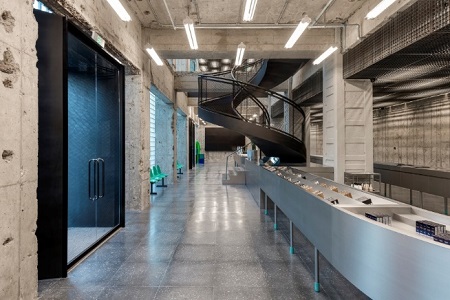
2. Shrinking of Offline Operational Costs
Brands investing into an offline retail space can benefit from the shrinking costs gaps between operating online and offline channels. According to an interview to Ymatou CEO Zeng Bibo, traditional stores used to have high operational costs but after the epidemic there has been a substantial decrease in rent costs. At the same time, logistics costs in first- and second-tier cities are currently rising, making online operations less convenient than before and opening up new possibilities for offline spaces.
3. Leveraging on the “Net-Celebrity” Status
Brands can leverage on their successful online presence to stimulate consumers brand recognition and endorsement. For example, Chinese aromatherapy and lifestyle brand To Summer is widely considered a “Net-Celebrity” brand and has opened its first pop-up store in Beijing on the 12th of September. Thanks to an extensive online campaign, To Summer high-end room fragrances and rough crystal diffusors have become a successful presence on social media in the past. Despite not having opened a Tmall store, the brand is already widely sold through the self-operated WeChat mini program. Plans to open a permanent retail location in Beijing’s popular Sanlitun district are already in the making for December of this year.
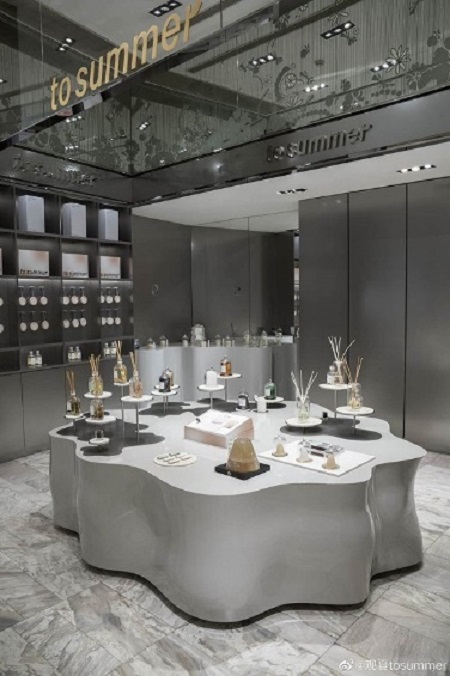
While the global pandemic seemed to have had unfavourable outcomes on brick-and-mortar stores, Online-to-Offline strategy and its enhanced role in the New Retail is providing the answer to guide brands in reclaiming their physical presence. Treating online and offline channels as complementary instead of as competitors has proven to be a successful strategy in the past, and Chinese domestic brands have already resumed their efforts to provide a better integration between the two channels.
> back to top of page

5 Star Plus Retail Design Insights: Creating Experience Online
September 18, 2020
On September 10, our Shanghai Client Manager, Samantha Chalmers, gave a talk on creating more online experiences for B2B brands. The webinar was a collaboration with AdChina.io and was organized by them. Her presentation shed light on the changing needs of Chinese consumers as they recover from the effects of COVID-19. It then took a look at different digital marketing strategies and how they can be applied for B2B companies. Later, she touched on the overall outlook for these methods moving forward.
While looking at the Chinese market, it’s important to understand exactly how the needs of consumers has changed in the past 9 months, as well as, the transformation of the digital market in China. Being one of the most digitally competent markets in the world, it’s no surprise that China would experience further acceleration into a digital economy. Despite being more digitally focused, consumer experience is still highly valuable to consumers.
Marketing must provide experience to consumers. The three pillars of success for marketing are:
- 1. Personalization
- 2. Experience
- 3. Storytelling
Samantha addressed three different digital marketing methods that help B2B brands achieve the three pillars of success.
Personalization
The first digital marketing method focuses on personalization, specifically by use of VIP consultants. This method allows VIP consultants to create a WeChat group or personal chat to connect with potential clients. Most contacts that the VIP consultant connects with comes from within their personal network. They can then utilize the group to send daily messages, promotions, answer questions, and arrange personal appointments with Clients offline or online. This method can be enhanced with the assistance of WeChat for work.
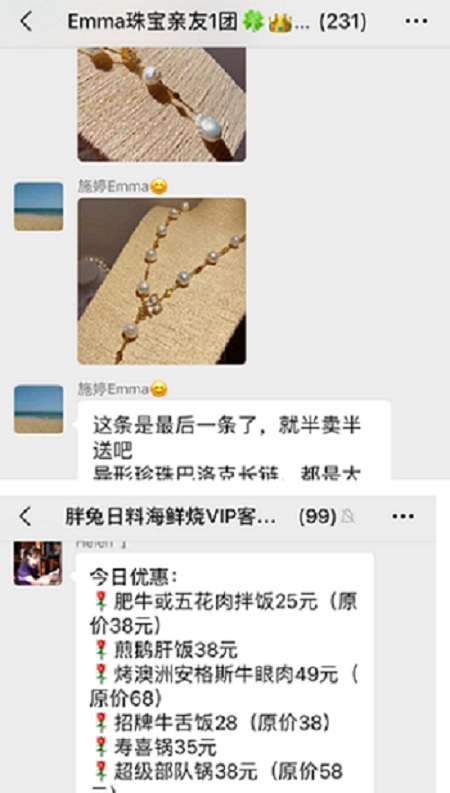
Experience
Experience is an important part of creating engagement with a brand. Virtual experience allows consumers to do so in a unique way. In fact, 95% of Chinese consumers have interacted with VR technology in the past month alone.
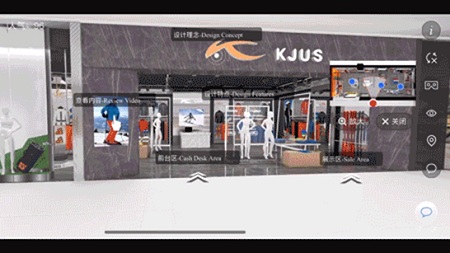
This format allows the consumer to enter a virtual showroom or exhibition stand and interact with the products by virtually picking them up, reading about product information, or even exploring the components inside the product itself. Live engagement features such as a chat room, or video conference can allow a brand to host a virtual event in a whole new way.
Storytelling
Live commerce was something that brands started to work with more during this time. This method allows a brand to live stream on multiple platforms to enhance their marketing by showing consumers a different side to their brand. This method can take shape in many forms, and the actual use and strategy is dependent on the goals of the brand.
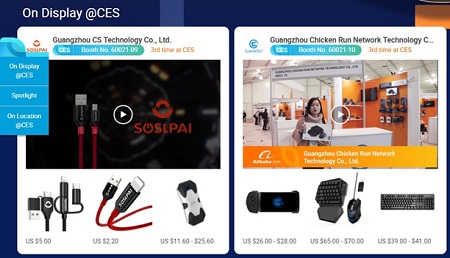
Live commerce formats can be set up in various different formats. These live-stream sessions can be hosted by a KOL, showcase an event, feature a Q&A or panel discussion, or even take place in the form of a webinar and tradeshow event. Regardless of the format, this method enables the brand to express their brand story and values, showcase in-depth information about a product, and creates direct interaction and engagement allowing consumers to directly connect with the brand and other sales methods.
Benefit for B2B Brands
A major challenge for many B2B brands is understanding exactly how digital marketing can be valuable to them. Many B2B brands question if their efforts will actually show a return on investment. Some may think that they won’t be able to reach their target consumers as effectively through digital channels of marketing. While offline marketing is still highly important for B2B brands, studies indicate that digital marketing does in fact create a positive ROI for their efforts.
Digital marketing for B2B brands will continue to evolve over time. While the true benefits are not fully known, there is no doubt that improving digital marketing channels will help brands to enhance their overall omni-channel strategy resulting in increased sales.
> back to top of page

Enhancing Virtual Events
August 31, 2020
The year 2020 has thrust the entire world into a new realm that has no limit on which industry is impacted. During this time, companies across all industries have been able to cope with the implementation of webinars. Webinars have become a standard form to offset a huge lack of physical events. As the world continues to recover, it brings attention to whether or not webinars will be here to stay?
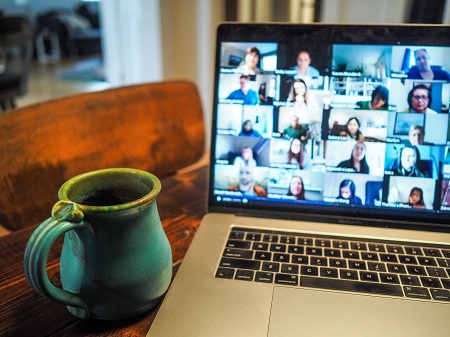
Image Source: Medium
It is very likely that webinars are a sustainable way to have events moving forward. One major challenge with this form of virtual event is that that consumers, clients, and investors are unable to interact with a brand and its products like before.
Benefits of Online and Hybrid Events
As a sales person, it may be seen as a hindrance to attend or host an event online. A big factor of this is the overall engagement and interaction that can take place between attendees. However, there are still many benefits to this new event format for brands, three key points being:
- ?Sustainable
- ?Cost effective
- ?Higher engagement
VR Event Showroom
A virtual reality showroom brings guests into a virtual space and allows them to virtually walk through as if they were actually there. They can interact with products, learn more about their features, and engage in other activities that enable them to learn more about the brand story.
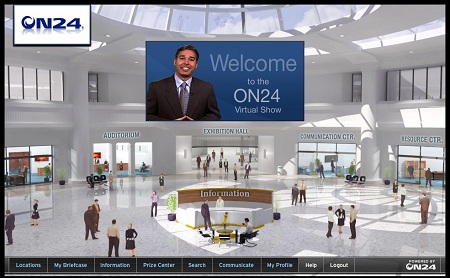
The design of the virtual space can be much like an exhibition stand, factory space, or retail space depending on the needs of the brand. After the guest has had time to interact with the virtual space, they will then be connected to an online live stream or video platform that allows the guest to partake in a webinar or one-to-one meeting format.
The design process is similar to that of a physical retail space, but instead of constructing it, it is built into a virtual program. Programing options can customize to best suit the needs of the brand. Interactive elements can also vary.
Sustainable Difference
Traditional events meant people far and wide would need to travel across time zones in order to attend and connect with each other. It also meant that brands would need to build up a physical space in order for guests to come and attend.
While the experience of doing so is quite pleasurable, it’s hard to ignore the fact that doing so creates much waste from a sustainably green point of view.
The use of VR in order to execute events helps to cut back on the non-sustainable impact of traditional events.
Cost Savings
The creation of a virtual space provides flexibility for brands to be able to adapt the design and features of the space as the needs of the brand change overtime. The cost of making adjustments to a virtual space are significantly lower than a complete recreation and buildup of a physical event space. In addition to this, brands have the ability to adapt the features of the space depending on their specific needs for each event or even for use between different markets.
For example, the key features of a product might be of different importance between consumers in China and Singapore. The adaptation of the virtual space would allow a brand to adjust the positioning prior to each event taking place for the different consumer segments in these markets.
Higher Engagement
Will VR space truly create an overall higher engagement level for participants? The truth behind this is quite subjective to the actual target attendees and their typical behaviors. However, it is easy to see the shift of behavior for Chinese consumers since the beginning of the pandemic. According to a study by McKinsey, 85% of consumers still prefer to have some sort of physical reaction with a brand.
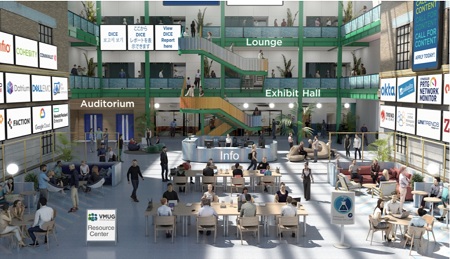
Virtual reality provides a different type of interaction with a brand, but still creates engagement through the use of a VR system. The point is that the impact of the experience itself is far greater than just a webinar.
> back to top of page

SMALL-Format Stores with BIG Prospects
August 24, 2020
This year proved that that even when something unexpected happens in the world that has an effect on the market, brands need to quickly adapt to the new circumstances. The current state of social distancing has forced customers to also adapt by changing their shopping habits: avoid crowds, shop online and use home delivery services.
What is the learning outcome for brands? Firstly, better, more structured omni-channel presence and secondly, improved, more functional brick-and-mortal stores. When it comes to physical stores, brands; just like customers, are looking for a space that can accommodate social distancing and necessary sanitation procedures. Customers are more aware about their shopping experience and how safe they are in the store. A solution for these problems can be one of the upcoming trends from recent years: small-format stores.
What is the Small-Format Store?
Small-format stores are not recent inventions, but they definitely have the potential to come out as the winners of the pandemic situation. These stores first appeared after the great recession in 2008. They recently started to gain more popularity among both retailers and consumers. Big-box brands in the US, like Target and Walmart started opening smaller store formats with limited product selection to adapt to urban requirements and to optimize their portfolios in the world of multi-channel shopping. Having lots of small-footprint outlets in a variety of areas helps brands to reach specific customer groups (university students, families with children or office workers), while maximizing their profitability by only offering a streamlined selection of goods most needed by the core customer segment in each location. Small-format stores are usually 75% smaller than other standard stores of the brand.
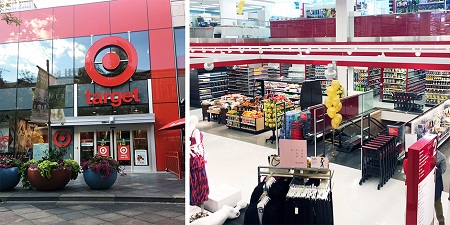
"Small-Format Target Store"
Benefit of Small-Format Stores
There are four key advantages of small-format stores:
- 1. Less expenses, Better pricing: The opening and operational costs of a smaller store are much less than that of a larger store. These cost-savings help contribute to the overall cost of goods within the store. Operational cost-savings from small-format retail enable a brand to match prices of their competitors more freely. Overall price position of goods can also be adjusted between locations.
- 2. Greater Customization, and Hyper Local Marketing: Multiple store locations allow brands to cater to the specific needs of the local consumers. When retailers identify these needs, they can vary the merchandise in the store to address them. Brands are also able to test out innovative product ideas specifically to a certain customer group without investing in larger, traditional commercial spaces.
- 3. Improved Accessibility, and Convenience: These small-format stores usually have a strategically important location around residential areas, which provides great accessibility and convenience for their customers. When it comes to convenience the location is not the only great advantage. Smaller shopping area also means easier navigation. The whole shopping experience is smoother, the checkout queues move faster resulting in more people are being served at the time.
- 4. Omni-channel experience: In the ever changing world of retail having a strong omni-channel presence is a necessity. More and more retailers realize the importance of this and try to use every possible tool to maximize their presence both in the online and offline world. Small stores can support online shopping, in-store pick-ups, easy returns and home delivery very effectively. Instead of having all the products on the shelves, they can be linked to different e-commerce websites and function as regular stores, pick-up and return points. This gives those brands utilizing small-format shops a competitive advantage over retailers who only utilize a 100% online e-commerce system.
Examples from the Chinese Market
IKEA opened their first small-format concept store last month in Shanghai. The new format with its 3,000 m2 total area is much smaller than the IKEA stores we are used to. The store takes into consideration the customer’s working location, shopping methods, and living conditions. It creates a brand new home retail experience integrating shopping, leisure and social interaction. The products are more concentrated, clothing and apparel can be customized. These products are chosen based on the characteristics of the surrounding customer groups. Projectors are placed over the beds to display different duvet patterns so they don’t require addition display area. Due to the limited area and the advanced electronic payment methods, the shopping speed is increased.
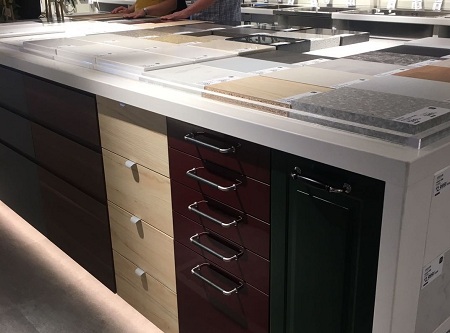
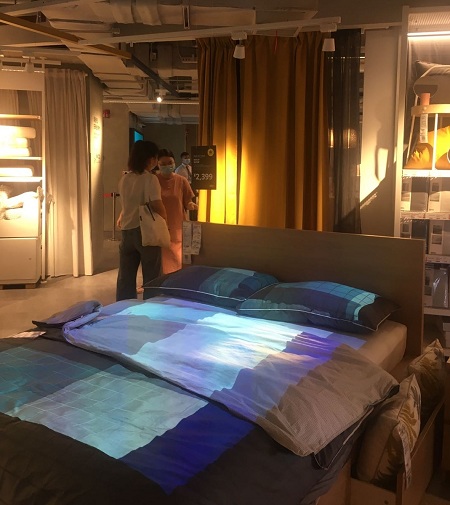
"IKEA Small-Format Store in Shanghai"
Hema has recently introduced their first two Hema mini concept stores in Beijing. If the format turns out to be successful, it will be rolled out and use across the country in order to enter more residential areas. With 800 m2 total area, the size has been significantly reduced. Due to downsizing, the store doesn’t use hanging chain conveyor anymore, but relays mainly on manpower. The types of food they offer for home delivery is also limited compared to the Hema fresh stores but they make sure that the selection is focusing on the basic categories common in the residents’ lives.
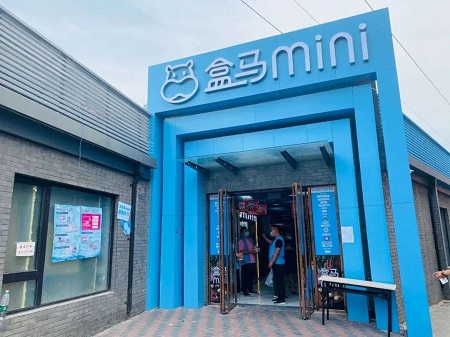
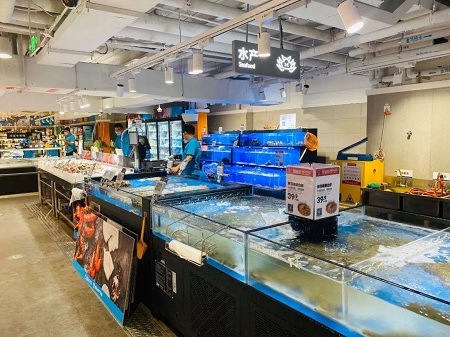
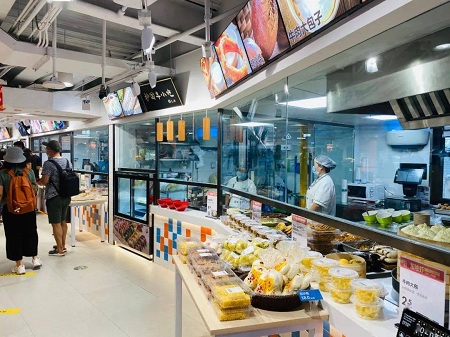
"Hema mini Concept Store"
As mentioned before, one of the benefits of small-format stores is that brands can test new products, design or technical changes. Carrefour opened their small-scale concept store in Beijing in 2019. The concept store is highly digitalized, with advanced in-store technologies and applications such as “scan and go” facilities and mobile payment.
Small-Format Stores as the Future
After observing the current trends and customer needs, it’s safe to say that ‘bigger’ doesn’t necessarily mean better. Instead of placing more products on the shelves, brands are looking for ways to provide immersive customer experience for their consumers. This can mean customization, digitalization or convenience as well.
The most innovative, forward thinking brands were never afraid to try out new formats, to test and learn, therefore always embracing the future. For these brands, smaller shops provide more flexibility and allow them to be bold and adventurous.
> back to top of page

Retail Strategy Best Practices from Caroline Xue, Managing Director at Kurki Fashion China
August 17, 2020
We have interviewed Caroline Xue, Founder and Managing Director of Kurki Fashion, the company importing, producing and distributing the Finnish silk scarves and fashion accessories from brand Marja Kurki in China. The brand has been one of the earliest foreign fashion brands to enter China in 1995 and has since then been extraordinarily successful. Caroline shares insights on the fashion brand’s success factors as well as strategies retail brands in China need to follow should they want to flourish. Marja Kurki has 40 physical retail stores and 5 online stores in China.
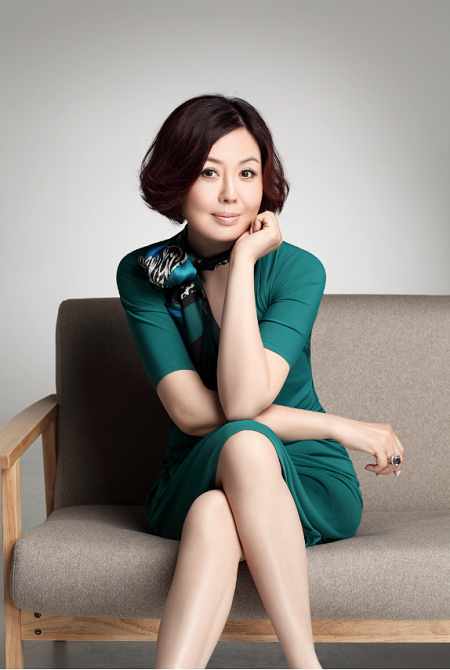
" Caroline Xue, Managing Director at Marja Kurki China"
Dear Caroline, why is Marja Kurki doing so extraordinarily well in China?
Marja Kurki entered China in 1994, 26 years ago, at a time when there were few international brands. This gave us a head start. In addition, we are a Chinese company of WOFE, with a Chinese founder and a Chinese team that is still made up by the same people as in the beginning. This means that we have an excellent understanding of the Chinese market and local consumer habits. Our localization is certainly one of our key success factors. In order to establish Marja Kurki as a top brand in the earlier years, we organized top level fashion shows at the most exclusive places. Finally, we have developed a range of B2B channels to diversify our revenue streams. We work with banks, government offices and corporate clients to produce Marja Kurki customized gift items.
What are general best practice tips for retail brands in China?
KOL/influencer marketing is certainly very important, it helps a brand to gain momentum, to strengthen its positioning and increase sales. Events marketing still continues to be significant, it helps to maintain relationships with long term clients, media and VIPs. And it’s important to have a solid strategy of both physical stores and online stores that complement each other and often reach different customer groups.
What has Marja Kurki done to lessen the negative economic impact during Covid-19?
At the beginning of the year, when store traffic decreased considerably, we started livestreaming. We schedule one hour of livestreaming per day during which the team in the store introduces products. Topics covered are how the products look like on a person, how they can be worn and combined, the material characteristics, and the sales price. We offer a voucher for a very small discount on the presented pieces at the end of the live streaming session that has a limited validity of one hour.
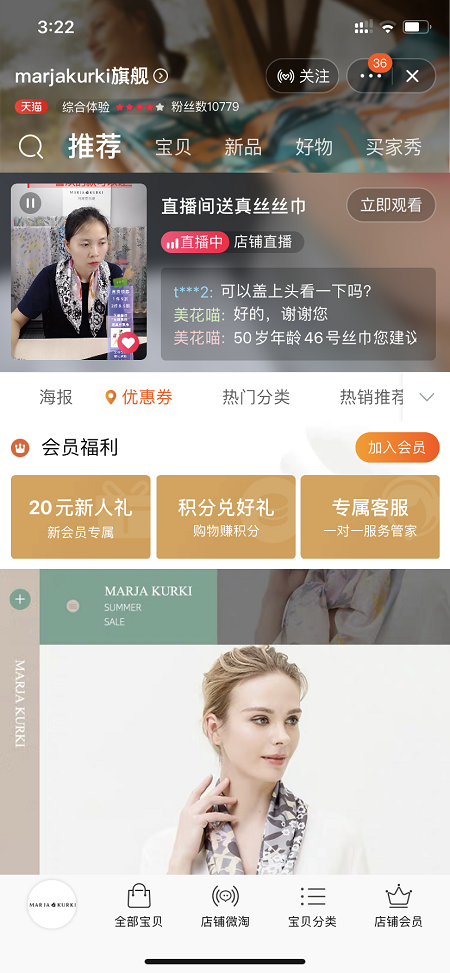
"Living Streaming from the physical store and through the online store platform"
Before Covid, the sales in physical stores and online stores had a ratio of 50/50% and has changed to approximately 30/70% at the beginning of the crisis. In the past months, the sales revenue originating from both channels has become more balanced again.
How has the marketing of foreign fashion brands in China changed over the years?
From 2002 to 2010 we used a lot of print advertising which worked extremely well. We also regularly organized top notch events including fashion shows at the Art Gallery at the Ming Dynasty Wall at Dongbianmen, an event for 300-400 people, as well as shows at the National Centre for Performing Arts and a 10th anniversary fashion show at the Wanfeng Art Gallery in Forbidden City which was attended by many high level VIPs and the brand’s Finnish founder. Each year we had several events, larger and smaller ones.
After print media became less popular, we started to work with “Wanghong” and celebrity marketing. I believe that this is an integral part of the marketing strategy for fashion brands. Marja Kurki has been working with several famous celebrities and movie stars over the years to maintain our top image and popularity.
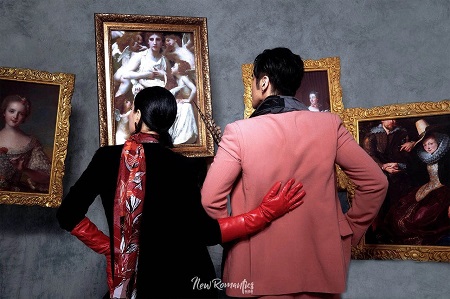
"Christy Chung and her Husband wearing Marja Kurki scarves"
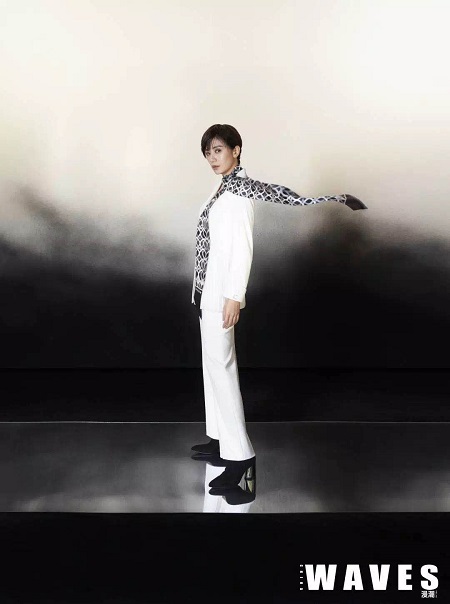
"Jingwen Jia wearing Marja Kurki scarves"
Around the same time we started to use Wechat and Weibo which are the largest social media platforms in China. We have 35,000 followers and our own editors, it’s important to produce high quality content. But – exactly because those platforms are so large and accessible to everybody, it is harder to create a noise as a brand. In the future, we might start to use the video platform Douyin but have not decided yet.
Why do brands need both physical and online stores, and what is the purpose of each medium?
Most importantly, physical retail stores create trust, which is the most important factor when promoting and selling branded products. Secondly, customers can try out the products. With a physical store you are enabling a consumer experience. These aspects are very important for all fashion brands.
With digital channels you reach a broader market, and here, the conversion from social media visitors into online buyers is important. Online stores are more suitable for the sales of materials that do not need to be touched. The consumers are younger. It is also very important which photos you use, certain types of photos generate sales and others do not. At Marja Kurki, we produce special limited collections just for online sales. In order to be successful on online channels, you need to conduct consumer research and use the right key words and product names. Fast and free shipping is considered an important part of the customer experience in China which then in turn leads to a higher conversion rate. Brands need to define and analyze metrics, the most important one probably being the conversion rate (buying customers/visitors).
One important additional difference in consumer behavior online and offline is that there occurs usually more impulse shopping in physical retail stores. Online consumers tend to know what they want before buying.
You have recently launched a new store design. Why was that important and which aspects were particularly important to you?
We wanted to create a new store design concept that fits our classical, elegant brand positioning with a very subtle modern touch. The Nanjing store and many of our stores are shops-in-shops, without our own ceiling and very limited wall surface. We therefore needed the store fixtures to make all of the visual impact and offer a maximum of flexibility to accommodate various product categories (silk scarves, woolen shawls, hats, leather items, umbrellas). It was important to us that the different product types could be displayed in a new, interesting way.
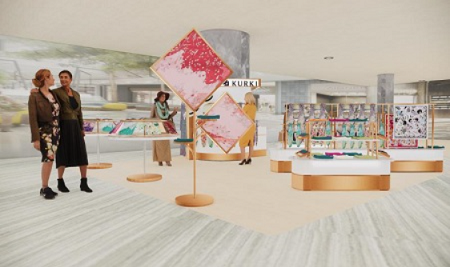
"New Marja Kurki Store Design, launched in mid-2020"
Thank you very much for the interview. We look forward to following the further development of Marja Kurki in China!
> back to top of page

Using VR Stores to Increase Brand Presence
July 31, 2020
As omnichannel retail strategy has become a marketing standard for brands, it’s time for brands to start seeking new ways to enhance their overall omnichannel strategy.
The three pillars of success for retail marketing are:
- 1. Personalization
- 2. Experience
- 3. Storytelling
A unique way to combine these three elements is through virtual experience. Virtual experience provides consumers with a personalized experience while also enabling the brand to incorporate storytelling. Different types of virtual experience include, live-commerce, AI omnishopping, VR video experience and virtual showrooms.
Our previous article focused on how these different types of virtual experience can work. Today, we will focus on the benefits of VR stores in omnichannel marketing strategy by looking at a few brands who have successfully created virtual showrooms in the past.
What is a Virtual Store?
Virtual stores allow for omnipresence and personalization by creating a sophisticated brand experience online. A 2-D is not enough for online shopping. Despite the growing popularity of online shopping and live-commerce, a majority of luxury brand purchases are still made in physical stores. Even after experiencing the covid19 impacts, statistics show that 85% Chinese consumers still prefer to have a physical interaction with a brand before purchasing goods (McKinsey). The main use of virtual stores is to market products and help drive sales.
Evolution of Experience
Omnichannel shopping has been around since the 1970’s where consumers could order products from a catalog over the phone. This soon evolved into infomercials and home shopping networks. As technologies continued to evolve and access to the internet, omnichannel shopping took a very big leap with viral marketing, mobile applications, and virtual experiences online that utilize VR and AI technology.
Jimmy Choo Virtual Showroom
In 2014 Jimmy Choo created an omnichannel experience by launching a virtual showroom, allowing customers to pre-order products that were being released in their new Fall Collection. The virtual showroom was advanced for the time, the design style was much like a Google maps street view. Users could see live images inside of the store and observe real life product pictures and learn more about their features.
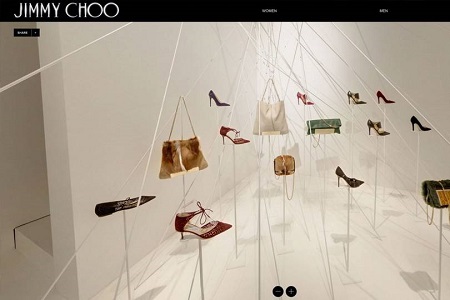
This was one of the first types of virtual experiences that provided consumers with a unique experience by giving them premier access to view goods that usually could not be seen until after fashion week. The campaign helped to create excitement for the new launch of products and increase the demand for the new shoe lines before they were even released in stores.
Ted Baker Virtual Showroom
In 2015 Ted Baker created a virtual showroom of their London flagship store. Similar to Jimmy Choo, users could view actual products but were able to engage in more interactive features. Users could zoom in on products to see more details, and share photos of the products on their various social media channels. The target of the brand was to utilize the showroom as a marketing tool while also driving sales.
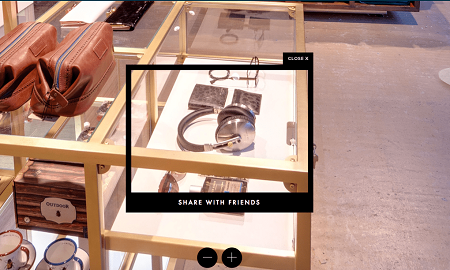
The brand was able to track user data analytics to gain a better understanding of the consumer journey inside the virtual store and realize which products had the highest interaction. The brand could then use this data to enhance their retail store designs in the future.
Geberit Virtual Showroom
Virtual showrooms in 2020 look a bit different from previous models and incorporate a lot more interactive features for users. One of Europe’s leading sanitary brands, Geberit, launched a virtual showroom that does exactly this. The virtual experience takes the user into an interactive showroom where they can interact with different sanitary products and learn more about the features, styles, and directly make purchases through the connected links for products.
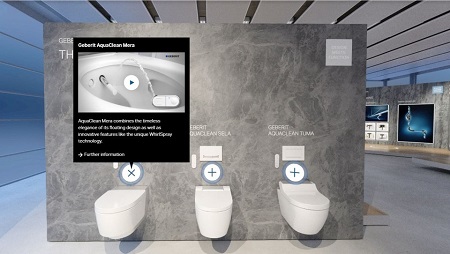
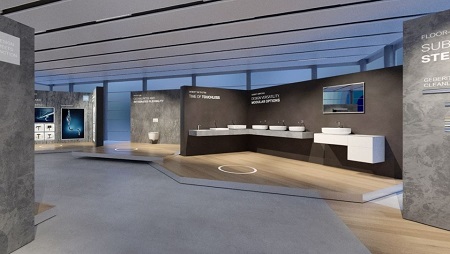
This type of virtual experience, enables the brand to have a direct and interactive experience with consumers. The brand can track data and flexibly adapt their showroom design based on user needs. They can drive sales directly through the experience itself.
Overall Benefit of Virtual Experience Showrooms
Why should retail brands adopt virtual showrooms as part of their omnichannel retail strategy? In one word, flexibility. In light of the Covid19 pandemic, 2020 has shown the retail industry that brands cannot rely on a purely physical stores alone, and further stresses the need for brands to strengthen their omnichannel strategies. A prime example is the Finnish fashion accessory brand Marja Kurki, who usually sells 50% online and 50% in retail stores, saw an increase of online sales to 70% during the first months of the crisis.
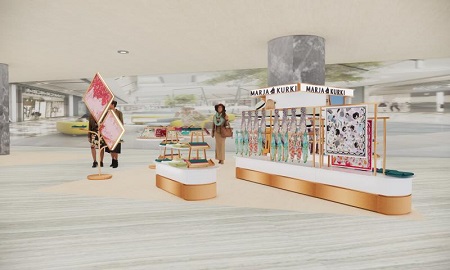
Omnichannel retail strategy is evolving and interaction through every marketing channel continues to grow in importance. Virtual experience provides consumers with a personalized experience while also enabling the brand to incorporate storytelling. Virtual experiences also give brands better analytics on their consumer’s journey and enable them to see which products are most desirable. This allows the brand to then adapt their marketing strategy and physical retail design to fulfill the needs of their consumers.
> back to top of page

How Conceptual Design Process Makes Brands Win or Fail
July 30, 2020
In today’s retail environment, offline retail remains an efficient way to communicate and connect with consumers when compared to online retail. Whether it’s a retail store, pop-up store, or exhibition stand, the design of offline stores must be a clear representation of the brand. It includes much more than choosing the right piece of furniture or lighting fixture. It has to speak for the brand’s mission, values and vision. A key part of successful retail design starts by taking the client’s requirements into consideration at the early stages of the design process and prioritizing the brand’s values in the design stages that follow. This process is something we take pride in at 5 Star Plus Retail Design. This article takes a case study of our design process for a professional camera production brand needing an exhibition stand design.
Step 1: Analysis
Regardless of project type or brand, 5 Star Plus begins by conducting a thorough research and analysis of the client company and its competitors. This research includes a deep understanding of the brand, its products and history as well as the position of the company in the local market. Communication between the client and the designers is essential in order to identify the strategic brand goals and creatively brainstorm the best visual way to represent them.

"Creating Customer Persona Profile during the Analysis"
Additionally, during this step of the design process, our team focuses on research about the project location. The designers have to know the exact location of the stand within the exhibition area, the orientation, the general customer flow direction and the special requirements of the exhibitor. Depending on the scope of the project, the research and analysis step can take up to one week. In the case of the Camera brand, we utilized four designers to complete step one within three days.
Step 2: Mood Board
A mood board is a collection of ideas that set the mood and general aesthetic of the future store, restaurant or exhibition stand based on the brand values and guidelines. It is created by the designers to provide the client with a guiding abstract design direction before beginning the actual conceptual design. The mood board then serves as a transition between the initial design thoughts and the first drafts. Mood boards are an effective tool for visual organizing, setting the scene and establishing a point of reference. The images used for the board represent the brand or just illustrate a certain feeling or aesthetic.
Having this kind of visual plan will provide a ready-made roadmap for the designers and help to speed up the designer’s work when it comes time to start the conceptual design phase.

"Moodboard Expressing Infinity"
Step 3: Zoning Based on Customer Flow
The layout of a retail space is strategically important because it gives the brand the ability to influence the customer experience. This step of the conceptual design process can be done in parallel with the previous, mood board phase. Within every exhibition stand as well as in a retail store, there are zones for different product categories or services. After understanding the product categories and the clear goal of the client, the designers have to create a logical connections between these zoning areas. Each zone is meant to evoke a different reaction from the visitor, either rational or emotional.
The two main components for the layout are the customer flow and the overall design. The design includes the strategic floor plan, while the customer flow is the pattern of behavior and the way visitors go through a store or exhibition stand. Creating zones using merchandise displays, interactive experience points, and signage develops semi-separate areas. All three types of design elements act as speed bumps to keep the customer in the zone and slow down. The main idea is to grab the attention of the visitors and entice them inside the stand by using different attraction points. Within the zones, secondary attraction points keep the visitors movement throughout the space fluid and maintain the customer flow in the stand. The design of the stand incorporates interactions at every point.

"Customer Flow within the Exhibition Stand"
The above design example introduces the brand’s history of camera production by using a tunnel that attracts the visitors into the stand while also showcasing different products. During their journey through the tunnel, they stay interested and excited while learning about the products.

"Short Movie Clips are Displaced using Hanging Screens from the Ceiling"
The other main zones are two different experience points. The broadcasting zone showcases the quality of their live streaming control system and cameras. The movie shooting area showcases the different features of their most popular cameras and allow guests to learn more about them. The background for both areas are very visual, unique and eye-catching in order to grab the visitor’s attention even from the distance. By creating a story for each zone and tying it all together through design, the entire stand builds a connection between the brand and its visitors.
Outcome of Conceptual Design
As the result of this stage of the design process, we can create a clear design direction which is easy to understand and interpret. A strong conceptual design serves as a solid ground for the next phases of the design development when the designers work on the details, draw the precise floor plan and elevations and later on create the 3D model of the space.
By investing into this creative part, we are able to achieve the best possible branding result for increased brand awareness and brand loyalty which, ultimately, is expected to translate into a higher sales turnover.
> back to top of page

5 Star Plus Participates in the 2020 SSEF
July 23, 2020
At this year’s Sino-Swiss Economic Forum (SSEF), 5 Star Plus Retail Design has decided to participate with the showcase of one of their latest design works. In celebration of the 70th anniversary of Switzerland-China diplomatic relations, the topic focus for SSEF 2020 is focused on “Together for a better future – Smart & Sustainable”. The event was initially scheduled to take place in May 2020 but has since taken a different format due to the effects of Covid-19. The new event format has given the participants more time to take part in dynamic discussions revolving around sustainable efforts of businesses in the Sino-Swiss community in China. The economic forum is a joint effort of SwissCham and the Embassy of Switzerland to create business synergies and share values of participants.
The Project Showcase
5 Star Plus Retail Design was commissioned by China State Grid to design a showroom that educates the public on their green initiative programs that help to efficiently and effectively use, create, and reduce overall energy consumption within China. Different interactive displays allow guests to be immersed in the specifics of each green initiative. The 390sqm space needed to be an open-concept design that allowed guests to move freely between each interactive technology point. LED lighting, aluminum, and rubber flooring create a functional and futuristic environment, durable enough to last for a long time. A holographic display table in the center of the room shows scale models of different cities and allows guests to see how the power is transmitted and conserved in different regions of China.
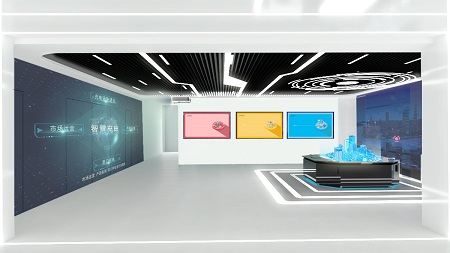
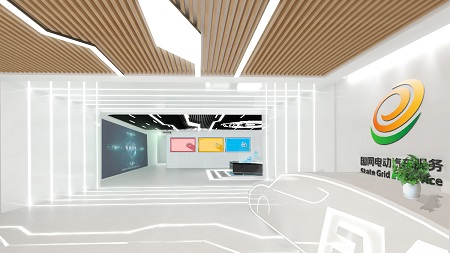
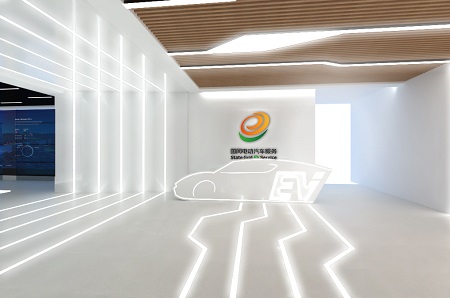
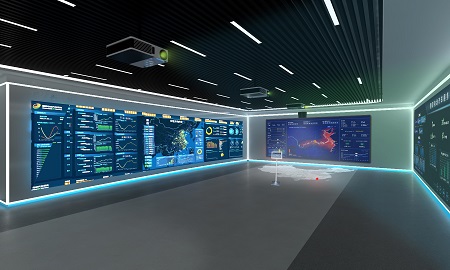
Our Goal
We take pride in being able to assist in creating a positive green impact in the design industry. Creating educational and functional spaces that help to highlight the green efforts of China is just one way we can help drive impact. Being able to have the opportunity to help other companies expand their green efforts through design and sustainable construction is the small impact we can make in a very large market. For the event, we hope our project inspires other companies and builds a stronger awareness of green initiatives and sustainable construction practices in the retail design industry.
> back to top of page

VR in Retail
June 30, 2020
Over the past decade the use of technology for retail strategy and marketing has grown tremendously. As consumers now have more access to mobile devices and internet while the core of the technology has improved, it has now become an industry standard to include some form of digital integration or technology into the consumer journey.
Consumers expect three core things when it comes to their shopping journey with a brand:
- 1. Experience
- 2. Convenience
- 3. Omni-Channel shopping
These three elements have become the core of the consumer journey over the past decade. As a brand it’s important to question if these three things have already been incorporated into your overall operational and marketing strategy yet. If not, the question that follows is, why not?
Experience
As most industry leading brands already know, experience is a crucial part of the consumer journey. It is a key marketing tool to build a stronger connection with target consumers, grow brand awareness and loyalty, and most importantly, increase sales. Experience can come in many forms, from personalization of products, to KOL events and pop-up stores, as well as technology integration.
While there are many retail technologies already commonly used by most brands, many brands are still questioning how VR and AI technology can provide a better experience for guests compared to other, lower cost technology options.
The main advantage is the flexibility and adaptability of the programing over time. There are many different ways to go when it comes to designing a VR experience for your consumers.
TOMs, the American shoe brand utilized this technology to immerse consumers deeper into their brand story by virtually taking the customer on a Giving Trip to see the impact of buying a pair of TOMS shoes.

Volvo created a VR space for their customers to test drive the new XC90, which was not yet produced. Less than two days after launching the program at the Paris Motor Show in 2014, the brand had sold out all vehicles. In addition to this, they saw a 400% spike in their social media following.
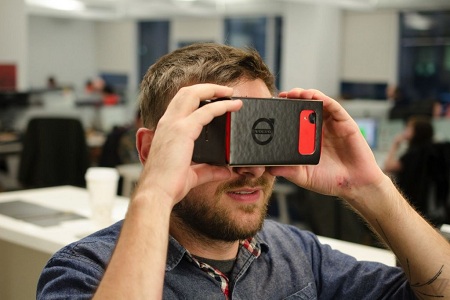
Convenience
A survey conducted by Worldpay revealed that 95% of consumers in China have used virtual or augmented reality in the past 3 months. Convenience in VR experience means that the programming needs to be easy to use. It can also align with the brand’s online marketing channels.
When looking at traditional VR, many see it as a bulky headset, attached to a system screen that can be limiting to the space and area in which the VR experience can take place. However, virtual experience can be integrated into WeChat mini programs and can be easily accessed by simply scanning a QR code.
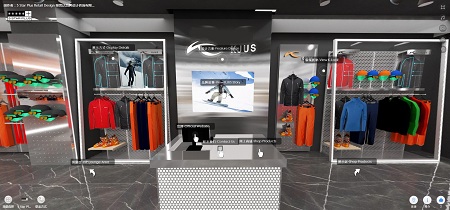
Omni-Channel Shopping
Customers can then access the experience on their phone, exploring the virtual space through tactical touch of directional arrows or by moving the phone from left to right like a 360 video. Apart from interacting with different store features, customers can also connect to the online store to browse more products and make purchases.
IKEA utilized the technology to create a virtual retail space called “IKEA Place” that allows the consumers to actually interact with the products virtually and learn more about the materials, and features of the product before making a purchase in stores or online. It also allows consumers to virtually place furniture samples into their home space to get a better visual of how it will fit with their existing décor.
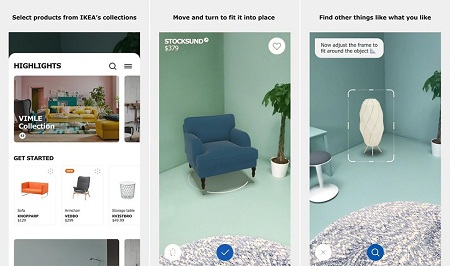
Key Advantage
One of the biggest concerns brands have when it comes to VR experiences is the ROI of the programming itself. Much like live-stream marketing, the numbers on this truly depend on the brand and overall execution of the campaign itself. However, according to a study by ABI Research, VR technology used in retail and marketing sectors is expected to generate $1.8 billion by 2022.
A key advantage of building a VR program is that once it’s built, the software can be easily adapted and revised based on the current marketing needs without starting the design and integration process from scratch. The long-term flexibility of VR programs enables brands to continually change and refine based on the most current needs of their customers.
Overall VR experience enhances the overall marketing strategy of a brand which also helps to strengthen the consumer journey.
>back to top of page

Enhancing your Brand Image through Brand Story
5 Star Plus Series: Excellent Retail Design in China
June 29, 2020
Retail stores are an important tool for marketing a retail brand to consumers. By creating a strong first impression from the outside, consumers can enter the retail space to experience and learn more about a brand’s story. Facilitating a smooth consumer journey through retail design increases the purchase likelihood, brand loyalty, and overall sales.
Key Goals of Retail Design
Retail design starts with a concept that achieves key goals for the brand. While the specific goals vary for brands, there are four key design goals that should be keep in mind of retailers which include:
- ? Brand Story
- ? Attractive retail window displays
- ? Retail experience
- ? Technology integration
When combined into retail design, achievement enables retailers to successfully increase brand awareness and sales.
Telling your Brand Story Increases Brand Awareness
As the well-known saying goes, “knowledge is power.” This is certainly true when it comes to educating customers about a brand, its story, and products. The power behind the knowledge gained by the consumer is that they gain better insight of the brand heritage, realize the quality of the brand’s products, and clearly understand the brand’s core message. These three factors build a stronger awareness of the brand. According to 5W Public Relation’s 2020 consumer report, 71% of consumers prefer to shop with a brand if a brand’s core values align with their personal values.
Our next case study takes a closer look at the American shoe brand, Timberland. In the past 5 years, the brand has undergone a restructure of the visual identity design to highlight key marketing messages of sustainability. Tied to the story of Timberland, the design style of the retail space incorporates interactive elements to provide customers unique experiences that are also tied to their strong CSR message: “Nature Needs Heroes.”

The background of Timberland is a shoe company that set out to provide high quality functional work boots. They had one of the first waterproof shoes on the market. This original function evolved footwear brand into a pop-culture icon as many famous rappers wore and referenced their products in their music.
In recent years the brand listened to their core target consumers by putting a larger focus on sustainable fashion. Over the past decade, the brand further evolved that put sustainability at the forefront of their product design, marketing, and general strategy. At the end of 2019, the brand made an aggressive goal to plant 50 million trees by 2025. As their CSR strategy continues to evolve, the brand needed to adapt the design of their retail stores to better tell their brand story.

Timberland created a unique concept idea called “Flex Retail” this allows them to adapt the store design every six weeks to best fit the theming and products for the season. This concept started with their first “Tree Lab” store at the King of Prussia Mall (PA) back in 2017.

"Timberland’s First Tree Lab Store"
Image Source: WWD
With their latest campaign “Nature Needs Heroes”, the brand decided to focus more on product education and interactive experience points that help educate consumers on the global environmental impact of the brand. Educational table displays help to showcase different materials that are sourced and the sustainable efforts behind the material makeup themselves. This can be found at their flagship store in London.

"Timberland Flagship store in London, England"
This design concept really helps the brand to be able to better show their brand story and help customers to better understand the brand’s core motives and global impact on the environment.
Following the campaign, the brand also launched a series of pop-up stores in New York City to showcase the brand’s CSR efforts and provide local consumers with immersive spaces that allow them to learn more about the products and brand story of Timberland.

"Timberland Pop-up Store in NYC showcasing products made from recycled materials"


"Timberland Experience Space in NYC brings Nature to Urban Customers"
In China the brand took a slightly different approach. While nature and sustainability is still the core message behind Timberland’s brand story, the brand adapted their name in 2016 to be more suitable for Chinese consumers. The campaign changed the name to: “Timberland - It's Really Teeboolang” which means “Unbreakable” in Chinese.

"Marketing poster used in Chinese markets (China, HK, Macau, Taiwan)"
Image Source: effie
Much of the retail and marketing strategy in the Chinese market focuses on the high quality and reliability of the shoes themselves. Most of Timberland’s retail locations in China reflect this by large product displays focused most on their classic shoe design, and strong brick décor. Tying to the brand’s global marketing message, their stores incorporate a slight touch of greenery and put a larger focus on the sustainable materials used within the products themselves.

" Timberland Retail Store in Shanghai, China"
Overall, Timberland has found success globally by sharing their brand story with their consumers in a creative way that is strongly reflected in the retail design of their many locations worldwide. As the brand continues to grow and evolve, they will likely deepen their brand story and continue sharing it with their consumers in thoughtfully creative ways to further build stronger brand loyalty. Regardless of where their story takes consumers, it will sure be interesting to see the impact they make if they achieve their goal to plant 50 million trees by 2025!
> back to top of page

Customer Journey Mapping
June 22, 2020
Creating Competitive Advantage on the Market
In the recent years, customer retention has become a measure of competition amongst brands. In order to keep existing customers, brands have to understand their needs and how they interact with the brand. Only after gathering and analyzing this information, can they offer a product or provide a service that would fulfil their customers’ needs. The customer experience (CX) that brands provide during the journey of their customers helps people to decide between different buying options. The ultimate goal of every business is to make this decision making process easier for the customer and help them to achieve their goals effortlessly.
Customer Journey Map as a Tool
In order to turn the above mentioned idea into an action, brands need a tool that help them to identify the journey their customers take. This is when customer journey maps come in the picture. But what is a customer journey map exactly?
“A customer journey map is a visual representation of the activities and situations a customer goes through before, during, and after engaging with a service.” (Marc Fonteijn)
The visual journey map helps to understand the customer perspective, and find any gaps or pain points where the ideal retail space differs from the actual one. Brands can use journey maps to track customer interaction and analyze their touch points inside the store. Taking omni-channel strategy into account, these touch points for their customers can occur at any point on their various retail channels. Though not every customer will follow the same journey, analyzing this data helps brands to identify trends by showing them the “most likely path” their customers will take.
What is the outcome? What do we want to achieve by creating customer journey maps?
- ? Better understanding of the customer
- ? Discovering the pain points of the customer journey where the brand is falling short of consumer expectations
- ? Utilizing it as a marketing tool
- ? Creating a visual that will help the whole company to better understand how the service process should look like
A report from 2018 shows that 67% of the surveyed business professionals are using or have used customer journey mapping and almost 90% of them said they experience a positive impact in customer satisfaction.
Essential Elements to Create a Customer Journey Map
Even though the aim of a customer journey map is to have a very simple, easy to read and understandable design, there is a lot of research, analysis, and work required to ensure a simple end result. Without enough detail, a journey map has no use, but too much detail can overwhelm people and they can easily lose focus without understanding the map.
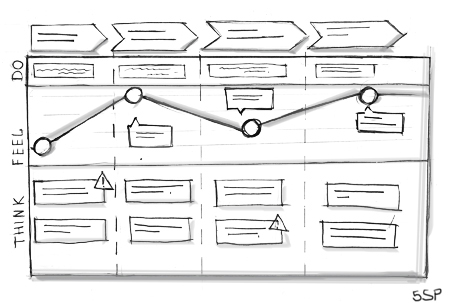
As a first step, brands have to create a buyer persona and understand his/her goals. Only after that can they start to map their interaction with the company.
Here are 5 of the most important elements that brands need to understand when creating a customer journey map:
- 1. Customer lifecycle: This part is the stages or phases of the journey. They can refer to a time (before, during or after the purchasing process) or alternatively, they can represent an action as well (brand awareness, planning, purchase, delivery, installation, usage, and repair).
- 2. Customer activities and situations: This part includes those relevant activities that the customer does and those situations, circumstances that have a significant influence on their experience.
- 3. Customer needs: This is an extremely subjective part which is connected to the customer who's going through this specific journey and shows the requirements at each stage.
- 4. Customer experience: This curved line shows how satisfied or dissatisfied the customer is throughout the journey.
- 5. Extra elements: Communication channels, Back-end processes or IT Systems.
Benefits for the Brand
The customer journey map gives an important perspective to brands allowing them to see how their existing and potential customers actually experience the brand. Understanding this allows them to compare this result with the ideal “perfect” scenario.
Based on Aberdeen Group research (2016) using a customer journey map will result in 54% greater return on marketing investment and 56% more cross- and up-sell revenue. It also can generate 24% more positive mentions on social media platforms and 18 times faster average sales cycle.
When consumers can achieve their goals along their journey path, they will be more satisfied by the end of the journey. Higher satisfaction of consumers increases their brand loyalty which makes them more likely to shop with the same brand again. Improved customer experience also leads to lower operational costs, and increases profits for the brand.
> back to top of page

Moving Forward: Leading Retail Brands Do Well. Not Just In Good Times
May 29, 2020
It is without doubt that the virus outbreak has brought a serious crisis upon the retail industry. For many retail brands this meant a strong decline of revenue, even leading some to come to the difficult decision of declaring bankruptcy. On a more personal level, many may have been confronted with the loss of their job. While all of these circumstances are incredibly difficult to handle and overcome, facing challenges should never stop us. Instead of remaining paralyzed and unable to act, we need to look past this, and start to make plans and move forward.
Challenges help us to grow. While this is a spiritual principle for some, it is also a proven concept that change management firms and personal development coaches teach both on a personal and company level.
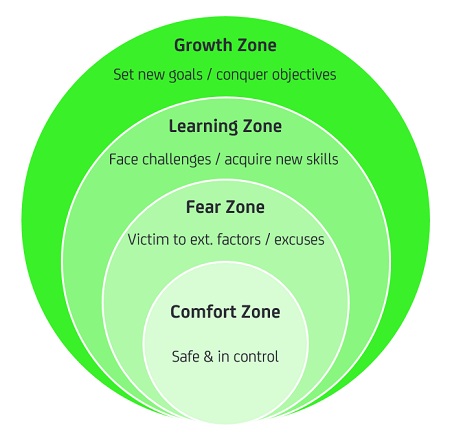
"Overcome Fear to Reach the Growth Zone"
Image Source: CPC
Going one step further, a challenge always has several sides to it. If you look at the same difficult situation from a different angle you might be able to identify opportunities. So here is the driving question: Is it possible to use the current threat and convert it into something positive for your brand?
At 5 Star Plus, we believe that it is not only a must, it is in fact our responsibility as managers to spin the situation around strategically until it is possible to gain leverage from it. Whether it’s by improving the overall business model, or creating a stronger market position, the overall result comes from the actions made by the brand today.
We owe it to ourselves, to our companies, and to our teams, to remain functional and keep creating positive impact.
So again, how can brand managers change their perspective and come out leading after the crisis? While there are no limits to creative leadership, here are a couple of examples how you can strengthen your retail brand:
1. Strengthen Personal Relationships with VIP Clients
People spend more hours at home and appreciate personalized service even more than usual. Sales consultants in stores have additional time since less customers visit the stores. While sales are low, focus more on personal interaction with your most valued clients with the help of digital means. This will help to improve loyalty while the market is down and increase your market share and revenue once spending picks up again.
2. Develop Digital Services
This could be full new services or small add-on services in addition to your standard product range, like the offering of professional styling advice through digital means. You should also review your omnichannel strategy and how digital channels might substitute physical ones in times of crisis. Having this will give you flexibility and resilience in times of crisis in the future.
3. Think of New Products
The mindset of consumers has changed during Covid-19. Topics that have become more important are sustainability, honesty/trust, quality, family, and health. How can you leverage these themes for your products, new collections or marketing campaigns?
4. Stabilize and Streamline your Base
Review your set of processes and operational structure. Does everything make sense the way you are doing it? Are there areas of excess bureaucracy that can be removed? This is a good time to train and empower your frontline staff.
5. Review Your Brand’s Positioning and Marketing Message
Is this still in line with the original mission & calling your brand had, when you were filling a niche and servicing to a need in the market, something that only your company would be able to do? Use the time to re-adjust your brand positioning and re-align your marketing messages to this crisp new vision. Then adapt your retail store design concept accordingly and make sure you engage customers in the brand’s story and lifestyle.
6. Sustainability
Use the additional time you and your team have on hand to digitize your documentation, and delete paper usage from your operations. While this should be done foremost with the value of environmental consciousness at your heart, you can also write about it on your social media and promote your business as an environmentally friendly brand.
7. Create Transparency as a Brand
In times of crisis, transparency and honesty are key. This applies to communication within organizations, but also to a brand level. Be as transparent as you can, and keep communicating. If this was not one of your strengths in the past, ensure to do so now.
At 5 Star Plus Retail Design, we have used the quiet months in early 2020 to develop new digital and virtual services. Knowing that our clients needed to push sales while most of their retail stores were closed, we wanted to help them facilitate sales transactions with new virtual retail spaces through which customers would still have their usual physical experience but then could also purchase products.
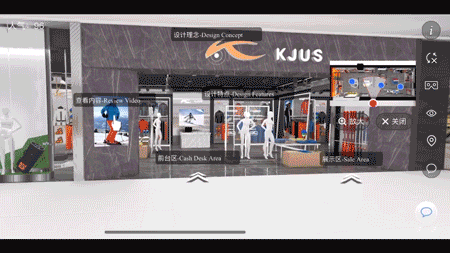
KJUS Flagship Store, Beijing
What are the measures that you have decided to take? What are your plans to make the best out of challenging 2020? We look forward to hearing from you.
> back to top of page

Creative Retail Design
May 21, 2020
What is Creative Retail Design?
In recent years the retail concept design process has been refined and perfected by brands while, at the same time, has also become more competitive than ever before. This competitive trend will become even more important after Covid-19. As a response to the pandemic, offline retailers who were not yet utilizing omni channeling as means of sales, quickly transitioned their operational strategies to provide their consumers access to their products online. Since consumers can order literally everything from their homes, they will be investing in experiences over products when they go to retail stores. Retailers that can’t meet customer’s expectations will have to step up or step out.
Creative retail design is a memorable, unique design style that enhances brand recognition and customer loyalty by providing customers with interaction and experience through technology integration, personalization, or an unusual interior design concept. The benefit of investing in creative retail is the increased brand recognition, customer loyalty, and sales. It also helps the brand to stand out from their competitors in the market.
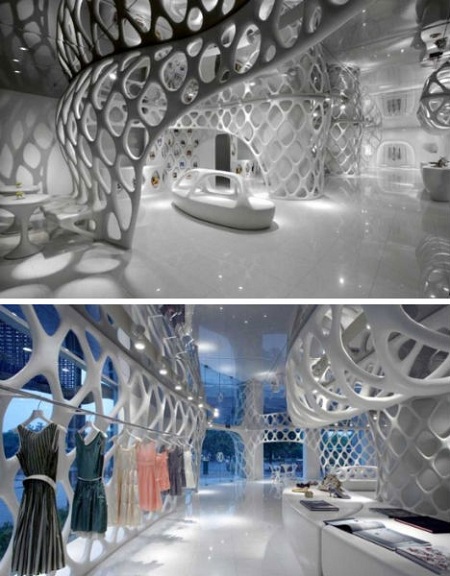
"Clothing store in Hangzhou"
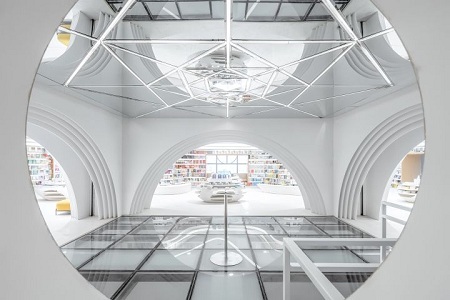
"Bookstore Design in Zhongshu"
Creative Design Methods
A major challenge for retailers is getting customers through the door of their physical retail store. According to a recent survey (Wiser, 2019) when it comes to impulse shopping, 89 percent of women and 78 percent of men purchase additional items beyond their identified need when they enter a physical retail store. In order to succeed brands try to create an immersive environment with convenience-focused arrangements that utilize most up-to-date technology. We would like to introduce a few different methods that give a really good idea about creative retail design.
1. Hybrid solutions
Hybrid solutions mean the approach of combining multiple services under one roof. This can be the combination of a shop, a cafe, and a co-working space, or a shop, a tea bar and lounge room, as well as a restaurant and coffee-flower shop. Incorporating these slow-shopping methods into the retail design increases the overall customer time spent in the store which enhances their consumer journey and increases their likelihood of purchases goods. Only the imagination sets the limit of these combinations.
2. Technology
Customers look for inspiration when it comes to experience. It can be in a form of a smart makeup mirror at a cosmetics store, to an app that offers customers to virtually “try on” the products. Magic mirrors, virtual dressing rooms, and various other types of augmented reality experiences are often seen as the next wave of consumer expectation.
Virtual reality can increase sales in a remarkably creative way. A good example is KITKAT Chocolatier’s experience in S?o Paulo where the whole space is filled with product gamification, personalization, creative AR hotspots and VR tour in order to delight visitors. Since its launch, the store has welcomed more than 300,000 guests, reached 40,000 mentions on Google Search and has racked up thousands of followers and tags on Instagram, because of the direct effect of their unique, technology and experience oriented design.
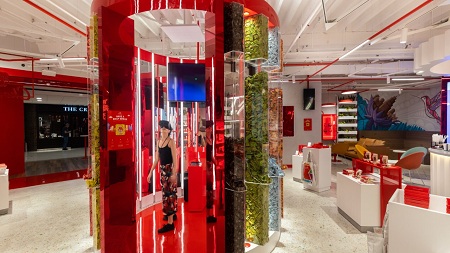
Image Source: Fitch
3. Customer Interaction and Personalization
Brands are trying to engage customers during their customer journey. A good example of how to involve customers is Neiman Marcus’s store front that invites kids to climb into a tunnel, peek into the store and then go down on a slide back to the sidewalk. Meanwhile, their parents can control special effects inside the display or place themselves in space scenes by using their camera.
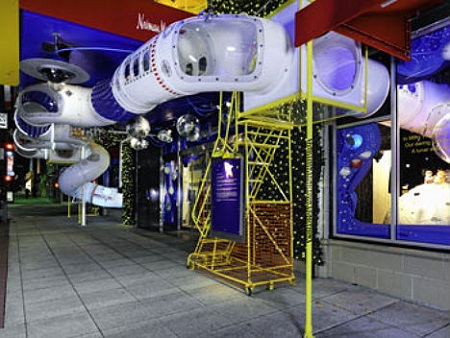
Best Practices from China
Our first showcase is a multipurpose retail space in Shanghai’s downtown area. The area includes a shop, a tea bar, a lounge room and a restaurant. The main concept of the space is developed from minimalism. The vision for the retail area is to create a harmonious and relaxing environment where visitors can turn off a bit and feel creative.
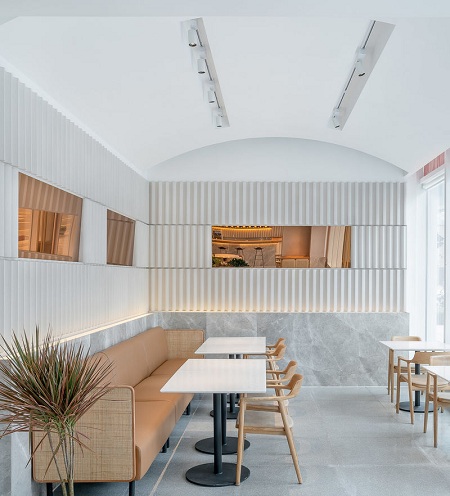
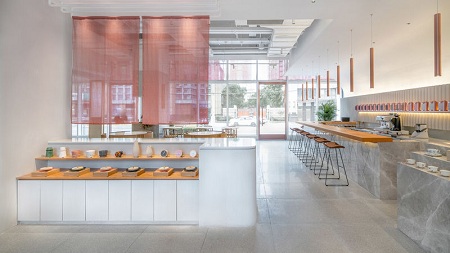
The interior of the luxurious Italian brand, Valextra has a library style design in a shopping center in Chengdu. The whole design style has a strongly romantic approach while channeling functionality, precision and overall passion combined into a library-style interior. Building on this motif, the retail space is divided into the library area and the reading room. The “library area” is a circular space that displays the luxurious products on walnut shelves, while the reading room showcases units that boasts the most exclusive designs.
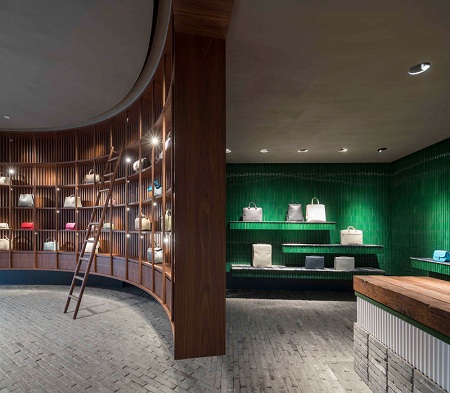
Chongqing Zhongshuge Bookstore in Southwest China provides space to read and study. It also includes a children's reading room and a social area. The overall feeling of the space is mysterious wonderland. The center of the store is a double-height hall, which features horizontal and vertical sets of stairs where visitors are encouraged to rest and read. Mirrored panels on the ceiling increase the size of the room and multiply the number of staircases. This central space is meant to reflect the stepped outline of Chongqing's landscape.
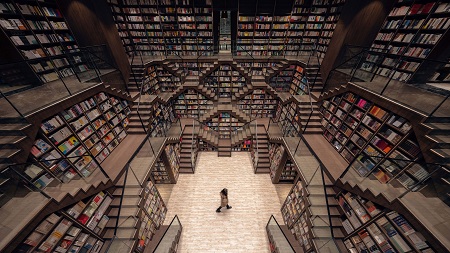
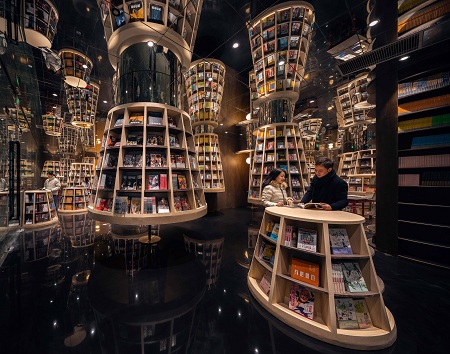
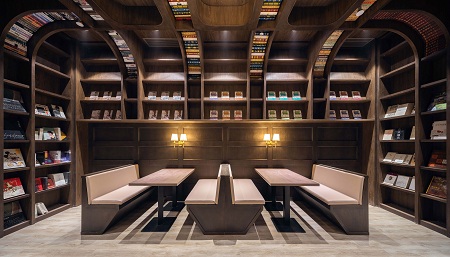
Image Source: Dezeen
What is the Future of Retail Design?
Looking ahead, the challenge for evolving retail store design is to keep up with the rapid transformation we are experiencing now. Brands will constantly need to create new ways of attracting visitors and provide them with unique experience.
According to the Consumer View report (National Retail Federation, 2019), 55 percent of millennials consider shopping in stores as a social activity and 66 percent prefers to shop in-store than online. This means that brick-and-mortar retail still has a lot of possibly yet to be tapped. The report also found that retailers who invested in technology and in-store experiences could reach a really good ROI. As a result, we can conclude that consumers are spending more on experiences than ever before, and retailers who can meet the demand in a creative manner, while also staying loyal to their brand identity are the ones who will rise above their competitors.
> back to top of page

5 Star Plus Storytelling Series: Senses
May 7, 2020
Now that we have an understanding of the impact emotion and colors can have when it comes to storytelling, let’s examine the impact sensory storytelling can have on consumers. Incorporating sensory elements such as light, smell, and textures into retail design helps to enhance the brand story of a retailer while also effecting the customers’ thinking and ultimately their decision making.
Importance of Sensory Storytelling for Brands
The psychology behind storytelling is that the natural instinct of the human mind craves for meaning. Storytelling helps us to process information and remember it. Even though this is a benefit, it’s important to remember that a common fault of the mind is to forget some of the facts. When this happens, the mind will invent connections so that the information can still be processed by others. This innate human error is exactly why sensory storytelling becomes very important for brands. While engaging with stories, the sensory cortex in the brain is light up, allowing the listener to feel, hear, taste, and even smell the story.
Zara, one of the world’s leading fashion retailers and proud to be a high fashion, yet affordable Spanish brand. The story behind Zara’s success is that they are seen as a company with great style and fashion consciousness. To express that in their physical stores, Zara uses black and white on the walls, and to make them look even more elegant they utilize a very minimalistic design with monochromic fixtures and shelves. Another added detail to enhance their story are the characteristic spicy scent used in every store, and the relaxing yet trendy background music in order to create an upbeat environment.

When customers make decisions, they are based on impulses, gut feelings, or force of habit. Not every decision can be rational due to limited amount of time. Quite often it is a design element, like size or color that gives the final push to customers when it comes to choosing a product. Even tiny design decisions can influence customer’s choices at an unconscious level.
Abercrombie & Fitch is another good example to show how a brand can build up a certain personality and incorporate the different senses to their brand’s story. The image they want to show towards their customers is a “cool and good-looking teenager”. Their fragrance for men they use in the men section is a clean scent of citrus and warm dusk. They are also known for their loud music in the stores which makes them able to maintain a more youthful clientele. Apart from building up their brand image, the dimmed lights, loud and vibrant music also encourage impulse shopping.


Storytelling Design Tools
1. Rule of Three
The logic behind rule of three comes down to the way the mind processes information. Humans are very good at recognizing patterns and three is the smallest number of elements required to create a pattern. Consumers are not only able to build a pattern with three elements but are also able to break it. In this case the last item is something unexpected and breaks the pattern that was set by the first two. The aim is to surprise and satisfy at the same time.
The magical number can appear in various elements of the storytelling. It can be three facts about the brand, three mannequins grouped together, three words as a catchy slogan or three different product lines placed next to each other.
Steve Jobs applied the rule or three in almost every presentation he held about Apple. When announcing the first iPhone in 2007, he built his whole presentation around it. He claimed Apple would introduce three revolutionary products: a new iPod, a phone, and an internet communication device. He repeated each of them slowly until the audience figured out he was talking about one device, the iPhone, which was the third revolutionary product category after Macintosh and iPod.

2.Gaze
For designers it’s essential to understand how the target consumer’s vision works. What makes them look at certain things longer, what determines the order in which they look at objects? Can this wandering, searching movement of the vision be influenced? Without a deeper knowledge of this activity, designers won’t be able to create an impactful retail design to successfully tell the brand’s story. Colors, borders, words, pictures and shapes like arrows are used in order to control vision and to attract the gaze of users. Certain graphic elements can captivate the eye while others help the vision to wander along a path. This constant search for change moves the gaze from one point to another, constantly changing the focus.

3.Guide through Your Story
The Swedish brand, IKEA doesn’t only sell furniture to their customers, they also tell them a story which is about ‘loving where we live’. The key brand goal is to make their customers feel understood. IKEA showrooms are like labyrinths which means they are designed in a way to carry along customers on a controlled journey. The customer journey through the store brings guests through different room examples to show how their homes can look like, how it would smell and how it would feel living there. Guests can try out every piece of furniture, sleep in the beds, and relax on the sofas. The unique design of different showrooms allow guests to their senses of sight, touch, to envision what IKEA products could look like in their own home.


Image Source: Fohlio
What Comes Next
The right brand story has the power to increase the value of your business’s product or service. After accessing their brand identity, brick and mortar stores have a huge advantage over their online competitors by communicating across five senses. The key is to trigger an emotional response by building up a multi-sensory in-store experience.
> back to top of page

The Store of the Future – Post COVID-19
April 21, 2020
The outbreak of COVID-19 is transforming the economy and consumer habits that will have a long term impact on how people shop and what role retail stores will play in the future. Considering these trends, we imagine what the store of the future will look like.
1. Virtual Stores and Online/Offline Integration
The outbreak of COVID-19 has made it evident that operations in different industries need to be prepared to quickly shift their offline strategy to an online strategy with digital platforms during times of crisis. Traditional offline retail and marketing channels include brick-and-mortar stores, pop-up stores and trade shows, among others. While digital channels played a supportive role for achieving effective retail strategy in the past, they will soon become as important as offline channels and partially replace offline functions in the coming years.
Virtual retail stores, that are designed to either look like real stores, or have a conceptual high-impact approach, will complement offline stores. Virtual retail stores are spaces where consumers can walk through, browse the products, learn about new collections or the brand, and be exposed to promotions. Interactive features and links to e-commerce websites or WeChat mini-programs, allow consumers to immediately purchase products.
The required flexibility of retail channels made apparent by the virus outbreak and the current economic crisis, exposed the need for a much better definition of the purpose and functionalities of each channel as well as a better technological integration. Key functionalities of brick-and-mortar stores like retail sales and promotional events will need to be flexible and easily movable between offline stores and online channels as required.
Offline stores will continue to play an important role in retail strategy by providing contrast and excitement through tactile stimuli that online experiences are lacking. Virtual retail stores can be built fast at a limited cost and with essentially no design limits. They will become an integral part of the retail strategy and provide brands with the much needed dynamic to satisfy the Chinese consumer’s hunger for content post COVID-19.
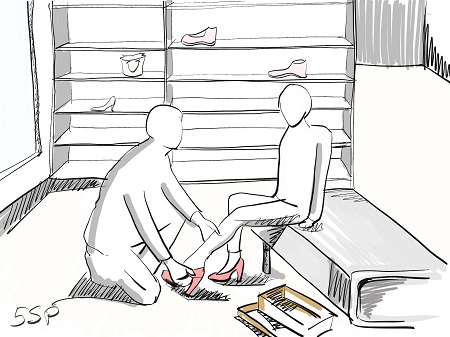
2. Increased Level of Personalization & Customization
Increased time at home has increased the level at which consumers online shop. Their favorite online stores have saved their personal style preferences and can send them customized messages with product recommendations. They can also interact with both virtual and real shop assistants and stylists through the app. Besides sharing styling advice and product recommendations, the stylists will offer to take care of the planning and management of the virtual wardrobe or product portfolio of consumers. The value of this service is that individuals do not need to dedicate time and efforts to think about what they need or should wear at certain occasions in the future, as well as, professional styling advice for free.
In the offline retail store an AI store assistant supplements the customer with product information, recommendations, answers questions as well as books orders of customized products that have a different color, stitching, size or accessories.
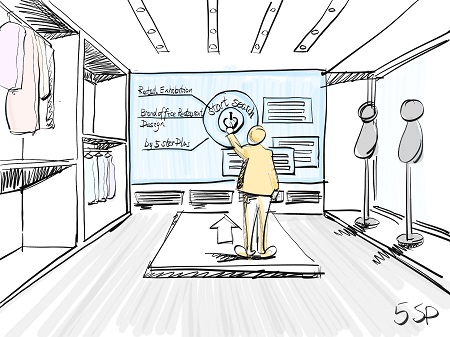
3. Focus on Health Aspects
Post COVID-19, retail brands will have to ensure their stores are safe and make certain health related information available to consumers. This might include the body temperature and good health status of employees being on duty and working in the store on that day, which will be visible on a screen close to the entrance. This concept is somewhat similar to the kitchen hygiene requirements which are already mandatory for restaurants in China. At the moment, in China, food delivery apps already display the current body temperature of the person delivering the food.
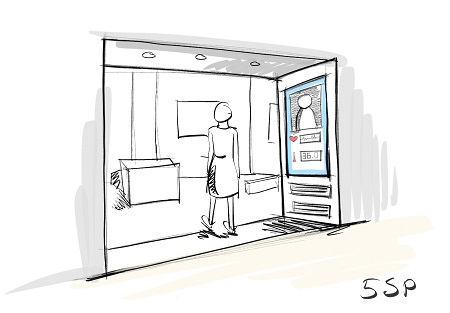
When consumers enter the store of the future after COVID-19, their body temperature is registered. Some retail brands might go even one step further by screening vital functions. When emergencies happen like a customer being of ill health or having a heart attack, the AI system in the store automatically calls an ambulance. Retail stores will also have hand sanitizer and facial masks ready in the stores in case of need.
In terms of shopper psychology, consumers will be more aware of the shopping process, which may affect their overall interaction with the brand and its products. Making appointments in advance to visit stores and try the products, and ensuring that they shop at times where the store is less crowded are likely to be new consumer preferences.
4. Shopping for Personal Experience and Indulgence
The above factors will lead shopping in offline retail stores in malls to become a more conscious, often pre-planned process which consumers look forward to thanks to the unique personal interaction with the brand, sales consultant and the products.
The shopping experience and the interaction with a certain product in a store will become something more appreciated; a special moment. The quality of personal service will increase and be a valued factor in purchase decisions.
Those retail brands that have realized the importance of authenticity, sustainability, and have made the effort to build a strong brand identity, will be the most successful ones. They will be the ones that have gained larger brand loyalty from consumers, which makes them feel safer going to these store and buying from this particular brand.
5. Brick-And Mortar Stores become Multi-Purpose Spaces
A big part of offline events will be replaced by digital events. Live streaming, interaction supported by virtual spaces and video conferencing technology are already becoming more important today and will further increase in importance. Retail stores in malls will have an important but slightly changing role:
They will become more conceptual, experiential spaces and include artistic, lifestyle, or food & beverage consumption elements to complement product displays as part of the overall brand representation.
Stores will sometimes host events that are streamed live to customers at different locations. Brands will also host offline events with a limited amount of VIP guests as well as more interesting promotion designs, that span through various online and offline channels.
6. Design Challenges
What does all of this mean for retail designers? With the adjusted overall retail strategy of brands and changing role of offline stores, retail design agencies need to develop new store concepts and propose solutions to some of the existing challenges.
One of the biggest challenges will be the clear definition of the purpose and functionalities of offline stores. Flexibility will be one of the key aspects, which in terms of design strategy is often contradictory with creating a strong brand experience, maximization of products in a space as well as cost control.
Lighting concepts of stores might increasingly include ultraviolet light that is switched on a few times each day for a short period of time to kill germs, bacteria and viruses.
Stores will also need to be designed in a way that seamlessly integrates online channels and technologies. In-store technology that explains products by scanning QR codes, screens and AR will become standard.
We believe that COVID-19 is giving brands an opportunity to review their current retail strategy and strengthen it. The creativity and development that are currently happening in the industry are actually pretty exciting. We look forward to a future with smart retail brands that thrive, online and offline store concepts that make sense economically, and consumers who enjoy the brand experience and its products.
> back to top of page

Creating Retail Experience Online
April 7, 2020
The recent outbreak has affected the retail industry on a global scale. Brick-and-mortar retail is currently going through a transitional period to cope with that. While many shoppers have increased their standard amount of online shopping, many are still craving to have in-store experience. The challenge for brands is being able to provide that to their consumers, now.
Experience needs to provide three essential keys to consumers:
- ? Personalization
- ? Memorable
- ? Customizable
These three parts combined help consumers to grow loyalty towards a particular brand, generates excitement for its products, and can ultimately help to increase sales.
Generally, in-store interaction has been a standard for creating experience for consumers. Pop-up stores, events, in-store technology, and in-store product customization are just a few ways that consumers can interact with a brand in-person. Now that the Covid-19 outbreak has effected markets on a global-scale, providing in-store experience for consumers is not fully possible.
Many brands are finding ways to bring new and unique experiences to their consumers online. Recently, fashion brands participating in Shanghai Fashion week utilized live-stream portals to actively participate and showcase their new product lines online.
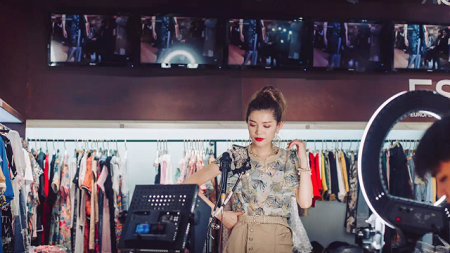
Another way brands can connect consumers to their offline space is by providing a 3D walk through of the retail space. This can be a simple video that takes the viewer through the store space to a more in-depth VR experience.
A 3D walk through helps to showcase the design of the space. Whether it’s of the actual retail store, of a pop-up store, or event space. It allows brands to connect with media partners and customers to create excitement for future in-person events. It can also encourage and inspire consumers to visit the online store and look at products more in-depth.
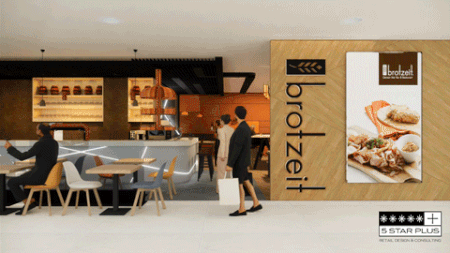
A VR experience facilitates the same connection as a 3D walk through but incorporates more features. As users walk through the space, they can interact with items in the store. By selecting an item, customers can view a real-life image of the object and read more about the product details and connect to the online store to purchase.
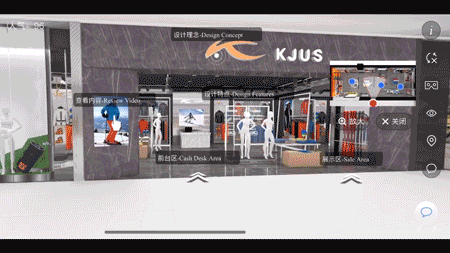
Augmented reality is another way for customers to interact with brands online. Customers can select the item that they are interested in purchasing and virtually try it on by pointing the camera at themselves and seeing what it would look like on them through the viewfinder.
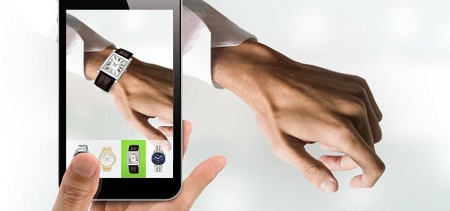
There are many advantages to providing this experience to consumers. Here are the key advantages of utilizing one of these technologies:
- ? Customers can explore the space right now.
- ? Promote your brand.
- ? Upgrade your brand image.
- ? Enhance your existing brand strategy.
Adapting quickly in a fast-changing and turbulent environment is a true test of your brand strategy. Utilizing new tools that align with your brand strategy in a new way will only help reinforce your brand presence and reliability to your consumers. There’s no better time to enhance your omni-channel strategy than right now. Promoting your brand in a new way will send a message to your customers that your brand is in the future now. Brands need to explore new ideas to stay relevant with consumers despite the current constraints. Doing so will benefit your brand both now and in the future.
> back to top of page

5 Star Plus Women Series: Shuang Li, VP and Director of Finance
March 31, 2020
In closing our celebration of International Women’s history month, this article highlights our VP and Director of Finance, Shuang Li. She has been a devoted counterpart from our very first days as a company.

Shuang has experience in the field of accounting and finance management for multinational companies like Siemens and Coty. Her main role is to buildup accounting system, oversee accounting operation, monitor month end closing process, and ensure the accuracy of financial statements; from finance stand point, Shuang provides management with various financial and non-financial analyses to support strategic leaders in making better business decisions. She has also worked closely with different business teams to compose budget and update forecast, developed and monitored key performance indicators, ensured that financial targets were achieved while reducing the financial risks. Her track record in developing and implementing financial management systems has improved financial operational productivity via IT automation and process optimization.
We asked Shuang to share her expertise on financial management.
Q: What are the most important aspects to consider from the financial point of view when building up a new business?
A: Establishing strong financial infrastructure is critical when starting a new business. A company needs establish an accounting infrastructure that will allow you to know what’s really happening in your business, support your company operation and help define your financial strategy as you grow. The key to set up this system is to firstly set up an accounting system that is in compliance with accounting standards. This system should include the right accounting method, chart of accounts and three main financial statements. The second step is to ensure a reliable accounting operational process in place which requires the right people with right roles, the appropriate software to comply with internal control. The last step is to build up financial management processes. This should include composing budget, setting up targets, developing and monitoring KPIs and ensure the preset financial targets to be achieved. In order to set up this financial management process, finance people need work closely with across functional teams to understand business operational process, objectives and challenges, and then, to figure out how to provide financial solutions to make business run better.
Q: As the business grows, how does financial management change and what are the factors that have to be considered in different stages of a company’s development?
A: Accounting, budgeting and financial analysis consist of main basic functions throughout all stages in business development. During the startup phase, a company needs build an accounting system to track financial transactions, create financial statements and statuary reports which are in the compliance with accounting standards, legal and tax regulations. A company also needs implement budgeting and financial analysis processes to support and monitor business performance.
When a company enters into the growth stage, it faces a new level of a few financial challenges. At this stage, a company should seek operational investment from both internal and external sources. Financial analysis is required to support the need of this additional investment to provide insights for business expansion. According to an article from Harvard research, the companies who can fully deeply analyze the data and apply these insights into operation can improve 5%-6% productivity over competitors. It’s important for a company applying financial management to each stage in the business life cycle.
Q: Your professional experience includes work for service, retail distribution and consumer goods companies. Which financial considerations are the same and which are different depending on the type of industry?
A: No matter which industry you work in, it’s important to have a strong foundation framework in compliance with the basic principles of accounting. The effective financial management system is equally important to support business across all industries, cash flow management is essential to ensure the smooth business operation.
For service-based industries, such as consulting firms, they normally charge customers based on hourly rate. Therefore, accountants need spend more time on collecting working hours and defining price based on different level of consultants. This will affect the accounting process. For retail distribution and consumer goods companies, accountants must spend more time on managing inventory than some industries do. They also need spend more time on promotion and channel analysis to support business operational strategies than other industries do.
Q: What are the financial management aspects that have a direct impact on operational and sales performance? What is the strategic value of good financial management?
A: The KPIs metric is an important financial management approach to impact on operational and sales performance. It evaluates the success of operational and sales performance by analyzing the deviation between the actual and targets of these performance measurements and implementing necessary actions to ensure business operation achieve its targets.
The value of good financial management is to support business growth at different stages by providing valuable financial analysis and solutions, such as scenarios analysis of business development cases and price strategies of different products and services.
Q: What are areas that many companies often overlook in terms of financial management?
A: In order to do a good financial management job, it’s important for finance people to become important business partners. To become business partners, finance people need understand business operational process and targets, be more analytical and be more strategic. They need focus on business and figure out how to support business to implement the strategy to “get stuff done”, not just be the numbers people.
One of the best practices of financial management is to set up effective KPIs system to support business achieving its targets. This KPI system includes setting up targets, analyzing variance and implementing measures to achieve its goals. Another best practice is to improve efficiency and accuracy of reports by automating service billing and generating performance management reports.
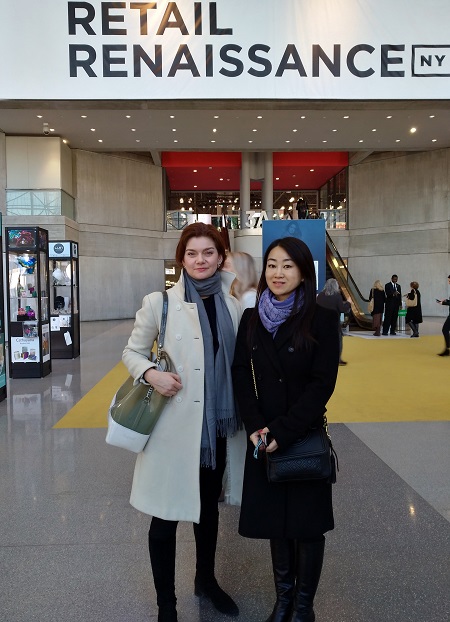
Q: How do you imagine financial management in 2050 will be different from today?
A: As the global technology has evolved over the years, artificial intelligence has begun affecting our life in many aspects. AI technologies like machine learning and deep learning help accounting and finance professionals to perform repetitive tasks more efficiently. Process automation and actual process of robotics in the field of financial management have become more and more popular among large transactional accounting volume in big enterprises. Accountants will play a major role in interpreting and analyzing data captured by AI technology. In the future, accountants will have more time to focus on analysis and to support business strategy with the aids from AI.
Q: What advice would you give to retailers to help better manage cash flow issues during periods of economic turbulence?
A: Financial management is very important to manage cash flow during periods of economic turbulence. Managers must make financial projections of cash flows in advance, so that they can have some ideas on how much capital will be needed to fund business operation under challenging economic situation. Planning and budgeting for these financial needs are crucial. Essential parts of financial management are finding the proper source of funds at the lowest cost and making sure the leverage of debt is not too high to be managed.
> back to top of page

5 Star Plus Women Series: Olga, Senior Designer
March 23, 2020
In continuation of our celebration of International Women’s history month, this article highlights one of our Senior Designers at 5 Star Plus Retail Design, Olga. She is an experienced architect and retail designer working with both Chinese and European companies that come for different retail sectors including, fashion retail, FMCG, consumer electronics and more.
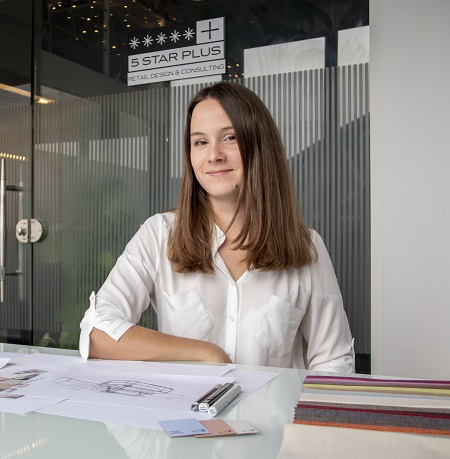
To fully understand her role, Olga describes a retail designer as working in-between two worlds: world of interior design and world of marketing. As a retail designer she aims to not only create functional, comfortable, and beautiful space for people but also depict and fulfill business goals of each client. This can be a challenge when working with a variety of different commercial projects. She takes pride in focusing on the brand’s vision, positioning, and sales strategy and translating this message creatively into the physical space. The main goal of her design creations is to deliver this message to customers while also enabling them to have a unique and memorable experience.
This week we asked Olga to share her design insights for creating impactful designs in the Chinese market.
Q: How can retail design affect the sales performance of a store?
A: There is no denying that retail design has a direct influence on a store’s financial success. By using retail design instruments we can improve customer experience, change the market positioning of the brand, as well as attract attention to the retailer’s services and brand story. The design details of a retail store should be thoughtfully incorporated to ultimately encourage slow-shopping and keep customers inside the store longer by encouraging interaction and testing of their products. The longer a customer stays in the store, the more likely they are to buy products. As a result, a well designed brick-and-mortar store can help to not only increase sales but also bring long-term brand loyalty of customers.
Q: Please describe some of the techniques you use to attract customers into a store.
It is important to create barrier-free access to the store to encourage people come inside and shop. By creating a broad open entrance, the retail environment becomes more welcoming for customers. Brands can also place a video screen, or attention grabbing display with the selected products at the store entrance.
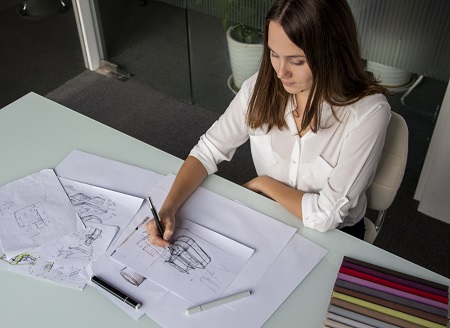
Q: Analysis is the first step when creating a retail store design. Why is analysis so important when creating a new store design concept?
A: It is impossible to find a solution to the problem without first objectively understanding the current market and customer needs. There are numerous different methods on how to depict and analyze business processes and their customers which can be done by observation, questionnaires or data analysis. Only by understanding friction points in current design format, and identifying clear goals for the new concept, can we create a new successful design concept for the brand.
Q: As a retail design professional, how do you express a brand identity in a 3D environment?
A: Like every designer I have a toolbox of colors, shapes, textures and light. However, as a retail designer, I have the unique ability to design interaction points between the customer and the brand. I believe that the experience that customers have in the store can truly define brand identity.
Q: In this fast-paced world, what retail design formats do you think are important for brands?
A: Generally all the formats should be customer centered. Now the border between formats is blurred. Online retailers are going offline and vice versa with the goal of making their stores more efficient and convenient for the customer. This gives brands the challenge of finding more ways to reach customers. For this reason, traditional brands are implementing creative pop-up stores, experimenting with differentiating services in stores to meet the needs of their customers. Brands are now integrating experience spaces into their retail store design including, coffee corners, providing space for things like yoga classes, and building collaborations with KOLs.
Q: As a retail designer, what are important technological aspects that can be integrated into store designs? What do you think of shopping with AR?
A: In the new era of electronic technologies and e-commerce platforms, brick-and-mortar retailers should adopt and consider implementation of new retail strategy into store design to create a more seamless experience between online and offline brand representation. Brick-and-mortar retail stores can consider to integrate tablets, and other interactive technologies into the store design that link their clients to the online platforms in a meaningful way.
The idea of AR technologies being incorporated into the shopping experience for consumers has been heavily investigated by retailers in recent years. While some brands still struggle to identify a meaningful strategy for implanting this type of technology, other of the brands, like Zara have already integrated AR into their brick-and-mortar stores. Other brands are using AR as a supporting instrument in their loyalty programs.
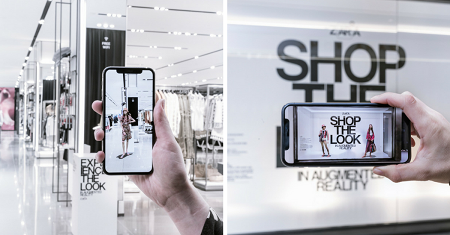
"Zara’s “Shop the Collection” campaign in 2018 connected customers with a Zara app that showed AR models at in-store display"
Q: When you walk through shopping malls in China, are the things you notice that most brands do not do well enough when designing their stores?
A: I think retailers in China are doing amazing work in terms of retail design. However, the design layout for lighting can be improved for some stores.
Q: What are the differences in retail design between the Chinese and the European markets? What can these markets learn from each other in terms of enhancing the overall retail experience for consumers?
A: It’s no secret that China is far ahead of Europe in terms of online shopping. In Europe, a lot of retailers are only just beginning to put a stronger focus on increasing online sales. Currently, online sales account for 4% of overall retail sales in the European market. For this reason, European retailers are implementing offline pick-up points in stores for online orders. This allows customers to have an easier and convenient shopping experience.
Offline shopping in the European market tends to be more competitive than in the Chinese market. In the Chinese market, many European retailers are more willing to experiment with unique retail designs compared to Chinese retailers. As the result a lot of interesting retail concepts have appeared recently.
Nowadays a fundamental design trend is providing experience for the customers. Consumers are not only going to the store to buy goods, they also seek emotion to be generated by interacting with the brand through retail experience. Retailers are trying to provide this additional value to consumers. Right now, I would say that China is leading this phenomena and setting retail design trends in this regard. The practice of new retail design, with a heavy focus on experience and creative design, is one thing that the European market can learn from China’s retail market.
> back to top of page

5 Star Plus Women Series: Phoebe, Senior Retail Consultant
March 16, 2020
In celebration of International Women’s history month, we want to highlight some women leaders on the team who specialize in different areas of our company. We kick off the series by highlighting one of our Senior Retail Consultants at 5 Star Plus Retail Design, Phoebe.
With an experience of 15 years in retail operations management, Phoebe started her career in Qingdao’s most upscale department store as the regional director of cosmetics. This was where she learned about the positioning of international brands and gained strong insights on different types of management style and corporate culture. Coming to Beijing a few years later, Phoebe joined FREYWILLE, a decorative jewelry brand, for three years. Managing several stores, Phoebe worked on the front line serving customers and leading the sales team to quadruple their sales performance.
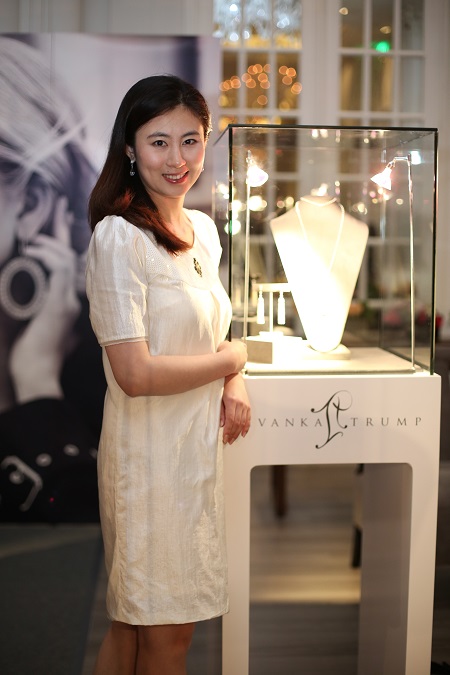
Image Source: Phoebe Guo
A later step in Phoebe’s career path was to become Operation Manager for Ivanka Trump Fine Jewelry, being responsible for the operations and management of the brand in mainland China. Phoebe opened the first flagship store, developed the distribution network and coordinated media activities such as arranging interviews with Ivanka Trump for the Chinese press.
In addition to jewelry and cosmetics, Phoebe has extensive experience in the fashion industry having worked with fashion brands like Pull-In and Guess. Today, Phoebe owns and operates a business where she imports and distributes international skincare products in China. She plans to expand the portfolio to include other categories as well.
At 5 Star Plus Retail Design, Phoebe helps retail clients improve their operational performance. A while ago, the 5 Star Plus team supported Chinese designer brand Pureones in building up their brand through the definition of a clear brand positioning, development and publication of marketing content, the design of concept stores and pop-up stores, as well as the buildup of strategic collaborations and events. Phoebe defined and implemented target setting and reporting processes in retail stores and facilitated a long list of operational in-store improvements including the training of the retail staff and management team. She also created and implemented a strategy for promotional activities and events in order to increase brand awareness, attract customers into the store and increase sales.
This week, we asked Phoebe to share some of her insights on the outlook of the retail market.
Q: In today’s growing world of e-commerce and m-commerce, how can traditional retail brands with brick-and-mortar stores stay relevant in the shopping ecosystem?
A: I don't think any brand can afford to remain a traditional brand at present. Taking into account the current trends, a brand who can continue to develop and adapt to the fast changing market is a masterpiece.
Three years ago, brands such as Lancome and La Mer did not see the value of live-streaming because they believed that this sales form did not suite their brand positioning. However, today there are no skin care brands in the market who do not want to explore the e-commerce market and live-stream video market.
Q: What is the role of pop-up stores in today’s shopping ecosystem, how do you see this changing or evolving in the next 5 years?
A: Profitability is not a major consideration for pop-up stores today. Pop-up stores bring dynamic and have a positive effect on the brand image and the people behind it. This can lead to an overall positive impact on the brand.
Q: A retail store is often described as a brand’s best advertising medium. Everything that a customer knows and expects of a brand needs to be fulfilled and over-delivered in the retail store. What do you see as the biggest advantages of retail stores for brands besides generating sales? What is the strategic value to operating traditional stores?
A: The advantages of offline stores are more reflected in the transmission of the brand culture and philosophy. Trends can be reincarnated, design can be imitated, but the atmosphere and the spirit conveyed should be correctly represented by offline stores. Offline stores should focus on keeping the brand tone in stores, regardless of whether most customers accept it or not. Do not cater.
Q: Can you share some best practice examples of what some of the retail brands are doing?
A: SKP-S, which opened at the end of last year, I thought was great and opened another door for a lot of people to luxury brands. Not just bags, clothes, shoes, jewelry, but a cultural precipitation, the power of persistence.
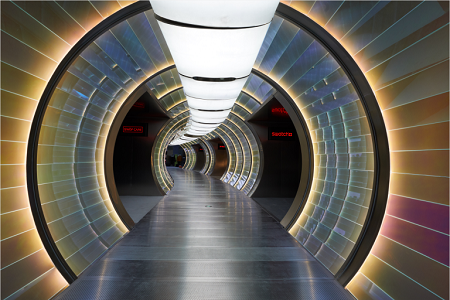
Q: How can brands stay relevant and fresh to cater to a continuously changing target market and consumer preferences?
A: At present, Chinese customers are divided into many different types and groups. A brand needs to position itself first. Analyze your target market and don’t develop products blindly.
Q: Which sectors within retail, luxury and fashion do you think will have the most potential in the coming years?
A: It’s likely to be a fusion, the combination of luxury and fashion brands, even personalized customization, can set off a wave. Of course, I personally like brands and designs with a certain sense of history.
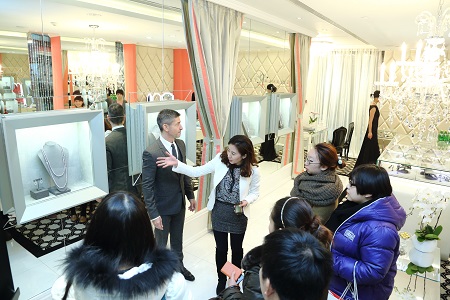
Image Source: Phoebe Guo
Q: Please share your top recommendation on how retail brands can improve their sales performance in stores. What are some factors that are often overlooked by retail brands?
A: A consumer’s sense of value is particularly important. It is not limited to high-priced products that convey the value of brands and products to customers. Some low-priced products can actually do better. Guests feel that they can make a choice. This aspect is sometimes an advantage for offline stores.
Q: As an experienced retail operations manager, what aspects do you consider most important for the retail design including the design of stores and pop-up stores?
A: I think design is sometimes incomprehensible to many consumers. They will only feel good or not good inside the store. Many brands invest a lot of money and time for the design of retail stores and pop-up stores. The results are really great, but only they themselves and the media know the inspiration and reasons for the store design. Sometimes the employees don’t even know and the customers do not understand. My suggestion is to let the customers know more about the design and concept of the store, so that the store employees and products can be integrated. Many of the display cases in Ivanka Trump Fine Jewlery's store have a hexagonal fixture design because they are inspired by the jewelry cabinets of Ivanka’s mother. As a result of the fixture design, many pieces from the collection sold very well. Every detail of the store is closely related.
> back to top of page

2020 Relaunch - How a Strong Retail Design Leads to Increased Sales
February 28, 2020
While concept stores can change the layout and color scheme of their store design, they must first realize why it is so important to focus on these changes. Having a strong store design ultimately leads to a better customer experience and thus increased sales. First impressions really do matter, especially in retail design. Instead of focusing too much time and effort into the product that companies are trying to sell, they need to focus on where the product is being sold. In order to optimize the customer experience, companies need to invest in their store design.
1. Start with the Entrance
Since first impressions are often what stick with customers the most, it is essential for concept stores to have a strong store design starting at the very entrance of the store. The entrance is what sets the tone for the rest of the customer experience. Store designs should focus on creating engaging window displays the catch their customers’ eyes. Displaying the merchandise in a creative and exciting way will start off the customer experience the right way. The next factor to focus on is the door. Everything from how large or small, the material used, and the color is important in conveying a certain message. Concept stores should keep in mind their target customer and use materials and colors that are fluid with their store identity. Being able to successfully combine all these components will attract more customers into the store design and increase the popularity of the store. Below is an example of the Versace store design entrance. They used a glass door to complement their elegant and chic store design. They also used engaging window displays in order to attract customers into the store.
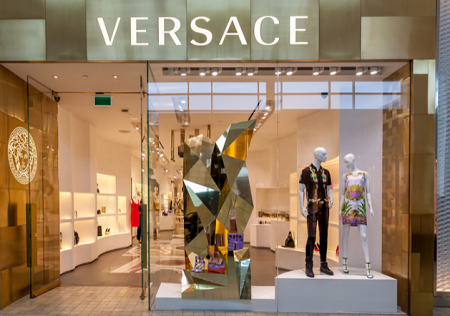
"Versace on verge of being sold for $2bn"
2. Keep the theme Fluid
Once the customer has been intrigued to visit the store design, it is important to keep the customer in the store design for as long as possible. Investing in a strong store design will allow customers to have a more positive experience within the store. Concept stores need to identify the customer they are targeting. For example, if a concept store like Michael Kors is attempting to target affluent, older women, they need to use colors, designs, and appropriate lighting techniques that are appealing to that target population. In fact, just focusing on improving lighting within store designs “increases sales by 1.93% per customer” (Perillo Construction). Below is a Michael Kors store design that incorporates all of these concepts successfully. Keeping this theme consistent with their logo and promotional techniques will make the brand more recognizable and stronger. 91% of customers have visited a store because of an online experience, so it is important to get customers interested with social media promotions but then keep them interested once they enter the store design (Marketing land).
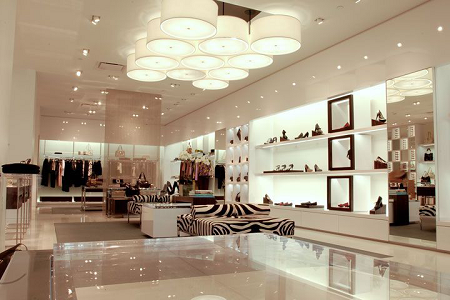
3. The Results:
Success in these different areas will result in increased sales by 50% (Entrepreneur). Having a strong concept store is so important in the success of a company. Concept stores need to constantly be thinking about how they can improve their store design to create the optimal experience for their customers. By identifying exactly who the company wants to target and creating a strong first impression with window displays, entrance mats, and continuing the theme with strong design, coloring, and lighting, concept stores can increase sales and make a positive customer shopping experience. Having a good product only goes so far. A strong store design to accompany a great product is the successful way to increase sales.
> back to top of page

Enhancing your Brand Image through Consumer Experience
5 Star Plus Series: Excellent Retail Design in China
February 26, 2020
Retail stores are an important tool for marketing a retail brand to consumers. From the outside in, consumers need to be attracted to a retail store in order to effectively experience that will resonate with consumers and entice them to purchase more goods, and become more loyal to the brand as a whole. The design of retail stores for a brand to tie to the overall brand story while also incorporating important needs.
Key Goals of Retail Design
Retail design starts with a concept that achieves key goals for the brand. While the specific goals vary for brands, there are four key design goals that should be keep in mind of retailers which include:
- ? Brand Story
- ? Attractive retail window displays
- ? Retail experience
- ? Technology integration
When combined into retail design, achievement enables retailers to successfully increase brand awareness and sales.
Building Strong Connections to Consumers = Stronger Brand Loyalty
Retail experience for consumers helps to build a stronger brand loyalty for brand. The experience of the consumers has a big impact as to whether they will continue shopping with the brand. If they have a negative experience they are highly unlikely to shop with the brand again. If they have a good and memorable experience, they are more likely to continue shopping with the brand.
A great example of this is the French luxury retailer, Hermes. This brand has a strong loyalty worldwide. A big reason for this is the experience and design of their 310 retail stores throughout the world.
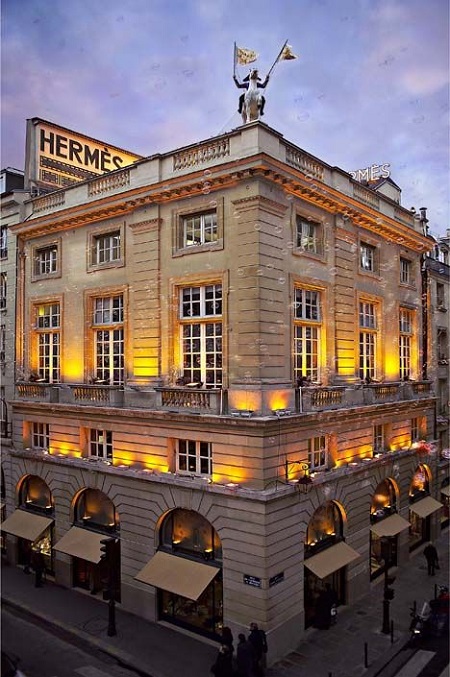
Image Source: Pinterest
The key part of Hermes that makes their brand so unique is their long driven history and relation to heritage and integrity of their brand. With over 130 years of history, the brand constantly relates their focus on quality, integrity and heritage back to the core of their experience for consumers who are interested in the brand. Along with this, they continually adapt their experience based on the different markets they operate in.
Starting from their foundation, France, the experience of their retail stores primarily focus on the traditional elements of the brand. Their various retail stores in France are tailored to meet the needs and expectations of consumers who come both locally and globally to experience the traditional elements of the brand.
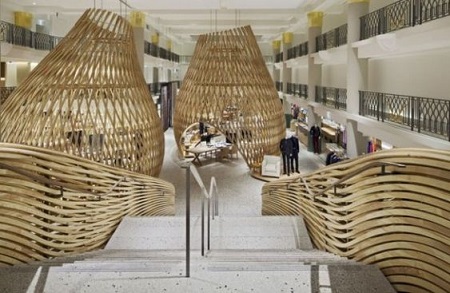
Image Source:Pinterest
Their flagship store in Paris, only allows entrance to those who have scheduled an appointment months in advance. Window displays, convey the traditional elements of the brand, related to their founding in the horse industry. Apart from the limited amount of products on hand, to reinforce the exclusivity and special quality of the brand, they even have an exclusive rooftop access point that allows guests a unique view of the city featuring a memento of their heritage with a figurine of a horse racer on the roof top.
In New York City, the brand brought experience to a whole new level during the holiday season by featuring an advent calendar experience for guests. Each day featured a new and different product that allowed guests to experience different elements of their brand throughout the holiday season in a memorable way.
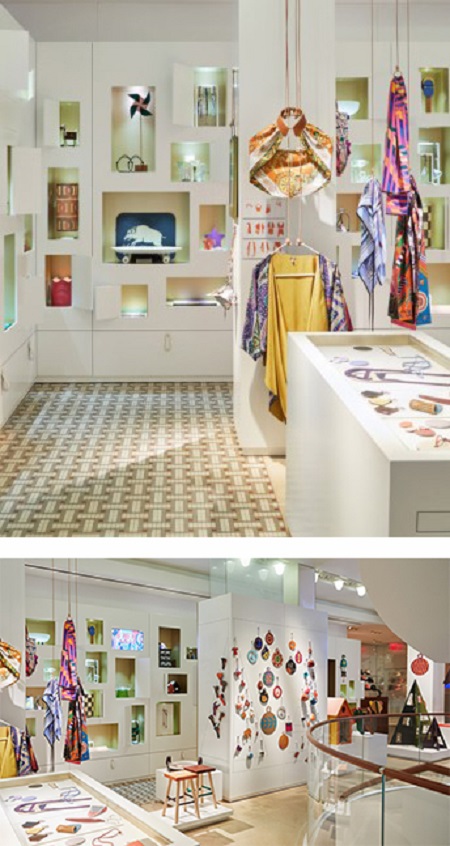
Image Source: Pinterest
Their branch store located in the Meatpacking District of New York City, focuses on providing a unique experience to new and young shoppers of the brand by incorporating interactive displays tailored to the interests of this target demographic that features, music, skateboarding and other sports like cycling. To create a more welcoming and friendly experience for the young guests, the service employees are dressed in more casual products, such as, Hermes sneakers and casual silks. The store also adds unique services, like a free coffee and champagne bar and lower range products starting at only $100.
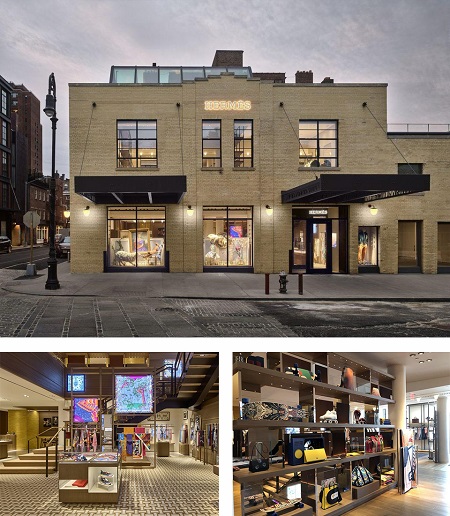
Image Source: Forbes
In Asia, and China in particular, the brand has found great success in creating unique experiences for their consumers. In the Chinese market, Hermes has been able to incorporate more features that enable the brand to connect with the consumer through different sales channels including WeChat. For the Chinese market, the main part of creating unique and personal experiences for consumers stems through the design of their pop-up stores, which, drives consumers to the actual retail locations and build stronger connections to their target consumers through WeChat.
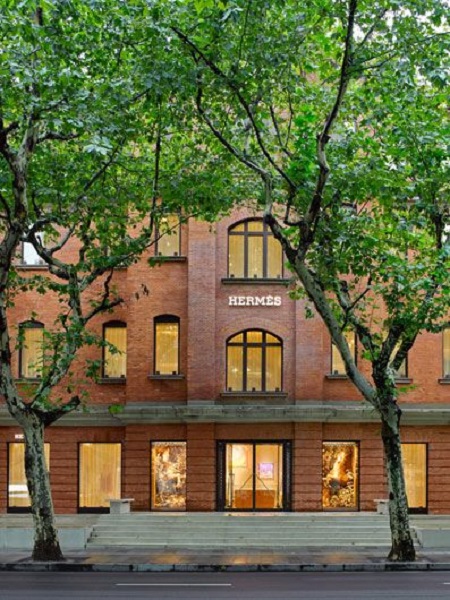
Image Source: Pinterest
Their flagship store location in Shanghai is one of their three “mansion” locations in Asia. This location features multiple stories that feature the product and show rooms that allow the brand to feature certain products depending on events. These events tend to be highly exclusive and only grant access to VIP guests, thus enforcing the exclusivity and unique experience of the brand.
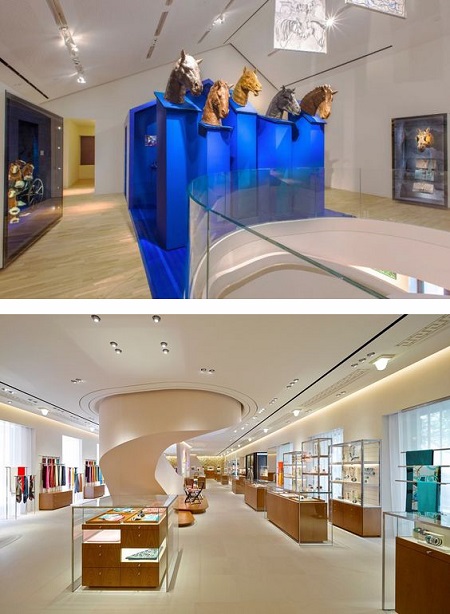
Image Source: Pinterest
Last year Beijing’s famous shopping district, Sanlitun, featured a pop-up store location that tied the unique and fashionable designs of their silk products to different music albums. As guests went through the pop-up store they listened to music of their favorite albums and saw covers that incorporated the latest designs of their products. Guests could also scan QR codes to learn more about the products through the company WeChat page.
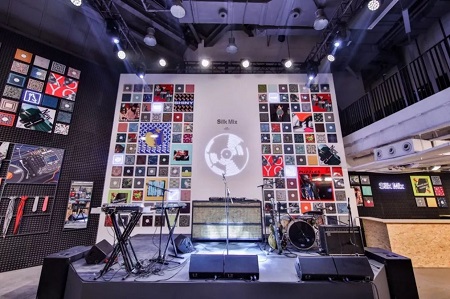
The Purpose of Experience:
The global execution of Hermes to incorporate unique retail experiences through their design help to create a stronger reliance and loyalty of the brand. The unique experience of the various retail locations throughout the world, overall, reinforces the exclusivity of the brand while also tying to the strong brand story that is Hermes. Providing unique experiences to consumers in the retail design of stores is just one element that helps to achieve the design goals of a retail store. The strategic role of incorporating retail experience into design is to grow consumer’s overall brand loyalty and reliance to the brand’s identity. Thoughtful planning and design feeds the consumer’s desire and interest of the brand, thus enhancing the overall retail strategy that ultimately helps to increase sales.
> back to top of page

5 Star Plus Insights: 2019 in Review
February 21, 2020
We believe that design has to achieve strategic goals set by the brand such as an increase of sales revenue, achieve high impact through design that creates a wow-effect that strengthens the brand image and enhances customer loyalty. Last year we continued to create impact for our clients through thoughtful and creative design.
Retail Design:
For the Swiss Ski-wear brand, KJUS, 5 Star Plus gave their first flagship store in Asia a new futuristic look. Cool metals, and dynamic lighting that contrasted with tones of grey and orange, helped us to achieve this look.
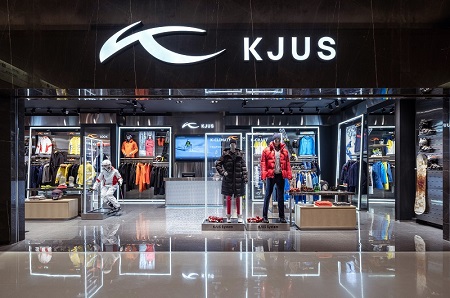
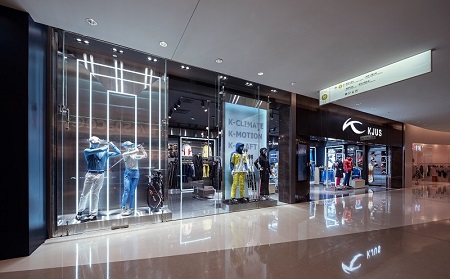
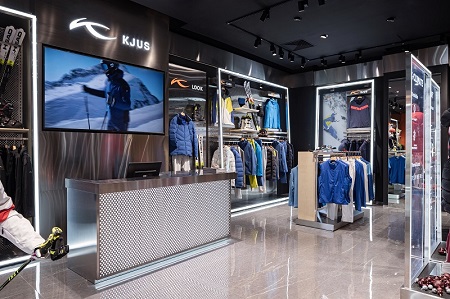
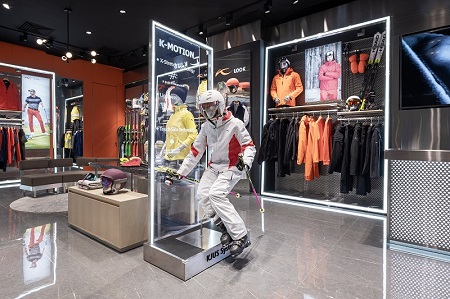
The Singapore based German brand, Brotzeit, wanted to enhance the design of an existing location in Hong Kong. Use of leather, greenery, and other warm colors create a welcoming and casual dining environment for a nice lunch break or a family meal.
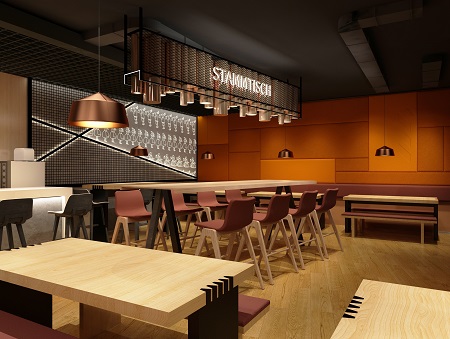
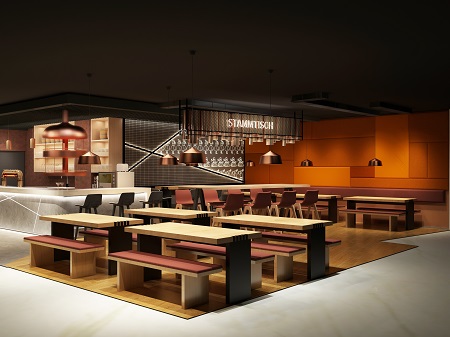
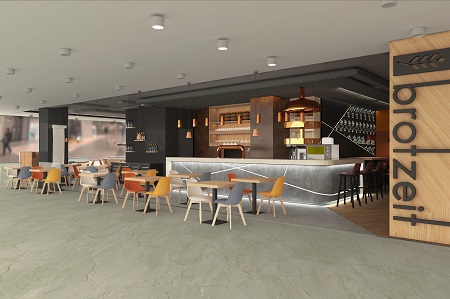
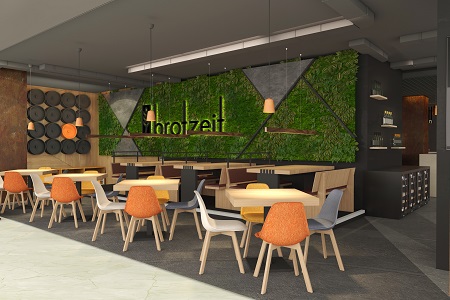
Sinsian Black Jelly Brand, a new grass jelly dessert brand based in China, requested 5 Star Plus Retail Design to create a store concept design for their premier flagship store in Beijing. The design was inspired by Sinsian’s brand identity of tradition, health, and purity through the minimalistic design features that showcase the product including light, warm colors and hand-drawn motifs of natural herbs and leaves to highlight the fresh quality of the jelly.
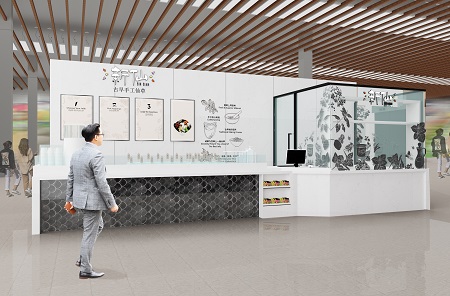
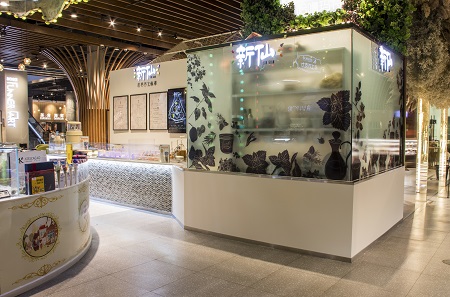
Exhibition Design:
Our exhibition projects allow us to work with clients across different industry sectors. From full scale design to production and logistics services, we enjoy the opportunity to work with clients new to China’s market by providing guidance and tools to have a successful show.
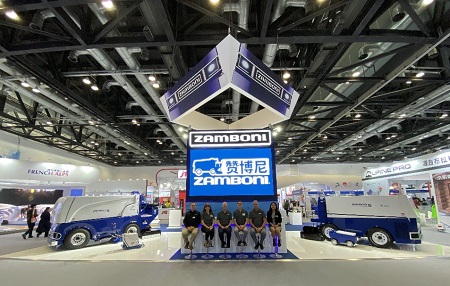
The Austrian luxury eyewear brand, Silhouette, expanded their operations to mainland China in 2019. To make a statement, they participated in 2 different International Optics Fairs in both Shanghai and Beijing with both stands above 100sqm. 5 Star Plus Retail Design was responsible for support with the design development, technical exhibition stand design as well as the production and build both stands.
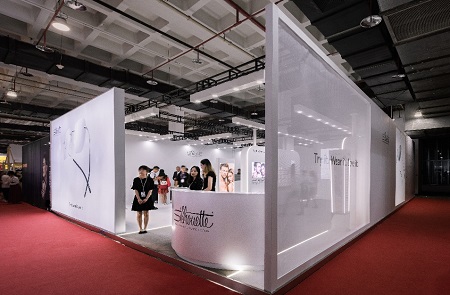
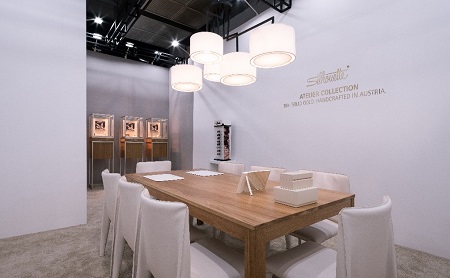
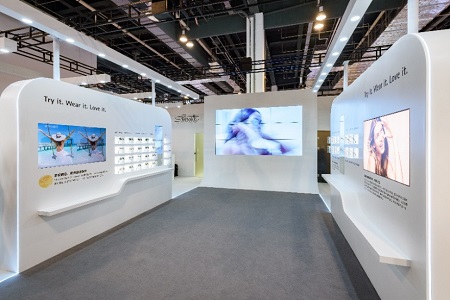
MEBO international, a global pharmaceutical company specializing in wound and ulcer treatment, participated in the 29th conference of The European Wound Management Association 2019 in Sweden. The concept of the exhibition stand design was to create a dynamic and modern structure whilst boasting scientific connotations and a stylish aesthetic. 5 Star Plus Retail Design were responsible for the project management and overall production of the exhibition stand.
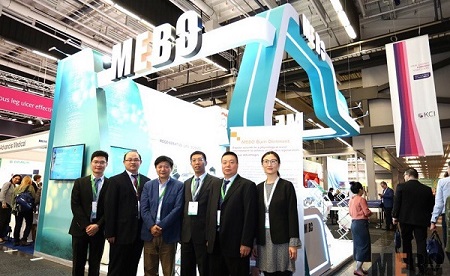
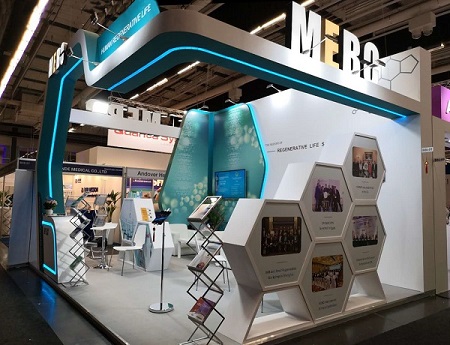
Image Source: MEBO
Events:
Last year we helped with the design and production for a variety of different events from conferences, to delegations, and other networking and promotional events.
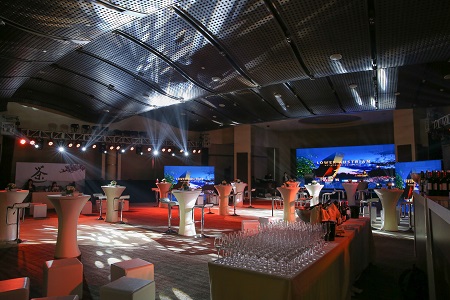
Image Source: ecoplus / ADVANTAGE AUSTRIA Shanghai
Last April, a delegation from Lower Austria came to China to celebrate and recognize the positive business relationship between China and Lower Austria. As part of this, Advantage Austria hosted a two part Lower Austrian Networking Reception in both Shanghai and Beijing. 5 Star Plus managed the design and production for both events.
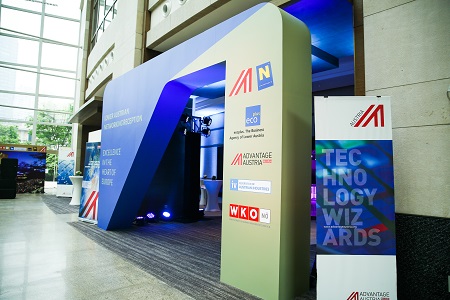
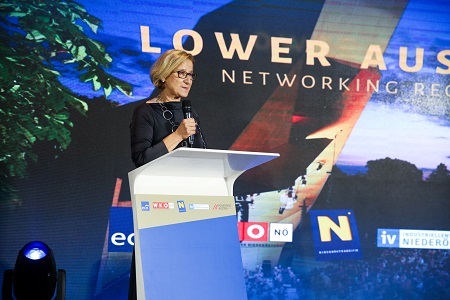
Image Source: ecoplus / ADVANTAGE AUSTRIA Shanghai
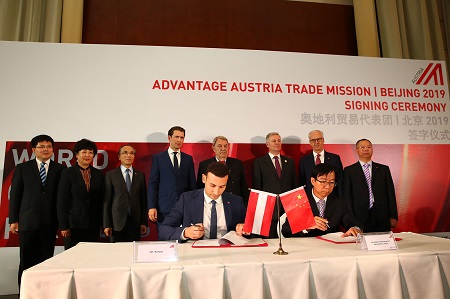
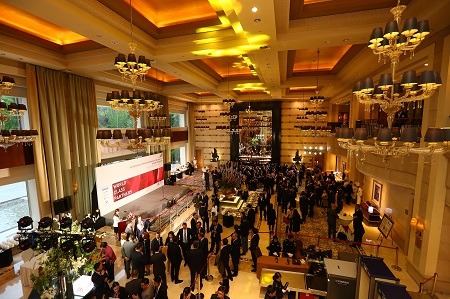
Image Source: ADVANTAGE AUSTRIA Beijing
Visual Identity & Graphic Design:
Every brand needs to define its visual identity to ensure that the brand positioning and message is communicated across all channels and visual tools. Our team understands the importance of adapting and refreshing visual identity in order to create a strong brand image in China.
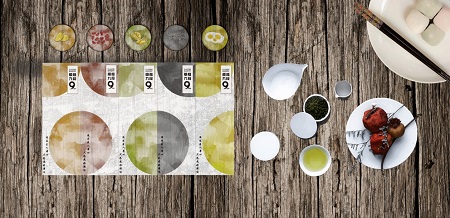
A new brand “LuxStory” antique boutique, co-financed by Huaxia Pawn Shop and Japan KOMEHYO, needed an elegant visual identity design to create a strong brand image in the market. The logo is composed by the letter “L” and “S”. “LuxStory” means "Luxury Story." Combing the colors of gold and brown to create a luxurious and unique feel, 5 Star Plus designed multiple elements including administrative items, packaging, and advertisement posters. The overall visual identity design provides a sophisticated look that creates an international appeal.
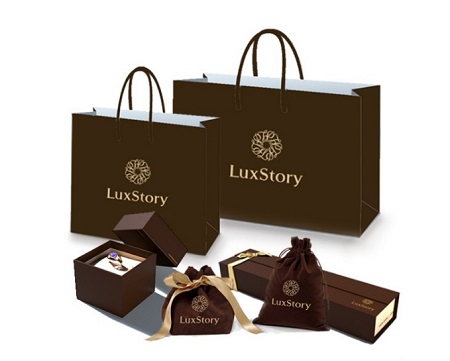
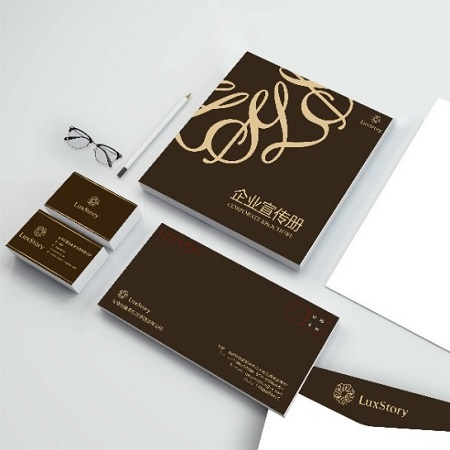
5 Star Plus Industry Insights:
Last year, our marketing team gave talks on variety of Chinese Retail related topics.
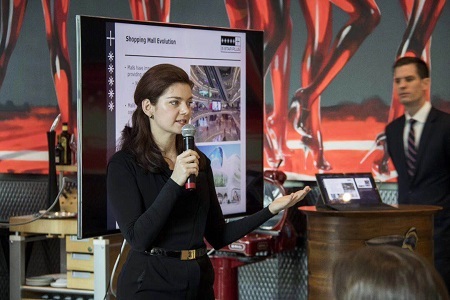
Backed by extensive research we focused on three key industry points:
- A
- - Storytelling through Retail Design – How to effectively adapt your brand story to speak to Chinese consumers, and the benefits for brands.
- - New Retail, New Design – Adapting your retail strategy and store design to fit the current needs of Chinese consumers.
- - How to market yourself better in China – Whether it’s a B2B or B2C company, marketing techniques need to be adapted for China.
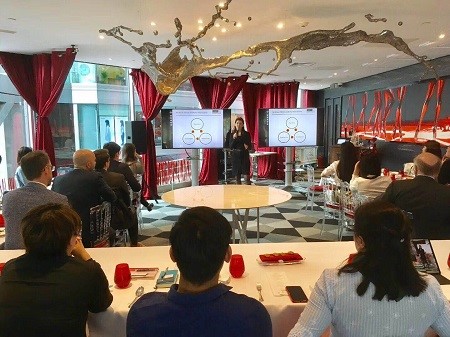
Our Managing Director, Barbara Seidlemann, also shared her insights on China Global Television Network’s New Money business program. Her interview demonstrated insight into the importance of aesthetics in both home and retail context, whilst also providing and discussing the design market itself.
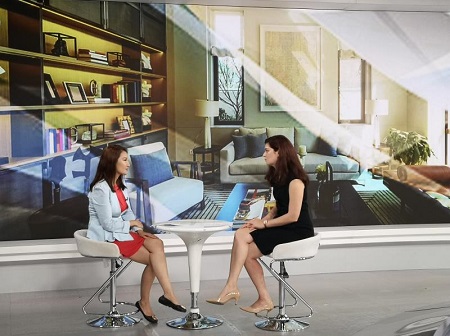
Outlook for 2020:
Throughout 2019 we had the opportunity to work with some unique brands and interesting clients to help them achieve their strategic design goals and see success in the retail industry. As the new lunar year has just begun, our goal is to continue providing valuable services to retail brands that help them to achieve their new goals for 2020. We also plan to maintain an up to date knowledge of the Chinese retail market, regulations and the relevant design trends that help us understand the market development. Finally, we seek to foster the relationship with our existing vendors and partners in China so that we can continue providing the best possible quality to our clients. 5 Star Plus Retail Design understands what it means to build up a brand identity and strategically use our services to create a maximum benefit for our customers through creating emotional connections between the customers and the brand. We look forward to creating more impactful designs in the coming year!
> back to top of page

5 Star Plus Storytelling Series: Colors
January 23, 2020
Storytelling with Colors
In the second part of our storytelling series we will discover the effect of colors as a powerful storytelling tool. By using colors we can create any mood and ultimately stories. As humans, our minds instantly respond to these stories.
The psychology of each color depends on the personal experience of the customer as well as the “personality” of the brand. A mix of perceptual and cultural factors combined with the right colors helps create a dynamic environment that ties to a brand’s story and speaks to their consumers’ emotions.

"Visualization of Robert Plutchik’s Wheel of Emotions "
Influencing the Mood with Colors
Colors serve as an important storytelling tool, because they create a sensory impression that reflects mood and emotion of a retail space. Psychological studies have shown that feelings of joy and happiness are often associated with warm and bright colors, where as cool hues and dull shadowy tones are more downbeat.
Before brands choose the respective colors for their stores, it is important to decide which hues represent the brand identity in the best way. Brands have to be aware who they are, who their target audience is, what story they want to tell and ultimately what mood they want to create for their customers. Designers also have to think about how the color is used with other elements like text or photos.
The Concept of ‘The Color of the Year’
Every December ‘The Pantone Color of the Year’ is awaited with much excitement and anticipation by designers, branding experts and the creative society as a whole. When the Pantone Color Institute first announced the color of the year in 2000 as a trendsetting concept, it was not known how influential their decision would become for the retail industry.
The Institute does not just randomly choose any color. They follow a very strict evaluation method during the decision making process that takes the current fashion and marketing trends, social media status and even politics into consideration. Their ultimate goal for each year is to select a color that reflects the current global mood. The result is a color that is inspired by us meant to inspire us for the coming year.
Classic Blue
Let’s examine the color of this year and see what its story is! The chosen brand new Color of the Year is Classic Blue. As we entered to a whole new decade, Pantone Institute wanted to pick a color that gives everyone the feeling of good foundation of faith and peace. The main idea behind choosing such a well-known, familiar color is to give us a sense of reassurance.

If this color was a person, it would be someone who is reliable and creates a calming environment that also brings sense of tranquility to the human spirit. This person would also be able to bring clarity, help with the concentration and ultimately re-center other people’s thoughts.
Classic Blue’s Story
Since 2007 Pantone not only picks a color but also creates a lifestyle, and a whole story around it. As part of their marketing campaign, in collaboration with partners across industries, Pantone created a multi-sensory Classic Blue experience that they showcased at their color reveal ceremony. To help people experience the personality and story of the color, they developed the smell, sound, taste and texture of Classic Blue.
Classic Blue in Retail Design Storytelling
Since colors need to be able to show and tell a brand’s story, spark interest and also inform customers they have to be carefully selected. We would like to show some examples where Classic Blue was incorporated into the retail space storytelling.


Image Source: Dezeen
The images above are good examples of ‘Past meets present’. When designing this café and bakery in Ukraine the designer used Classic Blue and the very contrasting Living coral, the color of 2019, as an accent color to put emphasis on the takeaway area. The color concept is based on the cold shades of pink, blue and grey, which emphasizes the warm color of bread.


Image Source: Dezeen
The nail salon above, located on the Beverly Boulevard in Las Angeles, is surrounded by hip coffee shops and clothing stores. Their uniqueness is in the Japanese style gel that they use. The designer wanted to create a coffee shop style interior with industrial-style surfaces and pops of blue that help represent a sense of discovery while also avoiding the predictable design style to reinforce the fact that this place is everything but an ordinary nail salon.

The clothing store design above creates sections of different items with use of Classic Blue flooring. It’s a symbolical piece that defines and characterizes the space as a minimal setting in a calm environment.
In general, when it comes to using Classic Blue as part of the retail storytelling, brands express a sense of calm and the feel of luxury with it. Usually it reminisces of the ocean and sky and these elements provoke a sense of peace which is the perfect choice when brands want to create a slow shopping experience.
Finally, let’s not forget that color is about much more than just a nice hue or the perfect shade. In fact, studies have shown that 90 percent of impulse judgments about brands and impulse purchasing are based on colors alone. It’s never the color itself that has this effect, but how well that color complements the brand story.
> back to top of page


Retail Design Trends through the Decades
January 19, 2020
The start of a new decade is always significant. The past 50 years have brought many trends that have come and gone but have seem to come back through strong influences of the World’s geo-political, economic, and sustainability. As 2020 has just begun, we want to analyze retail design trends of the past 50 years and examine what trends are likely to come next.
Innovative 1970’s
The 1970’s was an interesting time for the world. Advancements in technology, innovations in pop culture and geopolitical unrest led to new ideals that opened the minds and expanded the creativity of consumers during this time.
The environmental movement was reflected in design through Earth-toned color palettes including, orange, green, brown, yellow, and blue. The use of greenery in design was not uncommon either.
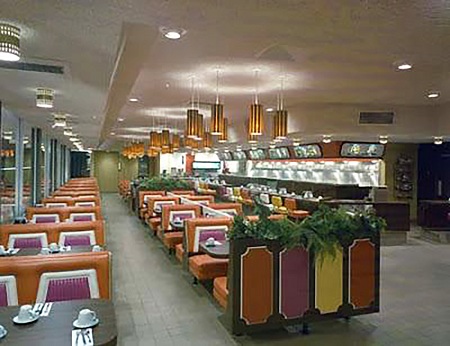
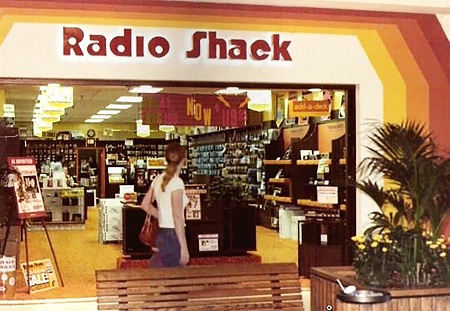
Terrazzo became a popular material for retail space and is still popular to this day. The speckled marble like material added a sophisticated and colorful effect to the retail design space that could be used for both counters and flooring in stores.
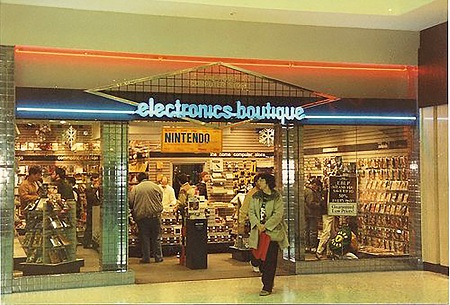
Image Source: Tumblr
Furnishings and lighting utilized sleek and modern geometric shapes that created a futuristic feeling. Common materials for furnishings included vynal, plastic and Scandinavian style wood pieces. Accents of chrome and brass added to the futuristic effect.
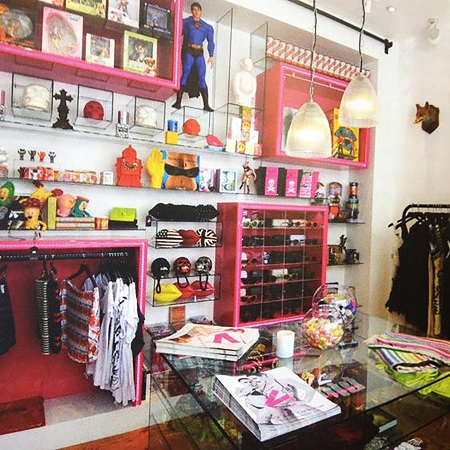
The first type of omni-channeling also originated in this decade. Colorful catalogs and the introduction of home shopping networks on new color TV sets allowed consumers to browse products at home and place an order over the phone. Items could later be picked up at the store or delivered directly to their home.
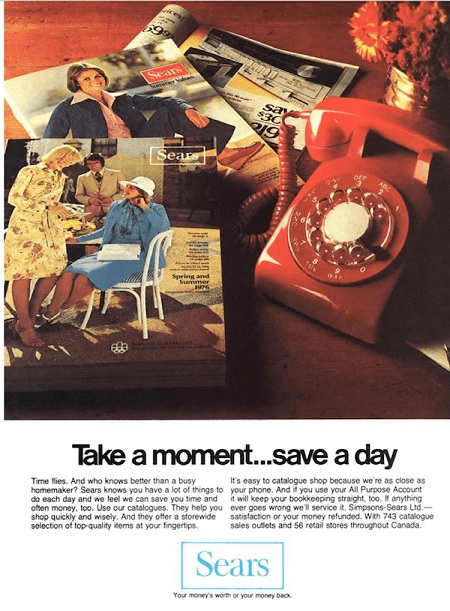
" Omni-channel add from the 1970’s "
Futuristic 1980’s
The 1980’s brought new technologies that truly shaped design trends in this decade, inspiring contemporary designs that created design combinations of bold and soft, and complex and simplistic. Marketers had more information on consumers and could target products towards customer segments more accurately which helped brands to form unique brand identities.
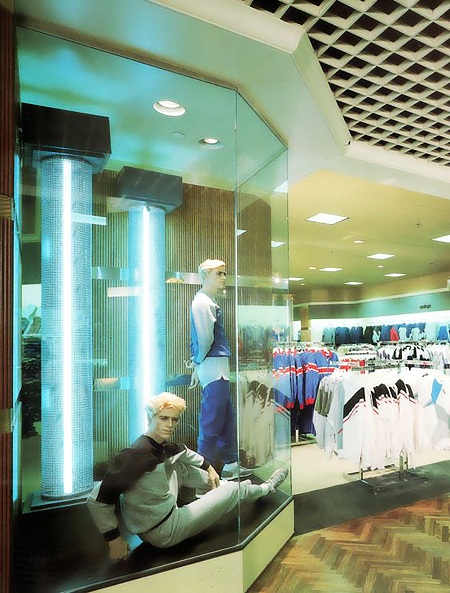
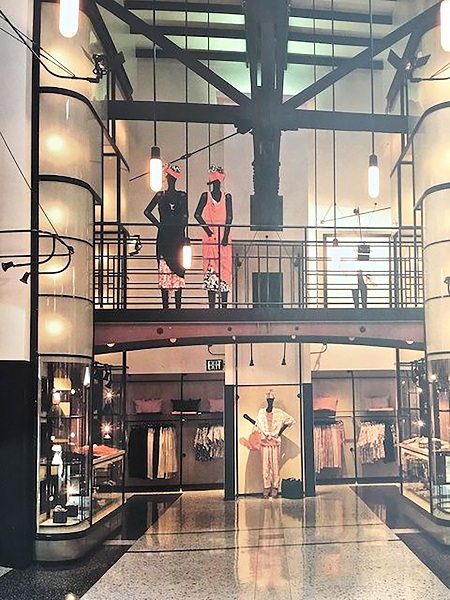
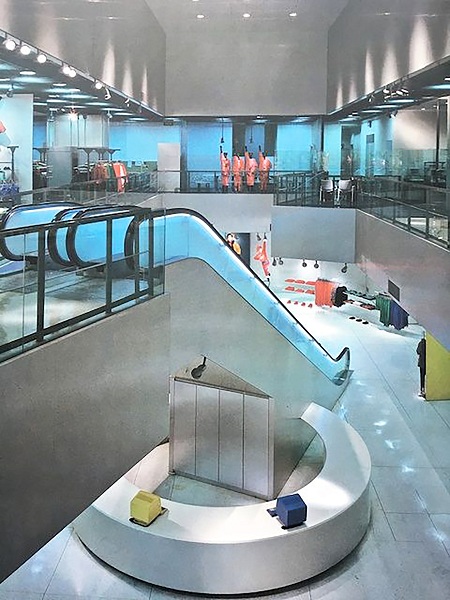
Geographic shapes, and funky graphic design, combined with minimalism created a fresh new look for retail design in this decade. Materials used for flooring and furnishings stayed relatively the same.
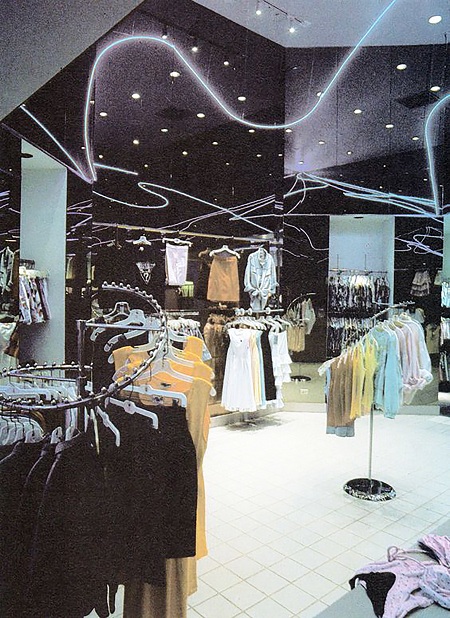
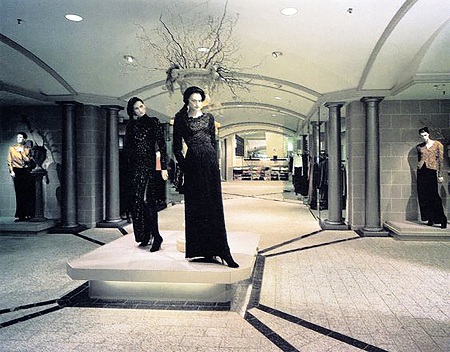
Image Source: Tumblr
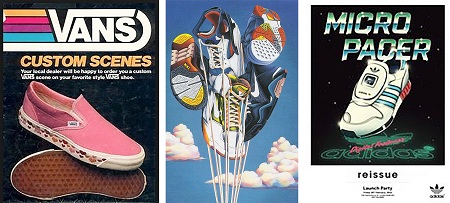
"Colorful Graphic Design for Shoes in the 1980’s"
The Booming 1990’s:
The 1990’s saw similar trends to the 80’s in a more refined way than the previous decade. Large retail brands jumped into the picture and brand identities continued to strengthen having an effect on the design of their retail locations.
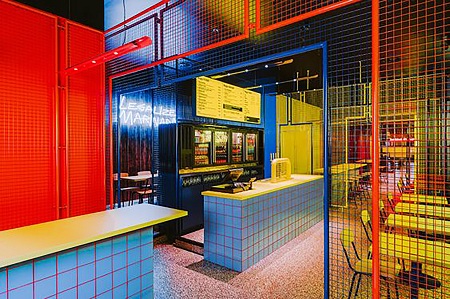
Pale woods, exposed brick and other natural elements of the raw space were incorporated into the retail design of the store to create a more edgy an urban feel. Light fixtures became more standardized and product displays were changed more frequently for each season.
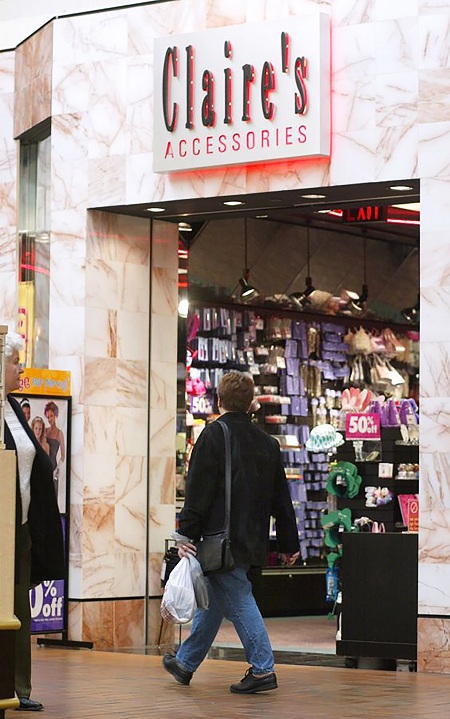
2000’s Begin the New Millennium:
The 2000’s marked the start of the new millennium. The future was here and starting now. Easy access to the internet, and the birth of the smartphone and social media created an uncharted territory for online shopping and advertising. Retail stores began to incorporate more technology into their designs by use of TV displays.
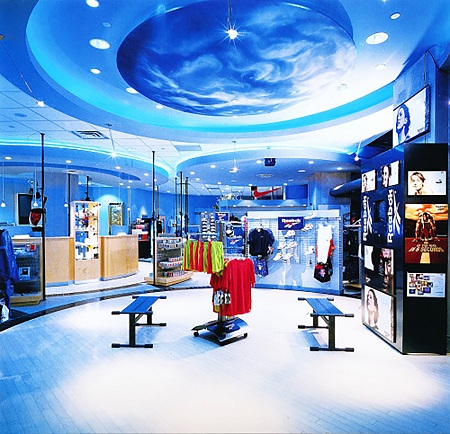
Image Source: Tumblr
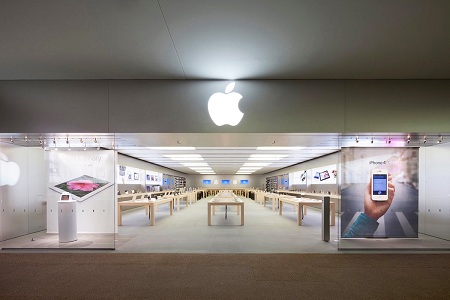
"First Apple Store, 2001"
Nostalgia of the past shaped the trends seen in this decade. Beige and dark woods became a popular retail design trend. Large graphic images and pops of color added to the branded visual identity of the space. In an effort to be more environmentally cautious, reclaimed materials became popular for flooring and fixture design. The use of ceramic wood and carpet tiles became more popular as the decade progressed due to the durability and functionality of the material.
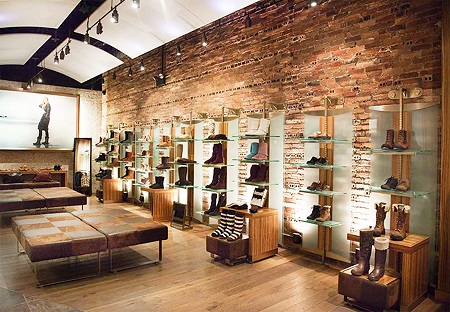
" UGG Store, 2006"
Image Source: UGG
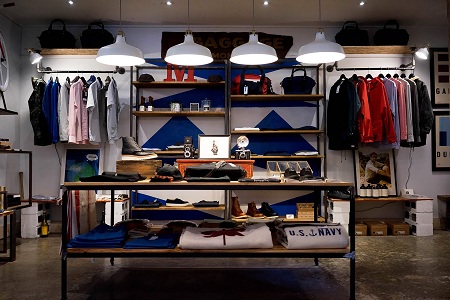
Tech-focused 2010’s:
At the beginning of the 2010’s, many markets were still in a recovery period from the Great Recession that came at the end of the last decade. This led to very minimalistic design styles. Early trends focused on simplistic and functional design styles that incorporated the raw space as part of the retail design. Exposed brick, air ducts, and polished cement flooring became a common trend. With advancements in technology and increased consumer interest for online shopping, retail design started to focus more on creating a slow-shopping experience for consumers.
As the economy picked up speed, retailers began to focus more on consumers experience in the design of their stores, thus leading to the creation of New Retail and omni-channel strategies. LED screens and in store technology and personalization of products and shopping experience. It was during this decade that retailers realized a brand could be equally successful online and began implementing aggressive strategies to reach consumers through all channels of shopping.
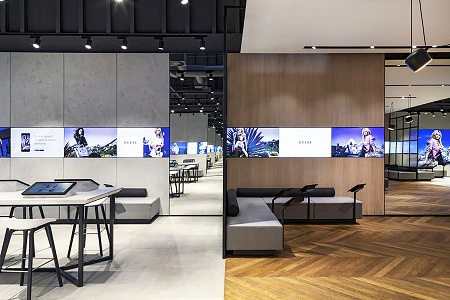
The 2010’s saw many waves of mini-retail design trends that were common in the previous decades in order to feed consumer’s desires of nostalgia. Lifestyle branding also became an important part of building a deeper connection to consumers.
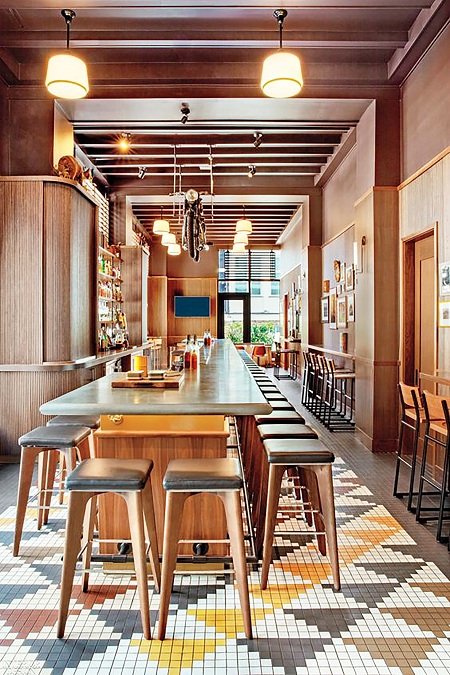
"70’s Inspired design "
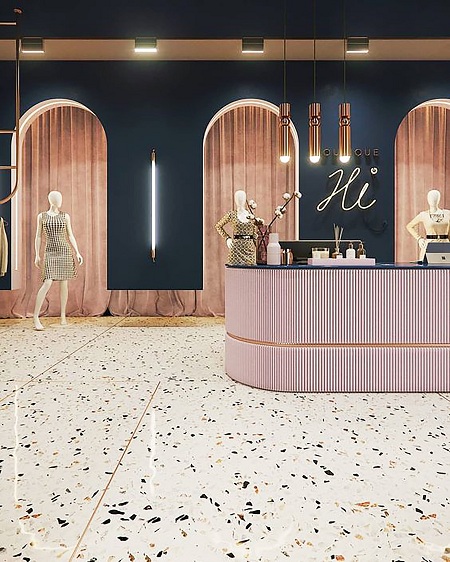
"80’s inspired design"
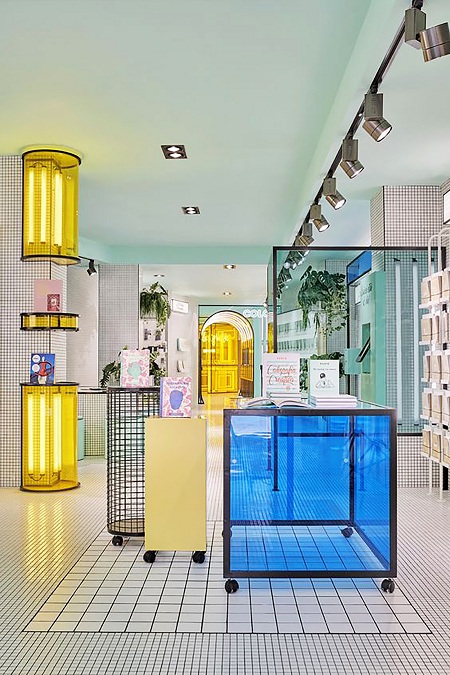
"90’s Inspired design"
Image Source: PAGE
Outlook for the Next Decade:
A look at the past 50 years of retail design allow us to see its course of evolution. As the world enters the new decade, retailers can expect that nostalgic retail design will continue to be a trend. Retailers will likely master how to effectively implement new retail strategy for their brand and in turn continue building deeper connections to their consumers. Lifestyle branding, slow-shopping, and omni-channel strategies will continue to be highly important for the success of brick-and-mortar retail. The use of sustainable materials for construction will become a standard practice for all retailers. Retail brands will rework their brand identity with more future forward strategies in an effort to continue increasing sales across all platforms.
> back to top of page

The Store of the Future, Designed by GenZ: The Ideal Restaurant
December 24, 2019
In our article last month we introduced the “Fashion Store of the Future” designed by a group of 16-17 years-old representatives of Generation Z. During the project the students created hand drawn sketches to illustrate their ideas. The results have advanced technology and personalization for the maximization of customer experience at the core - in line with the New Retail philosophy of retail design. In this second article we present their ideas for the “Ideal Restaurant of the Future.”
The Ideal Restaurant Design and its Key Features
What does the dream restaurant of Generation Z look like? We wanted them to think outside the box. What are design elements that further enhance the dining experience? What makes the experience unique and unforgettable? What design elements or technology can cause a surprise effect? What can exceed dine-in expectations? How does Generation Z imagine the restaurant design of the future? The young participants of our project group all agreed that the real difference - aside from the most obvious, the quality of the food – would be the comfort and personalization delivered by modular elements and technology.
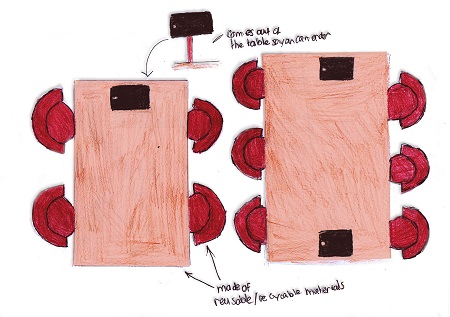
The Dining Table – Full Customization to Suit the Occasion
Placing orders through technology and gadgets rather than with a paper menu is already becoming more of a common practice nowadays, but in the restaurant of the future customers will only order their meals and drinks using touch screens at their table. The ordering system is very advanced with screens that are not only water proof but also 100% self-cleaning and germ-free, just like the table itself. The seating can be altered depending on how many guests need to be seated. For a smaller group, chairs can be sized for an individual, and for larger events they can be expanded to accommodate 2-3 people. Keeping sustainability in mind, every piece of furniture will be created from recycled or reclaimed materials.
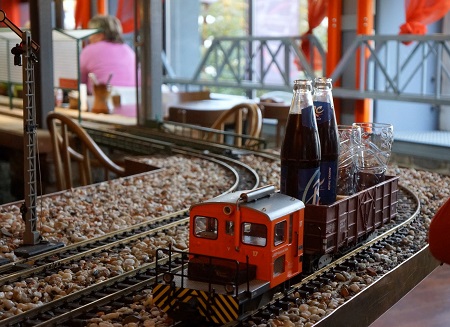
The intensity of the light can be adjusted for each table so customers feel in control of the mood, suiting formal business events, a meetup with friends or romantic dinners. Drinks are served on conveyer belts similar to the system already in use at some sushi restaurants. Vytopna Railway Restaurant, a train themed restaurant in Prague, has in fact implemented a similar concept with small trains that deliver the ordered drinks right to the tables.
See it, Smell it, Order it
Choosing meals from the interactive menu will be a more visual and fun experience. Menus will create a 4-D experience using holographic and sensory technology to display different meal options. Once a food item is selected, a holograph of the dish will appear and guests can smell it by gently wafting their hand towards their nose. The entirety of the ordering process will create a fun interactive experience that will likely increase the guest’s overall satisfaction with their meal, instead of the current selection process that can sometimes be a hit or miss choice. To make the experience even more personalized, guests will be able to customize their own food based on their dietary needs and preferences. After they order, the software will collect this information and provide recommendations and health tips. When they return to the restaurant, new recommendations will be given based on their previous visit.
Color and Mood Changing Bar Counter that Provides Information
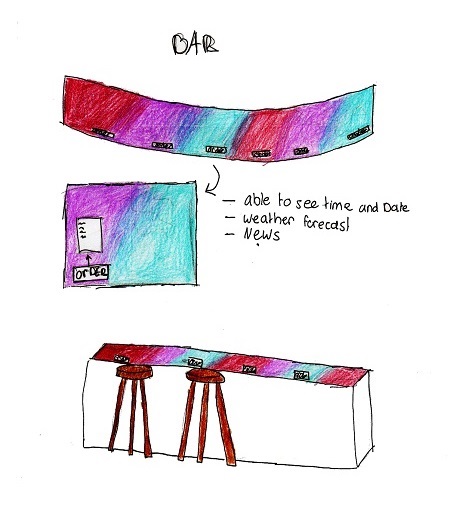
When sitting at the bar, guests will realize that the entire counter is an interactive LED screen that can be used to see and browse information regarding the date, time, weather, news, recommendations and of course order drinks. The style and color of the counter top can be easily changed based on the design preferences of the restaurant. During the daytime, the restaurant can set the counter to be a bright solid color and during the evening a color changing mode can be set to create a more dynamic and fun atmosphere.
What Comes Next?
Getting great insights into the imagination and requirements for the future from Generation Z inspired us to continue this project. In the third and last part of this series next month we will present the most exciting “Pop-up Store of the Future”, developed to attract customers from GenZ.
> back to top of page

Maximizing your Image through State of the Art Window Design
5 Star Plus Series: Excellent Retail Design in China
December 16, 2019
Retail stores serve as an important tool for marketing a retail brand to consumers. Advancements in technology have created trends that come and go at a quicker pace and faster consumer learning curves for Chinese consumers. Excellent design needs to reflect the needs of the Chinese market now in order to drive sales.
Key Goals of Retail Design
Retail design starts with a concept that achieves key goals for the brand. While specific goals vary for brands, there four key design goals that should be kept in mind for retailers which include:
- ? Brand story
- ? Attractive retail window displays
- ? Retail experience
- ? Technology integration
When combined into retail design, achievement enables retailers to successfully increase brand awareness and sales.
From the Outside In
Attractive window displays play an important role in marketing for brands. The first impression for consumers is the retail window display of products. Window displays have to be attractive, enticing, and occasionally interactive. The design goal of a window display is to attract customers and lead them into the store. Window displays should also tie to the brand story of the company and its products.
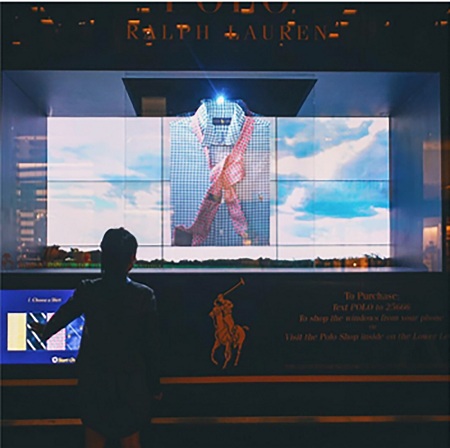
"Retail Displays"
Image Source: TIME
A strong example of retail window display design in China is the German athletic brand, Adidas. This retailer has a strong brand presence in top tier one cities in China. They also have the largest flagship store in Asia located in Beijing China. Their four story location in Sanlitun features striking window displays that are changed periodically depending on the season or products they want to promote.
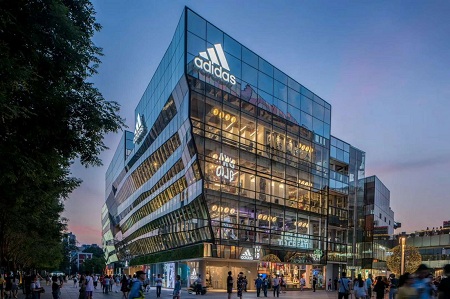
"Adidas Flagship Store in Sanlitun"
Image Source: imondi
Last October, they created an impactful design for the upcoming Beijing Marathon to promote a new line of running shoes.
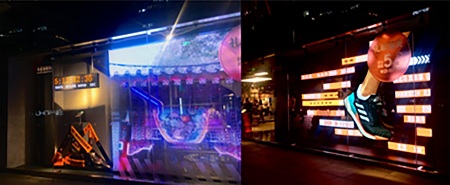
Adidas Store, Beijing
Their most recent display highlights their new line of ‘boost’ shoes. A key product feature is the comfort sole that gives the wearer a ‘cloudlike’ feeling. To show this in the display they adapted a cartoon-like cloud often seen in Children’s stories in China. The use of LED displays and dynamic lighting help to attract attention, create excitement, and connect to consumers on a deeper level, leading them into the store.
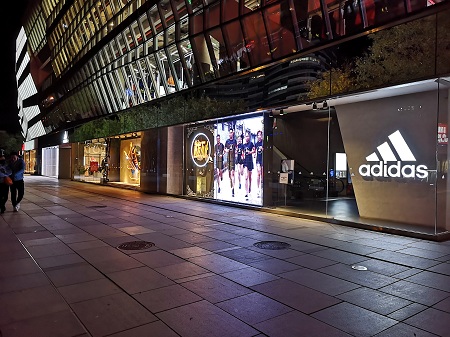
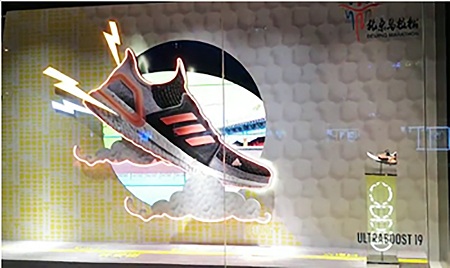
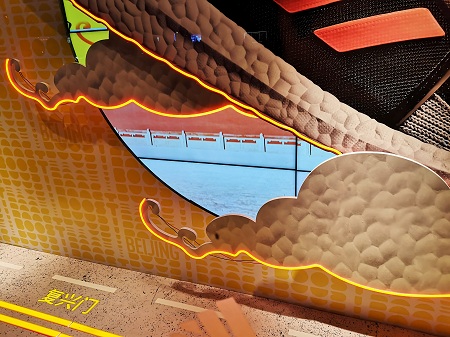
Adidas Store, Beijing
Shanghai has a number of Adidas locations throughout the city that are much smaller than the flagship store in Beijing. These stores specialize in specific products and take on a window display that connects to this.
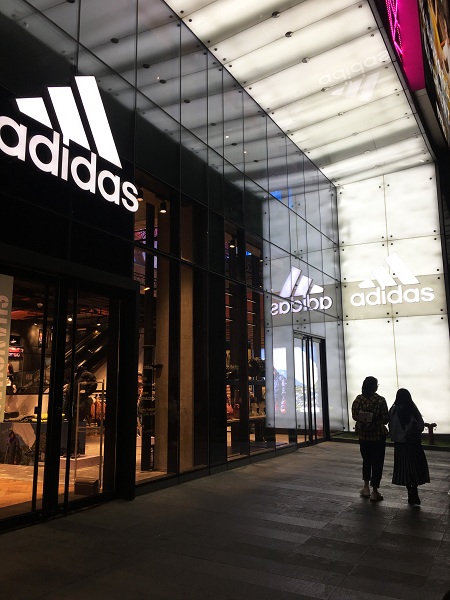
Adidas Store, Shanghai
Their location on the popular tourist street, East Nanjing Lu, features products mainly seen as part of leisure wear. The smaller window space is maximized by highlighting key products in attractive displays and utilizes the logo design in the entryway to draw the eye to a featured product inside the store. This display leads the passerby into the store to see the product more closely.
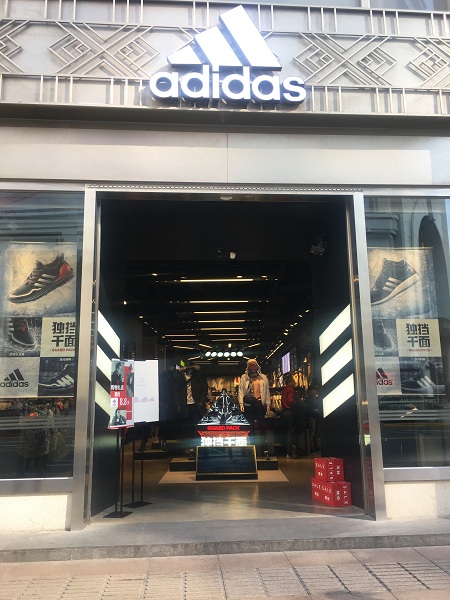
Adidas Store, Shanghai
Another location in Shanghai’s Jing ’an district focuses specifically on two styles of shoes for running and basketball. Each side of the store features a specialized window display that relates to the products themselves. For the running side, a map of Shanghai along with bright LED lighting that reads ‘Boost Shanghai’ draws attention to the various products and mannequins on display wearing Adidas products. The main entryway also features a map-like wall where different running shoes are displayed below a slogan that reads ‘boost your run.’
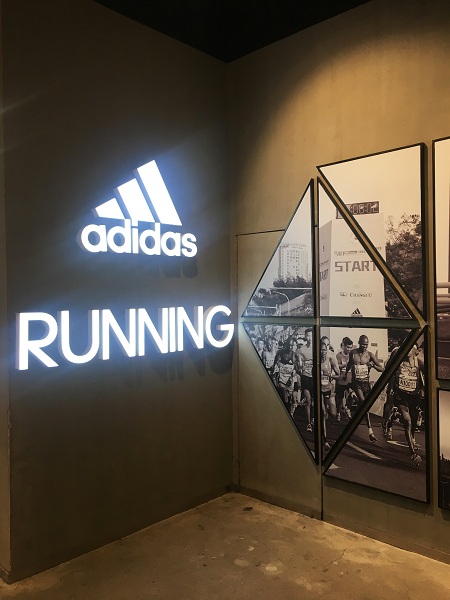
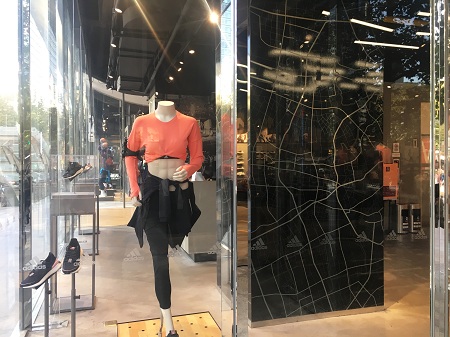
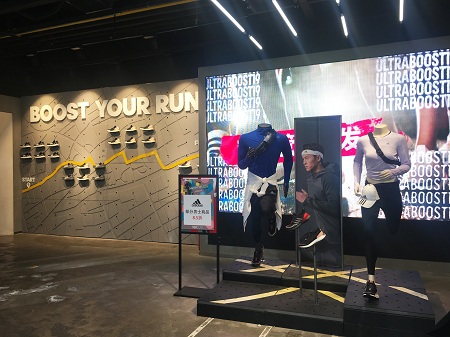
Adidas Store, Shanghai
The other side of the store is centered towards basketball and features mannequins playing basketball in front of a basketball court shaped LED screen. The screen shows different videos that highlight product features and shows some popular NBA players in China wearing Adidas products on the court.
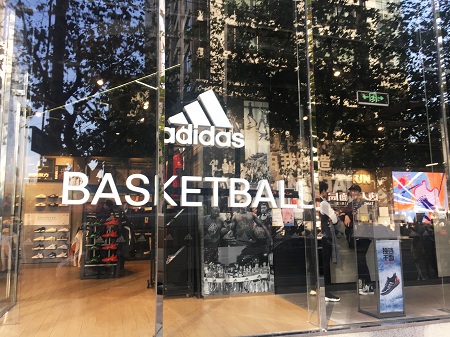
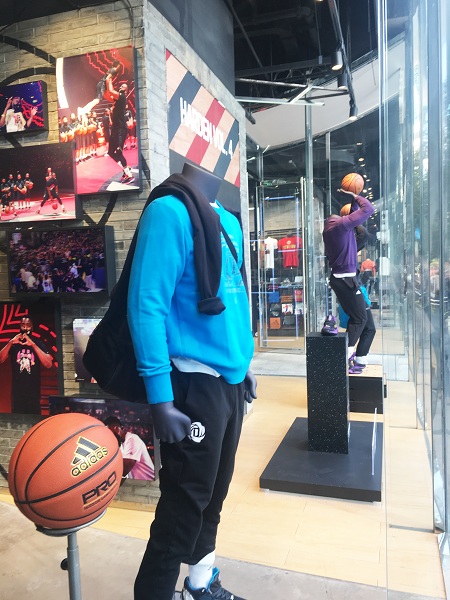
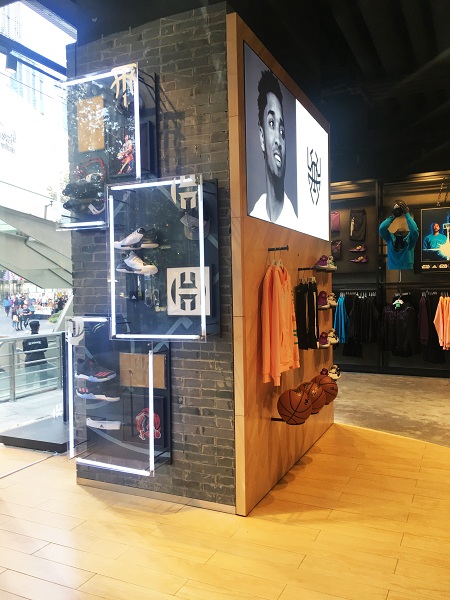
Adidas Store, Shanghai
Excellent Retail Window Display Design Enhanices Retal Strategy
Retail stores serve as an important marketing tool for retail brands. Effective retail window display design is just one element that helps to achieve the design goals of a retail store. The strategic role of window display design is to attract customers into the store while also exposing them to the brand’s identity. Thoughtful planning and design creates consumer interests that will enhance the overall retail strategy ultimately increasing sales.
> back to top of page

5 Star Plus Storytelling Series: Emotions
November 26, 2019
About our Storytelling Series
Storytelling is a powerful tool that make audiences relate to brands through content. If brands utilize it correctly, it can educate, entertain, and engage customers. It is a great tool for building a strong brand reputation. But what is storytelling exactly? This is what we will explore in this series of articles. In the first one we would like to show how storytelling can effect emotions and through these emotions build stronger brand loyalty.
How to Connect to Consumers?
Storytelling can bring the brand to life, humanizing it through all aspects of the physical world that appeals to each of the five senses. Consumers can not only see the brand’s story, but also hear, smell or touch it. To go one step further, brands build a deeper connection to their brand story through emotions.

"Reinventing Retail"
The ultimate goal of storytelling for retailers is to forge a strong emotional bond between the brand and its customers. Once they connect to a consumer’s heart and mind, the consumer feels this and holds a sense of loyalty making it harder for other brands to tempt them with a single offer. Using this engagement and retention tool, companies can easily communicate their brand values. Brand values can communicate a brand’s origin, objective, and distinct qualities about the ingredients and components of their products. To achieve this they have to be able to answer the following questions. What is the exact message they want to convey? Is there a statement they want consumers to believe in or a heritage they want them to be proud of? Is there anything special, or unique about the product or its ingredients? Is there a mission that the brand is striving to achieve? Are there any additional services included and is there anything interesting about the store design and merchandising?
When it comes to luxury brands, their ultimate goal is to establish connection with the customer on three different levels. The first is the connection to the brand itself, the second level is to the product, and the third level is with the sales consultant.
Best Practices
Let’s first explore some really good examples from the Chinese market starting with Starbucks. Their brand advantage is that they don’t make a story about products; they make the story about people. They make sure to connect with their customers in all possible ways from the lingo of the beverage sizes to writing customer names on the cups. By writing the names of the customers the cashier indicates a more personal contact. In the largest Starbucks in Shanghai, customers get an amusement park-like experience all while drinking their favorite Starbucks drink. Customers can walk through the store and see many processes of how their favorite coffee drink comes together. From viewing areas of fresh beans being roasted to the tubes that transport the beans directly to a barista for packaging and roasting. A large retro board displays what type of beans are currently being roasted that also shows information about taste and origin. Customers can also experience French and Italian style food and pastries that pair well with their coffee. Every aspect of the design is about creating experience through entertaining and educating customers.


"Starbucks Reserve Roastery Shanghai"

"The Rise of the Experience Economy"
Image Source: Ellen Lupton: Design is Storytelling, 2017
Lush, a cosmetics brand from the UK, builds their whole story around the following words: fresh, handmade, ethical, transparent and honest. These statements come to life in every detail of their stores. Customers connect to their values through sight, smell, sound, touch and even taste. Shop assistants are called “happy people.” Customers are invited to refresh themselves before exploring the store and trying out the products. Some of the fresh ingredients used to make the products, such as plants can be found in the stores as well. Their goal is not only selling products, but educating people about being environmentally conscious. They don’t try to hide anything, rather proudly show off that they fight against animal testing, and that all the ingredients in their products are 100% vegan, ethically purchased and handmade. They even place a drawn image of the employee who created that specific product. All of these elements combined help tell the story of their brand as exposed, raw and honest.

" Largest Lush store opens in Singapore"

" Demonstrating and Storytelling in Retail"
Emotional Journey
A customer’s relationship to a certain product or service changes and evolves over time. The customer’s energy rises and falls as they feel curiosity, pleasure and satisfaction. They may also hit negative stages with frustration, anger or doubt. Their emotions towards a brand can be shown visually using journey maps. The difference between a simple plot and an emotional journey map is that a plot shows a series of events that make up a story, while an emotional journey map shows the feelings that inspire those events. Emotional journey maps help designers to think like the customers, and anticipate the potential lows and highs they encounter on their journey. This tool helps brands to understand and improve their customer’s relationship with a product or service.

"Emotional Journey of Finding a Summer Course"
Image Source: Ellen Lupton: Design is Storytelling, 2017
Building a Deeper Story
Retail brands keep discovering how to move from a more product-centric focus to a consumer-centric retail model through storytelling. They make use of the fact that stories help consumers remember things. They have control over the flow of information and when done right, they engage emotions. Once consumers are emotionally involved there is a significant impact on purchase decision-making. In the next article we will explore the different techniques that influence the human mind through design. We will show how utilizing these techniques can have an effect on customers.
> back to top of page

The Store of the Future, Designed by GenZ: Fashion Stores
November 13, 2019
The Future of Retail
At 5 Star Plus Retail Design, we are excited to present you the "Store of the Future". Are you curious how stores will look like in the year 2100 and what retail brands need to know to evolve and cater to younger generations? We had the opportunity to discover the answers to these questions working with GenZ representatives. In this article of our new series we present their image of what the “Fashion Store of the Future” will feel like.
Welcome to the Future
It’s all about experience and convenience. We asked our trainees to brainstorm ideas for the ideal “fashion store in the year 2100”. Imagination was allowed to go free and disruptive thinking was encouraged. The concept we received incorporated a strong design perspective in line with the New Retail philosophy: personalization with advanced technology for maximized customer experience and convenience. The store of the future will be all about maximizing the personal experience of consumers.
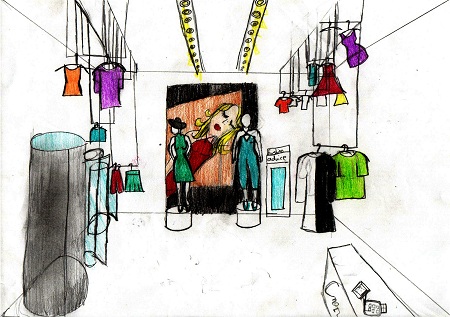
Politically Correct, Holographic Mannequins
Personalization happens from the very first second when entering the store and even before that. The mannequins presenting the newest collections in the store and part of the window displays all look different. They talk to customers having a different cultural, ethic and linguistic background from all around the world. In our “Store of the Future” the mannequins are placed on holographic pedestals and are able to change their body size, shape and color. This depends on the actual consumer demand making them highly adaptive and more human-like. Special materials are applied to shock and surprise: glass for the flooring and walls, and marble for the ceiling.
Intelligent Fitting Rooms for the Maximization of Space
The fitting rooms are tube shaped areas with transparent or holographic walls when not in use. They disappear, become part of the overall space, making the open area bigger and maximizing space in the most efficient way. Once a fitting room is occupied, the same walls turn into mirrors.
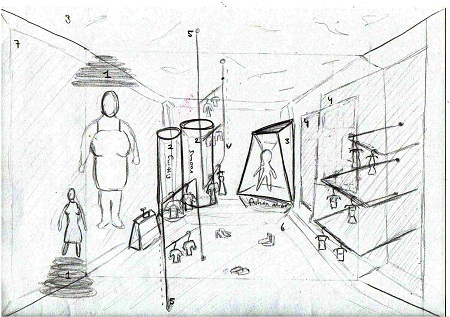
The Virtual Fashion Advisor
A must have - the virtual fashion advisor. This artificial intelligence system analyzes the body shape and preferences of the customer and then proposes different product options. The fashion advisor then shows how a whole set of products would look on the customer using holographic technology.
Minimizing the Stock, Maximizing the Experience
In the shopping area the amount of clothes on display are kept at a minimum. A giant LED screen serves as an interactive catalogue. The selected items emerge from behind the screen, out of the wall. Clothing racks also appear from the ceiling or even from the ground. These surprise effects get customers both excited and entertained.
Payment Without Moving a Finger
Face recognition is used as the supporting technology for payment transactions. Once customers register, their face is linked to their bank account. The system recognizes which customer purchased a specific item and will automatically debit the account.
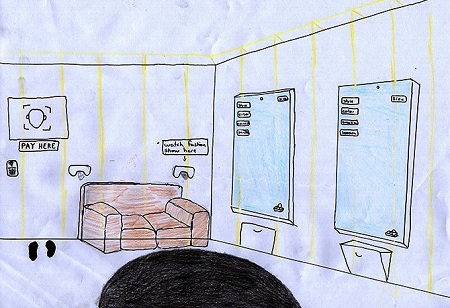
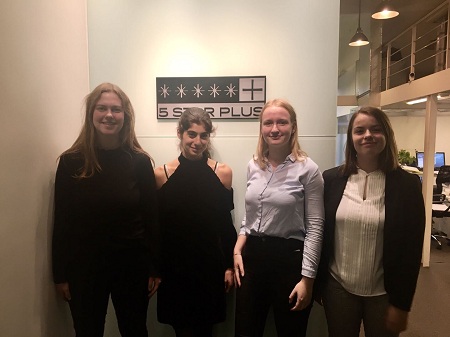
About the World Traineeship Week
In order to get answers to our questions and gain valuable insights from this very interesting young generation which will play an important role in future retail, we partnered with BenCham to host four students from the Netherlands for four days. They took part in actual projects as well as brainstorming and the discussion of ideas. In the second article of this series we will present their view on the ideal restaurant design and features. We are excited. Stay tuned for more coming soon!
> back to top of page

Designing for Your Target Market
October 30, 2019
Customizing Store Design in China
Retail design in China plays a huge role in customer experience therefore stores need to target their audience with a customized design that is suitable for them.
In China the central government urged local governments to help companies to improve the layout of physical shops. They wanted to achieve a real circulation revolution in the retail sector by reducing rent and easing restrictive terms about decoration and remodeling.
How to Design for the Main Age Groups?
In this article we would like to show how learning about the Chinese demographics can help companies to create a store design with ease and make something their customers can relate to.
1. Baby Boomers
In China a very strong shopping power comes from the aged. In 2018 17.9% of the population was over 60 years old. The estimate for 2025 is 25%. Their annual consumption is RMB300 billion which makes them a demography worth focusing on.
According to statistics, around 30 million Taobao and Tmall users are older than 50. They spent an average of $794 online in 2017. The Taobao for Elders app is aimed to simplify the shopping experience for elders. Some of these features are streamlining payment methods, customizing shopping recommendations, and digitally connecting with children.
This demographic is experiencing a growth in purchasing power as well as free time. They are the most frequent users of WeChat with 80 percent of their cell phone data used on the app, compared to just 6.8 percent by Millennials.
When it comes to store design they prefer a classic, simplified design as they want to find out information easily. They like retail stores that are not too crammed with stuff. Products should be placed in a breezy manner. Proper lighting is crucial for any customer but especially important for this generation so they don’t have to strain their eyes.
Regarding any written signs or numbers in the store, the general rule of thumb is to have a font that is large enough to be easily readable but not too large so it would make them feel offended.
Baby Boomers value the painless returns process. Retailers should pay attention to this need and reevaluate or modify the design and flow of their returns counter. This could improve efficiency, ensure customer satisfaction and loyalty.
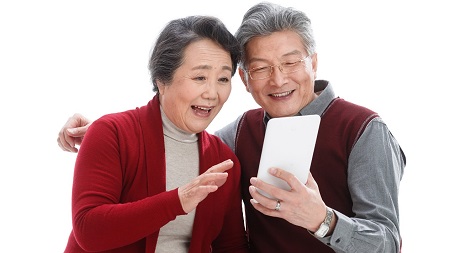
"Report says China's seniors are avid online users"
Image Source: CGTN
2. Generation X
This generation is referred to as the often-overlooked middle child who were born between 1964 and 1981. Meanwhile boomers and millennials get a lot of attention from retailers, studies show that this generation spends the most on groceries and other products. In China they make up the biggest part of the new Chinese middle class which was only 4% of the population in 2000 but it has reached more than 30% by 2018. Their shopping habits are more conservative than other generations which means they are more skeptical towards different marketing tools, they need a rational explanation and proof. Just like boomers they also appreciate quality service and brand loyalty.
When it comes to design they also prefer clear, obvious information. They like to see comparisons in the store together with reviews so they can make an easier decision.
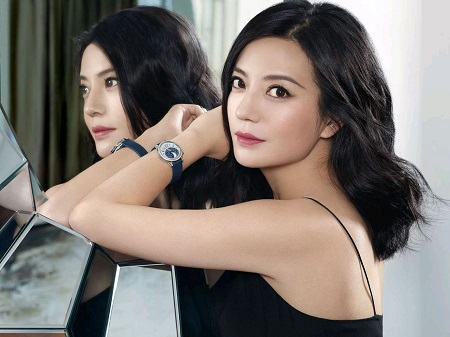
"Move Over Millennials – Chinese Gen X are Just as Sexy"
3. Millennials
Millennials, also known as Generation Y were born after 1981 and before 1996. In China they make up 28.4% of the whole population. This generation grew up using internet, mobile phones, they are good at multi-tasking which makes it quite difficult to keep their attention. They want to get all necessary information quickly, they prefer images and short, concise written content.
For Chinese Millennials traditional retail is still essential, but it has to be integrated with the online journey. A good example is Alibaba’s offline shop, Hema where customers use Hema’s mobile app to scan barcodes throughout the store so they can find out more information about the product.
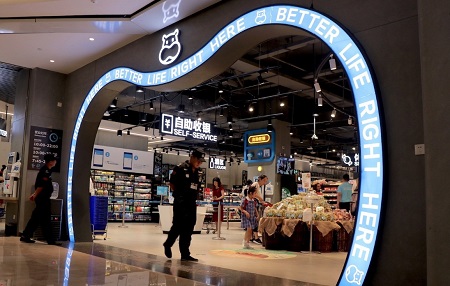
"For holiday spending, Chinese consumers favor brick and mortar"
If you want to make your store design appeal to millennials try to keep a minimalistic approach, keep the design crisp, neat and tidy. They prefer quality over quantity so they are more likely to go into a store that has a high-end, elegant, upscale layout and design.
In terms of store identity design, easy navigation and a logical layout within the store is very important for them, as they are not as patient as the previous generations. They dislike loud, busy stores, and instead look for an environment with a calming atmosphere, where they can rest, relax and feel welcome. You can achieve this effect with a simple well curated space with fewer products. Natural tones and a limited color palette could be a solution. Colors taken from nature like pale green, sky blue, sand beige and white can make customers feel relaxed. It is possible to enhance this feeling with sound and taste. Natural sounds like wind blowing through the trees, babbling brooks or calm tranquil in store music combined with relaxing scents can help to create a feeling of a special oasis for the soul.
Phone charging outlets and free Wi-Fi in the waiting room is quite essential for this and the next generation as well. Finally, millennials are really open to humor, whether from novel, mannequin, playful imagery or witty signs.
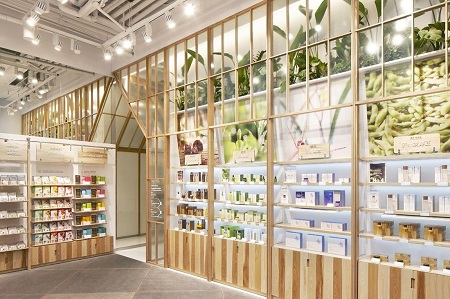
4. Generation Z
Generation Z, also known as iGeneration, is the generation who were born after 1996. Chinese Gen Z spend more money compared to their global peers. Only 75% of them are saving money compared to 85% of Gen-Zs globally. They have a spend more, worry less attitude and they value experience over products.
Even though this generation is digital native and much of their research is digital, Generation Z prefer to structure their shopping as a social activity with their friends. They still rely on their parents as financial safety nets, so they tend to spend money in a more careless way on luxury goods. Chinese Gen Z shoppers are impulse buyers. They more likely will go into any stores that look attractive to them. These attractive elements can be a great store window display, eye-catching sales sign, and interior design with a special lighting or theme.
In order to attract them the store has to keep up with their technological needs. Beside a strong social media presence, stores should provide a technology driven shopping experience including touchscreens and VR.
Regarding store identity design, Generation Z in China orient by contrast and color before exploring product features. They don’t look up when shopping and all signage is invisible for them. Music signifies that the business is open meanwhile silence suggests closing time.
Let’s see the differences in the influencer marketing between the two younger generation. Top-tier influencers and KOLs with a large number of followers don’t have a strong influence on Gen Z. However their parents who are mostly Millennials do trust in their opinion and see these people as trusted authority. Chinese Gen Zers are more likely to connect with people like their peers whom they can relate to. They are less interested in following mass trends.
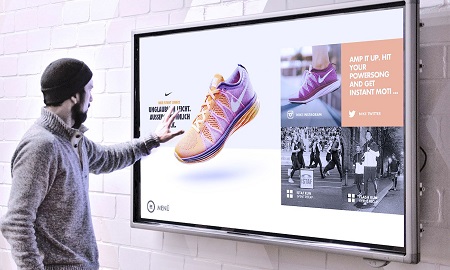
Conclusion
Customizing your store design for certain Chinese demographics can really help to communicate clearly the value you are offering to your target. For that you have to figure out what who your audience is. How old are they? What kind of things do they do? What music do they listen to? What products do they use? What do they feel and even more importantly what would they like to feel when they step into your store?
> back to top of page

Exhibition Stand Buildup for tectos at the Automotive Testing Expo China 2019
October 21, 2019
At this year’s Automotive Testing Expo China 2019 in Shanghai, tectos hosted a 42 sqm exhibition stand design build up executed by 5 Star Plus Retail Design. This was the first time for tectos to participate in an exhibition in China. The Automotive Testing Expo took place September 24 – 26 and featured over 300 exhibitors that welcomed thousands of visitors each day. This exhibition is the largest for vehicle component testing and validation technology and related services in China.
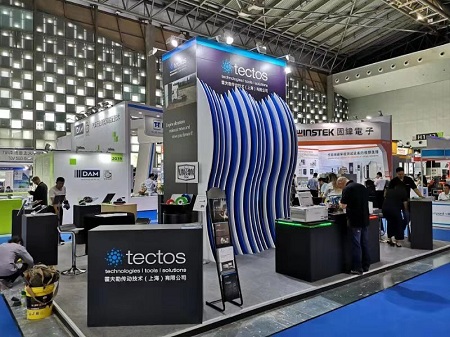
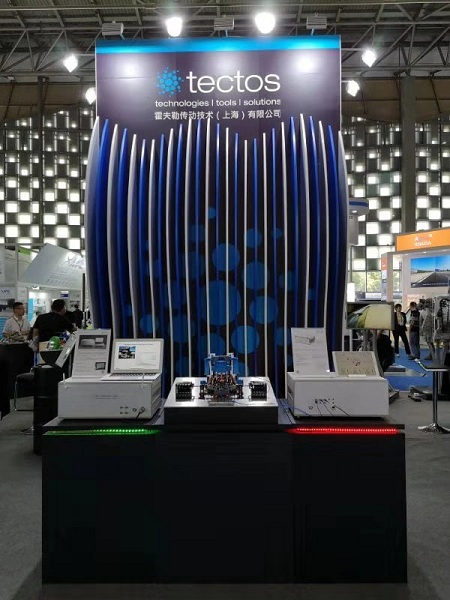
The Austrian company brand name tectos actually stands for three parts that make up their core business. “tec” refers to technology, “to” refers to tools, and “s” refers to the solutions they find for customers. These three parts combined allow tectos to explore and implement high quality technology and tools to provide advanced safety and testing of engines and other automotive components.
To showcase their brand in China, tectos needed a stand that allowed guests to see the high-quality craftsmanship of their products and engineering services. 5 Star Plus Retail Design was responsible for the execution and support of the stand design provided by tectos. An eye-catching wave-wall in the brand colors of blue and white immediately drew guests to the stand to explore and learn more about tectos solutions. The open concept allowed for products to be displayed around the edges of the stand enabling guests to interact with the stand no matter what direction they were coming from. Putting a strong focus on the services provided by tectos created a buzz and brought many visitors to the stand throughout the exhibition. 5 Star Plus Retail Design also was responsible for the implementation of the technical exhibition stand design as well as the production and build the stand.
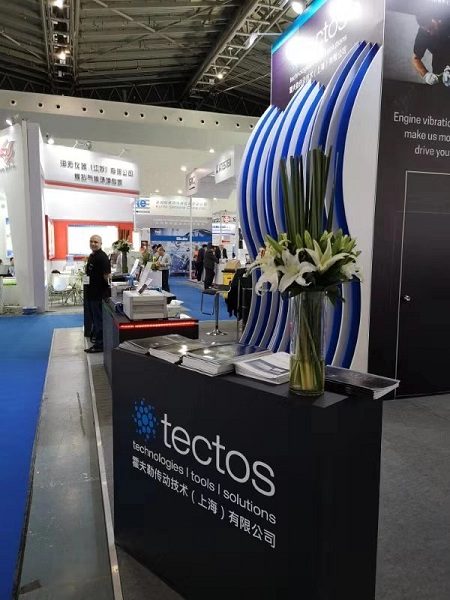
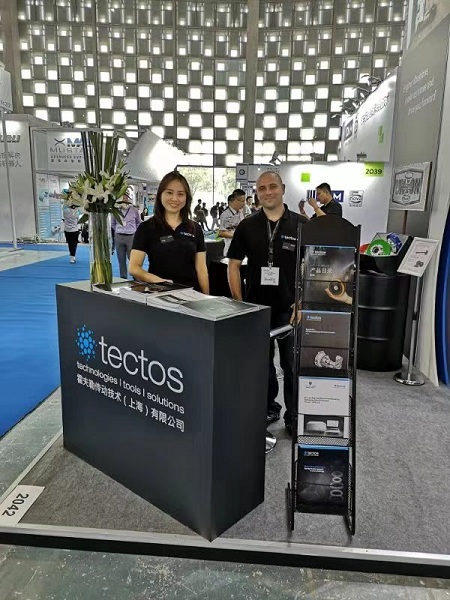
The tectos stand at the Shanghai Automotive Testing Exhibition generated a lot of excitement for their brand in the Chinese market. The exhibition served as a great chance for international brands to come together to reinforce their presence in China’s automotive industry. It was a pleasure for our 5 Star Plus Retail Design team to work with a dynamic brand creating impact through their technology in the automotive industry and we look forward to the future success of tectos in China’s market.
> back to top of page

KJUS Flagship Store: Opening Soon
October 8, 2019
About the Brand
KJUS is a Swiss-based, internationally operating brand, targeting 35 to 50 year olds who pursue high quality sportswear. The brand is named after the co-founder and Norwegian ski champion Lasse Kjus. KJUS has stores in 33 countries and now wishes to enter the Chinese market. 5 Star Plus Retail Design has been assigned to create a store identity design concept for the whole of China, one that fits the future-oriented vision of the brand and the high-tech clothing. 5 Star Plus Retail Design is currently working on a KJUS flagship store design in Beijing, which will open in December 2019.

Image Source: KJUS
Enhancing Customer Experience
The purpose of the flagship store in Beijing is to create a memorable customer experience, where consumers can try on and test KJUS sportswear, and ultimately develop a deeper connection with the brand.
The entrance of the store was equipped with an iconic KJUS product display which explains the core value and technological aspect of the product to customers. The central part of the product display combined LED touch screen and backplane elements to introduce the brand’s product story. There is also a comfortable VIP lounge and fitting room serving high-quality coffee where customers can try on KJUS sportswear, thus emphasizing the high-end positioning of the brand.
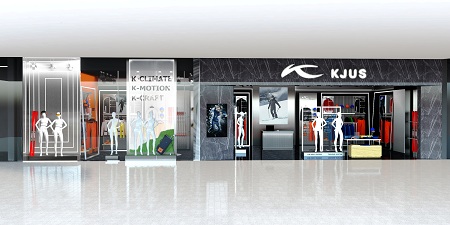
The Design Concept
For the design concept, we wanted to create a futuristic, high-tech and luxury feel. In order to achieve this, we used cool, modern, and high-end materials such as metal and stone; since using stone elements in retail fixture and stone-look flooring creates a more luxury feel to the store. Another important element which communicated luxury was to ensure there was enough empty space in the store, without displaying too many SKUs.
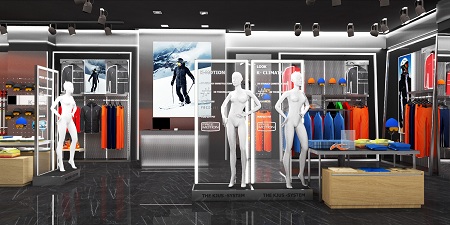
In order to establish KJUS as a state of the art sportive luxury brand, we used special lighting effects and technological advancements to explain product features, key products and collections. As seen in the rendering above, we used a self-illuminated frame structure with a light transmissive acrylic sheet inside. This special lighting effect emphasizes the cutting-edge technology of the product.
The LED large screen and futuristic cash register were installed at the focal point of the store entrance with a metal background wall and ceiling lighting. The dynamic LED screen attracts customers into the store, while the combination of light and material highlights the brand technology.
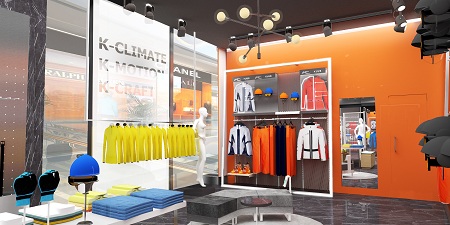
Since the store is located inside a shopping mall, it has to be eye catching and have a strong visual impact. Metal was used to emphasize the brand positioning of the KJUS store as a technological brand and to help the brand stand out from its competitors. Although other KJUS stores typically use wood, in this scenario wood does not achieve a futuristic feeling as it is considered a classic material. However, using wood on a smaller-scale helped to draw a connection to the Switzerland-born brand. As shown in the rendering above, a wooden background was used for some of the high-rack equipment, as well as wooden tables, which helped to create some warmth in an otherwise cool space.
In terms of accent colors, there are two dominating colors that separate the store into two main functional zones. The main sales zone has more grey colors, creating a background for colorful clout whilst generating a luxury feel and futuristic appeal. Since most of the traffic is concentrated on the right side of the store, a brand-colored “KJUS” orange wall was set up on the left side as a secondary visual attraction. This contrasts with the coolness of the stone and metal in the store, increasing visual impact and guiding people further into the store.
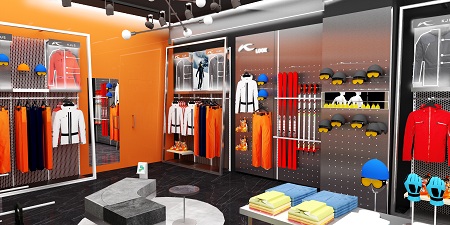
Overall, the design concept for the KJUS flagship store wholly emphasizes the high quality and price of the product so that consumers are aware it is a luxury brand. Once completed, the success of this design concept could lead to its implementation in other countries in the near future.
> back to top of page

Exhibition Stand Design for Silhouette at CIOF 2019
September 30, 2019
At this year’s China International Optics Fair 2019, Silhouette hosted a 140 sqm exhibition stand design build up executed by 5 Star Plus Retail Design. This was the second time for Silhouette to participate in an exhibition in China this year. The Optics Fair took place earlier this month on September 9 – 11 and featured over 700 exhibitors that welcomed thousands of visitors each day. This was the 32nd International Optics Fair in Beijing.
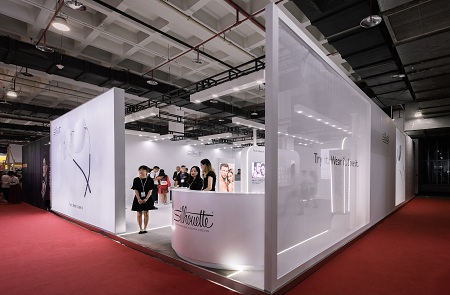
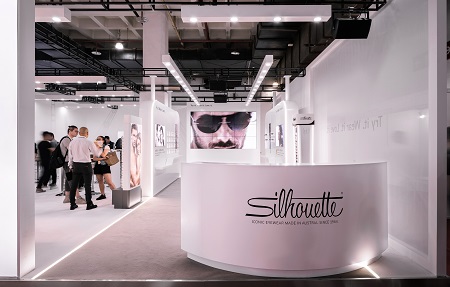
The prestigious eyewear brand from Austria hosted an elegant and modern exhibition space using a white color scheme with accents of bright colors. The exhibition stand design was created with clean cut lines and minimal displays to showcase Silhouette’s unique and elegant products. The central element of the concept was an attention-grabbing feature wall with a 3-meter-wide video screen and a sloping panel design framed by two LED strips that connected this area with the entrance of the stand. The exterior of the stand had transparent screens to create an exclusive sense of privacy for guests inside while also allowing others to walk by and see Silhouette’s exclusive brand designs. 5 Star Plus Retail Design was responsible for the execution of the stand including support with the design development. 5 Star Plus Retail Design also was responsible in the implementation of the technical exhibition stand design as well as the production and build the stand.
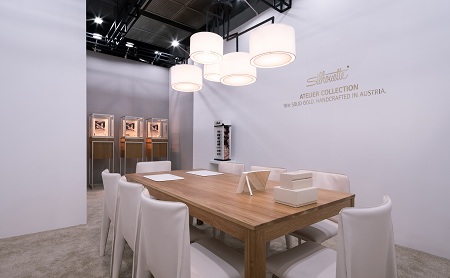
The Silhouette stand at CIOF generated a lot of excitement for their brand in the Chinese market. CIOF served as a great chance for international brands to come together to reinforce their presence in China’s Optic industry. At 5 Star Plus Retail Design, we have thoroughly enjoyed working with Silhouette to provide to them a stand that feels as luxurious as their products and hope to achieve continued success in our future design projects.
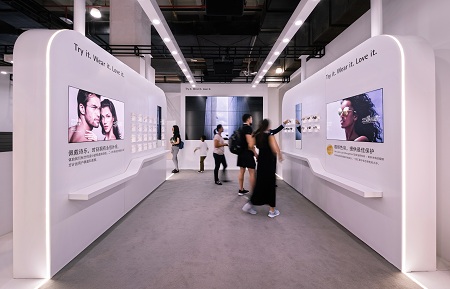
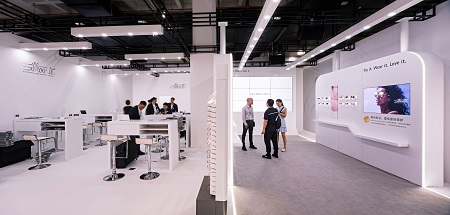
Readers can view and learn about other projects 5 Star Plus Retail Design implemented on the website below or by searching 5 Star Plus Retail Design on Facebook, Pinterest and LinkedIn.
> back to top of page

Chinese Festivals and Consumer Spending Trends
September 16, 2019
Chinese festivals have long been a central component of Chinese culture, but in recent years the country’s flourishing economy and rising affluence has led to increased spending over festival periods. Opportunities arise from these festivals for marketers to raise enthusiasm for shopping among Chinese consumers. There is an element of change in the air as consumers are on the hunt for something new and exciting, thus creating the perfect opportunity for new brands entering the Chinese market to become recognised. This article will examine consumer spending trends over five key Chinese festival periods which foreign businesses entering the Chinese market are sure to benefit from.
Chinese New Year
Chinese New Year, also known as Spring Festival or Lunar New Year, is undoubtedly the most important festival in China. According to data collected by ‘EDITED’, sales for this year’s week-long festival reached a record height of 1.01 trillion yuan ($149 billion), equaling 8.5% growth on last year. During this festival, Chinese consumers mostly spend their money on food and gifts for their family.
In a graph showing China’s monthly retail sales between 2018 and 2019 (Trading Economics), there is a significant spike in retail sales before and after the Chinese New Year celebration in 2019. Retail sales in China increased by 0.83% in January and by 0.92% in March. However, in February sales dropped drastically to 0.38%, proving that the Chinese don’t shop much over the duration of the festival. Marketers should consider starting their promotional campaigns three to four weeks prior to the festival, since Chinese New Year shopping sprees are now beginning two to three weeks before the actual festival. Post-Chinese New Year spending is equally increasing, as consumers are keen to splurge their hongbao (red packet) money, which gives retailers the opportunity to further optimise sales for an extra three to four weeks after Chinese New Year.
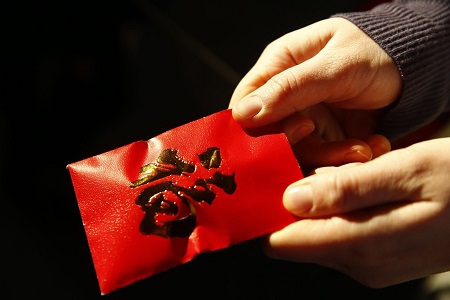
"What’s the significance of Lunar New Year red envelopes?"
Qixi Festival
The Qixi Festival is the Chinese version of Valentine’s Day. Although the Chinese also celebrate Western Valentine’s Day, a report jointly released by Ctrip and Suning confirmed that this year flower bookings over the Qixi Festival period surpassed those on Western Valentine’s Day. The Qixi Festival is a celebration for couples, benefiting mostly the hospitality and tourism sector in China.
Many businesses utilize this festival period to maximize sales through promotional campaigns, discounts and gift packages. During the Qixi Festival this year, many luxury brands released limited edition collections, such as Gucci’s limited Slyvie mini-bag, Michael Kors’s graffiti collection and YSL’s limited Qixi gift set. Valentino was head and shoulders above other luxury brands striving to stand out, thanks to its innovative marketing strategy that created an element of mystery and desire. Valentino’s limited edition LOVE collection was introduced to audiences through a video on WeChat, featuring the brand’s ambassadors dressed in items from the collection and holding a mysterious gift box for Qixi. The contents of the box remained a secret, which generated curiosity among consumers and prompted purchases of this desirable, limited-quantity gift. The first batch of boxes sold out within 20 minutes of release, leading the brand to release a second set of boxes which quickly sold out as well.
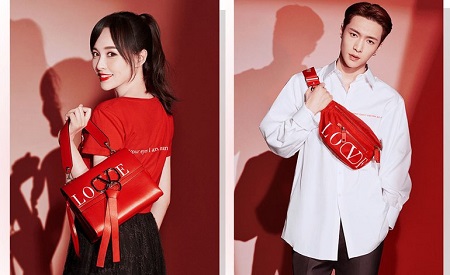
"Why Valentino Wins the Chinese Valentine’s Day Game"
Mid-Autumn Festival
The Mid-Autumn Festival is held on the fifteenth day of the eighth lunar month, and falls this year on 13th September. Families and friends typically get together to have dinner and to do activities such as moon gazing, eating moon cakes and guessing riddles. The celebratory mooncake treat is now being used by luxury brands to lure in Chinese millennials. For example, local designers in China are using mooncake boxes as incentives for VIP customers. The Mid-Autumn Festival is the best time for marketers to focus on branding as September is a major month for new collections. Whilst mooncakes still remain the traditional and most-bought gift, Chinese consumers are also actively looking for more creative presents to give to their relatives and friends. Therefore, marketers should take advantage of the Mid-Autumn Festival period to produce innovative ideas for marketing their gifts.

"Mooncakes and More! Celebrate the Mid-Autumn Festival!"
Golden Week
Golden Week is a seven-day holiday from 1st to 7th October. It is a major travel period and generates a huge number of migrations. In the graph showing China’s monthly retail sales between 2018 and 2019 (Trading Economics), sales in October 2018 surged to 0.74%. This notable increase is likely to have been driven by the Golden Week festivities. During last year’s Golden Week, the number of Chinese tourists travelling overseas grew more than 8% from the previous year to reach nearly 7 million consumers. According to data released by Alipay, there were 2.2 times as many overseas in-store transactions during Golden Week 2018 compared to 2017, while the average total spend per user also increased by 30% to RMB 1,979 ($288) from the previous year’s RMB 1,534 ($223). This data reflects an annual increase in the number of tourists and total spending, highlighting a growing desire for foreign goods in China. With the large migration numbers that occur, Golden Week opens up opportunities for foreign businesses to increase brand awareness and sales.
Single’s Day Festival
The Single’s Day festival, also known as Double Eleven, is held on November 11th in China. Previously, this festival didn’t generate a large amount of spending, but since Taobao launched a 24-hour super discount during the festival period, Single’s Day now drives huge sales. According to data released by Chinese e-commerce giant Alibaba, a record of RMB 213.5 billion ($30.8 billion) worth of products were sold over Single’s Day in 2018. As reported by Alibaba, over 40% of Single’s Day consumers purchased international brands, including Apple, Dyson, Kindle, Nike and Adidas. Popular sales items included health supplements, apparel, cosmetics and beauty products, mobile accessories, and everyday consumer goods. Shanghai shoppers spent the most among Chinese regions, followed by Beijing, Hangzhou, and Guangzhou. Evidently, international products are in high demand during this festival period, rendering it the perfect opportunity for foreign brands to push promotional campaigns. For Single’s Day 2018, Farfetch created a mobile game on WeChat to test fans’ knowledge of the luxury brand. The winners got a chance to win a special Single’s Day gift package. This was an ingenious marketing campaign, as the interactive game not only captivated the audience’s attention but also educated them about the brand.
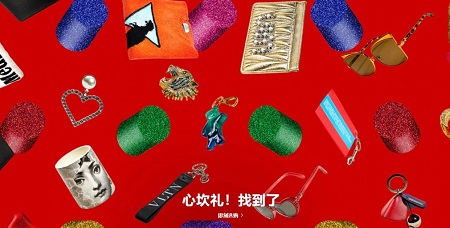
"Jing Daily’s Picks for the Top WeChat Luxury Campaigns of 2018"
Overall, these annual festivals play a significant role in Chinese society and therefore greatly influence Chinese consumer trends. It is highly beneficial for foreign brands to understand the importance of Chinese festivals and how they impact the Chinese consumer market because it gives an indication of when the most suitable periods for promotional discounts and branding are.
> back to top of page

Translating Your Offline Experience to Grow Online
September 27, 2019
In China, the younger demographics are driving the growth of retail e-commerce sales, which leaves brick-and-mortar stores with the challenge of devising a new retail strategy. Brick-and-mortar stores have therefore transitioned from general retail stores into flagship stores showcasing the brand and giving customers a real-life experience, which is something online retail platforms cannot compete with. Through the seamless integration of omnichannel retailing, these offline experiences contribute to the growth of online presence and drive sales.
Omnichannel Retailing in China
The China market has emerged as the world’s omnichannel capital. As 82% of Chinese luxury consumers use a combination of online and offline channels to make purchases, brands are merging the online omnichannel and physical offline retail models to create flexible and gratifying experiences. One of the first steps in the omnichannel process is seamless channel integration. This ensures consistency across the retailer’s physical and digital channels, such as uniform pricing and assortment across all channels.
Retailers wishing to succeed in the Chinese market must enable consistent customer experience across various channels, as this enhances customer engagement. They must develop an omnichannel strategy with high interconnectivity across channels. For example, many companies in China now provide retail store pickup for online purchases. This service requires the online sales function to maintain close communication with retail stores, so that when the customer visits a specific store, their orders and products are available for pick up.
In order to enhance customer experience, giving the customer a voice is also essential. Leading companies should create platforms such as discussion forums to allow customers to share their opinions with fellow customers. This provides non-biased reviews from previous customers, thus developing trust in the product.
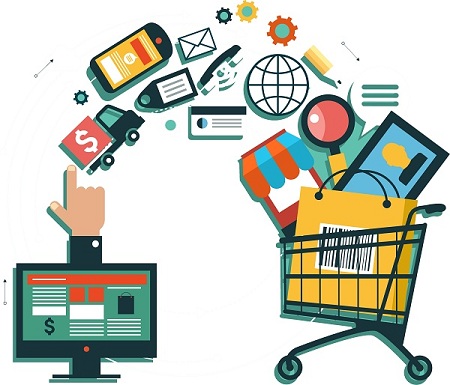
"How Omnichannel Retail Marketing Drives Sales?"
The Role of Flagship Stores in Retail Strategy
Flagship stores are an effective countering strategy in sectors where there is an increasing trend towards online channels. The DJI Shanghai Flagship Store consists of 2 stories and is built with European-style columns and glass windows, creating a fusion of art and technology. The ‘Flight Area’ gives customers the opportunity to experiment with cutting-edge technologies and to enjoy flight demonstrations of the DJI drones. In the ‘DJI Story Corner’ room, the DJI’s development history is projected on a curved screen. Lastly, the ‘Product Gallery’ room displays all DJI products with touchscreens readily available for customers to learn more about specific products. This flagship store provides a unique and memorable customer experience and displays the brand’s history, all of which contributes to further promotion of the brand.
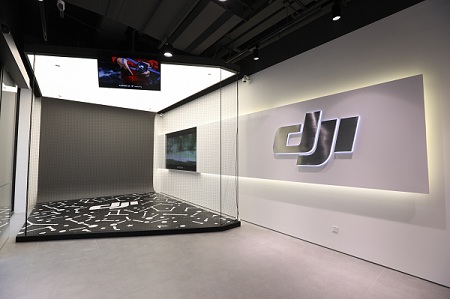
"DJI Opens Its Second China Flagship Store in Shanghai"
Image Source: DJI
Brick-and-mortar Design Elements That Tie to Online Platforms
According to data from ‘QuestMobile’, the number of monthly active users on mobile shopping in China reached 997 million in June 2019, an increase of 15.9% YoY. Since Chinese consumers are becoming increasingly savvy and demand transparency, physical retail stores need to incorporate the latest technology into their retail design. For example, the Yves Saint Laurent store in Shanghai has added augmented reality screens that use facial recognition to enable customers to virtually try on different makeup looks.
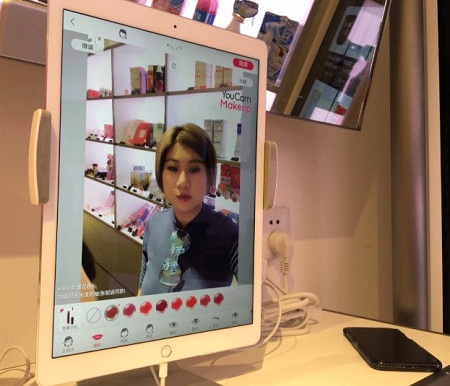
"The Future of Luxury: First Comes the App, Then Comes the Store"
E-commerce platforms have realised that having an online presence is no longer enough. Xiaohongshu (RED), China’s popular social e-commerce platform attests to this phenomenon. On 16th June 2018, Xiaohongshu launched its first offline store RED Home in Shanghai. Interestingly, the staff who designed the store had no previous offline retail experience. It was rather their years in online retail that led them to think outside the box when it came to the store’s layout, décor and technological integration.
RED Home has screens located throughout the store, designated for product reviews. Customers can bring a store item over to the screen, which will show review posts about that particular product on the Xiaohongshu app. The Xiaohongshu platform centers around a community who love to snap and upload photos of their lives online. With this in mind, the store aims to be a selfie-lovers paradise, having clearly been designed to give its customers the ultimate shopping experience.
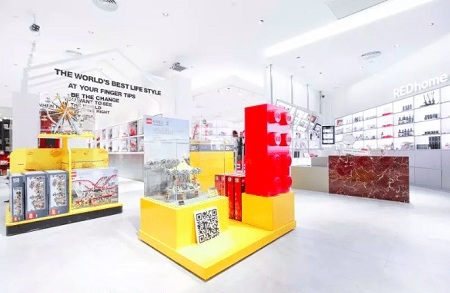
"The Future of Luxury: First Comes the App, Then Comes the Store"
Aside from Xiaohongshu, there are many other online retailers who have expanded their offline footprint in order to improve brand penetration and further develop their brand. For example, Chinese smartphone brand Xiaomi now has 2,000 exclusive Mi Stores across India in aim to increase its presence in small towns and rural areas. According to Xiaomi India’s managing director, these stores will help the company to reach its target of driving 50% of sales through the offline channel by year-end. Xiaomi expanded into offline retail in India in 2017, and experts say it was this push that enabled the company to surpass South Korea’s Samsung as the top handset manufacturer in the country.
Overall, it is clear that in order to succeed in the Chinese market, retailers must seamlessly connect their online and offline stores, ensuring consistency along all channels and giving customers a completely unified shopping experience. By incorporating an omnichannel retail strategy into their design concept, brick-and-mortar stores can provide the ultimate customer experience and significantly increase their retail sales.
> back to top of page

Adapting Visual Identity and Store Design for Chinese Consumers
August 29, 2019
Having a visual identity that appeals to locals is not only essential but imperative in any market. In an age where pictures are constantly being posted on social media your store design is a key part of your visual identity. An easily identifiable design that leaves a long lasting and favorable impression can go a long way in establishing yourself in the Chinese Market. Often brands fail to understand Chinese aesthetic tastes and local mind-sets. Understanding the needs of Chinese consumers allows brands to form a strong visual identity that consumers to build stronger connections to the brand.
Chinese Consumers
Trend reports show that Chinese consumers purchase goods based on value. The value of a good is not related to the value of price but rather, the value it brings to their lifestyle and the quality of the good itself. Chinese consumers prioritize product availability and technological integration over the price of the good. To attract these consumers, a brand’s visual identity needs to showcase the quality of their goods while also relating to the lifestyle of their consumers.
Common lifestyle trends for Chinese consumers include, pop-culture, fitness and health, and technology. Consumers desire to live life styles that are as luxurious as their favorite KOLs, healthy, and connected to modern technology. Chinese consumers are more willing to purchase goods that most directly relate to them and boost their social and self-esteem needs. Apart from online streams used to connect with consumers, retailers are able to also reach them through affective retail design and strong visual identities.
3 Keys Creating a Strong Visual Identity
1. Brand Story
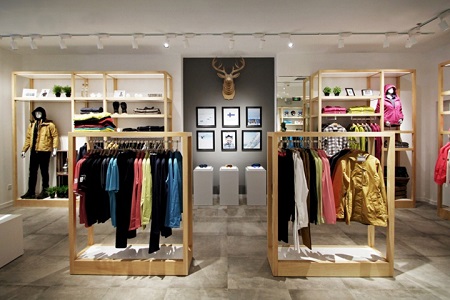
In recent years annual spending of leisure travel abroad has increased by 1326% since 2001 for Chinese tourists (Telegraph). Chinese consumers value the opportunity to explore the world around them and through this build stronger connections to foreign brands. Therefore, for international brands it is important to keep this a strong part of their brand identity.
Building connections to the brand story through visual identity design helps to accomplish just this. Halti, a Finnish ski wear brand, adapted their visual identity with cool colors, clean lines, and dynamic lighting creating a clean and modern brand image. Design elements including curvatures in the ceilings and walls and a wooden cutout of a woodland animal connect to the brand’s identity and Finnish culture. To further connect to the brand’s story, a photo wall features pictures of the Finnish flag and famous ski professionals.
The window display also helps to set the tone of the brand through the visual identity design. An LED screen plays videos of skiers wearing Halti products whilst skiing. Videos from the Winter Olympics help the Chinese consumers to relate Halti’s products to sporting events that China takes pride in competing.
2. Color Palette
Color helps to create brand recognition and visual interest. Research suggests it can affect everything from brand perception to purchasing intent; more recent research goes even further stating that 62-90% of consumer decisions are based on color. Red, yellow and gold are strong colors used in Chinese retail that connect with Chinese tradition but do not necessarily have the greatest impact on the visual identity of a brand. The choice of color palette in retail design should be bold enough to create attention, while also connecting to modern motifs. The use of these colors should tie to the overall brand identity design or new products released as part of a collection.
This By Jove flower shop in Hangzhou creates a clean and modern feel by using only white. The white helps to highlight the clean lines of the architecture and the added use of mirrors creates a modern yet reflective feel. The white serves as a symbolism to the brand’s identity that allows customers to come in and create their own unique bouquets in an inviting space.
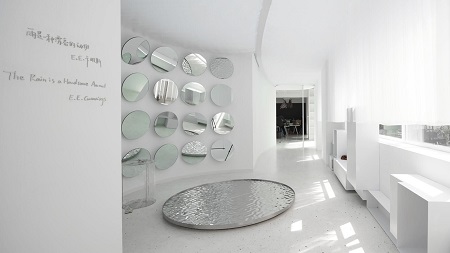
Image Source: FRAME
Color can also be used in the visual identity design of a store to highlight new product launches. A growing trend in retail is to temporarly change the fa?ade of the retail store through colorful and artistic stickers that tie to the new products. These two luxury retailers utilized this idea in Shanghai. Burberry recently launched a new print for their products. To make a statement and create excitement for the new product, they covered the outside of their store in a sticker print of the product itself.
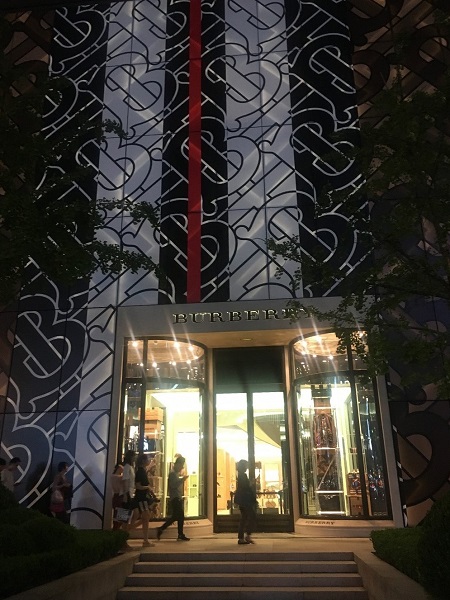
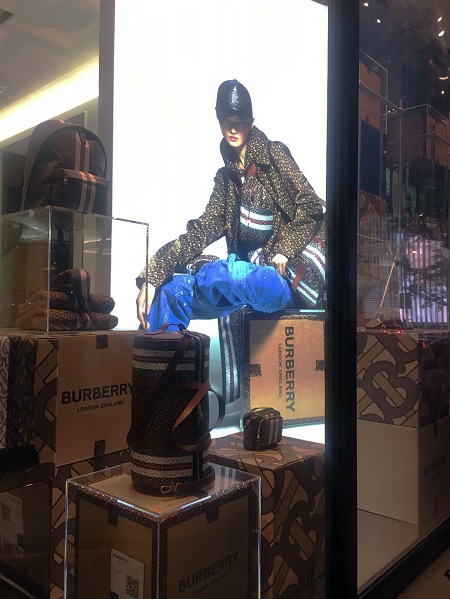
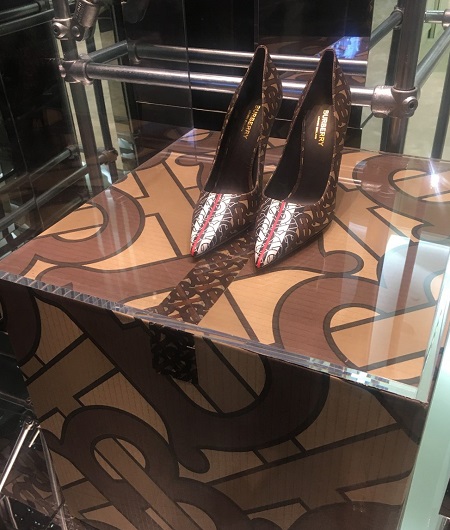
Louis Voution did something similar with a sticker that changed their logoed fa?ade red, featuring the mysterious ‘Red Man.’ The goal of this was to draw consumers to the store by making them notice the building in a new way. It also highlighted some of their new products in the vibrant red color.
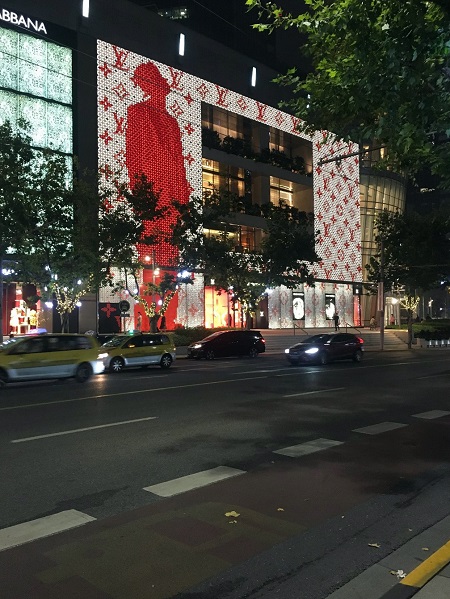
China is a modern country and so is the color palette. It is important to be innovative with colors so that they are not only modern and connect with the average Chinese consumer but are also an extended part of the story of your brand and products.
3. Technology
The latest trend in China for store design is a clean, modern and premium look. Interiors are a new playground for aesthetic expression in China, especially so on the inside of stores.
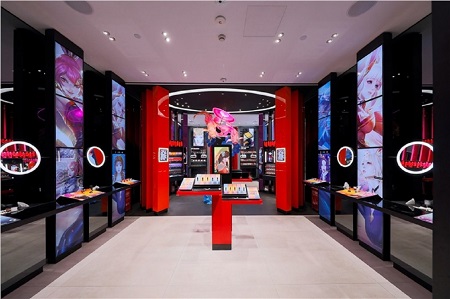
Consumers want to be connected to brands both online and offline. Finding the balance between the two can be challenging. In the new age modern world, Chinese consumers demand convenience, unique experiences and want brands that connect with their lifestyle. Chinese motifs such as simple lanterns, dragons and the great wall in the background are overdone and do not connect to the modern Chinese lifestyle. Chinese consumers are focusing the present and towards the future rather than back on the past.
Mac connected to Chinese customers with their rebranded visual identity design in their Shanghai store incorporating popular video game characters into the overall store design. The use of VR mirrors to test products and learn more product information enables the customers to interact with the product more. Direct partnerships with a popular game “Glory to the King” have allowed them to adapt their visual identity and build stronger connections to female gamers, and cosplay fans. Other instore features focused on customizable lipsticks and connected WeChat campaigns brings consumers connectivity offline and online in a seamless way.
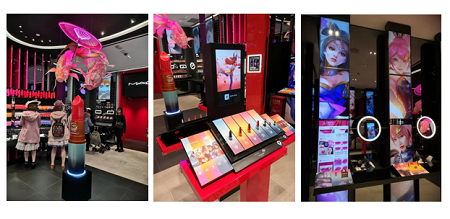
Xtep in Changsha also managed to do this well as they incorporated the ability to experience wearing their shoes in their sport of choice into the store design by setting up AR and VR on screens inside the store.
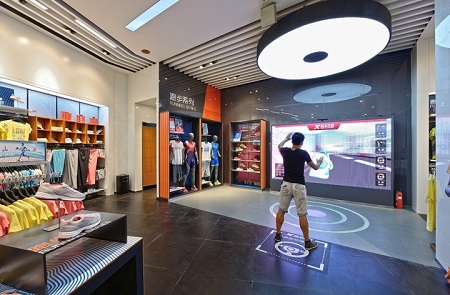
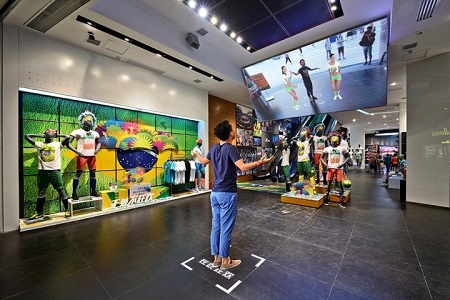
Creating Impact
Different markets have different buying and eating habits, it thus makes sense that when targeting a new market, you have a new strategy. Utilizing thoughtful color palettes, technology, and telling your brand story in a meaningful way creates a strong visual identity that connects to Chinese consumers. In an increasingly globalized world modernity is progressively a shared aesthetic. Modernity with a Chinese twist is the best way to approach the Chinese Market.
A good visual identity and store design is not only strong enough to grow with you but is also one you can build upon as you expand. Connecting with Chinese consumers through their lifestyle, technology, and favorite influencers is an effective way to create impact through visual identity design.
> back to top of page

Designing with a Purpose
August 26, 2019
What makes us unique?
At 5 Star Plus Retail Design our main focus is brand identity. This makes us competent when it comes to luxury design and branded design in China. We start every project with a thorough research about the brand, its competitors, target market, local regulations, and its surrounding environment. Once we have gathered all the necessary information we can provide unparalleled designs, retail consulting and project management services to international luxury and design brands. Our multinational team is a mix of international and local designers, consultants and project managers. Their designs are based on international standards while taking the local market and its requirements into consideration.
Retail design is without a doubt our passion. We do not only understand retail operations in China but we’re also able to create a design in a most effective way to maximize sales. Our extensive background in Chinese retail operation makes our team experienced in both the in-store operation and the local regulations. 5 Star Plus creates designs that can fulfill marketing targets like visibility, brand exposure, marketing leverage and visitor experience.
What makes our design process unique?
During our design process we always keep in mind what the client would like to express, how the brand is positioned and what the brand message is. Thanks to this we are able to achieve increased brand awareness and brand loyalty which, ultimately, is expected to translate into a higher sales turnover. Here are a few examples from our portfolio to show how it works in real life.
When creating two restaurant designs for THE MISSION at two different locations in Beijing, one key strategy that we utilized was to design every restaurant with a slightly different approach, in order to create novelty and adapt to the local environment. For the first location in China World Mall, 5 Star Plus created a modern flagship store design. We wanted to express their healthy, fresh cuisine through the design so it inspired both the color set and the materials that were chosen for the projects. The flagship store at China World Mall resulted in an artistic restaurant design that conveys a cool vibe that can attract the younger generation. We achieved this effect with an open stainless steel kitchen that promotes cleanliness by allowing customers to view the preparation process. We integrated custom-designed metal elements, a wall sculpture and intelligent lighting.


THE MISSION Flagship Store Design, Beijing
In comparison, the second location at Central Park Plaza puts more emphasis on feeling good and being healthy. Located beside Chaoyang Park in a residential area, families are the most important target customers in the area, so the design needed to be inviting for them. It had to reflect the wholesome, nutritional value of the food so we have created a fresh and bright restaurant emitting a healthy feel. With an open kitchen taking center-stage as the key feature, the important design elements that support it are the use of bright woods for the walls, polished concrete, natural foliage, and seating designed for different numbers of people.

MISSION store identity design, Beijing
ORA Creation is chain of multi-brand stores selling different European designer fashion and accessory brands. The store in Solana Mall in Beijing had to be designed to use a reduced budget for maximal impact in order to increase sales. The ultimate goal was to attract passersby and entice them into the store. With this in mind, the 5 Star Plus Retail Design team created a light, conceptual store design that is easily transformable with seasonable changes and other requirements of the brand.


ORA Store Window Display, Beijing
For our client, Ti-Capital (Taixin), a Chinese private bank, the team developed a visual design identity concept. The company's name consists of the Chinese characters "Titanium" and "Trust". This meant the visual design identity had to represent the organization as high-end, stable, trustworthy, safe, and secure. The logo had to be suited to the Chinese market, appear masculine and strong, and communicate power and heritage. How did all these elements appear in the design? How did we reach brand awareness? The designers used light grey, dark red and white colors with a lion as the logo's key element to express trust, authenticity, and a certain formality.

TI-Capital Visual Identity Design
During the World Winter Sport Expo in 2018, the International Biathlon Union covered 108sqm of exhibition space with 7 exhibitors. They were promoting the sport as a whole to China, providing knowledge to those unfamiliar with the sport. Our design concept received "Excellent Design Awards" during the expo. 5 Star Plus Design utilized energy green and ice blue as the main color scheme. With this color combination and structural design we were able to attract maximum attention to the stand and bring out the space.


International Biathlon Union Exhibition
Our Future
Based on the examples mentioned above, it is clear that 5 Star Plus Retail Design understands what it means to build up a brand identity and strategically use our services to create a maximum benefit for our customers through creating emotional connections between the customers and the brand.
As for the future, our goal is to maintain an up to date knowledge of the Chinese retail market, regulations and the relevant design trends that help us understand the market development.
> back to top of page

3 Major Things Big Data Can Give Retailers
August 21, 2019
As brands continue to attempt to find ways to increase their sales within stores, big data is a primary contributor to brands learning more about people and personalizing their shopping experience. Big data is datasets that are much larger than traditional databases and can process data quickly to provide reliable and specific information. As the use of big data continues to increase, retailers are using this data to gain knowledge in a variety of ways. Retailers who use big data to its full potential “could increase its operating margin by more than 60 percent” (McKinsey). Customer segmentation, personalizing the experience, and price optimization are three things big data can provide retailers and they all should be utilized by brands. Unlike traditional market research, big data allows more specific information to be collected while also utilizing technology to be able to collect this information.
1. Customer Segmentation
Big data allows retailers to identify the specific customers that will make them the most profitable and can target them with products they will buy based on their past behavior. Gathering people’s individual trends from social media, e-commerce, and in stores, companies can combine all this data before analyzing it and placing people into customer segmentations. When people are placed in these segments, stores can then give precise offers to the different segments so more purchases are made. Understanding what these segments prefer can lead to higher conversion rates among consumers because brands now know what each person is consistently purchasing and can target specific segments with promotions they are interested in. Once retailers have consumers in their segments, then they have the ability to personalize the experience.
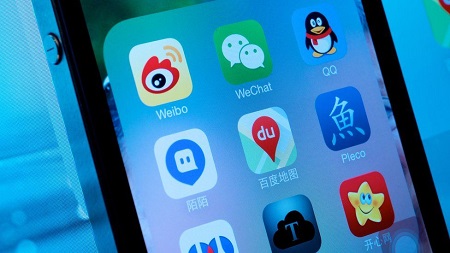
"Will Chinese super apps succeed in the West?"
Official WeChat accounts as well as other Chinese social media allow retailers to gain consumer information, understand shopping habits, and overall interaction with the brand. After more consumer data is obtained, retailers gain a better understanding of which products their target consumers are more likely to purchase thus allowing retailers to optimize their retail inventories.
2. Personalizing the Experience
Big data uses a multitude of factors to help personalize the experience and increase shopper retention rates. The use of websites, cameras, and shopper information allow retailers to analyze the data to provide a better experience. Companies can analyze data on what users are doing on their websites and therefore create unique offers. They can follow what people are searching for or putting in their shopping carts, and use the information to promote related offers to the consumer. Cameras used within retail stores give valuable shopper trends for companies to analyze using big data. Every shopper and their needs are unique, which is why identifying each individual helps retailers understand what they are looking for and give them a personal experience.
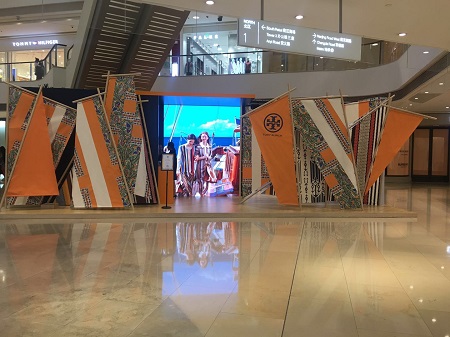
Pop-up stores are taking on a new role in China. Easy implementation allows retailers to create a unique and exciting new experience for consumers while also driving traffic to physical locations and gaining access to their data through interaction. This Tory Burch pop-up store in Shanghai seamlessly integrates new experiences to increase brand awareness for a spring line released earlier this year.
Upon entering, guests can hear the sound of waves and birds over the ocean. They can look through binoculars to see a video of models wearing the new products on a boat.
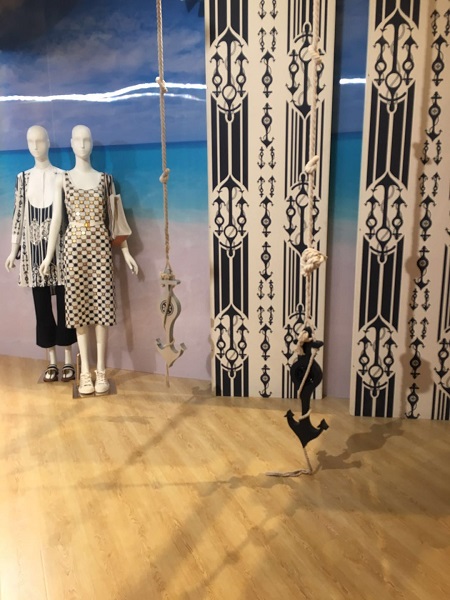
Passing through that room, guests are led through a tropical walkway that leads them to an interactive VR photo booth where a tropical bird flies in and lands on their hand. The photo can be saved through bookmarks on WeChat.
The last interactive element was a matching game where guests could match different material swatches. After each match was made a picture of the product made from the material or a description about the material would appear on the screen. If the game was completed within the time limit, guests could follow their official WeChat account and receive a coupon for a free gift if they went to their official store in the shopping center.
Giving the consumers the opportunity to interact with the new fabric collection and follow their official WeChat account, the retailer can correlate the most popular items purchased from the new collection to the followings from the specific retail location. This correlation will allow the retailer to streamline their inventory in specific retail locations.
3. Price Optimization
Retailers no longer have to guess when the demand for a certain product has decreased or struggle to discover the market price for goods in their stores. Big data allows companies to track each transaction that occurs and use it to predict the demand for the products. This allows them to select a price they know is correct and can be changed at any minute if demand were to change. In addition to this, retailers to optimize their inventory which can lead to big savings. Big data also allows retailers to keep track of competitors and follow their pricing so they can respond accordingly, whether it is lowering or raising the price. Retailers everywhere are optimizing price using big data and it is creating more competitive pricing strategies in the market.
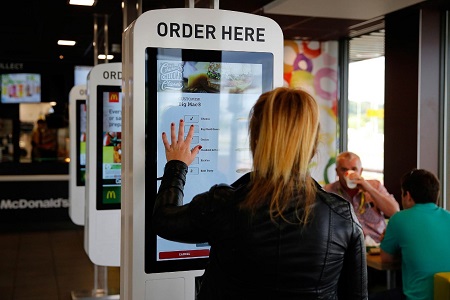
"McDonald’s Bets on Faster Food with Digital Ordering and Table Service"
McDonald’s utilizes price optimization through testing of different markets. The use of instore kiosks, mobile apps, delivery help them to determine the right prices for the right market while also curving consumer habits.
Results
Ultimately big data gives retailers more realistic views of their consumers, target market, and purchasing habits. This data allows retailers to build stronger connections to their consumers to increase sales. Additionally, big data allows retailers to optimize their inventory in each location, allowing them to save millions by only ordering products that their consumers want. Strategic implementation of big data tools through marketing and retail operations can make retailers more successful in China.
> back to top of page

Sinsian Black Jelly: A New Healthy Asian Brand Leveraging China's Fast Developing Dessert Market
July 30, 2019
If you are looking for a refreshing dessert to satisfy your cravings, then look no further than the Sinsian Black Jelly Store! The store is located in the Hello Mart in the Liangmaqiao area across the street from the German school. Sinsian Black Jelly opened in early May in the heart of one of Beijing’s newest supermarket concepts. The focus of this brand is to provide a fresh and healthy dessert, known as grass jelly, to an increasingly health conscious society.

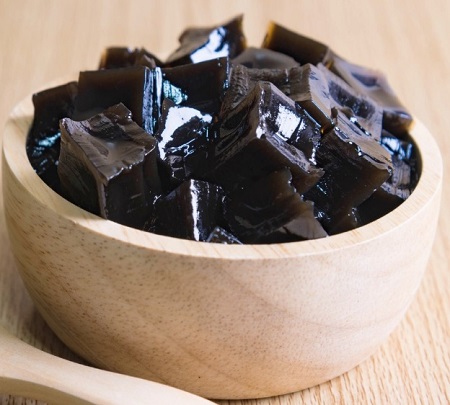
Image Source: Sinsian Black Jelly
What is Grass Jelly?
Grass Jelly, also known as “Divine Grass”, is a refreshing jelly-like dessert that can be eaten with a variety of toppings including diverse water and a multitude of fresh fruits. It is made from a plant known as mesona chinensis, which is grown largely in East Asia. The grass is carefully preserved without adding any pigments or preservatives at any point during the preparation process. The dessert is prepared by allowing the leaves to dry before boiling it and letting it cool to be cut into cubes. Grass jelly provides multiple health benefits including reducing chances of heat stroke, controlling blood pressure, and reducing muscle and joint pain. Combine the nutritional benefits with the freshness, and you have a truly amazing dessert!
What is Sinsian Black Jelly?
Sinsian Black Jelly is an exciting new brand that specializes in the preparation of grass jelly desserts for its customers and aims to provide China with a healthy alternative to other desserts while maintaining the traditional grass jelly preparation process. Sinsian is inspired by the traditional way of preparing the grass jelly by preserving the qualities of the herb so it can be enjoyed in its purest form without any shortcuts or use of canned jelly. The brand serves grass jelly the only way it should be served – with all its natural goodness. The dessert is prepared right in front of customers while allowing them to customize it exactly how they want it. Sinsian Black Jelly sets itself apart by providing a health conscious market with an excellent customer experience and healthy dessert that can be purchased quickly through a three step process and then eaten on the go. The brand has entered a growing industry of healthy food while providing a fresh product to the Chinese market. Sinsian Black Jelly plans to open 10 stores in the coming year so more of China can experience the dessert.
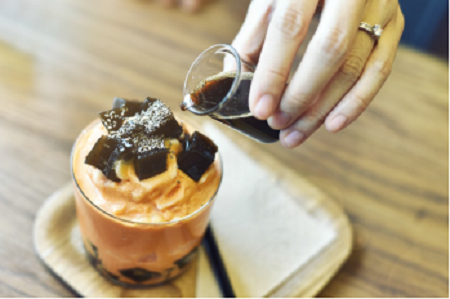
Image Source: Sinsian Black Jelly
The Design Concept
We at 5 Star Plus Retail Design had the privilege of designing the Sinsian Black Jelly Store. The design concept of the store reflects the value of the product by utilizing the themes of product geometry. The tiles are intended to resemble the squares of the jelly after it has been processed and white is meant to symbolize the ingredients. By expressing the product through the minimalistic decoration and style, customers can more easily recall the product. The lighting sources and glass walls create a warm feeling and make the whole environment more coordinated. The transparent design evokes confidence in the product as it places the focus on the grass jelly and allows the customers to see the preparation of the dessert. They can see the fresh ingredients being put into their dessert as they customize their dessert using toppings of their choice.
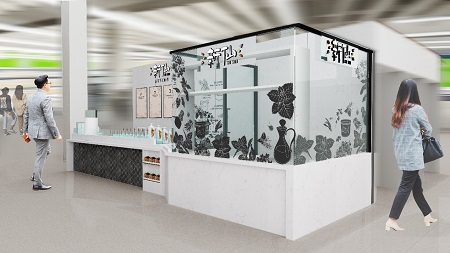
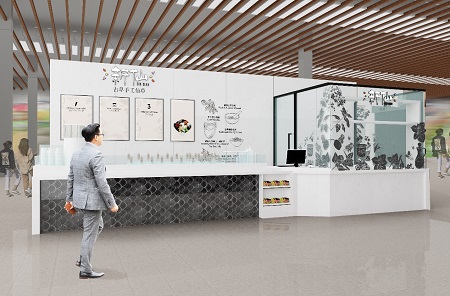

With its unique product and coordinated environment, Sinsian Black Jelly is the perfect place to stop by to grab a quick treat whether you’re heading home from work or just out with some friends.
> back to top of page


5 Star Plus Insights: Design Outlook with CGTN
July 5, 2019
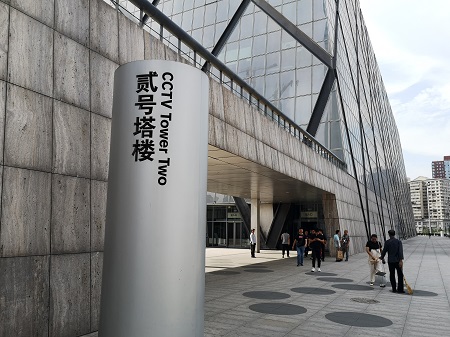
New Money is a business program which highlights the various aspirations of the future generation of Chinese entrepreneurs and airs weekly on China Global Television Network (CGTN). It takes viewers behind the scenes into China’s most cutting edge start-ups and disruptive business strategies. On this week's episode, our Managing Director, Barbara Seidelmann, was interviewed in relation to this week's topic ‘Life Aesthetics’.
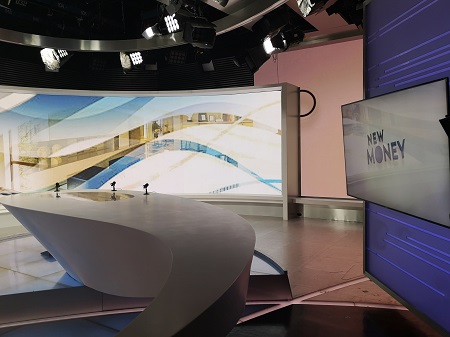
During the interview, Seidelmann discussed a variety of topics with a focus on both home and retail design - distinguishing the difference between the two. One of the key interesting points discussed was that for brands, interior design gives them the ability to utilize their designs to express who they are and attract their target audience. Where there is a change in the market the type of interior design that brands choose will also reflect their expectation of whether they would like customers to stay for longer or shorter periods of time. Seidelmann also pointed out that brands can create trust and loyalty by creating a connection with customers through different brand and product experience areas.
In relation to home design, Seidelmann explained that the primary focus should be based on users identity and give them the ability to express themselves. Seidelmann’s interview also shed light on her thoughts on changes in the design market including different aesthetics that the younger generation has when it comes to home decorations.
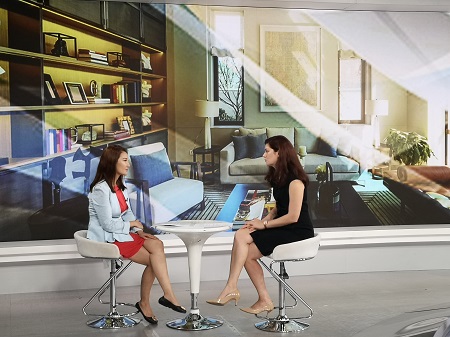
From the interview, Seidelman demonstrated insight into the importance of aesthetics in both home and retail context, whilst also providing and discussing the design market itself.
The episode of New Money featuring the interview will be aired and available for viewing online several times between Saturday 6th July and Wednesday 10th July.
> back to top of page

Graphic Design for BritCham Summer Garden Party 2019
June 25, 2019
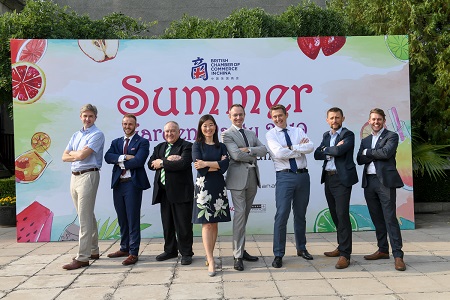
On Thursday, June 13th, 2019 the British Chamber of Commerce hosted their annual Summer Garden party at the British Ambassador’s residence in Beijing. The Summer Garden Party remains one of Beijing’s most exciting social events; 5 Star Plus was proud to continue our long-standing relationship with the British Chamber by creating the graphic designs for the event.
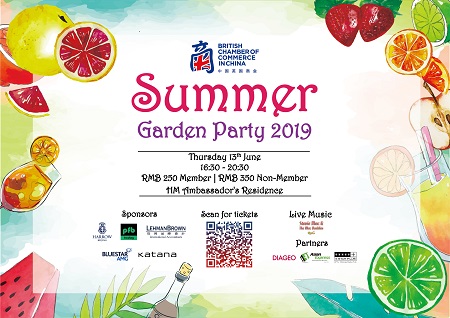
Summer Garden Party Event Flyer
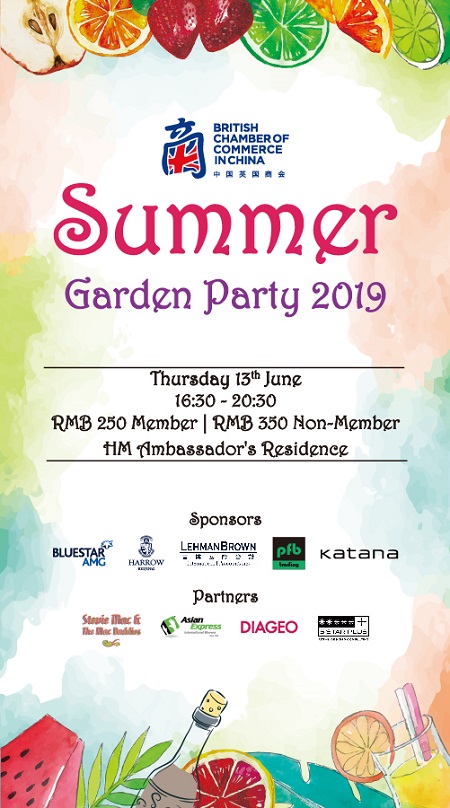
Summer Garden Party WeChat Flyer Design
The bright colors for this design were inspired by the fun and casual mood of an outdoor summer party. Because this graphic design would be used on the flyers, tableside menus, and the backdrop for photo-ops, the British Chamber wanted the design to incorporate wine and fruit as a playful way of expressing the sophistication of British parties. The fruit and wine portray the traditional British Pimm’s summer punch which was featured at the event; the type of fruit was selected to match the same kind of colors as the ones used in the original design.
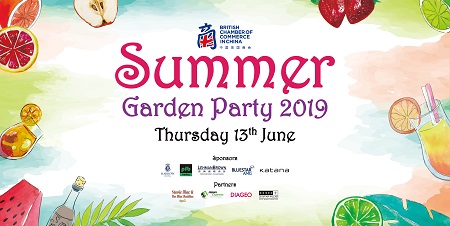
Summer Garden Party Backdrop Design
With over three hundred guests attending this year’s party, the gardens were alive with a vibrant atmosphere and lively conversations. British beer and Pimm’s Gin and Tonic were served alongside the various foods, cakes, and authentic British desserts. After some time of chatting and socializing, the official Welcome Address introduced the new British Chamber Executive Committee for the upcoming year of 2019/20. A live band supplied music for the remainder of the night.
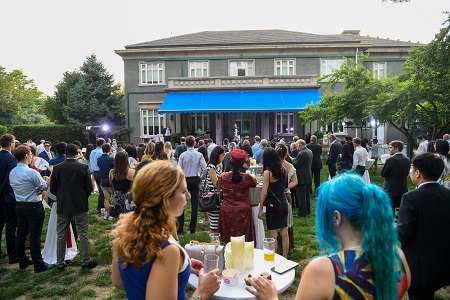

Overall, this year’s Summer Garden party was a magnificent success. 5 Star Plus is always grateful to be a partner of the British Chamber of Commerce.
> back to top of page

The Power of Product Display in Retail Stores
June 12, 2019
When most people walk into a store, they look around at all the products without thinking too much about where they are located. What they do not realize is each product in the store has been placed in its location for a specific reason. Product display has always been an essential implementation for stores. Only 33.3% of shopping decisions are pre-planned, which means product display continues to be a large factor in the layout of retail stores (4imprint).
What is Product Display?
Product display in retail stores is the strategic placement of goods in specific places throughout a store in order to increase sales. Product display is based on consumer behavior and consequently, the more stores learn about consumer behavior, the more intricate product display becomes. The use of cameras and other technologies in stores have allowed retailers to gain a better understanding of consumer shopping behavior. Thus, there are three product display strategies that have been proven to drive sales.
3 Ways to Make a Product More Enticing Through Product Display
1. Grouping
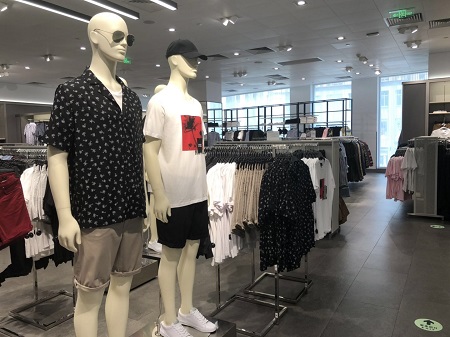
H&M Store in The Place Mall
Grouping products together is when a store places multiple complementary products next to each other to encourage the consumer to buy multiple products. The idea is for the consumer to see how well the products go together and be tempted to make multiple purchases instead of just one. The H&M in The Place Mall in Beijing does this by placing shirts and shorts next to each other when they are designed to be worn together so shoppers can easily purchase both products.
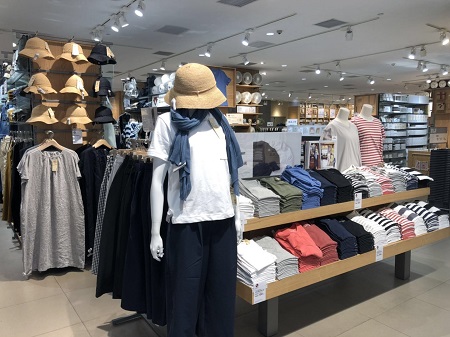
Muji Store in The Place Mall
This Muji retail store in Beijing also exemplifies how to effectively utilize grouping. The mannequins can be seen wearing a combination of complementary clothing, as well as a hat to go with the outfit. Furthermore, the store has surrounded the mannequins with these exact products to make it convenient for the consumer to buy them after they have looked at the mannequins and noticed how well the outfit goes together. Grouping can easily be implemented and can lead to impulse purchases.
2. Location
The location of the products is something consumers are subconsciously affected by while shopping. The shelf level of products is as important as any form of product display. Products placed around consumer eye level are more likely to be purchased because most consumers look at shelves from left to right at eye level. It is important to note if your target customer is children you should put the products they are interested in at a lower height so it is at their eye level.
Another critical part of location in product display is spreading the products across the store. The store should be laid out to encourage consumers to walk around the entire store. The highest demanded products should be spread out and placed in prime locations so customers will have to walk throughout the store to find them. Additionally, having less expensive products closer to the register increases impulse purchases and therefore sales.
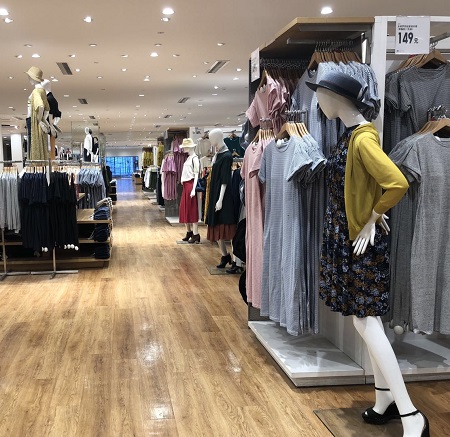
UniQlo Store in The Place Mall
This Uniqlo retail store in Beijing demonstrates how to space out products and maintain plenty of room for shoppers to wander without anything obstructing their path. Furthermore, the layout of the store with certain items in the back and down the aisles prompts people to walk around the entire store, which increases the likelihood of them making a purchase.
3. Complementary Colors
The colors of the products and everything around them can be the difference between people walking by without turning their heads and creating immediate consumer intrigue. Attention grabbing color combinations are essential when trying to get shoppers to enter the store. Getting people to first walk into the store is obviously crucial, so making sure the correct color combinations are displayed both in front and throughout the store is important.
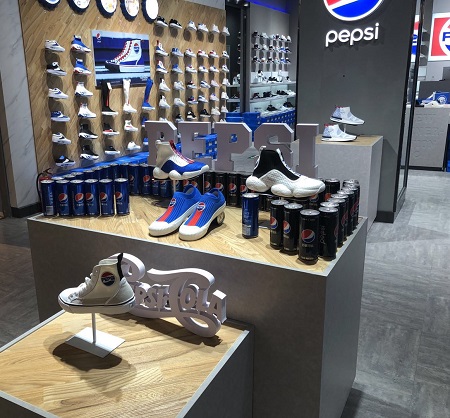
Pepsi Store in The Place Mall
The Pepsi Store effectively draws attention from shoppers by placing its most intriguing products in front of the store and using the soda cans’ blue and black colors to complement the shoes. The combination of the colors and the products in direct lighting draw customers into the store to take a further look. Furthermore, the rest of the store uses the colors of the Pepsi logo to maintain consistency and increase intrigue.
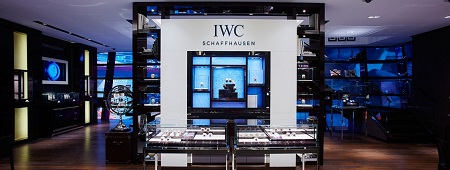
"IWC Schaffhausen Store in Parkview Green Beijing"
Within the store, isolating products and highlighting them using color will intrigue consumers to take a look at what is being displayed. IWC Schaffhausen does this by placing some watches in isolation on the wall with a bright blue background to help them stand out. Additionally, the watches are surrounded by dark wood to complement the lighter blue and white colors. These complementary colors draw the eye directly to the watches and give them a sleek look.
Results
No matter the design or layout of a retail store, product display should always be utilized effectively. Something as minor as products being placed on shelf four at eye level can lead to a 25% increase in the sales of those products (Trax). Proper execution of product display by using grouping, location, and complementary colors will increase the amount of times people see the products and thus, increase the number of purchases. Detailed product display will influence the buying habits of consumers, whether or not they are aware of it.
> back to top of page


How KOLs are Transforming the Chinese Market
May 24, 2019
So much goes into having a strong brand identity. While the physical product being sold needs to be good quality, and the store design in which the product is sold has to be inviting, there is still more that goes into establishing a strong brand identity. Past trends include inviting the media and celebrities to opening ceremonies to create some buzz and drive traffic to a new store. However, this habit has changed in the recent years, nowadays brands such as Valentino, Moynat, and Gentle Monster have realized that influencers need to be part of their O2O marketing and PR mix. KOLs are influencers that share their feelings towards specific brands. Where does their credibility come from? They have direct experience in an industry, professional qualifications or spent a lot of time engaged on a certain subject. Connecting with their audience is just one advantage, however the biggest plus they have is a specific target demographic. Brands can recognize KOLs that target similar demographic markets and have them share their thoughts about their brand. It is important to understand exactly who KOLs are and how to optimize using one within a brand.
The Need for a KOL:
In the Chinese market, consumers are more likely to turn to social media first before they end up buying a product. They check recommendations on the Xiaohongshu or videos on Douyin. Chinese consumers value what their friends, family, and KOLs have to say about various products. More than 50% of Chinese consumers are loyal to brands that partner with celebrities or social influencers. The biggest platform for social influencers is Weibo. With its 462 million users it has an immeasurable potential.

"Is KOL marketing worth the money in China?"
Finding Your KOL:
The first step in optimizing the use of a KOL is finding one that is appropriate for your specific brand and target market. When looking for the perfect match numbers aren’t the most important, a micro-influencer with a few thousand followers can have a greater influence than someone with 500,000 followers. A KOL that has a strong reputation will be more beneficial to the company and add more value to the brand. For example, L’Oréal’s KOL needed to be someone that would be relatable to affluent women that use beauty products. Thus, L’Oréal chose the popstar Li Yuchun as a KOL to promote a new lotion being sold. She brought awareness about the product to her fan base and helped promote the product in a successful way. When Meipai hosted a Cannes Film Festival live-stream where Li Yuchun promoted a L’ Oréal lip balm to the 3.1 million viewer audience, the lip balm was sold out a few hours later.
Cai Xukun, a prominent Chinese singer, also appeared as the spokesman of L’Oréal. 1 minute after the launch of their new product, L’Oréal’s Youth Code, 28 thousand bottles were sold and 2 weeks later it was out of stock, achieving a 25.8 million RMB sales record.
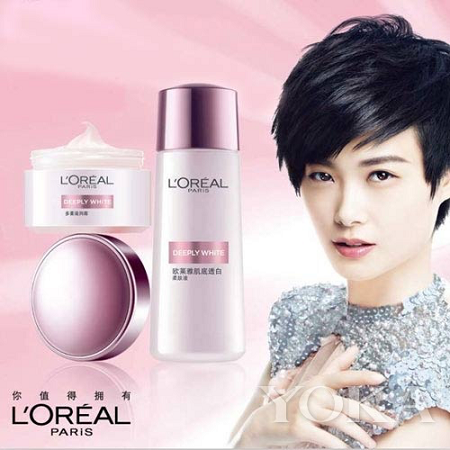
"Savvy Social Networking Pays Off for L’Oreal China"
Another outstanding example of KOL success is the first collaboration of Cai Xukun (KUN) with Yoseido. The brand was a little-known cosmetic brand and ended up making a fortune from picking KUN as brand ambassador. After announcing the collaboration, their sales of facial masks reached 2 million RMB just in one afternoon and have now reached over 10 million RMB in total.
KOLs in Stores:
Once a brand has established who they want their KOL to be, they need to consider how to partner with their KOL to make engaging content. Sometimes they will record videos discussing how to use a product, or of them wearing the product. Another way to create engaging content for KOLs is to invite them to show up at premiere events showcasing new arrivals. The notable KOL Yang Mi who often will show up to luxury store openings. Yang Mi is a KOL for luxury stores like Burberry, Gucci, and Givenchy. Having a KOL at a store opening or fashion show seen wearing the brand will bring more awareness to the products and brand itself.
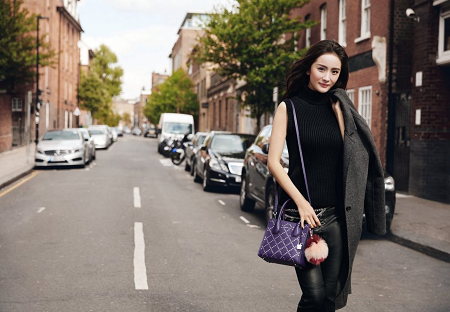
"Interview with Yang Mi, Michael Kors’ New Brand Ambassador"
KOLs are often encouraged to live stream while they are at events to share their experience with their followers. App users spent more than “225 billion hours on apps” in 2017 alone, which shows how much they care about what is posted online (Mavsocial).
One of the best examples is the snack food brand Laiyifen. In 2016 they organized a 48-hour live-streaming relay race where they invited 15 internet celebrities who could reach 600,000 viewers. Before and during the event the influencers shared the event location with their followers. In addition they offered them exclusive discounts if they visited the stores during this 2-day period of live-stream. The stores’ traffic and earnings increased by five times in those 2 days alone. They went even bigger in 2017 when they invited 40 live-streamers and introduce over 1,000 snacks. #1000snacksnight generated 130 million views and 730,000 discussions on Weibo.
Another successful brand campaign using KOLs was the YSL traveling beauty hotel in Shanghai. The aim of the hotel was to create interactive selfie-friendly rooms where KOL’s could “check in”, take unique photos, enjoy exclusive makeup tutorials and performances. On Weibo alone #YSLBEAUTYHOTEL has more than 150 million views and 300,000 comments.
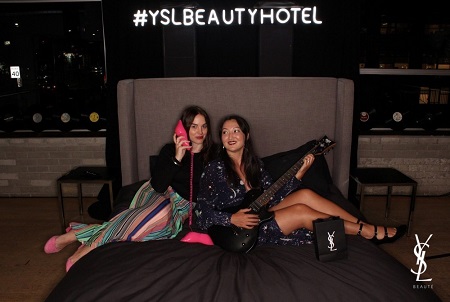
"What They Wore: YSL Beauty Hotel Party"
Overall, the use of KOLs is increasing for brands now more than ever before, especially within the Chinese market. Luxury brands need to focus their efforts on finding a KOL that supports their company and brand identity. Since Chinese consumers spend the most time on social media than any other country, and they value what information is shared on social media, it is essential to partner with KOLs to increase awareness and provide engaging content for both new and old brands.
> back to top of page

How a Strong Retail Design Leads to Increased Sales
May 22, 2019
While concept stores can change the layout and color scheme of their store design, they must first realize why it is so important to focus on these changes. Having a strong store design ultimately leads to a better customer experience and thus increased sales. First impressions really do matter, especially in retail design. Instead of focusing too much time and effort into the product that companies are trying to sell, they need to focus on where the product is being sold. In order to optimize the customer experience, companies need to invest in their store design.
1. Start with the Entrance
Since first impressions are often what stick with customers the most, it is essential for concept stores to have a strong store design starting at the very entrance of the store. The entrance is what sets the tone for the rest of the customer experience. Store designs should focus on creating engaging window displays the catch their customers’ eyes. Displaying the merchandise in a creative and exciting way will start off the customer experience the right way. The next factor to focus on is the door. Everything from how large or small, the material used, and the color is important in conveying a certain message. Concept stores should keep in mind their target customer and use materials and colors that are fluid with their store identity. Being able to successfully combine all these components will attract more customers into the store design and increase the popularity of the store. Below is an example of the Versace store design entrance. They used a glass door to complement their elegant and chic store design. They also used engaging window displays in order to attract customers into the store.

"Versace on verge of being sold for $2bn"
2. Keep the theme Fluid
Once the customer has been intrigued to visit the store design, it is important to keep the customer in the store design for as long as possible. Investing in a strong store design will allow customers to have a more positive experience within the store. Concept stores need to identify the customer they are targeting. For example, if a concept store like Michael Kors is attempting to target affluent, older women, they need to use colors, designs, and appropriate lighting techniques that are appealing to that target population. In fact, just focusing on improving lighting within store designs “increases sales by 1.93% per customer” (Perillo Construction). Below is a Michael Kors store design that incorporates all of these concepts successfully. Keeping this theme consistent with their logo and promotional techniques will make the brand more recognizable and stronger. 91% of customers have visited a store because of an online experience, so it is important to get customers interested with social media promotions but then keep them interested once they enter the store design (Marketing land).

3. The Results:
Success in these different areas will result in increased sales by 50% (Entrepreneur). Having a strong concept store is so important in the success of a company. Concept stores need to constantly be thinking about how they can improve their store design to create the optimal experience for their customers. By identifying exactly who the company wants to target and creating a strong first impression with window displays, entrance mats, and continuing the theme with strong design, coloring, and lighting, concept stores can increase sales and make a positive customer shopping experience. Having a good product only goes so far. A strong store design to accompany a great product is the successful way to increase sales.
> back to top of page

5 Star Plus Retail Design Insights: New Retail, New Design
April 24, 2019
On April 18, our Managing Director, Barbara Seidelmann, gave a talk that analyzed how new retail strategies in the Chinese market affect retail design. This was a joint event organized by the Swiss Chamber Beijing with 5 Star Plus Retail Design, and supported by the British Chamber, and Benelux Chamber. The luncheon took place at George’s Restaurant – Hotel éclat Beijing. Her talk shed light on the changing needs and wants of Chinese consumers, addressed what a new retail strategy is, and examined various techniques in design that enhance this strategy. The main focus of the talk was that retail design in China needs to adapt to fit within the new retail strategy. One of the interesting points focused on technology incorporation into design and its’ role with supporting new retail strategy.

For the guests to get an in-depth picture of how new retail design styles work, Seidelmann, went through a number of case studies showcasing retailers who have successfully implemented new retail design into their physical locations. Case studies included 5 Star Plus Retail Design’s work for some of our clients including Pureones, and Hoegl, as well as, other large retailers in China like Adidas, and Alibaba’s Fashion AI store. The talk looked at examples that incorporated new retail design on a small-scale, being a design that includes one or two new retail elements, to a large-scale, being a design that is a complete new retail design concept.

Overall, it’s important for retailers to understand how new retail strategy works and see how new retail design can help to further grow sales based around this strategy. It’s crucial for retail store design to reflect the retail strategy of the brand itself. New retail design is all about meeting the needs of the brand’s target market based on their needs, incorporating new experiences for their consumers, and tying it to their online strategy through new in-store technologies.

5 Star Plus Retail Design was delighted to share this topic with all of the guests in attendance and give special thanks to the Swiss Chamber, British Chamber and Benelux Chamber for making this event possible. We hope to continue our efforts in guiding retailers in China to incorporate new retail design techniques into their retail stores as they continue to grow and develop new retail strategies best suited to their brand. We look forward to more opportunities to share topics related to this in the year to come.
> back to top of page

The Evolution of Mannequins in Visual Merchandising
April 15, 2019

As most of you will know, a mannequin is typically an artificial doll used by retailers to display their merchandise. For the most part, they are plain bodies that require dressing and accessorising and do not tend to possess any distinct features aside from this.
Mannequins have been around since the opening of the first stores and have long been recognized as important tools of retail business. Different items are usually paired together so customers can visualize which pieces work well together and take inspiration from the store’s latest trends. Furthermore, mannequins also function as a primary feature in window displays and are often the first thing a customer sees when they approach a store. Therefore, mannequin displays serve as a showcase of the best merchandise a store has to offer in a bid to attract potential buyers.

However, whilst mannequins have always been a key feature of store design, it is perhaps important to explore how they can also be used to represent much more. Over the years, mannequins have evolved beyond existing as static objects to become something that can add real value to a brand’s message.
More and more retailers have challenged typical mannequin ‘standards’ to make their retail design stand out and represent something different. Therefore, this article will focus specifically on the evolution of mannequin use in the modern retail world and innovative ways many retailers have brought their mannequin displays to life.
Building Characters
Diverting away from using idle figures, many retailers have opted to create fun and animated characters to showcase their merchandise.
H&M
This window display was featured in Columbus Circle, New York back in 2013 used many attention-grabbing figures to promote H&M’s denim collection.

"H&M Insider: What to Expect During an H&M Interview"
Image Source: MOM.ME
The H&M Columbus Circle Visual Team created quirky characters to liven up the entire display and each individual character was brought to life through amusing facial expressions, granting them their own unique personas. Furthermore, the oversized heads served as an enhancement to the entertainment value of this window design.
Most importantly, the window display effectively draws attention to the merchandise H&M is promoting. The denim theme is evident as the display is predominantly blue, and the white only serves to complement it. Moreover, all of the mannequins are physically dressed in denim items, even the mannequin heads look as though they are made from denim and this additional feature really brings the theme to fruition.
Tanni
The Tanni store in Taikoo Li Sanlitun mall in Beijing places cute, larger than life dolls at the forefront of their take on mannequin displays.

The sizes of these characters are magnified in a way that is sure to generate an element of surprise and fascination for nearby shoppers because at first glance, they do not appear as though they are actual mannequins. As well as this, the dolls also appear to evoke a sense of nostalgia and childhood innocence, as they appear to be very child-like in both their dress and demeanour. This seems to be in keeping with the general theme of the whole store, which features lots of fun, floral prints and patterned pieces.

The zeitgeist of their retail store design is very light and playful and is reflected in the colour palette as well as the décor around the shop. Therefore, the mannequin display provides a playful teaser of what the retail store has to offer.
Mannequins in Motion
Activewear is currently a lucrative industry which shows no signs of slowing down. Consequently, how Activewear is presented to consumers can really impact its appeal. In particular, ‘active’ mannequins can really help to bring a brand to life in both a physical and symbolic way.

"Hans Boodt Introduces 'Yoga Sports' Collection"
Image Source: VMSD
Shown above is Hans Boodt’s most recent Yoga Sports Collection which features mannequins doing impressive yoga poses. This not only proves how mannequins can be just as flexible as humans but more importantly, overturns the pre-conceived notion that mannequins can only be still figures with certain limitations to their movement.
Lululemon

The Lululemon store in the Parkview Green Shopping Mall in Beijing is bursting with life and showcases how ‘active’ mannequins can be incorporated within retail store design. The store features a mannequin display on both the outside and inside of the store, to ensure that they are easily seen and noticed by customers in the shopping mall.


The mannequins showcase a diverse set of athletic poses, as some are warming up, stretching and running, illustrating the sheer range of movement these mannequins possess.

This is especially true of the mannequin who is mid back flip, showing how mannequins are able to bend in positions like never before. The balance and precision which has gone into the placement of these mannequins is a testament to how far sports brands are willing to go in order to experiment with mannequins and create new boundaries.
The Bigger Message
Perhaps the most notable aspect in the evolution of mannequin use lies in their capacity to represent something more. In particular, realistic mannequin figures can not only more accurately represent and relate to customers but can also promote powerful messages of individuality, diversity and inclusivity.

"Hans Boodt Mannequins Creating Characters campaign"
Hans Boodt
As with the Yoga collection, Hans Boodt also proves to be ahead of the game in the Creating Characters campaign. The collection had the specific aim of bringing awareness of individuality through 3D sculptured, realistic characters. These figures are so life-like they could be mistaken for real people, as each individual mannequin appears to have their own unique identity. Therefore, the collection displays a true dedication to represent different sectors of society, transcending barriers of race and age.

"Hans Boodt Mannequins Creating Characters campaign"

"Hans Boodt Mannequins Creating Characters campaign"
Missguided
Missguided made headlines back in February with their brave decision to incorporate diverse mannequins in their Bluewater, Westfield and Stratfield UK stores as part of their #MakeYourMark campaign.

Part of what made this such a milestone in visual merchandising is the fact that not only do the stores feature mannequins of different ethnicities, religions and skin tones, they also acknowledge and celebrate women’s differences by including mannequins with what some women would perceive to be ‘flaws’ in their bodies. This selection of mannequins includes models with freckles, stretch marks and even skin conditions such as vitiligo have been given representation.

"Missguided Mannequins Now Have Stretch Marks But Are Still One Body Shape"

In doing this, Missguided have taken a momentous step towards becoming more representative of all women, whilst also encouraging them to be their natural and authentic selves without pressure to conform to societal standards of beauty. These mannequins speak out to a larger demographic of women by not only allowing representation for different groups but also bringing awareness to what real women look like. This promotes an important message about inclusivity and how shopping should be a relatable experience for all women.
Whilst there is still progress to be made within visual merchandising, especially regarding representation of women of different body sizes, Missguided have still paved the way for real difference to be made. They have displayed their ability to adapt their approach to evolve with the times through incorporating what can be seen as ‘progressive’ mannequin displays as part of their store design.
Conclusion
In conclusion, an awareness of the value mannequins can hold can have a real impact on a brand’s appeal. Mannequins have evolved into much more than just objects, therefore, an effective mannequin display can not only add to the overall ambience of a store to create customer intrigue but can also become something customers can actually relate to. Moreover, as fashion and society are ever evolving, this can also be translated into your mannequin displays so to actually speak out to customers and make a lasting impression.
> back to top of page

Mind your step - Use the right type of flooring to stand out with your retail design
March 27, 2019
You walk into a store. You consciously or subconsciously recognise the store’s retail design. However, the first interaction with any store is not only visual but also physical. And this first physical contact with a retail space is its flooring. Therefore, a retail space demands a unique floor that is durable as well as easy to maintain. While flooring tends to get too little attention, it can be a crucial detail that makes or breaks a retail store design.
Separating areas without barriers
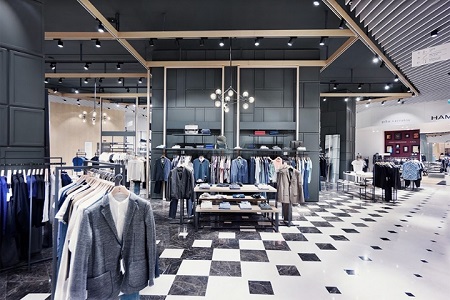
"Galeries Lafayette department store by Plajer & Franz studio, Istanbul – Turkey"
Flooring can be a creative way to separate the product display area from the traffic flow area without creating any barriers. Referring to the example of La Fayette department store in Istanbul it seems like one is magnetically drawn from the aisle to the product display area.
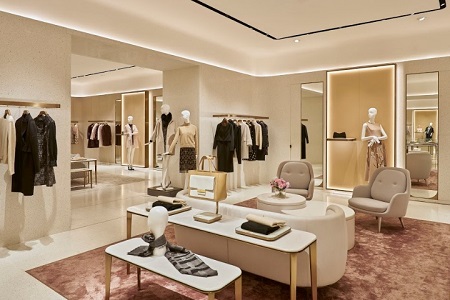
"V Grass Nanjing Deji Plaza by PMDL Architecture + Design, Nanjing – China"
V Grass Nanjing Deji Plaza in Nanjing uses two different flooring materials to separate areas. Not only does this create contrast in color but also creates the feeling of an exclusive atmosphere. Additionally, the softness of the carpet tends to have a very relaxing effect on people.
Creating contrast with pattern and material
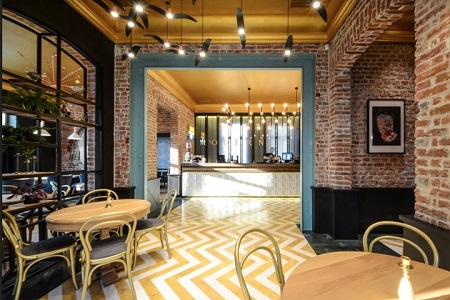
"Excelsior restaurant by Yellow Office architecture, Craiova – Romania"
The example of this restaurant in Romania shows how flooring can turn a nice design into an outstanding design. There exist various ways to create contrast not only with color and material but also with shape and pattern.
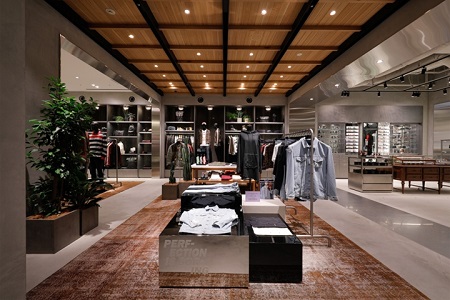
"Diesel store renewal, Tokyo – Japan"
Diesel recently renewed its flagship store in Tokyo. The new design integrates contemporary elements as well as antique furniture. Of particular note is the combination of concrete flooring with wooden ceilings. This contrast creates an atmosphere that is both rustic and modern.
Functionality of flooring
With the vast variety of colors, patterns and materials, it is easy to get distracted and forget about the practical aspects that the right flooring should fullfill. For example, the previous example of concrete flooring has several issues that need to be taken into consideration. Concrete flooring does not only tend to have a cold appearance, in fact it is cold and might affect heating bills in the winter. A soft carpet may not increase heating cost; however, carpets tend to be quickly worn down and get dirty easily. The maintainance of carpets can be costly and time-consuming. Wooden flooring brings similar maintainance issues with it. Therefore, it is no big suprise that we see all of the mentioned materials less frequently in retail spaces. A solid and more practical flooring solution for example is luxury vinyl or ceramic tiles like we can see in the first three images of the article.
Summing up, flooring in retail design matters. Its design as well as its functionality is a crucial factor that will influence a customer’s feeling in a store design.
> back to top of page

The Importance of Establishing Your Brand Identity
March 20, 2019
After the year of retail-tainment became so paramount, there is now more than ever an emphasis on brands mastering the “experience of retail”. Before it was an effective way to attract customers into store designs. Now, however, it is absolutely critical for concept stores to invest money into making their brand more than just a store. Store designs need to invest in experiences. According to a study by Adobe, “80% of business decision makers said improving their company’s customer experience was among their top priorities” (Adobe). Here is why it should be your top priority too:
More entertainment results in better customer relationships, leaves a longer lasting impression, and makes your store design more competitive in the retail industry.
Brands now more than ever need to invest their money and efforts and to creating a strong brand identity. Developing your brand identity is vital to remain competitive. Using the following steps can help store designs reach the greatest number of people and reach their personal potential.
1. Create a Vision and Understand your Customer
The first step in reaching your store design’s highest potential and learning how to become more engaging with customers is to first understand who you are trying to market towards. Store designs marketing towards a younger demographic should focus on a ‘fun’ atmosphere, versus a more ‘dynamic’ atmosphere for adults. Either way, whoever is being targeted, there still needs to be a focus on engaging with people and making a presence. Company’s need to learn how to make their company better than the rest through marketing, adapting their product, and entertaining customers. Personalizing the store’s vision to their target customers is the first step in understanding and mastering their design.

"Understanding your target customers for successful online lead generation"
2. Invest in Technology
The second step in reinvesting in your brand is incorporating technology. Currently, the Asian market is leading in mastering the use of technology. Technology is important to attract customers into store designs as well as to keep data on what customers want, and when they want it. Within the Asian market, about a third of companies invest at least ? of their budget on virtual reality or some similar type of interesting experience to allow their brand to stand out. By incorporating technology and virtual reality into concept stores, customers become more aware of products and more loyal to companies overall.

"Consumers Are Changing E-Commerce Preferences"
Image Source: MH&L
3. Focus on Business to Customer Marketing
While it is important to know the vision of your company and how to master technology, the most important factor in being competitive includes focusing your time and attention on entertaining the people. After analyzing the most competitive companies it has been realized that “59 percent of global CMOs recognize brand experience as a way to formulate ongoing relationships with their core audiences, and 90 percent of marketers worldwide think that brand experience delivers strong face-to-face interaction and more compelling engagement.” (Luttner). While creating an engaging store design and incorporating retail-tainment is important, it also is essential for companies to establish their brand by meeting with different customers, networking, and building their brand. By attending trade shows, events, and exhibits, brands can grow their brand simultaneously while growing relationships with customers.
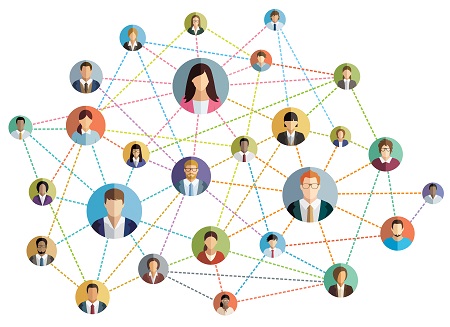
"Top Industry Tips on Mastering Networking in Insurance"
Companies have learned how to master retail-tainment, but now they need to go the next step in mastering their relationships with customers. By reinvesting money into their vision/ design, engaging in virtual reality, and establishing their brand by attending various events, companies can become more competitive and successful in today’s retail market. Customers today more than ever are interested in experiences, and store designs need to understand how to make a statement and leave customers with a lasting impression of their concept store.
> back to top of page

Thinking Outside the Box: Embracing Geometric Shapes in a Unique Store Design
March 15, 2019
When creating the flawless store design layout, it is important to use every element possible to create the perfect brand image. Concept stores can no longer just rely on combining unique colors to set their store design a part, now it is important to focus on the importance of geometric shapes within the store design. Different shapes invoke unique feelings within people. Also the use of geometric shapes in store designs can help the store design by making it more easily navigated, framing important aspects of the store, and creating a unique visual effect.
Navigation through Triangles:
It is important to create a store design that is easy for customers to easily navigate through. A strong concept store will highlight important products and create a logical path that customers can walk through. The best way to implement navigation throughout a store design is with the use of shapes. The best shapes to use when guiding customers through a luxury store design are triangles. Triangles help point customers throughout a store and make the most of a store design. Also triangles have psychological effects within people. Triangles represent stability, energy, and strength. These different emotions can create a powerful while simultaneously guiding customers throughout a store. Below is the luxury store design Tokyo Issey Miyake that incorporated triangles within their concept store.
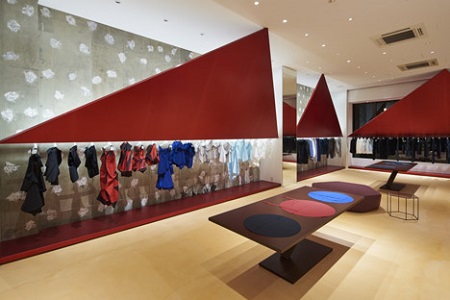
"Tokujn Yoshioka installs Giant Red Triangles"
Framing through Squares & Rectangles:
It is also important within a store design to highlight and create focal points throughout the store. Concept stores can highlight their store logo or different products on display. The best way to frame different objects within the store is through the geometric shapes of rectangles and squares. Although squares and rectangles are the most commonly used shapes within store designs, they have positive psychological effects on customers. Squares and rectangles invoke the feelings of reliability, stability, and suggest structure. These are all important emotions to create within a luxury store design. Below is the Nespresso concept store design that implemented the use of colorful squares and rectangles to create structure all while creating the feel of order within their store identity.
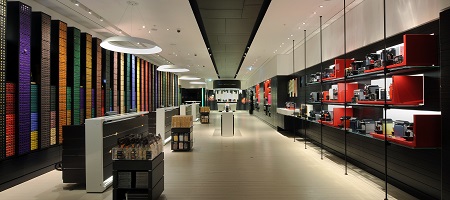
"George Clooney not included – Product Review: Krups Nespresso Citiz and Milk"
Visual Effects through Circles:
Finally, to make a store design truly inspiring and unique it is important to incorporate different geometric shapes to add a new dimension. The best shape to use to create a unique visual effect is a circle. Furthermore, circles represent harmony, completion, and can add a feminine visual identity to a store. Although not as commonly used, pentagons and hexagons also create a similar feeling as circles. They can be more unique and create a contemporary feel within a store design. The concept store, Freudenhaus Eyewear perfectly implements the use of circles within their store design. They used circular shelves to showcase their eyeglasses in a fashionable way. The store design is chic with the all-white but dynamic with the use of the circular shelving.
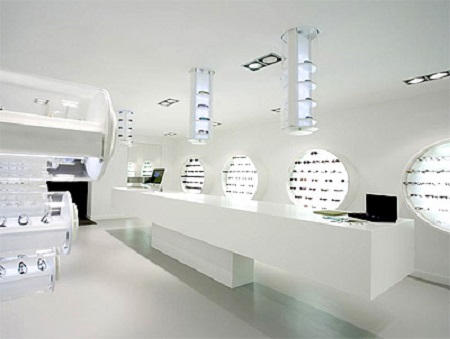
"Eyewear Store Design in Munich"
Conclusion:
Pictures and shapes can make even more of an impact on a customer than originally perceived. The use of various geometric shapes not only are practical within store designs, but add a unique dimension that set stores a part. Various shapes help customers navigate a store, frame important products, and create a unique visual effect. The use of geometric shapes in a store design can create a unique visual identity because ultimately: shapes are a universal language that can speak to anyone.
> back to top of page

5 Star Plus Retail Design Insights: How to Better Market Your Company in China
February 28, 2019
On February 27th, our managing director, Barbara Seidelmann, gave a talk on how to better market your company in China. This was a joint event with the Spanish Chamber of Beijing. Her talk covered a variety of marketing issues pertaining to B2B and B2C companies in China. Some of the topics she touched on included the differences in the Chinese market compared to others globally, positioning in the Chinese Market, effective communication methods, branding, omnichannel strategy and, customer experience. The main focus of the talk developed these issues more in-depth by looking at the speed of the market, the design importance in the market, evaluating consumer psychology, evolving marketing techniques for both offline and online platforms, and establishing strategies that enhance the overall experience of consumers in China.
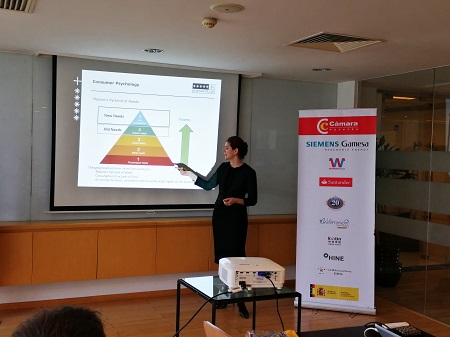
Beyond online marketing, Seidelmann, encouraged businesses to look towards connecting to consumers through lifestyle marketing to increase Chinese consumer interaction and enhance their experience. She then went on to identify ways to do this in the changing retail environment through creative avenues of pop-up stores and exhibition stands in China. The use of physical interaction is a smart way to engage with customers, provide them with a touchpoint apart from other physical locations, and encourage customers to share their experience through media online thus creating an ongoing conversation that consumers can have and take part in even though they were not present for the experience themselves.
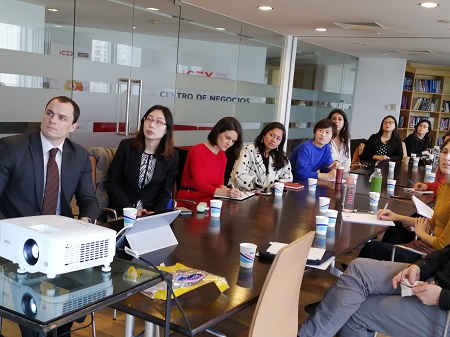
Overall, it’s important for retailers to realize that effective retail marketing must go beyond a single stream of offline or online marketing and combine these two streams in a way that flows directly to consumers. The more your brand can resonate on all channels, the larger the impact you will be able to have on consumers.
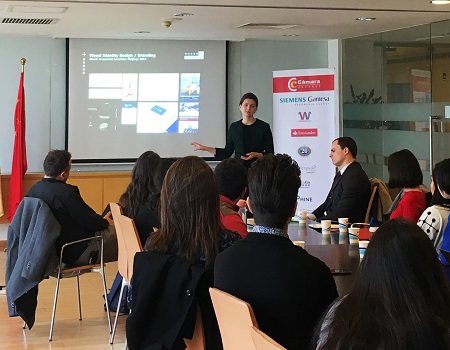
5 Star Plus Retail Design was delighted to share this topic with the Spanish Chamber of Beijing. We hope to continue our efforts in guiding businesses in China to form more effective marketing strategies that most directly connect with their consumers and other businesses. We look forward to more opportunities to share topics related to this in the year to come.
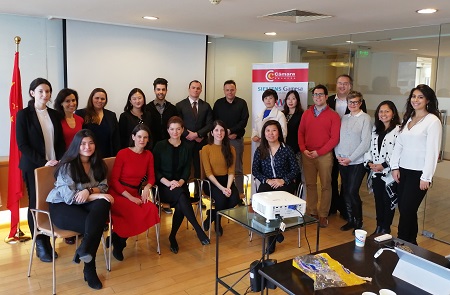 > back to top of page
> back to top of page

Austrian Winter Sport Days 2019 in Chongli - Designed and Executed by 5 Star Plus Design
February 26, 2019
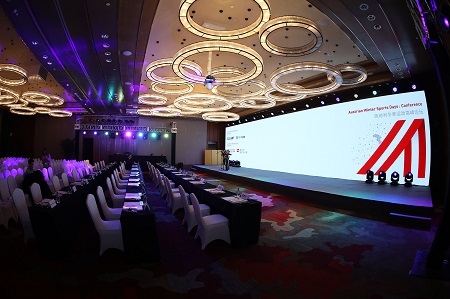
On February 22-24, the 10th edition of the Austrian Winter Sports Days 2019 was held at the Thaiwoo Ski Resort in Chongli, Hebei Province. The event was jointly organized by ADVANTAGE AUSTRIA Beijing and the Austrian National Tourist Office, supported and designed by 5 Star Plus Retail Design.
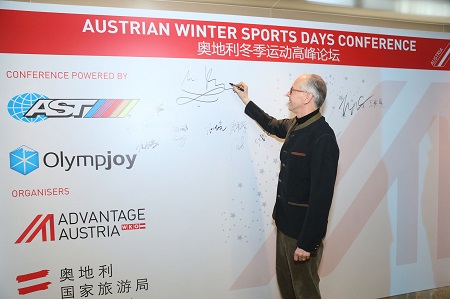
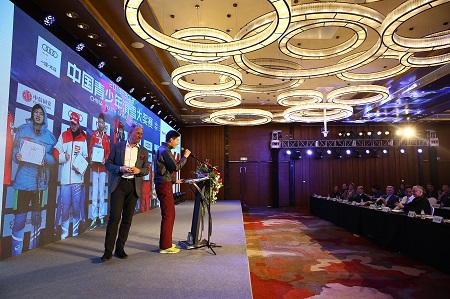
The two day event included the Winter Sports Conference, the ADVANTAGE AUSTRIA Ski Race, and an Austrian-style Hüttenabend gala dinner in the mountain top restaurant of the Thaiwoo Resort, which was sponsored by Salzburg State Board of Tourism and Ski Amade. The first day of the conference hosted 250 industry professionals and government officials from the winter sports industry in China and Austria. During this day the conference focused on sharing information and expertise on skills and innovations happening in Winter Sports as well as a tourism workshop focused on the Chinese market. The second day kicked off with the annual ski race. This year there were 50 participates that raced through the course which made for a great ending to another annual event in China.


This was the 3nd year for 5 Star Plus Retail Design provided the design and production support event for ADVANTAGE AUSTRIA Beijing. 5 Star Plus Retail Design designed all interior design elements, marketing, and print materials for the conference, welcome reception and ski race, as well as technical support. The print material design was kept in line with ADVANTAGE AUSTRIA branding, using crimson red and bright white as seen on the Austrian flag, while also providing adequate room for branding of the event sponsors. The inside of the banquet hall was designed vibrant and festive in the spirit of Winter Sports, with backdrop images of nature scenes from Austria.

Overall, the event kicked off with high spirits of Winter Sports industry and were happy to play our part through design and production to create yet another successful and exciting event.
 > back to top of page
> back to top of page

Incorporating 2019 Retail Design Trends
February 25, 2019
Stepping into 2019, we can reflect on popular trends from last year and now look ahead to discover which ones will push the design industry forward. The following trends will be great to incorporate into store designs this year to keep them exciting and interesting to shop in.
1. Bold Colors for a Bold New Year
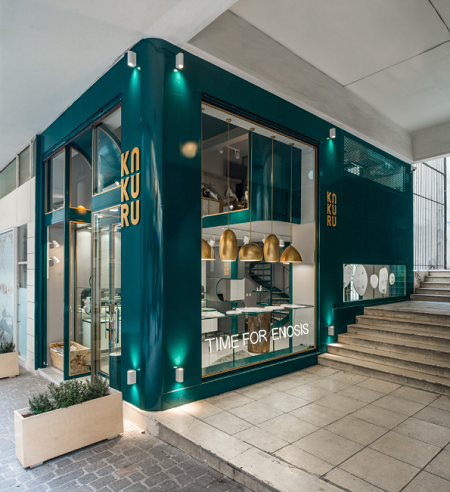
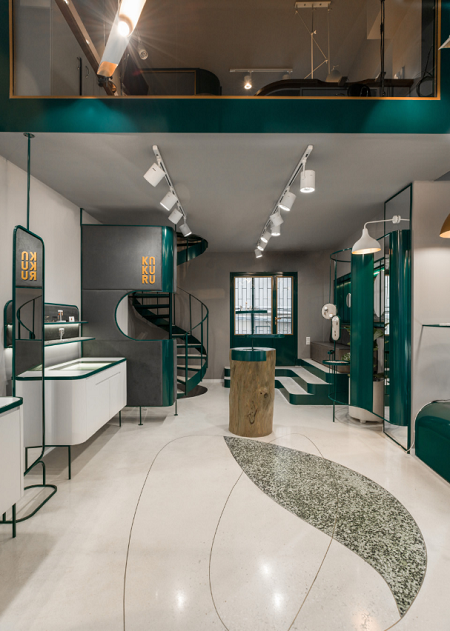
"Jewelry store KAKURU"
Since Pantone announced “Living Coral” as color of the year, we will expect to see a multitude of bold colors dominating the retail design scene. KAKARU exemplifies the use of bold color’s in their store design located in Athens, Greece. The jewelry store KAKURU draws inspiration by combining nature and materiality, adopting a vivid green color similar to PPG’s color of the year – Night Watch. In combination with bronze and olive wood, these colors complement each other whilst bringing out the vibrant green.
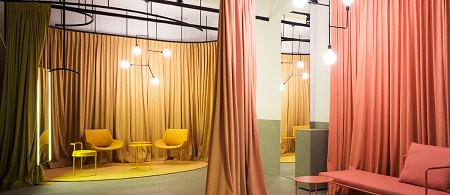
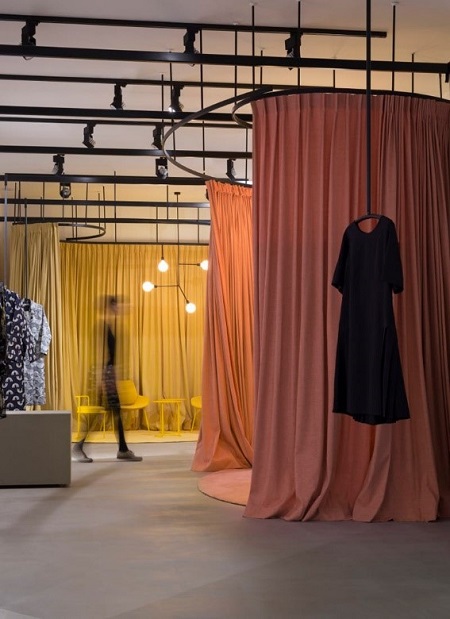
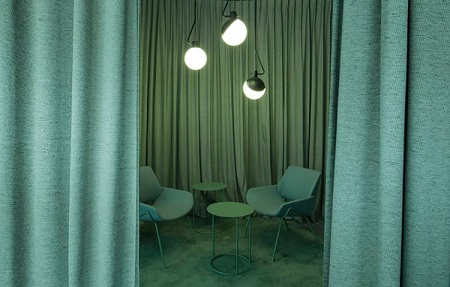
"Garderoba Concept Store in Zagreb by BIRO"
Garderoba concept store in Croatia adopts a monochromatic approach to their store, separated by shades of pink, green and yellow colored spaces. These individual segments highlight their mantra of slow-shopping, each mimicking wardrobe capsules, comprising of different styles which the customer is encouraged to try on. The colors not only serve as both separation and aesthetic use, but also as multi-functional spaces. The use of these bold colors in these various concept stores help make the space more illuminating and captivating to be in.
2. Wooden Elements
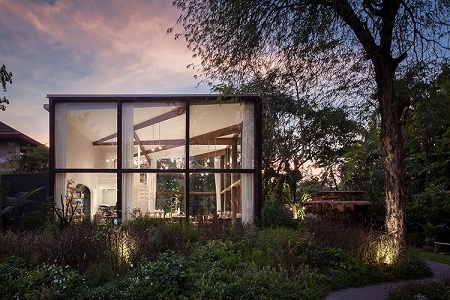
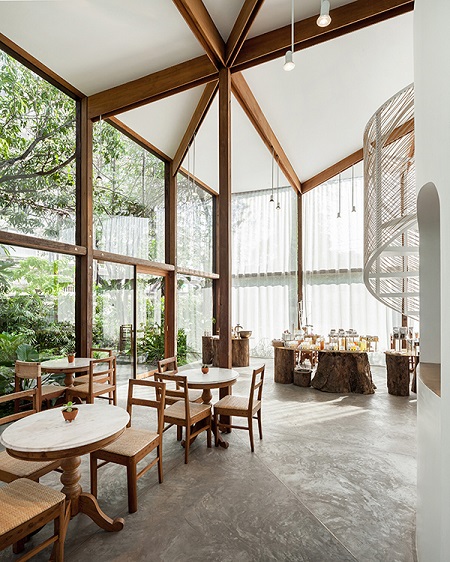
"Patom Organic Living, Bangkok, Thailand"
The use of wood started to become a popular trend in 2018 store designs and is continuing to be even more popular in 2019. An example of a concept store that incorporates the use of wood is Patom Organic Living in Bangkok specializing in selling organic body products, aims to promote sustainable and green living through their products. Their interior design is inspired by nature and greenery and incorporates an earthy white and brown color scheme. Patom’s owners and designers selected reclaimed wood from the owner’s old houseboat, fallen tree trunks from the family farm and refurbished furniture from the owners’ collection, staying true to their brand’s beliefs. The concept store is also surrounded by lush greenery and is absolutely breathtaking at sunset.
3. Old Meets New
A popular trend in 2019 is using classic store designs to bring character to the store’s aesthetic. There is an emerging appreciation and demand for spaces that embody distinct personality and take on a persona. Consumers increasingly want to be in spaces that have character, individuality and tell a story. A popular way retailers are conveying their brand story in 2019 is by renting out shopfronts that have a distinct history or cultural significance, making their brand part of the city.
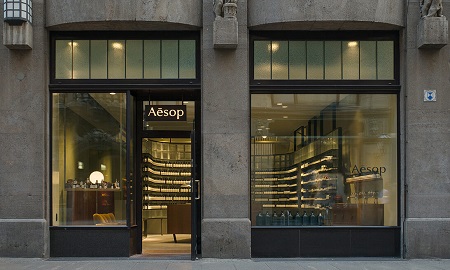
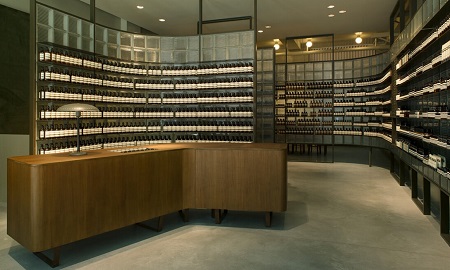
"Aesop"
Known for their contemporary and minimal aesthetic, Australian brand Aesop opens yet another store design in Leipzig, Germany, a cultural city famed for its music and arts. The store manages to blend in with Leipzig’s historical buildings, thanks to the rough concrete fa?ade, powder-coated metal and translucent glass tiles, which Architonic describes as, “reflective of the industrial uniformity that characterised Leipzig when Germany’s East and West were demarcated.” Aesop successfully strikes a balance between its contemporary product line and historic beauty of the city, exuding an alluring rustic charm.
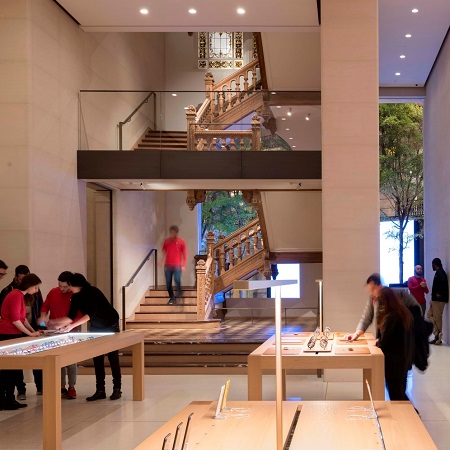
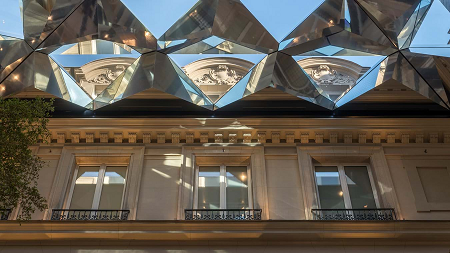
"Apple Store"
Another example is the Apple store design in the Champs-Elysees, Paris. Few brands would be able to smoothly integrate themselves into a historic Parisian building, especially being a global brand at the forefront of technology. Instead, Apple pays a tribute to the city’s historic architecture whilst introducing modern spaces. Burgundy stone and French oak parquet line the interior of the space, resulting in a timeless but modern feel just like the city. A sculptural roof light (pictured above) provides renewable energy and sunlight to the space, powering the space with 100 percent renewable energy.
4. Homely and Comforting Spaces
Living in an ever-accelerating and rapidly paced society, feelings of anxiousness and frustration is an unavoidable component in people’s lives. Retail therapy is an act of comfort, but more importantly is the space in which consumers choose to spend their hard earned cash. Retailers able to provide this momentary relief and safe space away from the hustle and bustle of the city are sure-fire winners. It’s all about finding order and beauty amidst the chaos, and MUJI is a stunning example.
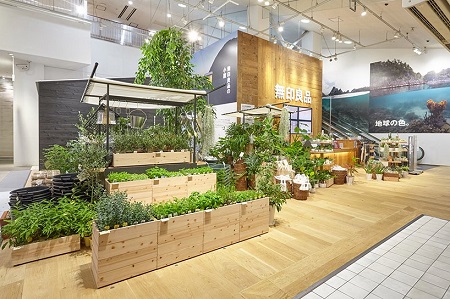
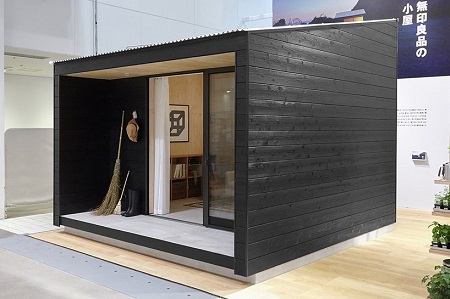
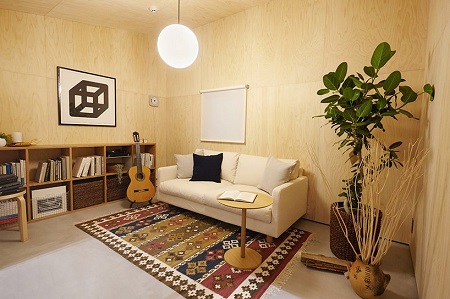
"MUJI's reopened global flagship store in tokyo features a fruit and vegetable market"
MUJI flagship store in Tokyo, originally a clothes and interior living retailer, now has their own marketplace which sells fruits and vegetables. In addition to their home theme, there are also MUJI HUTS, these are individual cabins in the store that mimic living spaces, a perfect showroom for their furniture and an area for customers who might be overwhelmed by the “outside”.
It is important for various store designs to be aware of the latest trends and incorporate it into their own stores. 2019 is full of new and refreshing ideas. Whether it is the use of bold colors, natural elements like wood, using vintage stores, or making the store design feel like home, it is all about finding what works best for each personal store design.
> back to top of page

ISPO Beijing 2019 – Stand Designs We Loved
January 24, 2019
With over 400 exhibitors and 700 brands spanned across 50,000 square meters of exhibition space, the ISPO celebrated its 15th anniversary in Beijing, providing a platform for sports enthusiasts, innovators, brands and manufacturers to celebrate winter sports and share their products. The venue was divided into four segments – Snowsport, Outdoor, Health and Fitness, Manufacturing and Suppliers.
5 Star Plus Retail Design paid the ISPO exhibition a visit, and here are some stand designs that we thoroughly enjoyed and grabbed our attention.
Pelliot (伯希和)
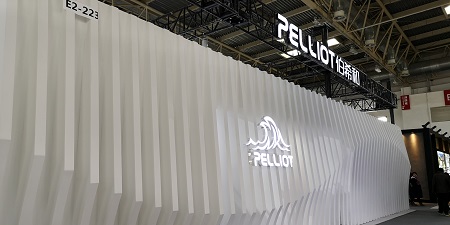
PELLIOT, a professional outdoor sports brand, stood out to us through their meticulous use of lighting and shapes to feature their products. Their exhibition stand fa?ade utilizes clean-cut and simple geometric shapes to reflect elegance and minimalism. Varying heights but uniformly cut angles help to maintain the unity of elements, providing a smooth flowing visual effect, therefore forming a more three-dimensional space in their design stand.
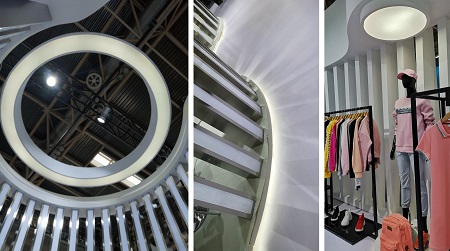
The internal lighting is both exquisite and rich, using a point light source to place their products under the spotlight, diffused light in different spaces of the exhibition stand also create a diverse visual lighting effect. Various light sources and materials work cohesively to create reflective spaces, presenting a geometric light and shadow effect, echoing the lines of different areas within the design stand.
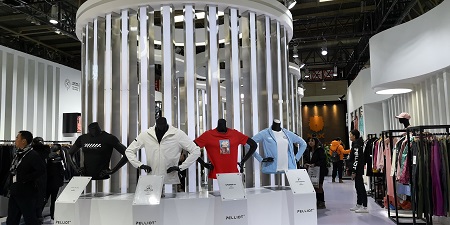
In conjunction with their brand identity, which puts “Young, Exploration, Outdoor, Style and Function” at the forefront, PELLIOT demonstrates this through their contemporary stand display and quality products.
CROSS-ROIIER
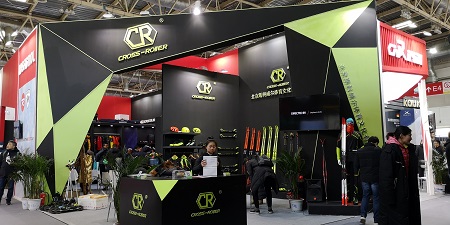
Pieced together using primarily diamond and irregular shapes, CROSS-ROIIER, specializing in winter sports equipment, embodies a high-end, high-tech and chic aesthetic. Their ISPO exhibition stand color scheme of sophisticated jet black and energetic lime green further emphasizes the theme of technology and innovation, creating an overall visual effect and feel of a unique yet bold brand identity.
MOBI GARDEN (牧高笛)
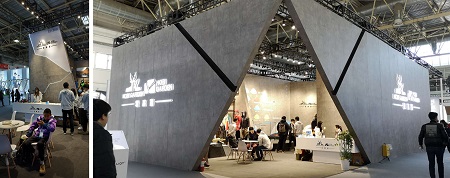
MOBI GARDEN pride themselves on their research and innovation of outdoor gear, hoping to promote the five major outdoor sports - exploration, hiking, travel, cross-country running and camping through their different product lines. Their stand is assertive and dominant, maintaining a cutting-edge feel using terrazzo-like grey walls, allowing their backlit walls and brand logo to take center-stage. These structured shapes and points resemble mountain peaks and the great outdoors, visually transforming their ISPO exhibition stand into an outdoor experience.
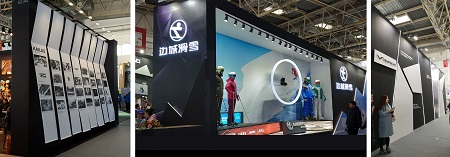
Lastly, we have three different brands with their own illustrations of back wall displays. On the far left, KAILAS introduces their brand and vision using the smooth flow of sequential boards to convey their company journey. In the middle, the stand display is similar commercial store window displays, using downlights, spotlights and luminous logo lighting. This is a clear and concise method of conveying company and product information to an audience who might be unfamiliar with the brand. KEMPGEARS’ ISPO exhibition stand, on the far right, binds monochrome with irregular shapes to keep their wall classic and minimal but still interesting with an edgy twist.
Back to Top

2019 Colors of the Year
January 8, 2019
Last month, Pantone announce their pick for 2019’s color of the year. Living Coral, a bright cheerful pink with orangey hue was the top choice. Pantone describes the color as“Vibrant, yet mellow PANTONE 16-1546 Living Coral embraces us with warmth and nourishment to provide comfort and buoyancy in our continually shifting environment.”
”Living Coral” - Pantone
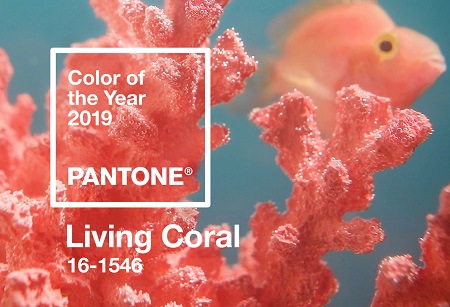
Due to our strong influence from social media and vast increase in digital technology, trends come and go and our daily environment is constantly changing. Living Coral is meant to remind us to step away from this environment by bringing in a familiar color from nature to encourage more relaxed and upbeat experiences. In the world of retail design, we expect to see pops of color in window displays, packaging, and furnishings within retail stores. Living coral will also pair nicely with other colors found in nature such as, vibrant greens and bright blues.
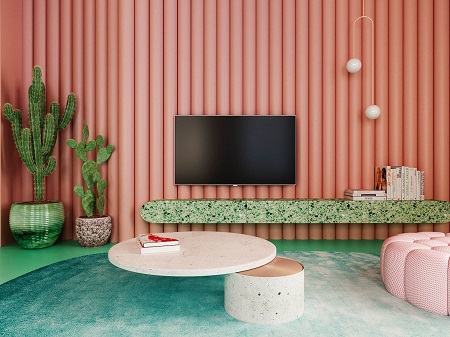
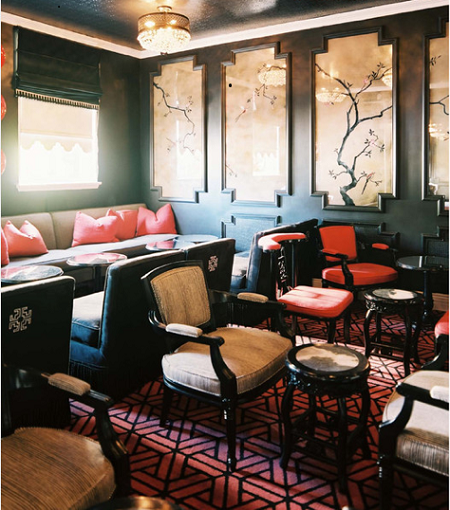
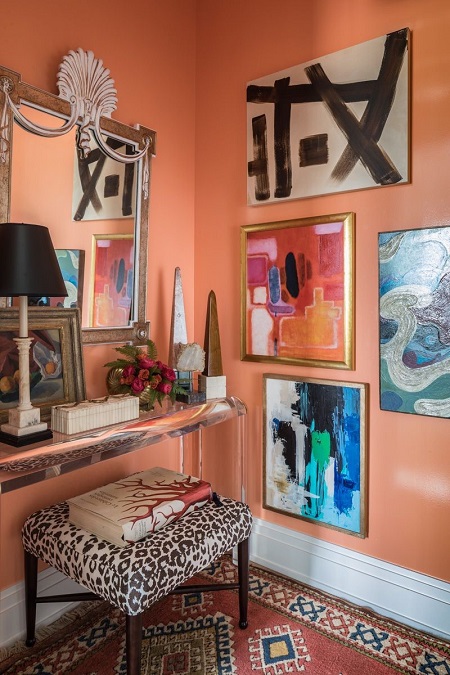
Complementary to Pantone’s color of the year, PPG recently identified their color of the year to be Night Watch. This black infused green is meant to soften brighter colors with its neutral tone. At the same time, Night Watch, can also be used to make a bold statement as a featured color in design. This color is also meant to relax consumers and bring them into a more peaceful oasis away from the chaos of over stimulation of digital products and social media. Sherwin-Williams announced Cavern Clay, an Earthy terracotta tone, as their color of the year, additionally, Benjamin Moore chose Metropolitan, a soft grey color, while Behr Paint decided on Blueprint, a vibrant teal. All of these colors can be easily paired with living coral to create uniquely bold statements in interior design.
”Night Watch” - PPG
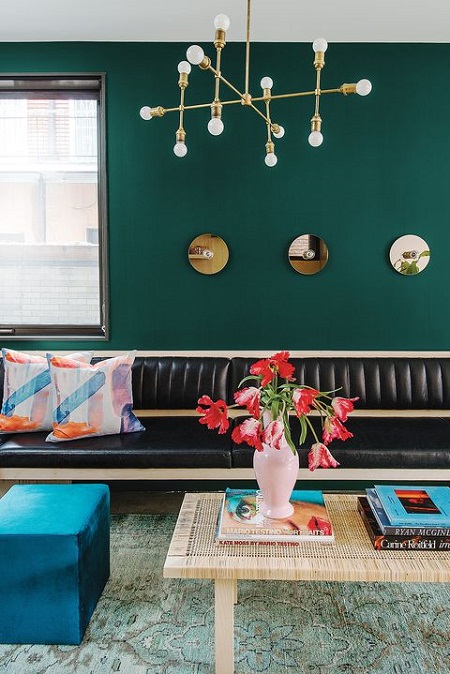
”Cavern Clay” – Sherwin-Williams
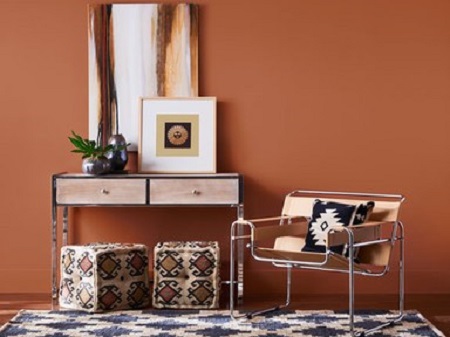
”Metropolitan” – Benjamin Moore
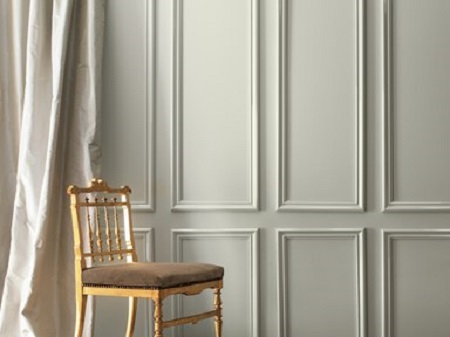
”Blueprint” – Behr Paint
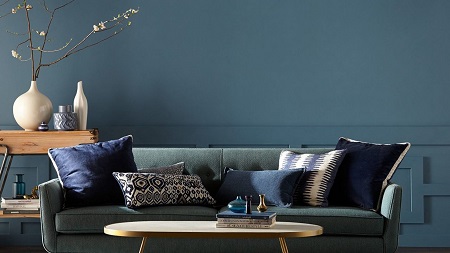
As we enter into 2019, shoppers can expect to see these colors appear in stores across the world, from products that line the shelves, to window display design, to retail store design itself. The use of the bright living coral, paired with more neutral tones found in nature will surely bring the beauty of nature indoors creating an upbeat yet relaxing atmosphere allowing all of us to become more connected with the world around us.
back to top of page

What’s in-store for Christmas 2018?
December 21, 2018
It’s the most wonderful time of the year, again. Along with Christmas markets and hot chocolate, in-store display and window displays are also bursting with festive cheer and creativity. The designs seem to get more and more extravagant each year. Let's have a look at our top picks for 2018 from around the world.
Saks Fifth Avenue, New York "Theatre of Dreams"
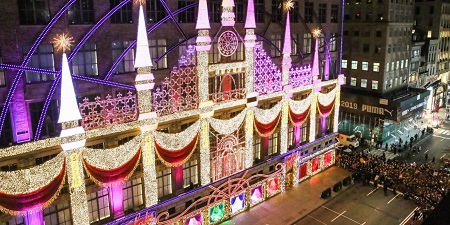
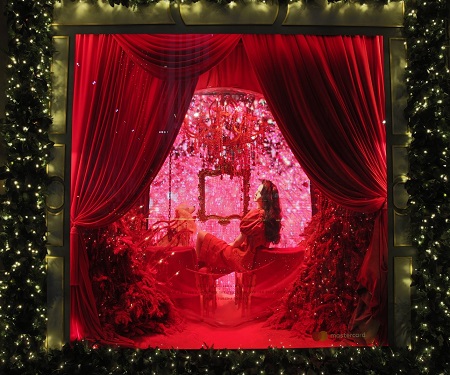
Saks Fifth Avenue constantly makes our list, and who could blame them? Taking 250 people more than 10,000 hours to create their holiday window display design, Saks Fifth Avenue kicks it old school with "Theatre of Dreams", an ode to the grandeur of the Broadway stage. At their opening ceremony on November 17, they presented a one-of-a-kind Broadway performance featuring 124 dancers. Window display design feature draped red velvet and hanging chandeliers, to create a splendorous feeling that emphasizes the glitz and glamour of old Broadway. Saks Fifth Avenue truly adds to the authentic New York Christmas experience, injecting Fifth Avenue with energy, life and vibrancy.
Fortnum and Mason, London: Christmas Reimagined
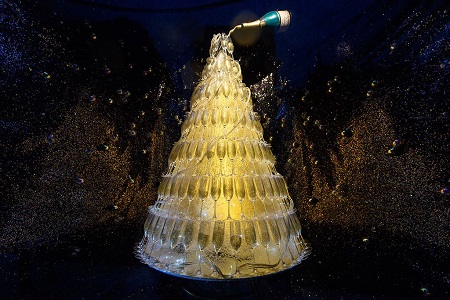

A Christmas tree made up entirely of champagne glasses await you at Fortnum and Mason. This year, they have reimagined the traditional Christmas tree with a culinary twist for their window display design. A tower of champagne glasses surrounded by cascading fizz is bold but remains classy and inventive simultaneously. Stretched over eight windows, their displays surround the culinary theme with more inventive foods, such as a platter of mince pies herded by presents on a sleigh.
Galeries Lafayette, Paris: Parisian Wonder
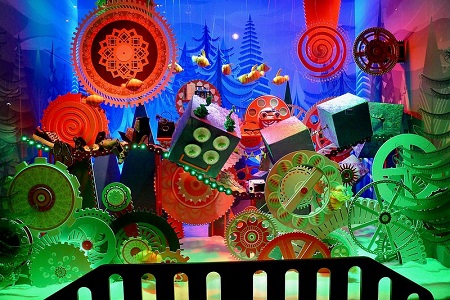
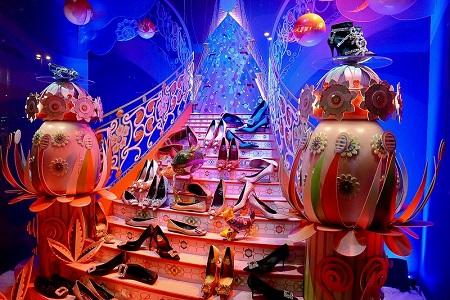
As one ventures into Galeries Lafayette, you are instantly transported into a magical, mystical and mysterious world through their window display design. The Parisian store utilizes interactive window displays and moving figures to attract the attention of passersby. The combination of eye-catching colors and hypnotic patterns enchants you into entering the fictional world that Galeries Lafayette has created. Elements of high fashion are incorporated to enrich the visuals of their window displays, also reminding you of the plethora of designer goods they have to offer.
Barneys, New York: “Make Change”, “Change Matters”
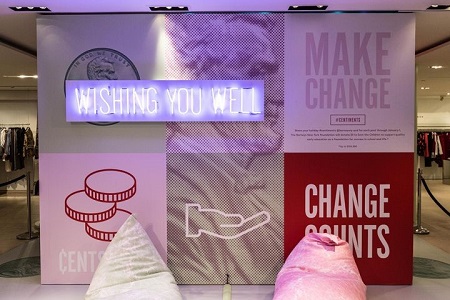
“’Tis the season of giving”, at Barneys and they are giving back. Matthew Mazzucca, Creative Director, explains their ideas and inspiration for this season’s in-store display design, "By starting with the concept of a coin, which can seem small in the luxury world, we've created engaging experiences that show that small changes can make a big difference, and invite our customers to participate in the power of change." In partnership with Save the Children, Barneys' color scheme appeals to the younger consumer as millennial pink and neon signs take center-stage for the in-store display design. Many Instagram-worthy spots are also located throughout the store including their window displays, which also creates more opportunities for social media exposure. To go along with their campaign they are promoting the hashtags, #centsational, and #makechange.
Parkview Green, Beijing: Holographic Christmas
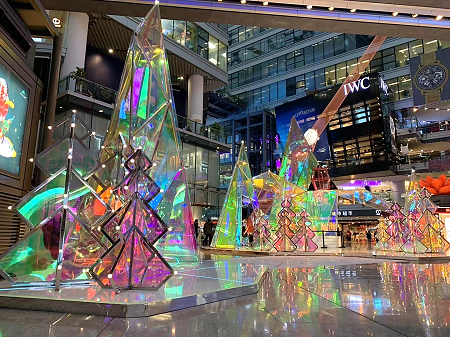
Back in Beijing, Parkview Green also puts their very own spin on Christmas this year through their in-store display design. Holographic trees lined with metal frames adorned with warm lights on display add an instant pop of color into the space. The use of holographic material reflects light and catches different colors, creating a multi-dimensional feel.
Christmas marks the ending of December and 2018. Since then we’ve taken a trip around the world in this article, so what’s in store for you this holiday?
back to top of page

Visual Identity Design for SwissCham Night 2018
December 19, 2018
On Friday December 7th 2018, the Swiss Chamber of Commerce held their annual Christmas party at the Hilton Hotel, Beijing. 5 Star Plus Retail Design provided the overall visual identity design for the party. To add to the festive cheer, a few booths were also set up to resemble a Christmas market, two of which were designed by 5 Star Plus. Framed with Christmas wreaths and ornaments, these spaces hosted the nights’ lucky draw and promotion of various companies and products.
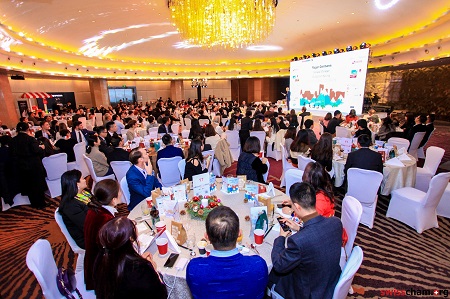
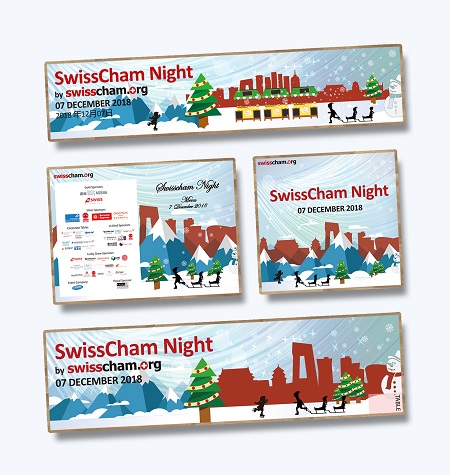
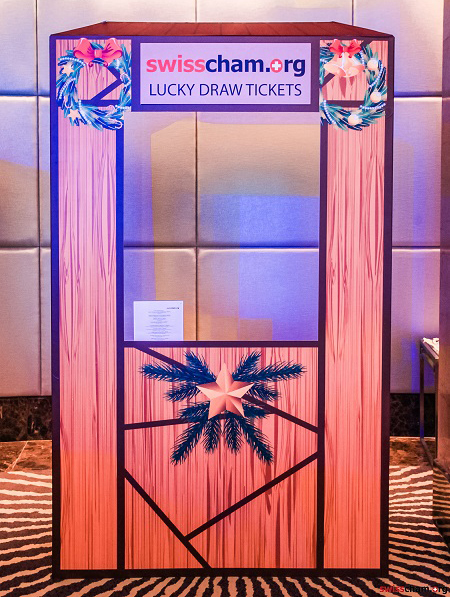
The screen situated center-stage displayed our design of subtle falling snow, which instantly whisked everyone into a winter wonderland, whilst the iconic Swiss Alps and historic Beijing architecture in the background served as a gentle reminder of the merger between these two countries. Other than visual identity design, 5 Star Plus was also responsible for designing the menus for the night and invitations distributed prior to the event, incorporating similar elements into the design.
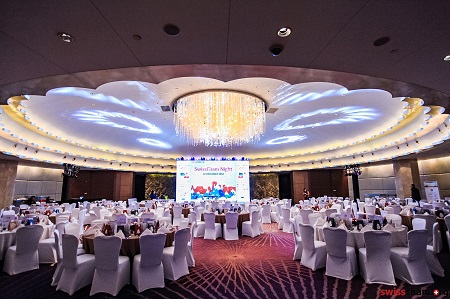
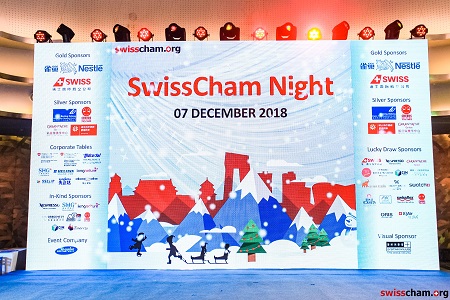
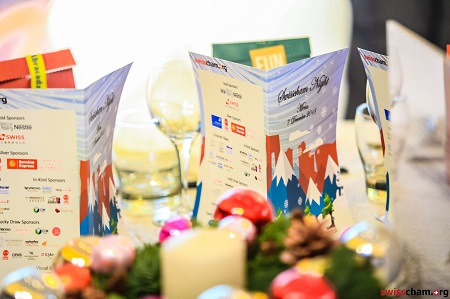
As another year of successful festivities come to an end, 5 Star Plus is honored to be design partners once again with the Swiss Chamber of Commerce in Beijing. We hereby also wish everyone at the Chamber and valuable guests a Merry Christmas and Happy New Year.
> back to top of page

British Chamber of Commerce in China Christmas Party 2018:Event Design and Production
December 17, 2018
The British Chamber of Commerce for China hosted their annual Christmas Party which took place on Friday, December 7th. For the third year in a row, 5 Star Plus Retail Design was the visual sponsor and design partner for the event, providing the interior and graphic design, event design concept, and event production for the party. In addition, we hosted a corporate table to celebrate the holiday festivities with a few company friends to 5 Star Plus Retail Design.
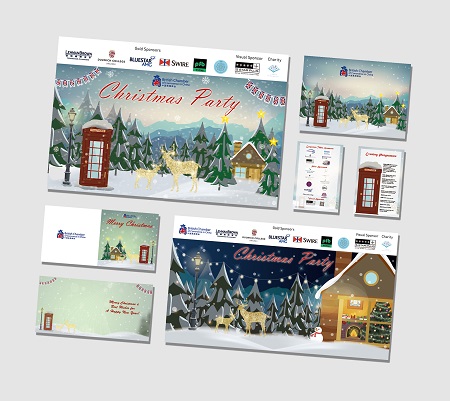
This year’s theme was “Christmas Forest.” The goal of the theme was to transport guests into the outside winter wonderland through the visual and event design. The main entry way of the hall was decorated in a whimsical woodsy theme that featured an eye-catching backdrop, dynamic lighting and other whimsical decorations to create great photo opportunities for a memorable night.
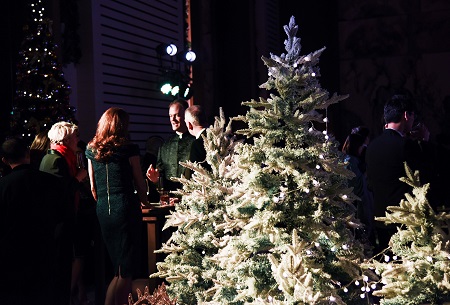


The inside of the venue created a warmer feeling through the use of string lights and stockings, as well as, a background that displayed a peek into the warm house with Christmas decorations all around. The edges of the venue had a gingerbread house decorated with fairy lights and featured a gingerbread man photo board to add some playfulness to the space, which also provided an interesting interaction and joyful experience for guests. The event design truly gave guests the feeling of being in a Christmas forest.
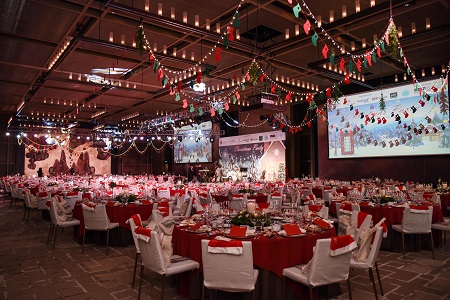
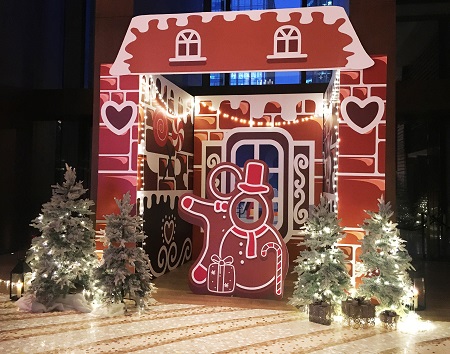
This year’s party was definitely a grand success and we were happy to see everyone enjoy the festivities and celebrate with holiday cheer. We at 5 Star Plus Retail Design wish our friends at the British Chamber China a very merry Christmas and wish them the best of luck in the New Year.
> back to top of page


New Retail New Design: 5 Star Plus’ Insights at SME Seminar Shanghai
November 29, 2018
The SME Seminar was hosted on November 23, 2018 and was organized by the Swiss Chamber in collaboration with Swiss Centers Shanghai, Australian Chamber, Finnish Business Council, and Canadian Chamber. The event focused on a variety of topics related to retail including: WeChat, trading, human resources and new retail design strategy. Guests in attendance ranged from a variety of foreign SME companies looking to gain insight and learn more about these topics.
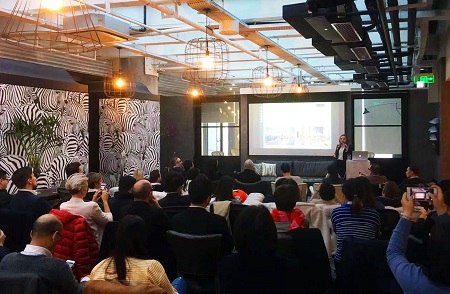
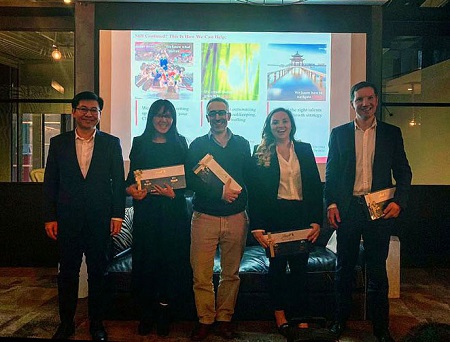
There were a total of four speakers at the event each of which specialized in their chosen topic. Each speaker also provided case studies of former clients and other businesses utilizing the strategies they were speaking on. Lucky Ding gave her talk on free trade zones, educating the audience on implementation methods for distribution to and from China. Ahmet Tombul examined the changing WeChat ecosystem and provided insight on different strategies for starting a store utilizing WeChat mini-programs during his presentation. Lastly, Alexander Vnuk discussed the challenges and advantages of hiring local vs importing foreign talent. He also provided a new perspective on the general differences in China and what this means for effective management.
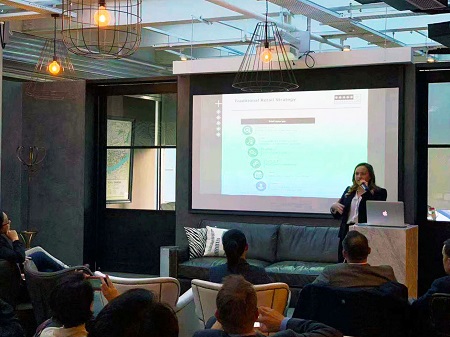
Samantha Chalmers, our Shanghai Client manager, shared some interesting insights on new retail strategy in the Chinese market and explained how this is shifting the way retailers are designing stores. Her talk focused on the role of brick and mortar stores in new retail strategy and identified how offline integration creates a stronger overall strategy for new retail. During her talk, she divulged into case studies of various stores who have successfully implemented new retail elements into the retail design of their stores. The main focus was to help the audience to realize that it is becoming a necessity for retailers to implement some form of technology that helps tie to their online channels, as well as provide a concrete timeline of this evolution in strategy through retail design and give a projection of future implementation. Overall, the seminar provided an excellent opportunity for business professionals to come together and learn about new strategies pertaining to retail.
> back to top of page

2018 British Business Awards: Event Production for British Chamber
November 27, 2018
The 2018 British Business Awards is a biennial event, organized by the British Chamber of Commerce Beijing to honour outstanding British businesses performing well within China. The event also recognizes women who have created a positive impact in both China and England whilst doing business. In addition to this, companies who have contributed positively towards global sustainability, education and innovation were also acknowledged.
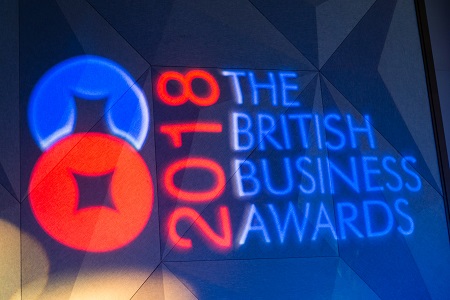
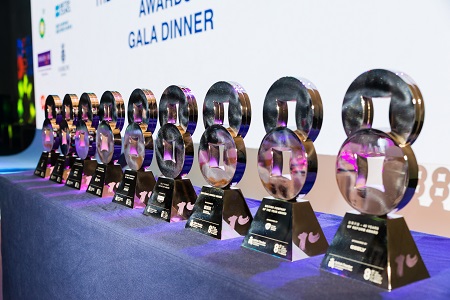
2018 marked the 10th year of celebrating this event. On November 15, 2018, the awards were hosted at the Intercontinental Hotel in Sanlitun. 300 guests representing a variety of British and Chinese companies from different industries gathered to celebrate the event. A total of 9 awards were presented to the finalists.
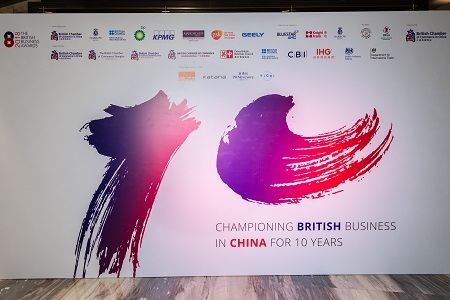
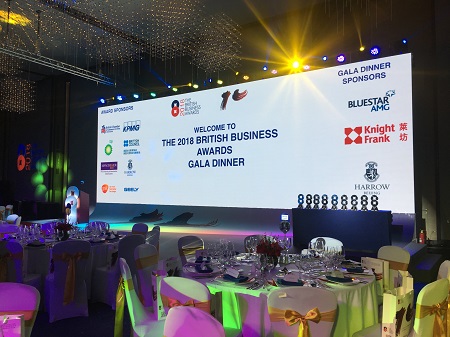
The event design of the space needed to provide guests a place to gather and take pictures. The red and blue colors which represent parts of both the British and Chinese flags, mixed together to create a purple tone in the logo for the event, which perfectly represents the intermix of these two cultures in the business environment of both China and England.
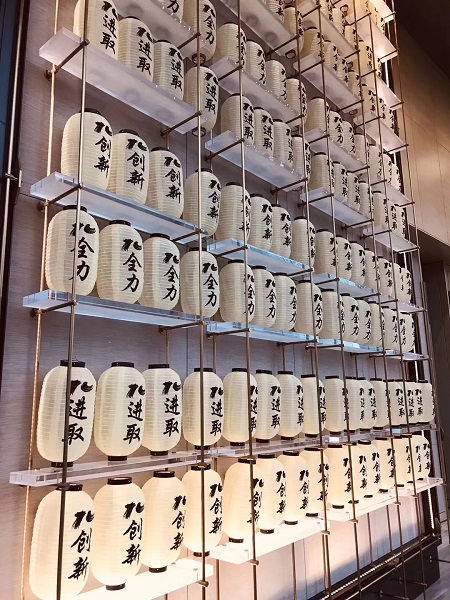
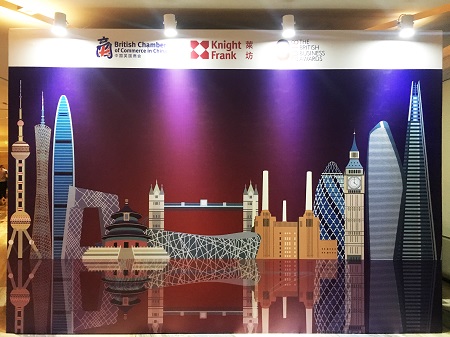
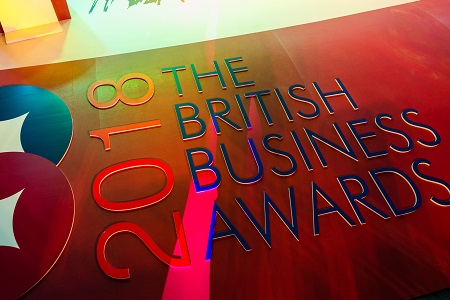
5 Star Plus Retail Design created a backdrop that tied together the famous skylines of London, Beijing, and Shanghai to symbolize the connectivity these two countries have in the world of business. In addition to this, the lighting and branded features of the venue were important considerations to create a dynamic effect for the event.
> back to top of page

The Perfect Fit: How Fitting Rooms Can Affect Sales in Retail
November 22, 2018
Why is it that you go to a fitting room when you are in a retail space? The answer is most likely that you found a piece of clothing you like and intend on making a purchase! Therefore, it is important to bear in mind that this small but mighty area of a retail store is actually the room where purchase decisions are made. Hence, it is the final barrier retailers need to overcome in order to increase sales.
Whilst two years ago, 5 Star Plus Retail Design already published an article regarding “The Importance of Fitting Room Design“ in a retail store, it appears that many retailers still tend to overlook the importance of fitting room design. Therefore, we have approached this topic once again with fresh ideas for retailers to take inspiration from.
How Fitting Rooms Affect Sales in Retail
Let‘s start with some numbers and hard facts. First and foremost, the fitting room area is one of the most significant advantages brick and mortar retailers have over online retailers. Whereas online, one in five shoppers return their purchased items, in brick and mortar retail less than one in ten customers return their items. Returns usually result in huge costs, therefore, any retailer should seek to prevent potential returns and an effective fitting room design can do just this.
Shoppers who use fitting rooms are actually seven times more likely to make a purchase. In addition to this, if the customer has had a good experience with a sales assistant in the fitting rooms, this can also lead to three times as many purchased items. Therefore, all in all, 70% of purchase decisions are made in the fitting room.
How Fitting Room Design Can Influence the Buying Decision
In our previous article, we emphasized the importance of size, color and lighting in fitting room design. With all of this in mind, we dug a little deeper this time, taking a closer look at how fitting rooms also represent the most intimate areas of a store. The fitting room is the area where shoppers take off their clothes, hoping to try on a new piece of clothing which makes them look, as well as feel good. However, it is not just the clothing that achieves this and this is where fitting room design comes into the picture.
To illustrate this using one simple example: think about that uncomfortable feeling you get when you feel too over or under-dressed for a certain occasion. Similarly, if a fitting room design fails to provide the shopper with a character and flare that matches the clothes, the same uncomfortable feeling can occur. It can lead the customer to feel as if something does not look right. This can result in the customer deciding to not make a purchase, hence causing a loss in sales instead of increasing them.
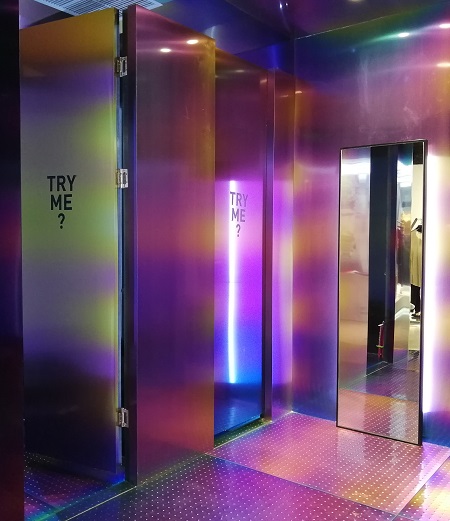
How to Create the Perfect Fit with Retail Design
Let us look at some great examples across the Retail Industry in China.
“INXX represents a forward-thinking, boundary-shattering exploration of how the genres of streetwear, sportswear and high-end fashion can be reconstructed, reinterpreted and recombined.“ Through this cool and futuristic fitting room design, the Chinese street-fashion brand not only encourages shoppers to try on their clothes but had also created an atmosphere which is towards their target market.
With design concepts such as these, it is no surprise that the brand has enjoyed continued success over the years. INXX was founded in Guangzhou in 2013 and less than 5 years later, they have opened 54 stores in 17 cities in China, proving themselves to be a brand we can all learn from.
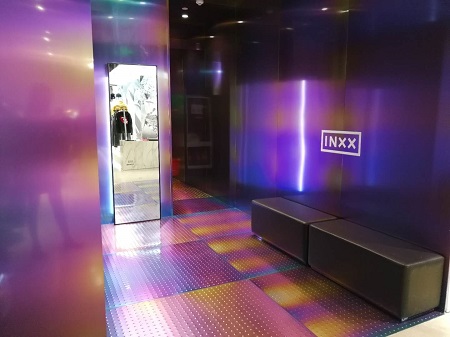
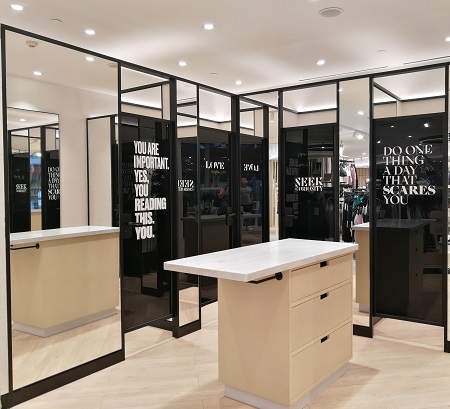
"Lululemon Store: Parkview Green Beijing"
Image Source: 5 Star Plus Retail Design
Lululemon is a Canadian brand that sells fashionable and high-quality yoga clothing. One of the brand’s core values is mindfulness. The brand describes its mission as the following: “Our manifesto is one way we share our culture with the community. It’s an evolving collection of bold thoughts that allow for some real conversations to take place.” Lululemon cleverly utilizes the fitting room area as a platform to express some of these bold thoughts through its design. Positive affirmations, which are frequently used in yoga, are integrated in the fitting room design, illustrating how fitting room areas can also represent fundamental brand values. Therefore, when adopting slogans and other words within the design of your fitting rooms, retailers should be sure to choose the “perfect fit.”
As previously mentioned, fitting rooms are a significant advantage for brick and mortar stores. However, some brands who mainly sell online have also begun recognizing this, finding effective ways to utilize this feature. JOOOS has combined these two elements together, by providing the Top 100 Fashion Brands in Tmall’s sales list with the retail space to showcase their products. This example highlights the importance of fitting rooms.
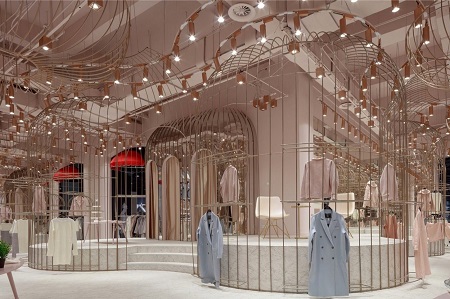
"JOOOS Fitting Room in Hangzhou"
The design of the fitting room area is interesting because it is located in the center of the retail space. Additionally, the exclusivity of the products is highlighted by the small staircase, as you have to physically walk up to get to the fitting room. Thus, one certainly does feel special when trying on a coat in this fitting room area.
> back to top of page


Creating Customer Engagement through Window Design
October 26, 2018
Introduction
Window displays are a crucial part of a retail store. They are the first opportunity to show the customer your brand story. They also serve as an attention getter, grabbing the customer in and drawing them into the store to see more, experience the brand story for themselves, and purchase products.
A good window display will feature key elements that answer the following three questions from the perspective of the passerby:
- What do you want me to look at?
- Where do you want me to look first?
- How can you draw me closer?
In the ever growing digital age, the main competitor of window displays are smartphones. It can be challenging for a window display to grasp the attention of a potential customer who is walking by paying close attention to their digital device. It is for this reason that window display design has shifted towards the integration of LED screens and audio sound. An eye catching movement from the corner of the eye, paired with a catchy tune are the exact formula to draw the attention away from a customer’s smartphone for just enough time to show them a brief moment of your brand’s story. Close to 25% of a retail store’s customers stem from an enticing window design display. Apart from showing loyal and potential customers your brand story, LED screens also provide the opportunity to communicate how a product works.
LED Screens
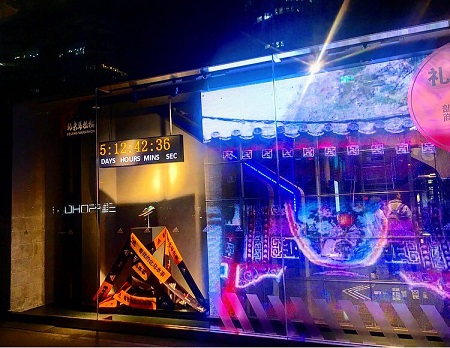
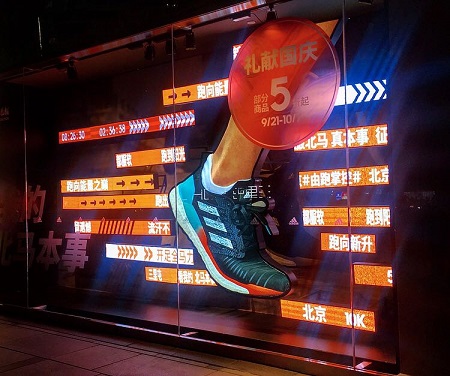
The window display above for the Adidas flagship store in Beijing features videos of runners putting on shoes and using them to train for an upcoming race. Beside the LED screen is the countdown clock for the race. The marketing within the store was also meant to excite customers about an upcoming race in Beijing. The neighboring window display design featured dynamic LED mini screens in which arrows moved from left to right in a fluid motion drawing attention to the featured trainers.
Dynamic ceiling-to-floor LED screens are another way to draw attention to the retail store and its products. This Gucci store in Milan uses a ceiling-to-floor LED column that features a video of models wearing their clothes. The columns are used in the window display design as well as the main entrance to create a dynamic and immersive experience for customers.
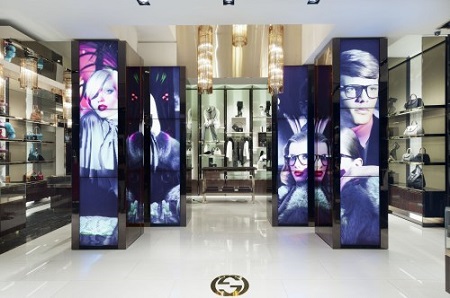
Dynamic Lighting
Keeping window display design to a minimal by limiting the number of products within the display, paired with dynamic lighting to pinpoint these products can also serve as an eye-catching way to draw the consumer’s attention to a window display. This Saint Laurent store located in Shanghai uses dynamic ceiling-to-floor lighting behind their products to highlight and draw attention to their latest coat selection in their window display design.
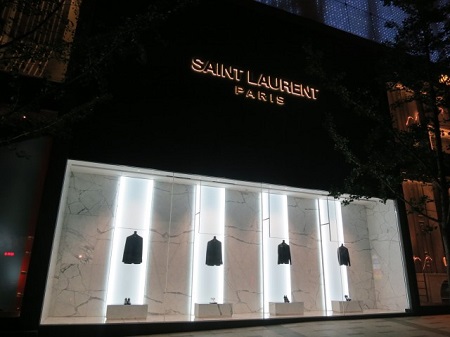
Combining Features
Many stores utilize a combination of the above examples, combining dynamic lighting, LED screens and other features into the window display design. This eye-catching window display design for GAP features mannequins in a dynamic box framed lighting to draw attention to the products being displayed within the box. Another unique feature about this window display design is the incorporation of ‘whispering speakers’ that project an attention grabbing sound to the street, turning the heads of the passersby to see where the sound came from.
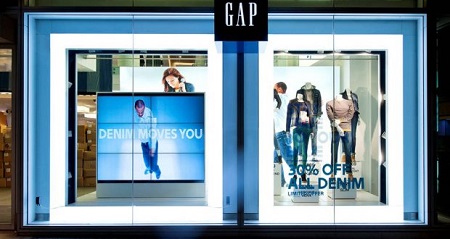
This Victoria Secret store in Hangzhou features an LED screen that plays their yearly fashion show. Dynamic lighting in the company’s branding draws the passerby’s eye towards the LED screen, creating excitement for them to enter the store to explore the products in person.
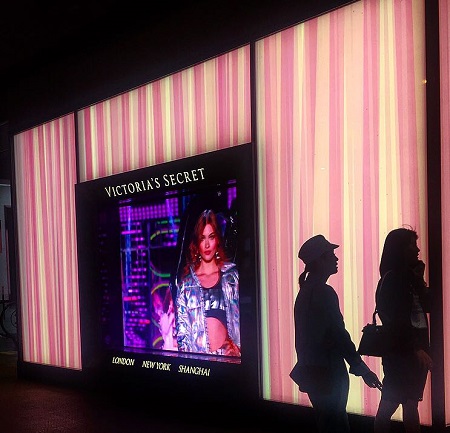
Creating Interaction
Creating customer interaction is another way to engage potential customers before entering the store. Kiosks are placed nearby the window display that can capture a picture of the customer and allow them to mix and match different products on a virtual mannequin of themselves. This window display design for the Ralph Lauren flagship store in New York, featured an LED screen in which customers could mix and match different tie patterns on a shirt color of their choosing. Once they found the tie they wanted, they were sent a link on their mobile device which allowed them to purchase the product immediately.
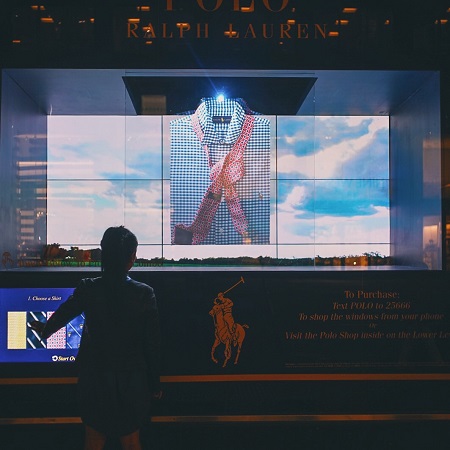
Overall window display design is evolving into an interactive, and technological displays to grasp the attention of the passerby and draw them into the retail stores. The use of LED screens helps to show a customer a glimpse of the brand story, as well as, products in motion. Moving images and video have shown to increase the retention of the individual and peak their interest. Dynamic lighting is another way to draw the eye to the featured objects in a window display, and also add to the brand story of the retail store. Creating an interactive aspect in the window display allow the individual to interact and learn about products before entering into the store making them more likely to actually purchase a product. Overall, the advancement of window display design has led to more creative ways of achieving customer interaction.
> back to top of page

5 Star Plus at Best of British (BOB) Exhibition in Shanghai
October 22, 2018
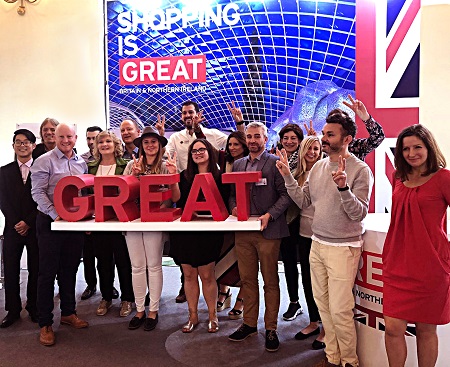
Retail design agency 5 Star Plus acted as the proud event partner with the China-Britain Business Council (CBBC) and Department for International Trade (DIT) Southeast at the Best of British Brands (BOB) Exhibition in Shanghai. Hosting a variety of British companies across multiple sectors looking to grow and create a stronger presence in the Chinese retail market, the event was organized by Media 10 Limited and took place October 18-21.
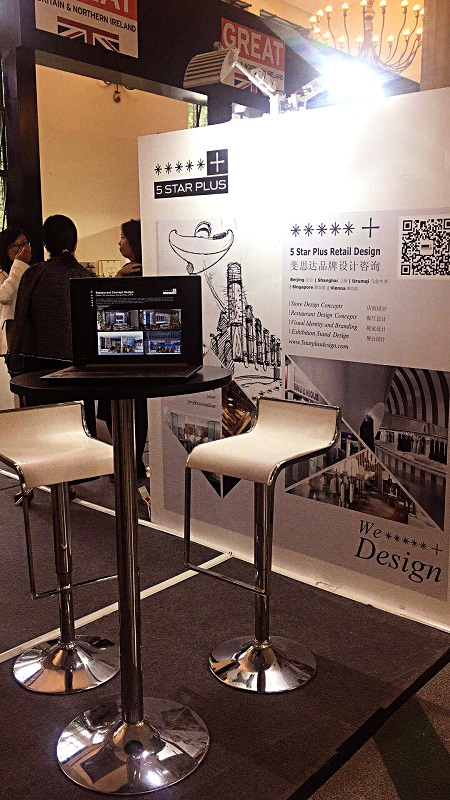
5 Star Plus created a clean and simple exhibition stand design that held true to DIT branding. At the center part of the stand, a reception and community area created an opportunity for guests to learn more about DIT, CBBC, and 5 Star Plus Retail Design. A stunning image of a shopping mall in Leeds England that tied into the branding for CBBC was placed at the back part of the stand to set the tone of what these brands could represent in China. Having an open concept design allowed visitors to flow easily from one booth to the next as they explored what these brands had to offer. The exhibition stand hosted 10 different companies, all looking for potential partners and exposure in China. These companies ranged from clothing and apparel, cosmetics, household goods, and food and beverage. To catch the eye of the passerby, each company in the stand had a booth that featured a full length poster wall.
Companies within the stand included: Boggle Mints, SteakStones, Studio 10, Christys’, Heyland &Whittle, The Workers Club, HMS Spirits, OMS, Earthy Timber, and Wild Nutrition. The exhibition also featured other notable retail brands including Ted Baker, Bentley, and Dyson. Throughout the exhibition various live events including cooking demonstrations, fashion shows, music, and films took place in different parts of the exhibition center. Overall, the event opened many doors for the British businesses who participated. Being crucial for building brand awareness and the right image, the design of the exhibition stand was well received by both retail brands and visitors.
> back to top of page

5 Star Plus Projects Receive Excellent Design Awards at WWSE 2018
September 28, 2018

This year’s World Winter Sports Beijing Expo (WWSE2018) began last week with Austria participating as the “Guest of Honour Country” for the first time. The event ran from September 19-22 at Beijing’s CNCC and we are delighted to announce that two 5 Star Plus Retail Design projects received design awards at the event.
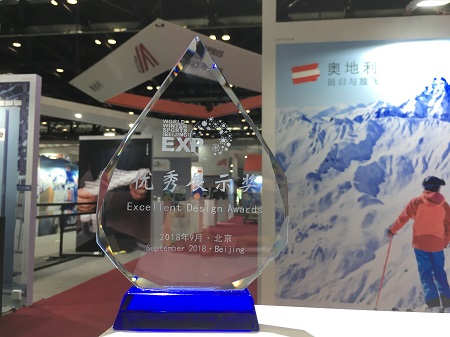
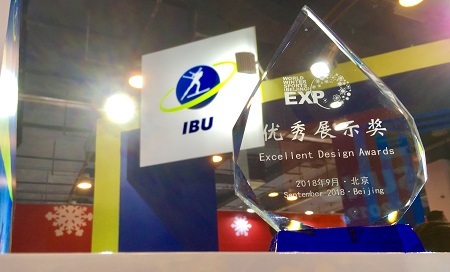
The two projects, International Biathlon Union (IBU) and the Austrian pavilion received special recognition for excellent design and we feel extremely fortunate to have had the opportunity to contribute to the event, especially in the run up to the Olympic Winter Games 2022.
The Olympic Winter Games 2022 has fuelled an enthusiasm for ice and snow sports in China. Hence, with Austrian athletes and companies leading the winter sports industry, Austria had a particularly important role to play at this year’s expo and was the largest pavilion at the event.
ADVANTAGE Austria provided a platform for 26 Austrian winter sports exhibitors and 5 Star Plus were proud to have been a part of Austria’s glowing contribution to the expo, as our team designed a space covering 564 sqm of the exhibition stand.
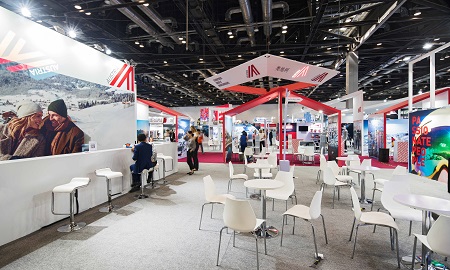
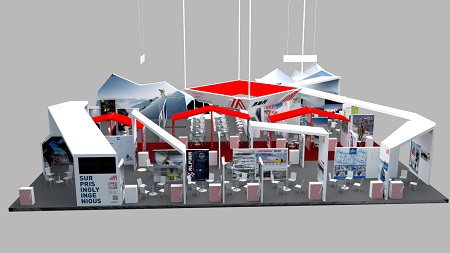
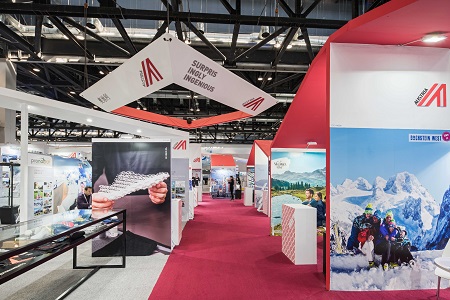
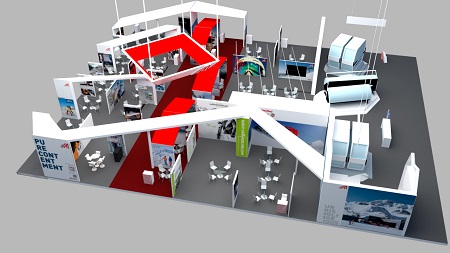
Our other project IBU covered 108 sqm, with 7 exhibitors hoping to introduce the Biathlon sport to China. Amongst these were not only companies exhibiting Biathlon sports gear, but the International Biathlon Union also sought to promote the sport as a whole, bringing knowledge and understanding to those who may not be familiar with the sport.
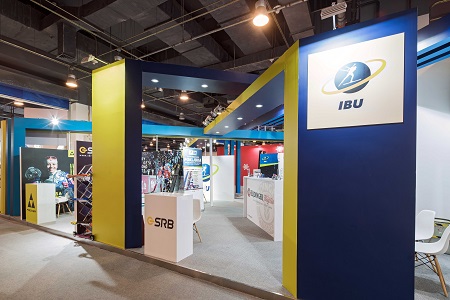
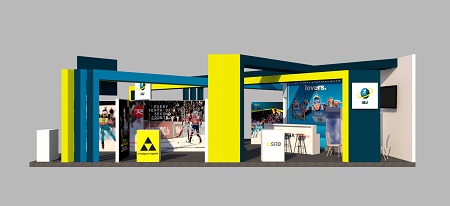
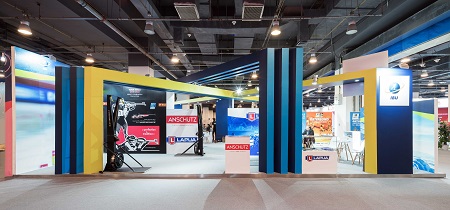
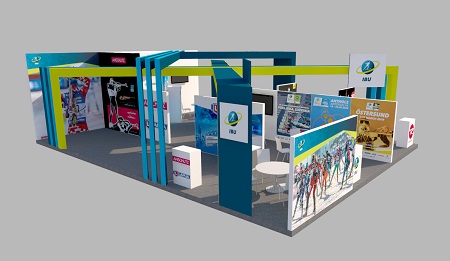
Therefore, the WWSE2018 was a great chance for different countries and exhibitors to come together to reinforce their presence in China’s winter sports industry, as well as celebrate winter sports as a whole.
We at 5 Star Plus Retail Design have thoroughly enjoyed contributing to this celebration of winter sports and hope to achieve continued success in our future design projects.
> back to top of page

The Power of Illusion in Retail Design
September 26, 2018
Have you ever wondered why certain shapes and patterns are more eye-catching and draw you in instantly? According to Michael Bach, a visual scientist and professor of neurobiophysics, an illusion is "a mismatch between the immediate visual impression and the actual properties of an object.” The brain is always constructing things, therefore, when sometimes our subjective perception doesn't match the physical reality of what is presented, we as human beings are naturally intrigued by the phenomenon. Consequently, the way in which our brain interprets an image can also have a real impact on whether we find it to be appealing as a consumer. Therefore, it is important to consider how this can also be incorporated within retail design in order to enhance your visual appeal to potential customers.
This article will take a closer look into how illusions can be used within retail design and innovative ways retailers have utilised this feature.
Hello Miss Rong
The Hello Miss Rong restaurant in Guangzhou, designed by Infinity Nide uses illusions effectively through the use of colourful, electroplated stainless steel to create a microscopic/X-ray effect within the retail design.
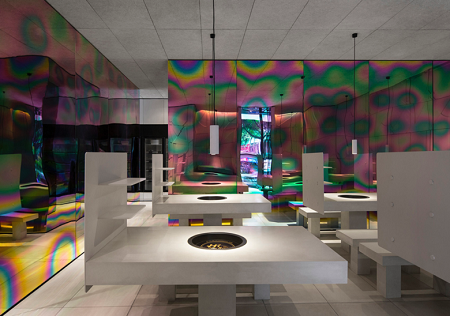
"Hello Miss Rong restaurant by Infinity Nide"
The shapes and colours on the steel walls is in contrast with the rest of the restaurant which features predominantly white, minimalist, simple block shapes. The juxtaposition between the two design strategies has been utilised effectively so to allow more attention on the illusions and patterns in the retail design. Therefore, what Infinity Nide has managed to create is a display that is not only eye-catching to potential customers but also futuristic, as the distorted shapes alongside the metallic finish gives off an impression that is almost other worldly.
Thin Thin Thin installation in UNIQLO
The Thin Thin Thin window installation at UNIQLO in Tokyo showcases the use of illusions within visual merchandising at its finest. What makes the installation so aesthetically interesting is the fact that designer Emmanuel Moureaux has been able to construct an illusion of grandeur by giving the impression of a completely symmetrical display. This has been achieved through the simple use of mirror panels which have been cleverly placed at the top of the bottom box.
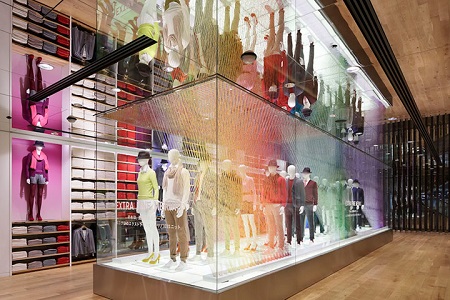
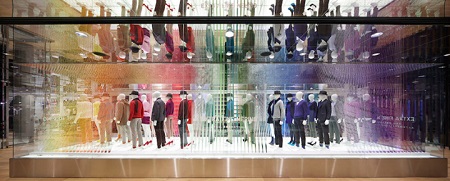
"Thin Thin Thin installation at UNIQLO by Emmanuelle Moureaux"
The mannequins in the top section appear as though they are hanging directly from the ceiling, adding another dimension to the window display which is in perfect symmetry with those on the bottom. The concept and every single detail within the installation seems to have been well thought out in order to achieve this grand illusion, as even the gradient of colour running throughout the display has been carefully constructed through the use of thin woollen threads. The different lengths and colours, as well as the texture of the threading all blend together seamlessly to create this extra layer which brightens up the whole display and gives the perfect finish to the piece.
ONE Teahouse
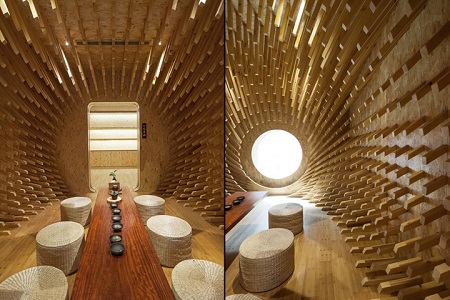
"ONE teahouse by Minax Architects, Shanghai – China"
Shanghai’s ONE Teahouse designed by Minax Architects epitomises the successful use of optical illusion within retail design. Through the positioning of 999 wooden sticks, a spiral effect has been created which encompasses the whole room to create an egg shape. This provides a certain shock factor for customers entering the tearoom, especially as circular shapes are not typical of most retail design spaces. As well as this, the optical illusion within the layout can also play with your imagination. The walls may be seen to be physically moving and spiralling when you are stood amongst it, however, in reality, it is the layering of the wooden sticks creating this illusion.
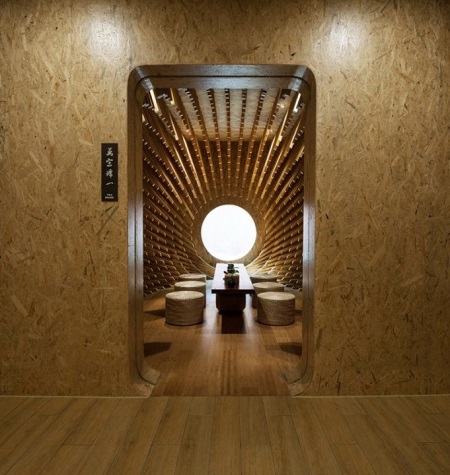
"ONE teahouse by Minax Architects, Shanghai – China"
The power of illusion is also reflected in the outer design of the teahouse which features a rectangular door frame which appears to blend in with the inner store design. This provides an additional layer to the optical illusion, as solely based upon the outer design the teahouse appears to be a rectangular shape. However once you step inside, the circular design and spiral effect becomes evident. Therefore, ONE Teahouse’s unique design can not only generate customer intrigue but also provides a unique customer experience due to the unexpected nature of the retail design.
Molton Brown Vetiver & Grapefruit Marketing Campaign
Alternatively, Molton Brown uses illusions in a different way, by incorporating optical illusions as part of their brand design to mark the launch of their Vetiver & Grapefruit fragrance collection. Placed in shopping centres across the UK, the display features anamorphic art to create clever 3D optical illusions of their new products. The marketing campaign under the title ‘Build the Tension’ was intended to reflect the contrasting flavours in the new range and this theme has also been conveyed through the positioning of the 3D illusions, with the products appearing to fall on top of each other.
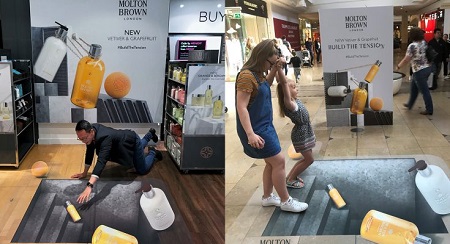
" MOLTON BROWN LAUNCHES NEW FRAGRANCE COLLECTION "
Customers are also encouraged to get involved with the campaign, as there are footprints on the 3D flooring to invite people to share their photos on social media to win prices. This interactive element can enhance customer experiences as they are able to engage with the brand directly by posing playfully next to the products. Furthermore, what is perhaps most notable about this campaign is the fact that through the use of 3D optical illusions Molton Brown have managed to bring their brand message to life physically.
Conclusion
In conclusion, taking a closer look at the concept of illusions, how they work and why they are aesthetically appealing can offer a unique take on retail design which can both generate customer fascination as well as provide them with a memorable experience. Stated above are just a few examples of the various ways in which illusions can be used effectively for other retailers to take inspiration from in their own retail design.
> back to top of page

“New Retail, New Design”—5 Star Plus’ Insights at CBBC London
September 24, 2018
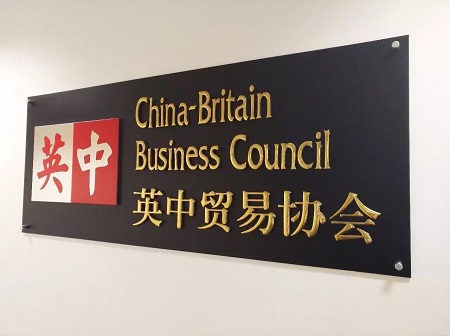
The China-Britain Business Council (CBBC) hosted an event on August 30, 2018 in London focusing on developments within China’s retail landscape. Some significant British retail brands in attendance included Dr. Martens, The Body Shop, Je Joue and Dartington Crystal. 5 Star Plus’ Managing Director and retail industry expert Barbara Seidelmann delivered valuable insights on this topic, as well as how to incorporate these developments into the retail design of brick & mortar stores.
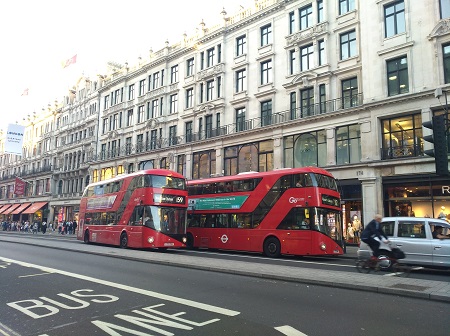
She started by discussing the changing needs of Chinese consumers and the influence this will have on major industries including, but not limited to, toys, sporting apparel, and cosmetics. She then examines the online-to-offline model strategy and the role this will play in future retail design. A major point she focused on was the increasing need for technological integration within store design and its increasing capabilities in terms of shopping functionality for consumers. Overall, it is important to realize that the direction of retail in the Chinese market will not end online or offline. Rather, both will form a cohesive omni-channel experience, utilizing online channels to attract customers into brick & mortar stores and vice versa. Keeping in mind these trends in order to implement new retail design strategies is crucial to the continued success and sustainability of retail brands in the Chinese market.
> back to top of page

How to Incorporate Storytelling into Your Retail Design
August 28, 2018
Have you ever wondered why brand storytelling is such a crucial element in retail marketing and store design nowadays? Do you find it difficult trying to relay your brand identity through the design of your retail space? If you have asked yourself these questions, this article will provide you with some much needed answers. Together we will delve into the essence of brand storytelling. Then we will explore how storytelling can influence one’s retail design, and more practically, how it can be integrated into the retail design of your storefront.
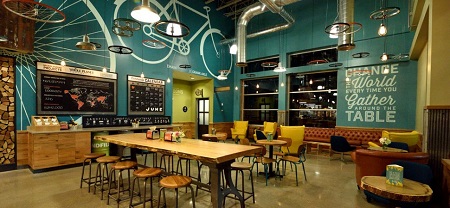
"3 Ways Whole Foods Is Using Design to Appeal To Millennials"
Image Source: INC
First, we need to define the concept of storytelling in the context of consumer markets. Storytelling engages an audience through either fictional or non-fictional content. The content can relay a particular lesson or it can simply be told for entertainment purposes. Either way, it is a useful tool for providing meaning in the vast aspects of our intricate lives. In this sense, many brands today utilize storytelling as a central marketing technique. Brands engage their customers with storytelling because it creates transparency of the values upon which the company was founded on and is driven by. Storytelling not only makes it easy to express a retailer’s vision, but it gives a clearer picture of what the brand stands for. In turn, this clarity makes it easier for the brand to connect with like-minded customers. Historically, Chinese consumers preferred products that fulfilled perceptions of esteem or advanced their progression in social hierarchies. However, in today’s Chinese market, there is a growing trend towards products that enhance their lives with an emphasis on personal growth. Consumers want brands that embody similar principles, goals, and personality traits to offer them authentic, customized shopping experiences that are memorable. Storytelling personifies your brand in a transparent manner to ultimately establish loyal relationships with your customers and community.
Now that we have determined the what and the why of brand storytelling, we need to answer the question of how: How do you author a genuine and compelling story?
Step 1: Self-assessment. Understand why and how your brand came to be. Why did you decide to start up or work for the company behind your brand? What motivates you and your colleagues to get up every day and work towards organizational success? Use the answers to these questions as the backbone of your brand origins.
Step 2: Value-judgement. Your story will be most valuable to the people who relate to you the most. Utilize your brand values to portray a distinct lifestyle that you, your employees and your customers adhere and aspire to. This helps identify who your target audience is. Do not strive to be everything to everyone.
Step 3: Communication. Use your origins story to relay the worth of your brand to your consumers. Whether it be reminding loyal ones or convincing potential ones to hop on your bandwagon, show these customers how their lives will be enhanced. Your message should be steadfastly purposeful, elegantly simple, predominantly visual, yet emotionally moving.
Step 4: Consistency. Now, communicate your story across all of your channels. The operative word for this step is consistency—keeping everything from your brand’s tone of voice to formatting style the same no matter where your customer interactions take place.
This simple, four-step approach to brand story development can go a long way. It is important to remember that your story needs to be told in a way that is organic, transparent, and humanizing.
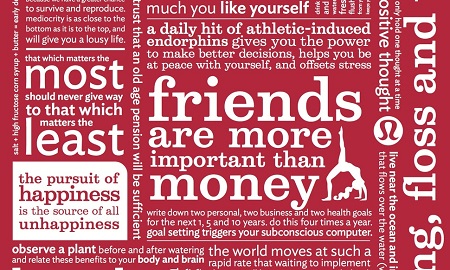
"9 Ridiculous Life Lessons Lululemon Is Trying To Teach Us, Including ‘Don’t Wear Sunscreen’ "
Image Source: Bustle
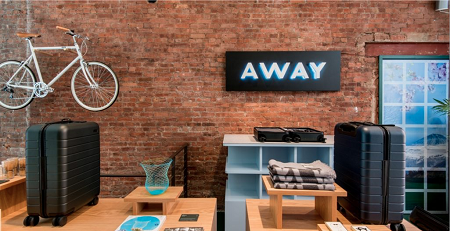
"Retail Report: A Look at Away’s Pop Up Shop in NYC"
Incorporating your brand story into the retail design of your store can be challenging because, like maintaining consistency across all channels, your brand story needs to be an all-encompassing theme. But if done right, a flagship or concept store can be the most effective channel for communicating the lifestyle you represent. The first kind of people any retail store can make an impression on is the passerby. So you need to put a lot of thought into logo signage and window display. Make sure the logo has a bold color choice and unique font that match the brand identity. Keep a consistent voice and tone for any written content and be sparing with it, as brand storytelling is more effective through visualization. Take advantage of technological advancements in your window display. Wide LED screens allow for video play or image slideshows that unleash your brand’s heart—bonus points for interactive capabilities. For example, as an activewear retailer, showcase motivational stories of real people who power through adversity to champion physical feats. That said, activewear brands like Under Armour and Lululemon differentiate themselves from each other by embodying disparate core values, and writing their individual stories accordingly.
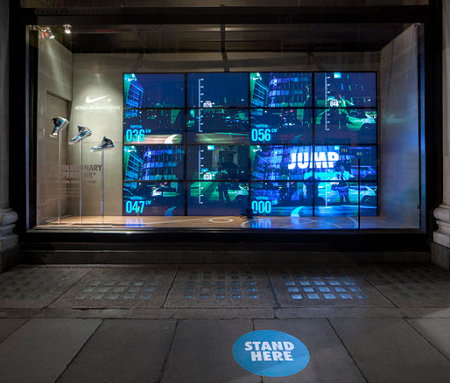
"Nike Kinect Interactive Window Display by Staat"
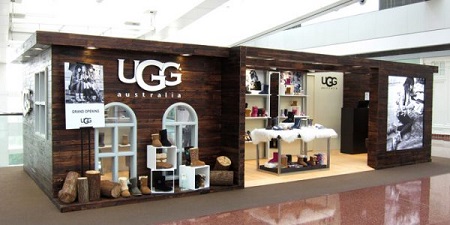
"17 [+5] Marketing Techniques to Launch Your Clothing Label"
Once customers are inside your store, they are no longer passersby. In other words, they are now in your world. Therefore, everything about the retail design whether it be mapping out the traffic flow or stimulating the senses need to tie back into your brand story.
Sight. Consider the visuals and displays of your store design. Pick a color palette (one that is consistent with your logo) and stick to it. Remember that colors evoke certain emotions, so choose a color palette that best represents the feelings your brand story induces. If you are a children’s toy retailer for example, use yellows to promote playfulness and happiness and purples for encouraging imagination and creativity. Take note of how lighting plays into your visuals and displays. If your brand story is exciting and lively, use bright lighting. If it is passionate, use dynamic lighting. For luxury houseware brands with long family heritage consider the use of warm, intimate lighting to convey a sense of homeyness.
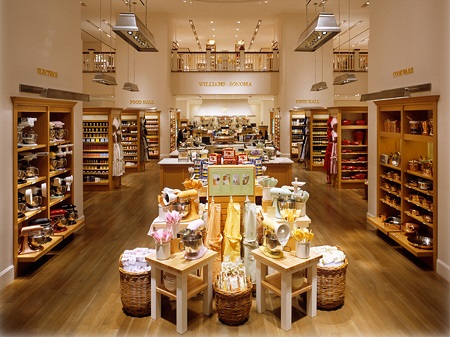
"Williams-Sonoma Time Warner Center"
Sound. Another method of communicating a brand story through retail design is with audio stimulation. Be it complementary to your video content or the store’s background music, any auditory element must correspond to whatever resonates with your target audience. Music, just like color, influences people’s moods. Moreover, it is an expression of one’s underlying character. Capture the essence of your audience’s personality and show them that you (the brand) are kindred because of your similar taste in music.
Scent. Scent also plays a significant role in your brand story. Again, similar to the aforementioned store attributes, smells can correlate to particular emotions and memories. But they also play subconscious psychological roles that can deepen the perception of your brand. A shared workspace, for example, could use hints of citrus and lemon to boost concentration, ultimately increasing productivity. A more general example is an outdoors store using piney, smoky, or oceanic fragrances to invoke feelings of nostalgia and serenity within nature-loving customers.
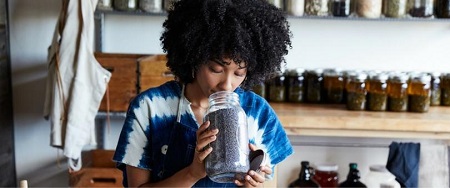
"The Science of Smell: How Retailers Can Use Scent Marketing to Influence Shoppers"
There are many more aspects of retail design where you can incorporate elements of your brand story. These examples along with step-by-step instructions to creating your own brand story should provide you with reasonable insight and guidance. Remember that brand storytelling is a highly effective engagement tool built on a strong sense of self-awareness and purpose. This will allow your audience to epitomize your brand’s values. Therein, the key to integrating it within retail design is to immerse your customers in every experiential aspect possible. At the heart of it, brand storytelling should begin with you, but each new chapter is carried on by your customer.
> back to top of page

3 Brands Whose Chinese Concept Stores Will Blow Your Mind
August 20, 2018
The phrase ‘concept store’ appears throughout the world of retail design and has become something of a buzz word lately. A lot of people misuse the term ‘concept store’ to refer to any form of store design, but a concept store is much more. Rather than a means to present products, concept stores are more like an art form, creating a narrative and focusing on the customer experience.
Retail design in China has presented a stage for some of the most interesting designs of concept stores throughout the world. Creating a unique aesthetic makes these retail stores desirable, often involving interactive elements to engage shoppers. Despite being the capital city, Beijing is not the only place to find exceptional design. Let’s take a look at three brands with inspirational retail design concepts in China.
Zhongshuge
Bookstore chain Zhongshuge has branches in different cities: Beijing, Chengdu, Yangzhou, Hangzhou and Shanghai. Their design has received global acclaim and has become a ‘must-see’ tourist destination thanks to the grand scale of their retail store design. Each store concept is different but still holds true to the brand identity. A few pictures of Zhongshuge Shanghai are shown below.
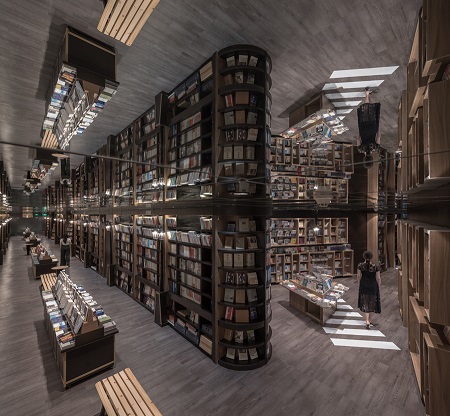
"A bookstore by X+Living in Shanghai draws shoppers into an urban retreat"
Image Source: Frame
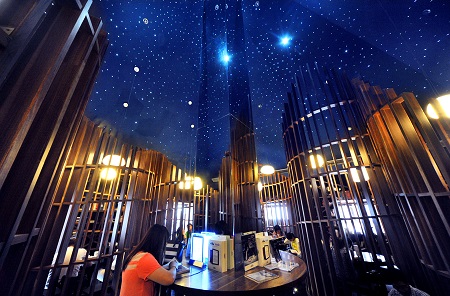
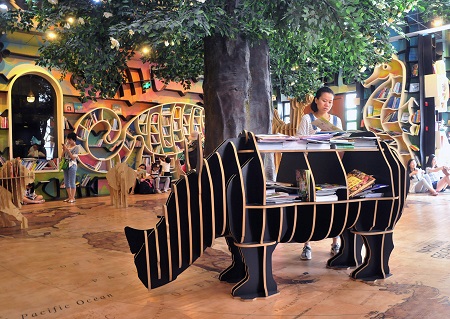
"The most beautiful bookstore' in Shanghai"
Nestled in the Songjiang district, Zhongshuge has transformed the retail space into a series of rooms that inspire playfulness. The store layout is full of angles, with hidden displays under stairs and around corners, nurturing discovery. The majority of ceilings are mirrored, creating a dizzying other-world effect one might find through the looking glass and encourages customers to remove themselves from day-to-day mundanity. The animal themed children’s section encourages exploration with a world map on the floor, allowing little ones to feel as if they were travelling great distances in a short amount of time – just like when reading a book.
Gentle Monster
Gentle Monster is a Korean eyewear brand with concept stores in China, Korea, the USA, Hong Kong and Singapore. Each concept store has a different theme exploring abstractions such as spiritualism, deification, exploration and salvation. Drawing on the monstrous element of their brand, Gentle Monster creates imaginative displays that could come alive at any moment. Each store display develops intrigue without explanation, allowing customers to imagine their own story. Playing on perspectives is a genius idea for an eyewear brand, drawing away from the products themselves and tying the brand with the imagination of creative visionaries.
Their retail design in Shanghai uses natural materials such as straw, soil and cotton which conjures images of primitive spirituality, blending the natural and unnatural worlds.
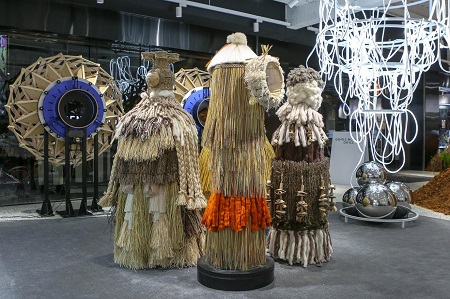
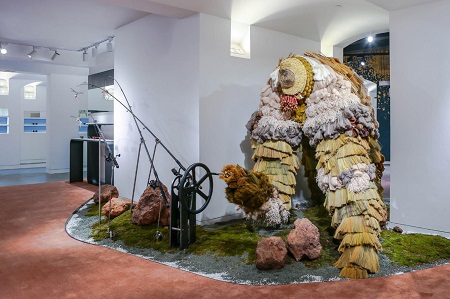
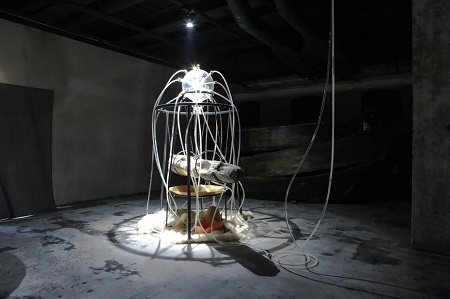
"Stores"
JOOOS
JOOOS is a designer department store in Hangzhou, China. In 2016, designers X+Living created four ‘JOOOS fitting-rooms’ that showcased the top 100 Tmall fashion brands in four collections: Mori Girl Collection, Celebrity Collection, OL Collection and Fashionable Girl Collection. For the store concept, a ‘fitting-room’ was created for each, showcasing the products in uniquely designed spaces. The store concept was to show the emptiness of buying online using open, empty spaces which naturally draw customers to the products and offer an alternative.
Despite the impersonal nature of online shopping, there are many additional services that make the experience fun and customizable. To imitate the aspects of the online shopping environment, the fitting-rooms had a large interactive screen outside which allowed customers to preview the products before entering the space. Each fitting-room environment was equipped with a make-up area, selfie area and rest area, creating an omni-channel experience that provided instant gratification through likes and comments on the customers’ social media.
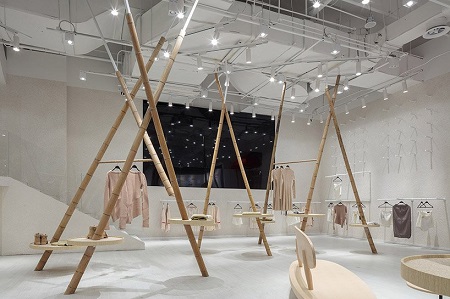
"X+living's fashion concept features four contrasting aesthetic identities"
The Mori Girl Collection used muted colors and minimal infrastructure, creating clothing racks from hemp rope strung between bamboo poles. The basic, understated retail design contrasts with the modern clothes design whilst creating a soft, natural environment.
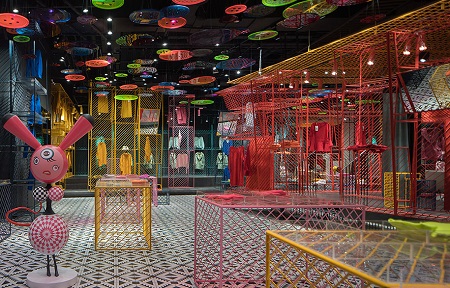
"This Retail Space for Designer Department Store, JOOOS is Super E-P-I-C"
The Fashionable Girl Collection was bold, with quirky elements such as neon buttons hanging from the ceiling and a patterned floor. The bright colors created a sense of fun and vibrancy.
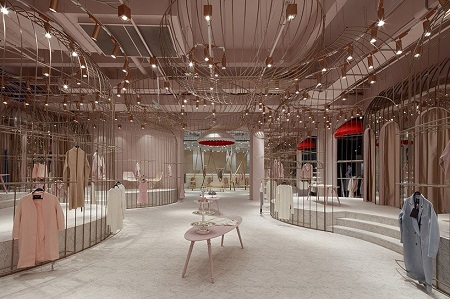
"X+living's fashion concept features four contrasting aesthetic identities"
The Celebrity Collection created an open space design based on birdcages. In Victorian times, beautiful birds were kept in cages such as those used in the retail store design so that they could be admired and adored. This delicate space created a Princess-themed environment in which customers could relax and feel like royalty.
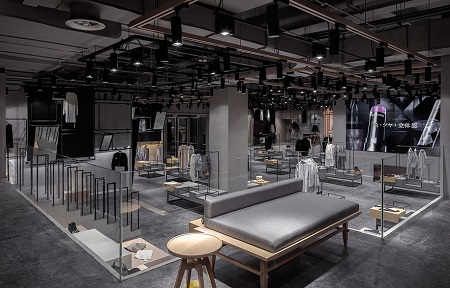
"This Retail Space for Designer Department Store, JOOOS is Super E-P-I-C"
The OL collection used concrete and muted colors to create a more refined and sophisticated store environment. The soft textures of the carpet and furnishings helped the space to remain feminine whilst still emphasizing functionality.
Summary
Whether creating retail design in Beijing, Shanghai or anywhere else in China, the aim should not be to show off products. The store concept should be based on abstract ideas that represent the brand and link to customers’ own identities and aspirations.
> back to top of page

5 Star Plus Design Confirmed to be the Assigned Design and Construction Partner for the Austrian Pavilion at the World Winter Sports Expo 2018
July 30, 2018
5 Star Plus Retail Design is proud to announce that we will be the assigned design and construction partner for the Austrian Pavilion at the World Winter Sports Expo 2018.
With the Olympic Winter Games taking place in Beijing in 2022, the World Winter Sports Expo was organized for the first time in 2016 with the target to bring winter sports closer to 300 Million Chinese people.

This year, Austria was selected to be the Major Guest of Honor of WWSE 2018 . Hosted by the Austrian Federal Economic Chamber, the Austrian Pavilion will feature some of Austria’s most successful companies associated to winter sports: AST, Fischer, Swarovski Optik, Wintersteiger, and Axess, among many others.
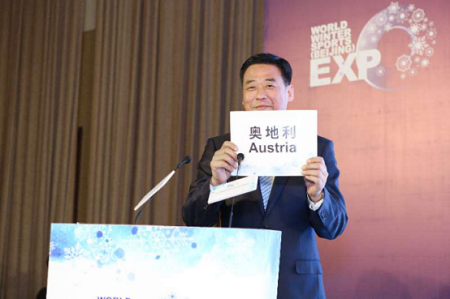

The pavilion design will also include a “tourism discovery street” with different tourism related organizations (for example, the Austrian National Tourism Office, Tirol, and many others).
Besides the Austrian Pavilion, 5 Star Plus Retail Design is also designing and building the exhibition stands for several other international exhibitors at WWSE 2018.
> back to top of page

The Future of Luxury Retail – New Digital Technologies
July 25, 2018
New digital technologies are transforming the future of luxury retail in China. The rise of m-commerce and major online retailers such as Amazon has meant that brick and mortar store designs are looking to evolve in order to remain competitive. New digital technologies such as blockchain, the internet of things, big data and virtual reality are finally being introduced to the luxury retail industry in China. Brick and mortar stores can and will survive. However, they will need to be creative and begin utilising these new technologies within their store designs if they wish to remain competitive.
Big Data
Big data is making its way into the luxury retail industry rapidly. Retailers want to personalise and better cater to their customers and the main way they can do this is through the use of big data. Algorithms are used to analyse big data; this then provides retailers with vital information on consumer preferences and trends. Furthermore, big data can tell retailers which individuals spend the most, what motivates them to buy more, how they behave, and the best way to reach these consumers. If retailers utilise this information they will be able to maximise their ability to stay relevant within their industry.

"Data Analytics: Challenges and Implementation"
Blockchain
Blockchain is most likely to be known due to its association with bitcoin. However, luxury retailers should begin considering using blockchain to increase efficiency and maximise their ability to compete against online retailers. The blockchain network can be used to reassure consumers about the quality of products they are buying. Furthermore, the encrypted ledger system which comes with blockchain can tackle the issue of counterfeit goods by creating a “digital passport” which shows all the steps within the supply chain. This reassurance is not only great for retailers but also consumers. Generation Z values authenticity more highly than ever before.
Furthermore, retailers can use blockchain to generate greater customer loyalty by incorporating blockchain into loyalty schemes, customers will be able to access their rewards immediately after receiving them. Blockchain is far more efficient at allocating these rewards as it will not have to go through a centralised system which can often take several days.
Chinese luxury retail fashion brand Babyghost have teamed up with BitSE and its blockchain project. They have started placing QR codes on the labels of their clothing which allows customers to verify the authenticity of their products.
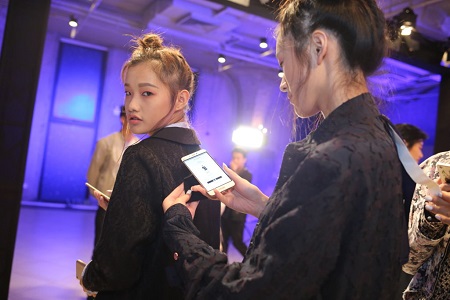
"Designer Brings Blockchain to Fashion"
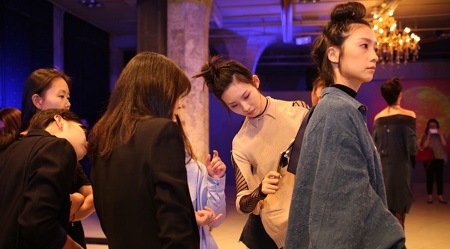
"Babyghost and Vechain: Fashion on the blockchain"
Internet of Things
The internet of things (IoT) has created an omnichannel shopping experience where online devices are capable of interacting with each other automatically. Luxury retailers need to begin thinking about implementing the IoT in their brick and mortar store designs. IoT can combine online and offline aspects to maximize customer experiences. Luxury retailers can send out vouchers and coupons to consumers in real time who live in close proximity. Moreover, it allows retailers to gather vital information which can be used to further expand customer loyalty and increase sales. Utilising IoT will allow retailers to effectively reach their desired target audience.
An example of this is the Hudson Bay Company who has integrated IoT into their brick and mortar store design to enhance consumers’ experiences. They have equipped 90 of their Canadian stores, and 50 Lord & Taylor locations in the US. As shoppers walk near these shops they are sent push notifications enticing customers with special offers or promotions.
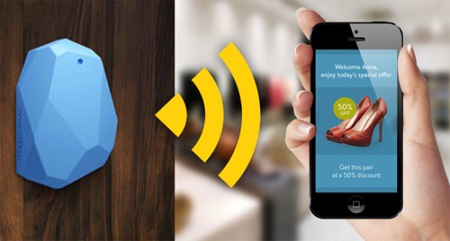
"12 Crucial questions Answered on Beacons’ growing influence on the retail industry"
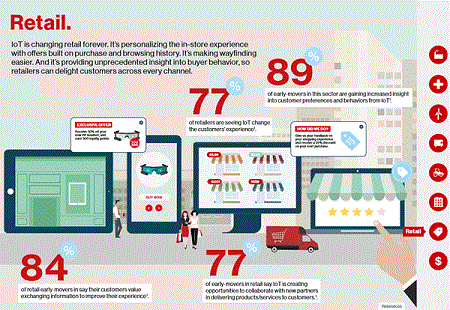
"Retail dynamics of the internet of things in the future"
Virtual Reality
Virtual reality (VR) has been predicted to revolutionise the world of retail design. Retailers have begun applying the use of virtual reality more and more within their brick and mortar concept stores. The use of VR can provide unique and exciting experiences in the hopes of luring more shoppers in-store and away from E-commerce. The use of virtual reality removes the limitations of space and time. Retailers can therefore design a space with no limits. We can expect retailers to begin implementing a greater use of VR as it becomes more accessible and more affordable.
North Face collaborated with cinematic VR company Jaunt where they provided consumers the opportunity to virtually experience an immersive tour of California’s Yosemite National Park and the Moab desert in Utah. The use of VR creates a more personalised shopping experience within the store design while forging a greater emotional connection between the brand and its customers. This personalised shopping experience will help to increase profits for the retailer.
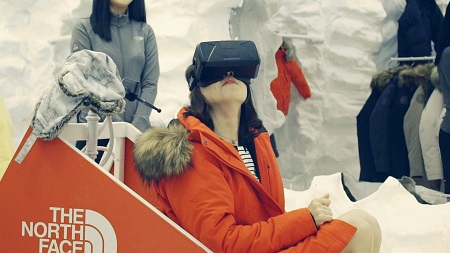
"The North Face gave these shoppers a VR experience that suddenly got awesomely real"
Image Source: Adweek
Robotics
Recently, robots have become more and more common in the retail industry. The addition of robots inside store designs can help improve business and help retailers to stay relevant with consumers. The use of robots can help attract customer attention this is because retail robots are a new innovation which helps to lure customers into a store. Furthermore, robots can improve efficiency as they can keep track of a business’s inventory.
Lowebot was first introduced to home improvement retailer Lowe’s flagship store in 2016. Customers can ask Lowebot by speaking or using a touch screen on where to find items they need inside the store. Lowebot can also answer basic customer service questions such as information on each product. The use of robots is novel yet has the ability to entice customers in-store due to consumers experiencing something new.
Brick and mortar stores will need to analyse the cost and benefits of whether to include robotics in their store design because it may not be relevant for all retailers and will be more beneficial for some more than others.
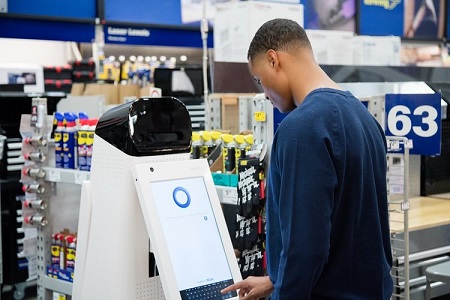
"Lowebot"
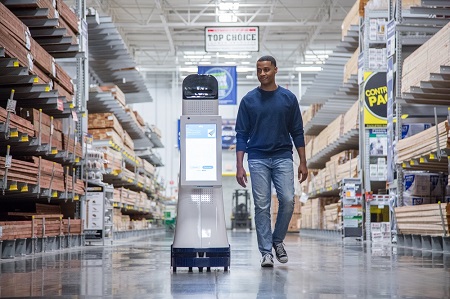
"Lowebot"
Conclusion
New technologies such as big data, blockchain, the internet of things, virtual reality and robotics are revolutionising the future of retail. Brick and mortar stores should consider utilising these new forms of technology which will allow them to improve the shopping experience for consumers while also gaining vital information on consumer behaviour. All these new digital technologies have their pros and cons. It is important to match these with exciting and creative store designs. However, for businesses to stay competitive and relevant within the constantly adapting Chinese market, it is important to consider the benefits of these new technologies.
> back to top of page

What the Nose Knows - Sensory Retail Design
July 23, 2018
Researchers have discovered that far more goes into the shopping experience than what the customer sees. Everything from the music playing, the lighting of the room, to the materials used as the flooring creates a unique shopping experience and adds to the store identity. Recently, researchers have discovered that using scent marketing is an incredibly effective strategy to positively affect the shopper’s experience and enhance a store identity. Different scents cause different emotions and it is important to use the smells to create the outcome in the company’s market identity and strategy.
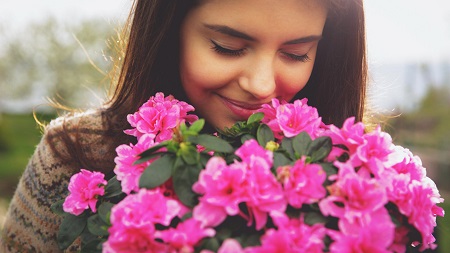
"Rent.com"
Using a specific scent tailored to the store’s market identity “increased intent to purchases by 80%”(Nike). Cinnabon is an example of a store properly implementing the scent branding strategy by using their iconic, rich smell of cinnamon to entice customers to their store and buy their products. Companies do not need a signature smell to positively enhance their store identity. Instead they can use generic ambient scents and get the same positive outcome. Below are ambient scents that companies should consider to activate a specific feeling within their customers:
1. Relaxation
The smell of orange has been found to limit anxiety and get rid of stress. Eucalyptus also creates a calming feeling. Furthermore, the smell of Jasmine makes people feel at peace and is used as an antidepressant. These three scents can be used to make shopping a less stressful experience and allow shoppers to unwind. Pandora focused on scents similar to these to make their store identity feel relaxing. The relaxing smells compliment their elegant and poised store design.
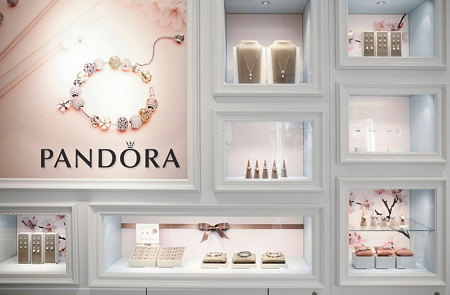
"Pandora Store Design"
2. Happiness
The smell of lemon and lime has been discovered to increase overall mood and happiness. Lemon triggers serotonin to rush to the brain to make the customer feel more cheerful. Lemon also is the most powerful citrus smell. Since the sense of smell is most closely related with memories, creating a positive impact can be done more easily with a positive smell like lemons. The concept store Tigerlily uses a combination of lime and other scents to create a positive and warm store identity. The use of these scents helps reinforce the positive and upbeat store design.
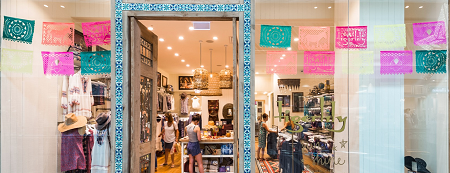
"Lakeside Joondalup"
3. Alertness
Companies want to have a strong brand image and impact on customers. An easy way to make their company stand out is by using scents that increase alertness within the store. The scent of Rosemary increases attention and focus within customers. Rosemary also limits fatigue. The smell of cinnamon also allows the brain to focus more clearly. Furthermore, the smell of Peppermint allows deeper concentration within customers. Samsung is an example of a store that uses smells similar to these to create a focused environment for their customers and employees and add to their chic store identity.

"NordWood Themes"
Using scent marketing is allowing companies to go the next step in being competitive in their individual industries. It is not enough to create an aesthetic design. Now companies need to use scents to be memorable and create specific and positive emotions within their customers. The best store designs realize that the shopping experience incorporates all five senses, and even the scent of the store is vital.
> back to top of page

5 Star Plus Presents: “New Retail, New Design” at UK-China Retail Forum 2018
June 28, 2018
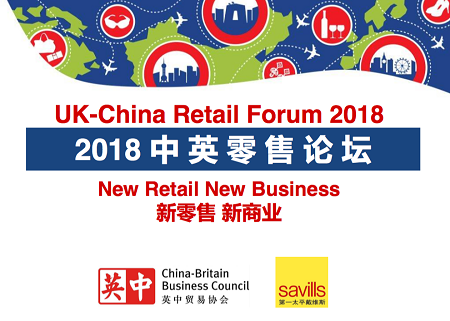
The China Britain Business Council (CBBC) hosted the annual Great British Brands Festival (GBBF) on June 28, 2018. Located at the Park Hyatt Hotel in Guangzhou, the GBBF presented a UK – China retail forum. The first day of the festival included inviting leading industry experts to discuss what ‘New Retail’ meant for the Chinese retail and design industries this year. They invited a vast range of companies from BMW, to Marks & Spencer, to Chelston Manor to hear this year’s retail news.
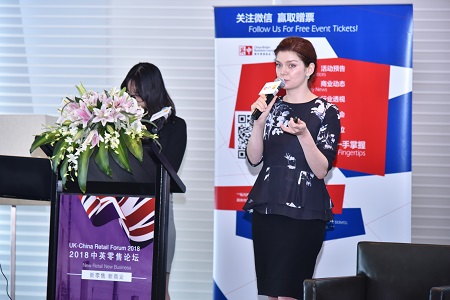
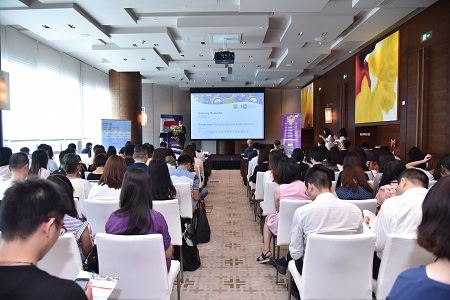
5 Star Plus’s Managing Director and industry leader, Barbara Seidelmann, was invited to deliver a speech on the latest retail trends in her presentation: “New Retail, New Design”. Barbara’s speech began with an overview of the current retail market and analyzed differences between Western and Chinese consumer behavior. Furthermore, she discussed how prominent online distribution has become in 2018 and how to incorporate this into various retail and restaurant stores.
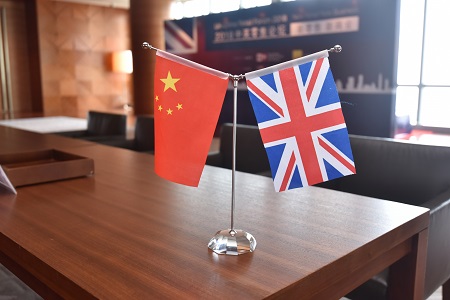
Barbara concluded her speech by discussing the opportunities and future of Brick-and-Mortar stores. She gave insight on how ‘New Retail’ involves making the shopping experience more individualized and entertaining for 2018 and future years. The future of retail is always changing. She was able to present about these changes and give a strong outlook of what ‘New Retail’ entails for the future.
> back to top of page

Retail-tainment: Where Store Design Meets Entertainment
June 22, 2018
With the increased popularity of shopping online, traditional Brick & Mortar stores need to find a way to attract more customers. The biggest trend of 2018 thus far has been the push towards ‘retail-tainment’. Shopping is no longer limited to getting the products needed and leaving. Now the entire process of shopping has become a memorable experience.
Traditional Brick & Mortar store designs are going the next step by appealing to the customer and focusing on ease and personalization. Consumers often feel overwhelmed trying to discover exactly what they are looking for. This issue can be solved with Retail-tainment.
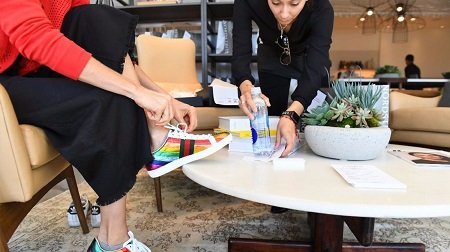
"Nordstrom’s Newest Store aims for a Personal Touch"
Nordstrom perfectly executed this strategy with their new store design: Nordstrom Local. At this location, customers will find limited clothes but a guaranteed enjoyable time. Customers will be treated to fruit juices or a cocktail, manicures, and handpicked clothes. The customer can relax while clothes are tailored to their specific requests. Nordstrom Local’s strategy is to allow customers to get exactly what they want without having to manually rummage through countless racks of clothes and wait in endless lines. Instead they can sit back, relax, and enjoy a unique shopping experience.
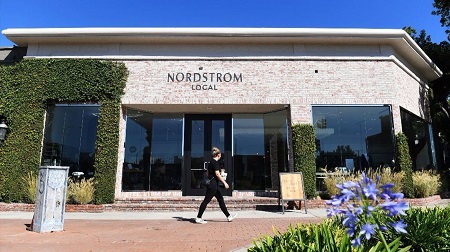
"Nordstrom’s Newest Store aims for a Personal Touch"
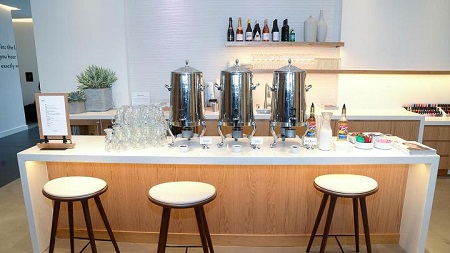
"Nordstrom Just Opened a Tiny store Without Any Inventory"
Although retail-tainment is more common among luxury retail stores, it is possible for any type of store design to benefit from retail-tainment. For example, Target launched ‘Target Wonderland’. Target managed to entertain customers with different games for children to play with while simultaneously making the shopping experience more convenient by giving each customer a lanyard that allowed them to easily scan products they desired.
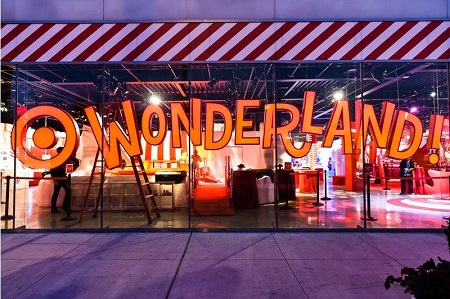
"Target Invokes Willy Wonka for Its Store of the Future"
One of 5 Star Plus’s latest projects, the Exhibition Stand Design Department for International Trade UK, was designed with retail-tainment in mind. Besides displaying various products, 5 Star Plus created a large pavilion to allow entertainment to occur as well. Activities like the afternoon tea area invited customers to enjoy tea and snacks, as well as sit and relax in the exhibition stand longer.
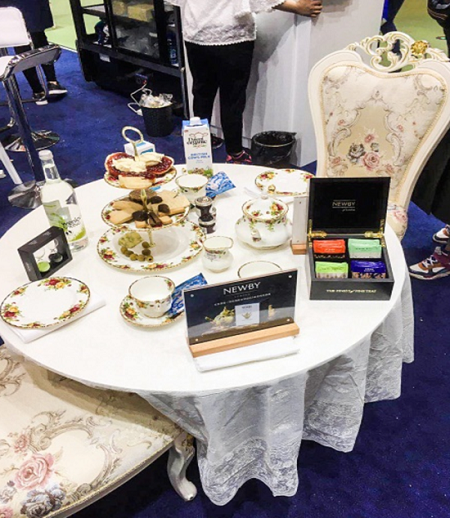
"Exhibition Stand Design, Department for International Trade, UK"
Retail-tainment has been successful for two major reasons. The first being that it makes the products more memorable. The second is that retail-tainment increases brand loyalty to luxury stores (an issue that many high end stores have been trying to effectively overcome). Retailers need to consider how to use retail-tainment within their own stores to make an impact on their customers. Although it can be costly, when done effectively, retail-tainment adds incredible amounts of value to a company’s image.
Is Retail-tainment right for every Retail store?
It is important for Retailers to make a positive and lasting impression all while making the shopping experience more memorable. It is not necessary for every store to serve special drinks or provide onset tailoring at their store locations. However, retailers need to consider what strategies would be most effective for their brand image.
In short: Yes, especially in 2018 retail-tainment has made store designs more competitive and memorable to customers and altered the shopping experience.
> back to top of page

Our New Shanghai Team
June 14, 2018
5 Star Plus Retail Design is proud to announce the expansion of our team in Shanghai. We have chosen to continue growing our presence here in order to better accommodate our clients in the rapidly growing city. Our projects in Shanghai thus far comprise of exhibition stand and restaurant design projects and include working with Advantage Austria, the Austrian National Tourist Office, the UK Department for International Trade, the British Chamber as well as Oh Chic, a subsidiary of EG Distriselecta. Further projects have been completed in other cities in the region, such as a jewelry store design project for HMSC in Hangzhou.
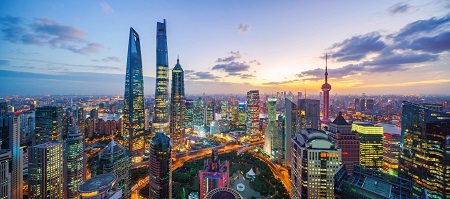
"Four Ways to Give Your Restaurant Dining Room a Quick Improvement"
Image Source: Isango
To support our growing clients in Shanghai we have a new client manager, Samantha Chalmers. Samantha comes from the United States and has spent several years studying different markets all over the world. With a background in international business, she is familiar with the differing implications of foreign operations including policy and strategy methods. One of her focus points was diving into emerging markets, particularly in Southeast Asia and the Chinese market as a whole, putting a strong focus on understanding the needs of consumers on both a cultural and psychological level. This has given her a deep understanding of East Asian values and the needs of Chinese consumers. As many of our clients are foreign retail companies looking to tap into the Chinese market, Samantha will help ease the process of opening a store by connecting retailers to resources through project management of a retail design concept. Additionally, her experience in small scale start-ups has provided her with adequate experience in both online and offline tactics for retail marketing.
5 Star Plus Retail Design offers a variety of services from concept design to rebranding services. Our specialized team of designers and marketers work diligently to provide services that most effectively apply the brand identity to adhere to the Chinese market. With our growing presence in Shanghai, we will also be able to extend our services to major cities in the surrounding area including Nanjing, Hangzhou, Wuxi, Suzhou and more. Apart from our Shanghai operations, we also provide services in a variety of cities worldwide including: Beijing, Vienna, Urumqi, Singapore, and New York City.
> back to top of page

2018 Relaunch - 10 Tips to Sustainably Increase Revenue in Stores
May 30, 2018
In order to sustainably increase revenue in stores, retail brands need to design a perfect in-store experience and create long term relationships with their customers. Here are a few tips to achieve this.
1. Optimize your store's exterior design.
The store fa?ade and window should be designed to represent your brand and products. They are also the perfect means to create brand awareness and educate customers. Make sure your logo is designed to be visible from far, and a good selection of your products is displayed in the store window
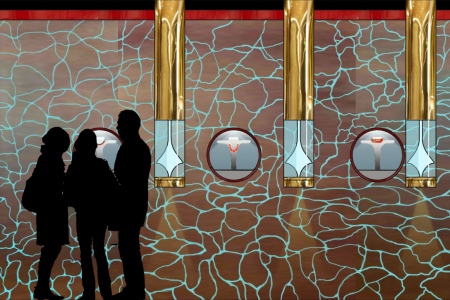
2. Welcome Customers entering your store.
Greet all your customers entering your store, irrespective of gender, age, and other characteristics. It is important to give customers a warm welcome, make them feel comfortable and let them check out your products, even if they have no purchase intention.
3. Design your customer service to be barrier free.
Ensure to use an open body language when talking to your customers (no crossed arms!) and remove any furniture from the store space that could be perceived as a barrier between you and the customer. Examples of such barriers could be the sales counter, island furniture, or columns. Since furniture cannot always be removed, make sure to stand at a location with no barrier when talking to the customer.
4. Guide the customer through the store.
You want to make sure to give each new customer the best overview of your brand and introduce the various collections. Don't leave customers alone in your store – guide them and add a few sentences about each product at which they look for a few seconds, even if the customers mention that they "just want to have a look".
5. Adjust your sales approach according to each customer.
Some people are more communicative, others prefer a quiet shopping environment. Some customers need more space, others again want more information. Be sensitive and adjust your sales approach and the amount of information that you give to each person's individual needs.
6. Create a personal connection.
Purchase decisions are emotional choices. Most consumers don't purchase merely because of product characteristics, but because of something else about the product. This could be the artistic design, the heritage of the brand, the unique manufacturing technique, or other abstract values that can be hard to define. Each retail store should therefore target to create a personal connection between the customer and three very important things: the brand, the sales person, and the product. If they love the brand, you, and the product, you will make a sale. Sales consultants need to speak to the unique emotional needs and motivations of each person.
7. Support the customer in finding the perfect piece for him or her.
It is not up to the sales consultant to recommend an item; it is rather about finding out the needs, preferences, and expectations of the customers and to discover accordingly the perfect piece. Again, what is sold is not only a "product"; it is a manifestation of emotions, values, and a lifestyle, to the customer.
8. Reconfirm the choice of the customer.
Many customers doubt during the payment process whether they really have made the right choice. It is important to compliment the customer on their choice and assure them that they will enjoy the product for a long time.
9. Personalization and customer relationship management.
Be equally friendly and polite to all your customers, and remember the names and preferences of your repeat customers. Support your sales team with a digital customer relationship management system where customer preferences, personal data and purchase history can be stored and traced. Nothing creates more loyal customers than a personalized welcome "Good morning Mrs. X", accompanied by an honest smile.
10. Pack every product like a gift.
You want your customer to feel happy when carrying your product around and be excited when opening the packaging at home. Pack all products, including the ones which are exchanged or repaired, as nicely as you can. Plus, customers who carry your shopping bag around the mall are great advertising for your brand.
> back to top of page

The Beginner’s Guide to Retail Store Design
May 23, 2018
You’ve got your products; you’ve got your brand; you’ve even had success selling online. So much success, in fact, that you are looking to open a bricks and mortar store. You’re looking for a place to showcase your products and entice new customers, somewhere that sells the idea and principles behind your brand. Opening a flagship store sounds easy in principle, but a lot of work goes in to making sure the retail store design is right for you. 5 Star Plus Retail Design are experts at design and have decided to share a few helpful hints for you to consider when opening a new retail store.
1. Budget
Rather than thinking ‘how much does this cost?’ think about ‘how much do I want to spend?’ If you approach a designer with an unlimited budget, they can carve out a little piece of heaven, but the same effect can be achieved with a smaller budget. Designers are adept at making cheap look chic and using low-cost alternatives achieve the same effect as high-end. They can come up with creative solutions, using ingenious design to make an impact. For example, using perspective to make the store appear larger and more open.

" Li Xiang’s Zhongshuge bookstore is stacked full of wonder "
Image Source: Frame
The use of tall mushrooms in the Zhongshuge flagship bookstore design makes the customer see the store as a big, wondrous place full of possibilities.
2. Store Layout
When designing a store, it is important to think about how your customers will move around. When they enter a store, most people turn right, so this space should be filled with exciting retail displays that draw people in. Through clever unit placement, the customer’s journey can be plotting so that they will spend more time instore browsing. Other things to consider include where to place the till, how to include storage on the shop floor, and providing additional facilities for guests such as seating.
It is important to consider your own store needs, as the layout must be functional. If products have to be stored on the shop floor, then storage space must be integrated into the design. If staff members have to carry goods or require equipment out front, then there has to be enough space to allow for its use and clear access paths.

"Shoe & Accessories Store Concept Design, H?gl"
Our H?gl store design China created a path for customers to walk around the store, with interesting displays in the center. The till was placed at the back of the store so that customers were required to walk past the products to make a purchase, whilst also being close to the employee space.
3. Materials
Design materials are often split into natural and man-made, each giving off a different feeling. For example, a natural material such as wood can feel more welcoming and wholesome than man-made plastic. The properties of different materials conjure different mental images, which can impact on how your brand is perceived. To appear traditional, the use of bamboo can tie a space together. If you want to appear industrialized, metal is a good choice.
Texture is also very important for adding depth and warmth to a store design. Shiny, reflective surfaces are used for bold, clean, futuristic atmospheres, whereas using fabrics can create a sense of warmth and comfort.

"Old Fiberboard Ceiling Tiles"
With expert handling, even cheap materials such as fiberboard can be made to seem sumptuous. These fiberboard ceiling tiles can be used to create a rich, traditional atmosphere.
4. Shapes and Colors
Think about what feeling you want your brand to represent. Are you a healthy, nurturing brand? Then use soft lines, bright lights and colors such as green and yellow that induce a feeling of happiness and growth. Shapes, colors and lighting all combine to create a subtle, often subconscious set of cues that impact on the overall mood of a store. Knowing what each color or shape represents will help you to align the store design with your brand. Also, consider the gender of your audience. Soft curves are traditionally considered feminine, whereas sharp edges and right angles are more masculine.

"Bloom Bloom Bloom Pop-up Shops by Emmanuelle Moureaux"
Colors have been kept to a minimum in Issey Miyake’s retail store in order to bring out the contrasting bright colors of the products. The use of white surfaces with bright lighting and soft shadows draws the customer towards the products.
5. Lighting
Lighting is important to draw attention to the product displays, grabbing the customers’ attention and highlighting the products. Ensuring a well-lit, bright display helps to showcase products and results in more sales. Generally, the brighter the store, the more products will be sold. Integrating well-designed lighting into a retail design can be challenging, as it combines placing the lights in the right location, integrating the lights themselves with the store design, considering wiring in the store infrastructure, and ensuring the light quality is in-keeping with the store displays.

"Diamond Dazzle Stores by Reggiani, Beijing & Shanghai – China"
Diamond Dazzle’s Store Design Beijing & Shanghai: both stores use bright lighting, integrated into the design itself. Spotlights on the ceiling and behind mannequins help to highlight products and eliminate shadows. The large light, shown above, incorporates lighting into a piece of art.
6. Windows and Instore Displays
A captivating window display helps a store to stand out in a crowded marketplace and brings in new customers. It’s a great place to get creative and show the brand concept, emphasising the personality of the brand. Instore displays are also a very good way to emphasise the brand concept whilst displaying the products. It is a useful way to highlight the benefits of products and can include information on the benefits of a product in a visually appealing way.

"GAGA'S WORLD(S) AT BARNEYS"
Barney’s window displays designed by Lady Gaga brought to life surreal scenes designed to entice and inspire.
7. Digital and Interactive Elements
Modern retail design should try to incorporate interactive elements in order to engage the customer. Having something to do within the store turns shopping into an experience and encourages them to spend more time getting to know the brand. Including digital elements in the design is a great way to promote omni-channelling and provide more information, specialist options and include an element of imagination. AR technology in particular is helping to revolutionise the shopping experience and can be applied in many ways.

"The Shifting Role of Retail"
8. Trusting an Expert
Working with 5 Star Plus Retail Design makes this process a lot easier. Our team of designers understand how all the above elements work together to create an impressive, unique retail store design, realising your vision in an efficient and timely manner. Working within your budget, we know how much materials cost, how long construction will take, and can manage the creation of your store from start to finish. Opening a new retail store needn’t be stressful; making use of experts’ time and knowledge will save you a lot of stress and help to create a lasting impression.
> back to top of page

New Concept Design for PUREONES
April 28, 2018
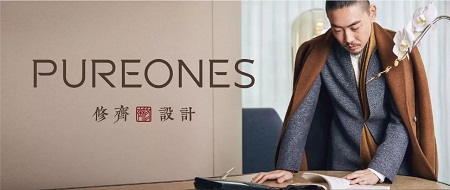
Image Source: PUREONES
For a long time, luxury has been associated with the West. Europe in particular has a rich heritage, fine materials and quality craftsmanship that has brought about fashion brands such as Gucci, Yves Saint Laurent and Prada. These brands, and those like them, speak of decadence, born from a desire to distinguish between classes and to show wealth. For many years, these ideals were out of place in China and although in recent decades we have seen a rise in popularity, luxury goods are still in juxtaposition to typical Chinese values. So where is the offering for the refined Chinese man who wants to take pride in all he is? Jin Xiuqi’s brand PUREONES is the answer.
Jin developed the PUREONES brand in order to bring China into the global marketplace of fashion. He wanted to create a clothing line that represented how China truly was, rather than the gimmicky ‘China-style’ so often seen in the West. Drawing from Confucian and Taoist thought, taking styles and techniques from the Song and Tang dynasties, Jin created a line of clothing that acted as an extension of the man himself. Emphasizing the balance of yin and yang, and heaven and Earth through minimalist sewing patterns has created a unity that expresses the past and present, as well as the inside and out. In doing so, ‘China-style’ can become meaningful ‘China Design’. For Xiuqi, it is important to cultivate the self, as it is only when we are at peace within that we can look outwards to the family, the state, and the world.
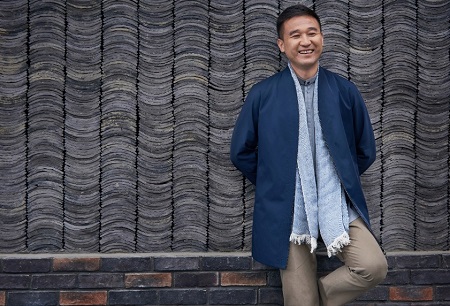
Image Source: PUREONES
It is with this in mind that 5 Star Plus Retail Design began designing the new concept for PUREONES retail stores. When approaching the retail design, we knew that the store should reflect the principle of looking from the inside out, drawing from international methods of displaying a brand identity in order to establish the true purpose of the individual. Drawing from nature and creating an organic, environmentally-friendly store concept was key.
Inspired by the curves found in Chinese rice fields, rivers, mountains and forests and following the Taoism way the store design leads you from one space to another in a very natural way. Each element is designed to look like it was made by nature itself. Using high-quality wood and stone materials to tie this concept with the physical space, the plain square box of a typical retail outlet transforms itself into a natural oasis and transports the customer to a calming, open environment. To bring in some engaging contrast, vertical space was optimized with mirrors, wooden strips resembling trees and a focal point around a seating area. The metal mesh drawing down from the ceiling makes the space private and enclosed, which not only creates an intimate VIP lounge internally, but highlights the outdoor, natural feel of the rest of the store.
The natural theme is further supported in the window display. Video projections within the display area will change with the seasons, creating a dynamic effect that draws people in. To complement this, there will be an installation made from buttons, simultaneously showcasing the beautiful porcelain detailing of the products and contributing to the environment. The buttons can be changed to create a different ambience, representing a forest, clouds, heaven, or earth. We look forward to see the new designed store for PUREONES.
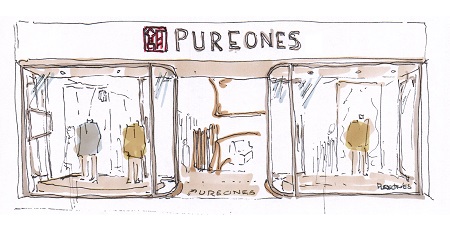
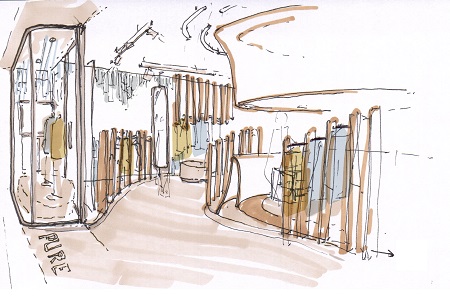
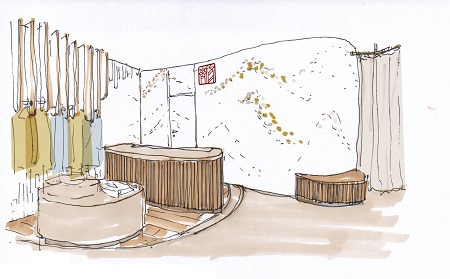
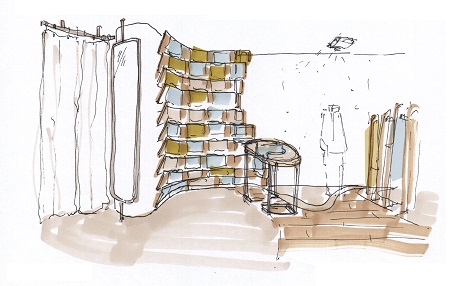
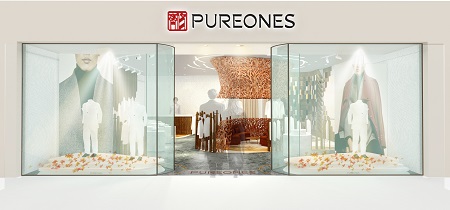
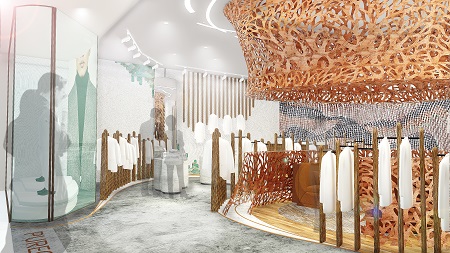
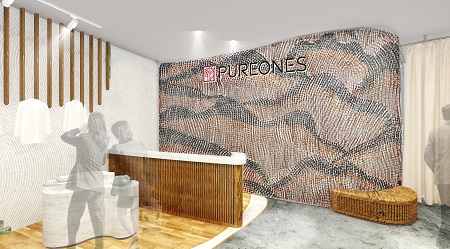
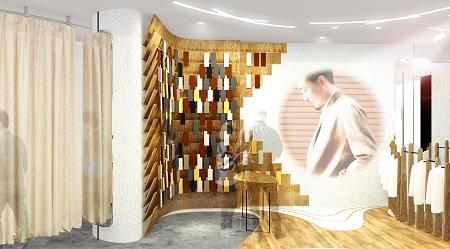 > back to top of page
> back to top of page

Emotional advertising online – How to use emotions to make your ads go viral and increase sales
April 27, 2018
Take a moment to think about the products and services that you use in your daily life. The laptop you are working on right now, the clothes and jewellery you are wearing today, the snack you ate earlier, the smartphone you might hold in your hand reading this article, etc. What was the reason you bought these products from these particular brands? Most likely, you don’t have a logical explanation for that. You may have thought, “it just feels right to buy it,” and brands are hoping for just that! It has been scientifically proven, time and again, that customers rely on emotions alongside logical reasoning when making a purchasing decision.
To quote the legendary Salesman Zig Ziglar, “People don’t buy for logical reasons. They buy for emotional reasons.” Emotions create memories, memories create actions. The feelings triggered through a brand campaign engage the customer, spurring them to act. On the simplest level, this translate to liking or sharing the ad content through social media or in personal conversations. More effective campaigns can lead to increased brand reputation and awareness, and spur consumers on to buy the product or service.
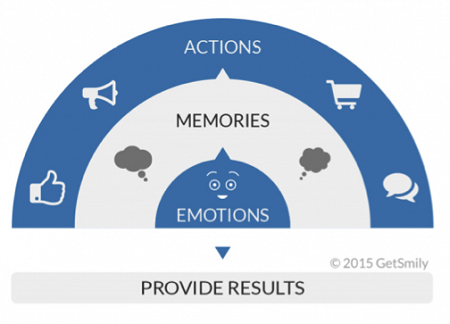
"Emotions Get You Sales with Emolytics"
Types of emotions in advertising
There are countless emotions one can feel; however, research shows that there are six universal emotions which can be considered ‘the core emotions’. These are: happiness, anger, disgust, fear, sadness, and surprise. All of the core emotions are used in advertising, although the effectiveness of each emotion differs. As previously discussed, it is important that that an ad creates memories. So, which emotions make a campaign memorable? As shown on the graph below, emotions can be distributed into four categories, based on the relevent arousal and valence. Arousal refers to the intensity of an emotion, whereas valence describes the positive or negative character of an emotion. Studies show that ads with a high level of arousal are the most memorable, and reinforcing arousal with a positive or negative connotation ingrains the ad content more deeply, spurring the audience to either embrace the positive, or reduce the negative. Let’s take a look at the different types of high-arousal campaigns
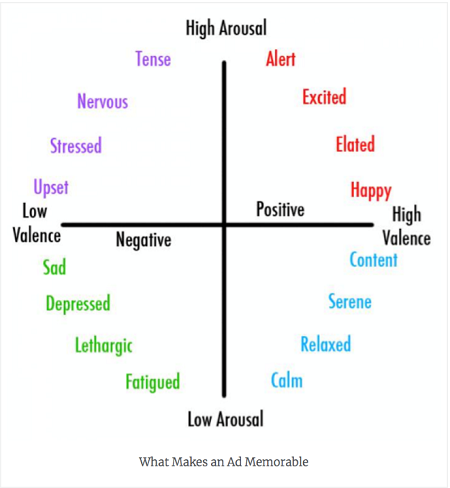
"What Makes an Ad Memorable"
High-arousal, high-valance campaign
In March 2017, Gucci launched a new campaign for watches. The goal of the campaign was to reach a younger target audience; therefore, the brand chose Instagram as their main advertising channel. In addition, they created the hashtag #TFWGucci (That Feeling When Gucci). In case you are not familiar with it, the phrase “that feeling when…” is one of the most commonly used phrases online for starting a funny story on social media. This campaign was a huge success thanks to Gucci’s imitation of memes.
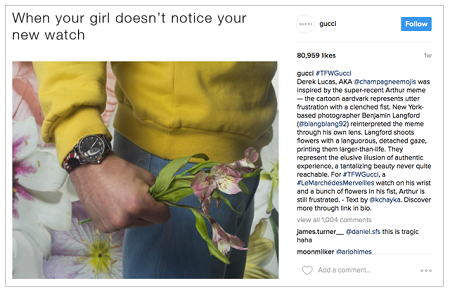
"Humour - Gucci"
Gucci created high arousal by using humour, a high-valence, high-arousal emotion. This created happiness, associating the Gucci watches with good times. In total Gucci memes amassed around 2 million likes and more than 21,000 comments on Instagram, thereby creating a huge buzz around the brand and their new watches.
High-arousal, low-valence campaign
Using emotions in advertising can be risky. Every individual has different emotions towards each campaign. In addition, if it is a global campaign, cultural differences will trigger emotions differently around the world. The riskiest ads are those which aim to trigger our emotions through negative valence, a strategy often used by human rights campaigns. These campaigns inflict negative emotions; however, encourage people to change their behavior for the better. There are many successful campaigns that prove it is sometimes worth taking the risk.
In 2017 Airbnb gained a lot of attention for its #WeAccept campaign. The campaign intention was to promote acceptance among people of the world regardless of background. Part of what made this campaign so powerful was timing. It was launched merely days after Donald Trump announced the travel ban for people from certain Muslim countries. By taking a risk and choosing the right timing, Airbnb’s #WeAccept campaign gained over 5 million views on Youtube and 110,000 views on Instagram within the first month alone.
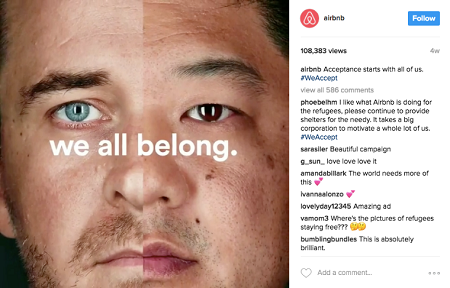
"Timely - Airbnb"
The Airbnb campaign provides a prime example of how to create high arousal with a low-valence emotion such as anger. The campaign drew on anger over current political decisions and encouraged the audience to respond through the more positive behaviour of accepting everyone. Multiple marketing blogs and experts credited Airbnb’s #WeAccept campaign as one of the most successful campaigns of 2017.
Using arousal and valence in retail design
Although we have talked about advertising campaigns, the same principal of high-arousal can be used in retail design. To guarantee the best possible success of emotional advertising it is crucial that the campaign is executed holistically which means that online advertising, retail design and in-store activities are tailored to transport a specific emotion.
Taking the example of Gucci into account, it is interesting to know that before launching their campaign they started creating a new look for their retail stores. Gucci used rich pinks associated with the high-valence feelings of love and flirtation.
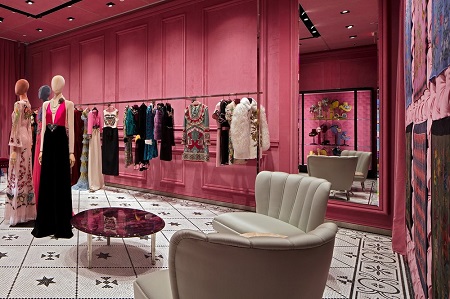
"Gucci - Miami"
Image Source: ATR
To sum up, if the emotions created through a campaign resonate with our personal beliefs, values and feelings we are more likely to buy something based on emotional rather than logical reasoning. So when planning your next advertising campaign, don’t focus on cold hard facts, but think about the emotion you want to convey to your audience.
To guarantee the best possible success of emotional advertising it is crucial that the campaign is executed holistically which means that online advertising, retail design and in-store activities are tailored to transport a specific emotion. Taking the example of Gucci into account, it is interesting to know that before launching their campaign they started creating a new look for their retail stores.
> back to top of page

AUSTRIA CONNECT China 2018 – “Let's Talk Strategy!” Event Review
April 26, 2018
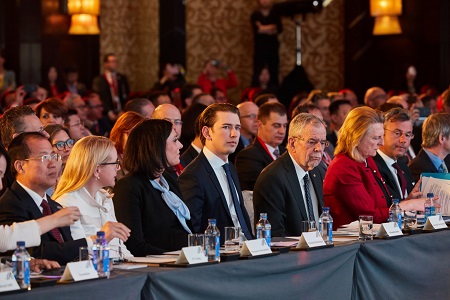
Image Source: ADVANTAGE AUSTRIA Beijing
AUSTRIA CONNECT China 2018 – “Let's Talk Strategy!” took place in Beijing from the 8th to 9th of April, marked a first for Austria, with the largest ever political delegation to visit a foreign country. Over 300 people attended the event on behalf of their Austrian companies or Chinese subsidiary to discuss new business models, attend talks, and conduct business. Thirty business contracts were signed during the event, collectively worth over 1.5 billion euros.
5 Star Plus Retail Design were honoured to work alongside Advantage Austria to realise their theme of “Let’s talk strategy!” as sole designers for the conference venues.
The Welcome Ceremony
The welcoming ceremony provided the perfect opportunity for everyone to catch-up with old friends, network with potential business partners and most of all, have a bit of fun. EQUIS Bar kicked off the two-day conference in a trendy, sleek space. The industrial-chic interior provided a soft, warm glow to induce feelings of bonhomie, making a room of three-hundred people feel like an intimate venue.
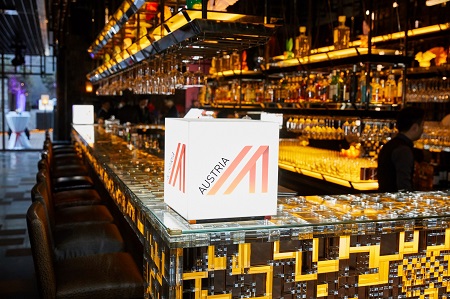
Image Source: ADVANTAGE AUSTRIA Beijing
Making use of the wonderful Spring weather, many patrons were to be found outside. Despite the towering buildings looming above, the EQUIS Bar courtyard felt like a secret inside the city, a peaceful hideaway blending man-made rock with natural foliage. As night fell, the crisp white glow of Advantage Austria branding drew focus, creating anticipation for the days to come.
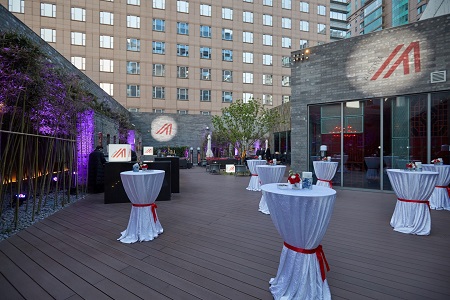
Image Source: ADVANTAGE AUSTRIA Beijing
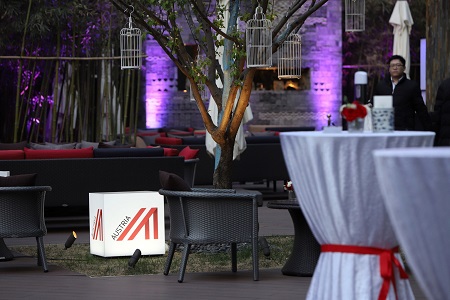
Image Source: ADVANTAGE AUSTRIA Beijing
Talks and Working Groups
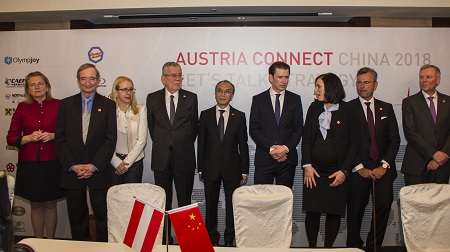
Image Source: 5 Star Plus Retail Design
The delegates, including several Federal Ministers, were treated to a topical roster of talks pertaining to international trade between Austria (as well as Europe on a larger scale) and China, with many business negotiations taking place alongside. Throughout the conference, all eyes were focused on the speakers who stood in front of a large white info board or screen. So as not to take away from the purpose of the conference, 5 Star Plus Retail Design chose to keep design minimalistic in the actual conference rooms, electing to project logos and key graphics where appropriate. Using subtle techniques made a lasting impression, such as the placement of a large archway whose contrast to the environment welcomed those walking under it into a new way of thinking.
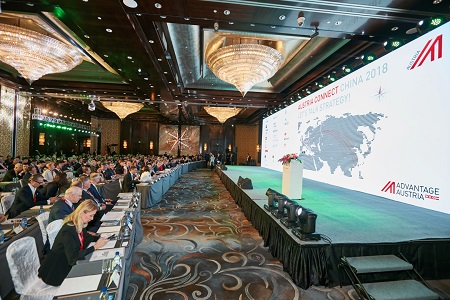
Image Source: ADVANTAGE AUSTRIA Beijing
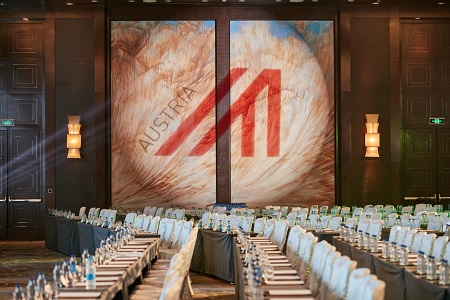
Image Source: ADVANTAGE AUSTRIA Beijing
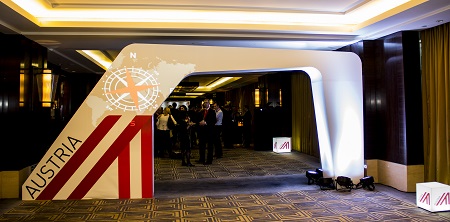
Image Source: 5 Star Plus Retail Design
The Gala Dinner
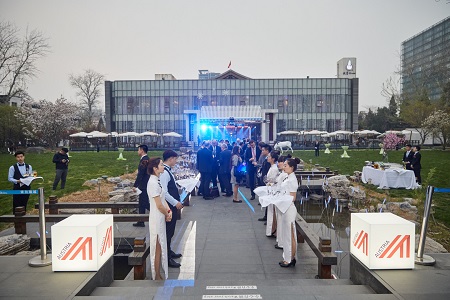
Image Source: ADVANTAGE AUSTRIA Beijing
The event ended in Beijing Dadong restaurant with networking time in the garden and a gala dinner complete with Chinese dancing show and, of course, Beijing’s signature dish Peking duck, which was cut and served in front of the guests.
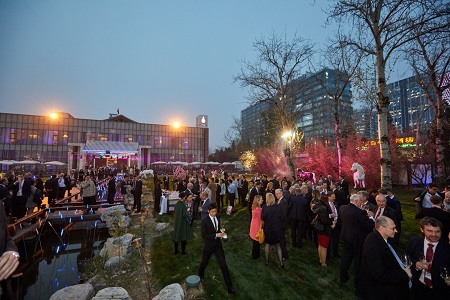
Image Source: ADVANTAGE AUSTRIA Beijing
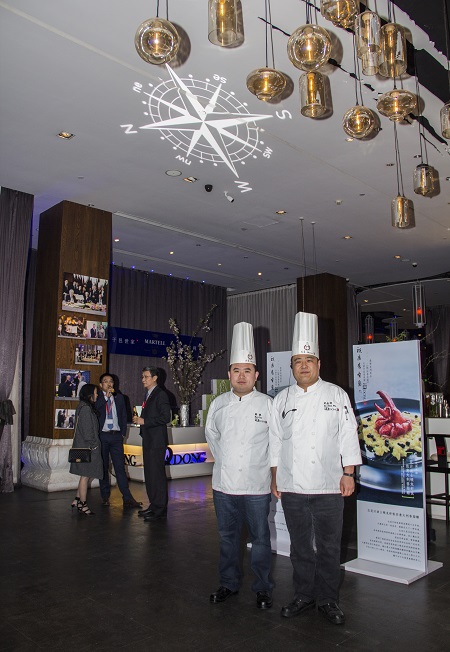
Image Source: 5 Star Plus Retail Design
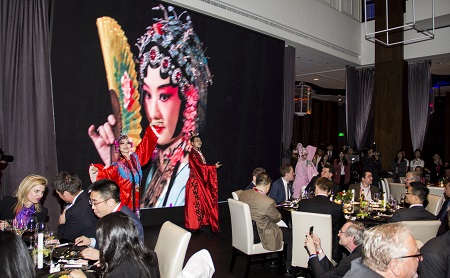
Image Source: 5 Star Plus Retail Design
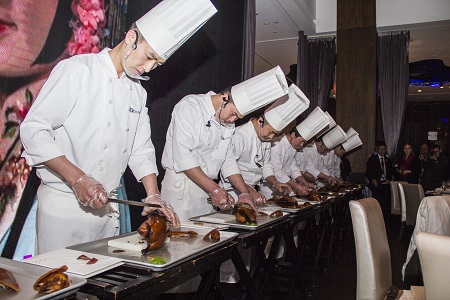
Image Source: 5 Star Plus Retail Design
Having worked with Advantage Austria on several projects, we were aware of the sleek, clean designs that the client prefers, and were excited to bring something special to such an important event. As an Austrian business in China, it was wonderful to see so many other companies following the same path as 5 Star Plus Retail Design.
> back to top of page


Why is Europe taking inspiration from Chinese Shopping Malls?
March 28, 2018
In the 20th Century, department stores and shopping malls became institutions, changing the way consumers shop. With lavish displays and labyrinthine corridors of shops, malls and department stores championed choice. You could spend a whole day looking around the different stores. Nowadays, footfall is still high, but malls and stores have had to adapt to customers’ changing needs. It is no longer enough to offer variety, people want more from their shopping experience. China is leading the way in retail-tainment, and the rest of the world is starting to follow suit.
So, That’s Entertainment
The recent move into e-commerce has created stiff competition for bricks and mortar stores, making retailers question, “what do consumers want?” The answer has always been simple: they want everything. An all-encompassing destination that offers entertainment, fun, and caters to all of their lifestyle needs. For department stores and shopping malls, injecting entertainment into the mix is a great way to bring the online shoppers offline again and again.
China saw this need early – the fact that malls have become tourist destinations stands testament to that. Chinese malls offer much more than typical retail stores, they also house restaurants, bars, spas, schools, gyms, beauty parlours, art galleries, gardens, supermarkets and much more. Malls are increasingly considering this entertainment value to draw in the crowds. The Global Center in Chengdu is a great example of this. The largest building in the world, the mall hosts a 300-meter long indoor beach, appealing to consumers’ love of novelty and providing a space to relax, regardless of the weather.
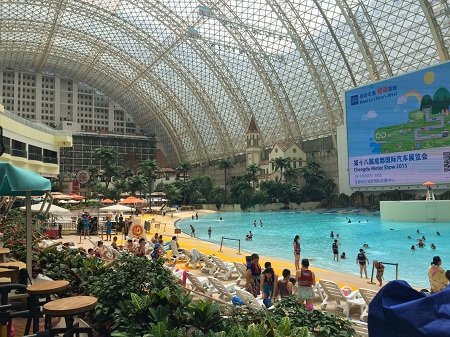
"Chengdu - The working week"
Something for Everybody
The variety of entertainment options on offer means that malls are destinations for everybody. Whether you’re solo, in a couple, with friends, or on a family outing, there’s enough to keep everyone entertained in their own way. It’s common to see grandparents drop children off at their English classes before going to enjoy the scenery whilst parents browse the shops. Since everything is close-by, they can all meet up again for food, choosing from one of the many food and beverage options, and finish up the day with a group activity like bowling, or going to the cinema.
This lifestyle focus has changed the way people shop. As there is so much to do, there is no need to plan activities in advance – you can arrive at the mall and see how everyone feels in the moment. It also removes the pressure to buy anything tangible, as the environment is enjoyable enough to count as its own entertainment. Even something as simple as including a supermarket can draw in crowds at unconventional times. A lot of retail spaces are built with offices above them, to draw in people on their way home from work. Whereas previously they may have gone straight from the office to home, the convenience of all-encompassing entertainment areas means that it is easier to grab a drink with colleagues, or meet friends for music and food. Sanlitun SOHO in Beijing is an ideal example of using the location to draw in a variety of crowds. Each of the stores optimises their window display in order to lure in more customers, and the inclusion of light shows and buskers makes people want to spend more time there.
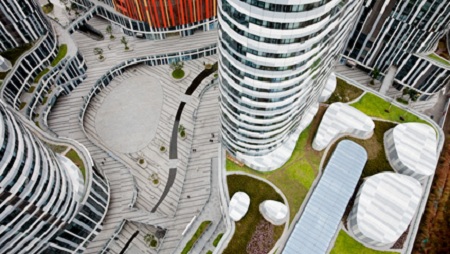
"Sanlitun Soho – Design and Architecture"
Europe
Where shopping destinations in China are getting bigger and better, Europe’s progress is much slower. Mergers and acquisitions across Europe are seeing shopping malls receive the attention they need to compete in the global marketplace. Drawing on combined know-how from different companies, retail spaces across Europe are taking notes from China, adding an entertainment value to the retail spaces. Although we have yet to see an indoor beach, and ice rinks are still ambitious, European department stores and shopping malls are increasing the number of food and beverage offerings, promoting art instillations and including nature as an integral part of their design. Many developers are now introducing architecture groups to create cohesive environments, such as Haskoll’s development of The Oracle in Reading, UK.
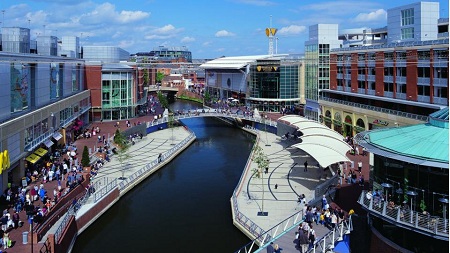
"The Oracle - Reading"
The development in Europe is a lot slower, but there are a lot of cultural habits to overcome. Increasing food and beverage offerings that interact with the environment will support the slow food lifestyle, and including indoor and outdoor spaces will help break up the day. Most European countries have a market culture and are used to going to different shops in order to get the best of each product. The convenience of having everything in one place is slightly at odds with the historic need to travel in order to get the best produce; however, breaking up the journey with entertainment makes it seem like two journeys. Not sure about this paragraph.
Moving Forward
The challenge for retail design is to ensure that the stores inside the malls and department stores are bold enough to compete with everything else going on. Captivating window displays are more necessary than ever, in order to draw the eye. Consider expanding target audiences to appeal to everyone who uses the space, or alternatively make a statement to become the destination store for one particular segment. Drawing from Chinese malls will provide ample inspiration for new European stores, but be aware of cultural differences in consumer behavior. Begin by using entertainment to complement existing behaviors and the customers will soon be asking for more.
> back to top of page

Are You Still Relevant with Younger Sophisticated Luxury Consumers in China?
February 26, 2018
Chinese consumers are showing less and less brand loyalty and are increasingly likely to switch between luxury brands. Brands can’t outcompete each other by simply having top-of-the-range products, they need to offer something more. This is particularly true for the younger, more digital Chinese shopper who seeks foreign brands with an established heritage. So, how can luxury brands attract these consumers in China?
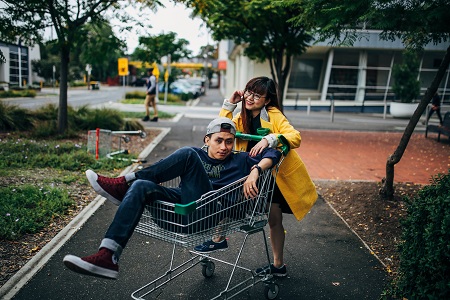
"PHUOC LE"
Omni-Channel touch points
Omni-Channel touch points are the touch point online and offline which are likely to inspire customers to make a purchase. Brands can influence and attract customers in many locations from print magazines, social media channels, brand websites and mobile applications, to the design of retail stores. Effective marketing needs to be put in place everywhere that consumers search for the brands, making sure no touch point goes overlooked. Retail brands in China can no longer rely on simply selling luxury goods in stores. To attract younger, more sophisticated Chinse shoppers, brands must use diverse marketing strategies that tap into online-to-offline retail.
To effectively engage with this segment of Chinese customers both in store and online, companies must ensure their brand image is consistent through all retail touch points. Social media is widely used nowadays to offer promotions and discounts; however, luxury brands use their social networking accounts in a different way. Discounts and promotions can have a negative impact on luxury brand reputation, as the brand is seen as less exclusive. Some luxury stores have introduced their own e-commerce stores, but it is more common for luxury brands to use digital to promote and advertise their offline activity. Their digital presence assists the search process and increases brand awareness, but most shoppers must still go in store to attain a luxury item.
Distinctive retail design concept
The design of retail stores is also being transformed, so as to attract younger Chinese shoppers through the creation of a ‘brand experience’ with the use of technology. Digital technology is being implemented in retail design, most typically through the inclusion of information terminals, interactive touchscreens and display functions. Another trend that is becoming more popular is placing LCD screens on the fa?ade of retail stores, to entice customers in from afar.
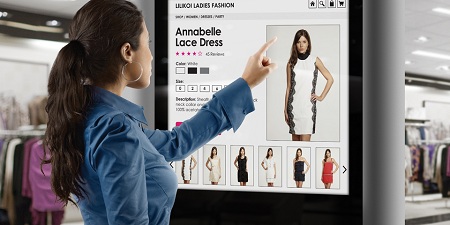
"4 Great Ways to use Digital Technology in Retail Stores"
Luxury brands are also implementing experimental retail design concepts to attract new customers, such as integrating restaurants, café’s, hotels and pop up stores. These innovative designs promote the brand values and increase brand loyalty, specifically appealing to the younger Chinese shoppers who are looking for a complete brand experience.
VIP experiences
In order to attract younger, more sophisticated Chinese shoppers, brands need to offer VIP experiences, which make the customer feel special for choosing them over competitors. These experiences create brand loyalty from consumers, as an emotional connection is formed with the brand. Brands have now realized that younger customers want more than just luxury goods and that an experience will provide more pleasure and satisfaction. Making sure a shopper has a VIP shopping experience with dedicated sales people and a private room is an effective strategy, as it establishes a customer relationship, leading to the customer buying on impulse. For example, Louis Vuitton creates a VIP experience by closing selected stores for half a day and arranging private showings for customers who spend more than 200,000 Yuan.
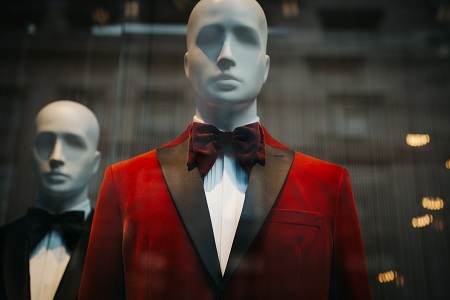
"Clem Onojeghuo"
What to do
It is clear that luxury brands now have to diversify their marketing strategies in China to attract younger more sophisticated shoppers. Online and offline retail are equally important, as younger Chinese shoppers use online devices more than ever before. If luxury retail brands really wish to improve customer relationships, however, they need to make sure they focus on the experiences they can offer the consumer, rather than just the number of media channels they have.
Ensure all consumer touch points are utilized, whether traditional or digital. Maintain exclusivity when using online platforms by encouraging in-store purchasing and resist the urge to discount. Novel retail design can help promote the brand values and including digital interfaces supports omni-channel consumers. VIP experiences promote brand values by creating a unique experience for the consumer. Remember these four points if you want to remain ahead of the game and stay relevant to young luxury shoppers.
> back to top of page

Who let the dogs out - Special decoration for Chinese New Year 2018
February 14, 2018
Chinese New Year is the oldest and by far the most important festival throughout China. Also known as the Spring Festival, Chinese New Year is determined by the Lunar Calendar.
Even in modern times, many Chinese have preserved their abundant traditions for the Spring Festival. Traditional influences on dressing can be seen in many Retail Design Stores. Chinese New Year is not just a big festival for Chinese people but also big business for retailers.
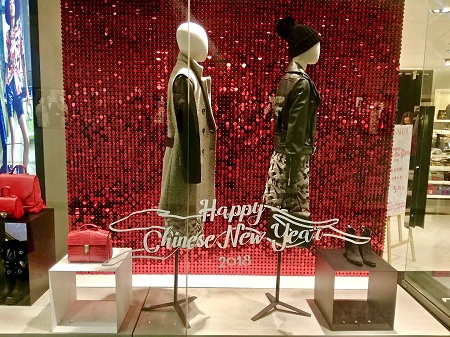
No dogs, no sales
Decorations strongly depend on the animal representing the new year in the Chinese zodiac. 2018 ushers in the year of the dog. For this reason, we see many international brands including dogs in their retail designs and window displays. If there are no dogs, then there are no sales. That might be a bit of an overstatement; however, Chinese New Year’s decorations definitely have a positive impact on sales when done correctly.
Chinese New Year decorations tend to border on the kitsch. The issue for most brands is that this decoration style does not match their brand image, therefore, brands must be creative. The main challenge for retailers is to create an appealing and festive window design that attracts Chinese consumers without interfering with the brand’s visual identity. Around Beijing’s shopping malls we found several inspiring examples of international brands welcoming the upcoming year of the dog in their own style.
The Italian designer brand Trussardi provides an elegant example of a Chinese New Year window display. As commonly known, red is a very important color in Chinese culture and is also the pre-dominant color in most traditional Chinese New Year decoration items. It represents luck, joy, happiness and good fortune. Trussardi made use of this auspicious color, with the addition of a window sticker wishing everyone walking past the store a Happy New Year. The outline of a dog completes the subtly festive Chinese New Year window design.
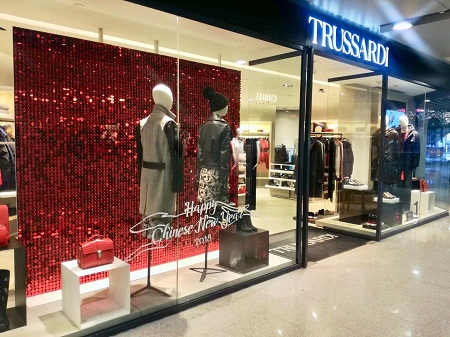
Moschino brings it to a different level. With their current window display at their Parkview Green Beijing Store they fully embrace the concept of using dogs with the color combination of red and gold to increase sales. It’s easy to assume that their “dog fashion” is a best seller these days. As previously discussed, red is a very important color in Chinese culture. When combined with gold, representing wealth, it is the ultimate Chinese New Year color combo.
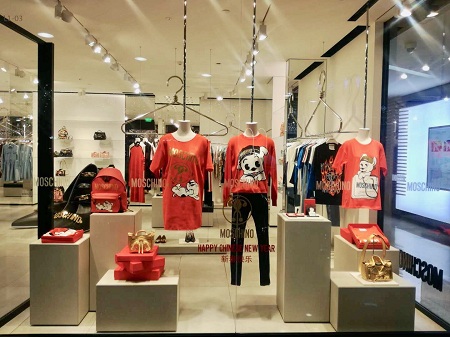
The French women’s fashion brand Maje is another outstanding example of a very appealing Chinese New Year window display. Similar to the previous examples, Maje’s Beijing store window predominately uses red and gold. However, what is particularly interesting about their window design is that they emphasize the seasonal feeling of spring by using flowers as a major decoration item. Nevertheless, the real eye-catcher in this close to perfect window display is the cuddle puppies. A lovely way to welcome the year of the dog.
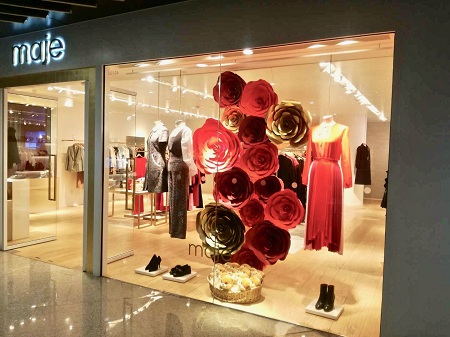
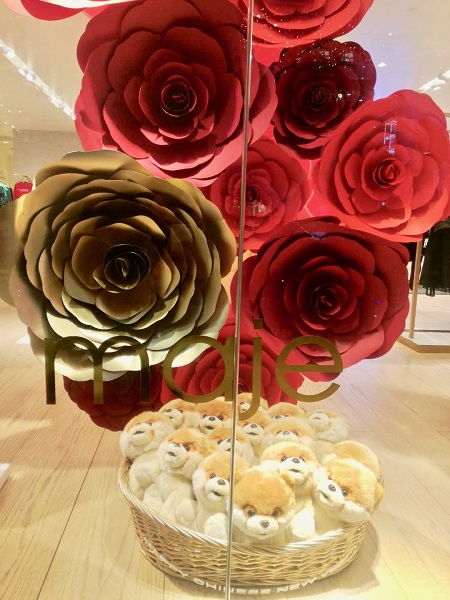
Ted Baker provides another spring-like Chinese New Year window display by applying flower stickers and a pastel color palette. For contrast, they showcase a few red dresses from their current collection as a highlight. The ‘Happy New Year’ slogan is written in gold and, of course, dogs are not missed out. Focusing on the Spring element helps Ted Baker to retain a classy brand image, whilst still catering to the festival trends.
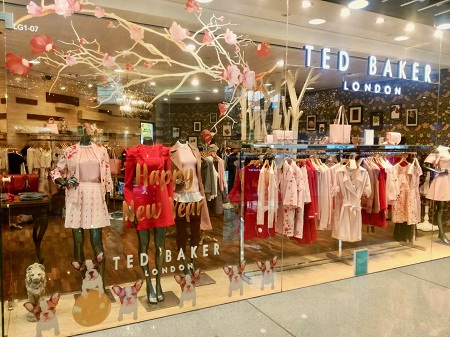
The Swiss luxury watches brand IWC has chosen a traditional retail design for the Chinese New Year. Again, we see red as the predominant color in combination with gold. However, the main attraction of this window display is the dogs once more. It is unlikely to be coincidence that they feature 8 dogs in total, since this is the lucky number in China.
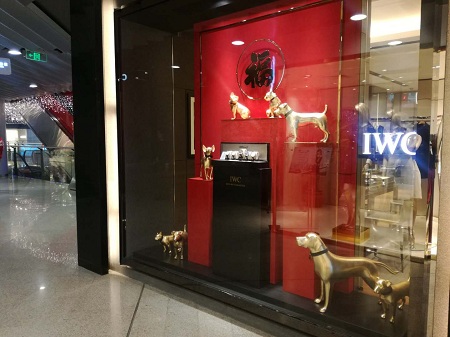
To sum up, this year it’s all about dogs. The colors red and gold always work as a great combination for Chinese New Year decoration. It is remarkable how so many retailers in China use the same idea but realize their design in a unique way perfectly tailored to their brand image.
> back to top of page


ISPO Beijing 2018 – What’s Hot In Winter Sports Industry Retail Design
January 29, 2018
ISPO is the leading multi-segment sports exhibition in Asia, taking place in both Munich and Beijing at the beginning of each year. Having secured the Olympic Winter Games for 2022, Beijing is a hotspot for the entire winter sports industry. Therefore, it was no surprise to see international brands showcasing alongside local Chinese brands at ISPO Beijing. This year, over 500 exhibitors represented more than 700 brands at the China National Convention Center in Beijing from 24-27th January 2018.
Every year the winter sports exhibition showcases major innovations in the outdoor, action sports and skiing segments. In addition, the latest trends in fashion, fabrics and fibers are presented across 40,000 square meters. Such a wide and varied showcase means that temporary exhibition designs require that little-bit-extra to stand out from the crowd, and this year there is one trend n particular that started making waves.
This year will see an increased use of dazzling lighting throughout winter sports retail, mainly in white and blue. The stark colors will be used to emphasize the cold, imitating clear blue skies and white snow to create a winterly feeling. Although brands typically shy away from cold designs, opting for mood lighting and soft furnishings, winter sports are well-positioned to go against the grain and be a bit more daring. The conditions which winter athletes are exposed can be unforgiving, so it stands to reason that the consumers themselves can be too.
Outdoor and adventure sports are often no-nonsense, and sportsmen apply logical decision-making to their purchases. Although they want their winter-wear to look good, the customers are primarily function based. This practical approach favors simple, honest brand concepts, and any brand brave enough to do something dramatic with their lighting shows a brand identity in line with the customer’s own risk-taking behavior.
Alpine Pro went for a clinical approach this year, showing harsh lines and sharp edges. With paneling akin to a VR simulator, it’s easy to imagine their products in any setting.
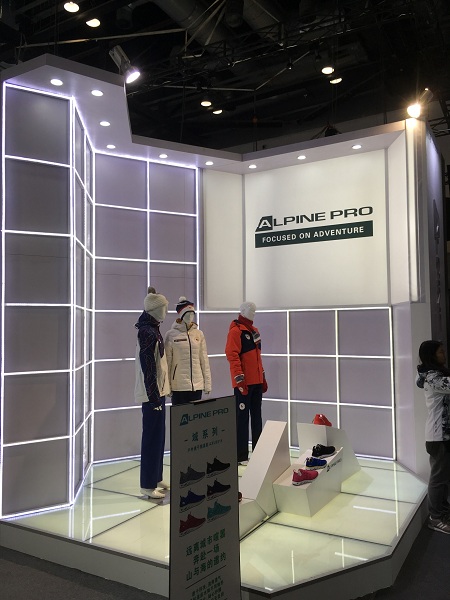
Simple, stark lighting on a matte background adds extra emphasis. The arrowed nature of the lights above help to indicate a forward motion, moving the consumer towards the desired products. Similar designs would be equally valuable in window displays, to increase footfall.
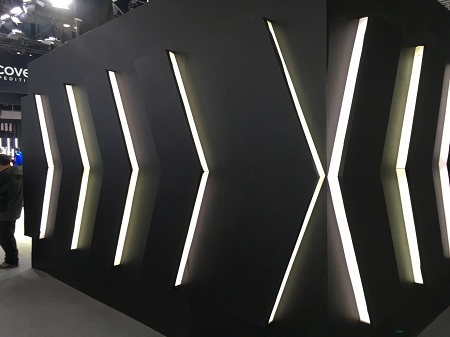
Bare structures like the one below were used to frame the products, adding depth and emphasis with very little effort. Such simple but well-executed design left a lasting impression.
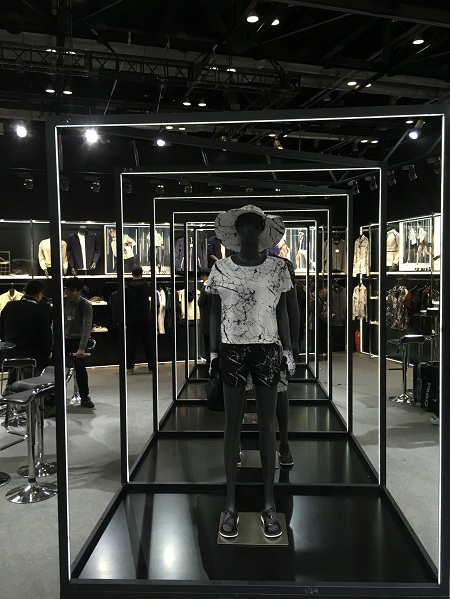
In an open exhibition hall, building walls can limit a brand’s exposure. Meplaser found the balance between an open and a private retail design with a semi-transparent construct. Without the lighting, the exhibition design would have looked more like a prison. However, with effective twists in the material coupled with blue lighting made it easy to imagine yourself stepping into an unexplored ice cave..
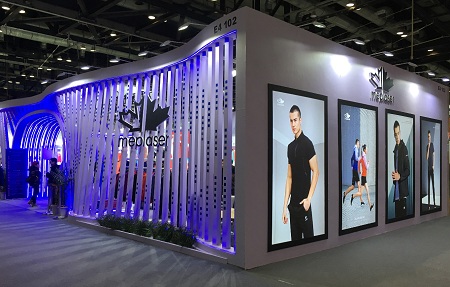
Harsh lighting can be unforgiving – it highlights any flaws or sloppy workmanship. Although blue may not be the most flattering light, it is a bold move that shows the brand is confident that their product can withstand scrutiny.
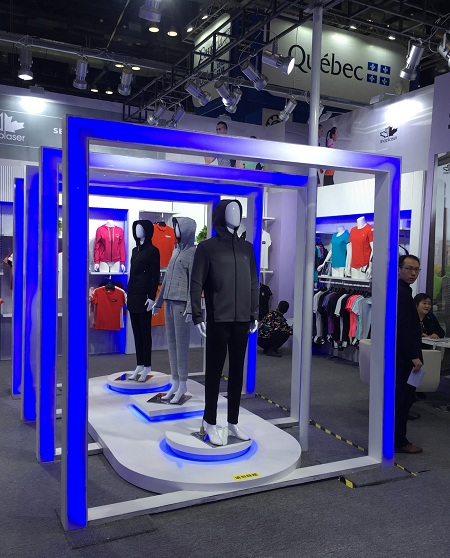
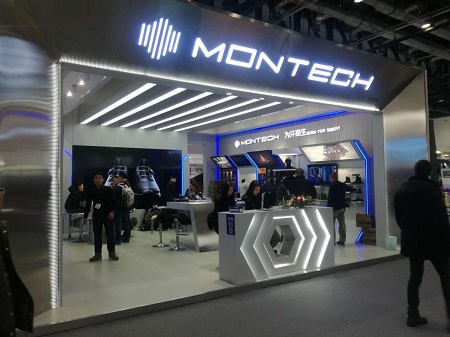 > back to top of page
> back to top of page

Color of the year 2018: Ultra Violet – Inspirations for future Retail Store Design
January 24, 2018
Every year the color institute Pantone announces an official color of the year. Throughout the year, this color will be seen everywhere – in fashion, interior, decoration, product and retail design. Laurie Pressman, Vice President of the Color Institute, stated “The Pantone Color of the Year has come to mean so much more than ‘what’s trending’ in the world of design; it’s truly a reflection of what’s needed in our world today.” With the dawn of a new year comes a new color: the Color of the year 2018 is PANTONE 18-3838 Ultra Violet.
Take a moment to look at this color and think about what you associate with Ultra Violet.
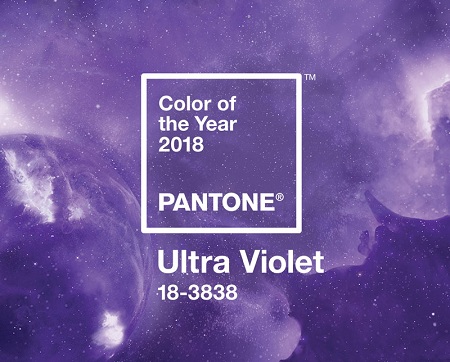
"Ultra Violet"
One thing is for sure, Ultra Violet is a dominant and vibrant color. Mostly, it is associated with royalty, mystery, magic or witchcraft. It is undisputed that Ultra Violet radiates something mystical and cosmic. Named after a particle wave just outside of the visible spectrum, Ultra Violet has always represented something mystical, almost within our grasp. When it comes to color psychology purple represents self-confidence, sophistication and elegance. In China the color symbolizes divinity, spiritual awareness and immortality. In addition, purple-shaded colors represent love or romance in modern China. Generally, Ultra Violet attracts the younger generation.
Pantone’s official statement on why they chose Ultra Violet is powerful: “We are living in a time that requires inventiveness and imagination. It is this kind of creative inspiration that is indigenous to PANTONE to 18-3838 Ultra Violet, a blue-based purple that takes our awareness and potential to a higher level. From exploring new technologies and the greater galaxy, to artistic expression and spiritual reflection, intuitive Ultra Violet lights the way to what is yet to come." - Leatrice Eiseman, Executive Director of the Pantone color institute.
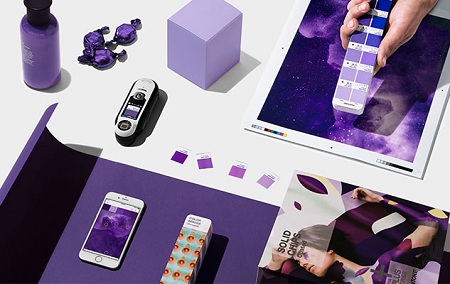
"Ultra Violet"
Leatrice’s statement makes clear that Ultra Violet is a futuristic color. It inspires us to think outside of the box, to look ahead and use our imagination to see what has not come into being yet.
Ultra Violet compliments the recent retail trend of storytelling to attract the shopper’s attention. It is a global trend to create window displays that invite the audience to step into a different world, which can be achieved through means of centering the decorations on a fairytale theme, as an example. Ultra Violet is the perfect color to add an extra sprinkle of magic.
Versace telling the story of Cinderella. The purple light gives a touch of magic.
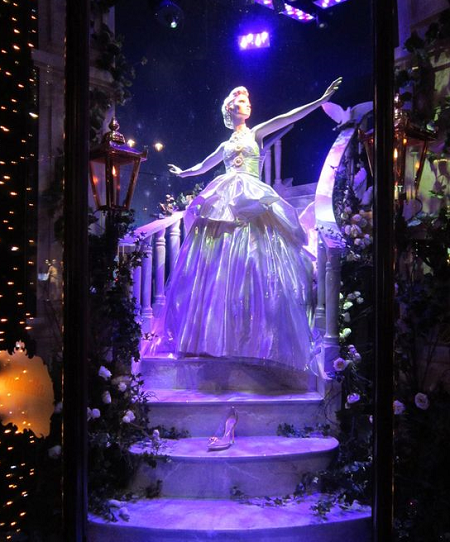
"Harrods' Designer Disney Princess Dresses Unveiled"
Image Source: Vogue
Ultra Violet in Retail Design
Throughout the year we will increasingly witness the use of different Ultra Violet shades in various retail establishments since various brands and designers around the world build on Pantone’s color of the year suggestion. In order to foster inspiration, let us have a look at some examples of how Ultra Violet has already manifested in the retail world so far.
Lulu Lemon uses illuminated dichroic film that reflects vibrant colors such as green and pink; however, Ultra Violet is predominant. The colors shift when viewed from different angles, creating a magical illusion. A simple but innovative way attract attention to the window display.
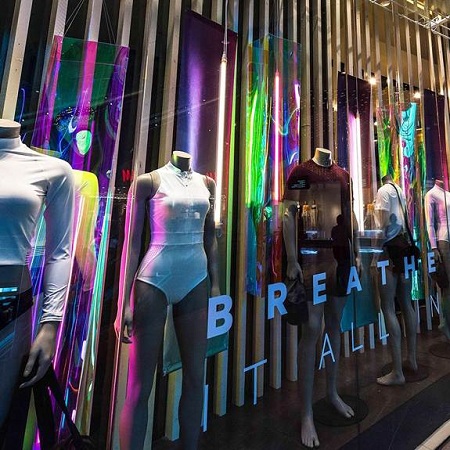
"3D dichroic installation for @lululemonausnz featuring Pantone's colour of 2018, Ultra Violet"
Converse created a kaleidoscope experience featuring Ultra Violet – which is particularly striking with the use of neon lights. This is a perfect example of how Ultra Violet acts as futuristic color, playing on the current trends seen throughout science-fiction to inspire wonder and indulgence.
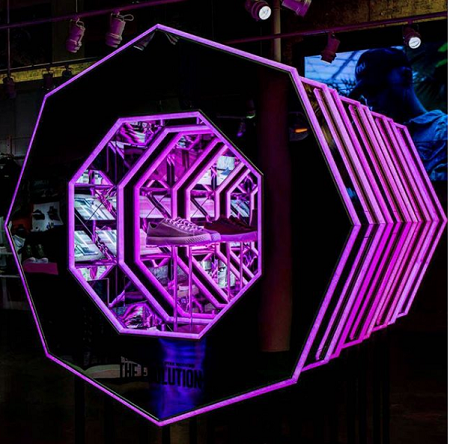
"Ultra Violet retail inspiration from Converse"
Emilio Pucci boutique in Osaka, Japan used a purple-colored carpet. The color puts an emphasis on the elegance and exclusiveness of the brand, conjuring imagery of royal grandeur.
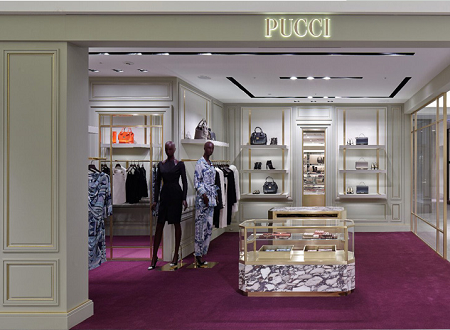
"Emilio Pucci boutique at Hankyu Umeda, Osaka"
Since Ultra Violet is a highly dominant color, it may not be suitable for every brand or retailer. However, another way Ultra Violet can be integrated into a retail establishment is to use colored decorations, adding a bold touch to even the simplest of design palettes.
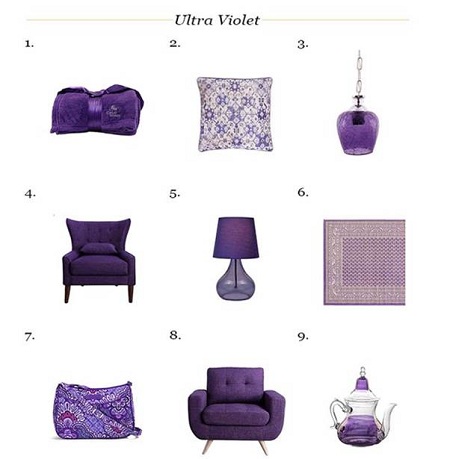
"PANTONE ULTRA VIOLET"
If you would like to find more information about The Significance of Color in Retail Store Design please click here . We are excited to keep track of how Ultra Violet will be integrated into upcoming retail store design.
> back to top of page

Christmas Decorations 2017 – What’s Special About This Year’s Christmas Décor?
December 22, 2017
Bright lights and bold Christmas décor such as trees, bells and stars has become a trend of the past! In recent years it has become increasingly common to be bold with Christmas retail design. This year, Christmas decoration is actually not as Christmassy as you may expect, as we witness two major trends in 2017. One trend is storytelling, using décor to create a magical flair through the window design and island displays. The second trend is surprisingly understated, simple and subtle. These major trends could not be more different from each other. Nonetheless, both styles are very present in retail store design all around the globe. Let’s take a look at some examples and inspiration for this year’s Christmas season.
Once Upon a Time
Christmas is not just an event, it is a feeling. This Christmas feeling is strongly brought forward by nostalgia – and this nostalgia comes with childhood memories. In adult life, this time of the year is known to be the most stressful time, so it is not surprising that we look for escape. Therefore, reminding people of the days when Christmas was solely about tradition – such as writing letters, baking Christmas cookies and decorating the house – is a beautiful way to recapture the Christmas spirit. For this reason, many brands use storytelling to create a Christmas nostalgia.
Lord and Taylor in New York City created a window display that epitomizes nostalgia to perfection. It transports the viewer back to a Christmas long before adult life, to a worry-free time full of wonder.
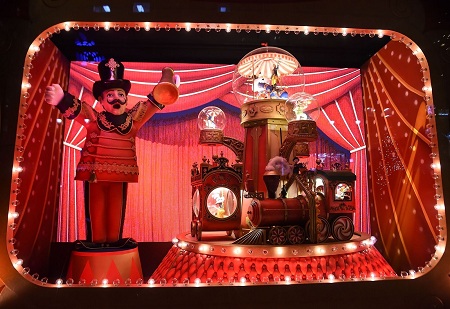
"Lord & Taylor: The Best and the Brightest"
The fashion retailer Saks Fifth Avenue centered this year’s Christmas decoration around the Disney adaptation of the fairytale ‘Snow White and the Seven Dwarves’. Since the film adaptation celebrates its 80th anniversary this year, it is another great example of how brands can use nostalgia to reinforce the Christmas feeling.
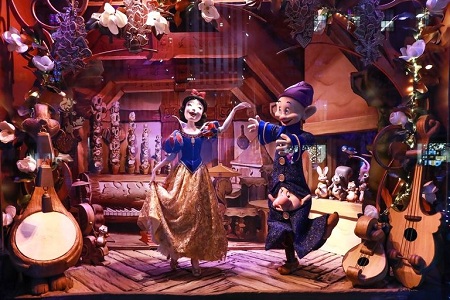
"Saks Fifth Avenue: Once Upon a Holiday"
Fenwick’s department store in Newcastle, England is renowned for their Christmas window displays, with the unveiling of the Christmas window drawing in larger crowds than the city’s light turning-on ceremony. This year, they celebrate the British icon Paddington Bear in a series of heart-warming scenes that uses rich lighting and an extensive use of props to create a cozy winter showcase with the intrepid bear at the center.
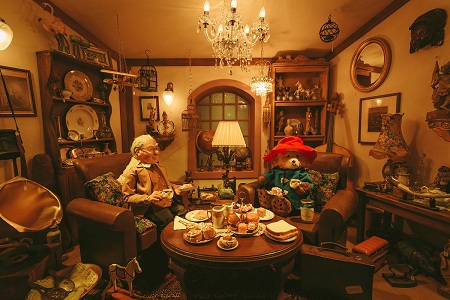
"Fenwick Newcastle's Christmas Window 2017 Unveiled: Love From Paddington"
Christmas Magic
Another way to incite Christmas nostalgia is through the creation of some magical flair. What is primarily remarkable about this trend is that it does not use the traditional Christmas color palette and symbols. This decoration style is typically artsy and futuristic, using abstract imagery. Overarching elements such as winter weather, gift-giving or childhood whimsy can make abstract store concepts relevant.
The charm of Tiffany’s window display in NYC takes us out of this world into another magic world.
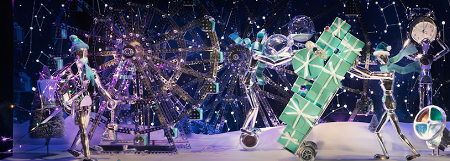
"Tiffany & Co.: Tribute to Gene Moore"
Bergdorf Goodman, a luxury goods department store in Manhattan, provides another interesting example of how retailers create a magic world to enhance the Christmas spirit. The use of silver brings an icy glamour, whereas the combination of 1930s fashion with dinosaur fossils appeals to the quirky side of consumers.
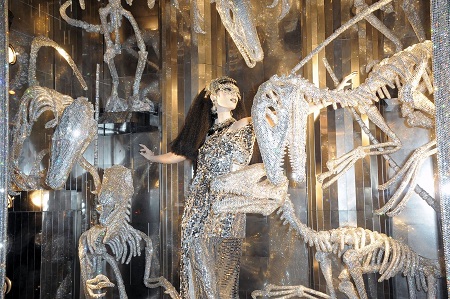
"Bergdorf Goodman: To New York, With Love"
Down to earth
From the magic world, down to earth. The increased use of organic materials and earthy colors aims to create a cozy and inviting environment. So instead of hanging fairy lights in all the colors of the rainbow, try hanging something organic or green - for example, mistletoe or pine cones. This is particularly suitable for more serious brand concepts and provides a touch of warmth without losing a serious demeanor. Another element of the organic and earthy Christmas decoration trend is wood. In combination with something green and a touch of white, wood in all shapes and colors perfects the cozy and earthy decoration style.
Retail design Beijing provides a perfect example with the H&M window display in Sanlitun. The window design is an excellent example of a “down to earth” Christmas display.
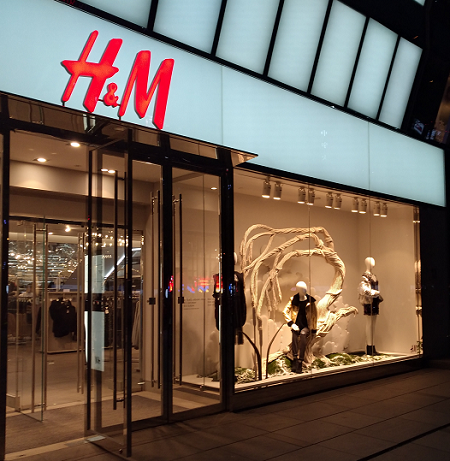
"H&M Store, Beijing"
We can also witness the same trend in Europe. Instead of displaying a big, colorful Christmas tree, Jil Sander’s store in Vienna, Austria is keeping it very low-key using solely earthy colors. Cones and light bulbs provide a very subtle touch of Christmas iconography.
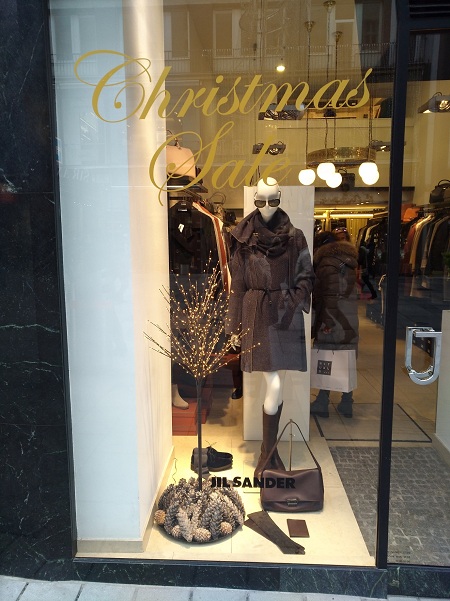
"Jil Sander store, Vienna"
Jones store in Vienna is another great example of an earthy Christmas window display.
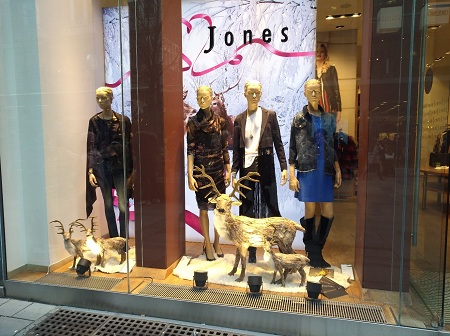
"Jones store, Vienna"
Summary
To sum up, this year retailers either go over the top by using sophisticated story-telling whilst designing their window displays, or they come down to earth by using organic and simple materials.
Obviously, the first trend requires more effort and a larger budget, making it suitable for big brands. However, the main argument for the extra expense is that these kinds of window displays leave a long-lasting impression, encouraging consumers to see your store as a part of Christmas for years to come.
The second major trend of using organic materials and earthy colors takes less effort and budget but still looks very appealing to customers. The main benefit is that it is not only suitable for Christmas but also for the entire winter season. This low-key approach can draw in those with Christmas spirit and humbugs alike.
> back to top of page

Moving Forward with Food & Beverage Branding in China
December 20, 2017
With an increase of online shopping and the changing attitudes of Chinese consumers, retail trends are causing brands to reconsider their marketing strategies. Retailers must now design store layouts that enhance customers’ shopping experiences, and mall owners need to promote slow shopping. Many are doing this by adding more food and beverage (F&B) establishments. The F&B industry is China’s fastest growing sector, with an expected average growth rate of 10.6% between 2015-2018. The retail market value of China’s full-service restaurants in 2014, excluding fast food, was CNY 1,865 billion and is forecasted to reach CNY 2,274 billion by 2019. These increases are primarily due to rising disposable incomes and continued urbanization, which have created expansion/entrance opportunities not only for retailers, but for the F&B sector as well. As such, restaurant design in China is more important than ever. This article will discuss why incorporating branding into retail design is crucial for F&B businesses in China’s expanding market, as well as how such branding can be applied to the evolving eating habits of Chinese consumers.
Food Safety and Health
Domestic food scandals have been damaging to the trust of Chinese consumers. A lack of trust in domestic brands, coupled with rising disposable incomes have allowed many customers to substitute for high-quality, non-domestic products instead, effectively increasing the popularity of international imports. A desire for authenticity, as well as a growing concern for physical well-being, have made health-oriented F&B brands more attractive for like-minded consumers. Restaurant design in China has started to incorporate international elements and proudly promotes foreign origins in order to optimize this.

"Restaurant Design, The Mission Fresh Grill"
5 Star Plus Retail Design has helped The Mission Fresh Grill to implement a concept design that exemplifies how an F&B brand supports active lifestyles whilst ensuring its customer of the food quality. An open kitchen restaurant design in Beijing allows customers to view the food preparation process, while only the freshest of high-quality ingredients are used. This allows the consumer to make their own judgement on the quality of produce, whilst simultaneously showing that the brand has nothing to hide. An open environment demonstrates that the company is proud of their offering, and shows respect for their customers’ requirements.
Innovation
The increase in foreign imports has internationalized the Chinese palate. With more disposable income, people are now more likely to try new foods that are non-essential. Rather than focusing on nutritional value alone, consumers are looking for exciting flavors that provide more than just sustenance. The recent coffee boom is a great example of this F&B trend.
Innovation is not limited to the products offered, but also includes the means through which it is delivered. Widespread online connectivity has created the need for F&B brands to develop e-commerce platforms in order to survive in China’s ever-growing competitive market. Omni-channeling can adapt various technological interfaces to make customer interactions more convenient and efficient. This area is a great opportunity for an F&B business to design e-commerce platforms in a way that attracts customers into the establishment by further spreading its brand’s image. By ensuring the online presence resonates with the restaurant design, a cohesive brand image can be created.

"KFC’s online ordering"
Customization
Having an attractive, transparent brand image can create emotional connections with the right consumers. For a brand to thrive, it needs to target market segments that hold the same values or desires as the brand itself. Chinese consumers want the foods they eat to be a channel of self-expression, so the more an F&B business’ store or restaurant design incorporates the brand’s lifestyle message, the more effective the brand will be at aligning itself with its target consumers. This is not limited to the bricks and mortar store, but applies to the online presence as well.

"Starbucks China’s target segment"
Image Source: TSI

"Adapting to local flavors"
Image Source: TSI
Starbucks has done an excellent job at capitalizing on China’s recent coffee trend by targeting ambitious young professionals who want to appear trendy and prosperous. The store design offers them a comfortable, practical space which brings a transnational flair to local environments. Instead of relying on its reputation and previous global success, Starbucks has adapted local flavors into its menu as a stepping-stone to its signature coffee experience. This shows a concern for the Chinese consumers’ tastes and values, incorporating their personal needs into the brand concept on a regional level.
In summary, brand image is not only an important factor for retail design in China, but remains relevant for F&B brands as well. Food safety; healthy, active living; increasingly globalized appetites; as well as online and offline customization are all major Chinese food trends shaking up the F&B industry that brands need to recognize. Incorporating these trends into effective branding helps F&B brands connect with aspiring Chinese consumers who adhere to the same trending values and lifestyles.
> back to top of page

British Chamber of Commerce in China Christmas Party 2018:Event Design and Production for BritCham
December 13, 2017
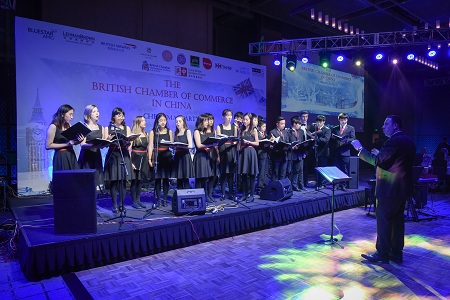
On December 1st, the British Chamber of Commerce in China hosted a Christmas Party designed to impress their guests at Rosewood Hotel Beijing. After impressing the chamber with the design of last year’s party, 5 Star Plus Retail Design were invited to once more create the event design concept, which included interior and graphic design elements, as well as design execution. We were proud to host a corporate table at the event and be a sponsor for such a beautiful evening.
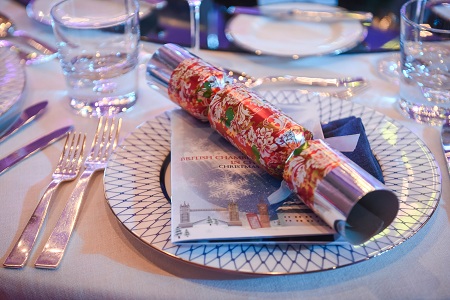
The Gala event was themed “Icy Wonderland”. Upon entering the event’s location, one shook off the outside world and was transported to an ice cave. This was not only achieved by covering the ceiling and pillars in white but also through adapting the lighting concept accordingly. The color concept of the Christmas party mirrored the icy wonderland theme, held in light blue and white.
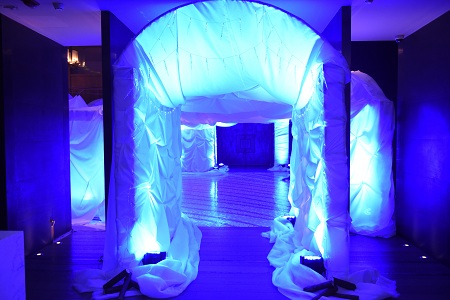
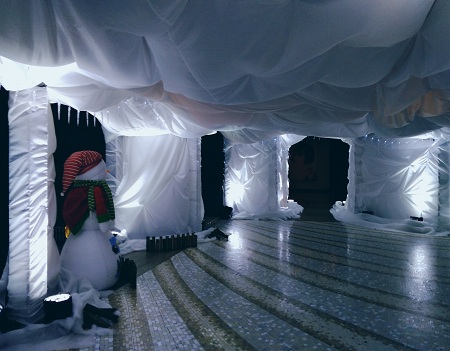
Of course, no winter wonderland would be complete without a snowman, who turned out to be the most photographed object of the evening.
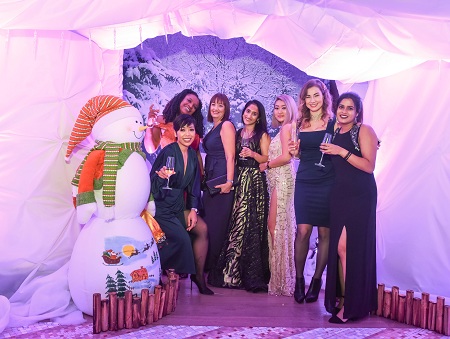
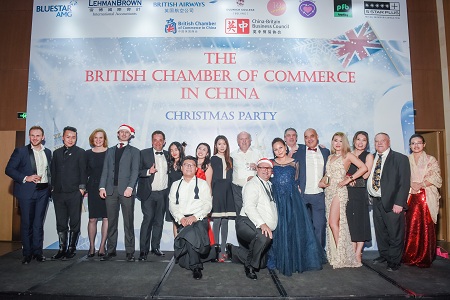
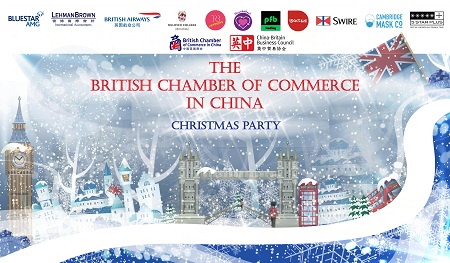
We were glad to see that, similar to last year, the design was used as a backdrop for taking pictures and everyone seemed to have a great time.
> back to top of page

10 Key Points for Successfully Working with Franchise Partners
November 24, 2017
China and its cities Beijing and Shanghai are on the top of the list of new sales territories for many retail brands. While there are many ways to enter the market (such as export – directly working with wholesalers or distributors - working with licensees, or founding a subsidiary in China), many brands choose a franchising model where they work with one or more local partners for their expansion strategy.
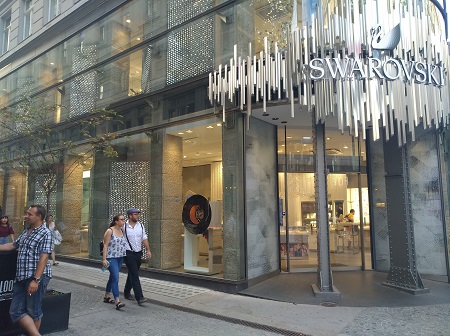
A franchisee sells products based on a proven brand concept and has to adhere to many different regulations imposed by the brand headquarters (including the store design, staff attire, product range to be carried, product display, and prices).
In our view, the two most important things to be considered when working with a local company are the selection of a partner who shares your vision, as well as consistent follow up and control when implementing the brand image. Here are our top 10 key aspects to consider:
1. Select your Partner Carefully: Many brands can't wait to come to China and when a local company finally shows interest in their products, the brand headquarters often jump at the opportunity, quickly signing a distribution or license agreement. However, it is important to do a thorough background check and select the right partner. Check their track record: the geographic presence, existing relationships with landlords (department stores and shopping malls in Beijing, Shanghai and other bigger cities) and network of sub-distributors in smaller tier cities and other regions.
2. Exclusiveness– yes or no? Are you looking for a general distributor or do you plan to work with several partners in China? A general distributor or exclusive franchise partner has more responsibilities and control over the brand in China. This usually includes the responsibility of investing in brand promotion and the right to work with sub-distributors. You need to decide whether the license should be limited to certain geographic areas in order to maximize local knowledge. If you may want to enter the market directly in the future, you can also reserve yourself the right to do so.
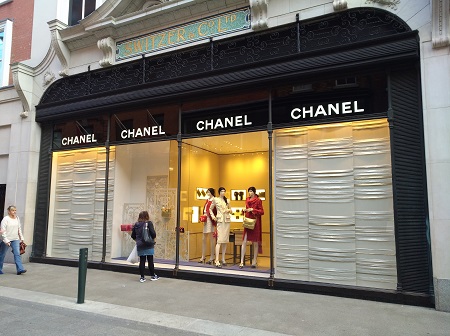
3. The Contract: Make sure you know what you want and have a clear long-term strategy covered in the contract. You should be certain to include the duration of the agreement, geographic territories, and termination terms. Prices should be controlled by the brand headquarters and new store locations should be pre-approved.
4. Minimum Purchase Order: Purchase prices and other conditions should depend on the minimum purchase order value that is specified in the contract for the first and following years.
5. Marketing Expenses: General distributors and exclusive franchise partners are typically contractually committed to invest a certain yearly amount into marketing and promotion for the brand in China.
6. Marketing Materials: In many cases, local partners do not have a strong marketing team. This means that there is often a sub-optimal marketing strategy and the brand is not promoted in the right way. In order to avoid this, the franchise partner creates and publishes their own marketing materials. This can lead to marketing messages that do not fit into Chinese norms, and appear off-message. Therefore, the brand headquarters need to regulate the details of the collaboration on marketing issues in the contract. For an efficient promotion of the brand in China, the marketing department at headquarters needs to understand that speed is fundamental in China and give full support to the local partner.
7. Store Identity Handbook: When working with franchise partners, it is crucial to ensure that all retail stores are built in line with the international brand image and worldwide store design standard. Most brands develop a store design or identity handbook that specifies all details related to the store design. This includes all products and materials required for the fa?ade, in-store area plans, furniture and fixtures, product displays, and other elements. With a store identity (SI) standard, brands can reinforce a globally consistent brand image.
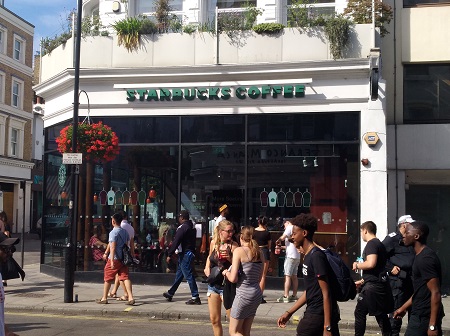
8. Control of the Brand Image: Even with existing guidelines and a standard detailing the store design, it is important to regularly visit the stores to reinforce the correct implementation of the brand image. It is important to check the store design regularly (with the first check taking place before the store opening), as well as the product display, staff attire, sales techniques and customer service, among other things. In particular, stores in smaller Chinese cities are more likely to diverge from the brand standard, so should be monitored.
9. The Pricing Policy: Ensuring consistent pricing across China is another challenge. Good practice requires brands to specify the right to exercise control over the retail prices in the franchise agreement. Most brands will publish retail price lists for the different markets on a yearly basis. Regular site checks will ensure that distributors and franchise partners comply with price regulations.
10. Regular Training of Staff: Be aware that your franchise partner is also your customer and that the more support they get, the better they will be able to represent your brand and sell your products. The sales team especially will need support and regular trainings to understand the brand philosophy, as well as uniqueness and true value of the products. They will only be able to sell effectively if they are convinced of the products and have no doubts about the quality of your products and services. Assign someone to conduct frequent trainings.
Summary
Whether to franchise or not depends of the size of the brand, the amount of resources the headquarters are willing to spend on the Chinese market, as well as the amount of control you want to exercise over the brand development in China.
At the moment, brands that are show successful long-term franchise are medium-sized companies that have a certain heritage and are often still family-owned. Companies of this size typically focus on creating high-quality products in an often traditional environment where fewer efforts are spent on marketing and business development. Working with a local partner that has well-established sales channels and relationships in the market makes absolute sense.
By contrast, products that are very new, creative or innovative require more groundwork for creating brand acceptance by using a more creative marketing and design strategy. Since many franchise partners still work with traditional marketing and sales channels, such retail brands should consider entering the Chinese market themselves, by opening their own stores.
Independent from the expansion strategy chosen, ensure that you have a globally coherent brand image and give increased support to the local marketing and sales teams.
> back to top of page

How to Optimize Space for a Small Flagship Store Design
November 24, 2017
When it comes to store retail design, a small flagship store can seem daunting, even to the most experienced of designers. With a small space comes considerable challenges such as maintaining an open store design layout, displaying substantial amounts of product on the main floor and not visually overcrowding or stimulating the customer. Through trial and error, store designers have learned various tips and tricks to maximizing space when conducting a small retail store design.
Layout
The layout of a store will ultimately determine the path store owners can take with the store. With regards to small retail stores, the floor plan must be carefully thought out so as to make the most out of the limited space provided. There are five primary floor plans designers utilize which are straight, diagonal, angular, geometric and mixed. However, only some of these floor plans are best suited for small store designs. With a straight floor plan, also considered the most common in design, this allows for designers to utilize the greatest amount of the floor space. Fixtures merely should be placed at right angles. A diagonal floorplan creates heightened visibility in stores and so with a small space, being able to see everything clearly is ideal. Angular, geometric and mixed floor plans, however, often require more space and are not best practice when it comes to small store designs. This is because with an angular floor design, it requires customers to walk around in different pathways throughout the store. This would pose as a challenge to accomplish in such a small space. In terms of a geometric floor design, it too usually demands a big space in order to create unique patterns and it ultimately does not maximize the entire store layout. Finally, a mixed floor design combines favorable elements derived from the other four designs and thus the same issue arises where a spacious layout is required.
The retail design Beijing store, Adidas Y-3 Store, exemplifies a straight floor plan layout. Throughout the retail design store, all the products are clearly visible from any viewpoint whether one stands from the front or back of the store. Once more, the open pathways provide customers with easily access to the products.
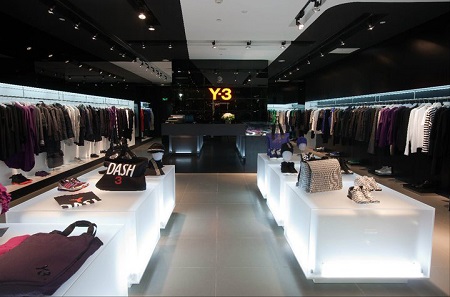
"Adidas Y-3 Store, Beijing"
Fixtures and Displays
Throughout the store, fixtures and displays are what attract customers to the product. However, while it is important to make these structures visually appealing, it is equally vital to ensure their functionality. Creating structures that can have multipurpose usage such as hidden storage and adjustable shelving will maximize the store’s space potential. In addition, designing fixtures and displays on wheels to include a movability factor adds flexibility potential to the retail store design. The following are examples of specific fixtures and displays that can save store’s space.
Slatwalls/Gridwalls- These types of walls are extremely versatile and can double up as product displays and store decoration. They save space and practically anything can be hung from these types of walls. For instance, these types of walls can accommodate various accessories, hooks, hang rails, clothing and shelving.
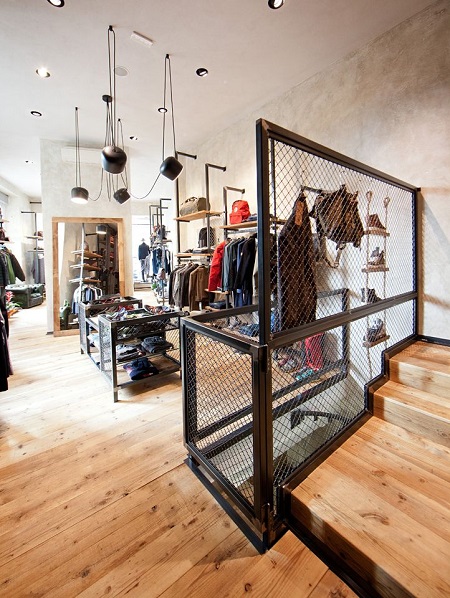
"Get Store Uomo by AMlab, Fossano – Italy"
MASH, located in Beijing and designed by 5 Star Plus Retail Design, makes use of a flexible wall design in which products can be displayed in numerous different ways up upon the wall. Adjustable short rods can be pushed through any of the holes on the wall to make way for hanging and showcasing different items.
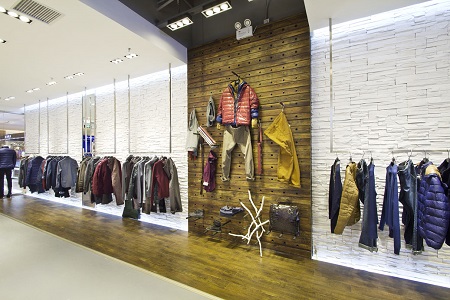
"Store Design: MASH Flagship Store in Beijing"
Nesting Tables- This Asian retail design store utilizes nesting tables throughout the space. The multi-display tables are the perfect solution to showcasing products to customers in a way that grabs their attention and interest almost immediately once entering the store. Their stacking potential and capabilities make them a feasible and easy way to save space when needed.
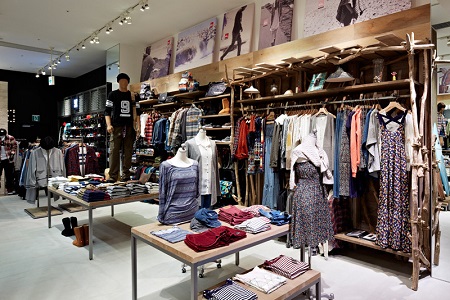
"Wooden Store Interiors! Quicksilver Store by Specialnormal Tokyo"
Adjustable Shoe Racks- In this shoe display system, store owners have the flexibility of choosing how many shoes to display at a time. There is no height or width restrictions for the shoes and the solid pieces of wood can remain closed or open via a simplistic mechanism nested in the interior of the wall which turns a pivot in front of the wall. This innovative design not only saves space but also adds a visually appealing factor to the store.
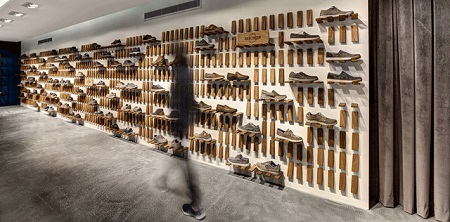
"Skechers TR Casual Showroom Zemberek Design "
Hidden Storage Space- In this children’s store, the clothing displays double up as storage. Underneath each display is a pull-out drawer that can hold more merchandise. Combining such hidden storage elements creates the opportunity to hold more products on the main floor while maintaining a spacious and uncluttered layout.
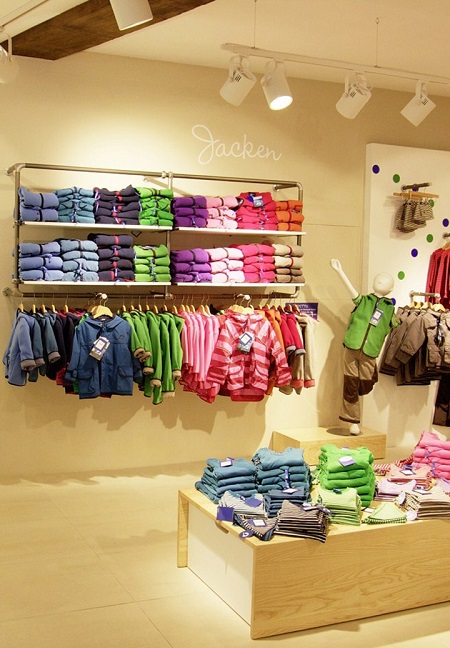
"FINKID Children Clothing Concept Store by The Store Designers, Erfurt "
With a small store, preserving and optimizing space is invaluable. Without a logical plan, things can get easily cluttered, lost and unprofessional looking. Every detail must be thought-out so as not to neglect any part of the store. The more space preserved, the more flexibility gained.
> back to top of page

A ‘scan do’ attitude: How QR codes revolutionized the Chinese retail landscape
November 9, 2017

What are QR codes?
QR (quick response) codes are a type of barcode used with high frequency in China; however, people in the West may be unfamiliar with them. Although they started off within the automotive industry, QR codes can now be seen across visual merchandising, providing information and payment services. Every poster has a QR code leading to a webpage where you can buy the product, get more information or join in a conversation.
They’re not only used for information – QR codes have become one of the most efficient ways of paying for goods. Integrated with the Wechat and Alipay apps is a ‘wallet’ which allows for users to transfer money easily to vendors or friends. Retail design should ensure that QR codes are placed in a highly visible place and are well lit, to assist the scan. Most consumers know that the cashdesk will have a code and will often have payment ready before they even meet the cashier. Paying through e-commerce has become such a common way of paying that even taxi drivers, street vendors and buskers have their own QR codes.
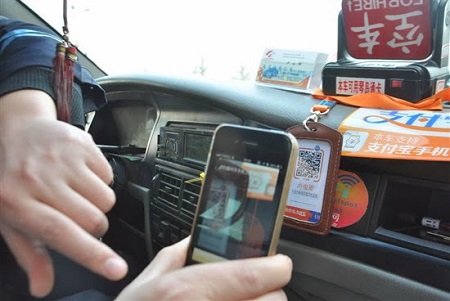
"Pay Taxi with Alipay"
QR in Retail
Perhaps the most common setting for QR codes is within a retail store. Customers can use QR codes to scan desired items, find prices that aren’t listed, review additional product information and even compare benefits against competing brands. QR codes are beneficial as space savers, allowing brands to establish retail design based on their identity, without sacrificing display space in order to provide information. QR codes can also provide a quick inventory check, leading to less floorspace being required to display products. Simply scan the code and an assistant can bring your size and color from the stockroom. This is a great way of integrating online and offline functionality, maximizing logistics and customer service.
QR codes are also used extensively in social settings. A common feature in Beijing retail design, particularly in malls, is to include a large LED screen. Shoppers can scan the QR code and share their own messages and images, making the shopping experience more interactive and fun.
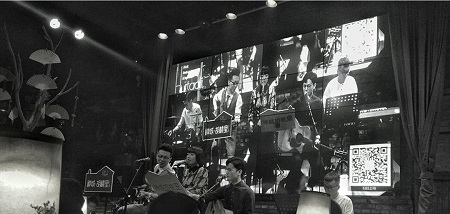
"Hutaoli bar and restaurant makes use of QR codes to gather audience feedback on their performers and create a festive atmosphere.
Instagram Photo by Heyuanyuan_hyy"
Consumer Benefits
Probably the most noticable benefit of QR codes is that they don‘t leave a paper trail. Payment receipts are sent to the app, but QR codes eliminate the need for paper receipts, coupons, cloakroom tickets, and you won’t be handed lots of small change after a transaction. With both consumers and companies looking for ways to be sustainable and environmentally friendly, QR codes help the retail industry do their part for paper reduction.
QR codes have also made public transport a lot more accessible. A quick scan of a code can give you a real-time update of buses and trains, tell you how long you need to wait, and if there are any delays. You can rent a bicycle anywhere in the city with a quick scan. Companies such as Mobike and Ofo have millions of bikes throughout cities big and small, without any physical retail stores – all the information you need is just a scan away.
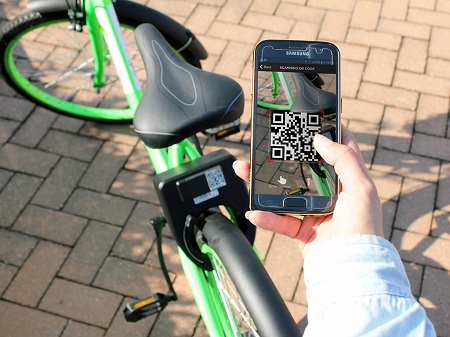
"Bike-Sharing Arrives In Hong Kong Thanks To New Startup Gobee.bike"
QR codes are so prevalent in society, that they are even printed on business cards and applicant CVs, for easier self branding. This also has the advantage of taking away the difficulty of finding someone online – there is no need to get the correct name or telephone number, the QR provides accurate and up to date information.
Benefits for Business
Given how quickly payments can be processed, it stands to reasons that businesses are attracted to the QR code. Even outside of commerce, QR codes are an efficient means to provide further information about products and services. Rather than relying on customers to recall the brand and research it themselves at a later date, it provides an immediate way of keeping consumers engaged, whilst exposing them to further marketing messages. What’s more, it reduces the risk of forgetting the URL, and can store the webpage for future reference.
QR codes are useful for reaching a large audience at the same time. Including a QR code in presentations allows for immediate access of source materials, or for providing further information that may be too lengthy to include in the original format. A good use of this is in the food and beverage industry, to provide nutritional and dietary information.
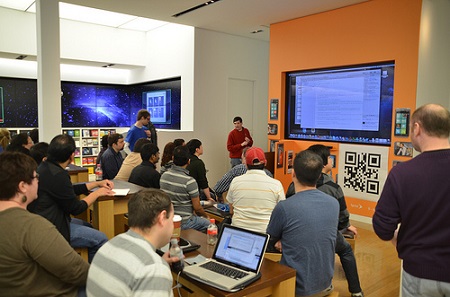
"QR Code Poster"
The electronic nature of QR codes helps companies to measure their reach, tracking engagement and building communities. As they can store large amounts of data, QR codes are becoming increasingly common in specialised industries too. For example, the Japanese government use QR codes on foreign visas, which track all previous history of entry to the country.
Why hasn’t the West embraced QR codes?
There are a number of reasons that QR codes haven’t made their way into the Western retail space, including security risks, irregular phone service and the culture being less image-orientated.
Western people are often concerned about account security and misuse of information, so connecting a bank account to a mobile device can cause concerns. Although infrequent, there have been cases of malicious codes being created that steal money, record browser history, use a mobile devices GPS, and access the phone camera.
Not everyone in the West uses their mobile phone in day-to-day life, and even when use is common, a lack of wifi and data availability can make QR codes difficult to use. Perhaps part of the reason is that Westerners are less quick to take up new trends, preferring to stay with tried and tested methods, even if they are more inefficient.
With the rise of Generation Z, we may in fact see a rise of QR codes in the retail space, as cellphones become the primary electronic. The up-and-coming generation don’t know life without the internet and are used to being constantly connected.
> back to top of page

Marketing Luxury Goods towards Chinese Consumers
October 30, 2017
When it comes to purchasing luxury goods in China, consumers have varying attitudes and expectations of branded products. With wide variation, it can be difficult for brands to appeal to a broad range of people. So, how can luxury retailers attract consumers into buying their products?
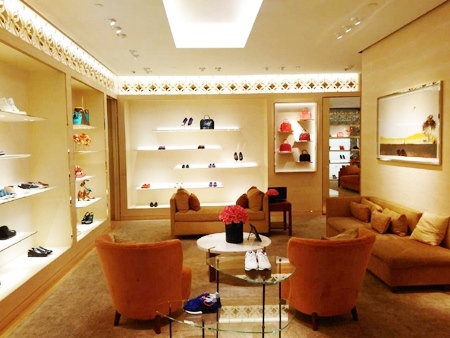
"Luxury China: Market Opportunities and Potential" by Michel Chevalier and Pierre Lu has identified 4 types of Chinese consumer attitudes toward luxury: luxury lovers, followers, intellectuals and laggards. These consumers are male and female between the age of 35 and 50 years old, living in Tier 1 mainland economic cities (Beijing, Shanghai, Guangzhou or Shenzhen) with successful professional careers.
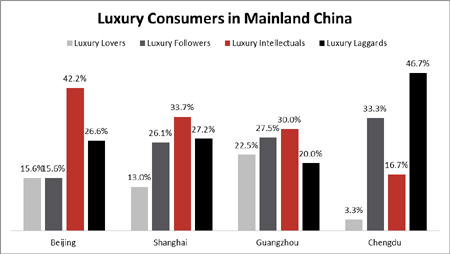
Image adapted from "Luxury China: Market Opportunities and Potential" by Michel Chevalier and Pierre Lu
Based on this classification, 5 Star Plus Retail Design has identified current ways to attract each group of consumers in China. Although the goal is to increase sales, whether online or offline, correct branding can lead to increased brand reputation and desirability.
1. The Luxury Lover:
Luxury lovers know exactly what they want from luxury brands and enjoy everything that comes with the lifestyle: heritage, attitude and status. These are the consumers who want to ‘buy in’ to exclusivity and show their high-status and love of quality. 60% of luxury lovers are women who are very sensitive to trends, do not listen to the opinions of others, and have a clear understanding and vision of what they appreciate from shopping luxury. They also love to share their brand experiences with their friends and family, making them powerful opinion leaders.
How to attract them?
As luxury lovers know exactly what they like in a brand, marketers need to present the brand's history and communicate promises effectively through all channels (offline and online). Luxury brands in China need to focus on inspiring luxury lovers with appealing product design that clearly features the brand's logo; producing engaging advertisement campaigns in high-end fashion magazine (digital or print); whilst utilizing innovative video commercials and attractive retail store design concepts. The key here is to make the brand relatable to the customers, showing the same core values that they themselves possess. This can be done by showing elitism through superior quality and a long tradition at the forefront of fashion.
2. The Luxury Follower:
Luxury followers are the ones who are heavily influenced by the media and public opinion, rather than following their individual style. They are more likely to want to know why the brand is so famous; how many retail stores they own; the number of online followers on social media platforms; and which celebrity are wearing their products. They are impulsive buyers, who want and need the latest seasonal luxurious items to feel like a part of their social network. 72% of luxury followers are women.
How to attract them?
Retail brands need to focus on producing popular product designs. The key is to create buzz around trendy luxury goods, by showing the luxury followers that famous celebrities and social media stars are fond of their products. Asking celebrities to design a limited-edition collection for a luxury brand will also attract these consumers to make a purchase. The brand logo should be clearly displayed, so that luxury followers can receive instant gratification from associating with the right brand. An example of a European luxury brand that has collaborated with stars on limited collections and has successfully built a strong presence in China is Modern Creation Munich (MCM). Their fun and trendy approach to luxury items has made them a hit with the younger Chinese generation.
3. The Luxury Intellectual:
The Luxury Intellectual category has a balance gender spread with 45% being male. These consumers have their own understanding of luxury and are less influenced by the media and public opinion. They are very rational, individualistic people and prefer discreet, classical luxury products. These consumers love to compare items and are very analytical about it. Quality is at the forefront of their decisions.
How to attract them?
In order to appeal to them, brands need to design simple, classic products, with minimum appearance of the brand's logo. Functionality is favoured by this group, and products should be made with utmost care. The quality of a product should be obvious through the use of high-end materials and superior craftsmanship. As Luxury Intellectuals are analytical, a well-written description of each item on the luxury brands website is a must for attracting them. A good sales team with a vast knowledge of all the products needs to be in place to efficiently assist them in-store.
4. The Luxury Laggard:
84% in this category are women. Advertisements, trends and other external factors have little effect on them. These consumers in China purchase for functionality rather than fashion. They want to purchase quality products that are practical and durable. Luxury laggards are rational, impulsive and opportunistic buyers that love a great luxury bargain.
How to attract them?
Brands need to focus on functionality, quality and usefulness of the product. They are price-conscious and very impulsive buyers. An effective way to attract this group is to set up a store in an outlet mall, where reasonable pricing is in place. Creating other pricing opportunities, such as sales, will allow brands to invite and pull them to purchase in-stores and online.
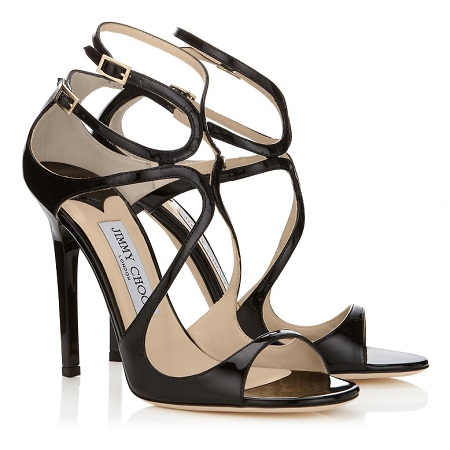
" Jimmy Choo shoes are an example of low-key branding, where only people familiar with the brand can recognise the shoes. Jimmy Choo is known for superior quality couture."
Foreign luxury brands wanting to effectively strengthen their presence and positioning in China's luxury market must appeal to all consumers, considering different consumer attitudes towards luxury into their marketing strategies.
This research shows that luxury audiences are predominantly ‘Luxury Intellectuals’ with a secondary base of ‘Luxury Laggards’. Both groups favour quality over status and are unlikely to be swayed by media and public opinion. As such, the quality of the product must be at the forefront of promotion, paying special attention to precision detailing and durability. A classic style is likely to be preferred, so that the design can last several seasons without going out of style.
This approach is beneficial for all groups, as superior quality is more likely to attract high-status consumers, including celebrities and icons, which in turn will appeal to Luxury Followers. By emphasising the products’ superior craftsmanship, Luxury Lovers know that they are buying an excellent product.
From conceptualizing the layout of the retail design store to any branded event, never forget to consider to whom you are selling your products to and how the brand's message and image are delivered. Profit comes from giving the customer what they want, not by finding an audience that accepts what you offer. Understand your audience and strive to be everything they need and more.
> back to top of page

Opening Soon! THE MISSION Mexican Grill at Central Park Plaza
October 23, 2017
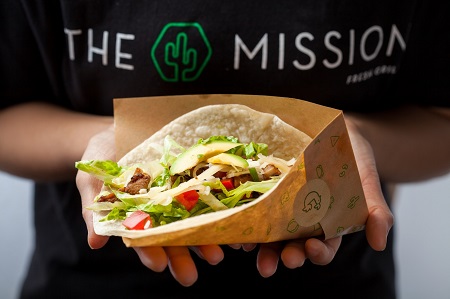
Following the success of THE MISSION’s store opening in the China World Mall, we are excited to announce their second Beijing store opening besides Chaoyang Park! 5 Star Plus Retail Design has helped translate the original restaurant design to compliment the new surroundings and bring wholesome burritos full of flavour to the many park patrons.
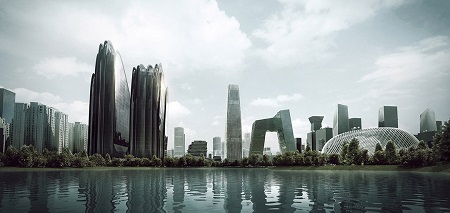
"MAD’s “Chaoyang Park Plaza”Breaks Ground"
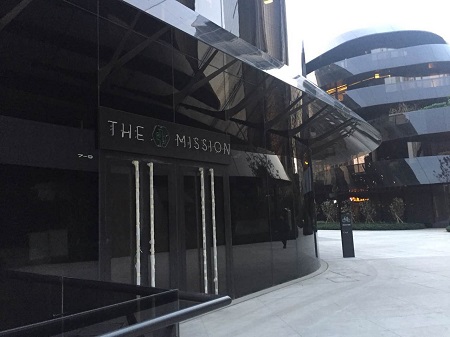
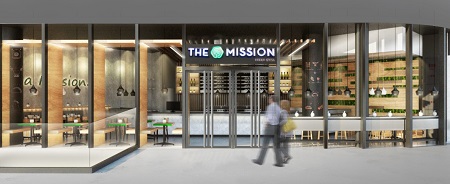
Chaoyang Park Store has something for everybody, whether you’re looking to unwind from a stressful work-week, spend precious time with loved ones, or get in touch with nature. Opening a new store at the centre of such a refreshing and fun place made perfect sense for the American – Mexican restaurant THE MISSION.
Restaurant Design in the New Plaza
You’d be forgiven for thinking you had stepped into the future on entering the Central Park Plaza, as the buildings showcase cutting-edge design. This new development combines sleek, urban surfaces with formations found in nature, creating a distinctive environment that links natural and modern aesthetics. THE MISSION’s trendy wood and metal furnishings are at home in these surroundings, whilst soft lighting and cactus adornments make the space feel as fresh as the food.
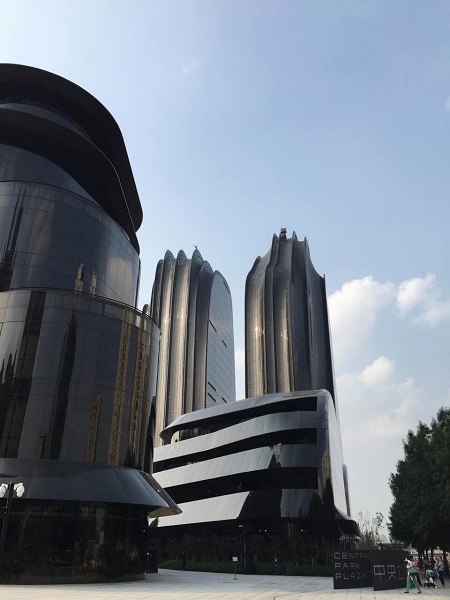
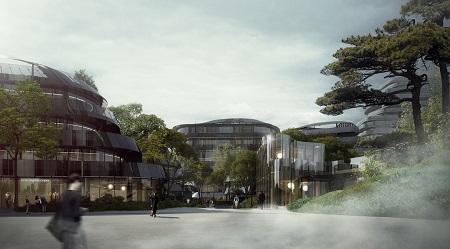
"MAD’s “Chaoyang Park Plaza”Breaks Ground"
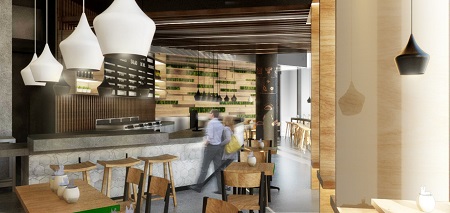
The Opening
The grand opening of The MISSION’s Central Park Plaza restaurant is by the beginning of November, but as work is now underway, we couldn’t help but share our excitement.
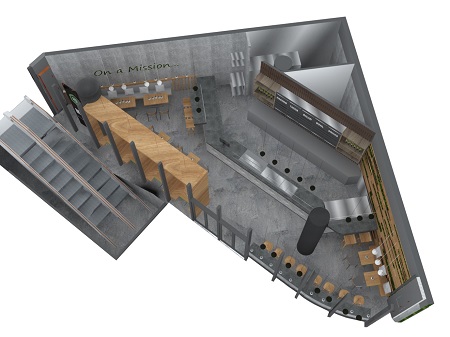
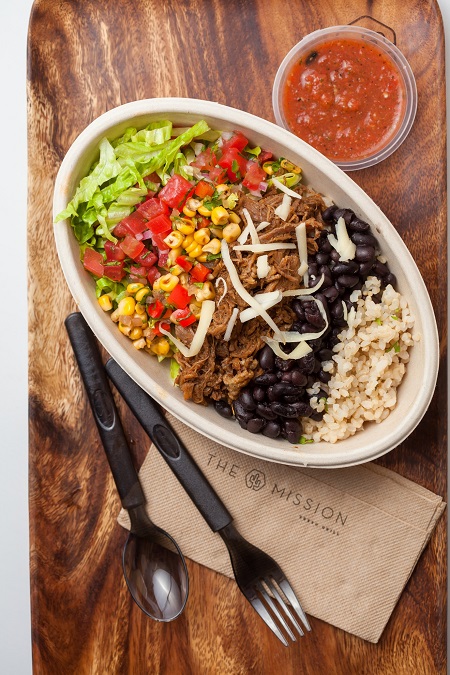
If you’re looking for a reason to unwind and enjoy yourself, what more do you need? You’ll soon be able to take a stroll through the park, enjoy a boat ride, or some of the many amusements and drop by THE MISSION to enjoy a meal as fresh and exciting as your surroundings!
Address: Central Park Plaza, 10 Chaoyang Park South street, Building #7, 1 Floor 7-9
> back to top of page

Globalization versus Localization in Retail Design - What You need to Know to Succeed
October 16, 2017
When considering store design on an international stage, it is important to adapt to local requirements. Some companies embrace this entirely, changing the store in line with advertising and product offering to make consumers happy. But this doesn’t work for everyone – there is a fine line between adapting to suit customer requirements and maintaining the correct brand image.
Getting it right
Starbucks is world renowned for its ‘third space’ away from home and work, and is one of the most recognizable brands in cities all over the world. Starbucks’ retail design manages to differ from store to store whilst maintaining a cohesive brand design. Their flagship store design incorporates elements of the local environment and is changed to suit local lifestyles.
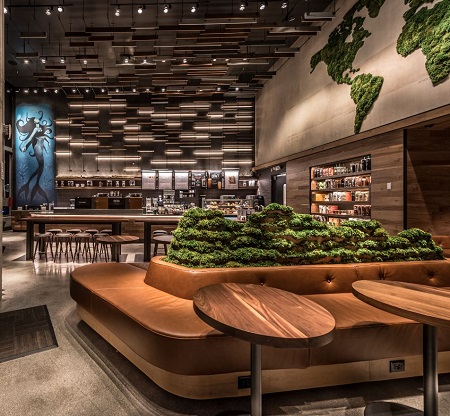
"11 Stunning Starbucks Stores around the World"
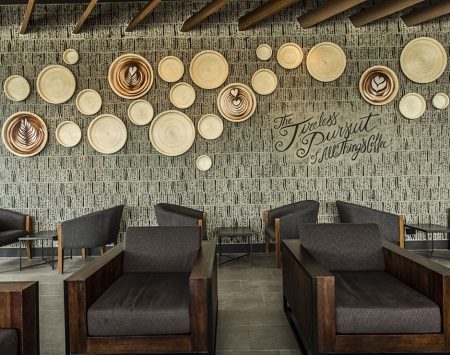
"11 Stunning Starbucks Stores around the World"
Getting it wrong
Americans are famed for their consumerism, which is something British supermarket chain Tesco’s shop design overlooked when entering the American market. The stores they opened were one fifth of the size of American superstores, making customers feel limited in choice. The stores were located further away from towns, meaning customers had to drive further than to their competitors, for less choice. Alongside this, Tesco removed cashiers, opting to install self-service checkouts, as is common in Europe. For Americans, customer service is a large part of the shopping experience and being automated reduced that.
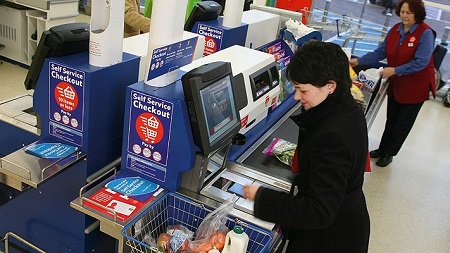
"Keeping it Consistent"
Personal Motives
Store design can be affected by what needs a customer has, the level of technology they like and how much time they like to spend. In areas where customers have less time, standing tables are becoming a feature, so they can quickly eat and leave. Others look for a more leisurely pace, where the incorporation of tablets preloaded with entertainment are offered, encouraging the customer to stay for longer.
If a customer wants to show their status by buying luxury goods, the shop design should be open and display fewer products, to give a sense of extravagance. Alternatively, if consumers are looking to show their individuality, the store should offer a unique design, often telling a story about the brand. The Khaosan hostel chain in Japan is a great example of this, as each location has a completely different identity.
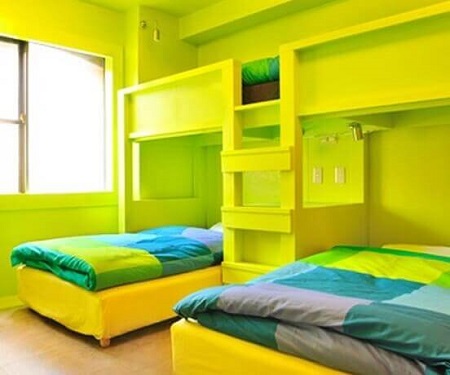
"Khaosan Tokyo Laboratory"
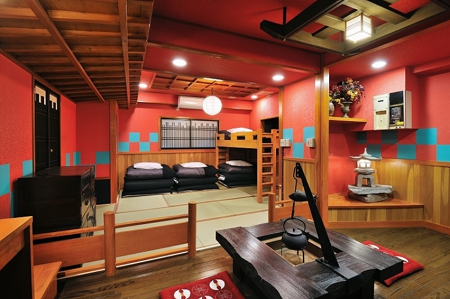
"Khaosan World Asakusa Hostel & Ryokan"
Global Imagery
One of the simplest aspects of store design lies in color and imagery. Different cultures have different associations, for example, red is often associated with love, but in different situations can represent anger. For the Chinese, who see red as ‘prosperous’, this can often be shocking. Similarly, imagery can differ, for example, in Italy chrysanthemums are laid on graves, but in Australia they are used to celebrate Mother’s Day.

"Closeup of a Chrysanthemum Flower"
> back to top of page

The 3-Pillar Retail Strategies: 3. Personalization
September 27, 2017
As the third part in the “Three Pillar Strategies” series, we look at how personalization needs to be integrated into store design so that brands appeal to Generation Z and survive the changes in Chinese retail habits.
Personalization is vital for brands to learn what shoppers want. Through data collection and providing customers outlets where they can personally customize products, brands discover styles, patterns, colors, and trends preferred by customers. Whether implemented online or through boutique design centers in-store, this means that brands can be assured their products sell, rather than hoping their designers are on trend.
Nike, a company specializing in athletic apparel, is using personalization to a competitive advantage. Guests visiting select flagship stores have the option to customize shoes and t-shirts with a vast range of colors and patterns. The outcome is a unique, exclusive product that fulfills the customer’s desires, giving each individual control over how they look and feel.
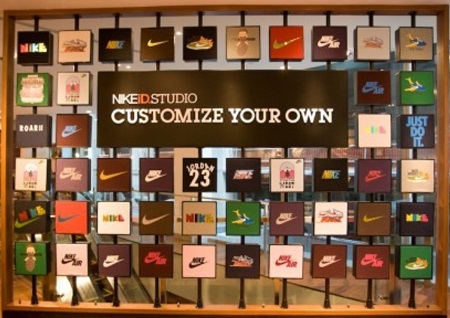
"Retail Will Change More In The Next Three Years Than It Has In The Last 50!"
Sephora is also using the art of personalization to provide customers with products aligned with their personality, lifestyle and desires. Customers create a profile and input information relevant to brands and products they find interesting. This information, accompanied with details regarding prior purchases, is analyzed through a chain of algorithms to create a list of beauty products suited to the customer’s likings. Both the customer and Sephora have constant access to this list across all devices and stores, meaning that the company can not only measure brand popularity, but how trends change over time. As new products are released, the list is updated and the customer is informed, allowing for targeted advertising and increased likelihood of purchase. The brand can keep its visual identity up to date by showing the same trends as their customers.
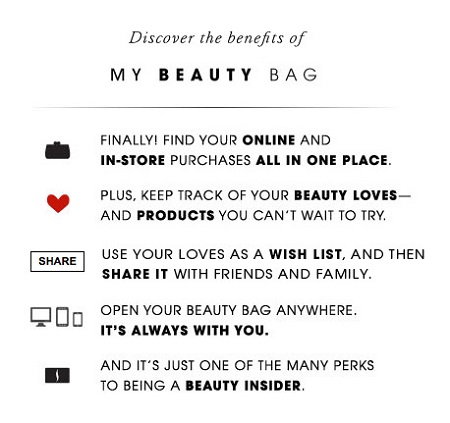
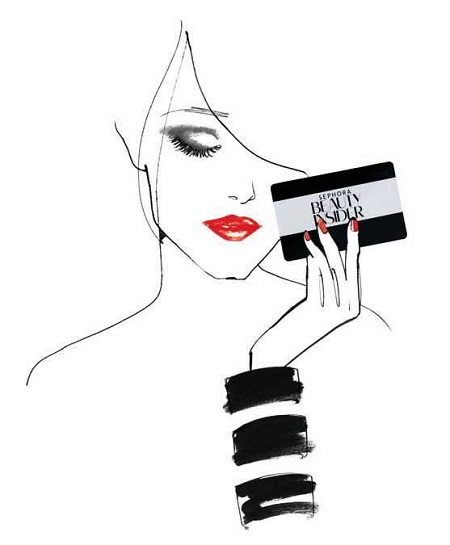
"SEPHORA’s BEAUTY INSIDER? Proves Beauty Addiction Has Its Privileges"
Individualism is becoming an essential form of expression across the retail industry. As more customers seek outlets to differentiate themselves among their peers, brands have an opportunity to show that they are uniquely positioned to give the consumer what they want, leading to increased brand loyalty and acquisition of new customers.
When a company caters to an individual’s needs, the customer is unlikely to accept substitutions. What’s more, they feel as if their voice is important, leading to increased word-of-mouth advertising, an increase in product reviews and the development of a community around the brand. It is no longer enough to tell customers that they want what you have; the message moving forward is that you have what they want.
> back to top of page


5 Star Plus Retail Design Speaks in London: The Future of Bricks and Mortar Retail in China
September 6, 2017
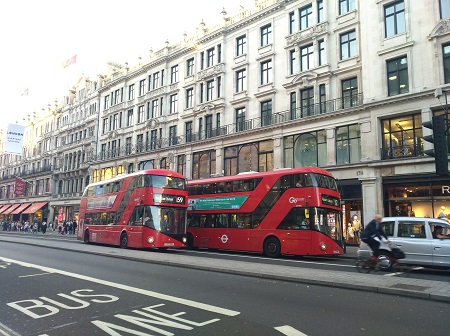
5 Star Plus Retail Design’s founder and managing director Barbara Seidelmann was invited to talk about “The Future of Bricks and Mortar Retail in China” at the China Britain Business Council London Headquarters on August 30th. Key points of the update included changing consumer characteristics as well as how the retail landscape is moving towards a more lifestyle oriented market.
During the second half of the talk, Barbara shared practical strategies that retail brands should implement to stay ahead in China. Companies need to adopt a retail strategy that integrates brick and mortar with different online channels and is centered on the brand. Retail store design has to focus on the consumer experience.
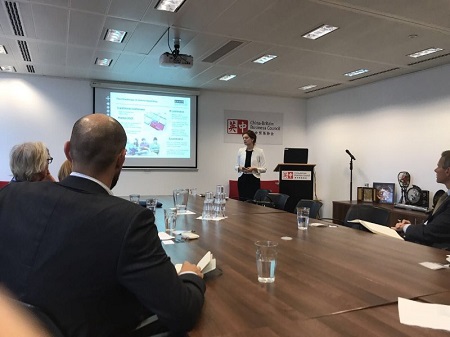
Attendants of the event included representatives from well-known British retail brands such as The Body Shop, Speedo, The British House and Jellycat, among others. We look forward to seeing more British brands enter the Chinese retail market soon.
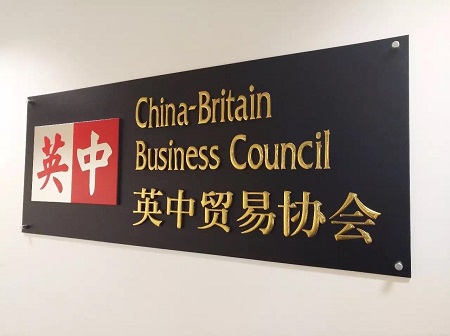 > back to top of page
> back to top of page

The 3-Pillar Retail Strategies: 2. Omnichannel
August 24, 2017
Following on our last Customer Experience post, we look at the next strategy in our three pillar series: using an omnichannel approach to remain at the forefront of retail in these changing times.
Omnichannel is a tactic brands across the retail industry are incorporating into their business model to provide shoppers with a seamless shopping experience both online and offline. Different retail channels such as mobile devices, desktops, and brick-and-mortar stores, keep customers constantly connect to brands. For pizza chains like Domino’s, Papa John’s, and Pizza Hut, an omnichannel approach is a vital component in their business strategy. Customers place their order by calling the store directly or customizing their meals online. Their orders are submitted to the chefs who prepare the meals as specified. The outcome is the same; however, the path chosen to order differs.
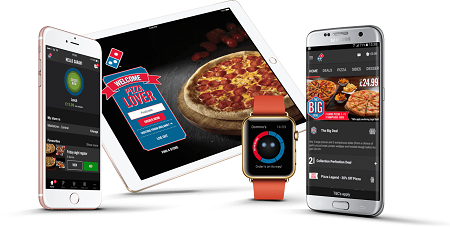
" MULTI MILLION POUND E-COMMERCE, SPANNING EIGHT DIGITAL PLATFORMS"
Omnichannel strategy is not only for the pizza industry. Brand like Starbucks use omni-channeling to drive their loyalty program. Customers can check or load balances onto their loyalty card by phone, online, or through visiting any Starbucks location. Rewards earned or changes made to the balance are instantly updated across all channels, allowing users to be informed regardless of the platform they are using.
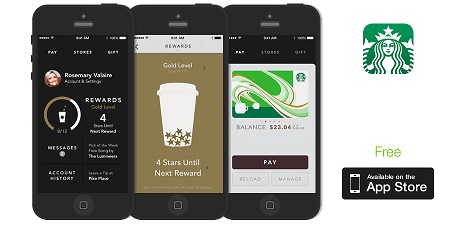
" Image Gallery: starbucks app "
As companies attempt to reach audiences on a larger scale, using multiple platforms offers individuals flexibility and diversity. Customers who encounter a problem with a single service point are no longer going to turn away, but simply turn to a different channel. Through increased satisfaction, efficiency and convenience, having an omnichannel strategy is an asset not only for the customer, but for the brand itself.
It’s not limited to customer retention, either. The increased visibility offered by an omnichannel approach means that the brand maintains top-of-mind appeal. Multiple platforms allow for different product lines to be prioritized in different areas, inciting customers to buy more. For online channels, advertising can be catered to each individual’s preference, ensuring that every product they see is relevant to their own wants and needs.
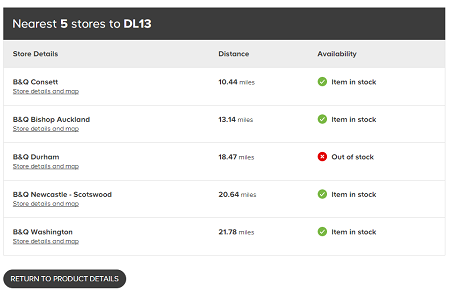
"B & Q"
Image Source: B & Q
One way that British company B&Q use omnichannel selling makes DIY a much simpler task for everyone. A customer can use the website to find the products they need, for delivery or pick-up. It offers a real-time service which shows the closest stores that have the product in stock. As their customers are often in the middle of a messy, potentially ruinous activity when they need the products, B&Q offer a quick and indispensable service.
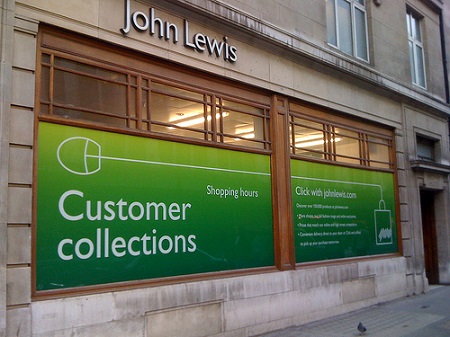
" Can click and collect save the high street? "
The retailer John Lewis takes this one step further. When they realized that two thirds of their customers combine online shopping with on-store shopping, they rolled out ‘Click and Collect’ – where you can order online and pick them up in store. This means you can browse at home and go to the store next day assured that your size and color has been reserved. It takes away the worry of being out when the delivery man arrives and gives the customer a reason to have another look around the brick-and-mortar store too. It has been so successful that it is now imitated by many high-street retailers.
> back to top of page

5 Star Plus Retail Design in the NEWS Magazine
August 20, 2017
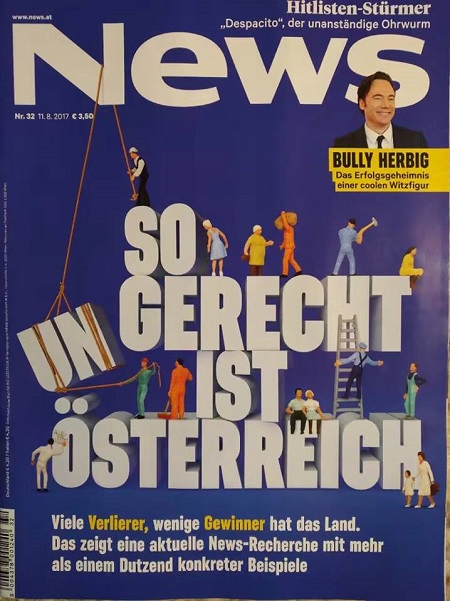
We are pleased to share that 5 Star Plus Retail Design and our founder Barbara Seidelmann were covered with a full page in the August's second edition of "NEWS", one of Austria's leading magazines.
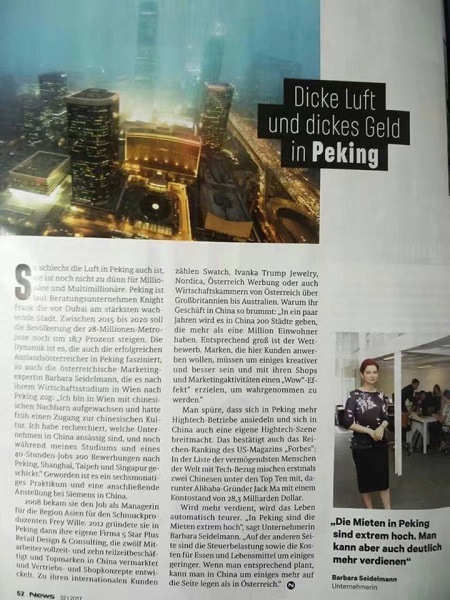 > back to top of page
> back to top of page

The 3-Pillar Retail Strategies: 1. The Customer Experience
August 17, 2017
As introduced in our previous article “Preparing the Retail Industry for Future China: An analysis of markets, challenges and solutions
”, the Chinese market is changing and only those companies that tap into experience, omnichannel and personalization efforts will have a place in the new retail landscape. This week, we will look at how you can tailor customer experience to stay at the forefront of customers’ minds.
Shopping is more than looking for accessories and objects to be fashionable. Shopping is an experience. Retail stores like Gucci and Topshop revolve their business design around creating a positive customer experience using cutting edge, interactive technology and high-quality service. They do so for one reason: it gets results. A study by Harvard University (Kriss, 2014) shows customers who have the best past experiences spend 140% more than those who had the poorest experience. With the astronomical benefits of providing shoppers with a positive experience, brands ought to create a pleasant shopping experience through three tactics: slow shopping, technology, and brand imaging. To receive all the benefits of a positive shopping experience, it is critical for brands to incorporate all three tactics into their retail operations.
1) Slow Shopping
Creating a comfortable atmosphere that allows customers to leisurely browse merchandise while being hassle-free from eager employees is a tactic known as slow shopping. Slow shopping emphasizes control, giving the customers power to make their own decisions at their own pace. An open design lets shoppers explore the retail store without unwanted intervention, which is crucial for the brand to gain loyal customers. Allowing customers to shop at their own pace also leads to more spending. For example, Urban Outfitters have a very large array of items on display that people can walk around and inspect at their own pace. The store clerks are at the ready, but not in the way. Urban Outfitters successfully created a slow shopping environment and have accomplished their perfect design.
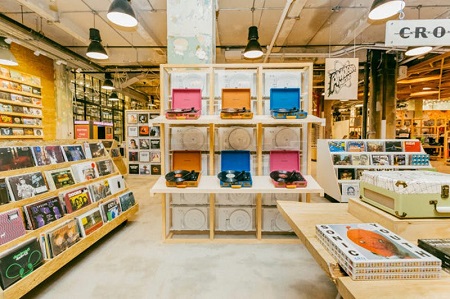
" How "Slow Shopping" Could Save the Brick & Mortar Store (and Destroy Your Budget)"
2) Technology
Touchscreens, monitors, or interactive projectors allow brands to connect with customers in a creative way that is exciting, informative, and familiar; which assists in the development of brand image. By incorporating technology into the retail store’s design, a brand gains an edge over competitors through captivating customers. One example of this is Uniqlo, a Japanese clothing store. Uniqlo utilizes cutting-edge neuroscience technology to analyze a person’s feelings and determine the best outfit for them on a screen in front of them. The user puts on a headpiece and is shown images. Based on their brains reaction to those images, they are shown the perfect shirt on the screen once the sequence is complete.
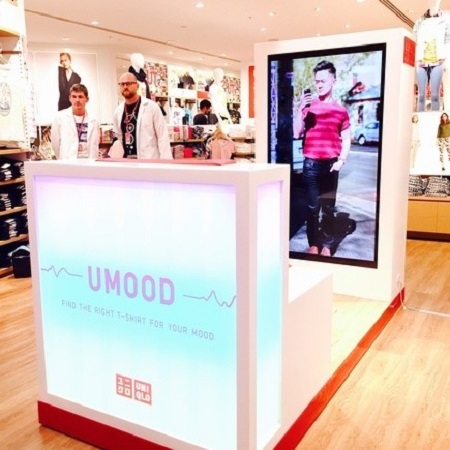
"9 Examples Of Innovative In-Store Technology"
3) Brand Imaging
Think of brand imaging like searching for a partner. We search for people with whom we can identify, who have direction, provoke feelings of excitement, and give us butterflies. People want brands that care about them, who put their needs first, and offer attractive products related to their lifestyle. Brands that follow these guidelines increase their number of shoppers exponentially. The most popular way that brands do this is through product placement and celebrity endorsement. Showcasing a role model overcoming a difficult environment makes the regular shopper feel empowered if they buy their products. An example of this trend is Puma’s Forever Faster campaign. Usain Bolt is renowned for being the world’s fastest man. He overcame the barrier of a human speed limit and Puma depicted that in their promotional design perfectly. Bolt is geared out in Puma, showing a lifestyle choice that attracts his admirers to the brand.
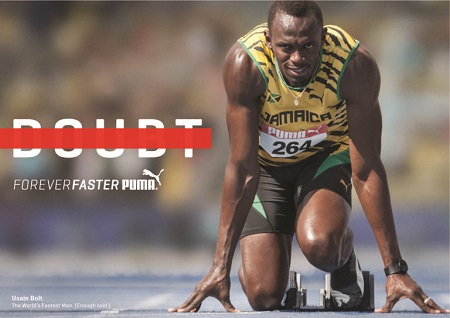
"The Forever Faster man, Usain Bolt"
Humans seek experiences every time we get out of bed. Whether it’s traveling to a different city, tasting a new dish, or meeting up with friends, we form opinions around events we believed will make us happy. Be creative; stand out and give your customers a reason to choose your brand.
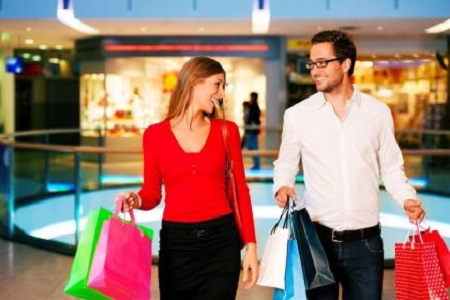
" New study: happy shoppers spend 127 more per shopping trip "
> back to top of page

Determining the Most Effective Way to Showcase Your Product
July 20, 2017
When it comes to clothing stores, presenting your clothes in a functional, professional, and sophisticated manner can have the power to make or break your store’s success. Customers need to be able to clearly see and understand the vision and brand identity throughout the store design. Determining how to set up racks and shelving to display your product is dependent on various factors such as store size, layout, merchandise, and the overall look.
Product placement is proven to have a direct correlation with sales, which is why the most successful store designs pay great attention to detail when it comes to their design layout. Larger stores have the luxury of utilizing both clothing racks and shelving while maintaining a very spacious layout. On the contrary, smaller stores must be mindful of space. Folding clothes and displaying them on shelves provides a clean and spacious look while simultaneously taking up less room. As a result, stores can display a greater amount of inventory on the show floor. Another benefit to shelving is its eye level and comfortable viewing range.
DENHAM the jean maker’s 120-square-metre new flagship store design exemplifies how a small store can utilize space with shelving instead of racks. The shelving throughout the small store helps open the space and make it seem larger. This creates a spacious, comfortable, and enjoyable experience for customers.
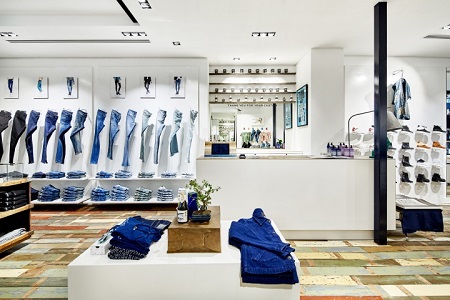
"DENHAM Store, The Hague-Netherlands"
While utilizing shelving is important, clothing racks are necessary for most clothing shop layouts. Clothing items such as dresses, coats, formal wear, and easy to crease or wrinkle clothing need to be hung up or their appeal is lost. There are three main types of racks that stores can utilize, straight racks, branching racks and circular racks. Straight racks are the most commonly used involving a horizontal bar supported by two vertical legs. They can be rolling or grounded, which provides storeowners with the flexibility to rearrange their store layout. Branching racks consist of a central base with posts that spread out from it. This provides customers with a unique vantage point that allows you to view merchandise from various angles and sides. Circular racks embody maximizing efficiency due to their 360-degree vantage viewing point.
Ellassay flagship store in Shenyang, China showcases the use of both straight racks and circular racks throughout its store. The circular racks in the middle of the store provide the perfect way for the store to feature and display their favorite items. Ultimately, incorporating both styles contribute to the elegant and spacious atmosphere. In China, it is important to present customers with both high quality products and a sophisticated store design.
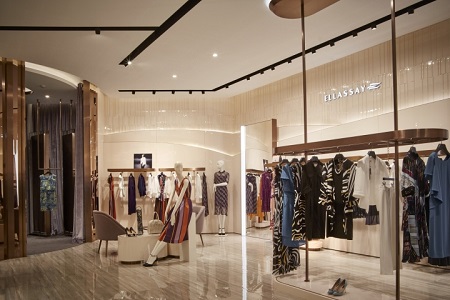
"Ellassay flagship store by Stefano Tordiglione Design, Shenyang – China"
When designing Halti in Beijing’s Jinyuan mall, 5 Star Plus Retail Design effectively incorporated both shelving and racks into the overall layout. Utilizing shelving and racks provides variety to the store and a visually stimulating experience for customers. As a result, the store design is able to stand out from other Beijing store designs.
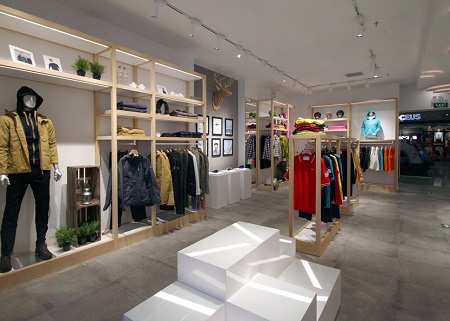
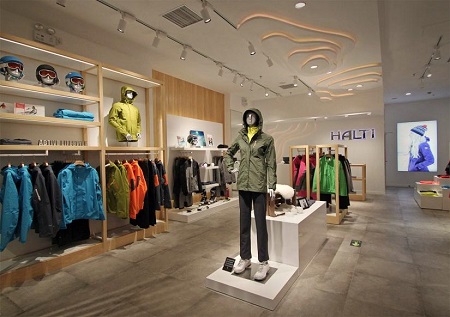
"Store Identity Design, Halti"
Shelving and racks add to the ambiance of a concept store design. Finding the perfect balance between the two is ideal for a store’s success. Not every store design is the same and remembering to keep functionality, flexibility and your customers in mind when designing the store will help you attract more people.
> back to top of page

Preparing the Retail Industry for Future China: An analysis of markets, challenges and solutions
July 14, 2017
“The retail industry is one of the most promising fields of business in China due to their upward trend of annual GDP and the dramatic increase of spending power for both rural and domestic households;” said Statista, a company specializing in international markets, trends and development. With a steady increase of purchasing power throughout the country’s 1.3 billion residents, opportunities for growth and sustainability are exponentially increasing. However, this does not come without challenges. Weak business models and the increase of technology are proving difficult obstacles for many brands to overcome. How can they address these challenges and prepare for the future?
Understand the Market
Currently, the Chinese market is unlike the United States or European market. Studies show individuals in the western parts of the world tend to be more self-actualization oriented, preferring products relating to their lifestyles. In contrast, individuals in China tend to be under the Emotional and Social needs categories, preferring products of status, value and achievement. However, this difference is beginning to change. Individuals in the Chinese market are beginning to develop a self-actualization mindset. People still seek value but, they seek value in the form of experience. Brands will need to consider this change moving forward as this will affect how they develop products to target future customers.
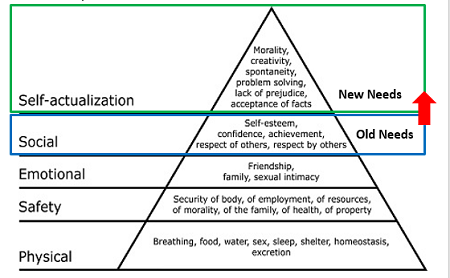
Be Aware of Challenges Facing the Industry
In the past, brands could maintain relevance due to scarcity. With the rise of digital commerce and the access to any product in many places, brands suffering from weak business models no longer can compete. Additionally, brands are treating their digital sites and physical stores as two separate entities; failing to understand each platform serves a unique purpose. Customers use digital media as a starting point for conducting research, reading reviews and finding the best prices while relying on physical stores to conduct the transaction.
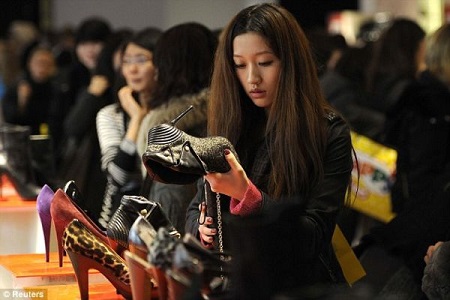
The Future: Implement a Three-Pillar Strategy
Brands seeking sustainability in the retail industry must implement a three-pillar strategy focusing on experience, omnichannel and customization.
Experience: Shopping should be more than conducting a transaction. It should be an experience. Customers who have a positive experience with a brand will be inclined to make additional purchases in the future.
Omnichannel: Omnichannel provides customers with a seamless shopping experience whether online, in-store or mobile. Those seeking to shop from home or on their way to work can do so through a multichannel approach.
Personalization: Personalization is how brands can tailor customer needs. Demand for personal customizable products is increasing as customers are on the prowl for items that are unique, exclusive, authentic and represent their personality.
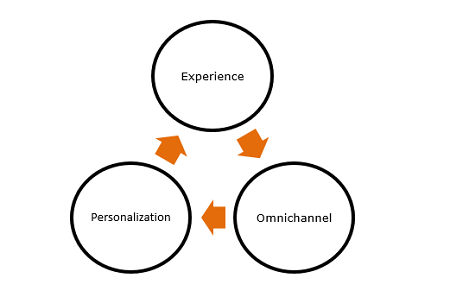
Scarcity is no longer an option brands can rely on to maintain relevance. As customers begin to expect each of these strategies when they shop, brands failing to adapt to the changing industry will suffer. Readers will be able to find in-depth articles detailing each of the three pillars on our website in the coming weeks.
> back to top of page

Top 6 Restaurant Design Trends of 2017
July 7, 2017
While delicious food and high-quality service is essential for the success of a restaurant, the ambience of a restaurant is of equal significance. In today’s market, there is a plethora of dining options. Having a design that will draw in customers is integral to a restaurant’s prosperity.
An interior designer must incorporate brand, story and style all into one when designing a restaurant. The following are some retail design trends and considerations for restaurants in 2017.
1. Concept/Theme Based-Design:
Having either a conceptual or theme-based design allows for a more personal dining experience and is proven to be more inviting and energizing. The top restaurant designers develop interiors that portray a story that unfolds while people dine. This helps to build customer satisfaction and loyalty.
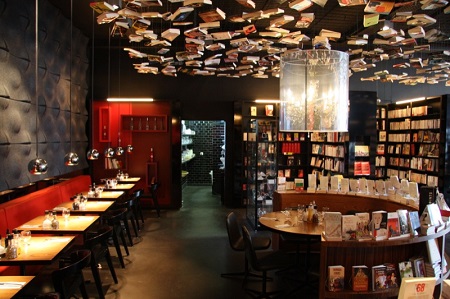
"Four Ways to Give Your Restaurant Dining Room a Quick Improvement"
2. Natural Textures and Materials:
Incorporating natural textures derived from nature continues to be a popular design trend utilized by designers. Using more than one material and mixing either wood, brass, leather, tile, marble or metal adds dimension and heightens the consumer’s dining experience.
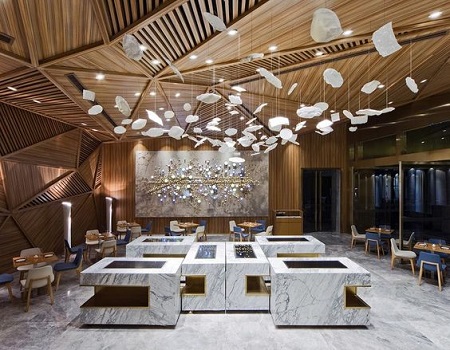
"Academy of Art University Interior Design School Daily Blog"
The Mission Fresh Grill, located in Beijing’s recently constructed China World Mall, illustrates the mixing and combining of natural textures and materials. 5 Star Plus Retail Design worked with The Mission to convey its brand identity throughout the restaurant through uses of natural wood, high-quality materials and stainless steel. These natural elements not only draw people in to eat, but also signal to customers the emphasis of high-quality ingredients.
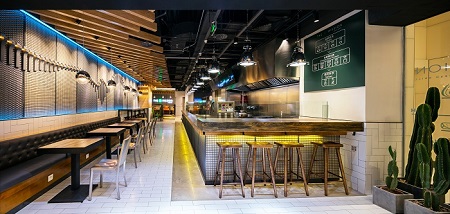
"Restaurant Design, The Mission Fresh Grill "
3. Ambient Lighting and Ceiling Design:
Ambient lighting, customized pendant lighting and recessed mood lighting has grown in popularity among restaurant interior designers. Lighting has evolved to provide two purposes—exuding light and providing art. Contrast to previous years, interior design for restaurants has departed from the dark and industrial chic look and is moving towards a brighter, more modern appeal. Ceiling designs have begun showcasing and exposing wood or unconcealed metal pipes to give way to a more innovative atmosphere. Lighting and ceiling choices assist in creating interesting imagery with the intent of luring guests in.
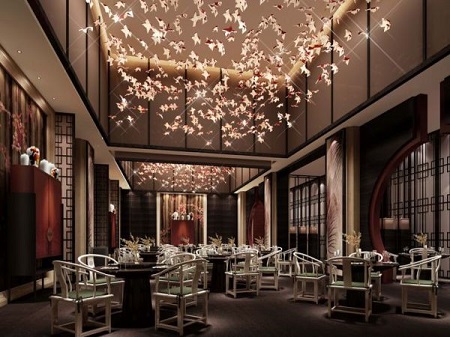
"酒店设计的中式风格"
4. Vintage with a Modern Touch:
Adding elements of glamour and vintage flare to modern interior design layouts provides a sophisticated and glamorous feel. Luxe trimmings, velvet upholstery and glamorous patterns provide a sleek and refined atmosphere.
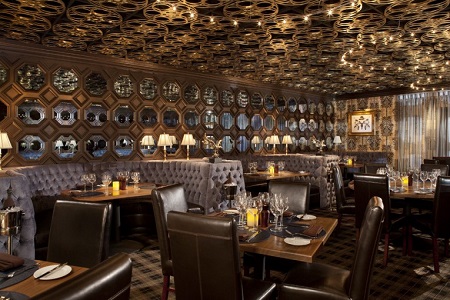
5. Color Tones:
Greens, specifically light green, is a trending color for retail design in 2017. This color exudes a refreshing and revitalizing charm that symbolizes a fresh start. In addition, colors that are vibrant with earthy tones are great accents. Pastels and chroma (graphic colors) contribute to an organic feel.
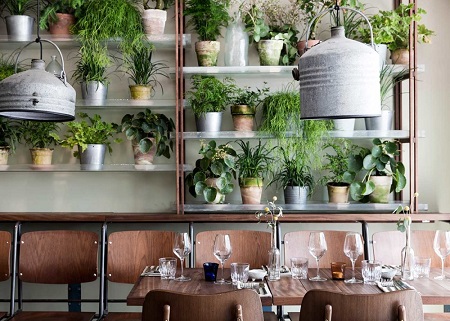
"V?kst: A Greenhouse Restaurant in Copenhagen"
6. Minimalism:
Like previous years, minimalism is a key design element that has the power to open even a small space. A simple, clean look is proven to make people feel calm and happy. Minimalism also allows for flexibility and functionality in the design layout. In restaurants, a minimalistic layout gives way for easier navigation.
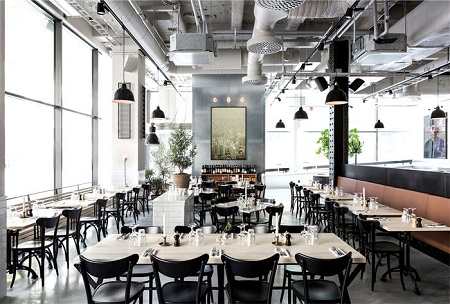
"A Tax Agency Transformed: Restaurant Usine in Stockholm"
All 6 trends serve to provide consumers with both a visually appealing and enthralling look that will draw them in to dine. The trends are extremely conscious of keeping balance and harmony in mind. With continual growth in the restaurant industry, restaurants must constantly keep up with the latest trends. Having a clear concept store design will make the incorporation of trends into the layout easier. At the end of the day, people are quick to judge and one glance is all a consumer needs to tell if they are interested or not. Thus, for restaurants, making the right first impression through an impressive design layout is imperative.
> back to top of page

Tier 2 and Tier 3 Opportunities in the Chinese Retail Market
June 30, 2017
As Chinese retail markets in tier 1 cities reach maturity, retail companies are looking towards tier 2 and tier 3 cities for expansion opportunities. The combination of high real estate prices and saturation of the retail sector in major urban centers has made expansion in these areas more difficult. In 2015, the urban population was just under 56% of the total population. This is expected to rise up to around 59% by 2018. Not only is there a migration shift from rural to urban, but there is also an increase in household disposable income. By 2018, 66% of households will fall into the USD 10,000-plus per year income bracket, effectively increasing overall consumption.
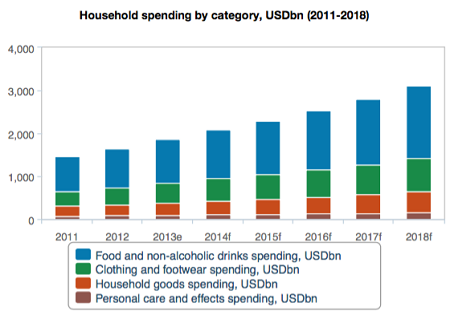
"China Retail Report, Q1 2015"
Source: National Bureau of Statistics China/BMI
This increase in consumption consequently forecasts China’s retail sector to grow on average by 10.8% every year from 2015-2018. Since the retail markets in cities such as Beijing, Guangzhou and Shanghai have become saturated for the reasons aforementioned, it will be the lower-tier cities that experience a significant portion of this growth. These booming hubs have been given improved access with new transportation infrastructure, including airline routes, better highways and high-speed rail lines. As people flock to these cities to look for work, a new untapped consumer market emerges. The graph below shows the steady but significant growth of this new consumer class. Some of the tier 2 cities include Tianjin, Wuhan, Chengdu, Chongqing, Nanjing and Xi’an. Proactive municipal governments along with low land costs typical to these cities give retailers a great opportunity to establish or expand their presence in these areas of the Chinese market.
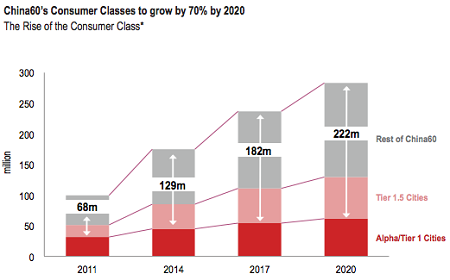
*Population earning over USD $5,000
*China60 refers to cities that are not
categorized as tier 1, EIU, 2015
"China60: From Fast Growth to Smart Growth JLL, 2015"
Image Source: JLL
Retailers that offer premium or luxury items will cater well to these large consumer bases, as Chinese consumers generally see these goods as a mark of prosperity. There is a shift though in Chinese consumer attitudes. According to Maslow’s Hierarchy of Needs, fulfilling esteem needs drove luxury purchases in the past, but it is now trending to make purchases that satisfy actualization needs. This means that consumers are starting to purchase brands because they identify with the lifestyle the brands represent, rather solely because of the product’s prestige. Tier 1 city dwellers are at the forefront of this trend, but it would be a strategic consideration for retailers, as more and more people in lower-tier cities are shifting towards this consumer attitude.
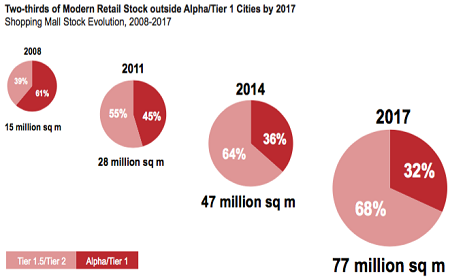
"China60: From Fast Growth to Smart Growth JLL, 2015"
Image Source: JLL
Some lower-tier cities have been experiencing a large growth in shopping malls. The pie charts above show that physical retail space in these cities is expanding more quickly than in tier 1 cities. Despite this demand for more shopping centers, retailers need to be conscientious of the increase in online shopping, especially with technological generations entering the consumer base. Malls are combating this threat by dedicating more space to food and beverage and concept stores, which altogether makes shopping more of an experience. Retailers expanding or entering into lower-tier cities can combat this threat by taking into account their store layout and the message/lifestyle they want to convey. Thoughtful retail design can influence how customers perceive a brand’s lifestyle and can help place emphasis on experiential shopping; something that e-commerce cannot compete with.
> back to top of page

5 Star Plus Retail Design Speaks at Food and Drink Forum 2017
June 23, 2017
The China-Britain Business Council (CBBC) hosted its fifth annual Retail, Food and Drink forum on Thursday, June 15, 2017 at the British Business Center in Beijing. Introducing this year’s Great British Brands Festival (GBBF), the goal of the forum was to allow businesses from the UK to learn more about the challenges and experiences from industry experts within the Chinese market. Barbara Seidelmann from 5 Star Plus Retail Design was invited to speak at the event. Among her, other speakers included: Peter Bloxham of PFB Associates, Lynne Hua of The British House, and Demi Ping of CBBC.
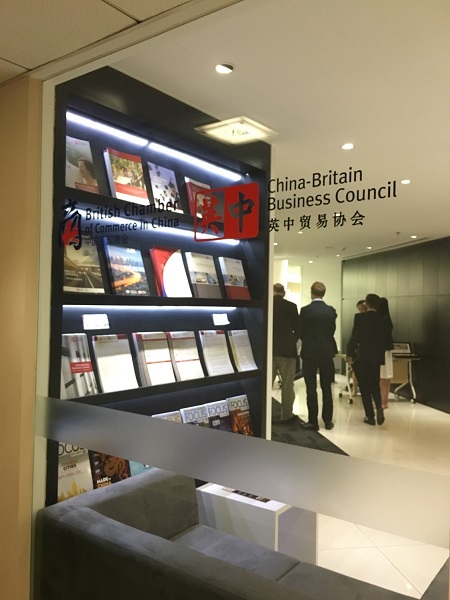
Having over 10 years of experience in the retail market, Barbara Seidelmann spoke about The Future of Retail: Entertainment and Lifestyle. She started by explaining the shift in Chinese consumer shopping habits and how this affects the design process for brick and mortar stores. One of the key points she made in the presentation was the importance of omni-channeling for brick and mortar stores, which would personalize and better cater the retail experience to consumers. Barbara also showed how the experience factor serves as an important aspect in retail design, as it helps appeal to Chinese consumer needs in an evolving marketplace. In-store personalization and aspects of experience and omni-channeling can be tied into one cohesive brand image within retail design.

 > back to top of page
> back to top of page

A Growing Marketplace: Retail Design For Kids
June 15, 2017
Luxury retail stores specailizing in children’s wear has become a growing trend over past few years. According to Business of Fashion, by 2020, the Asain Pacific children’s wear retail marketplace is expected to grow by 32%. As millenials continue to have children, their shopping habits indicate that they are willing to spend more on their children for higher end products. There are different design elements that must be taken into account for both the parents, and the children. Common trends in 2017 for children’s retail design China include, having a family focus, technology integration, and gender neutrality.
Cognitive Interests in Kids
The cognitive interest of children plays a role in the design elements chosen for a children’s retail store. Children 3 – 5 years of age are very curious, and learn how and why things work through tacticle sensations. Children 6 – 10 years of age have a stronger memory and are more coordinated. They like to solve problems deductivley, through reading and reasoning. Taking these interests into account help designers develop captivating displays and incorporate interactive brand elements into a store’s design to attract kids into the retail store.
Interactive Branding
Interactive branding is an essential part of a kids retail store. Integrating technology into the brand attracts tech savvy youngsters, and allows them to discover a brand through a familiar outlet. A recent study done by the ASP Group, used eye tracking software to discover that people were 77% more likely to engage in displays that involve movement.
Jou Jou Toy Store in Salt Lake City, Utah-USA, takes interactive branding to the next level with a digital design concept where monsters can interchange between pictures leaving kids with a fun and interactive experience.
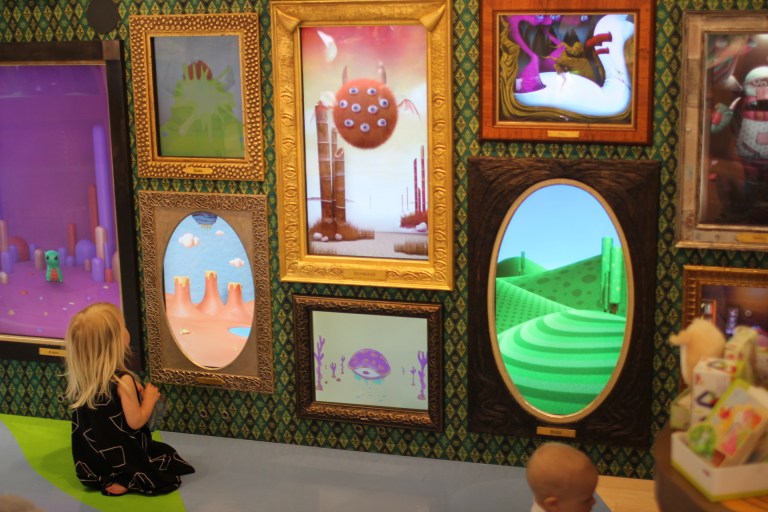
" Welcome to the Grand America "
Design trends
The most important thing in a child’s life is family. Having family oriented designs for both younger and older children is a primary goal in many retail design concepts.
Many design concepts include bright inviting colors such as yellow and green, as well as whimsical concepts like sketched shops, or fairytale-like designs with a playground feel. The Candy Room in Melbourne Australia uses a cartoon design concept in colors of black and white to play into children’s imagination while also drawing attention to the fun colored packaging of the candy.
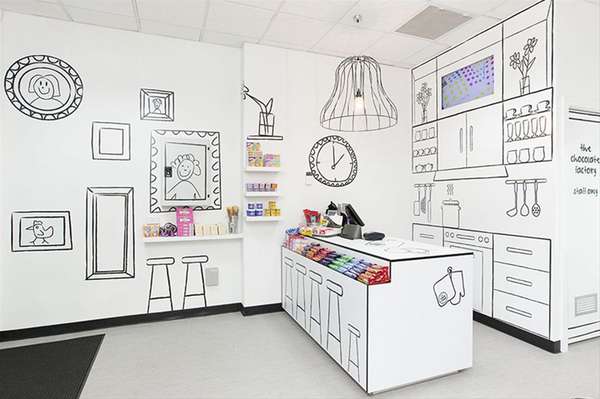
" The Candy Room, Melbourne Austrailia "
Depending on the size of the retail design space, a design can include a large space for a play area, or a smaller space to make the child feel like they are in a secret hideout. Kids Republic store design in Beijing China creates the feeling of a fun board game, designed for children to climb and follow various pathways, while also incorporating fun nooks for children to crawl inside and read their favorite book, thus appealing to the cognitive interests of all age groups.
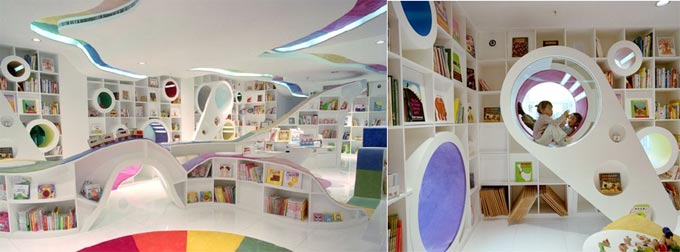
" Kids Republic, Beijing China "
Keeping millennial parents in mind for the design concept, gender neutrality seems to be a growing trend in 2017. As the race for gender equality continues, stores everywhere continue to add gender inclusive elements and colors into children retail store design concepts to put less of a focus on ‘who’ the product is for and more a focus on ‘what’ product will work for the child. Harrods Toy Kingdom in London England uses a gender neutral color scheme and removes labels of ‘boy’ and ‘girl’ from toy sections throughout. The store provides plenty of places for children to try new toys and explore through creative brand elements.
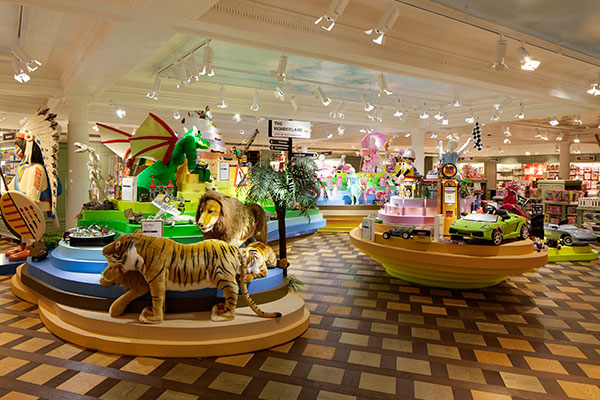
" Harrods Toy Kingdom, London England "
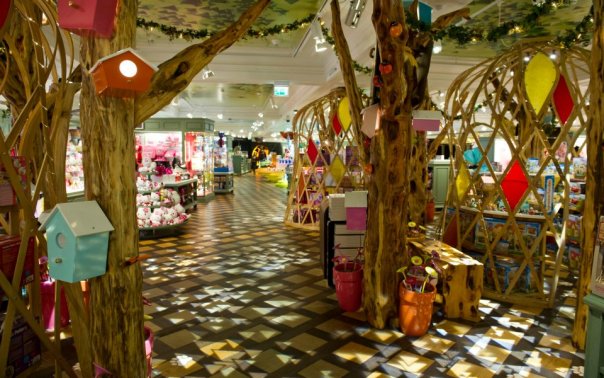
" Harrods Toy Kingdom, London England "
The growth in children’s retail is expected to grow substantially in the coming years. 5 Star Plus Retail Design understands the expectations and considerations that must be taken into account when designing a children’s retail store in China. It’s important to consider the cognitive interests of different age groups to allow children to discover the brand story through interactive displays and digital features. We also prioritize the creation of a store that is appealing to the parents who do the shopping as well as the children who will accompany them.
> back to top of page



4 PR Tips that Will Keep You Ahead in the F&B Industry
May 2, 2017
On her podcast blog The Business Cuisine (http://www.thebusinesscuisine.com) Denise Chen shares best practice tips for the successful marketing of small food and beverage businesses. We are sharing a summary of those valuable insights.
F&B is seen as a lucrative industry to be a part of as there will always be paying customers. However, in this new economy, as consumers – in China more than anywhere else - strive to live longer and healthier, they tend to be more selective of what they put into their stomach. They read reviews and news before trying a new restaurant, and they ask around before making a decision to buy. Therefore, for some that go into the F&B business to make quick money, many die after just a year or less of operation.

" Creative marketing activities are a crucial aspect for F&B brands to stay alive. "
Tip 1: Build a brand, not product
Great food is the essential step to get in the industry, however, it takes a lot more to build a successful business that does not close in 6 months. People need to remember your name and not just another food place. Remember, food itself doesn’t talk or travel - story does.
Element Fresh did a brilliant job in building its brand as a leading American restaurant chain that focuses on healthy food and lifestyle with 27 locations across China.
Over the years, the brand conducted consistent new activities that reminded consumers that this is a legit company that is trying to do things to keep their promises, so the message people receive is: I can trust this company, I am happy to go back and tell my friends about it too.
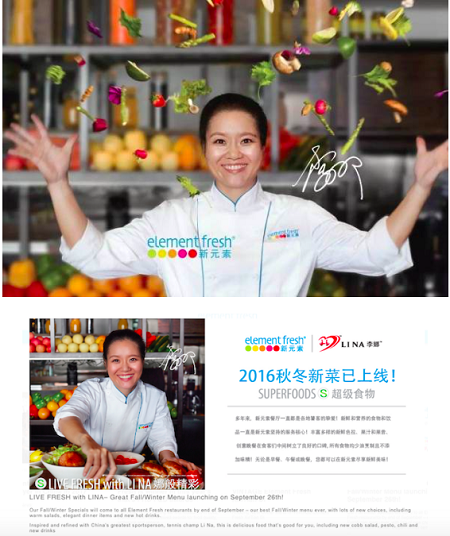
Element Fresh partnered with China’s National Tennis Champion Li Na (李娜) for their 2016 Fall&Winter New Menu Launch with slogan – LIVE FRESH With LINA. As a worldwide public figure, Li Na represents sports and health. In this campaign, Li Na dressed as an Element Fresh chef preparing yummy and healthy food by leveraging an influencer’s public image to showcase the brand’s commitment to healthy food and lifestyle. When people talk about Element Fresh, naturally in their minds they will associate Li Na and the image she presents as the brand image.
In summary, it is about having a clear goal of your positioning, formulating a strategy and creating a plan to execute.
Tip 2: Create your story bank
Bill Gates firstly said in 1996, content is KING. In this context, food and drinks is not what sells, narrative does. A good example for a brand with a systematic content pool is Moka Bros.
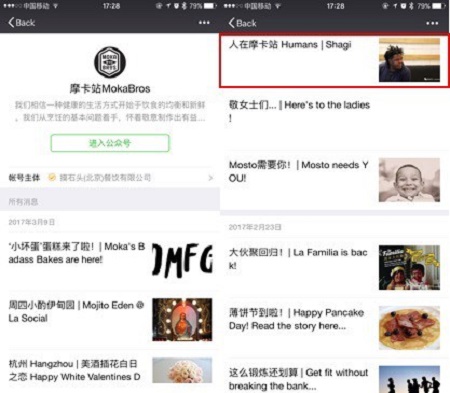
" Moka Bros’ WeChat Account "
As a consumer of MokaBros, besides the diverse content ranging from fitness tips, education about one type of food or recipe, festive greetings etc, one of the most attractive contents is called “Humans”, where each week a customer is interviewed for their inspirational story that is in line with the brand image MokaBros is sending out – to inspire.
Don’t just talk about yourself, engage your audiences to be your brand’s ambassadors that are in line with your brand image, and therefore add more flavor to your story bank.
Tip 3: Be proactive
The core of PR is communication. In a nutshell, PR’s function is to create content, find target media and convince them to write about you instead of your competitors. That means PR has to be extremely proactive in every area of the job. If you are lucky, and the reporter knows you or members of your team, then you get the chance to be mentioned in a story he is writing about. If you are unlucky, and your competitor is more active and reaches out to the same reporter first, then you lose this opportunity for publicity.
Just put yourself in a reporter’s shoes, every reporter gets pitched probably more than 20 times per day from PR professionals and in-house PR. What are the chances he or she will spend more than 3 minutes trying to find anything about you actively, if you don’t make his job easier by reaching out first?
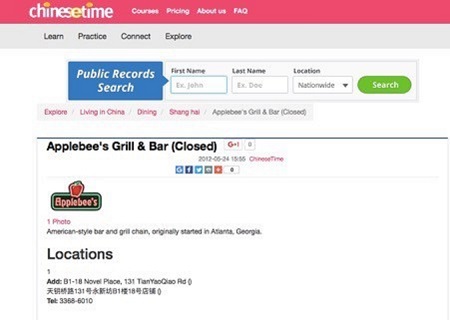
" Applebee’s Grill&Bar Shanghai Closed "
An analyst, Charles Yan from Yuanta Securities Investment Consulting, once commented in an article about why an American restaurant failed in Shanghai, the main reason for Applebee’s closure relies on its location. But what’s more than the physical location is that there were no activities conducted to build its brand awareness on the ground level to drive traffic to their underground store.
In other words, don’t simply expect opening a location with good food and service then people will find you, if you don’t market yourself proactively and consistently to help people find you, you are meant to fail.
Tip 4: Ally with your competitors
In PR, collaboration often refers to co-branding. What does that mean? It means instead of holding an event for one single brand, you gather 3 or more brands from or outside of your industry to hold an event together to address one particular topic. The benefit of co-branding is increased public impact including media attention. One F&B brand that is doping this effectively is Great Leap Brewery.
Great Leap initiated Beijing Professional Brewer’s Guild, a self-organized gathering where the brewers, business owners and other members in the craft beer industry meet every quarter, learn and share industry knowledge from each other, aiming to improve and advance the whole craft beer industry in Beijing.
In summary, as for retailers, food and beverage businesses need to focus on creating a brand. This is done by developing a feasible marketing strategy, an interesting story and consistently pushing content over a wider number of marketing channels.
Please go to The Business Cuisine (http://www.thebusinesscuisine.com/prtips/) for reading the full article.
> back to top of page

The Future of Retail: Entertainment and Lifestyle - The Role of Brand Strategy and Retail Design
April 28, 2017
The retail world is experiencing a time of change. This shift is perceived as threat by some and as an opportunity by others. Market reports insist that online retailing is the future and many luxury retailers report decreasing sales revenues. New shopping malls seem to open with a smaller number of traditional retail stores. What is happening in the market?
In an increasingly saturated and regulated market, the purchasing behavior of local consumers as well as their needs are evolving. What are the reasons for this market change and what can retail brands do to stay ahead?
The Evolution of Needs (and Purchasing Behavior)
.jpg)
" Maslow’s Hierarchy of Needs "
In recent years, consumers in developing countries and in industrialized markets showed one important difference in purchasing behavior: While people in the West tend to spend more money for products and services that serve self-realization, customers in developing countries like China used to purchase products that are easily recognized for their brand and value. This reflects consumption for “being” versus “having”.
The background of this behavior is explained by Maslow’s Hierarchy of Needs, which says that humans need to first satisfy physiological and safety needs before emotional needs. Once these are fulfilled, people want to fulfill social requirements like respect and self-esteem. The last step in the pyramid of needs is self-realization where humans feel that they already possess everything and now want to develop as a person (e.g. intellectually or physically) or experience new things (e.g. through adventure travel).
While traditional retail sales in China were strongly motivated by “having” and “showing” to satisfy social needs during the past decade, consumers have been moving up the pyramid and are now purchasing more products and services connected to “self-realization”. Retail products are not purchased mainly for the branded logo, but because of the style that a certain brand represents, the craftsmanship, innovation or lifestyle they stand for. More often than in the past, consumers purchase products because they “like” the items, and not because of the functions or social value they represent.
In terms of purchase motivation, the consumer behavior in China is growing similar to that of the West.
China - A Changing Retail Market Environment
A more developed retail market in China has also led to a more regulated environment limiting corruption and therefore gift purchases. More transparency thanks to the government’s anti-corruption campaigns and the use of social media have further reduced the aspiration of people in the upper Chinese classes to display wealth. Nobody wants to be associated with improper wealth or spending by either the government authorities or the public.
An increasingly saturated market also means that a larger number of market players are competing in the same retail segments. More choices on the market allow consumers to research options as compared to years ago when there was often only a very limited choice of international products.
While a decade ago the general public could usually not name more than ten international luxury brands, the Chinese now have an extensive knowledge of foreign luxury and designer brands. The non-existent knowledge of labels many years ago was accompanied by the fear of buying something that could be a fake brand or not perceived well in the social circle, and consumers therefore often opted to make a safe investment and purchase an LV or Gucci product, two of the most well-known brands at that time.
Today, international prices are transparent and local consumers travel to international destinations more often, leading to increased retail spending abroad. While the so called “Golden Age” is over, there is still huge potential in the retail market in China.
The Future of Retail Brands and the Role of Retail Design
Whereas shopping malls in China and elsewhere traditionally had a ratio of 70% retail stores and 30% lifestyle, food & beverage, and entertainment, this proportion has become the opposite. This change is driven by the consumers’ desire to spend time in the mall and have fun. This market shift offers an opportunity for brands to adapt, provide additional value and, if successfully implemented, create a much tighter connection between the brand and customers.
Retail brands need to find a way for customers to experience both the brand and the products in the brick-and-mortar store. While customers might do some of their purchases online, the actual store will remain the premier place to research and test products, feel the brand and go for after sales services. This means that while the same stores might generate less of the same retail sales value, they assume a new role in expressing the brand and need make a strong statement in the market.
Without a powerful presence of brick-and-mortar stores, online sales will not succeed. In line with the market shift, existing stores should be rebranded as concept or flagship stores and offer a set of services that are not available elsewhere. For this, a well thought-through brand strategy and impactful retail design play a very important role. Retail stores have to be transformed into dynamic environments that integrate all of the brand experience including on- and offline channels. In order to stimulate sales in the actual stores, brands can adopt some of the following strategies:
- Offer products that are not available online, such as e.g. partly customized products (for example, featuring the customer’s name somewhere on the product)
- Offer services that attract customers (e.g. free cleaning, checks)
- Organize events, brand collaborations and promotions
- Integrate a cafe or food and beverage concept into the overall store design concept
While implementing the above, the key to success is having a clearly defined brand that is implemented consistently through different on- and offline channels as part of a dynamic, market-oriented retail strategy.
> back to top of page

Retail Design Strategy: What We Can Learn from the First Branded Stores 50 Years Ago
March 24, 2017
More than half a century ago, retail was a completely different world. While many products were branded already, shopping was done in department stores, category specific stores (stores selling either shoes, hats, dresses, accessories, books, or electronics, for example), and some of the very few first malls in the US.
Focus on Functionality of Store and Choice of Products
While nowadays stores are designed by retail designers, they were planned by architects at that time. Functionality came first: stores focused on the display of products and had to optimize the use of space and organization of brands. Besides a usually prominent signage at the entrance of the retail store, shopping spaces had no branded elements. Smart lighting concepts did not exist yet – lamps were distributed across the ceiling to evenly light up the room.

A Typical Department Store in the 50ies

Window Displays were Simple and Focused on the Products

Shirleys Shoe Store selling Various Brands

A Typical Accessory Store in the 1950s

His Master’s Voice (HMV) Store Selling Records in the 1950s

His Master’s Voice (HMV) Store Selling Records in the 1950s
The First Branded Retail Stores
Mono-brand and high-street fashion stores were nonexistent unit the 1950s. One of the first successful fashion store concepts was BIBA in London, which could be seen on TV and products ordered the next day. As visible on the picture below, BIBA had an impactful branded facade. The store’s logo was widely recognized and helped to build up the luxury appeal. Part of its success came from the strong social function of the store – people visited and stayed just to been seen and become associated with the fashionable high society.

BIBA High Fashion Store in London with an Impactful Signage (1950s)

Different Product Categories inside the BIBA Store
Branded Stores as Social Statement
Vivienne Westwood was one of the first to open a store with an overall retail concept. Always choosing a strong theme, the designer’s main purpose, besides selling fashion, was to deliver a strong social message. The store, which first opened in 1971, was then called “Let it Rock”, then renamed into “Too Fast to Live, Too Young to Die” one year later and rebranded into “Sex” in 1974.

First Store opened by Vivienne Westwood, rebranded several times
Store Design in 2017
: Interestingly, the most commercially successful stores half a century ago were the ones that were directly associated with an aspired lifestyle or delivered a strong social message. Consequently, they had clear positioning and a brand message that people could identify with. This is also true when planning and designing retail concepts today.
Today, branding and the communication of a strong message keep playing an important role in retail design. The products themselves, in comparison with 50 years ago, have a slightly lesser importance. Consumers purchase products because they identify themselves with and support a brand and its message. The customer experience and use of technology where customers can interact with the brand and product are additional crucial aspects for retail design concepts.
> back to top of page

Opening Soon! The Mission Fresh Grill Flagship Store at China World Mall
February 28, 2017
A long awaited new concept will soon open its doors in China World Mall at the end of March. Tapping into the quickly developing fast-casual dining market focusing on healthy food choices, The Mission Fresh Grill will provide American style grill options like burritos and tacos to local consumers. The focus of the brand is to provide customers with the highest quality food that is prepared with traditional culinary cooking methods: The food is served at its peak freshness for an on-the-go/active lifestyle customer in a friendly and inviting luxury environment.

The Mission Fresh Grill will open in the latest building of Beijing’s China World Mall that will be home to a variety of both new and well-known retail brands, restaurants, and bars as well as a karaoke place. Different from buildings 1, 2 and 3 of the mall, China World 3B was designed with more open spaces – many restaurants, bars and clubs will have their own terraces. This new building is projected to become a new center where people meet and go out, and compete with the well-known Sanlitun area which is still the favorite choice of Beijingers to meet for a coffee, dinner, or drinks.

What is The Mission Fresh Grill?
Founded by people from Seattle and Beijing who have more than 20 years of experience in the restaurant business, the owners aim to bring a new healthy “American-style” lifestyle to China.
This American brand is unique to Beijing and offers a menu full of cool international flavors from breakfast burritos and bowls to some of the best taco's in Beijing. The Mission Fresh Grill sets itself apart through their executive chef curated menu, high-quality healthy proteins with no antibiotics or GMO additives, and with a customer experience that will set the bar for restaurants in China.

The Design Concept
The restaurant design concept of the brand is based on values like health, freshness and the color of the ingredients. While there is a common theme, each location is designed individually and adapted to its environment. At China Word Mall, the owners and the mall wanted the store design to have a cool vibe and an artistic feel. While the abundant natural wood and high quality materials focus on the healthy aspects of the brand, the stainless steel kitchen emphasizes important values such as the high quality of the ingredients and hygiene. The fun open kitchen allows customers to view the culinary food preparation process while food is customized to perfection. Customized metal elements, a wall sculpture, and intelligent lighting communicate the origin, positioning and depth of the restaurant brand.
The Mission Fresh Grill at China World mall is the first of many stores of the brand. A restaurant besides Beijing Chaoyang Park will open in the next months, and a location in Sanlitun is being planned. Further steps may take the brand to Shanghai.
With its many delicious food choices and sophisticated yet relaxed environment, The Mission Fresh Grill might just be the right place to go when dining while catching up with friends, meeting with business associates or just sitting down for a quiet bite while catching up on social media and work.
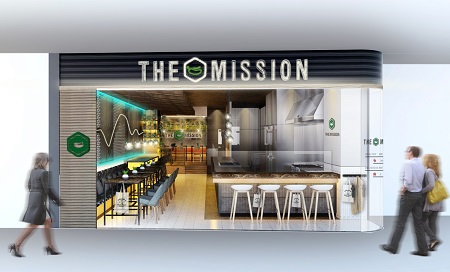
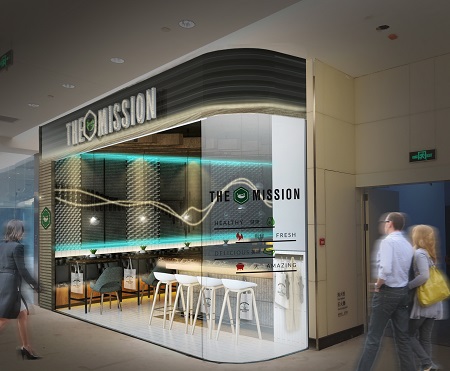 > back to top of page
> back to top of page

Understanding China: Strategic Retail Design
February 27, 2017
International retail brands that come to China have high expectations. Unfortunately, they often also have a couple of misconceptions. The retail market in China is different from Europe, North America, as well as all other countries. Retail design concepts need to be adapted accordingly. The local market presents its own challenges and brands need to adapt. Consumers are more sophisticated then brands often anticipate, and retailers have to outcompete other brands through a strong brand identity that is promoted together with an associated lifestyle. In this article we line out the most important points that you need to know when planning to open retail stores in China.

" Store Design Concepts in China need to make a strong statement "
1. Financial Investment
China is not a cheap country any more. Some of the costs associated to entering and operating in the country’s tier 1 cities like Beijing or Shanghai (store rents, salaries, advertising) are close to those brands would have to pay in Europe and the US. Retailers who want to come to China do have to make a certain financial commitment and invest for the long term.
2. Sophistication of Retail Consumers
The days where companies can sell anything and products are bought just because they are European or American – the period often also named the “Golden Age” for foreign companies in China - are over. Consumers are smart, compare choices, and travel abroad. Chinese do not pay a premium price for products and brands that are not well known and do not succeed in communicating superior value that justifies a higher price.
3. Importance of the Brand
In China, a strong brand is everything. We are often surprised that some of the retail brands we work with cannot answer basic questions about the brand positioning and brand personality. What is your brand message? What is your unique value proposition as compared to competitors? Do whom do you want to sell?
Products without a clearly defined brand that is communicated consistently throughout all marketing channels (retail design, advertisements, editorials, print material, etc.) will not sell. In China, more than anywhere else, consumers purchase products because they like a brand, not because they like the product or its functionalities. If the brand is perceived as “cool”, the products will sell.
4. Promotion of Lifestyle and High Impact Retail Design:
In addition to the importance of the development of a strong brand image, brands often forget that while consumers might be familiar with the products and the associated lifestyle in their home country, Chinese consumers might know nothing about it. This applies especially to all non-traditional retail products, like bijoux (trendy jewelry that has no investment value and is made of less expensive materials other than precious metals or precious stones), and lifestyle related products (binoculars, pens, travel accessories), for example. Since locals have not grown up with these “hobbies” (the majority of people was suffering hunger 30 years ago and the government-controlled market only opened up to international retail products in 2005), extensive education and promotion of the respective lifestyle are required before consumers understand how the mentioned products can be used and why they should be bought.
Retail design in China therefore has to be essentially different from more traditional retail concepts that are successful in the West: Store design concepts have to focus on the customer experience and showcase the attractiveness of the brand and the related lifestyle. Stores should never look traditional and conservative; instead they have to be bright, modern, dynamic and “cool”. Chinese consumers like to enter spaces that are different and have a high visual appeal; they aspire the lifestyle that a certain store communicates. If the store design is right, the product will be purchased.
5. Technology, Continuous Redefinition and Change
A last, very important point to acknowledge and integrate into a brand’s strategy for China is the constant, advanced use of new technologies of Chinese as well as the fast pace with which the market changes. LED screens, monitors, and technologic support has become the standard in stores in China. Brands have to continue to develop, grasp the trends and changes in the market and adapt their retail concept. While the core of the brand should remain the same, facets of the identity that are also expressed in the latest retail design concepts have to evolve. Brands are like people – they have a complex personality and are required to become more mature with experience.
> back to top of page

Trends in the Outdoor Sports Retail Sector: ISPO 2017
February 22, 2017
The 13th International Sports Trading Show (ISPO Beijing 2017), the largest yearly international exhibition of outdoor sports and fashion brands, took place in Beijing from February 15th to 18th. This year’s exhibition attracted 502 exhibitors and 728 brands to show their products.
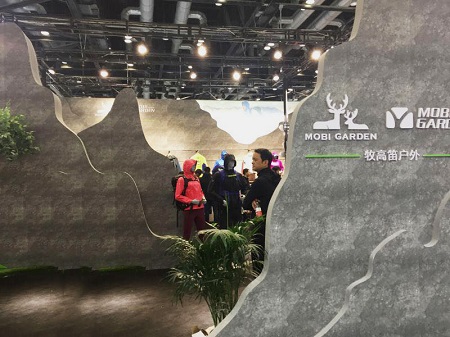
Being one of the fastest growing segments of the retail market in China (and everywhere else in the world), brands are evolving and developing innovative products at a rapid pace. The following trends were observed at this year’s exhibition:
1. Products are becoming lighter, smaller, more colorful and thus not only suitable for outdoor aficionados but the mass consumers.
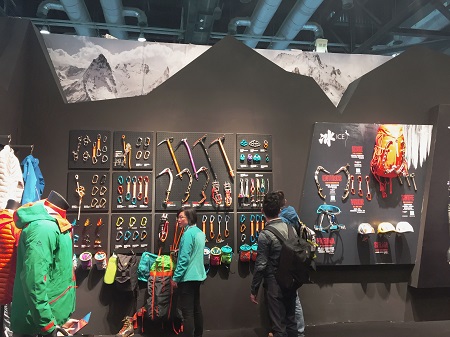
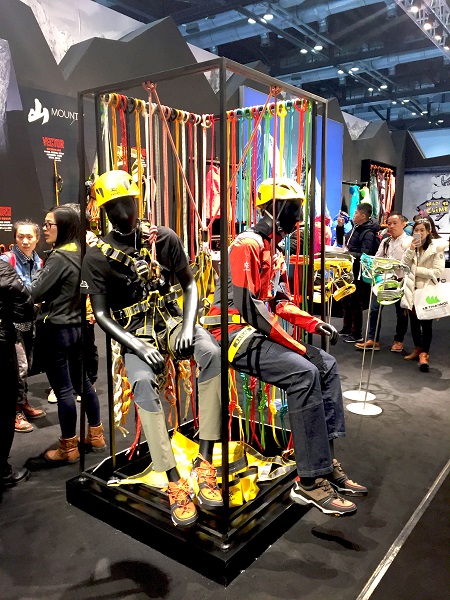
2. Branding plays an increasingly important role. The competition is increasing with more brands entering the market, retailers thus need to build brand loyalty.
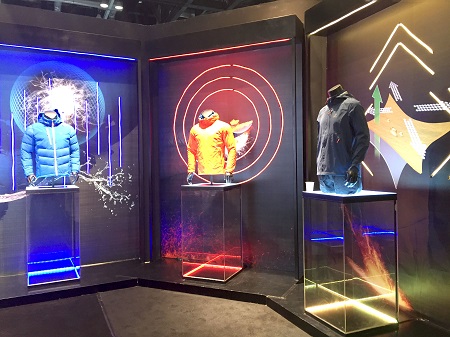
3. Outdoor fashion brands can be classified into two types: 1) The ones focusing on premium product quality and professional equipment that have a modern and clean exhibition stand design. 2) Brands that appeal to a broad customer range and therefore heavily invest into the development of marketing materials as well as stylish, sometimes colorful exhibition stand designs that create a high visual impact.
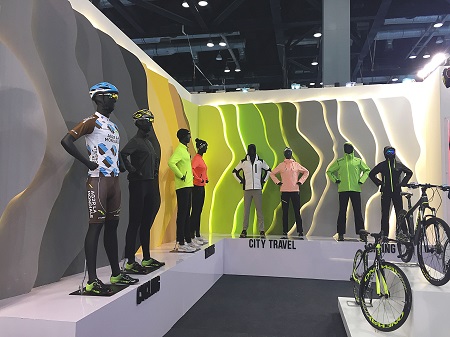
4. Chinese brands have discovered this market and offer medium quality products at more or less reasonable prices.
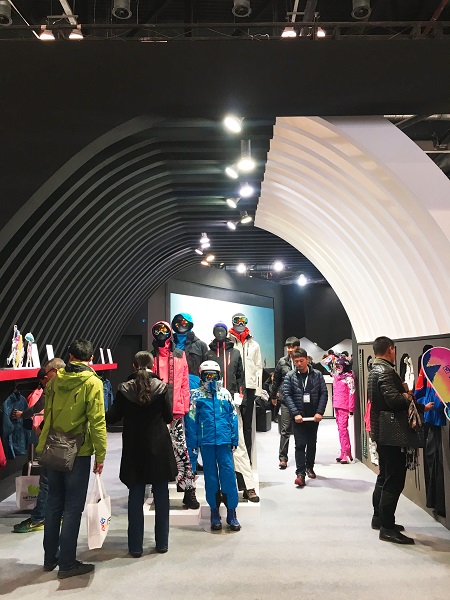
A number of Austrian brands showcased their products including snowboards, binoculars, skis equipment and skiwear in the Advantage Austria Pavillion. Besides the Austrian Pavillion, people could also visit the French, Korean, and Australian Pavillion.
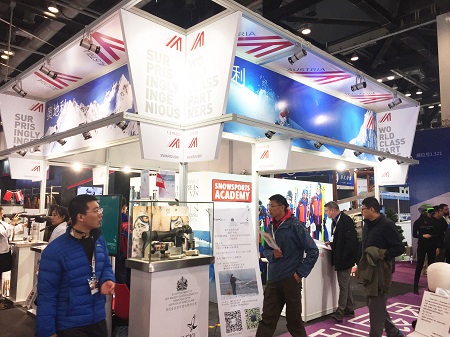 > back to top of page
> back to top of page

Interview "Design to Achieve Business Goals" with The Business Cuisine
January 26, 2017
We are proud to have been invited to an interview with The Business Cuisine, a platform focusing on entrepreneurship and innovation in the Food & Beverage industry in China. Denise Chen, founder of The Business Cuisine, sat down with Barbara Seidelmann, founder and managing director of 5 Star Plus Retail Design, to discuss how retail design should be used by brands to achieve their strategic business goals.
Key points to take away from the interview are that design needs to be very functional, fulfill the business requirements and should be planned strategically. Often enough, store designs do not have a comprehensive enough understanding of the retailer's or restaurants' operational processes and focus on the aesthetic aspects only. When starting to develop a store design concept, both owners and designers first have to be clear on the business concept, the positioning, target customers and the marketing strategy before thinking about how to translate the brand concept into a three-dimensional space.
The interview is available in the form of a 40-minutes podcast at The Business Cuisine (http://www.thebusinesscuisine.com/5starplus/).
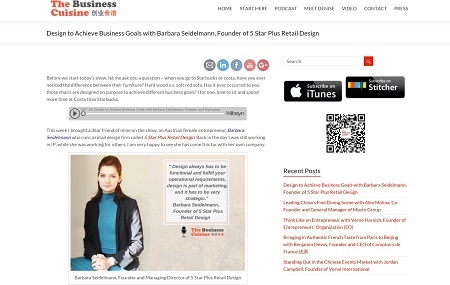
If you have questions, comments or feedback on our interview, please send us an email to retail.consulting@5starplusdesign.com. We look forward to hearing from you!
> back to top of page

2017 – An Outlook on Color Trends in Retail Design
January 22, 2017
As mentioned in our previous blog post "The Significance of Color in Retail Store Design" back in July, color plays a significant role in retail design to communicate a brand's personality, create a mood and stimulate purchases. Yet where do the preferences for certain colors come from? Much of the emotional response to colors comes from deep within us as an instinct. However, colors applied in interior design also reflect times, societal or political changes or the economic climate. Think of the earthy colors of the 1960ies which were inspired by the hippie movement, or the neon colors of the 1980ies, as examples. With this in mind, it becomes even more important to understand this year's color trends and associated effects on retail design concepts.
We have summarized the expert opinions and selected "color of the year" from the leading organizations in this field. 2016 was a year with many political and economic changes, in consequence, the color choices in 2017 seem to reflect a desire for calmness and peace, as well as a return to and appreciation for nature.
Dulux's Color of the Year 2017 - Denim Drift
Dulux's color of the year 2017 is known as "Denim Drift", which tells the story of 'life in a new light'. It is a color palette with ten stunning shades of blue. Although their color trend palettes were designed around household, these palettes are also applicable and effective within retail store design.

" 2017全球色彩趋势:生活,另眼相看 "
Image Source: dulux
Apart from blue being the world's favourite color, it is also a color that generates positive emotional response. Blue gives the feeling of calmness, happiness, and comfort, which are the feelings that most retailers should provide to their customers. According to the Creative Director at Dulux, Marianne Shilingford, to suit the style and personality of a space, five of the shades are cleaner, and have brighter tones that gives a bigger visual impact. Meanwhile, the other five are more muted and atmospheric, which tones visual impact down. This palette provides a lot of flexibility on how a space looks and feels as it can be combined with various elements, and subtly change under different light conditions.
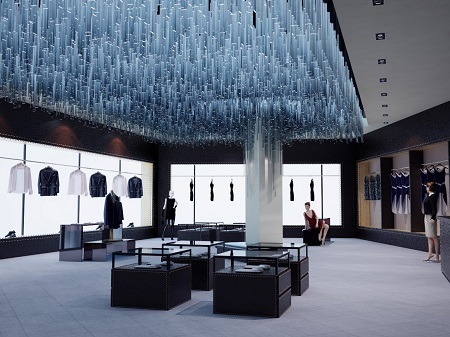
PPG's Hottest Color of the Year 2017 - Violet Verbena
PPG's choice of the hottest color of the year is confirmed! Violet Verbena is the color of the year 2017. The color is a muted lavender tone that works well in elegant spaces yet also creates a bit of warmth. Mr. Dee Schlotter, Senior marketing manager at PPG which specializes on innovative industrial surfaces, described Violet Verbena as a both modern and nostalgic color tone.

" Our Color of the Year 2017: Violet Verbena "
Image Source: PPG The Voice of Color
Dee Schlotter said: "We are seeing this shade of violet on the runway in fashion, retail design and in textiles for the commercial and residential segments." Violet is a color associated with spirituality. It promotes mental balance and resolve, while at the same time also being ambiguous, mystical and magical. Violet has a strong meditative effect and stimulates our imagination, inspires and motivates us to try out new things. With its calm and sophisticated look, Violet Verbena is definitely a color that makes a statement.
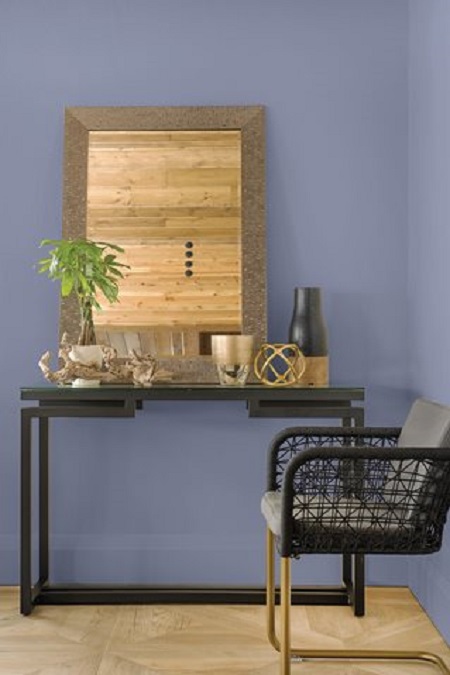
" Our Color of the Year 2017: Violet Verbena "
Image Source: PPG The Voice of Color
Pantone's Color of the Year 2017 – Greenery
With the development of its comprehensive color system, Pantone has been inspiring the colorful exploration and expression of creativity for more than 50 years. Pantone's color of the year 2017 is Greenery.

" Pantone Unveils Color of the Year 2017: PANTONE 15-0343 Greenery "
Image Source: PANTONE
Green has always been associated with spring, emerging life and lush vegetation. As the color of annual renewal and triumph of spring over the cold winter, green symbolizes hope and immortality. The root of the word green lies in the old Germanic word ghro, which means as much as growing and prospering.
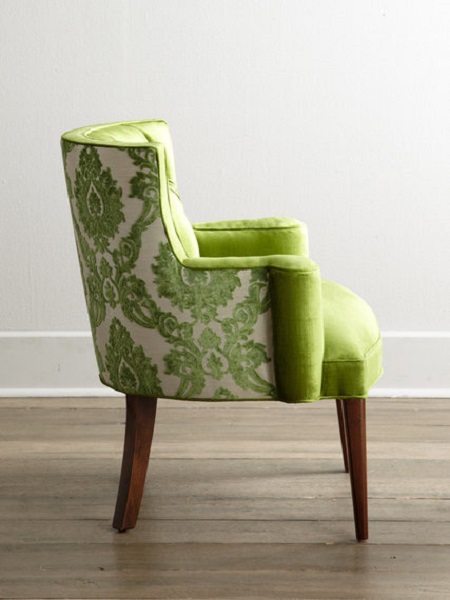
" Pantone Unveils Greenery as Color of the Year 2017 "
Image Source: The luxPad
The color green strengthens concentration, stimulates creativity and promotes tolerance. It creates peace and harmony and conveys a sense of balance and satisfaction. The color is also helpful for physical regeneration; walks in nature help us gather new inner strength. In retail design concepts, green creates dynamic in otherwise more traditional spaces, conveys a young and stylish touch or communicates a focus on health aspects for certain brands.
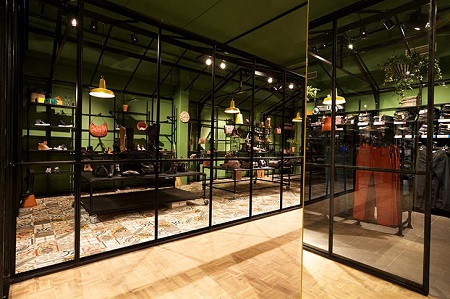
" Leafy Concept Fashion Store by King George Gives Belgians a Glimpse of their Horticultural Heritage "
Image Source: Inhabitat
At 5 Star Plus Retail Design, we appreciate the three chosen "colors of the year" for their subtle elegance, sophistication, and the positive atmosphere they create. Denim Drift, Violet Verbena and Greenery are all great choices of accent color for store design concepts. We are looking forward to seeing how brands will implement these beautiful colors in their retail stores this year and will keep you updated.
> back to top of page

The Importance of Fitting Room Design in a Retail Space
January 9, 2017
As many shoppers have been transitioning to online shopping over the past few years, there have been arguments about how brick-and-mortar shopping will soon cease to exist. However, brick-and-mortar shopping is definitely staying, especially for apparel retail stores, where personal service and fitting rooms provide a shopping experience that is not available online. Most shoppers still have similar preferences of being able to personally see, touch, feel, and try on a product before making a purchasing decision online or in-store.
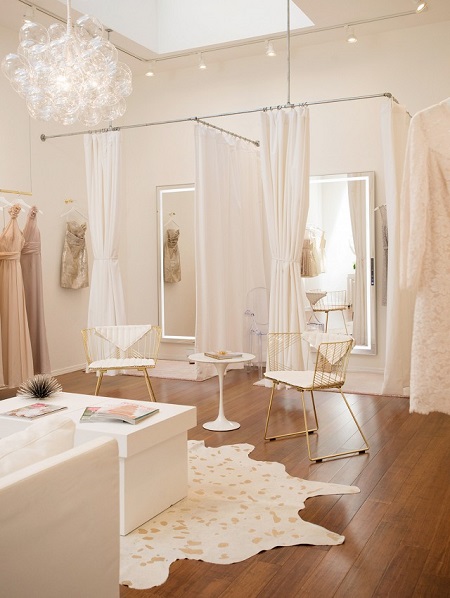
Image Source: Kristen Loken
Many retailers often overlook the importance of the fitting room experience of shoppers, and do not realize that the fitting room does actually impact retail performance. Fitting rooms are known as the small-but-mighty area of any retail store as they are one of the key elements that lead to the increase of sales and decrease in returns. This is due to the fact that most purchasing decisions are made when shoppers like what they see in the fitting room.
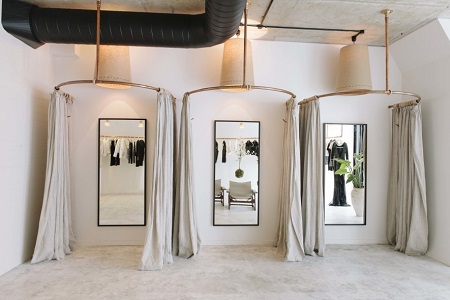
Image Source: Triibe
Fitting rooms are an important part of a brand's store design. The key elements to a brilliant fitting room design are the lighting, mirror, size and color.
It is best to use neutral white lighting, and have multiple lights on the ceiling, or lighting panels down on each side of the mirror. This will not only reflect a real life flattering impression on the customer, but also improve the fitting room experience as the perfect level and quality of lighting will avoid casting awkward and ugly shadows on the customer.
For fitting room mirrors, retailers should never have doubts to invest in large and high-quality mirrors made from high-grade glass and materials. While it may be costlier, high-quality mirrors will provide a more natural and realistic reflection, compared to cheap mirrors that have a misrepresenting and unnatural reflection.
As for the size and color, it is best not to have a small fitting room that makes customers feel confined and unable to have a full view of what they are wearing. Additionally, the colors of a fitting room should not clash with the lighting. It is also safer to use more neutral colors to make a fitting room look even more attractive.
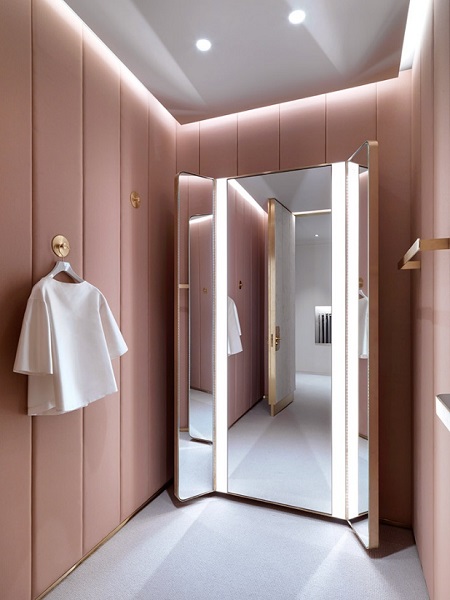
" J&M Davidson's new London boutique on Mount Street "
Image Source: Wallpaper
Different types of fitting room designs can give different effects and results on shoppers who are trying on clothes. A fitting room design with harsh lighting, bad quality mirrors, or an odd color, may result in making customers look unflattering. Hence, preventing them from making a purchasing decision as they do not like what they see in the fitting room.
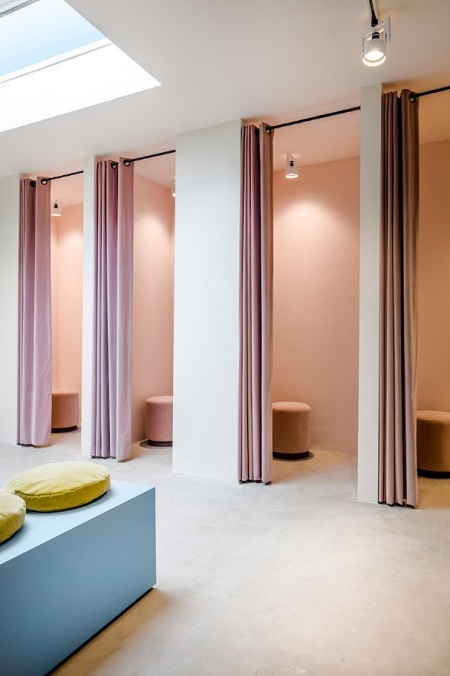
" The Pelican Studio Concept Store "
Image Source: Yellowtrace
On the other hand, some fitting room designs that unintentionally mislead customers to look better that they would in the natural daylight may come across as 'too perfect'. Although this kind of fitting rooms may manipulate shoppers to purchase the product, however, shoppers may feel deceived by the retailer, and will not be a returning or loyal shopper to that retailer anymore.
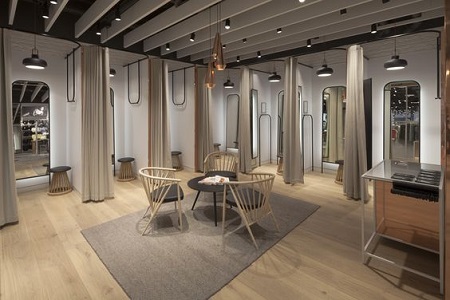
Image Source: Pinterest
Therefore, retailers should ensure that their fitting room designs stands between these two extremes, in order to gain a successful transaction whenever a customer walks out of the fitting room.
> back to top of page

SwissCham Night 2016 by Swiss Chamber of Commerce in China
December 23, 2016
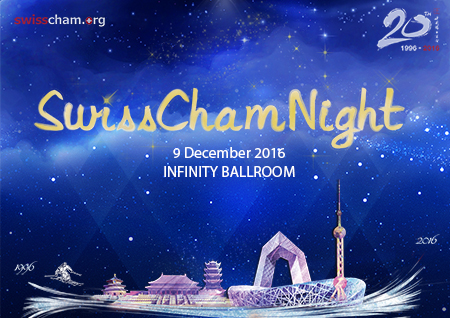
On December 9, 2016, SwissCham Beijing hosted the 2nd edition of "SwissCham Night" at Hilton Hotel Beijing. 5 Star Plus Retail Design acted as proud visual sponsor at the event, which both celebrated the end of yet another successful business year for Swiss companies in China as well as the 20 years anniversary since the chamber's foundation. As visual sponsor, 5 Star Plus Retail Design developed the event's visual identity including the design of the key visual, backdrop, menu, tickets, and signage, among others. The creation of a festive atmosphere was important; further inspiration for the event design concept was the timeline from 1996 to 2016. We are looking forward to celebrating the next exciting 20 years of SwissCham in China.
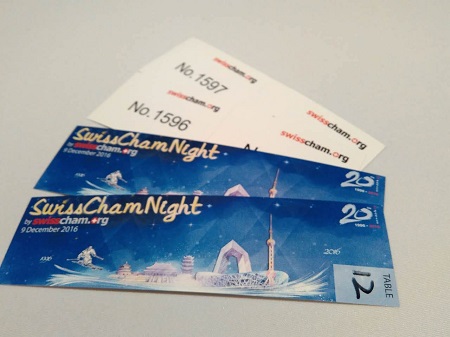
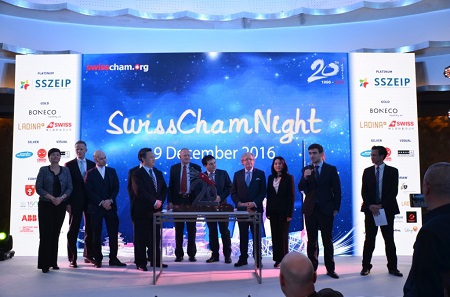
" SWISSCHAM NIGHT 2016 "
Image Source: swisscham.org
> back to top of page

What's New for 2016 Christmas Decorations
December 21, 2016
LED
In the past, candles were the only available option as a decorative light for Christmas. Although it was a beautiful sight to admire, it was a dangerous and risky method. After centuries, technological advancement led to the introduction of LED lighting and has since maintained to be people's main choice of decorative light. This year, apart from the traditional decorations using LED lights, some countries are using LED projections, which are controlled by a remote system. In New Taipei City, Taiwan, stands a 36m tall 360° 3D LED Christmas tree that is able to project anything that is input into the system that controls it. This Christmas tree is also part of Taiwan's largest and longest 3D projection light show.
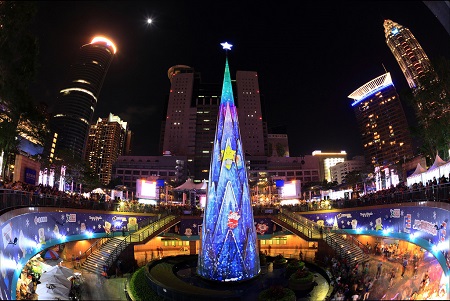
" Five best places in Taiwan to celebrate Christmas "
Image Source: Taiwan News
Swarovski
A more sparkling and extravagant decoration that can be used are Swarovski ornaments or crystals. This Christmas, residing under the famous QVB dome in Sydney, Australia, there is a spectacular 24m QVB Swarovski Christmas Tree decorated with over 82,000 sparkling Swarovski crystals and 65,000 twinkling LED lights. In Joy City Mall, Beijing, the Christmas tree is a steel structure in a spiral shape, and is decorated with lines of hanging Swarovski elements.
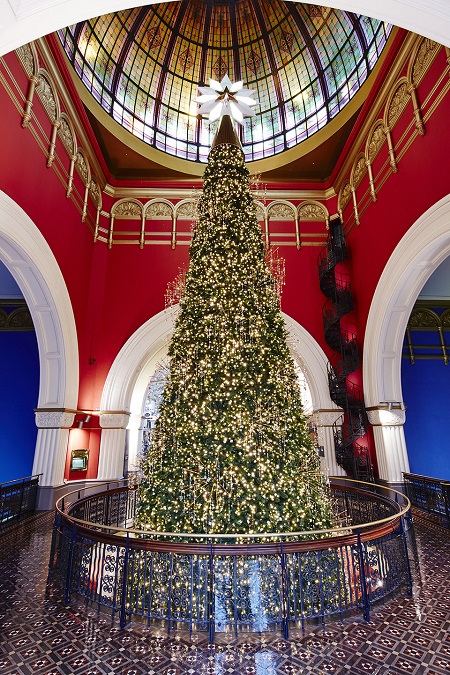
Image Source: QVB
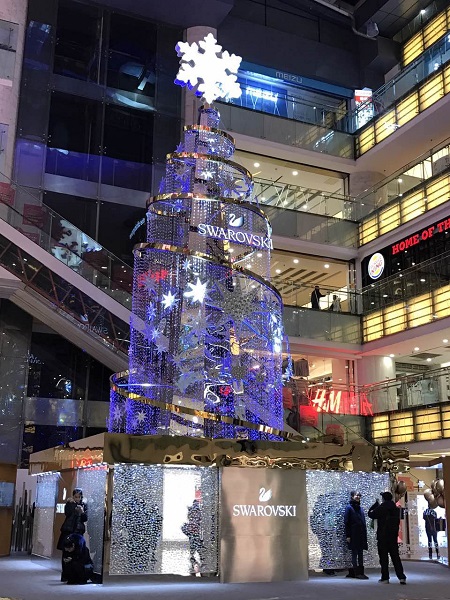
Image Source: 5 Star Plus Retail Design
Scaffolding & Dummies
This year's Christmas decoration in one of Beijing's luxury malls, Parkview Green, is quite unique and different from the common Christmas decorations in Beijing malls. At first glance, we thought that it was incomplete and still under construction. However, after taking a closer look, it can be seen that the mall is using scaffolding (a temporary structure that is commonly used in construction), dummies dressed as construction workers, and also wrapped gifts under Christmas trees, as part of their decoration. The scaffolding is attached with an elevated green walkway and staircase that allows the public to walk around and have a closer look at the decorations.
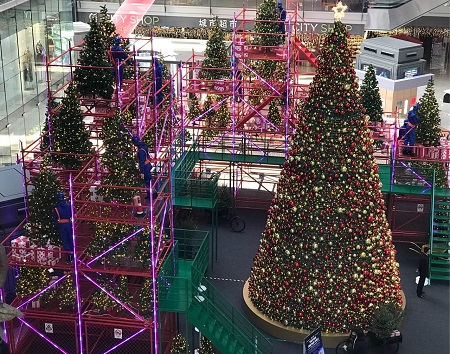
Image Source: 5 Star Plus Retail Design
Recyclable Materials
This special looking Christmas 'tree' is located inside a suburban mall in Singapore. The mall decided to go with a recycling theme for this festive season, as the mall wants to encourage the community to protect the environment and go green. The mall is contributing their part by constructing part of the 7m-tall tree with 2,100 plastic spoons, recycled raffia string, gold tinsel and trash bags. Apart from the traditional elements on the tree such as teddy bears, gold ribbons, and gift boxes, there are six glowing ornaments at the base, where each of it is made from 350 plastic spoons. The quirky looking hat that completes the tree represents a star, and is made up of 13 rolls of raffia string, trash bags and gold tinsel.
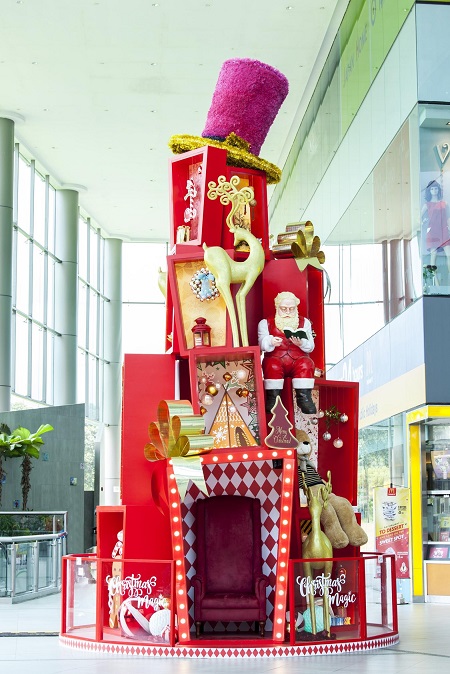
" Christmas trees with a twist "
Image Source: Strait Times
Themed Window Displays
One of New York's best holiday window displays for 2016 is at Saks Fifth Avenue, New York. Saks adopted a very sweet magical theme this year called, "Land of 1000 Delights". It includes stunning landscapes of colorful candy such as jumbo swirl lollipops, whipped cotton candy, and heaps of rock candy, and festive fashion. The colors used for this year's spectacular window display are mostly, pink, blue, purple and all the other candy colors that bring out everyone's inner child. Saks also has 6 of "The Nutcracker Sweet" themed animated windows that boast enchanting winter scenes among a luscious wonderland, including a journey over the candy cane countryside.
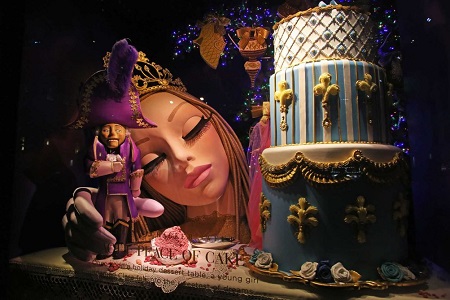
" See photos of this year's holiday window display at Saks Fifth Avenue "
Image Source: Time Out
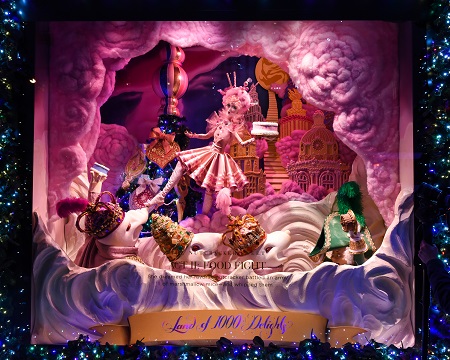
" See photos of this year's holiday window display at Saks Fifth Avenue "
Image Source: Time Out
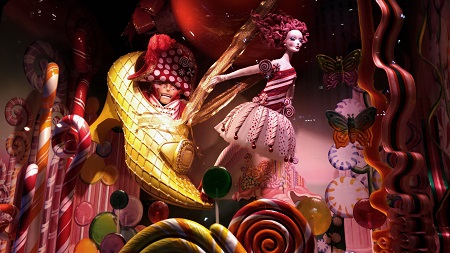
" See photos of this year's holiday window display at Saks Fifth Avenue "
Image Source: Time Out
The holiday windows of the famous luxury department in Paris, Galeries Lafayette, adopted an "Arctic Christmas" theme, where the main idea is to spread climate change awareness. Display windows are filled with paper cutouts in the form of intricate, snip-snipped patterns and masterfully constructed origami. The one-of-a-kind design tells the extraordinary tale of the famous family of polar bears who discover an incredible new ice pack for them to play on.
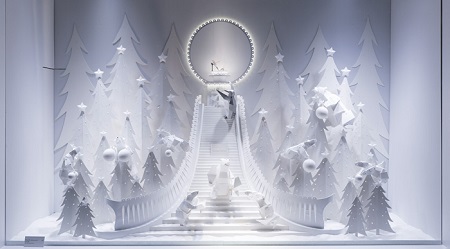
" Artic Windows: All-in-White Christmas Celebration "
Image Source: Galeries Lafayette
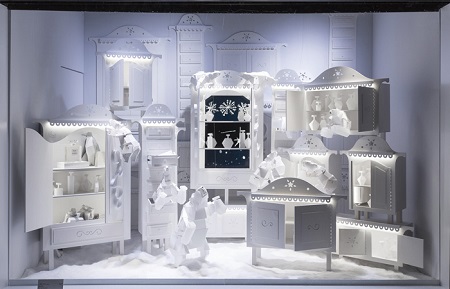
" Artic Windows: All-in-White Christmas Celebration "
Image Source: Galeries Lafayette
> back to top of page

British Chamber of Commerce in China Christmas Party
December 19, 2016
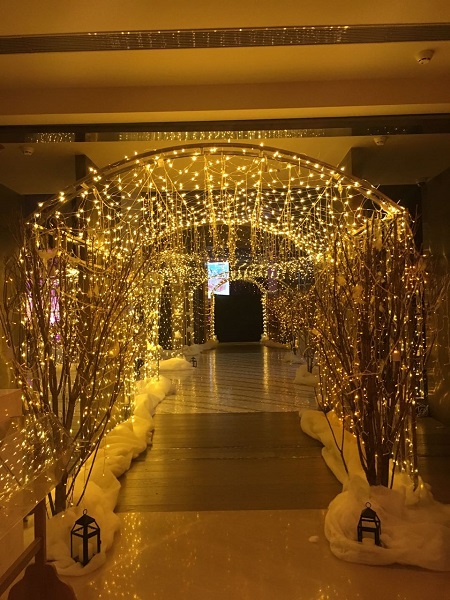
November and December are months filled with holidays and festivities - Thanksgiving, Christmas and New Year. During this special time, organizations review the year and celebrate achievements. The chambers of commerce are no exception. On December 2nd, the British Chamber of Commerce in China hosted a Christmas Party designed to impress their guests at Rosewood hotel.
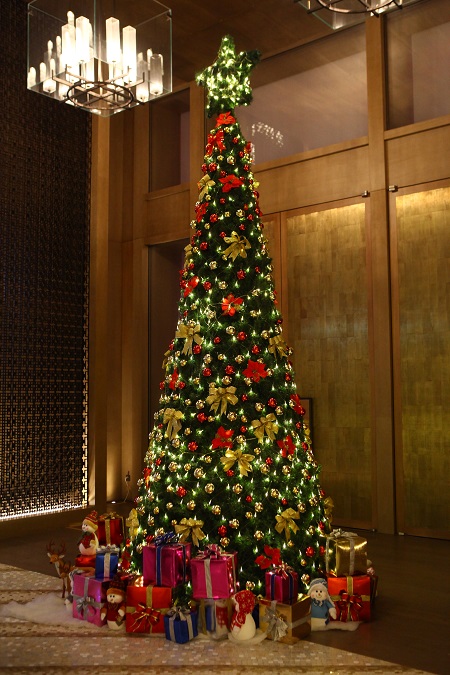
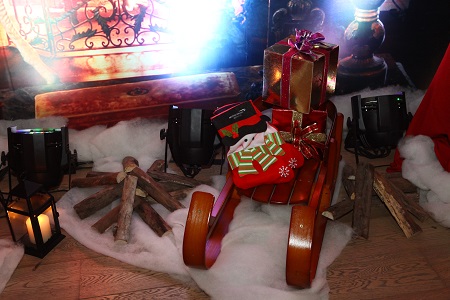
5 Star Plus had the privilege to concept and implement the event design. The theme of the Christmas Party being "mystery", key elements designed included a lighting cave, a Santa Grotto and Christmas lighting in the ball room. A unique spatial experience was developed with custom-designed feature lighting, trees with snow, antique street lamps and lanterns, forming mystic pathways that led to the Santa Grotto where promotional gifts were placed. The Santa Grotto was decorated with a sledge, street lamps, and a fire place. Two well-designed backdrops and appropriate lighting were important functional elements of the event design concept.
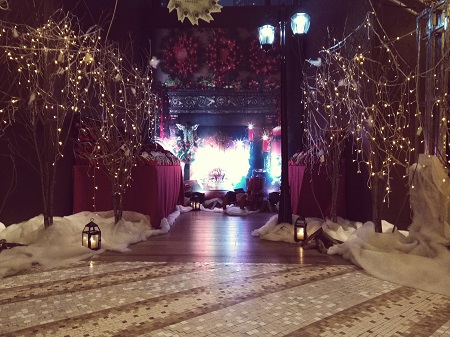
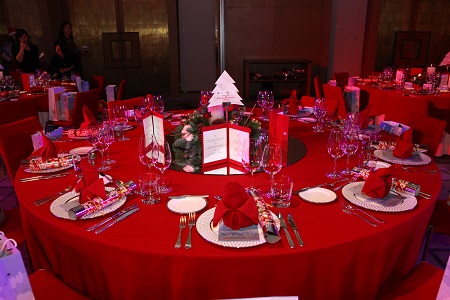
We were glad to see that the event design was used as a backdrop for taking a large number of pictures and that guest enjoyed the event.
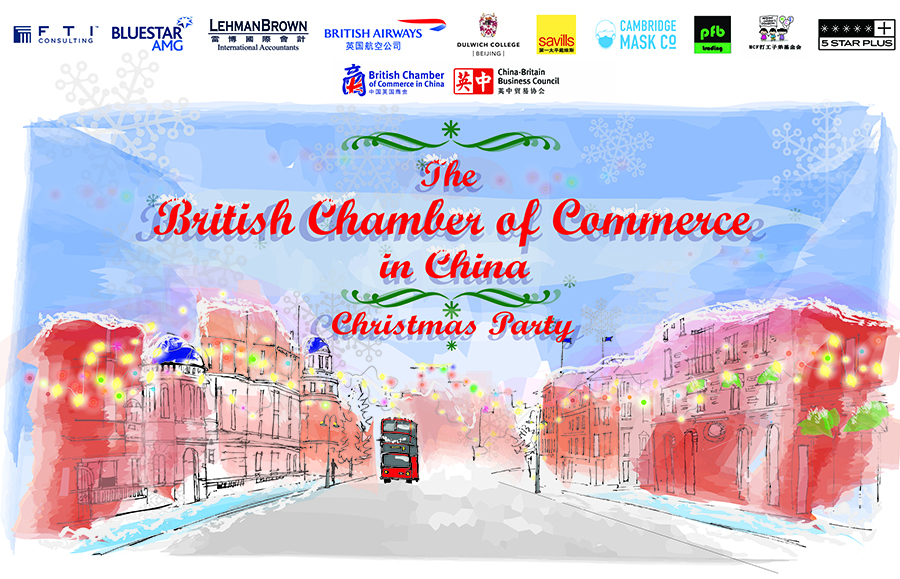
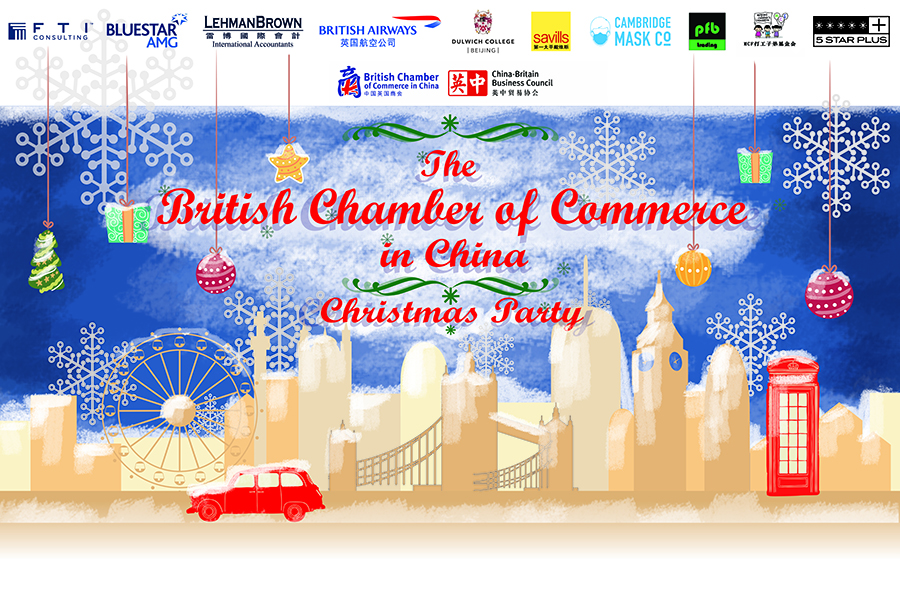 > back to top of page
> back to top of page

How Retail Stores Can Outcompete Online Retailers
November 30, 2016
In today's technology-driven world, more and more customers are discovering and enjoying the convenience of e-commerce. Large e-commerce companies such as Amazon and Taobao are thriving from their ability to sell a wide range of products ranging anywhere from furniture to clothing to food at anytime and anywhere. More and more customers seem to be choosing online shopping because of its ease and, oftentimes, cheaper prices. So how can retail stores compete with this growing online market? For years, retailers believed they needed to economize the shopping process, making the process faster and prices cheaper, in order to keep their customers. More recent findings, however, show that a highly effective alternative solution is to offer customers certain services and experiences they cannot receive from shopping online. Instead of speeding up the shopping process, retail stores should slow it down and allow customers to spend more time in stores.
What is slow shopping
This solution is readily embodied by the concept of slow shopping. Supporters of the slow shopping phenomenon believe that shopping in a retail store should be a leisurely experience where customers are not overwhelmed by the pressure to buy something. A recent report by the Wall Street Journal reveals that customers who spend more time in a store are more likely to purchase products and spend more money because these stores are able to offer customers an experience that exceeds a simple transaction of goods. Boston Consulting Group's survey of over 1,000 people also supports the notion that people are more willing to spend money on experiences than solely luxury products. As a result, retailers looking to trump online competitors should offer a store design and customer service team that turns shopping into an experience, something that online retailers will not be able to provide.
Slow shopping store design
One example of a store design that transforms shopping into an experience is Club Monaco. Club Monaco's new flagship store design in New York City largely promotes slow shopping. The layout of this store encourages customers to calmly browse through Club Monaco's newest line, while stopping by its floral shop, quaint library, or coffee shop to rest and take in all that the store has to offer. The atmosphere that this store design creates does not pressure customers to quickly purchase a few items and leave. In fact, Caroline Belhumeur, Club Monaco's SVP of women's design explains, "We want to create an area you want to hang out in". More than simply clothes, Club Monaco aims to offer its customers an experience that reveals the connections between food, music, art, travel, fashion, photography, and the clothing designs that they inspire. The experience that Club Monaco's store design provides its customers is one that is impossible to find online, and, as a result, keeps customers coming back.
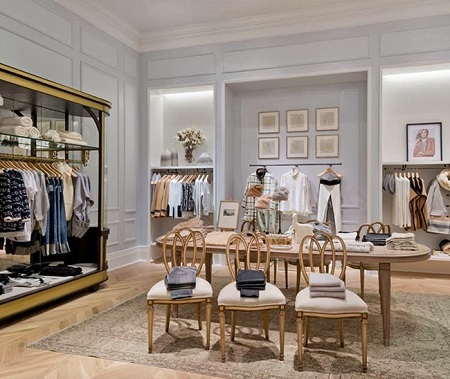
" Shop the Look: Club Monaco's Flagship Store "
Image Source: Savvy Home Decor & Lifestyle
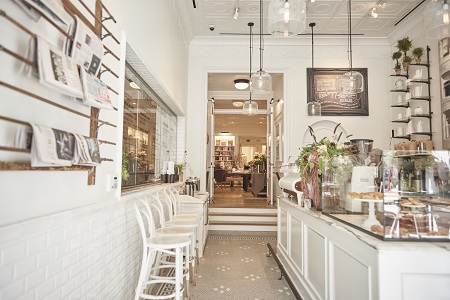
" Flatiron Espresso Bar "
Image Source: Toby's Estate
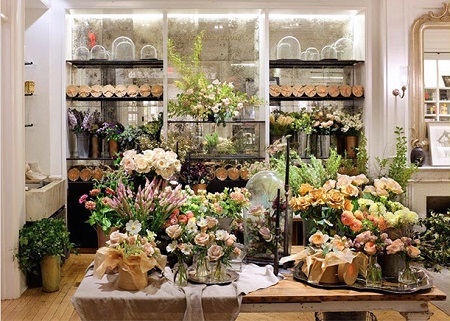
" New to our 5th Ave Flagship: Putnam & Putnam flowers "
Image Source: Little Black Dog Studios
Like Club Monaco, another popular retailer who has successfully vamped up its retail design to keep customers in stores for longer is Lululemon. In fall 2015, Lululemon opened its largest retail store in New York City. This flagship store design boasts not only the greatest selection of Lululemon apparel and accessories, but also a high-tech digital board and lounge area called Hub Seventeen. The digital board quickly shows customers which workout studios, places to eat, and things to do are nearby. Customers are also able to book workout sessions at their favorite studio or dinner reservations at their favorite restaurant using this digital board. Hub Seventeen offers a space for customers to attend various workout-related workshops hosted by Lululemon, watch new independent films, and catch up on work. As a result of its layout and design, this Lululemon flagship location is able to offer its customers a number of services and a slow shopping experience that they cannot find online.
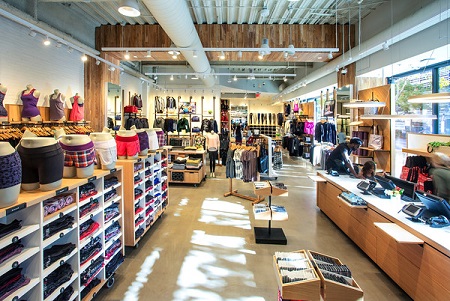
" Lululemon Debuts Its First US Flagship Store Concept "
Image Source: Well and Good
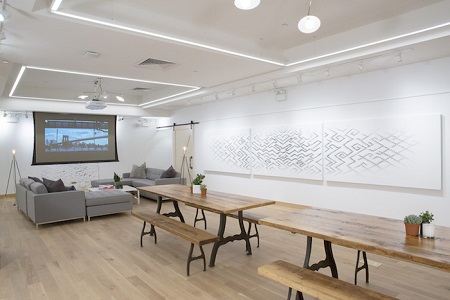
" Lululemon Opens Its Largest Store Ever in Manhattan's Flatiron District "
Image Source: Well and Good
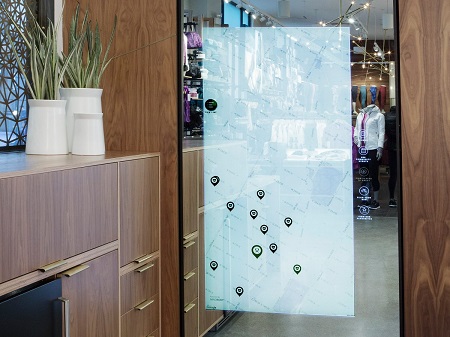
" Smart Mirrors Transform Retail "
Image Source: Antedote
Slow shopping customer services
In addition to its slow shopping-oriented store design, this Lululemon retail location also offers a concierge service that is happy to provide customers with a wide scope of services, such as same-day delivery of products to your house and booking sessions at a local workout studio and making dinner reservations at restaurants even when they are full to the public. Lululemon's all-inclusive customer service not only elongates the amount of time its customers spend in stores and the amount of products that each customer purchases, but also promotes a lifestyle for its brand.
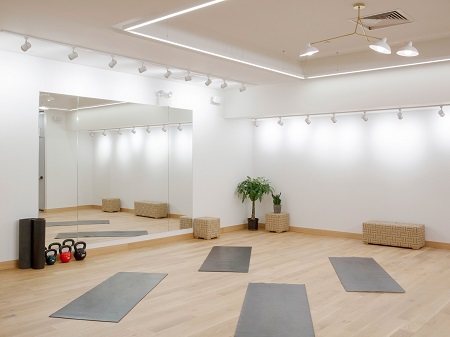
" Lululemon Has Unveiled its New Store of the Future "
Image Source: Business Insider UK
Retail brand and identity
Another positive aspect of a store design that promotes slow shopping is that it gives stores more space to develop a brand image and even a brand lifestyle. Through the store design and atmosphere, customers can better understand the brand's message and outlook. For example, in Club Monaco's store design, Club Monaco is able to successfully portray itself as a chic, upscale brand whose customers are elegant and successful young adults. Lululemon's flagship store design made it clear that Lululemon is not just an athletic and "athleisure" apparel brand, but also a lifestyle and community that support healthy living and fitness in the context of daily life.
Overall, the slow shopping solution provides retail stores a competitive edge against many online retailers. Slow shopping retail store designs give customers a more relaxed atmosphere to shop in, which is proven to influence customers to spend more money. This is not to say, however, that stores should achieve a slow shopping environment by slowing down customer services and check out lines. On the contrary, retail stores should be able to provide customers with various services that they cannot find online. Lastly, these slow shopping store designs are more conducive to showcasing a brand's image and identity to its customers.
> back to top of page

"Winter in Austria – Europe's No. 1 Event" by Austrian National Tourist Office
November 29, 2016

Austrian National Tourist Office (ANTO) held a one-of-a-kind press event at Kerry Hotel on November 15th. Making a huge impact, the purpose of the occasion was to promote Austria as the top destination for winter holidays. The event was attended by high ranking representatives from the Austrian Embassy, Advantage Austria, Austrian National Tourist Office, Austrian businesses in the winter sports sector such as Fischer and Northland as well as important Chinese media in the travel sector.



5 Star Plus Retail Design was invited to design and implement the event which took place outdoors to recreate a winter atmosphere. Key element of the event design was a photo wall decorated by tree branches and props like a swing, a sledge, ski helmets and jackets for the guests to wear. Some of the elements were sponsored by Austrian winter sports brands to showcase their products. Photos were taken by an international photographer, shared online and printed out to be placed in branded frames. Additional dynamic elements were a huge screen showing ANTO's winter promotion video as well as colored lightning, partly in the shape of snowflakes. As gifts for the guests we arranged for red blankets, snowflake shaped hand warmers and typical folkloric ginger bread. We were glad to hear that the media response to the event was very strong and look forward to the next ANTO activities.


 > back to top of page
> back to top of page

Visual Coherence - How to Create a Strong Corporate Visual Identity For Your Business
October 31, 2016
The corporate visual identity includes all visible elements related to a brand. It is one of the main pillars of a company’s corporate identity. Other pillars, for example, are corporate communication, corporate philosophy or corporate behavior. However, we as 5 Star Plus Retail Design are experts in creating a corporate visual identity. In the following paragraphs we will define what corporate visual identity exactly is and explain the key elements of a coherent design. Also, we picked out a few inspiring visual identity design concepts.
What does the customer see?
Basically a company’s VI is visible to anyone, anytime and anywhere. Whilst a corporate behavior, for example, can only be experienced by clients who are in touch with you during hours of operation, the corporate visual identity does its job 24/7. Therefore it is important to define, what exactly part of the VI is. Generally, it includes the presentation and style of all communication tools that are being used. For example, business paper, business cards, company logo, promotional material, brochures and packaging as well as the products themselves. Additionally, the website should be aligned with the visual identity design. In broader sense, also buildings, color schemes and dress codes can be part of a brand’s VI. Especially, a uniform dress is worth considering for staff members who are involved in personal customer communication.
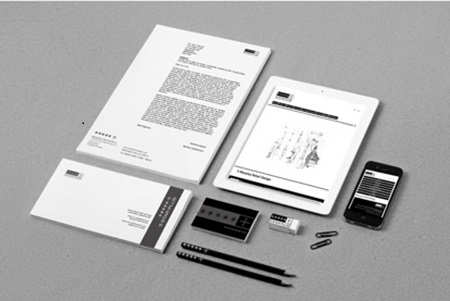
As a one-stop service provider offering branded retail design, store design, consulting and project management services to international luxury and retail brands our own visual identity is very important to us.
Key elements of a coherent visual design
At first glance the name of a brand seems to have nothing to do with the visual part. But think again, a brand name should not just sound right, and also looked right. Does the name suit the design you are aiming for? If so, choose your design and be consistent. Whether the style is romantic, classic or modern, a compelling logo is essential. It is a brand’s most important visual element. In the next step, at least 2 corporate colors should be chosen. If you want to know more about the significance of colors, check out our blog article that has been recently posted. As a final step, make sure that typography matches your brand name, design, colors and most importantly, transports the message you want to communicate.
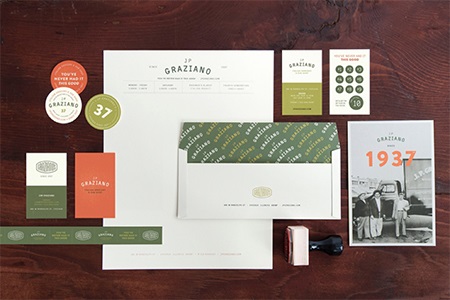
" JP Graziano branding & packaging "
Image Source: retail design blog
JP Grazino is one of the oldest and most famous Italian grocery stores in Chicago. In their corporate visual identity design they are emphasizing the company’s history of almost 80 years. White, green and orange are clearly their corporate colors and easily recognizable in this combination.
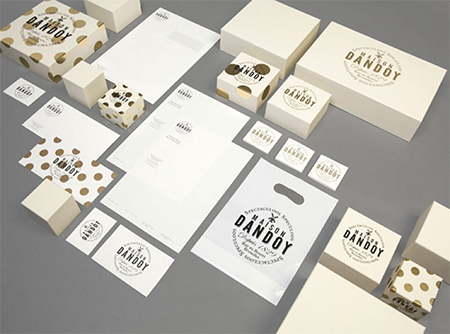
" Maison Dandoy visual identity "
Image Source: retail design blog
Brussels’s most famous bakery created an amazing visual identity with the simple combination of white, gold and a bit of black. What is especially interesting about this design is that the package does not look like a regular biscuit box; it more looks like a present.
Corporate visual identity is only one piece of the puzzle of a company’s overall appearance but its influence is tremendous. An inappropriate visual identity can destroy the image of a brand. A good visual identity underlines professionalism and gives businesses a significant competitive advantage. If you are currently developing the VI concept for your retail business or got inspired to re-design it, do not hesitate to get in touch with us. We will be happy to support you and create a tailor-made solution.
> back to top of page



Store Design: Innovative Materials with High-end Retail Appeal
September 27, 2016
A person's choice of materials is an expression of who they are. So when it comes to retail design, the materials you use can be seen as an expression of your brand identity and should reflect how you want your customers to feel and act when they enter and explore your premises. Here we have identified materials, ranging from the conventional to the innovative, that you might consider for your future high-end retail design.
1. Stainless Steel
The great thing about stainless steel is that it can take on many forms. It can be used to make a setting look modern and polished and depending on the finishing provide a sense of warmth or coolness. Elements can be linked together to create chain mails or even woven into screens, for example. At C?te & Ciel, a backpack store in Hong Kong, it is used to create poles, among other types of metal, against stone to express 'nature vs. urbanity' and functioning as a tool for displaying their products.
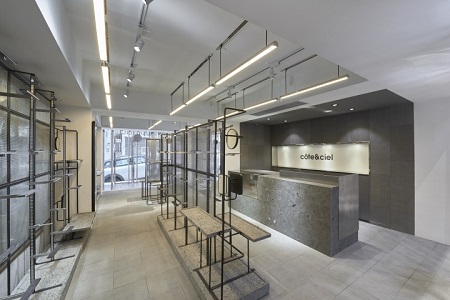
" C?te&Ciel store by Linehouse, Hong Kong "
Image Source: Retail Design Blog
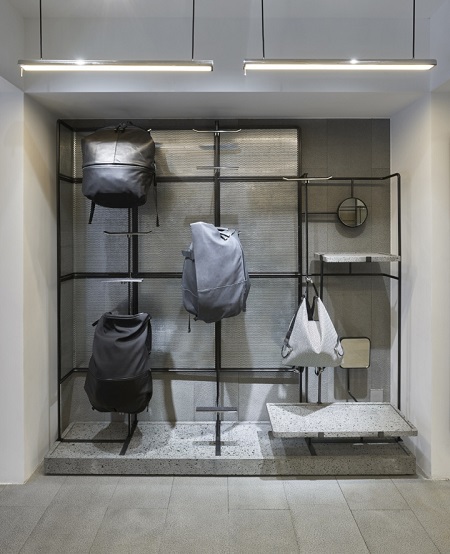
" C?te&Ciel store by Linehouse, Hong Kong "
Image Source: Retail Design Blog
At 5 Star Plus Retail Design, we implemented a three-dimensional look with a layer of stainless steel mesh in front of painted walls in our fashion store design project ORA.
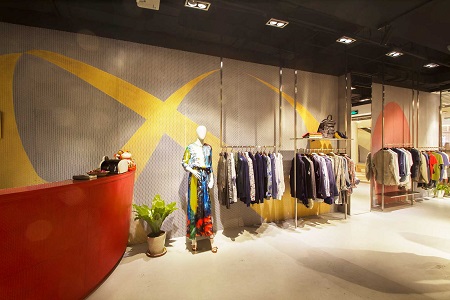
" Fashion Store Design, ORA "
Image Source: 5 Star Plus
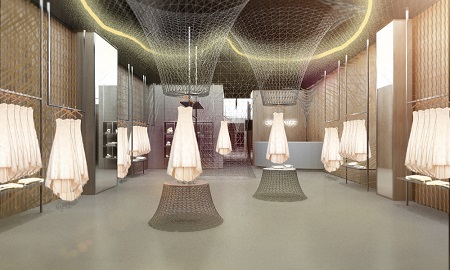
" Fashion Store Design, ORA "
Image Source: 5 Star Plus
2. Innovative Woven Fabrics by Wovns
Digital platform Wovns has developed an on demand weaving process that allows designers to order patterned Jacquard fabric in quantities as small as a single yard by weaving multiple designs as one continuous piece of fabric, so the loom doesn't need to be reconfigured before each one. The company's co-founder Dena Molnar said she was inspired by the rise of digital fabrication in fields like architecture and industrial design.
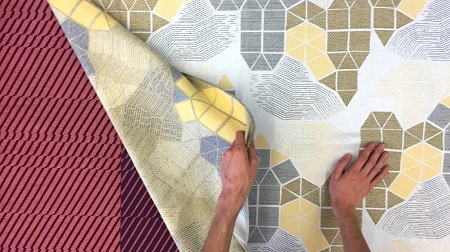
" Wovns: Woven Textiles on Demand "
Image Source: Kickstarter
3. Laminated Glass
Laminated glass is made of various flat products sandwiched between two sheets of glass which can result in a high end, pressed look. Mona, a salon in Oyama, Japan uses laminated glass with thin glass fibres embedded inside which transmit light resulting in a crystal-like appearance.
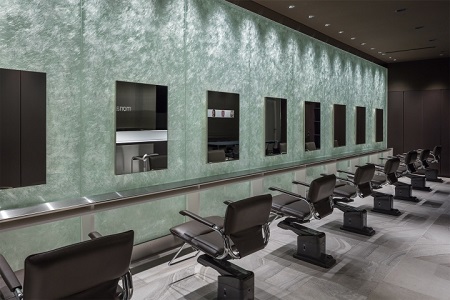
" Mona beauty salon by GRIP&Co, Oyama – Japan "
Image Source: Retail Design Blog
4. Woven Resin
Although many people would most likely immediately associate this material with garden furniture, it has been redefined by indoor features such as this 3D surface wall treatment from 3-Form. This was once only seen in commercial projects but has now become popular in residences and could easily be seen soon in retail. This feature is extremely easy to install and also has strong acoustical properties.
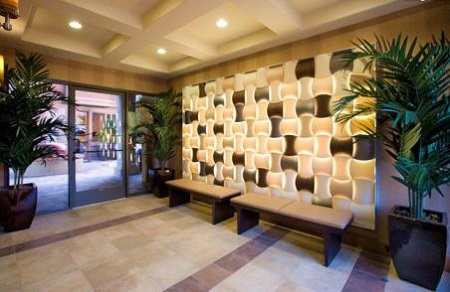
" Design West "
Image Source: Houzz
5. Pi?atex
New materials company Ananas Anam is using pineapple waste to create a material that is an animal friendly alternative to leather. The material uses cellulose fibers extracted from pineapple leaves. The strands are then separated and felted together into a non-woven fabric that is breathable and flexible. It is ideal for seating as it adjusts to your body temperature due to its pours and ability to breathe. Much like real leather, it is very versatile but due to its recent conception the current product range is limited. The potential for future applications however is undeniable.
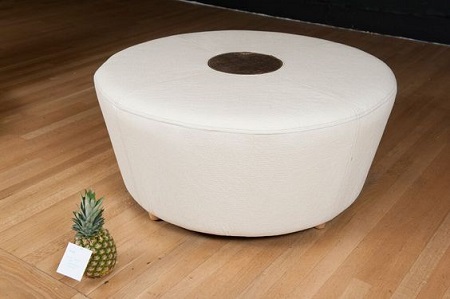
" Pi?atex – new materials for a new world "
Image Source: Active and Eco
Using any of the above materials appropriately could make your store, restaurant or bar stand out from the rest by creating a special atmosphere for your customers and emphasizing your brand identity.
> back to top of page

3 Tips for Designing your Retail Stores with Chinese Feng Shui
September 23, 2016
Feng Shui is an ancient Chinese art that was developed over 3000 years ago. Feng Shui principles focus on the positive flow of energy to create harmonious surroundings and affect people subconsciously. In the retail industry, a good Feng Shui design does not only improve the atmosphere in your retail store, but will also effectively increase sales. The following points explain how to optimize the flow of "qi", the energy, to draw customers into the retail store and stimulate sales.
Step Outside
Feng Shui design starts outside of the retail store. Take a closer look at your main entrance, shop window, neighbors and the environment around your store. A good Feng Shui retail store has a strong presence, an inviting shop window and a well-lit entrance. Ask yourself if you would like to enter to the store. If yes, where does your attention go to? Another way is to take pictures from different perspectives of your store entrance. Compare them and carefully check if you can find any signs of bad Feng Shui. For example, the front door should not be aligned with the back door; mirrors should not directly face the front entrance and the lightning should not be fluorescent. In case your front and back door are in alignment, try to arrange your displays in such a way that they hide the direct line from door to door. This is a very important step to avoid energy loss.
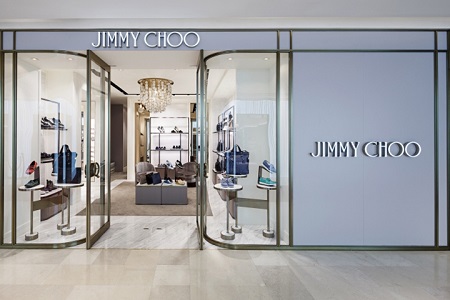
" Jimmy Choo Store by Christian Lahoude Studio, Xian – China "
Image Source: Retail Design Blog
Jimmy Choo's store in Xi'An is a great example of a good Feng Shui entrance. The front and back doors are not aligned, the shop window is inviting and the lightning is right on point. In addition, the store design uses curved glass walls framing the entrance doors which smoothens the flow of energy into the space.
Centralize Attention
One fascinating thing about Feng Shui is that you can influence your customers' focus and areas that are paid attention to by creating a path with the flow of energy. It is important that one big centralized element is visible right when entering the store. This avoids the feeling of being overwhelmed or distracted. Additionally, create some smaller sub-centers in your store that invite customers to explore. Design them individually so that the client experiences a journey of discovery. However, keep in mind that less is more. Make sure that there is still room to breathe. Useful tools for creating a path can be colors and lightning but also the triggering of all five senses. Details about colors, lightning and multi-sensory design in retail stores can be found in our recently posted articles:
The Significance of Color in Retail Store Design
Lighting: Vital for Successful Retail Store Designs Multi-sensory design for retail – How to make the most of all five senses
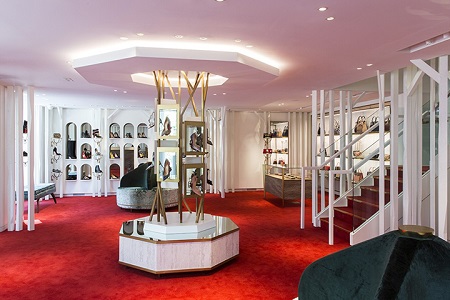
" Christian Louboutin store by Household, Toronto – Canada "
Image Source: Retail Design Blog
The Louboutin store in Toronto perfectly realized the idea of creating a center and several individually designed sub-centers.
Make the Money Flow
Besides designing an inviting environment in your retail store, good Feng Shui can also increase your sales significantly. We already discussed the importance of the entrance. It is believed to be the "mouth of qi". In other words, it is where the energy enters your retail store. Therefore, the cash register should be close to the entrance. Another way to stimulate your sales is to use "lucky corners". The corners that are diagonal to the front door are perfect for displaying unique products, special offers or your most-profitable goods. Well-lit and decorated with some plants, they will spread energy and catch the attention of customers.
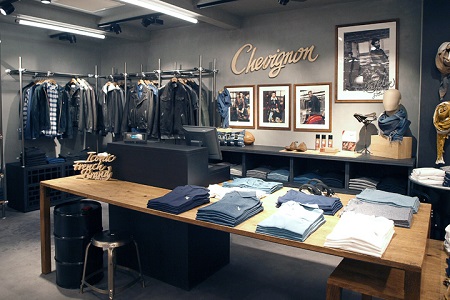
" Chevignon Corner at Galeries Lafayette by Stories, Paris – France "
Image Source: Retail Design Blog
Chevignon at Lafayette Paris uses the lucky corner by putting their most expensive products in the corner that is positioned diagonal to the entrance.
In conclusion, Feng Shui is all about guiding the energy flow. It is an ancient science and has been further developed over thousands of years. Although many Feng Shui principles are complex, we have summarized the main points into some easy-to-follow tips for you. Optimize the entrance of your retail store, bundle the attention, create paths and make use of the lucky corners. Having good Feng Shui is an ongoing process. Over time you will find out how to create the best path of energy through your store. And you will experience that if the "qi" flows, the money flows as well.
> back to top of page

Branding: How to Use Typography in Your Retail Store Design
September 19, 2016
The effective combination of words and a visual medium can be a powerful tool in retail design. This is called typography, an important aspect of retail design that you will have to use in some way. Either on your store front in order to let passers-by know who you are, on your product packaging to let customers know what your product is or elsewhere in the store to either display your brand or to assist the customer journey. When designing your retail store be unique and creative, yet always in line with your defined brand image and visual identity concept. This ensures gaining recognition from consumers with a strong and branded interior identity, also called store identity.
Use of an Appropriate Typeface
Using generic, commonly used fonts can suppress individualism and result in branding that allows consumers to confuse competitors with each other and make standing out from the crowd effectively impossible. Here are some simple yet successful examples of typography used on store fronts that are in line with the brand identity and draw the consumers' attention inside the store and towards the product.
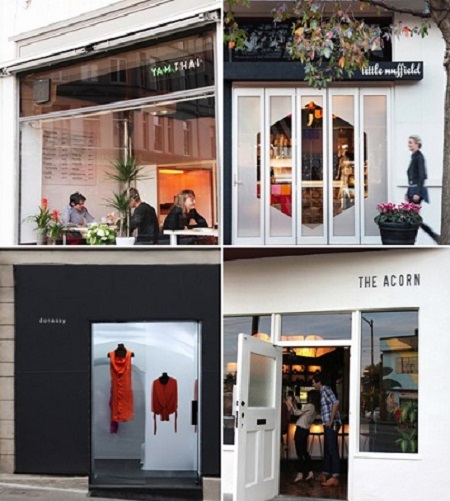
" Retail Typography "
Image Source: RENA TOM
Typography in Graphic and Visual Identity Design
Typography is used primarily as a tool of communication; therefore you should use it to talk to your customers and make your point in a style that is in line with your brand image. It is also used for the purpose of organisation. For instance, to signal locations to customers and ease their efforts in finding what they are looking for. Here are some creative typography design examples used in packaging and graphic design that create eye catching, visually appealing products.
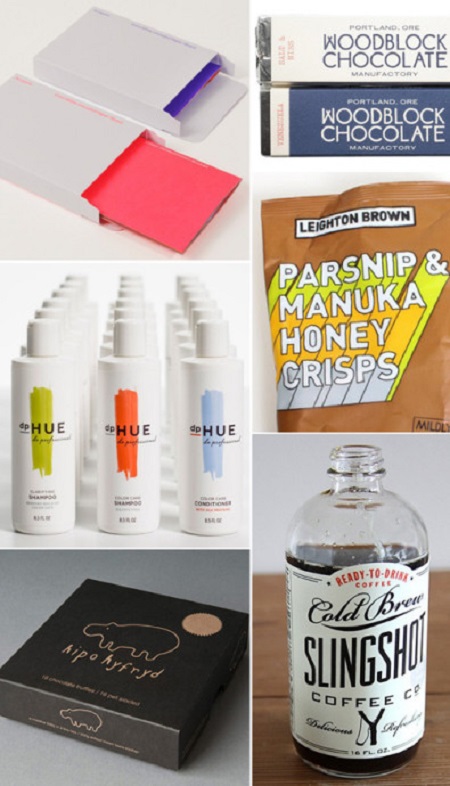
" Retail Typography "
Image Source: RENA TOM
The Importance of Simplicity
Despite what we said earlier about generic types of fonts; 15 of the top 20 retailers on the Fortune 500 list in the U.S. use the font Helvetica. This would suggest that there must be some value in keeping things simple and familiar for customers and consumers choose retailers and products based on neutrality and familiarity. Then again it could be argued that this only works for the large, well established brands who have already gained brand recognition in other ways over an extended period of time. Below are campaigns from Home Depot, Kohl's, JC Penny and Gap that all use Helvetica.
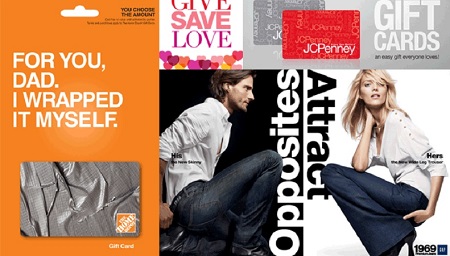
" 15 of the 20 most common shopping brands use Helvetica "
Image Source: FOUTS IN USE
Hand Drawn Typography
Hand drawn typography has seen a recent resurgence in retail. It is something that undeniably shows authenticity and allows retailers to connect with customers on an organic level - even if the result is sometimes a little rustic. Here are some light hearted examples.
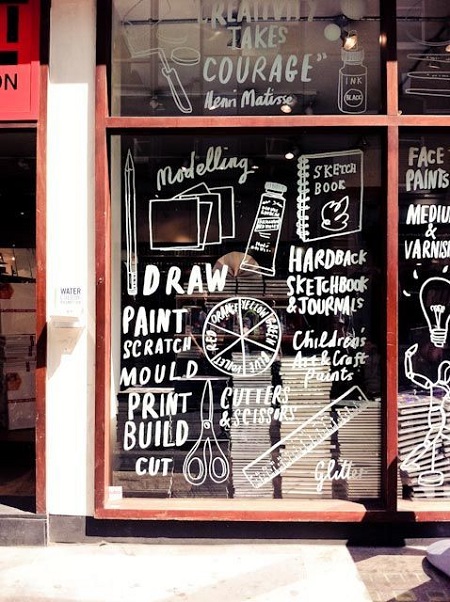
" A clean slate. More on painting your shop display windows "
Image Source: RENA TOM
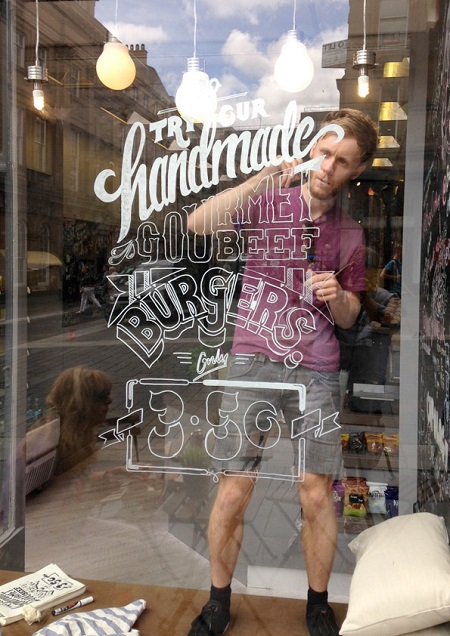
" Window Illustration for Ninety Nine "
Image Source: Behance
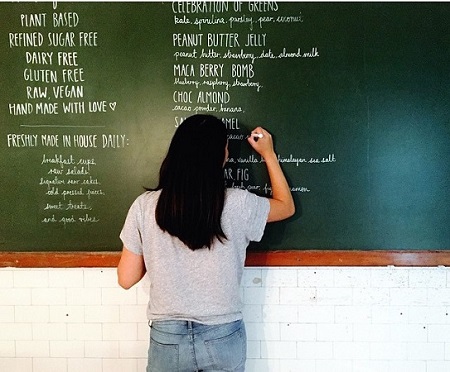
" THE RAW KITCHEN Typography, Branding, Graphic Design "
Image Source: Bronwyn Kan
Multilingual Typography
In an increasingly globalized world, the challenge of understanding foreign values and communication systems in order to make a multilingual setting for customers is one that has never been more relevant for designers and retailers than it is now. Type Hybrid, a book from Viction:ary proposes visual communication solutions in order to draw an international crowd whilst simultaneously remaining sensitive to various local cultures.
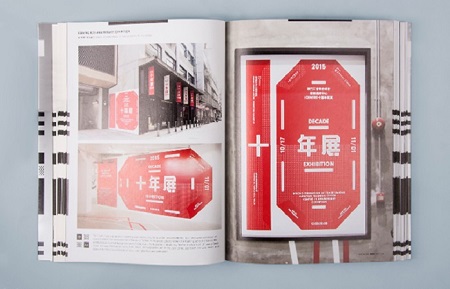
" Viction "
Image Source: Dexigner
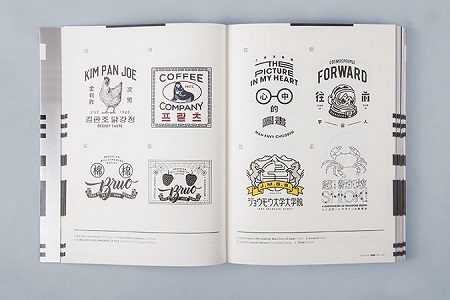
" Viction "
Image Source: Twitter
There are countless methods to apply typography to retail store design. The main message to take away is to develop a clearly defined brand with both store and graphic design elements that are unique and enhance the brand.
> back to top of page

Opening Soon! SI Restaurant in Hong Kong
August 31, 2016
We are excited to announce that Hong Kong will soon have a new, one-of-a-kind Italian restaurant brand in Kowloon: “SI Restaurant”, a concept founded by several Italian nationals living in Hong Kong. The philosophy is “Simply Italian” – the work with high quality ingredients to produce authentic Italian dishes that are affordable to the wider public. The restaurant will offer antipasti, pasta, main courses and desserts prepared by their executive Chef Massimo Santovito in an open kitchen, and house its own bar.
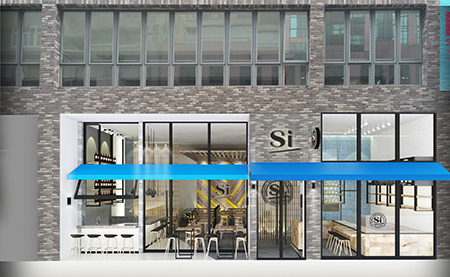
" SI Simply Italian Restaurant "
We asked Mauro Molteni, one of the owners, the following questions:
1. Why did you decide to found “Simply Italian”?
We are a bunch of Italian friends with a great passion: enjoying life. For Italian people, good food and good wine are fundamental for this lifestyle, so we decided to open our own spot that reflects our idea of the dolce vita.
2. How is “SI Restaurant” different compared to other Italian restaurants in Hong Kong?
Our restaurant will use fresh ingredients from Italy that will be prepared by our talented chef Massimo Santovito and will be offered at very reasonable prices. There are many good Italian restaurants in Hong Kong, but very few in the area where we are opening: Lai Chi Kok.
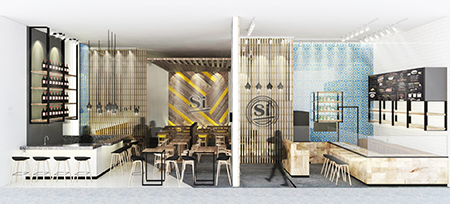
" SI Simply Italian Restaurant "
3. What dish would you recommend customers in your restaurant?
This is a very difficult choice because I like everything our chef prepares! Our favorites are: Vitello Tonnato (cold sliced veal fillet with tuna, capers and mayonnaise sauce), Homemade gnocchi with Gorgonzola cheese and walnut sauce, Baked Italian sea bass and... the desserts, they are all delicious!
4. What was the most important aspect that you wanted to communicate with the restaurant design?
We want people who enter our restaurant to feel at home, no matter if they come for a fast meal during lunch time, for business, for a romantic dinner or for a family meal.
Our bar area will be great for some after work happy hour drinks (with free canapés at the counter), high quality Italian coffee or desserts.
Hygiene in our restaurant is very important; this is why we have a big open kitchen where we will prepare the food in front of our customers.
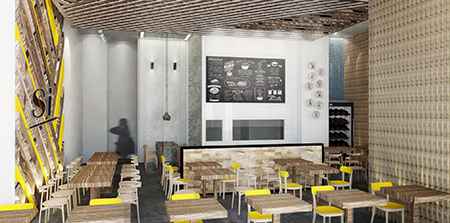
" SI Simply Italian Restaurant "
In terms of interior, the restaurant design had to express the core values of the brand including honesty, transparency, hospitality and happiness. At 5 Star Plus Retail Design, we were responsible for the restaurant design as well as the development of the brand’s visual identity. We created a bright and open environment with the use of abundant natural wood, light colors and patterns that represent Italian traditions. Key features of the space are the open kitchen, where fresh food is prepared in front of the customer, and the bar on the other side. Guests can sit inside or outside at the bar.
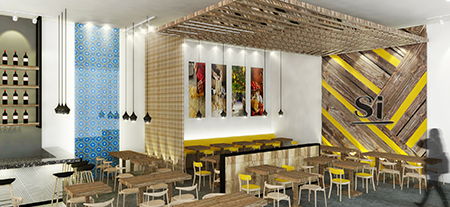
" SI Simply Italian Restaurant "
> back to top of page

What Retailers need to Know about Millenials - The Importance of Social Media
August 30, 2016
One might think now, aren’t Millennials the new generation that is addicted to their phones and buys everything online. Well, this might be true to some extent. Nonetheless, there are many reasons why retailers should cater especially to this technology driven generation because already in 2025 they will make up 75% of the total workforce around the world. In other words, they are today’s biggest consumer group. As this demographic group ages and starts to aim for higher career positions, their buying power will steadily increase. Here are 3 interesting facts that retailers should know about millennials.
“Face” social media
First, smartphones are the most frequently used tool to connect to the web and social media platforms. Second, 75% of millennials have at least one social media account. This is where they primarily get information about products, specials offers and trends. Messages sent through traditional advertising channels like print media and television do not reach millennials as well as messages sent through digital media. Third, 7 out 10 millennials react to a product, brand or company by liking, commenting, posting or sharing it on their social media account. As a result, retailers have to face the fact that there is no getting around having interesting and always up-to-date social media accounts. Of course this always depends on the field of business, but generally speaking one social media account is definitely not enough. It is also important to note that popular social media platforms are country specific. So while Facebook and Twitter are popular in Western countries, in China it is essential to have at least one WeChat or Weibo account. Maintaining these accounts requires effort but it will definitely pay off.
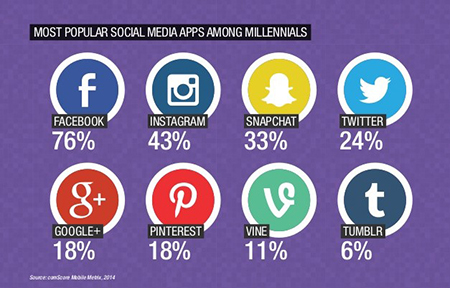
" How to Engage Millennials with Social Recruiting "
Image Source: Mobile Matrix
The above picture showed a brief overview about the most popular social media platforms among millennials.
Retail stores or e-commerce
Several studies about the purchasing behavior of millennials have shown that this consumer group is very sensible to price. One likely reason is that they are constantly tracking prices online. This does not mean that they are looking for another retail store where they can save money. In most cases, they are checking to see if the item is available online and if it’s cheaper than it is in stores. How can retailer stores compete in a never-ending Internet price competition? Simply, adjusting an items price in stores may be an option, but it does not fully solve the problem. Retailers must create value to their retail stores that millennials are unable to find on the World Wide Web.
Loyalty is royalty
The good news is that social media and the Internet have made millennials the most brand-loyal generation ever, giving retailers the opportunity to build a loyal customer base. In the future, retail loyalty will strongly depend on the degree of personalization because it must compete with the Internet’s ability to save all customer information and provide tailor-made solutions. Additionally, Retailers have the credit of the personal relationship, especially when it comes to sales conversations in fashion. The services provided by a good salesperson cannot be replaced by a computer. This is not to say that technological advances cannot support good customer services provided in stores.
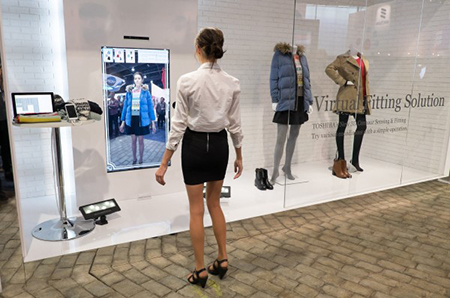
" 10 OF THE MOST INNOVATIVE DESIGNS FROM CES 2015 "
Image Source: Design-milk
In a not too distant future, virtual fitting rooms will become a must-have in the retail world.
In conclusion, the Internet and social media are a blessing and a curse to the retail world. It is up to retailers to take advantage of it. Millennials are ubiquitous. Anyone born after 1977 belongs to this demographic. They make up the biggest consumer group in the world. In case you have never considered how millennial affect the retail world, we hope that this has inspired you to do so.
> back to top of page

3 New and Creative Product Packaging Design Trends That Stand Out On the Retail Shelf
August 23, 2016
In today’s world we receive tons of messages through various channels every day. As a result, we sometimes feel overwhelmed and unable process the information that we receive. A similar situation occurs in retail stores. Every product wants to stand out and attract the customer’s attention. However, this can overwhelm the customer with too much stimuli. As a result, product packaging design must have the right balance to be able to grab a customer’s attention without completely overwhelming them. Generally speaking the three most popular packaging trends are simple, authentic and old-fashioned designs.
1. Simple As That
There are many new trends in product packaging design in retail. One trend that particularly stands out is simplicity. Keeping a design simple does not necessarily mean that it lacks creativity. On the contrary, it requires a high degree of creativity to be able to successfully produce a design that allows customers to understand the purpose of the product and the brand that is behind it at one glance.
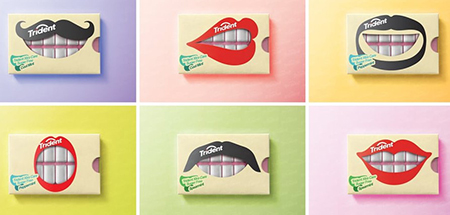
" 4 EMERGING PACKAGING DESIGN TRENDS OF 2016: ESSENTIALISM "
Image Source: thedieline
Trident brings simplicity to a new level. In this design, the chewing gum is shown as teeth and consumers can easily recognize that it is Trident gum. Hence, the product is self-explanatory.
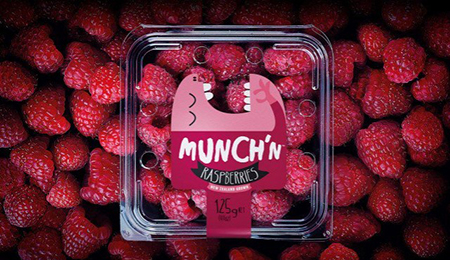
" 50 Insanely Creative and Stunning Packaging Designs "
Image Source: designschool
This design by Munch’n is another creative example of simple product packaging design that clearly displays the product’s brand and purpose to customers.
2. As Real As It Gets
Of course, packing should show the product from its best side and emphasize the product’s benefits. However, it should not mislead the customer. If the packaging creates a desire for something the customer does not get this might result in disappointment. The product packaging design should authentically present the product, not a better alternative or version of the product. Authenticity is also an easy way to gain a competitive advantage. A product design that distinguishes itself through originality has a greater chance of staying in people’s mind.
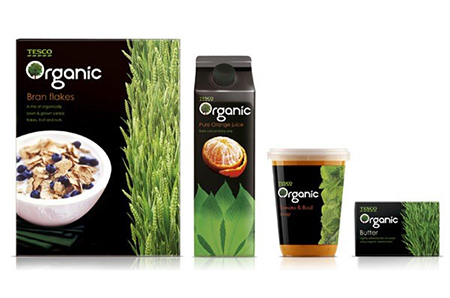
" 6 rules for packaging design that will shine on the shelf"
Image Source: 99designs
This product packaging design perfectly demonstrates this trend of an authentic and memorable design.
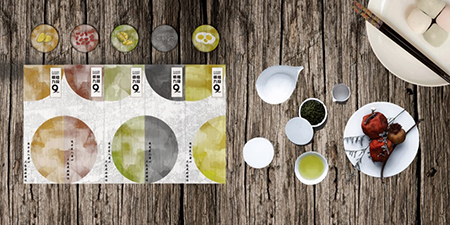
Image Source: 5 Star Plus Retail Design
This product packing design by 5 Star Plus Retail Design accurately displays the product and brand identity of 9 Dan Flavor Bakery.
3. Old But Gold
Another emerging packaging design trend that came up this year is vintage packaging. Make the packaging look like it is has been handmade with love. This style is also very detail-oriented and almost mystical. Techniques such as letterpress, calligraphy and foiling are frequently used in order to get the vintage look. Metallic colors are also frequently used to put the final touch to the product.
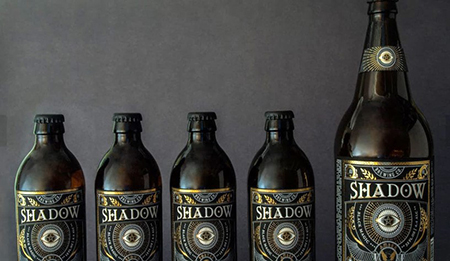
" Shadow Beer "
Image Source: Packaging of the world
Shadow beer used to be just a student’s project. Thanks to their vintage-inspired product packaging design they have been mentioned in various media channels.
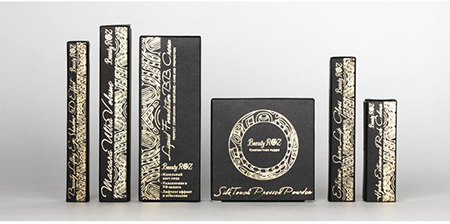
" BLACK & GOLD packaging "
Image Source: retaildesignblog
This product packaging design by ROZ Beauty draws in customers with its intricate details and vintage-style design.
Product packaging matters, more than ever before. Even though these 3 product packaging design trends in retail are completely different from each other they target the same audience. All of these packaging design trends captivate customers’ attention with their creativity. Simple, authentic and timeless designs definitely stand out on any retail store shelf. If you are considering outfitting your product with a new design you might be inspired by these top three packaging design trends.
> back to top of page

Multi-sensory design for retail – How to make the most of all five senses
August 12, 2016
A retail store is a physical manifestation of a brand, and the consumer’s perception of any given brand is built on multiple senses. Generally speaking, there are two types of consumer that will enter your store: the finders and the browsers. With research showing that the latter group is ultimately responsible for the highest percentage of sales, it is important that you focus your efforts on them by incorporating multi-sensory aspects to your retail design. A successful store design in large cities such as Shanghai and Beijing will allow you to make a bigger impact on sales and create the best possible brand experience.
Take Abercrombie & Fitch for example. Its combination of loud music, dim lighting, attractive staff and signature scent is perfect for appealing to their adolescent target market and persuading them to make spontaneous purchases in-store.
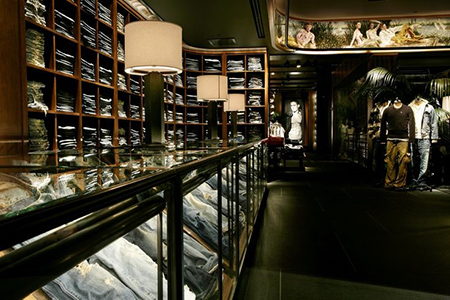
" Selldorf Architects: Abercrombie and Fitch Flagship "
Image Source: Pinterest
Sight
Impulse purchasing is primarily driven by what we see. There are many aspects to what we experience visually that can be used to influence our purchasing behaviour including colour, lighting, symmetry, balance, contrast and focus. A couple of these we have covered recently in our blog so we’ll refrain from repeating ourselves and leave you instead with this great example of a clear, inviting and aesthetically pleasing baked goods store which includes bright green highlights, well organised product displays and warm yet subtle lighting.
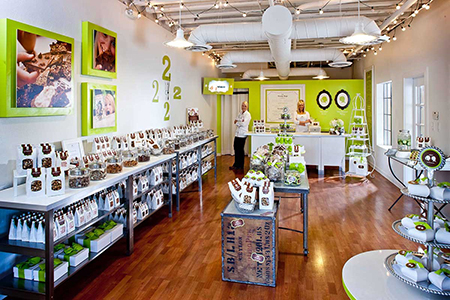
" Are You Delighting All Five Senses In Your Retail Store? "
Image Source: Shopkeep
Sound
The music playing in a store can not only affect the mood of customers and employees but it can also influence the customers walking pace around the store as well as their heart rate. While a clothing store may want to encourage customers to linger, a fast food restaurant may be looking to get customers in and out at quickly as possible in order to maximise sales. So choose the kind of music that's best suits your brand and your product.
Touch
This aspect is arguably the easiest to get right. The urge to touch is instinctive and instils a sense of ownership in the customer’s mind. So if you’re products are personal, give people the option to touch them before buying as research has shown that people are a lot more likely to buy a product if they can touch it. One retailer who makes great use of this sense is Apple. In all Apple retail locations, customers are able to hold, examine, and test out all of Apple’s products.
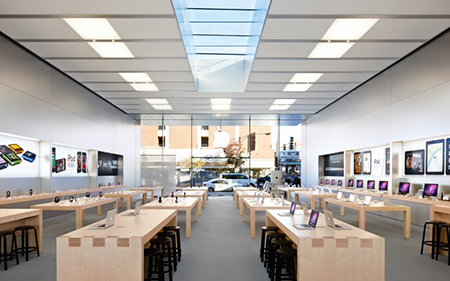
" Why Customer Experience is Still Being Neglected by Companies of all Sizes "
Image Source: LinkedIn
Smell
Of all five senses, smell is said to have the greatest impact on sales, since it is closely linked to memory. So much so, that there is a whole area of marketing dedicated to it, with consultancy firms like ScentAir specialising in helping brands leverage scent marketing to their advantage. Lush, a UK based Cosmetics Company, trademark scent is created by their products’ aroma that some may consider to be overpowering but nonetheless provides a strong sense of brand identity with customers.
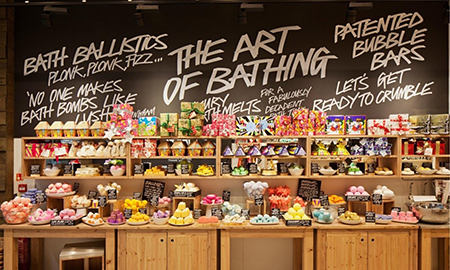
" Why We Love Lush Cosmetics "
Image Source: Her Campus
Taste
Food, beverage and confectionary stores can easily boost loyalty by providing small samples. It may be more difficult for other types of retail store to entice the taste buds and capitalise on this but there is no reason why they can’t be creative. Offering your customers something they weren’t expecting can go a long way in establishing a connection and increasing brand loyalty.
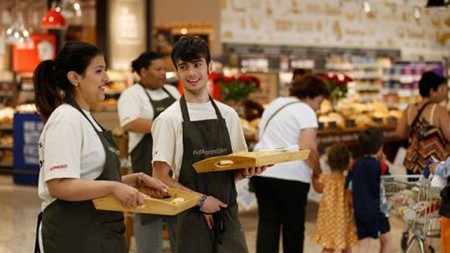
" 5 Sneaky Ways Stores Make You Overspend "
Image Source: MyModTown
Overall, one should look to drive impulse selling by developing creative retail store designs that stimulate all five of the human senses. Doing so will maximise profits and create an overall brand experience. Therefore, you should seek to build your brand into one consolidated message through a multi-sensory value proposition.
> back to top of page

The Winner of Pop! Initiative: “Sanbusuma”
July 29, 2016
5 Star Plus Retail Design proudly announces that the first winner for Pop! Initiative campaign has been selected and the winner is Sanbusuma “上布素麻”- a young local brand with unique creations that stand out among other designers.

" Pop! Initiative "
Image Source: 5 Star Plus Retail Design
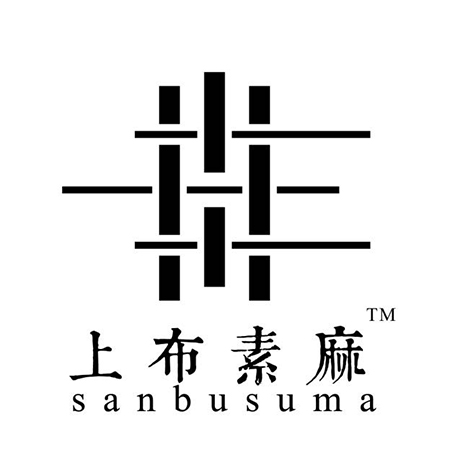
" Sanbusuma "
Sanbusuma was created by a team of architects, product designers, fashion designers, cultural scholars, and artists. This brand fuses traditional Chinese culture with today’s fashion by using time-honored, high-quality hemp cloth in its designs. Yang Lei, the creator of Sanbusuma, has beautifully combined nature and Chinese traditions with modern fashion to create simple, elegant fashion.
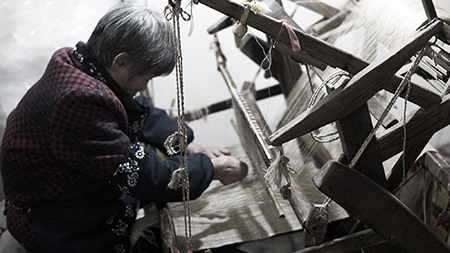
" Sanbusuma "

" Sanbusuma "
“After several rounds of selection, with the support of our media partner MetroStyle, we are very pleased to finally work with Sanbusuma,” says Barbara Seidelmann, Managing Director of 5 Star Plus Retail Design, “The designs by Sanbusuma exhibit the beauty and spirit of nature, promoting a comfortable and natural lifestyle. In addition, while Sanbusuma is rooted in Chinese culture, its designs do not ignore the current generation of international fashion trends and styles. As a result, it will attract an elegant, literary and youthful customer base in an international market.”
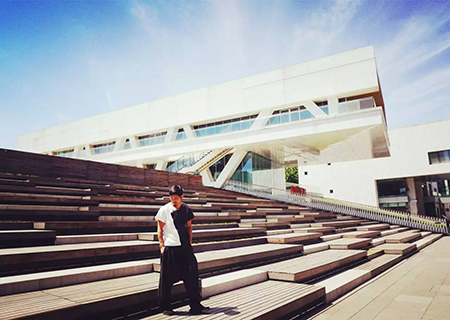
" Sanbusuma "
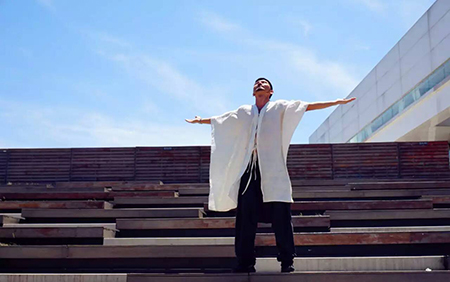
" Sanbusuma "
5 Star Plus Retail Design will be partnering with Sanbusuma to design a pop-up store that showcases the special charm of Sanbusuma in one of Beijing’s 5 star hotels. 5 Star Plus Retail Design has many years of experience in pop-up store design and retail design in China, such as Swatch’s Collection Launch Space Design (https://www.5starplusdesign.com/swatch_exhibition_event_design.html) and Halti Store Identity Design (https://www.5starplusdesign.com/halti_store_identity_design.html),and is looking forward to its collaboration with the artists and designers of Sanbusuma.
Next in 5 Star Plus Retail Design and Sanbusuma’s partnership will be the launch of the pop-up store with a media reception and industry professionals. The opening of Sanbusuma pop-up store is expected to receive a lot of attention in the fashion, store design, and Chinese luxury retail industries. We look forward to sharing this journey and progress with you.
> back to top of page

3 Smart Office Design Trends That Improve Work Efficiency
July 22, 2016
Where you work massively influences the way in which you work. Even retailers need an office where work can be done and new ideas can be created. A suitable office design greatly influences efficiency as well as concentration levels. According to recent studies on workplace and productivity, a well-designed office improves efficiency by approximately 20%. We picked out 3 smart office design trends that improve work efficiency and go hand in hand with the latest retail design trends.
Flexible office design
Flexibility is a big term in retail business. Hence, workspace should be flexible as well. A dynamic and flexible office design allows people to change the area around them easily. Furthermore, multipurpose spaces can be used for presentations, workspace or break lounges. Moreover, working in different environments actually stimulates different parts of the brain. For example, a lounge area stimulates relaxed collaborations and enhances creativity, while sitting at a round table or in a circle promotes teamwork and a collective mindset. Lastly, a flexible office design reduces costs and space. Kellogg’s headquarter in Madrid is an amazing example of flexible office design.
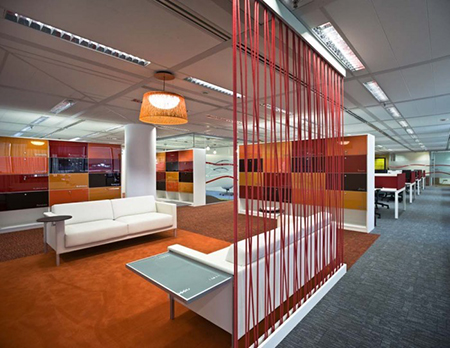
" Kellogg’s Flexible Madrid Headquarters "
Image Source: Office Snapshots
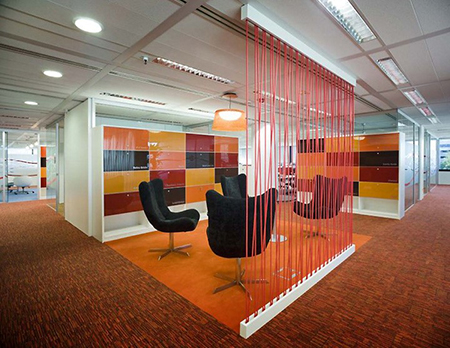
" Kellogg’s Flexible Madrid Headquarters "
Image Source: Office Snapshots
Offices Organized by color
Colors have a strong effect on moods and brain function. A recent study found that offices completely held in grey, beige and white introduce feelings of sadness whereas accents of green and blue improve efficiency and focus. Yellow is also known as the shade of optimism. Moreover, it is believed that yellow triggers innovation and creative thinking. Fresh Mail’s office in Krakow perfectly realized the idea of an office organized by color.
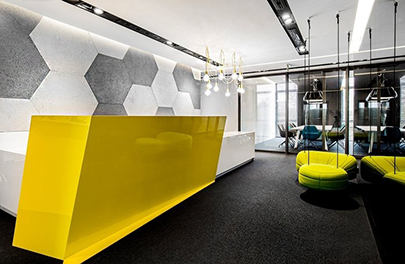
" FreshMail Offices – Krakow "
Image Source: Office Snapshot
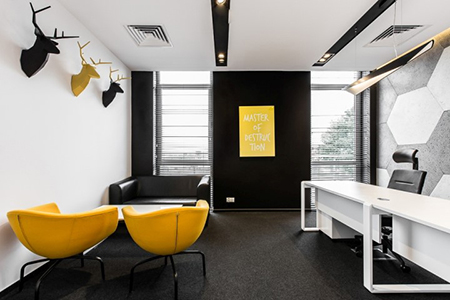
" FreshMail Offices – Krakow "
Image Source: Office Snapshot
Green space indoors
Besides enhancing the visual aesthetic of an office, plants improve air quality and reduce stress and noise. Studies have shown that plants at the work place also increase productivity and happiness among workers. At Google’s office in Dublin, there is an entire floor called the “green floor”, which is decorated with plants and wooden elements. This might be a rather extreme version of a green office but it is great inspiration.
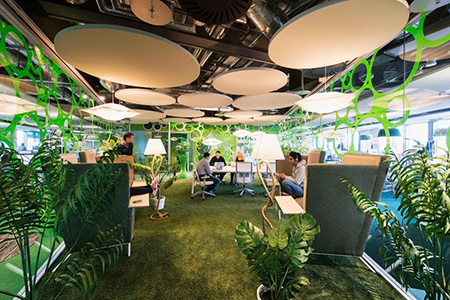
" Camenzind evolution’s google office flourishes in Dublin "
Image Source: designboom
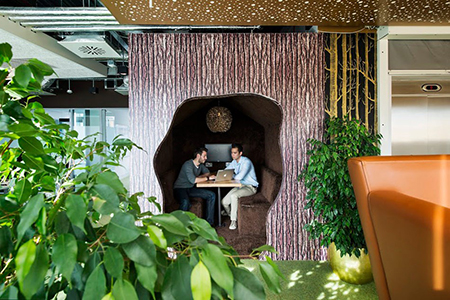
" Camenzind evolution’s google office flourishes in Dublin "
Image Source: designboom
Retail design aims for an outstanding store design that attracts customers to enter the store. The same applies for office design and employees. Of course this does not mean that you have to re-design your office from scratch, but with these 3 design trends you might get a few ideas on how to make your office more appealing and conducive to creativity and productivity. Offices are where people spend most of their time during the week, so try to make it a more flexible, colorful and lively environment. It’s simple as that. This requires little investment and greatly improves the office’s work efficiency.
> back to top of page

The Significance of Color in Retail Store Design
July 15, 2016
For retailers in China and around the world, shopping is an art of persuasion. With 85% of shoppers placing color as a primary reason for why they buy a particular product, it is certainly a factor that should be given high consideration during any retail design. Not only are colors important because they evoke certain emotions, but color temperature is also very important in creating atmosphere and driving customer sales. Cycles of light, darkness and color have an effect on our behavioural changes. Get this wrong when designing your retail store and you may put off customers. Get it right and products can look more attractive and lead to increased sales.
Colors in Cultures
Colors can psychologically affect purchases by increasing brand recognition, which is directly linked to consumer confidence, by 80%. It is important to note however that color is not universal. Colors that might entice Western cultures may deter people in China and vice versa. For example, green is the color of infidelity according to Chinese sayings, whereas in the West it represents good luck. In the US red can be associated with love and also anger, while in China it is associated with prosperity. In retail stores in the United States, black is a common design color used throughout spaces, but in China, customers are rarely attracted to dark and dull colors such as black. This color wheel shows the full scale of color representations in many different cultures around the world.
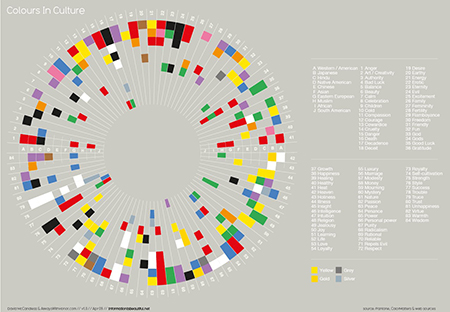
" A short photo story "
Image Source: Information is Beautiful
Cater to Your Customer
It is therefore important to consider cultural associations during retail design in a new market. Although the black color is representative death and mourning in western countries, it is not to say that just because your brand or retail design is predominantly black for instance, that you won’t be successful in Europe. Many luxury fashion brands, such as Chanel, Louis Vuitton and Burberry have taken the color black and identified it instead with sophistication and prestige.
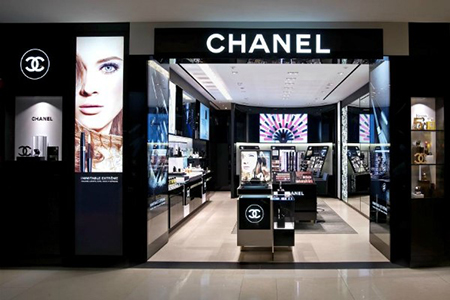
" CHANEL STORE "
Image Source: CLOTHING FROM LUXURY BRANDS
A color can mean different things to different people. The import thing is how you communicate your color choice to your target market. Research has shown that different types of shoppers respond to different colors. Impulse shoppers respond best to red-orange, black and royal blue. Budget shoppers respond better to pink, teal, light blue and navy. Traditional shoppers respond better to pink, rose and sky blue. It is clear that knowing your customer, like in any aspect of retail, is fundamental to making the right decision.
Find the Right Balance
By having the correct blend of color and darkness in your store design it is possible to avoid cultural pitfalls. T2, a tea store in Shoreditch, London used a black palette to create space full of dark corners whilst using their orange packaging with flashes of other bright colours to make their products stand out; resulting in them being crowned ‘Store of the Year’ in the 2015 Retail Design Institute awards. Color temperature, a metric measured in Kelvins, also plays an important role in making the packaging appear vibrant and encouraging dwell time in store. Here a warm white of 3,000K is used to achieve this.
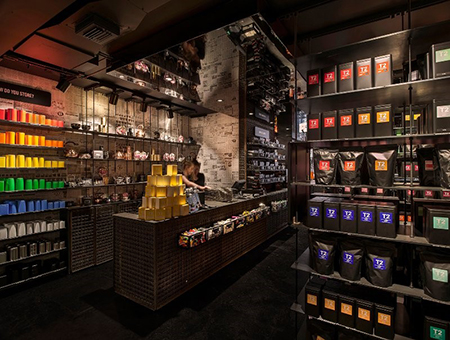
" The best of the best in store design worldwide "
Image Source: Linkedin
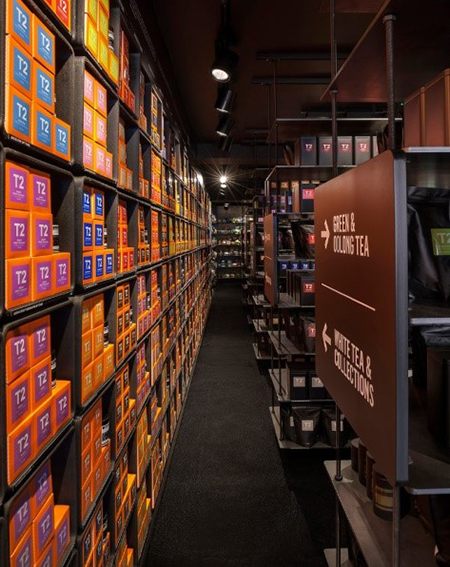
" The best of the best in store design worldwide "
Image Source: Linkedin
Change Your Tune
Customers and employees alike share psychological preferences related to the color appearance of white light. Different spaces have different color needs and these can change over the course of a working day – indicating the need for color-tuning techniques such as dim-to-warm tuning, white color tuning and full color tuning. Color tuning is proving to be an exciting trend in retail store design and is an emerging industry in its own right. Retailers can now tune the color temperature to an optimum level for their merchandise without compromising the location of the display with products that are now widely available.
Adopting the Latest Color Trends to Your Retail Store Design
Color trends may usually begin in the household, but there is no doubt that they can be equally as effective within retail store design. The trend of high striking contrasts, where bright colors mingle with dark tones, much like in T2, allows spaces to activate the senses with an interaction between dark colors that create the illusion of depth and bright colors that envelop the room. An example of which is Prologue, a bookstore in Singapore.
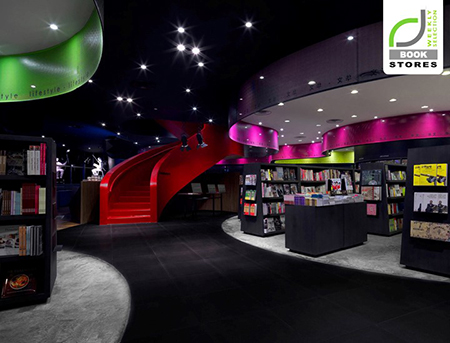
" BOOKSTORES! Prologue bookstore by Ministry of Design, Singapore "
Image Source: Retail Design Blog
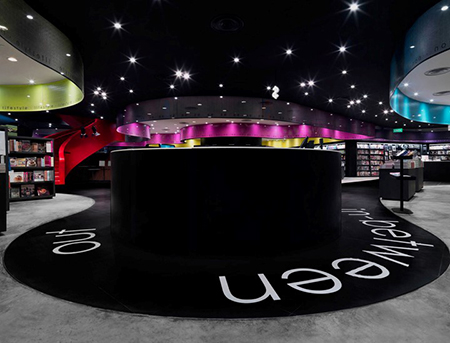
" BOOKSTORES! Prologue bookstore by Ministry of Design, Singapore "
Image Source: Retail Design Blog
Alternatively, if you wish to achieve a relaxed or optimistic setting, the trend of blurred boundaries with subtle color combinations, such as green and blue or a blend of orange and turquoise, can prove to be effective.
There are many aspects to consider as far as color within retail design is concerned. Overall, individuals should do their homework in order to know what would best suit their customers, their product and their brand. But don’t shy away from trying something new if you believe it would suit all three and result in a positive impact on sales.
> back to top of page

What You Need to Know for Creating a Logo for Your Retail Brand
June 30, 2016
A business’ logo is the embodiment and face of the entire company that it represents. A strong logo has the power to hold the attention of consumers and encourage them to purchase products from its particular company. A logo also displays the image and spirit of a company, since it appears everywhere from in-store decorations to advertisements to even company stationary. As a result, professionally made logos create a positive, professional and reliable brand identity for the company. Because customers remember a brand by its logo, the logo design is essential to its store design in China and around the world.

" Visual Identity Design,Swisscham"
Image Source: 5 Star Plus Retail Design

" Visual Identity Design,Swisscham"
Image Source: 5 Star Plus Retail Design
Another function of logos is it allows businesses to differentiate themselves from one another, especially from other companies that provide similar products and services. In China, the competition for brick and mortar retail stores is very high. Consequently, businesses use logos to steer attention away from competing retail stores to their own stores. Typically, businesses in China present their logos in more attention-attracting ways than in other parts of the world, such as in silver, with backlight, or within large light boxes. This is an effective strategy because in retail design, logos appear everywhere, including the brand’s signage on a storefront, on top of furniture and display areas, as well as on product packaging.

" Audi Centre Brighton Opens in Australia"
Image Source: Evolution
The logo’s design must be related to the overall business identity the company has. A logo should represent the company’s essence, mission and aim. The colours should be bold and eye-catching without being overwhelming and distracting for customers. A successful logo has several characteristics: simplicity, memorability, timelessness, appropriateness and versatility. During daily life, the average consumer does not have time to read a company’s entire biography. Instead logos offer a fast way of attracting attention from potential clients. Thus, logos are an essential ‘short cut’ for customer to remember your products and your brand.

" The story of the NBA logo"
Image Source: LOGO DESIGN LOVE
Because at the core of a company’s image, reputation and marketing is its logo, once a company develops a professional and reliable logo for its business, everything else can be developed on track.
There are 4 types of logos that exist: textual, illustrated, symbolic and a combination of these three.
Textual logos use words that represent the brand within the logo design. One example of a textual logo is by the company Louis Vuitton.

" The logo of lv "
Image Source: WIKI MEDIA COMMONS
Illustrated logos use a figure or illustration as the logo. One example of an illustrated logo is by the company Omega

" OMEGA Logo "
Image Source: Logo Databases
Symbolic logos use a symbol as an abstract representation of its business. The image in the logo expresses the company’s message and identity. One example of a symbolic logo is by the company Starbucks.

" Types of logos… What’s the difference? "
Image Source: Liquis Design
Combination logos feature the use of more than one type of logo mentioned above. One example of a combination logo is by the company McDonald’s.

" ESSENTIALS OF LOGO DESIGN & A FEW INSPIRATIONS"
Image Source: Web Hosting Billboard
Lastly, as the culture we live in and society as a whole advances, companies should make an effort to update their brands and logos in order to stay relevant amongst modern consumers. A logo designed to attract customers in 20th century may not be as effective in engaging the consumers of the 21st century. As a result, as companies develop, mature and expand, so must their logos. For example, in 1898 PepsiCo created its first logo. Since then, the PepsiCo logo has been updated almost twenty different times.

" A Revealing Look at the Evolution of Coca-Cola and Pepsi Logos "
Image Source: UPrinting.com
Overall, a company’s logo is a representation of the entire business and serves as the anchor for the company’s brand identity. Therefore, a professionally designed logo that portrays the company’s nature and motives is pivotal to the brand’s success.
> back to top of page

Lighting: Vital for Successful Retail Store Designs
June 23, 2016
The lighting concept is the one singular aspect that makes a store design concept succeed or fail. It is also the one factor that has the biggest impact on the sales performance of a store.
What is good lighting in retail design?
A lighting concept for a retail store is usually designed in four steps:
1. Product Displays
Product displays are the areas of the store that need to be the brightest and stand out. In the end, everything in a store is about selling. When thinking about the lighting plan for the display areas, factors that are important to consider are the size and height of the displays as well as the way the products will be displayed. The products have to be well lit from the front and ideally the side as well, even if they are displayed in different ways over time. One very important element is the lighting design of the store window displays, since proper lighting will attract customers from afar, drawing them into the store.
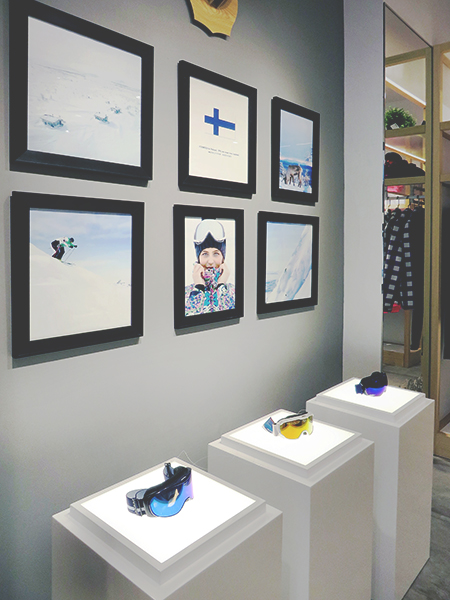
" Store Identity Design,Halti "
Image Source: 5 Star Plus Retail Design
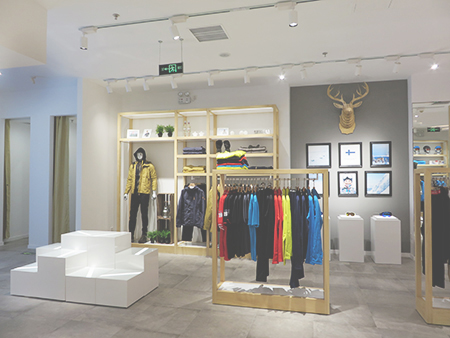
" Store Identity Design,Halti "
Image Source: 5 Star Plus Retail Design
2. Accent Lighting: Branding
Once the lighting for the product displays has been defined, it is important to identity areas that are important for branding and marketing purposes that require accent lighting. These include logo applications, signs, and poster light boxes. These elements need to be easily noticeable but should not be brighter than the product displays.
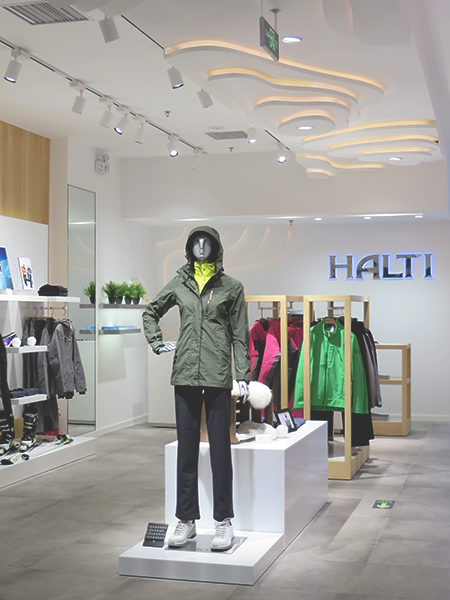
" Store Identity Design,Halti "
Image Source: 5 Star Plus Retail Design
3. Task Lighting: Work Areas
After the lighting for the products and brand elements is designed, it is time to think about the store's internal processes and work areas. The areas where people work require proper lighting: cashier counter, storage room and back office.
Is this it? No! There is one more lighting aspect that is vital.
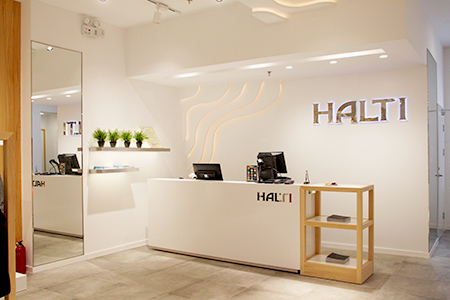
" Store Identity Design,Halti "
Image Source: 5 Star Plus Retail Design
4. General Lighting
The above three points are always required for lighting concepts that are part of store designs. When they are professionally planned they greatly affect the atmosphere and sales performance of a store. In the final stage of planning, the existing lighting design needs to be checked against the space planning to identify areas that are too bright or too dark. A good lighting concept contrasts and highlights the most important elements, while also providing a comfortable atmosphere for customers in the store. Where the lighting contrast (bright – dark) is too big, general lighting should be added. This is usually done in the center of the store or above walkways or corridors.
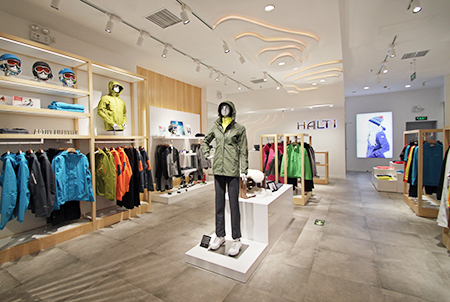
" Store Identity Design,Halti "
Image Source: 5 Star Plus Retail Design
In general, the brighter a store, the more products it will sell. This does not mean that the quantity and brightness of the lighting products has to be increased – using too many lighting products produces heat in the store, damages retail products and overpowers the electricity system, resulting in very high electricity bills. It goes without saying that such lighting designs are not good for the environment.
What should be done instead is to design lighting foci and use smart solutions: highlight walls instead of the floor, use LEDs and a good mix of neutral and warm lighting.
> back to top of page

5 Star Plus Retail Design on Austrian National TV!
June 08, 2016
We proudly announce that Austria's National Television Channel, ORF TV, broadcasted a 45 minutes long documentary about our restaurant design project Tafelspitz in Beijing. The documentation accompanies the owners from the initial idea until the opening of the space and also covers our involvement during the restaurant design and building phases.
Tafelspitz opened as a new restaurant in Beijing in June 2015, representing Austrian fine dining and wine culture at the highest level of hospitality. Austrian design elements were implemented in the restaurant interior design in reference to the origins of the owners.
The film was created by independent TV producer Wolfgang Karg and his company Asia Media House, and was first broadcasted on ORF 3 on June 4th. The documentation will be repeated a number of times and is available online on the ORF official website until Friday June 10th.
" Unser ?sterreich: Tafelspitz für Peking " Video Source: ORF TV THEK
After that, the film can be watched on Youtube at this link.
" Unser ?sterreich: Tafelspitz für Peking " Video Source: Youtube

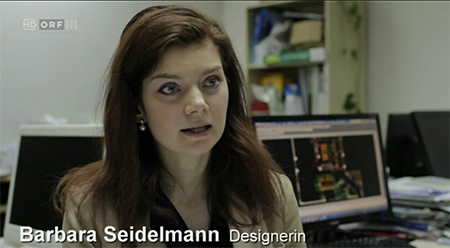
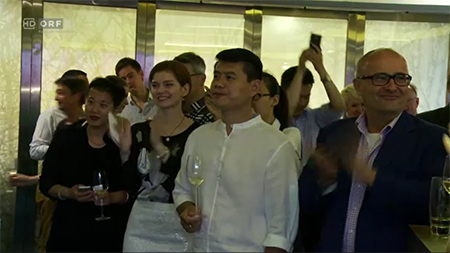
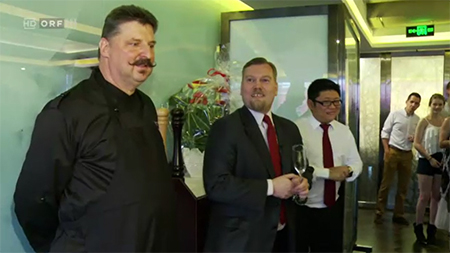
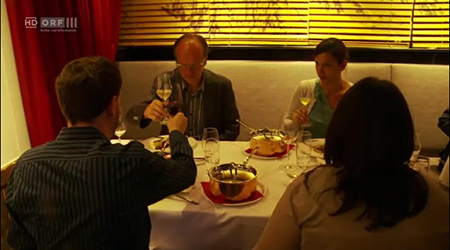
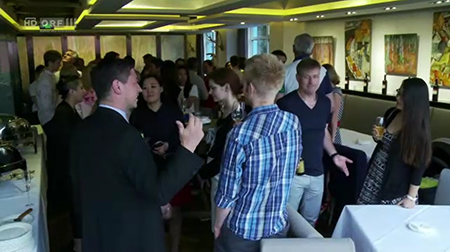
> back to top of page


Pop! Initiative Store Design Campaign!
April 29, 2016
It was the second year that 5 Star Plus Retail Design was invited to be a partner for the Luxury Properties Showcase 2016. The show was held on April 22-24 at the Sofitel Wanda, a glamorous Beijing CBD hotel. 120 international exhibitors from 35 different countries attended this event, and attracted around 6000 potential Chinese home buyers, luxury home owners and VIPs. The three day exhibition included a lot of activities, such as speeches, a cocktail party and a forum. We were glad to invite our clients, partners and friends to join us at the Just Design event.
As the biggest and the most important part of the event, we launched our "Pop!" Initiative campaign. The Pop! Initiative gives young creative fashion brands & accessory brands, independent fashion designers and startups with innovative products the opportunity to realize their dream, gain brand exposure and expand their brand with a temporary store. Through the Pop! Initiative the winner will receive a free pop-up store design, concept store design, a new visual identity concept and branding concept. The project is rolled out on three phases throughout the year. LPS offered us an excellent platform to meet up and communicate with those young and energetic designers.

" Pop! Initiative "
> back to top of page

China Fashion Week, Part 2: The 4 Upcoming Trends in this Fashion Season
April 29, 2016
China Fashion Week which was organized by Mercedes-Benz from 25 till 31 March 2016 is now over. This year's A/W 2016 collections were definitely different from the shows in the past seasons. The following four designer collections give an insight into what happened at the Mercedes-Benz China Fashion Week.
Sheguang Hu – Bold Statement and Controversial Review
Chinese-Dutch fashion designer Sheguang Hu presented a new collection which surprised the audience with blood as the key design inspiration. According to public opinion, the show was designed resembling a horror movie. Before moving back to China, Sheguang Hu owned a boutique – known also for its store design - in the Netherlands, Amsterdam and Doetinchem. The designer gave his Dutch stores up and came back to China, creating some outstanding fashion collections.

" China Fashion Week "
Image Source: Linda Nieuws
The show was full of noteworthy touches such as a model holding two dolls which looked as if they were covered in blood. While the design inspiration of the show might be controversial and not to everyone's taste, it must be said that Sheguang Hu made a strong design statement with bold colors, beautiful shapes and compositions and an almost artistic touch to all of his creations. Strong colors and bold, powerful cuts are one of the trends of the upcoming season.

" China Fashion Week "
Image Source: Daily Mail
E-hoo & FILYNN – Combination of 80ies & 90ies with the Future
The following collection created by fashion designer Li Shaowen is inspired by nature and its continuous cyclic change. The design theme is the circle and the whole collection is based on the colors blue, white and an accent of flashy yellow. While one can easily recognize references to the 80ies and 90ies, the collection also amazes with its futuristic feel through metallic fabrics and geometric accents.

" China Fashion Week "
Image Source: China Fashion Week

" China Fashion Week "
Image Source: China Fashion Week
B+ by beautyberry – Graphics and Contrast
Designed by Yu-Tao Wang, B+ by beautyberry envisions a new modern lifestyle and visual identity. With the oversized silhouette of the body inspired by the 80's wide shoulder design for women and combined colorful cartoon images the designer tries to bring back childhood feelings. The use of graphics and contrast in fashion, branding and store design concepts remains a strong trend.

" China Fashion Week "
Image Source: China Fashion Week
ZHAOQIANYAN – Casual Elegance
Long coats, oversized silhouettes and neutral colors were part of the autumn/winter collection of ZHAOQIANYAN observed at China Fashion Week. The new and prominent designer created a mix of textures between the skin and cotton, as well as through the use of denim and metallic details.

" China Fashion Week "
Image Source: China Fashion Week

" China Fashion Week "
Image Source: China Fashion Week
This season's fashion week was inspiring with an increasing number of local, young designers presenting new ideas. As one of China's leading brand and retail design agencies, 5 Star Plus Retail Design has launched "Pop!" Initiative. The campaign provides an opportunity to independent fashion designers and new brands to present their collections in a pop up store environment in a 5 Star hotel in Beijing. Regarding further details, please see our following articles. We are looking forward to Mercedes-Benz China Fashion Week in October 2016!
> back to top of page


Top 3 Inspiring Retail Design Trends for 2016
March 30, 2016
The year 2016 has started with several exciting trends in the retail design landscape. Here are our top 3 trends that should be considered for the next branded store design concepts:
1. Emotions with Mannequins
The "experience factor" and successful communication of brand values and emotions is one very important factor in current store designs. Lately, a number of forward-looking brands have started to bring this concept to a new level by using mannequins to express emotions and artistic notions.
The focus is put on the facial expression and the posture that creates a sense of movement. Different materials such as cardboard and acrylic rasin are used to create futuristic female bodies. The results look stunning!

" Cardboard mannequins at the National Art Center, Tokyo "
Image Source: retail design blog

" Moving mannequins at Harrods London "
Image Source: retail design blog

" Mannequins made from acrylic rasin at the National Art Center, Tokyo "
Image Source: retail design blog

" London Calling at Harrods London "
Image Source: retail design blog
2. Invite to A Journey of Discovery
There are an increased number of store concepts that provide an environment that is entirely different from what one expects and invite visitors to discover and experience. For example, 'Work in Progress' is a pop-up store featuring eyewear with a store design that is created from vintage elements.
The pop-up store design has the atmosphere of an unfinished workplace with old window panels and colored sand in the background as exterior decoration. Once entering, the metallic floor structure, together with the black screen, creates a more futuristic look. The store design concept is very different from other eyewear stores and definitely creates a lasting impression.

" Gentle Monster 'Work in Progress' pop-up store by Artefact "
Image Source: retail design blog

" Metallic wall by Artefact "
Image Source: retail design blog

" Optical designs by Artefact "
Image Source: retail design blog
3. Not just a Store – the Lifestyle Factor
Brands are increasingly realizing the importance of connecting with their customers on a deeper emotional level. This is achieved by creating concepts by which retail brands connect with customers on several points in their life and thus become lifestyle brands. This also explains why luxury and fashion companies are creating their own branded restaurants, cafes, bars and exhibition spaces lately.
Casa Perky, for example, is a shoe store that is designed as a cafe.

" Casa Perky shoe store in Porto Alegre "
Image Source: retail design blog

" Casa Perky shoe store in Porto Alegre "
Image Source: retail design blog
The tattoo shop in the images below was designed in the format of a bar which provides a welcoming atmosphere as a key element of the store design.


" QG Tattoo studio in Chengdu "
Image Source: retail design blog
Café and car salon Dapper Coffee Co. & Club9 is located on a restaurant street in Cape Town. The store concept combines a bar format with a classic and luxury sports car showroom, Club9.

" Dapper Coffee Co. & Club9 in Cape Town "
Image Source: retail design blog

" Dapper Coffee Co. & Club9 in Cape Town "
Image Source: retail design blog

" Dapper Coffee Co. & Club9 in Cape Town "
Image Source: retail design blog
All 3 trends observed focus on enhancing the consumer experience, impressing with the unexpected, and providing an environment that deeply connects with the lifestyle of their customers. With increased competition against the online retail industry, as well as fiercer market conditions in China and across the world, we expect to see many more trends in this direction.
> back to top of page

China Fashion Week, Part 1: Review of China Fashion Week A/W 2015
March 23, 2016
China Fashion Week in Beijing features many China's home-grown fashion brands and young designers. Started almost ten years ago in 1997, the project is organized two times per year by Mercedes-Benz.
China Fashion Week in Beijing is not as prestigious as its counterparts in London, Paris, and New York. It is definitely evolving, attracting huge crowds and promoting talented local fashion designers. Last year's A/W China Fashion Week in Beijing was energetic, creative, surprising, exotic and trendy. The A/W collection took place in the week of 25-31 March 2015, the same as in previous years. According to public opinion last year's fashion week had one collection at the runway which really stood out: The collection from a Chinese-Dutch designer named Sheguang Hu which created a lot of buzz in the media because of its colors and prominent design.
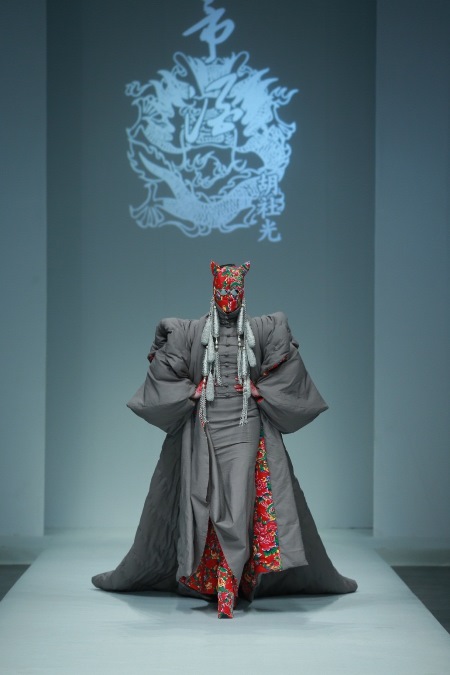
" Sheguang Hu "
Image Source: China Fashion Week
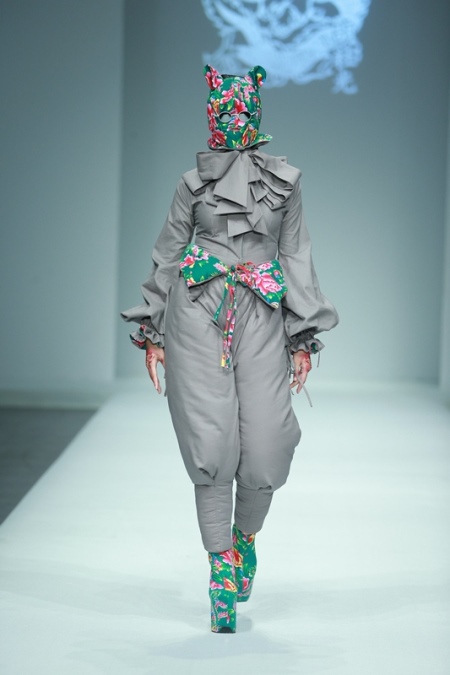
" Sheguang Hu "
Image Source: China Fashion Week
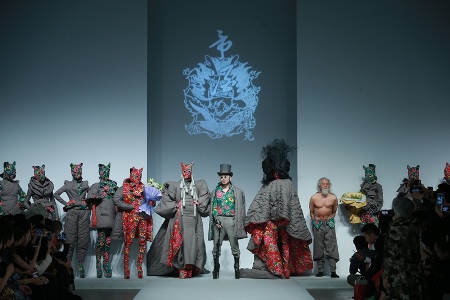
" Sheguang Hu "
Image Source: China Fashion Week
The design brings you back to the 1980s when traditional padded coats with bright red or green floral prints were very popular and part of our lifestyle. In the end, China is not only one of the biggest luxury fashion consumers in the world, but also a country with great creative design potential.
We are looking forward to this season's shows and new collections and will get back to you with a report on this year's trends after the event.
> back to top of page

Outdoor Fashion Brands at ISPO Beijing 2016
February 27, 2016
ISPO is the largest international winter sports exhibition and is organized in Munich and Beijing at the beginning of each year.
Taking place from February 24 to 27th, ISPO Beijing 2016 impressed with a large number of international and local exhibitors. In the outdoor sports fashion area, many exhibition khkhghkgkgkhkhkhkhkgkgkstand designs expressed their respective brand positioning and attracted visitors with bold colors, dynamic displays and interactive technology. Others focused on using an abundance of
natural materials such as wood. cities.
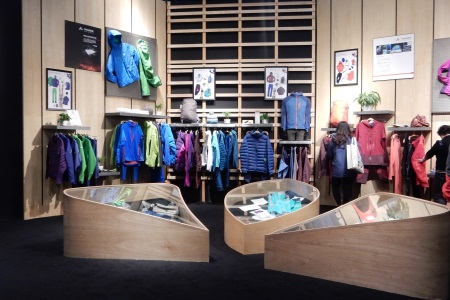
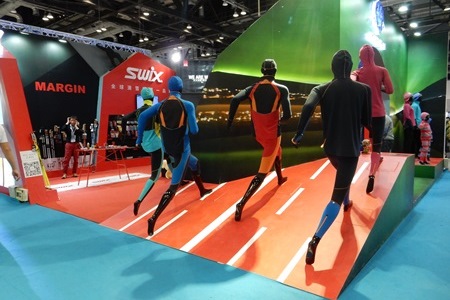
In this specific segment of the retail market, promoting the "experience" factor has a particular importance. Some brands achieved to create a very dynamic environment with means of an interactive ski game on a large LED screen, hiring a disc jockey or arranging performances where products were tested in extreme conditions such as ice and water.
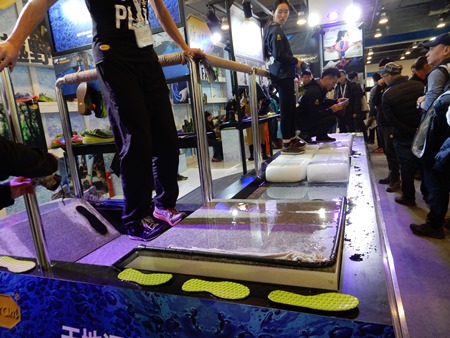
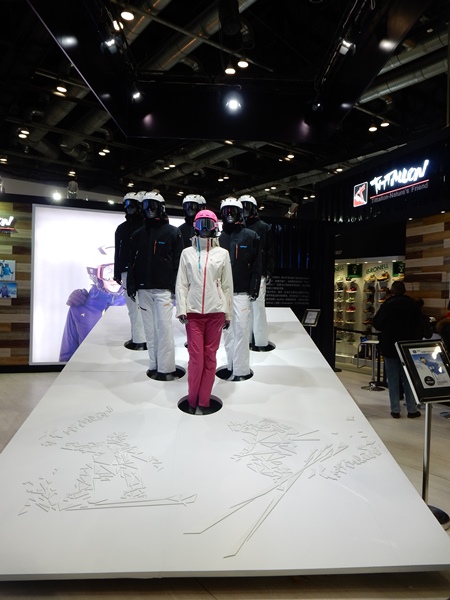 > back to top of page
> back to top of page

Hanna Trachten – Flagship Store Design in Salzburg
February 24, 2016
Hanna Trachten is an Austrian traditional clothing brand that we have worked with three years ago to create the design of their flagship store in Vienna in early 2013.
A few weeks ago the brand has asked us to get involved again, this time for the store design of their new three story flagship in Salzburg, one of Austria's most prestigious and historic cities.
In this article we want to show how a typical store design project looks at the beginning and during the concept stage, therefore we have juxtaposed a number of photos of the construction site with hand drawn sketches and visuals.
The store is planned to open in March 2016.
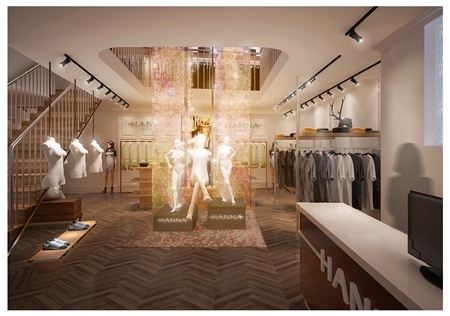
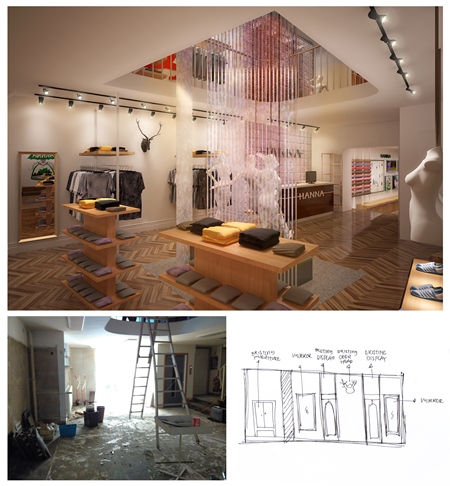
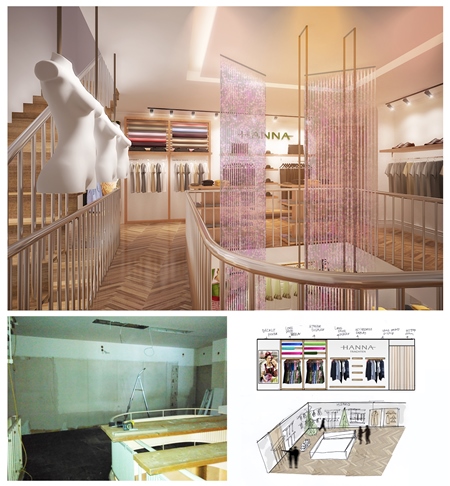
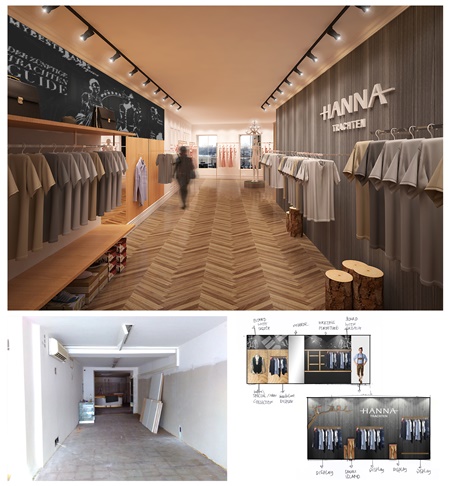
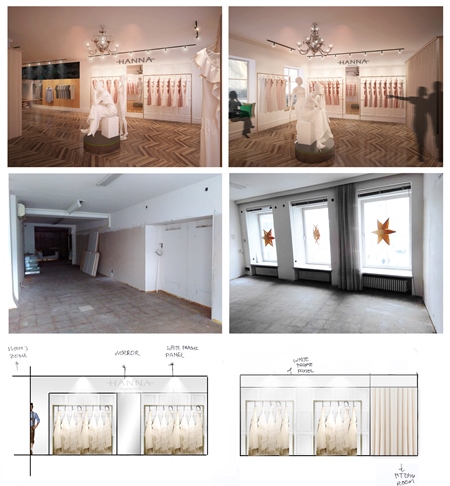
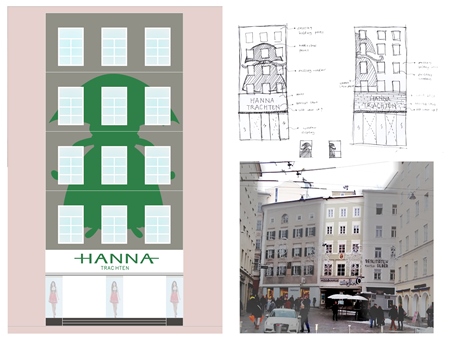 > back to top of page
> back to top of page

Visual Displays that delight – Spring Festival 2016
January 29, 2016
From a marketing perspective Spring Festival is a retailer's delight. With the Chinese season of giving, thanks and good wishes on our doorstep it is the perfect opportunity to reengage with customers and let them know that we have what they need when it comes to the Chinese New Year. Chinese New Year is the 7 day long holiday, dating back over 4000 years, where it is customary to give gifts of affection, love and gratitude to family, friends and colleagues. 2016 will mark the year of the fire Monkey in the Chinese Zodiac calendar which should help inspire cheeky campaigns portraying ambition and adventure. There are several ways that retailers are engaging customers for Spring Festival. This article will examine the luxury retail trends for the Chinese New Year 2016.
Monkey madness
As it will be the year of the Monkey in 2016 many luxury retailers have sought to embrace the monkey motif in store displays, exclusive product ranges and limited edition packaging.
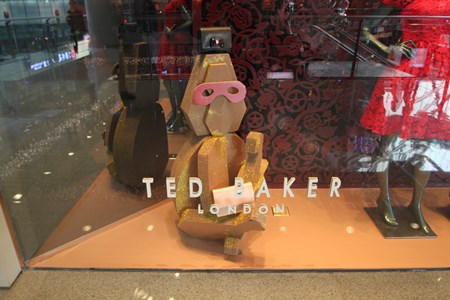
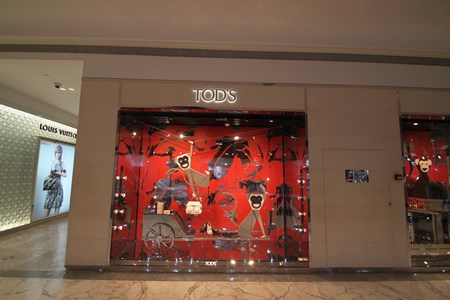
Multimedia marketing
One noticeable addition to the Spring Festival scene is the sophisticated multimedia displays used by high end retailers. These displays set high end luxury retailers apart from their competition as it places them at the forefront of marketing technology.
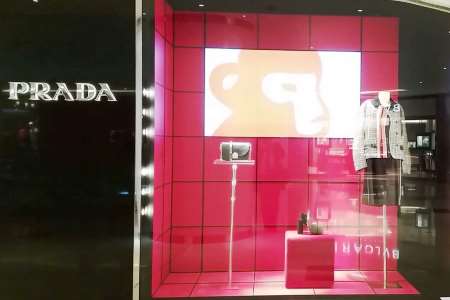
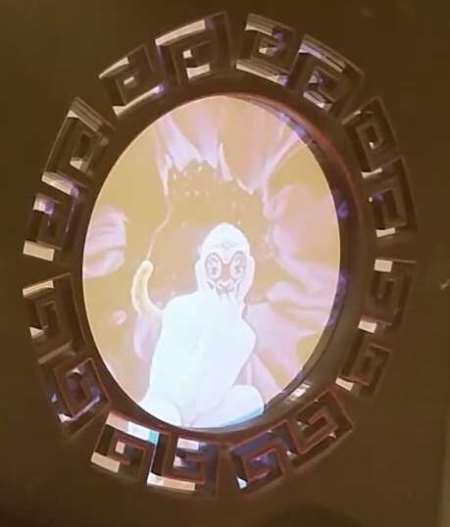
Focus on spring
Other premium stores have chosen to represent the theme of spring with displays that are fresh and floral with vibrant colours. This gives their displays longevity even after Spring Festival concludes
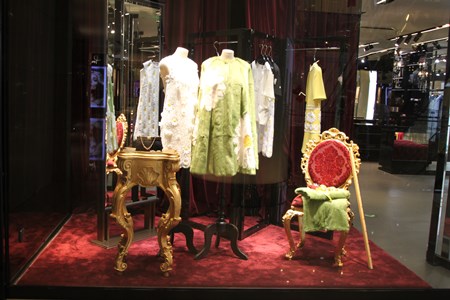
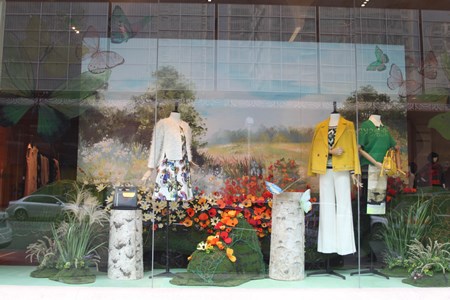
Family focused marketing
In our opinion, the most ingenious displays and promotional materials were the ones that captured the appreciation of all age groups. With the understanding that this holiday is a holiday for families to spend time with each other, so some stores created interactive activities or displays to enchant children whilst they are shopping with their parents.
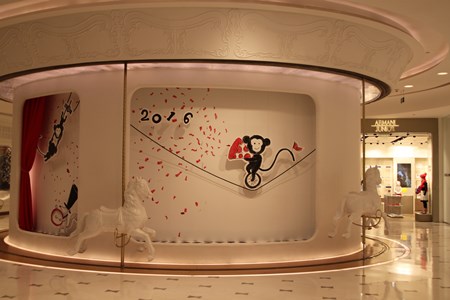
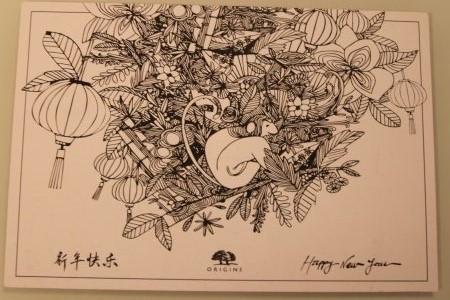 > back to top of page
> back to top of page

Why Adapting Store Design Concepts to the Chinese Market is Important
January 27, 2016
Should international retail brands implement a global store design concept across all countries or should they make adjustments for certain markets such as China?
This is a strategic question that first requires an understanding of the differences of the markets and then the definition of priorities by the brand.
The Global Approach – Consistency of Brand Image
Reasons justifying a strict global approach are the consistency of the brand image as well as standardization allowing for an easier implementation on a worldwide level.
Adaptation to Local Markets – Consideration of local Culture for a Maximum of Brand Acceptance
A major factor that speaks against an implementation of a brand's store design concept, without adaptation to specific markets, is the difference in local customer motivations and behavior.
While consumers in certain markets purchase luxury goods to "fit in" (Japan, Europe), many people in China buy luxury brands to "stand out" in a crowd. This means that both the brand presentation and the store design face different challenges and requirements in the various markets.
The majority of Chinese luxury consumers do not, like European customers, purchase items that represent their personality, taste and lifestyle that they already have, but rather search for items that can convey a certain social status, personal wealth and style. The purchase of a luxury product in China is therefore somewhat an investment, an opportunity to acquire a certain lifestyle and status as well as appreciation among friends.
Stores that sell luxury goods in China, as a consequence, need to stand out as well, and have to look like they can provide this advance in lifestyle that Chinese consumers are looking for. Many well established international brands including Swarovski, Hugo Boss and Calvin Klein have recognized this in the past years and created different store design concepts specifically for Asia and China.
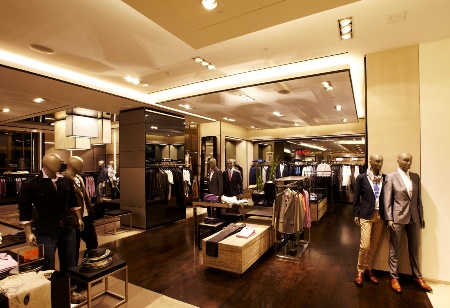
" Hugo Boss at Saks Fifth Avenue New York "
Image Source: The Fashionisto
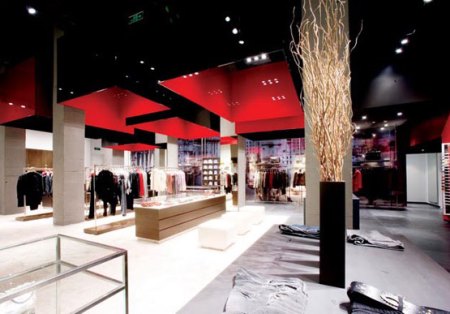
" first shop of Hugo Boss in Shanghai, China "
Image Source: Zhulong
Store Design Elements to be Adapted
Here are a couple of store design elements that should be adapted:
- The Store format itself (boutique versus flagship or concept store)
- Color combination and accents, usually brighter colors with addition of some shiny accents (gold, silver, chrome) are used for China
- Material mix and textures: less emphasis on soft furnishings (e.g. less carpet to facilitate easy cleaning and high customer traffic)
- Addition of "Bling" factor: more focus on shiny elements, metal (gold, silver, chrome), mirrors
- The store fa?ade needs to stand out
- Digital elements (screens, apps, O2O features) are even more important in China
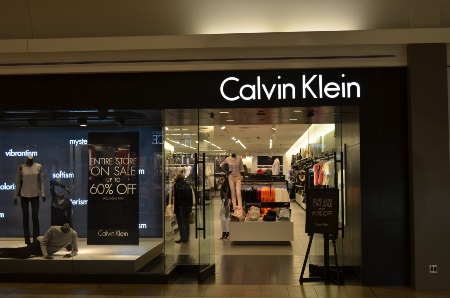
" Calvin Klein in Toronto "
Image Source: Wikiwand
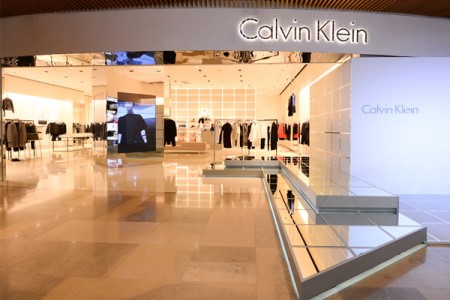
" Calvin Klein in Shanghai, China "
Image Source: souhu
Fengshui
Not to forget, Fengshui is a Chinese concept that needs to be considered as well: the colors white, silver, and gold represent the element metal and therefore money. Soft furnishings and rich textures slow down the "Qi", the flow of energy, and even stall the positive energy if it is overdone. Smooth surfaces, on the other hand, speed up the flow of energy. The key to success and a comfortable atmosphere in store environments in China is an appropriate balance of all elements.
Store Design as a Competitive Advantage
There is, however another important aspect concerning store design:
Shopping malls and department stores in China are bombarded by brands that want to enter the market. Sales targets and store rents are high. Since the competition among brands is fierce and sales pressure is high, malls and department stores are looking for unique, fresh, and exciting concepts that are a safe choice for the few open store spots they currently have. A unique store design concept is also easier to market with the Chinese media.
Finally, most store locations are not street facing stores but within new shopping malls and department stores. This creates opportunities for retail brands to create impressive flagship or concept stores in new malls that are still under construction, especially when compared to typical locations in European cities that are often in traditional, sometimes listed, buildings.
In short, for international brands to realize the full potential of the Chinese market they need to understand and cater to its unique customer preferences and in particular store environments.
> back to top of page

Opening Party at Nordica Lounge
January 18, 2016
Nordica opened their first concept restaurant in Chongli, a city in the North Western province of Hebei which will host part of the 2022 Winter Olympic Games, on December 12th 2015. 5 Star Plus Retail Design, as the design team for this store, were invited to join Nordica for their opening night. Nordica began with a cocktails and snacks happy hour from 5pm to 7 pm, followed by an exclusive dinner from 7 pm to 9 pm.
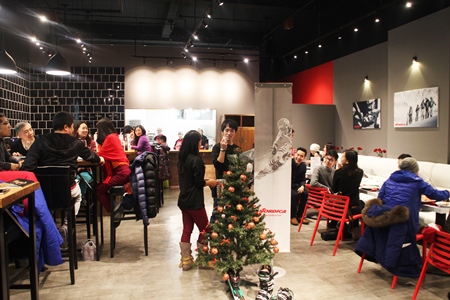
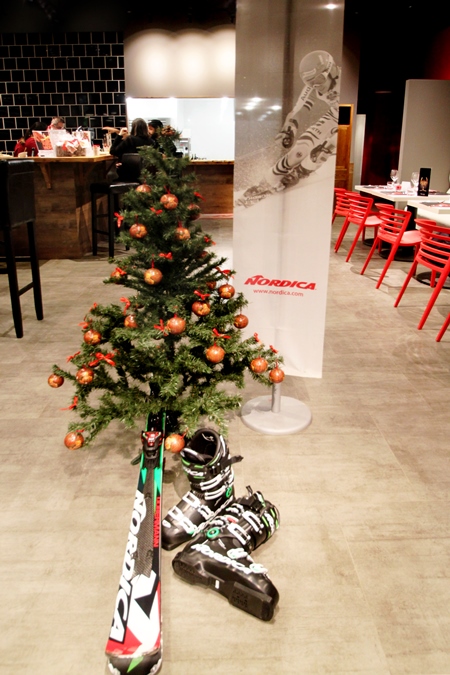
The chefs of Nordica lounge are from Italy and as such are able to provide some of authentic Italian cuisine. Guests enjoyed their fantastic dishes such as creamy mushroom spaghetti, pizza, fresh basil Rotini and decadent tiramisu. All dishes were generously portioned and well balanced in flavor.
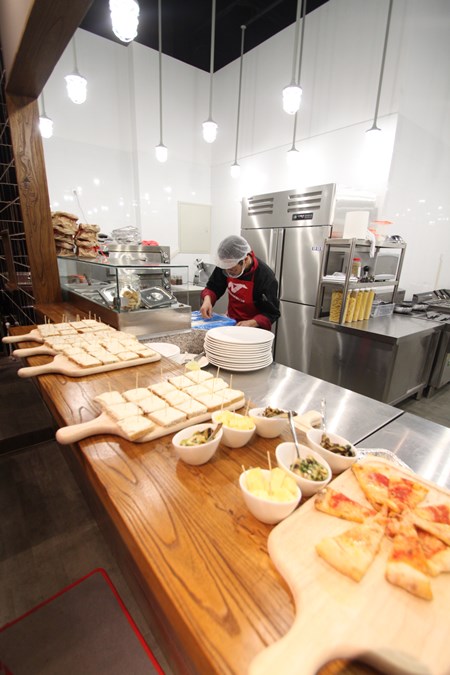
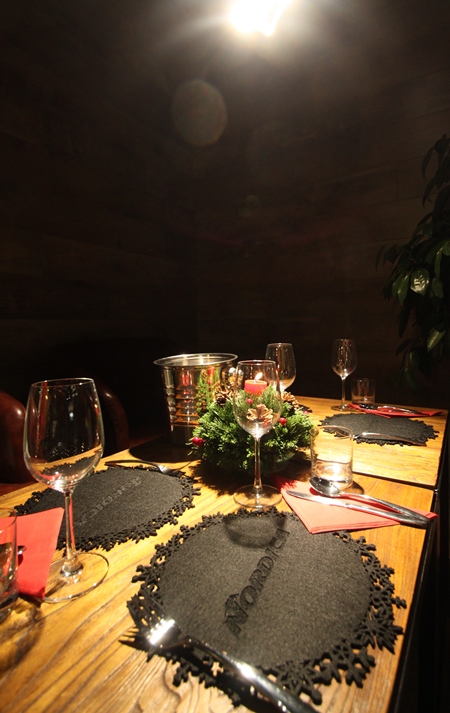
This idea for this concept store began in spring 2015. Nordica, traditionally an Italian ski equipment brand, wanted to expand their current business model into the fine dining sector by opening 'Nordica lounge'. The restaurant provides a well authentic and delicious Italian food to Skiers. We used a red, grey, and black color theme for the restaurant design to help express Nordica's brand values of integrity, loyalty, courage and optimism. According to Nordica's Managing Director in China, Remigio Brunelli, 'The Nordica Lounge is the place that connects ski fans and outdoor lovers with what matters most: family, fellowship and the mountain.' At the same time, we also thought about the passion, quality, service, and comfort for the restaurant.
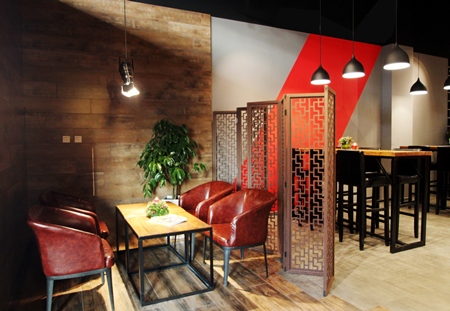
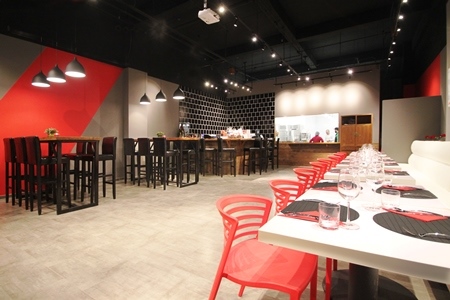
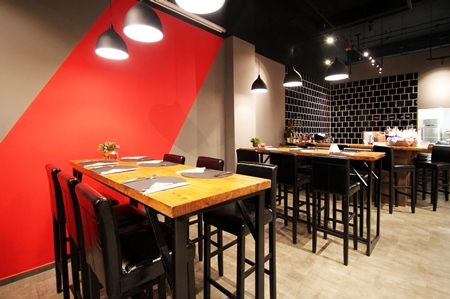
We paid most attention to two key elements of the design concept: the Nordica bar and the large window into the kitchen. Nordica invites diners to watch their food and beverages being prepared, with world class skill and expertise. In this way, Nordica can highlight the high quality of their menu items to their customers.
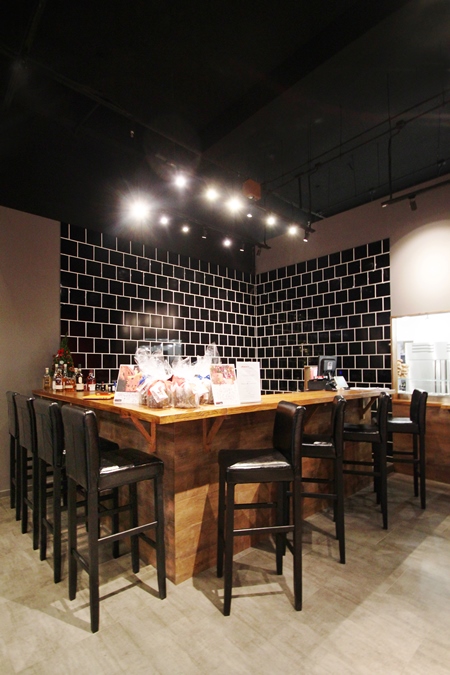
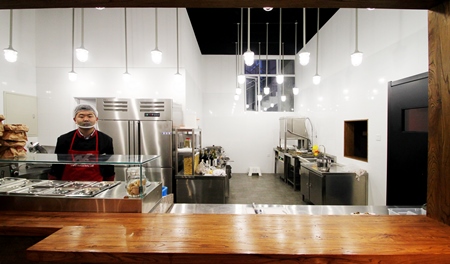
'Nordica Lounge', with the help of the team at 5 Star Plus Retail Design, were able to combine a unique dining experience with deliciously traditional Italian cuisine.
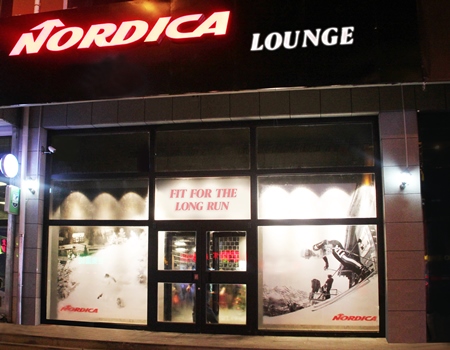
> back to top of page


How is M-Commerce transforming the luxury retail market in China?
December 21, 2015
After China became the world's leading online retail market in 2013, M-Commerce or mobile commerce is now spearheading this trend as the demand for mobile devices continues to grow exponentially. This has presented opportunities for luxury brands that have openly embraced the trend while at the same time created obstacles for those brands reluctant to adapt to this growing trend. So let's take a closer look at how M-Commerce is transforming the luxury retail market in China:
How do Chinese luxury consumers shop?
The proportion of online sales made from mobile devices compared to PCs has been on the rise. The graph below with statistics sourced from iResearch Global highlights this increase since the first quarter of 2014:
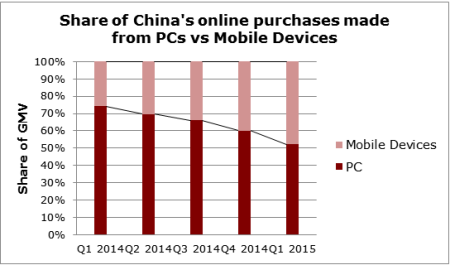
The use of mobile devices to make online purchases increased 21.9% from Q1 2014 to Q1 of 2015. This is ultimately down to two factors: the first being the growing demand for mobile devices, and secondly the growing dominance of companies such as Alibaba who own a staggering 86.2% of the market share according to research acquired by iResearch.
How have luxury retail brands in China reacted?
With the increasing importance of m-commerce, most international luxury retail brands have responded by adapting their current practices to welcome the trend. Fendi for example, a high-end fashion retailer, have made their website mobile responsive, this provides their customers with the ability to view their website and make purchases easily from any mobile device.
Some brands like Chanel for example, have even created their own mobile app, which not only house the latest fashion pieces, but also doubles as a news bulletin where regular updates on the fashion industry can be shared with their trend hungry consumers.
Other luxury brands have turned to forming partnerships with leading e-commerce companies, utilizing their already established customer base. Burberry is just one example of a luxury brand that have partnered with Tmall to reach their online savvy consumer pool.
Understandably however, there are other luxury retail brands that refuse or find it difficult to fully embrace the trend. This is usually a result of their reluctance to associate themselves with brands that cater for the mass market, fearing it will devalue their brand image. Others perhaps feel their brands will not translate well online or wish to preserve the physical shopping experience
> back to top of page

Top 5 Luxury Consumer Trends in China of 2015
December 09, 2015
The luxury retail market in china is continually changing. Market conditions fluctuate and the preferences of luxury consumers are continually evolving. Therefore brands in china must evolve with their target consumers if they want to sustain their competitive advantage. Here are 5 Star Plus Retail Design's top 5 luxury consumer trends of 2015:

1. Anti-corruption Movement by Government Continues to Discourage Luxury Gift Giving
Xi's campaign to eliminate corruption has forced government officials to cut back on elaborate spending and gift giving. This has already had a significant impact on the luxury retail market in China as the demand for luxury goods as gifts, has fallen. Now, as more and more consumers purchase luxury goods for themselves, they have become more inquisitive and demanding.
2. The Intelligent Shopper
The novelty of having any-old international designer bag on your arm simply as a statement of wealth has begun to decline. Today's Chinese consumer is far more concerned with the quality and origin of material, workmanship, the quality of service at purchase and the corporate values of the brand. Armed with the knowledge of what they want, these informed consumers expect equally informed sales staff to confidently assist them or they'll likely take their business elsewhere. However the Chinese luxury consumer market is diverse and some will still happily make a purchase purely as a statement of wealth.
3. E-Commerce & M-commerce on the Rise:
As a significant proportion of today's Chinese luxury consumers are younger and more tech-savvy, it makes sense that a greater number of consumers are engaging with luxury brands online. However it doesn't stop there, M-Commerce accounts for a significant proportion of E-Commerce sales as many consumers today use smartphones and other tablet devices on a daily basis. Emarketer estimates that M-Commerce will account for an astonishing 49.7% of all E-Commerce sales this year and by 2019, this will rise to 71.5%. This is undoubtedly a result of WeChat and Alibaba's dominance in the online market, who are making online purchases very convenient and accessible for Chinese consumers. Brands like Chanel and Fendi have been quite reactive to this trend by making their sites mobile compatible, while some remain hesitant as they worry that the integrity and aesthetics of their brand will not translate onto the online sphere.
To find out more about how Chinese luxury consumers behave online, please read our other articles.
4. Consumers spend on Fulfillment
In 2014, a common trend among Chinese luxury consumers was the personalization of luxury goods allowing one to be expressive and stand out from the crowd. This year, consumer spending has become more sophisticated. Fulfilling personal dreams and gaining invaluable experiences has become more of a priority. This as a result has led to an increase in luxury travel. Goods that hold sentimental value or have a deep meaning such as artwork have also become quite popular. Furthermore, in large cities such as Beijing and Shanghai, luxury hotel chains such as Sofitel and Bulgari luxury Hotels, are being constructed to cater to this growing need. The Giorgio Armani Group is also planning to design luxury residences in Beijing following their recent deal with Chinese real estate company, Smart Hero Group.

5. Demand for Niche Products Grows
This year the demand for niche brands has become increasingly popular. Research conducted by Bain based on 1,400 luxury consumer survey results explained this trend to be a result of increased knowledge from international travel, as well as the exchange of information on social media and its influence on consumers. Niche brands such as Balenciaga and Kate Spade have subsequently seen a growing demand from Chinese consumers this year.
As Chinese luxury consumers account for a significant amount of sales in the global luxury market, understanding and anticipating their current and future needs becomes extremely important. Today's typical consumer is young, knowledgeable, tech-savvy, and desires brand experiences over the latest Prada designer bag. Brands must therefore learn how to adapt their promotions to meet these needs otherwise instead of evolving with their target consumer they will lose sales as demand for their products fall.
> back to top of page

Selecting the Right Chinese Company Name as Brand Strategy
November 30, 2015
Translating the brand name into Chinese is often a task that is underestimated by companies. Since the Chinese language uses characters with multiple meanings and often even multiple sounds (pronunciations), the translation, or better transliteration, is a somewhat complex process that needs appropriate planning.
Correct translation considers both the sound and / or the meaning of Chinese characters. Based on different combinations there are four ways to translate a foreign name into Chinese:
1. New name (different meaning, different sound), no relationship with the original name.
Examples: Pizza Hut 必胜客 Bi Sheng Ke (Guarantee wins guests)
"
2. Similar sound, no or different meaning of the characters
Examples: Louis Vuitton路易威登 Lu Yi Wei Deng (meaning of individual characters: Street, easy, power, to board)
3. Same or similar meaning, but different sound
Examples: Apple 苹果 Ping Guo
4. Similar sound and similar meaning, or a meaning that is associated with the brand
Examples: Hermès 爱马仕 Ai Ma Shi (Meaning: love the horse rider)
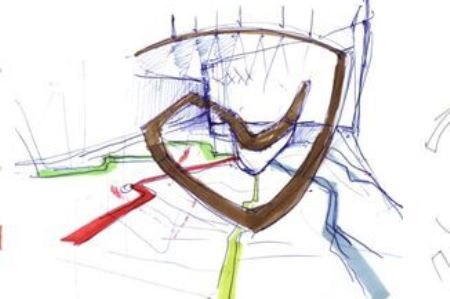
For a powerful marketing and communication campaign, a name translation that has a similar sound to promote the global aspect of the brand as well as a relevant meaning is important. The more a brand name is able to communicate by itself, the stronger its impact and more effective the marketing campaign is going to be.
Here are a couple of things that a brand name can communicate:
- Foreign origin
- Industry or type of products
- Brand values
The brand name should also be easy to pronounce and to remember. Brands need a consistent and coherent brand image across all channels, therefore it is only logical that the name represents the brand's personality which is then extended to marketing campaigns, communication elements as well as design aspects such as the visual identity or store design concept.
Should you need advice on choosing the right Chinese name, do not hesitate to contact us at office@5starplusdesign.com.
> back to top of page

Nordica Lounge Opening Soon! – A Branding and Restaurant Design Showcase
November 30, 2015
Nordica, the Italian ski equipment brand, decided to bring its brand image to a new level by opening "Nordica Lounge" in Chongli, the city in Hebei province which will host part of the Olympic Winter Games in 2022.

Nordica Lounge is a restaurant and lifestyle concept that is located adjacent to a Nordica service shop. Ski and nature aficionados who spend the week end in the mountains will finally have a cozy European indoor space to enjoy Italian-style lunch, dinner, or drinks at any time of the day.
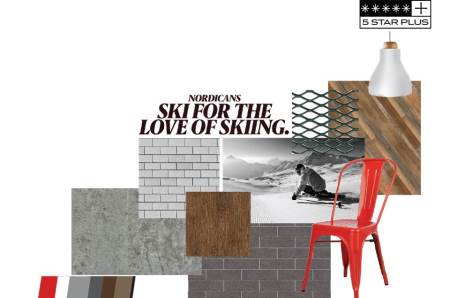
According to the brand, "The NORDICA Lounge is the place that connects ski fans and outdoor lovers with what matters most: family, fellowship and the mountain.
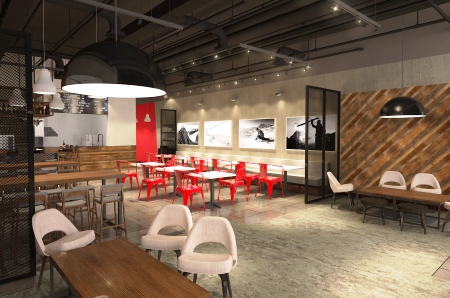
Integrity, loyalty, courage, optimism, these are our brand values that enable us day after day to offer our clients superior quality & services. This is the NORDICA way, and it goes out to the first run, the last run and the long run."
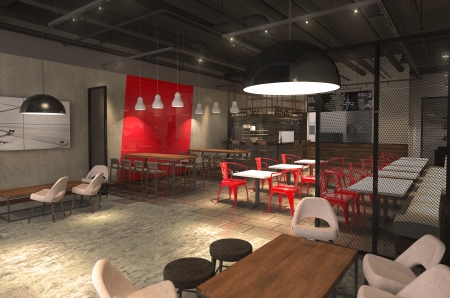
Inspired by the brand's visual identity, the color palette of the restaurant design is limited to red, greys, and black, and features abundant natural textures such as wood and some stone for a warm and cozy atmosphere. Further brand characteristics that needed to be part of the restaurant design are passion, quality, service, and comfort.
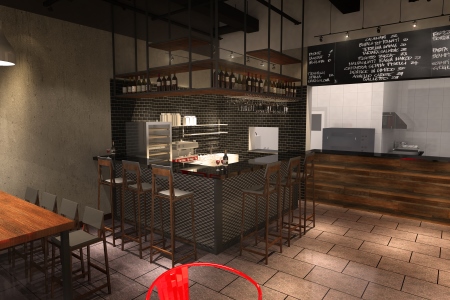
Based on its concept of simplicity and high quality food, two key elements of the design concept are the Nordica bar and the large window into the kitchen that allows customers to observe how the food is prepared. With the lounge, Nordica extends its brand identity to a three-dimensional environment where customers can relax, feel and taste the brand, and therefore goes one step further in establishing itself as a lifestyle brand.

Nordica Lounge will officially open with an opening party on December 12th, 2015. The launch coincides with the start of operations of Thaiwoo, which is China's largest skiing resort and also located in Chongli. The government just commissioned the building of a high speed train route that will bring Beijingers to Chongli in one hour in a few years.
> back to top of page

2 International Luxury Brands engaging with Chinese Consumers on WeChat
November 23, 2015
As it is becoming increasingly imperative for international luxury brands to utilize online platforms such as WeChat and Weibo in order to engage with consumers in China, more and more brands have established an online presence in hopes of attracting and strengthening the bond with their Chinese consumers. So let's explore how 2 international luxury brands, are engaging with Chinese consumers on WeChat:
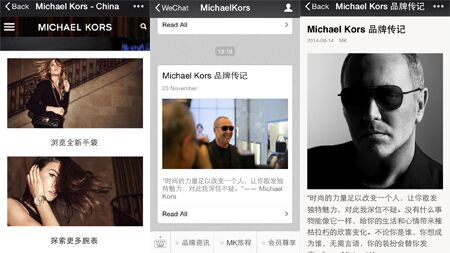
Michael Kors
Michael Kors is an example of a foreign luxury brand making an effort to engage with its customers through sustained online and offline interaction. Last May, for the launch of their flagship store in Shanghai, they allowed attentive followers to truly experience the Jet Set collection launch event through the application. More recently, they utilize WeChat to keep their consumers informed about the latest happenings with the brand through informative articles and photographs.
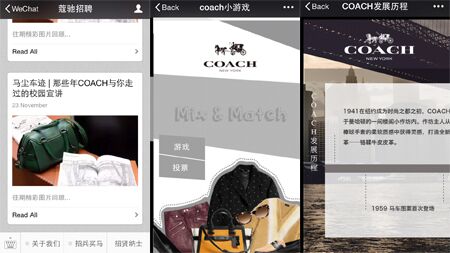
Coach
Coach's approach to WeChat has evolved over the last few months; their initial posts were very product focused, more recently however, they have begun posting articles on lifestyle, possibly in favor of the growing luxury travel and lifestyle trend emerging this year. One of their most recent posts (July 2015) focusing on Summer and lifestyle proved very popular with their followers receiving more than 57,000+ views and over 140 likes. Furthermore, Coach; similarly to Michael Kors have focused their WeChat marketing on providing their consumers with the ultimate VIP experience through inviting them to become members, creating exclusivity and giving consumers a feeling of belonging.
It's clear that in this technological age, brands can enhance the customer's shopping experience through providing a combination of online and offline services. Michael Kors and Coach are just two examples of brands that have openly embraced this trend and are grabbing and maintaining the interest of local consumers. WeChat has been proven to be instrumental to international luxury brands looking to break into the market or even those who are already in the marketplace but needing to increase brand loyalty and customer engagement.
> back to top of page

5 Points to Consider when Creating a Retail Store Design
November 11, 2015
A store is a physical extension of the brand. Located strategically and it will lure customers from afar. Designed properly and it will enhance the physical retail experience of consumers. Below are 5 points that retailers need to take into account when designing any type of store, whether it is a flagship store or a shop-in-shop concept.
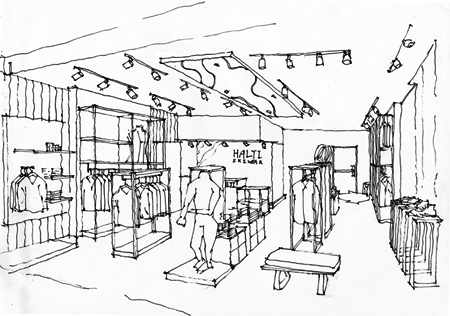
The Brand’s Positioning
It is important for any retail brands, wanting to enter China or simply create a brand new store to fully understand the brand’s identity and the image that it wants to convey to its targeted customers. What is the brand’s positioning, commercial or luxury? We witnessed a lot of brands changing their positioning and price point when entering the Chinese retail market. What was a premium foreign brand would be promoted as “light-luxury” once established in China, adapting the store’s original visual identity together with factor such as pricing.
Concept of the Store’s Design
Select a few strong characters from the brand that would be reflected throughout the store’s design. This will act as a basis for the design concept. It will also guide the designers to create the perfect mood board, compiling images that best coincide the ambiance and the emotions wished to be expressed into the design of the space.
Having a strong retail design concept that is different from competitors and ideally memorable with the brand’s DNA, are what any team of designers strives to accomplish.
Store’s Floor Plan Layout
What products will the store have? Which of the products need to have a bigger visual merchandise area? Would there be any changes in the future regarding the quantity of products sold? Answering to some of these questions before hand ensures the design team, which you are working with, to come up with the ideal floor plan layout. Allocating the products correctly to the size of the shop can increase customer traffic and maximize the sales of each item. Have a look at our article about The Importance of Measuring Retail Design to know more on how to manage your store’s design potential.
Digital Features in Stores
The retail design field is getting smarter, allowing brands to use digital features in the design of stores. We cannot emphasize that brands wanting to survive long term need to consider technology as a creative way to communicate to customers. Incorporating digital elements needs to bring something fresh and exciting to the store. Giving the purchasing in-store experience a whole new dimension than online shopping. However, when it comes to consumer experience and shopping expectations, online and offline should both go hand in hand - seamlessly communicating the same brand message across all channels.
Budget
It may be the last point but it is by far one of the most important points. Have a rough overview of the design and construction cost as well as time required for the project’s completion, however be prepared for any future changes.
Overall the process of designing the perfect retail store can be overwhelming. Work with a team that understands all aspects of the brand, from positioning to marketing strategies. And consider all the above points to create an exceptional physical extension of the brand. Never underestimate the power of retail design!
> back to top of page

Salzburg Urstein Institut – A Premium European Education Institution at Exhibitions in China
October 30, 2015
The Salzburg Urstein Institut had its first appearance in China at the China Education Expo (CEE) and the QS Beijing and Shanghai from October 24th to November 7th 2015.
The education institution offers four types of master programs in the fields of Management & Entrepreneurship, Intercultural Communication, Media Science, Sustainability and European Culture,
as well as Academic Modules and Learning by Travelling modules for short-stay, highly efficient learning. The courses take place in Salzburg and Berlin and are accompanied by an extensive Cultural Practice Program for first-hand experience of Europe.
We at 5 Star Plus Retail Design are delighted to support the Salzburg Urstein Institut with marketing activities and design services in China, including the exhibition stand design for the various expositions in China.
Listed as the only participating Austrian institution at the CEE, the Salzburg Urstein Institut welcomed several high ranking visitors - including the EU Ambassador to China Dietmar Schweissgut and Helmut Spitzl, Acting Director and Attaché for Science and Technology at the Science and Technology Section of the Austrian Embassy Beijing - at their stand.
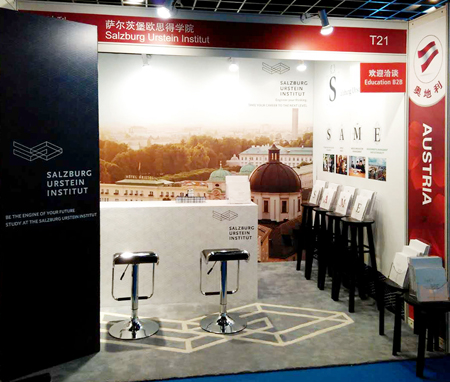
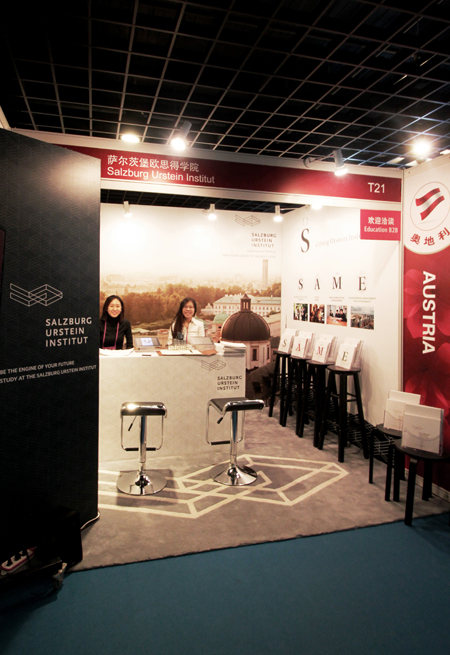
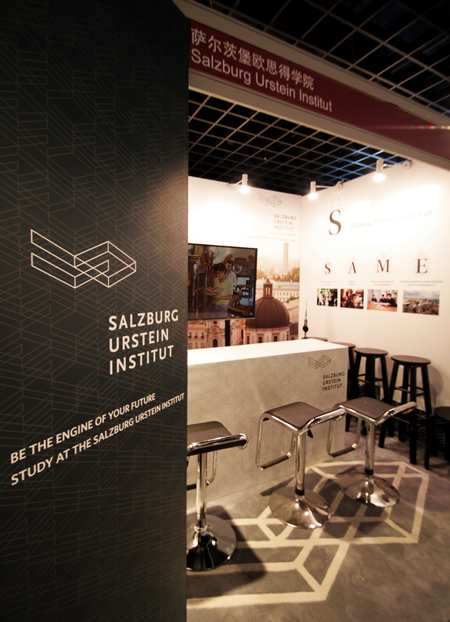
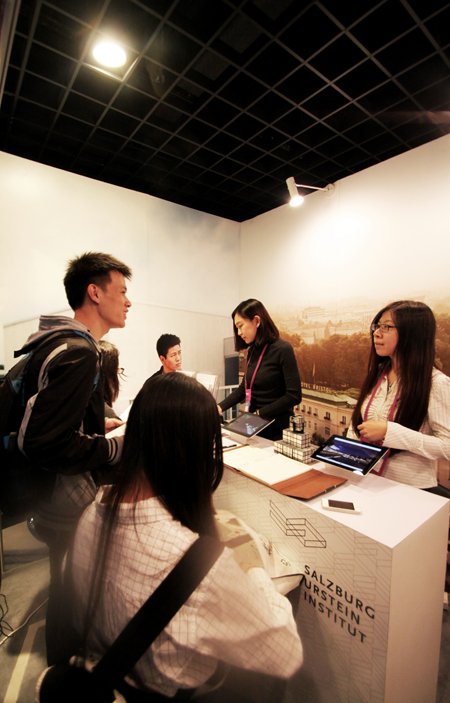
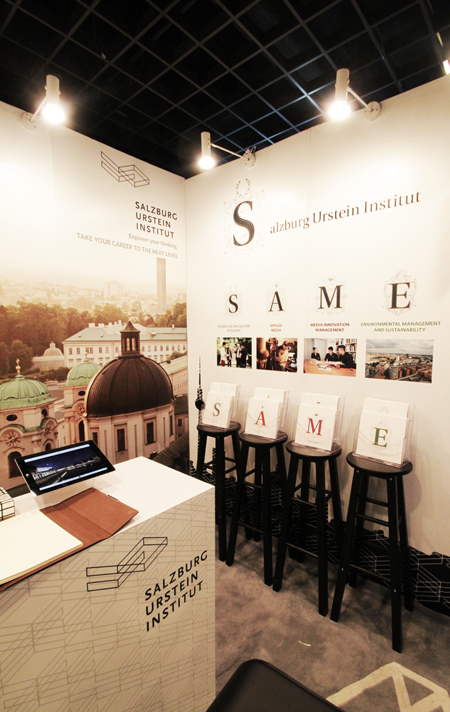
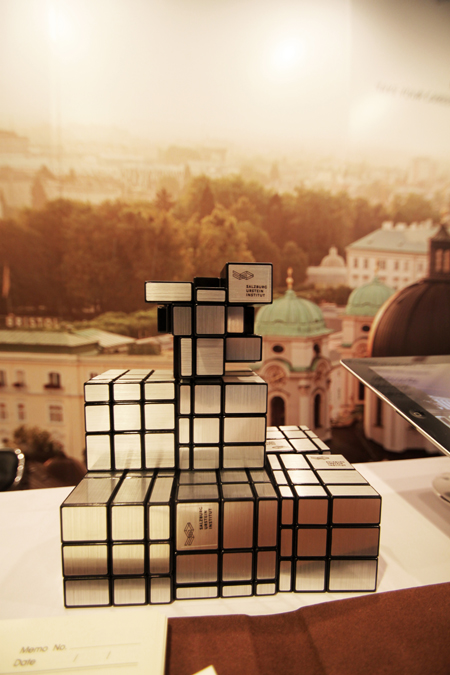 > back to top of page
> back to top of page

How to Attract Younger Sophisticated Luxury Consumers in China?
October 26, 2015
Chinese consumers are becoming increasingly likely to switch between luxury brands. Therefore, brands have to offer more than just a product to outcompete each other. Especially to attract the younger more digital Chinese shopper; aged 25 to 35, seeking foreign brands and developing a sense of appreciation for the brand’s heritage. So how can luxury brands attract these consumers in China?
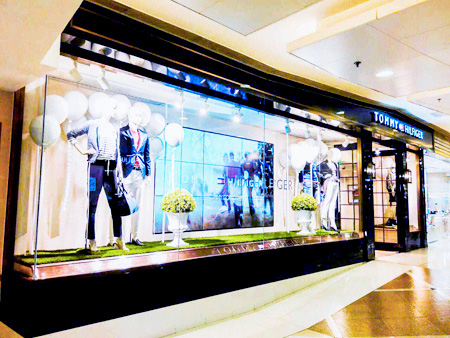
Omni-Channel touch points
Omni-Channel touch points means inspiring and attracting brands across all retail touch points, from print magazines, social media channels, brand websites and mobile applications, to the design of retail stores. Effective marketing needs to be put in place where consumers are searching about the brands, to make sure touch points are not over looked. Retail brands in China can now no longer rely on simply selling goods in stores. They must use diverse marketing strategies, to attract consumers through online-to-offline retail; attracting younger more sophisticated Chinese shoppers who will be heavily influenced by online marketing strategies, such as social media accounts. By targeting social media websites with promotions and discounts on luxury goods, as well as advertisements, brands can try to push consumers to buy online as well as offline. In order to effectively engage with this segment of Chinese customers both in store and online, brands must make sure their image is consistent through all retail touch points.
Distinctive retail design concept
The design of retail stores is also being transformed now, so as to attract younger Chinese shoppers by creating a ‘branded experience’ with the use of technology. Digital technology is now being implemented in the design, including information terminals, interactive touchscreen and display functions. Another trend that is becoming more popular is placing LCD screens on the fa?ade of retail stores, in order to entice customers in from afar.
Furthermore, luxury brands are also coming up with interesting retail design concepts to attract new customers, by setting up restaurants, café’s, hotels and pop up stores. These new innovative ideas promote the brand, especially to the younger Chinese shoppers who are looking for the entire brand experience, not just a product.
VIP experiences
In order to attract younger more sophisticated Chinese shoppers, brands need to offer VIP experiences, which make the customer feel special for choosing their brand over competitor brands. Additionally, these experiences will create brand loyalty from consumers, as an emotional connection will be formed with the brand. Luxury brands have now realized that younger customers want more than just the product and that an experience will provide more pleasure and satisfaction. Making sure a shopper has a VIP shopping experience with dedicated sales people and a private room is an effective strategy, as it establishes a customer relationship, possibly leading to the customer buying on impulse. For example, Louis Vuitton creates a VIP experience by closing selected stores for half a day and arranging private showings for customers who spend more than 200 000 Yuan.
It is clear that luxury brands now have to diversify their marketing strategies in China to attract younger more sophisticated shoppers. Online to offline retail is now equally important, as younger Chinese shoppers use online devices more than ever before. If luxury retail brands really wish to improve customer relationships, however, they need to make sure they focus on the experiences they can offer the consumer, rather than just the number of media channels they have.
Further information about online-to-offline retailing can be found on our website.
> back to top of page

3 Department Stores in China for Foreign Luxury Brands to Set Up
September 28, 2015
International luxury brands looking to break into the seemingly saturated Chinese luxury market, particularly in large cities like Beijing and Shanghai, may want to dip their toes in the ocean before diving in to avoid costly mistakes. By collaborating with local department stores, luxury retail brands can ascertain whether or not there is demand for their brand through shop-in-shop concepts. So here are 5 Star Plus Retail Design top 3 department stores in China for foreign luxury brands to set up in:
Lane Crawford
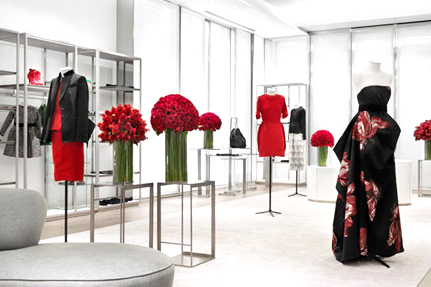
Lane Crawford Yintai Centre Beijing
Established in Hong Kong in 1850 by Ninian Crawford and Thomas Ash Lane, today’s Lane Crawford has become a market leading luxury specialty store reaching out to customers in their Hong Kong, Beijing, Shanghai and Chengdu locations.
Lane Crawford boasts as having one of the largest handpicked luxury good portfolios, offering its customers a wide selection of the latest fashion, accessories, beauty, lifestyle and home goods. Meanwhile, the stunning interior and digital features sets the mood to provide customers with a unique shopping experience surrounded by thoughtful artwork.
International luxury brands wanting to trail their products must showcase their most creative and inspiring pieces to align with the corporate values and aesthetics of Lane Crawford.
Galeries Lafayette
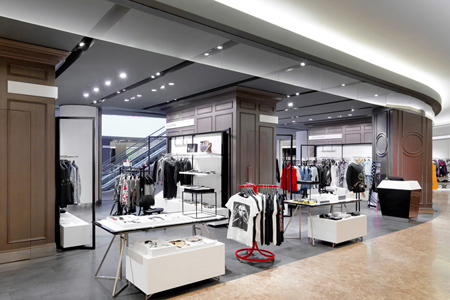
Galeries Lafayette Beijing
The comparatively newer department store, founded in 1912 in Paris, opened its doors to Beijing, China in 2013. The store in Beijing operates as a 50-50 joint venture between Galeries Lafayette and I.T Ltd.
Known for providing a playful, innovative and trendy environment, through tasteful animation and shop design, Galeries Lafayette are focused on providing the most unique shopping experience. International luxury brands wanting to trial their goods here, will need to display their latest and greatest trends, matching the fun and innovation this department store is famous for.
10 Corso Como
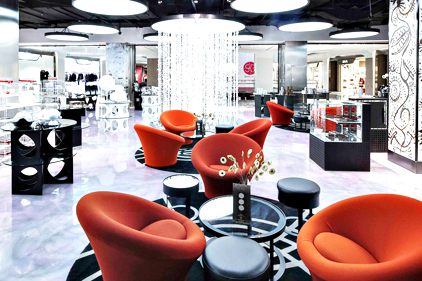
10 Corso Como Beijing
10 Corso Como is a well-known shopping and dining complex originally founded in Italy in 1991 by Carla Sozzani and Kris Ruhsspend.
After entering various luxury markets around the world including both Beijing and Shanghai, 10 Corso Como echoes it’s ‘slow shopping’ philosophy where it believes shoppers should slow down to enjoy the experience of shopping. Surrounded by inspired art, design and fashion pieces, 10 Corso Como takes shopping to a whole new level leaning to the fulfillment trend emerging this year. Brands wishing to collaborate with this department store must think beyond the product itself and offer unique experiences for shoppers.
To conclude, Lane Crawford, Galeries Lafayette and 10 Corso Como all host luxury brands but in slightly different ways. Therefore, brands must ensure their brand values correlate with the values held by that particular department store for their shop-in-shop design concept.
> back to top of page

The Use of Celebrity Ambassadors to Market Luxury Retail Brands in China
September 22, 2015
Celebrity Ambassadors in China have become an established marketing strategy for companies in the luxury retail industry to market their goods and to target specific consumers. Celebrities are often effective when marketing a product as they are easily recognizable and therefore bring more attention to a brand. The celebrity therefore can give credibility to a product, making it more popular among consumers. Brands whose sales have slumped often look for a celebrity to boost consumer sales.
Benefits of such strategies
1. Increase sales: When marketing a retail brand or luxury goods products in China, choosing a particular celebrity who matches the brands image and values is important to increase sales, as the consumer will be influenced by that particular celebrity to buy the product. If a celebrity ambassador has a large fan base then the brand can use this to reach a greater number of Chinese consumers, who are more likely to pay attention to a celebrity, rather than the brand itself and therefore boost sales.
2. Create Emotional Connections: Well-known celebrities are chosen by luxury retail brands to promote their brands image as they create an emotional connection between themselves and the consumer. This connection is created by the celebrity’s large following who see the brands products as good enough for them if the celebrity feels they are worth having. Therefore those consumers will hopefully engage with the brand and hence remain loyal.
3. Improves Credibility: A celebrity ambassador can also increase credibility for a luxury retail brand in the Chinese market. The idea of a celebrity ambassador is to make the brand trustworthy and convince the consumers that they should associate themselves with that particular retail brand. Therefore, this should make the luxury goods that the celebrity ambassador is promoting, more desirable.
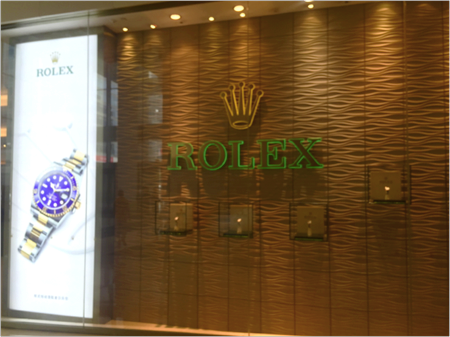
Case Study – Rolex
Celebrity ambassadors in China are a central part of the Swiss watch company, Rolex, communication strategy and one they have used since the beginning of the brand. Rolex tends to choose successful individuals who are at the top of their respective fields, including a range of sportsmen, women and musicians. Rolex ambassadors have included the dancer Yuanyuan Tan, cellist Yoyo Ma, tennis players Roger Federer and Ana Ivanovic. Tennis has recently been gaining more popularity among wealthy Chinese, as it is a sport, which matches both their lifestyle and income. As a result, Rolex in 2011 chose Li Na, the most successful female Chinese tennis player, to represent their brand and to appeal to this type of consumer, who are looking to buy luxury retail items. The ‘Rolex’ brand has also been particularly successful at spotting young talent early on in their careers and then staying with them until they achieve great success. A strategy that is now used by other Swiss watch brands, such as Tag Heur and Omega. Rolex as a brand in China has now come to represent success, elegance and is easily recognized as a high-class watch for individuals who have achieved something in their lives, which is represented in their choice of celebrity ambassadors. This is clearly illustrated in their advertisements, in which they celebrate the ambassador’s achievements such as in the case of Roger Federer’s magazine ad, the phrase ‘Rolex. A Crown for Every Achievement’ is used.
Rolex’s desire to establish itself as a high-class brand in China has led to the creation of ‘The Rolex Experience,’ in its Shanghai retail store, at the House of Roosevelt. The retail design of the store has been cleverly put together to create an interactive experience for customers to become immersed in the Rolex brand and its accomplishments. This includes ‘The Heart of Rolex’ which celebrates Rolex’s partnerships and ambassadors, engaging customers by incorporating high-end technology in the store's retail design. Rolex also hosts celebrities from culture and entertainment in ‘The Pulse of Rolex’ to promote the brand.
As you can see, celebrity ambassadors can play an important role in a luxury retail brands marketing strategy, to widen their consumer market, or to target a specific type of consumer. However, it is important to make sure that the celebrity matches the brand’s image and values, for a celebrity ambassador to be a successful marketing strategy for luxury retail brands. This is a strategy which Rolex has been successfully carrying out to promote and excel its brand over the years.
> back to top of page


How is the Yuan Devaluation Affecting the Luxury Market in China?
September 11, 2015
China has enjoyed steady growth for several years and despite the fact that this growth had been sluggish as of late, news that China had devalued the Yuan by almost 2% on August the 11th, sent shockwaves through the global markets with the luxury retail market in China being one which was shaken by the news.
1. A loss of purchasing power for Chinese luxury shoppers
Traditionally, travelling Chinese shoppers looking to purchase international luxury goods would flock to Europe or Japan as the comparatively weak Euro and Yen generated a significant price gap enabling them to get goods cheaper abroad. Now, with a slightly weakened Yuan, this price gap has been narrowed making purchasing locally more attractive, as closer pricing means the benefit of buying goods abroad decreases. However, as the overall purchasing power of Chinese shoppers has dropped, in order to sustain demand from particularly price sensitive shoppers, some international luxury brands may instinctively react by further lowering the prices of their goods in China. However, if this were to occur, demand for their products may not increase as lowered prices could change the Chinese consumer's perceptions of the brand, as price is generally associated with perceived value and exclusivity.
2. Luxury brands may have to put counter-measures in place
Since entering into the Chinese market, luxury brands were rewarded with healthy sales as China’s fast economic development saw average wages increase and the trend to purchase luxury goods (for one’s self or as a gift to others) increase alongside it. More and more Chinese people saw purchasing luxury goods as a sign of status and so international luxury brands, which had entered the market, became increasingly popular in line with demand.
Soon enough, some brands became heavily reliant on China to account for a significant proportion of their sales. For example, Swatch – a high end Swiss watchmaker, according to figures derived from Deutsche Bank, report an average of around 20% of their total revenue to come from Mainland China, similarly, 14% of Gucci’s revenue is made up from sales acquired in China.
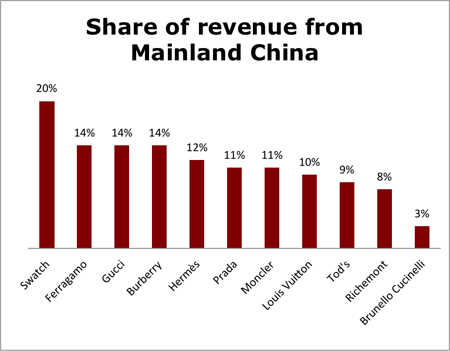
Image adapted from ATLAS by Deutsche Bank
Although the devaluation did not cause a significant loss in sales, if China were to devalue the Yuan further, and the brands did not have measures in place to counter this, they could see their sales take a hit as the overall purchasing power of Chinese luxury shoppers decreases.
3. Share prices fell as investors worry
Following the announcement that China had suddenly dropped the value of its currency, the marketplace was shaken and worried shareholders anticipated a change in customer behavior affecting the bottom line of some luxury retail brands. As a result, shares of some of the leading luxury brands such as Swatch and LVMH, both saw their shares fall by more than 3%.
4. Looking ahead
By devaluing the Chinese Yuan, yes it reduced the purchasing power of Chinese shoppers by making buying international luxury goods slightly more expensive however this should increase the quantity of exports, drawing more business in for a lot of Chinese firms. What is important to note is that Chinese luxury shoppers have evolved. Whilst some are still price sensitive, the majority sees quality of prime concern and price as secondary, and so the devaluation of the Yuan is unlikely to have much effect on most luxury good shoppers and in turn international luxury brands located in China. Alongside this, the government’s recent bid to abolish corruption in politics has had an effect on extravagant gift-giving and so sales have also been negatively affected by this. But China’s economy is still expected to grow and luxury sales should also flourish with it. If international luxury brands want to remain desirable to the Chinese shopper, they could increase or improve their online presence through social media channels and e-commerce platforms, or perhaps alternatively revive interest from shoppers through rejuvenating the overall aesthetics of their retail store design.
> back to top of page

Marketing Concept Recommendations for Brands Entering China
August 26, 2015
The Marketing Concept is the philosophy that companies should attempt to outdo their competition, by making decisions to satisfy the needs of their consumers. This means that brands new to China need to make sure they market effectively, ideally in a cost effective way. So, how can luxury brands market to Chinese brands in a budget friendly way?
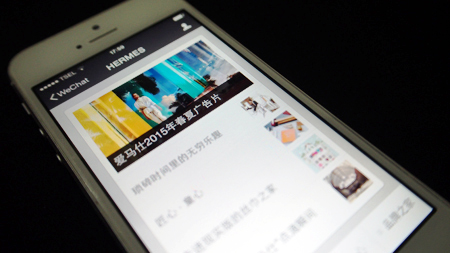
Social media marketing for brands new to China
Marketing through offline / print media marketing is very expensive. Therefore brands wanting to enter the Chinese market in a cost effective way need to create a Chinese landing page, which includes the implementation of social media channels.
Social media marketing is the most important tool for brands that are new to China and are trying to get the attention of the Chinese consumer. There are about 640 million social media users in China, on sites such as WeChat, Weibo and LinkedIn. The huge popularity of social media offers low-cost and effective marketing for brands. As a result of using social media channels to market a brand, better knowledge of the Chinese consumer can be gained, in order for the brand to outdo its competitors.
Benefits of Social Media Marketing
Increase Brand Recognition: Social media will increase awareness of a brand and is very important for a new brand in the Chinese market. The increased visibility online will make it more familiar to Chinese consumers and increase potential customers.
Richer Customer Experience: A social media account for a brand would also be an important communication channel, allowing it to interact directly with potential and current Chinese consumers. As well as provide information about the brand to the Chinese consumer.
Improve Customer Insight:
Information about potential and current Chinese consumers can also be obtained from social media, which is important for a new brand in China trying to gain insight on what products consumers want. Furthermore, it can also allow them to monitor and update their marketing strategy.
Important types of social media
For a luxury brand entering the Chinese market, having online accounts on the three main Chinese social media channels; WeChat, Weibo and LinkedIn is important to target the more educated consumers, who will appreciate the brands heritage and values.

WeChat: WeChat is currently the most popular social media platform in China with 549 million users. Official accounts can be created in order to market a brand, where messages can be broadcast to interact with a wide range of consumers. This is an effective marketing strategy for brands new to China, as it is good for customer relationship management.
Weibo: Weibo in China is equivalent to twitter and is very popular, with around 600 million active users. This form of social media is useful for any brand new to China as you can engage with consumers by responding to direct messages and publishing information for all your followers to see. As well as finding out what the consumer really wants from a product, to get ahead of the competition.
LinkedIn: Although LinkedIn only has 8 million followers; it is still an effective social media platform for brands new to China, as users are normally high-end well-educated professionals. Therefore, this would be a good form of social media, for a luxury goods brand, to increase awareness among their target market.
5 Star Plus Retail Design has recognized the importance of social media and therefore continues to partner with foreign brands, using our valuable experience to help them to enter the Chinese market.
> back to top of page

Luxury Brands Innovative Retail Concepts in China
August 19, 2015
To keep up with the rapidly growing Chinese economy and the changing preferences of the Chinese consumers buying luxury goods, luxury brands are coming up with innovative ways to increase sales in China. This includes setting up restaurants and café’s in luxury stores so customers can have the full brand experience. Below are three brands which are coming up with out of the box design concepts, in order to cater to the Chinese consumer.
Gucci
Gucci has recently opened its first restaurant in Shanghai, 1921 Gucci, named after the year the brand was founded. It is located on the fourth floor of the popular IAPM luxury shopping mall and can only be accessed by an elevator from the Gucci Store. Gucci has joined other luxury brands in the decision to open a food and beverage establishment at select locations around the world. Gucci previously opened two coffee houses, one in Florence and the other in Tokyo. Many brands, including Gucci are trying to create new ways to promote their brand in the ever-changing Chinese luxury goods market. The new restaurant in Shanghai chooses to serve Tuscan-inspired food to represent the brands heritage in Italy. The restaurant was designed to represent the Gucci experience. This glimpse of the Gucci ‘lifestyle’ will increase interaction with consumers and hopefully attract new customers to the brand, increasing the sales of fashion products.
The retail design of the restaurant was intended to reflect the brand’s iconic style, with elegant interiors, including dark wood, velvet seats and gold accents on the tabletops. The brands logo can also be found on the napkins, silverware and cutlery.
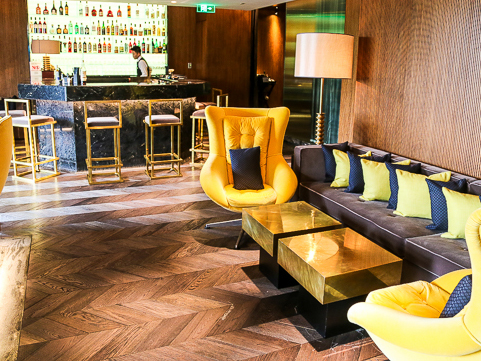
" 1921 Gucci Shanghai " Image Source: That's Mags
Vivienne Westwood
Vivienne Westwood is another brand that has chosen to increase its revenue in the Chinese market, as well as consumer interaction by opening a food and drink establishment. The Vivienne Westwood café is located in Shanghai in the K11 Art Mall.
The retail design of the café, inside the shop, is divided in to two areas – an 18th century tearoom and a shooting studio concept. The Wallace Collection, from a stately home London museum, inspires the 18th century French paintings depicted on the wallpaper in the team room. The vintage chandelier and furniture also add to the feel of an old century tearoom. The studio concept room has a suspended white backdrop, with Vivienne Westwood’s logo on it, designed to create the modern ‘studio’ feel. The two areas are separated by a glass partition, which features a 13-hour “World’s End” clock, with hands that move anticlockwise. This is a reminder of Vivienne Westwood’s World’s End London store, which has a 13-hour clock hung outside. Vivienne Westwood’s signature tartan design is also featured on all the tea sets and tins.
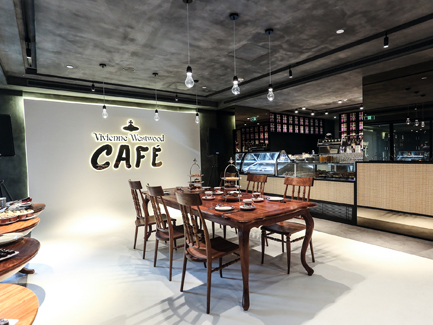
" Vivienne Westwood Café Shanghai" Image Source: Cosmopolitan Hong Kong
Bulgari
Bulgari has gone one step further to increase its brand by setting up hotels in different locations around the world. Bulgari already has hotels in Milan, Bali and London. New Bulgari hotels are scheduled to be built in both Shanghai and Beijing by 2017. The Shanghai hotel is to be in the uppermost 12 floors of a 40-story building located in the historic Zhabei district. The Beijing hotel will be located in the exclusive embassy district, near the trendy fashion quarter of Sanlitun. However, the retail design of the new hotels in China will differ slightly from the European outposts, instead reflecting local style with traditional oriental themes combined with design patterns from western architecture.
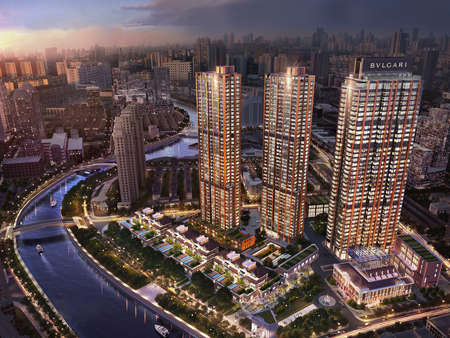
" Bulgari Hotel Shanghai " Image Source: Bulgari Hotels & Resorts
> back to top of page

Chinese Luxury Consumer Online Behavior
August 13, 2015
Chinese consumers are the most connected in the world, they are the most active online and on mobile than consumers in Europe and the US. The online world is an important source of influence in persuading the Chinese to buy luxury goods, as they can discover and make emotional connections with luxury brands, research and purchase luxury goods.
With the rise of digital marketing, luxury brands in China need to understand luxury consumer’s online behavior in order to build a brand experience beyond the traditional brick and mortar retail stores.
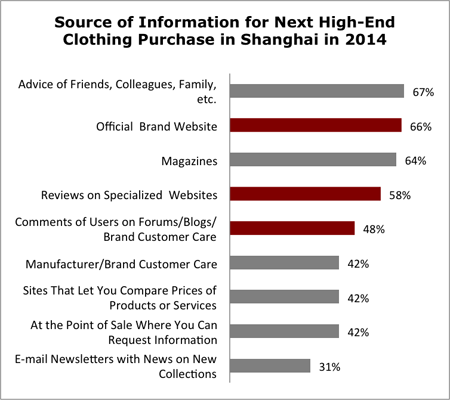
Image adapted from "China Reality Check: Luxury and the Online Boom" Exane BNP Paribas
Luxury Brand Website
With 66% of Chinese Consumers in Shanghai seeking information on luxury brand website before making a purchase, official brand website is therefore a powerful resource for luxury consumers to gain insight about the brand’s heritage and values as well as learn about luxury goods. It is important for brands to have a website that is easy to navigate with educational content about the brand and its products. Furthermore, the quality of translation of luxury Chinese landing websites needs to be impeccable, where all content must be translated into Chinese. Unlike Stella McCartney’s Chinese website for example, in which some content remains in English, making the website appear disorderly and unclear to online shoppers in China. Chanel’s Chinese website is attracting numerous online consumers, as all of its content is in Chinese. Luxury brands wanting to effectively communicate to luxury Chinese consumers need to have a localized voice, making the brand’s website experience relatable and relevant to the Chinese consumers. The top 5 most searched luxury brands by Chinese consumers in 2014 were Chanel, Louis Vuitton, Longines, Coach and Cartier.
Luxury E-Commerce
China’s e-commerce market is forecasted to be larger than the US, UK, Japan, Germany and France combined by 2020.
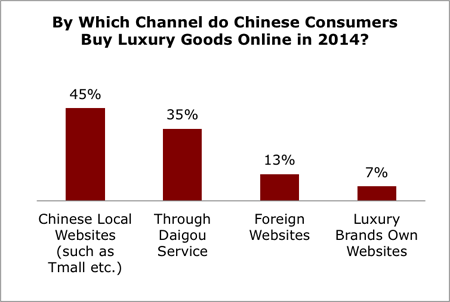
Image adapted from "China Reality Check: Luxury and the Online Boom" Exane BNP Paribas
Online and mobile shopping has reached an all-time high in China, particularly because of the well-established e-commerce, which is providing Chinese consumers another route to shop for goods in China. Luxury e-commerce is also increasing its presence across the board. According to McKinsey Research Company, about 6% of all luxury sales now occur online, and should increase to 18% in 10 years’ time. A study by KPMG in 2014 revealed that 32% shop online because it offers a wider range of products and brands. Convenience and accessibility is a key driver for online purchases. In general, women are more likely to buy luxury items online with a higher total spend. Men spend more on apparel shoes compared to females.
The Chinese online consumers are generally from outside of the mainland. It is found that the majority of China’s affluent middle classes live in smaller cities. Most of these cities do not have brick and mortar stores, and so result to buying online. Launching an official luxury brand e-commerce site or collaborating with marketplace platforms in China can be extremely beneficial for luxury companies as the Chinese market for luxury products tend to be younger and more willing to try new routes to purchase products. Coach, Estée Lauder and L’Occitane are just a few brands that have opened a virtual retail store via Tmall.
Online Payment Trends
The retail industry in China has changed significantly as online payments have been on the rise. This is particularly due to the fact that in the lower tier cities, there is a lack of access to brands. A study by KPMG in 2014 found that 10,200 luxury consumers of all age groups across China have greater confidence in online channels, including higher transactions when paying online. The average amount spent by respondents on their last item was RMB1, 515. And 17 have said that they purchased an item online of at least RMB2, 000. A greater proportion of consumers also now use online payment methods as opposed to cash on delivery. The study also found that consumers are shifting the way they purchase goods from PCs and tablets to smartphones.
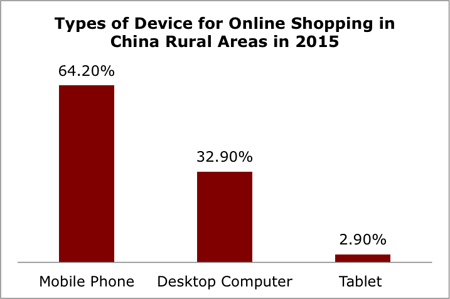
Image adapted from China Internet Watch
Luxury Social Media Channels
Brands are increasingly interacting with Chinese consumers on various social media sites and are therefore extremely important in markets such as China. Luxury brands can increase brand awareness and make connections with consumers through offline-to-online campaign approaches. This is when brands leverage online platforms to promote offline campaigns. With the rise of social networks in China, there is now a huge opportunity for global brands to interact with new consumers in this region. If successful, the rewards can be huge. 59% of Chinese consumers are willing to share product recommendations via Weibo or WeChat, which can help the brand raise awareness across the millions of users on social networks.
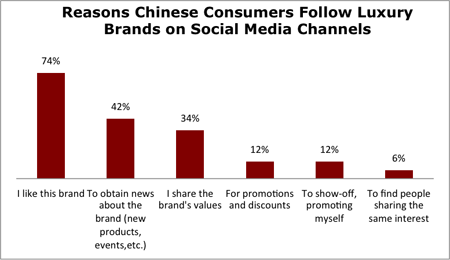
Image adapted from China Internet Watch Albatross 2013 Journey of A Luxury Consumer
Online Customer Reviews
Before purchasing any luxury goods, Chinese luxury consumers tend to read online blogs and web forums, to research products as well as reading reviews and recommendations from other consumers. Luxury consumers in China prefer to hear feedback from other consumers rather than hearing directly from the brands. It is essentially a community in which they can comment and discuss on luxury brands and products. Not only are online customer reviews a powerful source for luxury consumers purchasing decisions, but it is also a great tool for luxury brands to gain insight into how they are perceived online. This enables brands to maintain an appropriate level of positive feedback and comments about them online.
The Chinese online luxury consumer continues to rise. It is important for brands to familiarize themselves with the behavior of Chinese consumers both online and offline so that they can adjust their marketing strategies accordingly. Even though traditional retail store promotes a physical brand experience, luxury e-commerce, websites and social media are all extremely important for brands to be up to speed in the Chinese market.
> back to top of page

Luxury Branding – an Integration of Art and Culture
August 10, 2015
Luxury brands such as Dior and Louis Vuitton integrate their branding with art, design and culture events. But how does this fusion of art and culture strengthen brand positioning in the luxury retail market, and contribute to better brand performance in China?
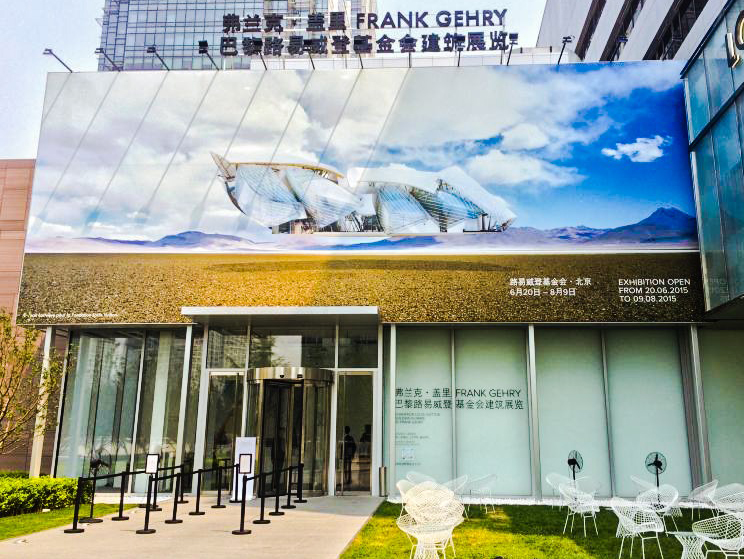
Promoting the brand’s image
As luxury brands host art and culture events, Chinese consumers are able to experience the latest in architecture, interior, exterior and retail design. The consumer has a memorable experience as they see the brand’s image alongside the creative and innovative designs on display at the event, and this supports brand image and recognition in the Chinese market. Consumers recently had this experience at the Louis Vuitton Frank Gehry exhibition in Beijing, as the luxury brand hosted the event, showcasing Frank Gehry’s cutting edge architecture. Chinese consumers value quality, heritage and attention to detail in luxury products and the joint promotion of Frank Gehry’s architecture complimented Louis Vuitton’s brand image perfectly.
Creating emotional connections with the brand
The integration of art and culture with a luxury brand can evoke certain consumer emotions and reactions. A colorful and vivid exhibition paired with a particular luxury brand may stir positive consumer reactions and emotions, whereas a darker and more sincere exhibition may serve to arouse consumer curiosity, and may serve to create an air of mystery and intrigue around a particular luxury brand. At the Frank Gehry Louis Vuitton exhibition, darkness was used in combination with subtle mood lighting and projections of Frank Gehry designs to create an interesting and thought provoking experience for the visitors of the exhibition.
Enhancing brand value in the eyes of Chinese consumers
By integrating a particular brand with world-renowned artwork and architecture design, a brand may raise it’s value in the eyes of Chinese consumers as associations are made between the two entities. For example, Louis Vuitton hosting the Frank Gehry exhibition in Beijing would increase Louis Vuitton’s brand value through the brands association with Frank Gehry’s world famous architecture. Displays of Frank Gehry’s prototypes for the final design were present, as well as impressive lighting effects which showcased design innovations such as the glass waves which form the structures roof. In Shanghai, Dior hosted an exhibition called the Espirit Dior culture and art exhibition that featured 100 dresses on display from 1947 to the present day, displaying the brand’s heritage to Chinese consumers, for whom heritage is important.
More luxury retailers are seeing the benefits of combining art and culture with their marketing strategies in China, as the Chinese consumer increasingly values heritage, exclusivity and quality in their luxury purchases. Through showcasing the latest in art and culture at luxury exhibitions in China, brands such as Louis Vuitton and Dior have solidified their brands positioning in the Chinese market, as brands of sophistication and heritage.
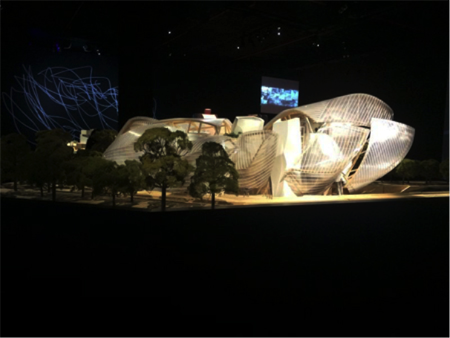
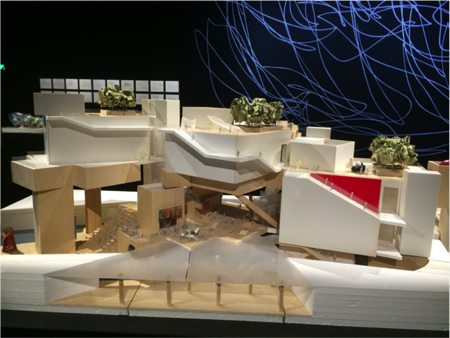
For more information regarding art, culture and luxury marketing in China, please read our article: Retail Design Meets Art: Bring Your Store to Life.
> back to top of page

4 Important Observations at Luxury China Exhibition
July 22, 2015
Held in Beijing from 3rd to 5th July, Luxury China is a major fair showcasing international luxury brands. From luxury fashion brands to jewelry brands, such as Vertu, Meissen Couture, Geminos, Luxury China unveils luxurious lifestyle to the Chinese consumers.
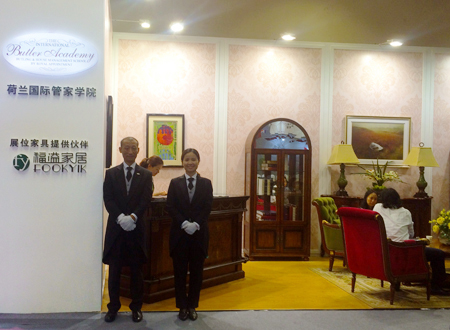
5 Star Plus Retail Design had the opportunity to visit the exhibition and here is a summary of our 4 major observations:
1. Exhibitions have becoming a great way to break into the luxury market
Attending Luxury China in Beijing gives companies, new and old, the opportunity to create brand recognition and exposure. It also gives international retail brands the chance to gain an overview about the luxury market in China. Luxury China, just like most other major exhibitions, boasts over 13,000 attendees that are on the look out for the next big brands or designs for luxury goods in China.
2. Chinese luxury is expanding and there is more Chinese investment in the industry
Luxury China demonstrated with its extravagant exhibits that there is an impressive amount of people aligning themselves to and adapting to the growing luxury market. The utilization of the booth design and layout of the space to represent the product was used effectively.
3. Luxury China has many franchising opportunities
The retail industry in China is steadily growing, thus many people who attend the exhibition are looking for opportunities to franchise the next big foreign company in China. A lot Chinese investors are risk takers and have the capital to take many opportunities.
4. Booth designs were innovative
The companies that had the best designs for their booths attracted the most customers. Some of the designs incorporated comforting and luxurious features that drew customers in and made them feel comfortable. The most impressive designed booths had product demonstrations and innovative product displays.
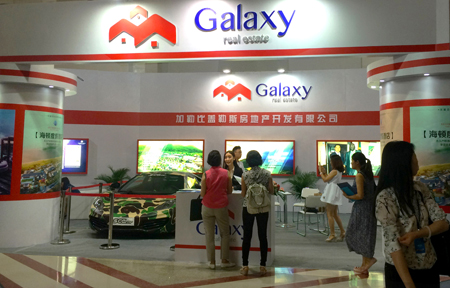
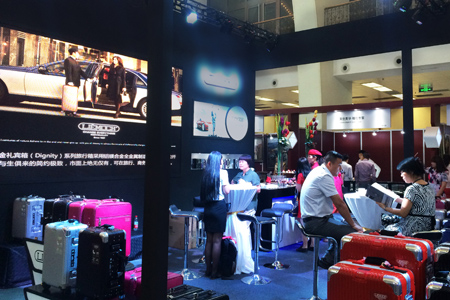
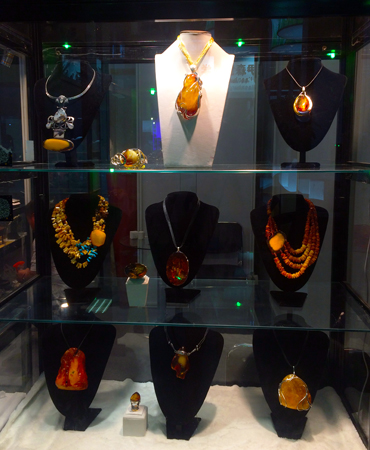
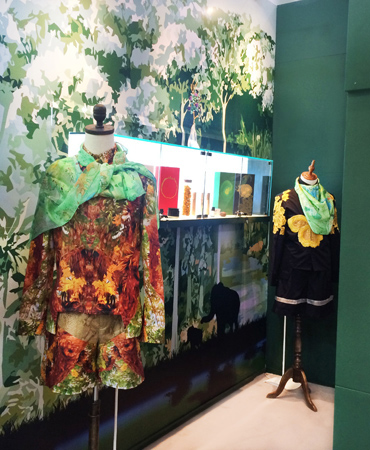 > back to top of page
> back to top of page

4 Future Luxury Retail Hotspots in China
July 15, 2015
As the effects of saturation and market maturity begin to be felt in the market for luxury retail in China in tier 1 Chinese cities such as Beijing and Shanghai, where next should luxury retailers turn for opportunities for expansion in the future?

Chengdu
Chengdu, the capital of the Sichuan province and the “land of abundance” is a prime example of a future luxury hotspot in China. Chengdu is becoming an increasingly popular destination for both wealthy Chinese tourists and foreign investors, with over 260 fortune 500 companies and 12 foreign embassy’s being established within the city. Chengdu is currently having many shopping malls under construction, increasing the amount of future luxury retail and luxury design opportunities that will be available in the city. In addition to this, the Chengdu metro system is currently being expanded, increasing consumer access and footfall in the shopping malls of the city.

Chongqing
Chongqing, located in southwest China is a prime example of a city that is ripe for the development of the luxury retail sector. The city remains relatively un-penetrated by luxury brands so that provides 2 opportunities for luxury retailers, lower market entry costs and lower levels of competition. In addition to this, the amount of newly developed shopping malls in Chongqing is increasing year upon year, which will provide more opportunities for luxury retailers to establish branches in the city.


Qingdao
With the recent opening of Hisense plaza and the Qingdao mixC mall, many consumers seeking to purchase luxury goods have been drawn into Qingdao, solidifying Qingdao’s role as fashion leader in the Shandong province. Sales of luxury items in Qingdao are expected to triple in the next 5 years, as the area becomes more urbanized and developed. This has drawn more luxury car dealerships and fashion boutiques into the area, creating a larger draw for those seeking to purchase luxury goods. It is expected that fashion good consumptions growth reaches 18% by 2016.

Wuxi
Wuxi city, located in Jiangsu province, is another city in which luxury sales are expected to triple in the next 5 years. Home to US style retail malls, Wuxi is becoming an increasingly popular destination for Chinese consumers, as car ownership increases in the Jiangsu province. Luxury retailers looking to establish boutiques in Wuxi should know that according to the Hurun report, the number of millionaires living in Wuxi increased to 14,200 individuals, an increase of 500 individuals over the previous year of 2013. Millionaires are being drawn to Wuxi by the economic development of the city and the booming local tourism industry, thus creating greater opportunities for luxury retailers.
 > back to top of page
> back to top of page

Branding in China: Smart Online Marketing Strategies of 2 Leading Luxury Brands
July 7, 2015
The Chinese continue to be the most enthusiastic spenders of luxury retail goods around the world, making up 46% percent of the global luxury market in 2014. Branding plays a huge part in nurturing Chinese luxury consumers purchase behaviors. Burberry and Cartier are 2 luxury brands that have successfully entered the Chinese market and this is why.
Burberry in China:
Burberry for example, is beginning to conquer China. Chinese customers in particular are looking for strong brands in order to symbolize their social status and prestige, and Burberry are meeting their expectations. As a result, Burberry has seen incredible changes with sales increasing by 20% per quarter since over a year. So how is Burberry capturing the attention of many Chinese consumers?
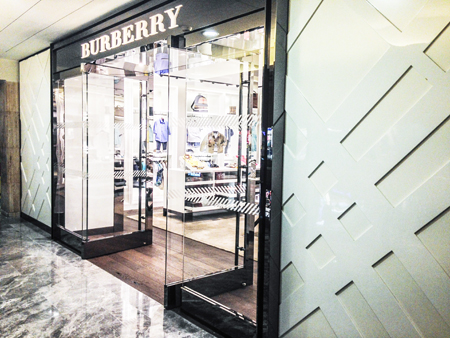
Innovative Store Design:
In April 2011, Burberry has successfully created a ‘buzz’ in China by opening up its first high tech flagship store in Beijing. The runway parade launch party used virtual image technology to project life-like holograms of models and products among actual models on the catwalk, a futuristic display of virtual reality. It was the largest public event to ever be seen in China for a luxury brand.
Currently Burberry’s flagship stores designs include LED screens broadcasting exclusive video clips, RFID technology triggering runway footage and product information in the dressing room, as mirrors turns into screens, as well as digital animated store fa?ade design, which reacts to changes in natural light and weather. Every detail in the flagship store design brings the Burberry brand to life. The over-the-top use of technology is perhaps one main reason for its success in China.
Use of Social Media Channels:
In China, buyers of luxury products are generally under the age of 45 years, a lot younger than consumers in the US and Europe, therefore, Burberry has decided to target the young and fashionable people in China by using social media.
Burberry is undoubtedly the brand that is present on the Chinese social networks. Presently, the total number of Burberry fans on Weibo is 944 387, 41 000 more in contrast to Louis Vuitton. Their offline operations are posted online and followed by millions of users on various social media sites. During Burberry’s Autumn/Winter 2014 show, the brand teamed up with WeChat where users had the opportunity to receive exclusive audio, pictures and texts messages about the collections from the designers, celebrities in attendance and models. Burberry’s major interaction with users on social media has made it one of the most well-known brands in China.
Cartier in China:
Cartier is also another successful brand that is popular among the Chinese consumers. It seeks to find innovative ways to generate brand awareness in the Chinese market.
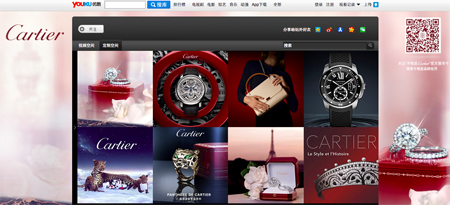
Online Marketing Campaign:
With 1 3339 088 fans on Weibo, Cartier has certainly managed to set itself as a pioneer in digital marketing in China. One way it has done this is by targeting professionals aged 25-35 years old, through its Cartier Love series. In 2006, Cartier partnered with MSN where they created a microsite, themed around the definition of Love, in which users can share the site and its content with friends and family via Windows Live Messenger. The buzz around the Cartier Love series campaign in China was a huge success and received over one million page views. This increased its exposure online and marked the beginning of numerous online campaigns. Currently Cartier is promoting the Proposal collection with a series of 3 engagements story telling videos through Youku, the Chinese equivalent of YouTube. One of the videos has already been played more than a million times.
Adapting to Chinese Consumers:
Although Cartier’s Destinée romantic short film in 2013 has been broadcasted on western social media channels, it was particularly well received by Chinese consumers. The video played tribute to Parisian romance starring Taiwanese actress, Michelle Cheng, in which the proposal was done in Mandarin and the overall cinematic quality matched the Chinese market. All these little elements have created homage to certain Chinese elements, making Cartier a luxury brand successfully received in China.
Furthermore, Cartier has been developing products exclusively to the Chinese Market, such as the Rotonde de Cartier watch featuring the number eight in Chinese characters, as well as designing watches for Chinese New Year celebrations, containing Chinese horoscope animals in the design of the watch. Cartier effectively adapts it products to the Chinese market, enabling it to raise more brand awareness in China.
> back to top of page

6 Great Reasons Why China Remains an Excellent Opportunity for Luxury Retailers
June 26, 2015
Recently there has been some buzz about the climate of the Chinese luxury goods market. Some say that the market has slowed down and doubt whether investing in China might not be as interesting as before. The facts say otherwise! Outlined below is why China is still the place to be for luxury retailers.
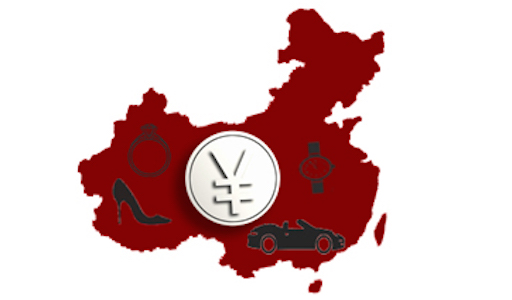
1. Growing Wealth
The Chinese market has grown tremendously over the past 20 years. In 2014, China's GDP grew 7.4%. Comparatively, the US grew 2.4%, Japan 1.3%, and Germany 1.4%. The amount of middle and upper class Chinese will have grown to 1 billion in 2030, creating the largest market for retail sales. These newly wealthy individuals,enjoy displaying their wealth more than any country. In Beijing there are an outstanding 324 billionaires and 143,000 millionaires according to China's Hurun report. In 2014 the amount of millionaires grew by 18%, much higher than the world average, creating more consumption growth.
2. Luxury Spending Is The Highest In The World
The amount of money spent by Chinese on high end goods is the highest in the world. Chinese shoppers spend a total of $217 billion USD on luxury products in 2013. That number has only increased from there, and will continue to increase in the future.
3. Disposable Income
China's new rich have moved from having to meet their basic needs, to a period of quickly enjoying their newfound riches. A study by McKinsey states that by 2020, more than 75% of China's urban consumers from 1st tier cities such as Beijing or Shanghai will earn between RMB 60,000 to RMB 229,000 a year. With higher wages within China, they are able to take more advantage of their increased income by spending it on luxury products.
4. Development of New Cities
Tier 2, 3, and 4 cities such as Chengdu and Xi'an will have massive increases in their middle and upper-middle classes. In the near future, the amount of new middle and upper class in these cities, will create around 300 million consumers with a thirst for the finer things in life. These consumers have been working to increase their standing in China, so many of them show off their hard work with newly purchased luxury goods. These cities have been widely untapped by luxury retailers although they have populations as large as cities like Berlin and Miami.
5. Ongoing Development
While China's economy is slightly slowing down, its GDP is still higher than in other countries. With the current retail sales volume growth at 8%, the retail industry in China remains a market with opportunities, where consumers easily accept innovations in e-commerce as well as m-commerce. Marketing to consumers in urban cities means using all available channels to brand the products and interact with consumers. Another important element this design is the retail store. This is where consumers want to experience a unique and luxuriou branded atmosphere.
As a result in China's two biggest cities, Beijing and Shanghai, integrating new technologies when designing retail stores is not only a trend but a must for brands.
6.Gift Giving
Only 48% of luxury goods purchased in China are for the individual purchasing the product. The remaining 52% go to their spouse, family, friends, or business partners. This idea of gift giving luxury items will not slow down because it is deeply rooted in the Chinese culture. A very important concept in Chinese culture is "Face", which is a reciprocal relationship. This involves showing others, the giver's humble nature, as well as the symbolic praise given to the receiver of the gifts. This practice creates more incentive to purchase luxury goods for the consumer themselves as well as other people.
As you can see, the Chinese market is as raw as ever, and certainly has the most potential for growth and revenue for new companies entering the luxury market. This opportunity to tap into an unsaturated, high-spending market will be best executed in the next few years since competition is continuously growing and spending is increasing.
> back to top of page


Unprecedented Price Changes in the Global Luxury Goods Market
June 12, 2015
There is a notable development in the luxury goods market – the adjustment of global price differences. Since premium positioned companies usually do not adjust their prices downward, the latest changes are big news in the industry.
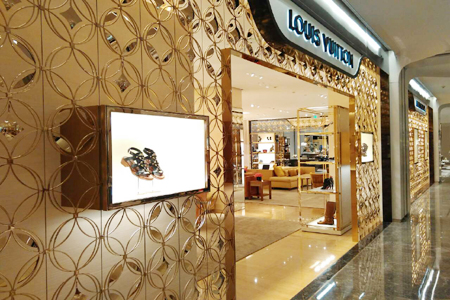
What is Happening?
In the past years, luxury products used to be much more expensive in China than in the West. Now that more and more Chinese are purchasing abroad, luxury brands have decided to adjust their pricing strategy to offer the same price to consumers around the world. Brands are changing prices at a global level to create demand in certain places. Chinese luxury prices are already 20-30% higher than Europe's and are now becoming 60-80% higher because of taxes and now the Euro devaluation. How can luxury brands remedy this problem?
How Companies Are Taking Action?
Certain high profile companies have taken unique strides to fix this emerging problem:
- Channeling "Chanel": The famous French luxury house was one of the first brands to lower their Chinese prices by 20% and raise their Europe prices by the same percentage. While it has been a few months that Chanel has adopted this strategy, some luxury brands still remain uncertain about increasing and decreasing prices between continents.
- Cutting List Prices: A few Luxury brands, such as Richemont and Patek Philippe, have responded to this situation by cutting list prices by 15% in hopes of stimulating demand and increasing sales globally. However, moving forward into this direction could partially harm its brand image; seeing them as not exclusive and deficient in craftsmanship or quality.
- Partially Harmonizing: There are some luxury brands who harmonized their global pricing to better balance sales. Prada has followed suit in China by lowering prices but left their European prices the same.
- Testing It Out: Some Luxury groups remain pessimistic in playing this pricing war, wanting to test it out on a few of their brands before making a global decision. Kering, a French luxury group that owns Gucci, has made Gucci a test for a price change. They have cut their China prices to be only 10-13% higher than other global prices, creating a strong international presence. Gucci CEO Patrizio di Marco says he "wants to be fair to customers" because "Our customer is not price conscious".
- Wait and See: Burberry has hinted at an upcoming price change but has yet to make any changes.
- Passive: Others, such as LVMH, have stated that consistent pricing among markets is not a strategy they will take.
Reasons for such pricing strategies in China
Luxury brands in China are reinventing pricing strategy for these reasons:
- Reducing the Grey market: Combatting the on-going problem of the luxury grey market is one of the main reasons that certain luxury brands have adopted significant price changes. Brands in Europe, such as Chanel and Louis Vuitton, are already limiting the number of certain purchased products in-stores.
- Reducing Showrooming: Often Chinese consumers will check foreign luxury products in China before buying it outside of the country. In fact, an astounding 3/4 of luxury goods purchases by Chinese consumers happens outside of China. Purchasing luxury goods abroad is a common practice whilst on vacation for the Chinese. Most prefer a "Made in Italy" label instead of a "Made in China" for the stories they can tell about purchasing abroad.
- Euro Devaluation: With the Euro losing value there has been more of a gap between prices, creating more incentive for companies to cut prices.
Looking Ahead & Possibilities
Luxury brands that have adopted pricing strategies may need to focus on a few elements, in order to come out ahead of the curve:
- Need to Inspire Their Customers: Brands that are responding to this pricing strategy with something new and different are winning. Luxury brands, like Burberry, use digital technologies as a creative outlet to keep in touch with customers as wells inspiring them on a daily basis. Luxury brands can also inspire their Chinese customers by setting up retail stores in outlet villages offering products which had a bad season performance at an attractive price.
- Supply chain / Stock: Stores in China need to appropriately stock products that are increasing in demand. Basically luxury brands need to adjust their global supply chain system in order to redirect inventory to the latest global hotspots.
- Geography Retail Footprint: With the current demand of luxury shifting, international brands need to question themselves if they have the right amount of retail stores according to demand according to each country and city.
- Brand Level: It is required for brands wanting to survive this pricing strategy to think more about store design differentiation and product innovation. Limited edition in China feels more important than classic models; this is to ensure brand interest as well as sales.
Possible Outcomes
If pricing changes are a success, then those firms who have taken action will come out ahead of the curve with a larger profit as well as a consumer base that has shifted away from those without changed prices. Another possibility with this price change in China is that the brands that dropped prices will lose what customers view as exclusivity. Drastic changes in price will startle consumers and make them question the real value and positioning of the brand itself as well as their handcrafted goods, therefore changes have to be thought through and made very carefully in order to not affect customers and the brand's image.
Outcome Strategies
A price increase in Europe to closer match prices of China may be a viable option that retains brand exclusivity. This strategy sustains profits in Europe while increasing profit in China by shifting Chinese sales from European to Chinese stores. Will they abandon their strategy if it does not work? Will they hold tight without admitting defeat? Or will Chanel and Gucci set the precedent for the new pricing strategy?
> back to top of page

Welcome to 5 Star Plus Retail Design New Office!
May 26, 2015
The team at 5 Star Plus Retail Design is thrilled to show everyone our brand new office.
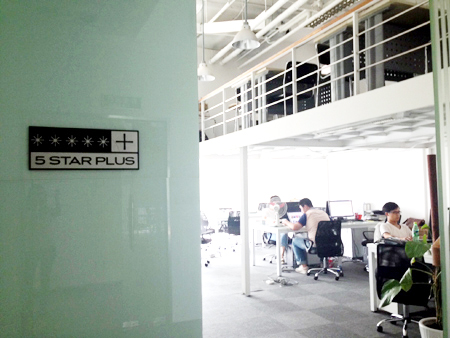
As 5 Star Plus Retail Design is expanding, we have decided to move to a bigger space. Some of our main concerns when we were looking for a new office space were to find an environment that exudes design, creativity and comfort. A place where our interior designers feel inspired.
5 Star Plus Retail Design is now located on the 6th floor at Shangdu International Center, Dongdaqio Road, Beijing. We welcome everyone to visit us in the near future!
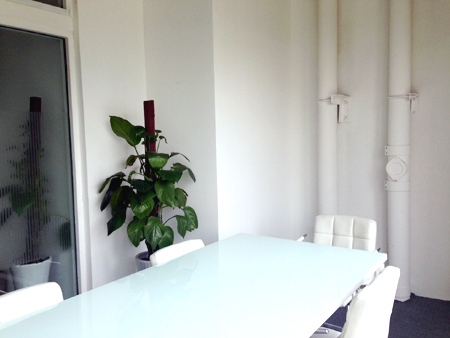
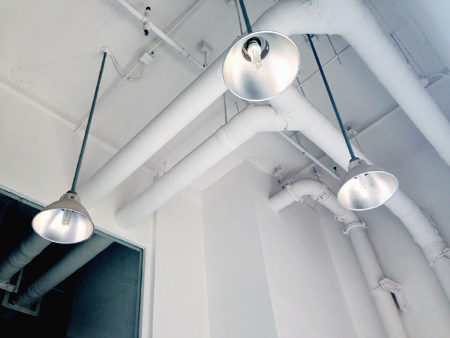
And this is the amazing view from our office:
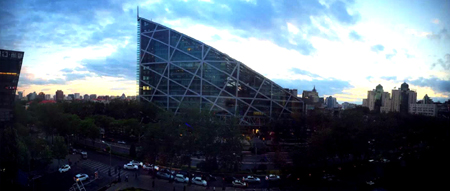 > back to top of page
> back to top of page

Chinese Consumer Attitudes toward Luxury and Marketing Implications
May 22, 2015
Consumers in China have various attitudes when it comes to purchasing luxury goods. So, how can luxury retailers attract consumers into buying their products?

"Luxury China: Market Opportunities and Potential" by Michel Chevalier and Pierre Lu has identified 4 types of Chinese consumer attitudes toward luxury: luxury lovers, followers, intellectuals and laggards. These consumers are male and female between the age of 35 and 50 years old, living in mainland economic cities (Beijing, Shanghai, Guangzhou or Shenzhen) with successful professional career.

Image adapted from "Luxury China: Market Opportunities and Potential" by Michel Chevalier and Pierre Lu
Based on this classification, 5 Star Plus Retail Design has identified current ways to attract these consumers in China. The goal is to increase sales, whether it's online or offline.
1. The Luxury Lover:
They know exactly what they want from luxury brands and enjoy everything that comes with the lifestyle: heritage, attitude and status. 60% of them are women who are very sensitive to trends, do not listen to other opinions, have a clear understanding and vision of what they appreciate from shopping luxury. They also love to share their brand experiences with their friends and family.
How to attract them?
As luxury lovers know exactly what they like in a brand, marketers need to present the brand's history and promises effectively through all channels (offline and online). Luxury brands in China need to focus on inspiring them with appealing product design featuring the brand's logo clearly, engaging advertisement campaigns in high-end fashion magazine (digital or print), out of the box video commercials and attractive retail store design concepts.
The key here is to make the brand relatable to the customers.
2. The Luxury Follower:
They are the ones who are heavily influenced by the media and the public's opinion, rather than following their individual style. They are more likely to want to know why the brand is so famous with the number of retail stores, number of online followers on social media platforms and which celebrity are wearing their products. They are impulsive buyers, who want and need the latest seasonal luxurious items to feel included into their social network. 72% of luxury followers are women.
How to attract them?
Retail brands need to focus on producing popular product designs. The key is to create buzz around trendy luxury goods, by showing the luxury lovers that famous celebrity and social media stars are fond of their products. Asking celebrities to design a limited edition collection for a luxury brand will also attract these consumers to make a purchase. An example of a European luxury brand that has collaborated with stars on limited collections and has successfully built a strong presence in China is Modern Creation Munich (MCM). Designing their luxury items fun and trendy appealing to the younger Chinese generation
3. The Luxury Intellectual:
This category has a balance gender spread with 45% male. These consumers have their own understanding of luxury and are less influenced by the media and the public's opinion. They are very rational individualistic people and prefer discreet, classical luxury products. These consumers love to compare items and are very analytical about it.
How to attract them?
In order to appeal to them, brands need to design classic and simple products, with minimum appearance of the brand's logo. As they are analytical, a well-written description of each item on the luxury brands website is a must for attracting them. A good sales team with a vast knowledge of all the products needs to be in placed, to efficiently assist them in-stores.
4. The Luxury Laggard:
84% in this category are women. Advertisements, trends and other external factors have little effect on them. These consumers in China purchase for functionality rather than fashion. They want to purchase quality products that are practical and durable. Luxury laggards are rational, impulsive and opportunistic buyers that love a great luxury bargain.
How to attract them?
Brands need to focus on functionality, quality and usefulness of the product. They are price-conscious and very impulsive buyers. An effective way to attract this group is to set up a store in an outlet mall, where reasonable pricing is in place. Creating other pricing opportunities, such as sales, will allow brands to invite and pull them to purchase in-stores and online.
Foreign luxury brands wanting to effectively strengthen their presence and positioning in China's luxury market must appeal to all consumers. Taking in account different consumer attitudes toward luxury into their marketing strategies. From conceptualizing the layout of the retail design store to any branded event, never forget to consider to whom you are selling your products to and how the brand's message and image are delivered.
> back to top of page

The Retail Consumer Experience in China
May 18, 2015
Fashion shows, product launch events, retail exhibitions, and store design developments are all occasions that needs to be implemented into an exciting branded consumer experience. In fact, 73% of Chinese consumers consider shopping as a leisure activity. It is crucial for retail brands to focus on creating the perfect retail consumer experience in any physical retail branded situation.
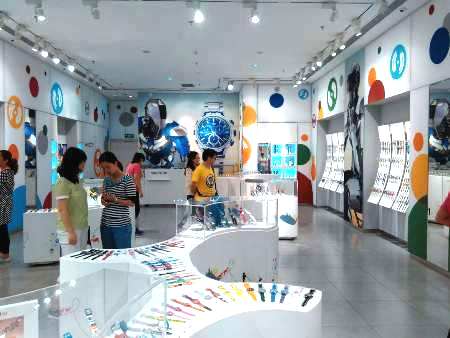
From a store design concept, to any retail events, there are many effective ways to create an enticing shopping experience in China that will persuade consumers to stay longer in any branded environment; in hopes of increasing sales as well as retaining and strengthening consumer brand loyalty.
Successful retail consumer experience means creating a thrilling and an emotive atmosphere. Enticing, attracting, and inspiring consumers with the brand's universe.
When it comes to achieving a successful retail consumer experience in China, brands need to learn from Swatch, where multiple touch point elements were used to interact with consumers. During their Swatch new Irony Xlite watch collection product launch:
1. A large LED screen with a dynamic video was used in accordance with the dance moves and dancers, this was in order to draw consumer's attention during the presentation of the Swatch Irony Xlite product collection. As well as the reveal of the brand ambassador: a Robot.
2. Having a Robot as a brand ambassador where guests could physically interact with him makes the event unique than any other product launch event in China.
3. Buzz was created when attendees can experience the 360 degree high-technology photo booth, where they could take a picture while jumping in the air, and received it instantly as it was printed out there on the spot.
4. Color changing LED lighting chairs were placed for added enticement. At the beginning the chairs were all completely white but as it drew to the end of the event, chairs were lit in different colors creating a little feeling of surprise and element of fun.
5. Colorful lighting projection placed at different parts of the space creates a dynamic, fun and lively retail consumer experience.
6. Integrating online digital marketing features, brands subtly push consumers posting their pictures during the launch event on different Chinese social media platforms, making Swatch brand up to date and relevant to the sharing philosophy of today's era.
There are so many elements to take into account when it comes to creating the perfect retail consumer experience in China. Once a brand achieves to grasp the consumer emotionally through the brand's universe, it will definitely succeed in strengthening its position as well as inviting consumers to interact with the brand on a regular basis.
When it comes to the retail consumer experience in any branded environment, nothing is too big or too outrageous!
> back to top of page


5 Stages of The Chinese Luxury Consumer Purchasing Decision Process
April 17, 2015
How are Chinese consumers choosing and purchasing luxury items? What are the factors influencing their buying decision process? And what happens before and after their luxury purchase? Here are the 5 stages of the luxury consumer's purchasing decision process as observed in the economic hubs in Mainland China, such as Beijing or Shanghai.
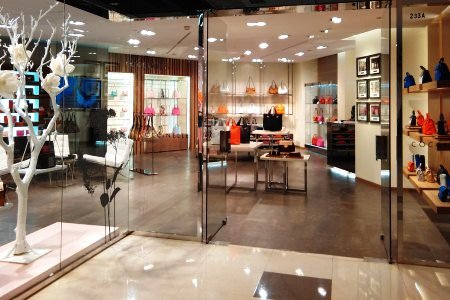
1) Inspiration:
On a day-to-day basis Chinese consumers are inspired by their latest shopping experiences, trendy retail design concepts, social media idols, seasonal trends as well as their individual personality and fashion sense. All these aspects will cause an emotional desire in wanting or needing a luxurious item. We can classify three types of want/need:
? Functional where the feature of a product is important for the shopper
? Social where buying luxury goods makes consumers belong to a social environment
? Need of change like replacing an obsolete item with a new one
These days it is important for luxury/high-end premium brands in China to inspire their existing and future customers in wanting certain fashionable luxury products across all marketing channels whether it is online and offline. Read more about Online-to-Offline retailing in China here.
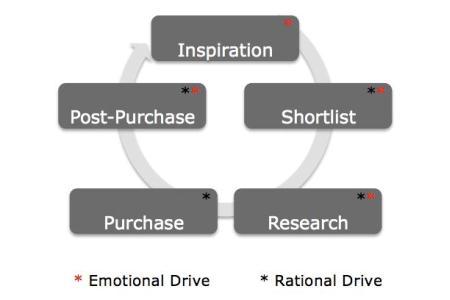
2) Shortlist:
Once the need is recognized, luxury consumers in China would then start identifying brands that are inclined with their personality and values, as well as brands that are familiar to them. In the past years, Chinese consumers have been recognizing more and more premium and international luxury brands as well as appreciating their unique quality and artistry.
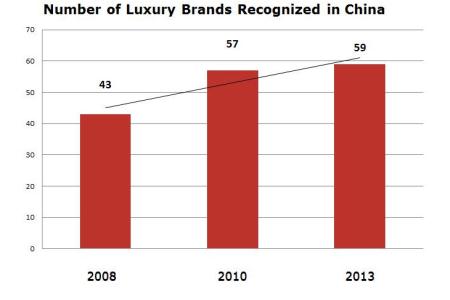
Image adapted from Global Research of China Luxury, a KPMG study
3) Research:
After selecting the brands that they desire to purchase, Chinese consumers will then start researching the best offer or deal that they could possibly get. During this stage many will receive feedback regarding the luxury product via friends, search information online or visit a retail design store to attest the feel and look of the luxury goods.
Luxury fashion trend-setters tend to be more subjective due to a more emotional drive; they are buying luxury goods to enjoy it as well as making a fashion statement, while consumers wanting to purchase a luxurious car or technologies tend to be more rational and seek extensive unbiased information.
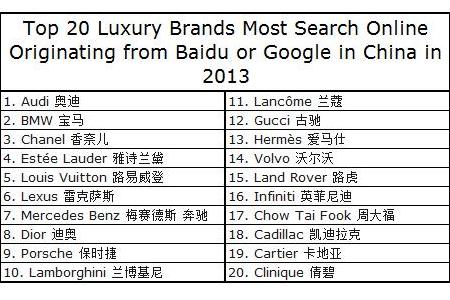
Image adapted from Digital Luxury Group and Luxury Society
4) Purchase:
Once consumers have evaluated all the information and understand the value that the luxury product will bring to them, they will make a purchase either in the store or online.
At this step the consumer's purchasing decision will certainly depend on the selection made in previous steps, however it will also be affected by external factors such as the quality of their shopping experiences (online or offline), the retail design layout, the customer services in stores, the availability of the item and/or promotion, and the terms and conditions of a return policy.
5) Post-Purchase:
At this final stage Chinese consumers will often seek positive validation from their friends or social network in order to justify their luxury purchases. Chinese consumers will also compare the adequacy of the product or the brand with their initial needs and expectations. They will feel either a sense of satisfaction, guilt or disappointment, which will then influence their future purchase decision process. This is a very important step for marketers that should not be overlooked as it can lead to brand loyalty and increase future sales.
> back to top of page

Opening in June! Tafelspitz, a Fine Dining Experience
March 31, 2015
We are excited to announce that the location for the Tafelspitz flagship store has, as expected, been confirmed to be at Nali Patio's 4th floor besides Acqua in Beijing's Sanlitun area. Construction is scheduled to begin this month and be completed by June / July 2015. We are looking forward to a wonderful Opening event that will be hosted at Tafelspitz in early summer.
At 5 Star Plus Retail Design, we are excited to be part of this project by supporting the brand with a very important detail: the restaurant's store design. While recently most restaurants in Beijing and other parts of China chose a "raw" or vintage inspired style, Tafelspitz had to look exclusive, a bit classic, yet modern and chic at the same time. Moreover, the store design had to suit both formal business dinners and more casual family meals while catering to consumers from both China and Western countries.
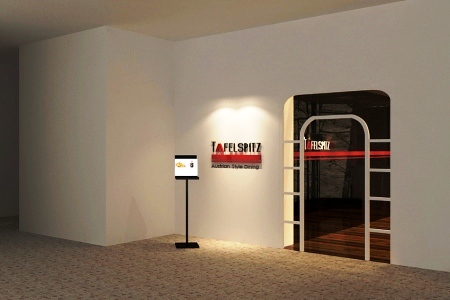
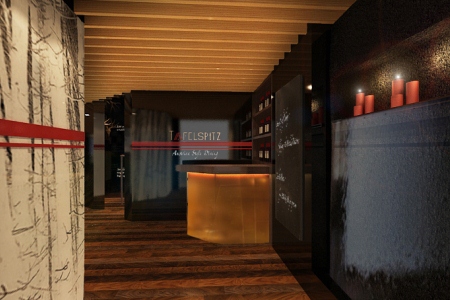
The brand has already created a buzz around its soon-to-open restaurant by offering its culinary products during a number of international and German-speaking cultural events since last year, such as the visit of the Austrian president in Beijing on March 26th. Here are a few questions that we asked the owners:
1. How is Tafelspitz different from other high-end positioned restaurants in Beijing?
Well we can't speak for other restaurants, but the core philosophy of our restaurant is to guarantee each guest a unique and wonderful evening. Key in achieving this is our use of organic food, a lot of Austrian 'Know How' as well as the Austrian and Chinese teamwork.
2. What is Austrian food like and what is different to other European cuisines?
Austrian food is rich in texture and has a unique flavor. The most frequently consumed types of meat in Austria are chicken, beef, and pork and a lot of them are totally organic. Austrian pastries, sweets, jams, and cakes are also very famous.
The difference to other European cuisines is not easy to describe because the Austrian cuisine is unique. It was influenced by the countries which surrounded it (Germany, Hungary, and Italy as well as France) when Austria was the middle kingdom of Europe.
3. What was the key requirement for the retail design of your restaurant?
The main goal of the design was to create a pampering atmosphere where the guest wants to come back again and again because he feels the Austrian way of life. To accomplish this we work with selected, beautiful materials which are also commonly used in local restaurants in Austria (wood, stone, glass, steel and copper).
4. What is special about your in-store experience (the space) and the design as compared to your competitors in China?
Firstly, we put the focus on the bigger size and high quality equipment of the kitchen to guarantee a unique Western style dining experience. Every restaurant should be planned around the kitchen and not vice-versa.
Secondly, we offer very big tables so that the guest can really enjoy the dining process and the evening and is not sitting too close to other people.
And finally, we created a modern and traditional Austrian restaurant together with our design team that includes some typical Austrian elements but won't have the classic "kitsch" some would expect.
5. Who would be your ideal dinner guest?
We do not have an ideal dinner guest, but heartily welcome everybody who finds pleasure in the culinary side of life and knows to appreciate excellent service and a unique environment.
For us, an "ideal dinner guest" would be a returning guest who recommends our restaurant to his friends and business partners turning our food, service and environment into an increasingly acclaimed, first-choice dining experience.
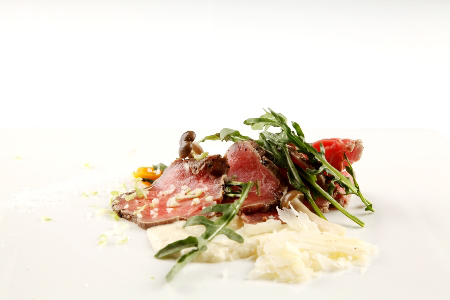
Tafelspitz will be the first authentic Austrian restaurant in Beijing. Thanks to the richness and variety of the Austrian cuisine, we are convinced that the restaurant will entice a broad range of people. Additionally, with its chic store design, it might just be the right place to host your event.
> back to top of page

CHIC Fashion Exhibition Shanghai 2015
March 26, 2015
Taking place in Shanghai for the first time, CHIC International Fashion Fair attracted hundreds of exhibiting brands and thousands of visitors.
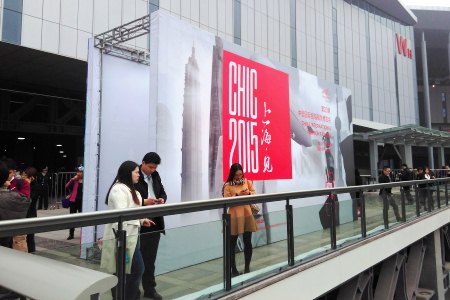
For those who did not visit the exhibition, here is a summary of our key observations:
1. Chinese fashion brands are increasingly paying attention to design.
Chinese fashion products are evolving and becoming more international, chic and stylish. At the same time, local brands have realized the importance of designing branded marketing materials, exhibitions stands and stores.
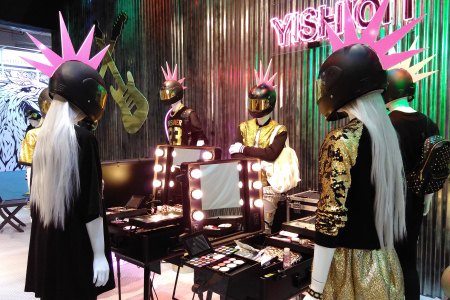
2. Local brands focus on creating branded franchising concepts.
Brands who used to be manufacturers in the last few years have now realized the potential of the franchising market. By investing into the creation of a brand, with a brand story, visual identity, marketing materials, and eye-catching, well-designed exhibition stands these companies are able to attract a large number of potential franchisees.
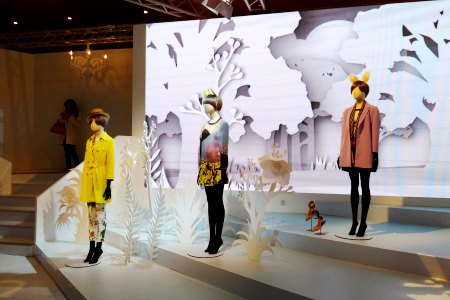
3. International exhibitors at the CHIC are still primarily production-focused without giving thoughts to building a brand.
Most fashion companies in the international pavilions are manufacturers where the existing brand identity is minor (with a brand name and perhaps some fashion shots and a company brochure at the most) or simply non-existent. Accordingly, there are no branded elements or interestingly designed features at the exhibition stands beside the products themselves.
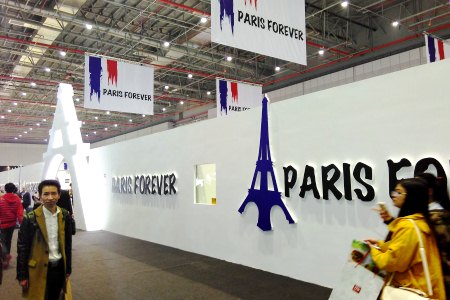
4. Little adaptation of foreign products to the local market.
Many foreign brands fail to find distributors and decide to not exhibit any more after attending one or two consecutive years. One of the reasons for their difficulty to find partners in China is that many foreign brands underestimate the Chinese market, its complexity and consumer preferences, and do not adapt their products to the local market. Chinese consumers usually need different sizes and cuts and prefer more colorful, patterned garments.
5. Technology Focus.
New technologies that created sounds and movement to attract people were seen everywhere. Most commonly used were music, LED and LCD screens, projected images, videos and logos; the use of QR codes, and lighting as a key design element.
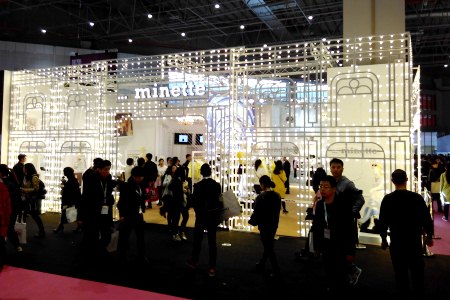
Chinese brands are learning fast and are committed to develop commercially successful, branded businesses. If foreign fashion companies want to take a foothold in this exciting market, they need to first research and understand the country, the various geographic areas and diverging consumer characteristics, and the dynamics of the local retail market. Then, a strategy with achievable milestones and measurable targets needs to be defined to facilitate the establishment of a successful business in China.
> back to top of page

10 Key Points for Successfully Working with Franchise Partners
March 18, 2015
China and its cities Beijing and Shanghai are on top of the list of new sales territories for many retail brands. While there are many ways to enter the market (such as e.g. export – directly working with wholesalers or distributors, working with licensees, or founding a subsidiary in China), many brands choose a franchising model where they work with one or more local partners as expansion strategy.
A franchisee sells based on a proven brand concept and has to adhere to many different regulations imposed by the brand headquarters (including e.g. the store design, staff attire, product range to be carried, product display, and prices).
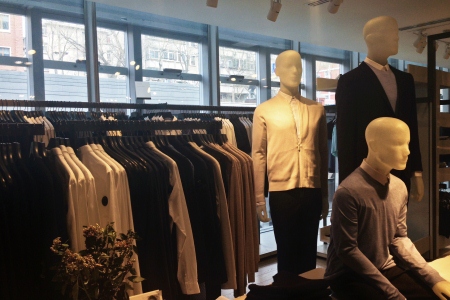
In our view, the most important things that are to be considered when working with a local company are two: the selection of the right partner who shares yourvision and then a consistent follow up and control of the implementation of the brand image. Here are our top 10 key aspects to consider:
1. Select your Partner Carefully: Many brands can't wait to come to China and when finally a local company shows interest in the products, the brand headquarters often jump at the opportunity andshortly sign aditribution or license agreement. It is important though to do a thorough background check and select the right partner. Check the track record, the geographic presence, existing relationships with landlords (department stores and shopping malls in Beijing, Shanghai and other bigger cities) and network of sub-distributors in smaller tier cities and other regions.
2. Exclusiveness– yes or no? Are you looking for a general distributor or do you plan to work with several partners in China? A general distributor or exclusive franchise partner has more responsibilities and control over the brand in China. This usually includes the responsibility to invest into brand promotion and the right to work with sub-distributors. You need to decide whether the license should be limited to certain geographic areas and whether you want to contractually reserve yourself the right to also enter the market directly.
3. The Contract: Make sure you know what you want and have a clear long term strategy and then cover all points in the contract. Certainly to be included are the duration of the agreement, geographic territories, and termination terms. Prices should be controlled by the brand headquarters and new store locations need to be approved beforehand.
4. Minimum Purchase Order: Purchase prices and other conditions depend on the minimum purchase order value that is specified in the contract for the first and following years.
5. Marketing Expenses: General distributors and exclusive franchise partners are typically contractually committed to invest a certain yearly amount into marketing and promotion for the brand in China.
6. Marketing Materials: In many cases, local partners do not have a very strong marketing team. This means that there is often a sub-optimal marketing strategy and the brand is not promoted in the right way. In order to avoid that the franchise partner creates and publishes their own marketing materials with inaccurate Chinese marketing messages, the brand headquarters need to regulate the details of the collaboration on marketing issues in the contract. For an efficient promotion of the brand in China, the marketing department at the headquarters needs to understand that in China speed is fundamental and needs to give full support to the local partner.
7. Store Identity Handbook: When working with franchise partners, it is crucial to ensure that all retail stores are built in line with the international brand image and worldwide store design standard. Most brands develop a store design or store identity handbook that specifies all details related to the store design, including all products and materials required for the fa?ade, areas in the store, furniture and fixtures, product displays, and other elements. With a store identity (SI) standard, brands can reinforce a globally consistent brand image.
8. Control of the Brand Image: Even with existing guidelines and a standard detailing the store design, it is important to regularly visit the stores to reinforce the correct implementation of the brand image. To be checked are the store design (first check and approval before the opening!), the product display, the staff attire, sales techniques and customer service, among other things. Especially stores in smaller cities in China are likely to more or less diverge from the brand standard.
9. The Pricing Policy: Ensuring consistent prices across China is another challenge. Good practice requires brands to specify the right to exercise control over the retail prices in the franchise agreement. Most brands will publish retail price lists for the different markets on a yearly basis. Regular site checks will ensure that distributors and franchise partners comply with the price regulations.
10. Regular Training of Staff: Be aware that your franchise partner is also your customer and that the more support they get the more and the better they will be able to represent your brand and sell your products. Especially the sales team will need support and regular trainings to understand the brand philosophy as well as uniqueness and true value of the products. Only if they are convinced of the products and have no doubts they will be able to sell effectively. Assign someone to conduct frequent trainings.
Summary
Whether to franchise or not depends of the size of the brand, the amount of resources the headquarters are willing to spend on the Chinese market, as well as the amount of control they want to exercise over the brand development and image in China.
At the moment, the brands that most successfully work with franchise partners over many years are medium-sized companies that have a certain heritage and are often still family-owned. Companies of this size typically focus on creating high quality products in a sometimes rather traditional environment and fewer efforts are spent on marketing and business development. Working with a local partner that has well established sales channels and relationships in the market absolutely makes sense.
By contrast, products that are very new, creative or innovative would require more groundwork for creating brand acceptance through the use of a more creative marketing and design strategy. Since many franchise partners still work with rather traditional marketing and sales channels, such retail brands should consider entering the Chinese market by opening their own stores.
Independently from the expansion strategy chosen, ensure that you have a globally coherent brand image and give increased support to the local marketing and sales teams.
> back to top of page

Top 5 Worst Case Scenarios When Opening a Store in China
March 10, 2015
Before coming to China and actually opening a store it is hard to imagine all the things that could go wrong. Here is our top 5 list of possible worst case scenarios. They are happening on a day by day basis!
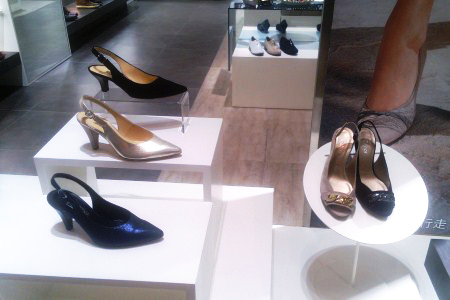
1. No Staff:On the first day, your new staff does not show up. Or, a few days before you open, the landlord (department store) informs you that they have very strict requirements for sales staff (Hukou, height, weight and other personal details) and that part of your sales team does not fulfill those requirements and is therefore not allowed to work in your store.
2. No Products: You have started to ship your products a few months before the planned store opening and now your products are still stuck at China Customs. Your retail store is empty and you have no products to sell.
3. Selling not allowed:Your store is open and the products, the team, and everything else is ready. Then the landlord comes and checks and asks you for your product tests reports. With some landlords, you need to provide product test reports for every product type you carry. You also need to have correct and complete Chinese labels on your products and packaging as per the Chinese law. Otherwise, you will have to place signs into your shelves and counter saying that you are just "displaying" and not selling products at the moment.
4. No Credit Card reader:In stores where you have a cashier desk and POS you will also need a credit card reader from a selected bank. It can sometimes take months to actually get the credit card reader, and if you are selling premium products and do not have a credit card reader in the store yet, chances are that customers will rather walk away than search for the nearest ATM to withdraw money and then come back to you to pay.
5. Construction Delay:Construction projects all over the world are usually delayed, and although everything in China happens much faster, you should be prepared that fit-out projects are usually delayed too. This might not necessarily be the fault of the general contractor but could also be related to the approvals granted by the landlord and government bureaus. When delays occur, you might have to shift your opening date backwards.
Summary
Even in China's most developed cities like Beijing and Shanghai problems can and will occur frequently. If you choose to go to second or third tier cities, certain situations will become even more complex and harder to solve.
What can you do to avoid any of the above and make sure that your new flagship store or boutique opens as planned?
Be prepared for the unexpected and talk to as many people in the industry as possible. A network of contacts in your business area might also enable you to solve problems more efficiently.
> back to top of page

Our Top Five Storefront Designs for Chinese New Year:
2015, the Year of the Goat
February 13, 2015
The run up to the new lunar year is officially under way with some of the globe's most prestigious brands fashioning their store front designs in honor of the upcoming year of the goat. Many deluxe retailers opted for minimalist schemes with understated red features and goat silhouettes, whereas others fabricated more vibrant displays. See our top five Beijing storefront designs for the Chinese New Year here.
5. Thomas Sabo
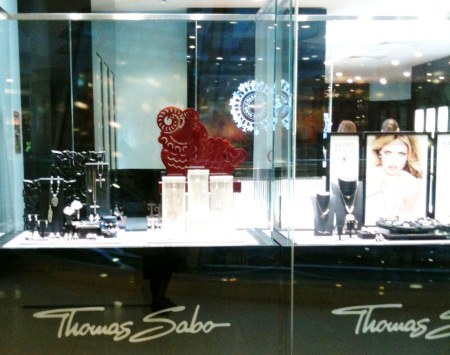
A subtle goat feature was integrated into Thomas Sabo's Beijing retail store, designed with perfect continuity to the Sabo brand.
4. Calvin Klein
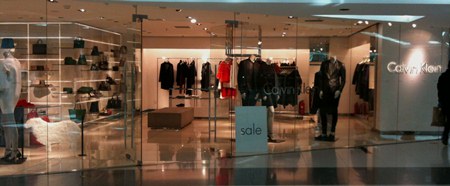
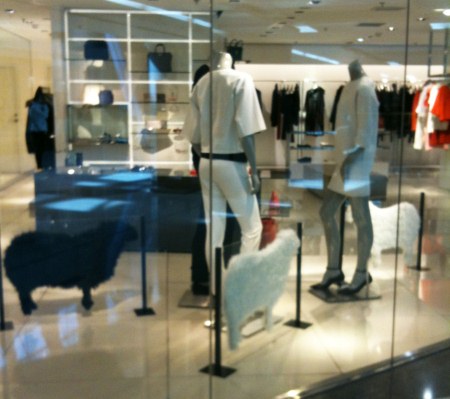
In true Calvin Klein style, simplicity, streamlining and minimalism was a running theme throughout their Beijing window display, corresponding seamlessly with their collection.
3. Parkview Green
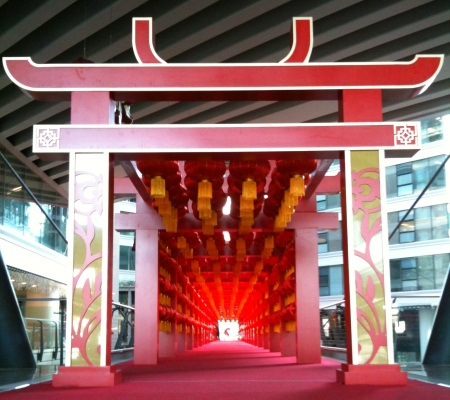
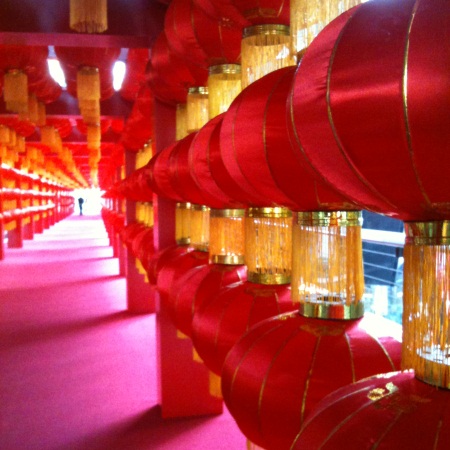
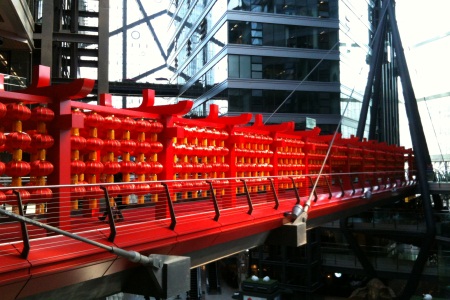

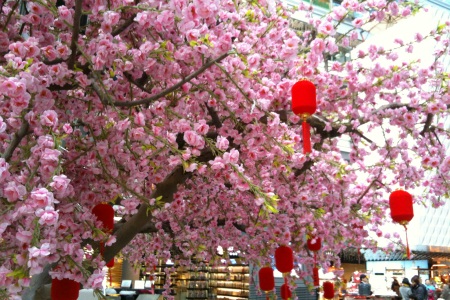
An architectural landmark to Beijing and home to the most luxurious retailers available; Parkview Green mall exhibited the most energizing and celebratory displays throughout the entire city's retail complexes, with goat sculptures and a lantern bridge flowing across the building.
2. Camille Fournet
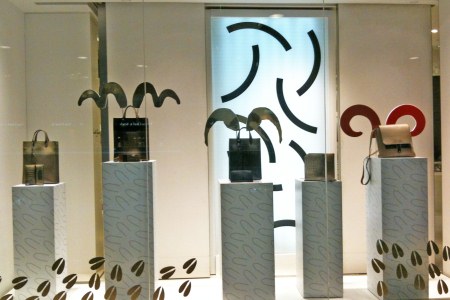
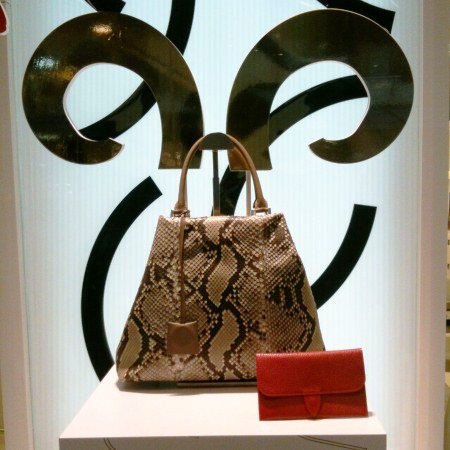
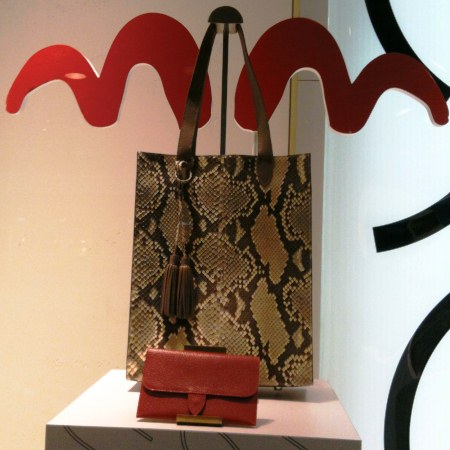
Camille Fournet took a unique approach to their retail design, applying goat horns to amplify focus on their handbags.
1. Bottega Veneta
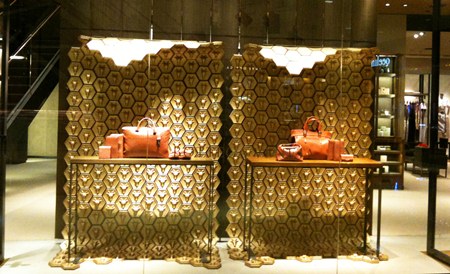
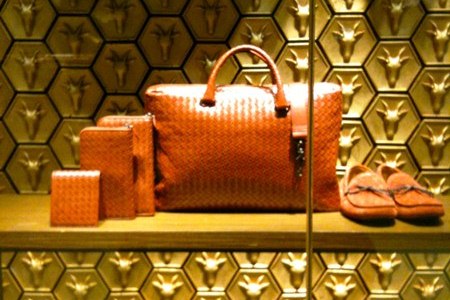
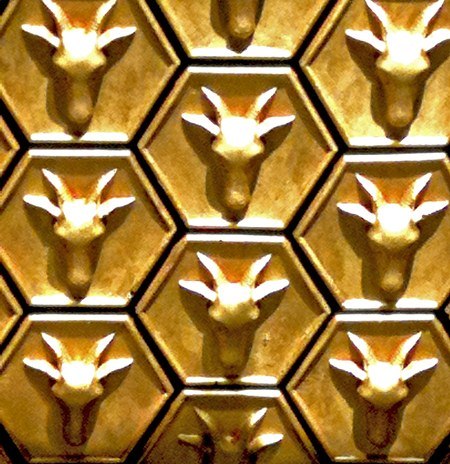
Bottega Veneta demonstrates how a prestige brand can maintain an elite image through a themed window display. With goats molded into rich gold tiles, this ingenious design radiates luxury placing them at our number 1 spot for the best Beijing retail storefront design for Chinese New Year of 2015.
> back to top of page

A Must for Survival: Online-to-Offline Retailing in China
February 6, 2015
With more than 632 million internet users and around 520 million smartphone owners in China, there remains no doubt that the digital world is an integral part of the lives of Chinese consumers. Foreign retail brands that want to survive and expand their presence in mainland China need to start fusing digital strategies with existing retail design concepts to bring the brand's shopping experience to a whole new level.

1. What is Online-to-Offline retailing?
O2O (Online-to-Offline) retail strategy is defined as a plan of action designed to simultaneously integrate online assets into brick-and-mortar stores in order to provide a consistent brand image across all channels and from a global perspective in order to ultimately increase sales. The goal is to use online marketing strategies to drive customer traffic and purchases in physical stores and vice versa.
2. The importance of brick-and-mortar stores
Despite the fact that consumers retail habits are evolving in being more tech-focused, with Chinese consumers "show-rooming" 26% of the time (IBM data) they spend in stores. Retail brands need to remain present in the offline world by re-defining and re-establishing the image of brick-and-mortar stores.
Retail stores, especially flagship and concept stores, remain a vital branding and sales tool for all brands. Only a physical space can offer a fully branded customer experience where consumers can see and touch the products in a branded environment. A consistent brand and visual identity across all marketing channels and implementation of these aspects into the store design are key to promoting customer loyalty. While digital channels offer convenience and additional information, consumers visit and purchase in store because of the multi-dimensional brand experience. This includes the testing of products and the customer service. In addition, customer loyalty schemes such as VIP customer cards and occasional VIP customer events have proven to be very successful in binding customers to specific store locations and promoting regular return visits.
Retailers need to see technologies as a means not only to survive offline but also as a strategic long term investment into their positioning in the market. Ideally this is implemented by creating an exciting digital experience in the retail store and providing services that cannot be offered online. A famous department store in China, Lane Crawford, has managed to successfully execute a digital feature in celebration of their first year anniversary. Lane Crawford's flagship store in Shanghai was transformed into a mobile interactive environment where consumers who had downloaded the appropriate application onto their smartphones could view exclusive content when scanning different signs.
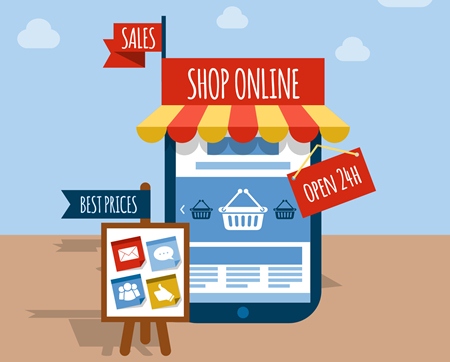
3. The key technologies
The key in implementing digital features in retail design concepts is to use them as a creative channel to showcase the brand's personality and aesthetics. Here are a few digital technologies that can be applied for many premium and luxury brands in cities such as Beijing or Shanghai.
1) In-store Wi-Fi: Consumers connected to the free Wi-Fi and who have previously downloaded the brand's mobile application could receive messages regarding in-store promotions via push-notification.
2) QR Codes: Scanning these signs applied on or besides displayed products could direct consumers to a video on the brand's website that shows how the product works.
3) Mobile Application: By May 2014, 65% of the Internet users in China were using WeChat to scan QR codes, share their experiences with friends, follow brands and purchase products. Creating a WeChat account can help retailers to keep their customers updated on new products and promotions.
4) RFID (Radio Frequency Identification) Sensors: Having sensors that trigger the display of a selected collection on an LED screen when consumers are near a certain area of the store, this can make the shopping experience surprising and enticing.
5) Interactive LED display: Consumers can virtually try on different products, save their preferred look on their smartphone and share it with their friends on social media before purchasing an item.
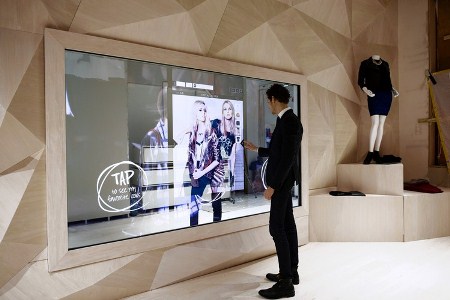
Source: the wall street journal
4. Advantages of online-to-offline retailing
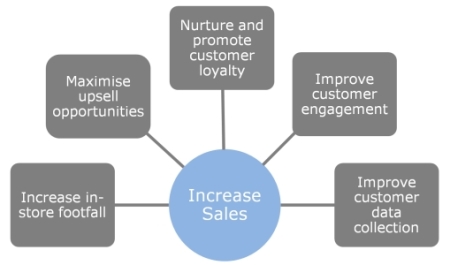
At 5 Star Plus Retail Design, we believe that integrating digital solutions into your retail design concept will be beneficial for the brand's positioning in the long term while effectively increasing the brand's retail revenue. In addition, retailers will have more control about the brand's online and offline image.
Here are 5 of the most important reasons why retailers need to implement digital strategies into their store:
1) Increase in-store footfall: Creating a buzz for a new product launch by promoting customer interaction with the product and asking consumers to share their experience on social media. This is done via a hash tag created specifically for the event and will attract both new and loyal consumers into the physical store. Measuring the impact of a retail design concept is very important for managing its success; you can read more about The Importance of Measuring Retail Design here.
2) Maximize upselling opportunities: A tablet next to the displayed product can play a video showing customers how they can pair the item with another fashion piece in the store.
3) Nurture and promote customer loyalty: Designing a mobile application where customers can track current store promotions and personal loyalty points can help consumers to shop for certain items in the store and others on the e-commerce website. Social media campaigns need to include information about promotions designed to drive customers into the store rather than only posting general news about a new collection in order to again promote in-store sales and performances as well as customer loyalty.
4) Improve customer engagement: Offering a consistent brand image by connecting digital and in-store services can really boost customers to engage with the brand on an online and offline basis.
5) Improve customer data collection: Brands need to collect customer information for data mining, analysis and adjustments of the marketing strategy, as well as for customizing promotions to push sales. Retailers can now gather more information about their online customers, via their e-commerce website or mobile application, and motivate these consumers to shop in a physical store. Information collected generally includes geographic and gender-specific data, the pages and items that were browsed on the retailer's website/mobile application, how many minutes were spent online, and upcoming birthdays. Brands can use this information to drive online customers into physical stores by simply sending an email with a discount on that specific item that the customer has been searching for. The key here is to use existing information in a more effective way.
To sum up, online-to-offline retailing is a must for both high-end/luxury brands as well as mass retailers. Brands that do not embrace digital technologies in a strategic and future oriented way and as part of their overall retail and marketing strategy will lag behind and not survive in the long run. New technologies should be implemented in a creative and unique way in stores to make shopping a fun, dynamic and enticing experience. When it comes to the consumer experience no idea is too big!
> back to top of page

2015 Top 10 Store Design Trends
January 30, 2015
2015 is finally here and we, at 5 Star Plus Retail Design, wanted to share with you our top 10 trends in store design for this year. These trends are true for retail stores in major cities in China such as Beijing and Shanghai, but are also evident in other places.
1. Hi-Tech
LED screens showcasing the collection on the runway, tablets in the stores for customers to browse products and interactive window displays are just some of the technologies used in store designs by forward looking brands. Brands who want to survive need to integrate digital strategies with their brick-and-mortar stores, not only to avoid "showrooming" but to create a consistent brand image across all channels, drive in-store sales, and promote brand loyalty. One brand known to be one step ahead in terms of O2O (online-to-offline) strategy is Burberry, and others are quickly following.
2. Pop-Up Stores
More and more brands are using pop-up store designs as this is a very effective way to create a buzz. This is achieved by implementing very conceptual or creative, eye-catching design elements that are sometimes not practical for retail stores. Pop-up stores are also a very cost-effective way to test out new territories or launch new product collections, since the financial investment is kept to a limit.
3. Back to Nature / Sustainability
Many brands like Aesop or Starbucks are making sustainability or authenticity of materials the key philosophy of their store design concept. This trend of using natural materials, textures, or a natural theme for the concept is observed in a broad range of special retailers and F&B chains.
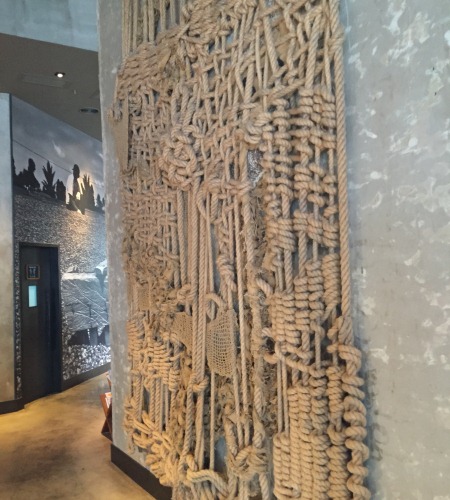
4. Futuristic Displays
To create a more futuristic and trendy store design, luxury brands and medium-positioned retailers are opting for unique shapes such as curvy or streamlined customized fixtures for clothing rails as well as product display cabinets for shoes and bags. Examples of brands known for their futuristic displays are Marni, Alexander McQueen and Stuart Weitzman.
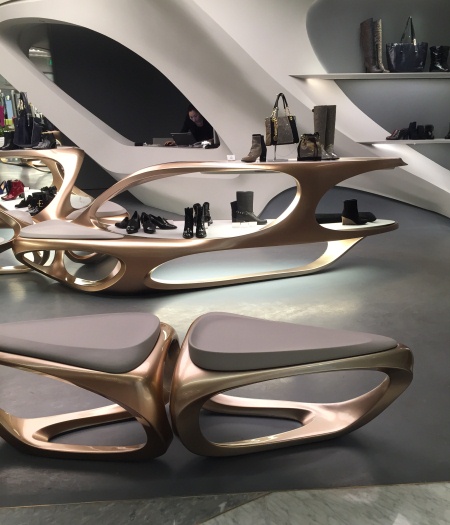
5. Mix of Materials & Design Styles
More and more brands take the bold step of launching a new store design concept that is based on an eccentric mix of materials which are traditionally not combined. This allows retail brands to express different facets of the brand image and distinguish themselves clearly from other competitors. An excellent example here is Kiehl's which surprises customers with a store design comprising of industrial elements (brick wall, neon), premium accents (chandelier and marble), natural features (wooden display furniture) and clinical touches (uniform of the sales team, skeleton, almost-clinical product packaging).
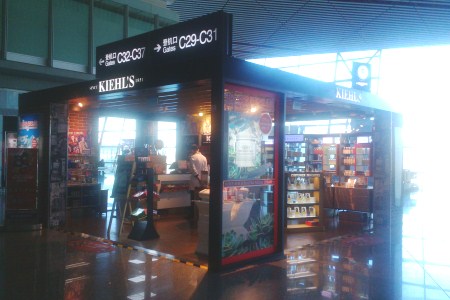
6. Local Design Elements
We have worked with a range of international brands that all decided to integrate Chinese features into their adapted global store design concept. Adding local elements will add context to the location of the space and increase acceptance of local consumers. Design features which are often applied to the store are Chinese stools, display cabinets and screens, ancient door elements as well as ceramics on display.
7. Warm Color Palettes / Femininity
Marsala is the color of the year 2015 and can be perfectly combined with other warm color tones such as taupe, olive and grey. Grey in general will make a space look more elegant and premium.
In the past years, many retail spaces looked a bit cold because of their combination of neutral white lighting, white walls and other cool color tones. Recently, a number of brands are (finally!) realizing that the majority of their customers are women and that in order to have them stay in the store and try on products, a warm and feminine atmosphere is required. Besides an adjustment of the color scheme, soft furnishings and textures are tools that can be applied to achieve a warm store design concept.
8. The New Metal: Copper
Copper seems to be the metal that is slowly replacing gold or silver. Retail brands can include this rosy ashy metal into their store design with clothing fixtures, pendant lamps, product display tables or even wallpaper designs. Having touches of copper on a white backdrop, with grey furniture accents and wood flooring can make a store feel luxurious and modern.
9. A Touch of Luxury: Marble Effect
Many luxury brands are using artistic painting techniques to create a marble pattern effect on walls, floor tiles and even onto counter surfaces. This in turn makes the store chic, modern and trendy. Retailers on a budget can use real marble on a few selected surfaces, tiles, wallpaper or rugs to obtain this effect.
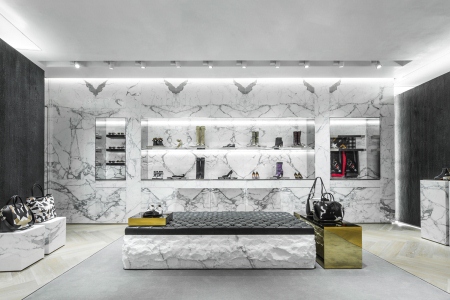
Givenchy HongKong, Source: Givenchy
10. Industrial Style
Going back to basics with monochrome colors, exposed steel beans, big windows and concrete flooring creates a sense of depth and communicates a certain authenticity of the brand. In addition, products usually stand out well with an industrial background.
> back to top of page

The 6 Main Purchase Motivations of Chinese Luxury Consumers
January 20, 2015
In China, a country with sales of luxury goods of 22 billion euros in 2014 and still increasing, it is important for international luxury brands to understand the main purchase motivations of different Chinese consumers for successful branding strategy and marketing sales. So why do Chinese consumers purchase luxury goods?
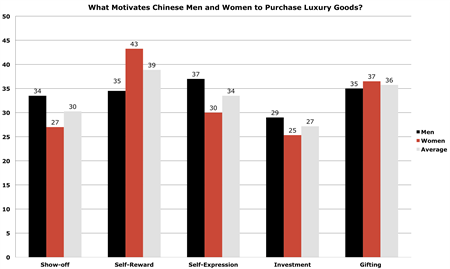
Image adapted from Global Reach of China Luxury, a KPMG Study
Our retail consulting team in China has observed six purchase motivations for both Chinese men and women consumers in different tier cities in China.
1. Boasting
In 2008, 70% of the Chinese consumers saw luxury brands as a means to demonstrate their status and success. However today still both Chinese men and women consumers buy luxury items to impress their peers as these products make them feel special and increase their confidence. Aware about "losing face", they also want to confer a feeling of success among their family members and friends.
Consumers tend to have planned purchases by buying popular luxurious products that are known and appreciated by the minority. Why is boasting such an important purchase motivation? Chinese consumers consciously think that the more famous the brand is, the more social and financial acknowledgement they will earn. They are also not frightened to publicly display social climbing through material.
2. Self-Reward
In the last years, we have been observing an increase of Chinese consumers spending more money on self-indulgence as well as self-enjoyment in search for luxury experiences and these numbers are still on the rise today. A recent survey from KPMG showed that 53% of the respondents want to enjoy the high quality through luxury experience. These consumers pamper their success by purchasing luxury goods for their own contentment. They are willing to experience luxury by purchasing items that are emotionally meaningful to them such as cars, hotels and resort stays, restaurant visits and spa treatments. These modern Chinese consumers are seen to have more hedonistic tendencies, which were only in the past linked to western culture. Consumers motivated by self-reward tend to have planned purchases as well as impulse buys however marketers need to deliver on emotive attributes too when it comes to touching this segment of consumers.
3. Self-Expression
Chinese consumers are now more aware of different niche and uncommon luxurious brands; 90% of modern Chinese women bought niche luxury brands on their last trips abroad. These Chinese consumers use these items as a way to reflect their personality and express their individuality. These trendsetters who mix and match different luxury brands are very fashion-forward, young, knowledgeable and work as white-collars. Consumers who are self-aware have a certain snobbism when it comes to luxury goods, meaning that they planned to spend less on product that the majority of consumers are buying. They are searching for unique, limited editions and curated pieces from popular luxury brands as well as less famous products.
4. Investment
Many consumers in China believe that buying luxury goods is an investment for the future, as its value will increase; this is true for watches, wines, jewelries, antiques and arts. The luxury market in China is growing in sophistication where more local consumers, around 29% in 2013 by KPMG research, are able to appreciate the heritage and history of a luxury brand. Moreover collecting unique luxurious items is also a way to reflect personal taste. These purchases are mostly planned as finding and collecting distinctive artifacts requiring a considerable amount of time and expertise.
5. Gifting
Gifting in China has been identified as an important motive in purchasing luxury goods and accounted for more than 20% of luxury consumption in 2011 according to Bain & Company. The motivation of buying luxury goods for special occasions or holidays is a planned purchase. Besides wealthy consumers purchasing luxury goods for family members, gifting to employees, colleagues, superiors, business partners and friends, promotes harmonious business relationships in China.
Below you can find the top 15 luxury brands that are chosen as gifts by women and men in 2014 in China.
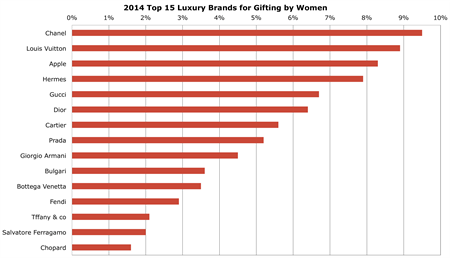
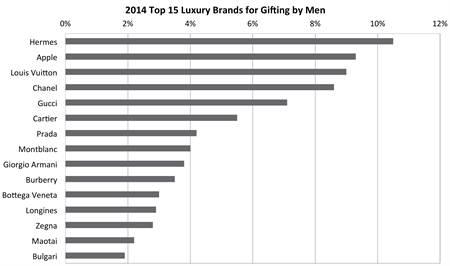
Images are adapted from Hurun Report Chinese Consumer Survey 2014
6. Stress-release
In a recent research by McKinsey, Chinese luxury consumers show the highest tendency to make impulse buys against their global peers, around 40% of the people purchased luxury goods within one day of wanting it. Women consumers generally buy luxury goods out of an emotional reason, while men seldom make emotional impulse purchases. These spontaneous consumptions are desires that need to be satisfied directly. Retail therapy is a way for them to lift negative feedback such as depression, sadness or anger. After encountering a stressful experience that challenges their self-image, these consumers tend to distract themselves by purchasing luxury goods in order to regain positive emotions. However many consumers also use luxury products to protect themselves against potential danger to their self-image. They become selective in what they would like to purchase prior to future challenges. For example, a woman would buy an expensive bag out of stress of feeling perceived as unsuccessful when meeting old friends.
Summary
While in the past showing-off was a very important purchase motive, this purchase reason has become less significant for consumers in big cities like Beijing and Shanghai. The present luxury retail market in China is more refined where many are appreciating the heritage and image of international luxury brands as perceived through the store design or advertisements that are in line with their personal aesthetics and values. In fact we are observing that Chinese consumers in different tier cites are getting more emotional, a huge factor that motivates many consumers in self-reward, gifting and self-expression.
In order to touch consumers on emotive attributes it is important for brands to create campaigns that convey a certain feeling or personality when owning luxury items, a store design that is appealing to their targeted audience, VIP events for loyal customers as well as training store teams in being meticulous to support consumers at the point of sale.
In general consumers in China are not homogeneous in their motives for buying luxury brands. Some might purchase for impressing others while others are buying as a stress release. Whatever the motives are, luxury takes different forms for various people and is dependent on the experience of the consumer him- or herself shaped by the brand's identity and image.
> back to top of page

Who is the Chinese Luxury Consumer? 8 Customer Profiles - Part 2
December 29, 2014
For this second part you will find the last four of the eight customer profiles in China.
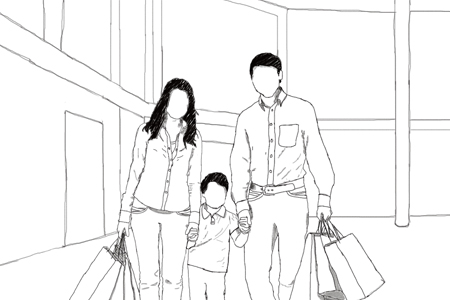
5. Little Emperors
These young brand conscious consumers are the consequence of the one child policy with six sources of disposable income (parents and grandparents). It is known that half of the income of urban Chinese families is spent by the youngest member. The older "little emperors" who are around 30-35 years old and have a salary, still try to research the best for themselves, resulting in luxury-conscious consumers that expect the best in products. They are also not shy about demanding it or flaunting it, as luxury goods are a strong social symbol in China.
6. White-Collars
The number of highly educated white collars working for big corporations in urban China is on the rise with a monthly income of around 6,000 Yuan. These consumers are mostly young, sensitive to luxury brands and trends. While their income is relatively respectable they can't afford to spend all their salary in one go. This segment consists of male and female focusing on the primary level of luxury consumption such as cosmetics, perfumes and small leather goods.
7. Connoisseurs
Connoisseurs are collectors of valuable items. Male connoisseurs collect watches and expensive furniture while female connoisseurs collect jewelry and bags. These consumers, when shopping, search for unique and heritage pieces with remarkable craftsmanship. They are opinion leaders among their friends and gain a high level of satisfaction from luxury collections.
8. The Web Luxury Boomers
With 632 million internet users in China, e-commerce is on the rise, offering new and additional opportunities for luxury brands. These web luxury boomer shoppers are between the age of 20 and 50, have middle to high income, and have access to internet via computer, tablet or smartphone. They search information online about luxury brands (websites, forums and social networking sites) at least once a month. These web luxury consumers tend to buy luxury products based on brands, product design and quality. Some search online for a luxury bargain others won't even be bothered about the price. While many Chinese people are purchasing luxury goods online, others are still a bit skeptical over product authenticity, safe payments and a lack of e-commerce regulations.
> back to top of page

Who is the Chinese Luxury Consumer? 8 Customer Profiles - Part 1
December 19, 2014
The luxury business in China is still going strong with consumers between 20 and 50 years old with diverse backgrounds, lifestyles, incomes and jobs. For this first part you will find below four of the eight customer profiles of luxury goods in China.
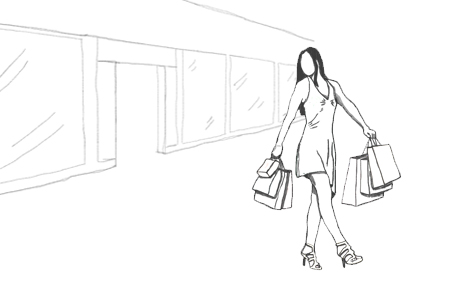
1. The Officials
Historically consumption of luxury goods in China was targeted towards males, especially officials which comprise of party members, politicians and government personnel. While these consumers were one of the first luxury consumers, it has in the last 10 years declined due to the anti-corruption efforts of the Chinese Government.
2. The Traditional Rich Business Elite
In 2013, FORBES estimated that China had 157 billionaires and the numbers are still increasing. These rich elite consumers are generally male, more than 40 years old, are fairly concentrated in large urban areas and are successful entrepreneurs and business owners with a lot of "guanxi" (professional relationship). This segment has been consuming luxury goods for a long time and pursuing the best high-quality products available on the market.
3. The New Luxury Shopper
This is a mixed segment comprising of business people, entrepreneurs, and celebrities who are newly rich. They are slightly younger than the traditional rich business elite shopper however they are willing to spend a high amount of their earnings, rather than saving for their old age, in quality products to suit their extravagant lifestyle. These modern luxury consumers are well educated and can tell the difference between authentic and fake brand products.
4. Independent and Empowered Women
While in the past, 90% of luxury goods in China were purchased by men. Women are now becoming more financially independent, spending more on luxury goods. This segment consists of business woman, celebrities and newly rich wives. Their buying power is still rising as women are outperforming men in academic achievement, career progression and entrepreneurship.
> back to top of page

China World Shopping Mall Window Display Designs - Christmas 2014
December 17, 2014
Stores in China World Shopping Mall, Beijing, have finally put their Christmas decorations up convincing customers to partake in this season of giving and trying to make Christmas shopping just as important as it is in the West.
Most international luxury brands in China created their Christmas window display designs in a chic yet minimal way, showcasing their unique offer of luxury goods. The main purpose for having such a simple window display design is to position each product as a centerpiece of their brand's identity, an effective marketing strategy to reinforce their branding as well as reminding customers about the quality and remarkable craftsmanship of each of their products.
What we have observed as the main trends this year were extra-large decoration objects such as Christmas ornaments, ribbons, and gift boxes arranged around the products, large shiny and high gloss surfaces mainly in the colors gold, silver and red, and animal elements related to the season.
Below are a few Christmas window display designs in China World Shopping Mall that have caught our eye.
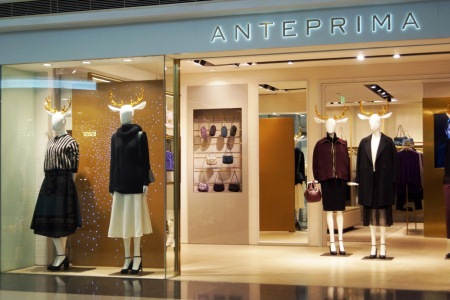
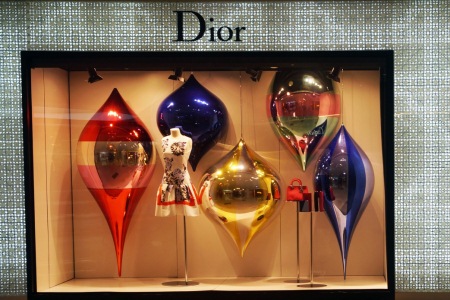
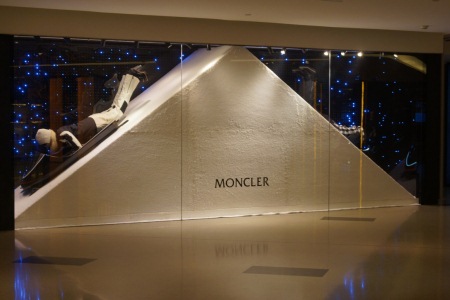
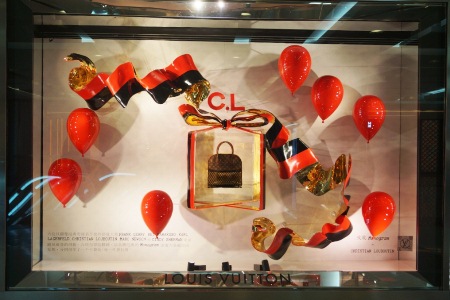
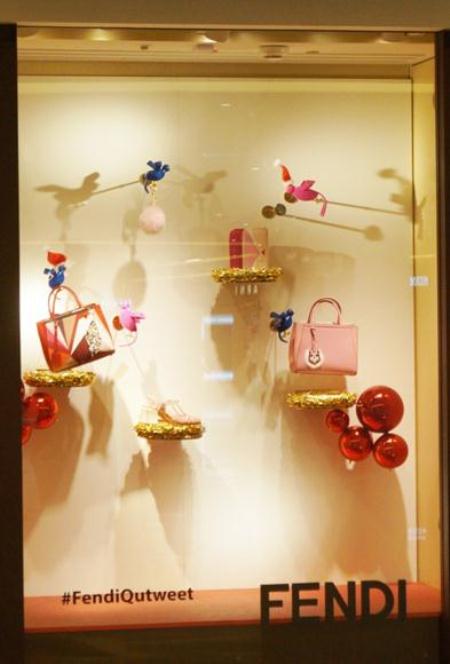 > back to top of page
> back to top of page

2014 Christmas Store Window Displays from Around the World
November 27, 2014
Christmas is just around the corner and stores in China and around the world have started to decorate their window display for this joyous occasion. While Chinese retail stores are welcoming the holidays with a more minimal retail design with hints of glitter and sparkly decorations, international retail stores designed colorful, high-impact Christmas window display concepts to attract passers-by. Here are some of our favorite Christmas store window displays from different cities around the world.
1. Window Displays in New York
Glamorous lighting and magical decorations make the Christmas window displays of New York's stores some of the best in the world and not to miss.
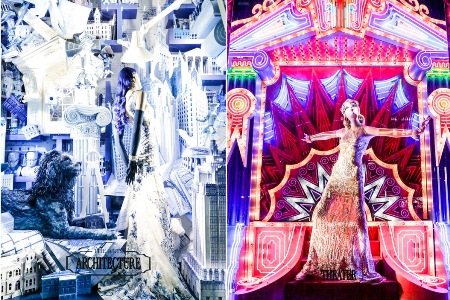
Bergdorf Goodman, Source: Harpers Bazaar
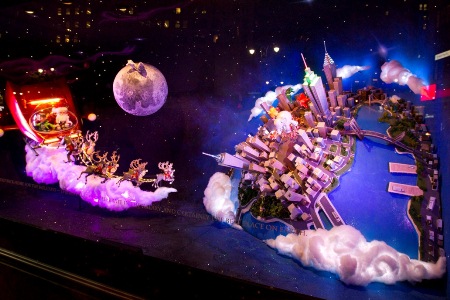
Macy's, Source: New York Post
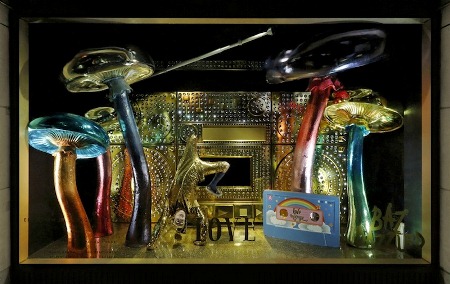
Barney's, Source: Barney's
2. Festive Store Window Displays in London
London's retail stores translated the art of storytelling to life into a three dimensional design for some very enchanting Christmas store window displays.
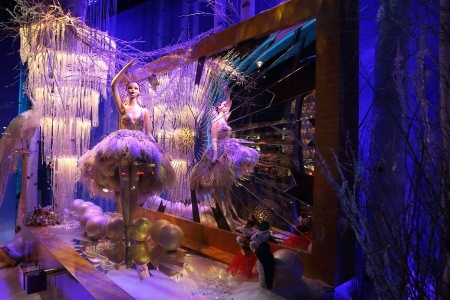
Harrods, Source: Harpers Bazaar
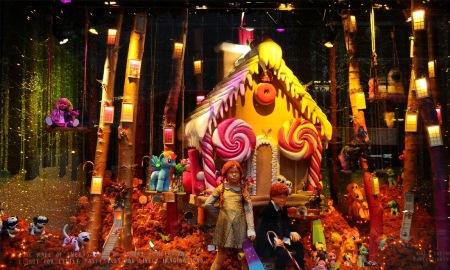
Selfridges, Source: The Guardian
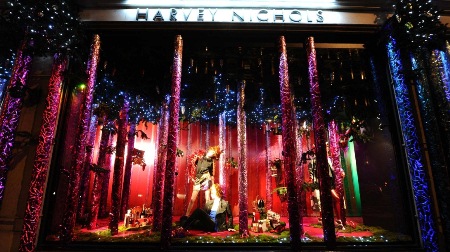
Harvey Nichols, Source: Harvey Nichols
3. Store Window Designs in Paris
There is a mix between playful fun and classic feel to Parisian stores window displays.
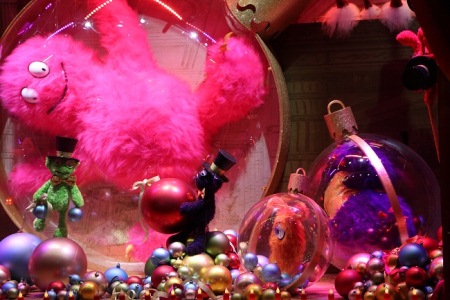
Galeries Lafayette, Source: Galeries Lafayette
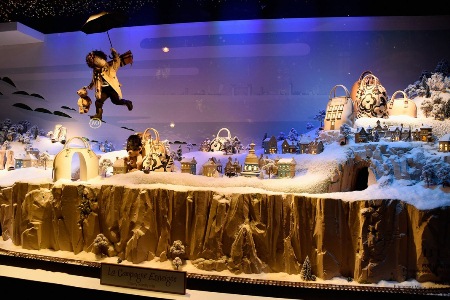
Printemps Haussmann, Source: Harpers Bazaar

Le Bon marché, Source: Le Bon Marché
While this season's Christmas window displays are being admired by people on the streets, big department stores are already starting to think about the themes for next year's Christmas store window designs. It has become a tradition for department stores to showcase their market positioning and compete through a unique store window display for each season, inspiring and enticing young and old while effectively drawing people in their stores.
> back to top of page

What Is Branding?
November 25, 2014
Branding has become a fashionable word that seems to be applied to a broad range of marketing and design activities, from advertisements to store design but what does branding really mean?
History of Branding
The practice of branding first started with the marking of cows that showed ownership of individual ranches then gradually transitioned to become symbol to distinguish manufacturers from their competitors. Nowadays branding is not just the process of applying a logo to a company's products or services it also means having good brand management to ensure brand quality by focusing on brand differentiation and recognition.
Branding A Marketing Strategy
Branding is all about embellishing your customers' expectations and perceptions of your brand's identity, what it is known for. In other words, branding is about creating a name and an image through a diverse medium. The aim here is to differentiate from your competitors while establishing a unique presence in the market by offering the only solution to your customers' specific need or problem.
Knowing when, where, what and to whom you are delivering your brand message is key in attracting new customers as well as building loyal consumers. From distribution channels, such as store design, to visual and verbally advertisements all this are aspects of branding that your company should not neglect in your marketing strategy.
Four Good Reasons To Do Branding
1) Promotes brand recognition: From your logo to your store design every brand wants to be noticeable and be remembered, for example when you see a robin egg blue box you directly know that it is Tiffany & Co.
2) Increases sales: One of the purposes of branding is to assist in sales by making the item you are selling the most desired one.
3) Adds brand value: The essence of branding is to build a strong brand that will add value to the concept, product or service that you are selling and thus allowing to charge more for your brand than for a similar item on the market.
4) Creates emotional connections: Branding can help your brand appeal directly to your customer's emotional needs. You want them to feel good when they buy your product or service and thus making them wanting to engage more with your brand.
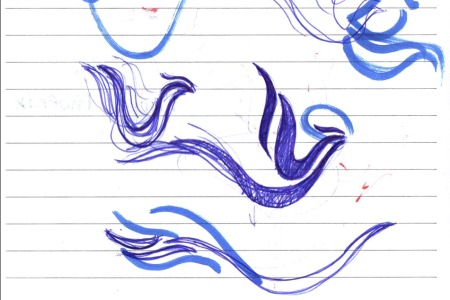
The Evolution of Branding With Social Media
Branding is indeed very cost center however having the possibility to use social media as a branding tool is a great alternative that is practically free. With the use of social media you can have a personal relationship with your consumers. Communicating your brand's identity directly to your customers has never been this easy. It is a fast way to update your shoppers about the latest sales or new store openings.
Nowadays sharing our daily life via social media is a routine and feeling integrated in a community where customers perceive the same value as your brand is key to a successful presence on social media.
Branding enhances the communication between your brand and its customers by creating a trustworthy relationship. Thus consider how you are going to convey your brand's message in every aspect as it will reinforce your brand's presence.
> back to top of page

5 Guidelines For Creating A Strong Brand
November 20, 2014
You want to build a strong brand but don't know where to start? Here are 5 guidelines that you should incorporate throughout your brand's lifespan, from understanding your brand to engaging with your customers.
1.Be Clear On Its Purpose And Mission
When you start creating a brand you need to be clear about its identity and who they are not, who their consumers are and what differentiates your brand from others. There should be in fact a close connection between your brand's image and your customer's perception.
Answering to questions such as "What business am I in?" or "What makes my brand distinctive from others?" can help unlock values that your brand wishes clearly to convey to its consumers.
2.Be Consistent
You need to express your brand's message in the same way across all communication channels whether it is offline or online. It is also important to always stay true to what your brand's values are and what it stands for.
Showing your brand's true identity could be portrayed consistently throughout your retail design for example.
Aleybo is a brand offering colorful kitchen and lifestyle accessories. The brand is known for their design aesthetic and their bold colors. To accentuate Aleybo's characteristics we created a visual display and merchandising concept as well as designed the store's window display.
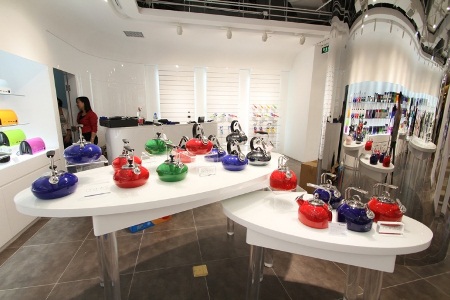
3.Build A Solid Relationship With Your Customers
Having a strong brand means being visible to your targeted audiences as well as always being there for your customer's needs. Therefore every brand should remain active in conveying their brand identity by engaging and interacting with their consumers. However, do not spam your customers about how great your brand is.
4.Be Interesting
Try to be unique and unexpected. Your brand should stand out from the crowd in order to have competitive advantages in the market and reflect what your brand is really known for. Every brand should also look for new and refreshing ways to articulate its promise or its brand message.
A branded gift when purchasing luxury goods could be a great way to make your customers feel appreciated. These gift items could be a simple cosmetic pouch or a key ring with the brand's name. We at 5 Star Plus Retail Design have designed a branded key ring for Ivanka Trump Jewelry Collection, a refreshing way to show their consumers about their brand's quality and their brand's identity.
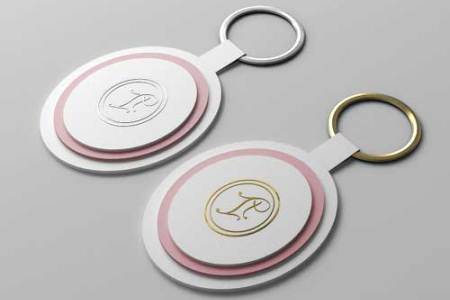
5.Understand Your Brand's Context
Timing is everything in business so planning for when and where you decide to launch your brand, your new advertisement or even your new collection is critical in grabbing your customer's attention.
With every context in mind you should always think of your customer's experience in every step of your marketing strategy from distribution channels such as retail design to visual/verbal communication.
Building a successful brand takes time and effort. Whether is conceptualizing your retail design or trying to convey your brand's message to your customers, don't forget to consider all of these five facets for creating a strong brand.
> back to top of page

Tafelspitz – an Austrian Culinary and Cultural Experience in Beijing
October 29, 2014
Tafelspitz is a well thought-through, sophisticated Austrian restaurant brand that offers high quality food and wines in a beautifully designed environment. The brand also hosts art exhibitions, wine seminars and cooking classes, all of which are organized by the incredibly hospitable Austrian owners Haoxin Qu and Walter Lampersberger, as well as head chef Alfred Krasser.

The top-notch Austrian restaurant is still evaluating a number of locations for its Beijing flagship store at the moment. Tafelspitz will be situated in a central Beijing area where Austrian food lovers and wine connoisseurs can have easy access and where the brand can unfold its full culinary and cultural potential.

We at 5 Star Plus Retail Design had the privilege to design the Tafelspitz restaurant. While the store design had to mirror the high end positioning of the brand through exclusive materials and surfaces, Austrian elements were applied in a modern and chic manner to showcase the origin of the owners and the cuisine. At the same time, the design concept had to cater to the retail design and consumer tastes of people from China and abroad.
Here is a glimpse of the store design:
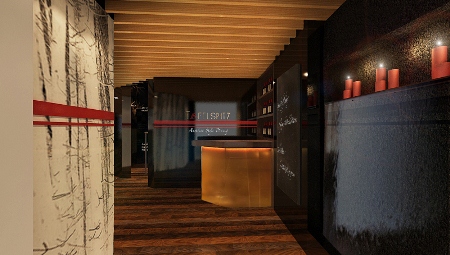
A black, glossy glass wall underlines the high end positioning and emphasizes the logo. Natural materials and a forest motif on the glass wall on the right are a reference to Austria's landscapes.
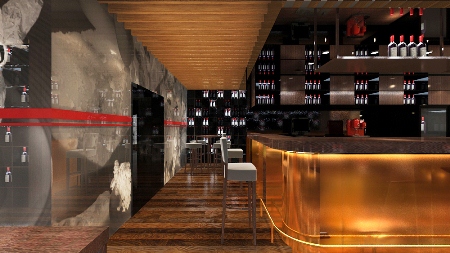
The bar area – we are looking forward to those cocktail parties!
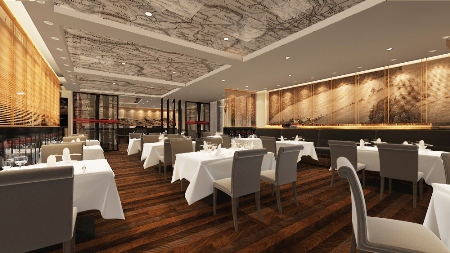
The dining area – classic, with a chic touch, and flexible enough to accommodate art exhibitions and other events. Part of the area can be closed off for VIP events.
With its high quality product offering, we have no doubt that this restaurant, along with the passion of the owners, the mix of cultural events and its exclusive store design concept will be highly popular in China.
Another update on Tafelspitz will follow next month.
> back to top of page

Retail Design Meets Art: Bring Your Store to Life
October 28, 2014
Designing a retail store is much like deciding on what products to stock. You have to consider your target audience, what will attract them and what they might be looking for. Customers today are looking for a unique and engaging experience when they go shopping; therefore retail stores have to consider ways to imprint on customers and potential customers in order to gain their custom.
The development boom of Chinese Retail Design
During the mid 1990's there were no such thing as shopping malls in China. Since then the enormous development boom in Chinese retail design has led to competition between the large cities of Beijing, Shanghai, Guangzhou and Shenzhen to develop the countries, or even the world's, largest and best shopping mall. This can been seen in the Chinese retail designs of its shopping malls, which have developed to places where people can come for a day out, as they include everything from children's play areas to art viewing. The combination of art and retail is becoming more prominent across the world as a means of customer engagement.
More than just a Mall
The K11 Art Mall in Shanghai is an example of a mall that is mixing luxury brands such as Burberry and Chloe with an art exhibition, by Claude Monet. As art and commerce mix within Chinese store design, the art is used as a marketing tool to lure customers away from the competition and into their stores.
The Parkview Green shopping mall in Beijing opts for a distinctive and interesting retail design, encouraging modern contemporary art and sculptures to be displayed throughout the mall. Although the shops are largely high-end expensive western shops, the addition of art makes the shopping center worth a visit for all people due to its unique, exciting and vibrant experience.
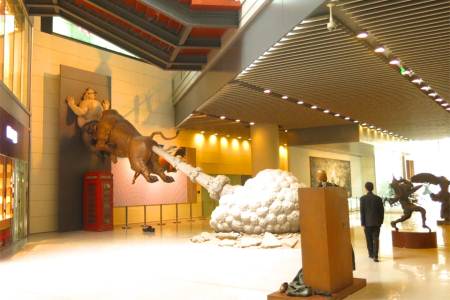
Source: JC REPORT
Hybrid Store Design
There are a number of designers and retail stores that have incorporated art into their retail design.
"The Converse San Francisco store blends lifestyle with apparel ". The store has been designed with the distinct focus on the street culture and aesthetics that Converse has come to be known for. "It has been expertly designed to be something of a destination rather than a shop".
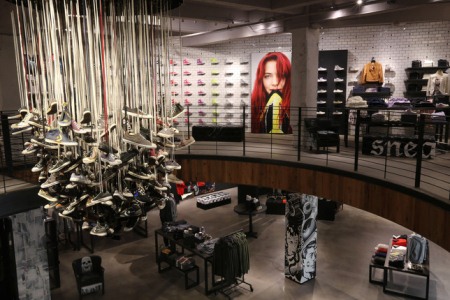
Source: CONVERSE
The Aksel Paris NYC men's shirt store transforms into an Art Gallery at nighttime. Pieces from up and coming artists are used throughout the store to display their garments, such as the orange 3D-printed, wave-like rack shown in the photo below, made by Gregory Okshteyn. Company CEO Yazid Aksas chose the pieces selected in the store as he thought that his European style men's shirts paired perfectly with the contemporary works on display. "You need to inspire people... A lot of people have been doing the same kind of retail for decades – you just put clothes on racks. This is a way for us to connect with the art community and people who enjoy anything creative" said Aksas.
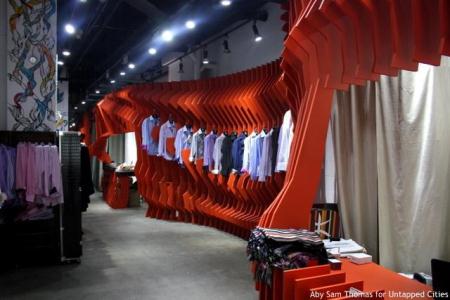
Source: TRENDHUNTER
Urban Outfitters aims to tell a story with their store designs, for example designer of their New York store, Ron Pompei, says that his inspiration behind the design was "a story of the streets of New York as they once were". Urban Outfitters store 'Space 15 Twenty' in Los Angeles incorporates vendors that complement the brand, installs monthly pop-up shops featuring different designers and hosts artists and musicians in its various courtyards and galleries creating a comprehensive brand experience.
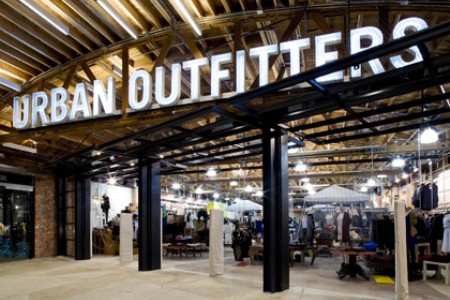
Source: SPACE15TWENTY
The Outcome
Overall, designing your store in a way that is going to have a profound effect on your customers is the ultimate vision. Using visual aesthetics to do this can leave customers in admiration of your ability to bring a store to life. This has the proficiency to stay with a person as a memory rather than a forgotten thought.
> back to top of page

High-impact Retail Design: The Importance of Creativity
October 23, 2014
In today's society, the need for retail creativity is becoming more apparent, making it a must in the store design process. This is no different for Beijing or the whole of China for that matter, as the desire to produce innovative store designs is becoming more and more necessary. One reason for this is as a result of today's multi-channel environment where all shopping can be done from within the home, which has lead to less consumers shopping in stores. Despite this, there is still the desire for a tangible shopping experience, resulting in increased competition between retail stores to capture the attention and create an experience that is valued and appreciated by the customer.
Creating a Buzz: Keep it Fresh and New
Word-of-mouth marketing has been sped up by social media to the click of a button. This means that good, but also bad news travels fast. Therefore retailers have to find fresh, new ideas to keep customers interested and create a buzz in order for people to spread the world. This can be accomplished by an enjoyable and unique shopping experience, which is achieved through strategic retail design.
Why is it important?
Let's be honest, when we shop we want the things we are looking for to jump out at us, making our shopping experience as smooth and stress-free as possible. As customers, there are two main reasons why we shop: because we need to, or because we want to. However choosing where we want to shop is usually based on how we perceive the store, and how the store makes others perceive us. If you want to attract young and hip customers, your store needs to provide a young, hip environment. If your store is looking to attract the older generation, then you need to design your store experience accordingly. In other words, design your store with your target audience in mind.
Some examples of shops that have used clever creativity to make themselves stand out are shown below.
Run Colors Sneaker Store – Poland has steered away from the usual sneaker store layout, with a refreshingly simplistic, yet colorful and affective store design.
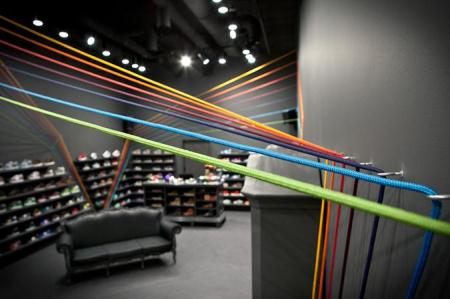
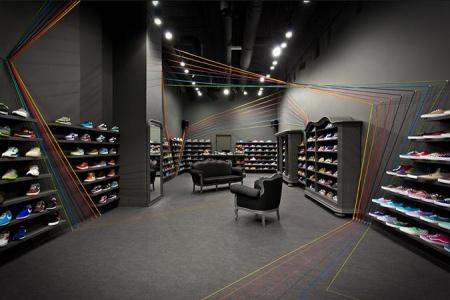
Source: THE COOL HUNTER
Kirk Original Eyewear – London opted for a more dramatic store design to display their eyewear. The plain black background and sparse furnishings were all intended in order for their products to be the main focal point of the shop. Designing your store in this way is low in cost and very affective.
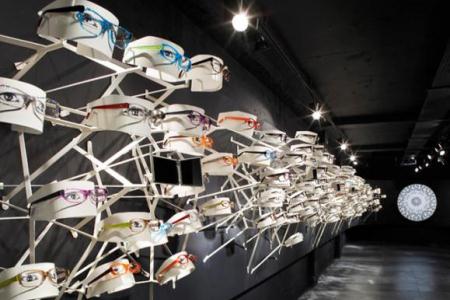
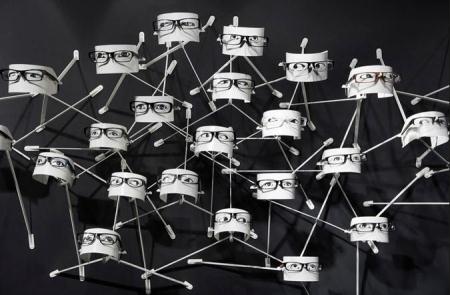
Source: THE COOL HUNTER
The HIT Gallery – Hong Kong incorporates an uncluttered and clean yet bold and daring store design, providing an all but ordinary shopping experience. The hypnotic styled flooring stands out against the sky like walls, becoming the ideal backdrop for the clothing sold in the store.
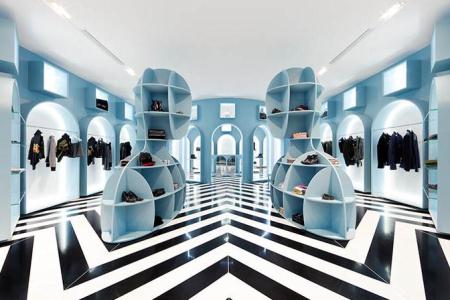
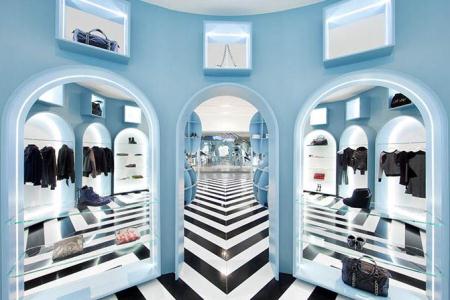
Source: THE COOL HUNTER
Let your design do the talking.
If you are able to make your retail design differentiate you from others in your industry, this will give you a competitive advantage. Good retail design is a stores best advertisement as it can draw customers into your brand experience, acting as a silent salesperson. Take Apple for example, the products that they sell are functionally similar to others in the market, however they are the dominant company in their field. This is down to the fact that they are not just selling a product; they are selling an overall experience and lifestyle.
Using your physical space to the best of its ability will help drive sales and customer engagement. This is done through an enjoyable, well-lit, easy to move around and a clear display of products in the store. It is important that everything about your store design reflects on your brand identity.
Also read our articleORA Creation launches new Store Design in Solana, Beijing to check out our creative work on a store design in Beijing for Ora Creation.
> back to top of page

Showcase: Branded Gifts for Luxury Brand VIPs
October 14, 2014
Every luxury brand faces the challenge of convincing customers of their unique positioning and the product value. For a number of companies, discounts and special offers are a key pricing strategy used to encourage sales. However, true luxury brands do not give discounts as it is seen to devalue their products. Despite this, they often realize the persuasion power of incentives that make consumers spend even more – a branded VIP customer gift!
While many Chinese consumers do not mind about paying a premium price for luxury goods, they want to feel appreciated and see their purchase valued by the brand. A branded pin, key ring, or cosmetic pouch, that is given when a transaction exceeds a certain amount, is a very effective means of stimulating and increasing purchase behavior.
These gift items are a low cost investment for the brand, however are perceived as a branded gift item by the consumer, making them feel special and increase brand loyalty.
What has to be considered when designing VIP customer gifts?
1.Brand Identity
The design needs to be in line with the brand by using similar colors, shapes and textures that are used for the brand's visual identity, store design and products.
2.High quality craftsmanship
If you offer ultimate quality and perhaps handwork with your products, the custom-designed gifts need to be of the same standard. When manufacturing in China, visit the factory and ask for several samples before awarding the contract to the supplier. Make sure, in advance, that products that come with the batch which are faulty will be replaced.
3.Appropriate Value
Do not offer gifts that compete with your product offering. Meaning that when you sell accessories, you should not give branded accessories as gifts. The expense of the gift has to be of lower value then the products that are being sold, but should be perceived as a complementary product.
These are the branded key rings that we designed for Ivanka Trump Jewelry Collection. Designed based on the brand's signature oval shape, found in the logo and key jewelry collections, the gift items offer a high level of quality visible in the regular sewing, cutting and type of leather. The production of 5 customized samples was necessary before fabrication of the final pieces in order to ensure maximum quality.
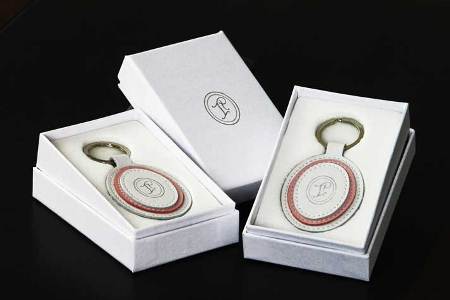
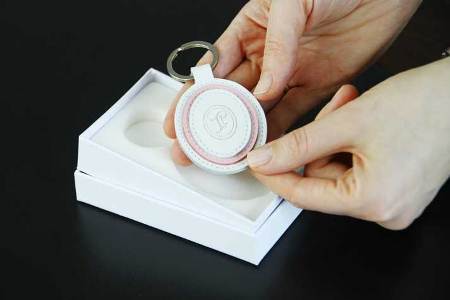
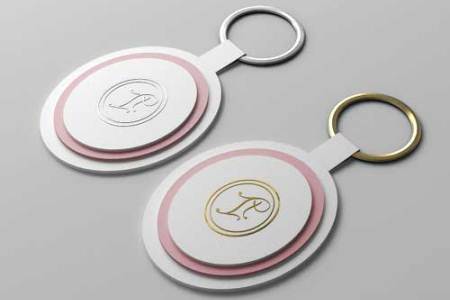
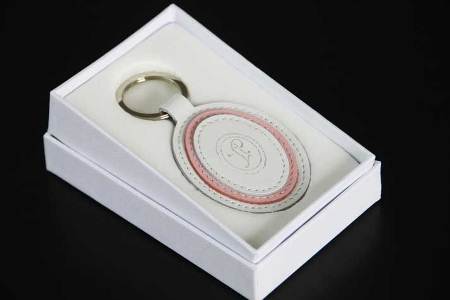 > back to top of page
> back to top of page

The Importance of Measuring Retail Design
October 11, 2014
Having understood the power of retail design, it is now necessary to understand the approaches to measure its success.
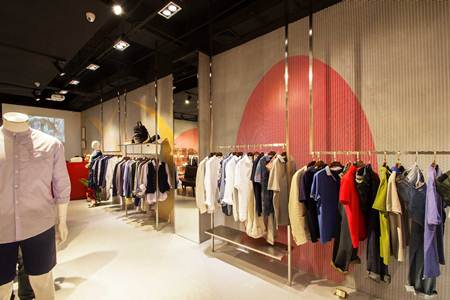
If You Don't Measure It, You Can't Manage It.
Improving a stores retail design is not purely just to enhance its own image, it is also with the intent to boost sales and increase customer loyalty. Therefore, measuring the outcome of a retail revamp is an essential way to analyze its success. There are five quantitative measurable recommendations for analyzing the success, they are as follows:
5 Measuring Methods
1.Return on Investment (ROI)
This is the most common way to measure the success of retail design. In its most basic form it can be calculated by:
ROI = Net performance / Net cost invested.
When conducting a retail facelift, it is essential to measure the ROI prior to and after the renovation for a valuable analysis to see how it has helped improve sales. It is advisable to monitor the ROI at least one month after completion of the facelift, as typically in the first two weeks a brand might experience a sudden surge in retail sales, due to the hype from the revamp or press coverage.
2.Footfall
Measuring customer traffic allows you to analyze the number of people that enter and walk by your shop. This provides you with an opportunity to determine key ideas such as purchasing opportunities that have been missed and those that have been achieved, which can be used as a method of analyzing how to encourage a passersby to come into your shop, increasing the overall footfall.
3.Average Transaction Size
Analyzing the average transaction size gives you the opportunity to see how many products customers typically purchase. From this, implementations can be enforced to improve this.
4.Average Visit Duration
Calculating the usual time spent by customers in your shop is a good way to examine whether the brand experience you are offering is an effective method.
5.Average Return Frequency
The frequency of returns is an essential way to look at the customer loyalty. The more often your customers return to your shop, the more loyal they are to your brand.
These figures can be used to provide an indication of the success of a retail facelift by being carried out before and after.
The outcome
Effective retail design can have a tangible and far-reaching impact on a business. Evidently, it is essential to go beyond merely furniture planning and functionality of store space, to a place where brands are able to establish an emotional connection and create a memorable experience for consumers.
> back to top of page

Swatch House: A Head-to-Toe Brand Experience
September 22, 2014
SWATCH HOUSE is the name of the watch maker's marketing concept that expresses the background of each collection. The launch of the new Swatch autumn and winter 2014 collection has been displayed through a house, in order to show the intended lifestyle of each collection. The brand experience took place at The Commune, a boutique hotel at the Great Wall. Requiring a complete re-design for the occasion, 5 Star Plus Retail Design were in charge to create all design work for the event.

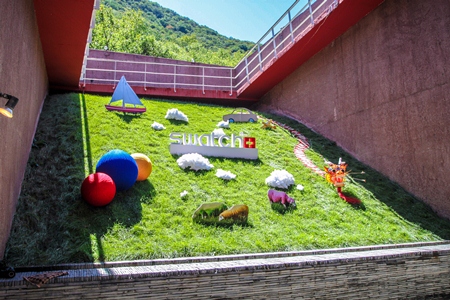
Different rooms had to be designed in line with the global marketing strategy to express the lifestyles of the four latest Swatch collections: Highland Mix, A World in Colors, Classic and Let it Shine. Their aim was to use color, creativity and the element of surprise to make a strong design statement.
The new Swatch collections are as eye-catching, creative and fashionable as we had expected: The Highland Mix collection takes a stand against the ordinary, featuring patterns inspired by optical illusions. A World in Colors displays all the vibrant spectrum colors of the rainbow, whilst attaining a few nostalgic designs.
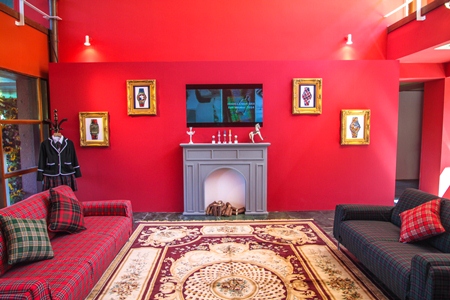
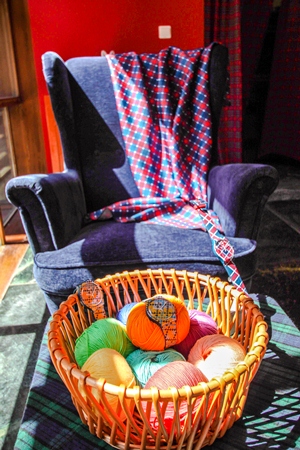
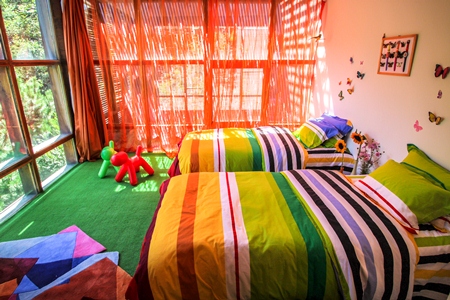
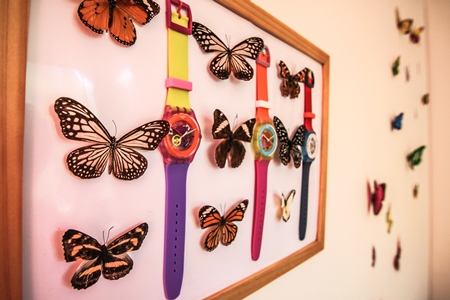
By contrast, the watches from the Classic collection are stylish, polished, yet kept in more neutral tones. Let it Shine items are elegant, glitz and glam pieces that are "fit for a queen".
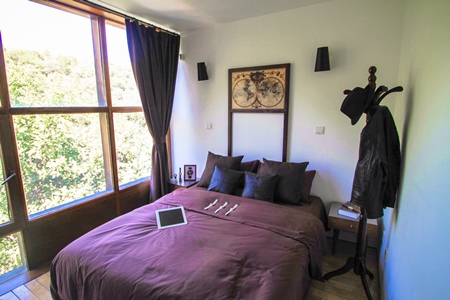
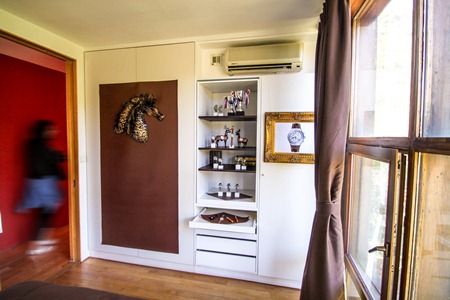
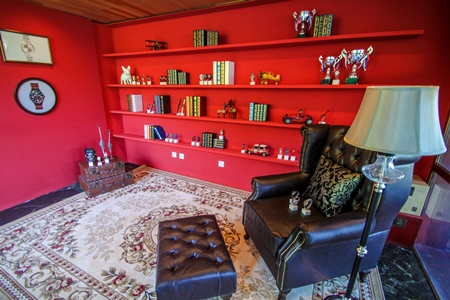
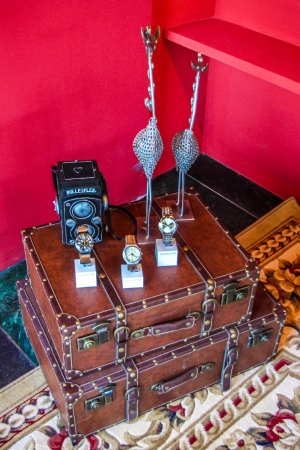
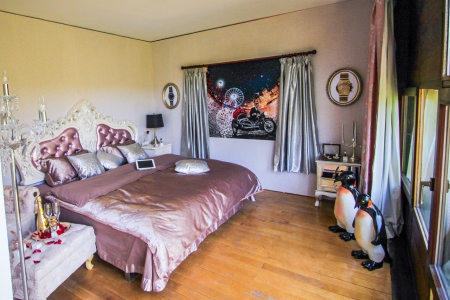
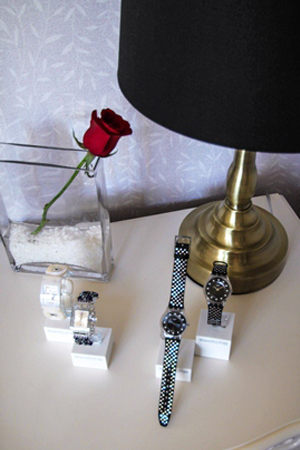
Is there any better way for a brand to convey their image and build momentum than through elaborating the design and lifestyle of their collections through to the three-dimensional space the products are displayed in? In this way customers can see, touch, feel, and often even hear and smell the brand experience, fulfilling both the tangible and intangible experience. Retail spaces that should be designed in such a manner include concept and perhaps flagship stores, exhibition booths and event venues.
The stronger the brand experience perceived, a more valuable consumer loyalty will be acquired. In the case of Swatch, who invited representatives from media and shopping malls across China to their product launch, their aim was to use color, creativity and the element of surprise to make a strong design statement. Attendants of the event were greeted by an authentic bagpipes performance and given a tour through the Swatch House. The product collections were revealed through presentations and videos, which were accompanied by carefully selected music.
Swatch proved once more that alongside selling some of the world's trendiest watches, it has developed a successful marketing concept through its brand integrity.
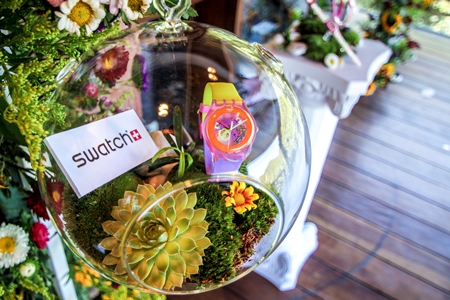
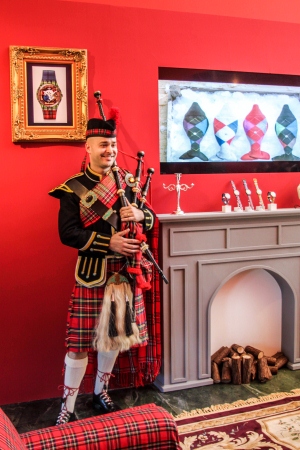 > back to top of page
> back to top of page

3 Steps for Creating a Branded Store Window Display
August 25, 2014
In Beijing, Shanghai, or similar cities, with a seemingly infinite number of stores, window displays are an essential component for retail brands to stand out from the crowd. The window display is the face of the store, sometimes even the first glimpse a customer has of the brand, and a large determinant in whether or not someone chooses to enter. Some brands say that 80% of their customers have mentioned in surveys that they entered the store because of the window display!
So what aspects need to be considered when designing a visual display and merchandising concept for a store window?
1.Attract customers from afar
People passing by should be able to spot the window display from a distance. The lighting, color and an eye-catching design all play a large role in drawing people in for a closer look.
Take this Gucci display for an example, they effectively use lighting, color and an entrancing geometric design to attract customers.
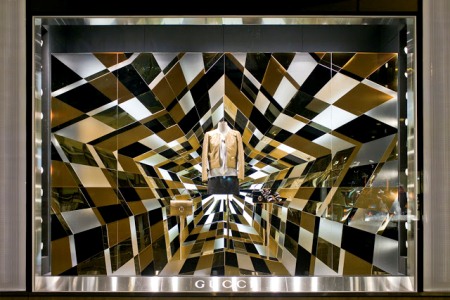
Source: Window Display - Photos of Window Displays
A second example is Louis Vuitton, where they embodied the theme of a circus in this fun, intriguing window display. At first sight, the life-size mannequin with its dynamic pose looks like a real person!
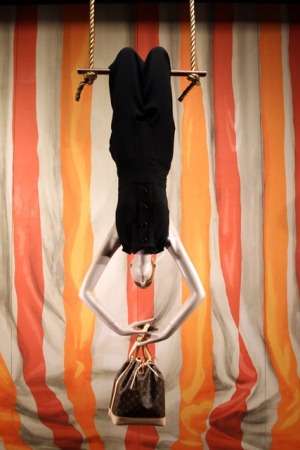
Source: The Mannequin Madness Blog
The display should be enticing and elaborate enough to cause the customer to stop and look at the window, but not too complex to the point where the display appears cluttered.
2.Stimulate customers to enter the store
Product Variety & Positioning
Once the display has successfully attracted the potential customers from afar, it should be further utilized to draw the customers into the store. This is achieved by strategically placing the merchandise. The product should be the central focal point, inspire and perhaps promote a certain lifestyle. By this way aspiring customers are encouraged to enter the store to see more.
In general, the display should both accurately indicate the price range and represent a good selection of the various product types the retail brand has to offer.The bigger the size of the store window(s), the greater is the opportunity for the brand.
Product Quantity versus Conceptual Designs
Well known retailers and luxury brands sometimes choose to minimize the palette of products on display in exchange for a high impact window design. One example is this Louis Vuitton display, which strategically makes the purse the focal point of this colorful exhibition, effectively letting the bag stand out to customers walking by.
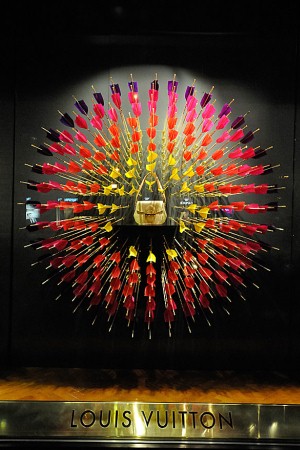
Source: Retail Design Blog
Another example is this Milan Armani store which tastefully promotes many pieces of their line through the window display. The design is not too cluttered; it allows their products to be the center point.
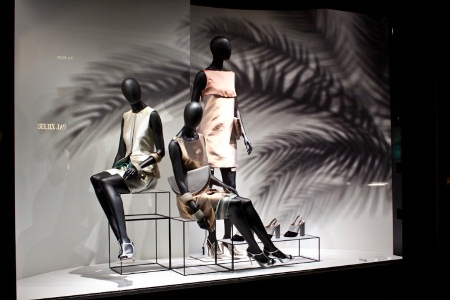
Source: Retail Design Blog
3.Promote your Brand
While the creation of a strong design concept and selection of the right product mix for your store window are important, there are a few more branding and marketing considerations to keep in mind.
Branding
The display is a form of branding and free advertising for the company and should therefore serve to promote the retail brand. When planning a visual display and merchandising concept for the store window, it is important ensure that the design accurately reflects the brand's values and style for a consistent brand image.
Target Customers
Besides this, other marketing requirements tend to influence the store window design as well. In China, a country which has an extensive number of market segments more so than anywhere else, the display should aim to attract the selected target group(s) of customers.
An example of a high quality window display design in line with their brand is Hermes, whom creatively used an Ostrich to display its Ostrich line of merchandise.
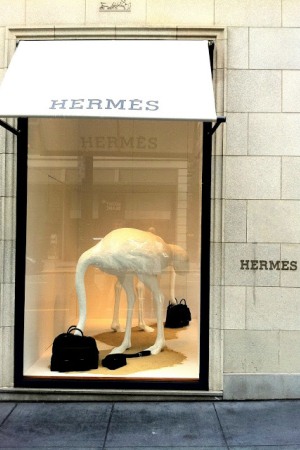
Source: The Two Dog Blog
There are a number of different techniques that can be utilized to form a unique product display.
Some highly effective display techniques are:
- Triangular grouping for an organized and effective display of a varied and broad selection of the merchandise.
- Color blocks for big impact areas or the display of promotional collections.
- Mannequins for big impact areas or the display of promotional collections.
- Combining 2D and 3D elements for a window design with depth that communicates a certain lifestyle. 2D elements can be graphics, posters, stickers, or a light box. 3D elements can be shelves, decorative objects, mannequins, and the products themselves.
Summary
Independently from what type of visual display and merchandising design you use for your store window, keep in mind the following three points:
1.Big Impact: Your main goal is to attract attention and perhaps even create a buzz.
2.Branding: Your design needs to accurately reflect the brand positioning.
3.Marketing & Sales: You need to display an appropriate selection from the merchandise – not too much and not too less. It is necessary to discuss with the marketing and sales teams about what collections and specific products are on a promotion or should be on display for other reasons before making a final selection.
Also read our article 5 Points on How a Well-Designed Signage Can Drive Customers into your Store to learn how a well-designed signage is important.
> back to top of page

Launch of our new Visual Identity!
July 31, 2014
A couple of months ago, we decided that it was time for a new, more consistent visual identity. We wanted one coherent design that would make a strong design statement.
Within the scope of the project were the update of the 5 Star Plus Retail Design logo, business cards, stationary including presentation and letter templates, as well as the email newsletter. The website had to be redesigned and become responsive.
Making a first and lasting impression to clients and business partners, the visual identity design had to accurately represent our positioning; it had to look professional, sophisticated, inspiring, bold and creative. The new visual identity and website are especially important as they would indicate the creative services we are providing, ideally by featuring a number of sketches and design work.
One of the major changes as compared to the old visual identity was the switch from a formal black background, to a white background for increased readability and a more professional look. The addition of selected design elements, such as different applications of the logo, as well some conceptual images, ensured a creative vibe of the website and documents.
The result is a powerful visual identity that works with the contrast of black and white and leaves a lasting impression.
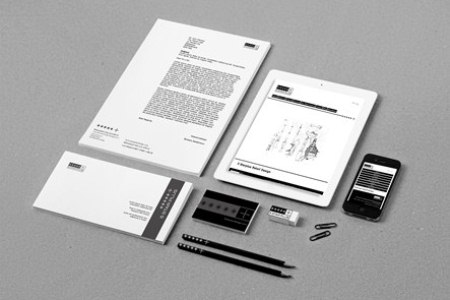
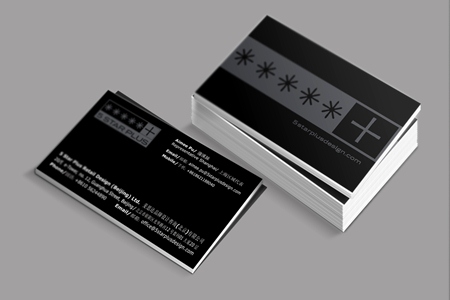
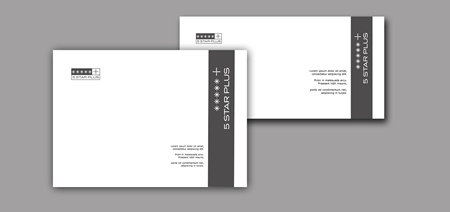
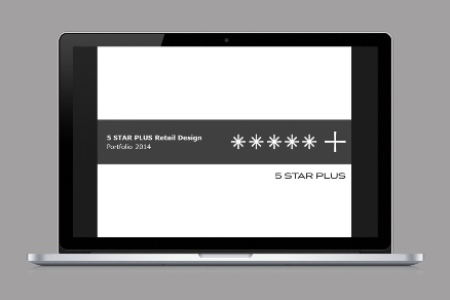
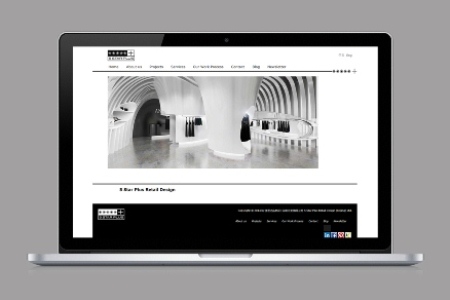
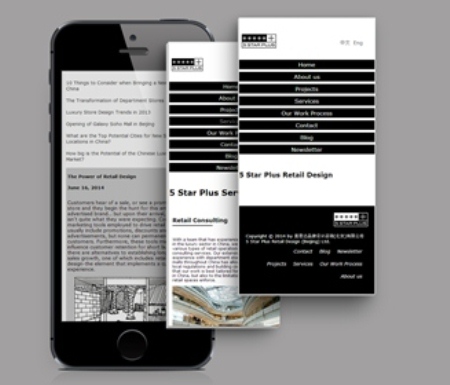
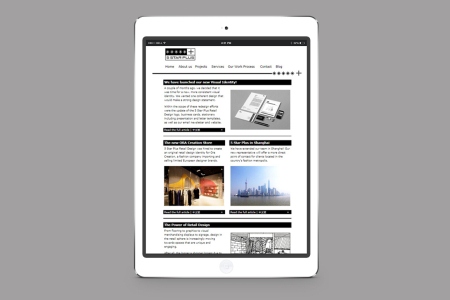 > back to top of page
> back to top of page

5 Star Plus Retail Design in Shanghai
July 29, 2014
We keep expanding further – 5 Star Plus Retail Design now have extended their team in Shanghai!
To better support brands in the south of China, our new representative will offer a more direct point of contact for clients located in the country's fashion metropolis. For project inquiries, please send an email to office@5starplusdesign.com.
Shanghai is 5 Star Plus Retail Design's third regional presence after Beijing and Paris.
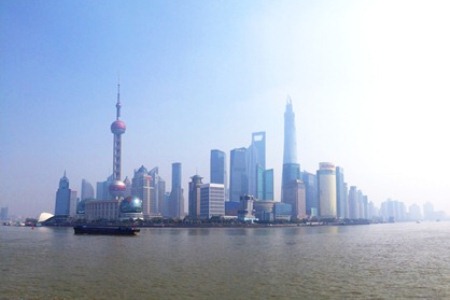 > back to top of page
> back to top of page

Retail Design as Branding Opportunity: 4 Awe-Inspiring Stores
July 21, 2014
Can you remember one store that had such an enticing design concept that you just had to walk in? Well, a team of retail design specialists were behind that decision, and realization that you needed just one more pair of shoes. Retail design is all about catching customers' attention and effectively reach out to a target audience. But more importantly, a store design is also a great branding opportunity, arguably more effective than many other marketing tools. Utilizing retail design to create a branded space, that is built around the values and key message of your brand, where customers can see, touch and feel the products and services, as well as listen, smell and breathe in the store experience.
Retail designs are constructed increasingly on a more conceptual rather than only functional basis, with an aim of creating a lasting impact in the minds of consumers. What better way than to use your own products or services to create an eye-catching retail design.
Let us now explore four interesting examples of retail designs with an eco-friendly edge that fittingly portrays a brand's positioning and image.
1.Aesop Melbourne Store
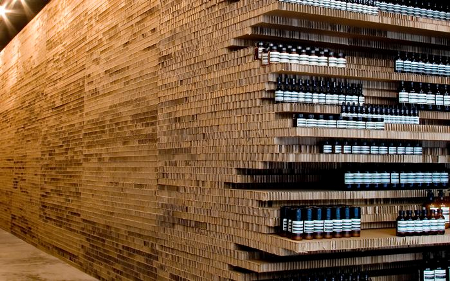
Source: Aesop website
Aesop creates outstanding products for the skin, hair and body and is a brand that is heavily committed to using both plant-based and laboratory-made ingredients of the highest quality. Aesop is renowned for pushing the envelop for unique and inventive retail concepts with every store it opens globally, while paying homage to the brand's spirit of eco-friendliness.
To illustrate, the interior of the Aesop store in Australia, Melbourne, is fashioned almost entirely from industrial-grade cardboard – the kind used to ship Aesop products. They are using one of their services to create a distinctive retail store design concept that epitomizes the brand's passion for innovative design and eco-friendly proposition.
2.Aesop Adelaide Store
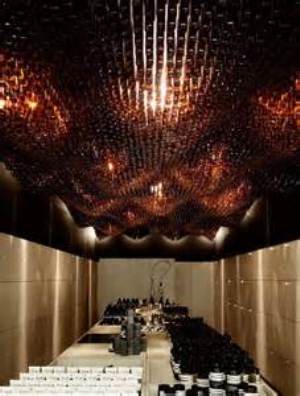
Source: Trend Hunter
In another example, the ceiling of Aesop's retail concept store in Australia, Adelaide is crafted entirely out of recycled bottles arranged in a stunning wave pattern. Aesop certainly successfully injected a large dose of cool into the brand's supposedly dowdy concept of eco-friendliness and sustainability.
3.Diptyque Paris Store
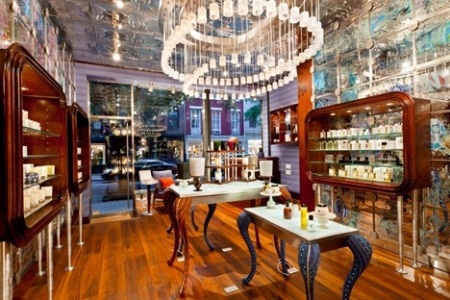
Source: Retail Design
Diptyque, a Paris-based luxury purveyor of fragrances and scented candles, have charmed visitors with its opulent and revolutionary retail designs. Drawing inspiration from the brand's steep design heritage, each Diptyque retail concept is a true reflection of the brand's proposition of discovery, creativity and distinction. They make the customer feel like they deserve luxury from the use of their own services in their retail design.
4.Breadbox Café New York
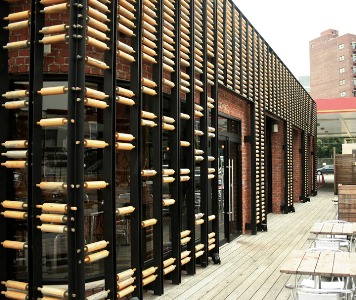
Source: Retail Design Blog
In New York, Breadbox Café is architecturally distinctive as a bakery due to an innovative design of wooden dough rollers as the brand's exterior fa?ade. They are in cooperating their style of business into their retail design, effectively making it known to shoppers on the street what they sell at the same time as being a really trendy place to grab a coffee.
Check out our previous blog articles The Power of Retail Design and The Store as Brand Extension: What are the benefits? to read more about branded retail design.
> back to top of page

ORA Creation launches new Store Design in Solana, Beijing
July 02, 2014
There is a niche customer market that desires unique fashion that separates them from the crowd and gives them a sensual gratification of their own personal identity. These customers style themselves just as luxury shops do with retail design—uniquely enough to stand apart from the rest and resonate their own sort of brand. Retail design is to luxury shops as fashionable identity is to certain customers.
5 Star Plus Retail Design was hired to create an original retail design identity for Ora Creation, a fashion company importing and selling limited European designer brands that offer customers a unique fashion identity, opened their doors on May 23, 2014. 5 Star Plus Retail Design translated the brief of Ora into a newly designed retail store which successfully reflects their sophisticated, yet uniquely modernistic brand in Solana mall, Beijing.
The new Ora store in Beijing’s Solana mall is a multi-brand store selling a number of European niche brands, which are not available anywhere else in China. The brief required an elegant, playful and neat store design where the brand could express its personality and provide customers with a design-oriented, yet dynamic European lifestyle.
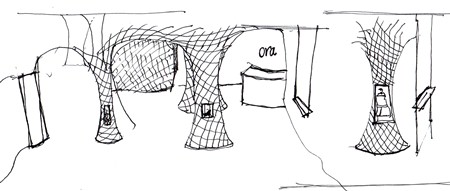
Ora, like its unique fashion, needed to stand out among its surroundings, and considering its location was in a quiet area of the mall, designing with a limited construction budget was the main challenge. Asking for flexible space with a dedicated focal area for two key brands and adjustable sections for the remaining fashion brands, Ora also wanted a warm color scheme and dynamic concept with some energy and contrast. 5 Star Plus Retail Design answered with a creative, fresh store design that fulfilled all of ORA’s demands. Obtaining materials that were available at a limited cost, were flexible enough to be sculpted into dynamic shapes and that added some structural strength was a task in itself. Inspiration for this material was taken from existing designs in nature and the human environment, such as spider webs, fishing nets, woven elements and metal mesh used for fencing.
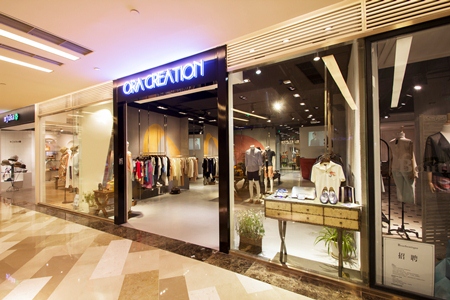
The overall design features a black shiny entrance with “ORA Creation” illuminating above in LED light to give a bold contrast to the more neutral shades behind the logo. On the left of the entrance is a diagonal, vertical wall where a panel is fixed, which outlines the various designer brands sold there. All of the fixtures along the left wall were hung with an angle to offer a dynamic energy in the space.
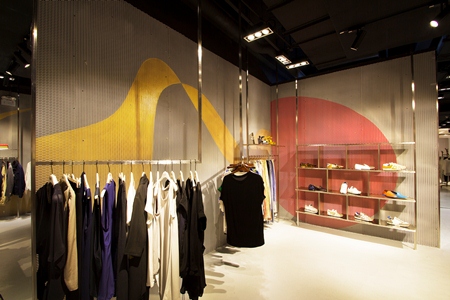
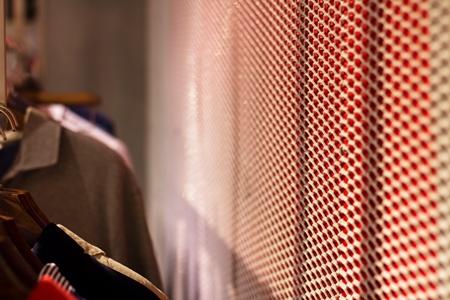
Enticing customers from afar, the wall decoration was the key design element of the store. The effect was actually created with two layers—a grey wall with sporadically flowing shapes painted in red and gold, and in front is the second layer made of a natural white metal mesh. This creates a sense of depth and movement when the customer walks through the store.
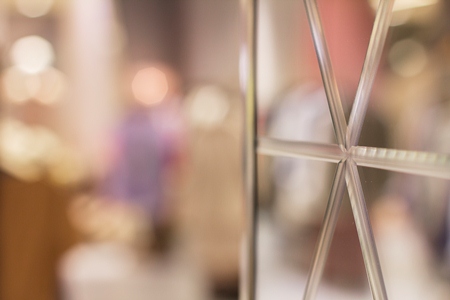
To draw customers to the back the store design implemented an accessory display shelf and a curved counter painted in a vibrant red. Not far from the counter and toward the fitting rooms is a mirror wall, created with triangular mirror tiles. The mirror wall and fitting room paralleled with each other offer a balance between modernity and traditionalism, once more underlining the unique luxuriousness of Ora.
Showing the true beauty of the European garments, we utilized natural white light to focus on the display areas. Despite the cool lighting color, a sense of comfort was still created through the warmly colored surface materials on the wall.
Overall, 5 Star Plus Retail Design took Ora’s brand, along with the store’s location and space challenges and successfully created a design that reflected Ora’s elegance, modernity, Europeanism, and energy, but also what would appeal to Ora’s key customers.
> back to top of page

The Power of Retail Design
June 16, 2014
Customers hear of a sale, or see a promotion for a store and they begin the hunt for this amazingly advertised brand… but upon their arrival, the store isn't quite what they were expecting. Common marketing tools employed to drive retail sales usually include promotions, discounts and advertisements, but none can permanently retain customers. Furthermore, these tools might influence customer retention for short bursts, but there are alternatives to establishing long-term sales growth, one of which includes retail store design-the element that implements a customer's experience.
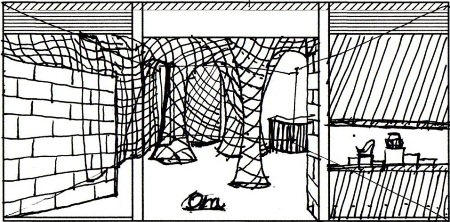
What is Retail Design?
Retail design is a specialized interior design profession that focuses on creating commercial design concepts for retail brands. Factors that are taken into consideration include a brand's positioning, target customers, customer movement within the store, visual display and merchandise, and branding with materials and finishes as an extension of the retail brand. Retail design needs to be fundamentally in alignment with the brand's DNA, in order to present products in a way that is most aesthetically appealing and inviting to attract the target customers.
Why is it worth your time?
From flooring to graphics to visual merchandising displays to signage, design in the retail sphere is increasingly moving towards spaces that are unique and engaging. The brands' products are no longer the only intent of consumers' visit. Retail designs now serve as visual cues to shoppers to evoke the essence of the lifestyle that the brands' customers are either accustomed to, or aspire to.
Brands seeking a retail turnaround or wishing to establish long-term sales growth, do engage in retail revamp as one of the alternatives. On average, within the first few days after the retail facelift, stores experience a minimum sales increase of approximately 20% to 25%, alongside with an approximate increase of 30% to 35% in customer footfall. So how does retail design directly link to these increases?
Retail design provides the platform to narrate the brand and product story, and educate consumers about the products. A retail space is crucial in creating an immersive retail environment that resonates with consumers, to stimulate them to purchase and consequently, inspire true brand advocates.
After all, the longer a shopper lingers due to a fulfilling in-store brand experience, the higher the propensity to spend

In fact, for luxury brands, there has never been a more important space than that of their retail space. Ranging from the lighting to the elegant flooring, from the music to the bespoke furniture, boutiques and retail concept stores offer an unparalleled environment that encourages brands to creatively express their values, and effectively encapsulate the stature of the brand. Discounts are akin to the four-letter word in a luxury goods industry, hence, boutiques' retail designs are increasingly emphasized as stores now host exclusive events, VIP cocktail parties, private cultural exhibitions, and certainly, memorable shopping experiences.
Gregory J. Furman, founder and chairman of the Luxury Marketing Council, spoke on the importance of retail design, especially in luxury brands, in a recent interview with China Daily. Furman said that as Chinese media has not yet developed to the level to facilitate "luxury education" via media advertisements, it is essential for retailers to channel their resources to creating that perfect retail experience.
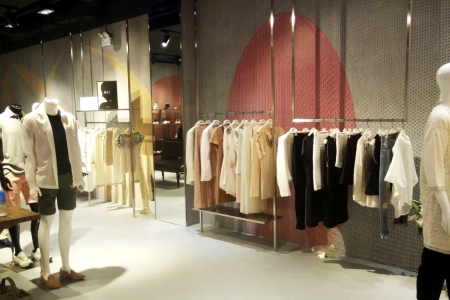
Essentially, a retail design that accurately portrays the brand enhances the desirability of the displayed products, and ultimately, leads to increase in sales.
Read our article The Store as Brand Extension: What are the benefits? to learn more..
> back to top of page

A Closer Look at the Retail World: Pop-Up Stores
May 11, 2014
Amidst the 21st century's global economic volatility and consumers' insatiable appetite for novelty, pop-up stores look set to take the retail world by storm.
What is a Pop-up store?
Pop-ups are by definition transient, a special event, a happening of sorts. These initiatives have a tendency to pop up unannounced, quickly attract a crowd, and then disappear. As such, pop-up stores pique consumers' curiosity and satisfy their desire for novelty and a need for "instant gratification". Pop-up stores are typically made when a brand wants to test the market before establishing a permanent store, launch a new product line or a seasonal marketing promotional campaign.
Let us now have a look at a few successful pop-up stores:
The MOMO Shop popped up in a busy shopping mall in Hong Kong. The store is made from dozens of recycled windows.
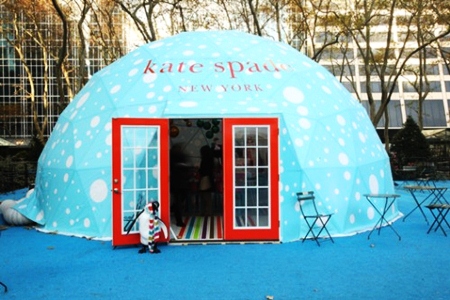
Source: Inhabitat
Uniqlo's High Line Roller Rink Cubes at New York
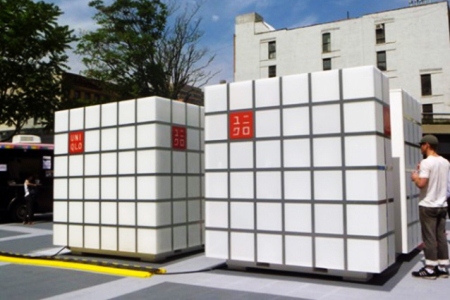
Source: Racked NY
Kate Spade opened up an inviting igloo for 3 weeks in New York City's Bryant Park. The brand handed out free hot chocolate to keep shoppers warm.
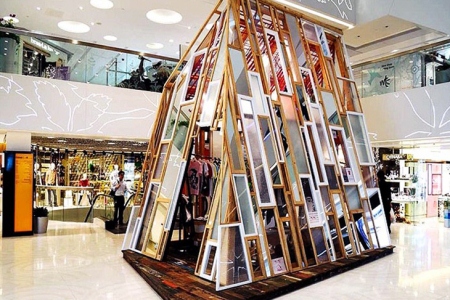
Source: Racked NY
In today's digital age, brick and mortar stores face intense competition from e-tailers, hence the need to continually innovate to capture shoppers' attention. An increasing number of retailers have recognized consumers' need for novelty as the impetus towards temporary retail pop-ups. Since the overarching goals of brands interested in pop-up stores are to increase brand recognition and personal connections with customers, let us now explore considerations to keep in mind in order to execute a successful retail pop-up.
1. Identifying the right location:
Location is key to a successful pop-up store. Hence, it is critical to engage in due diligence on area demographics, competitors, visibility, footfall etc. It does sound like plenty of work, but it absolutely pays off when the surrounding area embraces your brand as its new neighbour.
2. Start planning early:
Ensure you have allocated a budget and identified the objectives of your pop-up. Planning early ensures you have sufficient time for execution of the pop-up retail design, logistics and staffing.
3. Pop-up retail design:
Due to the temporal nature of pop-up stores, it is even more crucial that the design space creates a lasting first impression on visitors. Lighting, theme, furnishings, visual merchandising and product display – these are critical in creating an atmosphere that amplifies your brand.
4. Leverage the power of social media:
From pre-event to post, be sure to pull on multiple marketing levers such as your existing Facebook or Twitter (or other social media platforms) followers, hosting blogger and press days. Create interesting hashtags, upload exciting photos that inspire visitors to pop by, partner with influential Instagrammers, pinners and bloggers to spread the word in the social media sphere. In addition, send newsletters to your customer base informing them about the upcoming pop-up store.
5. Educate your sales staff:
A pop-up store is a great way for consumers to experience and learn about your products and services. Ensure your sales staff are well educated and trained on the unique selling points of your products and services, and that they provide quality customer service.
6. Follow-up:
Retailers should prepare follow-up forms with customers. Once the pop-up store closes, retailers and their sales staff should conduct a follow-up session, either through phone calls, e-mails or social media platforms, to keep the customers engaged and gather feedback about the product and service. This will ensure that new customer relationships and consequently, brand loyalty are forged.
Follow the above tips to ensure optimal success of your retail pop-up store!
> back to top of page

Reminiscing CHIC 2014, China International Clothing & Accessories Fair
April 25, 2014
The 22nd China International Clothing & Accessories Fair (CHIC) met with resounding success as it ended on 29 March 2014. Cemented as one of the world's fashion capitals, Beijing was the home of CHIC for the past 21 years, having first been inaugurated in 1993.
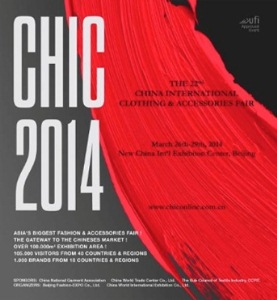
Sprawling over 100,000 square meters in eight halls, CHIC Beijing 2014 occupied the entire New China International Exhibition Centre. This clothing and accessories fair successfully attracted over 100,000 visitors and more than 1000 domestic and international fashion brands. There were 8 feature areas: men's wear, women's wear, children's wear, casual wear, garment related resources, overseas halls, fashion accessories, and growth brands.
The exhibition has always been highly regarded as an international exchange forum for different stakeholders in the fashion industry. Various on-site events were conducted during the exhibition including the China fashion business forums, Chic shows, press conferences and the fashion trend seminars.
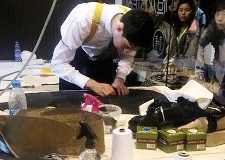
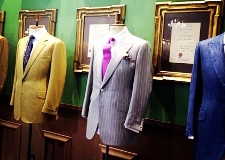
In recent years, the rapid advancement of technology and design has been superseded by an increasing demand for timeless quality and exquisite craftsmanship, a trend reflected in the luxury fashion industry embracing the exclusive and bespoke. A renaissance of the British illustrious tradition for tailored suits was showcased within the CHIC 2014, English Pavilion where Henry Poole & CO (as seen from pictures above) demonstrated the extraordinarily skilled process of tailoring bespoke suits, ties, garments etc. Unsurprisingly, this generated a massive crowd who were captivated by the fine craftsmanship and timeless design that channels into shaping a business suit into a luxurious item that uniquely reflects each customer's personality and style.
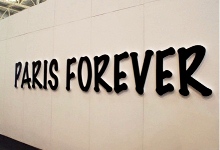
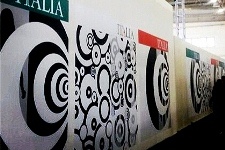
With both A.T. Kearney and Euro Monitor International confirming China's top position as the key growth market for apparel retail development due to its sheer size and strong growth in clothing sales, it comes as no surprise that international exhibitors and visitors are steadily increasing at the fair – with approximately 40 percent of the exhibitors of CHIC 2014 hailing from outside China. Noticeably, brands from the United Kingdom, France, Italy, Austria and Germany were all prominently featured in their own pavilions (as seen from pictures above).
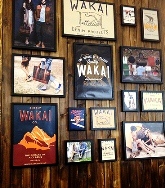
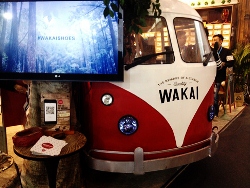
To illustrate, Wakai, a lifestyle brand was featured in the Overseas Hall. The retail store design was carefully crafted with passion and dedication to reflect a seamless marriage between the rich Japanese cultural heritage and modernity (as seen from pictures above). Interestingly, the store design included an interactive element, which allowed visitors to redeem a Wakai souvenir through the Wakai vending machines (as seen from pictures below). A brilliant marketing strategy which attracted a massive crowd!
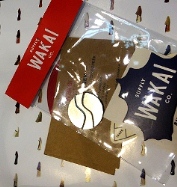
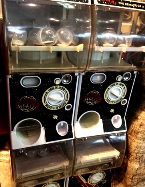
CHIC certainly looks set to grow from strength to strength. Keep a lookout for CHIC 2015!
> back to top of page

What are the Best Cities in China for Luxury Retailers to expand into in 2014?
Part 2: Retail Sales in the Chinese Market
March 12, 2014
In part one, we looked at the relationship between luxury stores and millionaires to find out the market potential in China's top cities. Part two of this article offers a closer look at China's retail market and a store count comparison between 2011 and 2013, begging the questions: are the annual retail sales of these cities consistent with our earlier observations, and which markets still have the best potential?
The Chinese retail market has been booming for the last five or so years, and according to the Economist Intelligence Unit (EIU), is predicted to surpass the United States to become the world's biggest consumer retail market by 2016. What's more, as shown in the graphic below, this growth is expected to skyrocket well into the next decade and China is to have almost doubled the value of the United States retail market by 2022.
It is no coincidence then, that China also has one of the largest luxury retail markets in the world; after surpassing Japan in late 2012 and the United States for a brief moment in 2013, China current ranks second in the international luxury market. So how much is each major city contributing to the retail market?
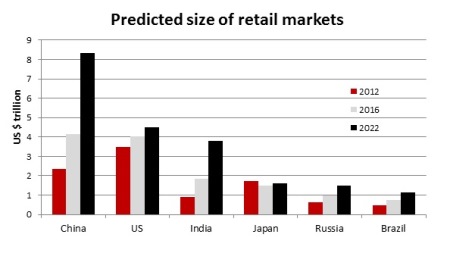
Image adapted from The Economist Intelligence Unit, 2013
The graphic below details the total retail sales for consumer goods in the top tier cities of China in 2010, 2011 and 2012. Whilst this doesn't specifically show the sales from the luxury market, it is still an excellent tool for analysing the Chinese retail market. Observing the figures, we can see that all the cities have experienced positive growth, at an average rate of 15 percent per year over the past couple of years.
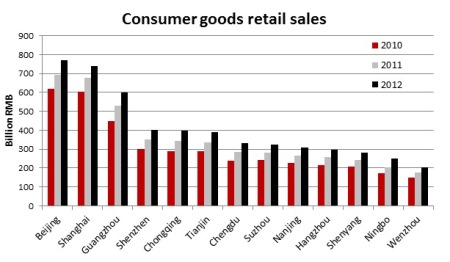
Adapted from: DTZ Research Property Times, Jones Lang Lasalle China Retail Profile, Colliers International Research and Forecast Report
From this, there is a clear distinction as to why Beijing, Shanghai and Guangzhou are listed as tier 1 cities: their retail sales combined to a staggering total of 2.1 trillion RMB in 2012. Shenzhen is a relatively new addition to China's prestigious tier 1 list and ranks fourth in 2012 with retail sales totalling 401 billion RMB. As the competition in retail markets in tier 1 cities gets tougher, there is a shifting focus onto developing the retail landscape tier 1.5 and other lower tiered cities.
In particular, we will have a look at Chengdu, Chongqing, Hangzhou, and Shenyang, as these are the cities we feel have the most luxury market potential in the coming years. To help us with this analysis, the graphic which shows the store count of selected* luxury retailers in 2011 and 2013 will also be used.
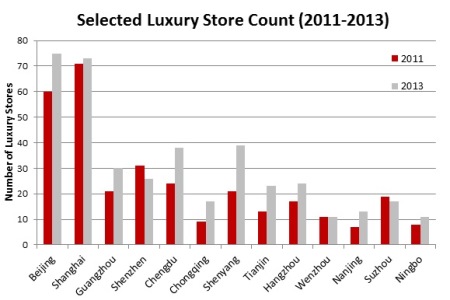
Adapted from: Li & Fung Research Centre, Luxury Market in China, 2010, Fung Business Intelligence Centre Luxury Market in China Huge Potential Ahead, April 2013
*Data collated for 10 luxury stores: Armani, Burberry, Cerruti 1881, D'Urban, Ermenegildo Zegna, Gieves & Hawks, Gucci, Kent & Curwen, Louis Vuitton, Prada and Ferragamo.
Chengdu
As the capital of the Sichuan province, Chengdu was once better known for being one of the country's leaders in economic, transportation and communication services than for its retail industry. That being said, in the early 2000s, the market in Chengdu was 'ripe for the picking' and since the expansion of the second ring road, the tier 1.5 city has become an attractive investment option for retailers and developers. Furthermore, the selected luxury store count increase from 2011 to 2013 was also one of the highest in the country, which could be attributed to the city's rising popularity as a tourist destination by wealthy Chinese people with interest in luxury goods and considerable spending power.
From our point of view, expanding into Chengdu is a must. Considering current urbanisation rates, the EIU predicts that Chengdu will have a population comparable to the UAE by 2020, and with a healthy supply of future retail development projects, as Jones Lang LaSalle (2012) predicted, the retail market is expected to more than double in size by 2016.
Chongqing
As seen in both graphics, while the retail sales in 2012 were the fifth largest in mainland China, the city is still relatively unpenetrated by luxury brands. What does this mean for luxury retailers wishing to expand in the future? Lower market entry costs and less competition. Luxury brands that were quick to capitalise on the retail market in Chongqing have been handsomely rewarded, with Armani having its highest store sales in the country there, and Burberry Chongqing recording better end of year sales than its partner stores in Beijing and Shanghai.
What's more, newly developed shopping malls are predicted to double the retail stock levels from the beginning of 2012 to 2016. Considering the many more people that will come towards the CBD as a result of urbanisation, in 2020, urban Chongqing is predicted to have a population comparable to Portugal and thus the city presents itself as a great opportunity for retailers to tap into.
Shenyang
As a major hub city in China's North East, Shenyang has great potential to be the one of the country's premier shopping destination for luxury goods. Being a tier 1.5 city, the 2012 consumer goods retail sales in Shenyang seem surprisingly low, placing it just ahead of tier 2 Ningbo and tier 3 Wenzhou. In spite of this, as mentioned in part one of this article series, Shenyang has a prosperous luxury retail market, with one of the highest concentrations of luxury stores in China. This is reinforced by the number of selected luxury stores increased from 21 in 2011 to 39 in 2013.
Shenyang's urban population is set to exceed 10 million and become one of China's many megalopolises by 2020, making it comparable to the size of Greece. With the city's total stock to double by 2016, Shenyang's claim to being the major hub in Northeast China remains relatively unchallenged.
Hangzhou
An interesting fact is that Hangzhou is the only city in China whose habitants spend more money each year on fashion items than food. Like Shenyang, Hangzhou is a tier 1.5 city but falls into the lower end of the spectrum regarding annual retail sales of consumer goods. Despite this, Jones Lang LaSalle claims that Hangzhou has the most developed luxury retail market amongst all tier 1.5 cities. As shown in the graphic, luxury brands are continuing with their expansion into the city, with an additional 7 selected luxury stores established between 2011 and 2013.
The city is also known for having strong private enterprise and the rising standard of living in recent years has contributed to Hangzhou being the main hub for shopping in the Zhejiang province. According to Jones Lang LaSalle, there is ample space for more shopping centres to be established, considering the city's abundance of wealthy people.
In conclusion, it is increasingly being realised that store expansion into tier 1 cities may not be as lucrative as it used to be. While this comes as a result of a variety of reasons, one of the biggest ones is that the competition there is incredibly fierce and tough. For this reason, lower tiered cities need to be seriously considered. This article has placed particular emphasis on such cities, with Chengdu, Chongqing, Hangzhou, and Shenyang all showing great potential. In fact, ongoing urbanisation, increasing household disposable incomes and a rising demand for luxury goods are particularly prominent in these cities and their future seems promising.
> back to top of page

What are the Best Cities in China for Luxury Retailers to expand into in 2014?
Part 1: Millionaires and Luxury Stores
February 26, 2014
Beijing, Shanghai, Guangzhou and Shenzhen have long been recognised as the "blue-chip" cities for luxury retailers to expand into, but as market maturity and saturation becomes all the more imminent, the big questions are: is there still market potential in China's big four cities, and what are the cities to be on the lookout for in 2014 for luxury retail expansion?
To begin part one of our analysis, is it important to recognise the city hierarchy in China, which categorizes major cities into tiers ranging from 1 to 4 based on economic and real-estate development. Beijing, Shanghai, Guangzhou and Shenzhen currently make up China's four tier 1 cities, while there are numerous cities in their 'transitional' phase such as Chengdu, Chongqing, Shenyang, Tianjin and Hangzhou, which are classified as tier 1.5 cities.
It is therefore in the best interest for luxury brands to expand into these cities because they boast not only strong economic growth, but they are homes to many of China's wealthy individuals; the Hurun Report in 2012 revealed that China is now home to over one million millionaires. With this in mind, global brands wishing to open flagship stores in the Chinese luxury market should be aware of where most millionaires are located in China. It is also important to determine the number of luxury stores at these locations, as this will give an idea of the level of market saturation and competition future stores face.
So is there a direct relationship between the number of millionaires and luxury stores in China? We think so. The figure below shows the millionaires in China worth over 10 million RMB and the number of selected luxury stores* present in these cities.
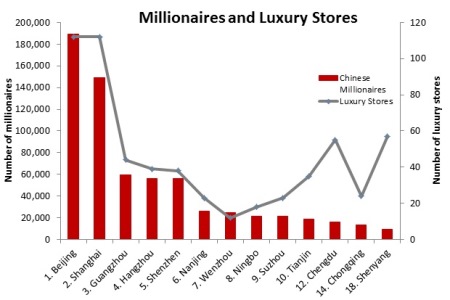
Source: 2012 Hurun Wealth Report, KPMG Global reach of China Luxury – a KPMG case study 2013, Fung Business Intelligence Centre Luxury market in China – huge growth potential ahead April 2013.
*There were 18 luxury retailers considered in the study, which included the likes of Armani, Burberry, Chanel, Dior, Ermenegildo Zegna, Fendi, Hugo Boss, Louis Vuitton and Prada etc.
As seen, the majority of Chinese millionaires reside in the tier 1 cities, with Hangzhou also making it into the top five. Not surprisingly, Beijing and Shanghai have the largest retail footprints (112 stores) and share a combined total of millionaires closing in on 340,000. There is also some correlation between the millionaires and luxury stores for the first seven cities, ranging from Beijing to Wenzhou, but the trend becomes less apparent from Ningbo onwards. Why is this so? From our point of view, the consumer behaviour in each city is greatly influenced by its geographical location in China; that is, North, South or West of the country's centre.
To reiterate what was said in a previous article Beijing or Shanghai for Brand Headquarters? the consumers of Southern tier 1 cities Guangzhou and Shenzhen have a stronger tendency to travel to neighbouring Hong Kong to buy luxury items at cheaper prices due to lower import and consumption taxes. There is also a cluster of top-ten-millionaire cities (Hangzhou, Nanjing and Suzhou) surrounding Shanghai that have well developed luxury markets. In fact, a recent profiling of the Chinese retail market (Jones Lang LaSalle, 2012) affirmed Hangzhou as having the most developed luxury retail market amongst the other tier 1.5 cities.
What about the Northern Chinese cities? Shenyang – which doesn't have enough millionaires to make the top ten - is considered as having one of China's largest concentrations of luxury stores and retail space, making it an important destination for luxury shopping in regional China. This is supported by the graphic, where we can see that Shenyang has the third most number of selected luxury stores in the country, despite having fewer millionaires than the majority of cities.
Also situated in the North, Beijing's neighbour Tianjin has received considerable interest from international big name brands, with the recently opened Galaxy Shopping Mall bringing in dozens of luxury brands. However, a presence of supply doesn't necessarily mean that there is demand, and while the luxury retail landscape of Tianjin is slowly evolving, it is still in its early stages of development.
In the West, Chengdu also shows a similar trend to Shenyang, with only 16,000 millionaires, but has 55 selected luxury stores. In fact, a case study by the Economist Intelligence Unit identified Chengdu as a premier real-estate market and a place for luxury shopping, especially since big-name boutiques such as Burberry, Louis Vuitton and Prada have opened up flagship stores in the luxury shopping mall, Yanlord Landmark.
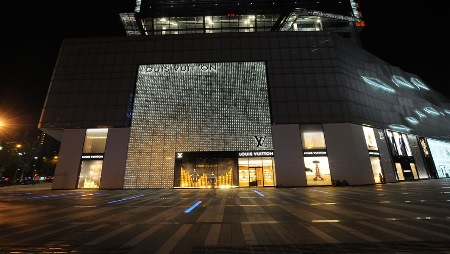
Yanlord Landmark, Chengdu (Image courtesy of Yanlord Landmark)
Aside from the top tier cities, we can also see that tier 2 Ningbo and tier 3 Wenzhou have a healthy number of rich Chinese individuals but a relatively low number of selected luxury stores. This is because their respective luxury markets are still in the early stages of development. Perhaps then, 2014 isn't the year for these lower tiered cities, but if the favourable growth rates China has experienced in recent years continues, then it won't be long until we see them enter the luxury market as real contenders.
In summary, this case study has shown us at face value that while most of the rich and stores for the rich still belong to the tier 1 cities of Beijing, Shanghai, Guangzhou and Shenzhen, they may not necessarily be the best places for luxury retailers to expand into. There is also definitely potential for further expansion into cities away from the limelight, such as the transitional cities Chengdu, Hangzhou and Shenyang. Among the tier 2 and tier 3 categories, Ningbo and Wenzhou also show great potential for a future luxury market due to a large presence of millionaires in both cities.
> back to top of page

Storefront Designs for Chinese New Year: 2014, the Year of the Horse
January 30, 2014
As most of China begins to wind down for the Chinese New Year festivities, luxury retail stores have produced some creative and eye-catching storefront designs to celebrate the coming of the year of the horse. Interestingly, most of these stores have opted for more elegant and modern designs, rather than the more traditional Chinese red and gold designs. For example, the retail design in the JKJY stores by Stella Luna in Taikooli (former Sanlitun Village Beijing, top) and Shanghai (bottom) employ a purple and silver colour scheme for the shopfront window design. To commemorate the New Year, cut-outs of horses have been strategically placed in a descending formation to greet prospective customers as they enter the store. The addition of horseshoes and origami along the storefront also adds a subtle touch of oriental authenticity.
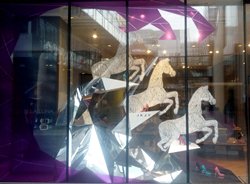
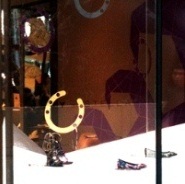
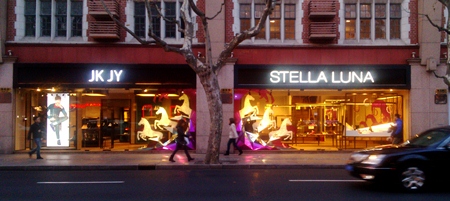
In Taikooli Sanlitun, French high fashion house Lanvin has been more explicit with a Western representation of Chinese New Year for its storefront design. As seen, the year of the horse theme has been ingeniously integrated into the window display by having a chessboard with a red knight chess piece on a white square. Although the design and layout is quite simple, the colour contrast between red and gold against the black and white backdrop effectively draws attention to the New Year theme.
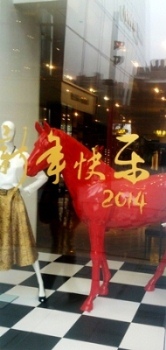
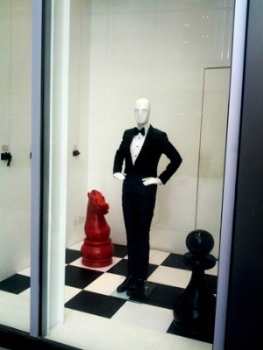
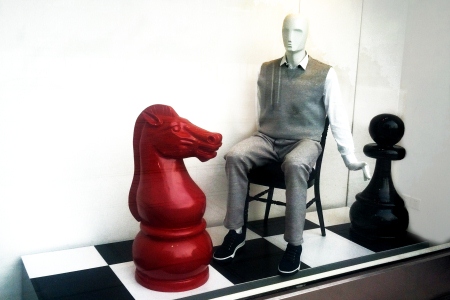
On the other hand, the Kate Spade New York store in Sanlitun has gone with a more traditional Chinese New Year themed storefront design. This is shown through the extensive use of red paper lanterns and gold hanging decorations, which is made complete by the cut-out of a golden horse speckled with glitter.
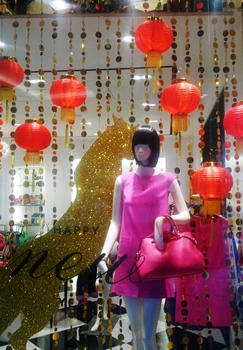
The new IAPM night-time shopping mall in Shanghai is home to many big-name boutique stores, including the Italian luxury shoe store, Tod's. In the lead up to Chinese New Year, the store has opted for a traditional-styled window display through the use of a red background with horse sculptures positioned in the foreground. Additionally, the horses have been moulded using plastic, which adds a very sleek and modern feel to the overall design of the storefront.
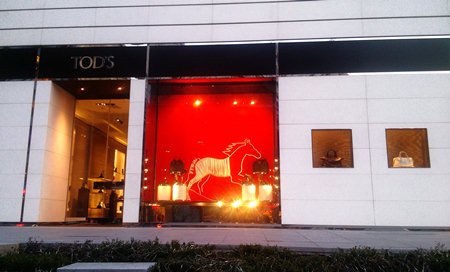
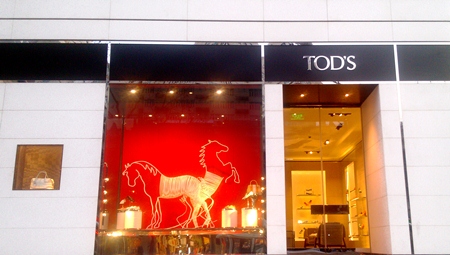
The Chinese New Year decorations inside the shopping mall culminate on the ground floor with an elaborate display of pink and red Chinese plum blossom trees, golden arch entrances (paifangs), red hanging lanterns, lotus flowers, golden koi fish and a statue of a golden horse in the centre of it all. These decorations highlight the beauty of using traditional decorations, which is accentuated by the contrast with the polished and modern shopping mall surroundings.
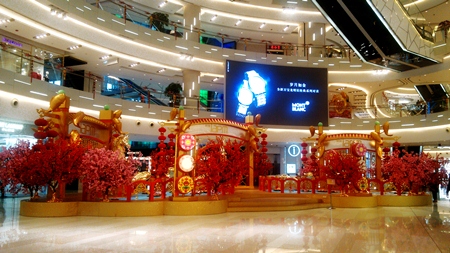
Overall, the storefront designs exhibited by luxury retailers in Beijing and Shanghai have been successful in adding a touch of Western culture and a modern feel to the Chinese New Year decorations.
> back to top of page


Beijing Window Displays – Christmas 2013
December 26, 2013
In the months and weeks leading up to Christmas in the West, it seems that every store and shopping centre has Christmas decorations and promotions ready to take advantage of customers and their Christmas shopping while also engaging in some holiday spirit. In Beijing the capital of a country without an official religion and Christian minority, it might not be as expected to see an embracing of such a holiday.
Although it is not widely celebrated, Christmas decorations in the Central Business District of the city have become more and more extravagant in recent years as economic growth and the accessibility of the country to foreigners has increased. Christmas window displays by brands are a way for them to engage with the public, potential and existing companies while continuing to establish their aesthetic, values and beliefs. Most brands that have established themselves internationally are consistent in their decorations and window designs across all stores.
This year however, major brands appear to have either opted out of creating Christmas themed displays altogether (Saint Laurent, Céline are exmaples) or been more subtle in their approach. Below, are just a few examples of luxury fashion houses and the ways that they have chosen to display their holiday spirit.
French high fashion house Chanel has taken a more subtle approach in the design of their window displays during the holiday season. No obvious references to Christmas have been made in their galaxy print backdrop and hanging star decorations. The star is a common symbol of Christmas so the display may be interpreted as a Christmas decoration or simply a minimalist product display.
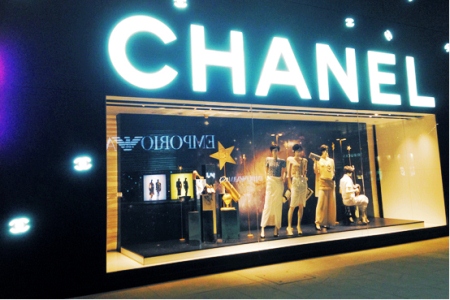
Louis Vuitton has also taken a more simple approach in their window display for the holiday season. The glossy background in the store window can represent both Chinese celebrations and Christmas while the grey geese figurines with Santa Claus hats are playfully placed and positioned to offer bags and accessories to clothing mannequins.
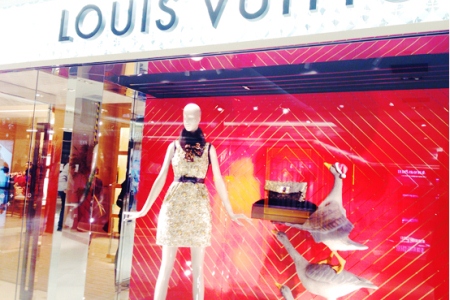
Italian luxury house Bottega Veneta as well, taking a simple approach to their Christmas decorations. The brand whose image is very focused on creating products that are of high quality without logos or obvious branding. This is further seen in their approach to their Christmas display using generic and more traditional style green Christmas trees with white string lights shaped in the brands iconic bags. The display design is classic with the brand's own flair staying true to the house's classic style.
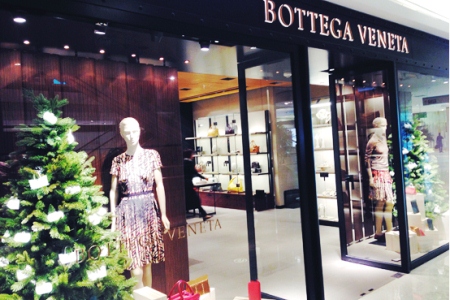
Stella McCartney's window display uses conventional Christmas kitsch in their colourful, flashing lighting installation. The shapes of Christmas trees, bells, stars and 'Merry Christmas' among other symbols are outlined in flashing LED lights in a style similar to neon signs seen in many cities and contemporary artwork.
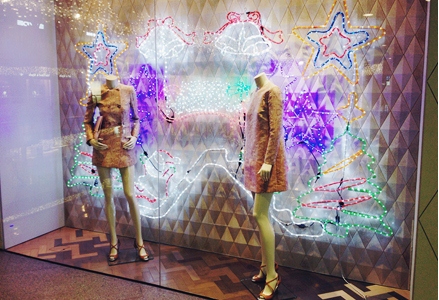
Italian fashion and leather goods brand Gucci have also used the star motif in the holiday season decoration of their stores. The brand has used glossy gold rods to construct oversized sparkles in their window display.
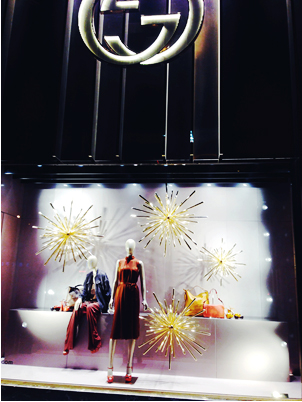
Despite the extravagant external displays created by many Beijing malls (read our blog post here), high end brands located in malls such as Shin Kong Place, Parkview Green and The Place have all taken a modern, minimalist aesthetic in their Christmas display design.
> back to top of page

Beijing Holiday Season 2013 Mall Decorations
December 23, 2013
In the lead up to the holiday season Beijing gradually becomes more and more illuminated with the twinkle of LED lights. Beginning with Christmas, buildings all over the city use various styles of decoration in an attempt to embody the festive mood despite Christmas not being a national holiday.
Retailers also begin to adorn and embellish their spaces with seasonal decorations not only create a festive mood but also act as promotions for various stores and serve as reminders for customers to begin their Christmas shopping. Below are a few examples of major shopping malls in Beijing and the ways they have expressed the holiday season.
China World Mall
Located at the heart of Beijing's Central Business District, China World Mall's Christmas decorations are so extensive that multiple posts would be needed to cover everything!
The exterior of the buildings have been cloaked with LED lights and a huge Christmas tree carousel had been constructed in the courtyard. Indoors, decorations are continued throughout the mall. Not all store windows display Christmas decorations, possibly relying on the corridors and centrepieces instead. Brands such as Shanghai Tang and MCM have created single standing installations to show their embracing of the holiday season.

Panorama image of the flashing lights outside of China World Mall.
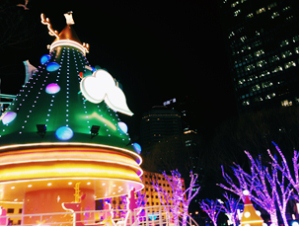
China World Mall Christmas tree carousel
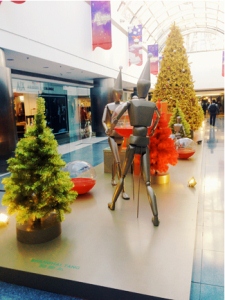
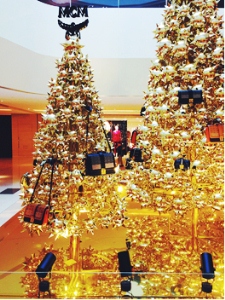
Shanghai Tang's centrepiece in the corridor of China World Mall (left). MCM (Mode Creation Munich) have created an edgy reincarnation of the Christmas tree using studs and spiked mace balls using their bags as ornaments (right).
The Place
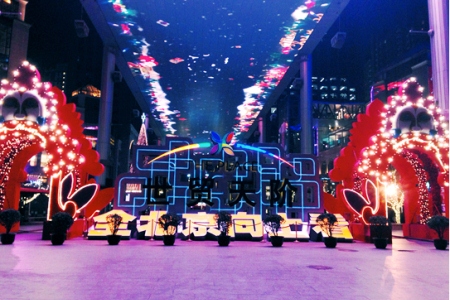
Using their large LED screen as a backdrop in the evening, The Place on Dongdaqiao Road have also embraced the holiday season using large constructions and frames which support lights and tinsel. Their own carousel is also a popular spot for photos in the mall.
Indoors there are hanging lights, jesters juggling and a central tree adorned with white tinsels and red and purple ornaments.
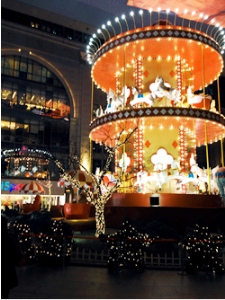
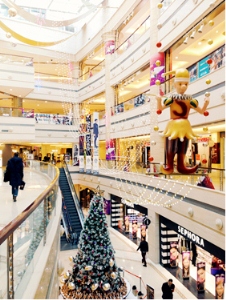
Parkview Green
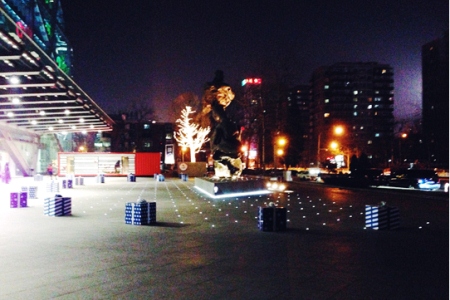
While the exterior of Parkview Green is kept relatively simple, with the use of Christmas present markets and some LED lights, the interior features large Christmas sculptures, lights hanging from every floor and mini Christmas market-like stalls.
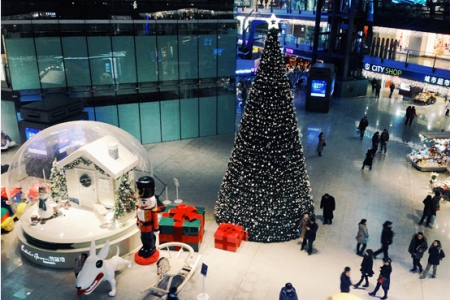
View of Parkview Green's interior decorations.
Shin Kong Place
Another upscale mall is Shin Kong Place in the Chaoyang district. Their Christmas decorations were not as wide ranging or consuming as other malls but still featured a centrepiece with decorations hanging from the ceiling and some decorations in entrances and exits.
SOLANA Mall
The large 'Shopping Lifestyle Centre' has fully embraced the holiday season with various attractions that decorate the pathways and intersections of the outdoor mall. The central courtyard also features a large stage adorned with oversized Christmas baubles and an LED lit gazebo. Curtains made out of strings of LED lights also feature heavily outside at SOLANA. Indoors, the theme is continued with Christmas trees and basic tinsel and hanging decorations throughout the shopping centers.
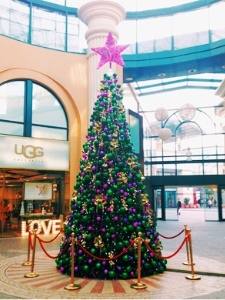
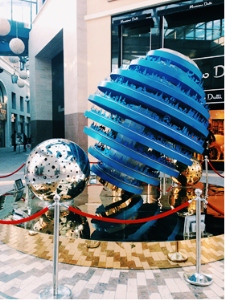 > back to top of page
> back to top of page

Indigo Christmas Market: A Temporary Retail Space
December 7, 2013
Indigo Mall in Beijing has been organizing a Christmas Market from November 15th to January 5th. Feliz Events, the assigned Event Organizer, have been collaborating with 5 Star Plus Retail Design in the design aspects and organization of the Christmas Market.
The event is an opportunity to celebrate the winter holiday season with family and friends, and targets both Foreign and Chinese consumers. Located in Indigo's winter garden, the European style market covers an area of approximately 700 square meters and is essentially a pop-up space for brands selling food, beverages and Christmas gifts.
With the brief asking for a highly interactive event concept during the winter season, we created all conceptual and technical design works for the market and the Christmas decorations in Indigo Mall. This temporary retail space was designed to attract new customers, facilitate sales for the retail brands, and increase the foot traffic and brand image of the landlord.
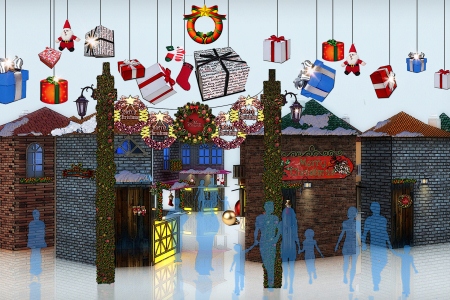 > back to top of page
> back to top of page

10 Tips to Sustainably Increase Revenue in Stores
November 25th, 2013
In order to sustainably increase revenue in stores, retail brands need to design a perfect in-store experience and create long term relationships with their customers. Here are a few tips to achieve this.
1. Optimize your store's exterior design.
The store fa?ade and window should be designed to represent your brand and products. They are also the perfect means to create brand awareness and educate customers. Make sure your logo is designed to be visible from far, and a good selection of your products is displayed in the store window

2. Welcome Customers entering your store.
Greet all your customers entering your store, irrespective of gender, age, and other characteristics. It is important to give customers a warm welcome, make them feel comfortable and let them check out your products, even if they have no purchase intention.
3. Design your customer service to be barrier free.
Ensure to use an open body language when talking to your customers (no crossed arms!) and remove any furniture from the store space that could be perceived as a barrier between you and the customer. Examples of such barriers could be the sales counter, island furniture, or columns. Since furniture cannot always be removed, make sure to stand at a location with no barrier when talking to the customer.
4. Guide the customer through the store.
You want to make sure to give each new customer the best overview of your brand and introduce the various collections. Don't leave customers alone in your store – guide them and add a few sentences about each product at which they look for a few seconds, even if the customers mention that they "just want to have a look".
5. Adjust your sales approach according to each customer.
Some people are more communicative, others prefer a quiet shopping environment. Some customers need more space, others again want more information. Be sensitive and adjust your sales approach and the amount of information that you give to each person's individual needs.
6. Create a personal connection.
Purchase decisions are emotional choices. Most consumers don't purchase merely because of product characteristics, but because of something else about the product. This could be the artistic design, the heritage of the brand, the unique manufacturing technique, or other abstract values that can be hard to define. Each retail store should therefore target to create a personal connection between the customer and three very important things: the brand, the sales person, and the product. If they love the brand, you, and the product, you will make a sale. Sales consultants need to speak to the unique emotional needs and motivations of each person.
7. Support the customer in finding the perfect piece for him or her.
It is not up to the sales consultant to recommend an item; it is rather about finding out the needs, preferences, and expectations of the customers and to discover accordingly the perfect piece. Again, what is sold is not only a "product"; it is a manifestation of emotions, values, and a lifestyle, to the customer.
8. Reconfirm the choice of the customer.
Many customers doubt during the payment process whether they really have made the right choice. It is important to compliment the customer on their choice and assure them that they will enjoy the product for a long time.
9. Personalization and customer relationship management.
Be equally friendly and polite to all your customers, and remember the names and preferences of your repeat customers. Support your sales team with a digital customer relationship management system where customer preferences, personal data and purchase history can be stored and traced. Nothing creates more loyal customers than a personalized welcome "Good morning Mrs. X", accompanied by an honest smile.
10. Pack every product like a gift.
You want your customer to feel happy when carrying your product around and be excited when opening the packaging at home. Pack all products, including the ones which are exchanged or repaired, as nicely as you can. Plus, customers who carry your shopping bag around the mall are great advertising for your brand.
> back to top of page

5 Star Plus Retail Design in France
November 2nd, 2013
Thanks to our increasing international development, we are proud to announce that 5 Star Plus Retail Design now have a representative in Paris, France. This is to further support our design projects in Europe and facilitate a retail expansion into China for French brands. For inquiries, please contact us at office@5starplusdesign.com.
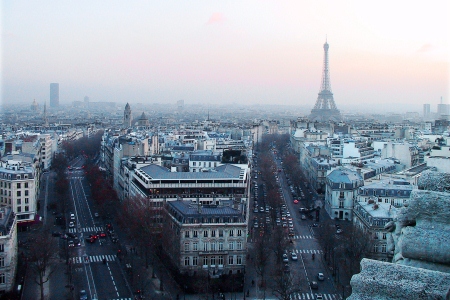 > back to top of page
> back to top of page

Visual Display & Merchandising Design for Aleybo
October 29th, 2013
Aleybo is a brand that offers a range of European and American kitchen and lifestyle accessories. Design, function and color are product characteristics that are essential to the brand.
As part of the redesign of Aleybo's Beijing flagship store in Solana Mall, 5 Star Plus Retail Design was assigned to create a Visual Display & Merchandising concept which included the design of the shop window area and all product displays. The brief, besides the creation and implementation of a Visual Merchandising concept, also included the design and production of visual supporting tools such as display stands, price displays, and posters. In addition to this, 5 StarPlus Retail Design was asked to conduct the Project Management during the store's redecoration period.
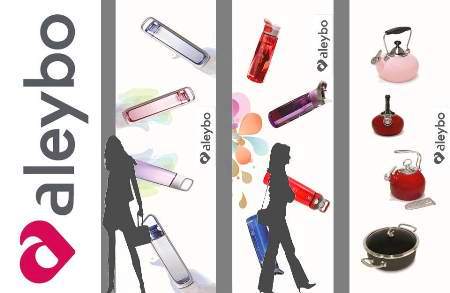
The main challenge of this design project was to integrate the various brands the store stocks; KOR, Contigo, Mikasa, Chantal, Turmix, Zyliss, and Arzum. They had to become part of one uniform product display style in the Aleybo store. At the same time, the Visual Display concept had to be smart and creative.
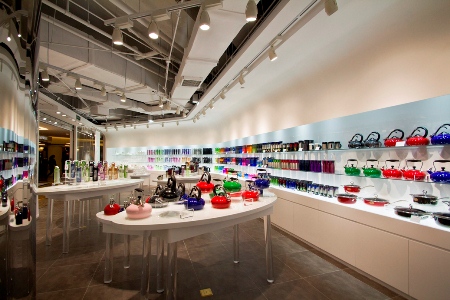
Based on the dynamic brand image and requirement of having a space capable of being used in different ways, a flexible solution for the window area was needed. Since the original store design had not planned for a window display and store construction works had only started, we were free to produce a creative solution. Our goal was to create something smart, elegant, and simple, that would support the rest of the store's design yet create a big impact and draw people into the store.
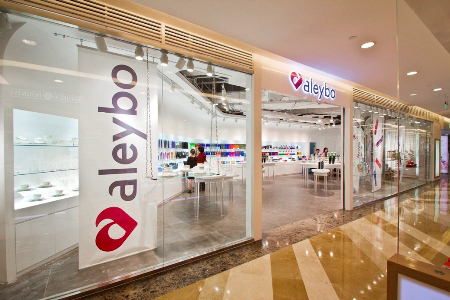
In order to achieve maximum flexibility, we created swing like shelves made of glass and stainless steel chains that suspended from rails in the ceiling. The hanging height of the shelves can be adjusted in intervals of 20 centimeters and can be repositioned in the store window by being pulled along in horizontal directions – such features allow the shelves to adapt based on changing product display requirements.
For maximum impact, we built on the strong, colorful design of the products and designed large posters, which hung from rails behind the shelves. The position of the posters can be changed in the same way as the shelves. Most importantly, different store window display scenarios can be installed with a varying number of posters in different shapes and sizes in different locations based on seasonal and marketing needs. During events, the store receives a sense of privacy by hanging a semi-translucent curtain on the rails where the posters are usually placed
.
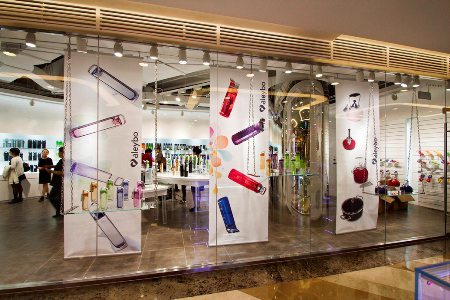
All flexible structures were designed to be as convenient as possible for in-store staff to operate and adjust. To complete the window design, we produced a flexible lighting scheme to highlight products and posters in this area of the store.
In the store, our main thought was to create a neatly organized product display. To achieve this, we grouped the products according to brands and placed several items of the same design and color side by side. This emphasizes the richness of the colors which stand out against the white setting and creates a rainbow effect.
The newly designed Aleybo store opened on October 12, 2013.
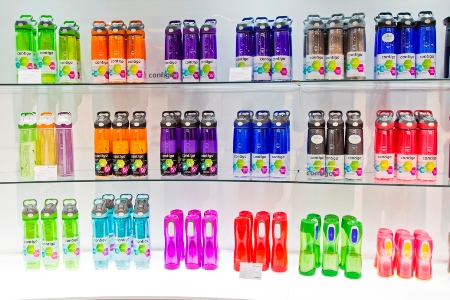
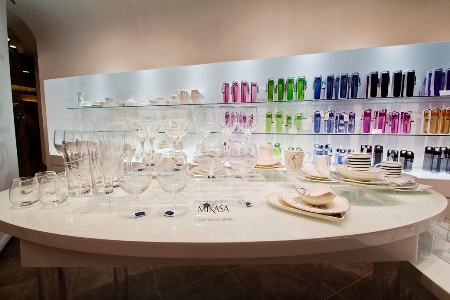
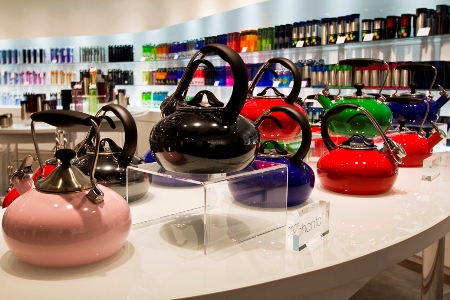 > back to top of page
> back to top of page

Store Design: MASH Flagship Store in Beijing
September 11th, 2013
MASH, a stylish European fashion brand from Verona, Italy, is positioned in the upper medium segment of the market. The collections are casual yet chic, with Italian sophistication apparent in the quality of materials, especially the detail of the garments and the overall design of the clothing. This approach had to be reflected in the atmosphere and design of their flagship store in Beijing.
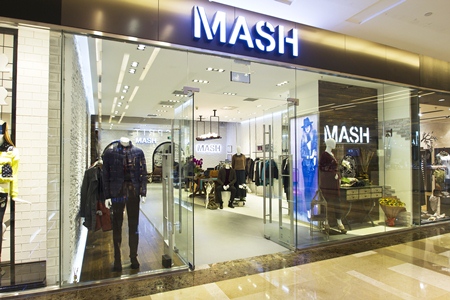
With the flagship store located in Beijing's Solana Mall, 5 Star Plus Retail Design created a store design inspired by a conceptual design scheme provided by the Italian brand as well as the geographic environment of the fashion producer – the city of Verona. The main design goal was to use the store's design to tell the brand's story and to create an easily recognizable connection to the city of Verona in order to clearly distinguish MASH from its competitors in the local Chinese market.
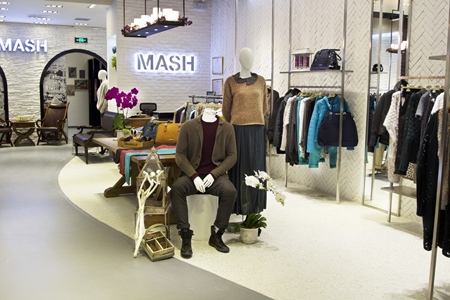
The display areas for MASH Queen and MASH Uomo, the women's and men's fashion collections, were created as islands to the right and left side of the store with different flooring and wall finishes. While the space for MASH Queen has a more sophisticated feel thanks to dynamic display fixtures with slightly varying shelf heights and bright mosaic flooring, the area around Mash Uomo is more masculine, characterized by a weathered wooden floor and a three meter high custom-made casual display unit. The central floor space is kept in a neutral grey shade and is a reference to Verona's main river Adige and leads customers to the store's back wall which features arcades with abstract black-and-white views of the city. An open arcade leads to the fitting rooms.
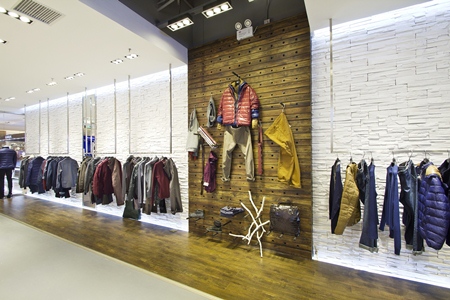
The fact that MASH is a new fashion brand in China was an important consideration during the whole design process and influenced strategic design aspects. As many Chinese are quite familiar with Italian culture and architecture, it was important to use classical Italian elements and interpret them in a contemporary way to emphasize on the brand's origin. The store concept is laid out to further enhance MASH as an Italian brand with casual yet chic design.
The MASH flagship store in Beiijng opened on August 30th.
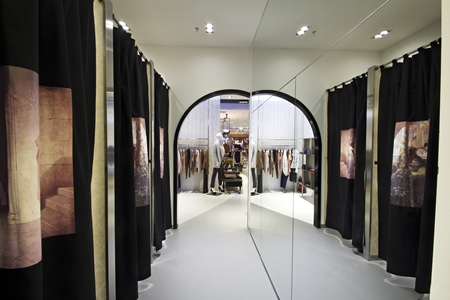
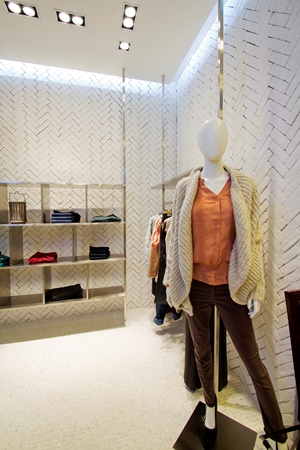 > back to top of page
> back to top of page

The Building of a Fashion Store
September 4th, 2013
How are stores being built? Below is a brief introduction to the process.
After the design brief is confirmed, the next step in a retail store project's practical work always starts with a site survey.
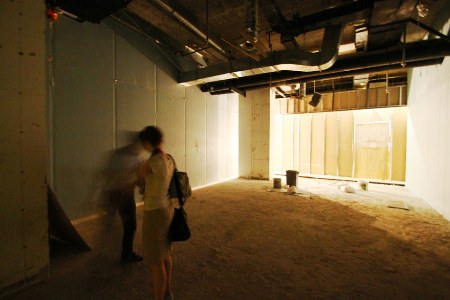
Then, the store design concept and technical plans are created during several weeks.
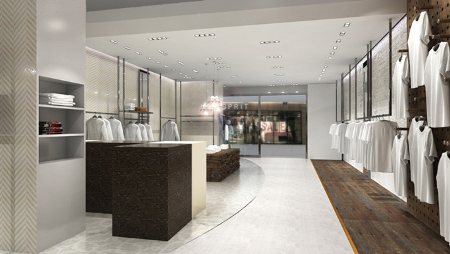
After approval from the landlord and fire protection bureau, construction work can start. A simple retail store construction project lasts at least four to six weeks.
The 1st week: A steel frame for the shop's ceiling and walls are created. Partitions to divide the space are built.
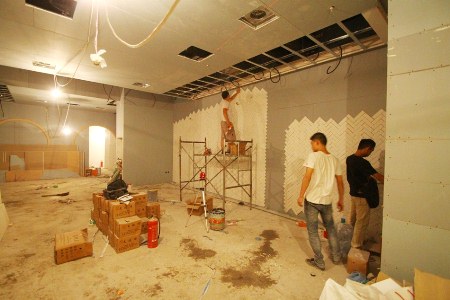
The 2nd construction week: The store's ceiling and part of the wall covering are produced.
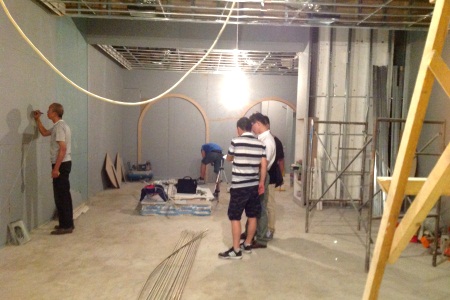
The 3rd and 4th week: Built-in furniture is created, the walls are finished and display fixtures are mounted on site. Then, lighting fixtures and flooring is installed. The end of the store construction is marked with the delivery of movable furniture pieces and accessories and a deep cleaning session.

After being been inspected by the landlord and the fire protection bureau, the store is ready to be opened!
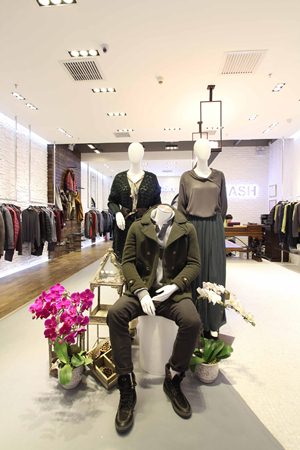
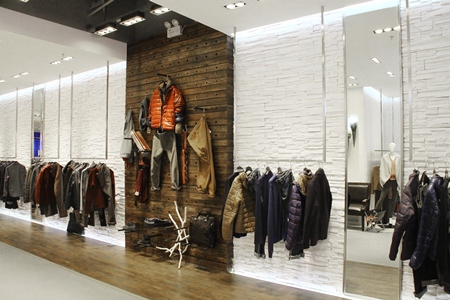 > back to top of page
> back to top of page

The Mystery of the Store Design Process uncovered
August 22nd, 2013
For many people, it is neither obvious nor traceable how designers create a store design for a brand. The whole underlying design approach is a mystery to them. There is, in fact, a standard process which we have outlined in the following paragraphs. It is important to note that for a store design project to be successful, all of the below stages are imperative and equally important.
1. The Client Brief
A project generally starts with a client brief. This is a document created by the brand listing the background, expectations, and limitations of the store design project. Sometimes, the design team meets with the client several times before writing all information up into one document becoming the client brief. The client brief usually needs to be signed by the brand and becomes the basis for all future design and project related work.
2. The Information Gathering & Analysis Phase
During this phase, the design team collects information about the background of the client and project, does a site survey and analysis, conducts market research about the products and competitors, and looks for potential inspirations which could be suitable for the store design project. Sometimes, the designers will ask the brand to provide additional information or fill out a questionnaire. This allows them to better understand the client company's strategic and marketing objectives, and involve stakeholders from different client departments. The analytical work done at this stage usually also includes a space analysis, evaluation of the work flow in the store, as well as diverse charts and visual representations.
It is very important that the brand's marketing goals and strategic objectives are well understood by the designers considering a store's design is as important as advertising in communicating a message to customers. Therefore, sufficient time needs to be spent by both the design team and the client on discussing the brand identity, heritage and proposed values.
3. The Preliminary Design
Based on the collected information and analysis, the designers create potential spatial layouts and concept development sketches. The goal is to better understand the properties of the store space, the brand characteristics, and create possible concept directions by bringing the various factors together.
Space planning also includes identifying strategically important areas in the store. This can include positions for signage, the logo, a brand story wall, and/or a featured product display.
Once the conceptual direction of the store design project becomes more concrete, the designers create a preliminary design scheme. This includes the proposed style, color scheme, as well as some preferred materials and finishes to be used in the project. This preliminary design concept then needs to be discussed and agreed on between the brand and the design team. Everything to be designed from here on should be according to the agreed design concept.
4. The Detailed Design
After the design concept is confirmed, the design team can start with the detailed design development: the creation of 3D visuals, technical drawings, and selection of products.
3D renderings (visuals) are usually created of views of the fa?ade and different interior perspectives. Technical drawings include different floor plans with furniture, elevations with fixtures and furniture, detail drawings and furniture specification drawings. The design team will select suitable materials and compose a sample board, as well as producing prototypes of fixtures when required.
A very important part of a store's design is the lighting scheme which has to be confirmed at this stage. The designers will create a lighting plan and select suitable products. At the same time, the amount and positioning of light switches, electrical power outlets, telephone and internet ports, speakers, and alarm systems have to be confirmed and marked on the respective plans.
To complete the set of technical drawings required for a design submission to the retail landlord or fire protection department, a set of electrical and fire protection plans also needs to be prepared.
Summary
As in most cases, frequent communication between the brand and the design team is key to the success of the project. It is important that both parties understand the steps of the store design process and are aware of each other's expectations. In addition, designers need to ensure that sufficient time is spent during the information gathering and analysis phase to guarantee that all options are considered and that the client is presented with the best possible store design solution.
> back to top of page

Introduction to China's Premium Shopping Malls
July 27th, 2013
Unlike ten years ago, China now offers a range of options for high end retail brands who wish to open a store. While department stores and malls traditionally had a focus on well-known luxury watch, jewelry and fashion brands, more and more shopping malls now resemble their Western counterparts. Retail landlords are not only targeting international medium to high end brands, but are also giving attention to design, creative and artistic aspects. All of these malls have their own advantages, and brands have to determine which location is best based on their brand image, including positioning and retail design, as well as their planned expansion strategy. The following paragraphs list some of the many options that brands have today.
Shinkong Place
Since opening in Beijing in 2007, the mall has changed the city's retail landscape sitting at the forefront of luxury retail destinations. It is a standalone mall with the highest reported single mall revenue in China since 2011. In 2012, its revenue reportedly exceeded 7 billion Yuan (approx. 1.13 billion USD), increasing 12% year-on-year. Despite appearing like a shopping mall, Shingkong Place is operated as a department store. Originally attracting consumers with the flagship stores of Prada and Gucci, the landlord has put tireless efforts in further upgrading the premises, moving designer brands to higher floors in order to create space for a new Dior store. A Louis Vuitton flagship store is scheduled to open there in August 2013.
Hangzhou Tower
Before 2011, Hangzhou Tower in the East of China held the rank as Chinese mall with the highest revenue for four years. With revenue of 5.9 billion Yuan in 2012, the department store now ranks second in China. Hangzhou Tower is in fact a conglomerate of several shopping mall buildings (everything from luxury, high end, to medium and lower end) which are connected by air bridges and corridors.
Yansha Friendship Store
Also ranking high in terms of sales revenue, Yansha Youyi Shopping Center exceeds Shinkong Place when it reports its figures as a group. The Yansha group comprises Beijing Yansha Liangma Shopping Center, the Beijing Yansha Jinyuan store and its Department Store in Taiyuan city in Shanxi province. Brands that want to open in the Yansha Liangma flagship store, which offers the best foot traffic, are often asked to also open in the other two stores. Yansha Liangma Center is one of the oldest department stores selling international high end products in Beijing: partly state-owned, it started operations in 1992.
China World Mall
Being located in the heart of Beijing's Central Business District at the bottom of the capital's tallest building (China World Tower 3), China World Mall occupies a premium location in the city. China World Mall is also one of Beijing's earliest international shopping malls, being open since the early 1990s. The mall's foot traffic and sales revenue were somewhat impacted by the opening and strong marketing efforts of Shinkong Place, but the mall is undertaking extensive restoration and upgrading the overall retail design. Due to its central location in the CBD, the mall has a steady customer flow.
Recently, many of the world's top tier luxury brands including Hermes, Fendi and Max Mara have been expanding their shop floor size from the first floor into the lower ground level. Chinese brand Shangxia, who is backed by Hermes, decided to open its Beijing flagship store in China World mall. The store features a spectacular store design created by world renowned Japanese architect Kengo Kuma.
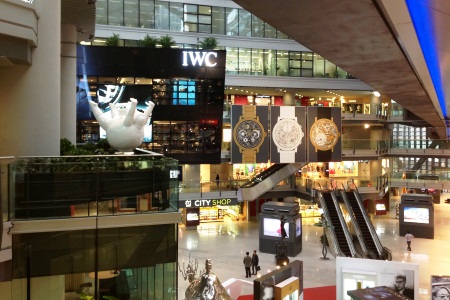
Plaza 66
In Shanghai, Hong Kong Hanglung groups's Plaza 66 lead the way as a first choice luxury retail location until IFC Mall opened. Plaza 66 is ocated at Shanghai's prestigious Nanjing Xi Lu shopping street among other high end retail malls. Louis Vuitton recently redesigned and expanded its store space there and opened with a huge store front which represents a great branding opportunity in this busy upscale shopping area. The store design for the 16th Maison of Louis Vuitton was created by Peter Marino.
The Hanglung group has also been expanding into other cities, especially Shenyang, with projects like Forum 66 and Palace 66. In Shanghai, they further operate Grand Gateway 66, a mall with medium to high end branded stores.
IFC Mall
Also in Shanghai and owned by Hong Kong's Sun Hung Kai Properties, IFC Mall opened in 2010 and is located in Lujiazui financial district not far from the Pearl Tower, making it an interesting shopping destination for local affluent residents and tourists alike. Most top tier luxury brands have secured a store location in this mall.
Other Malls
Two groups who are operating shopping malls and should be watched are Charter and MIXC. Changchun-based Charter is a mainland Chinese group that built up several successful malls in Northern China, before acquiring a property in Beijing's West which is now also marketed under the Charter brand. For cities in the north, Charter malls are a first choice location for high end brands.
MIXC is quite unique in its positioning, since they are one of the few landlords that also targets international medium and designer brands. Based in Shenzhen, the group has built successful malls in Hangzhou, Shenyang and Chengdu, and is further developing in several other cities.
n the last few years, several new and exciting mall projects have been built, with two interesting examples being Parkview Green in Beijing and K11 in Shanghai, both exhibiting art pieces and attracting a new generation of international designer brands. By creating a flair of art and design, these malls successfully differentiate themselves and bring the shopping experience of Chinese consumers to a new level.
Also see our article on Chinese cities with the highest potential for new store locations to learn more about a successful retail expansion in China.
> back to top of page

How Can Smaller Brands Make a Profit in China?
June 2nd, 2013
Smaller brands often struggle with a successful retail presence in China. While the most popular luxury brands are frequently paid to open a flagship store in malls, the smaller brands are the ones that have to cover this cost and pay very high store rents. Marketing and communication efforts in a country with the size of China are also expensive. In order to succeed, brands have to understand the Chinese market and sometimes need to apply strategies which are different to their usual approach. We have outlined four tactics that have proven successful for smaller brands.
1. Start small and test your products in the local market
Sell your products on Taobao (the Chinese eBay), e-tailing platforms, or in collaboration with multibrand retailers before opening a brick-and-mortar store.
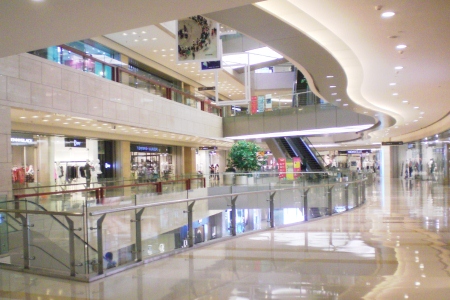
2. Once your products have proven to be popular among consumers, and you have achieved a basic level of brand awareness and some media interest, continue to build up your retail strategy
Design a concept store to further build awareness and educate consumers about your brand and open smaller stores and corners in shopping malls or department stores which offer good foot traffic. Alternatively, build your brand awareness mainly through online channels and then promote your products at a media event, exhibition, or similar, before opening small sales points. Entering into a franchise agreement with a well-established distributor is a good way to delegate costs and risk. Remember to maintain control over where stores are opened, retail design aspects and advertising, since these factors directly affect your brand image.
3. Build up relationships with fashion and lifestyle media
If editors like your brand and products, they are often willing to introduce your products without cost in their magazines, and use them for fashion shoots.
4. Make sure you have the basics right
All your efforts will be lost if you haven't built up your legal entity that permits you to do business in China. Also ensure to test your products at authorized entities in order to ensure you conform to industry requirements, print Chinese labels, and arrange your POS system including a working credit card reader in time. These things can often take several months in China.
> back to top of page

5 Points on How a Well-Designed Signage Can Drive Customers into your Store
May 23rd, 2013
A logo signage is an integral element of a brand’s visual identity. What are the key points to consider when designing a logo signage for the brand’s store fa?ade? How much business could you lose because your signage does not create customer interest?
1. Visibility is the most important aspect. Having logo signage that is not visible is like operating a store without a name or brand identity. Great brand awareness building and potential sales opportunities are lost with a logo that is not apparent.
2. A signage on the fa?ade needs to create a strong impact. The goal of the retail designer is to create a 'Wow!' factor that makes customers stop in front of the store.
3. In addition, the signage has to spark interest to attract customers into the store.
4. An often overlooked point is legibility: Signage featuring a brand name needs to be designed in big enough, clear letters for customers to read. What would be the benefit of designing your store signage in a font that customers cannot interpret?
5. The last important aspect to consider is the alignment with the Brand Identity. A signage has to represents a brand’s identity and be a crucial element of all retail design efforts and the visual identity concept. Colors, forms, materials and typefaces, all serve to express intrinsic brand values.
Ensuring that these five aspects are implemented correctly when designing logo signage for your stores will maximize brand awareness, sales, and brand loyalty as a result.
Here is a list of the most common mistakes that brands make:
1. There is no signage
2. The logo is too small and cannot be read
3. The logo is positioned at a non-strategic location and is therefore not visible
4. Unsuitable materials are used for the signage which e.g. reflect the light or do not contrast with the background – the signage is unreadable
5. Complex or script style font is used in the signage – the brand name is hard to read
We especially like the design of the GAP signage (these pictures were taken at their store in Parkview Green). By having their logo placed above and on the two sides of its entrance, customers definitely notice the brand name. The logo is designed in clear, large, white letters on a dark background, making the logo easy to read. A cube version of the logo signage as well as a large format style ensure that the brand name is visible from all sides and very far away.
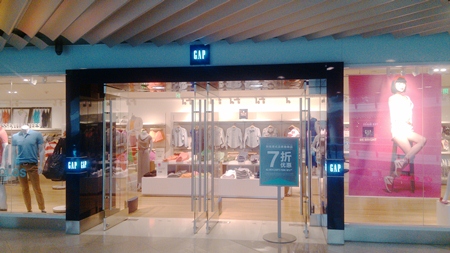
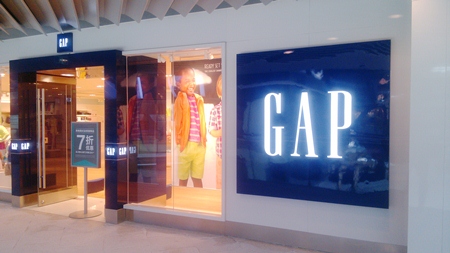
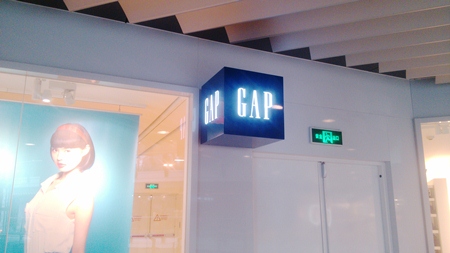
The following brand signages are designed especifically well and are very effective in achieving their marketing goals (pictures were taken in China World Mall and Parkview Green):
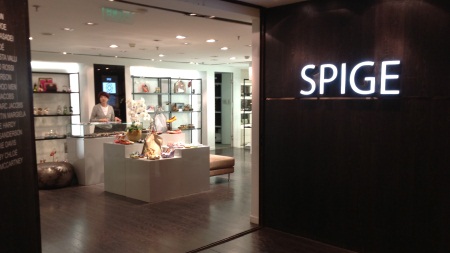
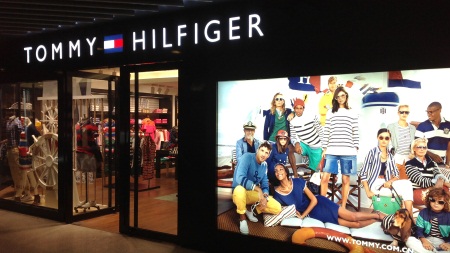
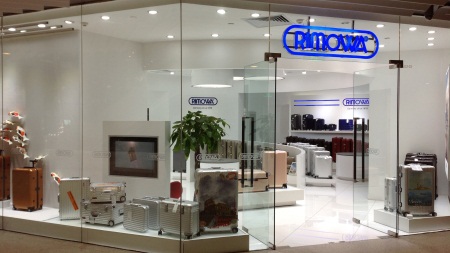
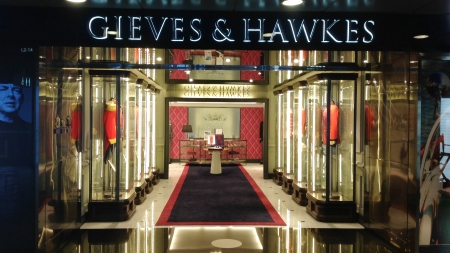
Gieves & Hawkes has two signages visible from the entrance, one on the store front above the door and another one inside, mirroring the first one. Thanks to the viewing perspective it seems like the interior signage is directly below the exterior logo.
And here are some examples of less than perfect signage designs:
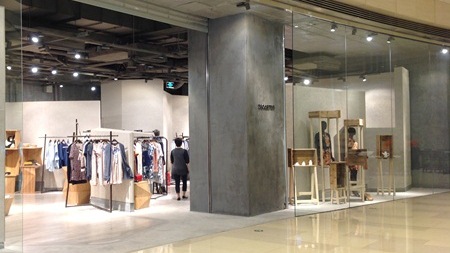
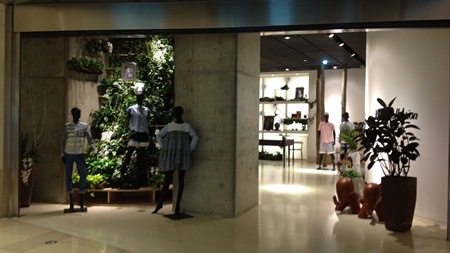
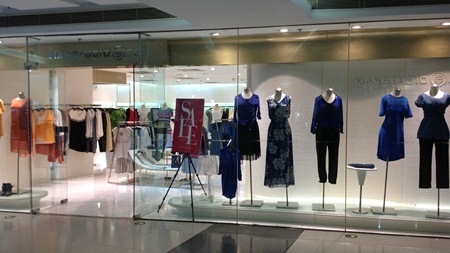
Can you find the logo? Can you read it? (A hint: the signage on the second picture is hidden behind the plant!)
Let us look at some of the lessons learned from the above examples and summarize the key points:
1. Try to represent your brand image and what you offer through your logo signage.
2. Maximize readability.
3. Maximize contrast. White letters look larger than the same text in darker colors. Light letters also seem to be closer, while darker letters seem to recede in the background.
4. Serif and Sans Serif fonts: Sans Serif fonts communicate a strong image, while Serif fonts project a more traditional, and sometimes more sophisticated positioning.
5. Be aware of the background and surroundings of the signage and avoid that it gets lost in the environment.
> back to top of page

Beijing or Shanghai for Brand Headquarters?
May 15th, 2013
Retail brands need to consider carefully whether to establish their China headquarters in Shanghai or Beijing. The majority of fashion brands has opted for Shanghai in the past, but Beijing, the capital city, has a lot to offer too. In fact, Beijing as a headquarters might be more suitable for certain brands. Why? Let's take a look at some of the characteristics of these two Chinese metropolises.
Historically, Shanghai used to be more open and westernized, not only as a city but also in terms of government regulations and the way business was executed. As a consequence, consumers in Shanghai are already very familiar with Western styles and foreign designer brands. The city also offers interesting architectural styles, many green recreational areas and an international entertainment, bar and restaurant scene that allows foreign executives to feel at home without difficulty. All these factors combined made Shanghai a first choice for a market entry into mainland China.
Today, with a large number of luxury and designer stores, the city continues to lead the way as the fashion capital of China, but other cities are rapidly catching up. Beijing, Hangzhou, Guangzhou, Chengdu, and Shenyang, among others, all offer well-developed fashion and lifestyle brand landscapes, an appetite for foreign brands and government regulations more moderate than a few years ago. The argument of Shanghai's openness and better developed fashion taste does not suffice any more to justify a brand's investment into a head office location, or does it?
From our point of view, Shanghai's strongest advantage that justifies the establishment of a local headquarter is its central geographic position in mainland China. So far, the majority of cities usually targeted for an expansion by brands are located in the East of the country, and all important cities in the North and South can be reached by plane in about two hours. Of course, this implies that the brand we are talking about does plan for a balanced expansion strategy into the North, South and West of the country. This would mean, for example, opening retail stores in Shanghai, Hangzhou, Nanjing, (both close to Shanghai / central China), Beijing, Shenyang, Harbin (in the North), Chengdu and Chongqing (in the West), and Guangzhou and Shenzhen (in the South). But should a brand plan its expansion like this?
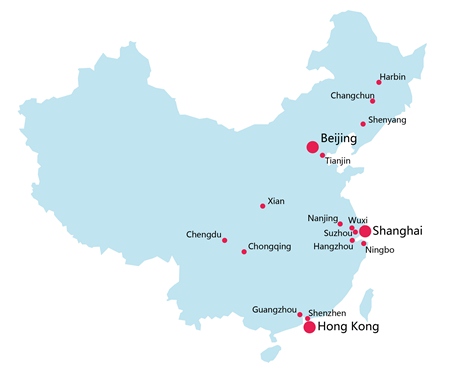
Well, this would depend on each brand's unique positioning, financial resources and planned commitment to Chinese market expansion, as well as their production capacities. Some brands choose to maintain their flair of exclusivity by opening not more than five flagship stores in mainland China, others (look at many watch brands!) together with franchise partners have opened hundreds of points of sale including "global flagship stores", concept stores, boutiques, and department store counters all over the country. There are others again, such as smaller, often family owned businesses, who manufacture and craft the pieces by hand, and can therefore only expand in pace with their production capacity.
Read our articles on Chinese cities with the highest potential for new store locations and the potential of the Chinese luxury retail market to learn more and optimize your expansion strategy in China.
In each case, a brand needs to analyze the different submarkets in Chinese cities and where the products might sell best based on local consumer preferences and culture. Marketing means and product offerings may have to be slightly adjusted accordingly, but need to remain part of an overall brand strategy and visual identity. And by researching the characteristics of different consumer segments and geographies, brands might realize that opening more stores in the North rather than the South makes more sense to them.
Many people know that Beijing, as the capital city, is where most of the government and military bureaus are located and their employees are regular consumers of luxury brands. Aside from government and military, most media headquarters are also located in Beijing. This includes high-end fashion magazines such as Vogue, Bazaar and Marie Claire, but also social media such as Sina Weibo, art related institutions and many new creative agencies. To market a brand successfully, it is necessary to stay touch with the media and regularly attend their industry events.
Beijing is also the city where most of China’s millionaires live and where most of the retail sales revenue is made. According to a report published by Hurun in 2012, Shanghai ranks no. 3 as home to wealthy Chinese after Beijing and Guangdong province. Northern Chinese consumers have a large appetite for luxury goods and are less likely to travel (and purchase) abroad than their counterparts from the South. This is another factor that makes Beijing and the North of China an attractive location. Guangzhou and Shenzhen (both in the South) are located very close to Hong Kong, and local consumers are tempted to take a daytrip to Hong Kong to purchase the latest luxury products for a much lower price, due to the low import and sales taxes there.
Shanghai has been promoted as China’s “Fashion Mecca” in the past, but the truth is, that many luxury stores act as store front showcases only to create brand awareness, raise the image and pave the way for an expansion into smaller second and third tier cities. This sad detail might also be due to the fact that Shanghai is surrounded by other, smaller, well developed and very livable cities (Hangzhou, Nanjing, Wuxi, Suzhou, and Ningbo) which are also home to a range of luxury mall developments. As a result, luxury sales are spread over the region rather than concentrated in one of these cities.
In contrast, Beijing is considered a "stand-alone" market. Thanks to the government's various programs to stimulate the capital's economic and cultural growth, the city has been able to continuously attract tourists and business travellers from all over China. All have had a strong impact on luxury sales. Tianjin, Beijing's sister city, despite extensive government promotion in recent years, has not experienced the same take-off in demand for luxury goods.
It is no coincidence that most luxury brands have opened additional, bigger and better stores in Beijing than Shanghai. These stores are designed to impress and showcase a brand's heritage through oversized store dimensions. People in the North also tend to be more attracted to "bling" and showing off their luxury purchases, tending to spend a higher portion of their savings on luxury items as compared to residents in the South.
In summary, China is a country with a size and amount of submarkets comparable to Europe, and should be treated as such rather than as a single geographic entity. It is worth investing in detailed market research to understand the motivations that drive different consumer subdivisions, as well as considering the infrastructure of locations in order to determine an appropriate distribution strategy. Taking into account the brand's requirements for government and media relations, the availability of partners such as licensees or producers, and after defining the overall strategy for China, it will be easy to choose the right city for a brand's headquarters.
> back to top of page

Increasing Sales through the Transition Area
April 6th, 2013
The utilization of the transition area in stores is a strategy that is often overlooked in retail design. This negligence has a direct impact on the effectiveness of a store's design and may lead to the loss of potential sales opportunities.
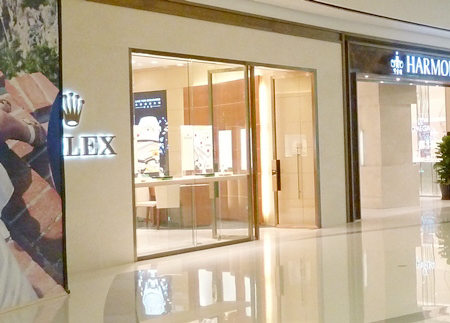
A transition area is the space in a store located near the entrance that acts as a buffer between the outside world and in-store brand experience. Its most important function is to slow down the customers' speed and level of stress so that they can start to focus on the actual store environment and products on display.
The busier and noisier the area outside of a store - be it a street or a corridor in a mall - the bigger and more effective the transition area needs to be. Certain strategies can be implemented even in very small spaces as part of a store design to optimize the transition area. Power displays close to the entrance function as barriers that cause the the customer to slow down and familiarize with the products and their new location without having to wait until they explore the whole space.
Transition areas should also instill a buying mood and bring customers from their own world into the brand's realm. A good approach to do this is to appeal to different senses with music, color and smell in the entrance area. Interesting products or items, which can be touched and felt, may be placed there as well.
Essentially, transition areas need to be optimized to increase the effectiveness of a store's design and merchandising strategy in order to stimulate customers' brand awareness and purchases.
> back to top of page

Opening of Hanna Trachten in Vienna
April 5th, 2013
The Hanna TrachtenFlagship store in Vienna designed by 5 Star Plus Retail Design invited us to their big opening event on March 20th, 2013. The event included attendance by some of Vienna's most well-known celebrities.
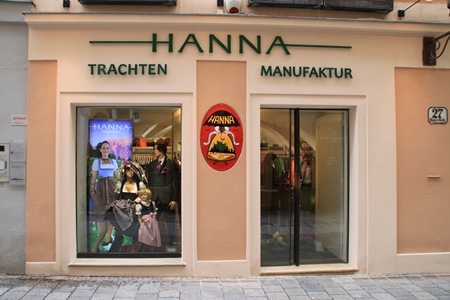
The brand, founded more than 60 years ago, has successfully repositioned itself as a provider of traditional clothing with a modern twist. All garments are designed, manufactured and sold by the brand itself.
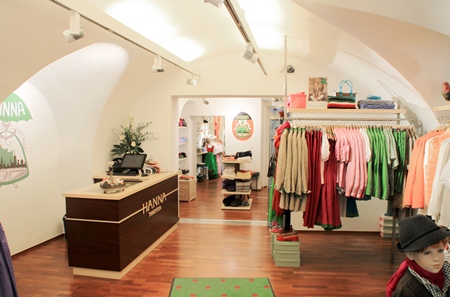
For the Vienna flagship store, located in the city's high end shopping district, 5 Star Plus Retail Design created a themed, yet elegant store design scheme featuring traditional Austrian furniture pieces. As customers enter the store from the city, their surroundings transform into a fairytale world and magical forest.
The design of the first rooms' plays with the vaults of a medieval town building and references Salzburg, the hometown of the brand. A corridor that acts as a virtual passage into a mystic world, leads to other sales rooms and displays children's clothing and walls decorated with illustrated animals of the forest.
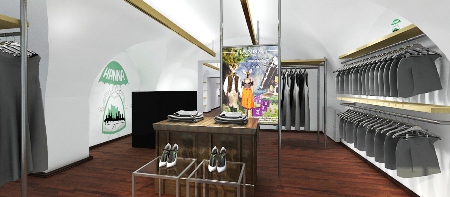
All shelving fixtures of the store are custom-designed to fit the vaulted and irregular walls.
To promote brand awareness, a strong focus is kept on positioning branding elements throughout the store: signage and logos are strategically located on walls and above fixtures. Further awareness is created with a poster light box and the brand's history in the VIP customer area.
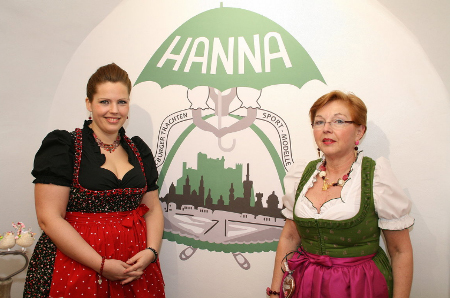
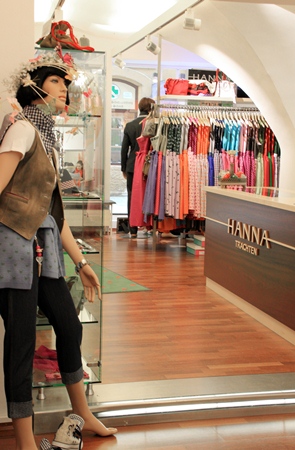 > back to top of page
> back to top of page

The Store as Brand Extension: What are the benefits?
March 25th, 2013
It is well-known that a good store design results in higher sales figures. This applies to China just like everywhere else. But why is it so important that a store becomes an extension of the brand?
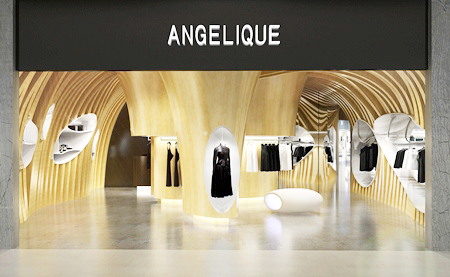
Today, with the expansive range of brands and product choices available to consumers, creating a strong brand with a clearly defined personality and values that emotionally connect to customers is more important than ever.
Impressions of a brand to customers are usually first created by media, online presence and/or physical visits of stores. This creates customer expectations of the kind of look and experience a store of the same brand will have. When the store environments do not meet these expectations, customers can be disappointed.
In fact, each retail store and its design are a unique opportunity for a brand to express their personality and interact with customers. Well trained and motivated sales staff can educate customers about a brand's background and valuable information beyond just the products which might be a brand's heritage, handicraft, or certain lifestyle the brand promotes.
By selecting appropriate colors and materials and with a creative retail design concept, store environments can be an actual representation of a brand by becoming a 3D manifestation of an otherwise abstract concept. This promotes the emotional attachment of customers to their favorite brand and sustains brand loyalty. Sometimes, certain elements of a global store design
concept need to be locally adjusted to match characteristics of China's specific target consumer group.
The bottom line is that stores have to be designed to amaze and excite based on a brand's personality, independently from whether this is with a themed, abstract, tied-down or traditional approach to a design concept
> back to top of page

10 Things to consider when bringing a new brand to China
March 24th, 2013
"China is a place where quick money can be made." This is one of the common misconceptions many brands make before coming to China. In fact, there are many crucial factors to consider first when planning a brand's expansion. Some important considerations have been listed here.
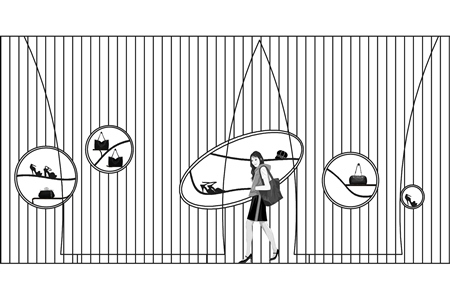
1. Research the market to make sure that there is the required market potential and that your brand can compete against rivaling companies. In most cases, business models and product ranges that are effective in other markets need to be altered.
2. Analyze the brand image and check whether details of the brand's corporate identity and positioning need to be adjusted to the Chinese market. This could be an emphasis on certain values, or an adaptation of parts of the visual identity such as colors and materials used in the store design.
3. Be realistic about the financial investment and long term commitment that is required for a successful presence in China. Store rents, salaries, advertising and import costs are higher than many expect. Plan for the long term.
4. Choose a city for the company's headquarters and first store. Both Beijing and Shanghai have their own advantages. You should look at the existing
brand landscape, consumer behavior, established competitors, but also at available access to media, government institutions and business partners. In every case your decision needs to be in line with your expansion plans. Visit our blog post on the retail potential of different Chinese cities for more information.
5. Look for store locations which both offer high foot traffic and satisfy brand requirements. Traditionally, many retail environments with a well-established, wealthy customer base were housed in rather outdated spaces. This affected the image of many international brands; store designs in China could not be executed in the same way as other locations but modern and well-designed shopping malls could not offer the same foot traffic as established malls. Things are slowly changing, but brands will continue to have to make a compromise.
6. Spend time researching and planning your distribution strategy. Make careful considerations when choosing between working with shopping malls as opposed to department stores – each model has their own advantages and implications on setup and accounting.
7. Ensure that the brand message in advertisements and in stores is aligned. Many brands communicate a different image in print media or on their website than through their store design. Sometimes, products promoted in media are not available in stores, and in many cases the store environment including design, merchandise and sales staff is not up to the customers' expectations. Make sure that your brand's image is consistent across all forms of communication.
8. Hire a motivated team for office and stores right from the beginning to push the brand's development. This is because it takes time for a new brand to create awareness before taking off. It is important to make the best first impression with the market as possible.
9. Make sure that you choose the right partners with experience in your market. This applies to registration and accounting companies, but also retail design practices or licensees.
10. Stay in for the long run. Keep in mind that China is a very quickly developing and dynamic market so it is important to stay updated to be ready when changes are necessary. On the other hand, due to cultural reasons and the obvious size of the market, good things can take time to develop. Build a solid foundation and observe your progress.
> back to top of page

The Transformation of Department Stores
March 24th, 2013
Department stores all over the world are realizing the need for change. Initiated by their counterparts in the US, an increasing number of shopping mall projects has seen Chinese department stores attempt to keep up by redesigning their retail environment, aiming to create a better experience for their customers. The following are some examples of elements that are being introduced and incorporated into Chinese department stores.
Bringing in natural light
By opening up perimeter walls, the addition of windows, atriums or skylights, previously excluded natural light can penetrate the store interior and create a completely new feeling of wellbeing and relaxation. Light flooding is especially effective in cafes and restaurants to invite people to spend more time in-store and as a result, purchase more.
Aligning the interior with the brand strategy
The modern customer does not want to shop in an undefined, boring space. Today, brands are constantly developing means to differentiate themselves and communicate with customers, particularly through in-store experience. Many department store chains such as e.g. Macy's have started to create a new store design concept that translates their brand values and positioning into a three dimensional environment and can be rolled out to stores of different sizes. Materials, colors and shapes are used to express an attitude or view of life that is part of the brand strategy and appeals to target customers. In common areas, good design with unique details can play a vital role in distinguishing a store from its competitors.
Increasing flexibility & design collaborations
Department store retailers have further been putting the focus of their design efforts on increasing flexibility. This is to allow for seasonal changes and other adjustments of the floor plan as required. Some have been partnering with luxury brands, designers or celebrities to create limited edition product collections or sub-category departments with the goal of drawing more people into stores and keeping them there.
Taking advantage of technology
Retailers are becoming more experimental by trying out new concepts and technologies in selected test stores. While some of these initiatives focus on the improved interaction between the customer and sales staff at better designed kiosks, others want to bring the customer experience to a new level by equipping sales personnel with new and sometimes interactive technology. Examples include iPads and displays that make use of items such as LED lighting and LCD screens.
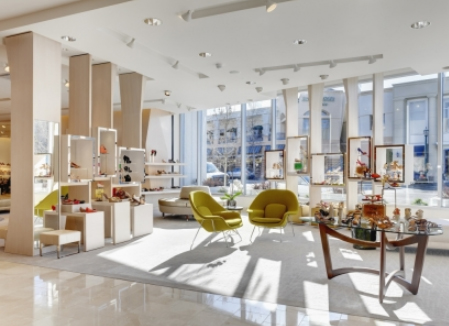
Source: VMSD
> back to top of page

Luxury Store Design Trends in 2013
January 28th, 2013
As industry sources recently analyzed - including The Financial - there are currently two major trends in luxury store design. Many major brands have been expanding with an increased number of store openings in second-tier cities in China. This has seen their exclusive brand image being affected by the increased accessibility of their products and stores. In fact, many Chinese consumers feel that brands are less high-end when readily available.
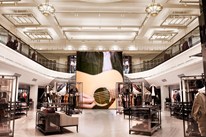
In order to decrease this risk inherent to store expansion, luxury brands are adopting a number of strategies, one of which is, of course, to express their premium position throughout the store design. While branding is always a very important part of retail design, further elements, such as specific characteristics of target customers, local culture or art integrated into a flagship store design all help to correctly reflect the brand's intentions and ultimately strengthen the brand positioning as well as result in higher sales.
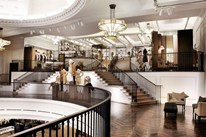
Another trend created by forward-looking luxury and high-end brands is to build a retail experience for their customer that is welcoming, open and relaxed. Pioneers adopting this strategy are Apple and Burberry, who recently opened a new flagship store on London's Regent Street.
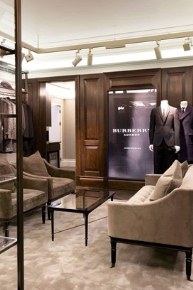
As announced by Burberry, the brand's goal is to "bring the Burberry.com digital experience into a physical space, future-proofed to stay ahead of, and allow for, the continuous evolution of the brand". It is about a brand showcase beyond just a flagship store, and has the goal to integrate Burberry's online presence with the physical world. To achieve this, it features abundant digital technology to create a multimedia and multi-sense retail experience for customers. Mirrors and walls that can transform into screens respond to products with RFID (Radio Frequency Identification) tags to show specific information when pieces are moved. The sales personnel are equipped with iPads to provide a further personalized shopping experience, taking advantage of the preferences shown in online profiles of customers.
Burberry also installed a high tech 39 square-meter sound and display system which creates a virtual, synchronized rain shower that appears throughout the whole store at regular intervals of time. This effect further expresses the Burberry brand whose products (their trench coats in particular!) are designed to function with the weather. According to consumers who visited the flagship store, the place is accessible and relaxed, and customers do not feel pressured to buy, but are rather encouraged to stay and experience.
The furniture and fittings created by British craftsmen during many months of labor are classic in style and create a feeling of sophistication and elegance in the listed 20th century building. Heritage pieces which are displayed in a museum-exhibit-like style further build an awareness of the history of the brand. While the realization of Burberry's new global flagship store was undoubtedly a large investment, the brand has successfully managed to strengthen its positioning and continues to lead the way as forward looking luxury retailer.
For more details on Burberry's new flagship store design visit Business of Fashion and Time Out.
> back to top of page

Opening of Galaxy Soho Mall in Beijing
October 29, 2012
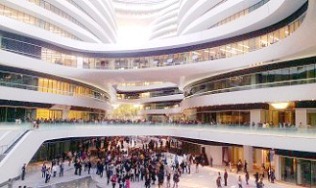
Galaxy SOHO Mall in Beijing invited 5 Star Plus Retail Design to a formal opening event on October 27th, 2012. This new project comprising a combination of several retail floors, offices and apartments is located at the East Second Ring Road. It is just beside Chaoyangmen and the popular Chaowai Shopping area. It is therefore likely to attract a number of leading international retailers for investment. In addition, Galaxy SOHO is situated not far from Dongzhimen with its successful malls such as Raffles City, but is also expected to leverage on the many government and MNC offices based in the area.
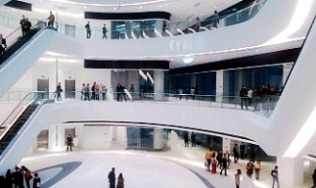
The project was designed by Zaha Hadid Architects, who also attended the opening event. According to the architect, the building is a modern interpretation of a traditional Chinese courtyard, consisting of five surrounding buildings and a central courtyard.
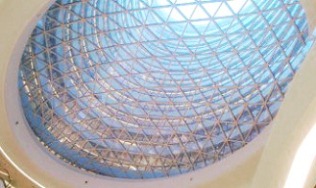 > back to top of page
> back to top of page

What are the Top Potential Cities for New Store Locations in China?
October 28, 2012
It is not easy for retailers to settle on a market expansion strategy and choose between Chinese cities. A few years ago, approximately five to six Chinese cities were considered as being attractive enough, i.e. would present the level of maturity and demand for international and luxury retail goods to qualify for a new store location. Today, there are many Chinese cities that should also be considered for brands to expand their market.
Jones Lang LaSalle (JLL) observed in a recently published China real estate report (China 50 – Fifty Real Estate Markets that Matter) that several cities, which were classified as Tier 2 cities in 2009, have developed rapidly in the last two years and should now be classified as tier 1.5 cities. These cities comprise Chengdu, Chongqing, Dalian, Hangzhou, Nanjing, Shenyang, Suzhou, Tianjin and Wuhan. JLL justifies this new classification with the strong increase in maturity as well as the rapid infrastructure and economic development in those areas. All nine cities have a critical mass of international retailers and hotel operators, domestic firms and MNCs making them predestined for new store locations of premium brands in China.
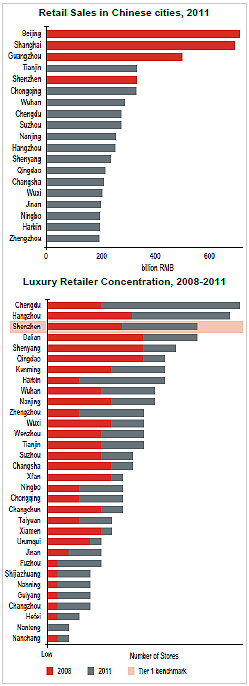
Source: Jones Lang LaSalle
The graphics on the right show retail sales and the concentration of luxury retailers in the biggest Chinese cities. Tier 1 cities are Beijing, Shanghai, Guangzhou, and Shenzhen, followed by China's Top 50 classified into Tier 1.5, Tier 2, and Tier 3. China's top 50 cities have an economic size comparable to Germany today and are further growing. JLL expects that by 2020, China's top 50 cities will have exceeded today's Japan.
How does this transition affect the retail market and retail sales? The retail market including retail sales and supply of stock are expected to further shift from Tier 1 to lower Tier cities. By 2020, Tier 1 cities will only constitute 21% of the retail stock market, while they had a share of 39% in 2011. The share of the Top 50 cities will increase from 61% to 70% until 2020.
During the last years, luxury brands appeared to adopt one of three different expansion strategies:
(1) a presence only or mainly in the Top 3 Chinese cities Beijing, Shanghai, and Guangzhou
(2) a focus on the Tier 1 and selected Tier 1.5 cities
(3) rapid expansion into Tier 1.5 and Tier 2 cities to leverage on the low density of international brands to gain market share
Often it is brands who wish to remain exclusive or have a limited production capacity, who open stores in Beijing, Shanghai and Guangzhou only. A strong presence in the Top 3 cities allows for the creation of a strong and exclusive brand image, but comes with increased rental and personnel costs. The retail expansion strategy which focuses on Tier 1 and selected Tier 1.5 cities is the most widely adopted among high end brands at the moment. On one side, the stores in Beijing, Shanghai and Guangzhou increase brand awareness among both consumers and retail landlords. On the other side, shops in Tier 1.5 cities give access to a fairly wealthy and educated customer base that are hungry for international products.
Opening new store locations in China's Tier 1.5 cities is a rather safe bet today, the markets are however slowly becoming as mature and saturated as the Top 3 cities Beijing, Shanghai and Guangzhou. The opening of stores in Tier 2 and lower Tier cities is somewhat more risky and brands need to allow for more time to see a return on their investment. Until today, most luxury retailers with a considerable presence in those cities are brands who are perceived as rather traditional, and watch brands. The charts below give an indication on various brands and their adopted expansion strategy.
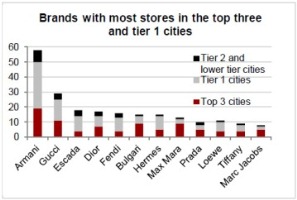
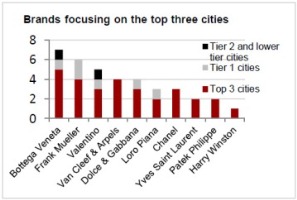
Source: The Bain Consulting Group (BCG)
Source: The Bain Consulting Group
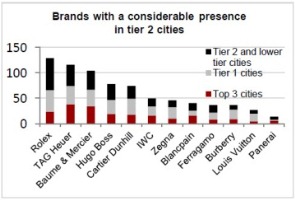
Source: The Bain Consulting Group
Note: BCG classifies some of the JLL's Tier 1.5 cities as Tier 2 cities
Since there are so many cities in China, deciding on one of them for a new store location of a specific retail brand is a difficult task. According to firms who conducted several years of in-depth research on this topic, Hangzhou, Chengdu, and Shenyang are the most attractive cities for retailers today. This again is based on factors such as the mature economic development, income and spending level of residents of these cities. After that, brands should look at Tianjin, Nanjing, Wuhan, Chongqing, Qingdao, Ningbo, Dalian, Suzhou and Wuxi.
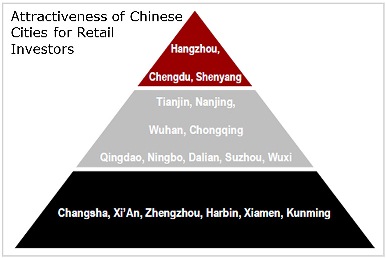
Source: Jones Lang LaSalle
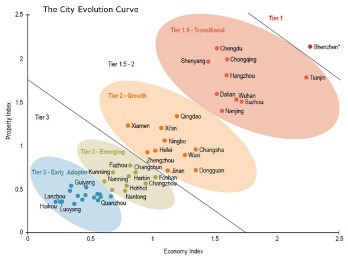
Source: Jones Lang LaSalle
> back to top of page

How big is the Potential of the Chinese Luxury Retail Market?
August 29, 2012
Today, China's biggest cities have a similar number of designer luxury fashion and jewelry stores per capita as developed countries do. The number of luxury watch stores is even higher. Beijing and Shanghai, for example, have as many luxury point-of-sale locations per capita as New York, and China's Tier 2 cities are catching up.
In recent years, a rapid expansion of all major high end retailers has been witnessed in mainland China. From 2005 to 2011 alone, the number of stores of many luxury brands in the country has more than tripled. The chart on the right gives an indication of how much luxury brands have been expanding - Louis Vuitton and Gucci have opened more than twenty stores in mainland China in the past five years, while Hermes has opened 15.
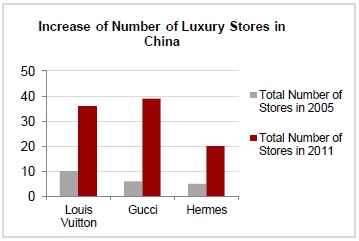
Source: McKinsey
Many people are wondering, however, how much the Chinese luxury retail market is going to grow in the next years, and whether it can maintain its predicted growth rate of 15% annually. This concern is mainly caused by new online sales channels and the increasing ease with which Chinese customers can travel and purchase abroad.
McKinsey published an interesting report in 2011 (Understanding China's Growing Love for Luxury) comparing the number of stores between China and Japan. Since China is expected to overtake Japan in luxury retail sales by 2015, such a comparison is plausible. Market leader Louis Vuitton has closed the gap and has a similar number of stores in both countries. Most other retail brands, however, still have a fair way to go. In 2009, Chanel had only eight stores in China while operating 50 in Japan, while Hermes had 20 in China and 45 in Japan. If the Japanese market is an indicator, the Chinese luxury retail market is far from being saturated.
Furthermore, luxury retail brands are continuing to announce their local expansion plans.
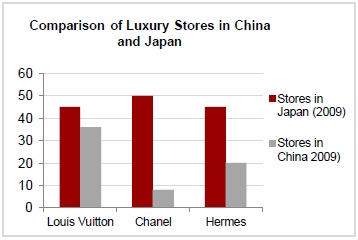
Source: McKinsey
Luxury jeweler De Beers told the media they would open five new stores and upgrade existing facilities in China in 2012 and Coach has announced that they will open an additional 30 stores in Greater China this year. While most of the high end retailers focus on China's biggest 15 cities, McKinsey predicts that cities with considerable pools of luxury goods consumers will increase from 30 to 60 cities over the next five years.
> back to top of page












































































































































































































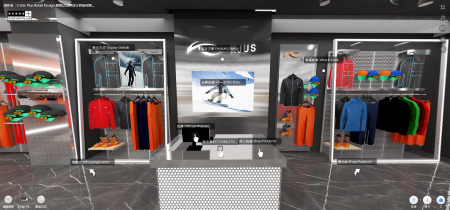
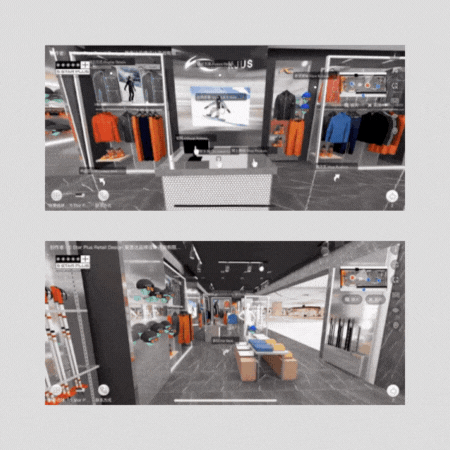









































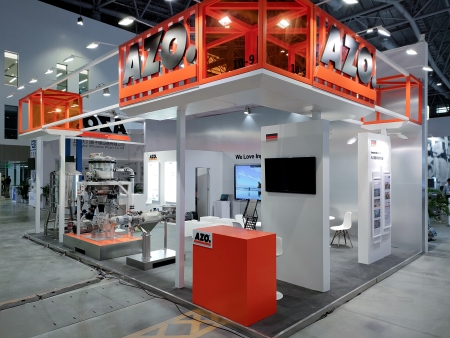
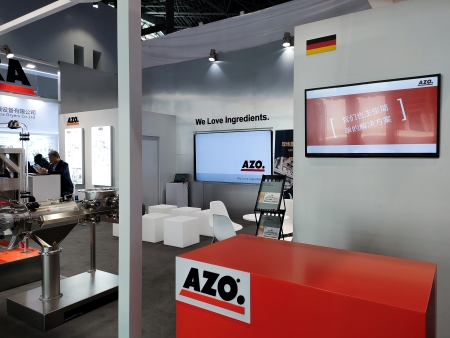
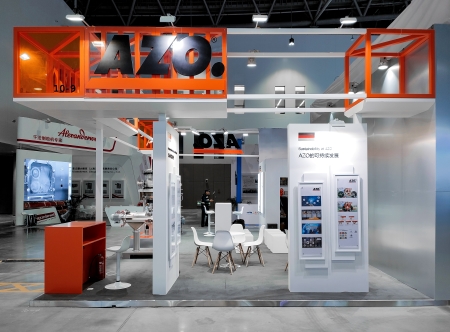
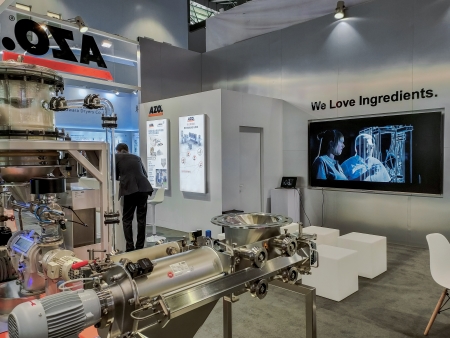
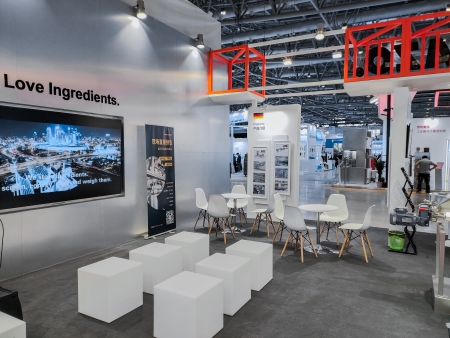
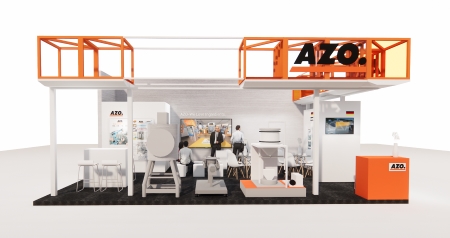
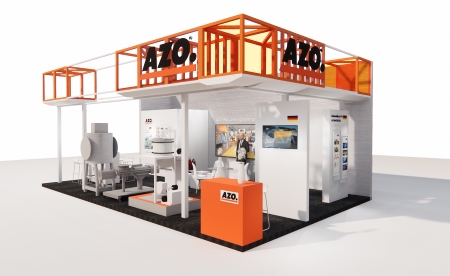



































































































































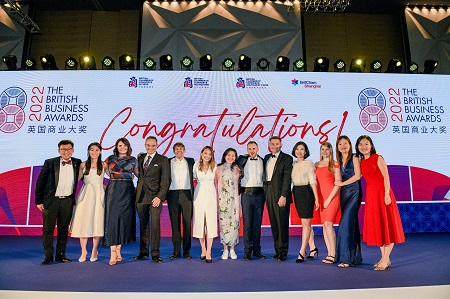
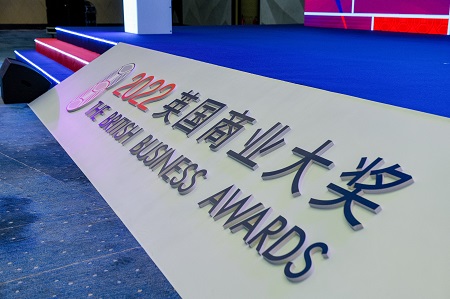
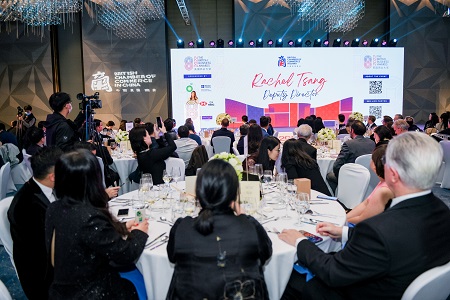
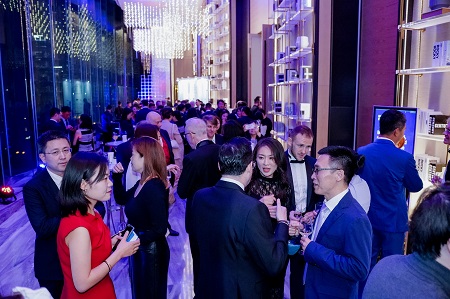
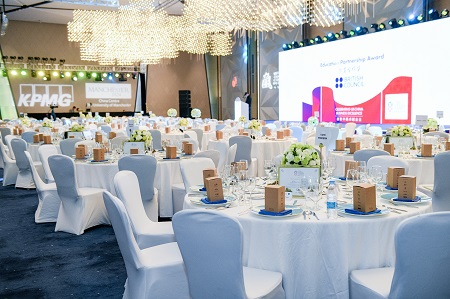
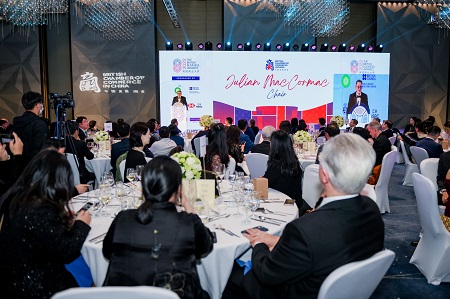
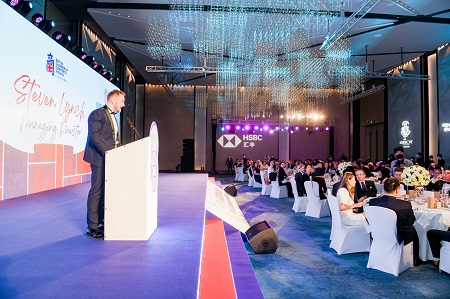
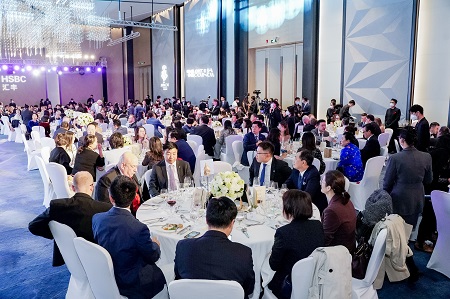
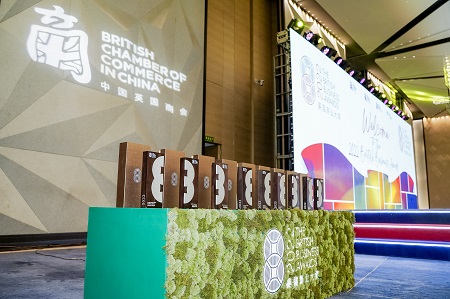
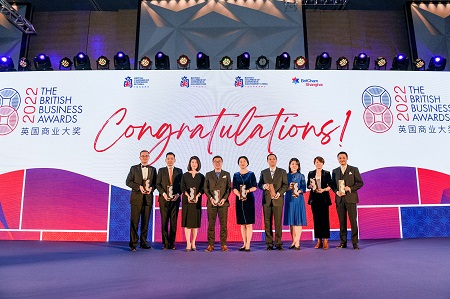











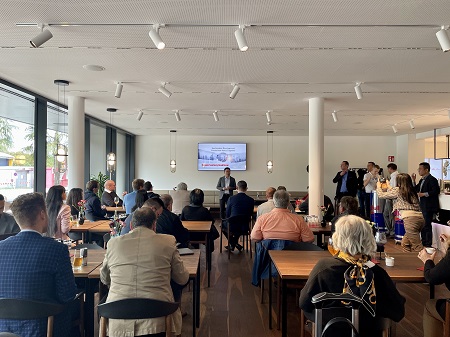
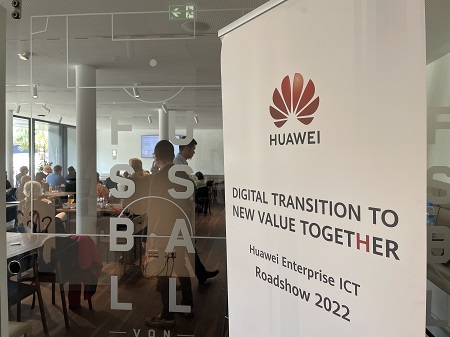
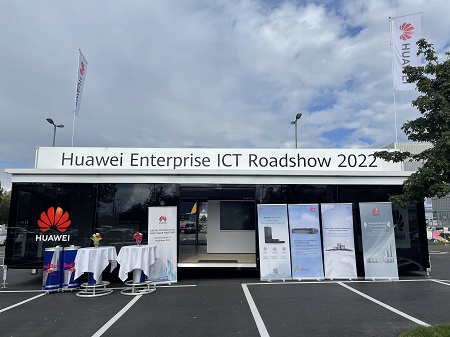
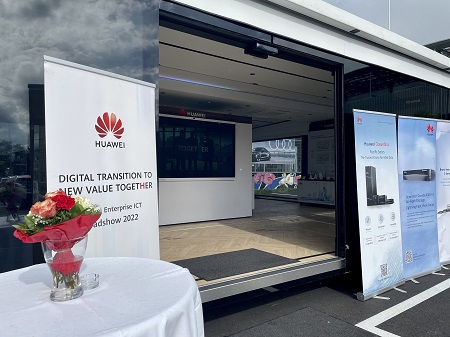
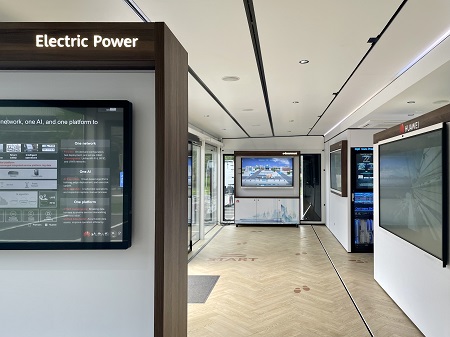
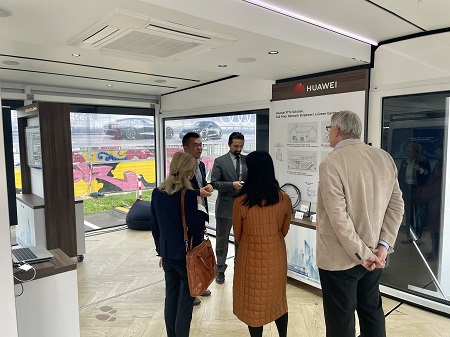
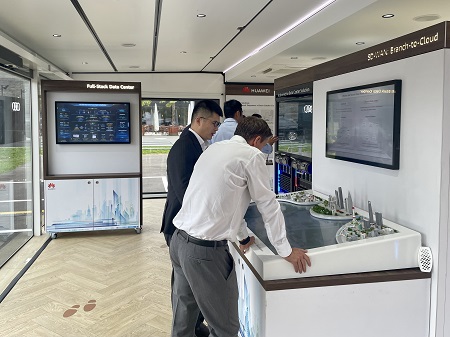
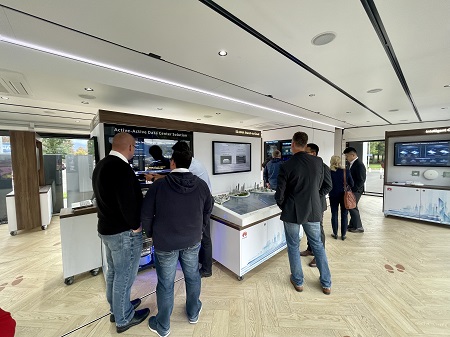












































































































































































































































































































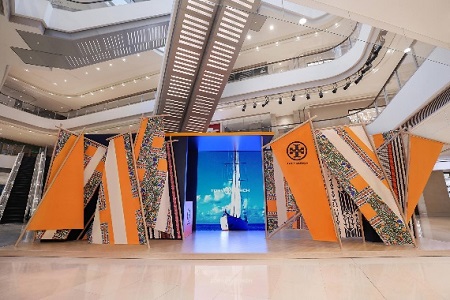
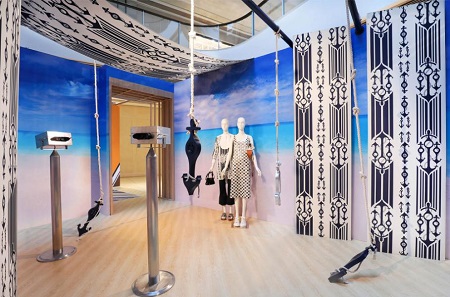
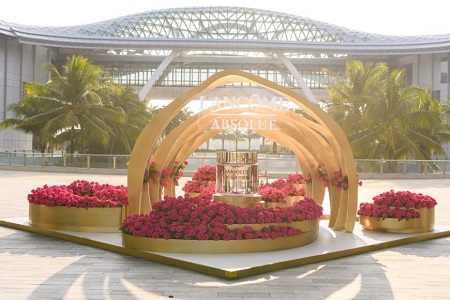
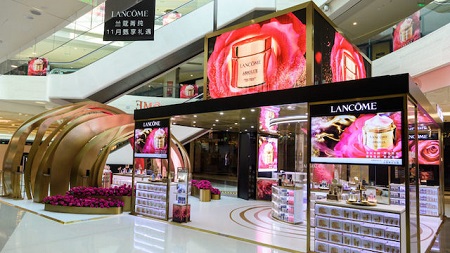
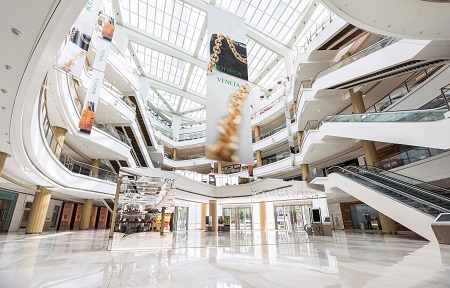
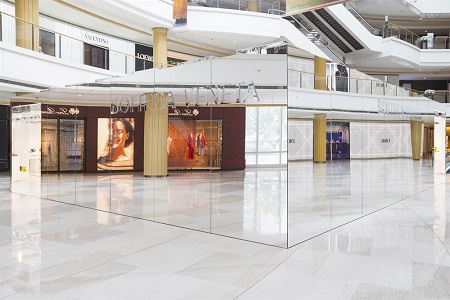










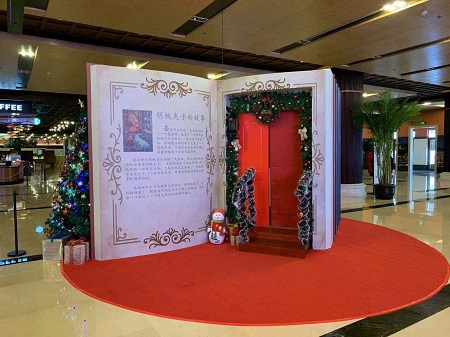
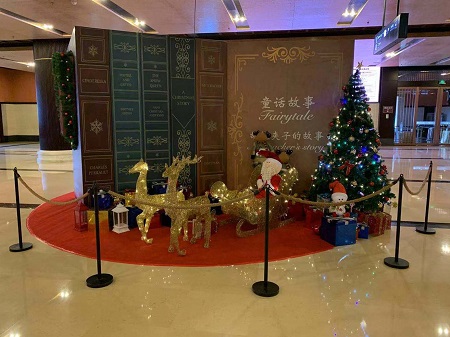
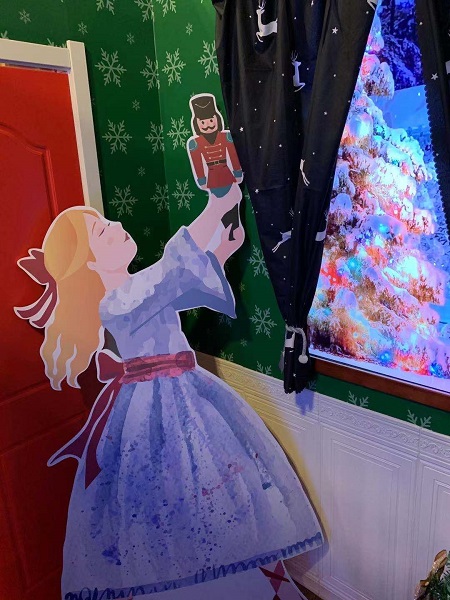
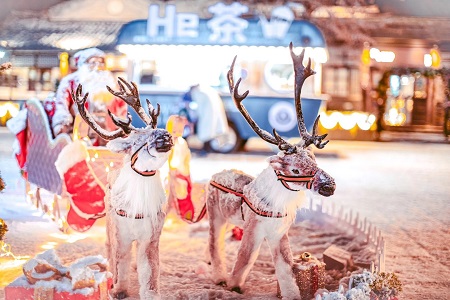



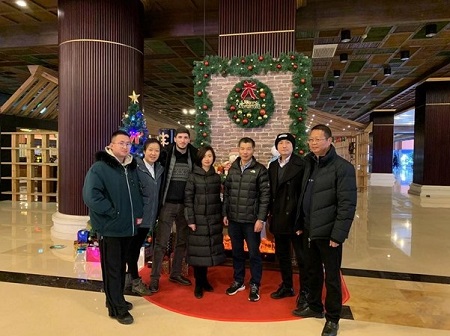

































































































































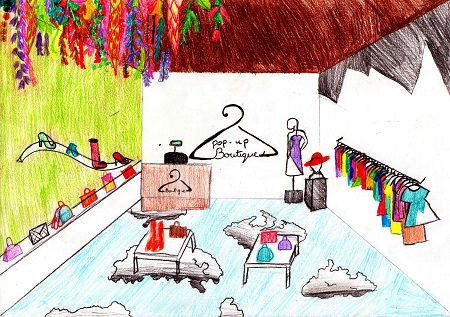
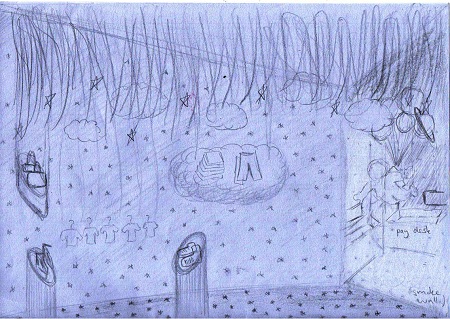
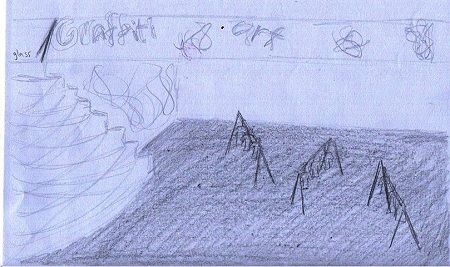

























































































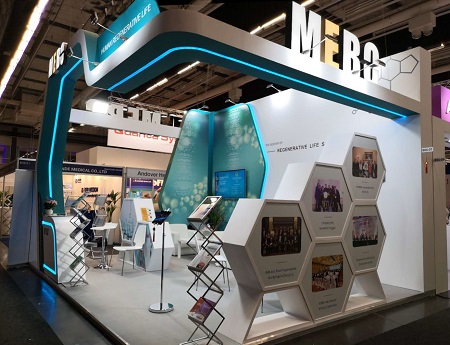
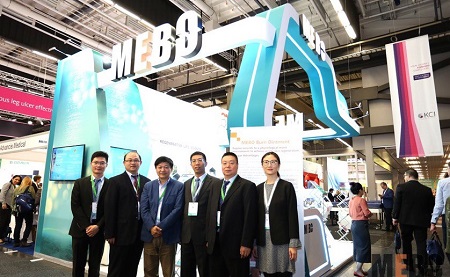














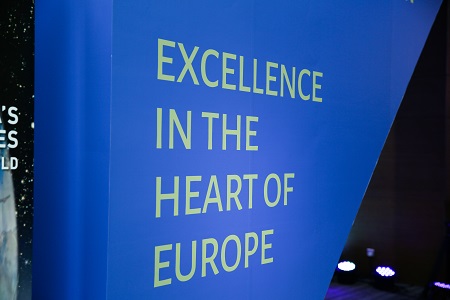
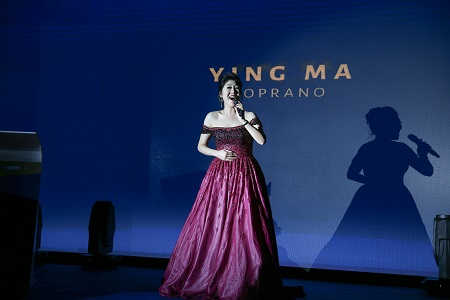
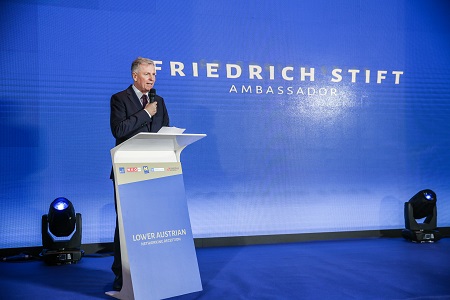
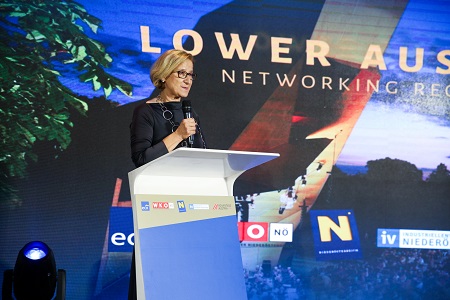
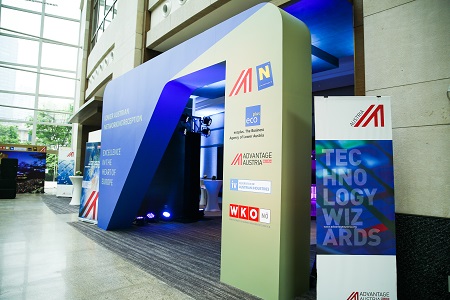
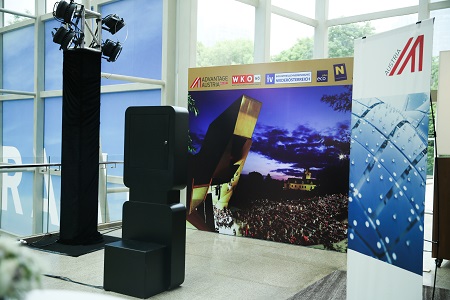
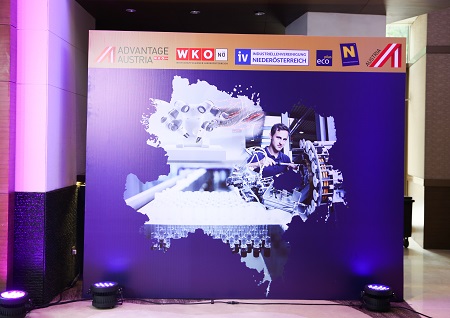
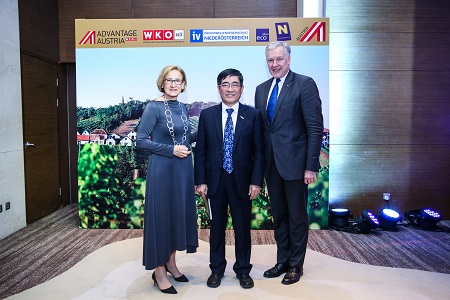
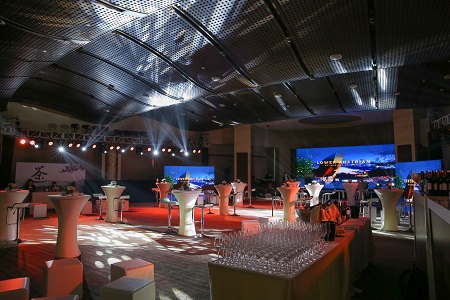
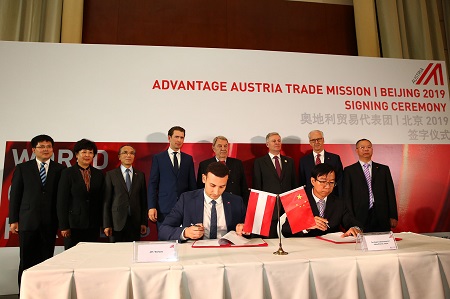
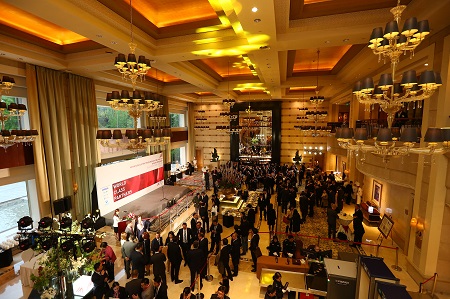
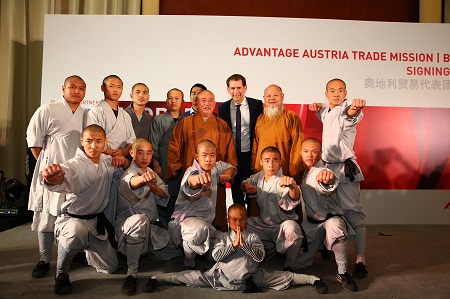












































































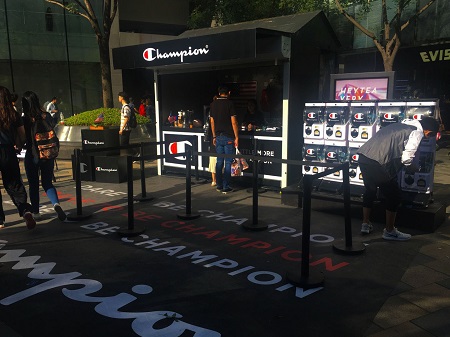
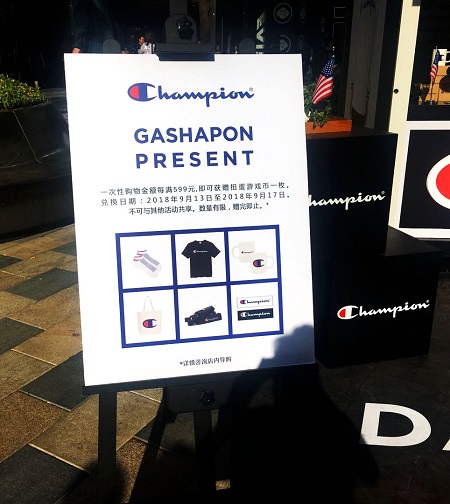
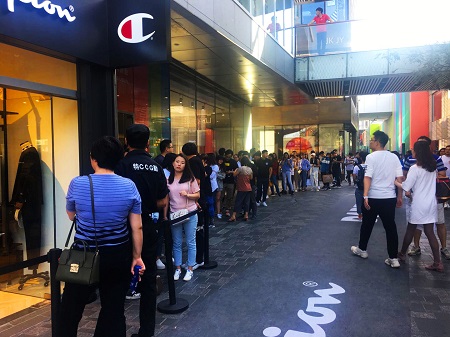
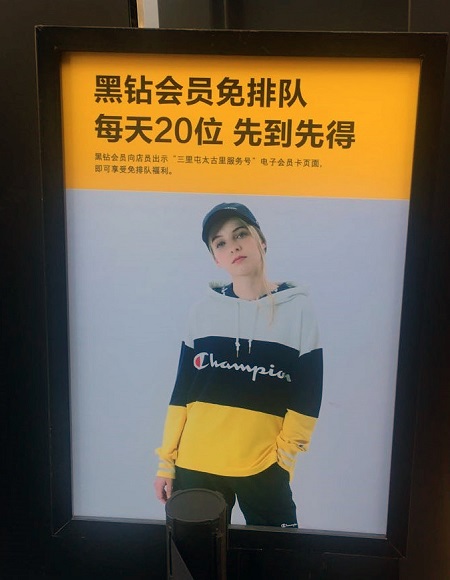
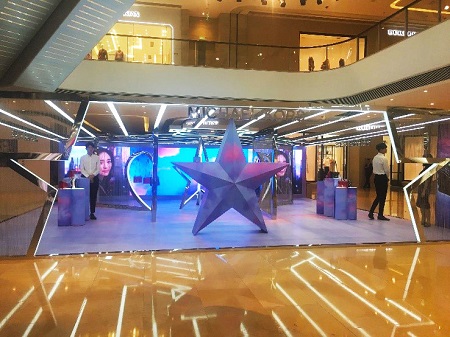
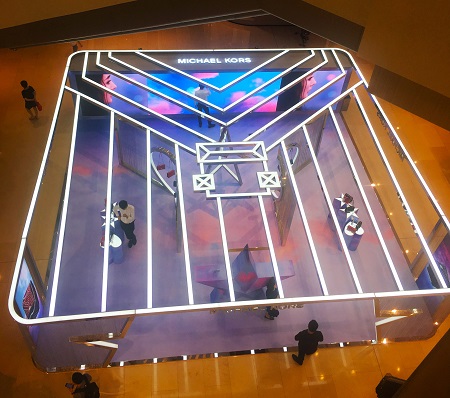
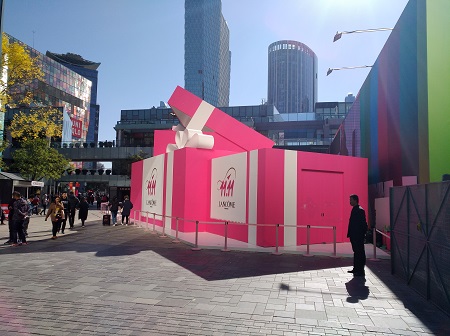
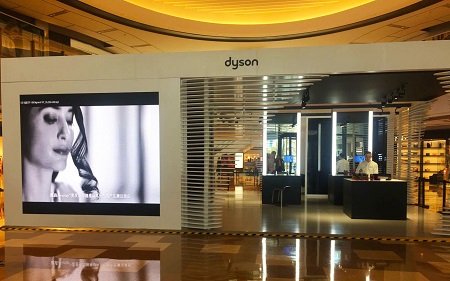
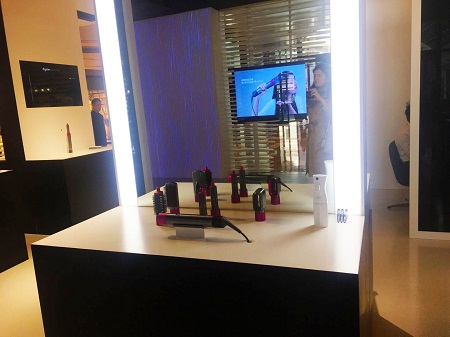
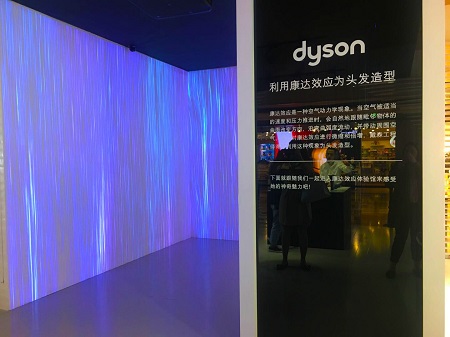
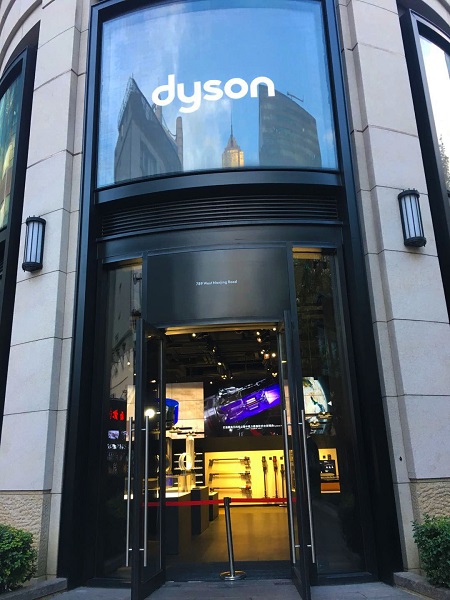
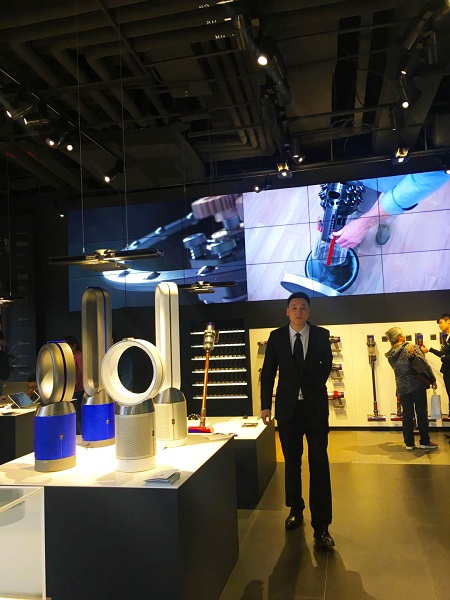














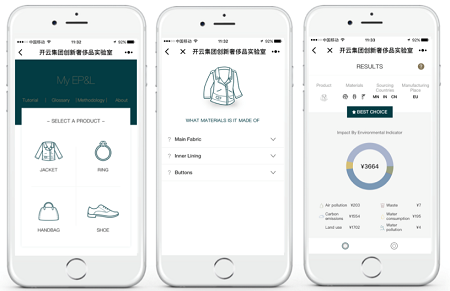
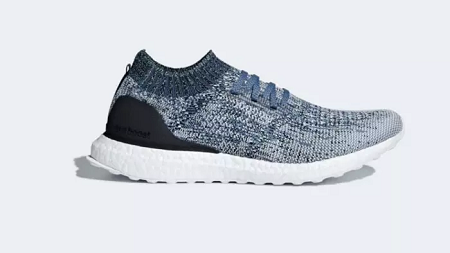

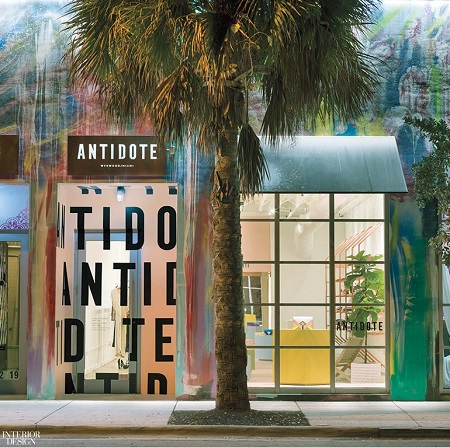
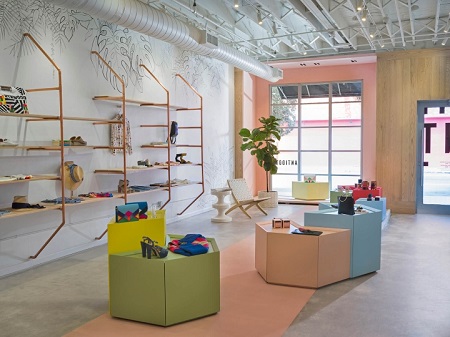
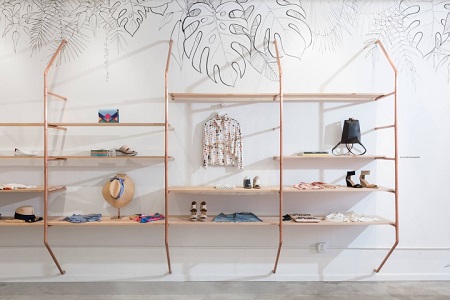































































































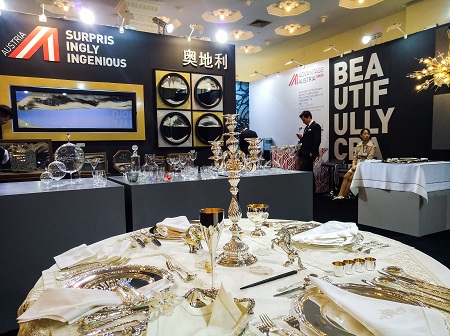
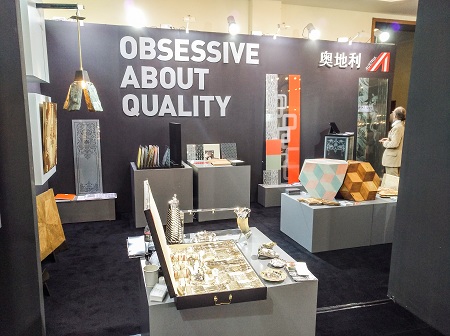
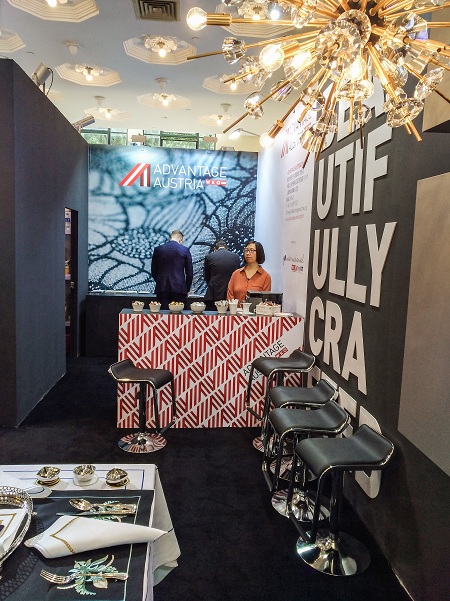
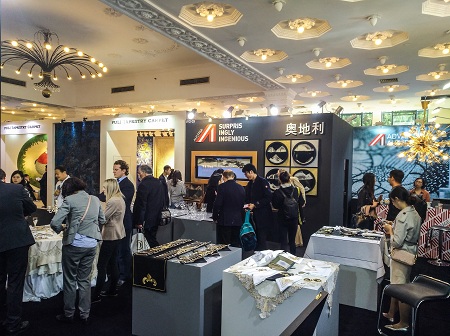
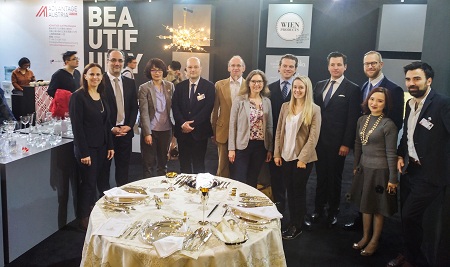













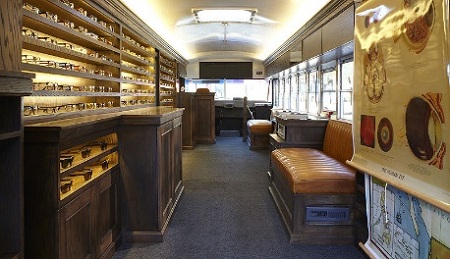
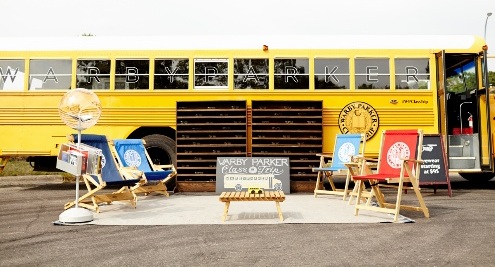
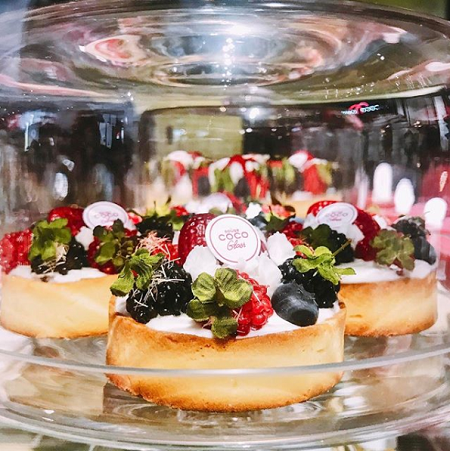
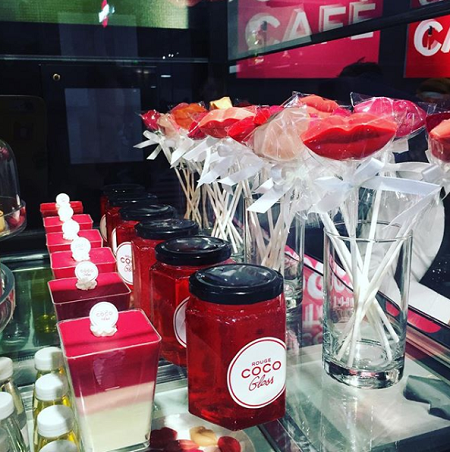
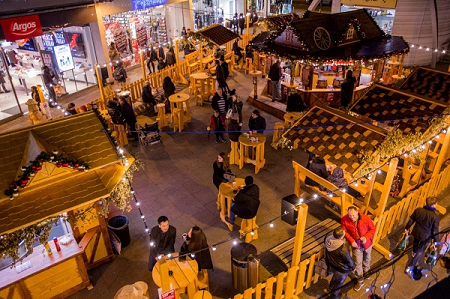

































































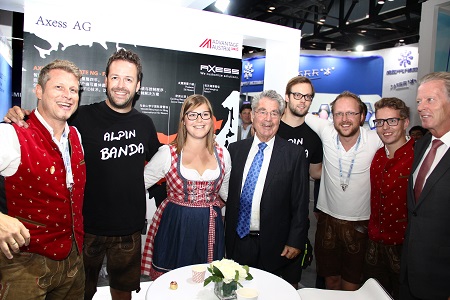
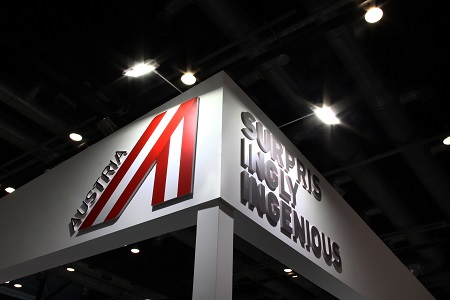
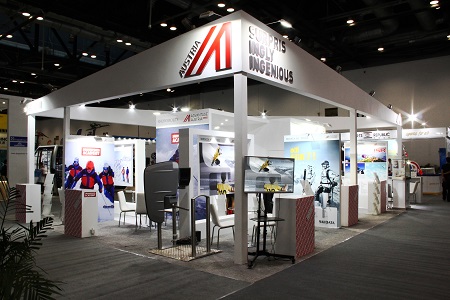






































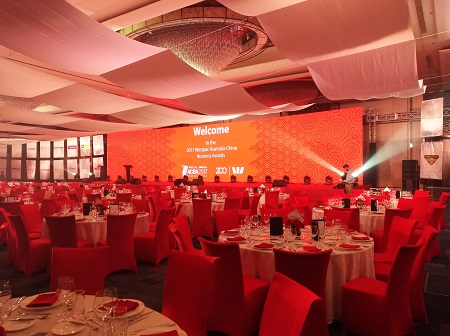
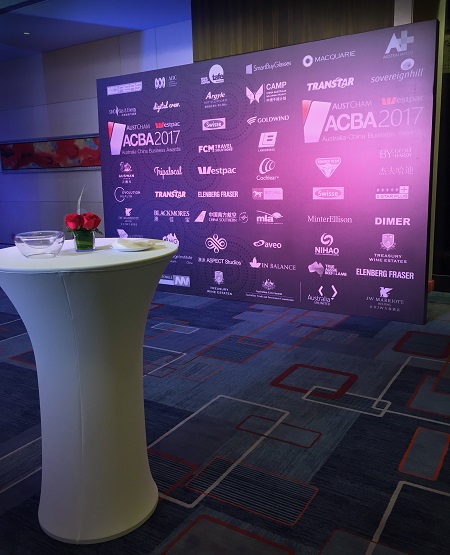
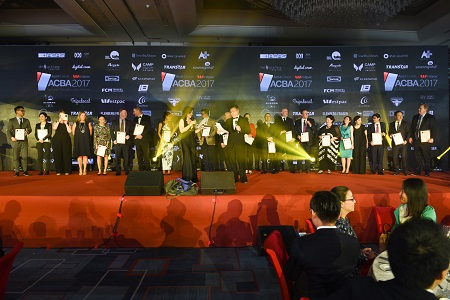
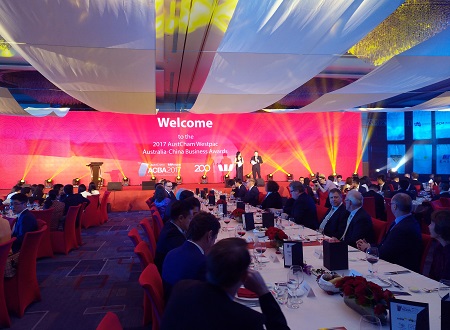
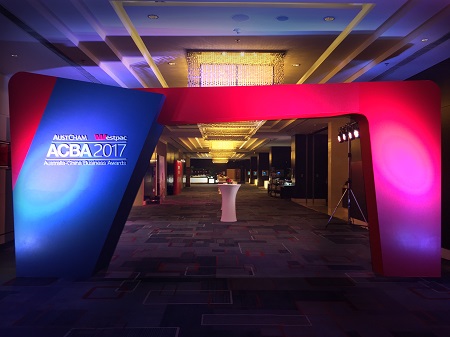
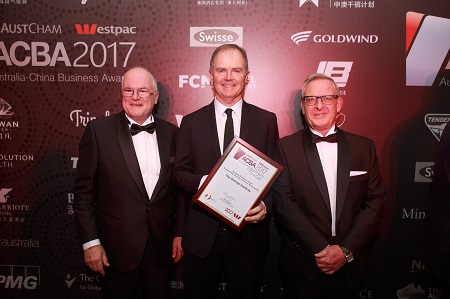
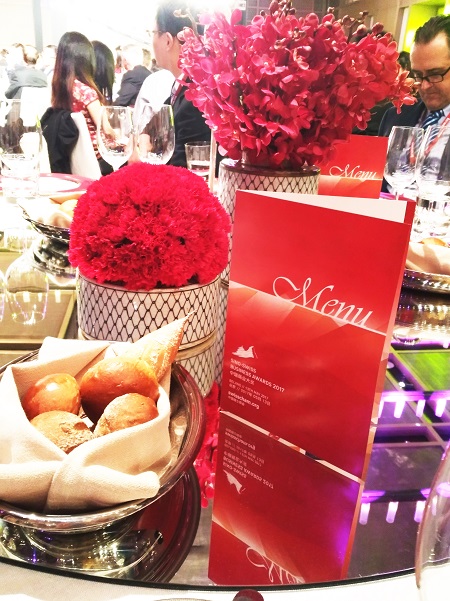
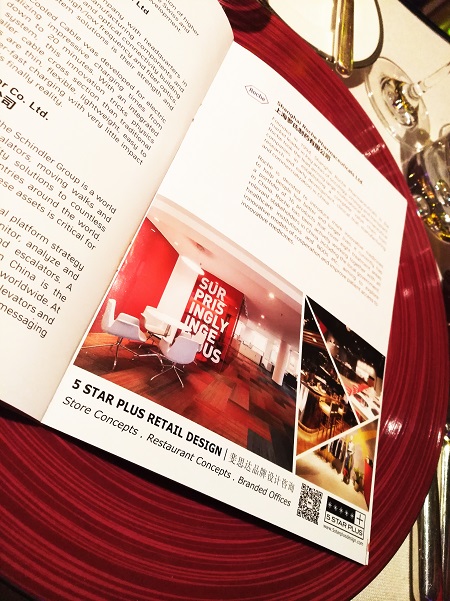
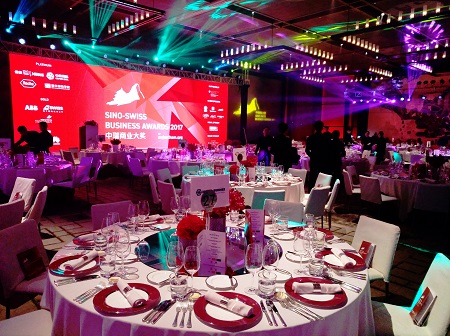
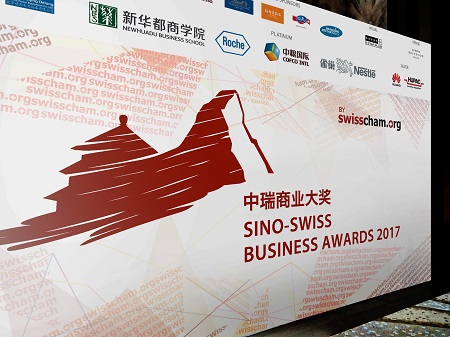
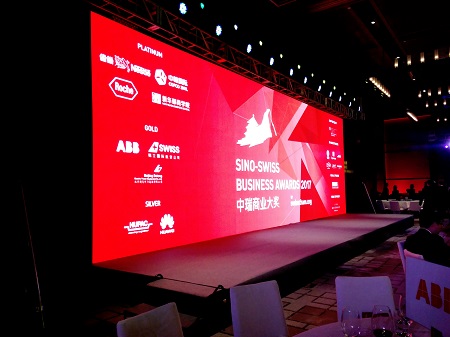




.jpg)
































































